HA
How to submit an article:
- Registered users can submit any published journal article that has a unique DOI (Digital Object Identifier) name or link to Research Hub.
- For example, you can paste the full DOI link:
https://doi.org/10.1109/5.771073or just the DOI name:10.1109/5.771073into the field above and click submit. - The person who is first to submit a valid article to Research Hub will forever be credited for it, and every article submission earns you +6 Research Points.
Related Topics
Published research studies are articles that present the findings of original research that has undergone a peer-review process and has been made publicly available in scholarly journals, books or other media.
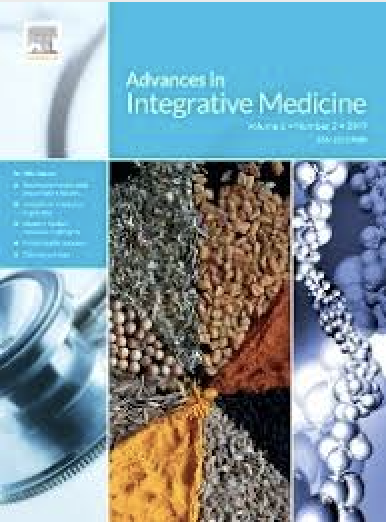
A systematic review of the therapeutic properties of lemon essential oil
2025 Sep Advances in Integrative Medicine Gonçalves S, Castro J, Almeida A, Monteiro M, Rodrigues T, Fernandes R, et al.
The results of the systematic review consistently demonstrated the efficacy of lemon essential oil in reducing anxiety among students, Acute myocardial infarction patients, and pre-surgical patients, as well as improving physiological benefits such as blood pressure and heart rate in Acute myocardial infarction patients and cognitive performance among students, and measures related to halitosis in oral health.
Systematic Review Halitosis Cognitive Function Myocardial Infarction Anxiety Lemon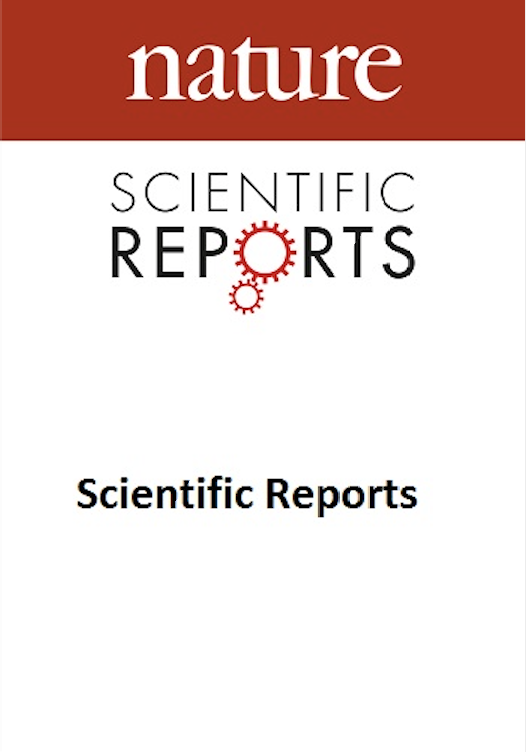
Comparison of Ziziphus jujube Mill. Syrup versus polyethylene glycol in children with functional constipation: a randomized clinical trial
2025 Jan 11 Scientific Reports Keihanian F, Maleknejad S, Saeidinia A, Soltanipour S, Pirooz A
Clinical Study Randomised Controlled Trial Children's Health Constipation JujubeJujube syrup presented improved results in treating pediatric functional constipation compared to polyethylene glycol, demonstrating a potentially effective and safe alternative treatment.

Ziziphus jujube promotes fertility and pregnancy outcomes in Rat model of uterine adhesions
2025 Jan 27 Frontiers in Pharmacology Asgharzadeh F, Attarian M, Khazaei M, Al-Asady AM, Mansoori S, Naimi H, et al.
Treatment with resulted in a significant reduction in uterine tissue fibrosis, positive outcomes in embryonic development, pregnancy rates, and pregnancy outcomes, as well as inhibition of formation of extra-uterine adhesion bands to internal organs.
Animal Study Pregnancy Uterine Adhesion Endometriosis Jujube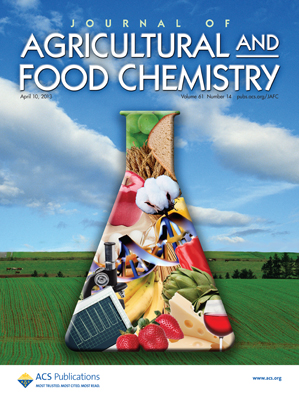
Immunomodulatory Acidic Polysaccharide from Jujube Fruit (Zizyphus jujuba Mill.): Insight into Their Chemical Characteristics and Modes of Action
2024 Dec 20 Journal of Agricultural and Food Chemistry Feng L, Ju M, Ma C, Li K, Cai S
Experimental Study Animal Study JujubeThe ZJMP-2 polysaccharide fraction from jujube, consisting of various sugars and acid, significantly enhances immune cell activity and stimulates lymphocyte proliferation.
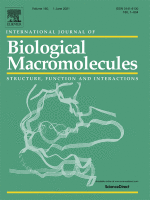
Tremella aurantialba polysaccharides alleviate ulcerative colitis in mice by improving intestinal barrier via modulating gut microbiota and inhibiting ferroptosis
2024 Nov International Journal of Biological Macromolecules Peng G, Wang S, Zhang H, Xie F, Jiao L, Yuan Y, et al.
Experimental Study Animal Study Gut Microbiota Ulcerative Colitis Intestinal Barrier Snow FungusA polysaccharide from Tremella aurantialba improves ulcerative colitis symptoms by targeting epithelial cell ferroptosis and modulating the gut microbiota.
Research insights are moderated by the Research Hub team and offer an at-a-glance overview of interesting research findings.

2025 Scientific Reports
Jujube syrup presented improved results in treating pediatric functional constipation compared to polyethylene glycol, demonstrating a potentially effective and safe alternative treatment.
Clinical Study Children's Health Constipation Jujube
Comparison of Ziziphus jujube Mill. Syrup versus polyethylene glycol in children with functional constipation: a randomized clinical trial
Keihanian F, Maleknejad S, Saeidinia A, Soltanipour S, Pirooz A

2024 Journal of Agricultural and Food Chemistry
The ZJMP-2 polysaccharide fraction from jujube, consisting of various sugars and acid, significantly enhances immune cell activity and stimulates lymphocyte proliferation.
Experimental Study Jujube
Immunomodulatory Acidic Polysaccharide from Jujube Fruit (Zizyphus jujuba Mill.): Insight into Their Chemical Characteristics and Modes of Action
Feng L, Ju M, Ma C, Li K, Cai S

2024 International Journal of Biological Macromolecules
A polysaccharide from Tremella aurantialba improves ulcerative colitis symptoms by targeting epithelial cell ferroptosis and modulating the gut microbiota.
Experimental Study Gut Microbiota Intestinal Barrier Snow Fungus Ulcerative Colitis
Tremella aurantialba polysaccharides alleviate ulcerative colitis in mice by improving intestinal barrier via modulating gut microbiota and inhibiting ferroptosis
Peng G, Wang S, Zhang H, Xie F, Jiao L, Yuan Y, et al.
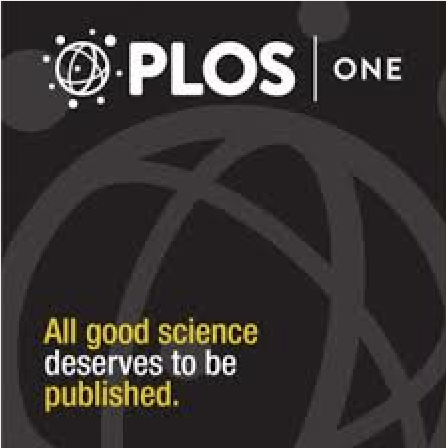
2024 PLOS One
Morinda citrifolia root extracts display significant antibacterial activity against various bacteria, with the highest impact against Campylobacter spp.
Experimental Study Antibacterial Campylobacter Noni
In vitro antibacterial activity of Morinda citrifolia extracts against eight pathogenic bacteria species
Obeng-Boateng F, Kpordze SW, Addy F

2024 Medicine
The Danggui Sini Decoction, a Traditional Chinese Medicine, may prevent myocardial infarction by positively influencing cell proliferation, inflammatory responses, and aging processes.
Network Pharmacology Dang Gui Si Ni Decoction Myocardial Infarction
Exploring the mechanism of Danggui Sini Decoction in the treatment of myocardial infarction: A systematic review, network pharmacology, and molecular docking
Li Z, Liu S, Zhang R, Li B
Review Articles
Review articles summarise and critically evaluate the current state of research on a specific topic or field by synthesising multiple primary research studies.

A systematic review of the therapeutic properties of lemon essential oil
2025 Sep Advances in Integrative Medicine Gonçalves S, Castro J, Almeida A, Monteiro M, Rodrigues T, Fernandes R, et al.
The results of the systematic review consistently demonstrated the efficacy of lemon essential oil in reducing anxiety among students, Acute myocardial infarction patients, and pre-surgical patients, as well as improving physiological benefits such as blood pressure and heart rate in Acute myocardial infarction patients and cognitive performance among students, and measures related to halitosis in oral health.
Systematic Review Halitosis Cognitive Function Myocardial Infarction Anxiety Lemon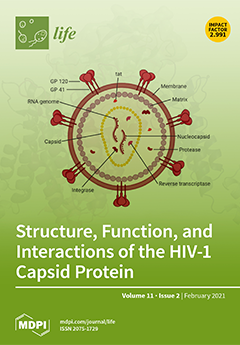
Therapeutic Potential of Pomegranate Extract for Women’s Reproductive Health and Breast Cancer
2024 Oct 03 Life Jang JY, Kim D, Im E, Kim ND
Review Article PCOS Breast Cancer PomegranatePomegranate extract could potentially benefit women's reproductive health, enhance fertility, regulate menstrual cycles, support pregnancy, and help treat polycystic ovary syndrome.
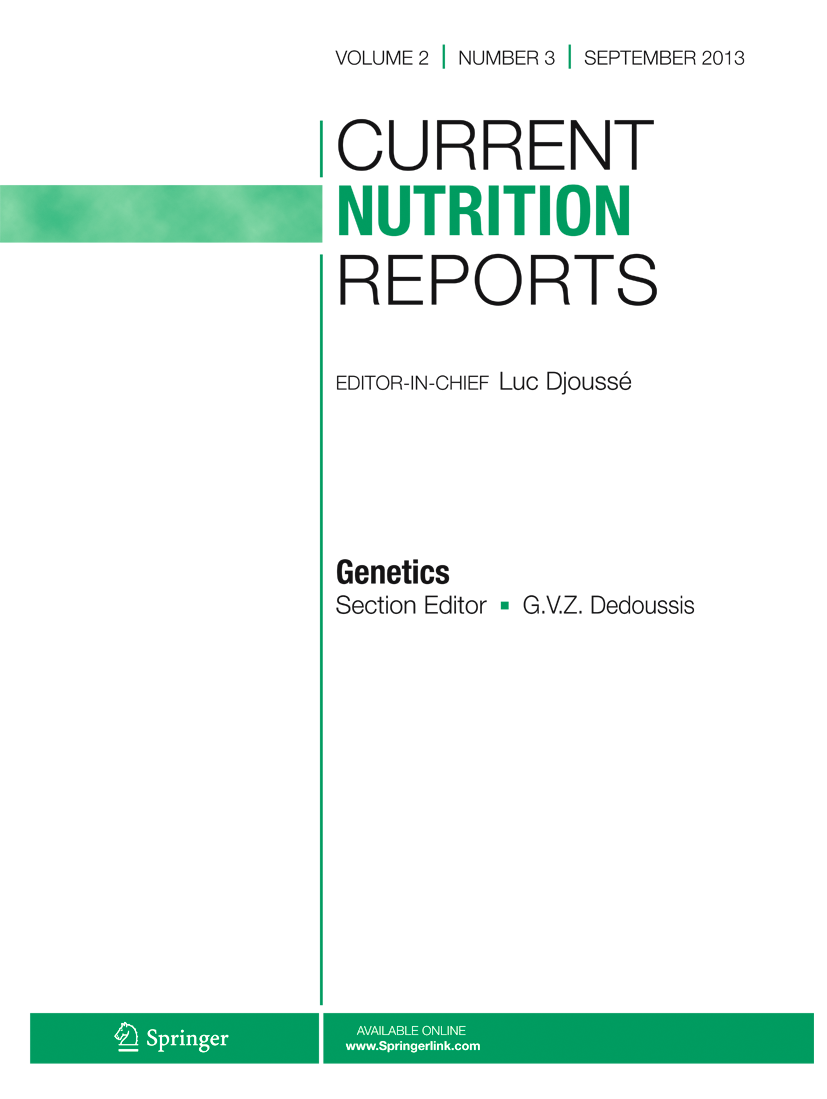
Ziziphus jujuba (Jujube) in Metabolic Syndrome: From Traditional Medicine to Scientific Validation
2024 Oct 01 Current Nutrition Reports Ghasemzadeh Rahbardar M, Fazeli Kakhki H, Hosseinzadeh H
Review Article Obesity Type 2 Diabetes Metabolic Syndrome High Blood Pressure JujubeZiziphus jujuba and its main components, lupeol and betulinic acid, show promise in treating complications of metabolic syndrome, including diabetes, obesity, and hypertension.
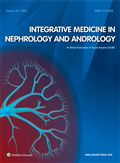
Can Prostate Cancer Patients be Prescribed Chinese Herbal Medicine? A Review of its Potential Modulatory Effects on the Androgen Receptor
2024 Jul 31 Integrative Medicine in Nephrology and Andrology Wu YL, Xian YF, Zhang J, Guo J, Lin ZX
The review suggests that Chinese medicine, especially CHM, shows potential as a complementary therapy for prostate cancer by inhibiting androgen receptor activity, improving patient quality of life, and addressing challenges like castration-resistant disease and drug resistance.
Review Article Prostate Cancer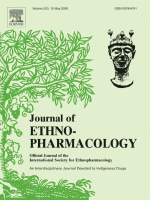
Potential Mechanisms of Guizhi Fuling Wan in Treating Endometriosis: An Analysis Based on TCMSP and DisGeNET Databases
2024 Jul Journal of Ethnopharmacology Yee JL, Huang CY, Yu YC, Huang SJ
Systematic Review Endometriosis Gui Zhi Fu Ling WanGuizhi Fuling Wan, a traditional Chinese herbal formula, can inhibit endometriosis growth and enhance the effects of western medicines used to treat the condition.
Clinical Trials
Clinical trials are research studies that involve people and are conducted to evaluate the safety and efficacy of new treatments or interventions, such as drugs, medical devices, or behavioural therapies.

Comparison of Ziziphus jujube Mill. Syrup versus polyethylene glycol in children with functional constipation: a randomized clinical trial
2025 Jan 11 Scientific Reports Keihanian F, Maleknejad S, Saeidinia A, Soltanipour S, Pirooz A
Clinical Study Randomised Controlled Trial Children's Health Constipation JujubeJujube syrup presented improved results in treating pediatric functional constipation compared to polyethylene glycol, demonstrating a potentially effective and safe alternative treatment.
Study the Efficacy of Morinda Citrifolia in Polycystic Ovarian Syndrome (PCOS)
2024 Oct 10 African Journal of Biomedical Research Khatal DS
The study concluded that the treatment significantly improved the signs and symptoms of PCOS in BMI and had positive effects on objective parameters such as BMI.
Randomised Controlled Trial PCOS Noni
Effectiveness of a novel diet in attenuation of clinical activity of disease in patients with ulcerative colitis: a randomized, clinical trial
2024 Jun 14 Scientific Reports Narimani B, Sadeghi A, Daryani NE, Shahrokh S, Nilghaz M, Ghods M, et al.
Randomised Controlled Trial Low FODMAP Ulcerative ColitisA combined Mediterranean, low-FODMAP diet along with partial enteral nutrition has shown promise in reducing ulcerative colitis activity and improving patients' quality of life.
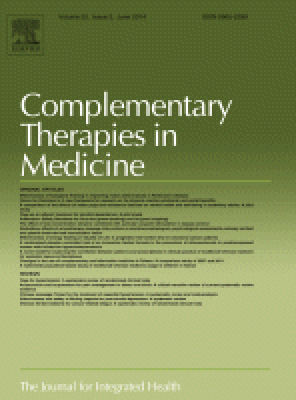
The effects of jujube (Ziziphus jujube) on metabolic and mental health outcomes in patients with metabolic syndrome: A randomized controlled trial
2024 Jun Complementary Therapies in Medicine Parastouei K, Nashtar SB, Al-Attar Z, Shekarchizadeh-Esfahani P, Askari G
Randomised Controlled Trial Stress Triglyceride Cholesterol JujubeConsuming jujube notably reduces waist circumference, triglycerides, and stress, while increasing high-density lipoprotein cholesterol in subjects with metabolic syndrome.
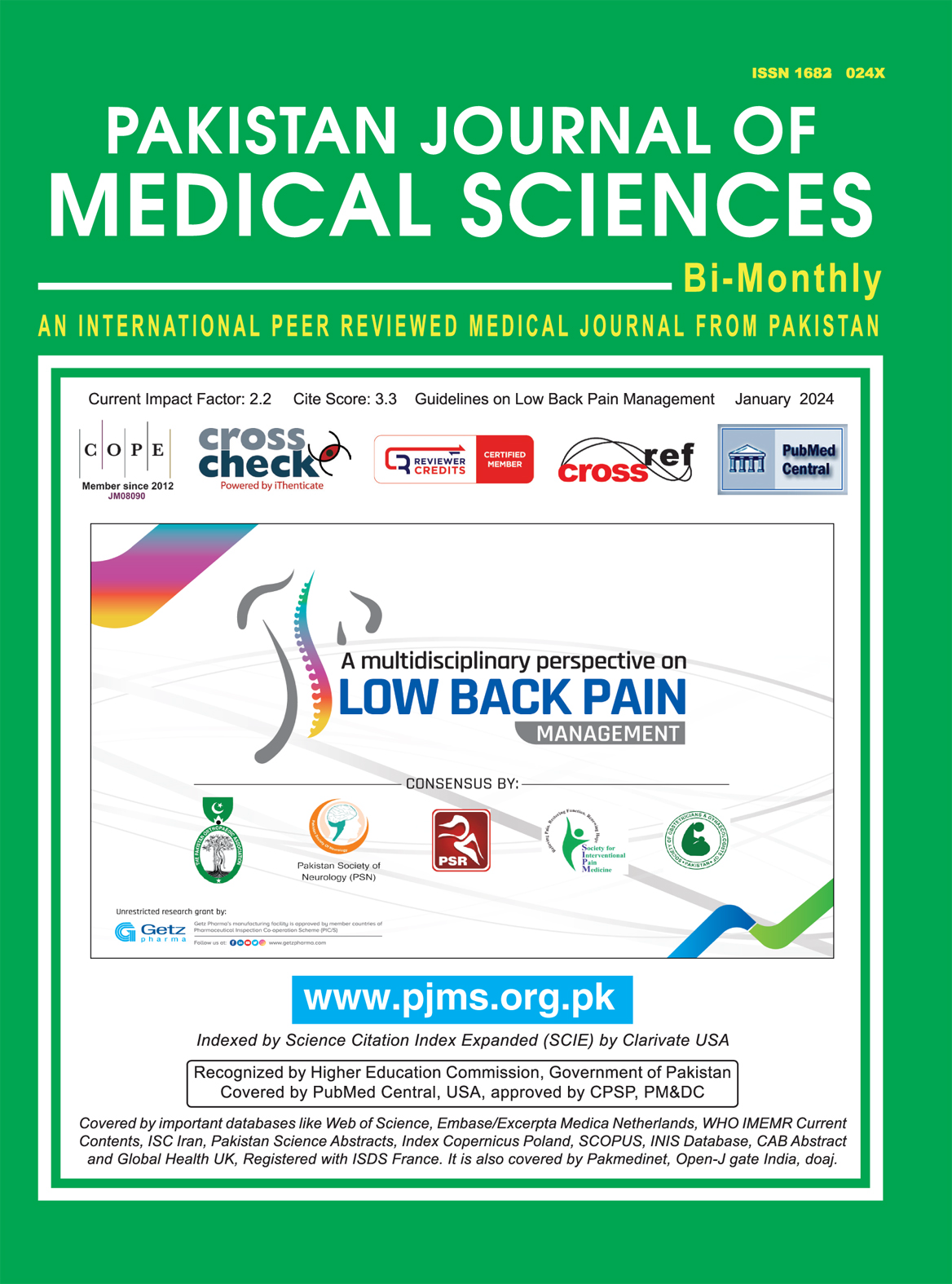
Effect of Self-developed Ye’an Analgetic Decoction/Jiawei Shaoyao Gancao Decoction Combined with Tramadol on TCM Symptom Scores and RLS Severity of patients with Restless Legs Syndrome
2024 Mar 18 Pakistan Journal of Medical Sciences Zhou B, Li W, Li Y, Sun D, Du X
The self-developed Ye’an Analgetic Decoction/Jiawei Shaoyao Gancao Decoction significantly improves clinical symptoms, reduces RLS severity, and enhances quality of life and sleep quality in RLS patients more effectively than basic treatment with tramadol alone.
Randomised Controlled Trial Clinical Study Shao Yao Gan Cao Tang Tramadol Restless Legs SyndromeStudy Protocols
Published study protocols are detailed plans that outline the objectives, methodology, statistical analyses, and organisation of a research study that have been made publicly available for others to review and use as a reference.

Should acupuncture therapy be used for acute facial paralysis? A protocol for systematic review
2023 Mar 15 Systematic Reviews Cheng L, Li X, Ying Y, Du S, Zhang X, Guo W, et al.
This review will summarize the evidence on the different type of acupuncture therapy for acute Bell’s palsy and Ramsay-Hunt syndrome. We anticipate that it would be safe and effective when applied to the acute phase of PFP, and some specific suitable acupuncture methods would be found resulting from this review.
Study Protocol Acupuncture
Efficacy and safety of acupuncture in combination with Chinese herbal medicine in dealing with osteoporosis: A protocol for a systematic review and network meta-analysis
2022 Dec 30 Medicine Long P, Ju S, Wang J
The current systematic review and network meta-analysis will provide the effectiveness and safety of acupuncture in combination with CHM in dealing with OP. The research will provide reliable evidence for the clinical use of acupuncture in combination with CHM in dealing with OP.
Study Protocol Osteoporosis Acupuncture
Acupuncture combined with traditional Chinese medicine for knee osteoarthritis: A protocol for systematic review and meta-analysis
2022 Dec 16 Medicine Wang Y, Lu Q, Guo H, Sun J, Li X, Guan H, et al.
This meta-analysis further established the efficacy of acupuncture combined with traditional Chinese medicine in the treatment of KOA. This meta-analysis aims to investigate the efficacy of acupuncture combined with traditional Chinese medicine on patients with KOA and provide reliable evidence. To provide more options for clinicians and patients in the treatment of KOA.
Study Protocol Chinese Herbal Medicine Acupuncture Knee Osteoarthritis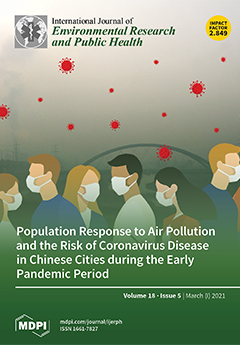
Pharmacopuncture Effects on Insomnia Disorder: Protocol for a Multi-Site, Randomized, Acupuncture-Controlled, Clinical Trial
2022 Dec 12 International Journal of Environmental Research and Public Health Lim JH, Lee JH, Kwon CY, Lee SH, Kang CW, Cho E, et al.
The findings of this trial willprovide evidence that will be useful in clinical decision-making for insomnia treatment strategies.
Study Protocol
Acupuncture for postoperative gastroparesis syndrome: A protocol for systematic review and meta-analysis
2022 Dec 23 Medicine Li W, Zhang N, Xiao M, Liu L, Yao L
The conclusion of this review will provide evidence to judge whether acupuncture is an effective intervention for patient with postsurgical gastroparesis syndrome (PGS).
Study ProtocolPresentation Slides

Clinical Study
Jujube syrup presented improved results in treating pediatric functional constipation compared to polyethylene glycol, demonstrating a potentially effective and safe alternative treatment.
Keihanian F, Maleknejad S, Saeidinia A, Soltanipour S, Pirooz A

Experimental Study
The ZJMP-2 polysaccharide fraction from jujube, consisting of various sugars and acid, significantly enhances immune cell activity and stimulates lymphocyte proliferation.
Feng L, Ju M, Ma C, Li K, Cai S

Experimental Study
A polysaccharide from Tremella aurantialba improves ulcerative colitis symptoms by targeting epithelial cell ferroptosis and modulating the gut microbiota.
Peng G, Wang S, Zhang H, Xie F, Jiao L, Yuan Y, Ma C, Wu H, Meng Z

Experimental Study
Morinda citrifolia root extracts display significant antibacterial activity against various bacteria, with the highest impact against Campylobacter spp.
Obeng-Boateng F, Kpordze SW, Addy F

Network Pharmacology
The Danggui Sini Decoction, a Traditional Chinese Medicine, may prevent myocardial infarction by positively influencing cell proliferation, inflammatory responses, and aging processes.
Li Z, Liu S, Zhang R, Li B

Review Article
Pomegranate extract could potentially benefit women's reproductive health, enhance fertility, regulate menstrual cycles, support pregnancy, and help treat polycystic ovary syndrome.
Jang JY, Kim D, Im E, Kim ND

Review Article
Ziziphus jujuba and its main components, lupeol and betulinic acid, show promise in treating complications of metabolic syndrome, including diabetes, obesity, and hypertension.
Ghasemzadeh Rahbardar M, Fazeli Kakhki H, Hosseinzadeh H

Animal Study
Manuka honey has demonstrated the potential to inhibit the proliferation of human breast cancer cells and stimulate apoptosis in these cells.
Márquez-Garbán DC, Yanes CD, Llarena G, Elashoff D, Hamilton N, Hardy M, Wadehra M, McCloskey SA, Pietras RJ

Systematic Review
Guizhi Fuling Wan, a traditional Chinese herbal formula, can inhibit endometriosis growth and enhance the effects of western medicines used to treat the condition.
Yee JL, Huang CY, Yu YC, Huang SJ

Review Article
Beer, specifically low-purine and high-active ingredient beer such as ginger, ginseng, and coix-lily, possess functional ingredients contributing to controlling chronic human diseases.
Zeng Y, Ahmed HGMD, Li X, Yang L, Pu X, Yang X, Yang T, Yang J
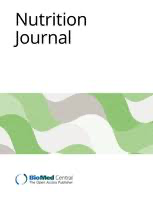
Cohort Study
Higher consumption of ultra-processed food by pregnant women was linked to an increased risk of infantile atopic dermatitis within the first year of life.
Jang W, Kim M, Ha E, Kim H

Randomised Controlled Trial
A combined Mediterranean, low-FODMAP diet along with partial enteral nutrition has shown promise in reducing ulcerative colitis activity and improving patients' quality of life.
Narimani B, Sadeghi A, Daryani NE, Shahrokh S, Nilghaz M, Ghods M, Shafiee M, Shahparvari MR, Hekmatdoost A

Review Article
Carrageenan, a common food additive, potentially exacerbates Inflammatory Bowel Disease (IBD) symptoms by altering gut microbiota, inducing intestinal permeability, and triggering inflammation.
Kimilu N, Gładyś-Cieszyńska K, Pieszko M, Mańkowska-Wierzbicka D, Folwarski M
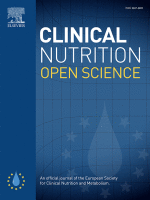
Meta-Analysis
Daily intake of Ziziphus jujuba can control weight and improve lipid profile indicators.
Heydarian A, Tahvilian N, Shahinfar H, Abbas-Hashemi SA, Bahari H, Cheshmeh S, Aryaeian N

Randomised Controlled Trial
Consuming jujube notably reduces waist circumference, triglycerides, and stress, while increasing high-density lipoprotein cholesterol in subjects with metabolic syndrome.
Parastouei K, Nashtar SB, Al-Attar Z, Shekarchizadeh-Esfahani P, Askari G

Systematic Review
The review reveals that nutritional supplements, particularly fish oils, vitamins, trace elements, and phytochemical extracts, show promising therapeutic potential for Dry Eye Disease management.
Cong Y, Zhang Y, Han Y, Wu Y, Wang D, Zhang B

Animal Study
Carrageenan, a common food additive, has dual aspects, being both useful in drug delivery and food printing, while potentially harmful via inducing intestinal inflammatory conditions.
Komisarska P, Pinyosinwat A, Saleem M, Szczuko M

Network Pharmacology
Bruceolic oil emulsion, when combined with androgen antagonists, shows the greatest efficacy in treating prostate cancer amongst Chinese patent medicines.
Wang S, Zhang F, Liu J, Qin P
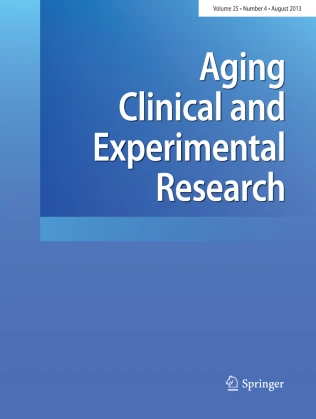
Randomised Controlled Trial
Walnut consumption while doing concurrent training improves strength, sleep quality, standing support, cognitive performance and postural balance in elderly men.
Kamoun A, Yahia A, Farjallah MA, Maaloul R, Marzougui H, Bouaziz M, Souissi N, Elleuch MH, Hammouda O

Randomised Controlled Trial
Daily consumption of walnuts improves sleep quality and reduces daytime sleepiness in healthy young adults.
Izquierdo-Pulido M, Zerón-Rugerio MF, Ibarra-Picón A, Diez-Hernández M, Pérez-Cano F, Cambras T

Review Article
Despite diet being key in shaping gut microbiota, it surprisingly does not impact the treatment outcomes in individuals with Rheumatoid Arthritis.
Sharma P, Brown S, Sokoya EM
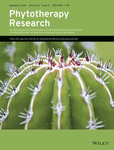
Systematic Review
Noni fruit and its compounds demonstrate significant potential in cancer therapy by inducing apoptosis, arresting cell cycle, inhibiting angiogenesis, and modulating immune system.
Kitic D, Miladinovic B, Randjelovic M, Szopa A, Seidel V, Prasher P, Sharma M, Fatima R, Arslan Ateşşahin D, Calina D, Sharifi‐Rad J
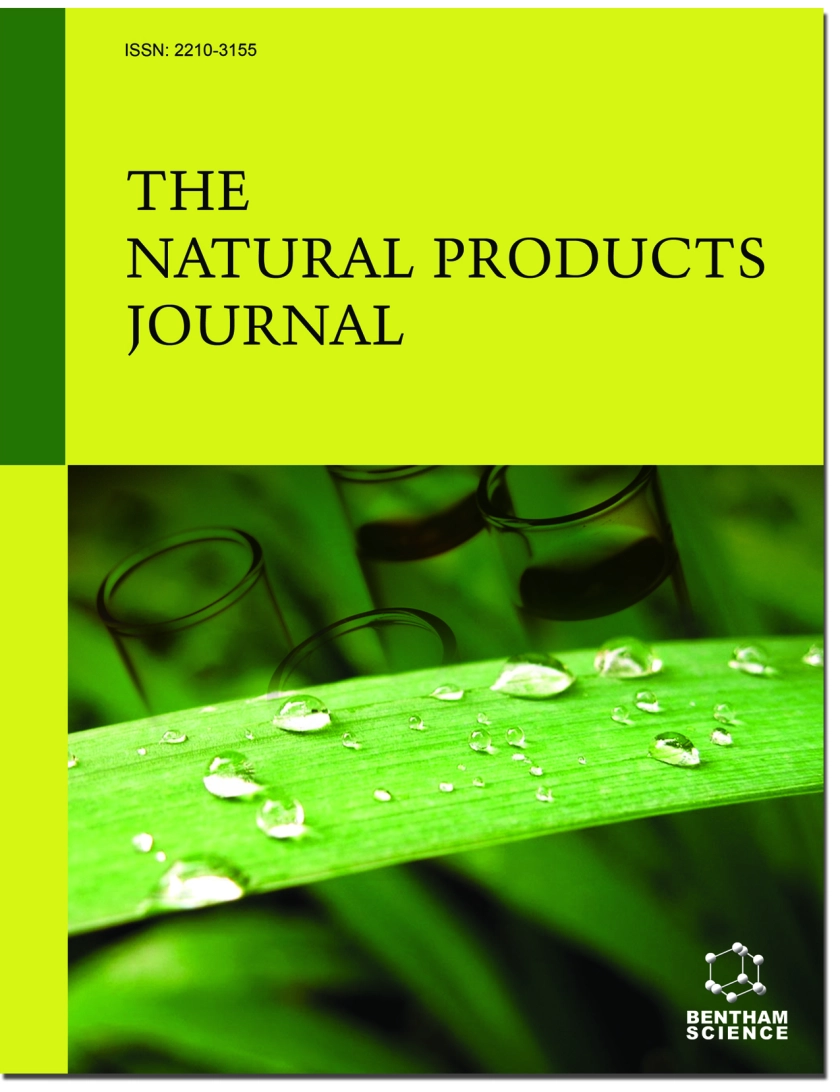
Review Article
Pumpkin seeds are recognised for their medicinal, nutritional, and cosmetic benefits, including anti-diabetic, heart disease prevention, anti-cancer, and antioxidant qualities.
Wal A, Singh MR, Gupta A, Rathore S, Rout RR, Wal P
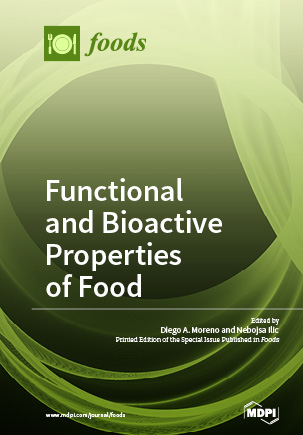
Review Article
Jujube, a Chinese native plant with numerous active components, exhibits calming effects, nourishes blood, and strengthens the spleen and stomach, alongside promising neuroprotective and cardiovascular benefits.
Zhu D, Jiang N, Wang N, Zhao Y, Liu X
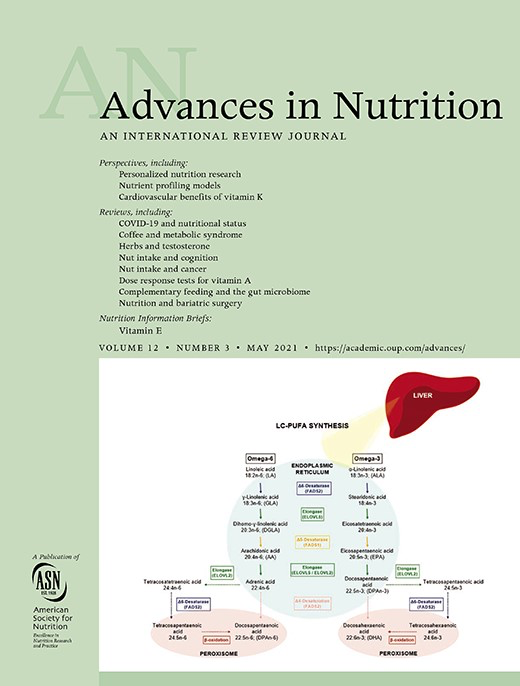
Systematic Review
Regular consumption of nuts improves sperm parameters such as motility, vitality, and morphology, potentially promoting successful reproductive outcomes in healthy males.
Cardoso BR, Fratezzi I, Kellow NJ
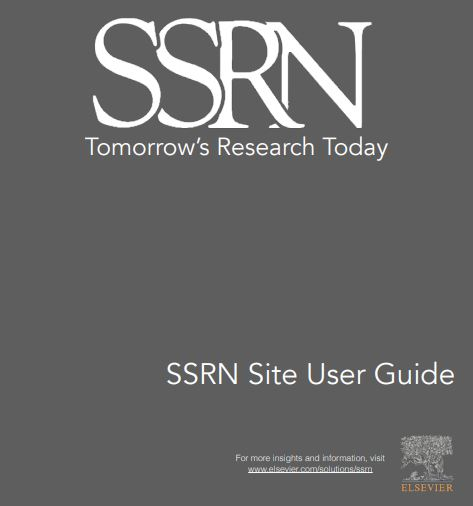
Meta-Analysis
Diverse acupuncture therapies, especially moxibustion, emerged as superior methods for alleviating ulcerative colitis symptoms in clinical practice.
Zhang X, Yang S, Jin Y, Cheng X, Lu H, Wu H, Ji J

Review Article
Peptic ulcers may be prevented and cured by well-chewed food rich in vegetable fibers and fermented milk products, which increase protective salivary mucus and decrease damaging bile flow.
Malhotra SL
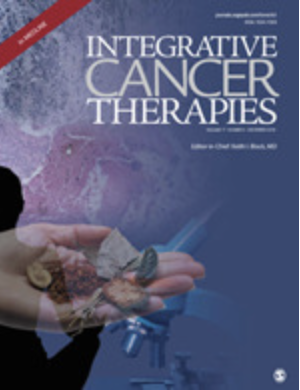
Meta-Analysis
Adding Compound Kushen Injection (CKI), a traditional Chinese medicine, to chemotherapy treatment enhanced treatment response and reduced side effects in advanced colorectal cancer patients.
Wu J, Ma X, Wang X, Zhu G, Wang H, Zhang Y, Li J
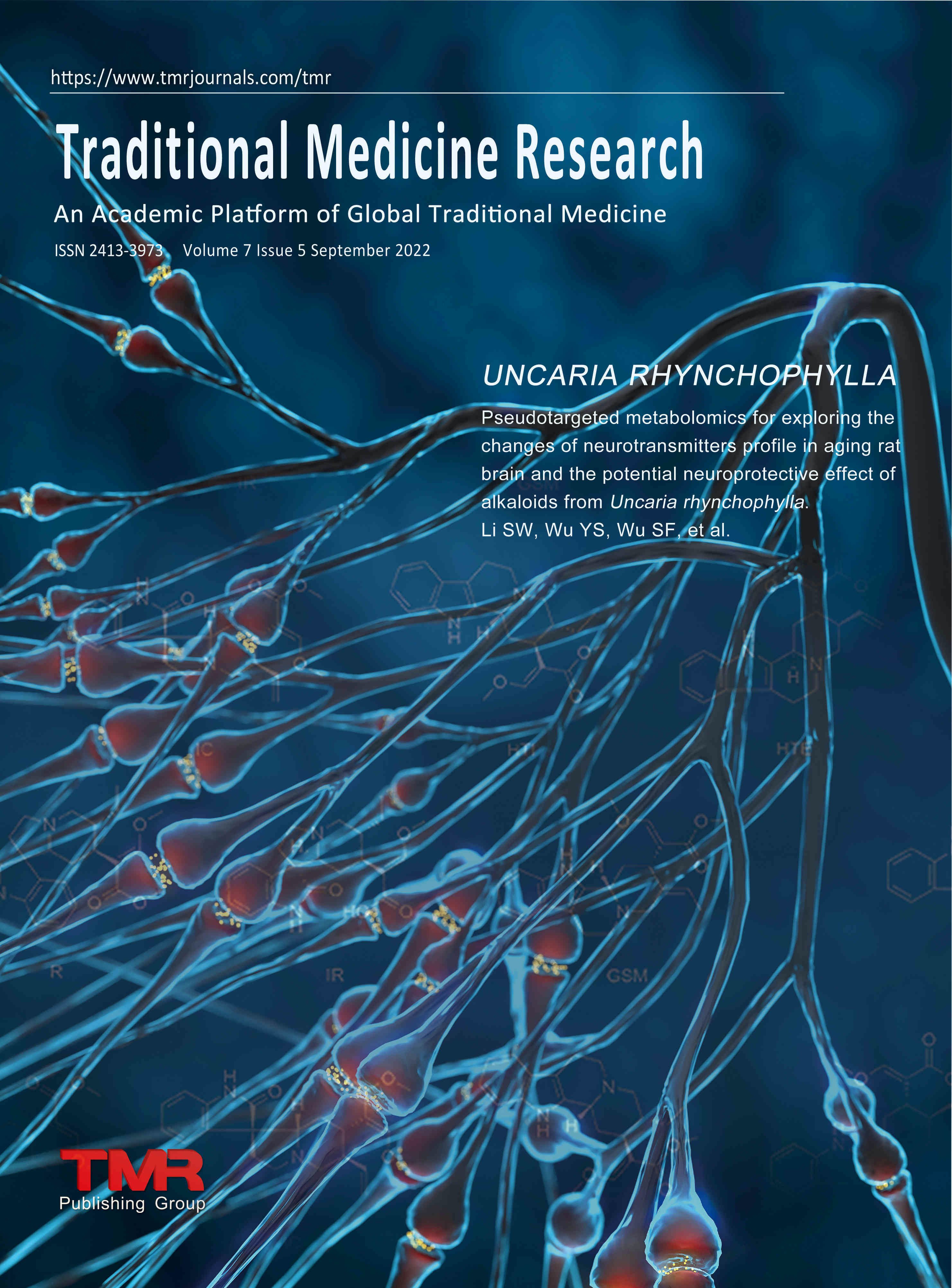
Data Mining
The traditional Chinese medicine prescription combination of Chrysanthemi Flos, Cassiae Semen, Lycii Fructus, Angelicae Sinensis Radix and Salviae Miltiorrhizae Radix et Rhizoma presents potential for treating retinal diseases.
Zhang JX, Zhang KL, Chang XW, Gu JF, Wei SB, Zhu BY, Wang Q, Wu DL, Gui SY, Yan H, Duan JA

Experimental Study
Jian-Pi-Yi-Shen formula has shown potential in delaying kidney deterioration in chronic kidney disease by rejuvenating the process of creating nicotinamide adenine dinucleotide.
Gao L, Huang X, Deng R, Wu S, Peng Y, Xiong G, Lu J, Liu X

Experimental Study
A blend of jujube seeds, longan fruits, and lettuce leaves significantly increases sleep time in fruit flies and mice.
Bae GY, Ko K, Yang E, Park SS, Suh HJ, Hong KB
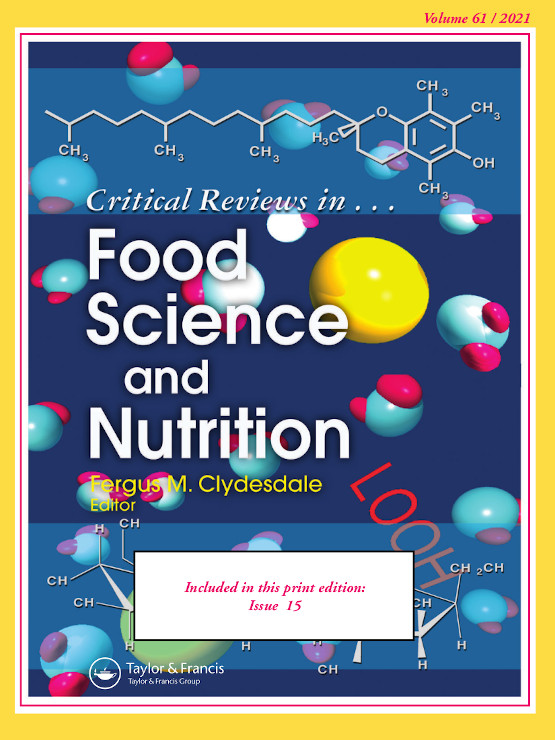
Meta-Analysis
Consuming carrots can significantly decrease the risk of cancer.
Ojobor CC, O’Brien GM, Siervo M, Ogbonnaya C, Brandt K

Clinical Study
Tongue scalloping can be a useful clinical indicator of sleep disorders, including snoring history and obstructive sleep apnea.
Weiss TM, Atanasov S, Calhoun KH
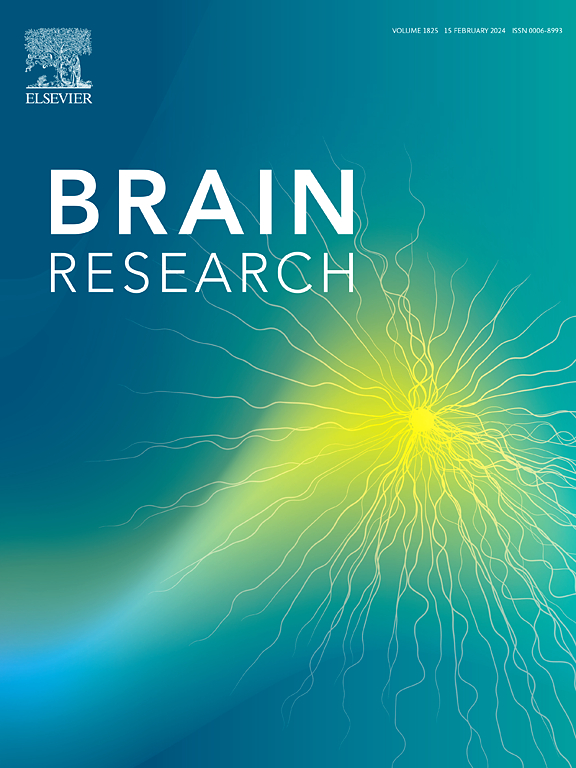
Systematic Review
Pomegranate fruit and its phytochemicals may offer a novel, natural alternative for the treatment of pathological anxiety, with fewer adverse effects than traditional medications.
Flores-Bazán T, Betanzos-Cabrera G, Guerrero-Solano JA, Negrete-Díaz JV, German-Ponciano LJ, Olivo-Ramírez D

Randomised Controlled Trial
Changes in gut microbiome associated with a low-fat, vegan diet and cooked soybeans may reduce the frequency and severity of postmenopausal hot flashes.
Kahleova H, Holtz DN, Strom N, La Reau A, Kolipaka S, Schmidt N, Hata E, Znayenko-Miller T, Holubkov R, Barnard ND
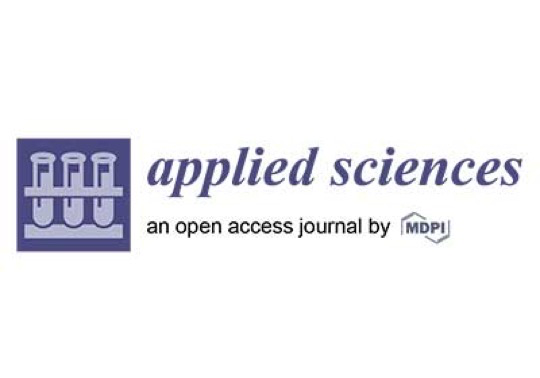
Review Article
Honey accelerates the healing of diabetic foot ulcers, reduces wound size, and lowers the rates of amputation or hospitalisation, making it a cost-effective and safe treatment.
Bezerra A, Fonseca H, Rodrigues F, Delerue-Matos C, Gouvinhas I, Garcia J

Review Article
Bee pollen showcases a range of biological activities, such as anti-inflammatory, antimicrobial, and potential antiviral properties, which could contribute to the creation of innovative therapies.
Rodríguez-Pólit C, Gonzalez-Pastor R, Heredia-Moya J, Carrera-Pacheco SE, Castillo-Solis F, Vallejo-Imbaquingo R, Barba-Ostria C, Guamán LP

Experimental Study
Virgin coconut oil shows potential therapeutic promise against Alzheimer's disease by reducing key markers and enhancing neurotransmitter parameters.
Demirel G, Sanajou S, Yirün A, Çakir DA, Berkkan A, Baydar T, Erkekoğlu P

Randomised Controlled Trial
Consumption of unripe avocado extract in the diet may lower postprandial insulin levels in overweight adults with previously elevated insulin levels.
Zhao L, Ingram DK, Gumpricht E, De Paoli T, Teong XT, Liu B, Mori TA, Heilbronn LK, Roth GS
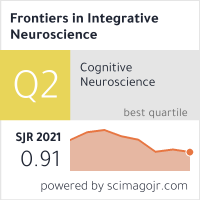
Experimental Study
Acupuncture can enhance visual function in people with myopia via particular changes in brain activity.
Su K, Wang L, Wang Z, Ma J, Zhang C, Bi H, Wu J

Systematic Review
Pomegranate can significantly enhance women's health during and after menopause by reducing hot flashes severity and other menopause symptoms.
Moeini R, Shirafkan H, Gorji N
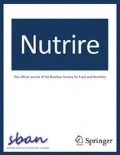
Review Article
Almond consumption has beneficial impacts on cardiovascular diseases, diabetes, obesity, and it can improve cognitive performance and protect against skin aging.
Ouzir M

Experimental Study
Qi Shen Tang, a traditional Chinese medicine, was found to suppress retinal cell death in retinitis pigmentosa by inhibiting a process called ferroptosis.
Xiong M, Ou C, Yu C, Qiu J, Lu J, Fu C, Peng Q, Zeng M, Song H
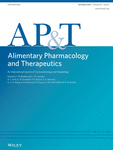
Review Article
Fruits, especially kiwifruits, and rye bread can enhance bowel movements and help manage chronic constipation better than conventional dietary methods.
Van Der Schoot A, Katsirma Z, Whelan K, Dimidi E

Cohort Study
Long-term consumption of green tea can potentially lessen the risk of depression in postmenopausal women by decreasing inflammation and boosting estradiol levels.
Wan Z, Qin X, Tian Y, Ouyang F, Wang G, Wan Q
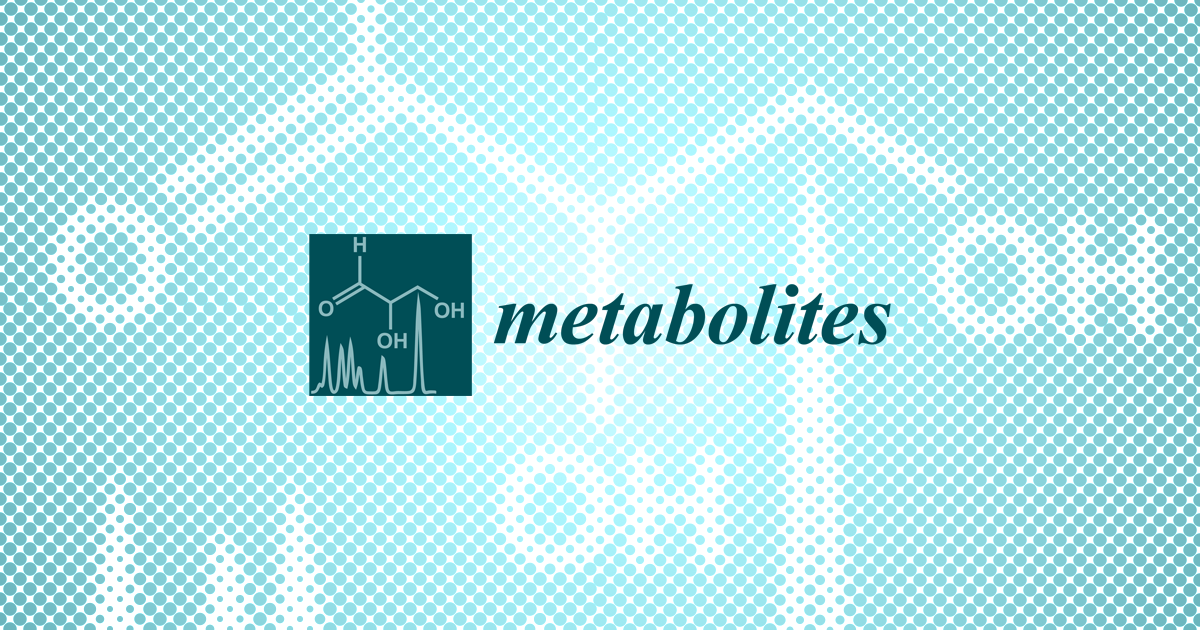
Clinical Study
Consuming bicarbonate-calcium mineral water, low in sodium, can help manage calcium imbalance and support bone health in perimenopausal women.
Marino C, Pagano I, Castaldo G, Grimaldi M, D’Elia M, Santoro A, Conte A, Molettieri P, Parisella C, Buonocore M, D’Ursi AM, Rastrelli L

Theoretical Article
Traditional Chinese medicine has been found to effectively treat ulcerative colitis by repairing various components of the damaged intestinal mucosal barrier.
Zong Y, Meng J, Mao T, Han Q, Zhang P, Shi L

Animal Study
A combination of soybean germ extract and a probiotic significantly improved menopause-related conditions and mood in an ovariectomized rat model.
Lee SH, Lim TJ, Yun EJ, Kim KH, Lim S

Systematic Review
Peppermint, particularly its component menthol, has been indicated to possess anti-inflammatory properties, potentially improving management of chronic disorders like diabetes and cancer.
Goudarzi MA, Radfar M, Goudarzi Z
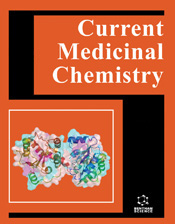
Systematic Review
Consumption of apple cider vinegar significantly improves certain risk factors for cardiometabolic syndrome, notably fasting blood glucose, glycosylated hemoglobin, and total cholesterol.
Dadkhah Tehrani S, Keshani M, Rouhani MH, Moallem SA, Bagherniya M, Sahebkar A
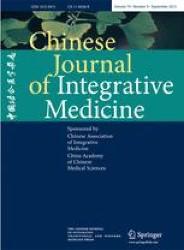
Systematic Review
Acupuncture may have a positive impact on clinical pregnancy rate and live birth rate in women undergoing in vitro fertilization (IVF), although the results are limited by the heterogeneity of the current evidence.
Zhang H, Zhang C, Ma P, Sun C, Sun C, Liu X, Pu Z, Lin Y, Liu B, Liu C, Yan S
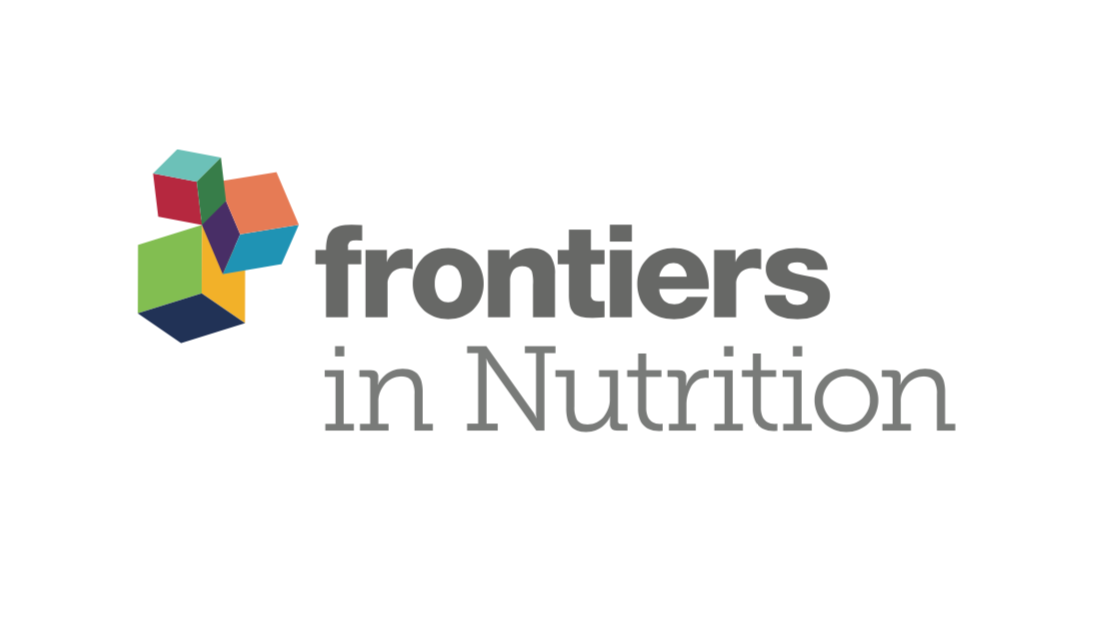
Experimental Study
A combination of Walnut Peptide and Casein Peptide substantially alleviates anxiety disorder symptoms and enhances memory by improving neurotransmitter function in mice.
Li Q, Jia X, Zhong Q, Zhong Z, Wang Y, Tang C, Zhao B, Feng H, Hao J, Zhao Z, He J, Zhang Y

Meta-Analysis
Oral Chinese herbal medicines appear to enhance recovery when used as supplements to conventional treatment after sinus surgery.
Cui J, Lin W, May BH, Luo Q, Worsnop C, Zhang AL, Guo X, Lu C, Li Y, Xue CC
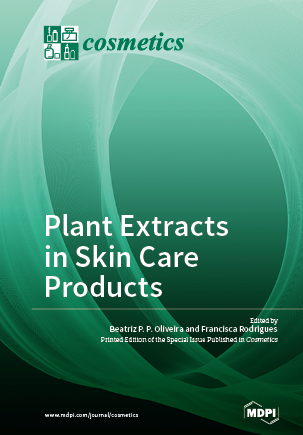
Experimental Study
Phenolic extracts from turmeric and ginger have significant anti-inflammatory effects and enhance wound healing in Wistar rats.
Bouchama C, Zinedine A, Rocha JM, Chadli N, El Ghadraoui L, Chabir R, Raoui SM, Errachidi F
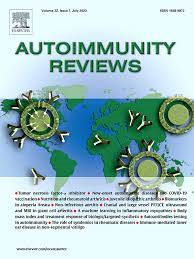
Systematic Review
Intermittent fasting may potentially influence autoimmune diseases like type 1 diabetes and rheumatoid arthritis, by reducing inflammation and supporting cellular repair mechanisms.
Barati M, Ghahremani A, Namdar Ahmadabad H
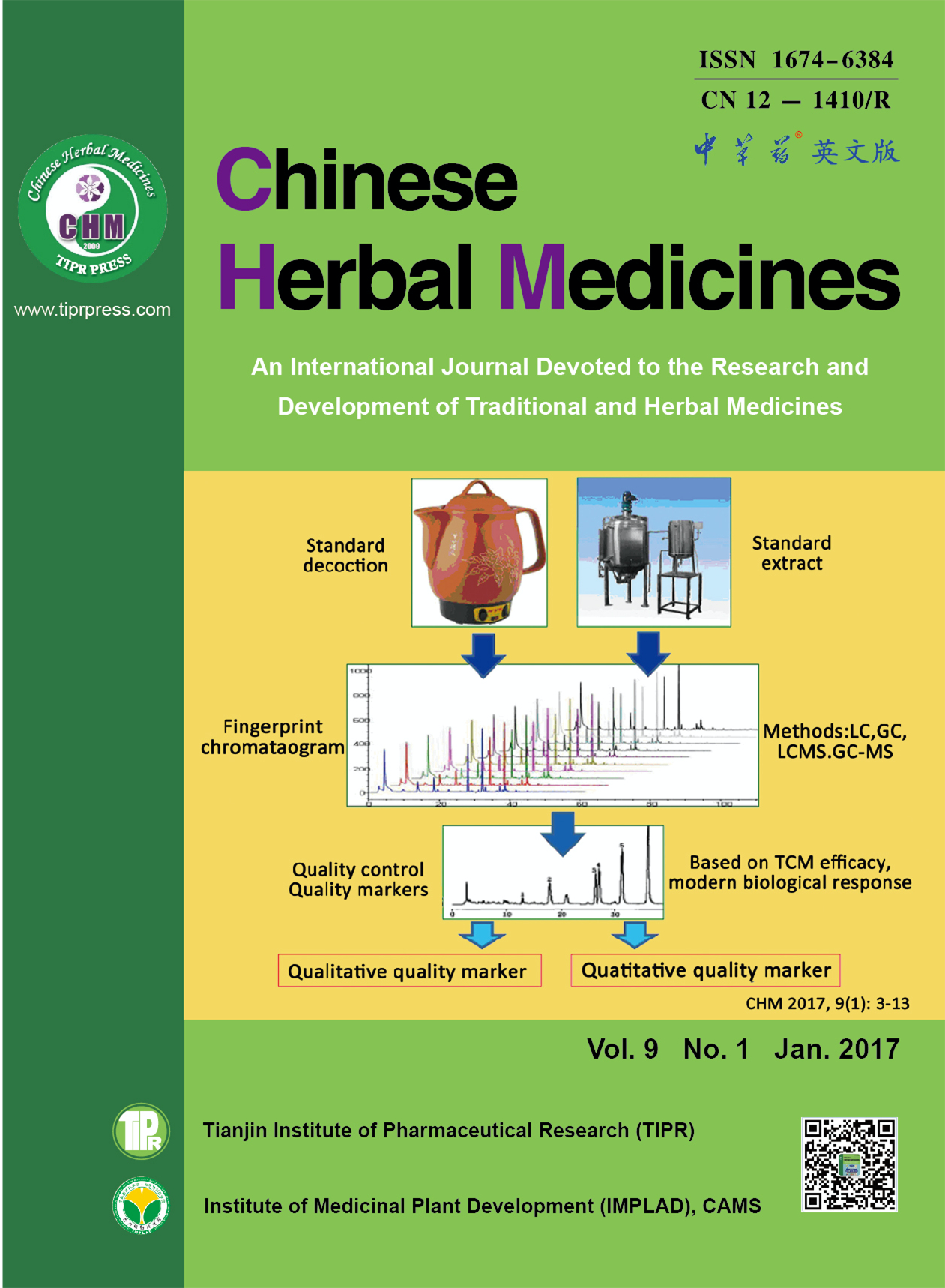
Review Article
Chinese herbal medicines (CHMs) possess multiple advantages, including multiple targets, pathways, and low toxicity, for the treatment of prostate cancer.
Kong F, Wang C, Zhang J, Wang X, Sun B, Xiao X, Zhang H, Song Y, Jia Y
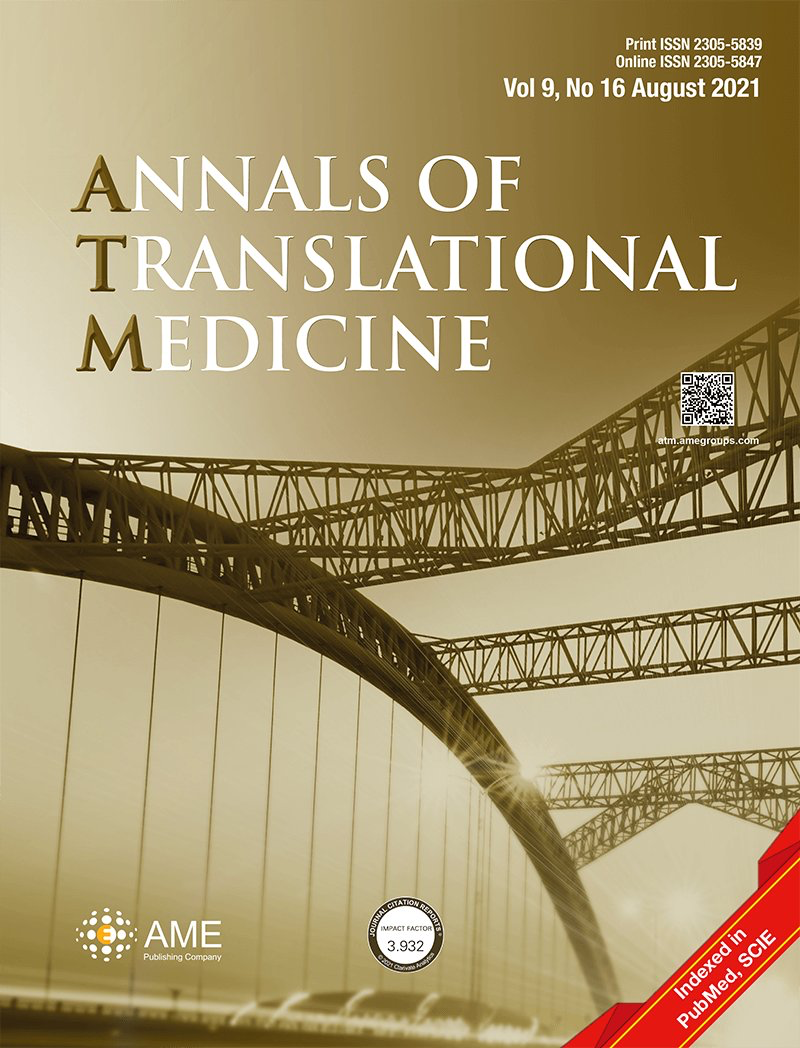
Network Pharmacology
The research unveils luteolin, quercetin, and kaempferol in RALRG as promising complementary components for RP treatment, with a key role in managing oxidative stress and PI3K/AKT signaling pathways.
Wu J, Sun Z, Zhang D, Liu H, Wu J, Zhang S

Review Article
Pomegranate and its by-products, particularly the peel, contain bioactive compounds with potential antimicrobial, anticancer and antiviral properties.
Valero-Mendoza AG, Meléndez-Rentería NP, Chávez-González ML, Flores-Gallegos AC, Wong-Paz JE, Govea-Salas M, Zugasti-Cruz A, Ascacio-Valdés JA
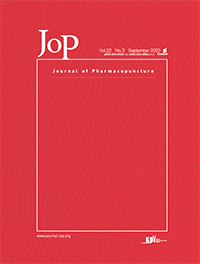
Meta-Analysis
Acupuncture combined with moxibustion has shown significant benefits in the treatment of mild to moderate Crohn's disease.
Bae JH, Kang SY, You SE, Jeong HI, Jang S, Kim KH

Randomised Controlled Trial
A beverage formula containing fish roe, snow fungus, and yeast enhances cognitive function by improving memory, response times, and emotional recognition, while reducing anxiety and fatigue.
Lin YK, Lin YH, Chiang CF, Jingling L

Review Article
The bioactive peptides found in walnuts have potential neuroprotective effects, including reducing oxidative stress and neuroinflammation, and promoting autophagy and balance in the cholinergic system.
Zhang L, Bai YY, Hong ZS, Xie J, Tian Y
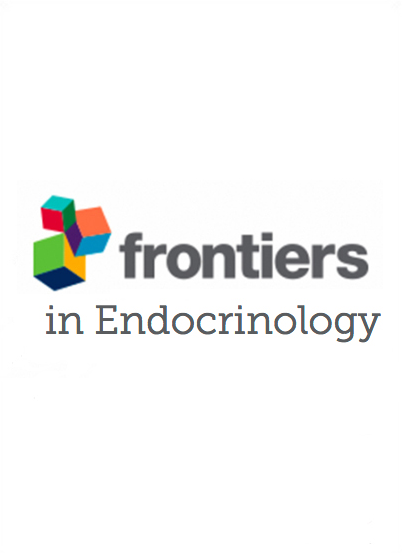
Systematic Review
Jia Wei Xiao Yao San could potentially enhance the effectiveness of antithyroid drugs in treating hyperthyroidism especially in symptom relief and side effect reduction.
Ma W, Zhang X, Zhao R, Tang Y, Zhu X, Liu L, Xu M, Wang G, Peng P, Liu J, Liu Z

Randomised Controlled Trial
Propolis supplementation positively influences metabolic factors, testosterone levels, lipid profile, and body measurements in women suffering from polycystic ovarian syndrome.
Abbasi E, Bagherniya M, Soleimani D, Ghasemi‐Tehrani H, Abbaspour M, Clark CCT, Askari G
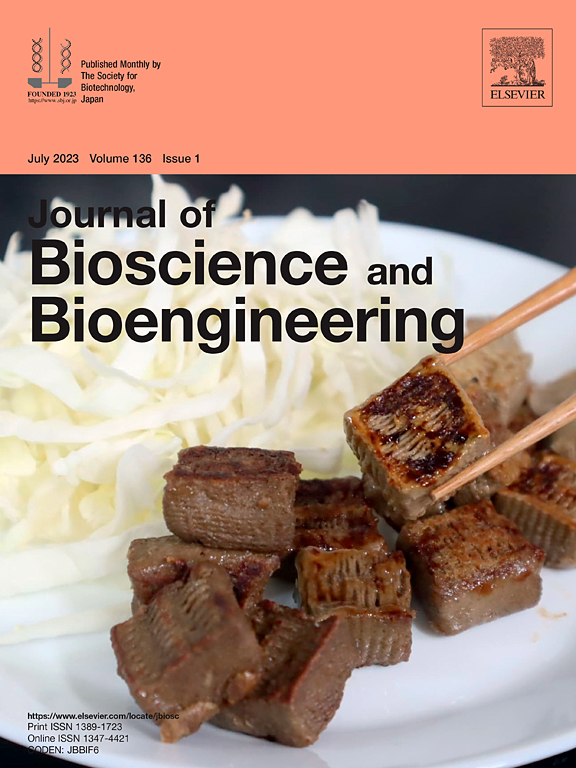
Review Article
Shoyu, offers a range of functional benefits including improved digestion, antimicrobial properties and various health-promoting properties while being allergen-free from soybeans and wheat.
Kataoka S

Systematic Review
Acupuncture's effectiveness in treating attention deficit hyperactivity disorder remains inconclusive due to the low quality of existing systematic reviews and meta-analyses.
Zhang L, Huang C, Chen X, Du S, Yang J, Hu B
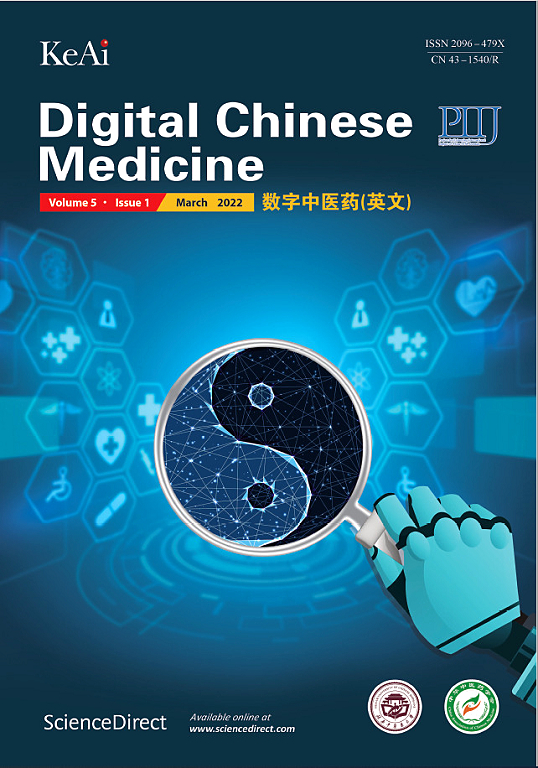
Experimental Study
Lycium barbarum polysaccharide may decrease apoptosis in retinal photoreceptor cells of retinitis pigmentosa mice by suppressing nuclear factor-kappa B/NOD-like receptor thermal protein domain-associated protein 3 pathway.
Wang Y, Deng Y, Lu J, Peng J, Zhou Y, Yang Y, Peng Q
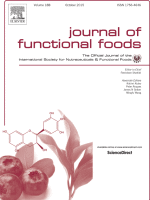
Animal Study
Fermented Pueraria lobata root extract and Glycine max extract showed estrogen-like activities, reducing depressive symptoms in menopausal mice but not increasing female cancer risks.
Ha J, Jang HM, Choi I

Review Article
Soy protein, bioactive peptides, and isoflavones are generally safe for consumption and may help reduce the risk of several significant health conditions.
Tan ST, Tan SS, Tan CX

Systematic Review
Pomegranate consumption positively affects triglycerides, low-density lipoprotein cholesterol, and high-density lipoprotein cholesterol levels.
Bahari H, Rezaiian F, Goudarzi K, Nooshan Mirmohammadali S, Asbaghi O, sadat Hosseini kolbadi K, Naderian M, Hosseini A
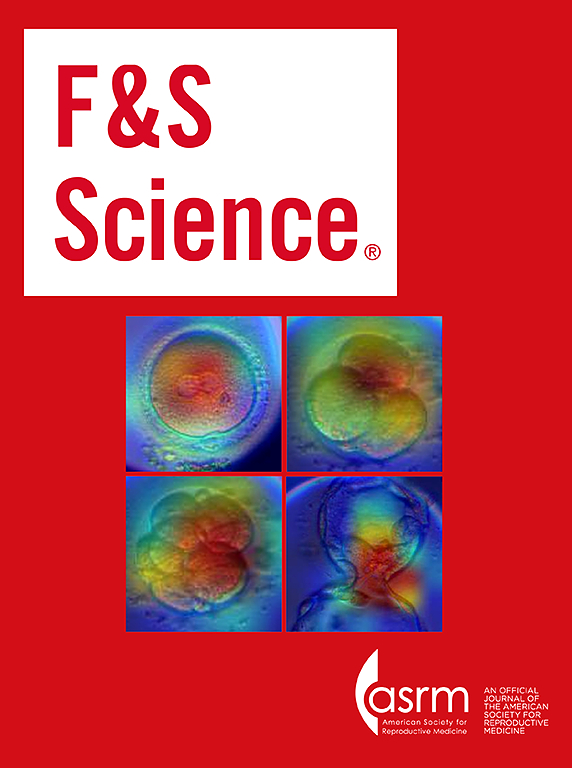
Network Pharmacology
Combining Crila with green tea extract (EGCG) has been found to synergistically hinder the growth of human uterine fibroid cells.
Bai T, Ali M, Somers B, Yang Q, McKinney S, Al-Hendy A

Review Article
Soybean intake can potentially reduce risks of several cancers, type 2 diabetes, osteoporosis, and hot flashes, and it may negatively impact some drug treatments and cause allergies.
Kang JH, Dong Z, Shin SH
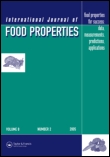
Review Article
Plums, which are rich in bioactive compounds, antioxidants, and vitamins, can help maintain blood glucose level, bone health, heart health and even treat certain cancers.
Ayub H, Nadeem M, Mohsin M, Ambreen S, Khan F, Oranab S, Rahim M, Zubair khalid M, Zongo E, Zarlasht M, Ullah S

Randomised Controlled Trial
Pomegranate peel extract, along with a calorie deficit diet, could improve risk factors of metabolic syndrome and reduce fatty liver in patients with non-alcoholic fatty liver disease.
Barghchi H, Milkarizi N, Belyani S, Norouzian Ostad A, Askari VR, Rajabzadeh F, Goshayeshi L, Ghelichi Kheyrabadi SY, Razavidarmian M, Dehnavi Z, Sobhani SR, Nematy M

Randomised Controlled Trial
Dark chocolate, with its high cocoa content, may possess pain-relieving properties comparable to Ibuprofen.
Nuha K, Rusmil K, Ganiem AR, Permadi W, Diah Herawati DM

Review Article
Theabrownins, a major ingredient in dark tea, significantly contribute to multiple health benefits by modulating lipid metabolism, reducing weight gain, and preventing diseases, surpassing other tea types.
Cheng L, Wei Y, Peng L, Wei K, Liu Z, Wei X

Network Pharmacology
The compounds apocarotenoids and carotenoids found in saffron extract could potentially interact with multiple targets, helping to manage the symptoms of polycystic ovary syndrome.
Tiwari A, Modi SJ, Girme A, Hingorani L

Cohort Study
Consuming “Sneznik-1/79” mineral water significantly improves intestinal health and reduces cholesterol in type 2 diabetes patients.
Jovicic N, Andjic M, Novakovic J, Jeremic N, Zivkovic V, Srejovic I, Stanojevic D, Ristic P, Bolevich S, Jakovljevic V

Experimental Study
The herbal decoction Jian-Pi-Yi-Shen reduces symptoms of chronic kidney disease and anaemia by improving iron metabolism and inhibiting the JAK2-STAT3 signaling pathway.
Li C, Huang H, Wang R, Zhang C, Huang S, Wu J, Mo P, Yu H, Li S, Chen J
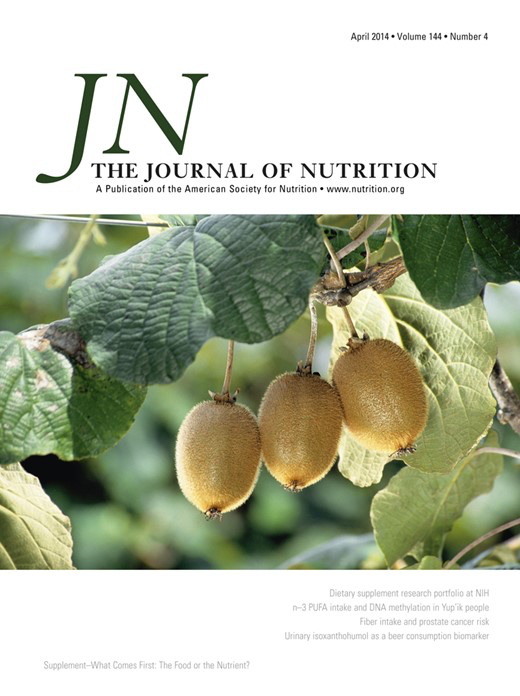
Clinical Study
A lower dose of iron amino acid chelate was not as effective as the standard iron salts dose in increasing ferritin levels in a predominantly iron-replete female Cambodian population.
Fischer JAJ, Pei LX, Elango R, Hou K, Goldfarb DM, Karakochuk CD

Meta-Analysis
Blueberry consumption significantly improves two-back test accuracy, suggesting potential cognitive benefits.
Soveid N, Barkhidarian B, Moradi S, Gholami F, Rasaei N, Himmerich H, Mirzaei K

Network Pharmacology
Gold kiwifruit extracts contained different bioactive materials which showed selective cytotoxic activity against human oral tumor cells and displayed anti-HIV, antioxidant, and antibacterial activities.
Motohashi N, Shirataki Y, Kawase M, Tani S, Sakagami H, Satoh K, Kurihara T, Nakashima H, Mucsi I, Varga A, Molnár J

Randomised Controlled Trial
Pomegranate juice consumption appears to somewhat enhance inflammatory status and complete blood count in hospitalized COVID-19 patients.
Yousefi M, Sadriirani M, Mahmoodi S, Samimi B, Pourmahmoudi A, Hosseinikia M, Sadeghi O, Roustaei N, Saeedinezhad Z, Espín JC, Ansari S, Panahande SB

Experimental Study
The fermented jujube seeds extract significantly enhances sleep by binding to the GABA receptors, thus offers a promising natural alternative for sleep disorders treatment.
Bae GY, Ahn Y, Hong KB, Jung EJ, Suh HJ, Jo K
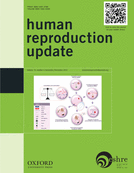
Review Article
The Mediterranean diet and reduced intake of trans fatty acids, saturated fatty acids, and discretionary foods like fast food and sugar-sweetened beverages may improve fertility rates.
Alesi S, Habibi N, Silva TR, Cheung N, Torkel S, Tay CT, Quinteros A, Winter H, Teede H, Mousa A, Grieger JA, Moran LJ

Systematic Review
Natural calcium-rich mineral waters offer a bioavailable calcium source, beneficial for bone health, cardiovascular function, weight management, and overall well-being.
Pop MS, Cheregi DC, Onose G, Munteanu C, Popescu C, Rotariu M, Turnea MA, Dograru G, Ionescu EV, Oprea D, Iliescu MG, Minea M, Stanciu LE, Silișteanu SC, Oprea C

Review Article
Honey intake has observed beneficial effects on various health aspects like cardiovascular, metabolic risk factors, and wound healing, primarily replacing other sweeteners.
Palma-Morales M, Huertas JR, Rodríguez-Pérez C

Animal Study
Jin Si Huang Ju tea, a traditional Chinese beverage, contains compounds that potentially reduce lipids, mitigate insulin resistance and reduce liver inflammation in vitro.
Li X, Li R, Wang X, Zhang X, Xiao Z, Wang H, Sun W, Yang H, Yu P, Hu Q, Guo Q, Sun H
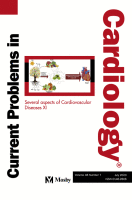
Systematic Review
Oat consumption can significantly improve lipid profiles, particularly reducing total cholesterol and LDL cholesterol, with potential positive effects on triglycerides and HDL cholesterol under certain conditions.
Amerizadeh A, Ghaheh HS, Vaseghi G, Farajzadegan Z, Asgary S
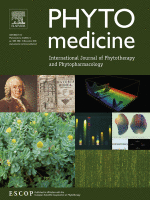
Experimental Study
The Chinese herbal medicine Bujing Yishi tablets could alleviate photoreceptor degeneration in retinitis pigmentosa by inhibiting microglial over-activation and inflammation.
Qi Y, Liu L, Liang D, Tang S, Yu X, Ye H, Chen N
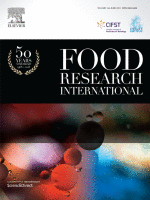
Animal Study
Fermented soy milk significantly improves lipid profiles and fertility in a model of premenopausal mice, due to increased bioavailability and action of beneficial compounds.
Ruiz de la Bastida A, Langa S, Peirotén , Fernández-Gonzalez R, Sánchez-Jiménez A, Maroto M, Antonio Curiel J, Guillamon E, Arqués JL, Gutiérrez-Adán A, Landete JM

Review Article
Nutrition, particularly an anti-inflammatory Mediterranean diet supplemented with oily fish and omega-3 supplements, can potentially reduce inflammation and improve symptoms of rheumatoid arthritis.
Nikiphorou E, Philippou E
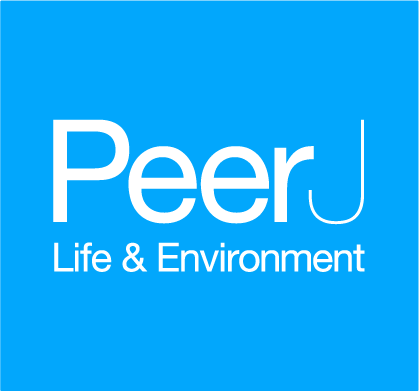
Review Article
Crocin, a compound derived from saffron, has shown considerable potential in hindering tumor growth and improving immune status, across various malignant tumors.
Bao X, Hu J, Zhao Y, Jia R, Zhang H, Xia L
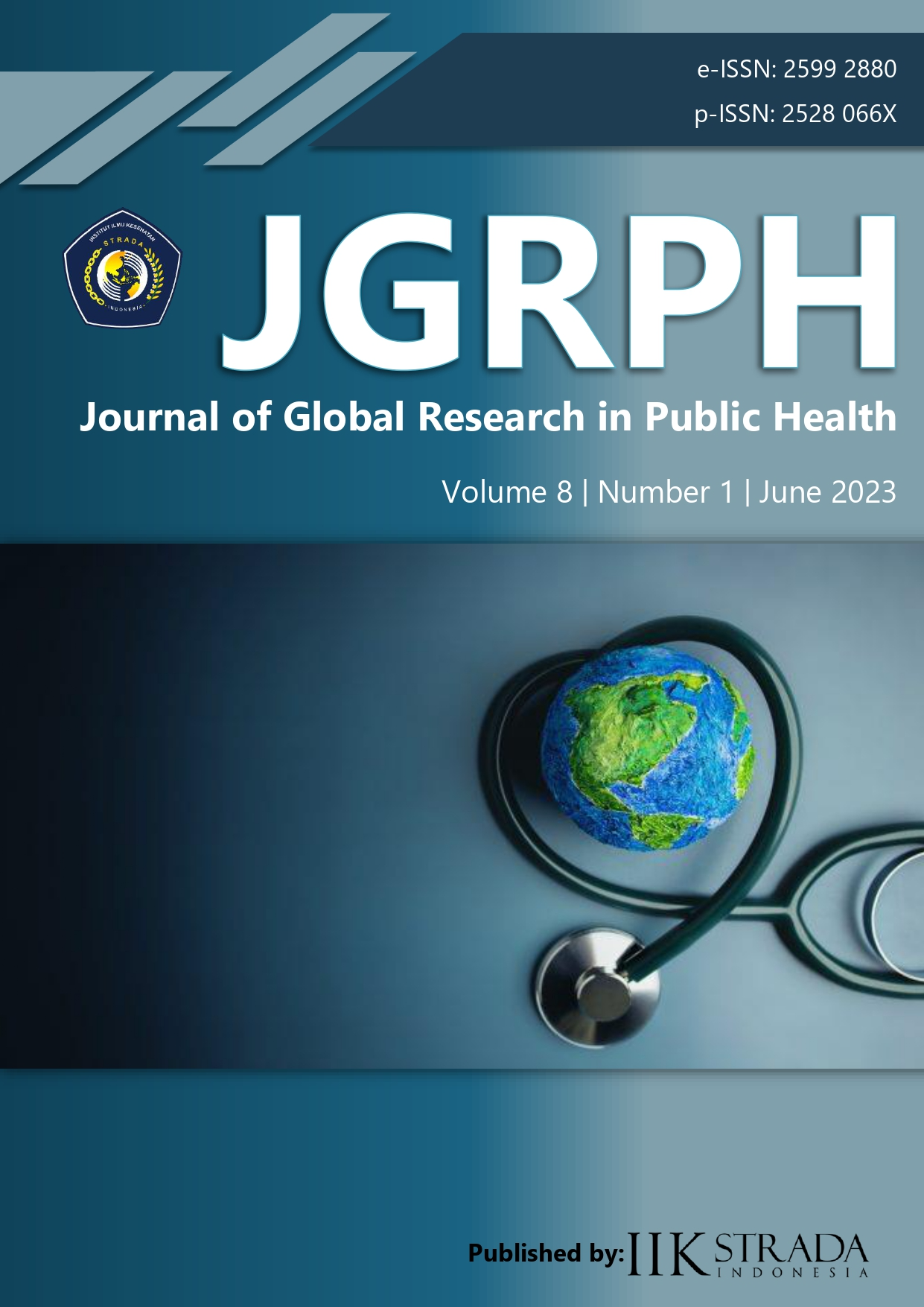
Cohort Study
Young coconut water has been found to be more effective than carrot juice in reducing the severity of dysmenorrhea in teenage girls.
Candra Wahyuni
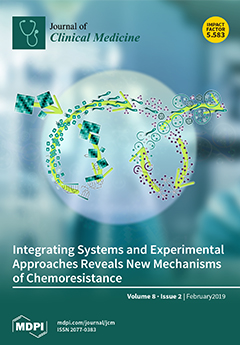
Clinical Study
Rheumatoid arthritis-specific inflammation can be linked directly to the intestinal microbiota, thus, nutritional interventions against gut dysbiosis could function as a causal therapeutic approach.
Häupl T, Sörensen T, Smiljanovic B, Darcy M, Scheder-Bieschin J, Steckhan N, Hartmann AM, Koppold DA, Stuhlmüller B, Skriner K, Walewska BM, Hoppe B, Bonin M, Burmester GR, Schendel P, Feist E, Liere K, Meixner M, Kessler C, Grützkau A, Michalsen A
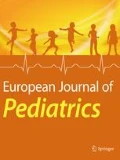
Systematic Review
Honey potentially has superior results than cough medication or placebo in curtailing symptoms and enhancing sleep in children with acute cough.
Kuitunen I, Renko M

Systematic Review
Vitamin D supplementation significantly reduces pain levels in people suffering from primary dysmenorrhea.
Chen YC, Chiang YF, Lin YJ, Huang KC, Chen HY, Hamdy NM, Huang TC, Chang HY, Shieh TM, Huang YJ, Hsia SM
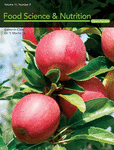
Review Article
Eating apples and apple products can enhance health by protecting the cardiovascular system, combating cancer and cognitive impairment, and improving hair growth, among other beneficial effects.
Zhang Y, Zeng M, Zhang X, Yu Q, Zeng W, Yu B, Gan J, Zhang S, Jiang X
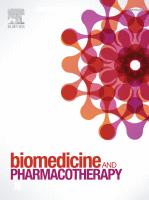
Experimental Study
Zhangyanming Tablets show potential as a protective agent for retinal function in early-stage, genetically-caused blindness in mice, possibly due to their antioxidant and anti-/pro-apoptotic properties.
Huang Z, Huang Q, Xu K, Liang L, Li Y, Zhou W, Ning N, Zhou J, Hu J, Liu S, Dang L
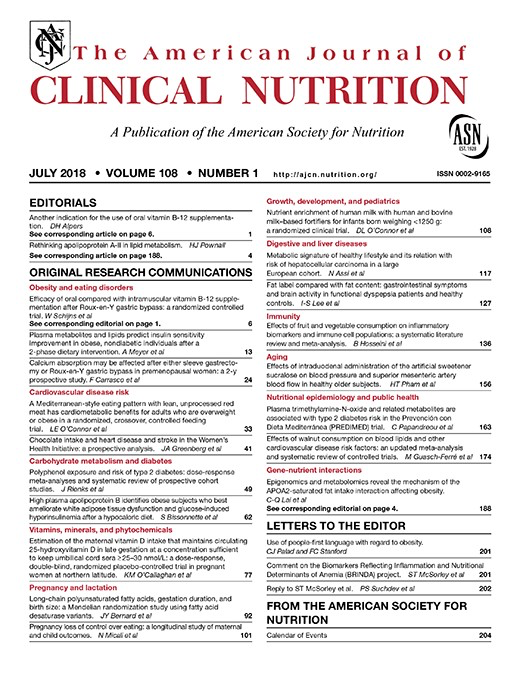
Randomised Controlled Trial
Consumption of blueberry powder daily improves vascular function, cognitive abilities, and reduces blood pressure in healthy older individuals.
Wood E, Hein S, Mesnage R, Fernandes F, Abhayaratne N, Xu Y, Zhang Z, Bell L, Williams C, Rodriguez-Mateos A

Experimental Study
Bee-collected pollen and bee bread, particularly when artificially fermented, demonstrate significant antiviral activity against the H1N1 strain of the influenza A virus.
Dimitriou T, Asoutis Didaras N, Barda C, Skopeliti D, Kontogianni K, Karatasou K, Skaltsa H, Mossialos D

Clinical Study
Consuming two medium-sized green kiwifruits an hour before bed can improve sleep quality and recovery stress balance among elite athletes.
Doherty R, Madigan S, Nevill A, Warrington G, Ellis JG
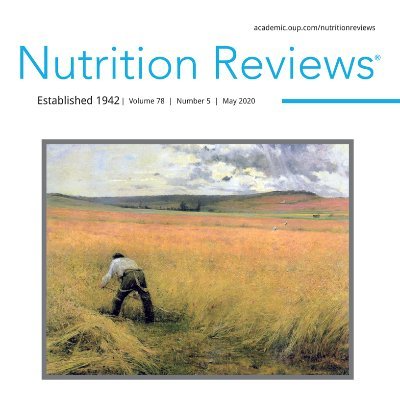
Review Article
Berry fruits such as blueberries, cranberries, raspberries, and strawberries could potentially improve gut microbiota and reverse dysbiosis in chronic kidney disease patients.
Coutinho-Wolino KS, Melo MFS, Mota JC, Mafra D, Guimarães JT, Stockler-Pinto MB
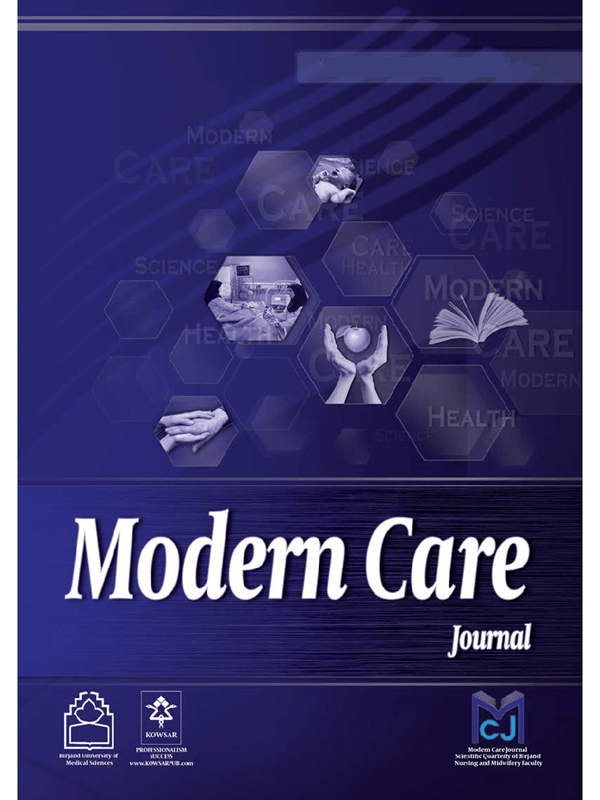
Systematic Review
Saffron shows promising improvements in dealing with women's health issues related to labor, childbirth, premenstrual syndrome and menopause.
Irani M, Rahmanian A, Soltani N

Randomised Controlled Trial
Walnut consumption may improve attention, fluid intelligence, and reduce ADHD symptoms in adolescents who consistently incorporated them into their diet.
Pinar-Martí A, Gignac F, Fernández-Barrés S, Romaguera D, Sala-Vila A, Lázaro I, Ranzani OT, Persavento C, Delgado A, Carol A, Torrent J, Gonzalez J, Roso E, Barrera-Gómez J, López-Vicente M, Boucher O, Nieuwenhuijsen M, Turner MC, Burgaleta M, Cana

Randomised Controlled Trial
Gui Zhi Fu Ling Wan significantly reduced menstrual pain in primary dysmenorrhea patients with heat-burning blood-stasis syndrome, without notable adverse effects.
Luo Y, Mao P, Chen P, Li C, Fu X, Zhuang M
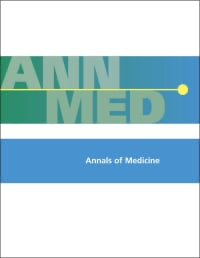
Systematic Review
Consuming dairy products might reduce the risk of developing breast cancer.
Arafat HM, Omar J, Shafii N, Naser IA, Al Laham NA, Muhamad R, Al-Astani TAD, Shaqaliah AJ, Shamallakh OM, Shamallakh KM, Abusalah MAH

Systematic Review
Consumption of natural mineral water increases diuresis in both humans and animals, evident sometimes after just one intake.
Vitali M, Fontana M, De Giorgi A, Marotta D, Crucianelli S, Antonucci A, Protano C

Systematic Review
Seaweed polysaccharides, especially those found in the cell walls of marine algae, hold significant potential as a natural, complementary treatment for Inflammatory Bowel Disease (IBD).
Liyanage NM, Nagahawatta DP, Jayawardena TU, Jeon YJ

Review Article
Sardines, being an affordable source of Omega-3 and other cardioprotective nutrients, can potentially reduce the need for Omega-3 supplementation and manage cardiometabolic diseases.
Santos HO, May TL, Bueno AA

Practice Guideline
Guidelines have been developed for treating frozen shoulder using traditional Chinese medicine, with multiple therapies such as acupuncture and exercise recommended.
Qin X, Sun K, Ao Y, Liu J, Wang M, Deng Q, Zhong W, liu J, Sun S, Liu X, Shi B, Guan X, Du S, Zou J, Wu C, Chen F, Fang Y, Nie X, Mo W, Guo J, Zhang Y, Dong Y, Wei X, Zhu L

Review Article
Vitamin D deficiency could accelerate depressive symptoms and suicide risks, and vitamin D supplementation may mitigate these effects.
Somoza-Moncada MM, Turrubiates-Hernández FJ, Muñoz-Valle JF, Gutiérrez-Brito JA, Díaz-Pérez SA, Aguayo-Arelis A, Hernández-Bello J

Review Article
Chinese herbal medicines could potentially relieve ulcerative colitis by moderating the gut microbiota and intestinal immunity loop.
Yang Y, Wang Y, Zhao L, Wang F, Li M, Wang Q, Luo H, Zhao Q, Zeng J, Zhao Y, Du F, Chen Y, Shen J, Wei S, Xiao Z, Wu X

Meta-Analysis
Acupuncture, either alone or as an adjunct, improved the clinical efficacy and visual acuity of age-related macular degeneration patients, particularly those with dry AMD.
Sun W, Zhao Y, Liao L, Wang X, Wei Q, Chao G, Zhou J
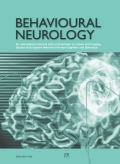
Animal Study
Pumpkin seeds have been shown to provide neuropharmacological benefits such as reducing anxiety and depression, and improving memory.
Wahid S, Alqahtani A, Khan RA

Experimental Study
The anthocyanins from the Gardenblue variety of blueberries exhibit strong antiproliferative effects on various cancer cells, especially liver cancer cells.
Zhao F, Wang J, Wang W, Lyu L, Wu W, Li W
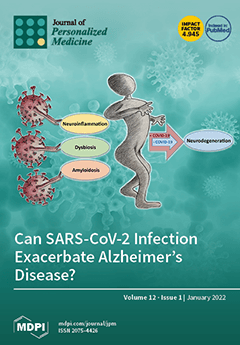
Case Report
The combination of epigallocatechin gallate, vitamin B12, folic acid, and hyaluronic acid could effectively counter precancerous lesions of the uterine cervix caused by HPV infections.
Grandi G, Botticelli L, Fraia PD, Babalini C, Masini M, Unfer V
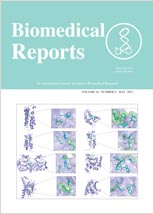
Clinical Study
Consuming a honey-based gel, such as 'Bear Strength honey gel,' led to a notable reduction in diastolic and mean arterial blood pressure, with gender-specific improvements in redox status among healthy adults.
Patouna A, Sevdalis P, Papanikolaou K, Kourti M, Skaperda Z, Jamurtas A, Kouretas D

Review Article
Green tea helps alleviate symptoms in multiple benign gynecological disorders, primarily due to a compound called Epigallocatechin-3-gallate.
Hazimeh D, Massoud G, Parish M, Singh B, Segars J, Islam MS

Randomised Controlled Trial
Consumption of fresh or dried kiwifruit in the evening improves aspects of sleep quality and mood, potentially mediated through changes in serotonin metabolism.
Kanon AP, Giezenaar C, Roy NC, McNabb WC, Henare SJ

Randomised Controlled Trial
A combination of epigallocatechin gallate, folic acid, vitamin B12, and hyaluronic acid may effectively clear HPV infections and cervical lesions in women.
Aragona C, Bezerra Espinola MS, Bilotta G, Porcaro G, Calcagno M

Animal Study
Long-term intake of traditionally made Doenjang, particularly high in certain species, may improve symptoms of estrogen deficiency more effectively than unfermented soybeans.
Zhang T, Yue Y, Jeong SJ, Ryu MS, Wu X, Yang HJ, Li C, Jeong DY, Park S

Systematic Review
Tuina therapy for chronic low back pain indicates potential pain relief and reduced disability but doesn't improve quality of life
Yang J, Zhou X, Ma Q, Woods JT, Mohabbat AB, Do A, Brault JS, Jensen MA, Shin KM, Shen L, Zhao C, Cheong KCP, He K, Guo Y, Chen Z, Tang S, Tang Y, Tan CIC, Chen J, Bauer BA

Systematic Review
Tuina massage for chronic low back pain reveals promising results amid methodological considerations
Yang J, Zhou X, Ma Q, Woods JT, Mohabbat AB, Do A, Brault JS, Jensen MA, Shin KM, Shen L, Zhao C, Cheong KCP, He K, Guo Y, Chen Z, Tang S, Tang Y, Tan CIC, Chen J, Bauer BA
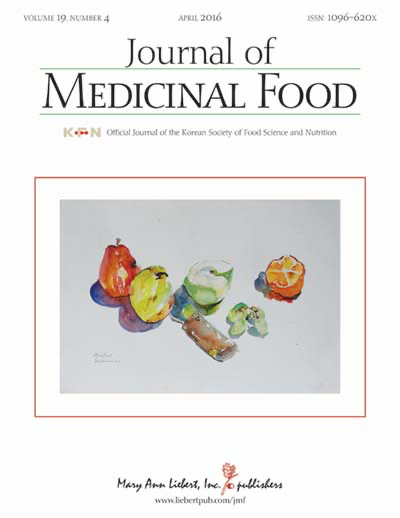
Randomised Controlled Trial
Korean pear extracts appear to alleviate air pollution-related respiratory hypersensitivity by modulating beneficial gut microflora and suppressing pro-inflammatory cytokines.
Yang M, Lee U, Cho HR, Lee KB, Shin YJ, Bae MJ, Park KY

Randomised Controlled Trial
Cinnamon, ginger, and mint enhanced chocolates effectively reduce menstrual pain and improve blood iron levels without increasing body weight or negatively affecting cholesterol.
Shalaby, A, Moawad O, Mostafa M
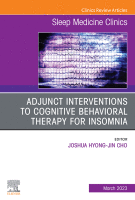
Theoretical Article
Acupuncture may enhance the effectiveness of cognitive-behavioral therapy for people suffering from insomnia and related conditions.
Kutana S, Mao JJ, Garland SN
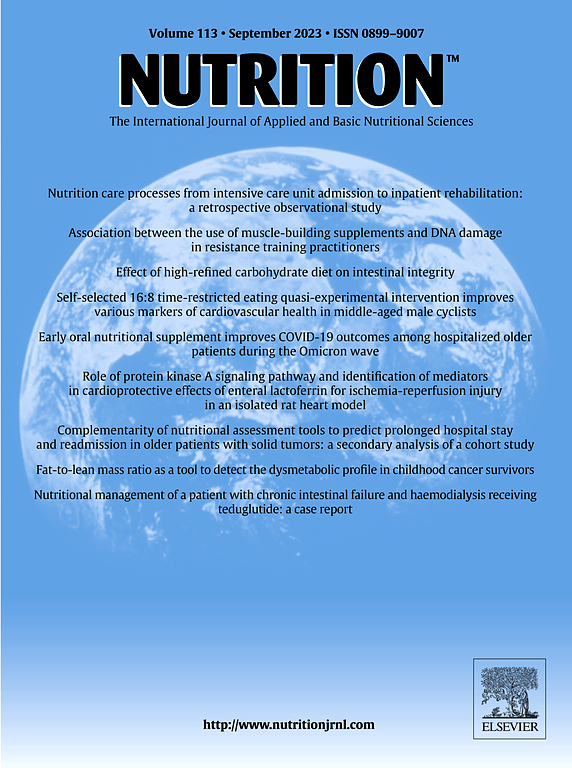
Systematic Review
Our dose-response analysis indicated that moderate green tea consumption (500–1000 mL/d) was associated with a 21% to 24% lower risk of stroke.
Wang ZM, Chen B, Zhou B, Zhao D, Wang LS

Review Article
Traditional Chinese Medicines (TCM) could increase the survival rate of retinal ganglion cells, thereby playing an active role in treating glaucoma.
Qi S, Zhang J, Zhu H, Wang Z, Li W

Cohort Study
Regular nut consumption, particularly peanuts and walnuts, is associated with a lower incidence of frailty in aging female populations.
Wang R, Hannan MT, Wang M, Schwartz AW, Lopez-Garcia E, Grodstein F

Systematic Review
Almond consumption can significantly reduce the serum concentration of the inflammatory mediator, Interleukin-6, in adults but no significant effect is found on C-reactive protein.
Hariri M, Amirkalali B, Baradaran HR, Gholami A

Cohort Study
Monounsaturated fats, omega-3 polyunsaturated fatty acids, and a suitable eicosapentaenoic acid to arachidonic acid ratio can be used in diet therapy to improve quality of life by reducing pain and inflammation.
Marcinkowska A, Górnicka M
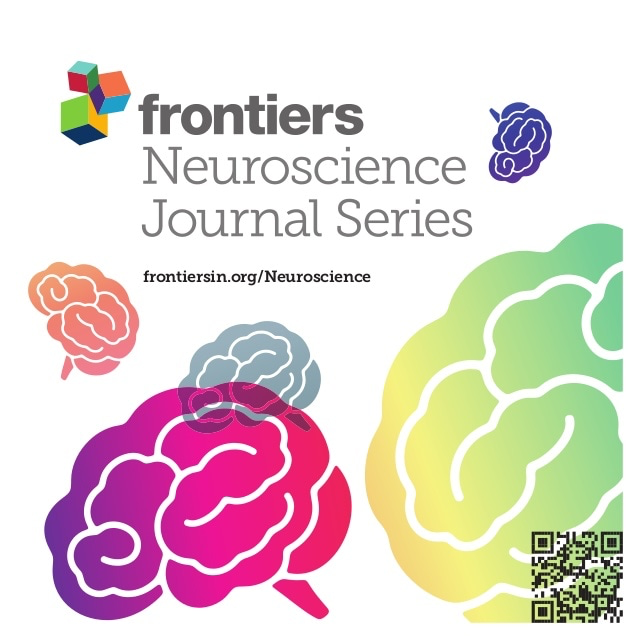
Systematic Review
Acupuncture's effectiveness for carpal tunnel syndrome uncovers better pain relief compared to night splints and potential benefits when used alongside other treatments
Dong Q, Li X, Yuan P, Chen G, Li J, Deng J, Wu F, Yang Y, Fu H, Jin R
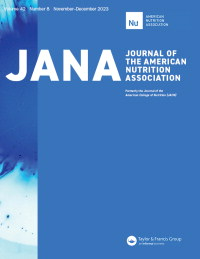
Experimental Study
Avocado oil appears to have a protective impact on the prostatic epithelium of Wistar rats subjected to induced prostate enlargement.
da Silva VAP, Abboud RS, Contreiras EC, Boaventura GT, Chagas MA
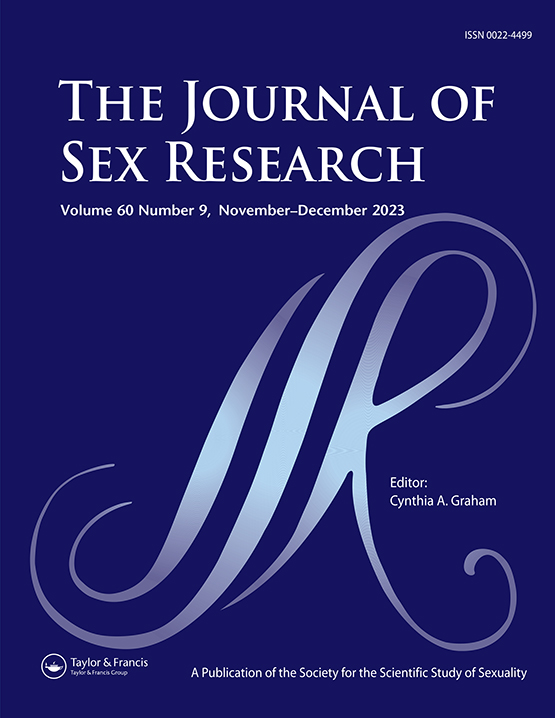
Cohort Study
Ginger consumption could counteract the negative influence of disgust, induced by sexual body fluids, on sexual arousal in individuals.
Wen G, Zhang Y, Nyman TJ, Jern P, Santtila P

Meta-Analysis
Acupuncture, either as an add-on or standalone treatment, improved conduct problems, learning issues, and hyperactivity symptoms in children with attention-deficit hyperactivity disorder.
Ang L, Kim JT, Kim K, Lee HW, Choi JY, Kim E, Lee MS

Systematic Review
Acupuncture, especially TEAS, is safer and more effective than medication for improving sleep quality in cancer related insomnia
Ou Y, Lin D, Ni X, Li S, Wu K, Yuan L, Rong J, Feng C, Liu J, Yu Y, Wang X, Wang L, Tang Z, Zhao L

Systematic Review
Acupuncture and Moxibustion Show Promise for Chronic Renal Insufficiency
Ou Y, Lin D, Ni X, Li S, Wu K, Yuan L, Rong J, Feng C, Liu J, Yu Y, Wang X, Wang L, Tang Z, Zhao L
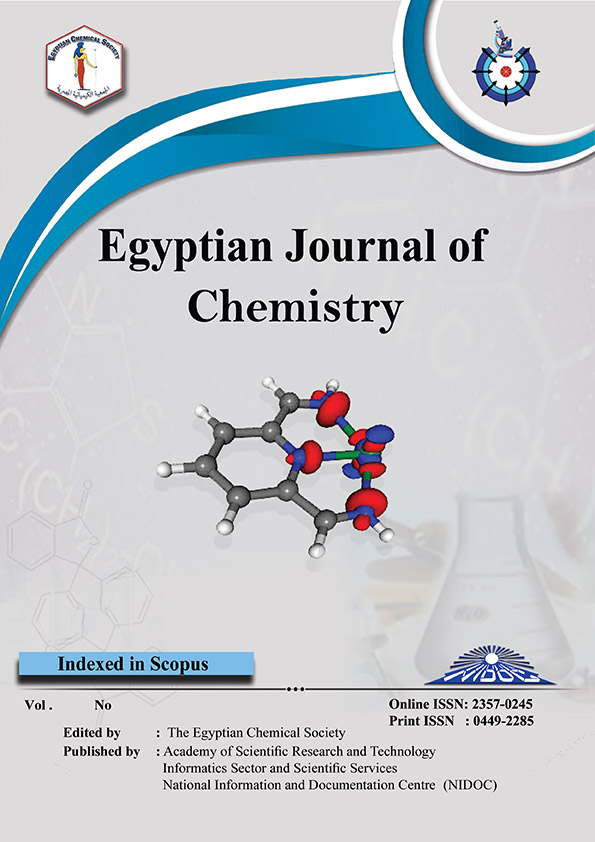
Experimental Study
Chrysanthemum morifolium contains natural bioactive compounds, including 29 types of phenolics, which display significant antioxidant activity.
Youssef H, Ali S, Sanad M, Dawood D

Review Article
Oats, in various edible forms, can regulate appetite hormones, aid weight management, strengthen the immune system, and contribute to gut health, making them effective for obesity management.
Shehzad A, Rabail R, Munir S, Jan H, Fernández-Lázaro D, Aadil RM
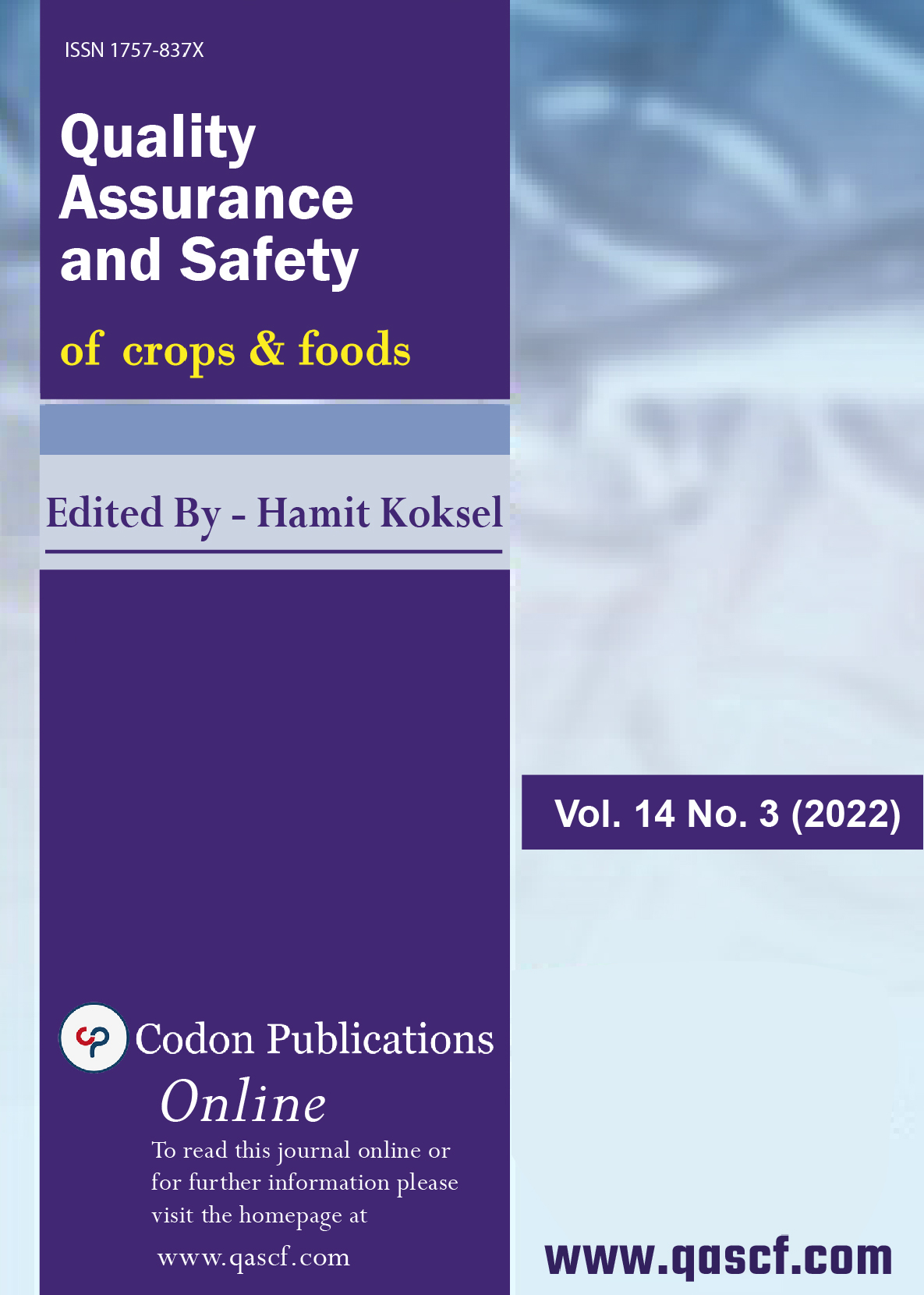
Meta-Analysis
The traditional Chinese herbal medicine Shaoyao Gancao Tang (SG-Tang) may be an effective and safe alternative treatment to relieve Restless Leg Syndrome.
Tian Z, Li R, Wei J, Huai W, Xia J, Jiang H, Xiong Y, Chen Y
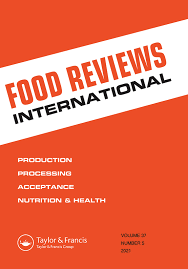
Review Article
Australian native plums contain phytochemicals that exhibit health benefits such as cardiovascular and liver protection.
Li J, Liu H, Mazhar MS, Quddus S, Agar OT, Suleria HAR
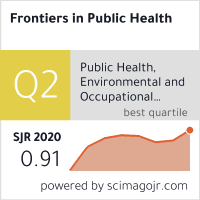
Randomised Controlled Trial
Acupuncture can improve both perimenopausal depression and insomnia with short-medium term effects while being a safe treatment.
Zhao FY, Zheng Z, Fu QQ, Conduit R, Xu H, Wang HR, Huang YL, Jiang T, Zhang WJ, Kennedy GA

Animal Study
Kiwifruit polysaccharides may alleviate the toxic effects of acrylamide by improving gut health and enhancing bile acid metabolism.
Chen M, Chen X, Wang K, Cai L, Liu N, Zhou D, Jia W, Gong P, Liu N, Sun Y

Systematic Review
Combined Ma Huang Fu Zi Xi Xin decoction and Shen Mai injection treatment showed improved heart rate and symptoms in under 60s with bradyarrhythmia
Zhang Z, Li Y, Yu T, Yan M, Li S

Meta-Analysis
Ferrous bisglycinate, an innovative amino acid iron chelate, showed increased absorption and fewer gastrointestinal side effects when used as an iron supplement in pregnant women.
Fischer JAJ, Cherian AM, Bone JN, Karakochuk CD
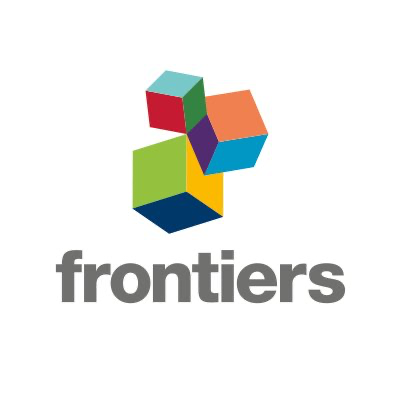
Systematic Review
Saffron supplementation significantly decreased oxidative stress markers and has beneficial effects in reducing oxidative stress.
Abedi A, Ghobadi H, Sharghi A, Iranpour S, Fazlzadeh M, Aslani MR
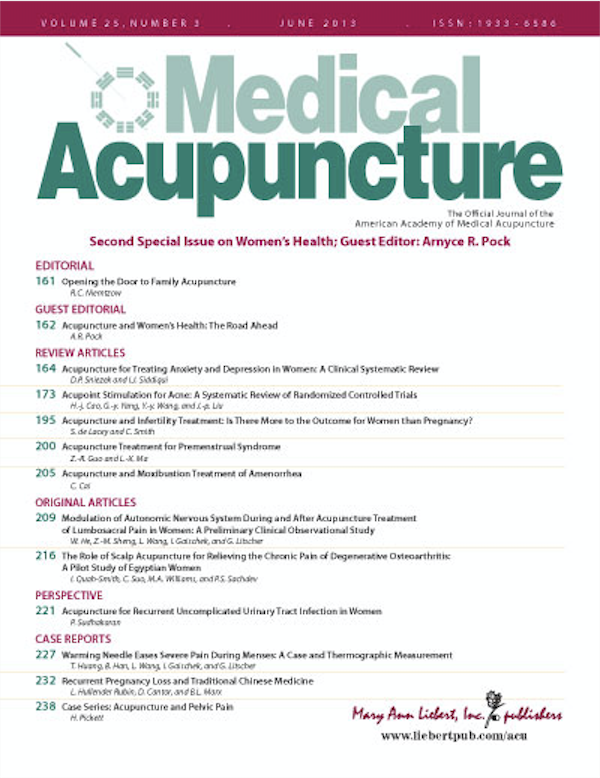
Randomised Controlled Trial
Acupuncture combined with a home-exercise program significantly reduces pain in patients suffering from plantar fasciopathy more than just a home exercise program.
Cagle SD, Covey C, Farrell J, Sharon DJ, Crawford P
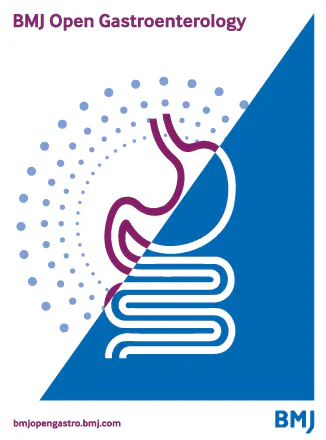
Randomised Controlled Trial
Bicarbonate-rich mineral water “Staatl. Fachingen STILL” significantly reduces heartburn more effectively than placebo, improving patients’ quality of life.
Labenz J, Anschütz M, Walstab J, Wedemeyer RS, Wolters H, Schug B

Cohort Study
Regular consumption of raw carrots is associated with a significant, dose-dependent reduction in lung cancer incidence, suggesting a potential cancer-protective effect attributed to polyacetylenic compounds, particularly falcarinol and falcarindiol, present in raw carrots.
Deding U, Baatrup G, Kaalby L, Kobaek-Larsen M

Clinical Study
Avocado consumption correlates with a wider variety of healthier food choices, offering potential benefits for weight control strategies.
Guan VX, Neale EP, Probst YC

Randomised Controlled Trial
Pomegranate extract supplements can help improve clinical symptoms and lower blood cell counts associated with inflammation in patients with allergic asthma.
Hosseini SA, Shateri Z, Abolnezhadian F, Maraghi E, Haddadzadeh Shoushtari M, Zilaee M

Systematic Review
Blending traditional Chinese medicine with Western medicine shows potential for treating heart enlargement
Zhang T, Xu H, Zhen D, Fu D, Zhao M, Wei C, Bai X

Randomised Controlled Trial
Pomegranate juice supplementation has been found to effectively decrease testosterone levels in overweight and obese women diagnosed with polycystic ovary syndrome.
Abedini M, Ramezani‐Jolfaie N, Ghasemi‐Tehrani H, Tarrahi MJ, Amani R
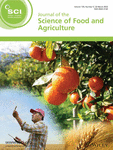
Review Article
Carrot and carotene consumption could diminish the risk of a wide range of negative health consequences, including multiple types of cancer.
Yi X, Li J, Liao D, Peng G, Zheng X, Xu H, Zhang T, Ai J
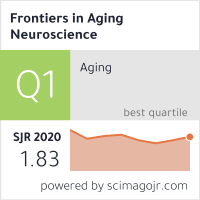
Review Article
Honey exhibits multifaceted benefits for brain health, acting as a memory booster, neuroprotective agent, anti-stress, and anti-nociceptive substance, fostering potential therapeutic applications to enhance overall cognitive well-being.
Zamri NA, Ghani N, Ismail CAN, Zakaria R, Shafin N
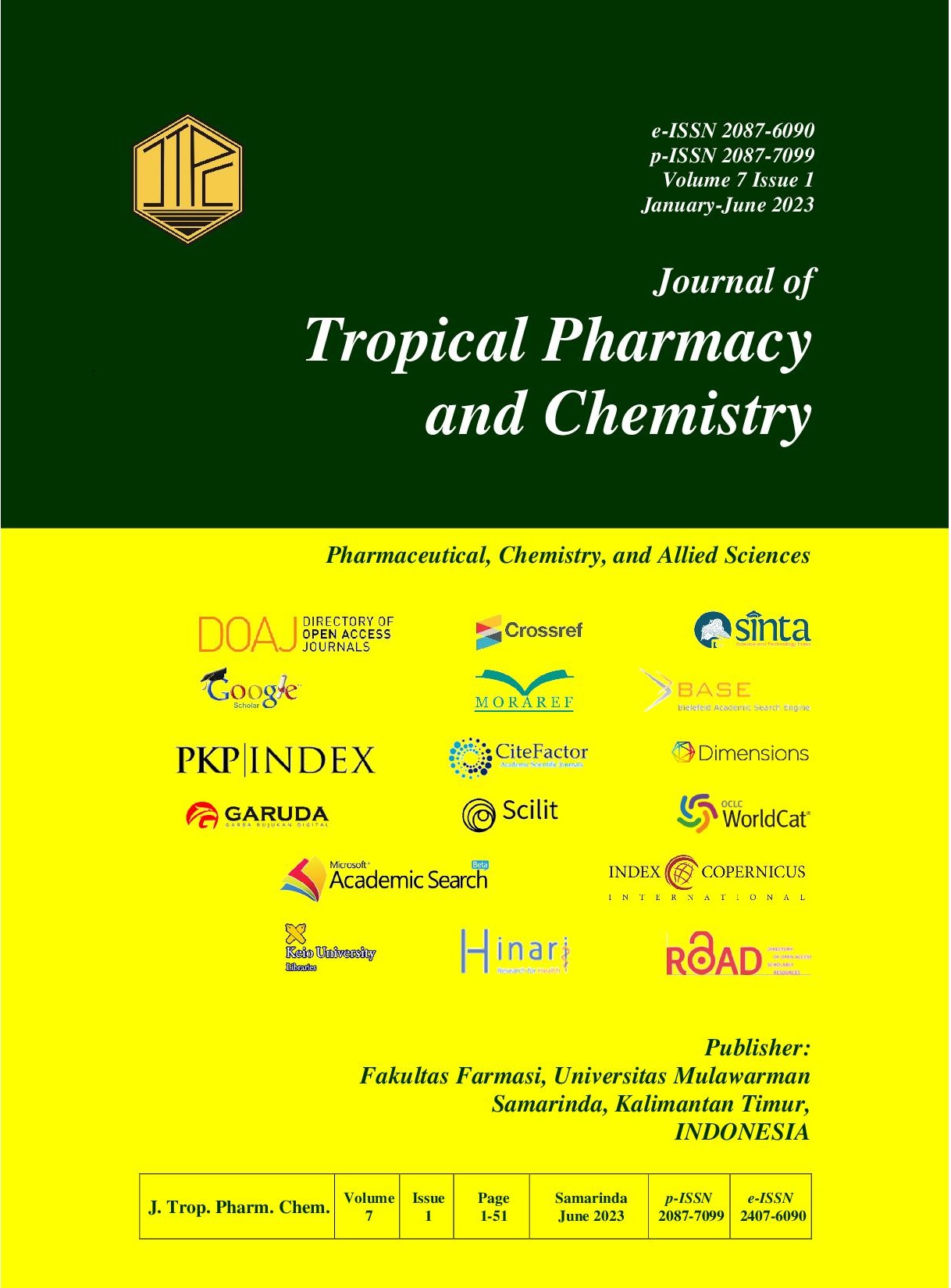
Randomised Controlled Trial
The combination of dark chocolate with herbs could be one of the therapies for period pain.
Azizah RNP, Anggreini P, Prasetya F
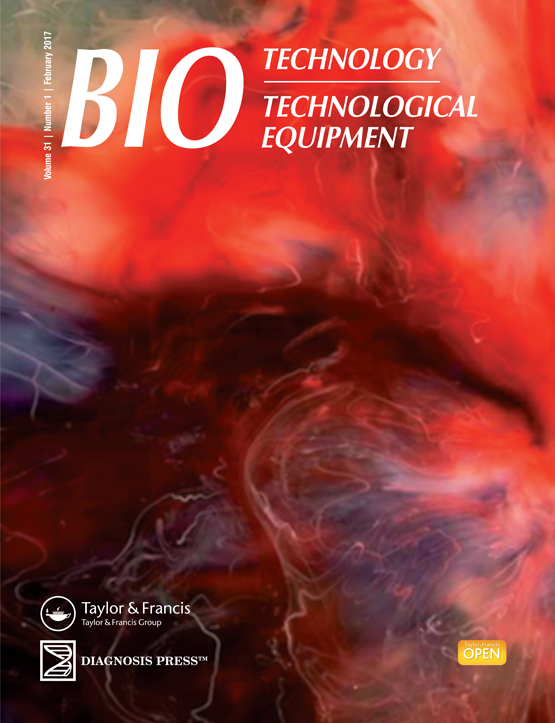
Animal Study
Specific fractions of Lycium barbarum, commonly known as Goji berry, reduce heart and kidney damage caused by anthracyclines while possibly enhancing their therapeutic effects.
Hvarchanova N, Stoeva S, Radeva-Ilieva M, Zhelev I, Georgieva M, Dzhenkov D, Georgiev KD

Cohort Study
Epigallocatechin gallate (EGCG), a green tea component, showed potential in treating uterine fibroids and associated infertility without causing liver toxicity or folate deficiency.
Siblini H, Al-Hendy A, Segars J, González F, Taylor HS, Singh B, Flaminia A, Flores VA, Christman GM, Huang H, Johnson JJ, Zhang H

Clinical Study
Chrysanthemum extract can be utilised as a natural ingredient to lessen post-meal cholesterol levels and enhance antioxidant status, after eating a high-fat meal.
Chen L, Sun J, Pan Z, Lu Y, Wang Z, Yang L, Sun G

Network Pharmacology
Chrysanthemum has several active ingredients that can potentially treat dry eye by inhibiting inflammation-related factors and pathways, thus reducing inflammation of lacrimal gland tissue.
Cao LY, Long Q, Jiang PF, Peng J, Peng QH
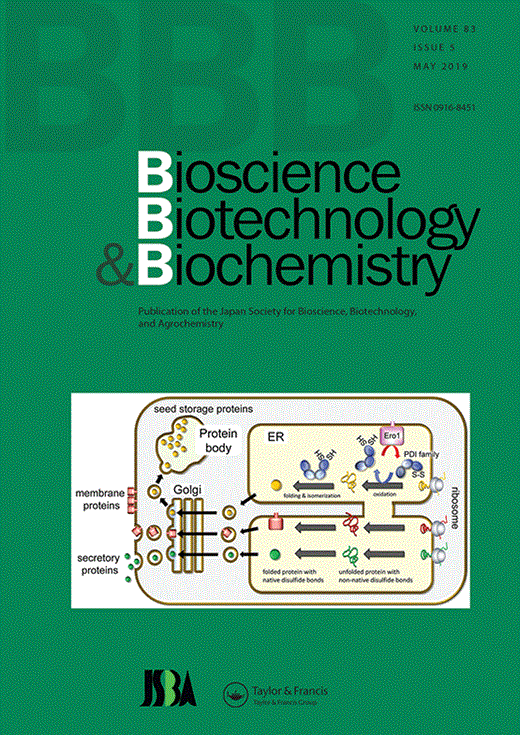
Network Pharmacology
The ethanol extract from adzuki beans significantly reduces lung metastasis and invasion of melanoma cells, showing potential for functional food development.
ITOH T, UMEKAWA H, FURUICHI Y
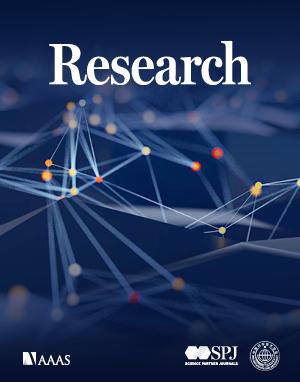
Experimental Study
A novel compound in walnuts, defined as 3-hydroxy-4-iminobutyric acid, can enhance sleep duration by disturbing motor activity and adjusting certain neurotransmitters in the brain of mice.
Ji J, Ye Y, Sheng L, Sun J, Hong Q, Liu C, Ding J, Geng S, Xu D, Zhang Y, Sun X
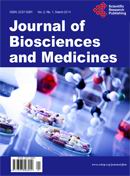
Review Article
Noni fruit juice enhances immune system function, primarily by boosting natural killer cell activity and increasing interferon-gamma production, which promotes phagocytosis.
West BJ, Uwaya A, Isami F, Tomida N, Swartz F, Deng S, Cox-Lovesy B

Review Article
Through innovative refinement, nanocurcumin, evolved from turmeric's primary component curcumin, has improved characteristics and pharmaceutical potential, particularly in drug delivery systems.
Jyotirmayee B, Nayak SS, Mohapatra N, Sahoo S, Mishra M, Mahalik G
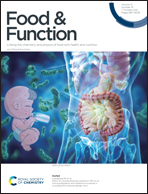
Experimental Study
Pu-erh tea can potentially prevent depression-like behaviors induced by nighttime blue light from electronic devices by reshaping gut microbiota and increasing short-chain fatty acids generation.
Zhao S, Hu S, Sun K, Luo L, Zeng L

Randomised Controlled Trial
Auricular acupuncture relieved pain and decreased disability more effectively than physiotherapy for frozen shoulder treatment.
Hollisaz MT, Khatibi Aghda A, Asheghan M, Amanollahi A, Hashemi SE
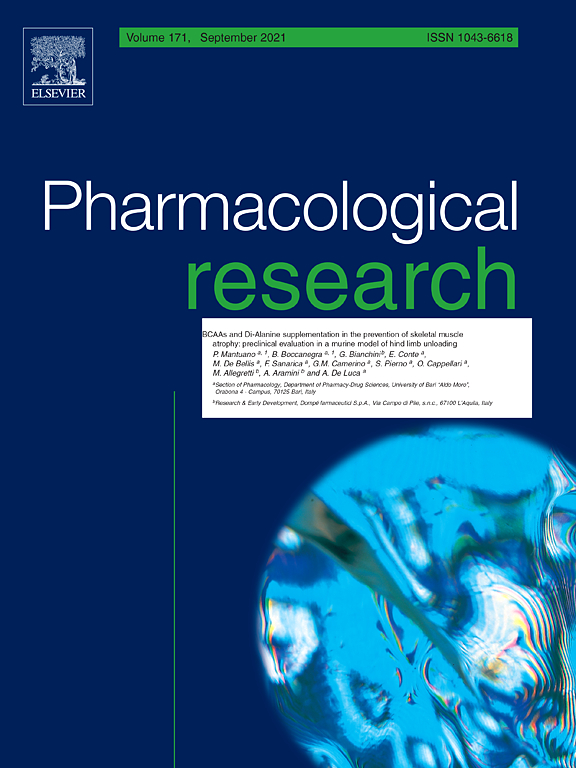
Review Article
Consumption of tea and coffee may possibly provide anti-inflammatory effects, contributing to reduced cardiovascular risk and mortality.
Surma S, Sahebkar A, Banach M

Experimental Study
Goji berry leaves have stronger anti-colitis effects than mulberry leaves, ameliorating tissue damage and better regulating inflammatory responses and gut microbiota.
Yu C, Chen Y, Ahmadi S, Wu D, Wu J, Ding T, Liu D, Ye X, Chen S, Pan H
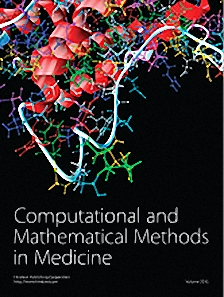
Network Pharmacology
Compound Chrysanthemum extract may alleviate visual fatigue through its interaction with several components, targets, and pathways.
Qiu J, Zheng B, Zhou H, Ye C, Shi M, Shi S, Wu S
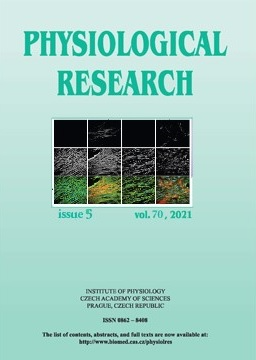
Experimental Study
Vincentka natural mineral water reduces gastric damage and improves antioxidant capacity in an animal model of acute gastric ulcers.
BUDINSKAYA K, NÁDENÍČEK J, STRAČINA T, HENDRYCH M, PÍREK O, BARTÁKOVÁ A, ŠUDÁKOVÁ M, SVÍZELA V, NOVÁKOVÁ Z, NOVÁKOVÁ M, BABULA P

Review Article
Chaihu Shugan powder, a traditional Chinese medicine, presents potential advantages in treating post-stroke depression, showing potential as an alternative to conventional antidepressants.
Gao Z, Wang Y, Yu H
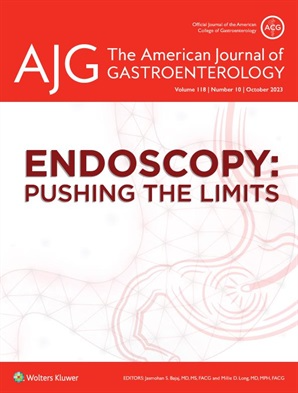
Randomised Controlled Trial
Consuming green kiwifruits is associated with a clinically relevant increase of ≥ 1.5 complete spontaneous bowel movements per week in those experiencing constipation.
Gearry R, Fukudo S, Barbara G, Kuhn-Sherlock B, Ansell J, Blatchford P, Eady S, Wallace A, Butts C, Cremon C, Barbaro MR, Pagano I, Okawa Y, Muratubaki T, Okamoto T, Fuda M, Endo Y, Kano M, Kanazawa M, Nakaya N, Nakaya K, Drummond L

Systematic Review
Antioxidant therapy significantly reduces disease-related symptoms for patients with knee osteoarthritis.
Nejadhosseinian M, Djalalinia S, Haerian H, Alikhani M, Mansour A, Mousavian AH, Mardani-Fard HA, Kasaeian A, Faezi ST
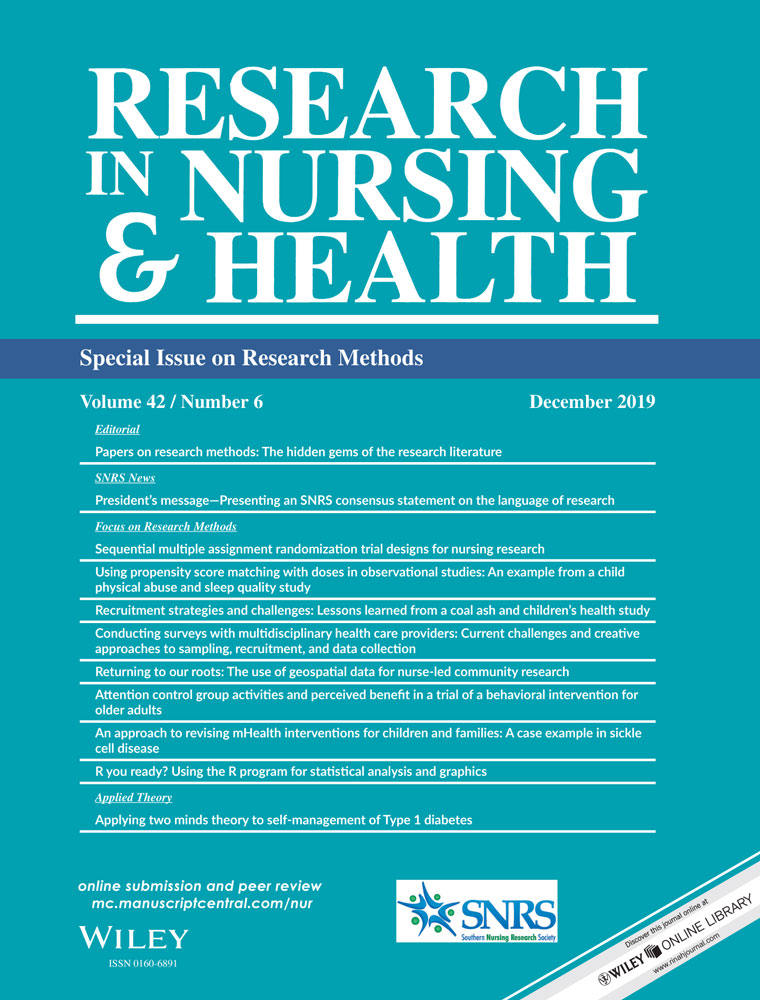
Systematic Review
Acupuncture, either in isolation or as an adjunct to pharmacological treatment, has clinical benefits and can be considered a safe option for managing depression.
Chen B, Wang CC, Lee KH, Xia JC, Luo Z
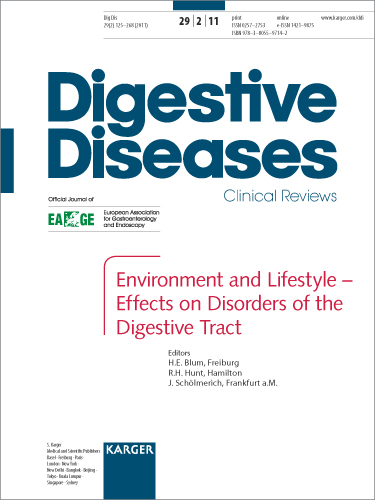
Systematic Review
Menthacarin, derived from peppermint and caraway oil, effectively reduces symptoms, offers a safe alternative to risky drugs like cisapride, and shows promise for managing stomach problems in primary care.
Madisch A, Frieling T, Zimmermann A, Hollenz M, Labenz J, Stracke B, Miehlke S

Systematic Review
Chinese Herbal Medicines may help with chronic sinusitis and acute rhinosinusitis symptoms with LDXGT and modified CEZS working well, especially for CRS.
Cui J, Lin W, May BH, Luo Q, Worsnop C, Zhang AL, Guo X, Lu C, Li Y, Xue CC
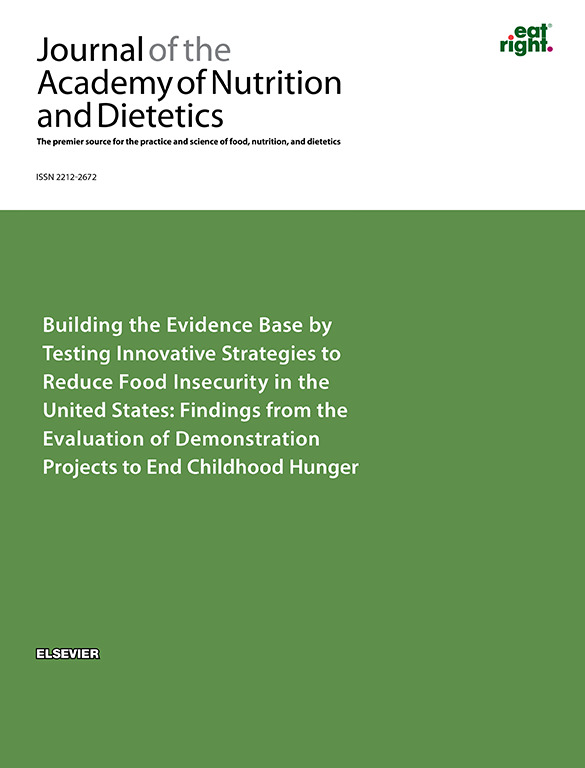
Systematic Review
Avocado consumption may lead to a reduction in total cholesterol and low-density lipoprotein cholesterol levels in people with high cholesterol without impacting body weight.
James-Martin G, Brooker PG, Hendrie GA, Stonehouse W

Review Article
Carrot's bioactive compounds can regulate immune response, reduce oxidative stress, and prevent damaging oxidative destruction, making it a potential preventive tool for various diseases.
Anjani G, Ayustaningwarno F, Eviana R

Systematic Review
Tart cherry juice shows promise in aiding blood sugar control and supporting heart health, highlighting its potential as a natural dietary addition.
Moosavian SP, Maharat M, Chambari M, Moradi F, Rahimlou M

Animal Study
Pu-erh tea and its ingredient theabrownin improve liver, jejunum, and adipose tissue functions in metabolic syndrome mice, modulating circadian rhythm, glycerophospholipid, and linoleic acid metabolism.
Hou Y, Zhang Z, Cui Y, Peng C, Fan Y, Tan C, Wang Q, Liu Z, Gong J
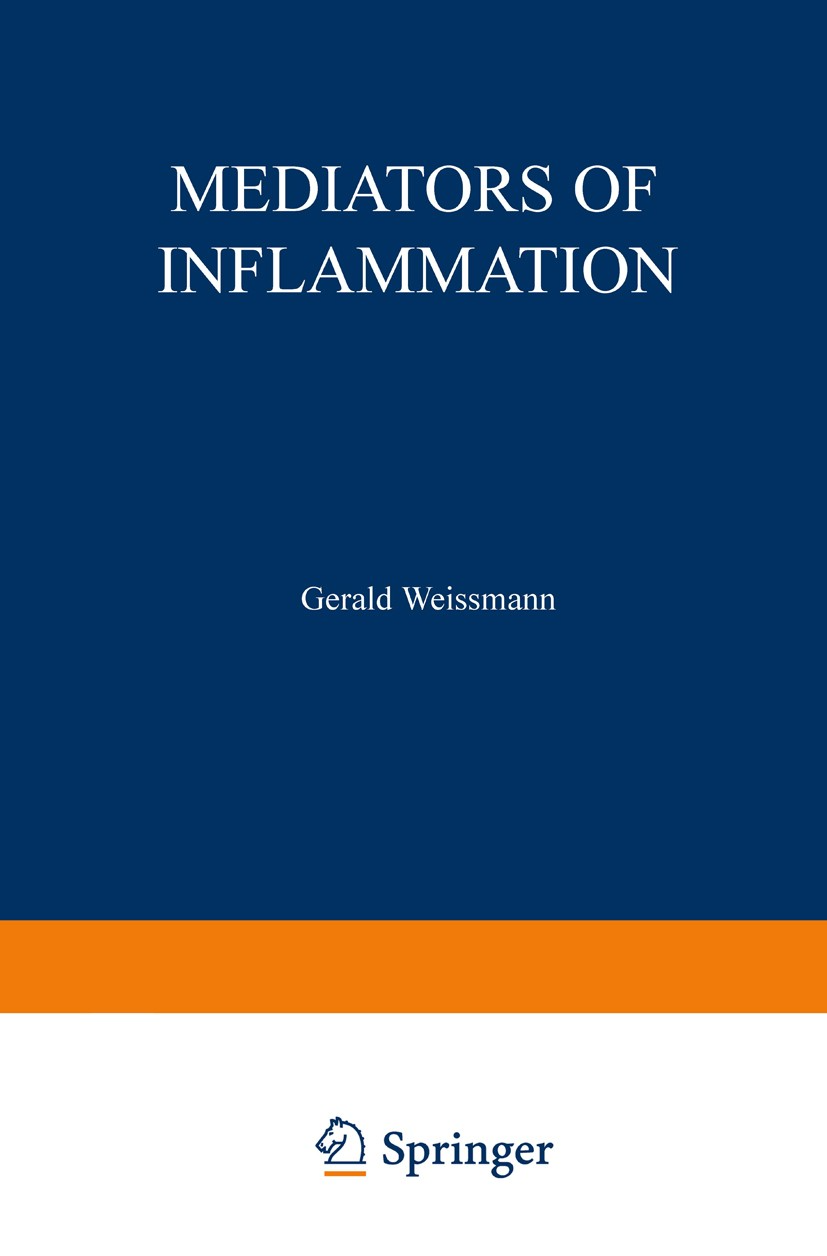
Randomised Controlled Trial
Drinking pomegranate juice and sumac can help reduce symptoms in outpatients diagnosed with COVID-19, alongside standard treatment.
Forouzanfar F, Ahmadpoor M, Farahi MM, Hadianfar A, Sahebkar A, Esmaily H, Nematy M, Rakhshandeh H
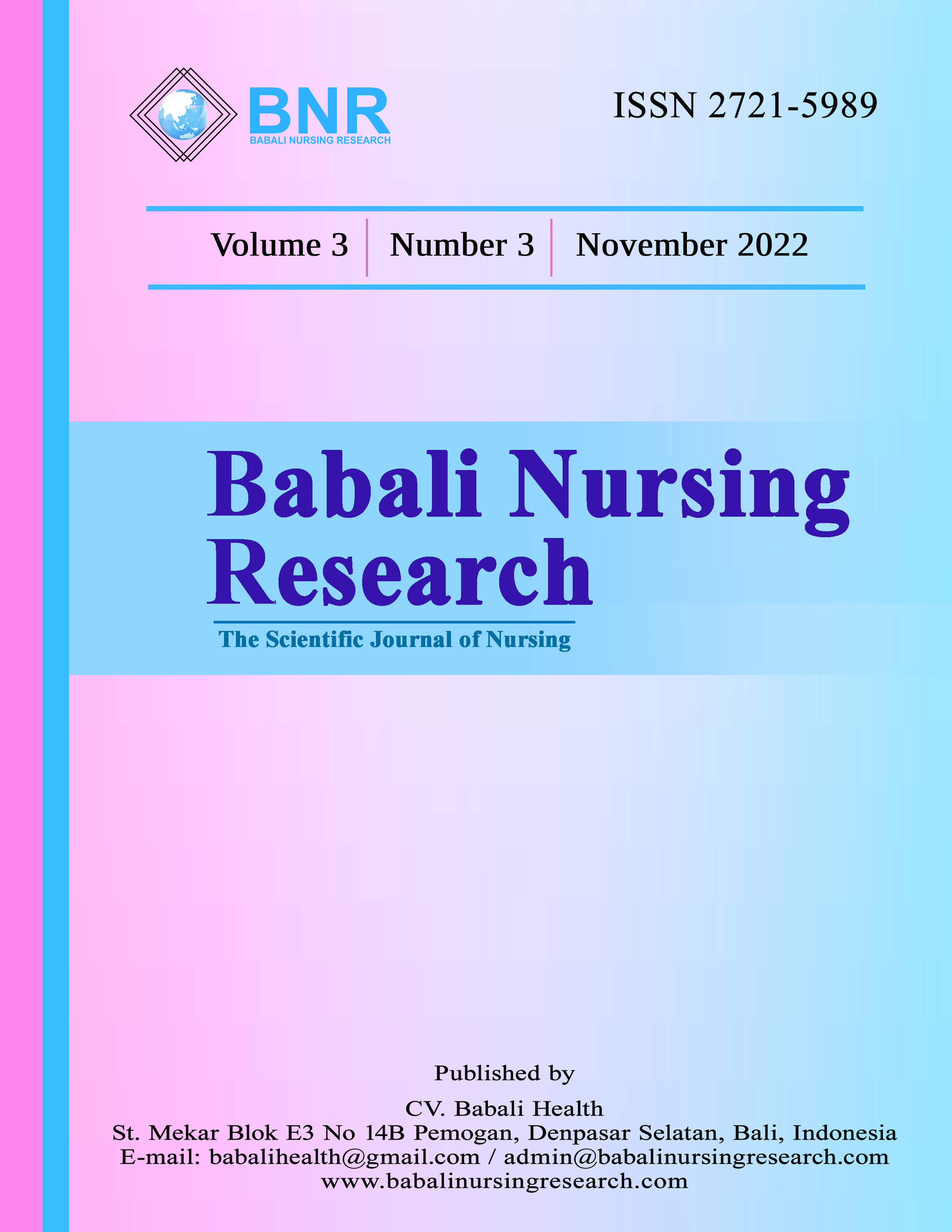
Randomised Controlled Trial
Oxytocin massage using lavender aromatherapy oil can significantly boost breast milk production in postpartum mothers.
Widiastuti NMR, Arini KN, Yuniati MG

Randomised Controlled Trial
In women with polycystic ovary syndrome, cinnamon reduced insulin resistance and testosterone levels similar to metformin, and ginger decreased follicle-stimulating and luteinizing hormones.
Dastgheib M, Barati-Boldaji R, Bahrampour N, Taheri R, Borghei M, Amooee S, Mohammadi-Sartang M, Wong A, Babajafari S, Mazloomi SM

Experimental Study
The type of dairy production system can influence the overall and specific levels of microRNAs, potentially affecting the functional potential of dairy products.
Abou el qassim L, Alonso J, Zhao K, Le Guillou S, Diez J, Vicente F, Fernández-Sanjurjo M, Iglesias-Gutiérrez E, Guan L, Royo LJ

Cohort Study
Frequent consumption of sugar-sweetened coffee can adversely affect blood sugar control in patients with diabetes mellitus in Korea.
Yoo H, Park K
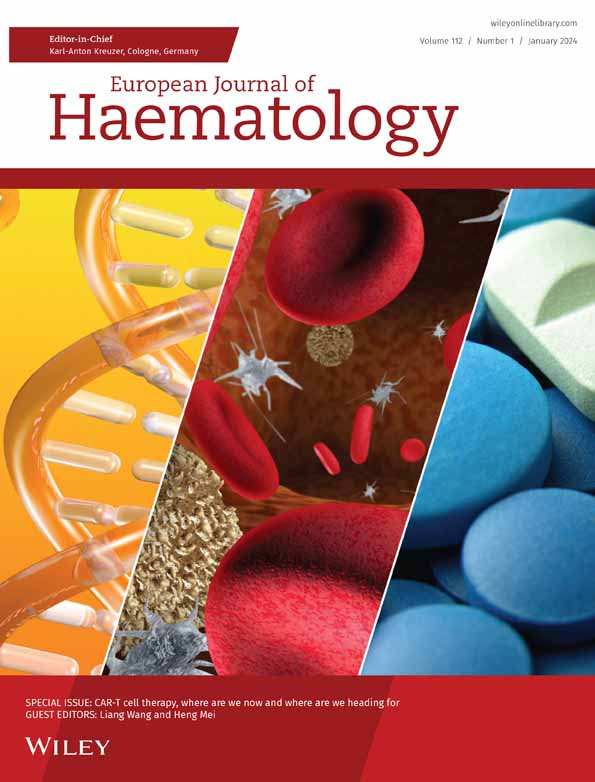
Theoretical Article
The hepcidin-ferroportin iron regulatory pathway prevents iron overload, creating an inherent limit on gastrointestinal iron absorption, and hence affects the efficacy of oral iron supplementation.
Lo JO, Benson AE, Martens KL, Hedges MA, McMurry HS, DeLoughery T, Aslan JE, Shatzel JJ
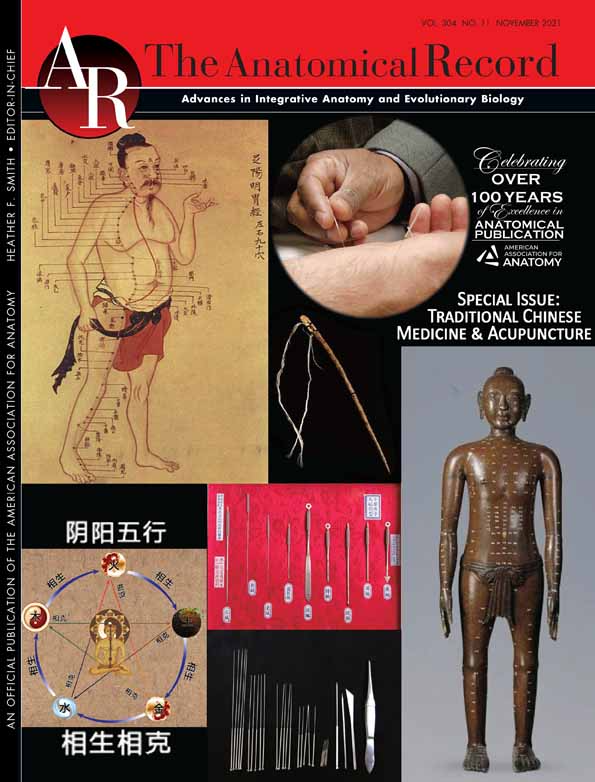
Experimental Study
Pomegranate has been found to alleviate morphological and functional changes in the thyroid glands induced by Lithium Carbonate by controlling apoptosis and oxidative stress.
El‐Din WAN, Fadel R, Rashid A, Al‐Mahameed AE, Othman MA

Clinical Study
Moderate beer intake does not show a protective effect against bone loss in early post-menopausal women.
Trius-Soler M, Tresserra-Rimbau A, Moreno JJ, Peris P, Estruch R, Lamuela-Raventós RM
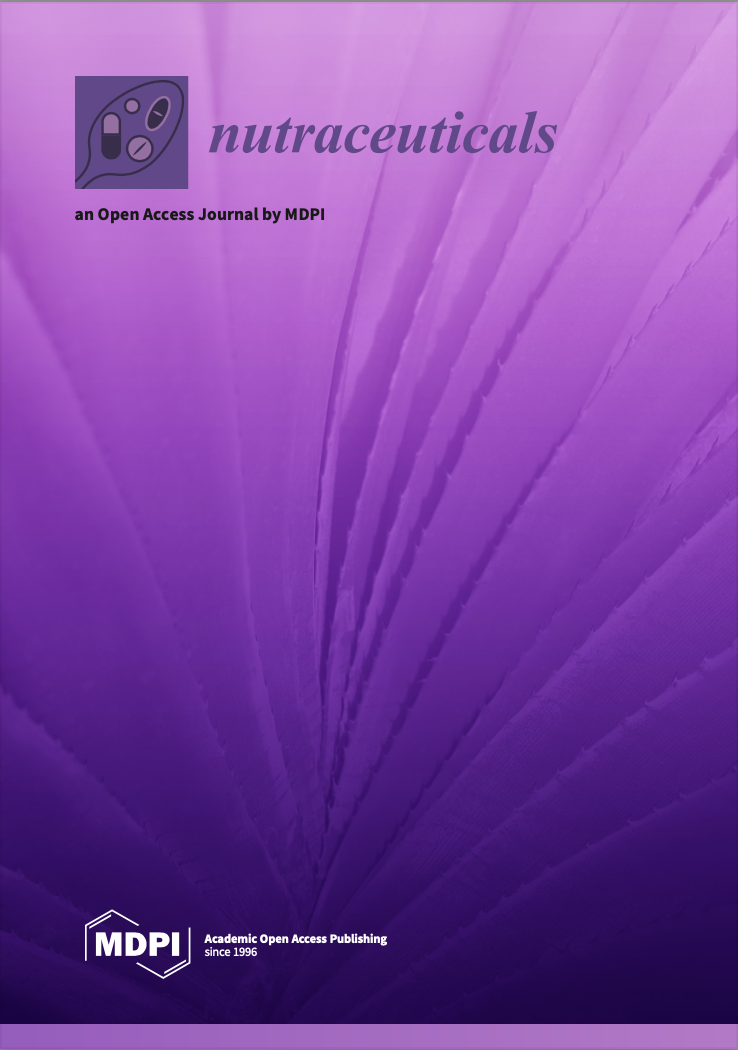
Animal Study
A. lappa (burdock root) benefits diabetic rodents by reducing blood glucose and improving lipids, but human effects are uncertain
Watanabe S, Yamabe S, Shimada M

Randomised Controlled Trial
Walnut consumption improves mental health indicators and negates some negative effects of academic stress on students' health and gut microbiota, especially in females.
Herselman MF, Bailey S, Deo P, Zhou XF, Gunn KM, Bobrovskaya L

Network Pharmacology
Two varieties of chrysanthemum have similar therapeutic effects but operate through distinct mechanisms, revealing potential for precise applications in both traditional and modern medicine.
Wang Y, Li Y, Guo W, Yang X, Qu J, Gao M, Chen S, Dong J, Li Q, Wang T

Experimental Study
The ethanol extract from green kiwifruit peel enhances sleep duration and onset, proving to be a potential natural aid for treating sleep disorders.
Kim D, Yoon M, Kim S, Um MY, Cho S

Review Article
Green tea's catechins demonstrate therapeutic effects against neurodegenerative diseases via anti-inflammatory, antioxidant actions, and activating diverse brain cellular pathways.
Afzal O, Dalhat MH, Altamimi ASA, Rasool R, Alzarea SI, Almalki WH, Murtaza BN, Iftikhar S, Nadeem S, Nadeem MS, Kazmi I

Review Article
Eating two gold kiwifruit daily can lead to significant improvements in mood and energy, thereby boosting psychological well-being in adults.
Billows M, Kakoschke N, Zajac IT
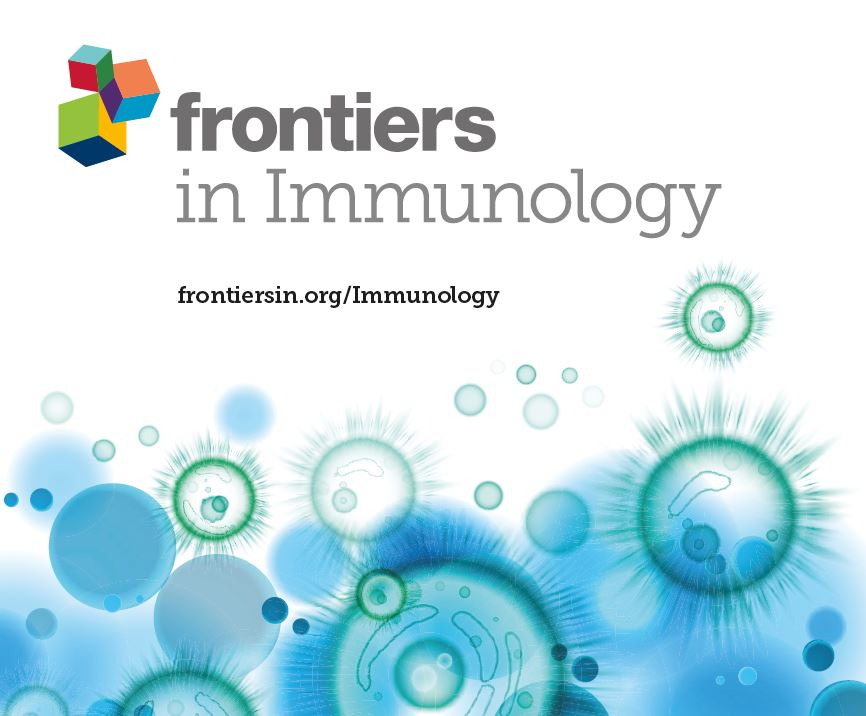
Network Pharmacology
Manuka honey exhibits a dual role in immune modulation, triggering a pro-inflammatory response by elevating cytokine expression and neutrophil recruitment via TLR signaling, while also influencing the phenotypic and functional maturation of macrophages.
Masad RJ, Nasser RA, Bashir G, Mohamed YA, Al-Sbiei A, Al-Saafeen BH, Fernandez-Cabezudo MJ, Al-Ramadi BK

Randomised Controlled Trial
Fasting followed by a plant-based diet and a standard diet both positively affected rheumatoid arthritis disease activity and cardiovascular risk factors, without discernible differences.
Hartmann AM, Dell'Oro M, Spoo M, Fischer JM, Steckhan N, Jeitler M, Häupl T, Kandil FI, Michalsen A, Koppold-Liebscher DA, Kessler CS
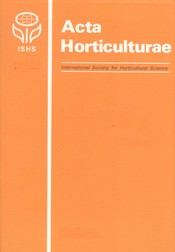
Review Article
Chinese jujube contains cAMP, a compound usually absent in plant cells, which may accelerate our understanding of plant cAMP metabolism.
Yuan Y, Liu ZG, Feng C, Liu MJ

Systematic Review
Acupuncture, when combined with lifestyle changes, can effectively lower blood pressure in grade 1 hypertension patients with fewer side effects
Zhang M, Zhu Y, Wang J, Li Y, Hua Z

Systematic Review
Acupuncture shows positive effects on cancer-related issues; research calls for further exploration of acupuncture's efficacy and safety, especially for conditions like depression, offering further potential support for cancer survivors
Zhang X, Hou W, Pu F, Wang X, Wang Y, Yang M, Cheng K, Wang Y, Robinson N, Liu J
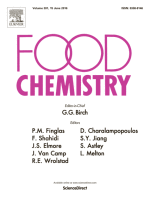
Experimental Study
Pu-erh tea, through the increase of Cinnabarinic acid, can improve obesity induced by circadian rhythm disorders by enhancing fat metabolism and altering gut microbes.
Hu S, Hu C, Luo L, Zhang H, Zhao S, Liu Z, Zeng L

Meta-Analysis
Acupuncture using Lingguibafa acupoint selection shows notable improvements in various sleep parameters for individuals suffering from insomnia.
Ji H, Zhang K, Lu Y, Kong X, Ma X

Systematic Review
Acupuncture covering the depth ranges for BL18, BL20, and BL22 and their targeting of various tissues potentially alleviates sympathetic nerve issues and ischemia with assistance of the diaphragm.
Cho Y, Han Y, Kim Y, Han S, Oh K, Chae H, Hongmin C, Ryu M

Network Pharmacology
The primary ingredient of Shenling Baizhu powder, Rutin, can improve polycystic ovary syndrome and postmenopausal osteoporosis by binding to the aromatic hydrocarbon receptor, thus inhibiting cell apoptosis.
Liang J, Bao A, Ma H, Dong W, Li W, Wu X, Li H, Hou H, Chen Y, Fu J, Shao C

Review Article
Inflammation modulation—targeting innate immune signals and exploring epigenetic regulation, the gut microbiome, and herbal agents—emerges as a promising treatment strategy for retinitis pigmentosa.
Zhao L, Hou C, Yan N
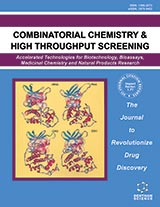
Network Pharmacology
The Chinese medicine formulas Zuo Gui Wan and You Gui Wan have the potential to treat premature ovarian failure through different pharmacological pathways.
Shanshan Mei, Chaoqin Yu, Jie Ding, Wen Cheng

Meta-Analysis
Consumption of broccoli sprouts significantly lowers blood pressure, potentially due to properties of sulforaphane.
Houshialsadat Z, Mirmiran P, Zare-Javid A, Bahadoran Z, Houghton C

Review Article
Walnuts, rich in anti-inflammatory ingredients, potentially regulate neuroinflammation, improve cognitive function, reduce oxidative stress, and maintain gut health, thereby suggesting their use against neurodegenerative diseases.
Tan B, Wang Y, Zhang X, Sun X
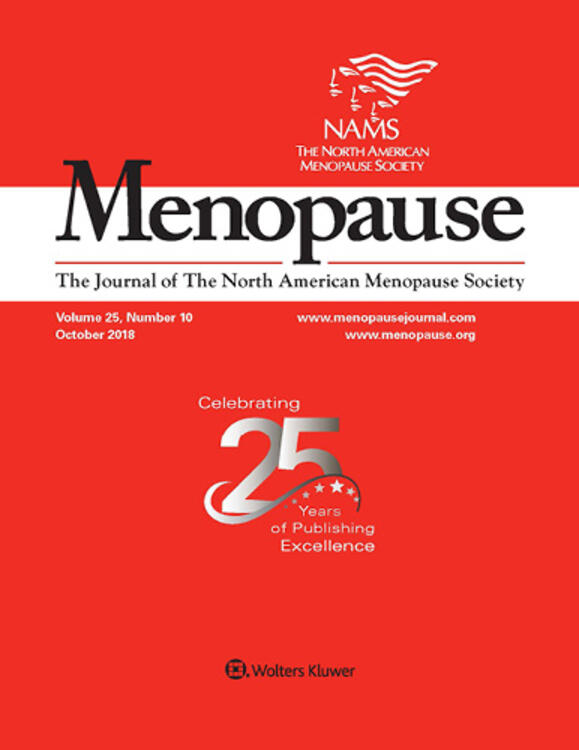
Randomised Controlled Trial
A diet low in fat, vegan, and inclusive of daily cooked soybeans significantly reduces the frequency and severity of hot flashes in postmenopausal women.
Barnard ND, Kahleova H, Holtz DN, Znayenko-Miller T, Sutton M, Holubkov R, Zhao X, Galandi S, Setchell KDR
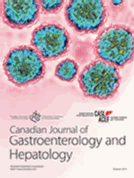
Systematic Review
Kiwifruit and kiwifruit extracts may have a positive impact on constipation in adults by increasing weekly bowel movements, reducing abdominal pain, and minimizing straining.
Eltorki M, Leong R, Ratcliffe EM

Systematic Review
Meta-analysis indicates that fruit consumption, particularly kiwifruits, effectively alleviates constipation symptoms, offering valuable insights into improving gut health.
Huo J, Wu L, Lv J, Cao H, Gao Q

Systematic Review
Traditional Chinese Medicine (TCM) demonstrates weight loss efficacy and metabolic benefits in overweight and obese individuals
Wen ZG, Zhang QQ, Zhang LL, Shen MF, Huang YS and Zhao LH
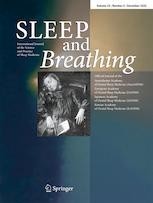
Systematic Review
Traditional Chinese Medicine (TCM) practitioners attributed OSAHS to turbid phlegm and blood stasis, offering various TCM treatments for different OSAHS categories.
Lv R, Zhao Y, Wang Z, Liu X, Wang Z, Li S, Yu Q, Yue H, Yin Q
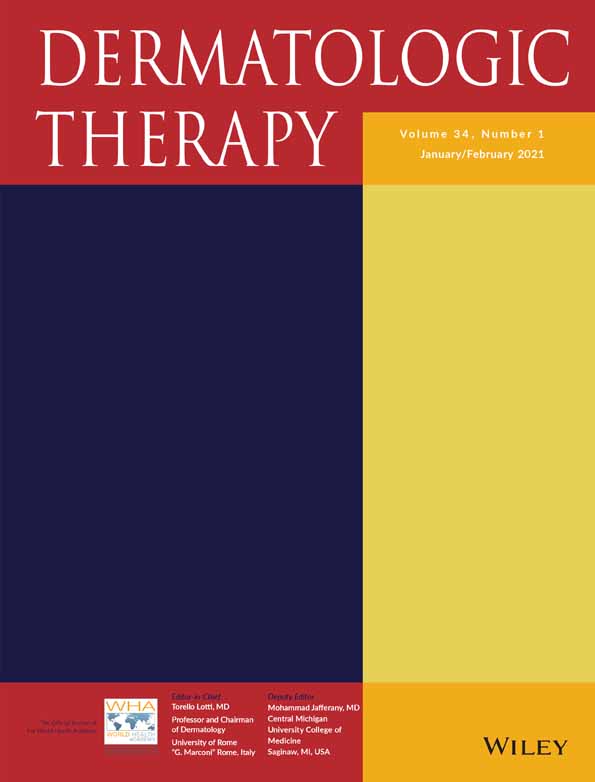
Systematic Review
Long Dan Xie Gan formula used as an adjuvant therapy may hasten skin healing, relieve pain symptoms, and prevent persistent pain in acute herpes zoster patients.
Zhang L, Duan A, Li Y, Feng J

Systematic Review
Meta-analysis has strong implications of the effectiveness of tongue acupuncture, especially when combined with conventional therapies, in treating poststroke aphasia. This holistic approach demonstrates significant improvements in patient outcomes.
Yang S, Li L, Jiang R, Ding H, Xu F, Ge L, Kuang P, Wang Z

Randomised Controlled Trial
A daily intake of 50 grams of prunes can maintain hip bone density in postmenopausal women, potentially reducing hip fracture risks.
De Souza MJ, Strock NCA, Williams NI, Lee H, Koltun KJ, Rogers C, Ferruzzi MG, Nakatsu CH, Weaver C

Randomised Controlled Trial
The combined use of chamomile and saffron with usual medication enhances the efficacy against depression and ensures long term improvement.
Ahmad S, Azhar A, Tikmani P, Rafique H, Khan A, Mesiya H, Saeed H

Randomised Controlled Trial
Date palm pollen supplementation has shown significant positive impact on desire and lubrication in non-menopausal women's sexual function.
Salmani R, Nasiri K, Javadzadeh Y, Salmani R, Clark CCT, Aghamohammadi V
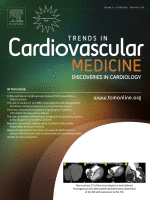
Review Article
Consuming 2-3 cups of coffee daily can help prevent cardiovascular disease and drinking at least 3 cups of green tea has similar benefits.
Chieng D, Kistler PM

Systematic Review
Complementary therapies are generally effective and safe in treating insomnia with acupuncture being the most frequently effective form, often yielding results superior to western medicine, sham/placebo, and no treatment.
Yeo JJ, Lee JW, Kim KS, Hyun MK
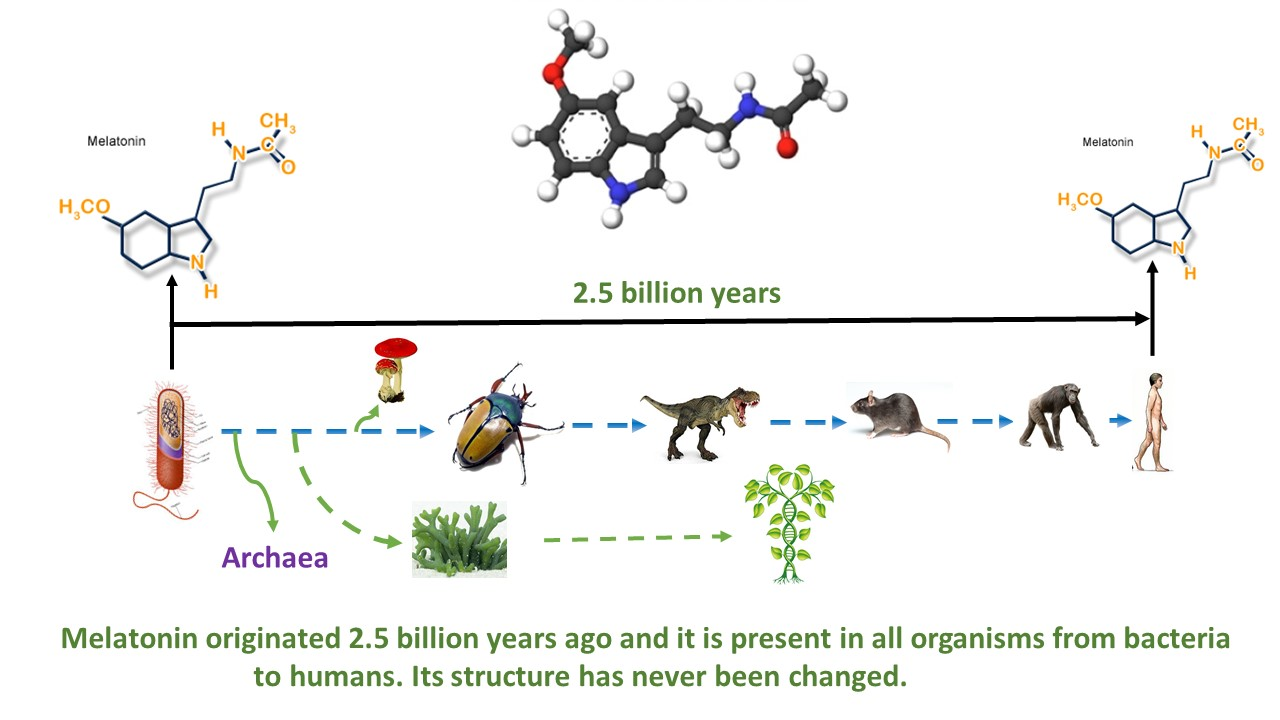
Review Article
Recent revelations of L-DOPA, dopamine, 5-hydroxytryptophan, tryptamine, serotonin, N-acetylserotonin, melatonin, 2-hydroxymelatonin, AFMK, AMK, and vitamin D3 derivatives in honey expand its health benefits.
Kim TK, Fabisiak A, Brzeminski P, Reiter RJ, Slominski AT

Systematic Review
Taijiquan significantly improves sleep quality in individuals suffering from insomnia, suggesting that Taijiquan offers a safe and effective intervention for addressing sleep-related issues.
Han D, Cheng J, Qu J, Wen X, Liu X, Chen Y, Wen Y, Liu Z, Liu H, Huang Y

Systematic Review
Chinese herbal medicine (CHM) improved AD symptoms but had no significant impact on patients' quality of life or IgE levels suggesting CHM's potential as an AD treatment with further research.
Cai X, Sun X, Liu L, Zhou Y, Hong S, Wang J, Chen J, Zhang M, Wang C, Lin N, Li S, Xu R, Li X

Experimental Study
Carotenoid-rich foods like orange carrots were more effective in mitigating Non-alcoholic fatty liver disease than those with low carotenoid levels.
Balbuena E, Cheng J, Eroglu A

Systematic Review
Higher consumption of dairy foods relates to a decreased risk of endometriosis, while increased intake of red meat and certain fats elevates the risk.
Arab A, Karimi E, Vingrys K, Kelishadi MR, Mehrabani S, Askari G
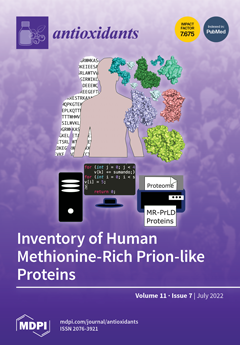
Network Pharmacology
Kelulut honey, either alone or in combination with metformin or clomiphene, can alleviate oxidative stress and reproductive and metabolic abnormalities in rats with polycystic ovary syndrome.
Kamal DAM, Ibrahim SF, Ugusman A, Mokhtar MH

Systematic Review
HuoXiang ZhengQi (HQXXD) may be a safe and effective treatment for Chronic Cough Variant Asthma (CVA), improving clinical efficacy and airway responsiveness while reducing recurrence rates.
Wang C, Xia Q, Hu B, Jiang W, Zhang H
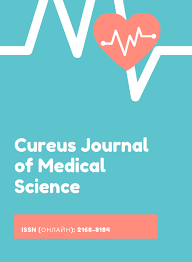
Systematic Review
Honey is effective in treating coughs in children above 12 months.
Mashat GD, Hazique M, Khan KI, Ramesh P, Kanagalingam S, Ul Haq Z, Victory Srinivasan N, Khan AI, Khan S

Review Article
Adzuki beans' high lysine content, antioxidative, antibacterial, and anti-inflammatory properties highlight their dual-use as a nutritious food source and a therapeutic agent for various diseases.
Wang Y, Yao X, Shen H, Zhao R, Li Z, Shen X, Wang F, Chen K, Zhou Y, Li B, Zheng X, Lu S

Cohort Study
Acupuncture intervention within 7 days of onset of Bell's palsy could shorten the time to recovery and improve the outcome at 12 and 24 weeks.
Yang LS, Zhou DF, Zheng SZ, Zhao BM, Li HG, Chen QQ, Zhong Y, Yang HZ, Zhang K, Tang CZ

Review Article
Compounds found in green tea, especially EGCG, show significant anti-cancer activity and hold promise as potential anticancer drugs or adjuvants to standard chemotherapy.
Farhan M

Systematic Review
Acupuncture coupled with traditional Chinese medicine may be more effective and safer than conventional Western medicine in treating chronic urticaria.
Lu Z, Zhou Q, Chai S, Yang H, Wang J, Luo H, Cao Y, Tao M

Systematic Review
The study found that acupuncture as an adjuvant therapy for frozen-thawed embryo transfer (FET) in infertile women had positive effects on pregnancy outcomes.
Zhu C, Xia W, Huang J, Zhang X, Li F, Yu X, Ma J, Zeng Q
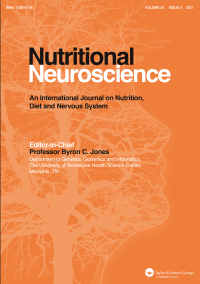
Randomised Controlled Trial
Consumption of wild blueberries over six months can improve cognitive performance and speed of processing information amongst older adults.
Cheatham CL, Canipe LG, Millsap G, Stegall JM, Chai SC, Sheppard KW, Lila MA
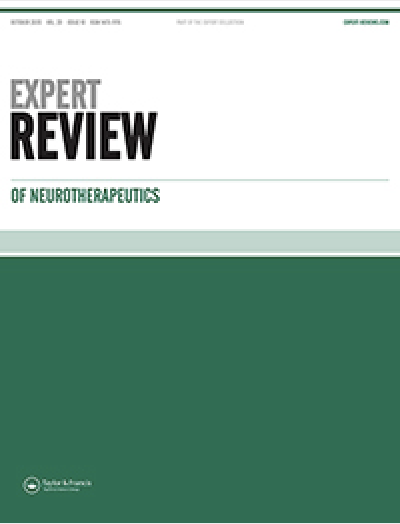
Review Article
A 6-week course of acupuncture proves as effective as 6-month drug prophylaxis for migraines, with specific Chinese point selection and stimulation appearing less important.
Endres HG, Diener HC, Molsberger A
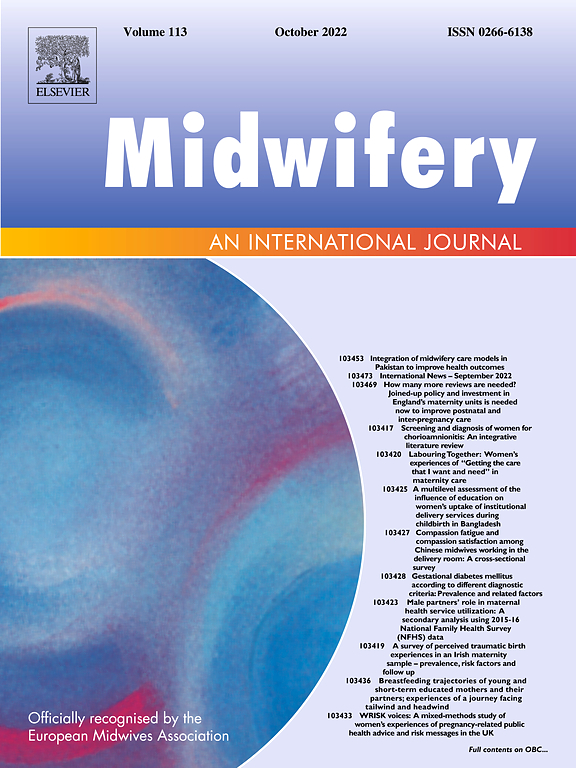
Systematic Review
It is vital that women are provided with evidence-based postnatal care strategies to enhance perineal healing and resumption of normal activities.
White C, Atchan M
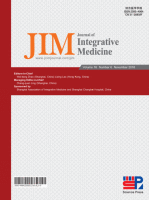
Systematic Review
Traditional Chinese medicine (TCM) used alongside Western medicine for COVID-19 treatment shows potential benefits in terms of lung recovery, symptom improvement, and reducing the risk of severe cases.
Wu H, Ji C, Dai R, Hei P, Liang J, Wu X, Li Q, Yang J, Mao W, Guo Q

Systematic Review
Meta-analysis revealed that lavender, particularly L. angustifolia, significantly reduces stress, making it a potentially valuable component in stress management programs.
Ghavami T, Kazeminia M, Rajati F

Clinical Study
Acupuncture has shown potential in enhancing structural nerve regeneration in Chemotherapy-induced peripheral neuropathy, leading to subjective improvements and positive neurological findings.
Friedemann T, Kark E, Cao N, Klaßen M, Meyer-Hamme G, Greten JH, Rostock M, Buhlmann E, Zhao A, Schröder S

Meta-Analysis
Patients with ulcerative colitis (UC) experienced greater clinical improvement and fewer adverse effects when treated with a combination of Traditional Chinese and Western medicine compared to Western medicine alone.
Chen S, Ji G, Liu X, Yang M, Zhang Y, Cao J, Pan Y

Review Article
Polysaccharides from natural food sources like fungi and plants can significantly enhance intestinal health and prevent ulcerative colitis (UC) through various physiological activities.
Pan X, Yin M, Guo M, Niu X, Han L

Review Article
Pomegranate extract and its phytochemicals can potentially inhibit severe acute respiratory syndrome coronavirus 2 (SARS-COV-2) and improve gut microbiota, preventing obesity and diabetes.
Maphetu N, Unuofin JO, Masuku NP, Olisah C, Lebelo SL

Experimental Study
Pomegranate juice extract may reduce the damage to the endometrium in Polycystic ovary syndrome through its antioxidant, anti-inflammatory, anti-fibrotic, and anti-proliferative effects.
Ibrahim MAA, Sadek MT, Sharaf Eldin HEM
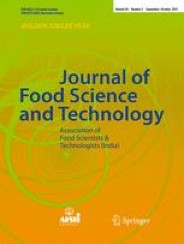
Experimental Study
Using grape seed oil in the sardine canning process enhances the lipid nutritional quality and increases the fat, protein, and ash contents.
Bouriga N, Rjiba Bahri W, Mili S, Massoudi S, Quignard JP, Trabelsi M

Systematic Review
PCOS patients suggests that combining acupuncture with metformin might enhance pregnancy and ovulation rates, as well as improve insulin resistance.
Chen X, Lan Y, Yang L, Liu Y, Li H, Zhu X, Zhao Y, Long C, Wang M, Xie Q, Li Z, Wu J
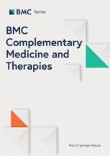
Experimental Study
Chrysanthemum extract has protective effects on light-damaged retinas, reducing oxidative stress and improving cellular viability.
Gong Y, Wang X, Wang Y, Hao P, Wang H, Guo Y, Zhang W

Network Pharmacology
Gui Zhi Fu Ling Wan can lessen the expression of certain proteins, which may be key to its ability to impede abnormal tissue invasion and metastasis in adenomyosis.
Shi Y, Zhang C, Wang X, Wang Z, Zhang Y, Liu Z, Wang X, Shi W

Experimental Study
Oral administration of Tremella fuciformis polysaccharides may constitute a new, effective therapy for Atopic dermatitis, improving both immune response and intestinal microbiota.
Xie L, Yang K, Liang Y, Zhu Z, Yuan Z, Du Z
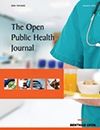
Randomised Controlled Trial
Chamomile sachets could be a viable alternate treatment for primary dysmenorrhea, as they've shown similar effects to mefenamic acid in reducing pain and bleeding.
Shabani F, Narenji F, Vakilian K, Zareian MA, Bozorgi M, Bioos S, Nejatbakhsh F
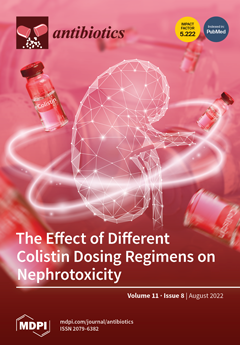
Network Pharmacology
Fresh raw wildflower honey, particularly at concentrations of 10–30%, exhibit comparable efficacy to manuka honey in inhibiting antibiotic-resistant "superbugs" implicated in wound infections, offering a potentially cost-effective alternative for wound care in the United States.
Hewett SR, Crabtrey SD, Dodson EE, Rieth CA, Tarkka RM, Naylor K

Systematic Review
Aromatherapy, specifically lavender, appears to be an effective, affordable, and holistic approach to reducing the length of labour in expectant women.
Ghiasi A, Bagheri L, Sharaflari F

Systematic Review
Acupuncture added to conventional rehabilitation has been found more effective in reducing post-stroke spasticity than conventional rehabilitation alone.
Xue C, Jiang C, Zhu Y, Liu X, Zhong D, Li Y, Zhang H, Tang W, She J, Xie C, Li J, Feng Y, Jin R

Randomised Controlled Trial
Dietary modifications, combining increased intake of anti-inflammatory foods and decreased intake of pro-inflammatory foods, effectively impede subclinical inflammation in ulcerative colitis patients in clinical remission.
Keshteli A, Valcheva R, Nickurak C, Park H, Mandal R, van Diepen K, Kroeker K, van Zanten S, Halloran B, Wishart D, Madsen K, Dieleman L

Review Article
Depression, a prevalent and debilitating disorder, necessitates novel treatments beyond conventional drugs. Stingless bee honey, rich in antioxidants, emerges as a potential antidepressant candidate, explored comprehensively through monoamine, inflammatory, and neurotrophin hypotheses.
Zakaria FH, Samhani I, Mustafa MZ, Shafin N

Systematic Review
Peppermint oil proved more effective than placebo in treating irritable bowel syndrome symptoms, but with an increased rate of adverse events.
Ingrosso MR, Ianiro G, Nee J, Lembo AJ, Moayyedi P, Black CJ, Ford AC

Systematic Review
Traditional Chinese medicine therapies, like acupuncture and moxibustion, effectively alleviate irritable bowel syndrome with diarrhea symptoms, and reduce recurrence rates.
Wei X, Wen Y, Wei Y, Liang X, Ma X, Zhang B, Tang X

Review Article
Honey, owing to its bioactive compounds, demonstrates potential in treating COVID-19 symptoms by reducing oxidative damage and enhancing the immune system.
Soares S, Bornet M, Grosso C, Ramalhosa MJ, Gouvinhas I, Garcia J, Rodrigues F, Delerue-Matos C
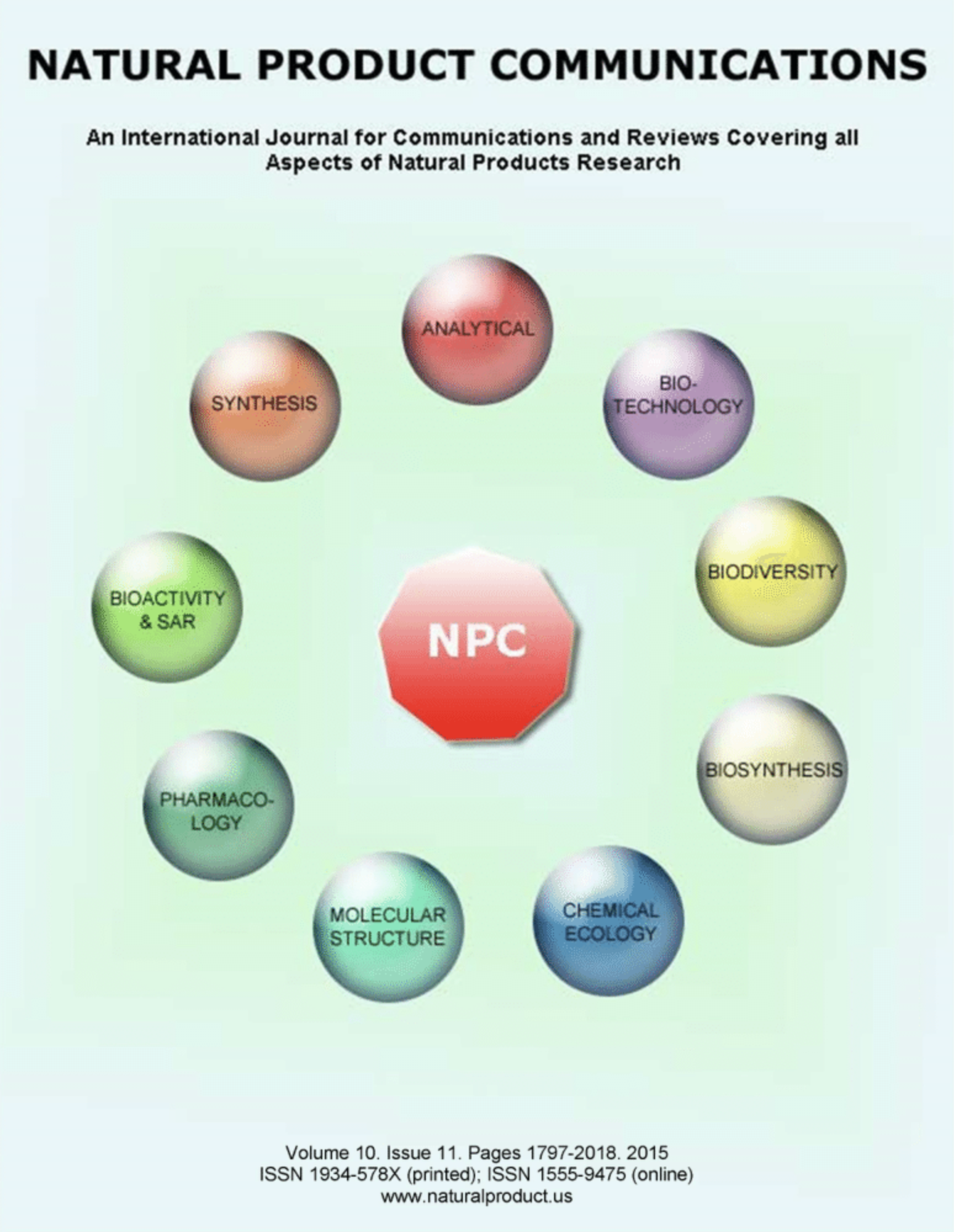
Network Pharmacology
Combining traditional Chinese medicine may offer potential therapeutic value in treating both Alzheimer's disease and major depressive disorder simultaneously.
Huang Z, Fang Y, Wang X, Wang Q, Wang T

Review Article
Xiao Yao San has potential as an effective and safe alternative treatment for depression, offering multiple mechanisms of action for its antidepressant effects.
Chen J, Lei C, Li X, Wu Q, Liu C, Ma Q, Chen J.

Randomised Controlled Trial
Auricular acupuncture was found to improve physical and emotional aspects in patients with temporomandibular disorders, with similar results to occlusal splint treatment.
Aroca JP, Cardoso PMF, Favarão J, Zanini MM, Camilotti V, Busato MCA, Mendonça MJ, Alanis LRA
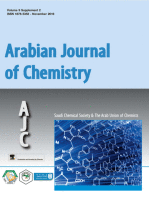
Randomised Controlled Trial
Pumpkin seed supplementation can significantly reduce fasting blood glucose levels in Indian women suffering from metabolic syndrome.
Jane Monica S, John S, Madhanagopal R, Sivaraj C, Khusro A, Arumugam P, Gajdács M, Esther Lydia D, Umar Khayam Sahibzada M, Alghamdi S, Almehmadi M, Emran TB

Randomised Controlled Trial
Inhalation and massage therapy with lavender essential oil significantly mitigates perceived labour pain in women.
Karatopuk S, Yarıcı F
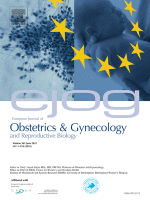
Systematic Review
Increased intake of omega-3 can enhance the quality of oocyte and embryo, thereby potentially improving the success rate of assisted reproductive techniques.
Abodi M, De Cosmi V, Parazzini F, Agostoni C

Review Article
Nutraceuticals like zinc, vitamin D, l-arginine, mucuna, ashwagandha, tribulus, and ω3 fatty acids, along with lifestyle changes, can mildly improve male testosterone levels and sperm parameters.
Santos HO, Cadegiani FA, Forbes SC

Bananas and plantains contain compounds with anti-inflammatory, anti-apoptotic, and antioxidative properties that hold promise for potentially reversing neurological disorders.
Oyeyinka BO, Afolayan AJ

Review Article
Pumpkin seed oil, with its phytochemical content, shows beneficial properties against cardiovascular problems in menopausal women and hormone imbalances.
Šamec D, Loizzo MR, Gortzi O, Çankaya T, Tundis R, Suntar , Shirooie S, Zengin G, Devkota HP, Reboredo‐Rodríguez P, Hassan STS, Manayi A, Kashani HRK, Nabavi SM
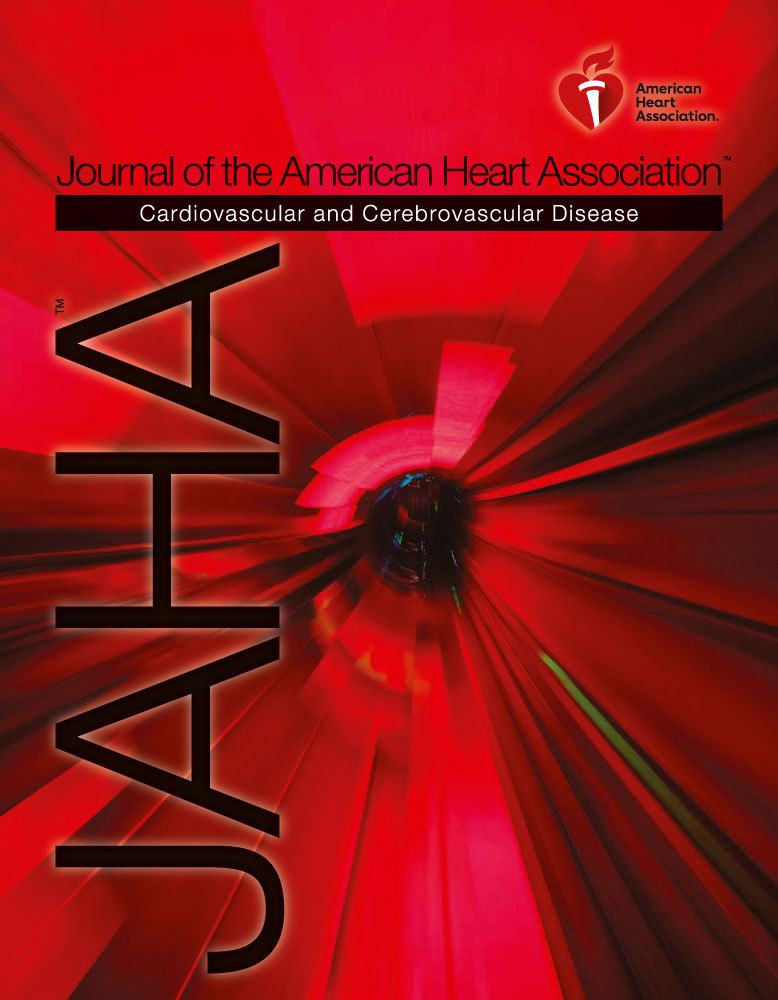
Randomised Controlled Trial
Despite previous suggestions, daily avocado consumption for six months did not decrease visceral adipose tissue volume in individuals with elevated waist circumference.
Lichtenstein AH, Kris‐Etherton PM, Petersen KS, Matthan NR, Barnes S, Vitolins MZ, Li Z, Sabaté J, Rajaram S, Chowdhury S, Davis KM, Galluccio J, Gilhooly CH, Legro RS, Li J, Lovato L, Perdue LH, Petty G, Rasmussen AM, Segovia‐Siapco G, Sirirat R, Su

Review Article
Various traditional Chinese medicine treatment strategies could potentially provide an effective alternative in slowing the progression of Chronic Kidney Disease.
Yunlai Wang, Ye Feng, Manman Li, Mo Yang, Gaoxiang Shi, Zihua Xuan, Dengke Yin, Fan Xu

Systematic Review
Chinese herbal medicine shows promising and safe outcomes in relieving functional dyspepsia symptoms and associated psychological disorders.
Luo X, Wang L, Fang S, Qing X, Jiang T, Yang Y, Su X, Wei W

Acupuncture combined with nerve repair significantly enhances the recovery rate in patients with peripheral facial paralysis by aiding nerve regeneration.
Zhenggen Shan
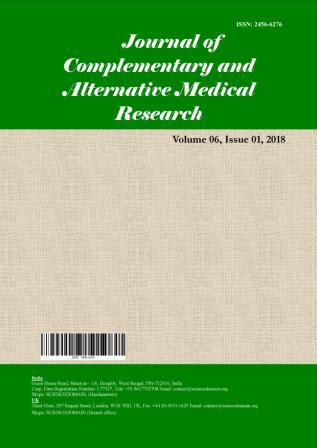
Review Article
Acupuncture has shown to be potentially beneficial as an alternate or adjunct therapy for patients with Bell's palsy following recovery from COVID-19.
Yepthomi T, Somanadhapai S

Randomised Controlled Trial
Soybean lettuce extract effectively reduces symptoms of menopause syndrome without notable side effects.
Han AL, Lee HK, Chon HS, Pae HO, Kim MS, Shin YI, Kim S

Review Article
Bee pollen, enriched with multiple nutrients, serves as a protective shield against a variety of ailments such as diabetes, allergies, and cancers, and potentially useful in cosmetic applications.
Algethami JS, El-Wahed AAA, Elashal MH, Ahmed HR, Elshafiey EH, Omar EM, Naggar YA, Algethami AF, Shou Q, Alsharif SM, Xu B, Shehata AA, Guo Z, Khalifa SAM, Wang K, El-Seedi HR

Systematic Review
Vitamin D supplementation, particularly in doses greater than 2,000 IU/day, can help reduce depressive symptoms in adults.
Mikola T, Marx W, Lane MM, Hockey M, Loughman A, Rajapolvi S, Rocks T, O’Neil A, Mischoulon D, Valkonen-Korhonen M, Lehto SM, Ruusunen A

Systematic Review
Acupuncture, specifically electroacupuncture and bee venom acupuncture, shows promise as a growing therapeutic approach in the treatment of Parkinson's Disease.
Li X, Wei W, Wang Y, Wang Q, Liu Z

Experimental Study
Goji berry supplementation can potentially improve gut microbiota and prevent liver injury caused by acute alcohol consumption.
Guo L, Guan Q, Duan W, Ren Y, Zhang XJ, Xu HY, Shi JS, Wang FZ, Lu R, Zhang HL, Xu ZH, Li H, Geng Y

Network Pharmacology
The Jian Pi Yi Shen formula in traditional Chinese medicine demonstrates a protective effect on kidneys by modulating tryptophan metabolism and Aryl hydrocarbon receptor activation.
Liu X, Deng R, Chen Y, Huang S, Lu J, Zheng L, Xiong G, Li S

Systematic Review
The potential of acupuncture as a non-pharmacological intervention to alleviate IVF-related state anxiety.
Hullender Rubin LE, Smith CA, Schnyer RN, Tahir P, Pasch LA

Review Article
Chinese Herbal Medicine Prescriptions (CHMPs) have demonstrated to be potentially effective in managing Inflammatory Bowel Disease (IBD) with a comprehensive, holistic approach.
Zhang S, Luo H, Tan D, Peng B, Zhong Z, Wang Y
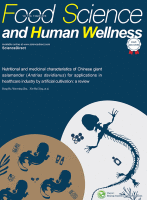
Systematic Review
Bioactive components in green tea have demonstrated potential neuroprotective effects and might play a role in preventing Alzheimer’s disease.
Lange KW, Lange KM, Nakamura Y

Systematic Review
Acupuncture and moxibustion therapies have greater therapeutic effectiveness for knee osteoarthritis than sham treatments and generic acupuncture/moxibustion treatments.
Ye C, Zhou J, Wang M, Xiao S, Lv A, Wang D
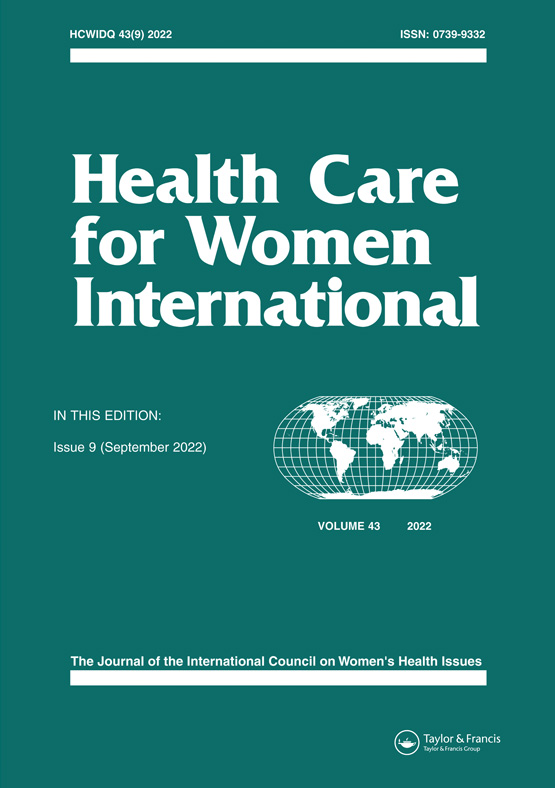
Systematic Review
Cold cabbage leaf application was effective in reducing breast pain.
Ozkaya M, Korukcu O

Meta-Analysis
Acupuncture combined with moxibustion showed the best outcomes in terms of efficacy and quality of life improvement for adults with irritable bowel syndrome complicated with diarrhea.
Jiang X, Guo X, Zhou J, Ye S

Randomised Controlled Trial
Modified Xiao Chai Hu Decoction combined with mirtazapine shows superior effectiveness in treating persistent depressive disorder compared to traditional Chinese medicine alone.
Xin Li, Xiuyu Li, Man Gong, Chaoqun Li, Jing Li, Chao Zhou, Tingting He
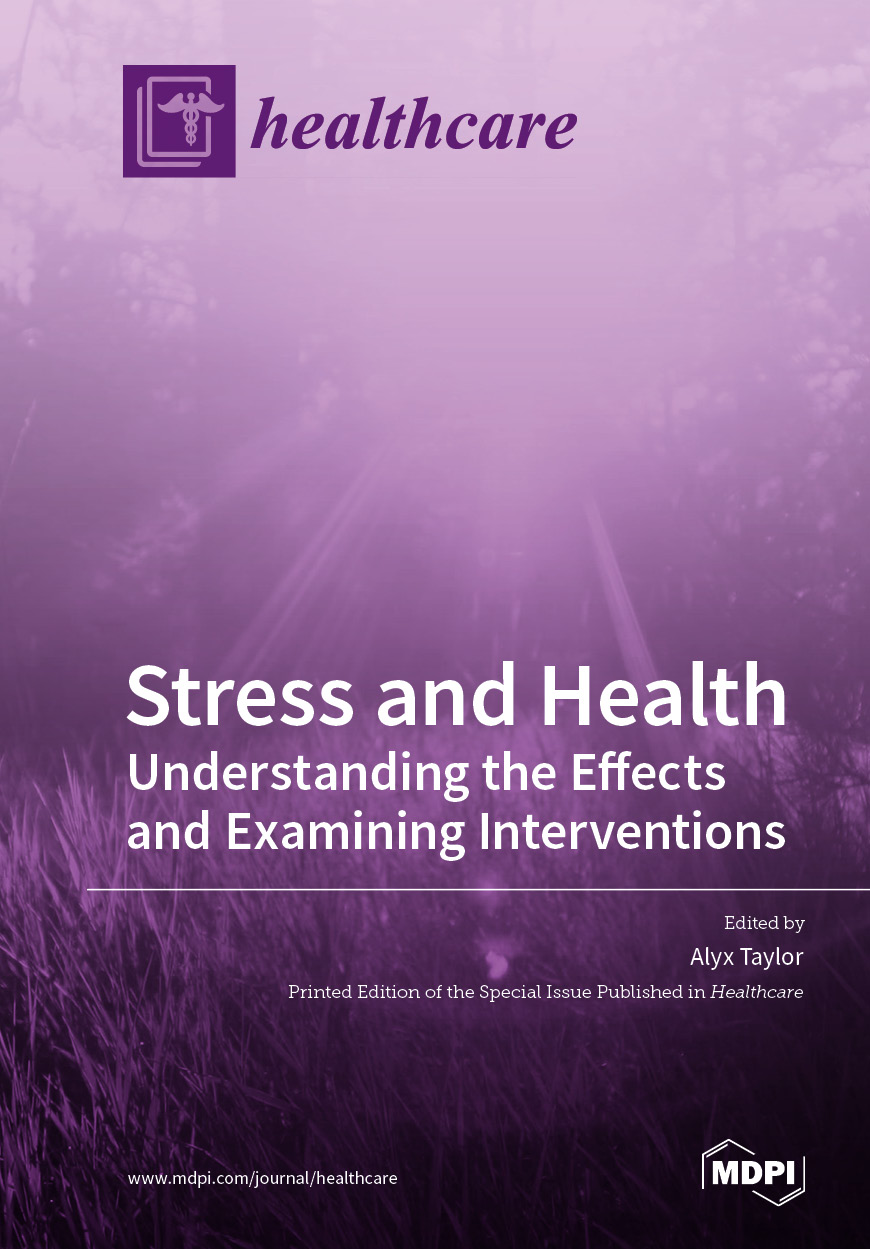
Systematic Review
Acupuncture showed a significant effect in the management of fibromyalgia patients. It reduced pain, depression, and enhanced quality of life.
Almutairi NM, Hilal FM, Bashawyah A, Dammas FA, Yamak Altinpulluk E, Hou JD, Lin JA, Varrassi G, Chang KV, Allam AES

Randomised Controlled Trial
True acupuncture over an eight-week period is effective for reducing the frequency of chronic tension-type headache.
Zheng H, Gao T, Zheng QH, Lu LY, Hou TH, Zhang SS, Zhou SY, Hao XY, Wang L, Zhao L, Liang FR, Li Y

Review Article
Jujube nutrients may offer potential therapeutic benefits including antioxidant, antibacterial, anti-inflammatory functions, and improving sleep quality and learning.
Hua Y, Xu X, Guo S, Xie H, Yan H, Ma X, Niu Y, Duan JA

Randomised Controlled Trial
Both whole blueberries and freeze-dried blueberry powder significantly enhanced plasma nitrite levels, a marker of cardiovascular health, but did not significantly affect other cardiovascular risk factors.
Wang Y, Gallegos JL, Haskell-Ramsay C, Lodge JK
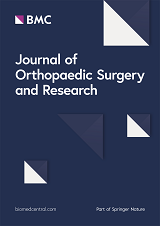
Systematic Review
Individualised acupuncture and standard acupuncture combined with TENS were the most effective protocols for the non-pharmacological management of chronic aspecific low back pain based on measures of pain and disability, compared to sham treatment.
Baroncini A, Maffulli N, Eschweiler J, Molsberger F, Klimuch A, Migliorini F

Cohort Study
Moderate consumption of carrots is associated with a lower incidence of colorectal cancer, implying a potential cancer prevention effect in a certain dose-range.
Jiang Z, Chen H, Li M, Wang W, Fan C, Long F
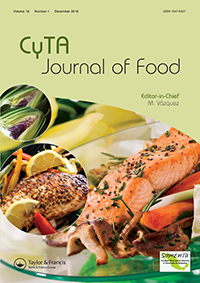
Randomised Controlled Trial
Avocado honey, rich in bioactive compounds, can serve as a natural sweetener without negatively impacting anthropometric and biochemical parameters.
Hernández Salazar M, Flores A, Ramírez E, Llaca Díaz J, Rodríguez B, Castro H
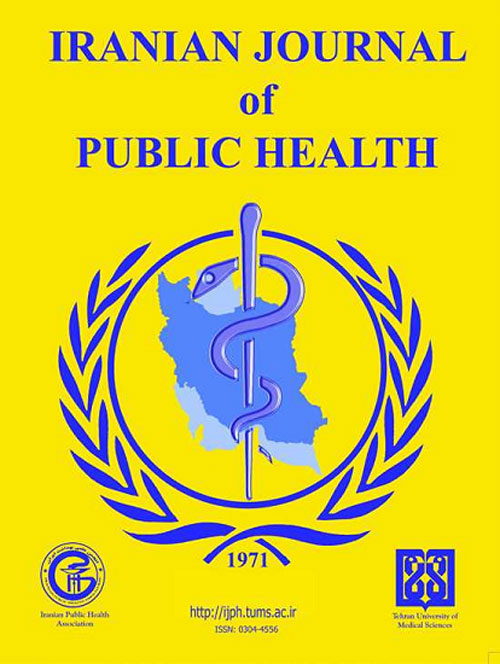
Systematic Review
The application of curcumin and turmeric, due to their anti-inflammatory effects, can alleviate symptoms and improve the quality of life in people with irritable bowel syndrome.
Jafarzadeh E, Shoeibi S, Bahramvand Y, Nasrollahi E, Maghsoudi AS, Yazdi F, KarkonShayan S, Hassani S

Systematic Review
Pumpkin seeds, in combination with other plants, show potential as an alternative treatment method for diabetes mellitus.
Tasya Z, Amiruddin R, Syam A, Thamrin Y

Animal Study
Cooked adzuki beans contribute notably to preventing obesity and regulating gut microbiota composition, while also alleviating systemic inflammation and metabolic disorders.
Zhao Q, Liu Z, Zhu Y, Wang H, Dai Z, Yang X, Ren X, Xue Y, Shen Q

Review Article
The underutilized pomegranate peel, full of abundant bioactive substances, could be repurposed for its potential health benefits like anti-inflammatory, anti-cancer, cardiovascular protection, and antibacterial activities.
Mo Y, Ma J, Gao W, Zhang L, Li J, Li J, Zang J
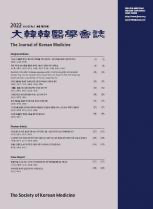
Systematic Review
Electroacupuncture treatment may be effective for treating acute gout.
Hwang JH, Song A, Song HS

Systematic Review
Guizhi Shaoyao Zhimu Decoction was more effective and had fewer adverse reactions compared to the control group in the treatment of gout and the combined use of modified GSZD with other treatments showed decreased levels of C-reactive protein and erythrocyte sedimentation rate.
Liu H, Chi X, Zhang H, Shi H, Pan J, Wang Y, Xue X, Lu Y, Song X, Ma K

Cohort Study
Higher consumption of ultra-processed food is linked to an increased risk of developing Crohn's disease, with no consistent connection observed with ulcerative colitis.
Lo CH, Khandpur N, Rossato SL, Lochhead P, Lopes EW, Burke KE, Richter JM, Song M, Ardisson Korat AV, Sun Q, Fung TT, Khalili H, Chan AT, Ananthakrishnan AN

Cohort Study
Shenling Baizhu San (SBS), combined with mesalamine, can treat ulcerative colitis effectively by changing gut microbiota structures and increasing tryptophan metabolite levels.
Jiao C, Zhang Q, Yang M, Ma J, Zhao X, Tang N, Dai M, Li Q, Jiang Z, Huang X, Zhang H, Sun L

Review Article
Saffron plant's various parts contain bioactive compounds that, when extracted using innovative techniques, show significant potential for use in food, nutraceutical and drug formulations.
Bakshi RA, Sodhi NS, Wani IA, Khan ZS, Dhillon B, Gani A

Systematic Review
Electroacupuncture treatment for carpal tunnel syndrome was reported to be effective and showed a significant difference from the control group.
Park CW, Lim MJ, Lee SW, Yi YH, Song DW, Yu SG, Kim MJ, Oh DY, Choi HJ, Ju AR
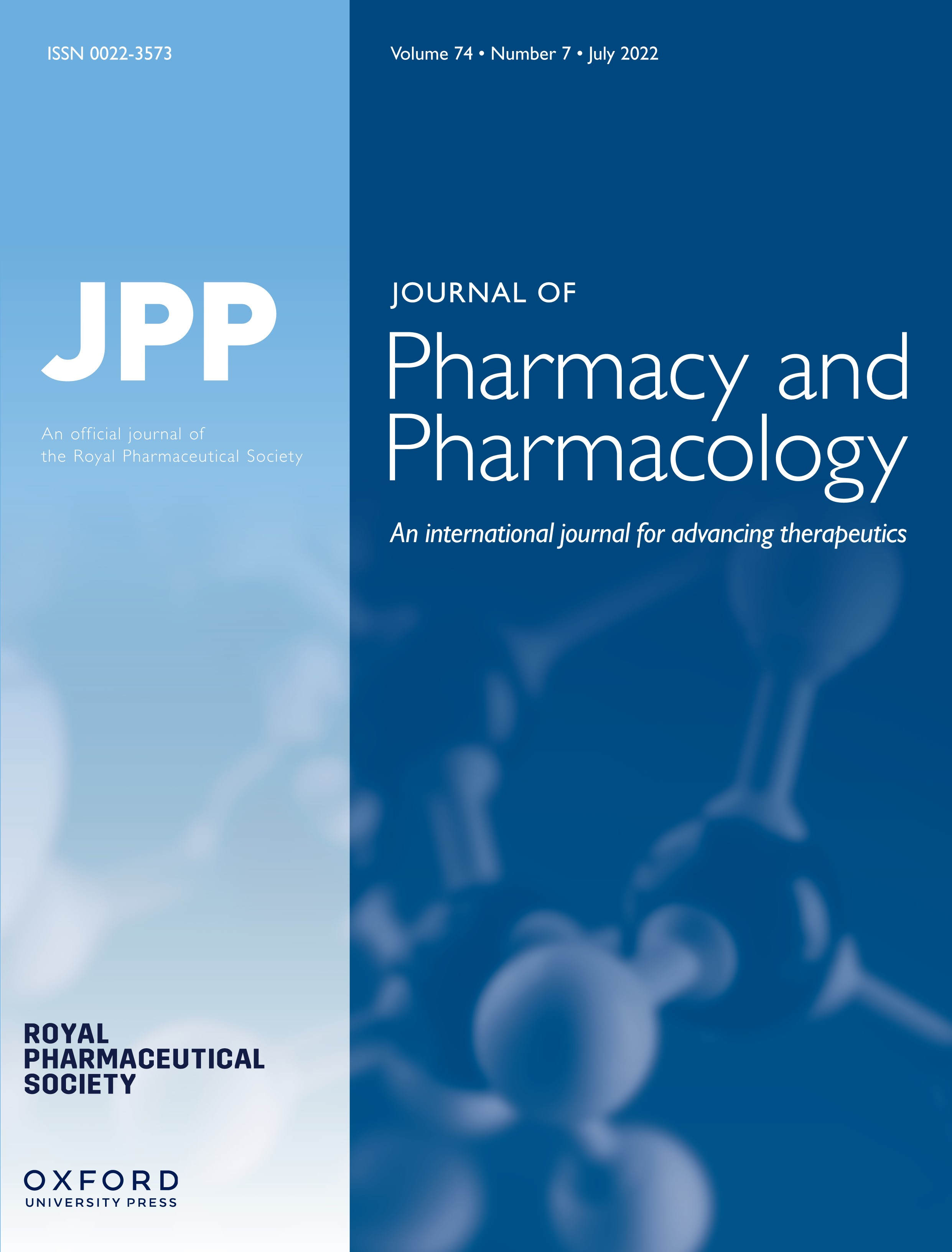
Traditional Chinese medicine exhibits fewer side effects while effectively controlling inflammation and serum uric acid in gout patients.
Liu ZQ, Sun X, Liu ZB, Zhang T, Zhang LL, Wu CJ

Systematic Review
Dietary strategies, such as caloric restriction and ketogenic diets, can alleviate chronic pain and enhance quality of life.
Cuevas-Cervera M, Perez-Montilla J, Gonzalez-Muñoz A, Garcia-Rios M, Navarro-Ledesma S
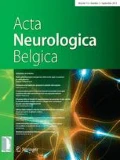
Systematic Review
Higher daily tea consumption, especially green tea, is linked to a lower risk of cerebral hemorrhage in adults.
Cheng P, Zhang J, Liu W, Sun Q, Fu Z, Lin H, Bi S, Zhu J

Animal Study
Certain natural mineral waters, when combined with a low-calorie diet, effectively reduce cholesterol and glucose levels in mice with metabolic syndrome.
Narciso L, Martinelli A, Torriani F, Frassanito P, Bernardini R, Chiarotti F, Marianelli C

Animal Study
Fermented gold kiwi extract exhibits antioxidant properties, providing protection to the stomach lining and reducing inflammation, making it promising for treating gastritis and gastric ulcers.
Jeon EJ, Choi JH, Lee NY, Oh HJ, Kwon HS, Kwon J
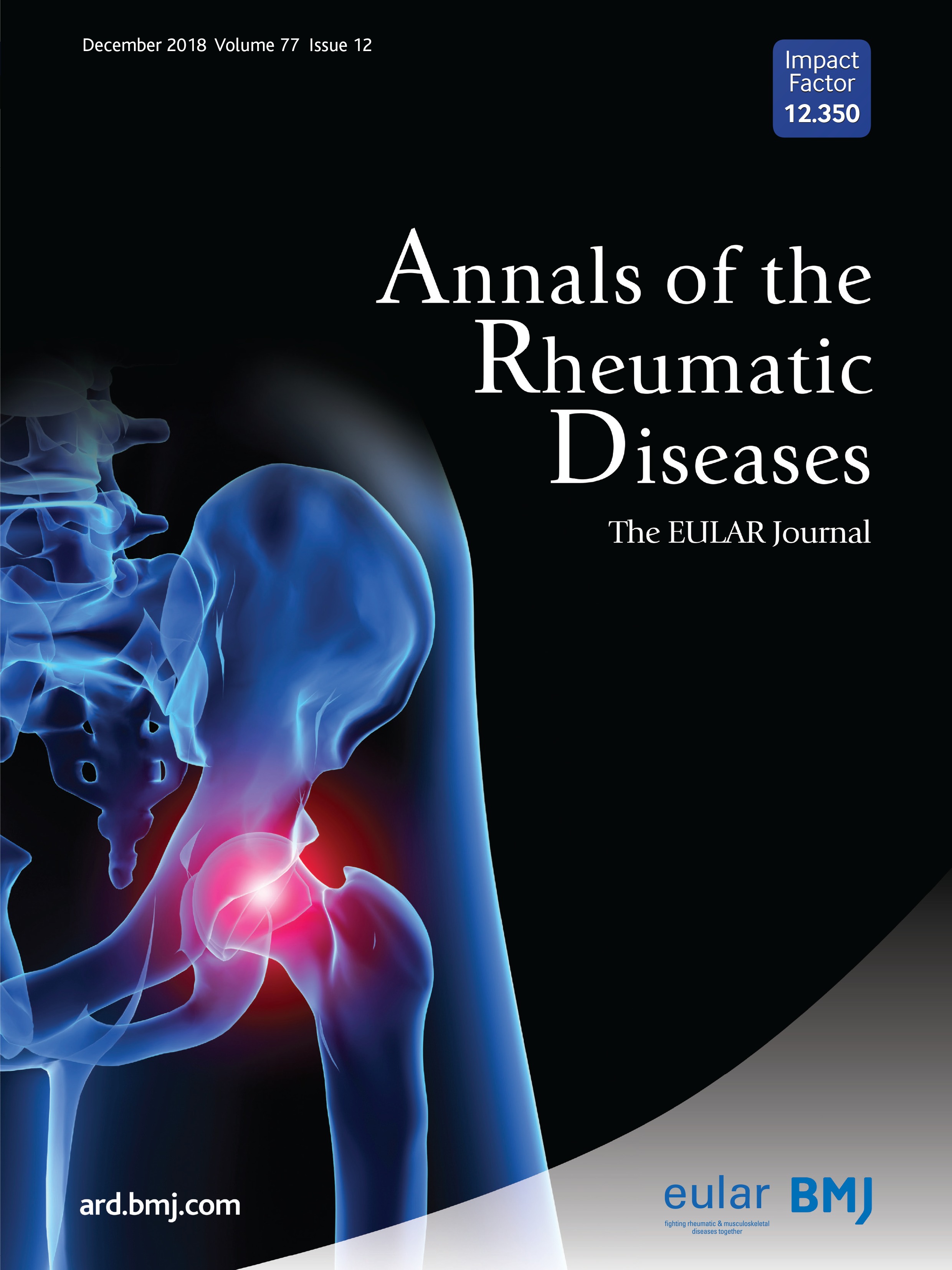
Randomised Controlled Trial
Fasting followed by a plant-based diet positively impacts disease activity and cardiovascular risk factors in rheumatoid arthritis patients.
Hartmann AM, Kandil FI, Steckhan N, Häupl T, Kessler CS, Michalsen A, Koppold-Liebscher DA

Experimental Study
Berries, largely due to their phenolic compounds, enhance internal antioxidant status and positively influence gut microbiota composition, promoting beneficial bacteria and suppressing harmful types.
Chen J, Shu Y, Chen Y, Ge Z, Zhang C, Cao J, Li X, Wang Y, Sun C

Review Article
Cherries and blueberries, rich in phenolic compounds, can be effectively used in pharmaceutical products, smart foods, functional beverages, and nutraceuticals to prevent or treat diseases.
Gonçalves AC, Nunes AR, Flores-Félix JD, Alves G, Silva LR
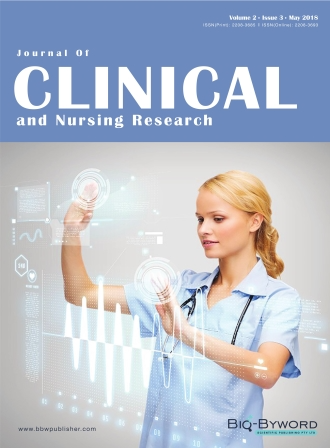
Review Article
Traditional Chinese medication, acupuncture, and their integration can be used effectively for the treatment of Retinitis Pigmentosa (RP) improving vision and visual field.
Yang Q, Zhang L, Cheng J, Tong J

Systematic Review
Acupuncture shows potential benefits in stroke rehabilitation, particularly for shoulder-hand syndrome post-stroke.
Choi TY, Jun JH, Lee HW, Yun JM, Joo MC, Lee MS
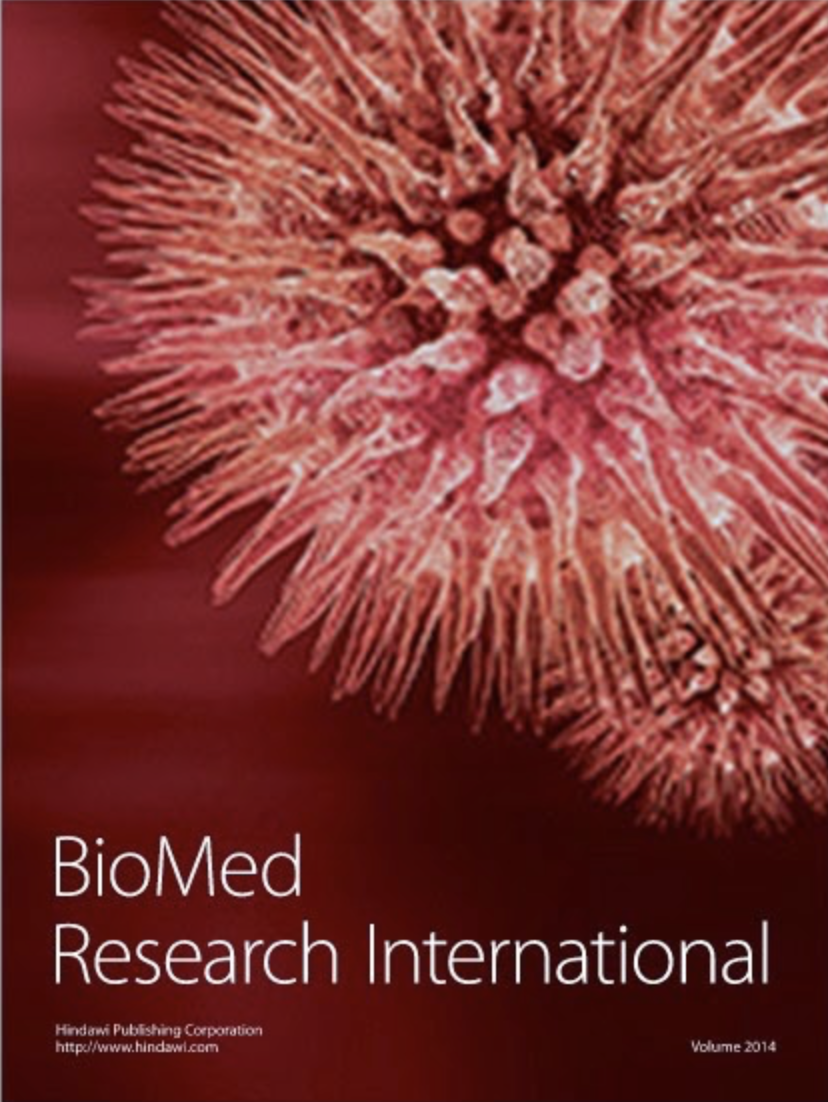
Systematic Review
Traditional Chinese Medicine may play a significant role in alleviating symptoms of chronic insomnia in elderly patients.
Luan X, Zhang X, Zhou Y
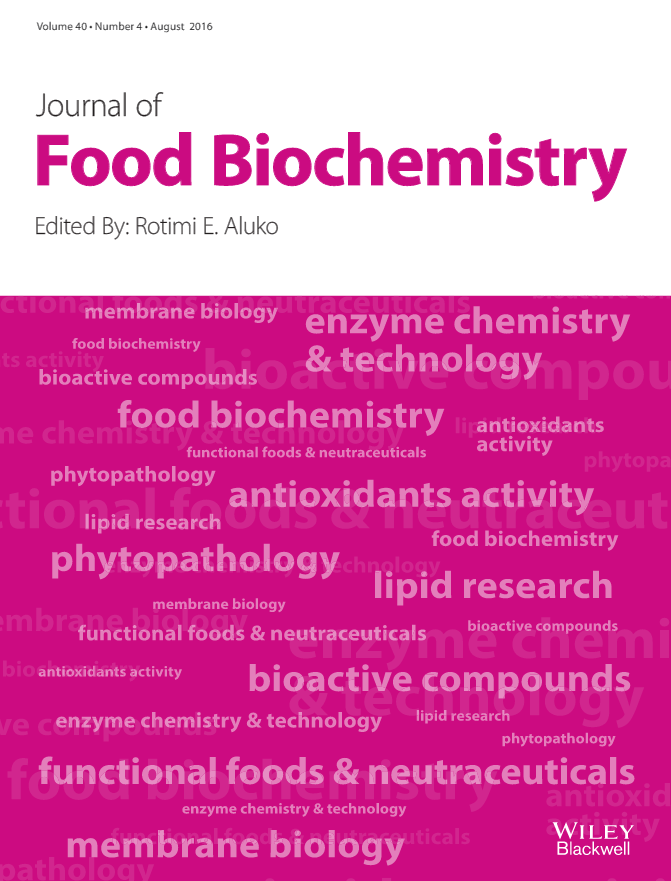
Animal Study
Persea americana seed extract can counteract the negative effects of cyclosporine on male rat reproduction, enhancing antioxidant enzyme activity, sperm quality, and hormonal balance.
Adebayo AA, Babatola LJ, Fasanya CB, Oboh G

Randomised Controlled Trial
Consuming New Zealand green kiwifruit improves sleep quality, mood, and increases the concentration of serotonin metabolites.
Kanon AP, Giezenaar C, Roy NC, McNabb WC, Henare SJ
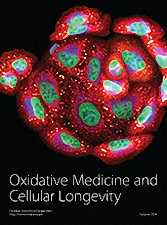
Systematic Review
Ginger, native to Southeast Asia, possesses antioxidant and antiviral properties, contributing to healthy ageing and potential prevention of age-related disorders.
Ozkur M, Benlier N, Takan I, Vasileiou C, Georgakilas AG, Pavlopoulou A, Cetin Z, Saygili EI

Systematic Review
Chinese herbal medicine shows evident efficacy in treating coronary heart disease patients with anxiety or depression, notably improving symptoms of angina pectoris.
Wang B, Teng Y, Li Y, Lai S, Wu Y, Chen S, Li T, Han X, Zhou H, Wang Y, Lu Z, Li H, Ding Y, Ma L, Zhao M, Wang X

Animal Study
Pu-erh tea has been validated to have significant anti-oxidative effects, reducing serum MDA levels and increasing serum SOD and GSH-Px levels.
Yang CY, Hung KC, Yen YY, Liao HE, Lan SJ, Lin HC
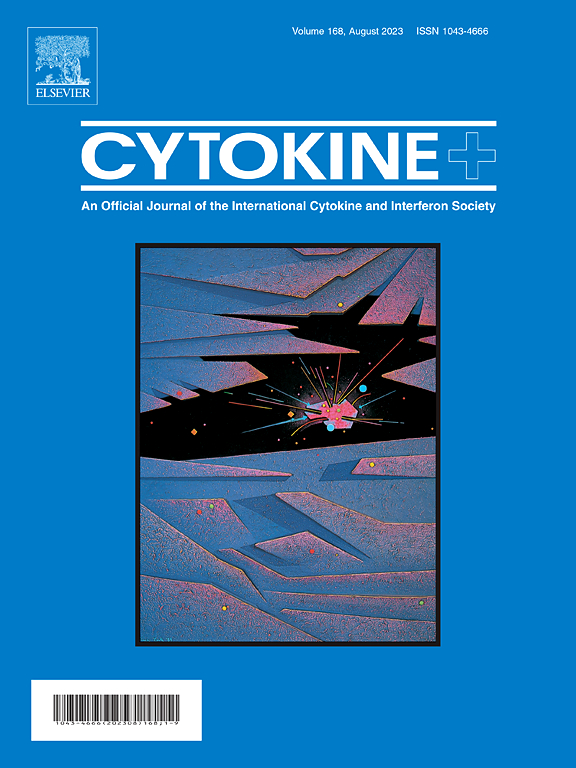
Animal Study
Walnut seed skin extract demonstrates potential hepato-renal protective effects, inhibiting inflammatory responses, oxidative stress and apoptosis, in kidney-damaged Sprague-Dawley rats.
Askin S, Askin H, Dursun E, Palabiyik E, Uguz H, Cakmak , Koc K

Review Article
Ellagic acid, commonly found in various plant foods, can enhance cancer treatment by boosting the effects of chemotherapy and radiotherapy while reducing their side effects.
Xue P, Zhang G, Zhang J, Ren L
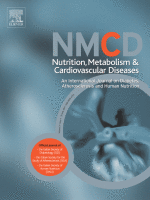
Meta-Analysis
Blueberry and cranberry consumption significantly lowered fasting blood glucose and glycated hemoglobin levels in individuals with diabetes.
Delpino FM, Figueiredo LM, Gonçalves da Silva T, Flores TR

Randomised Controlled Trial
Inhalation aromatherapy using lavender and chamomile essential oils effectively reduces depression, anxiety, and stress levels in community-dwelling older adults.
Ebrahimi H, Mardani A, Basirinezhad MH, Hamidzadeh A, Eskandari F

Review Article
Consuming kiwifruit, particularly the green variety, can effectively alleviate upper gastrointestinal symptoms like abdominal discomfort, pain, and indigestion.
Bayer SB, Frampton CM, Gearry RB, Barbara G

Systematic Review
The meta-analysis suggests that higher acupuncture dosages administered over multiple menstrual cycles may lead to improved endometrial receptivity and clinical pregnancy rates in infertile women with poor endometrial receptivity (PER).
Zheng X, Yu S, Liu L, Yang H, Wang F, Yang H, Lv X, Yang J

Acupuncture is a low-risk method that has the potential to enhance perioperative analgesia, decrease opioid requirement, and reduce unwanted side effects of anesthesia, surgery, and opioid administration such as nausea/vomiting.
Shah S, Godhardt L, Spofford C

Review Article
Endometriosis, a prevalent gynecological disease, may arise due to changes in the female genital system's development during a crucial fetal life window.
Signorile PG, Viceconte R, Baldi A

Experimental Study
Pu-erh tea may prevent circadian rhythm disorders by promoting tryptophan metabolism and signaling interactions in the gut-liver-brain axis.
Hu S, Luo L, Bian X, Liu RH, Zhao S, Chen Y, Sun K, Jiang J, Liu Z, Zeng L
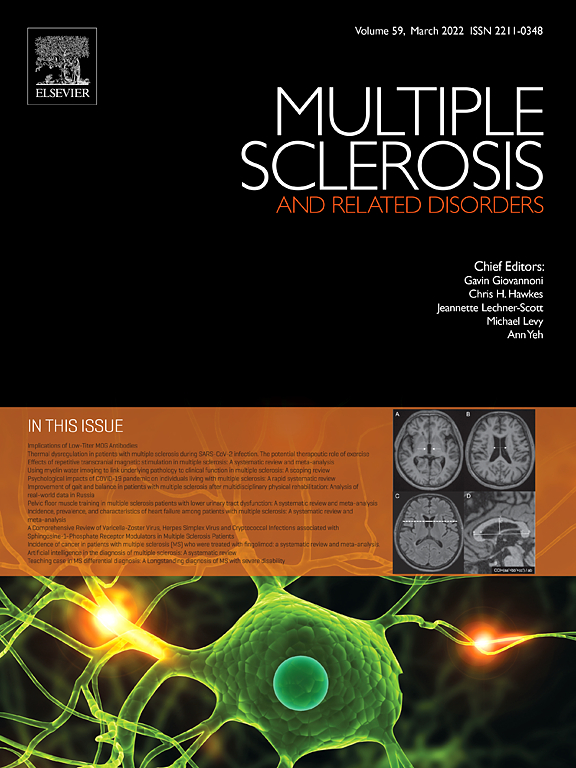
Review Article
Acupuncture, when used as an integrative therapy in conjunction with traditional treatments, significantly improves the quality of life in patients with Multiple Sclerosis.
Khodaie F, Abbasi N, Kazemi Motlagh AH, Zhao B, Naser Moghadasi A

Systematic Review
Acupuncture can reduce pain and improve functional activities in patients with knee osteoarthritis, proving particularly beneficial for chronic sufferers and enhancing their quality of life.
Tian H, Huang L, Sun M, Xu G, He J, Zhou Z, Huang F, Liu Y, Liang F

Systematic Review
Chinese herbal medicines combined with antithyroid drugs may offer benefits in lowering relapse rates, reducing the incidence of adverse effects, relieving symptoms, improving thyroid antibody status and thyroid function.
Zeng X, Yuan Y, Wu T, Yan L, Su H

Systematic Review
Acupuncture can be a safe and effective alternative therapy to conventional drugs for improving sleep quality and relieving symptoms in patients with active depression.
Zhao FY, Kennedy GA, Spencer SJ, Conduit R, Zhang WJ, Fu QQ, Zheng Z
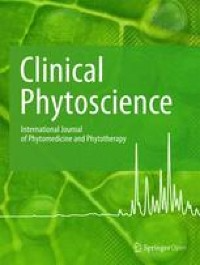
Meta-Analysis
Pumpkin seed extract treatment could potentially offer symptomatic relief for patients experiencing moderate lower urinary tract symptoms suggestive of benign prostate hyperplasia.
Vahlensieck W, Heim S, Patz B, Sahin K
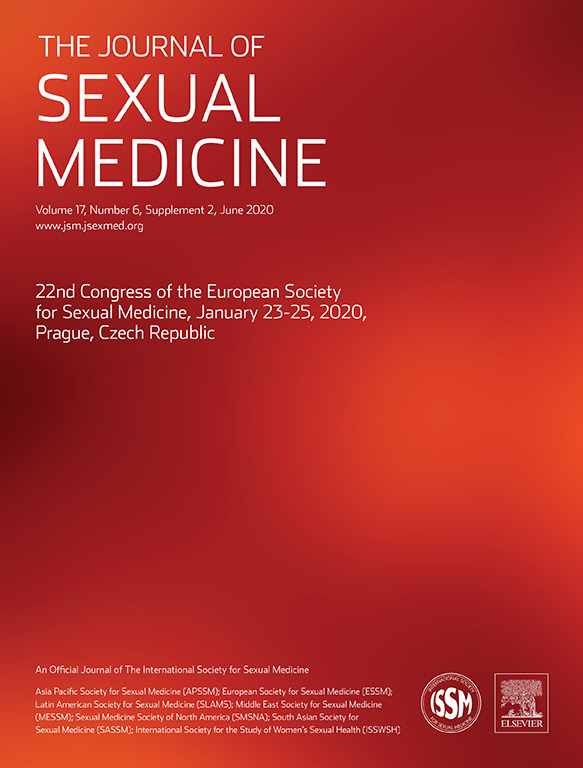
Randomised Controlled Trial
Chamomile vaginal gel effectively improved the sexual function of postmenopausal women, and can be a potential treatment option for those unable to undergo hormone therapy.
Bosak Z, Iravani M, Moghimipour E, Haghighizadeh M, Jelodarian P

Systematic Review
Xiao Yao San, alone or combined with anxiolytics, assists in better improvement and safety in treating anxiety disorders compared to anxiolytics alone.
Lin J, Ji Y, Si J, Wang G, Li X, Shen L

Cohort Study
Eating more avocados, specifically two servings a week, is associated with a significantly lesser risk of cardiovascular disease and coronary heart disease.
Pacheco LS, Li Y, Rimm EB, Manson JAE, Sun Q, Rexrode K, Hu FB, Guasch‐Ferré M
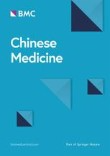
Review Article
Chinese herbal medicine interventions, particularly those based on the Bai-Tou-Weng-Tang and Shen-Ling-Bai-Zhu-San formulas, show promise in treating Ulcerative Colitis.
Zhang X, Zhang L, Chan JCP, Wang X, Zhao C, Xu Y, Xiong W, Chung WC, Liang F, Wang X, Miao J, Bian Z
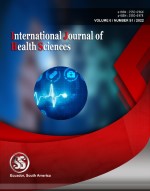
Randomised Controlled Trial
Green tea extract, specifically epigallocatechin gallate, can inhibit tumor growth and enhance the quality of life in women suffering from uterine fibroids.
Badawy A, Shady NW, Maklad SMA, Ait-Allah AS

Review Article
Acupuncture, particularly when used alongside antidepressants, can effectively alleviate various types of depression symptoms and reduce side effects of medication.
Yang, Na-Na; Lin, Lu-Lu; Li, Yue-Jie; Li, Hong-Ping; Cao, Yan; Tan, Chun-Xia; Hao, Xiao-Wan; Ma, Si-Ming; Wang, Lu; Liu, Cun-Zhi

Meta-Analysis
Regular peanut consumption appears to positively influence lipid metabolism, reducing levels of triglycerides in the blood.
Parilli-Moser I, Hurtado-Barroso S, Guasch-Ferré M, Lamuela-Raventós RM

Review Article
Omega-3 fatty acids can help prevent and manage chronic inflammatory diseases, including ulcerative colitis and rheumatoid arthritis, through influencing gut microbiota.
Zorgetto-Pinheiro VA, Machate DJ, Figueiredo PS, Marcelino G, Hiane PA, Pott A, Guimarães RCA, Bogo D

Xiang Fu, a traditional Chinese herbal medicine, shows significant antidepressant effects.
Lu J, Li W, Gao T, Wang S, Fu C, Wang S
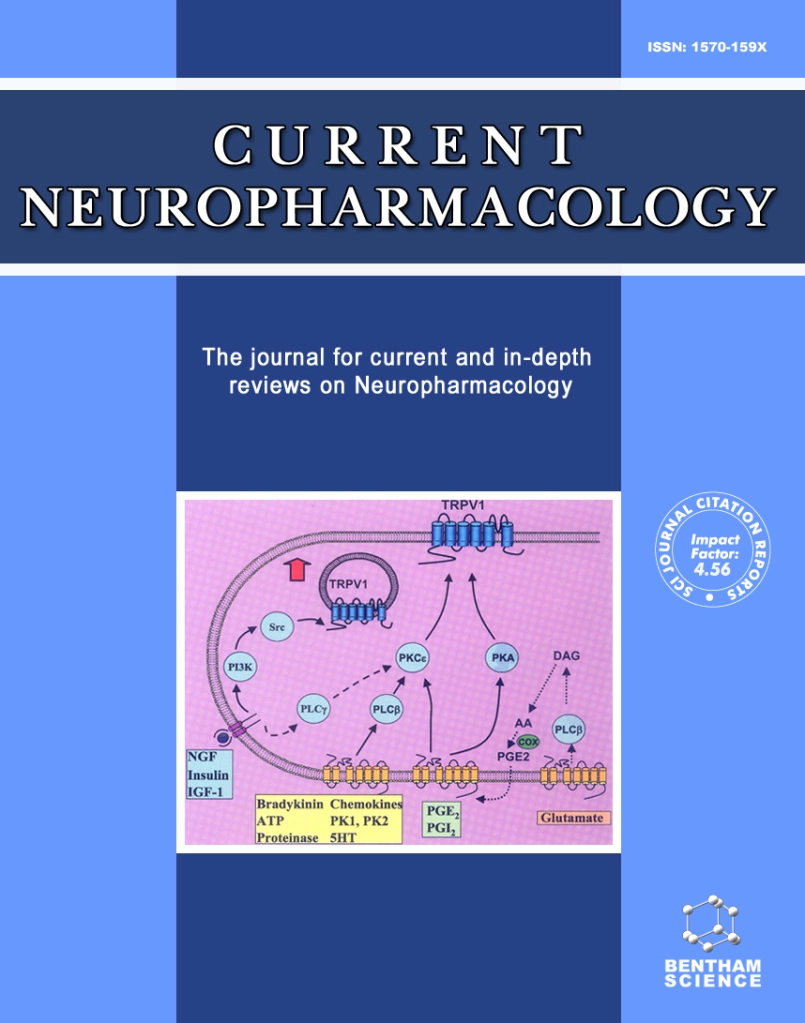
Review Article
Acupuncture could help manage different types of depression by increasing neuroplasticity, decreasing brain inflammation, and reducing side effects of conventional antidepressant treatment.
Yang NN, Lin LL, Li YJ, Li HP, Cao Y, Tan CX, Hao XW, Ma SM, Wang L, Liu CZ
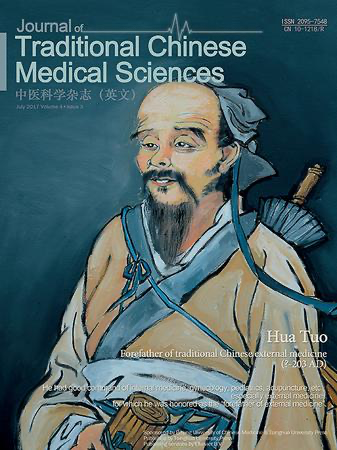
Review Article
Pu-erh tea possesses therapeutic mechanisms potentially beneficial for metabolic diseases due to its interaction with liver and gut microbiome.
Jia W, Rajani C, Lv A, Fan TP, Zheng X

Review Article
Extra virgin olive oil (EVOO) has beneficial health properties and can promote cardiovascular health, lipoprotein metabolism, and diabetes management in clinical nutrition.
Jiménez-Sánchez A, Martínez-Ortega AJ, Remón-Ruiz PJ, Piñar-Gutiérrez A, Pereira-Cunill JL, García-Luna PP

Systematic Review
Among patients with PCOS, the combined use of acupuncture and moxibustion as a complementary therapy has additional efficacy regarding increased pregnancy and ovulation rates and reduced miscarriage rate.
Li P, Peng J, Ding Z, Zhou X, Liang R
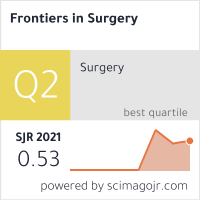
Systematic Review
Acupuncture, particularly electro-acupuncture, may alleviate post-hemorrhoidectomy pain at certain stages, but overall effectiveness remains inconclusive.
Chen H, Zhang W, Sun Y, Jiao R, Liu Z

Experimental Study
Ethanol and n-hexane extracts of Chrysanthemum indicum reveal potent anticancer activity against HepG2 cancer cells by promoting apoptosis and reducing cell proliferation.
Mehboob Z, Sharif S, Lodhi MS, Zaigham K

Experimental Study
Saffron and its bioactive molecules, notably crocins, have been found to be as effective as common antidepressants in treating depression disorders.
Siddiqui SA, Ali Redha A, Snoeck ER, Singh S, Simal-Gandara J, Ibrahim SA, Jafari SM

Review Article
Purple carrot roots, rich in bioactive compounds like anthocyanin, may be effective in preventing metabolic syndrome and cancer by reducing inflammation and metabolic changes.
Rasheed H, Shehzad M, Rabail R, Kowalczewski P, Kidoń M, Jeżowski P, Ranjha MMAN, Rakha A, Din A, Aadil RM
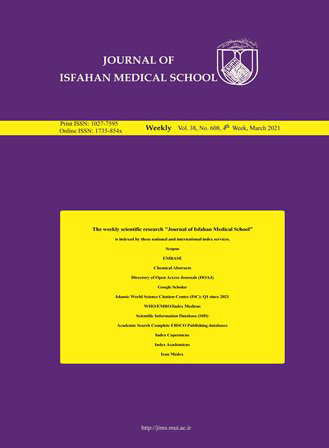
Systematic Review
Among the mentioned plants, castor oil and date fruit have more evidence in cervical ripening and onset of labor.
Ghasemi M, Ebrahimzadeh-Zagami S, Ghavami V.

Experimental Study
Coconut water and coconut milk ameliorate the negative impacts of heat stress on gastrointestinal health by reducing oxidative stress and suppressing inflammatory responses.
Ajeigbe KO, Oladokun OO, Owonikoko MW, Adegoke GA

Experimental Study
The Chaihu Shugan Formula, a traditional Chinese medicine, not only effectively modulates intestinal gut microbiota but also strengthens gut barrier integrity and contains powerful anti-inflammatory properties.
Liu L, Lu Y, Xu C, Chen H, Wang X, Wang Y, Cai B, Li B, Verstrepen L, Ghyselinck J, Marzorati M, Yao Q

Review Article
Dietary supplements are found to be a promising complementary treatment for endometriosis, thanks to their anti-inflammatory, anti-oxidant, and immune modulatory characteristics.
Yalçın Bahat P, Ayhan I, Üreyen Özdemir E, İnceboz Ümit, Oral E
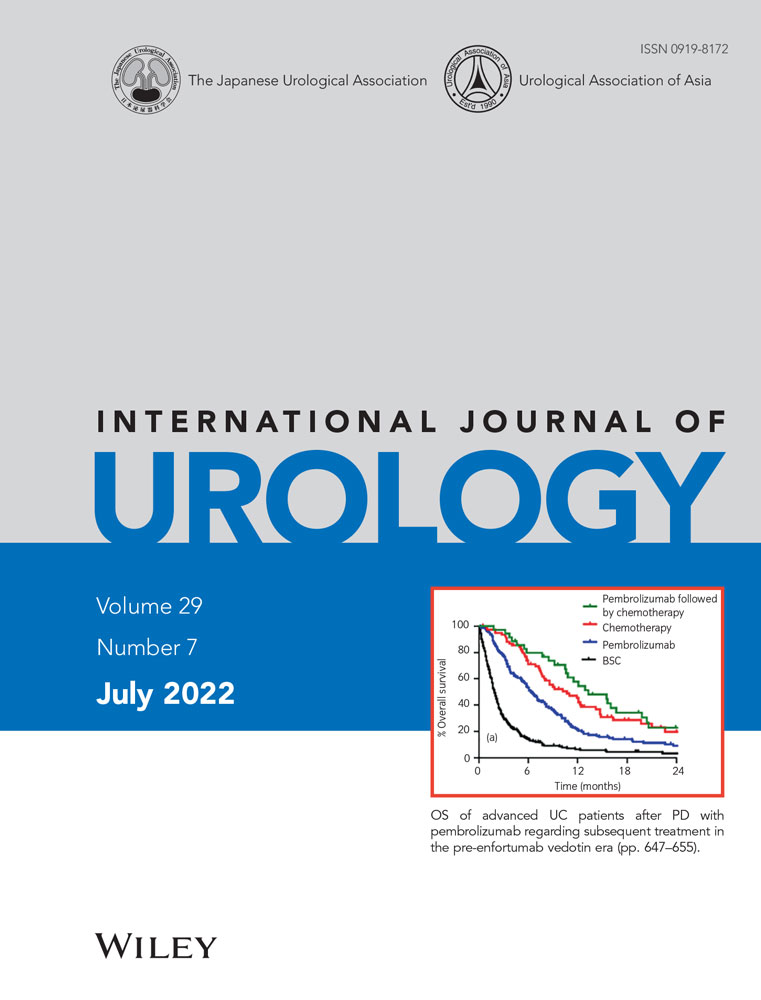
Cohort Study
Chinese herbal medicine can significantly reduce the risks of complications and need for surgery associated with benign prostatic hyperplasia.
Ou SC, Huang ST, Lin MC, Chen WC, Huang CP, Lin HJ
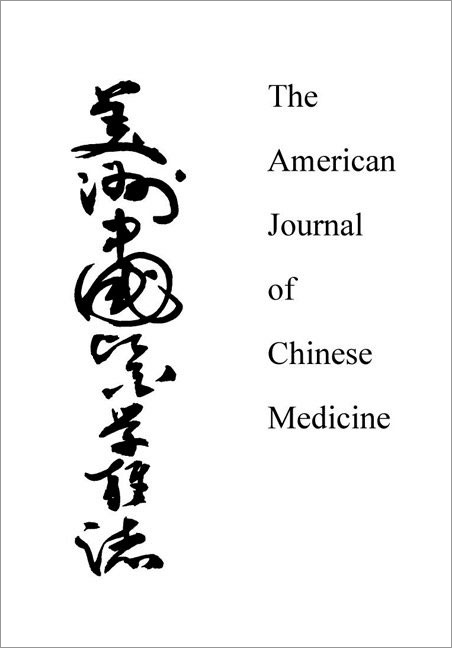
Review Article
Acupuncture shows promising results in managing autoimmune diseases by potentially regulating immune responses.
Jing Wang, Fangyi Zhu, Wei Huang, Zhengyi Chen, Ping Zhao, Yanting Lei, Yumei Liu, Xijun Liu, Bo Sun, Hulun Li
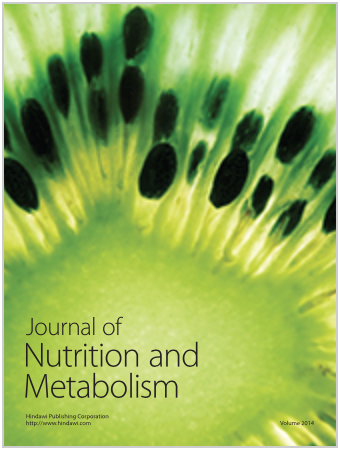
Review Article
Pomegranate juice, due to its unique bioactive compounds, could potentially alleviate complications related to SARS-CoV-2 infections, especially in patients with pre-existing chronic diseases.
Banihani SA
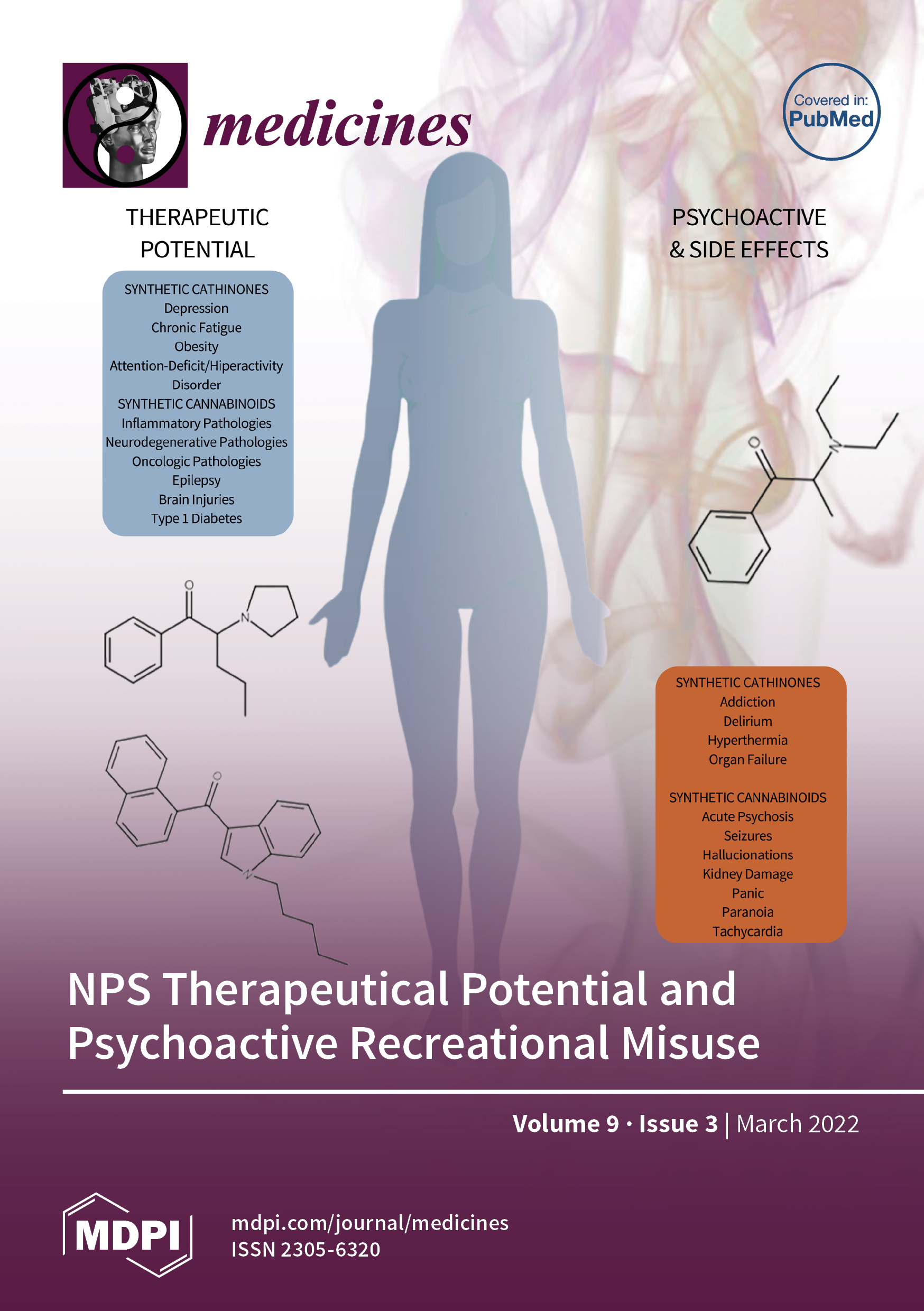
Systematic Review
Wen Dan Tang potentially treats neurological, psychiatric disorders, cardiovascular diseases, and digestive disorders, and might improve life quality in headache patients.
Pradhan SK, Li Y, Gantenbein AR, Angst F, Lehmann S, Shaban H
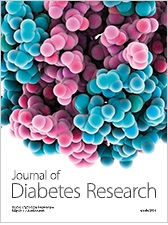
Randomised Controlled Trial
Vitamin D supplementation effectively improves depressive symptoms in women with type 2 diabetes and low vitamin D levels, regardless of the dose administered.
Penckofer S, Ridosh M, Adams W, Grzesiak M, Woo J, Byrn M, Kouba J, Sheean P, Kordish C, Durazo-Arvizu R, Wallis D, Emanuele MA, Halaris A
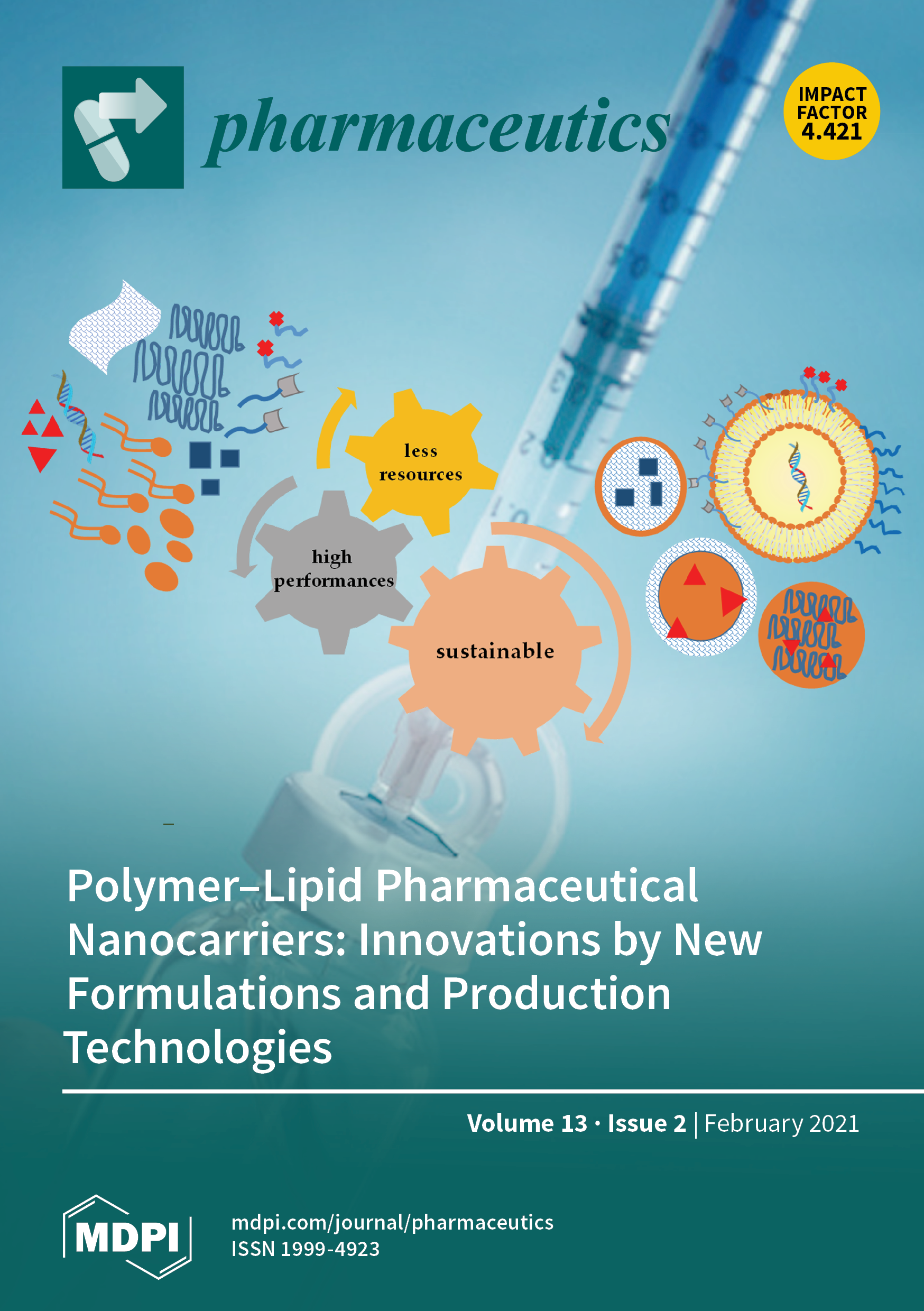
Network Pharmacology
Asthma severity can be notably reduced by Xi Xin essential oil, which decreases inflammation, immunoglobulins, and fibrotic mediators, while also alleviating airway obstruction.
Han JM, Kim MH, Choi LY, Kim G, Yang WM

Review Article
The Jing Si Herbal Drink, composed of various antiviral, antioxidant and anti-inflammatory herbs, has been confirmed as potentially effective in treating COVID-19 symptoms.
Lu PH, Tseng CW, Lee JL, Lee EY, Lin YP, Lin IH, Yu MC, Lu KC, Kuo KL

Systematic Review
Edible medicinal plants like saffron, chamomile, dill seeds, and castor oil have demonstrated positive effects on various aspects of labor, indicating potential natural alternatives for aiding childbirth.
Ivari FR, Vatanchi AM, Yousefi M, Badaksh F, Salari R

Randomised Controlled Trial
Walnut oligopeptide improves cognitive performance and sleep quality among teenagers and elderly people.
Yeh AL, Chao CL, Huang WF, Lin HC, Wang CJ

Randomised Controlled Trial
Acupuncture effectively induced and sustained remission in active Crohn's disease patients, linked to an increase in anti-inflammatory gut bacteria and improved intestinal barrier.
Bao C, Wu L, Wang D, Chen L, Jin X, Shi Y, Li G, Zhang J, Zeng X, Chen J, Liu H, Wu H
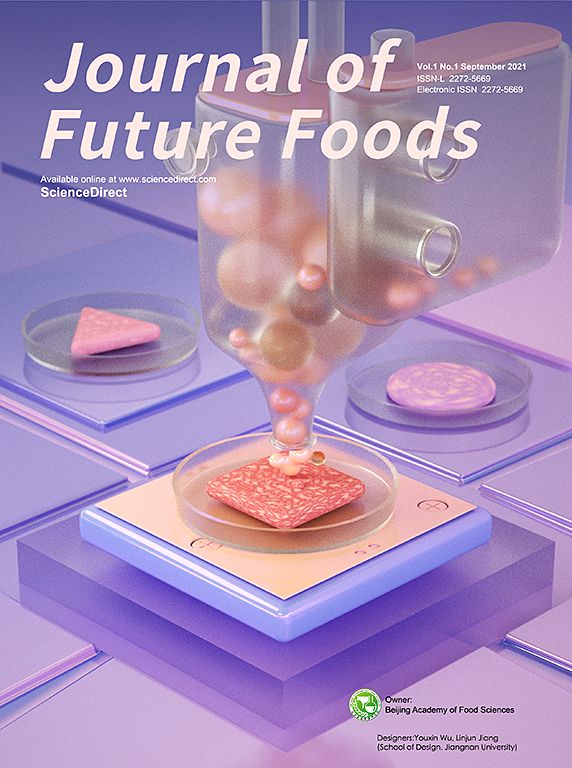
Review Article
Coconut oil has potential as a nutritional supplement for treating Alzheimer’s disease, due to its medium chain fatty acids and antioxidant properties.
Sandupama P, Munasinghe D, Jayasinghe M

Systematic Review
Acupuncture can be effective and safe for primary trigeminal neuralgia. Five acupuncture methods were superior to conventional medicine (carbamazepine) in pain reduction intensity and response rate.
Yin Z, Wang F, Sun M, Zhao L, Liang F

Systematic Review
Traditional Chinese medicine, including acupuncture, can provide superior pain relief and faster recovery for HIV-related Herpes Zoster compared to regular drugs.
Jiang Y, Zheng RX, Yu ZY, Zhang XW, Li J, Lan HD, Qiao SY, Han M, Cao HJ, Robinson N, Liu JP

Cohort Study
Moderate consumption of fish, particularly oily fish, may decrease rheumatoid arthritis risk, potentially countering the increased risk induced by smoking.
Nguyen Y, Salliot C, Mariette X, Boutron-Ruault MC, Seror R
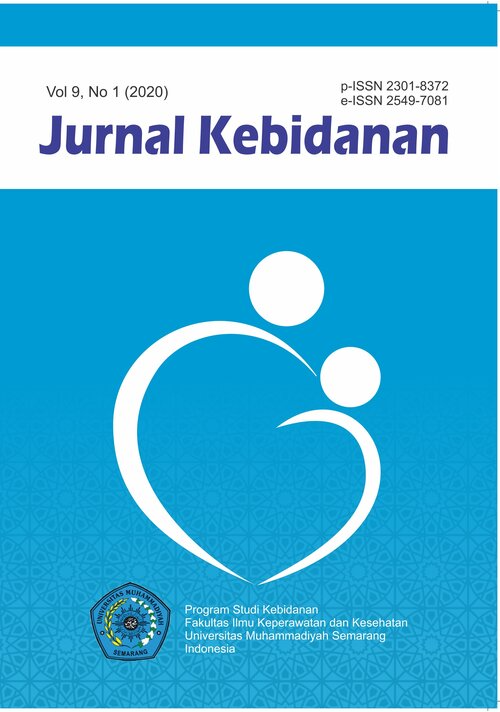
Clinical Study
Lavender aromatherapy is more effective in reducing pain intensity during active Phase I labor than lemon aromatherapy.
Lestari CI, Amilia R, Rospia ED
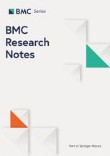
Randomised Controlled Trial
The intake of date palm enhances the sexual function in infertile couples.
Jahromi AR, Mosallanezhad Z, Hosini FS, Jamali S, Sharifi N

Review Article
Cherry juice, when consumed several days before exercise, hastens muscle function recovery post-exercise, making it a valuable 'precovery' intervention.
McHugh MP

Review Article
Modern extraction techniques improve the extraction of bioactive compounds from black soybeans, which have potential use in functional foods and nutraceutical components.
Kumar M, Suhag R, Hasan M, Dhumal S, Radha , Pandiselvam R, Senapathy M, Sampathrajan V, Punia S, Sayed AAS, Singh S, Kennedy JF

Systematic Review
Higher consumption of coffee and specifically decaffeinated coffee raises the risk of rheumatoid arthritis, while caffeinated coffee, tea and caffeine intake doesn't.
Asoudeh F, Dashti F, Jayedi A, Hemmati A, Fadel A, Mohammadi H
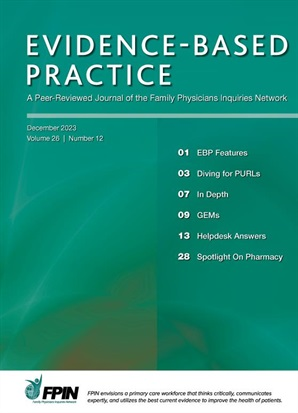
Randomised Controlled Trial
Chamomile was found to be less effective than mefenamic acid for relieving cyclic menstrual pain.
Alcaraz EM, Laumbach SG, Amico J
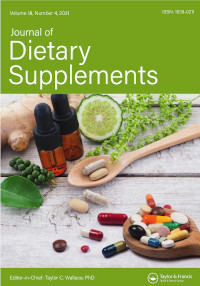
Randomised Controlled Trial
The proprietary herbal blend LN18178 significantly boosts testosterone levels, muscle strength and mid-upper arm circumference in young, healthy males.
Sreeramaneni PGA, Yalamanchi A, Konda MR, Cherukuri SHV, Maroon JC

Review Article
Ginger, peppermint and caraway oil combination showed strong effectiveness in managing upper gastrointestinal complaints, with melatonin and marine alginate demonstrating moderate evidence.
Schulz RM, Ahuja NK, Slavin JL
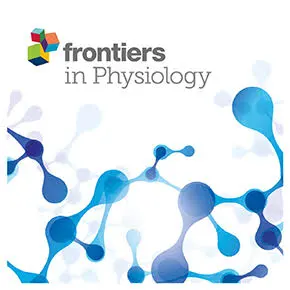
Systematic Review
Moxibustion, a form of traditional Chinese medicine, appears to be an effective and safe treatment for knee osteoarthritis.
Yin S, Zhu F, Li Z, Che D, Li L, Feng J, Zhang L, Huo Z

Systematic Review
Raspberry consumption can help to reduce blood glucose levels and stabilize the blood lipid profile due to its bioactive compounds.
Piña-Contreras N, Martínez-Moreno AG, Ramírez-Anaya JDP, Espinoza-Gallardo AC, Valdés EHM
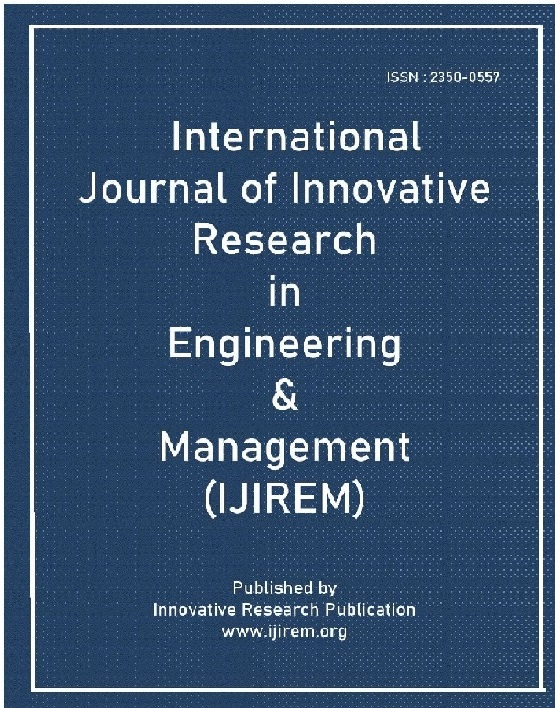
Review Article
Carrots, rich in carotenoids, flavonoids, and vitamins, have numerous health benefits including antioxidants, immune enhancement, and anti-cancer properties.
Varshney K, Mishra K

Systematic Review
Acupuncture may be effective and safe for short-term pain reduction and functional improvement in hand-and-wrist conditions.
Trinh K, Zhou F, Belski N, Deng J, Wong CY
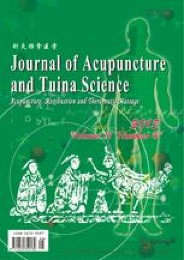
Clinical Study
The combination of Tuina (Chinese therapeutic massage) and Shen Ling Bai Zhu San is more effective in treating pediatric diarrhea due to spleen deficiency than Shen Ling Bai Zhu San alone.
Li J

Systematic Review
Plums, specifically European and Japanese species, exhibit anti-inflammatory and antioxidant properties that may be used for the treatment and prevention of cancer.
Bahrin AA, Moshawih S, Dhaliwal JS, Kanakal MM, Khan A, Lee KS, Goh BH, Goh HP, Kifli N, Ming LC

Randomised Controlled Trial
Four weeks' treatment with pomegranate supplement greatly helps in alleviating menopausal symptoms and enhancing the quality of life in menopausal women.
Adel-Mehraban MS, Tansaz M, Mohammadi M, Yavari M
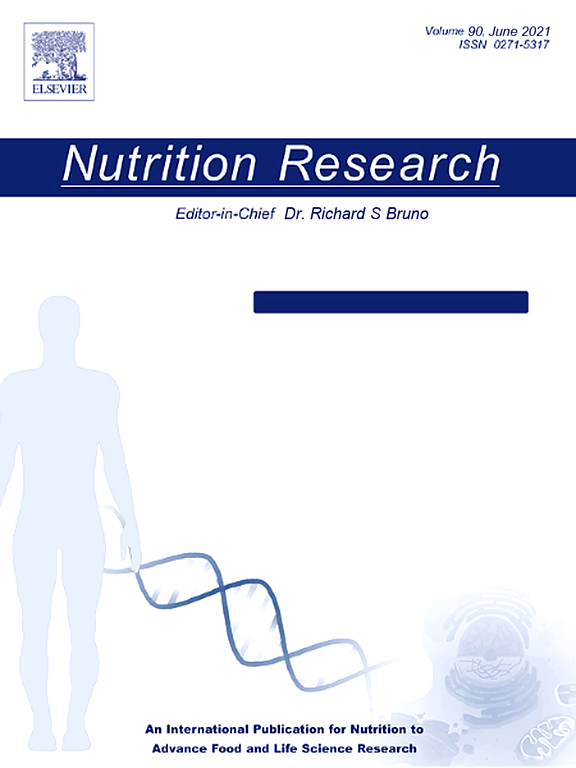
Cohort Study
Tree nut consumption is inversely associated with the prevalence of hyperestrogenism and circulating estradiol levels in men.
Wang Y, Fang Y

Network Pharmacology
The Gui Zhi-Shao Yao herb pair in traditional Chinese medicine potentially treats chronic pain, anxiety, and depression through interactions with nine key targets.
Pan HT, Xi ZQ, Wei XQ, Wang K

Review Article
Equol, a powerful estrogen-like compound derived from soy, could be key to better health in postmenopausal women if gut microbiome could be altered to facilitate its production.
Leonard LM, Choi MS, Cross TWL
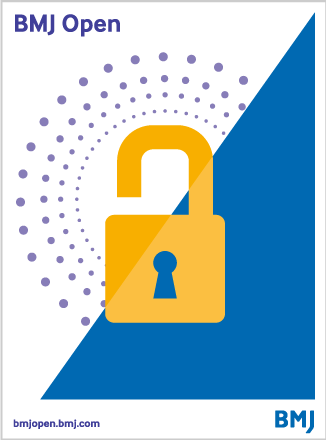
Cohort Study
Vitamin D and Omega 3 fatty acids supplementation appears to reduce the risk of autoimmune diseases.
Hahn J, Cook NR, Alexander EK, Friedman S, Walter J, Bubes V, Kotler G, Lee IM, Manson JAE, Costenbader KH

Systematic Review
Xiao Yao San can improve symptoms and reduce recurrence rates in patients with disorders of gut-brain interaction.
Liu Q, Shi Z, Zhang T, Jiang T, Luo X, Su X, Yang Y and Wei W

Experimental Study
Iron deficiency promotes a shift towards a more glycolytic metabolism, without detectable effect on mitochondrial bioenergetics, which can be corrected with iron supplements.
Frise MC, Holdsworth DA, Johnson AW, Chung YJ, Curtis MK, Cox PJ, Clarke K, Tyler DJ, Roberts DJ, Ratcliffe PJ, Dorrington KL, Robbins PA

Systematic Review
Consumption of sesame seeds and its products positively influences human glucose metabolism, potentially making it a beneficial addition to glucose-lowering diets.
Sohouli MH, Haghshenas N, Hernández‐Ruiz , Shidfar F

Meta-Analysis
Cinnamon is a safe therapeutic agent without significant adverse effects based on systematic reviews and meta-analyses.
Gu DT, Tung TH, Jiesisibieke ZL, Chien CW, Liu WY
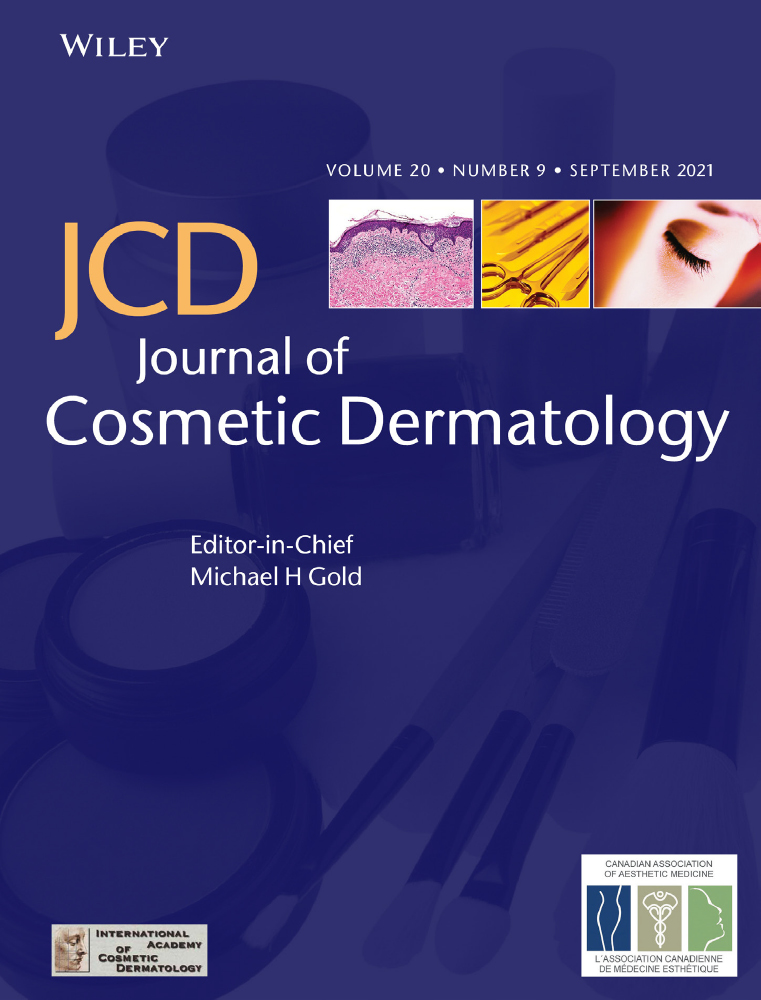
Clinical Study
Daily oral consumption of one avocado enhances the elasticity and firmness of the facial skin in healthy women.
Henning SM, Guzman JB, Thames G, Yang J, Tseng CH, Heber D, Kim J, Li Z
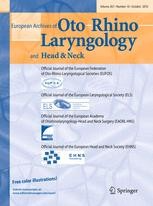
Randomised Controlled Trial
Alginate, as a treatment option for laryngopharyngeal reflux, is equally effective as proton pump inhibitors and may serve as a potential alternative treatment.
Pizzorni N, Ambrogi F, Eplite A, Rama S, Robotti C, Lechien J, Schindler A

Review Article
Acupuncture can regulate both innate and adaptive immunity of IBD patients, including the balance of Th17/Treg and Th1/Th2 cells, and also modulate intestinal flora.
Liu Z, Jiao Y, Yu T, Wang H, Zhang Y, Liu D, Xu Y, Guan Q, Lu M

Systematic Review
High prevalence of insomnia, anxiety, and depression among perimenopausal women, emphasizing the importance of exploring acupuncture as a potential green therapy for effectively addressing these interconnected issues.
Ping Y, Liang C, Fan X, Zhang L, Ying D, Wang Z

Randomised Controlled Trial
Lemon juice boosts gastric secretions and emptying rate, and reduces blood sugar response to starchy food, potentially due to acid-inhibition of digestion enzyme in saliva.
Freitas D, Boué F, Benallaoua M, Airinei G, Benamouzig R, Lutton E, Jourdain L, Dubuisson RM, Maître X, Darrasse L, Le Feunteun S

Review Article
Curcumin, a spice used in Indian cooking, shows potential therapeutic effects in various retinal diseases, including during the COVID era.
Chandrasekaran PR, Madanagopalan VG

Systematic Review
Mao Xu Cao has shown potential in treating diabetes and its complications by influencing metabolic processes and displaying antioxidant and anti-inflammatory properties.
Wang Q, Wang J, Li N, Liu J, Zhou J, Zhuang P, Chen H

Experimental Study
PIASCLEDINE-ExpASU®, a type of avocado/soybean unsaponifiable product, displays superior pharmacological activity due to its unique composition, including a high inhibitory effect on pro-inflammatory factors.
Lambert C, Bellemère G, Boyer G, Ponelle F, Bauer T, Legeny MC, Baudouin C, Henrotin Y

Cohort Study
Increased plasma omega-3 levels, which are associated with genetically higher intake of omega-3, contribute to a higher risk of rheumatoid arthritis among people of European ancestry.
Zhu G, Zhou S, Xu Y, Gao R, Li H, Zhai B, Liu X, He Y, Wang X, Han G, Su W, Wang R

Review Article
Goji berries, notably their polysaccharides, exhibit protective effects against inflammatory bowel disease through the preservation of healthy gut microbiota.
Sun Q, Du M, Kang Y, Zhu MJ

Review Article
Morinda citrifolia (Noni) exhibits potential therapeutic activities for treating central nervous system disorders by targeting mainly receptors, enzyme transporters, and has neuroprotective activity.
Asiya Begum, Vijayapandi Pandy, Jithendra Chimakurthy, Rama Rao Nadendla

Experimental Study
Si Wu Tang has improved menstrual symptoms by increasing estradiol content and antioxidative effects as a result of its herbs' synergistic relationships.
Guan-Cheng Huang, Yi-Zhe Tsai, Chia-Jung Lee, Heng-Yu Chang, Ching-Chiung Wang

Cohort Study
The majority of reproductive age women with endometriosis in Taiwan use traditional Chinese medicine, specifically Gui Zhi Fu Ling Wan, to relieve related symptoms.
Ruei-Chi Fang, Yueh-Ting Tsai, Jung-Nien Lai, Chia-Hao Yeh, Chien-Tung Wu
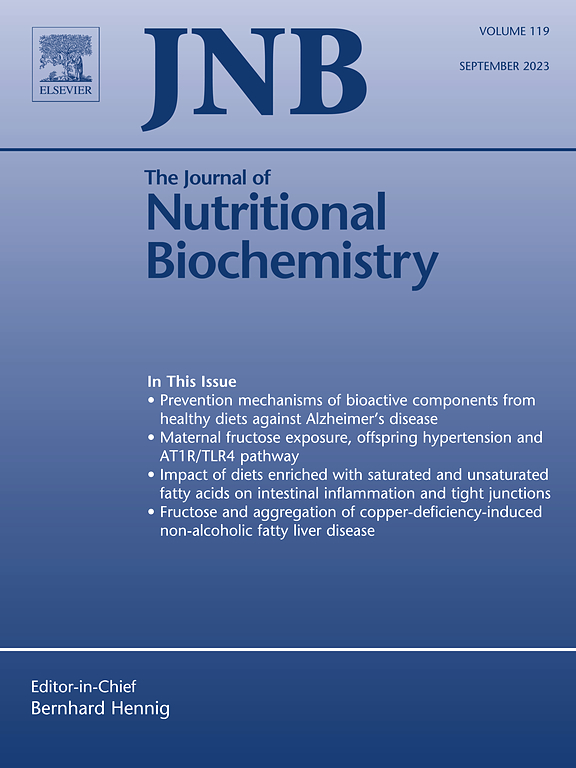
Randomised Controlled Trial
Dark chocolate exerts prebiotic effects and may improve negative emotional states via the gut-brain axis.
Shin JH, Kim CS, Cha L, Kim S, Lee S, Chae S, Chun WY, Shin DM
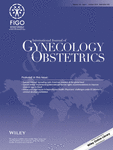
Systematic Review
Numerous complementary treatments have been used to alleviate the symptoms of endometriosis, but only acupuncture has demonstrated a significant improvement in outcomes.
Ticiana A.A. Mira, Mariana M. Buen, Murilo G. Borges, Daniela A. Yela, Cristina L. Benetti-Pinto

Systematic Review
Adding Du Huo Ji Sheng Decoction on bisphosphonate medications seems to be an effective and safe strategy in treating patients with osteoporosis.
Huang CY, Cheng CJ, Chiou WF, Chang WC, Kang YN, Lee MH
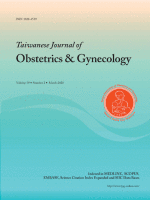
Animal Study
Combining traditional Chinese medicine Guizhi Fuling Wan with western hormonal therapies can potentially reduce their individual effectiveness in treating endometriosis.
Chen CC, Huang CY, Shiu LY, Yu YC, Lai JC, Chang CC, Fu CF, Huang SJ

Systematic Review
Noni, a medicinal plant, has illustrated diverse anticancer properties across different cancer models through numerous mechanisms including antitumor and immunomodulatory activities.
Chanthira Kumar H, Lim XY, Mohkiar FH, Suhaimi SN, Mohammad Shafie N, Chin Tan TY

Meta-Analysis
Saffron intake might aid in reducing depressive symptoms but it should not be regarded as an exclusive solution for treating depression.
Musazadeh V, Zarezadeh M, Faghfouri AH, Keramati M, Ghoreishi Z, Farnam A

Experimental Study
Saffron petal extract and anthocyanins can alleviate symptoms of Polycystic Ovary Syndrome by rectifying hormonal imbalances and reducing inflammation in PCOS mice.
Moshfegh F, Balanejad SZ, Shahrokhabady K, Attaranzadeh A

Review Article
The flower of Chrysanthemum morifolium, widespread in Asia, has been discovered as a treatment for diverse diseases, including obesity, heart disease, and cancer, due to its beneficial phytoconstituents.
Pandey J, Bastola T, Dhakal B, Poudel A, Devkota HP

Review Article
Chrysanthemums, popular floricultural crops, not only hold significant ornamental value but also exhibit various therapeutic potentials including antioxidant, antimicrobial, and anticancer activities.
Hadizadeh H, Samiei L, Shakeri A
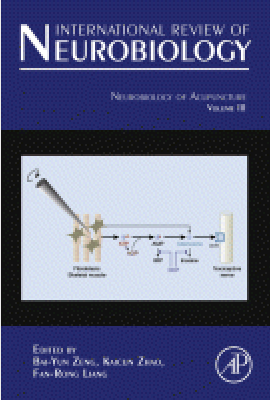
Review Article
Adzuki and Mung beans have great potential as functional foods for health promotion and disease prevention, offering an excellent source of essential nutrients and biodiversity for sustainable agriculture.
Shahrajabian MH, Sun W, Cheng Q

Randomised Controlled Trial
Chamomile can significantly improve menstrual regulation and decrease testosterone levels in women of reproductive age with polycystic ovary syndrome.
Heidary M, Dokuhaki S, Yazdanpanahi Z, Dabbaghmanesh MH, Emamghoreishi M, Akbarzadeh M
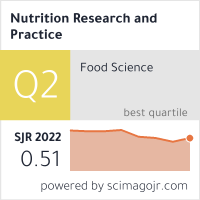
Meta-Analysis
Isoflavone supplementation noticeably impacts menopausal symptoms and hormonal changes in postmenopausal women.
Kang I, Rim CH, Yang HS, Choe JS, Kim JY, Lee M

Randomised Controlled Trial
Acupuncture is a safe and effective treatment for Seasonal Allergic Rhinitis, significantly improving symptoms without needing relief medication or causing side effects.
Xue CC, English R, Zhang JJ, Da Costa C, Li CG

Review Article
Coconut water possesses unique compound profiles that imbue it with a broad spectrum of medical properties, incorporating aspects of nutrition, pharmacology, and disease prevention.
Rethinam P, Krishnakumar V
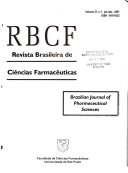
Review Article
High doses of vitamin C, vitamin D supplementation and natural honey can potentially decrease fatalities and support the management of COVID-19.
Rabby MII, Hossain F, Islam MA, Islam AKMS, Akhi IJ, Akter F

Theoretical Article
The jujube tree bears fruit endowed with substantial nutritional value and contains numerous phytochemical components with reported antioxidant, anti-cancer and neuroprotective properties.
Aafi E, Reza M, Mirabzadeh M

Systematic Review
Fresh and dried ginger displays key botanical, phytochemical and ethnopharmacological differences, which are fundamental for their specific clinical uses in treating gastrointestinal issues.
Lai W, Yang S, Lin X, Zhang X, Huang Y, Zhou J, Fu C, Li R, Zhang Z
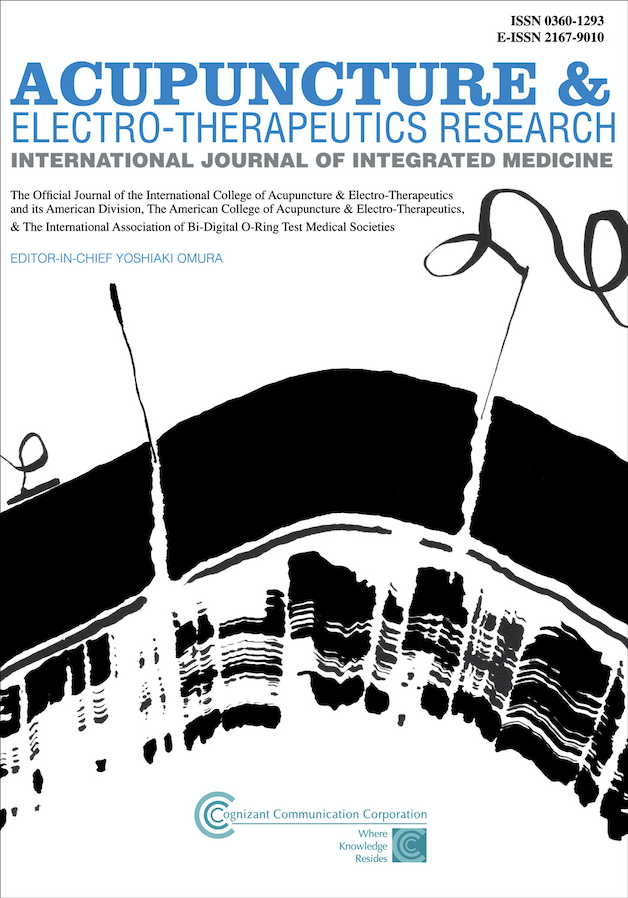
Systematic Review
Compared with conventional treatment, acupuncture as an adjuvant therapy can significantly reduce the incidence of post-stroke fatigue.
Chen Y, Peng M, Li Y
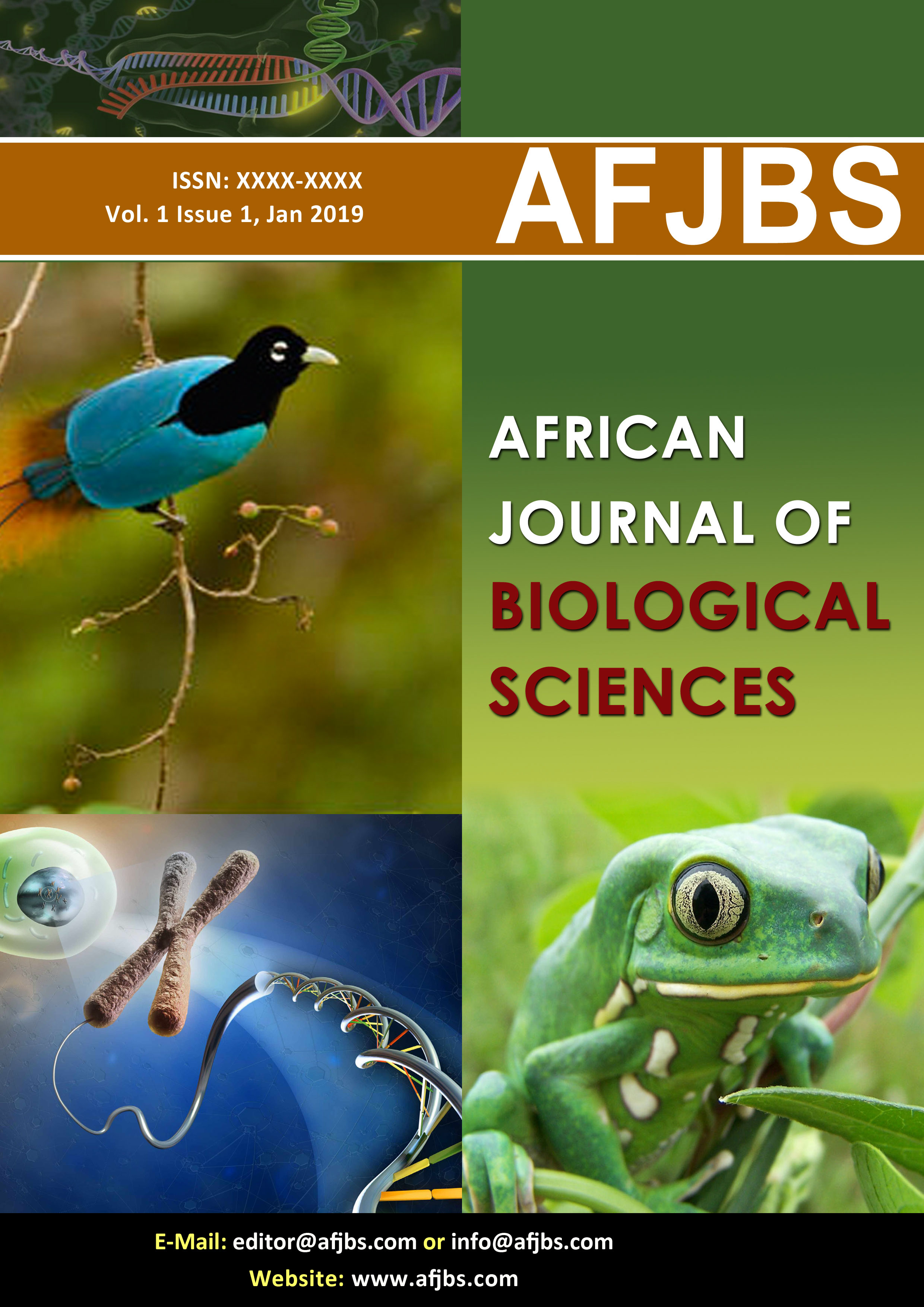
Clinical Study
Consumption of pumpkin seeds enhances the nutritional status and improves the attention deficit of deaf female children exhibiting ADHD symptoms.
Ataya H
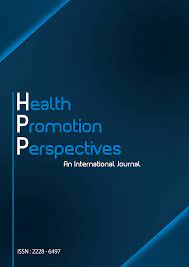
Systematic Review
Pomegranate has been confirmed to improve clinical features and reduce inflammatory, oxidative stress, and apoptosis markers in osteoarthritis.
Malek Mahdavi A, Javadivala Z
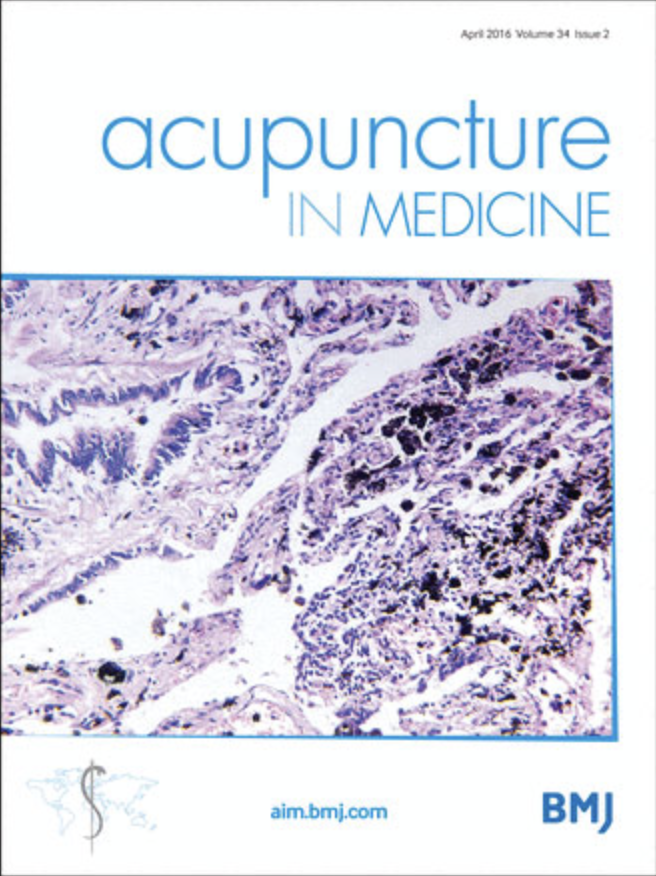
Systematic Review
Acupuncture's potential in reducing menopausal hot flush frequency compared to sham acupuncture, and its similarity in impacting hormone levels to hormone therapy.
Liu C, Wang Z, Guo T, Zhuang L, Gao X

Meta-Analysis
Tea supplements, especially green tea, significantly decrease fasting blood glucose and fasting insulin levels and reduce body weight in women with polycystic ovary syndrome.
Shen W, Pan Y, Jin B, Zhang Z, You T, Qu Y, Han M, Yuan X, Zhang Y

Experimental Study
Consuming oats significantly lessens total and LDL cholesterol levels and mediates a prebiotic effect on the gut microbiome, contributing to its cholesterol-lowering ability.
Xu D, Feng M, Chu YF, Wang S, Shete V, Tuohy KM, Liu F, Zhou X, Kamil A, Pan D, Liu H, Yang X, Yang C, Zhu B, Lv N, Xiong Q, Wang X, Sun J, Sun G, Yang Y

Randomised Controlled Trial
Regular intake of goji berries can increase Macular Pigment Optical Density, potentially helping to prevent or delay the development of age-related macular degeneration.
Li X, Holt RR, Keen CL, Morse LS, Yiu G, Hackman RM

Review Article
Fresh Hass avocados have been found to reduce cardiovascular disease risk, assist weight loss, improve cognitive function, and promote colonic microbiota health.
Dreher ML, Cheng FW, Ford NA

Systematic Review
Acupuncture displays potential as a safe and effective treatment for foot and ankle pain, providing pain relief and functional improvement.
Trinh K, Belski N, Zhou F, Kuhad A, Luk D, Youn E
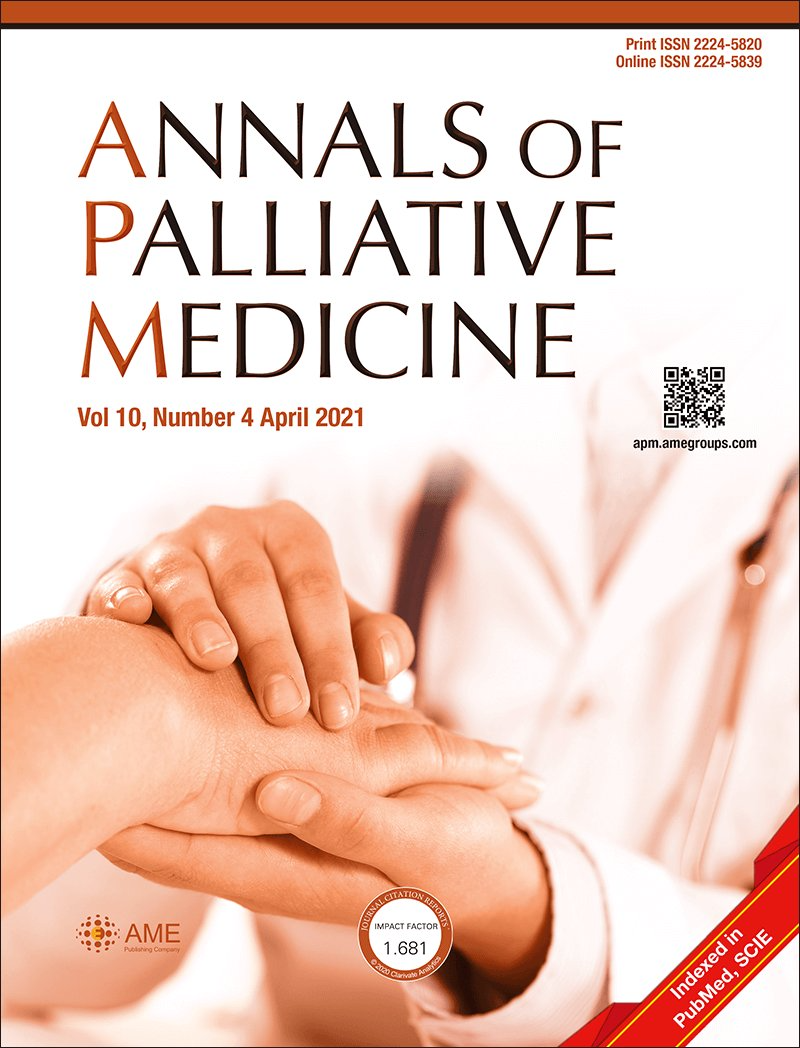
Systematic Review
Traditional Chinese Medicine shows promise in preventing cholelithiasis recurrence post lithotripsy
Li B, Lin Y, Nie B, Zhao G, Zhang X, Zhu M, Hu J, Huang P, Feng S, Qiu R, Tian G, Zhang S, Shang H

Systematic Review
Turmeric curcuminoids are associated with better pain relief than NSAIDs in knee osteoarthritis.
An-Fang Hsiao, Yi-Chieh Lien, I-Shiang Tzeng, Chien-Ting Liu, Sheng-Hsun Chou, Yi-Shiung Horng
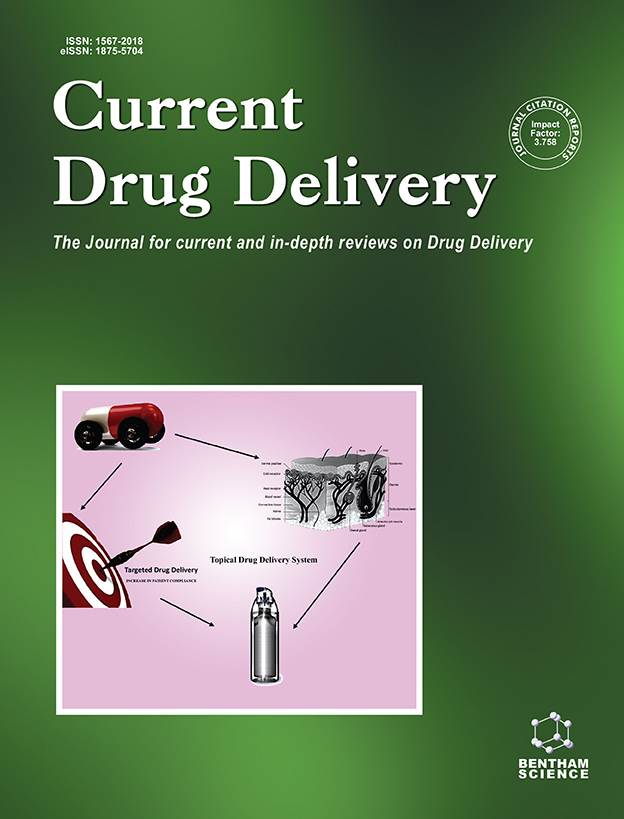
Review Article
Pomegranate juice and its bioactive components may serve as cost-effective, next-generation non-pharmacologic anticancer therapies, particularly against colorectal and prostate cancer.
Hussein L, Gouda M, Buttar HS
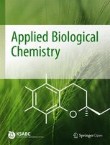
Review Article
Cinnamomum cassia, or cinnamon, exhibits promising therapeutic benefits in combating gastritis by targeting inflammation pathways, according to preclinical studies.
Lee JH, Park DH, Lee S, Seo HJ, Park SJ, Jung K, Kim SY, Kang KS
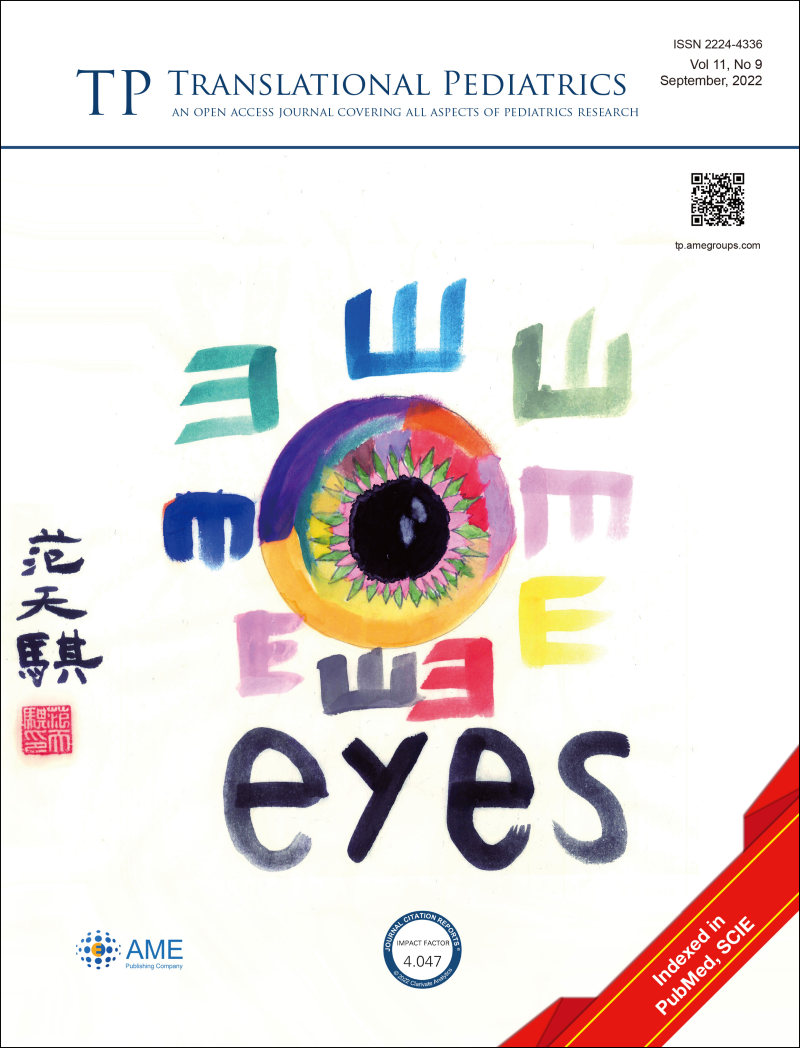
Review Article
Allergic rhinitis in children, according to traditional Chinese medicine, is interrelated with the functionality of lungs, spleen, and kidney and can be treated with combined Western and Chinese herbal medicines.
Liang J, Gu Q

Experimental Study
Cocoa bean husk, a by-product of cocoa processing, exhibits potent antioxidant and anticancer effects on prostate cancer cells due to its high phenolic compound content.
Choi J, Yang C, Lim W, Song G, Choi H

Network Pharmacology
Luteolin, a component of traditional Chinese medicine herb Zi Su Ye, has been found to alleviate kidney disease stage 3-5 by reducing renal tubular epithelial cell apoptosis.
Yong C, Zhang Z, Huang G, Yang Y, Zhu Y, Qian L, Tian F, Liu L, Wu Q, Xu Z, Chen C, Zhao J, Gao K, Zhou E

Meta-Analysis
Anti-inflammatory diets can lead to significantly lower levels of pain than regular diets for those with rheumatoid arthritis.
Schönenberger KA, Schüpfer AC, Gloy VL, Hasler P, Stanga Z, Kaegi-Braun N, Reber E

Randomised Controlled Trial
Jiawei Danggui Beimu Kushen pills were shown to be effective in treating prostate cancer, improving patients' quality of life and potentially regulating serum PSA levels.
Zhao H, Ren Z, Wang G
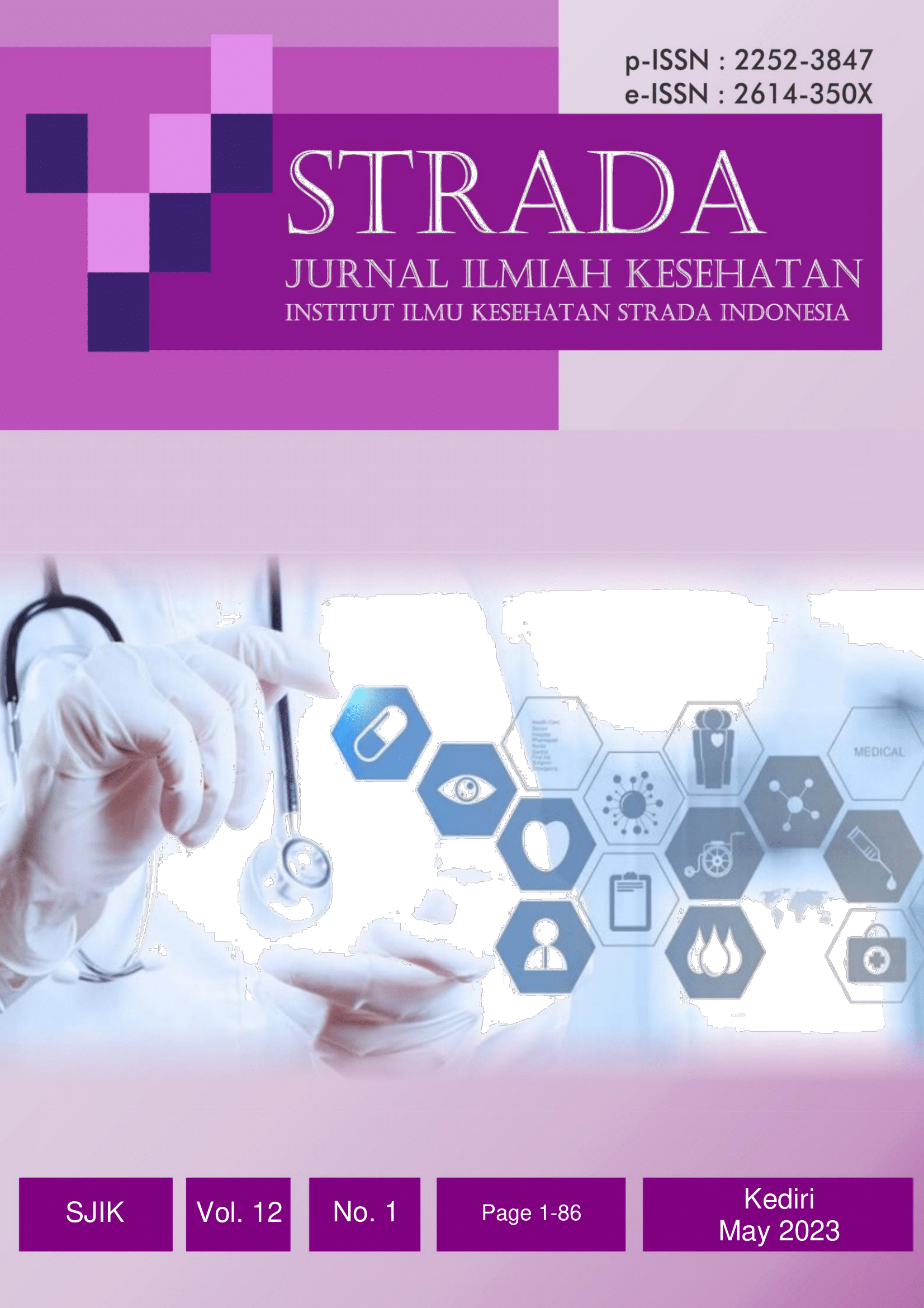
Cohort Study
Green coconut water was found to significantly reduce dysmenorrhea pain among adolescent girls.
Indrayani T, Fikria SH, Dinengsih S

Review Article
The pomegranate plant has a rich inventory of phytochemical constituents showing pharmacological efficiency in treating cardiovascular and endocrine diseases.
Eghbali S, Askari SF, Avan R, Sahebkar A

Network Pharmacology
Dang Gui Si Ni formula moderates intervertebral disc degeneration by primarily interacting with stress responses and apoptotic signaling pathways.
Wang L, Lin J, Li W

Randomised Controlled Trial
High avocado intake significantly reduces the intake of energy and various macro and micronutrients in Hispanic/Latino families.
Pacheco LS, Bradley RD, Denenberg JO, Anderson CAM, Allison MA
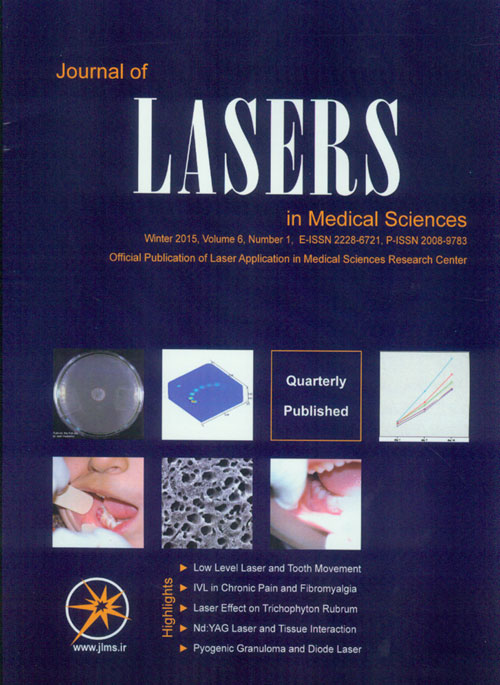
Randomised Controlled Trial
Laser acupuncture therapy might be a feasible treatment for chronic Bell's palsy and its long-term complications according to this pilot study.
Ton G, Lee LW, Ho WC, Tu CH, Chen YH, Lee YC

Review Article
Chinese herbal medicines could alleviate chronic kidney disease symptoms by combating fibrosis, inflammation, oxidative stress, and encouraging repair and regeneration.
Shao M, Ye C, Bayliss G, Zhuang S

Systematic Review
Eating kiwifruits improves bowel movements and decreases stool consistency, also providing anti-inflammatory and antioxidant benefits to the gut barrier.
Antonelli M, Donelli D
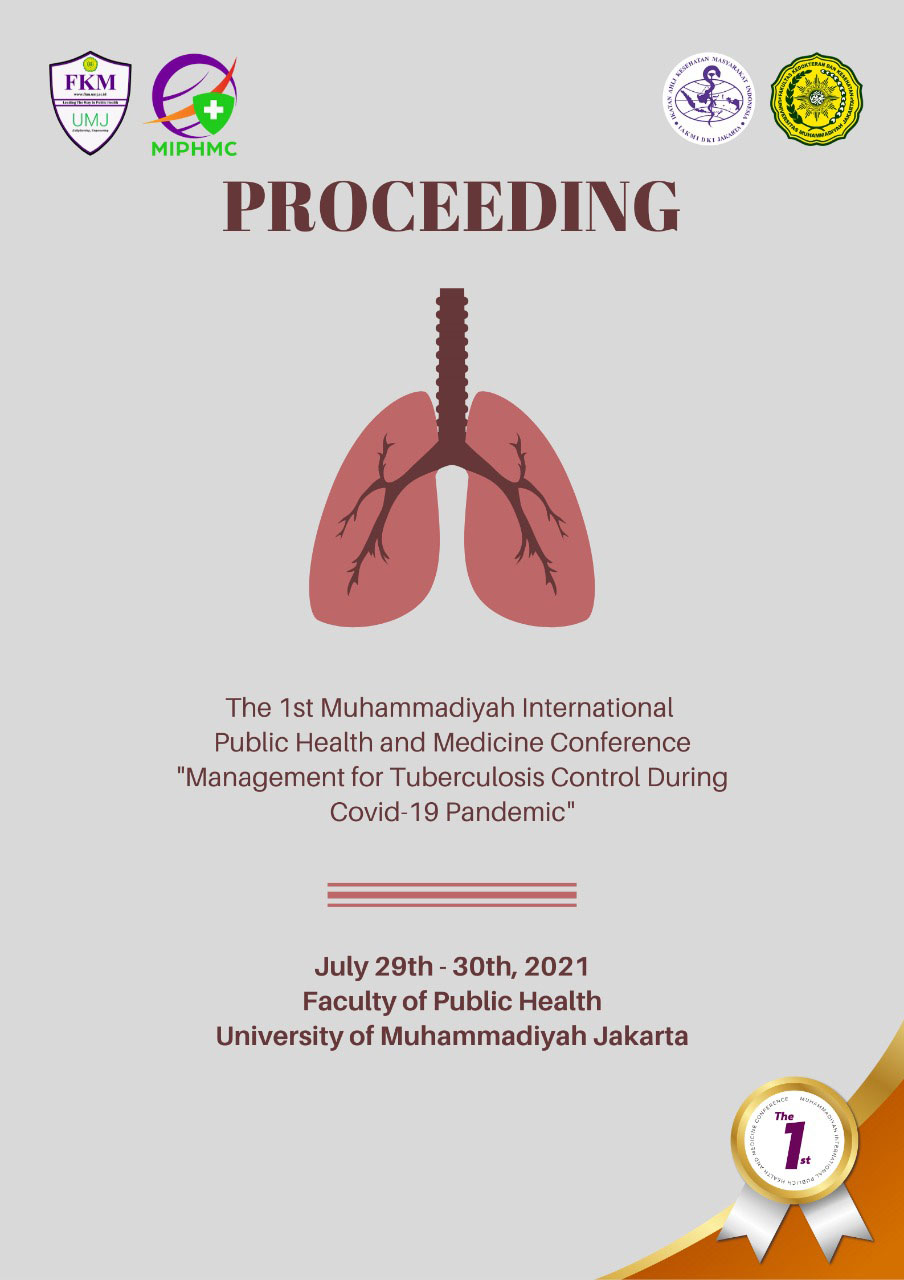
Cohort Study
Consumption of sardines can effectively prevent type 2 diabetes mellitus and hypertension, particularly in senior citizens, due to their high omega 3, EPA, and DHA content.
Nurdiana Febriyanti V

Cohort Study
Sardines are highly proven to be able to effectively prevent type 2 diabetes, prevent hypertension, and lower blood pressure, especially for senior citizens.
Nurdiana Febriyanti V

Randomised Controlled Trial
Date fruit consumption appears to be useful for promoting and increasing breast milk quantity in breastfeeding mothers. Date fruits may be an alternative galactagogue.
Modepeng T, Pavadhgul P, Bumrungpert A, Kitipichai W
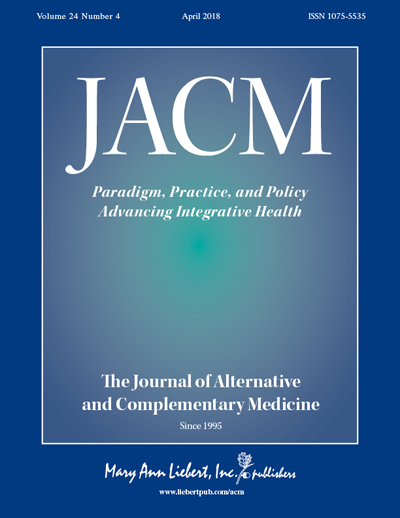
Randomised Controlled Trial
A combined treatment of soy and hop extract is a safe and effective alternative to traditional hormone replacement therapy for improving postmenopausal symptoms.
Kim HI, Kim MK, Lee I, Yun J, Kim EH, Seo SK

Randomised Controlled Trial
Auricular acupressure may be a safe and effective technique for reducing burnout and secondary traumatic stress in healthcare workers.
Afrasiabi J, McCarty R, Hayakawa J, Barrows J, Lee K, Plouffe N, Schomberg J

Systematic Review
Chinese medicine's unique immune regulation, intestinal flora regulation, and improved intestinal barrier function offer new approaches to managing chronic Inflammatory Bowel Disease.
Yang L, Luo H, Tan D, Zhang S, Zhong Z, Wang S, Vong CT, Wang Y

Systematic Review
Chinese medicine presents unique advantages in managing Inflammatory Bowel Disease (IBD) through immune regulation, intestinal flora regulation, and improvement of intestinal barrier function.
Yang L, Luo H, Tan D, Zhang S, Zhong Z, Wang S, Vong CT, Wang Y
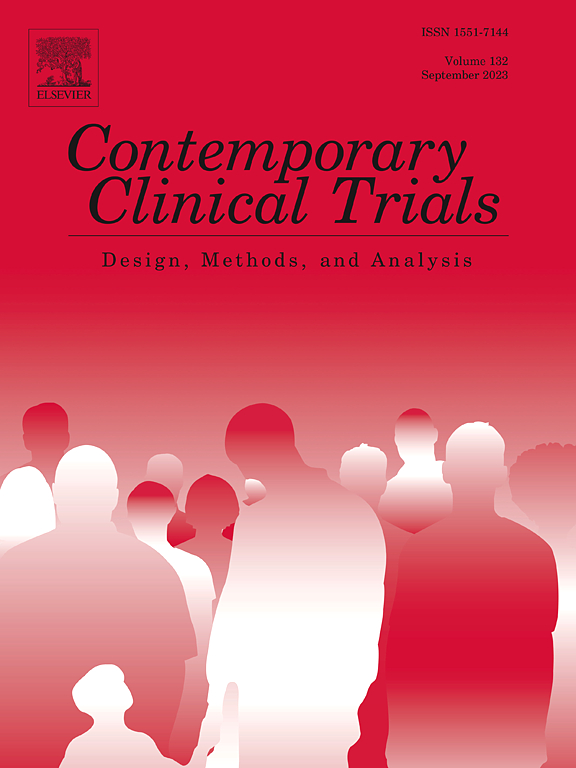
Randomised Controlled Trial
Consumption of one avocado per day can potentially reduce visceral adiposity and subsequently decrease the risk of diabetes and cardiovascular disease.
Reboussin DM, Kris-Etherton PM, Lichtenstein AH, Li Z, Sabate J, Matthan NR, Petersen K, Rajaram S, Vitolins M, Ford N
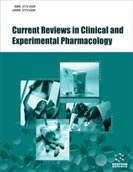
Randomised Controlled Trial
Inhalation of chamomile oil significantly reduces pain after cesarean section in first-time mothers, decreasing the need for analgesics.
Zardosht R, Basiri A, Sahebkar A, Emami SA
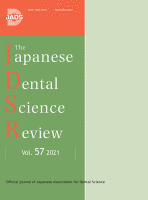
Systematic Review
Green tea treatment has shown potential in improving oral hygiene and gingival health, and reducing periodontitis and caries.
Mazur M, Ndokaj A, Jedlinski M, Ardan R, Bietolini S, Ottolenghi L

Randomised Controlled Trial
Curcumin supplements have comparable effects to placebos in alleviating symptoms of Premenstrual Syndrome and dysmenorrhea in young women.
Bahrami A, Zarban A, Rezapour H, Agha Amini Fashami A, Ferns GA

Network Pharmacology
Gui Zhi Fu Ling Wan treats adenomyosis by intervening in local estrogen signalling pathways and affecting estrogen resistance via myometrium signalling pathways.
Wang H, Zhang J, Zhu Q, Fu X, Li C

Randomised Controlled Trial
Pumpkin seed oil can alleviate symptoms of benign prostatic hyperplasia with no side effects, though not as efficiently as tamsulosin.
Zerafatjou N, Amirzargar M, Biglarkhani M, Shobeirian F, Zoghi G

Cohort Study
The consumption of avocado is associated with better cognitive function in older adults.
Cheng FW, Ford NA, Taylor MK

Clinical Study
Consuming soymilk-honey fermented with a specific type of probiotic significantly reduces osteocalcin levels, which may impact bone health in postmenopausal women.
Desfita S, Sari W, Yusmarini Y, Pato U, Zakłos-Szyda M, Budryn G

Systematic Review
Cinnamon supplementation may significantly enhance metabolic status in women with polycicstic ovary syndrome, notably improving high-density lipoprotein and insulin sensitivity, and decreasing low-density lipoprotein, triglyceride, and blood glucose levels.
Maleki V, Faghfouri AH, Tabrizi FPF, Moludi J, Saleh-Ghadimi S, Jafari-Vayghan H, Qaisar SA

Systematic Review
Acupuncture, either alone or combined with antidepressants can effectively treat depression, and offers faster onset and longer-lasting efficacy compared to antidepressants.
Zhang Z, Li S, Meng H, Wang Y, Zhang Y, Wu M, Chen Y, Rong P, Wang Y

Experimental Study
Tiger nut and walnut supplementation in diets can improve testosterone levels and help control vasoconstriction, potentially benefiting hypertensive individuals.
Olabiyi AA, Morsch VM, Oboh G, Schetinger MRC

Review Article
Green tea and its component EGCG, demonstrate potential as a treatment for endometriosis by inhibiting growth, invasion, adhesion and angiogenesis.
Chen X, Man GCW, Hung SW, Zhang T, Fung LWY, Cheung CW, Chung JPW, Li TC, Wang CC

Review Article
Acne, primarily influenced by fluctuating hormone levels, may be effectively treated using acupuncture, an ancient technique that tackles the deep-rooted mechanisms crucial to acne development.
Chun‐Yan C, Guang‐yao X, Yan‐yan S, Ming‐Shu X, Peng L

Review Article
Recent findings suggest that the molecular background to the development of insulin resistance may be related to vitamin D deficiency.
Contreras-Bolívar V, García-Fontana B, García-Fontana C, Muñoz-Torres M

Review Article
Cocoa, including its often discarded shell, has promising potential in providing benefits to human health due to its high content of health-boosting phytochemicals.
Cinar Z, Atanassova M, Tumer TB, Caruso G, Antika G, Sharma S, Sharifi-Rad J, Pezzani R
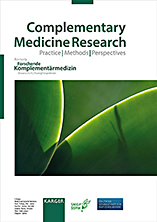
Systematic Review
Acupuncture treatment offers significant benefits for herpes zoster patients, including reduced pain intensity and faster healing times.
Cui Y, Wang F, Li H, Zhang X, Zhao X, Wang D

Review Article
Acupuncture therapy could potentially serve as an effective supplementary treatment method for psoriasis.
Jing M, Shi L, Zhang Y, Zhu M, Yuan F, Zhu B, Chen M, Ge X
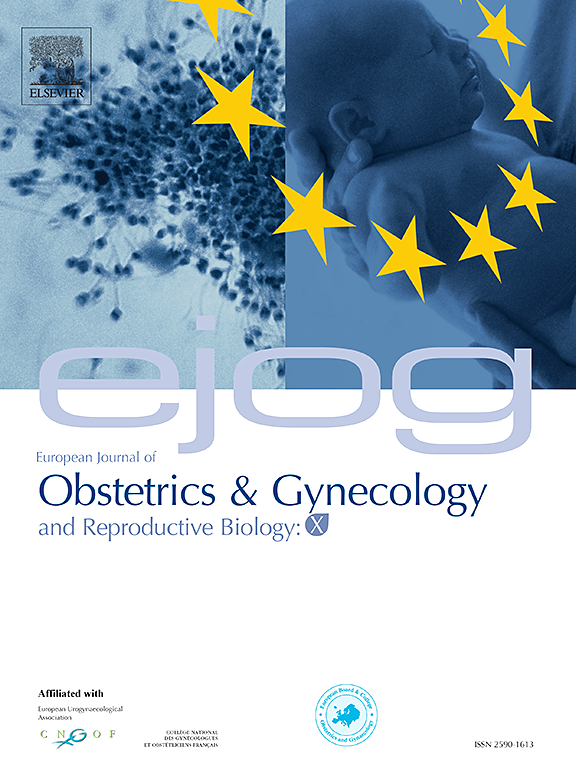
Randomised Controlled Trial
Chamomile capsules prove effective in reducing emotional symptoms related to menstrual cycles.
Najafi Mollabashi E, Ziaie T, Bostani Khalesi Z
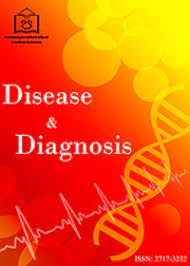
Review Article
Lavender aromatherapy, whether administered through massage or inhalation, appears effective in reducing active phase labor pain.
Hatami Rad R

Systematic Review
Caffeine consumption does not seem to be associated with an increased risk of endometriosis overall, higher caffeine intake may be linked to an elevated risk, and more research is required to understand this potential dose-dependent relationship and account for unidentified biases.
Kechagias KS, Katsikas Triantafyllidis K, Kyriakidou M, Giannos P, Kalliala I, Veroniki AA, Paraskevaidi M, Kyrgiou M

Systematic Review
Almond-based diets may be effective in promoting short-chain fatty acid-producing bacteria and lowering glycated haemoglobin and body mass index in patients with type 2 diabetes compared with control.
Ojo O, Wang XH, Ojo OO, Adegboye ARA

Clinical Study
Consumption of green tea enriched with a citrus polyphenol, α-glucosyl hesperidin, can prevent weight gain and reduce body mass index, especially in individuals under 50 years.
Yoshitomi R, Yamamoto M, Kumazoe M, Fujimura Y, Yonekura M, Shimamoto Y, Nakasone A, Kondo S, Hattori H, Haseda A, Nishihira J, Tachibana H
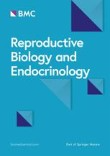
Systematic Review
Green tea extract could be considered a potential agent to attenuate PCOS complications mainly due to its effect on weight loss and glycemic levels.
Maleki V, Taheri E, Varshosaz P, Tabrizi FPF, Moludi J, Jafari-Vayghan H, Shadnoush M, Jabbari SHY, Seifoleslami M, Alizadeh M
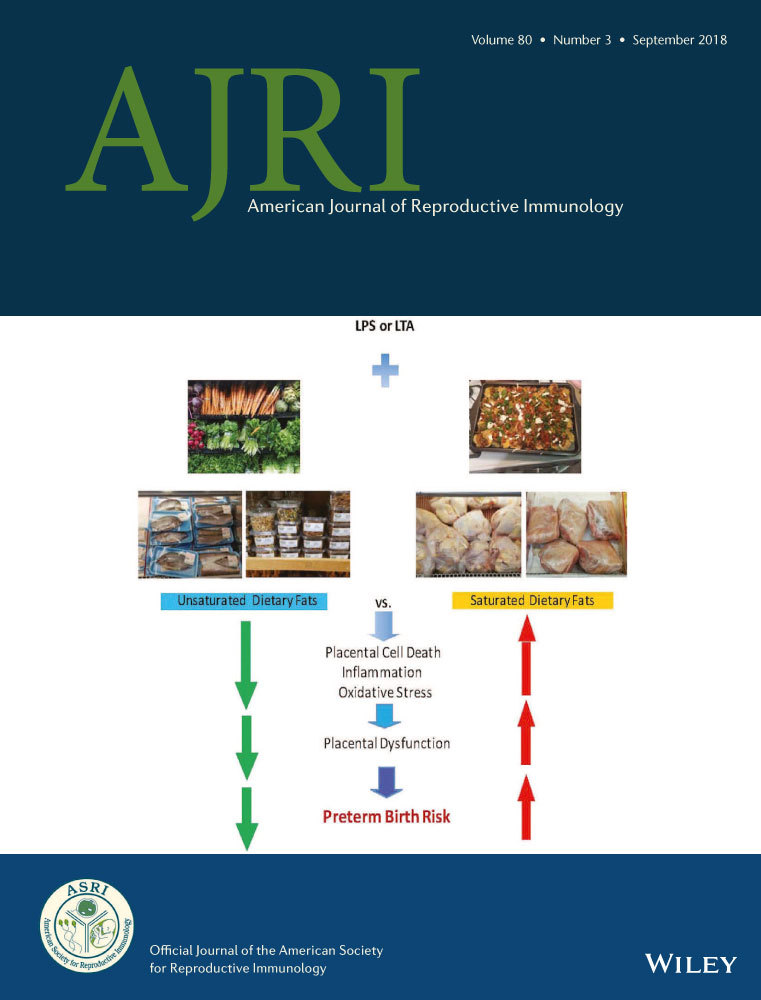
Clinical Study
Chlamydia trachomatis infection, particularly when causing fallopian tube obstruction, may decrease the risk of developing endometriosis in women.
Khan KN, Fujishita A, Kitajima M, Ishimaru T, Ogawa K, Koshiba A, Mori T, Kitawaki J

Systematic Review
Soy food intake, particularly fermented soy products, appear to have a protective effect on fracture risk among Asian women, especially in early menopause.
Akhavan Zanjani M, Rahmani S, Mehranfar S, Zarrin M, Bazyar H, Moradi Poodeh B, Zare Javid A, Hosseini SA, Sadeghian M

Animal Study
Adzuki beans, when added to a high-fat diet, lessen obesity, improve liver function, enhance insulin sensitivity, and balance gut microbiota.
Zhao Q, Hou D, Fu Y, Xue Y, Guan X, Shen Q

Experimental Study
Co-fermentation of Ganpu tea with Chachi peel alters its chemical profile, reducing certain compounds while increasing others, thus enhancing its unique flavor.
Xu Y, Liang PL, Chen XL, Gong MJ, Zhang L, Qiu XH, Zhang J, Huang ZH, Xu W

Systematic Review
Coffee extract supplementation significantly improves parameters of metabolic syndrome, with the effects varying according to the types and doses of coffee administered.
Ramli NNS, Alkhaldy AA, Mhd Jalil AM

Cohort Study
Intermittent fasting during Ramadan can lead to rapid improvement of rheumatoid arthritis activity, with positive effects lasting up to three months.
Ben Nessib D, Maatallah K, Ferjani H, Triki W, Kaffel D, Hamdi W

Randomised Controlled Trial
Pomegranate extract supplement shows potential in improving glycemic indicators, serum lipids, anthropometrics, and blood pressure in patients with nonalcoholic fatty liver disease.
Goodarzi R, Jafarirad S, Mohammadtaghvaei N, Dastoorpoor M, Alavinejad P

Review Article
Yu Xing Cao, a traditional Asian medicine, demonstrates organ protection, immune regulation, and anti-tumour activity when analysed in modern research.
Wu Z, Deng X, Hu Q, Xiao X, Jiang J, Ma X, Wu M

Animal Study
Shen Ling Bai Zhu San was found to inhibit inflammatory damage in nonalcoholic fatty liver disease, thus offering potential as a preventive and therapeutic treatment.
Pan M, Zheng C, Deng Y, Tang K, Nie H, Xie J, Liu D, Tu G, Yang Q, Zhang Y
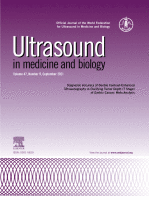
Randomised Controlled Trial
A new method for assessing the effects of therapies on atherosclerosis shows that pomegranate juice/extract has a significant influence on carotid vessel-wall-plus-plaque thickness.
Zhao Y, Spence JD, Chiu B

Cohort Study
The body begins to upregulate iron absorption at a ferritin concentration of less than 50 µg/L, indicating an incipient iron deficiency in young women.
Galetti V, Stoffel NU, Sieber C, Zeder C, Moretti D, Zimmermann MB

Clinical Study
Administering a broad-spectrum antibiotic with or without gonadotropin releasing hormone agonist reduced uterine infection and decreased tissue inflammation, cell proliferation, and angiogenesis in women with endometriosis.
Khan KN, Fujishita A, Muto H, Masumoto H, Ogawa K, Koshiba A, Mori T, Itoh K, Teramukai S, Matsuda K, Nakashima M, Kitawaki J
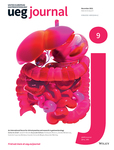
Randomised Controlled Trial
Small-intestinal release peppermint oil is a cost-effective treatment for Irritable Bowel Syndrome, yielding modest quality of life gains and relieving abdominal pain.
Weerts ZZRM, Essers BAB, Jonkers DMAE, Willems JIA, Janssen DJPA, Witteman BJM, Clemens CHM, Westendorp A, Masclee AAM, Keszthelyi D

Review Article
Coffee consumption may contribute to the prevention of several inflammatory diseases and types of cancer, with reduced mortality risk deemed safe up to 400mg of caffeine per day.
Barrea L, Pugliese G, Frias-Toral E, El Ghoch M, Castellucci B, Chapela SP, Carignano MA, Laudisio D, Savastano S, Colao A, Muscogiuri G

Systematic Review
Treatment of rheumatoid arthritis using acupuncture with Western medicine was associated with higher efficacy and lower risks than treatment with Western medicine alone.
Huo X, Liang L, Ding X, Bihazi A, Xu H

Cohort Study
Stroke patients who received acupuncture had a lesser risk of insomnia across various demographic and medical variables.
Qiu X, Han NS, Yao JX, Yu FR, Lin YY, Zhuang X
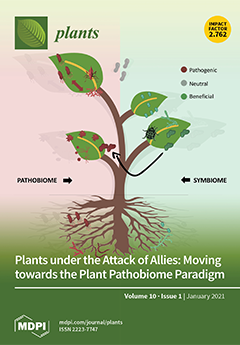
Network Pharmacology
A combination of extracts from chrysanthemum were found to be more effective in treating hyperuricemia and potentially developing anti-hyperuricemic functional foods.
Kim OK, Yun JM, Lee M, Kim D, Lee J
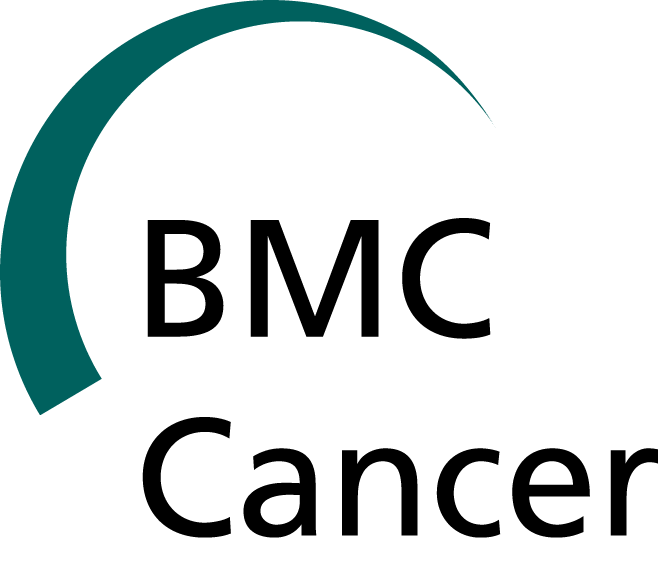
Systematic Review
D-Limonene, a bioactive compound found in citrus peels, shows potential anticancer activity and is better tolerated in breast cancer patients compared to its derivative perillyl alcohol.
Chebet JJ, Ehiri JE, McClelland DJ, Taren D, Hakim IA

Review Article
With a multi-ingredient and multi-target-pathway pharmacological action, Chinese medicine compounds are compatible with the complex pathogenesis of nonalcoholic fatty liver disease to mitigate it.
Dai X, Feng J, Chen Y, Huang S, Shi X, Liu X, Sun Y

Experimental Study
The Licorice and Jujube formula is seen as commonly used and potentially effective for treating menopausal symptoms as per classical Chinese medicine.
Coyle ME, Liu J, Yang H, Wang K, Zhang AL, Guo X, Lu C, Xue CC

Systematic Review
Drinking coffee may be linked to lower mortality risk in type 2 diabetes patients.
Shahinfar H, Jayedi A, Khan TA, Shab-Bidar S

Review Article
Pu-erh tea, with its complex components, interacts greatly with gut microbiomes and holds significant potential for healthcare applications.
Liu JY, He D, Xing YF, Zeng W, Ren K, Zhang C, Lu Y, Yang S, Ou SJ, Wang Y, Xing XH

Experimental Study
Zeaxanthin dipalmitate, a wolfberry-derived carotenoid, can delay retinal degeneration in mice modelling Retinitis Pigmentosa mainly through its anti-inflammatory and oxidative stress effects.
Liu F, Liu X, Zhou Y, Yu Y, Wang K, Zhou Z, Gao H, So KF, Vardi N, Xu Y

Systematic Review
Chinese herbal medicine presents beneficial effects in controlling disease activity and lowering glucocorticoid dosage in systemic lupus erythematosus patients.
Wang Y, Han M, Pedigo CE, Xie Z, Wang W, Liu J

Systematic Review
Acupuncture is an effective approach for hyperemesis gravidarum and has a great potential to mitigate ketonuria, ease nausea and vomiting, increase food intake, and shorten the hospital stay.
Haizhen Lu, Chengwen Zheng, Yanmei Zhong, Linhao Cheng, Yi Zhou
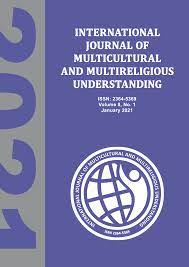
Randomised Controlled Trial
Combined exercise and coffee consumption significantly reduce fasting blood sugar and abdominal obesity in middle-aged, pre-diabetic men.
Taheri AR, Talebi N

Randomised Controlled Trial
Peppermint oil and a placebo both exhibited substantial improvement in relieving symptoms of irritable bowel syndrome, without any significant differences between them.
Nee J, Ballou S, Kelley JM, Kaptchuk TJ, Hirsch W, Katon J, Cheng V, Rangan V, Lembo A, Iturrino J

Systematic Review
A variety of Chinese herbal medicines have been reported to effectively prevent or treat nonalcoholic fatty liver disease by regulation of the gut microbiota and the gut-liver axis.
Yang XF, Lu M, You L, Gen H, Yuan L, Tian T, Li CY, Xu K, Hou J, Lei M

Review Article
The autophagic-regulatory effects of Chinese herbal medicine are potentially therapeutic for allergic inflammatory diseases such as asthma.
Zhang Yun, Wang Xing, Zhang He, Tang Hongmei, Hu Hang, Wang Songping, Wong Vincent Kam Wai, Li Yuying, Deng Jun
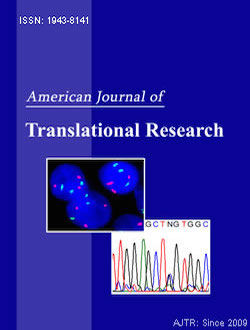
Randomised Controlled Trial
Using a combined treatment of modified Buzhong Yiqi decoction and Gangtai ointment improves wound healing and anal function for circumferential mixed hemorrhoid patients.
Lu B, Du J, Wu X

Review Article
Curcumin, derived from turmeric, exhibits an extensive range of biological and medicinal properties, including anti-inflammatory, antioxidant, and antifungal qualities.
Abd El‐Hack ME, El‐Saadony MT, Swelum AA, Arif M, Abo Ghanima MM, Shukry M, Noreldin A, Taha AE, El‐Tarabily KA

Animal Study
Pumpkin extract exhibits potential antidepressant effects similar to fluoxetine and ameliorates biochemical and structural changes in rat brains resulting from chronic stress.
Ayuob N, Shaker SA, Hawuit E, Al-Abbas N, Shaer NA, Al Jaouni S, Mahdi MR

Clinical Study
Jia Wei Yu Ping Feng San, a traditional Chinese medicine, alleviates allergic asthma by reducing airway inflammation, mediated by suppressing group 2 innate lymphoid cells.
Xue L, Li C, Ge G, Zhang S, Tian L, Wang Y, Zhang H, Ma Z and Lu Z

Cohort Study
Lower testosterone levels in aging men correlate with a larger prostate volume.
Xia BW, Zhao SC, Chen ZP, Chen C, Liu TS, Yang F, Yan Y

Animal Study
Adzuki bean extracts have shown more potential than black soybean extracts in lowering blood pressure in hypertensive rats, acting on the renin-angiotensin system.
Jeong EW, Park SY, Yang YS, Baek YJ, Yun DM, Kim HJ, Go GW, Lee HG
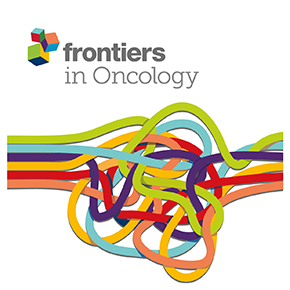
Systematic Review
ST36 acupoint injections with dexamethasone outperforms conventional western medicine in treating chemotherapy-induced myelosuppression, significantly improving clinical efficacy and recovery.
Chen J, Lin Z, Ding J

Animal Study
Omega-3 fatty acids found in selected fish oils, particularly smoked eel, effectively managed dyslipidemia and reduced cardiovascular disease risk factors.
Kontostathi M, Isou S, Mostratos D, Vasdekis V, Demertzis N, Kourounakis A, Vitsos A, Kyriazi M, Melissos D, Tsitouris C, Karalis E, Klamarias L, Dania F, Papaioannou GT, Roussis V, Polychronopoulos E, Anastassopoulou J, Theophanides T, Rallis MC, Black H
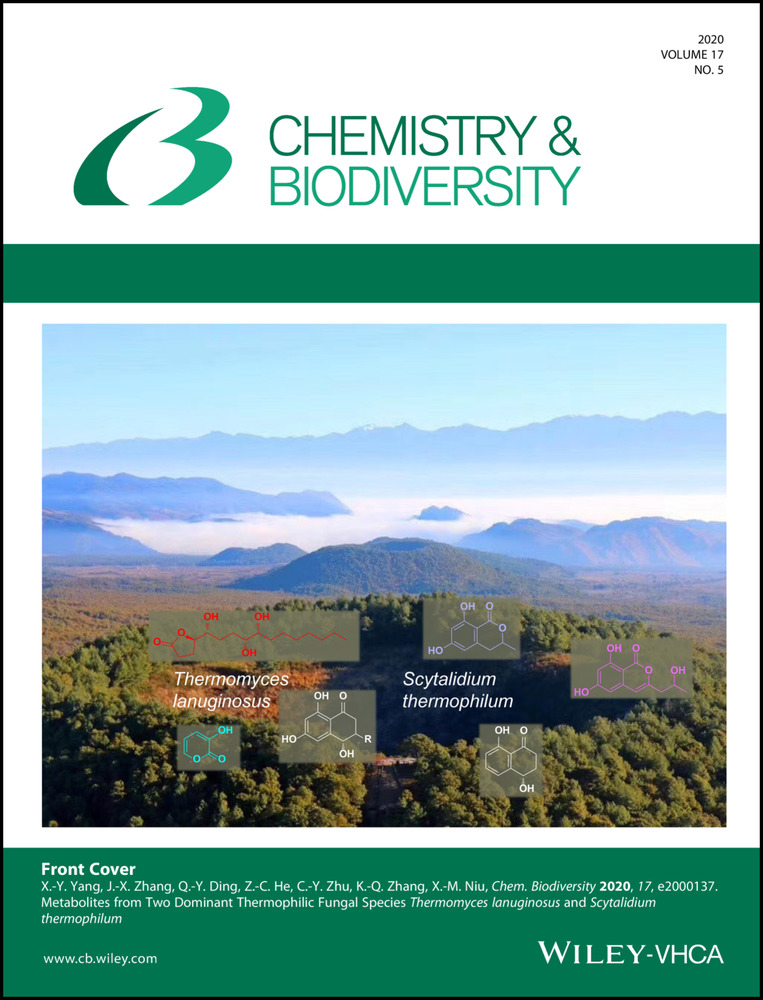
Experimental Study
Chrysanthemum, a traditional Chinese medicine, shows significant antioxidant activity and hepatoprotective effects, making it a potential resource for functional foods and medicinal materials.
Chen L, Liu Y, Huang X, Zhu Y, Li J, Miao Y, Du H, Liu D
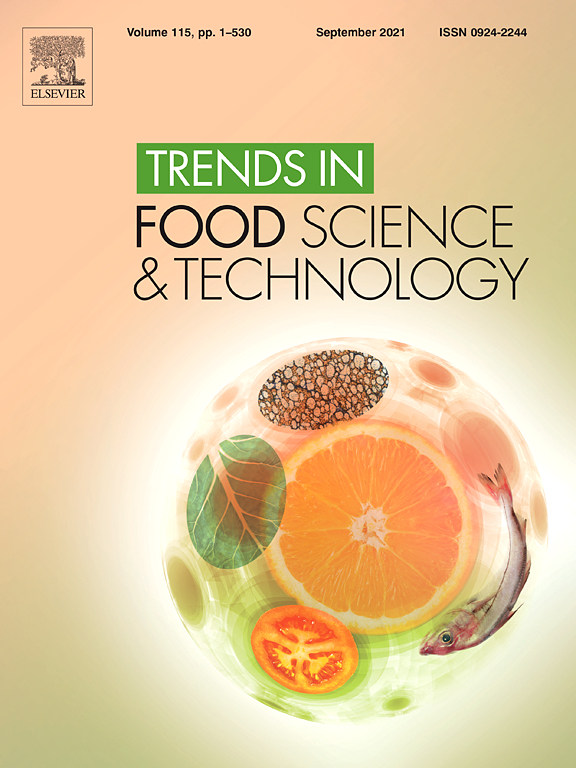
Systematic Review
From the results of 63 papers on the nutritional and phytochemical composition of Raphanus sativus, our review identified 609 phytochemicals in radish, with major constituents like flavonoids, non-flavonoid polyphenols, fat and fatty related compounds, terpenes and derivatives, and glucosinolates being reported in high concentrations in leaves and sprouts.
Sham, T. T., Yuen, A. C., Ng, Y. F., Chan, C. O., Mok, D. K., & Chan, S. W.

Randomised Controlled Trial
Qing-Chang-Hua-Shi (QCHS) granules, a Chinese herbal formula, have shown significant efficacy in improving clinical remission and mucosal healing in moderately active ulcerative colitis patients.
Shen H, Zhang S, Zhao W, Ren S, Ke X, Gu Q, Tang Z, Xie J, Chen S, Chen Y, Zou J, Zhang L, Shen Z, Zheng K, Liu Y, Gu P, Cheng J, Hu J, Zhu L

Network Pharmacology
Honeysuckle extract could provoke anaphylaxis and specific ingredients in honeysuckle potentially trigger this reaction.
Feng Y, Qin G, Jing Z, Wang Y, Zhou Y

Randomised Controlled Trial
Moderate daily consumption of beer, both with and without alcohol, can significantly alleviate menopause-related symptoms and improve cardiovascular health in postmenopausal women.
Trius-Soler M, Marhuenda-Muñoz M, Laveriano-Santos EP, Martínez-Huélamo M, Sasot G, Storniolo CE, Estruch R, Lamuela-Raventós RM, Tresserra-Rimbau A
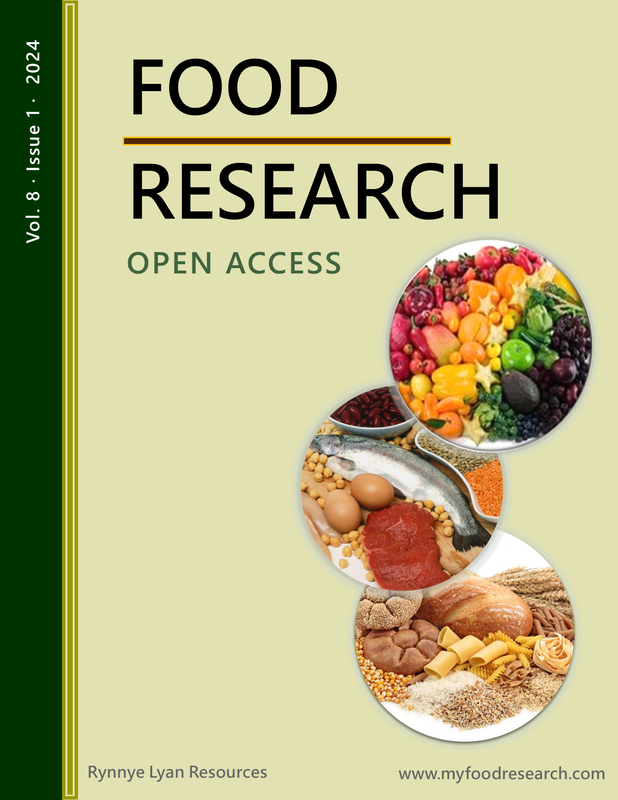
Review Article
Natto and Miso, Japanese fermented soy foods, contain health-promoting bioactive components, including nattokinase, bacillopeptidase F, vitamin K2, dipicolinic acid, γ-polyglutamic acid, isoflavones, and phenolic acids.
Chan EWC, Wong SK, Kezuka M, Oshiro N, Chan HT

Systematic Review
Green tea consumption has been found to be effective in preventing the contraction of influenza infections.
Rawangkan A, Kengkla K, Kanchanasurakit S, Duangjai A, Saokaew S
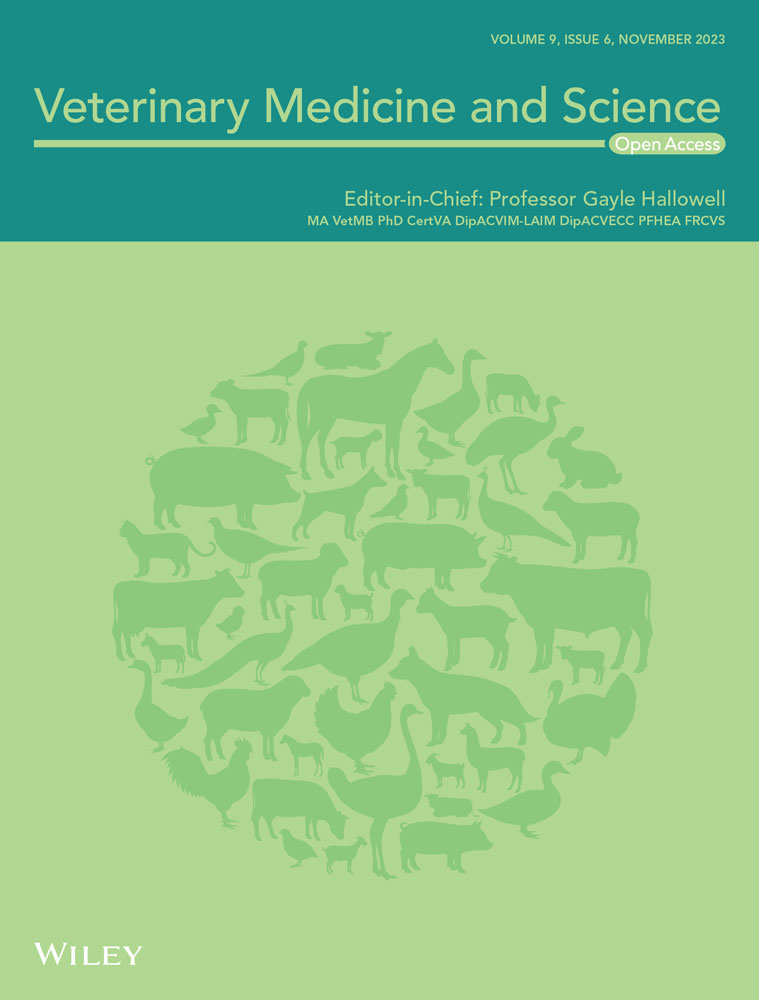
Systematic Review
Ginger significantly improves sperm health, enhancing quality parameters like count, viability, motility, morphology and DNA integrity, thereby boosting fertility.
Gholami‐Ahangaran M, Karimi‐Dehkordi M, Akbari Javar A, Haj Salehi M, Ostadpoor M

Systematic Review
Apple cider vinegar intake can significantly decrease total cholesterol and fasting plasma glucose levels contributing to better cardiovascular health among adults.
Hadi A, Pourmasoumi M, Najafgholizadeh A, Clark CCT, Esmaillzadeh A

Systematic Review
Acupuncture (either alone or combined with speech and language therapy) may be effective for poststroke aphasia.
Zhang Y, Wang Z, Jiang X, Lv Z, Wang L, Lu L
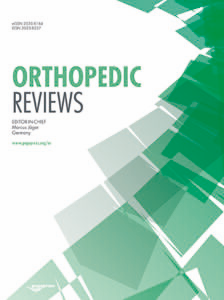
Review Article
Increasing evidence supports the use of acupuncture as part of multimodal approaches to the treatment of fibromyalgia with additive efficacy to traditional therapy.
Berger AA, Liu Y, Nguyen J, Spraggins R, Reed DS, Lee C, Hasoon J, Kaye AD

Review Article
The date palm enhances both male and female fertility parameters through its nutritional attributes and antioxidant functionality.
Shehzad M, Rasheed H, Naqvi SA, Al-Khayri JM, Lorenzo JM, Alaghbari MA, Manzoor MF, Aadil RM
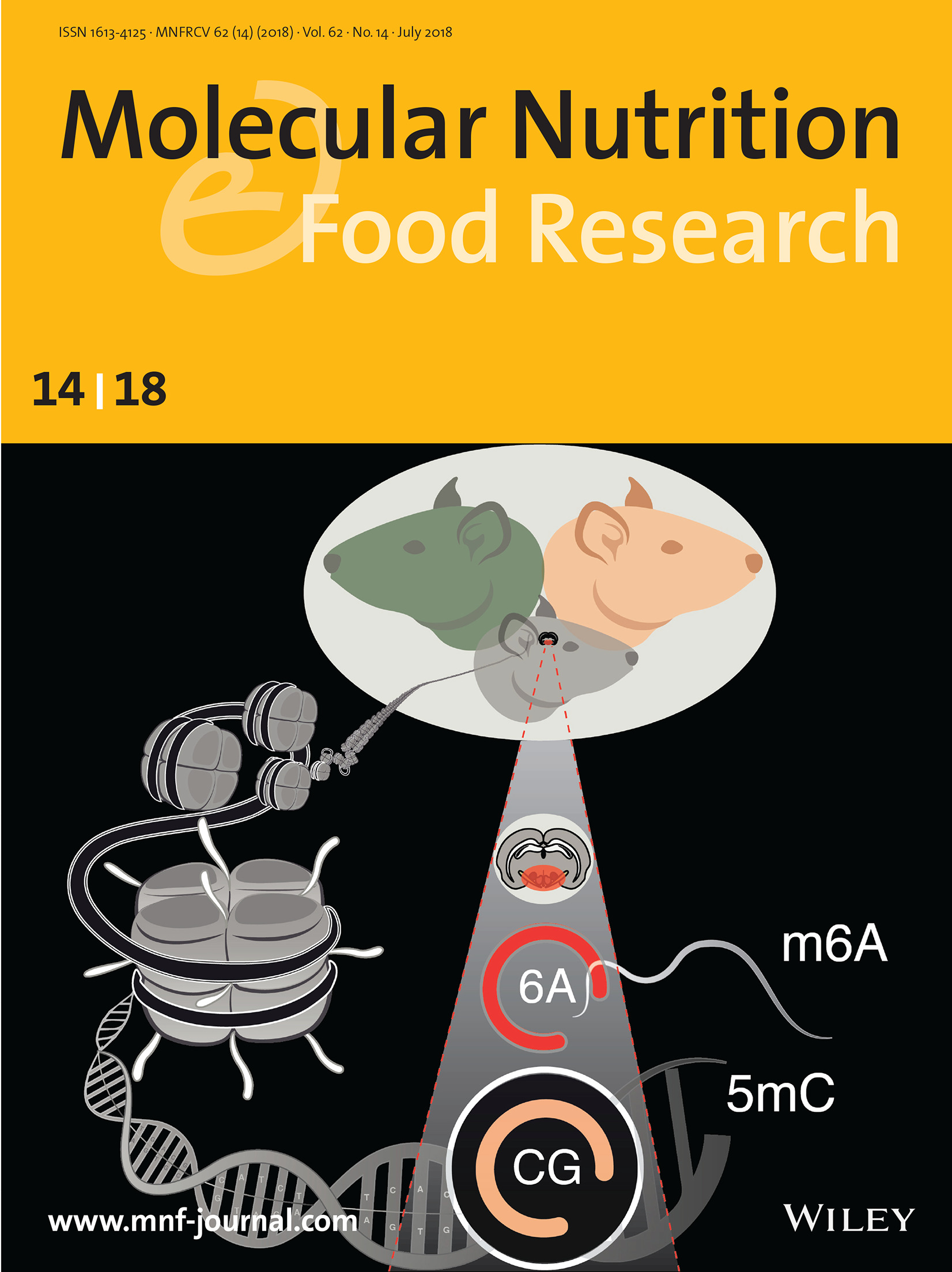
Experimental Study
Boron-rich mineral and medicinal waters can significantly increase boron accumulation in fruit flies and humans, largely elevating their boron status.
Seidel U, Haegele FA, Baumhof E, Jans K, Seidler Y, Kremer D, Bakker SJL, Birringer M, Lüersen K, Bosy‐Westphal A, Rimbach G

Systematic Review
Chinese medicine could effectively improve thyroid function and the clinical symptoms of patients with diabetic nephropathy.
Zhang X, Wu M, Zhou J, Zhou R, Luo Q, Yue R, Jin S.
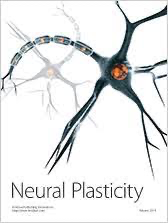
Review Article
Acupuncture may slow Parkinson's disease progression by protecting dopaminergic neurons and regulating neurotransmitter balance, potentially reducing dependence on medication.
Zhao Y, Zhang Z, Qin S, Fan W, Li W, Liu J, Wang S, Xu Z, Zhao M

Systematic Review
Current evidence suggests that acupuncture might improve breast cancer treatment-related symptoms measured with patient-reported outcomes including quality of life, pain, fatigue, hot flashes, sleep disturbance and anxiety.
Zhang Y, Sun Y, Li D, Liu X, Fang C, Yang C, Luo T, Lu H, Li H, Zhang H, Liang Q, Wu J, Huang L, Xu R, Ren L, Chen Q

Systematic Review
Tremella fuciformis polysaccharides effectively reduce inflammation in ulcerative colitis, promoting healing by restoring intestinal and mucus barrier functions.
Xu Y, Xie L, Zhang Z, et al

Review Article
Date palm tree products and by-products are exceptionally rich in bioactive compounds offering potential health benefits, therefore suitable to be used as natural ingredients in food manufacturing.
Echegaray N, Gullón B, Pateiro M, Amarowicz R, Misihairabgwi JM, Lorenzo JM

Review Article
Almonds can support colonic microbiota health by promoting microflora richness and diversity, increasing the ratio of symbiotic to pathogenic microflora, and concentrations of health-promoting colonic bioactives.
Dreher ML

Review Article
Recent systematic reviews and meta-analyses of nut RCTs showed that almonds were the only nut that had a small but significant decrease in both mean body mass and fat mass, compared to control diets.
Dreher ML

Experimental Study
The combinations of hop-derived polyphenols found in beer can collaboratively enhance estrogenic effects, especially when mixed with certain estrogenic pesticides.
Aichinger G, Bliem G, Marko D

Systematic Review
The consumption of cocoa or dark chocolate can reduce low-density lipoprotein cholesterol and fasting blood sugar levels in diabetic patients.
Darand M, Hajizadeh Oghaz M, Hadi A, Atefi M, Amani R

Systematic Review
The addition of CHM to clomiphene may improve pregnancy rates.
Zhou K, Zhang J, Xu L, Lim CED

Systematic Review
Acupuncture can effectively improve the post voided residual urine, maximal cystometric capacity, and bladder capacity for first voiding desire values of patients with urinary retention after hysterectomy.
Zhao Q, Yan C, Dan M, Jia H
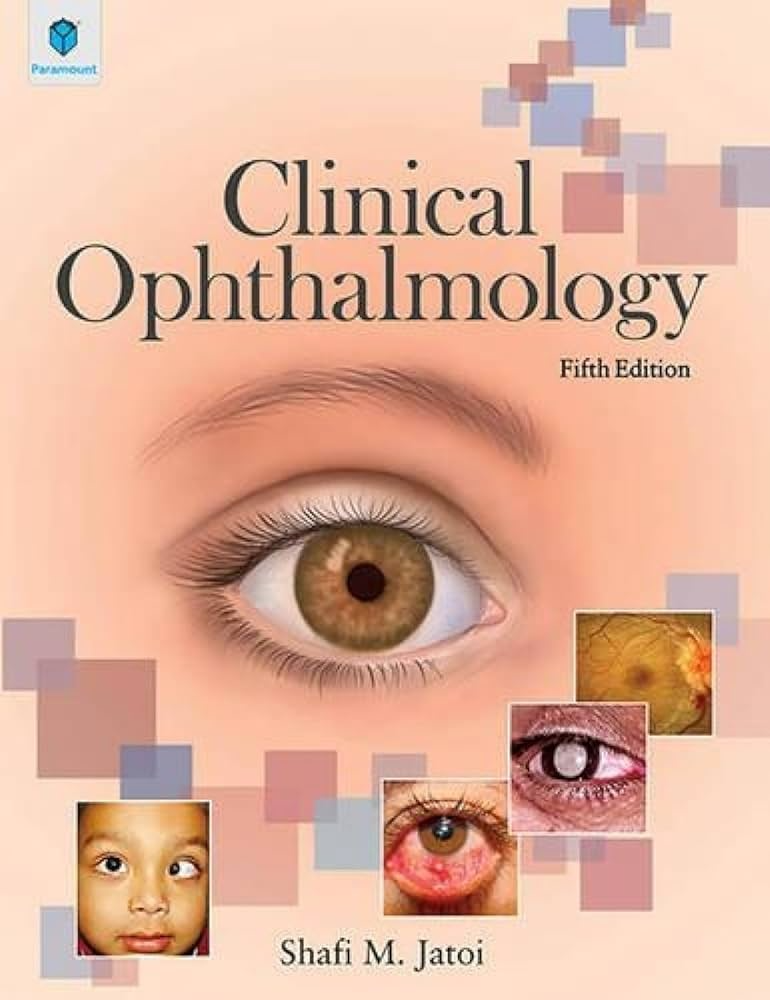
Review Article
Curcumin, with its anti-inflammatory, antioxidant, antimicrobial and antimutagenic properties, is a potential therapeutic agent for retinal diseases.
Nebbioso M, Franzone F, Greco A, Gharbiya M, Bonfiglio V, Polimeni A

Randomised Controlled Trial
Lavandula angustifolia essential oil inhalation seemed to enhance overall sleep patterns, quality, and efficiency in postmenopausal women with insomnia.
dos Reis Lucena L, dos Santos-Junior JG, Tufik S, Hachul H

Systematic Review
Phytoestrogens, used in various forms, have shown improvement in urogenital menopause symptoms and improved women's sexual function, promoting overall quality of life.
Abdi F, Rahnemaei FA, Roozbeh N, Pakzad R

Review Article
Coconut oil has potential therapeutic value in treating Alzheimer's disease by suppressing neuro-inflammation, reversing neurodegeneration, and inhibiting secretion of harmful peptides.
Ramesh SV, Krishnan V, Praveen S, Hebbar KB
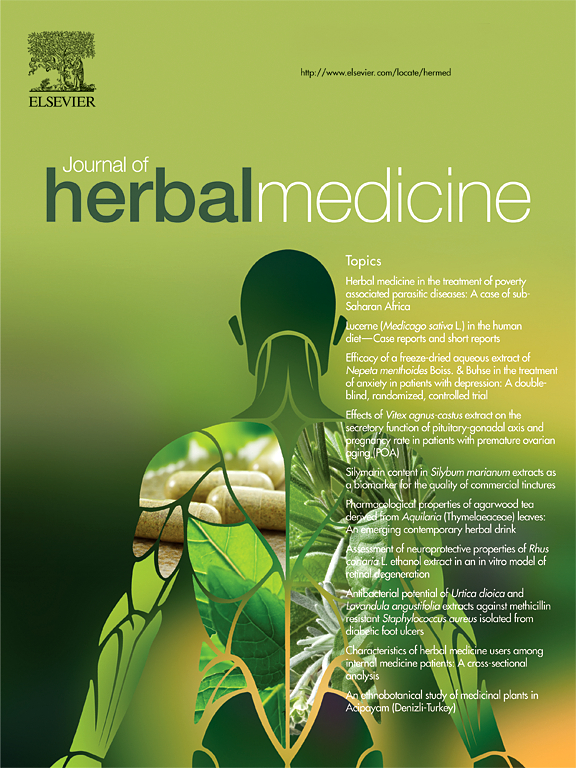
Clinical Study
Green tea therapy can significantly improve rheumatoid arthritis symptoms, correlating with changes in specific circulating serum molecules, miR-125b and miR-146a.
Al-Rawaf HA, Alghadir AH, Gabr SA

Review Article
There is a notable gap in scientific research on the potential health benefits and antioxidant activity of matcha tea compared to green tea.
Sivanesan I, Gopal J, Muthu M, Chun S, Oh JW

Systematic Review
A total of 18 publications were included, all indicating improved PCOS symptoms with Chinese medicine compared to control groups.
Wang L, Liang R, Tang Q, Zhu L

Systematic Review
Acupuncture alone or combined with standard care was associated with significant improvements in perimenopausal depression and reductions of other menopausal symptoms.
Zhao FY, Fu QQ, Kennedy GA, Conduit R, Zhang WJ, Zheng Z

Randomised Controlled Trial
Acupuncture may be an effective supplementary treatment option for patients with olfactory loss.
Drews T, Hummel T, Rochlitzer B, Hauswald B, Hähner A

Systematic Review
The comprehensive evaluation results show that scalp acupuncture is effective in treating insomnia.
Fu-gui Liu, Ai-hua Tan, Chao-qun Peng, Yun-xia Tan, Ming-chao Yao
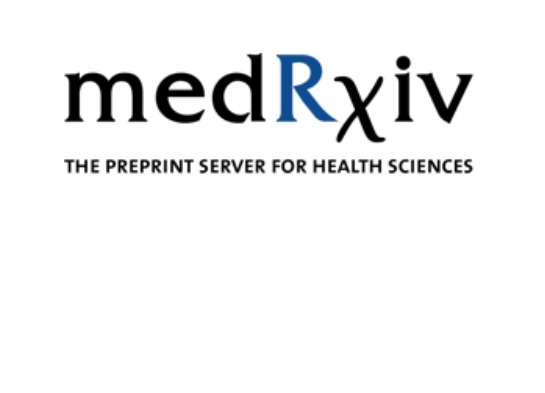
Systematic Review
The available evidence provides a good indication that nut consumption can result in a small improvement in blood pressure in adults.
Ahmad Jayedi, Tauseef Ahmad Khan, Amin Mirrafiei, Bahareh Jabbarzadeh, Yasaman Hosseini, Sheida Motlagh, Aliyu Tijani Jibril, Hossein Shahinfar, Sakineh Shab-Bidar

Systematic Review
Our updated systematic review and meta-analysis suggested that moxibustion has a positive effect on correcting breech presentation.
Liao J-A, Shao S-C, Chang C-T, Chai PY-C, Owang K-L, Huang T-H, Yang C-H, Lee T-J, Chen Y-C
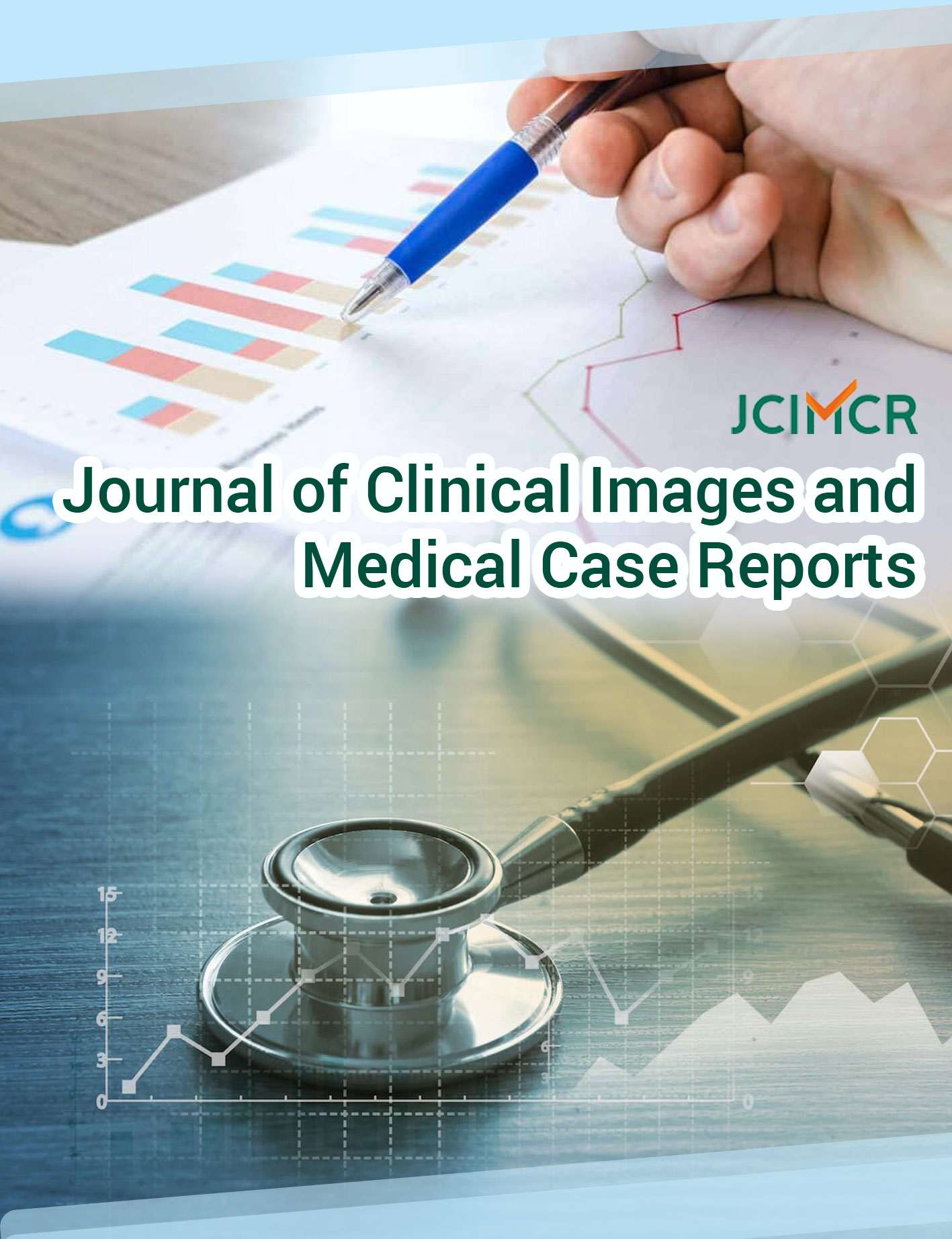
Systematic Review
Long Dan Xie Gan Decoction combined with valacyclovir appears to enhance the treatment of herpes zoster, improving pain intensity, and crust formation time.
Wang X, , Wu L, Hou Y, Ding S, Wang S, Zhang Y, Zhang G, , , , , ,
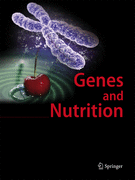
Randomised Controlled Trial
Consumption of blueberry supplement did not show significant improvement in metabolic health markers, however, it induced changes in gene expression, indicating a potential longer-term effect.
Rousseau M, Horne J, Guénard F, de Toro-Martín J, Garneau V, Guay V, Kearney M, Pilon G, Roy D, Couture P, Couillard C, Marette A, Vohl MC
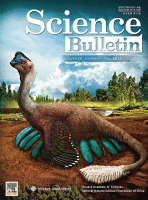
Qingfei Paidu Decoction might significantly inhibit IL-6 and TNF-α signaling pathways in regulating COVID-19-related cytokine storm.
Yifei Dai, Weijie Qiang, Yu Gui, Xue Tan, Tianli Pei, Kequan Lin, Siwei Cai, Liang Sun, Guochen Ning, Jianxun Wang, Hongyan Guo, Yimin Sun, Jing Cheng, Lan Xie, Xun Lan, Dong Wang

Systematic Review
Cocoa-rich products consumption can improve mood and affect in the short term.
Fusar-Poli L, Gabbiadini A, Ciancio A, Vozza L, Signorelli MS, Aguglia E
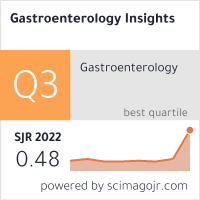
Review Article
Tea polyphenols can help rebalance gut microbiota, alleviating imbalances caused by obesity, diabetes, and UV damage, with effects varying by tea type.
Khairudin MAS, Mhd Jalil AM, Hussin N

Review Article
Green tea and its chief bioactive component have the potential to improve certain female reproductive disorders such as endometriosis, polycystic ovary syndrome, and dysmenorrhea.
Kamal DAM, Salamt N, Zaid SSM, Mokhtar MH
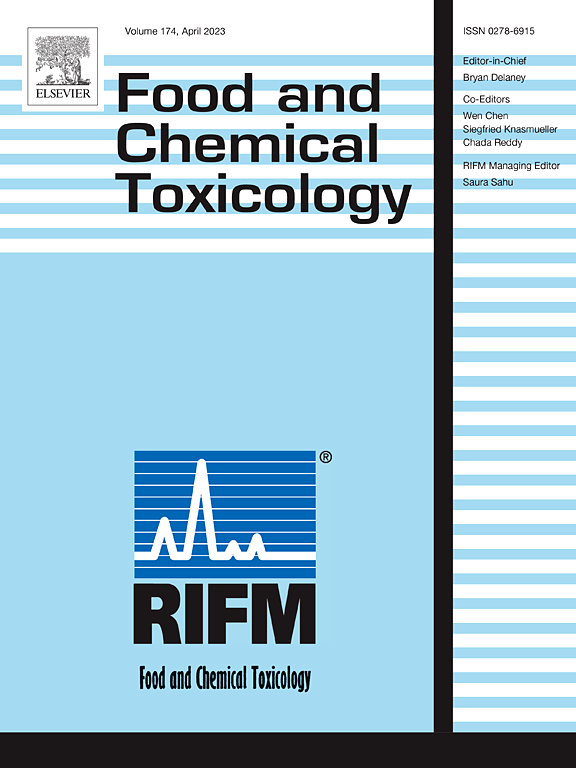
Systematic Review
Cocoa flavanols exhibit health and aging benefits and may act as powerful agents in preventing chronic diseases such as cardiovascular and metabolic disorders, and cancer.
Martin M, Ramos S
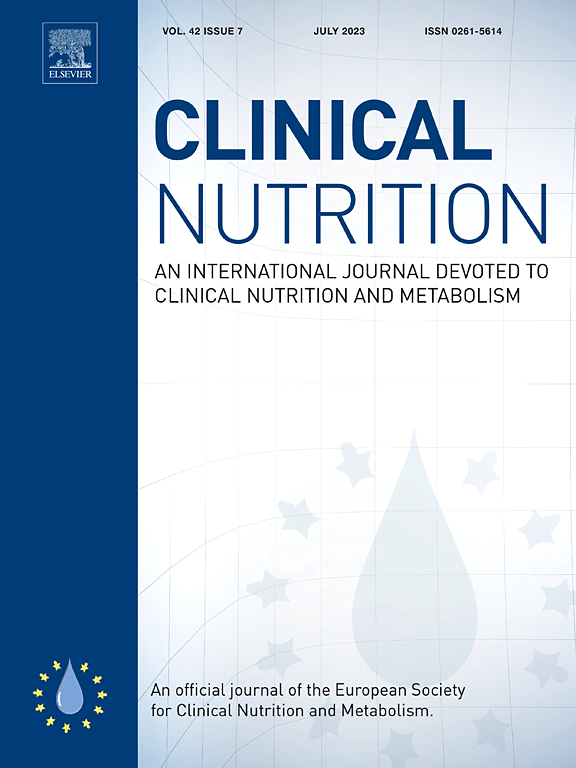
Randomised Controlled Trial
Eating sardines twice a week for a year significantly reduces the risk of developing type 2 diabetes in prediabetic individuals aged 65 and above.
Díaz-Rizzolo DA, Serra A, Colungo C, Sala-Vila A, Sisó-Almirall A, Gomis R

Randomised Controlled Trial
A one-year, sardine-enriched diet in an elderly population with pre-diabetes exerts a greater protective effect against developing type 2 diabetes and cardiovascular events.
Díaz-Rizzolo DA, Serra A, Colungo C, Sala-Vila A, Sisó-Almirall A, Gomis R

Traditional Chinese medicine could reduce the all-cause mortality in COVID-19 patients, inhibit virus replication and transcription, and attenuate the cytokine storm and immune deficiency caused by the SARS-CoV-2.
Xuedong An, YueHong Zhang, Liyun Duan, De Jin, Shenghui Zhao, RongRong Zhou, Yingying Duan, Fengmei Lian, Xiaolin Tong

Systematic Review
Meta-analysis results showed that Tuina was superior to drugs for improving the effectiveness rate for tension-type headache.
Fan Z, Di A, Huang F, Zhao S, Qiu M, Wu C, Huang C, Guo R, Tian Q, Wu S

Experimental Study
Black pepper and its major component, piperine, can effectively regulate anemia of inflammation by reducing the overexpression of hepcidin, a hormone that controls iron levels.
Banerjee S, Katiyar P, Kumar L, Kumar V, Saini SS, Krishnan V, Sircar D, Roy P

Systematic Review
Coffee consumption, particularly boiled coffee, may increase levels of certain cardiovascular risk markers, but no strong link was found to anti-inflammatory effects.
Daneschvar HL, Smetana GW, Brindamour L, Bain PA, Mukamal KJ

Randomised Controlled Trial
Combining resistance training with saffron supplementation enhances happiness levels and increases dopamine and serotonin concentrations more than resistance training alone.
Moghadam BH, Bagheri R, Roozbeh B, Ashtary-Larky D, Gaeini AA, Dutheil F, Wong A

Systematic Review
Consumption of certain foods like rapeseed/canola oil, avocados, and turmeric can lead to moderate to large reductions in LDL cholesterol levels.
Schoeneck M, Iggman D

Randomised Controlled Trial
Pomegranate peel extract supplementation can decrease total cholesterol and triglyceride levels while boosting antioxidant status in obese women with knee osteoarthritis.
Haghighian MK, Rafraf M, Hemmati S, Haghravan S, Asghari-Jafarabadi M

Review Article
Pomegranate has a variety of phytochemicals which possess wide-ranging activities including antioxidant, antimicrobial, anti-oncogenic properties, and resistance to cerebrovascular disease.
Ge S, Duo L, Wang J, GegenZhula , Yang J, Li Z, Tu Y

This review further put forward the possibility that cold-hot nature of food and Chinese medicine exert different biological effects on the inflammatory response via regulating the signaling pathways viz. NF-κB and MAPK.
Zhou Y, Xu B.

Systematic Review
Acupuncture alone or traditional Chinese medicines (taken orally) in combination with western medicine significantly increased the pregnancy rate of PCOS patients and CAM was more effective than western medicine alone for improving hormone levels.
Jiayu Hu, Wenhua Shi, Jiayue Xu, Shaoxuan Liu, Siya Hu, Wenjing Fu, Jing Wang and Fengjuan Han

Systematic Review
Acupuncture improves perimenopausal sleep quality and symptoms, potentially a safe alternative or adjunct to hypnotic drugs, requiring further research validation.
Zhao, F.-Y., Fu, Q.-Q., Kennedy, G. A., Conduit, R., Wu, W.-Z., Zhang, W.-J., & Zheng, Z.

Systematic Review
Acupuncture, moxibustion and Chinese herbal medicines are the most commonly used complementary and alternative medicine in the treatment of female infertility.
Feng J, Wang J, Zhang Y, Zhang Y, Jia L, Zhang D, Zhang J, Han Y, Luo S

Experimental Study
Two French natural mineral waters (NMW1 and NMW2) show anti-inflammatory effects and can reduce intestinal inflammation in mice with induced colitis.
Barnich N, Rodrigues M, Sauvanet P, Chevarin C, Denis S, Le Goff O, Faure-Imbert D, Hanh T, Roques CF, Chassaing B, Alric M

Study Protocol
Gynoclear™, a formulation of six herbs, could potentially reduce the severity and duration of pain and other symptoms associated with endometriosis.
Armour M, Al-Dabbas MA, Ee C, Smith CA, Ussher J, Arentz S, Lawson K, Abbott J

Systematic Review
Based on the current evidence, acupuncture appears to be beneficial to increase the clinical pregnancy rate in women undergoing in vitro fertilization and embryo transfer.
Wang X, Wang Y, Wei S, He B, Cao Y, Zhang N, Li M
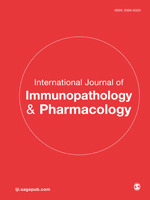
Systematic Review
Tremella polysaccharide is a safe natural active ingredient, which can be used in the prevention, treatment and rehabilitation of diseases.
Ma, X., Yang, M., He, Y., Zhai, C., & Li, C.

Randomised Controlled Trial
Adding oat bran to the diet of pregnant women with gestational diabetes can help significantly reduce their fasting and postprandial blood glucose levels.
Barati Z, Iravani M, Karandish M, Haghighizadeh MH, Masihi S

Meta-Analysis
The evidence supports that acupuncture can be considered in the treatment of cough-variant asthma as an adjuvant therapy.
Xiong J, Qi WC, Yang H, Zou ST, Kong J, Wang CL, Zhou YF, Liang FR
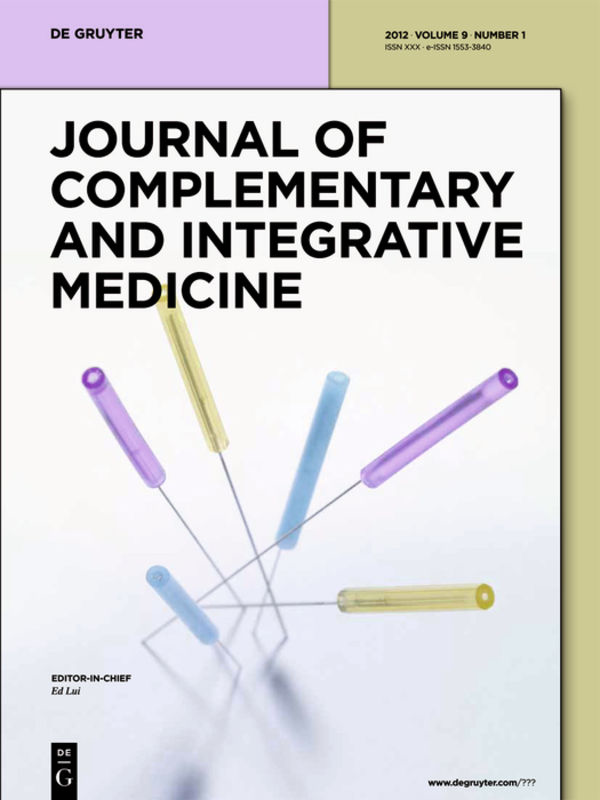
Randomised Controlled Trial
Avocado/soy unsaponifiables effectively treat osteoarthritis by controlling the balance between oxidant and antioxidant molecular markers.
Jangravi Z, Basereh S, Zaree Mahmoudabadi A, Saberi M, Alishiri GH, Korani M

Systematic Review
The use of Yu Ping Feng San for pediatric allergic rhinitis appears relatively safe compared to Western medical therapy yet its routine use remains unsupported.
Liao Y, Zhong J, Liu S, Dai M, Liu Y, Li X, Yang Y, Zhang D, Lai D, Lu T, Zhang Q, Zhao Y
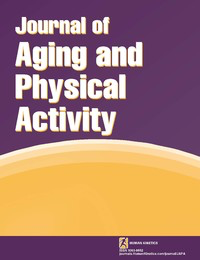
Systematic Review
High-quality evidence suggests that Tai Chi is an effective intervention for preventing falls in community settings, and through its benefits on cognitive functioning.
Nyman SR

Systematic Review
Acupuncture seems to be an effective method for the long-term reduction of the intensity of headache pain in patients with tension-type headaches.
Kolokotsios S, Stamouli A, Koukoulithras I, Plexousakis M, Drousia G

Systematic Review
These results indicate that a certain concentration of snow fungus polysaccharides can effectively alleviate skin damage caused by UVA, and they may be used as an effective component of cosmetics.
Fu H, You S, Zhao D, An Q, Zhang J, Wang C, Wang D, Li M.
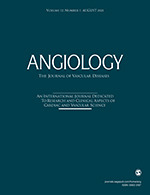
Systematic Review
Epidemiological studies suggest that the consumption of spicy chilli food is associated with reduced risk of all-cause as well as heart disease–related mortality.
Ofori-Asenso R, Mohsenpour MA, Nouri M, Faghih S, Liew D, Mazidi M.

Randomised Controlled Trial
Women receiving IVF perceived that acupuncture or sham acupuncture gave them a psychological advantage through increased relaxation, reduced psychological stress, and enhanced well-being and self-efficacy.
de Lacey S, Sanderman E, Smith CA

Review Article
Chinese herbal medicines may improve treatment for those with chronic kidney disease, due to their anti-inflammatory, antioxidative, anti-apoptotic, autophagy-mediated, and antifibrotic effects.
Zhao M, Yu Y, Wang R, Chang M, Ma S, Qu H, Zhang Y

Experimental Study
The Jian-Pi-Yi-Shen (JPYS) traditional Chinese medicine formula aids in the alleviation of renal dysfunction and fibrosis in chronic kidney disease (CKD) rats by combating inflammation and cellular apoptosis.
Zhou F, Zou X, Zhang J, Wang Z, Yang Y, Wang D

Network Pharmacology
The traditional formula Danggui Beimu Kushen Wan (DBKW) contains multi-targeting agents that simultaneously act on more than one pathway in prostate cancer.
Li H, Hung A, Yang AWH

Systematic Review
Acupuncture could improve body mass index, waist-to-hip ratio as well as insulin resistance (HOMA-IR) in patients with PCOS.
Ruqun Zheng, Peng Qing, Mei Han, Jinlong Song, Min Hu, Hongxia Ma, Juan Li

Systematic Review
Isoflavones found in soybeans can reduce risks of certain cancers and alleviate menopause-related symptoms among women, such as vasomotor syndromes, spinal bone loss, and hypertension.
Chen LR, Chen KH

Review Article
Fermented soybean products alleviate and possibly prevent neurodegenerative conditions, including Parkinson's and Alzheimer's diseases.
Jang CH, Oh J, Lim JS, Kim HJ, Kim JS
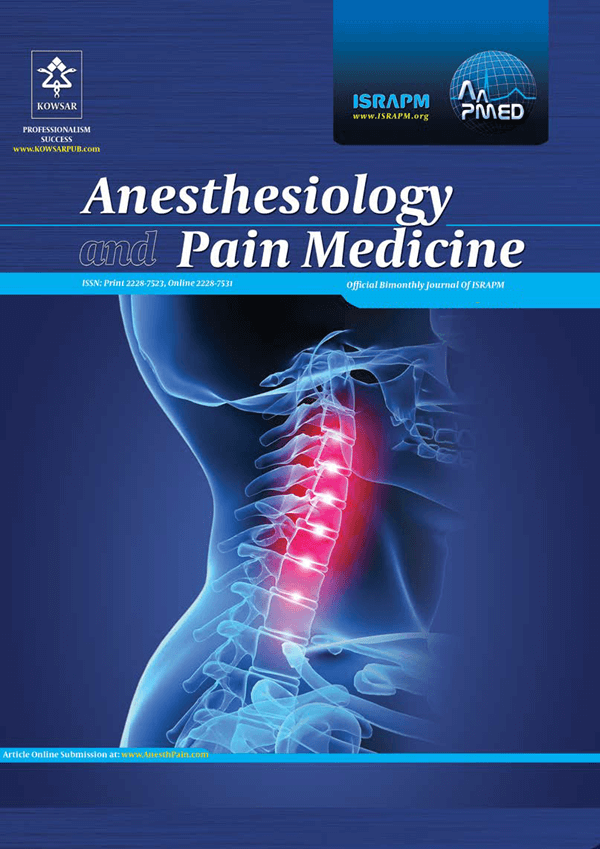
Review Article
Acupuncture is shown to be a beneficial supplementary treatment for chronic abdominal pain, improving patients' quality of life and cutting healthcare costs.
Berger AA, Liu Y, Jin K, Kaneb A, Welschmeyer A, Cornett EM, Kaye AD, Imani F, Khademi SH, Varrassi G, Viswanath O, Urits I

Review Article
Acupuncture has shown promise as a complementary approach in treating chronic abdominal pain, providing symptom relief and improving quality of life.
Berger AA, Liu Y, Jin K, Kaneb A, Welschmeyer A, Cornett EM, Kaye AD, Imani F, Khademi SH, Varrassi G, Viswanath O, Urits I

Cohort Study
Moderate coffee consumption may potentially reduce the risk of low HDL-C and high fasting blood glucose amongst Korean male adults.
Tan LJ, Jeon HJ, Park SH, Kim SA, Lim K, Chung S, Chang PS, Lee J, Kang D, Shin S

Review Article
Pomegranate demonstrates anti-proliferative, anti-oxidant, anti-inflammatory properties that can effectively control the progression of various respiratory diseases.
Shaikh SB, Bhandary YP

Systematic Review
A systematic analysis indicates that ginger has a higher safety profile than NSAIDs for pain relief, with a smaller number of gastric side effects and fewer kidney risks.
Negi R, Sharma DS, Gaur DR, Bahadur A, Jelly P

Systematic Review
Based on beneficial effects and minimal side effects, ginger may be a potential adjunct treatment for primary dysmenorrhea.
Negi R, Sharma DS, Gaur DR, Bahadur A, Jelly P

Review Article
The fresh rhizoma of Roscoe, a traditional Chinese medicine, has proven effects on the nervous and cardiovascular systems and has antibacterial, antitumor, and antioxidant properties.
Li X, Ao M, Zhang C, Fan S, Chen Z, Yu L

Review Article
Baicalin, a Scutellaria baicalensis extract, has been found to have numerous therapeutic applications in liver and gut diseases by mediating apoptosis and immune response pathways.
Hu Q, Zhang W, Wu Z, Tian X, Xiang J, Li L, Li Z, Peng X, Wei S, Ma X, Zhao Y

Review Article
Saffron and its components, crocin and crocetin, show potential in treating various eye disorders, including inflammation, macular edema, and glaucoma.
Sepahi S, Ghorani-Azam A, Hossieni SM, Mohajeri SA, Khodaverdi E
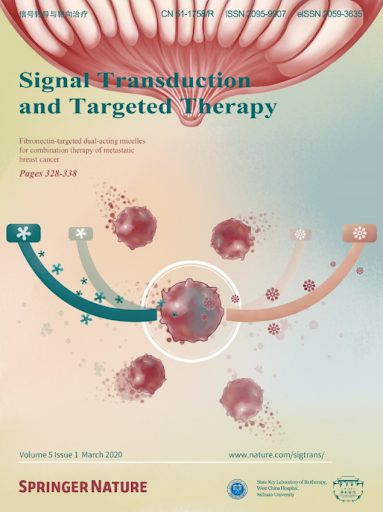
125 anti-COVID-19 traditional Chinese medicine formulae were identified with anti-inflammatory or immune-activating functions.
Qiao, L., Huang, W., Zhang, X. et al.

Among the patients hospitalized for COVID-19, the use of Qingfei Paidu Tang was associated with halving the risk of mortality, without raising the risk of acute liver injury or acute kidney injury.
Lihua Zhang, Xin Zheng, Xueke Bai, Qing Wang, Bowang Chen, Haibo Wang, Jiapeng Lu, Shuang Hu, Xiaoyan Zhang, Haibo Zhang, Jiamin Liu, Ying Shi, Zhiye Zhou, Lanxia Gan, Xi Li, Jing Li

Systematic Review
Moderate-quality evidence revealed an association between acupressure and greater pain relief compared with physical therapy.
Tao Li , Xiaohui Li ,Fan Huang , Qiang Tian , Z. Y. Fan , and S. Wu

Review Article
Bee honey and propolis could have potential beneficial effects as supporting treatments for COVID-19, enhancing immunity and inhibiting viral activity.
Ali AM, Kunugi H

Adding acupuncture to conventional therapy may decrease the subsequent endometriosis risk in female rheumatoid arthritis patients.
Chen Wei-Jen, Livneh Hanoch, Hsu Chien-Hui, Hu Ying-To, Lai Ning-Sheng, Guo How-Ran, Tsai Tzung-Yi

Clinical Study
Pomegranate polyphenols have shown strong potential in preventing and treating breast cancer through various anti-cancer effects.
Moga MA, Dimienescu OG, Bălan A, Dima L, Toma SI, Bîgiu NF, Blidaru A

Randomised Controlled Trial
Pumpkin seed oil shows promising potential in treating female pattern hair loss, with results comparable to the effects of minoxidil 5% foam.
Ibrahim IM, Hasan MS, Elsabaa KI, Elsaie ML

Systematic Review
Olive oil and leaf extract derivatives have been demonstrated to stimulate thyroid function in animal studies.
Pang KL, Lumintang JN, Chin KY

Systematic Review
Acupuncture therapy on patients with recurrent implantation failure can improve the pregnancy outcome of patients. It is a relatively effective treatment with satisfactory safety and suitable for clinical application.
Li, M., Liu, Y., Wang, H., Zheng, S., Deng, Y., & Li, Y.

Experimental Study
Supplementation with standardized saffron extract improves depressive symptoms and social relationships in healthy individuals experiencing subclinical low mood and stress.
Jackson PA, Forster J, Khan J, Pouchieu C, Dubreuil S, Gaudout D, Moras B, Pourtau L, Joffre F, Vaysse C, Bertrand K, Abrous H, Vauzour D, Brossaud J, Corcuff JB, Capuron L, Kennedy DO

Systematic Review
Compared with rehabilitation exercise or medication, acupuncture intervention can help alleviate the symptoms of urinary incontinence in middle-aged and elderly women.
Yang N, Ge X, Ye J, Liu Q, Wu Y, Yan H, Han X.

Randomised Controlled Trial
Enriching a regular diet with oat β-glucan can improve glycemic control, augment feelings of fullness, and positively modulate gut microbiota in individuals with type-2 diabetes.
Pino JL, Mujica V, Arredondo M
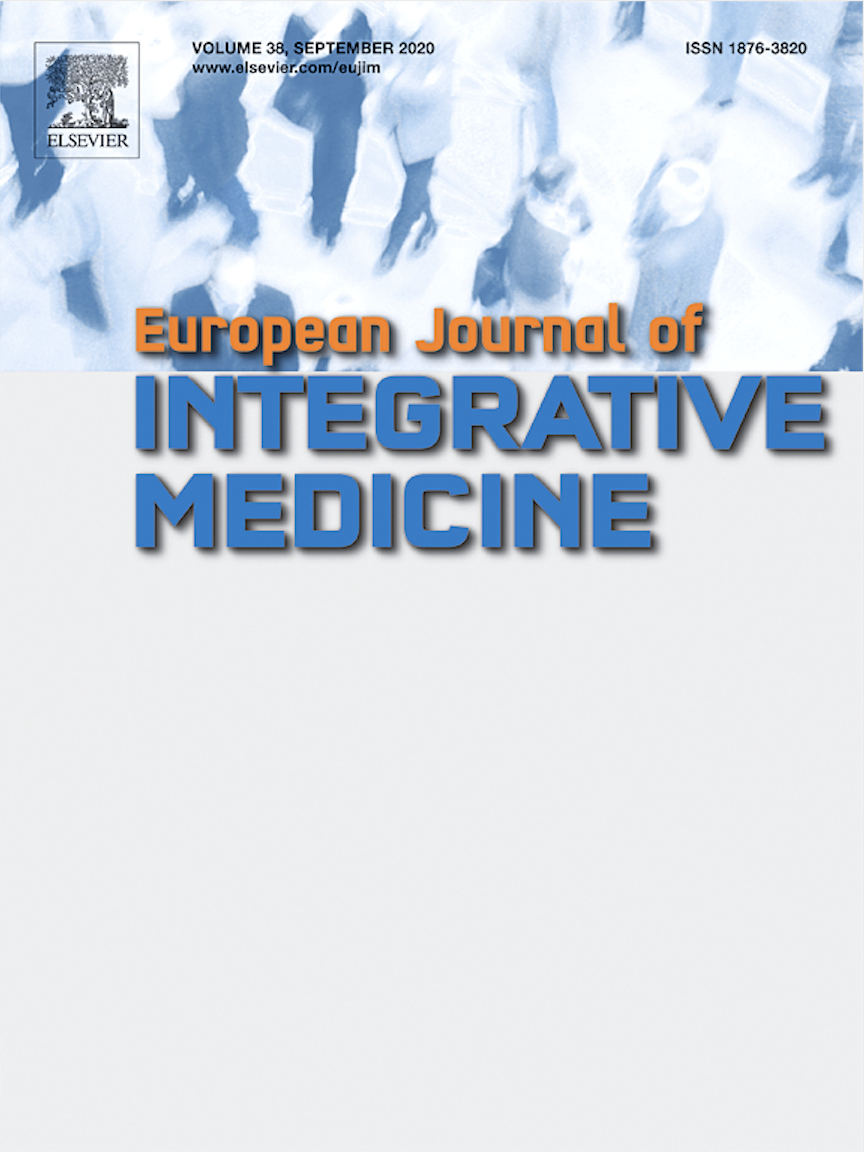
Systematic Review
Acupuncture may have a positive effect on anxiety relief during IVF treatment, while its effect on depression relief is inconclusive.
Ye JY, He YJ, Zhan MJ, Qu F
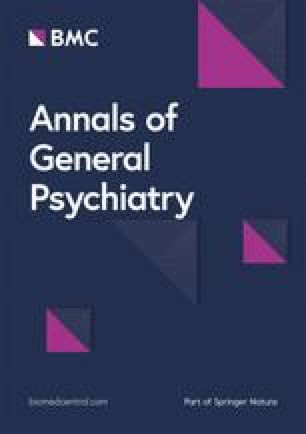
Systematic Review
Acupuncture therapy aimed at reducing anxiety in patients with generalised anxiety disorder has certain beneficial effects compared to controls.
Yang, Xy., Yang, Nb., Huang, Ff. et al.

Experimental Study
Pomegranate juice extract (PPJE) appears to reduce chemotherapy-induced skin side effects by inhibiting inflammation and promoting wound repair on the skin.
Rapa SF, Magliocca G, Pepe G, Amodio G, Autore G, Campiglia P, Marzocco S
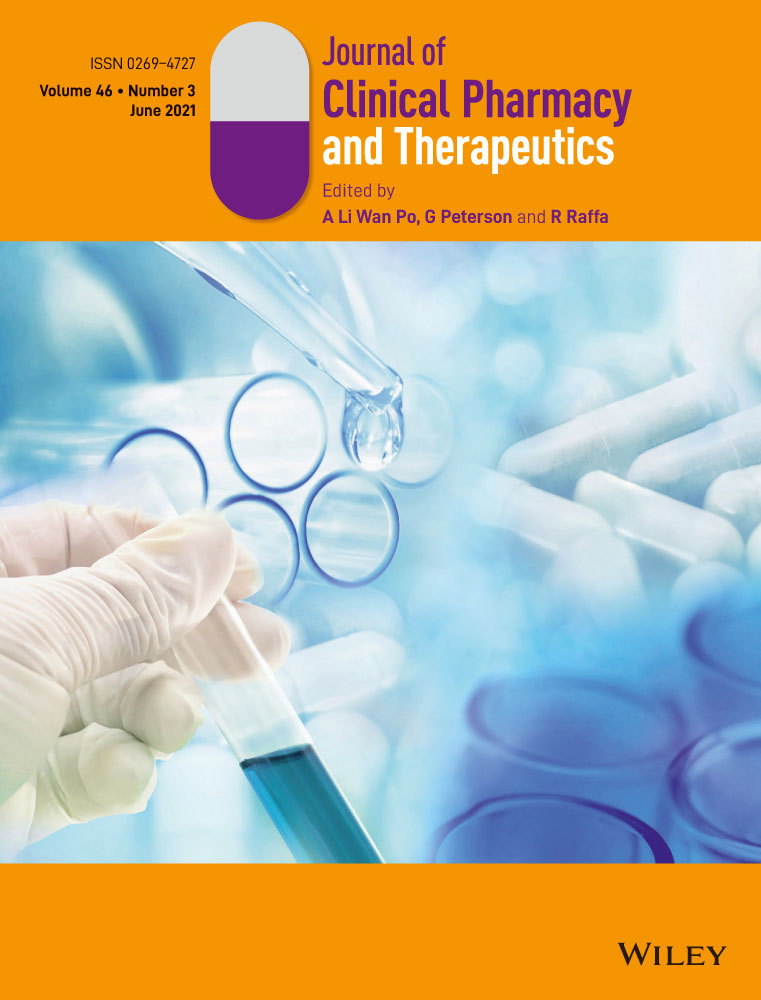
Systematic Review
Acupuncture appears to have an effect on diabetic peripheral neuropathy, effectively improving nerve conduction and clinical symptoms.
Yu B, Li M, Huang H, Ma S, Huang K, Zhong Z, Yu S, Zhang L.

Systematic Review
Various types of genital mycoplasma infections are significantly linked to female infertility.
Tantengco OAG, de Castro Silva M, Velayo CL
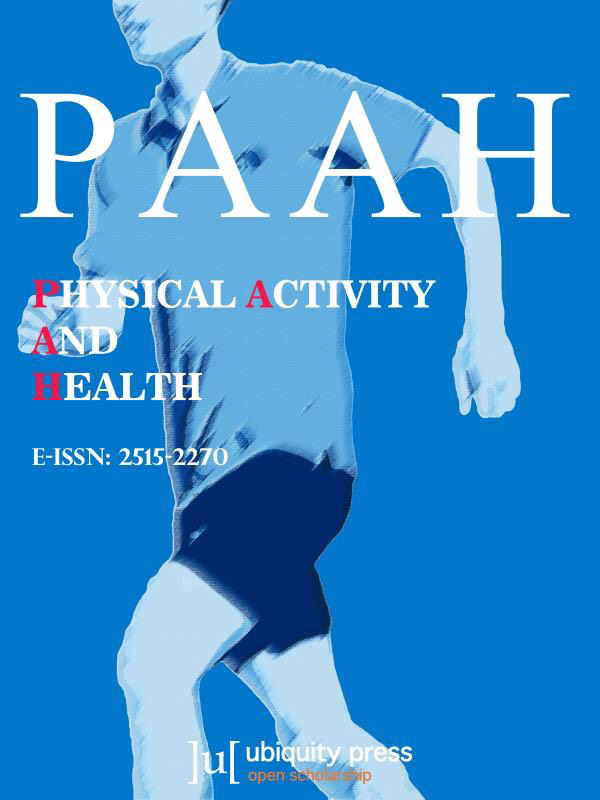
Systematic Review
All schools of Tai Chi chuan can improve the mental health of the elderly.
Xianjian C, Datao X

Review Article
Honey, traditionally a food item, exhibits therapeutic properties—anti-microbial, anti-inflammatory, anti-cancer, and wound healing—showing promise in managing and preventing allergic diseases, as supported by scientific evidence and clinical studies.
Aw Yong PY, Islam F, Harith HH, Israf DA, Tan JW, Tham CL

Systematic Review
Acupuncture, when combined with other treatments, is an effective therapy for treating swallowing difficulties experienced after a stroke.
Zhong, L., Wang, J., Li, F., Bao, X., Liu, H., & Wang, P.

Review Article
Green tea, coffee, wine, and curry have beneficial health effects due to the polyphenols they contain, which possess both antioxidant and pro-oxidant properties.
Ohishi T, Fukutomi R, Shoji Y, Goto S, Isemura M
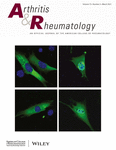
Randomised Controlled Trial
Intensive electroacupuncture appears to reduce pain and improve function in knee osteoarthritis patients more effectively than sham acupuncture.
Tu JF, Yang JW, Shi GX, Yu ZS, Li JL, Lin LL, Du YZ, Yu XG, Hu H, Liu ZS, Jia CS, Wang LQ, Zhao JJ, Wang J, Wang T, Wang Y, Wang TQ, Zhang N, Zou X, Wang Y, Shao JK, Liu CZ

Randomised Controlled Trial
Acupuncture could be as effective as pharmacological drugs for migraine prevention, with improved patient compliance and fewer adverse events.
Giannini G, Favoni V, Merli E, Nicodemo M, Torelli P, Matrà A, Giovanardi CM, Cortelli P, Pierangeli G, Cevoli S

Systematic Review
The existing evidence, although with low level of confidence, suggests that walnut intake may have a beneficial effect on cognition-related outcomes, including cognitive function, mood, and stroke.
Cahoon, D., Shertukde, S. P., Avendano, E. E., Tanprasertsuk, J., Scott, T. M., Johnson, E. J., Chung, M., & Nirmala, N.

Systematic Review
Gui Zhi Decoction and associated formulas significantly improve the effectiveness of allergic rhinitis treatments when used alone or combined with Western medicine.
Yang S, Fu Q, Deng H, Wu J, Zhang Q, Wang L, Yao X

Systematic Review
Traditional Chinese medicines might have various beneficial effects for non-alcoholic fatty liver disease such as improving TCM syndrome score, liver function, and body lipid profile.
Liang Z, Chen X, Shi J, Hu H, Xue Y, Ung COL

Systematic Review
Traditional Chinese medicines such as Shenge formula, Shugan Jianpi Huatan decoction and Heze lipid lowing oral liquid decoction might have positive effects on NAFLD by improving TCM syndrome scores, liver function, and body lipid profile.
Liang, Z., Chen, X., Shi, J. et al.

Systematic Review
Fennel intake decreased significantly the intensity of dysmenorrhea compared to placebo and was similar to non-steroidal anti-inflammatory drugs such as mefenamic acid.
Hadis Shahrahmani, Masumeh Ghazanfarpour, Nasim Shahrahmani, Fatemeh Abdi, Robert D. E. Sewell and Mahmoud Rafieian-Kopaei

Review Article
Goji berries have significant potential as a natural medicine in anticancer efforts due to their high content of active compounds.
Anna Wawruszaka,Marta Halasaa,Karolina Oklab

Review Article
Oily fish, particularly sardines, due to their high omega-3 and taurine content, may play a protective role in slowing the progression towards type 2 diabetes.
Díaz-Rizzolo DA, Miro A, Gomis R

Experimental Study
Dandelion polysaccharide (DP) can potentially reduce iron overload in hepatocellular carcinoma (HCC) by downregulating hepcidin levels and inhibiting the IL-6-activated JAK-STAT signaling pathway.
Ren F, Yang Y, Wu K, Zhao T, Shi Y, Song M, Li J

Systematic Review
Acupuncture improves clinical outcomes in uremic pruritus, atopic dermatitis, urticaria, and itch.
Hwang J, Lio PA

Clinical Study
Consumption of blueberries can alter levels of certain beneficial compounds in the blood, potentially contributing to improved cognitive function in older adults.
Rutledge GA, Sandhu AK, Miller MG, Edirisinghe I, Burton-Freeman BB, Shukitt-Hale B

Review Article
Phytochemicals in carrots, particularly carotenoids, are effective at reducing eyesight degeneration and treating chronic eye defects due to their antioxidant and anti-inflammatory properties.
Taiwo EA, Abdulkareem TT, Fajemisin E
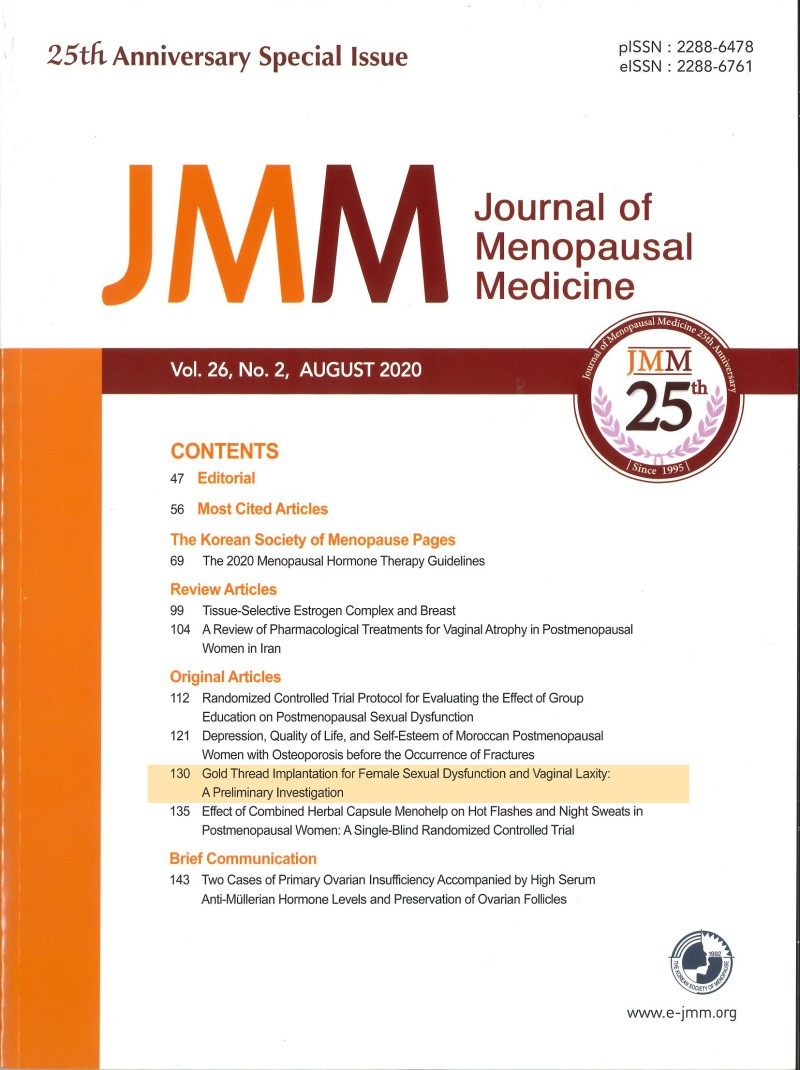
Clinical Study
Alkaline drinking water significantly improves spine bone density in postmenopausal women with osteoporosis, more than standard treatment alone.
Fasihi S, Fazelian S, Farahbod F, Moradi F, Dehghan M

Systematic Review
Almond intake significantly changed the concentrations of triglycerides, total cholesterol and low-density lipoproteins
Asbaghi O, Moodi V, Hadi A, Eslampour E, Shirinbakhshmasoleh M, Ghaedi E, Miraghajani M

Systematic Review
Acupuncture has beneficial effects on effectiveness, cognitive ability, and activities of daily living in the treatment of dementia.
Shao S, Tang Y, Guo Y, Tian Z, Xiang D, Wu J

Systematic Review
Fenugreek supplementation improved lipid parameters in adults.
Askarpour M, Alami F, Campbell MS, Venkatakrishnan K, Hadi A, Ghaedi E.

Review Article
Eggplant can be useful in the treatment of metabolic syndrome and its complications.
Yarmohammadi, F., Ghasemzadeh Rahbardar, M., Hosseinzadeh, H

Review Article
Eating fruits such as blueberry, prunes, kiwi, and raisins positively influences gut bacteria leading to improved bowel movements and constipation relief.
Katsirma Z, Dimidi E, Rodriguez-Mateos A, Whelan K

Randomised Controlled Trial
Morinda citrifolia fruit extract effectively supports bone regeneration and has anti-inflammatory properties in periodontal bone defects.
Sabu BS, Chandrashekar KT, Mishra R, Tripathi VD, Khatri H, Deo A
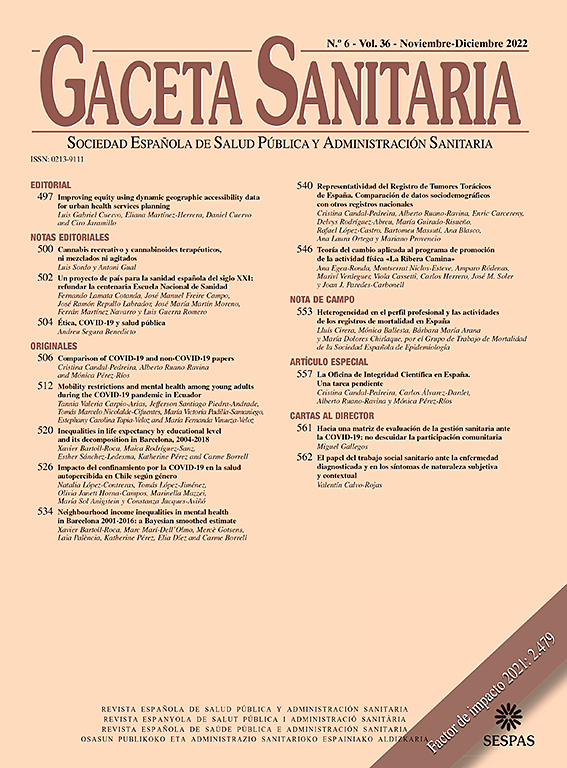
Experimental Study
Ginger honey supplementation does not reduce cortisol levels, however, it significantly increases glutathione and estrogen levels in test mice.
Usman AN, Raya I, Yasmin R, Aliyah , Dirpan A, Arsyad A, Permatasari AE, Sumidarti A, Umami N, Emmasitah

Meta-Analysis
Acupuncture treatment has shown to be more beneficial than standard pharmacotherapy for treating attention deficit hyperactivity disorder in children and adolescents.
Chen YC, Wu LK, Lee MS, Kung YL
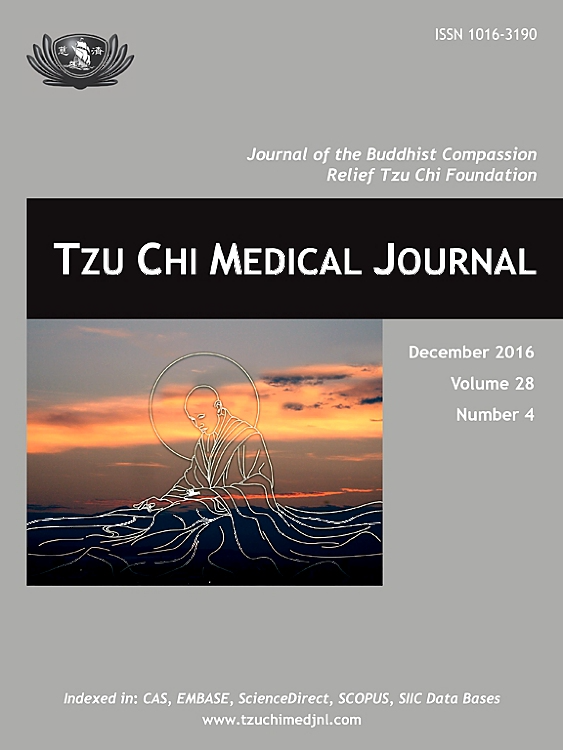
Systematic Review
Traditional Chinese medicine (TCM) can effectively treat dry eye disease (DED), and combining TCM with Western medicine can significantly enhance therapeutic effects and reduce treatment costs.
Yang CC, Su SH, Ho TJ

Meta-Analysis
The study reveals that pomegranate juice does not significantly affect vascular adhesion factors, but can effectively reduce the inflammatory marker, interleukin-6.
Asgary S, Karimi R, Joshi T, Kilpatrick KL, Moradi S, Samimi Z, Mohammadi E, Farzaei MH, Bishayee A
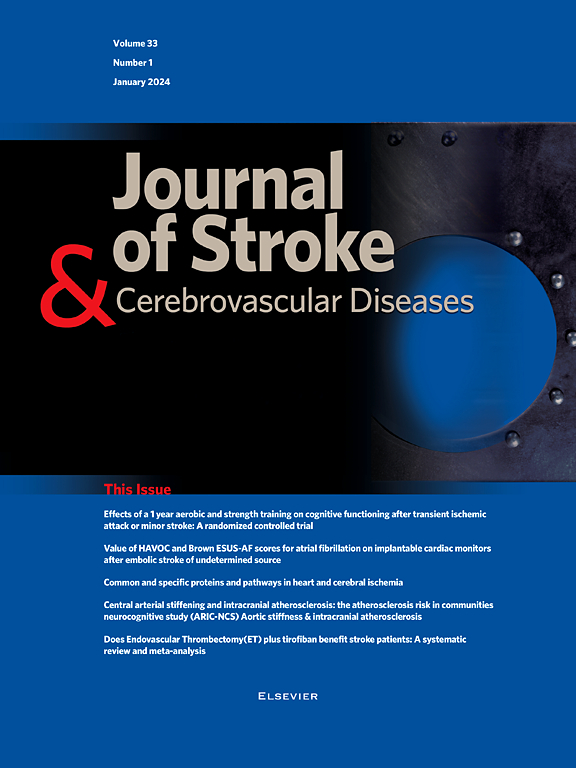
Systematic Review
Higher coffee consumption, specifically 3-4 cups daily, is associated with a 21% lower risk of stroke, with no further reductions with increased intake.
Shao C, Tang H, Wang X, He J

Review Article
Tea and coffee possess health promoting properties and can effectively prevent and treat metabolic disorders, including obesity, through the suppression of fat storage.
Sirotkin AV, Kolesarova A

Experimental Study
Ginger supplementation can prevent ethanol-induced reproductive dysfunction by improving hormone levels, reducing oxidative damage, inflammation, and regulating genes involved in testosterone synthesis.
Li N, Xing Y, Sultan AH, Raeeszadeh M, Akbari A, Liu H

Experimental Study
The Lycium ruthenicum Murr variety of goji berry exhibits a stronger antioxidant activity and antiproliferative effect on cancer cells compared to Lycium barbarum L.
Xiong L, Deng N, Zheng B, Li T, Liu RH
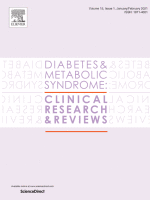
Systematic Review
The supplementary intake of green tea does not significantly affect blood glucose, fasting insulin, hemoglobin A1c, and insulin resistance in patients with type 2 diabetes mellitus.
Asbaghi O, Fouladvand F, Gonzalez MJ, Ashtary-Larky D, Choghakhori R, Abbasnezhad A

Systematic Review
Acupuncture combined with rehabilitation was more effective in improving the motor function and the ability of daily living.
Hou, Y., Liu, Y., Li, M., Ning, B., Wen, Z., & Fu, W.
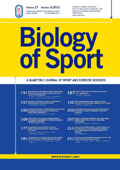
Randomised Controlled Trial
Walnut consumption coupled with concurrent training improves lipid profile, steroid hormone levels, and systematic inflammation in elderly men.
Kamoun A, Hammouda O, Turki M, Maaloul R, Chtourou M, Bouaziz M, Driss T, Souissi N, Chamari K, Ayadi F

Systematic Review
Endometriosis and Adenomyosis can have impact on miscarriage risk in pregnancy.
Yangxue Huang, Xianhong Zhao, Yiyuan Chen, Jie Wang, Weilin Zheng, Lixing Cao

Review Article
Coffee's bioactive compounds may exhibit various health benefits such as antioxidant and anti-inflammatory properties on the digestive tract and stimulating effects on motor function.
Iriondo-DeHond A, Uranga JA, del Castillo MD, Abalo R

Systematic Review
Chinese herbal medicine seems to be as effective as flunarizine in reducing the frequency of migraines in adults.
Lyu S, Zhang CS, Guo X, Zhang AL, Sun J, Lu C, Xue CC, Luo X

Review Article
Tian Ma, a traditional Chinese medicine, shows promise as a complementary therapy for aging-related diseases, including Alzheimer's and cerebrocardiovascular diseases.
Heese K

Review Article
Shaded gardening of Japanese matcha creates high-quality tea with unique compounds that can boost physical and mental health.
Kochman J, Jakubczyk K, Antoniewicz J, Mruk H, Janda K

Review Article
Acupuncture may be a clinically effective and safe treatment for Parkinson's disease.
Huang J, Qin X, Cai X and Huang Y

Review Article
Regular coffee consumption, due to its bioactive compounds, may have protective effects against chronic disorders and certain neurodegenerative conditions.
Socała K, Szopa A, Serefko A, Poleszak E, Wlaź P

Systematic Review
This study showed that the intervention time was concentrated at 4–8 weeks, mainly through Chinese herbal medicine for the prevention and treatment of elderly hypertension and the complications.
Zhang Y, Wang B, Ju C, Liu L, Zhu Y, Mei J, Liu Y, Xu F

Systematic Review
Acupuncture combined with antidepressants showed a more favourable effect on the treatment of post-stroke depression than antidepressants alone.
Kun Zhang, Guangwei Cui, Yuan Gao, Weidong Shen

Review Article
Isoflavones, mainly found in soy-derived products, show beneficial effects on bone health, potential cancer risk reduction, and alleviation of menopausal symptoms, but not on cardiovascular risk.
Gómez-Zorita S, González-Arceo M, Fernández-Quintela A, Eseberri I, Trepiana J, Portillo MP

Systematic Review
Regular walnut consumption is consistently linked to improved cognitive performance in adults, particularly those at higher risk of cognitive decline.
Lauren E Theodore, Nicole J Kellow, Emily A McNeil, Evangeline O Close, Eliza G Coad, Barbara R Cardoso,

Systematic Review
Based on moderate certainty of evidence, we conclude that acupuncture is mildly more effective and much safer than medication for the prophylaxis of migraine.
Giovanardi CM, Cinquini M, Aguggia M, Allais G, Campesato M, Cevoli S, Gentili F, Matrà A and Minozzi S

Systematic Review
The use of various treatments of traditional Chinese medicine can significantly improve the level of the total effective rate and reduce the occurrence of recurrence rate in the later stage of osteoarthritis treatment.
Wang L, Zhang XF, Zhang X, Guo DY, Duan YW, Wang ZC, Pei LS, Ru H, Cheng JX, Shi YJ, Zou JB

Network Pharmacology
Kushen-based traditional Chinese medicine formulations show considerable potential and effectiveness in treating ulcerative colitis with meaningful improvement in clinical remission rate.
Chen M, Ding Y, Tong Z

Randomised Controlled Trial
DKB114, a mixture of Linn flower extract, effectively reduces serum uric acid level, suggesting its potential as a dietary supplement for hyperuricemia treatment.
Park YH, Kim DH, Lee JS, Jeong HI, Lee KW, Kang TH

Systematic Review
Chilli pepper supplementation had significant effect on low density lipoprotein-cholesterol and marginally significant effect on body weight.
Jang, HH., Lee, J., Lee, SH. et al.
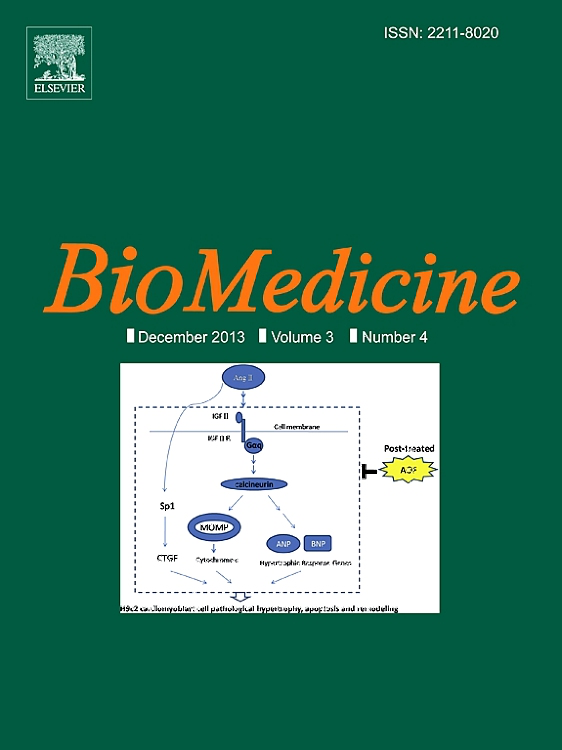
Randomised Controlled Trial
Consumption of jujube seed had a positive impact on improving the sleep quality of postmenopausal women and could be recommended as a useful herbal medication.
Mahmoudi R, Ansari S, Haghighizadeh MH, Maram NS, Montazeri S.

Cohort Study
Depressed patients who received acupuncture treatment showed a significantly lower risk of developing Parkinson's disease.
Huang CH, Lin MC, Hsieh CL

Treatments according to traditional Chinese medicine syndrome differentiation can provide patients with individualized treatments for chronic fatigue syndrome.
Zhang X, Wang M, Zhou S

Randomised Controlled Trial
Daily consumption of tart cherry juice may reduce processes involved in accelerated atherogenesis, potentially decreasing the risk of cardiovascular diseases.
Johnson SA, Navaei N, Pourafshar S, Jaime SJ, Akhavan NS, Alvarez-Alvarado S, Proaño GV, Litwin NS, Clark EA, Foley EM, George KS, Elam ML, Payton ME, Arjmandi BH, Figueroa A
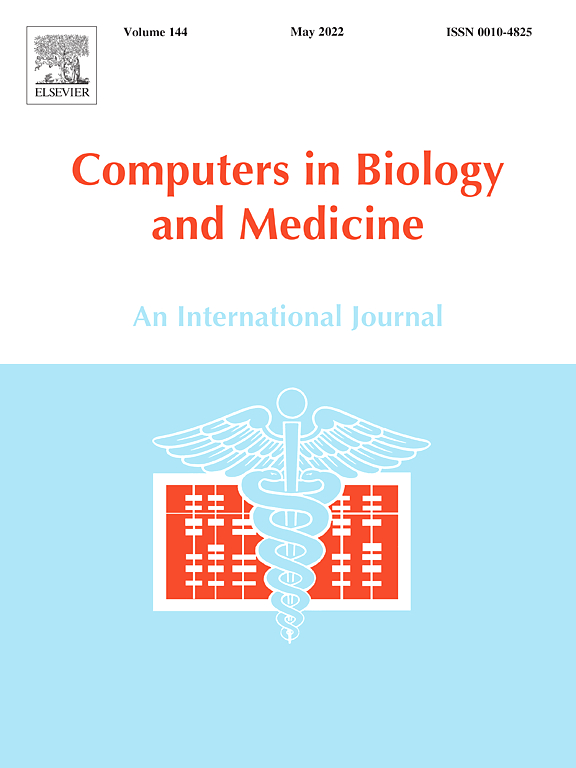
Network Pharmacology
Ba Ji Tian may prevent osteoporosis through the ovarian steroidogenesis signaling pathway. The anti-osteoporosis targets of Ba Ji Tian mainly play a role in the response to steroid hormones.
Liu ZW, Luo ZH, Meng QQ, Zhong PC, Hu YJ, Shen XL
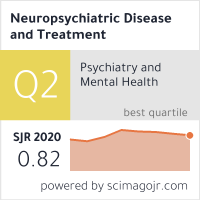
Systematic Review
Acupuncture is associated with a reduction in the risk of depression during long-term follow-up in patients with trigeminal neuralgia.
Liao CC, Lin CL, Liao KR, Li JM

ANOVA and multivariate analysis indicated that 18 food components have significant effects on cold/hot property of food and vitamins play an important role in food cold/hot properties.
A. Xie, H. Huang, F. Kong
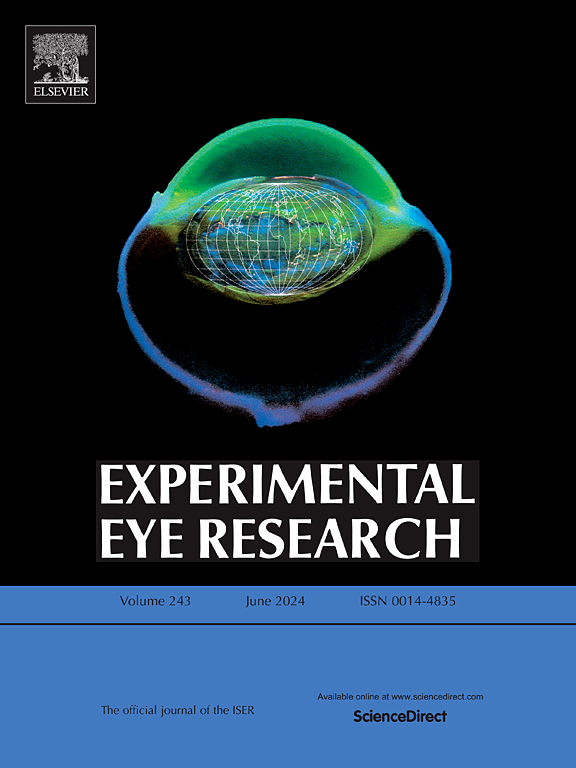
Experimental Study
Gypenosides, the main functional component from the vine Gynostemma pentaphyllum, display potential as a treatment for Retinitis Pigmentosa by protecting photoreceptor cells from degeneration.
Alhasani RH, Zhou X, Biswas L, Li X, Reilly J, Zeng Z, Shu X

Systematic Review
Compared with western medicine, acupuncture significantly increased the pregnancy and ovulation rates, as well as reducing the rate of miscarriages among Chinese women with infertility.
Zhang, J., He, Y., Liu, Y., Huang, X., & Yu, H.
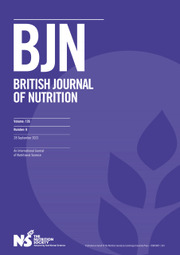
Systematic Review
Consuming walnuts does not significantly alter blood glucose levels, indicating cardiovascular protective effects of walnuts are not due to improved glycaemic control.
Neale, E., Guan, V., Tapsell, L., & Probst, Y.
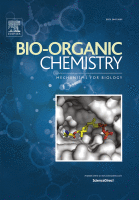
Experimental Study
Green tea polyphenolic compounds, (-)-epigallocatechin (EGC) and (-)-epicatechin-3-gallate (ECG), can diminish harmful Alzheimer's disease linked Aβ aggregates and ameliorate symptoms.
Chen T, Yang Y, Zhu S, Lu Y, Zhu L, Wang Y, Wang X
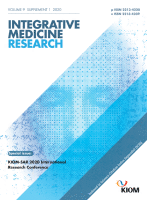
Systematic Review
The combination of acupuncture and speech rehabilitation training may improve total response rate of stroke patients with dysarthria.
Xie Q, Chen X, Xiao J, Liu S, Yang L, Chen J, Lai J, Lan R, Chen Y, Yang H, Guo X.

Meta-Analysis
Acupuncture at ST25 appears to be more effective than lactulose in the treatment of functional constipation.
Li P, Luo Y, Wang Q, Shu S, Chen K, Yu D, Fan C.

Review Article
Omega-3 polyunsaturated fatty acids supplementation during the prenatal and perinatal period could have a protective effect on neurodevelopmental disorders including ADHD, ASD, and MDD in youth.
Chang JPC, Su KP
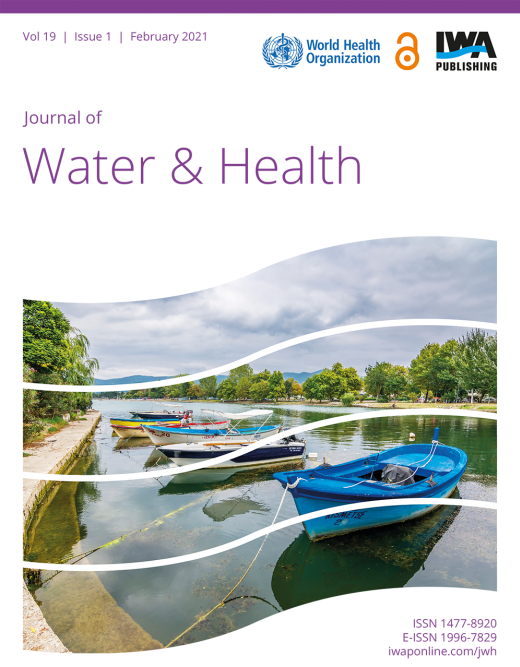
Experimental Study
Mineral water increases the diversity of gut microbiota by aiding the growth of Bacteroidetes taxa.
Zhou K, Liu W, Chen Z, Yang D, Qiu Z, Feng H, Li C, Jin M, Li J, Xu Q, Shen Z

Review Article
Acupuncture appears to be a promising complementary treatment for Alzheimer's disease, according to findings from systematic reviews and meta-analyses.
Huang J, Shen M, Qin X, Wu M, Liang S, Huang Y

Review Article
Flavonoids from jujube have been found to stimulate the expression of erythropoietin (EPO), a hormone stimulating blood production.
Chen J, Tsim KWK

Review Article
Recent studies have indicated that jujube possesses a wide range of pharmacological activities in nervous system, cardiovascular system, as well as anti-oxidation and anti-cancer properties.
Chen J, Tsim KWK

Randomised Controlled Trial
Daily supplementation of Matcha Green Tea Powder is found to enhance cognitive functions in elderly women.
Sakurai K, Shen C, Ezaki Y, Inamura N, Fukushima Y, Masuoka N, Hisatsune T

Systematic Review
Acupuncture treatment can improve the clinical effectiveness of diarrhea-predominant irritable bowel syndrome or functional diarrhea.
Jianbo Guo, Xiaoxiao Xing, Jiani Wu, Hui Zhang, Yongen Yun, Zongshi Qin, and Qingyong He
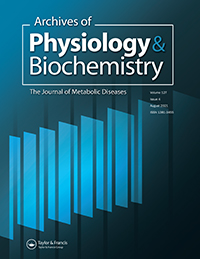
Systematic Review
Green tea supplementation raises adiponectin levels in patients with type 2 diabetes mellitus.
Asbaghi O, Fouladvand F, Ashtary-Larky D, Bagheri R, Choghakhori R, Wong A, Baker JS, Abbasnezhad A

Systematic Review
Green tea consumption notably reduces body weight, body mass index, and body fat, especially in long-term use, at lower dosages, and among overweight individuals with type-2 diabetes.
Asbaghi O, Fouladvand F, Gonzalez MJ, Aghamohammadi V, Choghakhori R, Abbasnezhad A

Review Article
Catechins in green tea potentially counteract osteoporosis by negatively affecting bone loss processes and enhancing bone formation processes.
Huang HT, Cheng TL, Lin SY, Ho CJ, Chyu JY, Yang RS, Chen CH, Shen CL

Systematic Review
Lavender can decrease the severity of labor pain, which could influence health policy makers and gynecologists.
Kazeminia M, Abdi A, Vaisi-Raygani A, Jalali R, Shohaimi S, Daneshkhah A, Salari N, Mohammadi M
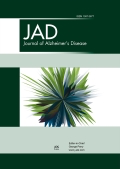
Clinical Study
High phenolic early harvest extra virgin olive oil shows notable improvement in cognitive function compared to a moderate phenolic version and the Mediterranean diet alone.
Tsolaki M, Lazarou E, Kozori M, Petridou N, Tabakis I, Lazarou I, Karakota M, Saoulidis I, Melliou E, Magiatis P

Systematic Review
Fennel is as effective as conventional drug therapies in alleviating pain in primary dysmenorrhea.
Hye Won Lee ,Lin Ang ,Myeong Soo Lee ,Zainab Alimoradi and Eunseop Kim

Systematic Review
Acupuncture was superior to sham/placebo acupuncture in treating insomnia.
Zhang J, He Y, Huang X, Liu Y, Yu H

Systematic Review
Acupuncture can help relieve short-term pain and recover from dysfunction and has been used as a useful, noninvasive, and conservative modality for managing sports injuries such as lateral meniscus rupture, femoral acetabular impingement, ganglion cysts, and sports hernia.
Lee JW, Lee JH, Kim SY
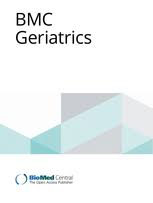
Cohort Study
Habitual and high-frequency tea consumption, particularly green tea, is associated with a reduced prevalence of cognitive impairment in middle-aged and older individuals.
Zhang J, Wang A, Zhang X, Chen S, Wu S, Zhao X, Zhang Q
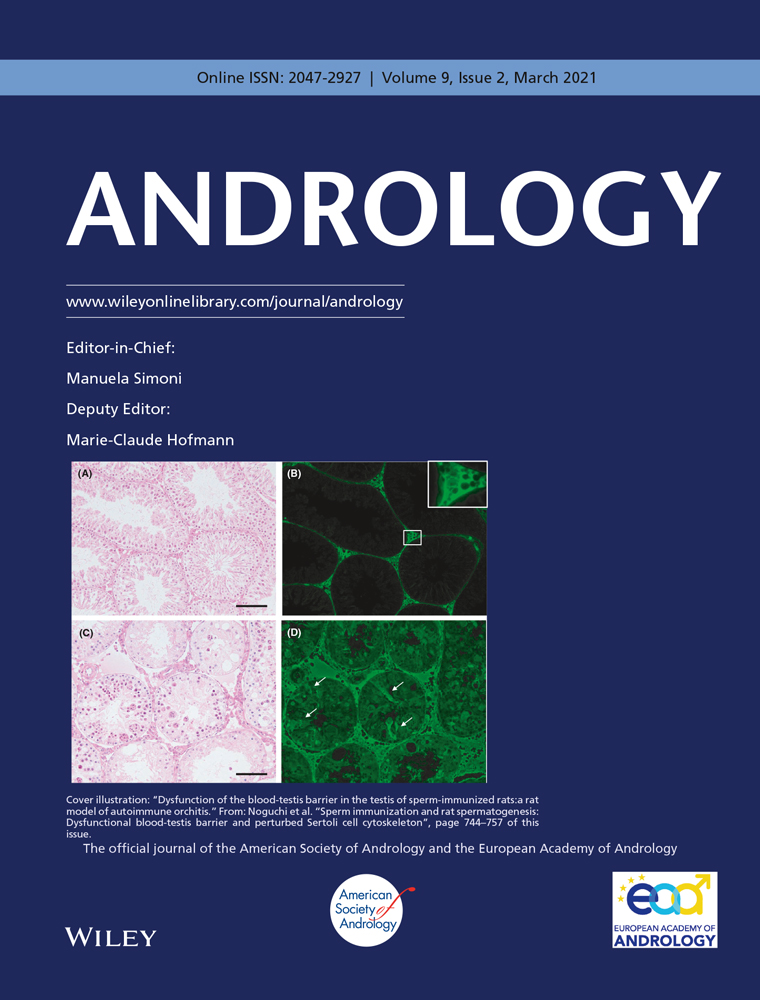
Randomised Controlled Trial
Incorporating tree nuts into a Western-style diet subtly modifies specific DNA methylation regions within sperm, thereby showing parts of the sperm epigenome can respond to dietary changes.
Salas‐Huetos A, James ER, Salas‐Salvadó J, Bulló M, Aston KI, Carrell DT, Jenkins TG

Systematic Review
In a meta-analysis of 14 trials with 1030 women, acupoint stimulation and Chinese Herbal Medicine were effective in improving menstrual cycles, perimenopausal symptoms, and sex hormone levels in comparison to Hormone Replacement Therapy.
Li Y, Xia G, Tan Y, Shuai J

Mandarin peel oil induced preferential inhibition of human prostate cancer cell proliferation in a concentration-dependent manner.
Hussien NA, Mohamed HRH.

Meta-Analysis
Intermittent fasting and energy-restricted diets may decrease inflammatory markers, especially in overweight and obese individuals, but have no impact on the levels of certain proteins involved in inflammation.
Wang X, Yang Q, Liao Q, Li M, Zhang P, Santos HO, Kord-Varkaneh H, Abshirini M

Review Article
Pumpkin seeds carry bioactive compounds with antidiabetic, antidepressant, antioxidant, antitumor, and cytoprotective activities, also aiding in microbiological infections and specific organ disorders.
Dotto JM, Chacha JS
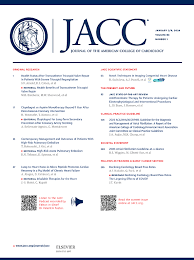
Randomised Controlled Trial
Incorporating daily doses of walnuts into the diet of elderly individuals significantly reduces the concentrations of several inflammatory biomarkers.
Cofán M, Rajaram S, Sala-Vila A, Valls-Pedret C, Serra-Mir M, Roth I, Freitas-Simoes TM, Bitok E, Sabaté J, Ros E

Review Article
Catechin-rich green tea extract (GTE) exercised anti-inflammatory activities can be beneficial in managing Nonalcoholic fatty liver disease (NAFLD) by reducing liver injury and gut-derived endotoxins.
Hodges JK, Sasaki GY, Bruno RS

Animal Study
Jian-Pi-Yi-Shen, a traditional Chinese medicine, helps treat anemia in chronic kidney disease by stimulating erythropoietin production and regulating iron recycling.
Wang F, Yu H, Huang S, Zheng L, Zheng P, Zhang S, Li S, Chen J

Review Article
Honey's phytochemical components and bioactive compounds have potential antiviral effects, potentially making it an effective natural product against COVID-19.
Al-Hatamleh MAI, Hatmal MM, Sattar K, Ahmad S, Mustafa MZ, Bittencourt MDC, Mohamud R

Review Article
Juhua, the flower head of Chrysanthemum morifolium Ramat, possesses multiple medicinal properties and has a significant role in dietary herbal medicine in China.
Yuan H, Jiang S, Liu Y, Daniyal M, Jian Y, Peng C, Shen J, Liu S, Wang W

Review Article
Green tea catechins potentially contribute to maintaining joint and skeletal muscle health, mitigating symptoms of osteoarthritis and sarcopenia.
Luk HY, Appell C, Chyu MC, Chen CH, Wang CY, Yang RS, Shen CL

Systematic Review
Ban Xia Xie Xin decoction has shown superior effectiveness and safety for treating chronic atrophic gastritis than patent medicine plus western medicine.
Cao Y, Zheng Y, Niu J, Zhu C, Yang D, Rong F, et al.

Randomised Controlled Trial
Supplementation with a kudzu flower and mandarin peel extract dose of 1150 mg/day seems to be an acceptable option for reducing hot flashes symptoms, as well as improving bone turnover, compared with the placebo group, during the menopausal transition.
Kim JE, Jeong H, Hur S, Lee J, Kwon O.

Review Article
Traditional Chinese medicine has unique advantages in relieving symptoms, shortening treatment time and reducing the development of severe viral pneumonia.
Xi S, Li Y, Yue L, Gong Y, Qian L, Liang T, Ye Y

Randomised Controlled Trial
The use of Chinese herbal formula granules appears to improve kidney function in stage 3 chronic kidney disease patients.
Zhao J, Sun W, Chen J, Sun Z, Chen D, Cao C, Yang M, Ma J, Wang L, Xing C, Chen Y, Sheng M, Zhou E, Xu L, Gao K, Liu L, Liu Q, Yi L, He W, Zhu Y

Systematic Review
Zuo Gui Wan combined with anti-osteoporosis drugs may have beneficial effects on osteoporosis with respect to bone mineral density and bone metabolism markers.
Li J, Sun K, Qi B, Feng G, Wang W, Sun Q, Zheng C, Wei X, Jia Y

Systematic Review
Acupuncture could significantly relieve pain and increase cure rate for acute ankle sprain, even producing improved results when combined with other therapies.
Liu AF, Gong SW, Chen JX, Zhai JB

Experimental Study
Pomegranate juice increases the effectiveness of lung cancer treatment with the low dose chemotherapy drug Cisplatin, while simultaneously reducing its toxicity on normal cells.
Nasser M, Damaj Z, Hijazi A, Merah O, Al-Khatib B, Hijazi N, Trabolsi C, Damaj R, Nasser M

Experimental Study
Jujube seed extract has been found to primarily reduce anxiety by regulating the GABAergic and serotonergic synapse pathways, specifically modulating GABRA1, HTR1A, and HTR2A.
Chen L, Zhang X, Hu C, Zhang Y, Zhang L, Kan J, Li B, Du J

Review Article
Beverages, through their diverse nutritional contents, have notable effects on rheumatoid arthritis progression by interacting with immune signaling pathways and altering the microbiome.
Dey M, Cutolo M, Nikiphorou E

Experimental Study
Mu Dan Pi (MDP) and its water extract may serve as potential treatment options for inflammatory bowel disease.
Chen TF, Hsu JT, Wu KC, Hsiao CF, Lin JA, Cheng YH, Liu YH, Lee DY, Chang HH, Cho DY, Hsu JL

Systematic Review
Our findings revealed that all acupuncture methods are effective and safe for allergic rhinitis. Acupuncture plus conventional medicine are potentially the most effective treatment strategies for allergic rhinitis.
Yin, Z., Geng, G., Xu, G. et al.

Systematic Review
In many studies, acupuncture has been shown to be a safe, efficacious and readily available alternative therapy which may be beneficial to certain migraine patients.
Urits I, Patel M, Putz ME, Monteferrante NR, Nguyen D, An D, Cornett EM, Hasoon J, Kaye AD, Viswanath O.

Systematic Review
Acupuncture is beneficial in the treatment of metabolic syndrome and could serve as an alternative therapy for metabolic syndrome-associated conditions.
Li X, Jia HX, Yin DQ, Zhang ZJ

Systematic Review
Moving cupping therapy, alone or coupled with other treatments, could effectively alleviate symptoms of plaque psoriasis with minimal side effects.
Xing M, Ding X, Zhang J, Kuai L, Ru Y, Sun X, Ma T, Miao X, Liu L, Wang Y, Li B, Li X

Systematic Review
Our meta-analysis provides promising evidence to suggest that using the Tonifying-Kidney principle combined with western medicines for primary osteoporosis is more effective than using western medicines alone.
Liang J, Wang F, Huang J, Xu Y, Chen G

Experimental Study
The major components of green tea and coffee, EGCG and CGA respectively, may have anti-cancer effects, though these effects seem to vary for different types of cancer.
Hayakawa S, Ohishi T, Miyoshi N, Oishi Y, Nakamura Y, Isemura M

Review Article
Pomegranate possesses significant biological and nutraceutical value with potential applications against a wide spectrum of diseases due to its rich phytochemical composition.
Caruso A, Barbarossa A, Tassone A, Ceramella J, Carocci A, Catalano A, Basile G, Fazio A, Iacopetta D, Franchini C, Sinicropi MS
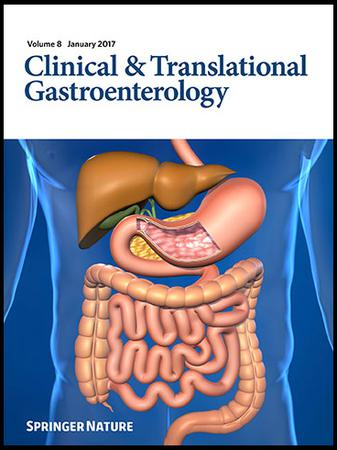
Randomised Controlled Trial
Jia Wei Xiao Yao Wan showed an improvement in gastrointestinal symptoms for patients with functional dyspepsia who resisted conventional treatments.
Chen G, Feng P, Wang S, Ding X, Xiong J, Wu J, Wang L, Chen W, Chen G, Han M, Zou T, Li L, Du H

Systematic Review
Chinese herbal formulas could be used as potential candidates for treatment of COVID-19.
Xiong, X., Wang, P., Su, K., Cho, W. C., & Xing, Y.
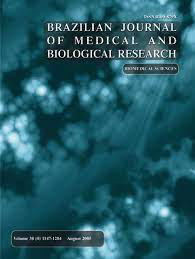
Systematic Review
Tai chi may be an exercise option for older adults, with a positive effect on overall quality of life and physical component.
Wang D, Wang P, Lan K, Zhang Y, Pan Y.

Systematic Review
The effect of acupuncture on weight loss may be maximized when acupuncture treatment is combined with lifestyle management in patients with overweight.
SeoyoungKim

Review Article
Many clinical and experimental studies suggest that Chinese herbal formula are effective in reducing fatty liver disease, and revolving inflammation via many mechanistic pathways.
Zhang Shuwei, Wong Yui-Tung, Tang Ka-Yu, Kwan Hiu-Yee, Su Tao
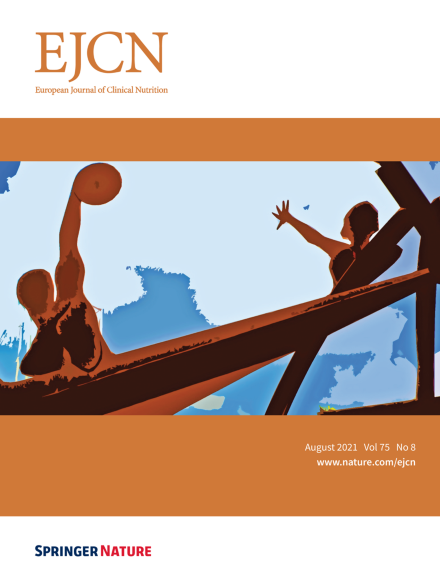
Review Article
TCM nutrition is an ancient but burgeoning discipline, and its main goal is to use food as a means to achieve balance and harmony within the body.
Zhao, X., Tan, X., Shi, H. et al

Experimental Study
Needling at the GB20 acupoint in Traditional Chinese Medicine can reverse the expression of certain genes related to axon development and regeneration in optic neuritis.
Chen J, Zhang L, Gan X, Zhang R, He Y, Lv Q, Fu H, Liu X, Miao L

Systematic Review
Acupuncture could be safe and effective for pain reduction, restoring shoulder function, and restoring flexion range of motion for frozen shoulder patients in the short term and midterm.
Ben-Arie E, Kao PY, Lee YC, Ho WC, Chou LW, Liu HP

Systematic Review
The majority of studies concluded the superiority of short-term analgesic effects over various controls and suggested that acupuncture may be efficacious for chronic musculoskeletal pain.
Zhang YJ, Wang C

Review Article
Citrus species are valuable natural sources of flavonoids and a promising source for future treatments aimed at the prevention and management of diabetes and related complications.
Gandhi GR, Vasconcelos ABS, Wu DT, Li HB, Antony PJ, Li H, Geng F, Gurgel RQ, Narain N, Gan RY.
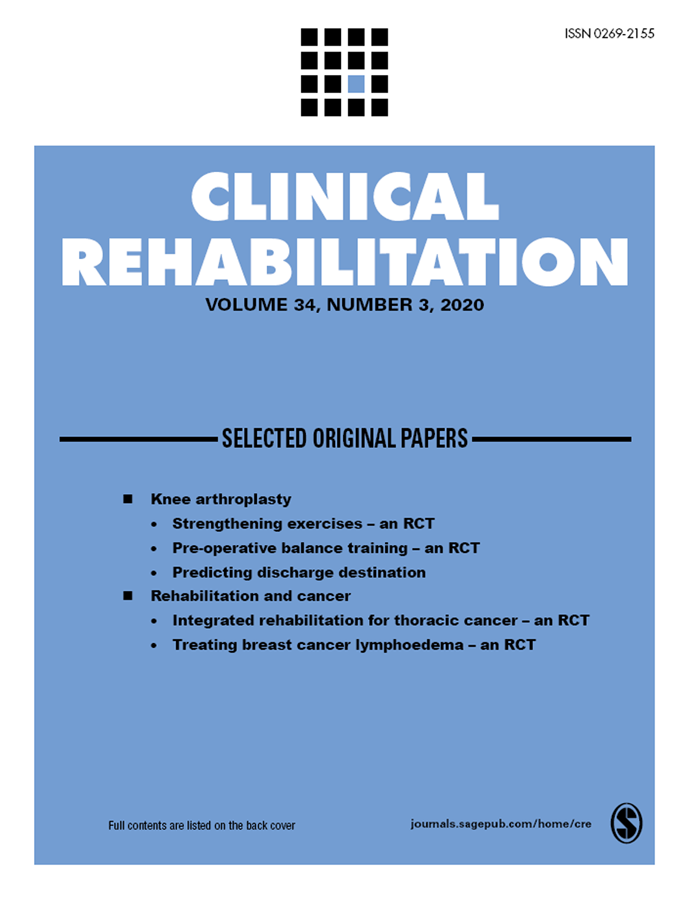
Systematic Review
Tai Chi exercise was beneficial for ameliorating physical and mental health of patients with knee osteoarthritis and should be available as an alternative non-pharmacological therapy in rehabilitation programmes.
Hu L, Wang Y, Liu X, Ji X, Ma Y, Man S, Hu Z, Cheng J, Huang F.

Systematic Review
Danggui Shaoyao San may regulate multiple biological pathways related to Alzheimer's disease pathogenesis, such as the oxidative stress and inflammatory reaction processes.
Wu, Q., Chen, Y., Gu, Y. et al.

Randomised Controlled Trial
Daily consumption of decaffeinated green tea catechins may enhance working memory.
Baba Y, Inagaki S, Nakagawa S, Kaneko T, Kobayashi M, Takihara T

Systematic Review
The consumption of green tea significantly lowers low-density lipoprotein cholesterol and total cholesterol, but it does not affect high-density lipoprotein cholesterol or triglycerides.
Xu R, Yang K, Li S, Dai M, Chen G

Systematic Review
Du Huo Ji Sheng Decoction monotherapy or combined with antiosteoporosis drugs may have beneficial effects for postmenopausal osteoporosis.
Li J, Wang W, Feng G, Du J, Kang S, Li Z, Zhu W, Shang H

Review Article
Traditional Chinese medicine impacts on the prevention and treatment of influenza with potential value in shorting fever durations and alleviating influenza symptoms among children and pregnant women.
Xiong Y, Li NX, Duan N, Liu B, Zhu H, Zhang C, Li L, Lu C, Huang L

Randomised Controlled Trial
The use of ginger, chamomile, and honey significantly diminished the intensity of dysmenorrhea pain as compared to the use of mefenamic acid.
Shabani F, Chabra A, Vakilian K, Bioos S, Bozorgi M, Ayati MH, Nejatbakhsh F
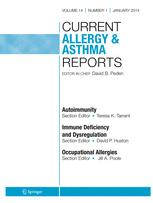
Review Article
Traditional Chinese Medicine, specifically acupuncture, demonstrates promising effects in managing allergic diseases like allergic rhinitis and asthma.
Chan HHL, Ng T

Randomised Controlled Trial
Inhalation aromatherapy using Damask rose and lavender essential oils can reduce anxiety and pain in women after they have had a cesarean section.
Abbasijahromi A, Hojati H, Nikooei S, Jahromi HK, Dowlatkhah HR, Zarean V, Farzaneh M, Kalavani A

Systematic Review
Lavender demonstrates significant benefits for pain relief and episiotomy wound healing in postpartum.
Abedian S, Abedi P, Jahanfar S, Iravani M, Zahedian M

Systematic Review
Modified Tao-Hong Siwu Tang (MTST) appears more effective than non-steroidal anti-inflammatory drugs (NSAIDs), and a combination of Tao-Hong Siwu Tang with oral contraceptives (OCs) offers benefits over OCs alone for treating primary dysmenorrhea.
Ji HR, Park KS, Woo HL, Lee MJ, Yoon JG, Lee HJ, Hwang DS, Lee CH, Jang JB, Lee JM

Systematic Review
The most important tremella mushroom benefits are anti-aging, anti-inflammatory, lower cholesterol, combat obesity, protect nerves and may fight cancer.
Mohamad Hesam Shahrajabian, Wenli Sun, Hong Shen and Qi Cheng

Randomised Controlled Trial
Fenugreek improves breast milk production in mothers and increases the weight gain of newborns during their first week of life.
Ravi R, Joseph J

Systematic Review
Cinnamon supplementation significantly decreases inflammation and oxidative stress levels, serving as a potential additive for cardiometabolic health improvement.
Zhu, Changyou; Yan, Hongmei; Yin, Zheng; Santos, Heitor O; Melahat Sedanur Macit; et al

Meta-Analysis
Supplementation with blueberry shows a potential for beneficial impact on reducing body weight, which might indirectly influence cardiovascular disease risk factors.
Miraghajani M, Momenyan S, Arab A, Hasanpour Dehkordi A, Symonds ME
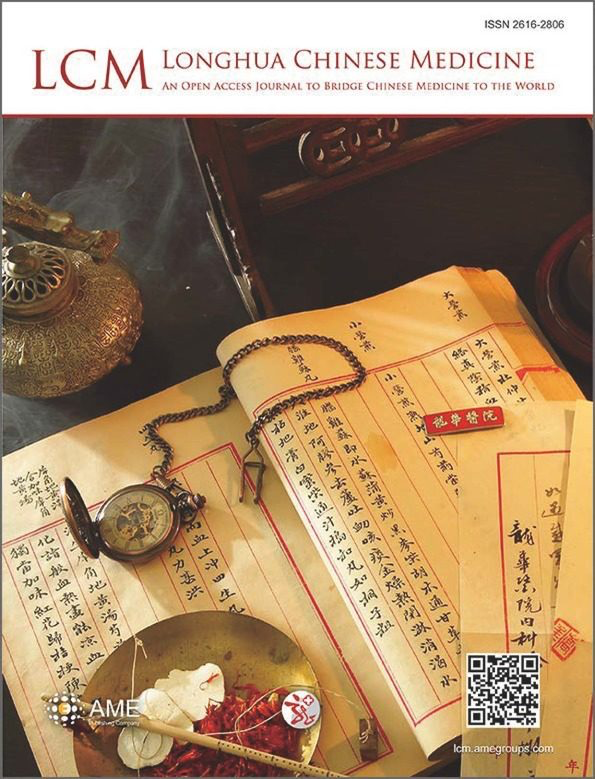
Review Article
Green tea and its compounds, especially catechins, may potentially prevent and treat osteoarthritis due to their potent antioxidant and anti-inflammatory properties.
Barbalho SM, Goulart RA, Buglio DS, Araujo AC, Guiguer EL

Review Article
Green tea polyphenols can potentially protect against neurodegenerative disorders like Parkinson's Disease through antioxidant, anti-inflammatory, and neuroprotective actions.
Malar DS, Prasanth MI, Brimson JM, Sharika R, Sivamaruthi BS, Chaiyasut C, Tencomnao T

Systematic Review
The literature overall supports an inverse association between green tea and cardiovascular disease-related health outcomes, while the included meta-analyses generally suggested an inverse association between green tea and BMI-related and blood pressure outcomes.
Abe SK, Inoue M
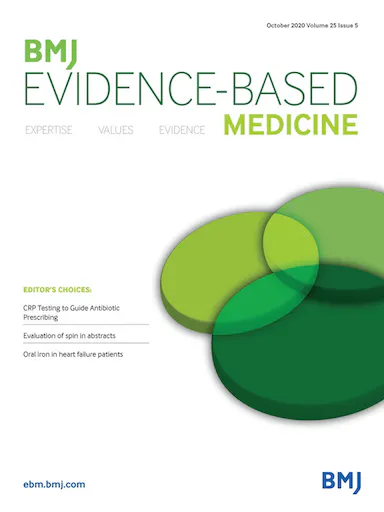
Systematic Review
Honey can be used as an alternative to antibiotics by clinicians who wish to offer treatment for upper respiratory tract infections, which may help to combat antimicrobial resistance.
Abuelgasim H, Albury C, Lee J

Systematic Review
Honey is more effective than usual care alternatives for improving upper respiratory tract infection symptoms, particularly cough frequency and cough severity.
Abuelgasim H, Albury C, Lee J

Systematic Review
Acupressure offers promising pain relief and shorter labor duration during childbirth.
Chen Y, Xiang XY, Chin KHR, Gao J, Wu J, Lao L, Chen H

Randomised Controlled Trial
Electroacupuncture and manual acupuncture show similar effectiveness in relieving plantar heel pain syndrome with no significant difference between the two modalities.
Wang W, Liu Y, Jiao R, Liu S, Zhao J, Liu Z

Randomised Controlled Trial
Combining acupuncture via shu-stream acupoints with the Chinese herbal formulation Dang Gui Yin Zi presents a potentially effective treatment for Chronic Spontaneous Urticaria.
Qin Y, Guo J, Song P, Hou T, He Y, Han M, Yu Q, Lin W, Chen M, Su H

Clinical Study
Montmorency tart cherry juice can significantly improve blood pressure, fasting glucose, cholesterol rates and respiratory exchange ratio in those with metabolic syndrome.
Desai T, Roberts M, Bottoms L

Review Article
Herbal medicines were shown to normalize female hormones, diminish male hormones, recover the estrous cycle, ameliorate insulin resistance, and improve lipid metabolism in PCOS.
Kwon Chan-Young, Cho Ik-Hyun, Park Kyoung Sun
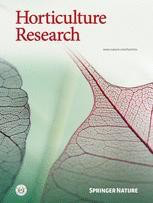
Review Article
In jujube fruit, the contents of sugar, vitamin C, and cyclic adenosine monophosphate (cAMP) are around 2, 100, and 1000 times those of apple, respectively.
Liu, M., Wang, J., Wang, L. et al.

Randomised Controlled Trial
Concentrated pomegranate juice consumption can potentially lower cardiovascular disease risk factors in women with polycystic ovary syndrome.
Abedini M, Ghasemi‐Tehrani H, Tarrahi MJ, Amani R

Randomised Controlled Trial
A botanical formula of lutein ester, zeaxanthin, and extracts from blackcurrant, chrysanthemum, and goji berry can effectively lessen eye fatigue and improve macular function.
Kan J, Wang M, Liu Y, Liu H, Chen L, Zhang X, Huang C, Liu BY, Gu Z, Du J

Review Article
Honey, with its variable composition based on botanical origin, exhibits antioxidant and anti-inflammatory properties, suggesting its potential efficacy in managing obesity-related dysfunctions, including neurodegeneration, through improved glycemic control and lipid profile.
Terzo S, Mulè F, Amato A

Systematic Review
Auricular acupressure combined with acupuncture showed the highest effectiveness in reducing post-hemorrhoidectomy pain.
Qin D, Zhang AM, Chen M, Tang TC, Du YJ, Zheng H
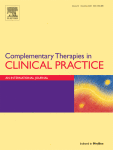
Systematic Review
This review discovered that acupuncture might be a safe and effective adjuvant therapy for individuals with poststroke spastic hemiplegia.
Fan W, Kuang X, Hu J, Chen X, Yi W, Lu L, Xu N, Wang L.

Clinical Study
Magnesium-rich mineral water effectively treats and prevents constipation in children, leading to regular, painless bowel movements.
Kulikov AG, Zakharova IN, Tvorogova TM, Stepurina LL, Elezova LI

Systematic Review
Acupuncture shows promise in treating postcholecystectomy syndrome.
Yin Z, Xiao Q, Xu G, Cheng Y, Yang H, Zhou J, Fu Y, Chen J, Zhao L, Liang F
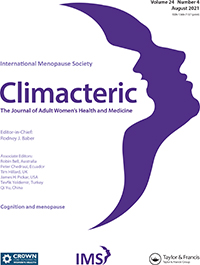
Systematic Review
Menopause symptoms, menopausal hormone therapy (MHT), and acupuncture's efficacy and safety, supported by clinical evidence, with a focus on traditional Chinese medicine practices.
Y. Qin, X. Ruan, R. Ju, J. Pang, G. Zhao & X. Hu

Systematic Review
Eggplant may possibly be used in the treatment of anemia, atherosclerosis, and fatty degeneration.
Meenakshi Sharma and Prashant Kaushik

Systematic Review
The pooled results suggested that acupuncture led to moderate improvements in hot flashes, fatigue, and stiffness.
Yuanqing P, Yong T, Haiqian L, Gen C, Shen X, Dong J, Qi C, Miaomiao Q.

Systematic Review
Cinnamon supplementation contributes to the improvement of insulin resistance in patients with PCOS.
Javad Heshmati, Mahdi Sepidarkish, Mojgan Morvaridzadeh, Farnaz Farsi, Nishant Tripathi, Maryam Razavi, Mahroo Rezaeinejad

Network Pharmacology
Chrysanthemum morifolium Ramat. ethanol extract (CEE) presents a potential protective effect on lipopolysaccharide induced acute lung injury in mice.
Liu G, Zheng Q, Pan K, Xu X
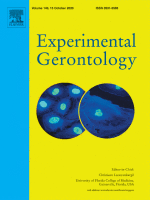
Review Article
Citrulline supplementation combined to high intensity interval training is more effective in improving functional capacities and body composition in healthy older adults than high intensity interval training alone.
Buckinx F., Carvalho L.P., Marcangeli V., Dulac M., Hajj Boutros G., Gouspillou G., Gaudreau P., Noirez P., Aubertin-Leheudre M.

Review Article
Coffee consumption can significantly alter the absorption, distribution, metabolism, and excretion of many drugs, leading to varied therapeutic responses.
Belayneh A, Molla F

Experimental Study
The ethanol extract of avocado seeds demonstrates an anti-endometriosis effect, potentially providing a new alternative treatment for endometriosis.
Minko Essono S, Mvondo MA, Ngadjui E, Kemka Nguimatio FX, Watcho P

Review Article
Magnesium sulfate-rich natural mineral waters are effective and safe as a natural treatment for functional constipation.
Dupont C, Hébert G
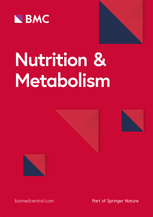
Systematic Review
Green tea supplementation significantly lowers fasting glucose levels but does not significantly affect fasting insulin and haemoglobin A1c values.
Xu R, Bai Y, Yang K, Chen G

Systematic Review
The study shows the promising potential of Suan Zao Ren as a multi-effect traditional Chinese medicine derived from the seeds of Ziziphus Jujuba.
Su-Rong He, Chong-Bo Zhao, Jing-Xia Zhang, Jing Wang, Bo Wu, Chun-Jie Wu,

Systematic Review
Traditional Chinese medicine could potentially serve as an effective alternative therapy for managing Psoriasis vulgaris.
Dai D, Wu H, He C, Wang X, Luo Y, Song P

Network Pharmacology
Seasonal variations influence the nutrient composition of European sardines, with lipid levels peaking from July to September and amino acid content highest during winter.
Šimat V, Hamed I, Petričević S, Bogdanović T
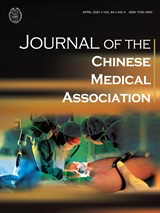
Clinical Study
Chinese herbal medicine might improve lower urinary tract symptoms in patients with benign prostatic hyperplasia.
Yeh HF, Li TF, Tsai CH, Wu PW, Huang YH, Huang WJ, Chen FJ, Hwang SJ, Chen FP, Wu TP

Systematic Review
Cupping therapy, as an adjunct to current treatments, may potentially enhance efficacy when treating patients with chronic urticaria.
Xiao, X., Zhang, L., Shi, Y., Yao, J., Cao, W., Liu, Y., Zou, Z., Zhou, S., Chen, M., Li, C., Zheng, Q., & Li, Y.

Systematic Review
Current evidence suggests that acupuncture is an efficient and safe treatment for functional constipation.
Wang, Lu; Xu, Mingmin; Zheng, Qianhua; Zhang, Wei; Li, Ying.

Experimental Study
Soaking nuts doesn't increase the bioavailability of their nutrients, instead, it reduces the mineral concentration, particularly in chopped nuts.
Kumari S, Gray AR, Webster K, Bailey K, Reid M, Kelvin KAH, Tey SL, Chisholm A, Brown RC

Systematic Review
Green tea extract supplement intake reduces serum triglyceride and total cholesterol in patients with type 2 diabetes mellitus, especially when used long term.
Asbaghi O, Fouladvand F, Moradi S, Ashtary-Larky D, Choghakhori R, Abbasnezhad A
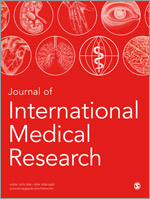
Systematic Review
For primary dysmenorrhoea, cinnamon/fennel/ginger effectively reduced pain intensity, and cinnamon shortened the duration of pain.
Xu Y, Yang Q, Wang X

Systematic Review
Compared with the sham acupuncture group, the acupuncture group had greater improvements in the frequency of migraine attacks, VAS score, and treatment efficiency.
Ou MQ, Fan WH, Sun FR, Jie WX, Lin MJ, Cai YJ, Liang SY, Yu YS, Li MH, Cui LL, Zhou HH

Cocoa polyphenols promote gut health by favorably altering gut microbiota composition and producing secondary bioactive metabolites with antioxidant and anti-inflammatory properties.
Sorrenti V, Ali S, Mancin L, Davinelli S, Paoli A, Scapagnini G

Systematic Review
Our meta-analysis revealed small-to-moderate analgesic effects of acupuncture on delayed onset muscle soreness, especially on day 1 by comparing the acupuncture and control groups.
Chang WD, Chang NJ, Lin HY, Wu JH

Systematic Review
In the treatment of knee osteoarthritis, the acupuncture group had significant advantages over sham acupuncture or no-acupuncture groups in relieving pain and improving physical function.
Wang, Tt., Liu, Y., Ning, Zy. et al.
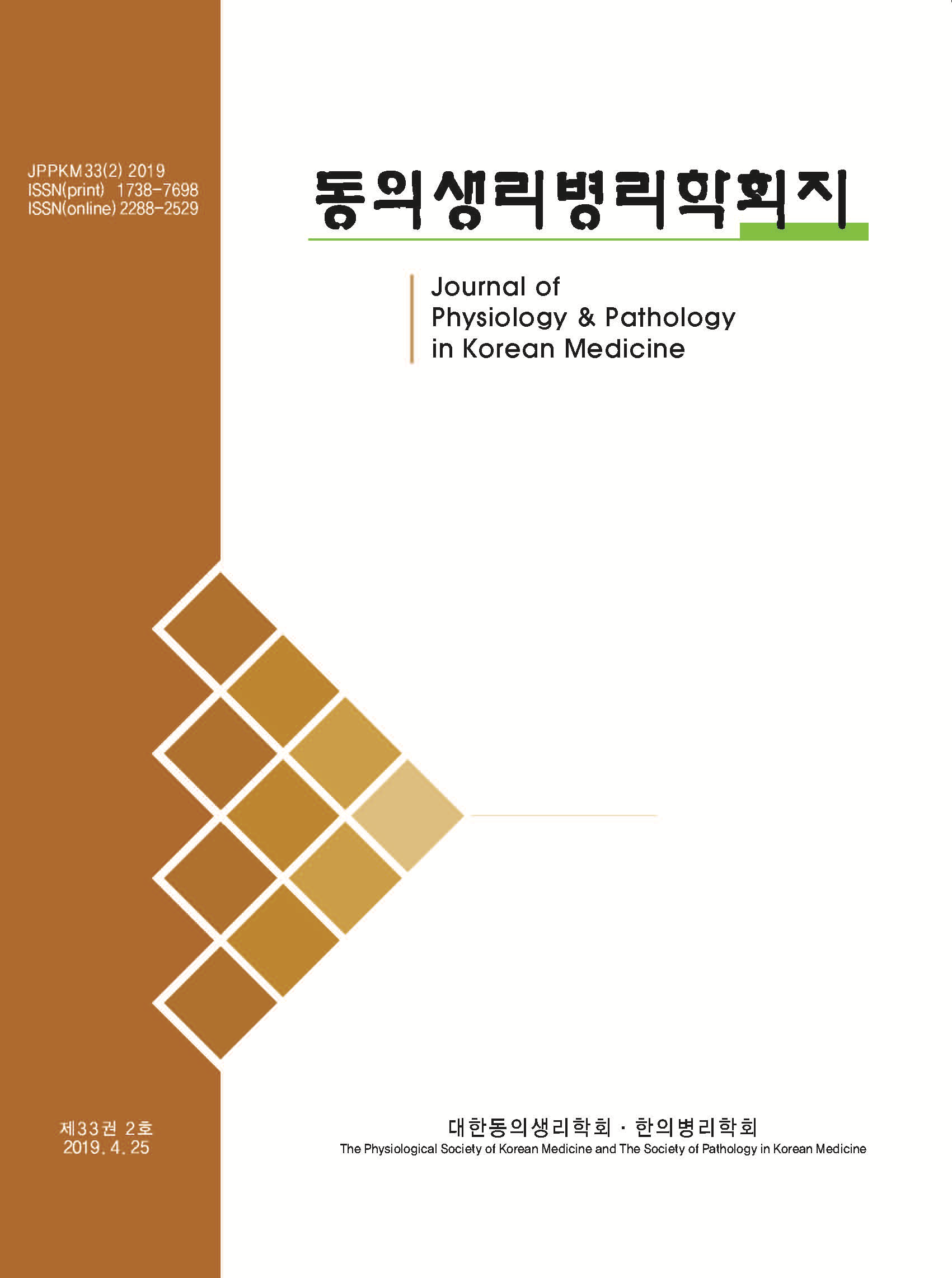
Systematic Review
Xiao Yao San and its modifications were effective for the improvement of general symptoms and fatigue severity in chronic fatigue syndrome post-treatment.
Kim J, Song J, Nam D

Systematic Review
In the treatment of chronic pain with depression, acupuncture could not only achieve better clinical efficacy, but also have higher safety compared with conventional mediation therapy.
Yan B, Zhu S, Wang Y, Da G, Tian G

Review Article
Black pepper, particularly the piperine it contains, enhances the absorption of iron, potentially improving athletic performance in endurance sports.
Fernández-Lázaro D, Mielgo-Ayuso J, Córdova Martínez A, Seco-Calvo J

Theoretical Article
Coffee, like many fruits and vegetables, activates a cellular response that boosts antioxidants and repair enzymes, which contributes to a lower risk of several diseases.
Kolb H, Kempf K, Martin S
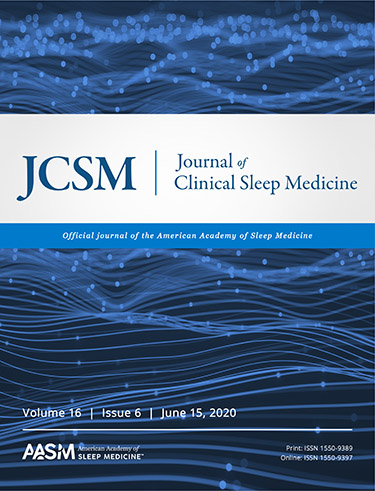
Randomised Controlled Trial
The use of standardized saffron extract appears to show significant improvement in sleep quality in healthy adults with self-reported sleep issues.
Lopresti AL, Smith SJ, Metse AP, Drummond PD

Meta-Analysis
Chronic consumption of cranberry or cherry juice might considerably improve blood pressure levels.
Wang Y, Gallegos JL, Haskell-Ramsay C, Lodge JK

Cohort Study
Adding Chinese herbal medicines to conventional therapy could decrease subsequent stroke risk for atrial fibrillation patients.
Zheng LC, Livneh H, Chen WJ, Lin MC, Lu MC, Yeh CC, Tsai TY
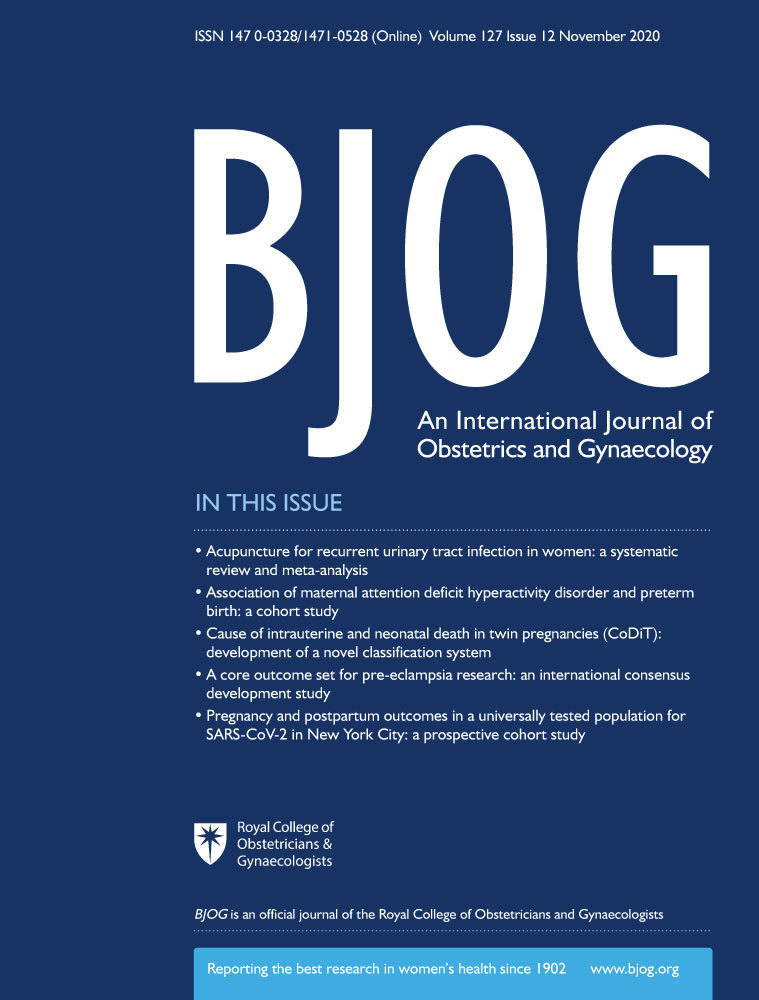
Systematic Review
Acupuncture appeared to be beneficial for treatment and prophylaxis of recurrent urinary tract infections.
Qin X, Coyle ME, Yang L, Liang J, Wang K, Guo X, Zhang AL, Mao W, Lu C, Xue CC, Liu X

Systematic Review
Acupuncture appears to be the least expensive therapeutic modality to deliver long-term in the management of trigeminal neuralgia, and our analysis indicated that it was less stressful to patients than pharmacotherapy or surgery.
Edwards, J. W., & Shaw, V.

Systematic Review
Acupuncture appears more effective than pharmacotherapy or surgery in the management of trigeminal neuralgia.
Edwards, J. W., & Shaw, V.

Meta-Analysis
Oral treatment with Six Gentlemen Decoction with Aucklandia and Amomum (SGDAA), a traditional Chinese medicine, significantly improves the treatment of Ulcerative colitis compared to conventional Western medicine.
Yuan H, Zhang T, Huang S, Zhou J, Park S

Systematic Review
Green tea catechins-containing mouthwash may potentially be a practical alternative to chlorhexidine due to its efficacy in plaque reduction and minimal side effects.
Gartenmann SJ, Steppacher SL, von Weydlich Y, Heumann C, Attin T, Schmidlin PR

Systematic Review
Clinical trials categorize botanical parts of date palm as being most effective in eight different areas such as obstetrics, oncology, and endocrinology.
Bagherzadeh karimi A, Elmi A, Zargaran A, Mirghafourvand M, Fazljou SMB, araj-Khodaei M, Baghervand Navid R

Systematic Review
Fenugreek supplementation could be considered as an effective lipid-lowering medicinal plant.
Kiyan Heshmat-Ghahdarijani,Neda Mashayekhiasl,Atefeh Amerizadeh,Zahra Teimouri Jervekani,Masoumeh Sadeghi,

Systematic Review
Acupuncture plus drug therapy may have a more beneficial effect for Alzheimer's disease patients than drug therapy alone on general cognitive function in the short and medium term and on Activities of Daily Living scores in the medium term.
Wang, Y. Y., Yu, S. F., Xue, H. Y., Li, Y., Zhao, C., & Jin, Y. H.
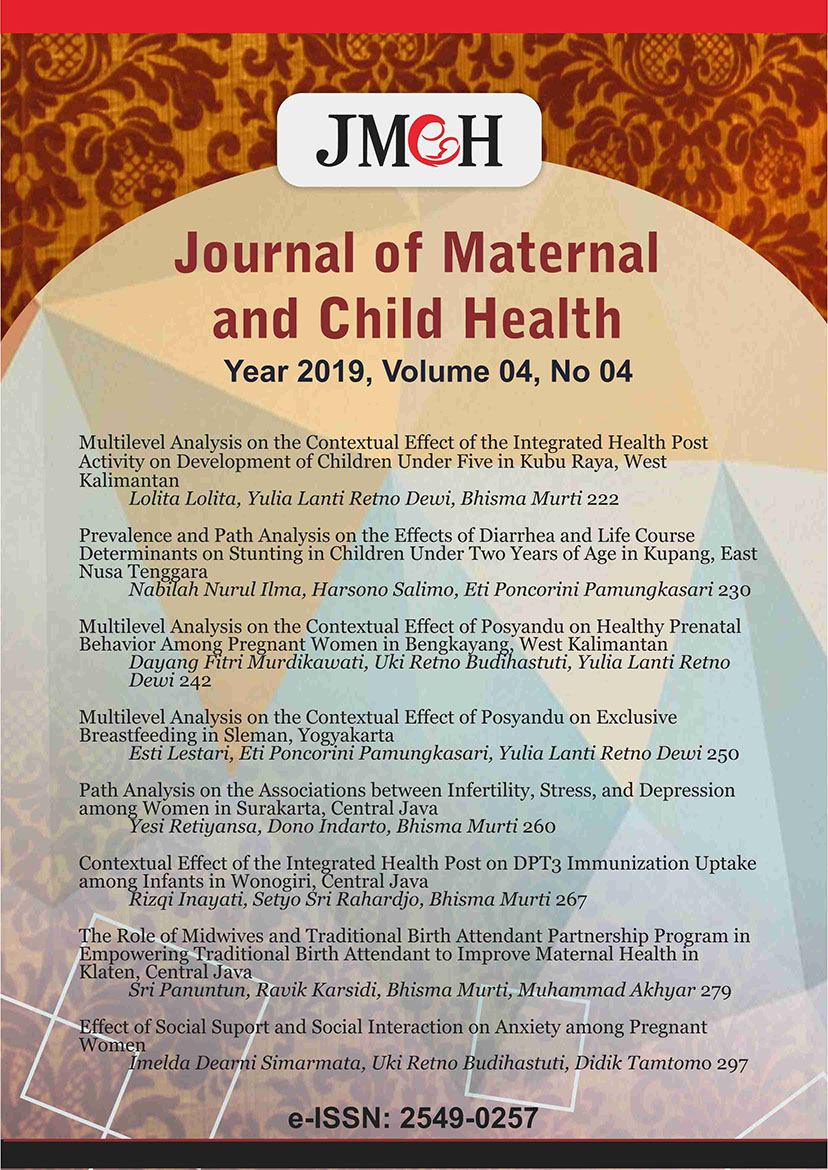
Meta-Analysis
Acupuncture therapy can affect pain reduction in dysmenorrhea patients.
Novitasari, E., Soemanto, R., & Prasetya, H.
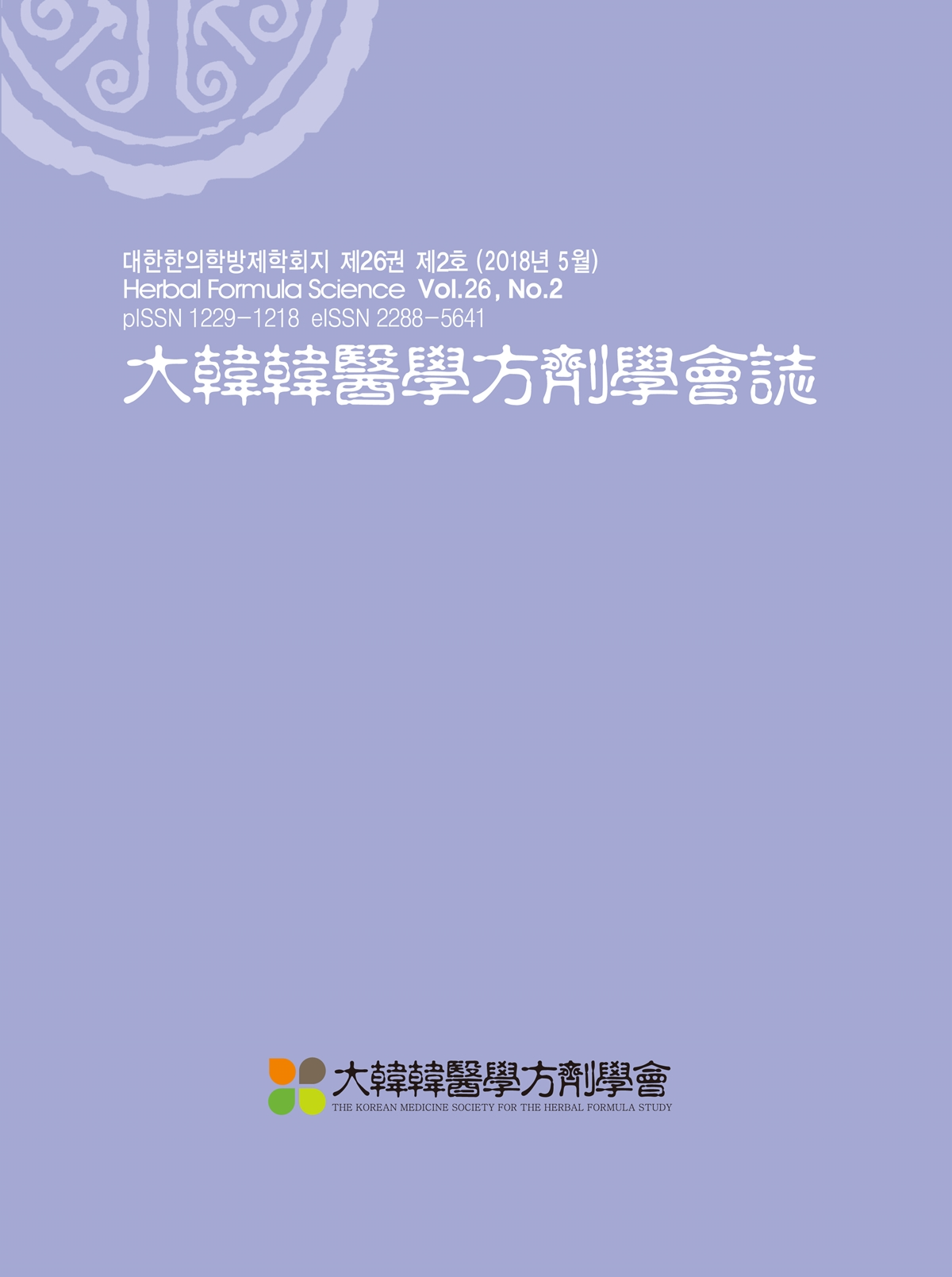
Systematic Review
Gui Pi Tang may be beneficial for relieving and managing the general symptoms in CFS patients.
Nam, Donghyun

Review Article
Seaweed extracts and polysaccharides are effective candidates for developing drugs and functional nutrition products to treat inflammatory bowel disease.
Besednova NN, Zaporozhets TS, Kuznetsova TA, Makarenkova ID, Kryzhanovsky SP, Fedyanina LN, Ermakova SP

Systematic Review
Acupuncture could promote the recovery of menstrual cycles as well as downregulate the levels of LH and testosterone in patients with PCOS.
Wu J, Chen D, Liu N

Positive effects of acupuncture and electroacupuncture were observed in regulating gastric motility, gastric accommodation, mental status, gastrointestinal hormones, and central and autonomic functions while improving dyspeptic symptoms and quality of life.
Guo Y, Wei W, Chen JD

The pharmacological actions of Coix seed in gastric cancer treatment may involve pathways in cancer, the DNA damage response, transcription factor binding, the apoptotic process, and the cell–cell junction.
Zhang, F., Liu, X., Huo, B., Li, B., & Zhang, R. (

Review Article
Ginger, through various methods, exhibits promising pain reduction effects for conditions such as dysmenorrhea, muscle soreness, osteoarthritis, low back pain, and migraines.
Rondanelli M, Fossari F, Vecchio V, Gasparri C, Peroni G, Spadaccini D, Riva A, Petrangolini G, Iannello G, Nichetti M, Infantino V, Perna S

Experimental Study
Unpasteurised milk and dairy products intake could potentially alter gut microbiome composition which may influence psychological functioning.
Butler MI, Bastiaanssen TFS, Long-Smith C, Berding K, Morkl S, Cusack AM, Strain C, Busca K, Porteous-Allen P, Claesson MJ, Stanton C, Cryan JF, Allen D, Dinan TG

Systematic Review
The effectiveness of galactagogues in enhancing breast milk production has limited evidence.
Foong SC, Tan ML, Foong WC, Marasco LA, Ho JJ, Ong JH
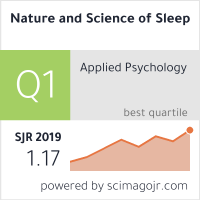
Randomised Controlled Trial
Acupuncture was shown to significantly improve the sleep quality in pregnant women, possibly through increasing melatonin secretion.
Foroughinia S, Hessami K, Asadi N, Foroughinia L, Hadianfard M, Hajihosseini A, Pirasteh N, Vossoughi M, Vafaei H, Faraji A, Kasraeian M, Doroudchi M, Rafiee Monjezi M, Roozmeh S, Bazrafshan K.
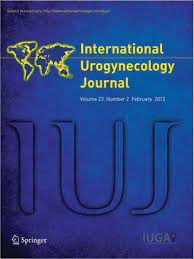
Systematic Review
Antenatal perineal massage reduces severe perineal trauma and postpartum complications.
Abdelhakim AM, Eldesouky E, Elmagd IA, Mohammed A, Farag EA, Mohammed AE, Hamam KM, Hussein AS, Ali AS, Keshta NHA, Hamza M, Samy A, Abdel-Latif AA

Systematic Review
This systematic review and meta-analysis provides evidence that acupuncture moxibustion therapy is serviceable and safe in treating breast cancer-related lymphedema.
Huimin Jin, Yuying Xiang, Yuqian Feng, Yiting Zhang, Shan Liu, Shanming Ruan, Huamiao Zhou

Systematic Review
Coffee intake may have a variable effect on inflammation markers, with different responses noted between men and women and across various geographical regions.
Moua ED, Hu C, Day N, Hord NG, Takata Y

Systematic Review
Green tea intake can significantly reduce body weight, body mass index and waist circumference, with the greatest effect seen with lower dosages and shorter treatment durations.
Lin Y, Shi D, Su B, Wei J, Găman MA, Sedanur Macit M, Borges do Nascimento IJ, Guimaraes NS
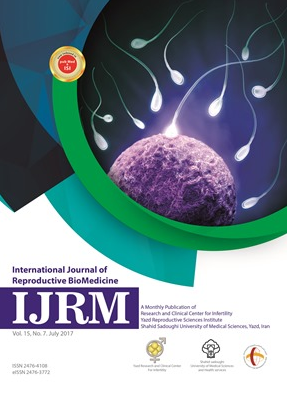
Experimental Study
Date palm fruit extract may mitigate some harmful effects of formaldehyde on male fertility by improving testosterone, sperm, and testicular conditions.
Zaren M, Haghpanah T, Asadi Shekari M, Hassan Eftekhar-Vaghefi S
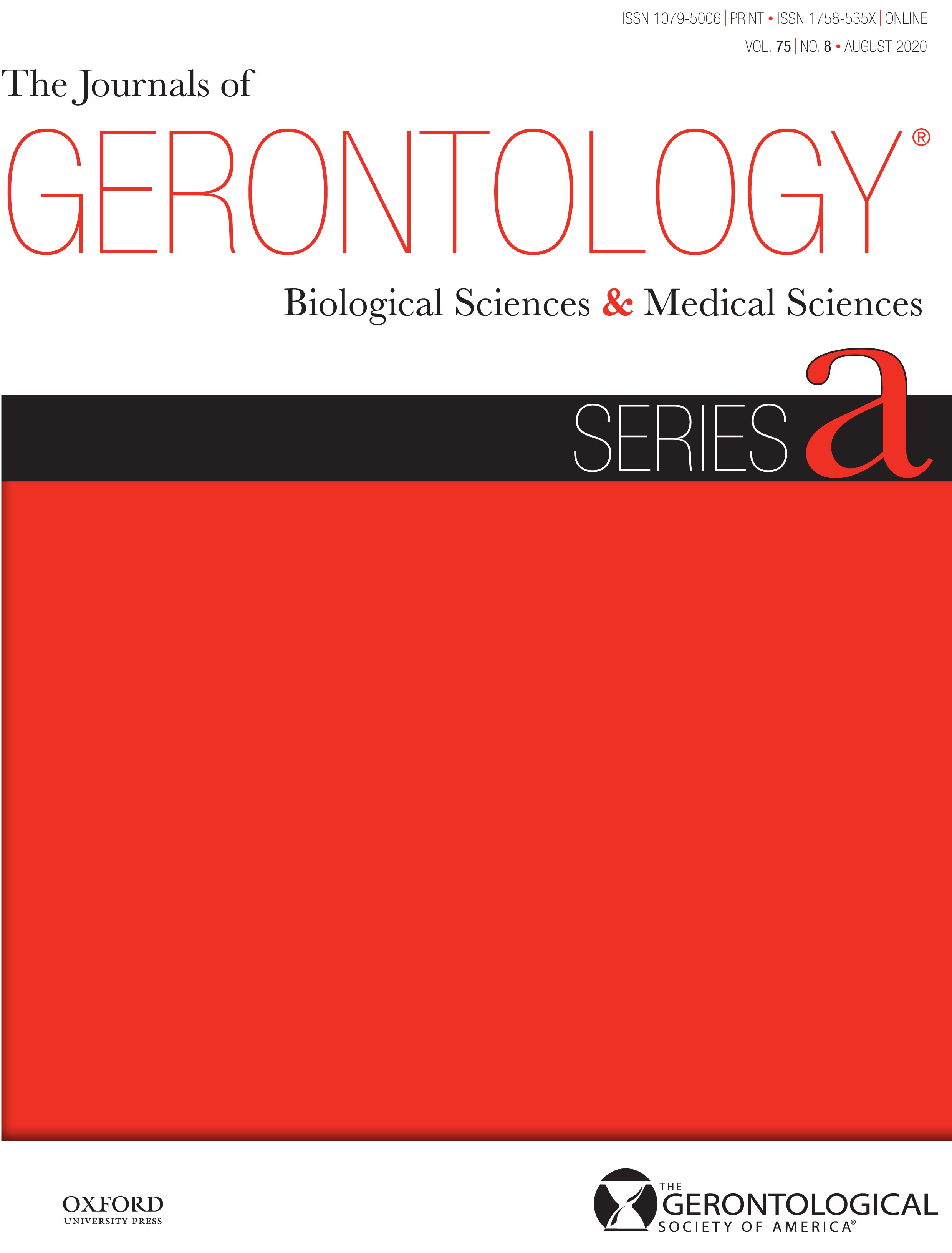
Cohort Study
Certain oxylipins, which are bioactive lipids derived from omega-6 and omega-3 polyunsaturated fatty acids, are potential key influencers in arthritis in older adults.
Coras R, Pedersen B, Narasimhan R, Brandy A, Mateo L, Prior-Español A, Kavanaugh A, Armando AM, Jain M, Quehenberger O, Martínez-Morillo M, Guma M
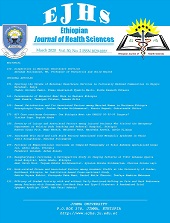
Systematic Review
Aromatherapy, specifically with lavender essential oil, can effectively alleviate maternal anxiety and labor pain.
Mahbubeh Tabatabaeichehr , Hamed Mortazavi

Systematic Review
Almond intake significantly decreased diastolic blood pressure, and inconsistently, almonds decreased systolic blood pressure.
Eslampour E, Asbaghi O, Hadi A, Abedi S, Ghaedi E, Lazaridi AV, Miraghajani M
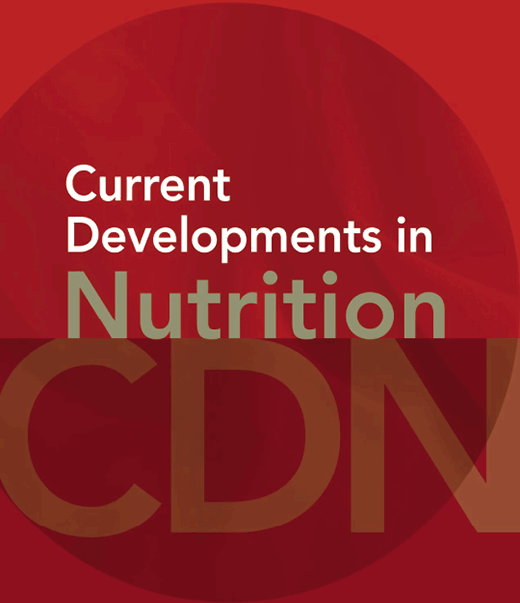
Review Article
Citrus peel flavonoids exhibit a remarkable spectrum of biological activities including anti-inflammatory, anticancer, antiproliferation, antiangiogenesis, antioxidant, cell cycle regulation, and antimetastasis effects.
Nooshin Koolaji, Balakrishnan Shammugasamy, Aaron Schindeler, Qihan Dong, Fariba Dehghani, Peter Valtchev

Systematic Review
Cinnamon supplementation may help manage metabolic parameters in polycystic ovary syndrome patients by reducing fasting blood sugar, insulin, LDL-C, total cholesterol, and triacylglycerol levels.
Heydarpour F, Hemati N, Hadi A, Moradi S, Mohammadi E, Farzaei MH
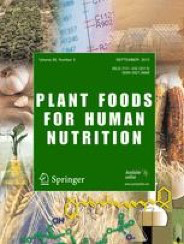
Experimental Study
Pomegranate juice has potential beyond ascorbic acid alone in enhancing iron absorption and assimilation, supporting Ayurveda's proposition of managing iron deficiency anemia with pomegranate.
Balasubramani SP, Varghese RK, Vishnuprasad CN, Venkatasubramanian P

Systematic Review
Acupuncture has been shown to be more effective than vitamin B treatment in terms of clinical efficacy rate for chemotherapy induced peripheral neuropathy.
Hwang MS, Lee HY, Choi TY, et al.

Systematic Review
Traditional Chinese medicine treatments can serve as promising auxiliary therapies for functional recovery of patients with spinal cord injury.
Yubao Lu, Jingjing Yang, Xuexi Wang, Zhanjun Ma, Sheng Li, Zhaoyang Liu, Xuegong Fan

Systematic Review
Meta-analysis showed that date fruit consumption can significantly reduce the active phase of labor, and also significantly improve the bishop score.
Bagherzadeh Karimi A, Elmi A, Mirghafourvand M, Baghervand Navid R

Network Pharmacology
The antioxidant potential and substance levels in Matcha tea is affected by the harvest period and water temperature used for preparation.
Jakubczyk K, Kochman J, Kwiatkowska A, Kałduńska J, Dec K, Kawczuga D, Janda K

Systematic Review
Acupuncture on treating chronic fatigue syndrome has the advantage for efficacy and safety compared to conventional treatments such as drugs, counselling psychology and physical therapy.
Yin ZH, Wang LJ, Cheng Y, Chen J, Hong XJ, Zhao L, Liang FR.

Meta-Analysis
Strawberry interventions significantly reduced CRP levels and may improve total cholesterol and LDL-cholesterol in individuals with high baseline levels.
Gao Q, Qin LQ, Arafa A, Eshak ES, Dong JY

Animal Study
Adzuki bean paste consumption can reduce fat accumulation in rats by lowering energy intake and altering gut microbiota composition.
Han KH, Ohashi S, Sasaki K, Nagata R, Pelpolage S, Fukuma N, Reed JD, Shimada K, Kadoya N, Fukushima M
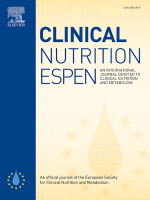
Systematic Review
Our findings showing that chocolate and flavonoid intake significantly improves the flow-mediated dilatation, provide mechanistic evidence to support a causal link between chocolate and flavonoid intake and lowered CVD risk.
Ebaditabar M, Djafarian K, Saeidifard N, Shab-Bidar S

Systematic Review
Cinnamon supplementation can improve blood pressure by a modest degree.
Hadi A, Campbell MS, Hassani B, Pourmasoumi M, Salehi-sahlabadi A, Hosseini SA
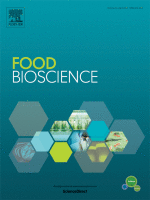
Review Article
Different varieties of dates pose impressive nutritional profiles and exhibit multiple health benefits, including anti-cancer, anti-inflammatory, and cholesterol lowering potential.
Hussain MI, Farooq M, Syed QA
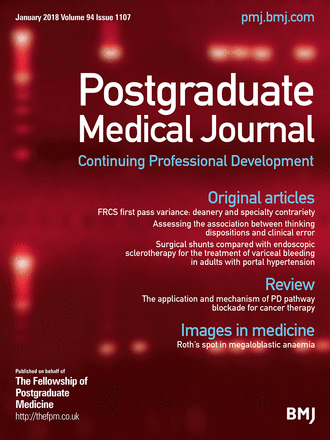
Systematic Review
Acupuncture is an effective therapy for simple obesity rather than a placebo effect.
Zhong YM, Luo XC, Chen Y, Lai DL, Lu WT, Shang YN, Zhang LL, Zhou HY

Systematic Review
Acupuncture may be an effective and safe treatment in obstructive sleep apnea patients.
Liaoyao Wang, Jia Xu, Yijun Zhan, Jian Pei

Systematic Review
Traditional Chinese Medicine when combined with vitamins significantly improves sperm characteristics and pregnancy rates in male infertility treatment.
Wang M, Wang Q, Du Y, Jiang H, Zhang X

Randomised Controlled Trial
Chamomile capsules can decrease the amount of menstrual bleeding and thus, can offer remedy for women suffering from heavy periods.
Mollabashi EN, Ziaie T, Bekhradi R, Khalesi ZB

Review Article
Pomegranate, due to its polyphenols, flavonoids and fatty acids, exhibits significant pain-relieving effects and could potentially be used as a treatment for various types of pain.
Guerrero-Solano JA, Jaramillo-Morales OA, Velázquez-González C, De la O-Arciniega M, Castañeda-Ovando A, Betanzos-Cabrera G, Bautista M
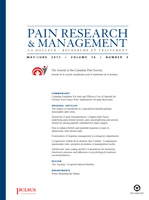
Systematic Review
Acupuncture reduced more headache days and the times of using painkiller and was more effective in reducing the frequency and degree of headache than western medicine and sham acupuncture.
Li YX, Xiao XL, Zhong DL, Luo LJ, Yang H, Zhou J, He MX, Shi LH, Li J, Zheng H, Jin RJ

Randomised Controlled Trial
Lemon juice, but not black tea, can lower and delay the blood glucose concentration peak after consuming bread.
Freitas D, Boué F, Benallaoua M, Airinei G, Benamouzig R, Le Feunteun S

Systematic Review
Acupuncture appears to be superior to drug or blocking therapy or sham acupuncture therapy for lateral epicondylitis.
Zhou Y, Guo Y, Zhou R, Wu P, Liang F, Yang Z

Systematic Review
Apple vinegar consumption has potential health benefits, including weight loss and lower blood glucose levels, with seemingly insignificant side effects.
Launholt TL, Kristiansen CB, Hjorth P
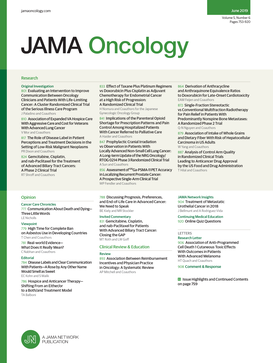
Randomised Controlled Trial
Compared with usual care, acupuncture resulted in significant improvement in chemotherapy-induced peripheral neuropathy symptoms.
Bao T, Patil S, Chen C, et al.
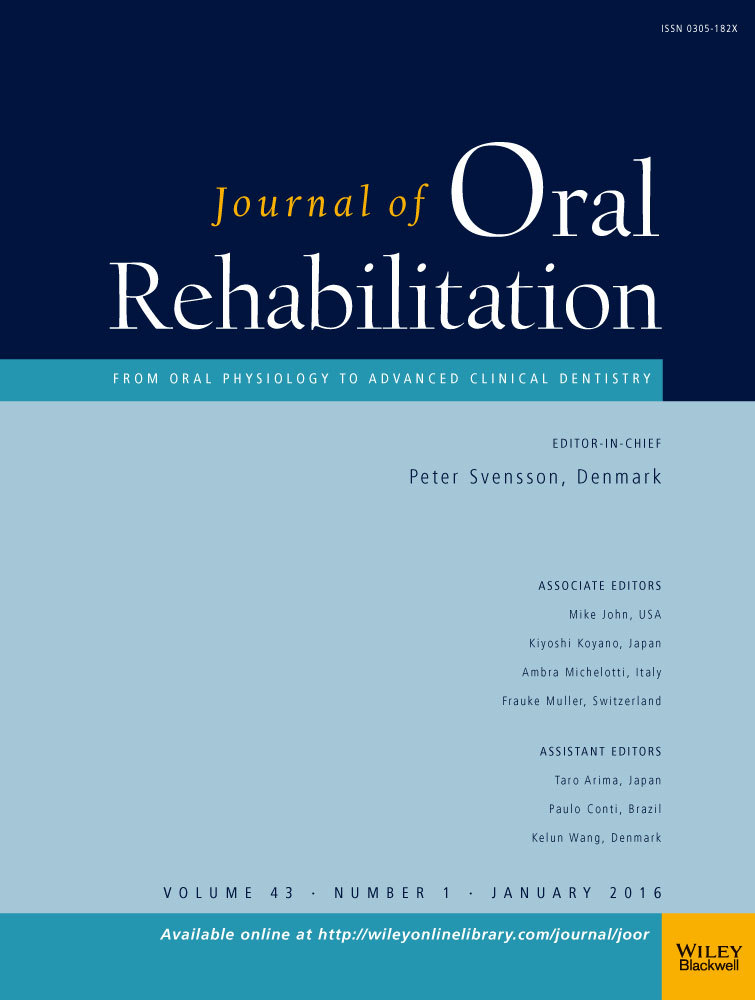
Randomised Controlled Trial
Acupuncture, regardless of whether on specific or non-specific points, substantially decreases non-chronic pain in patients suffering from Temporomandibular Disorders.
Şen S, Orhan G, Sertel S, Schmitter M, Schindler HJ, Lux CJ, Giannakopoulos NN

Systematic Review
Acupuncture at Zusanli (ST36) might be effective in reducing injuries induced by sepsis in various organs by reducing oxidative stress and inflammation.
Lai F, Ren Y, Lai C, Chen R, Yin X, Tan C, Li J, Yang C, Liang G, Li J, Zeng R

Cohort Study
Ramadan fasting can induce rapid improvement in rheumatoid arthritis and spondyloarthritis activity without significantly affecting medication compliance or tolerance.
Ben Nessib D, Maatallah K, Ferjani H, Kaffel D, Hamdi W

Randomised Controlled Trial
Daily intake of 3 grams of oat beta-glucans significantly reduces LDL-Cholesterol, Total Cholesterol, and non-HDL-Cholesterol levels without impacting intestinal well-being or glucose levels.
Cicero AFG, Fogacci F, Veronesi M, Strocchi E, Grandi E, Rizzoli E, Poli A, Marangoni F, Borghi C

Randomised Controlled Trial
Certain essential oils such as lavender, neroli, jasmine, roman chamomile, clary sage, and Indian sandalwood can potentially increase oxytocin concentrations in postmenopausal women.
Tarumi W, Shinohara K
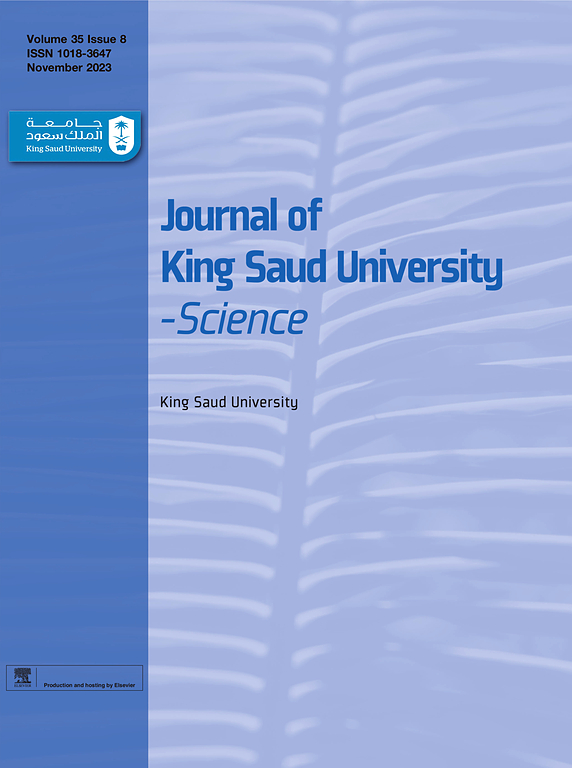
Systematic Review
Almond consumption was found to significantly reduce systolic blood pressure.
Li Z, Bhagavathula AS, Batavia M, Clark C, Abdulazeem HM, Rahmani J, Yin F
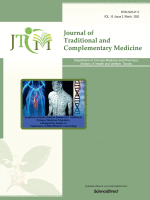
Cohort Study
Chinese herbal medicine usage in children with asthma can reduce their risk of hospitalization.
Lo PC, Lin SK, Lai JN

Systematic Review
Acupuncture enhances Luteinized Unruptured Follicle Syndrome (LUFS) ovulation, hormone levels, artery characteristics.
Xiaojuan Liu, Wenying Shi, Zhifeng Liu, Shuqing Shi, Chao Ke, Peiming Zhang, Zhenyu Tan, Wei Zhang

Meta-Analysis
Consumption of raw milk early in life appears to provide protection against asthma and allergies, regardless of whether children live on farms or in rural, non-farm areas.
Brick T, Hettinga K, Kirchner B, Pfaffl MW, Ege MJ

Meta-Analysis
Pomegranate juice supplementation notably diminishes inflammation and vascular dysfunction markers in adults, offering potential cardiovascular health benefits.
Wang P, Zhang Q, Hou H, Liu Z, Wang L, Rasekhmagham R, Kord-Varkaneh H, Santos HO, Yao G

Systematic Review
Cinnamon supplementation in type 2 diabetes patients significantly reduces systolic and diastolic blood pressure, but doesn't significantly affect body weight and waist circumference.
Jamali N, Jalali M, Saffari-Chaleshtori J, Samare-Najaf M, Samareh A
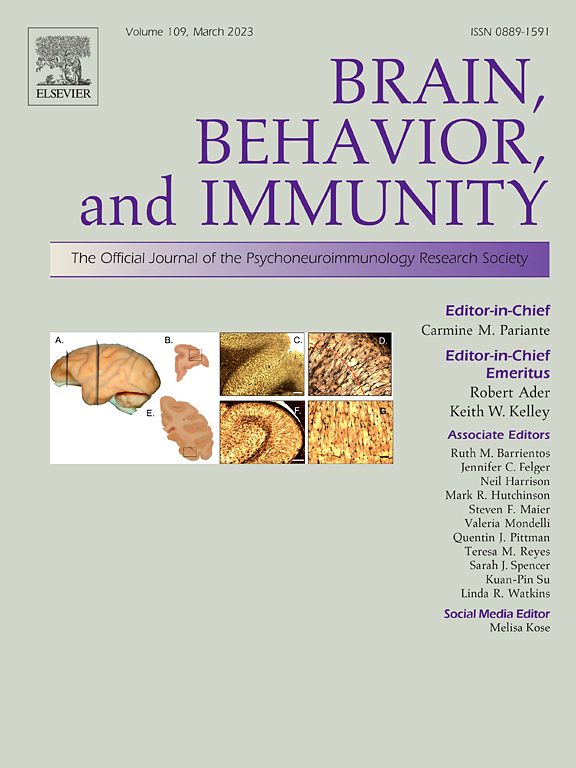
Systematic Review
Blueberries and their products may improve certain measures of cognitive performance, particularly memory, and positively affect mood.
Travica N, D'Cunha NM, Naumovski N, Kent K, Mellor DD, Firth J, Georgousopoulou EN, Dean OM, Loughman A, Jacka F, Marx W

Systematic Review
Acupuncture and acupressure for labor pain.
Caroline A Smith,Carmel T Collins,Kate M Levett,Mike Armour,Hannah G Dahlen,Aidan L Tan,Bita Mesgarpour
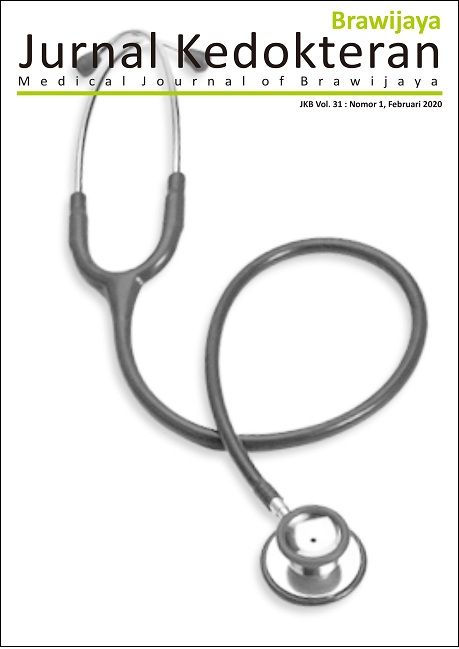
Randomised Controlled Trial
Consuming 330 ml of green coconut water can be an effective non-pharmacological approach to alleviate dysmenorrhea pain.
Nugroho FA, Putri OM, Sariati Y

Systematic Review
Honey exhibits significant anti-Helicobacter pylori activity, with at least 10% concentration proving effective in inhibiting gastric and duodenal ulcers, highlighting its therapeutic potential.
Adam Q, Annuar F, Alfizah H, Mohd Fahami NA

Systematic Review
The present study indicated that acupuncture had an advantage over hormone replacement therapy in reducing serum FSH level and increasing serum E2 level in women with premature ovarian insufficiency.
Yin, Yq., Xu, Hf., Fang, Yg. et al.
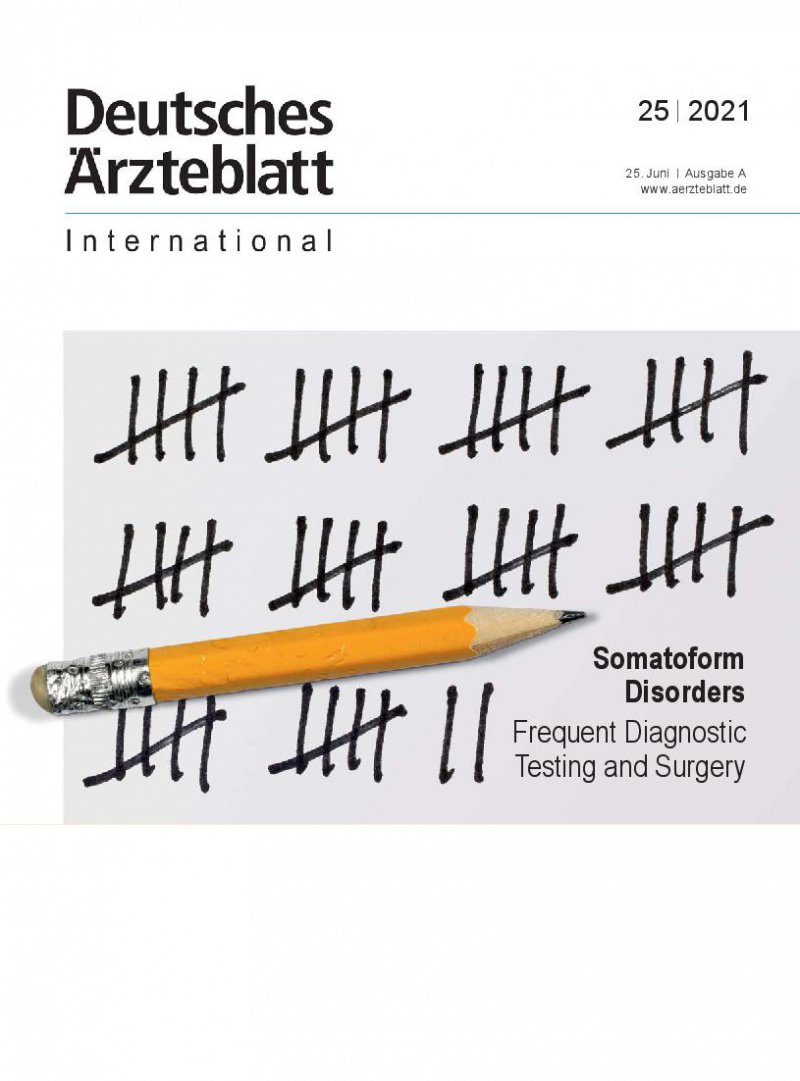
Acupuncture may be considered in patients with persistent, idiopathic vulvar pruritus.
Woelber L, Prieske K, Mendling W, Schmalfeldt B, Tietz HJ, Jaeger A.

Systematic Review
These reports suggest the benefits of a walnut-enriched diet in brain disorders and in other chronic diseases, due to the additive or synergistic effects of walnut components for protection against oxidative stress and inflammation in these diseases.
Chauhan A, Chauhan V.
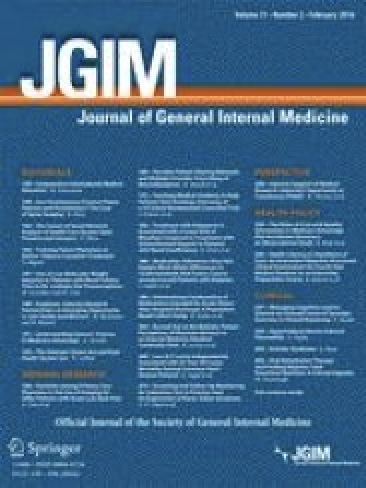
Randomised Controlled Trial
Both individual and group acupuncture therapy delivered in primary care settings reduced chronic pain and improved physical function at 12 weeks.
McKee MD, Nielsen A, Anderson B, Chuang E, Connolly M, Gao Q, Gil EN, Lechuga C, Kim M, Naqvi H, Kligler B

Systematic Review
Green tea influences liver enzymes differently based on an individual's health status, reducing levels in patients with Nonalcoholic Fatty Liver Disease, but slightly increasing levels in healthy subjects.
Mahmoodi M, Hosseini R, Kazemi A, Ofori‐Asenso R, Mazidi M, Mazloomi SM

Review Article
Both facial acupuncture and facial exercises have the potential to improve the skin laxity, wrinkle length, muscle thickness, and pigmentary changes associated with aging.
M. Smith, A. Ferris, T. K. Nahar, V. Sharma, M.

Randomised Controlled Trial
Electroacupuncture might provide stronger impact on knee osteoarthritis than manual acupuncture, though both methods are safe and feasible treatments.
Wang TQ, Li YT, Wang LQ, Shi GX, Tu JF, Yang JW, Hou YQ, Lin LL, Sun N, Zhao JJ, Hou HK, Liu CZ

Meta-Analysis
Coffee consumption shows a strong association with decreased risk of liver and endometrial cancer.
Zhao LG, Li ZY, Feng GS, Ji XW, Tan YT, Li HL, Gunter MJ, Xiang YB

Experimental Study
Lactic acid bacteria strains isolated from indigenous Bangladeshi raw milk demonstrate strong probiotic potential and antimicrobial activity against various pathogens.
Reuben RC, Roy PC, Sarkar SL, Rubayet Ul Alam ASM, Jahid IK

Clinical Study
Green tea intake can significantly reduce both systolic and diastolic blood pressure.
Xu R, Yang K, Ding J, Chen G

Randomised Controlled Trial
Daily avocado consumption improves attentional inhibition and increases serum lutein concentrations, irrespective of changes in lutein status, in adults with obesity.
Edwards CG, Walk AM, Thompson SV, Reeser GE, Erdman JW, Burd NA, Holscher HD, Khan NA

Randomised Controlled Trial
Intranasal application of essential oils such as lavender and fennel (Pinetonina™) significantly lowers cortisol levels and improves sleep quality.
Polonini H, Mesquita D, Lanine J, Dijkers E, Gkinis S, Raposo NRB, Brandão MAF, Ferreira AO

Systematic Review
Ginger has been effective in a majority of studies, including those that examined the alleviation of nausea and vomiting of pregnancy, digestive function, improvement in the expression level of markers for colorectal cancer risk, and anti-inflammatory functions.
Anh NH, Kim SJ, Long NP, Min JE, Yoon YC, Lee EG, Kim M, Kim TJ, Yang YY, Son EY, Yoon SJ, Diem NC, Kim HM, Kwon SW.

Systematic Review
Current evidence suggests that Chinese herbal medicine is an effective and safe treatment for spinal cord injury and could be treated as a complementary and alternative option with few side effects.
Zheng Y, Qi S, Wu F, Hu J, Zhong R, Hua C, Jiang D, Quan R

Animal Study
A traditional Chinese prescription, Yu Ping Feng San, significantly mitigates symptoms in cases of asthma recurrence, outperforming commonly prescribed asthma medications.
Bao K, Yuan W, Zhou Y, Chen Y, Yu X, Wang X, Jia Z, Yu X, Wang X, Yao L, Wang S, Xu Y, Zhang Y, Zheng J and Hong M

Review Article
Bioactive compounds found in avocado waste products exhibit various biological properties, with potential applications in the food and pharmaceutical industries.
Jimenez P, Garcia P, Quitral V, Vasquez K, Parra-Ruiz C, Reyes-Farias M, Garcia-Diaz DF, Robert P, Encina C, Soto-Covasich J
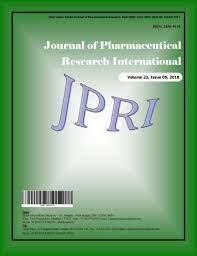
Clinical Study
Children with asthma, aged between 2 and 18, were found to be significantly shorter than their healthy counterparts.
Mohamadi Sorme F, Tabarra M, Alimadady H, Rahimi R, Sepidarkish M, Karimi M

Randomised Controlled Trial
The combination of ginger and chamomile was as effective as mefenamic acid in managing dysmenorrhea pain and more efficient in reducing related symptoms.
Shabani F, Zareian MA

Network Pharmacology
Chinese medicine herb Bai Zhu might combat chronic gastritis by influencing inflammatory response, amino acid synthesis and energy metabolism.
Yang S, Zhang J, Yan Y, Yang M, Li C, Li J, Zhong L, Gong Q, Yu H

Review Article
Star anise is the source of the precursor molecule, shikimic acid, which is used in the manufacture of oseltamivir (Tamiflu®), an antiviral medication for influenza A and influenza B.
Jayanta Kumar Patra,Gitishree Das,Sankhadip Bose,Sabyasachi Banerjee,Chethala N. Vishnuprasad,Maria del Pilar Rodriguez-Torres,Han-Seung Shin

Systematic Review
Cinnamon supplementation has favorable effects on diastolic blood pressure and long-term effects on systolic blood pressure.
Hadi A, Campbell MS, Hassani B, Pourmasoumi M, Salehi-Sahlabadi A, Hosseini SA.

Systematic Review
The use of acupuncture in the management of perimenopausal depression is safe, effective, and offers long-lasting benefits relative to antidepressants and HRT.
Xiao X, Zhang J, Jin Y, Wang Y, Zhang Q
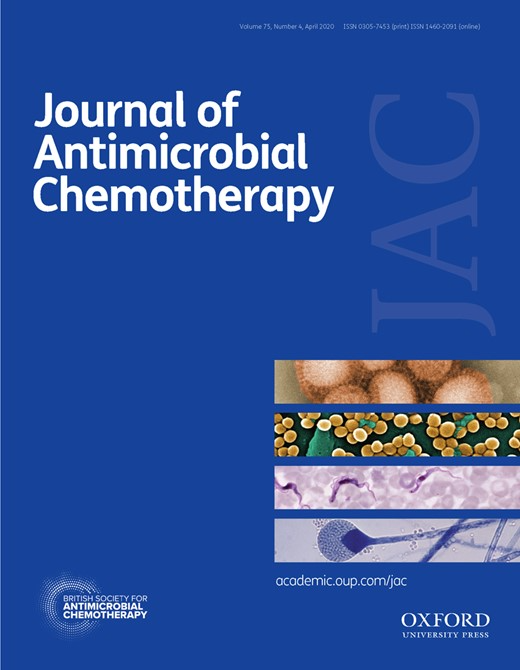
Systematic Review
Honey showed a significant antimicrobial activity against all targeted periopathogen and could be effective in the treatment of periodontal disease.
Hbibi A, Sikkou K, Khedid K, El Hamzaoui S, Bouziane A, Benazza D

Review Article
Omega 3 fatty acids can counter muscle lipotoxicity and prevent comorbidities in patients with rheumatoid arthritis, supporting muscle health and reducing cardiometabolic disease risk.
Lanchais K, Capel F, Tournadre A

Network Pharmacology
Ganpu tea, derived from Pu-erh tea and the pericarp of Chachi, enhances antioxidant capacities and modulates gut microbiota beneficially more than Pu-erh tea alone.
Zheng Y, Zeng X, Chen T, Peng W, Su W

Randomised Controlled Trial
Group acupuncture was noninferior to individual acupuncture for treating cancer pain and was superior in many health outcomes. Group acupuncture is more cost-effective for alleviating cancer pain and should be considered for implementation trials.
Erica Nicole Reed, Jessa Landmann, Devesh Oberoi, Katherine-Ann L. Piedalue, Peter Faris, Linda E. Carlson

Cohort Study
Traditional Chinese Medicine when combined with Western methods, could improve survival rates in patients with colorectal cancer.
Yeh MH, Chiu HP, Wu MC, Koo M, Lin NW, Liao KK, Yeh CC, Li TM
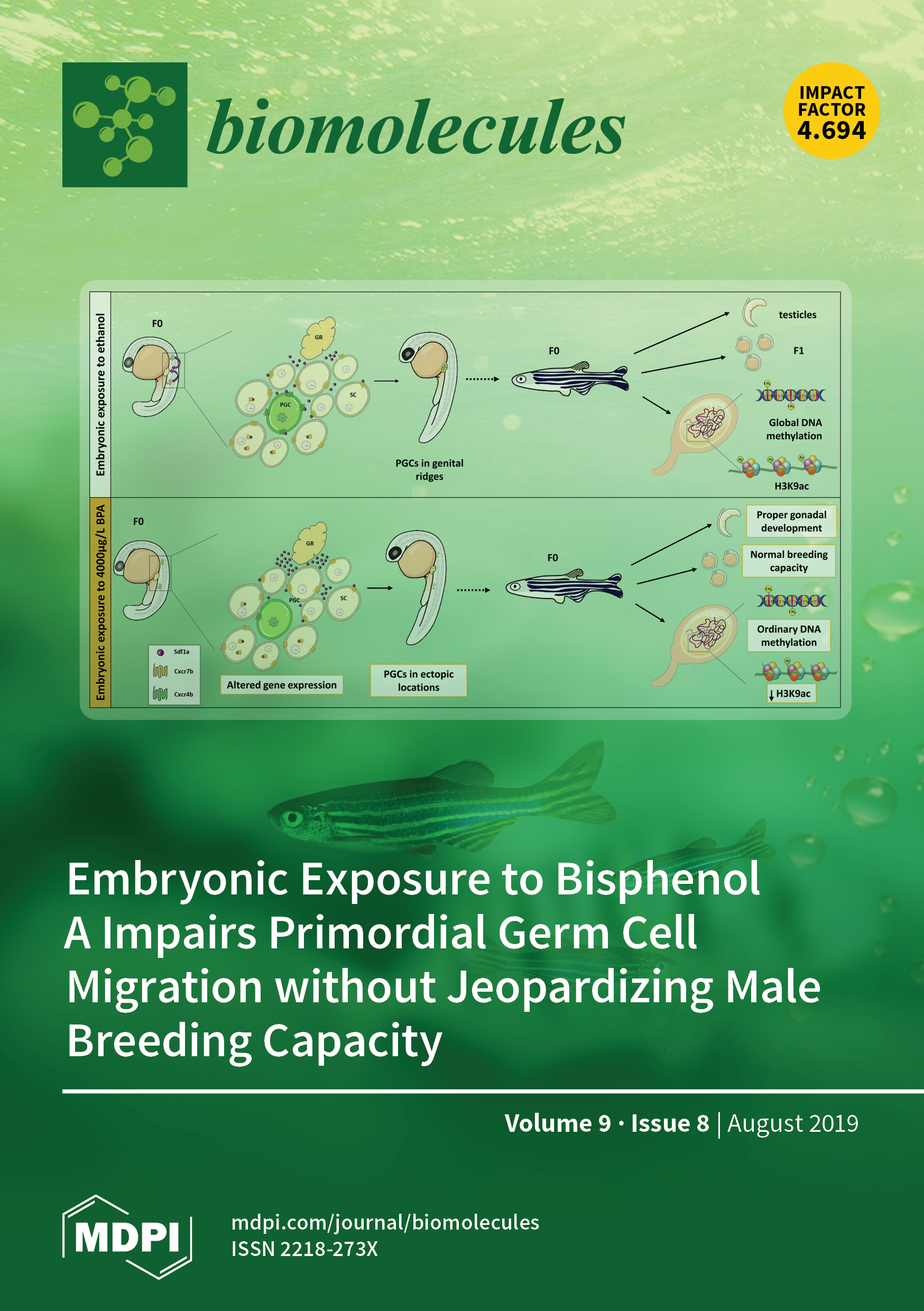
Review Article
Avocado and soybean unsaponifiables may effectively reduce inflammation and symptoms related to osteoarthritis, autoimmune diseases, and menopause.
Salehi B, Rescigno A, Dettori T, Calina D, Docea AO, Singh L, Cebeci F, Özçelik B, Bhia M, Dowlati Beirami A, Sharifi-Rad J, Sharopov F, C. Cho W, Martins N

Experimental Study
Chrysanthemum morifolium, Naringenin and Apigenin can alleviate depression-like behavior by interfering with specific metabolic pathways.
Liu T, Zhou N, Xu R, Cao Y, Zhang Y, Liu Z, Zheng X, Feng W
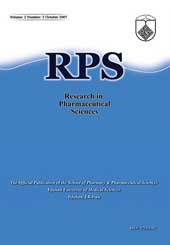
Network Pharmacology
Pomegranate fruit extract significantly enhances cartilage gene expression and chondrogenesis in human adipose-derived stem cells compared to Avocado/Soybean Unsaponifiable.
Bahramian H, Teimourinejad A, Hashemibeni B, Salehi H, Mostafavi FS, Kazemi M

Systematic Review
Cocoa consumption significantly reduces markers of oxidative stress in the adult population, affirming its important role in the human metabolic pathway.
Mehrabani S, Arab A, Mohammadi H, Amani R

Systematic Review
Almond intake significantly reduces body weight and fat mass in adults, yet it does not impact body mass index, waist circumference, or fat-free mass.
Eslampour E, Moodi V, Asbaghi O, Ghaedi E, Shirinbakhshmasoleh M, Hadi A, Miraghajani M

Randomised Controlled Trial
Sleep quality in adults with disturbed sleep improved significantly after an 8-week course of naturally-derived sleep-inducing juice made from lettuce, orange, pineapple and cherry.
Kim C, Kim M, Kim M, Jung H

Systematic Review
Regular dietary intake of olive oil reduces the levels of certain inflammation markers, making it a beneficial alternative dietary fat, especially for managing IL-6.
Fernandes J, Fialho M, Santos R, Peixoto-Plácido C, Madeira T, Sousa-Santos N, Virgolino A, Santos O, Vaz Carneiro A

Review Article
The Chrysanthemum indicum L. plant has been discovered to have multiple pharmacological capabilities including anti-inflammatory, antioxidation, antipathogenic, anticancer, immune regulation, and hepatoprotective effects.
Shao Y, Sun Y, Li D, Chen Y

Systematic Review
Acupuncture has therapeutic potential in management of cancer-related fatigue for cancer survivors.
Jang A, Brown C, Lamoury G, Morgia M, Boyle F, Marr I, Clarke S, Back M, Oh B
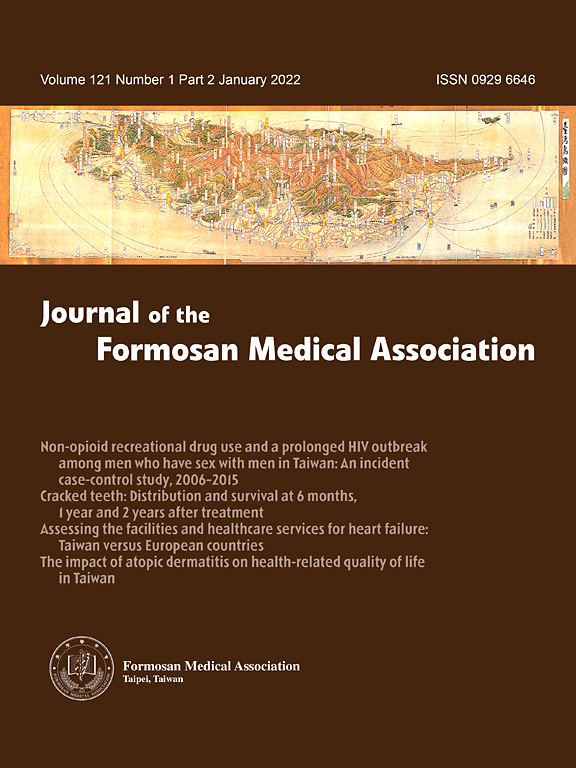
Randomised Controlled Trial
Electroacupuncture plus rehabilitation may provide earlier pain relief for patients with frozen shoulder syndrome and could be applied clinically.
Lo MY, Wu CH, Luh JJ, Wang TG, Fu LC, Lin JG, Lai JS

Systematic Review
Danggui Shaoyao San provides clinically important reductions in symptoms of Alzheimer's disease and vascular dementia and can be a promising anti-dementia drug candidate.
Kim Y, Cho SH.

Systematic Review
Acupuncture treatment of insomnia is efficacious, not because of its placebo effect.
Liu C, Xi H, Wu W, Wang X, Qin S, Zhao Y, Zheng S, Wan Q, Xu L.

Network Pharmacology
Traditional Chinese medicine (TCM) holds potential to regulate immune-mediated inflammatory diseases by adjusting the imbalance of the Th17/Treg axis.
Xu YY, Wang DM, Liang HS, Liu ZH, Li JX, Wang MJ, Chen XM, Balak DMW, Radstake TRDJ, Huang RY, Lu CJ

Systematic Review
Cinnamon intake significantly reduces body weight, body mass index, waist circumference, and fat mass in adults, and can be recommended as a supplement for obesity management.
Mousavi SM, Rahmani J, Kord-Varkaneh H, Sheikhi A, Larijani B, Esmaillzadeh A

Review Article
The date fruit contains compounds such as flavonoids that can protect tissues from harm and reduce risks of illnesses like cardiovascular disease and cancer.
Bentrad N, Hamida-Ferhat A
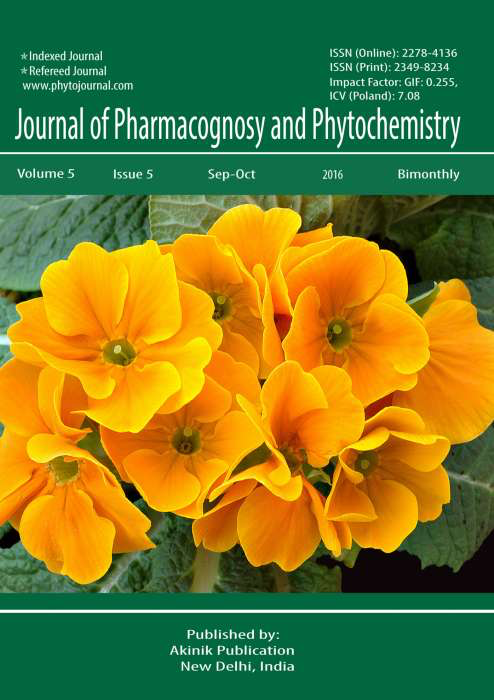
Review Article
Peppermint's extensive applications, especially its antimicrobial and antioxidant features, and potential health benefits can significantly increase its market value in various industries.
Parv Nayak, Tankesh Kumar, AK Gupta and NU Joshi

Clinical Study
Tian Wang Bu Xin Dan can potentially alleviate symptoms of cancer-related insomnia similarly to cognitive-behavioral therapy.
Moon SY, Jerng UM, Kwon OJ, Jung SY, Lee JY, Yoon SW, Shin WC, Byun JI, Lee JH

Review Article
Coffee and decaffeinated coffee appear to provide long-term protection against developing type 2 diabetes, potentially due to the influence of chlorogenic acids.
Williamson G

Experimental Study
Goji berry polysaccharide can enhance intestinal microbiota and beneficial bacteria levels, whilst modulating the innate immune response.
Zhu W, Zhou S, Liu J, McLean RJC, Chu W

Review Article
Avocado, particularly the Hass variety, has substantial health benefits due to its rich contents of nutrients, fiber, and bioactive constituents including antioxidants.
Majid D, Dar BN, Parveen S, Jabeen A, Allai FM, Sofi SA, Ganaie TA

Review Article
Omega-3 fatty acids, essential for human health, can reduce inflammation and may mitigate symptoms in rheumatoid arthritis, particularly joint swelling and tenderness.
Kostoglou-Athanassiou I, Athanassiou L, Athanassiou P
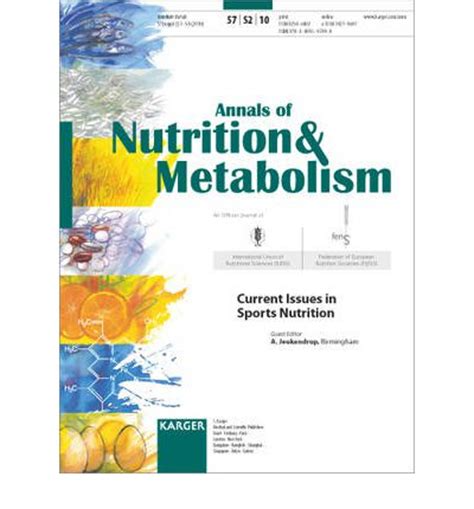
Cohort Study
High tea consumption is inversely associated with disease activity in rheumatoid arthritis, particularly beneficial in female patients, non-smokers, and elders.
Jin J, Li J, Gan Y, Liu J, Zhao X, Chen J, Zhang R, Zhong Y, Chen X, Wu L, Xiang X, Zhou Y, He J, Li R, Guo J, Li Z

Systematic Review
Chinese medicine treatments involving the Bladder and Conception Vessel meridians may be more effective to relieve asthma symptoms than non-meridian interventions.
Mei-Hua Wang, Chiehfeng Chen, Mei-Ling Yeh and Jaung-Geng Lin

Systematic Review
Chamomile shows promise in alleviating premenstrual syndrome (PMS) symptoms.
Khalesi ZB, Beiranvand SP, Bokaie M

Systematic Review
L-citrulline supplementation significantly decreased non-resting brachial and aortic systolic blood pressure.
Yang HH, Li XL, Zhang WG, Figueroa A, Chen LH, Qin LQ

Randomised Controlled Trial
Consuming walnuts daily can reduce cardiovascular risk factors in chronic kidney disease patients without altering significant physiological levels.
Sanchis P, Molina M, Berga F, Muñoz E, Fortuny R, Costa-Bauzá A, Grases F, Buades JM
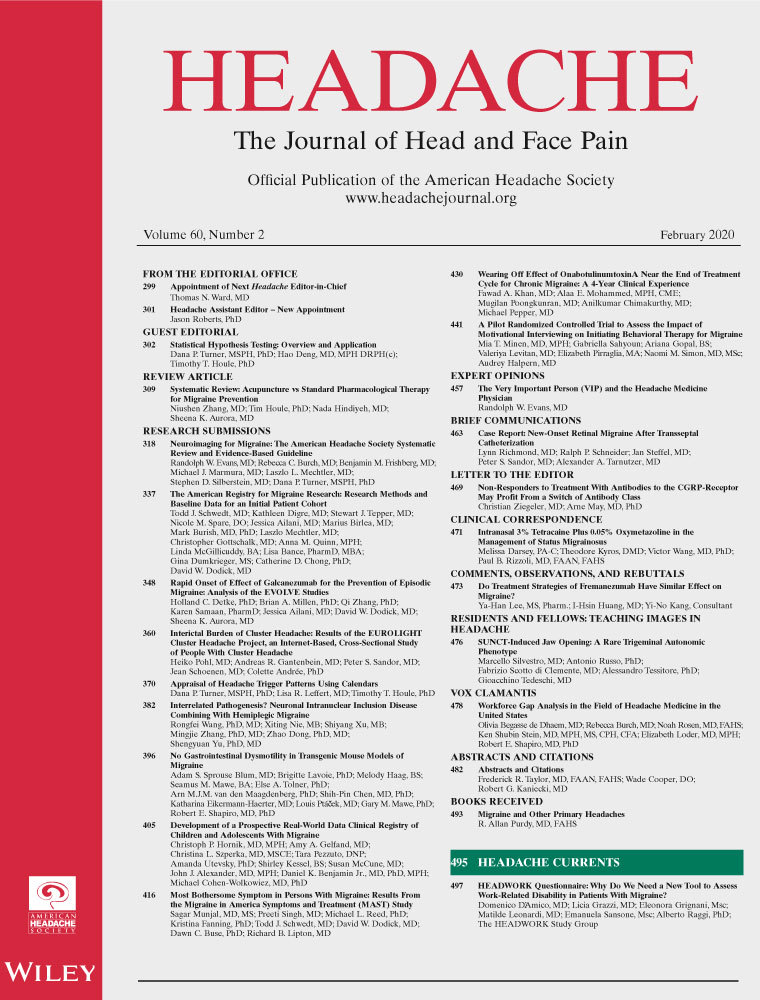
Systematic Review
There is growing evidence that acupuncture is just as effective and has fewer side effects than many of the standard pharmaceutical agents that are currently used.
Niushen Zhang, Tim Houle, Nada Hindiyeh, & Sheena K. Aurora
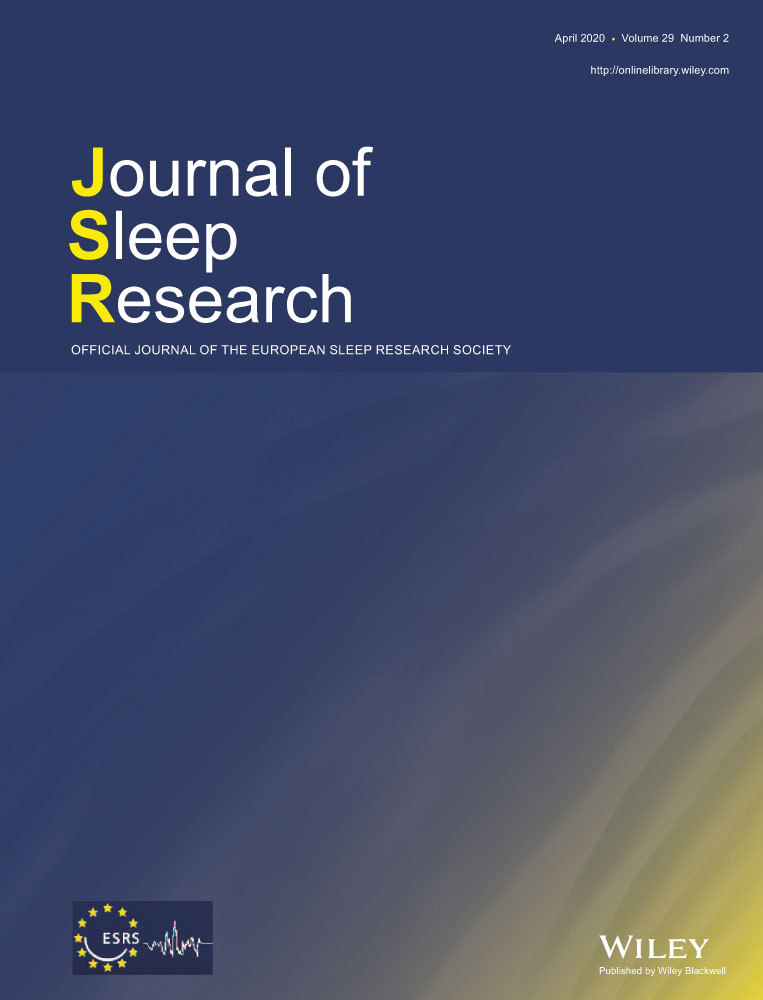
Randomised Controlled Trial
Acupuncture therapy does not impact the severity of Obstructive Sleep Apnea, blood pressure, or quality of life in hypertensive patients.
Silva MVFP, Lustosa TC, Arai VJ, Couto Patriota TLG, Lira MPF, Lins‐Filho OL, Chalegre ST, B.B.A.S. K, Secundo IV, Pedrosa RP

Randomised Controlled Trial
Pomegranate juice can reduce melatonin, increase insulin levels, and improve insulin resistance in individuals with impaired fasting glucose.
Banihani SA, Fashtaky RA, Makahleh SM, El‐Akawi ZJ, Khabour OF, Saadeh NA

Systematic Review
Gout patients regularly ingesting cherry extract/juice reported fewer gout flare ups than those patients who did not supplement their diets with cherry products.
Chen PE, Liu CY, Chien WH, Chien CW, Tung TH

Review Article
Traditional Chinese medicine, especially Zuo Gui Wan, red raspberry leaves, and Orthosiphon stamineus, seems to control gestational diabetes effectively without reported toxicity.
Xu YXZ, Xi S, Qian X
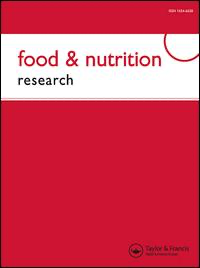
Clinical Study
Drinking at least 1.5 to 2 litres of bicarbonate-rich mineral water daily significantly reduces dietary acid load in healthy adults.
Wasserfurth P, Schneider I, Ströhle A, Nebl J, Bitterlich N, Hahn A
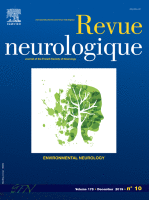
Review Article
The Mediterranean diet, especially the high consumption of extra-virgin olive oil, significantly reduces the risks of vascular diseases and Alzheimer's.
Román GC, Jackson RE, Reis J, Román AN, Toledo JB, Toledo E

Systematic Review
Acupuncture and/or acupressure was significantly associated with reduced cancer pain and decreased use of analgesics.
He Y, Guo X, May BH, et al.

Systematic Review
Danggui Beimu Kushen Wan (DBKW), originally used for difficult urination in pregnant women, has found use in male prostate disorders.
Li H, Hung A, Yang AWH

Systematic Review
Cinnamon supplementation can significantly reduce body weight, body mass index, and waist-hip ratio.
Zeinab Yazdanpanah,Maryam Azadi-Yazdi,Hadis Hooshmandi,Nahid Ramezani-Jolfaie,Amin Salehi-Abargouei,

Systematic Review
Meta-analysis showed that acupuncture was comparable to drugs in the reduction of overactive bladder symptoms.
Mak TC, Chen HY, Cho WC

Experimental Study
Pu-erh tea's ability to lower blood pressure is primarily due to theabrownins and caffeine, which cause vasodilation irrespective of the endothelium.
Luo Dan, Chen Xuejiao, Zhu Xu, Liu Shuang, Li Jie, Xu Jianping, Zhao Jinhua, Ji Xu

Theoretical Article
Consumption of oat β-glucan may lower cholesterol and risk of cardiovascular disease by altering gut bacteria and their effects on bile acid and cholesterol metabolism.
Joyce SA, Kamil A, Fleige L, Gahan CGM

Systematic Review
Range of herbs like Cinnamomum verum, Trigonella foenum-graecum L., and Vitex agnus-castus, which can potentially address various PCOS-related concerns such as menstrual irregularities, obesity, and insulin resistance.
Moini Jazani, A., Nasimi Doost Azgomi, H., Nasimi Doost Azgomi, A. et al.

Systematic Review
A combination of peppermint oil and caraway oil is an effective and safe short-term treatment for functional dyspepsia.
Juanjuan Li, Lin Lv, Jiaqi Zhang, Lin Xu, Enjin Zeng, Zedan Zhang, Fengyun Wang, Xudong Tang

Systematic Review
Acupuncture could be used as an adjunct in clinical settings to improve efficacy of western medicine for irritable bowel syndrome.
Zheng H, Chen R, Zhao X, Li G, Liang Y, Zhang H, Chi Z

Randomised Controlled Trial
Synbiotic pomegranate juice daily consumption for 8 weeks enhances metabolic, oxidative, inflammatory, and blood pressure outcomes in females with Polycystic Ovarian Syndrome.
Esmaeilinezhad Z, Barati-Boldaji R, Brett NR, de Zepetnek JOT, Bellissimo N, Babajafari S, Sohrabi Z

Systematic Review
Sesame consumption significantly increases enzymatic (superoxide dismutase, glutathione peroxidase, catalase) and non-enzymatic (vitamin C, vitamin E, β-carotene, and glutathione) antioxidants.
Moghtaderi F, Ramezani-Jolfaie N, Raeisi-Dehkordi H, Salehi-Abargouei A
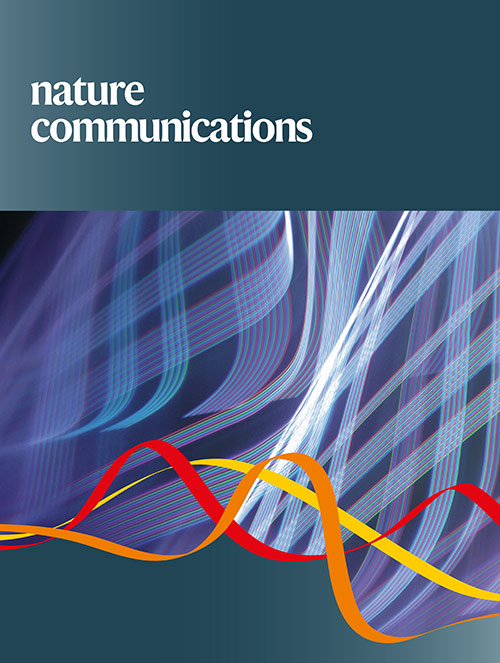
Experimental Study
Pu-erh tea was found to lower triglyceride and total cholesterol levels more significantly than green, oolong, or black teas.
Huang, F., Zheng, X., Ma, X. et al.

Systematic Review
Acupuncture has the advantage for acute and preventive treatment of migraine in pain improvement and safety.
Xia-tian Zhang, Xin-yi Li, Chen Zhao, Ye-yin Hu, Yi-yi Lin, He-qing Chen, Zhao-feng Shi, Xiao-yu Zhang, Hong-cai Shang, Gui-hua Tian

Coix seed extract could augment the efficacy of gemcitabine therapy in pancreatic cancer cells at least partly due to the alteration of ABC transporter-mediated drug efflux function.
Qian, Y.; Xiong, Y.; Feng, D.; Wu, Y.; Zhang, X.; Chen, L.; Gu, M.

Review Article
Oats improve gastrointestinal health, reduce cholesterol, and regulate satiety, with effects on the gut microbiome constituting an appealing new research area.
Korczak R, Kocher M, Swanson KS
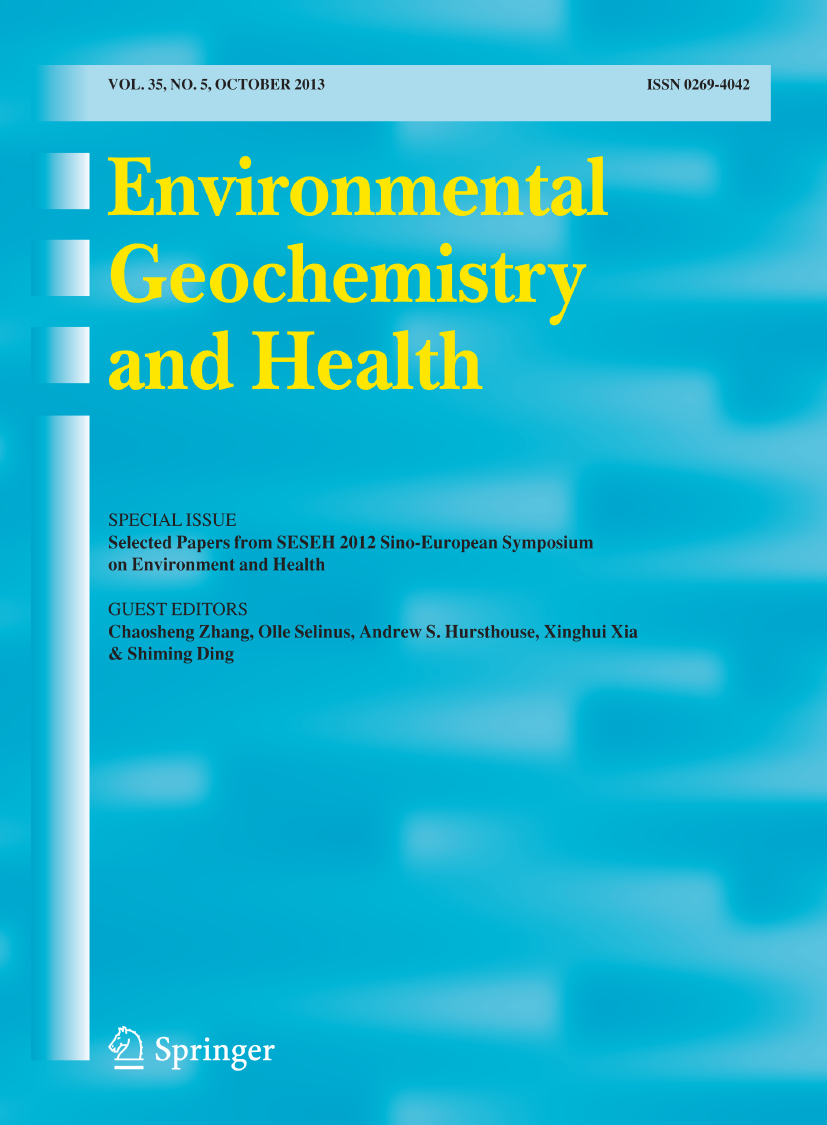
Cohort Study
Caramanico Terme’s mineral water treatment significantly improves health and reduces the risk of major diseases like cardiovascular, cancer, and neurological conditions.
Di Marco M, De Novellis AMP, Carluccio V, Bozzelli R, Orlando M, Lanuti P
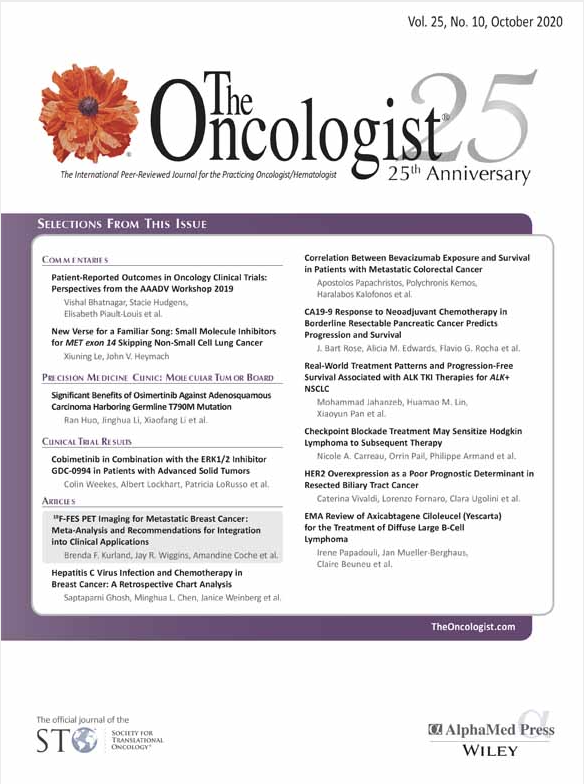
Randomised Controlled Trial
Acupuncture treatment significantly improves neuropathic symptoms in women suffering from chemotherapy-induced peripheral neuropathy after breast cancer therapy.
Lu W, Giobbie-Hurder A, Freedman RA, Shin IH, Lin NU, Partridge AH, Rosenthal DS, Ligibel JA
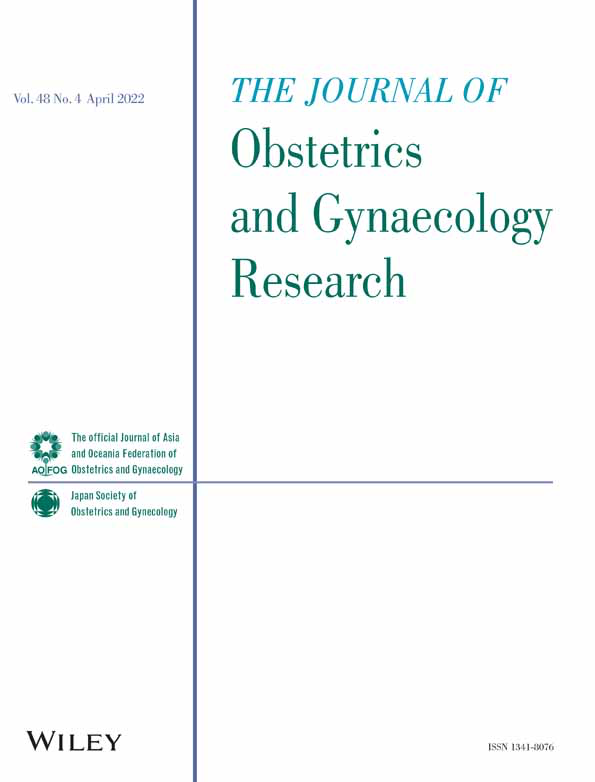
Systematic Review
Acupuncture intervention could significantly improve the treatment outcomes for breast cancer-related lymphedema, regardless of the control treatments used.
Hou W, Pei L, Song Y, Wu J, Geng H, Chen L, Wang Y, Hu Y, Zhou J, Sun J
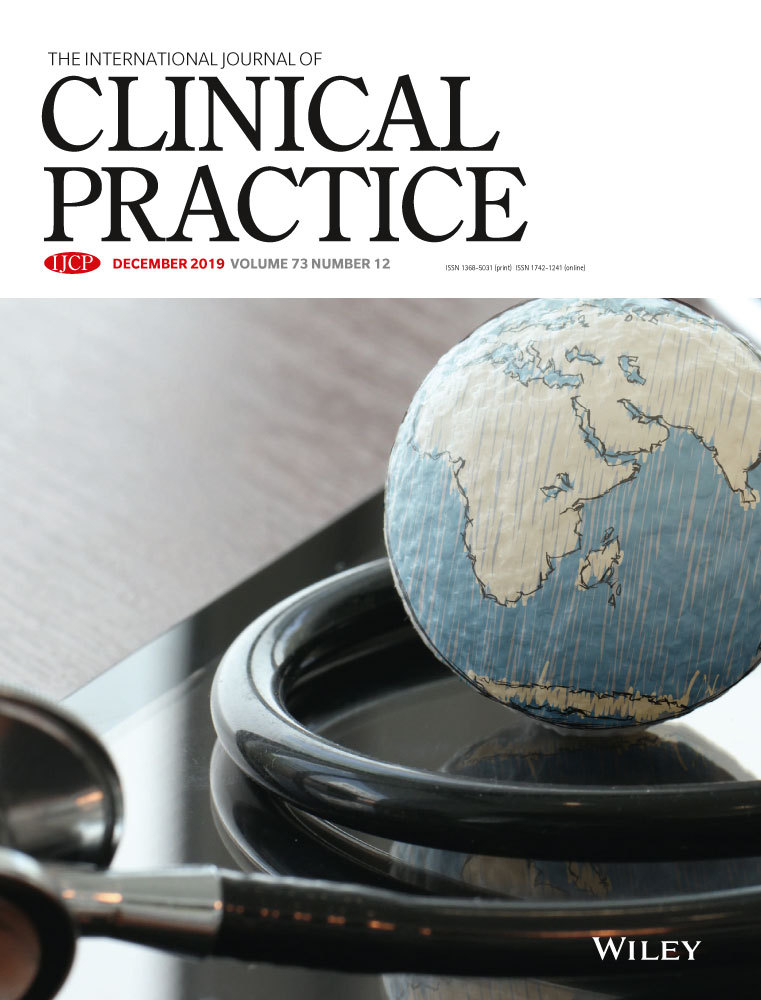
Systematic Review
Certain traditional herbal medicines used in east-Asia as adjuncts to conventional medications improved outcomes in acute and chronic asthma.
Allison Clyne,Angela Wei Hong Yang,Mingdi Li,Yutong Fei,Brian H May

Review Article
In 2017, dozens of Chinese proprietary medicines were employed as rheumatoid arthritis treatments and resulted in good outcomes, according to the National Health Insurance Directory of China.
Hu-DanPana, YaoXiao, Wan-YingWang, Ru-TongRen,Elaine Lai-Han,Leung, LiangLiua

Systematic Review
Acupuncture can significantly increase motor function and daily living ability of individuals who suffer from spinal cord injury, especially acupuncture of the back + front or the head + back.
Feng Xiong , Chenying Fu, Qing Zhang, Lihong Peng , Zejun Liang , Li Chen, Chengqi He,and Quan Wei

Systematic Review
Cinnamon supplementation leads to a significant reduction in both systolic and diastolic blood pressure in adults.
Seyed Mohammad Mousavi, Ahmad Jayedi, Yahya Jalilpiran, Maryam Hajishafiee, Azadeh Aminianfar, Ahmad Esmaillzadeh.
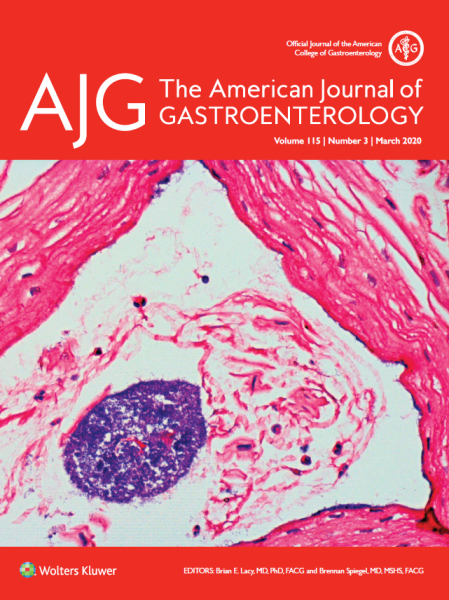
Systematic Review
Peppermint oil significantly reduces colonic spasm during colonoscopy, but does not affect the adenoma detection rate or cecal intubation time.
Nehme, Fredy; Al Momani, Laith; Alomari, Mohammad ; Zafar, Yousaf
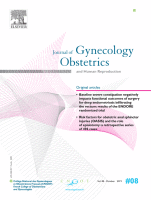
Systematic Review
Acupuncture appears to be beneficial to women with poor ovarian reserve or with previous unsuccessful attempts of in vitro fertilization with embryo transfer.
Gu, Y.-E., Zhang, X., Zhang, Q., Dai, M.-C., Wu, Y., Zhou, Y., & Qu, F.

Systematic Review
For both symptom relief and function improvement, manual acupuncture is superior to ibuprofen for carpal tunnel syndrome.
Wu IXY, Lam VCK, Ho RST, Cheung WKW, Sit RWS, Chou LW, Zhang Y, Leung TH, Chung VCH

Experimental Study
Gui Zhi Fu Ling Wan can potentially reduce and induce apoptosis in uterine leiomyomas cells.
Lee SM, Choi ES, Ha E, Ji KY, Shin SJ, Jung J

Review Article
Honey can protect the bone via its antioxidant and anti-inflammatory properties, primarily through its polyphenol content that acts upon several signalling pathways, leading to bone anabolic and antiresorptive effects.
Kamaruzzaman MA, Chin KY, Mohd Ramli ES

Systematic Review
Higher carrot consumption is associated with a lower risk of developing lung cancer, particularly adenocarcinoma.
Xu H, Jiang H, Yang W, Song F, Yan S, Wang C, Fu W, Li H, Lyu C, Gan Y, Lu Z

Clinical Study
Anthocyanin supplements improve vision health by relaxing ciliary muscles, regenerating rhodopsin, and enhancing retinal blood circulation.
Nomi , Iwasaki-Kurashige , Matsumoto

Systematic Review
Acupuncture might be effective at reducing itch intensity and may be more effective than conventional medicine at reducing eczema area and severity index (EASI) and improving the global symptoms of atopic eczema.
Jiao R, Yang Z, Wang Y, Zhou J, Zeng Y, Liu Z
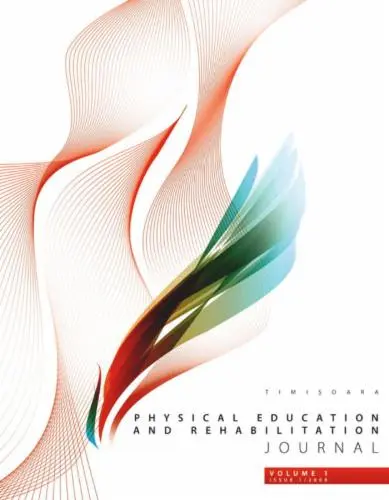
Systematic Review
The results of manual, traditional and non-invasive therapies are similar to those of surgical treatments, and even better in a very large number of cases.
Glazer C, Pantea C

Clinical Study
Hépar mineral water, rich in sulphates and magnesium, effectively treats functional constipation, showing significant results within 7 days.
Dupont C, Constant F, Imbert A, Hébert G, Zourabichvili O, Kapel N

Systematic Review
Acupuncture using pattern identification led to significantly improved total effectiveness rate compared to medication for insomnia.
Kim SH, Jeong JH, Lim JH, Kim BK

Systematic Review
Traditional Chinese acupuncture seems to be effective in improving some symptoms of postpartum depression.
Tong P, Dong LP, Yang Y, Shi YH, Sun T, Bo P

Cohort Study
Pregnant women's stature, BMI, sedentary lifestyle, as well as the regular consumption of certain foods, influence the formation and severity of striae gravidarum.
Ren P, Zhao W, Dai X, Wang X, Yu J, Yuan Y, Wu Y
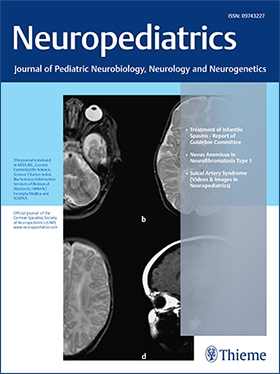
Review Article
Currently, acupuncture is considered to be a safe, helpful, and available alternative option for patients who have not responded to or complied with conventional pharmacotherapy.
Doll, E., Threlkeld, B., Graff, D., Clemons, R., Mittel, O., Sowell, M. K.
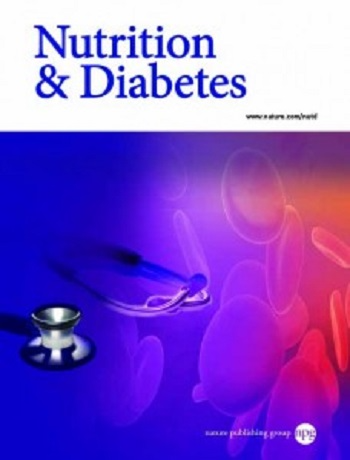
Systematic Review
Pu-erh tea has considerable inhibitory effects on alpha-amylase and alpha-glucosidase, indicating potential anti-hyperglycemic benefits.
Yang, CY., Yen, YY., Hung, KC. et al.

Review Article
Cocoa and cocoa products, enriched with polyphenols, have potential health benefits including enhanced vascular function, cancer prevention, and improvement in learning and memory.
E S, Panjikkaran ST, L SC, R RP

Network Pharmacology
Guizhi Fuling Wan, a traditional herbal formula, can improve peripheral blood flow in menopausal hot flush sufferers, despite not changing the frequency or severity of the flushes.
Li , Hung , Li , Yang
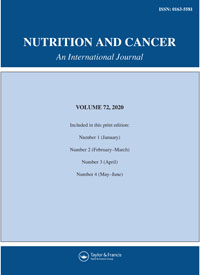
Review Article
Kiwifruit supplementation may be associated with direct and indirect anticancer effects, the former likely due to ascorbic acid-mediated reduction of DNA oxidative injury and cytotoxic effect on cancer cell lines.
Lippi G, Mattiuzzi C

Review Article
Chrysanthemum, rich in unique chemical compounds, offers significant health benefits such as stress relief, cardio protection, immunity boost, improved eye health, and osteoporosis risk reduction.
SHAHRAJABIAN, M. H., SUN, W., ZANDI, P., CHENG, Q.

Systematic Review
Our study found ginger is a promising herbal medicine for health care, which is beneficial for nausea and vomiting, metabolic syndrome and pain.
Li H, Liu Y, Luo D, Ma Y, Zhang J, Li M, Yao L, Shi X, Liu X, Yang K.
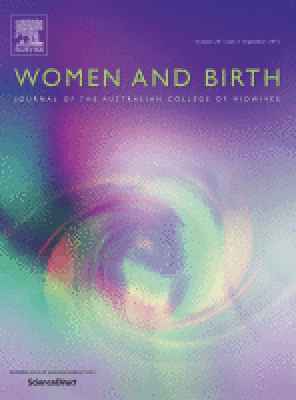
Meta-Analysis
Aromatherapy significantly reduces labor pain and duration without impacting emergency caesarean section, membrane rupture, and the onset of spontaneous labor.
Chen SF, Wang CH, Chan PT, Chiang HW, Hu TM, Tam KW, Loh EW

Systematic Review
Acupuncture is effective in the intervention of overweight/obesity in Asians.
Yao J, He Z, Chen Y, Xu M, Shi Y, Zhang L, Li Y.

Randomised Controlled Trial
Administration of honey saffron syrup reduces the length of all stages of labor in nulliparous women.
Ghaderi S, Zaheri F, Nouri B, Shahoei R

Review Article
Honey, comprising mainly carbohydrates, particularly fructose and glucose, demonstrates potential performance benefits and immunological advantages when consumed around exercise, suggesting a role in exercise nutrition.
Hills , Mitchell , Wells , Russell

Systematic Review
Oral administration of honey is associated with increased serum testosterone levels in males, supported by in vivo studies suggesting mechanisms involving luteinizing hormone production, Leydig cell viability, oxidative damage reduction, enhanced StAR gene expression, and aromatase activity inhibition.
Banihani SA

Systematic Review
The collective evidence, which is mainly based on in vivo system studies, reveals that oral administration of honey increases serum testosterone level in males.
Banihani SA
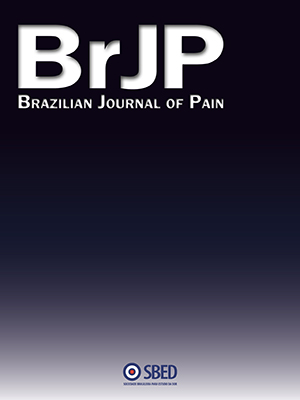
Systematic Review
Gua-sha has proved to be a relevant alternative for painful conditions involving the spine and the surroundings.
Dérrick Patrick Artioli; Gladson Ricardo Flor Bertolini

Systematic Review
Acupuncture and its combined therapy may be effective for treating female infertility, however, the included studies are not robust enough to draw a firm conclusion.
Yun L, Liqun W, Shuqi Y, Chunxiao W, Liming L, Wei Y

Systematic Review
Coffee consumption, in the long term, improves glucose metabolism but may cause unfavourable acute effects.
Reis CEG, Dórea JG, da Costa THM

Systematic Review
According to high-quality outcomes, acupuncture had more total effective rate, short-term effective rate, and less adverse reactions than western medicine in treating knee osteoarthritis.
Li J, Li YX, Luo LJ, Ye J, Zhong DL, Xiao QW, Zheng H, Geng CM, Jin RJ, Liang FR

Review Article
The diet might influence the onset and pathophysiology of ulcerative colitis, and can potentially be used in its management.
Keshteli AH, Madsen KL, Dieleman LA
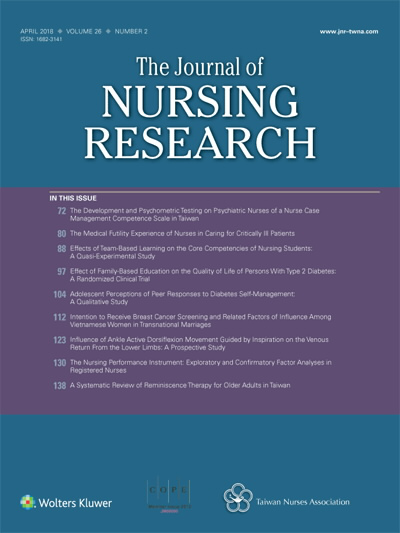
Systematic Review
Aromatherapy enhances physio-psychological well-being in postpartum women.
TSAI SS, WANG HH, CHOU FH

Systematic Review
This systematic review shows that the overall effectiveness of acupuncture treatment of premenstrual syndrome is superior to that of sham acupuncture and related medications.
Zhang J, Cao L, Wang Y, Jin Y, Xiao X, Zhang Q

We showed that Angelica sinensis is not that stimulatory in breast cancer both in vitro and in vivo, though Angelica sinensis should still be used with caution in estrogen receptor-positive breast cancer patients.
Yue Grace Gar-Lee, Wong Lok-Sze, Leung Hoi-Wing, Gao Si, Tsang Julia Yuen-Shan, Lin Zhi-Xiu, Law Bonita Ka-Bo, Tse Gary Man-Kit, Lau Clara Bik-San

Randomised Controlled Trial
Adding nuts to a regular diet can significantly improve self-reported orgasmic function and sexual desire in healthy males.
Salas-Huetos A, Muralidharan J, Galiè S, Salas-Salvadó J, Bulló M

Review Article
Chinese herbal compounds can potentially treat cholelithiasis by improving biliary dynamics, protecting liver function, reducing cholesterol, and managing inflammation.
Chen Q, Zhang Y, Li S, Chen S, Lin X, Li C, Asakawa T

Animal Study
Pomegranate rind extract has been found to decrease pain and inflammation, suggesting it could contribute to treating rheumatoid arthritis.
Karwasra R, Singh S, Sharma D, Sharma S, Sharma N, Khanna K

Systematic Review
Acupuncture yielded positive results for Alzheimer's Disease as determined via clinical efficacy rate, Mini-Mental State Examination score, Ability of Daily Living Scale score and Alzheimer’s Disease Assessment Scale-Cognition score.
Huang, Q., Luo, D., Chen, L. et al.

Systematic Review
Acupuncture appeared to significantly reduce fatigue severity measured by Chalder's Fatigue Scale and the Fatigue Severity Scale compared with other types of control.
Zhang Q, Gong J, Dong H, Xu S, Wang W, Huang G

Results demonstrate that 100% watermelon juice is a palatable, effective means of increasing serum lycopene in older adult women, a group at risk for low carotenoid intake.
Ellis, A.C., Dudenbostel, T. & Crowe-White, K

Randomised Controlled Trial
Our study offers the first evidence of the positive contribution of tea drinking to brain structure and suggests a protective effect on age-related decline in brain organisation.
Li J, Romero-Garcia R, Suckling J, Feng L.

Systematic Review
Our analysis finds a benefit of acupuncture for IVF outcomes in women with a history of unsuccessful IVF attempt, and number of acupuncture treatments is a potential influential factor.
Xie Z, Peng Z, Yao B, Chen L, Mu Y, Cheng J, Li Q, Luo X, Yang P, Xia Y
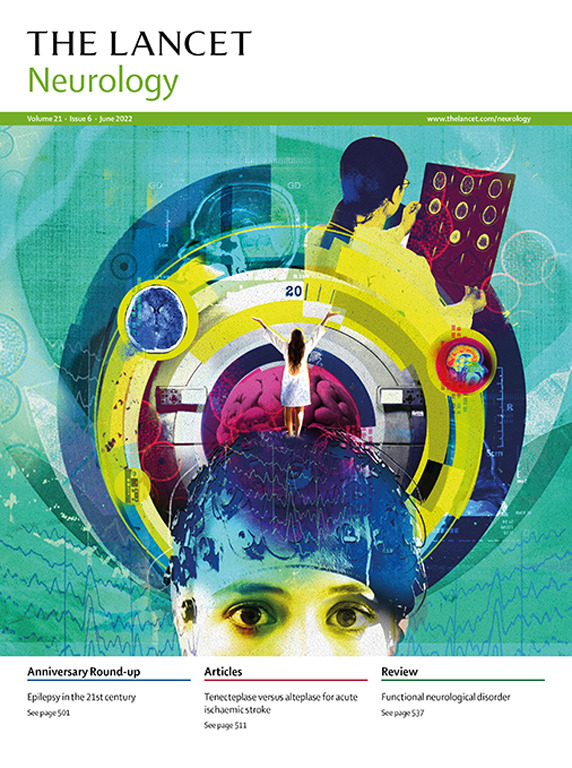
Review Article
Traditional Chinese Medicine provides a valuable, holistic approach to Parkinson's disease prevention and treatment, offering another angle besides Western medicinal practices.
SongLi, WeidongLe

Systematic Review
Acupuncture in conjunction with Chinese medicine has shown a higher efficiency compared to only Chinese medicine in haemorrhoids treatment.
Zeng M, Cheng X, Chen G, Kou J

Randomised Controlled Trial
Consuming walnuts can enhance sperm motility and morphology, potentially improving fertility in males with infertility issues.
Robbins W, Kim H, Houman J, Lee GW

Systematic Review
The mung bean has been documented to ameliorate hyperglycemia, hyperlipemia, and hypertension, and prevent cancer and melanogenesis, as well as possess hepatoprotective and immunomodulatory activities.
Hou, D., Yousaf, L., Xue, Y., Hu, J., Wu, J., Hu, X., Feng, N., & Shen, Q. (2019).

Systematic Review
Saffron shows promising effectiveness in alleviating symptoms of depression and anxiety and augmenting the effects of antidepressants.
Marx W, Lane M, Rocks T, Ruusunen A, Loughman A, Lopresti A, Marshall S, Berk M, Jacka F, Dean OM
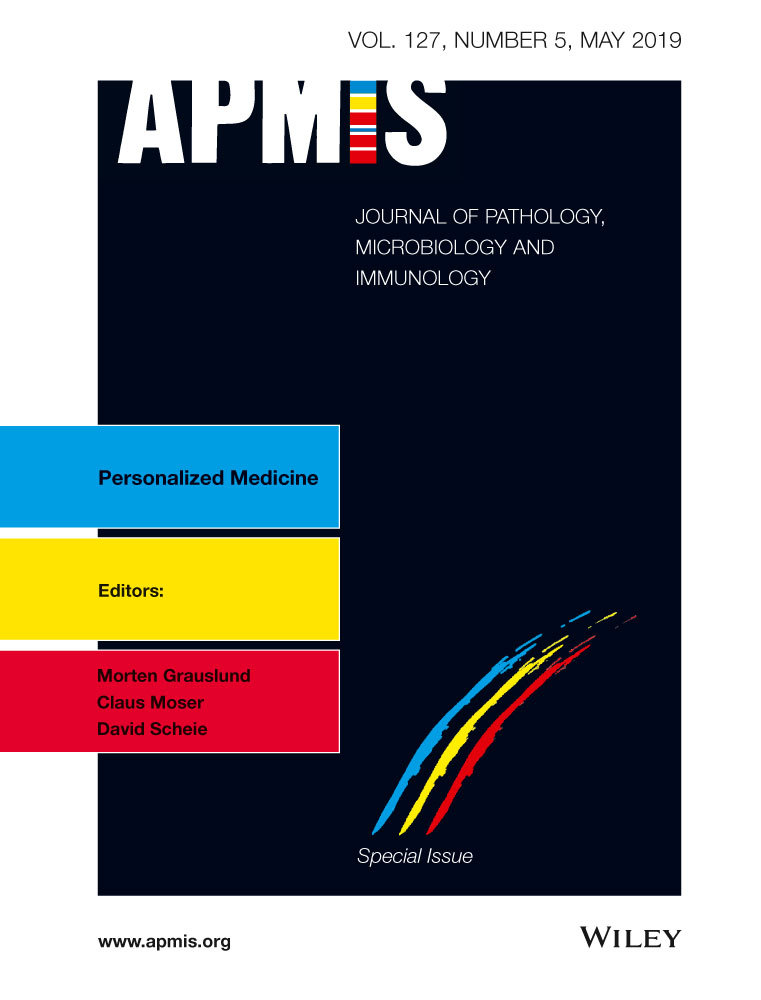
Review Article
Traditional Chinese medicine rapidly relieves the clinical symptoms caused by viral infection with a remarkable antifebrile effect.
Yuexia Ma, Ming Chen, Yali Guo, Jian Liu, Weitao Chen, Mengyue Guan, Yue Wang, Xuehui Zhao, Xu Wang, Haoyuan Li, Lingxin Meng, Yulong Wen, Yuguang Wang

Review Article
Traditional Chinese medicine has a generalized antiviral effect indicating the regulation on the direct inhibition of virus, body immunity, and inflammatory response control.
Yuexia Ma, Ming Chen, Yali Guo, Jian Liu, Weitao Chen, Mengyue Guan, Yue Wang, Xuehui Zhao, Xu Wang, Haoyuan Li, Lingxin Meng, Yulong Wen, Yuguang Wang

Review Article
Clinical efficacy can be improved by the combination of Chinese and Western medicine in the treatment of bacterial infectious diseases.
Yuexia Ma, Ming Chen, Yali Guo, Jian Liu, Weitao Chen, Mengyue Guan, Yue Wang, Xuehui Zhao, Xu Wang, Haoyuan Li, Lingxin Meng, Yulong Wen, Yuguang Wang

Review Article
Traditional Chinese medicine can restrain some infections induced by various drug-resistant bacteria.
Yuexia Ma, Ming Chen, Yali Guo, Jian Liu, Weitao Chen, Mengyue Guan, Yue Wang, Xuehui Zhao, Xu Wang, Haoyuan Li, Lingxin Meng, Yulong Wen, Yuguang Wang
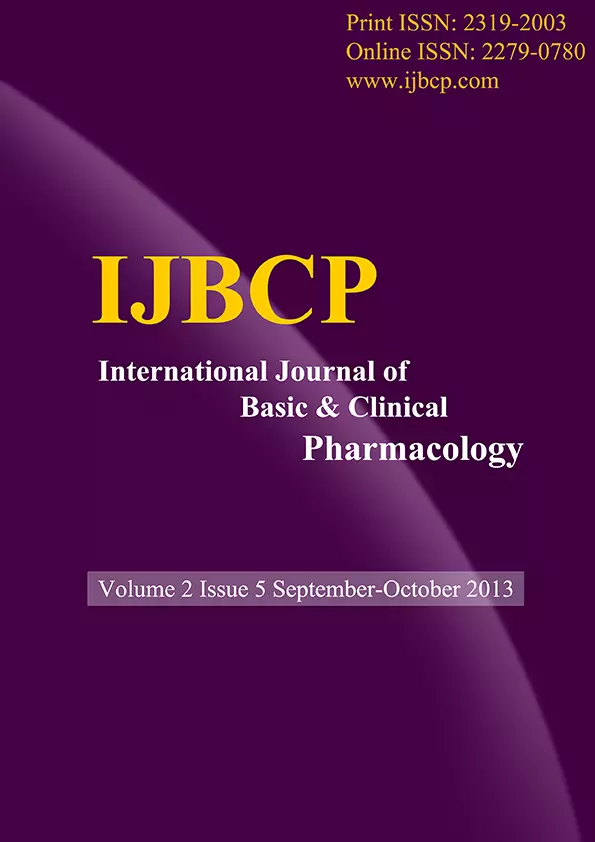
Randomised Controlled Trial
Avocado oil supplement combined with exercise improves joint function in osteoarthritis over traditional treatments like NSAIDS and multivitamins with exercise.
Chandra A, Kumar A, Kumar M, Kumar M, Dikshit H

Systematic Review
Drinking certain types of mineral water can positively influence metabolic syndrome factors like blood pressure, cholesterol, and blood sugar levels.
Costa-Vieira D, Monteiro R, Martins MJ

Systematic Review
Acupoint massage enhances acute mastitis treatment.
Hui JU, Xue-Ling MA, Hong GUO, Hai-Yan WANG, You-Hua LIU, Luo YANG, Ling TANG
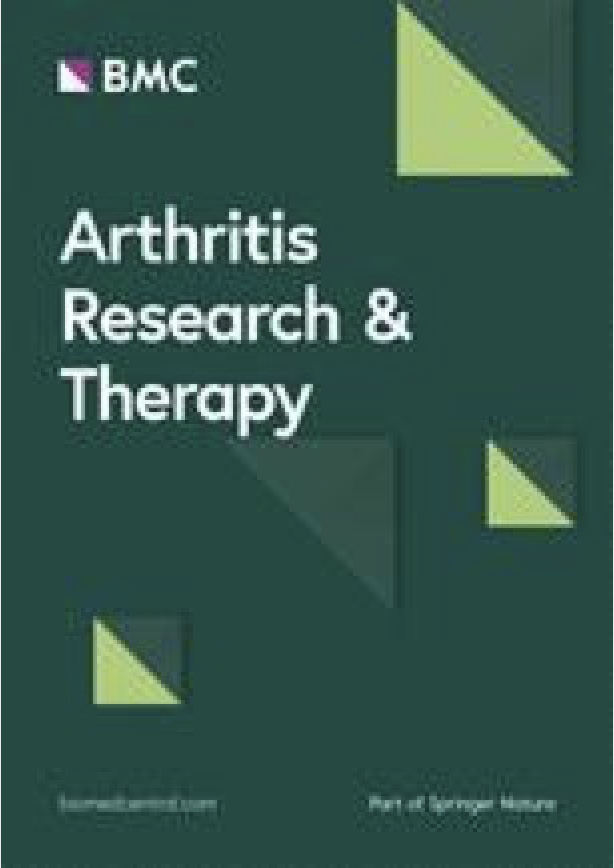
Randomised Controlled Trial
Strong electroacupuncture for at least two weeks improves chronic pain management in knee osteoarthritis patients better than weak or sham electroacupuncture.
Lv, Z., Shen, L., Zhu, B. et al.

Randomised Controlled Trial
Adzuki bean extract administered once a day can result in increased HDL-C concentration.
Kitano-Okada T, Nagata R, Han KH, Mikami N, Satoh K, Nishihira J, Sasaki K, Ohba K, Fukusima M

Systematic Review
Acupuncture seems to be superior to drug therapy in the treatment of Bell's palsy including cure rate and total effective rate.
Zhang R, Wu T, Wang R, Wang D, Liu Q

Systematic Review
Acupuncture therapy seems effective for motor function, pain relief and activities of daily living in stroke patients with mild Shoulder-Hand Syndrome, when it is used in combination with rehabilitation.
Liu S, Zhang CS, Cai Y, Guo X, Zhang AL, Xue CC, Lu C
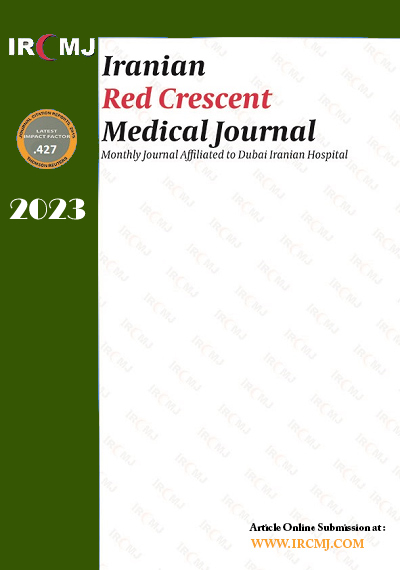
Randomised Controlled Trial
Peppermint oil capsules may significantly reduce the severity of premenstrual syndrome symptoms in reproductive-age women.
Agajani Delavar M, Ebrahimi S, Esmaeilzadeh S, Khamse A
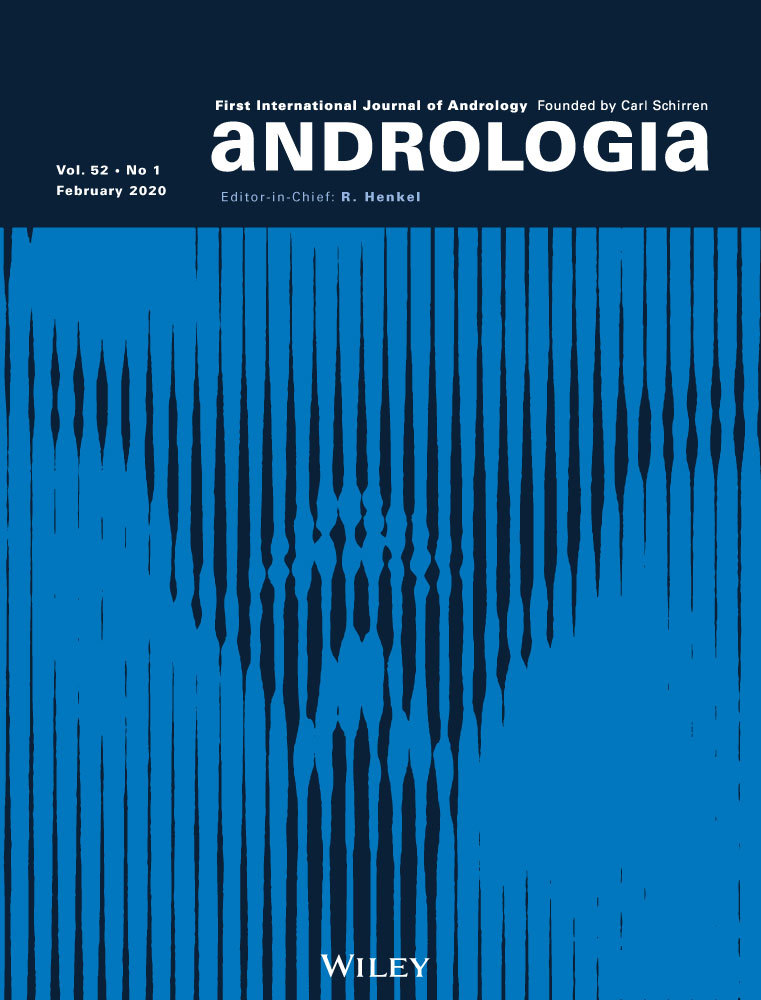
Systematic Review
Ginger enhances semen quality and improves sperm parameters, an impact linked to increased levels of gonadal hormones, decreased cell damage, and valued nutrients in ginger.
Banihani SA

Meta-Analysis
Chamomile has demonstrative positive effects on generalized anxiety disorders and sleep quality, but exhibits minimal impact on state anxiety and insomnia.
Hieu TH, Dibas M, Surya Dila KA, Sherif NA, Hashmi MU, Mahmoud M, Trang NTT, Abdullah L, Nghia TLB, Y MN, Hirayama K, Huy NT
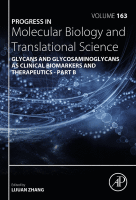
Network Pharmacology
Tremella fuciformis polysaccharide, a major bioactive component in the edible medicinal mushroom, exhibits substantial health benefits, including enhancing the immune system, combatting tumors, and delaying aging.
Yang D, Liu Y, Zhang L.
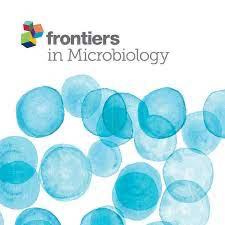
Experimental Study
Pomegranate extracts and a probiotic strain have shown a combined effect in reducing fat content and the development of fat cells, potentially useful in preventing and treating obesity.
Sorrenti V, Randazzo CL, Caggia C, Ballistreri G, Romeo FV, Fabroni S, Timpanaro N, Raffaele M, Vanella L

Systematic Review
Chinese herbal medicine may be effective and safe for treating diabetic kidney disease, although evidence quality varies.
Zhang L, Yang L, Shergis J, Zhang L, Zhang AL, Guo X, Qin X, Johnson D, Liu X, Lu C, Xue CC, Mao W

Systematic Review
Acupuncture has been presented as an effective intervention for reducing limb oedema in women post breast cancer surgery.
Zhang X, Wang X, Zhang B, Yang S, Liu D.

Systematic Review
Acupuncture as an adjunctive therapy has antihypertensive effect.
Juan Li ,1 Mingsheng Sun ,2 Jing Ye,2 Yuxi Li ,2 Rongjiang Jin ,1 Hui Zheng ,2 and Fanrong Liang 2

Systematic Review
Coffee consumption shows a protective effect against colorectal and colon cancers, particularly among US subjects and European men.
Sartini M, Bragazzi N, Spagnolo A, Schinca E, Ottria G, Dupont C, Cristina M

Systematic Review
Acupuncture could reduce Hamilton Rating Scale for Depression (HAMD) scores for postpartum depression.
Li W, Yin P, Lao L, Xu S

Systematic Review
Results of the meta-analysis identified a significant benefit for citrulline compared to placebo treatments on indices of high-intensity exercise performance in healthy men and women.
Trexler, E.T., Persky, A.M., Ryan, E.D. et al.

Systematic Review
Acupuncture shows promise in improving endometrial receptivity and fertility outcomes in infertile women, but further high-quality research is needed to establish its effectiveness definitively.
Zhong, Y., Zeng, F., Liu, W. et al.
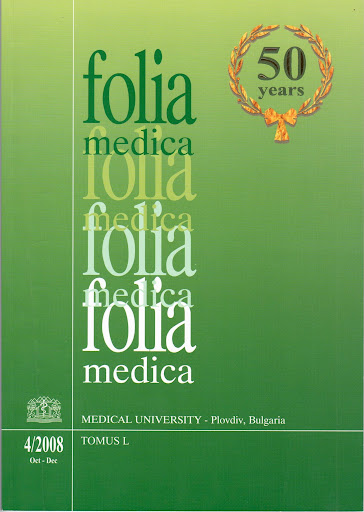
Experimental Study
The pectin-free fraction of Lycium barbarum, or goji berry, strongly inhibits growth in breast cancer cells, and this effect is enhanced by adding polysaccharides.
Georgiev KD, Slavov IJ, Iliev IA.

Meta-Analysis
Traditional Chinese Medicine (TCM), when used alongside Western Medicine (WM), seems to improve treatment outcomes for Crohn's disease.
Wang Y, Li M, Zha AS

Systematic Review
Chinese herbal medicine in conjunction with conventional western medicine proved effective in improving symptoms in Parkinson's disease patients.
Jin XC, Zhang L, Wang Y, Cai HB, Bao XJ, Jin YY, Zheng GQ

Experimental Study
The pectin-free fraction from Lycium barbarum fruit exhibits significant antioxidant activity and inhibits the growth of breast cancer cells.
Georgiev KD, Slavov IJ, Iliev IA

There is low quality evidence that bitter melon adjunct preparations improved glycemic control in type 2 diabetes mellitus patients.
Peter EL, Kasali FM, Deyno S, Mtewa A, Nagendrappa PB, Tolo CU, Ogwang PE, Sesaazi D
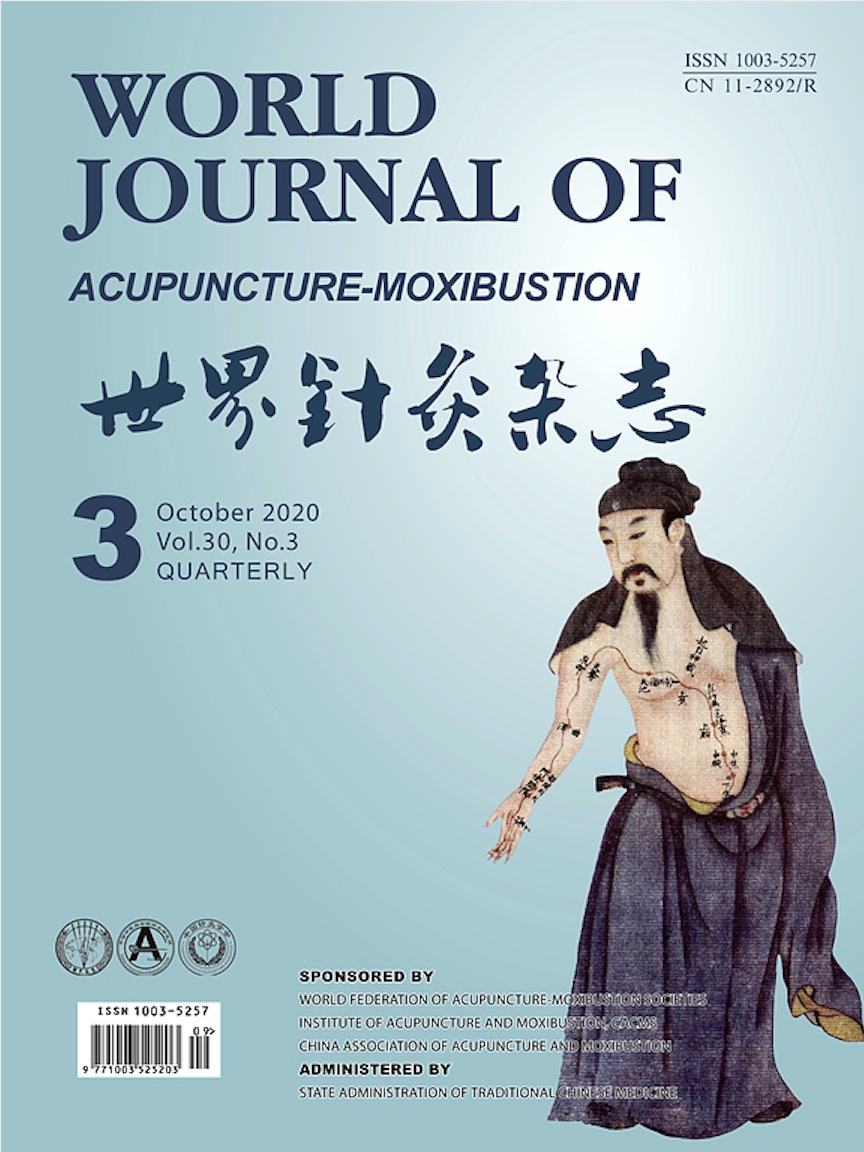
Systematic Review
The results of this meta-analysis showed that acupuncture is more effective and safer than medication for migraine.
SHEN, Feng-jiao AU - XU, Jia AU - ZHAN, Yi-jun AU - FU, Qin-hui AU - PEI, Jian PY

Systematic Review
Consumption of virgin avocado oil, rich in monounsaturated fatty acids and bioactive components, may help manage chronic diseases like hypertension, diabetes, and lower cardiometabolic risk.
Tan CX

Systematic Review
Consumption of chocolate shows a possible slight reduction in risk for coronary heart disease and stroke, with no association with other chronic diseases studied.
Morze J, Schwedhelm C, Bencic A, Hoffmann G, Boeing H, Przybylowicz K, Schwingshackl L

Systematic Review
Acupuncture, regardless of the trial design, showed a positive effect on pain-related outcome measures for participants with diabetic peripheral neuropathy.
Nash J, Armour M, Penkala S

Systematic Review
Bioactive compounds present in different parts of radishes, such as leaves, sprouts, stem and roots, act on a variety of potential drug targets associated with ailments, such as cancer, inflammation, liver injury and diabetes.
Abinaya ManivannanOrcID,Jin-Hee Kim,Do-Sun Kim,Eun-Su Lee andHye-Eun Lee

Review Article
Evidence indicates that acupuncture treatment may be of benefit in several neuropsychiatric disorders, including depression, anxiety, schizophrenia, and Alzheimer's Disease.
Tu CH, MacDonald I, Chen YH

Systematic Review
Results from existing studies suggest that goji berry polysaccharide is a promising therapeutic agent, particularly in the management of liver disease, hyperlipidemia, and diabetes.
Kwok SS, Bu Y, Lo AC, Chan TC, So KF, Lai JS, Shih KC.

Systematic Review
Black pepper, beyond its culinary use, offers medicinal benefits like antimicrobial, antioxidant, anticancer, anti-diabetic, and anti-inflammatory properties mainly attributed to the compound piperine.
Takooree H, Aumeeruddy MZ, Rengasamy KRR, Venugopala KN, Jeewon R, Zengin G, Mahomoodally MF

Randomised Controlled Trial
Synbiotic pomegranate juice (containing inulin and lactobacillus) can improve insulin resistance, reduce testosterone level, and aid weight loss in women suffering from Polycystic Ovarian Syndrome.
Esmaeilinezhad Z, Babajafari S, Sohrabi Z, Eskandari MH, Amooee S, Barati-Boldaji R

Meta-Analysis
Massage therapy proves more beneficial in improving ADHD symptoms in children and adolescents than traditional Ritalin treatment.
Chen SC, Yu BYM, Suen LKP, Yu J, Ho FYY, Yang JJ, Yeung WF

Systematic Review
The health benefits of goji berries include enhancing hemopoiesis, antiradiation, antiaging, anticancer, improvement of immunity, and antioxidation.
Zheng Feei Ma, Hongxia Zhang, Sue Siang Teh, Chee Woon Wang, Yutong Zhang, Frank Hayford, Liuyi Wang, Tong Ma, Zihan Dong, Yan Zhang, Yifan Zhu,

Systematic Review
Goji berries, rich in antioxidants, confer health benefits including protection against aging, cancer, and radiation, as well as enhancing immunity and blood production.
Zheng Feei Ma, Hongxia Zhang, Sue Siang Teh, Chee Woon Wang, Yutong Zhang, Frank Hayford, Liuyi Wang, Tong Ma, Zihan Dong, Yan Zhang, Yifan Zhu,

Systematic Review
We found good evidence that receiving acupuncture for chronic pain is better than not receiving treatment or being placed on a waiting list and reasonable evidence that it is better than conventional or usual care.
Yan-Jiao Chen, Gabriel Shimizu Bassi, Yong-Qing Yang

Randomised Controlled Trial
Kiwifruit increases water retention in the small bowel and ascending colon and increases total colonic volume. It could be used as a dietary alternative to laxatives in mild constipation.
Wilkinson‐Smith V, Dellschaft N, Ansell J, Hoad C, Marciani L, Gowland P, Spiller R
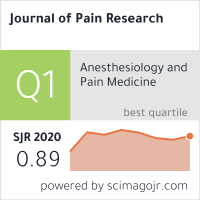
Systematic Review
Acupuncture is an effective and safe treatment for patients with fibromyalgia. It may be more effective in relieving pain in both the short and long term compared with conventional medication.
Zhang X, Chen H, Xu W, Song Y, Gu Y, Ni G

Network Pharmacology
Raw pu-erh tea extract has superior antioxidant capacity due to higher polyphenol content, but ripe pu-erh offers a cheaper, yet effective alternative for antioxidant or antimicrobial properties.
Roda G, Marinello C, Grassi A, et al.

Randomised Controlled Trial
Dark chocolate with high cocoa content can affect colonic functionality and stimulate certain brain regions in healthy adults.
Fox M, Meyer-Gerspach AC, Wendebourg MJ, Gruber M, Heinrich H, Sauter M, Woelnerhanssen B, Koeberle D, Juengling F
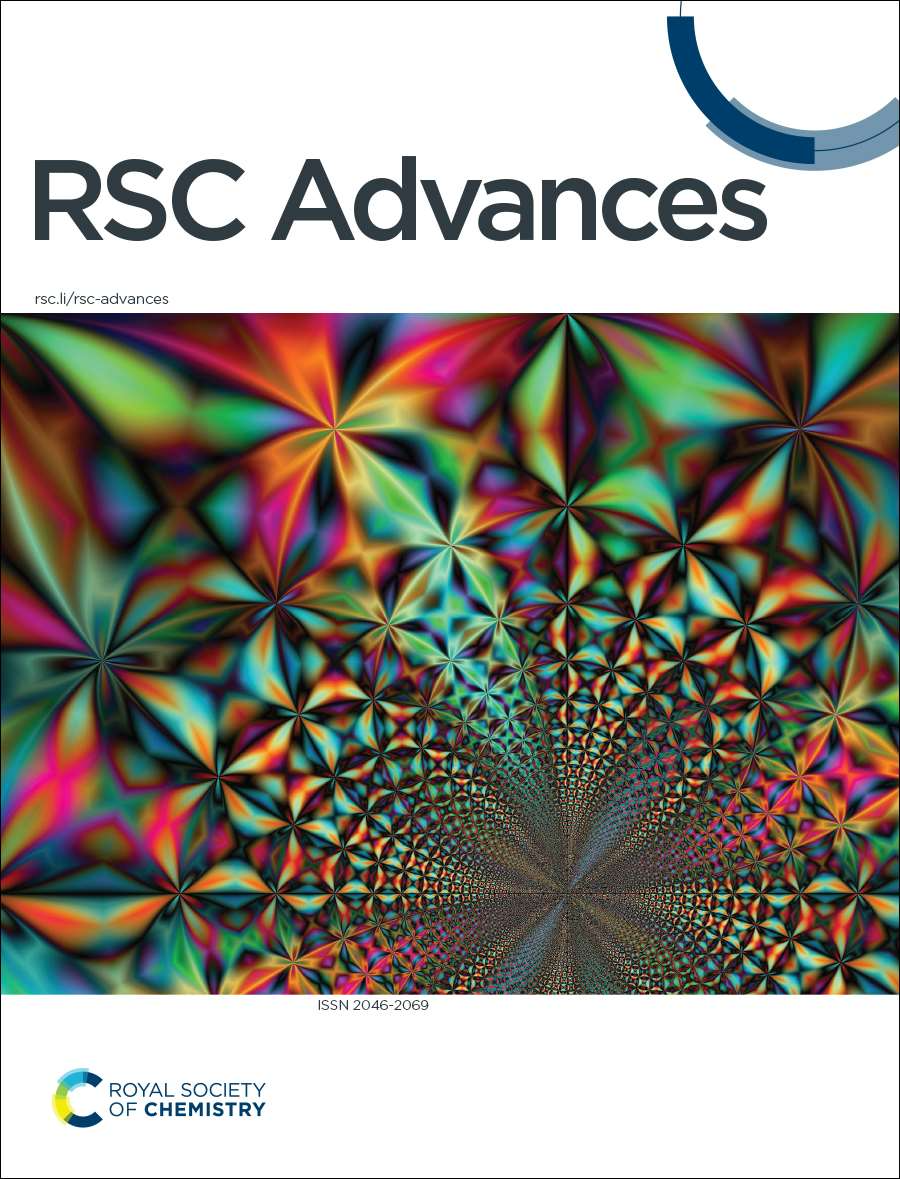
Animal Study
Ripened Pu-erh tea extract demonstrates a stronger anti-diabetic impact than raw Pu-erh tea extract, potentially due to the fermentation process and its probiotic benefits to certain gut bacteria.
Qianzhi Ding, Wei Zheng, Bowei Zhang, Xiaojuan Chen, Jie Zhang, Xu Pang, Yong Zhang, Dexian Jia, Surui Pei Yuesheng Dong Baiping Ma

Animal Study
Gan Mai Da Zao decoction has shown comparable anxiolytic effects to Diazepam and Buspirone in mice, possibly regulated by serotonin and gamma-aminobutyric acid receptors.
Chen HS, Gu LJ, Yang YX, Guo JY

Randomised Controlled Trial
Daily consumption of tart cherry juice for 12 weeks showed anti-oxidative and anti-inflammatory properties which may reduce blood pressure and lower LDL cholesterol in older adults.
Chai S, Davis K, Zhang Z, Zha L, Kirschner K
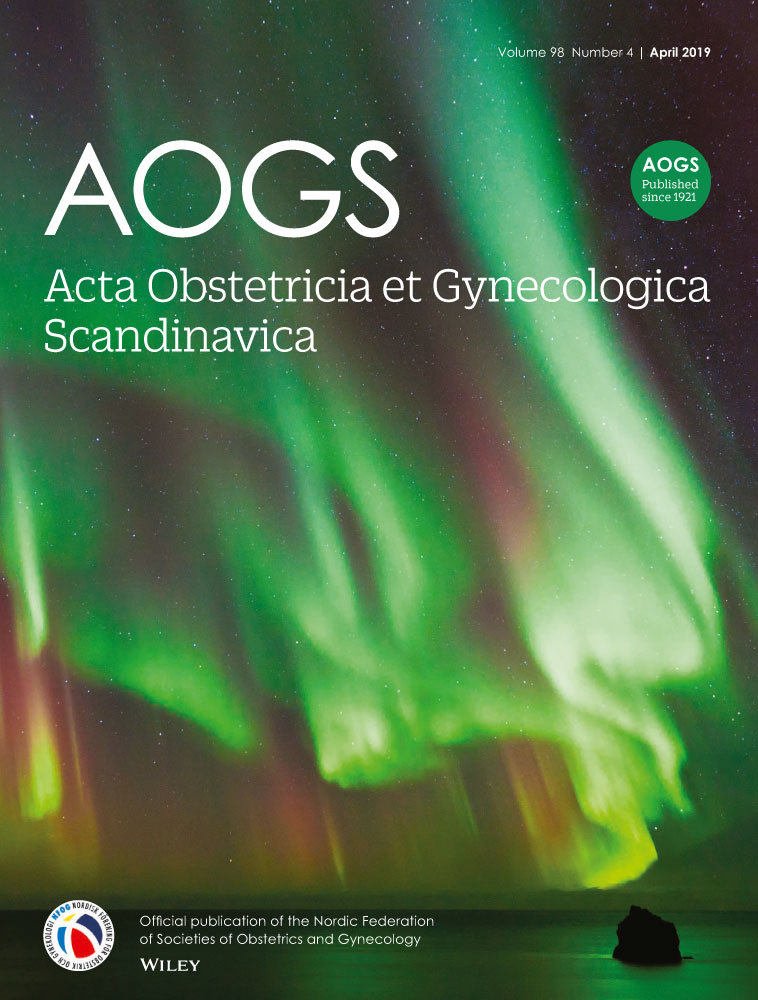
Randomised Controlled Trial
Acupuncture during IVF treatment can possibly lower anxiety at the time of embryo transfer but seems to have no long-term impact on women's quality of life.
Smith CA, de Lacey S, Chapman M, Ratcliffe J, Norman RJ, Johnson NP, Fahey P

Experimental Study
Extract of pumpkin seeds displays estrogenic properties, potentially offering a solution to alleviate symptoms of menopausal syndromes resulting from estrogen deficiency.
Lestari B, Walidah Z, Utomo RY, Murwanti R, Meiyanto E
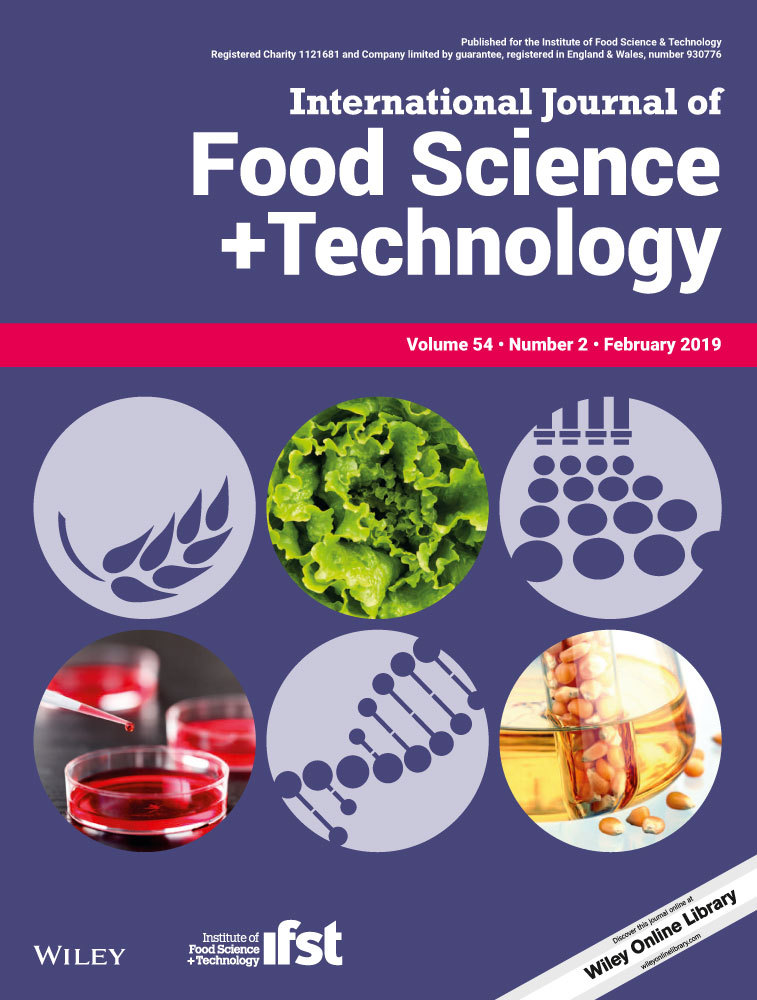
Animal Study
Pu-erh tea has a significant anti-hyperglycaemic effect, with its efficacy increasing over time and with higher dosages.
Lin, H.-C., Lee, C.-T., Yen, Y.-Y., Chu, C.-L., Hsieh, Y.-P., Yang, C.-S. and Lan, S.-J.

Systematic Review
Peppermint oil has been shown to be a safe and effective treatment for pain and overall symptoms in adults suffering from irritable bowel syndrome.
Alammar N, Wang L, Saberi B, Nanavati J, Holtmann G, Shinohara RT, Mullin GE

Systematic Review
There is moderate evidence of efficacy for acupuncture in terms of pain reduction immediately after treatment for non-specific low back pain ((sub)acute and chronic) when compared to sham or placebo acupuncture.
Xiang Y, He J, Tian H, Cao B, Li R.

Cohort Study
Fish intake does not majorly impact overall rheumatoid arthritis risk but can lessen the association of smoking for rheumatoid arthritis diagnosed under 55 years of age.
Sparks JA, O’Reilly J, Barbhaiya M, Tedeschi SK, Malspeis S, Lu B, Willett WC, Costenbader KH, Karlson EW

Systematic Review
Acupuncture may have a significant effect on clinical pregnancy rates, independent of comparator group, when used in women who have had multiple previous IVF cycles, or where there was a low baseline pregnancy rate.
Smith, C. A., Armour, M., Shewamene, Z., Tan, H. Y., Norman, R. J., & Johnson, N. P.

Randomised Controlled Trial
Daily consumption of tart cherry juice may enhance cognitive abilities in older adults, likely due to reduction of hypertension, inflammation, and oxidative stress.
Chai SC, Jerusik J, Davis K, Wright RS, Zhang Z

Network Pharmacology
The purple chrysanthemum tea, imbued with unique antioxidants and affected by infusion time, showed comparatively higher antioxidant activity than the yellow chrysanthemum.
Han AR, Nam B, Kim BR, Lee KC, Song BS, Kim SH, Kim JB, Jin CH.
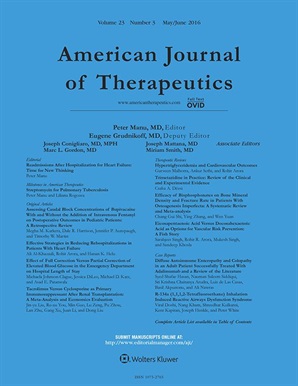
Review Article
Mg is essential in the metabolism of vitamin D, and taking large doses of vitamin D can induce severe depletion of Mg. Adequate magnesium supplementation should be considered as an important aspect of vitamin D therapy.
Reddy P, Edwards LR
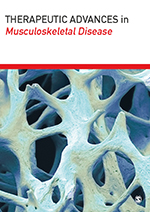
Review Article
Cherries and their products have antioxidant properties, the capacity to inhibit the acute inflammatory response to urate crystals, and the ability to decrease bone resorption that is characteristic of gouty bone erosions.
Collins MW, Saag KG, Singh JA

Systematic Review
L-citrulline supplementation may reduce systolic blood pressure. A significant reduction in diastolic blood pressure was observed only in the studies that used doses ≥ 6 g/day.
Barkhidarian B, Khorshidi M, Shab-Bidar S, Hashemi B.

Experimental Study
Lemongrass extract has potential as a supplement to chemotherapy, reducing colon cancer growth, enhancing treatment effectiveness, and mitigating side effects like weight loss.
Ruvinov I, Nguyen C, Scaria B, Vegh C, Zaitoon O, Baskaran K, Mehaidli A, Nunes M, Pandey S

Theoretical Article
Chrysanthemum, a plant primarily grown in China and Japan, offers significant health benefits including stress reduction, cardiovascular improvement, and lowering osteoporosis risk.
SHAHRAJABIAN MH
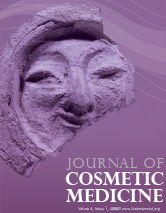
Systematic Review
The safety of cosmetic acupuncture appears tolerable, however, well-designed high-quality studies, are needed to determine its effects on facial cosmetic conditions.
Byung-Cheul Shin & Kyeong-Tae Lim

Systematic Review
Acupuncture relieved hepatic steatosis and reduced total cholesterol and triglyceride in non-alcoholic fatty liver disease patients.
Joon Hyun, Joo-bok Lee, So-yeon Kim, Chang-woo Han

Review Article
Blueberry anthocyanins have a potential role in preventing osteoporosis and demonstrate positive antioxidant and anti-inflammatory activity.
, Jones DR
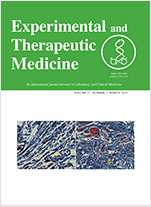
The polyphenol epigallocatechin-3-gallate (EGCG) inhibits the growth of cervical carcinoma cell lines potentially by altering the expression of micro-RNAs, indicating its potential as an anti-cervical cancer drug.
Zhu Y, Huang Y, Liu M, Yan Q, Zhao W, Yang P, Gao Q, Wei J, Zhao W, Ma L

Case Report
Acupuncture for cluster headache may be more effective if treated in the same way as has been shown effective for trigeminal neuralgia.
Simon Hayhoe

Systematic Review
Acupuncture in combination with rehabilitation may have benefits for the treatment of acute and subacute stroke sequelae in comparison with rehabilitation alone.
Vados, L., Ferreira, A., Zhao, S., Vercelino, R., & Wang, S.
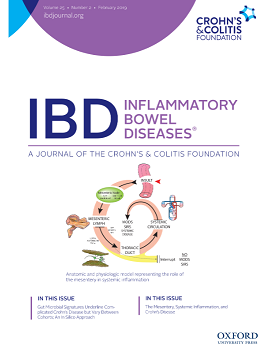
Practice Guideline
Acupuncture has been shown to decrease disease activity and inflammation via increase of vagal activity in inflammatory bowel disease.
Gengqing Song, MD, Claudio Fiocchi, MD, Jean-Paul Achkar, MD
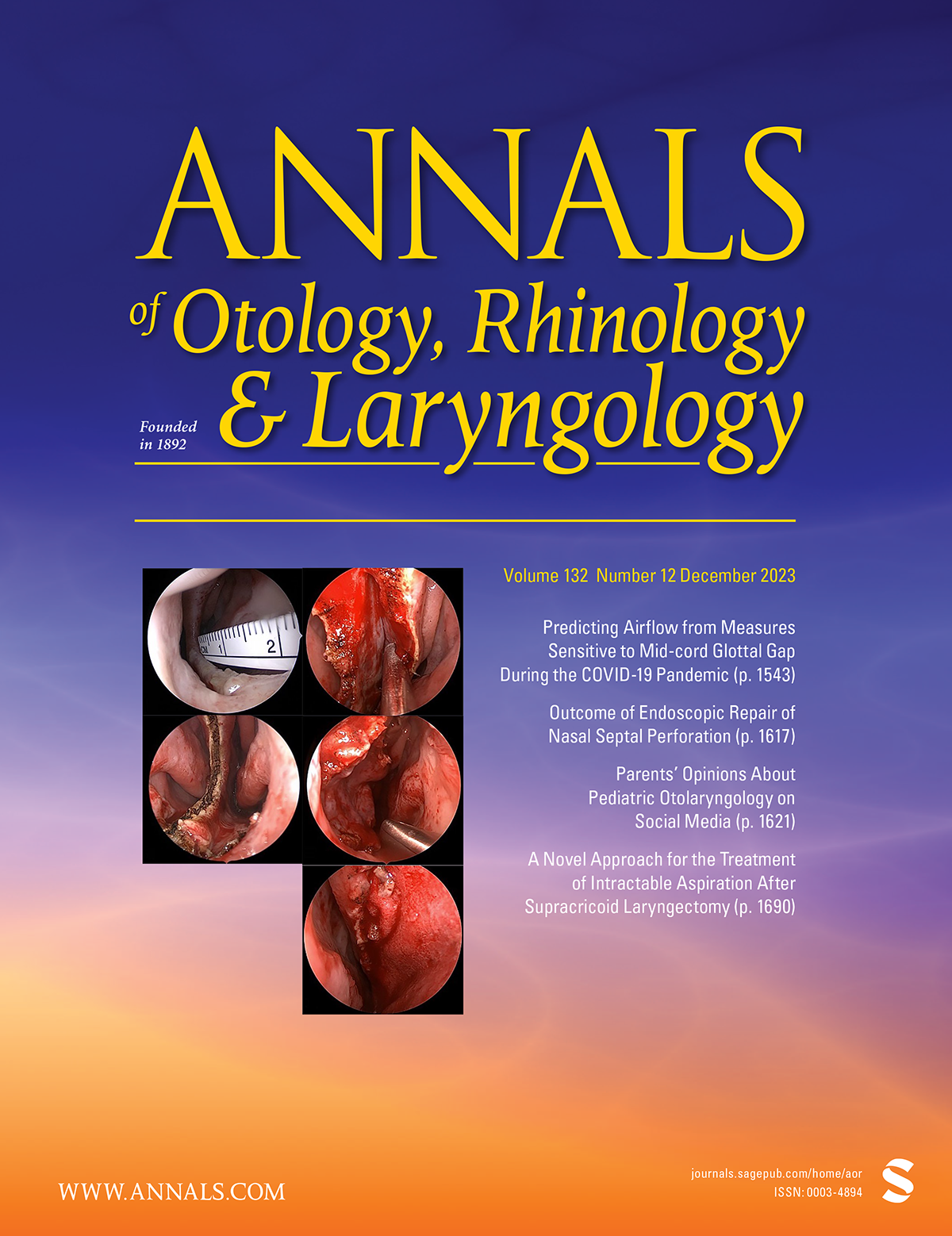
Review Article
Honey exhibits efficacy in otolaryngology, supported by high-quality evidence, particularly in preventing oral mucositis in cancer patients, alleviating pediatric cough, and managing post-tonsillectomy pain.
Tharakan T, Bent J, Tavaluc R

Experimental Study
The Jian-Pi-Yi-Shen Formula (JPYSF) has been found to significantly improve chronic kidney disease, potentially through the modulation of the mitochondrial quality control network.
Liu X, Chen J, Liu X, Wang D, Zheng P, Qi A, Yi T, Li S

Systematic Review
Warm needling therapy is superior to acupuncture in treating peripheral facial paralysis, providing a therapeutic option for the treatment of peripheral facial paralysis.
CAO J, YUAN A, ZHANG Y, YANG J, SONG X
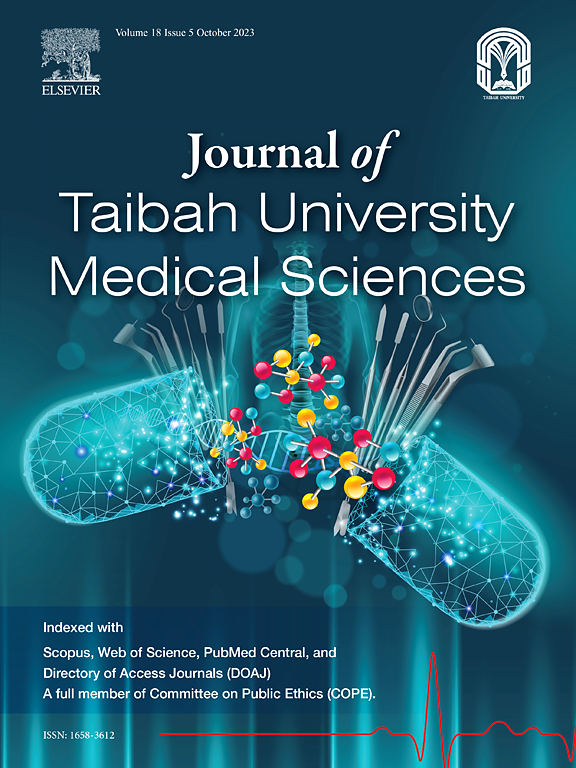
Randomised Controlled Trial
Consumption of date fruits has a positive impact on the onset and progression of labour, whilst improving infant outcome.
Ahmed IE, Mirghani HO, Mesaik MA, Ibrahim YM, Amin TQ

Systematic Review
Acupuncture may help to alleviate pain caused by primary dysmenorrhea.
Zhang F, Sun M, Han S, Shen X, Luo Y, Zhong D, Zhou X, Liang F, Jin R

Systematic Review
Aromatherapy (via inhalation, massage, or oral use) appears to be more effective than a placebo for pain reduction in primary dysmenorrhea.
Lee MS, Lee HW, Khalil M, Lim HS, Lim HJ

Systematic Review
Acupuncture performed on the day of embryo transfer has a significant effect on embryo implantation, however, a negative one.
Schwarze, J.-E., Ceroni, J. P., Ortega-Hrepich, C., Villa, S., Crosby, J., & Pommer, R.

Systematic Review
Findings indicated reductions in patient symptoms and improvements in biomarkers where acupuncture was used alone or in combination therapy against thyroid-relevant illnesses.
Cheng FK

Systematic Review
Chinese herbal medicine improved depression symptoms and severity compared to antidepressants for postpartum depression.
Yang L, Di YM, Shergis JL, Li Y, Zhang AL, Lu C, Guo X, Xue CC
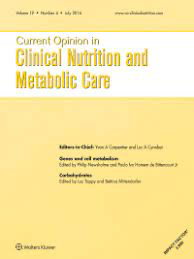
Systematic Review
Most bioactive walnut micronutrients synergize to affect multiple metabolic pathways leading to protection from chronic noncommunicable diseases.
Ros, Emilioa,b; Izquierdo-Pulido, Maríab,c; Sala-Vila, Aleix
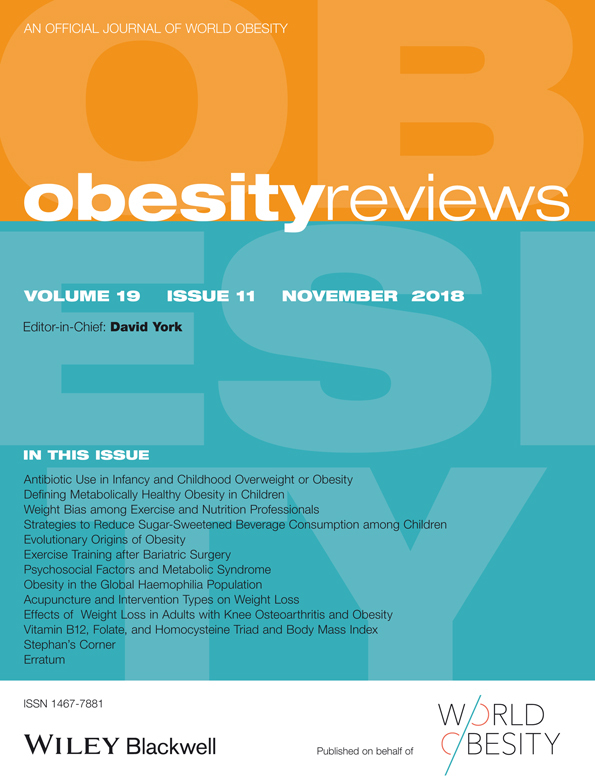
Systematic Review
Unlike herbal medicine and lifestyle modification, acupuncture treatment may be more effective in patients with overweight than in patients with obesity.
Kim SY, Shin IS, Park YJ.

Animal Study
Welsh onion root extract administration influenced aromatase production, enhanced the estrogen steroid synthesis, and consequently restored the estrogenic feedback mechanism on the pituitary-ovary system.
Lee YH, Yang H, Lee SR, Kwon SW, Hong EJ, Lee HW.
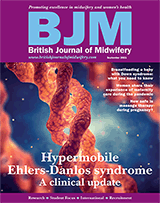
Systematic Review
Acupuncture in postpartum depression was at least as effective as fluoxetine hydrochloride, supporting the notion that acupuncture may be a safe and effective option.
Akari Komori, David Arthur, Samara Radford, Hsiewe Ying Tan, Li Zheng, Mira An, Rika Umeda, and Zhen Zheng

Systematic Review
Ginger supplementation enhances the production of testosterone in males by reducing oxidative stress and increasing luteinizing hormone production, cholesterol in testes, and blood flow to the testes.
Banihani SA

Review Article
Shu Di Huang, traditionally used in Chinese medicine, may effectively treat attention deficit hyperactivity disorder by rectifying neurodevelopmental abnormalities, neuronal apoptosis, and energy metabolism failures.
Yuan H, Yang M, Han X, Ni X

Systematic Review
Acupuncture appears to be effective for postpartum depression with respect to certain outcomes.
Li S, Zhong W, Peng W, Jiang G

Experimental Study
Dietary supplementation with Goji berries enhances Bifidobacteria and butyrate-producing bacteria growth, resulting in potential preventative effects against colitis.
Kang Y, Yang G, Zhang S, Ross CF, Zhu MJ

Systematic Review
Herbal medicines for labor induction show effectiveness
Zamawe C, King C, Jennings HM, Mandiwa C, Fottrell E

Systematic Review
Chinese herbal medicine combined with moxibustion might be beneficial for treating PCOS, and the treatment might improve the therapeutic effects of conventional western medications including clomiphene citrate, oral contraceptives, and/or metformin.
Kwon, Chan-Young, Lee, Boram, Park, Kyoung Sun

Systematic Review
Acupuncture treatment is beneficial in vitro fertilization (IVF) or intracytoplasmic sperm injection (ICSI) for improving the clinical pregnancy, implantation, and live birth outcomes.
Zhang X, Lee MS, Smith CA, Robinson N, Zhou Y, Wu Y, Mao YY, Qu F

Systematic Review
Sesame oil intake was associated with reduced body weight and body mass index.
Raeisi-Dehkordi H, Mohammadi M, Moghtaderi F, Salehi-Abargouei A
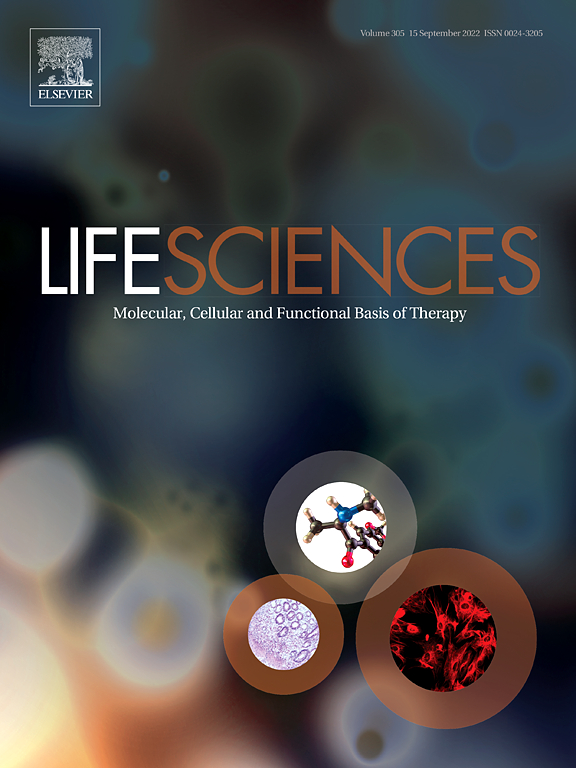
Animal Study
Curcumin, found in turmeric, exerts anticonvulsive effects by elevating serotonin levels, influencing certain receptors, and possibly reducing 5-HT7 gene expression.
Arbabi Jahan A, Rad A, Ghanbarabadi M, Amin B, Mohammad-Zadeh M
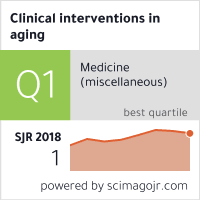
Randomised Controlled Trial
The extract from cucumber, Q-Actin, is effective in reducing moderate knee osteoarthritis related pain and potentially in managing knee pain, stiffness, and physical functions.
Nash RJ, Azantsa BKG, Sharp H, Shanmugham V
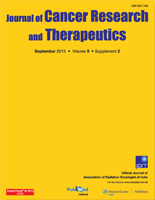
Systematic Review
The use of acupuncture as an adjunct to ameliorate hot flashes is still a relatively sound treatment for breast cancer patients.
Wang XP, Zhang DJ, Wei XD, Wang JP, Zhang DZ.

Experimental Study
Danggui Buxue Tang (DBT) supplement helps reduce running times and control exercise-induced hepcidin levels, boosting iron levels and speeding up iron balance during recovery.
Chang CW, Chen CY, Yen CC, Wu YT, Hsu MC

Review Article
(-)-Epigallocatechingallate (EGCG), a natural product, has potent anti-proliferation, anti-metastasis, and pro-apoptosis effects on cervical cancer cells, enhancing the effects of conventional drugs.
Wang YQ, Lu JL, Liang YR, Li QS

Meta-Analysis
Dietary carrot intake is associated with a decreased risk of breast cancer.
Chen H, Shao F, Zhang F, Miao Q

Systematic Review
Cupping therapy has demonstrated notable effects in reducing chronic back pain in adults.
Moura, C. C., Chaves, É., Cardoso, A., Nogueira, D. A., Corrêa, H. P., & Chianca, T.

Phytochemicals including phenolics and flavonoids in citrus peel extracts exhibited good antioxidant properties.
Sok Sian Liew1, Wan Yong Ho1, Swee Keong Yeap2, Shaiful Adzni Bin Sharifudin1,3

Experimental Study
Matcha green tea potentially inhibits the growth of breast cancer cells by disrupting metabolic action within the cells and reprogramming their activities.
Bonuccelli G, Sotgia F, Lisanti MP

Systematic Review
Acupuncture may reduce overall mood and physical PMS symptoms when compared to sham. Acupressure may reduce the number of women having moderate to severe PMS symptoms when compared to sham acupressure.
Armour M, Ee CC, Hao J, Wilson TM, Yao SS, Smith CA

Animal Study
Acupuncture can alleviate PTSD-related depression and anxiety by boosting protein synthesis required for synaptic plasticity via the mTOR pathway in the hippocampus.
Oh JY, Kim YK, Kim SN, Lee B, Jang JH, Kwon S, Park HJ

Systematic Review
There is limited evidence that acupuncture is safe and might be effective in pain relieving for patients with postherpetic neuralgia.
Wang, Yang., Li, Wang., Peng, Weina., Zhou, Jing., Liu, Zhishun
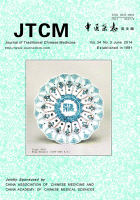
Systematic Review
Stimulating acupoints had positive effects on childhood cough variant asthma and was a relatively safe treatment.
Jin Yutong, Chen Shan, Xuan Lihua
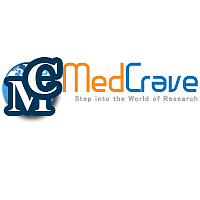
Systematic Review
Chili pepper has preventive and therapeutic properties for many ailments such as different types of cancer, rheumatism, stiff joints, bronchitis and chest colds with cough and headache, arthritis, heart arrhythmias and used as stomachic.
Saleh BK, Omer A, Teweldemedhin B.

The consumption of epicatechin, plentiful in foods like cocoa, positively influences memory, executive function, and processing speed, particularly in older adults.
Haskell-Ramsay C, Schmitt J, Actis-Goretta L

Clinical Study
Young adults using low-fat oily dressings and certain cooking oils are linked to higher metabolic risks without direct relation to their consumptions of low fat dairy, meat, or cooking fats.
Sun Y, Magnussen CG, Dwyer T, Oddy WH, Venn AJ, Smith KJ

Traditional Chinese Medicine, particularly Jia Wei Xiao Yao San and Xiang Fu, is widely utilized in Taiwan for managing Polycystic ovary syndrome symptoms.
Liao WT, Chiang JH, Li CJ, Lee MT, Su CC, Yen HR

Meta-Analysis
Our meta-analysis provides a new evidence supporting the efficacy and safety of acupuncture in treatment to post-stroke dysphagia in short-term compared with rehabilitation or medication.
Li, Lx., Deng, K. & Qu, Y.

Randomised Controlled Trial
Consuming two SunGold kiwifruits daily over 12 weeks improved vitamin C status, reduced blood pressure, waist measurements and altered faecal microbiota composition in prediabetic individuals.
Wilson R, Willis J, Gearry R, Hughes A, Lawley B, Skidmore P, Frampton C, Fleming E, Anderson A, Jones L, Tannock G, Carr A

Systematic Review
Moxibustion was found to be an effective and safe treatment improving symptoms and quality of life in patients with Benign Prostatic Hyperplasia.
Bae G, Lee S, Hong J, Lee I, Kim S, Choi J, Han C, Yun Y, Park S, Kwon J

Review Article
Pumpkin seed oil appears effective for improving men's health conditions such as enlarged prostate, overactive bladder, and hair loss due to its anti-inflammatory properties and radical scavenging.
Ramak P, Mahboubi M

Systematic Review
Acupuncture showed a significant benefit in pain reduction for women with endometriosis as compared with placebo.
Mira, T.A., Buen, M.M., Borges, M.G., Yela, D.A. and Benetti-Pinto, C.L.

Systematic Review
Incorporating walnuts into the diet improved blood lipid profile without adversely affecting body weight or blood pressure.
Marta Guasch-Ferré, Jun Li, Frank B Hu, Jordi Salas-Salvadó, Deirdre K Tobias
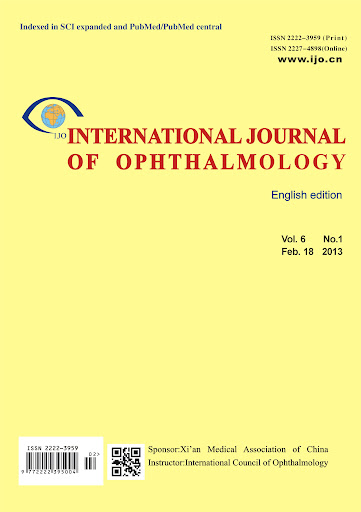
Randomised Controlled Trial
Goji berry supplementation can improve macular pigment and visual acuity in patients with early age-related macular degeneration by increasing serum zeaxanthin levels.
Shang Li, Na Liu, Li Lin, et al.

Randomised Controlled Trial
Acupuncture appeared to significantly reduce the number of days of antihistamine use while improving rhinitis-specific quality of life and seasonal allergic rhinitis symptoms
Adam D, Grabenhenrich L, Ortiz M, Binting S, Reinhold T, Brinkhaus B

Systematic Review
Acupuncture might reduce menstrual pain and associated symptoms more effectively compared to no treatment or NSAIDs.
Woo HL, Ji HR, Pak YK, Lee H, Heo SJ, Lee JM, Park KS

Randomised Controlled Trial
Pumpkin seed oil and pumpkin seeds can effectively reduce obstructive urinary symptoms in patients dealing with symptomatic benign prostatic hypertrophy, performing as well as saw palmetto and prazosin.
Edwards R, Shadiack A

Systematic Review
In people with hip osteoarthritis, at close to 8 weeks, acupuncture plus routine primary physician care may improve pain and function compared to routine primary physician care alone.
Manheimer E, Cheng K, Wieland LS, Shen X, Lao L, Guo M, Berman BM.

Review Article
Acupuncture effectively manages a range of post-spinal cord injury complications, including motor and sensory dysfunction, pain, neurogenic bowel and bladder, pressure ulcers, spasticity, and osteoporosis.
Qianqian, F., Omer, C., Lize, X., & Yun, X.

Systematic Review
Acupuncture may improve diarrhoea-predominant irritable bowel syndrome better than drugs and has the fewest side effects.
Zhu L, Ma Y, Ye S, Shu Z

Review Article
Lycopene may improve vascular function and contributes to the primary and secondary prevention of cardiovascular disorders.
Mozos, I., Stoian, D., Caraba, A., Malainer, C., Horbańczuk, J. O., & Atanasov, A. G
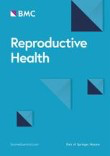
Review Article
Endometriosis, often seen as benign, is linked to infertility and metastatic cancer, and shows different risk factors and treatment responses in Asian and European-American women.
Dai Y, Li X, Shi J, Leng J

Systematic Review
The biomarkers that were significantly different between black seeds and white sesame seeds are highly related to the functions recorded in traditional Chinese medicine.
Wang D, Zhang L, Huang X, Wang X, Yang R, Mao J, Wang X, Wang X, Zhang Q, Li P.

Systematic Review
Combining Gua Sha therapy with Western medicine appears to offer significant improvements in perimenopausal symptom management.
Qing Ren, Xinyu Yu, Fujiu Liao, Xiaofan Chen, Dongmei Yan, Heyun Nie, Jinju Fang, Meng Yang, Xu Zhou

Systematic Review
Acupuncture alone is more effective in treating postpartum urinary retention than intramuscular injection of neostigmine, with good safety profile.
Xiao-Mei Wang, Jing Gong, Si-Cong Li, and Mei Han

Animal Study
The herbal formula B210 can alleviate snoring in aged rats by modifying the activities and breathing time of relevant nerves.
Chung KT, Hsu CH, Lin CL, Wang SE, Wu CH

Experimental Study
Higher iron levels after menopause appear to be risk factors for osteoporosis, and hormone hepcidin, which regulates iron, might be a potential therapeutic target for this condition.
Zhang P, Wang S, Wang L, Shan BC, Zhang H, Yang F, Zhou ZQ, Wang X, Yuan Y, Xu YJ
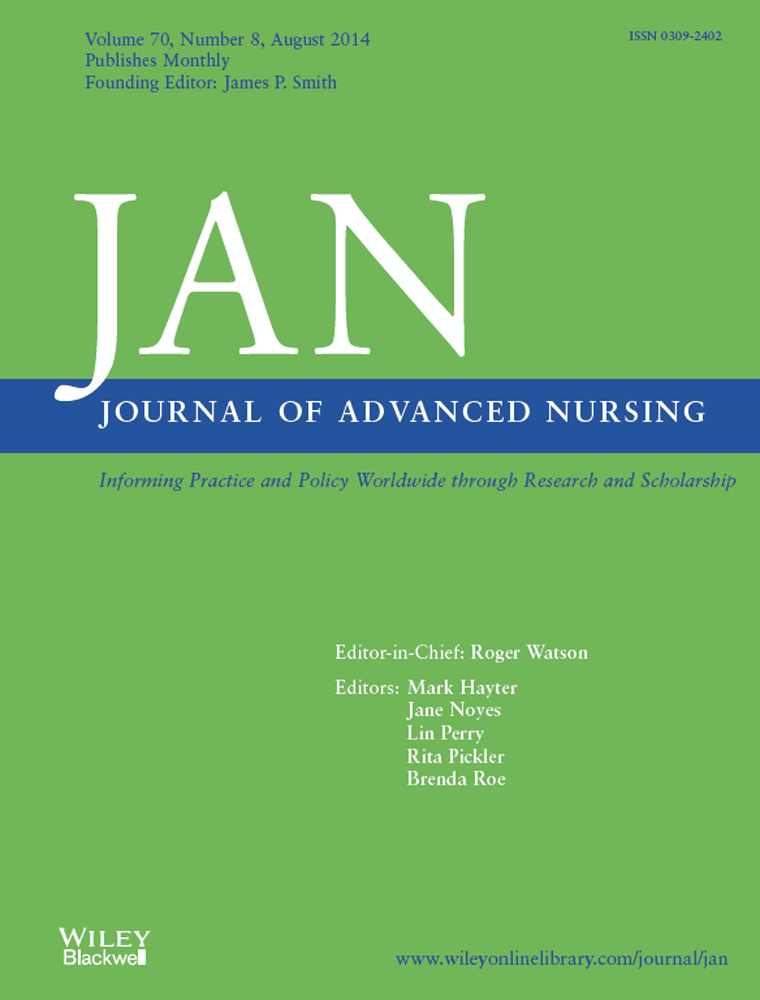
Systematic Review
Skin-patches of Chinese herbal medicine combined with Western medicine seemed to be more effective than Western medicine alone to reduce the pain scores of patients with acute gouty arthritis.
Wang HR, Fu Q, Liu Z, Li ML, Zhai SQ

Systematic Review
Compared with other therapies, acupuncture at ST38 appeared to reach a better therapeutic effectiveness in improving the recovery of shoulder joint mobility.
Yang C, Lv TT, Yu TY, Wong S, Lu MQ, Li YZ

Systematic Review
Subgroup analysis suggests consuming at least 30 grams of dark chocolate per day for a trial period between four to eight weeks may lead to reductions in weight and body mass index.
Kord-Varkaneh H, Ghaedi E, Nazary-Vanani A, Mohammadi H, Shab-Bidar S

Review Article
Moderate‐certainty evidence showed that honey probably reduces cough duration to a greater extent than salbutamol or placebo. Honey group participants were first to get total relief of cough compared to salbutamol or placebo.
Oduwole O, Udoh EE, Oyo-Ita A, Meremikwu MM

Systematic Review
Acupuncture showed a more favourable effect in the treatment of lumbar disc herniation than lumbar traction, ibuprofen, diclofenac sodium and meloxicam.
Tang S, Mo Z, Zhang R

Theoretical Article
The Chinese herbal formula Jian-Pi-Yi-Shen can enhance the immune system, treat anemia, and regulate erythropoietin and pro-inflammatory cytokines expression.
Chen J, Gong AGW, Liu X, Li Z, Qi A, Dong TTX, Yi T, Tsim KWK, Li S

Systematic Review
Ginger emerges as a safe and effective treatment for nausea and vomiting in early pregnancy.
Stanisiere J, Mousset PY, Lafay S

Systematic Review
Acupuncture alone or combined with other treatment modalities is beneficial to the clinical conditions of rheumatoid arthritis without adverse effects reported and can improve function and quality of life and is worth trying.
Pei-Chi Chou and Heng-Yi Chu

Systematic Review
Ginger supplementation has a favorable effect on levels of triacylglycerol and low-density lipoprotein cholesterol, especially in doses of 2 grams or less per day.
Pourmasoumi M, Hadi A, Rafie N, Najafgholizadeh A, Mohammadi H, Rouhani MH

Systematic Review
Current evidence suggests that traditional manual acupuncture integrated with rehabilitation therapy is more effective in alleviating pain, improving limb movement and activities of daily living.
Peng, L., Zhang, C., Zhou, L., Zuo, H. X., He, X. K., & Niu, Y. M. (

Randomised Controlled Trial
Acupuncture may improve symptoms in patients with mild-to-moderate atopic dermatitis.
Smith CA, Armour M, Lee MS, Wang LQ, Hay PJ
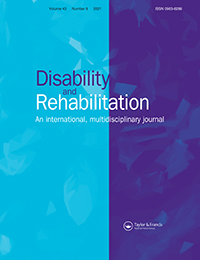
Systematic Review
Standard acupuncture was significantly more effective for restless legs syndrome severity than control conditions.
Harrison EG, Keating JL, Morgan PE.

Systematic Review
Acupuncture has similar efficacy compared to pharmacotherapies for acne vulgaris, however acupuncture interventions reported less adverse effects and may be a treatment option.
Mansu SSY, Liang H, Parker S, Coyle ME, Wang K, Zhang AL, Guo X, Lu C, Xue CCL

Systematic Review
Acupuncture may result in a moderate reduction in the severity of depression when compared with treatment as usual or no treatment.
Smith CA, Armour M, Lee MS, Wang LQ, Hay PJ

Randomised Controlled Trial
Cherry juice increases sleep time and efficiency in older adults with insomnia, potentially due to its inhibition of a process that degrades tryptophan and stimulates inflammation.
Losso JN, Finley JW, Karki N, Liu AG, Prudente A, Tipton R, Yu Y, Greenway FL

Systematic Review
Fennel caused a significant increase in mean menstrual bleeding in the first cycle after treatment in the intervention group compared to the control.
Nafiseh Ghassab Abdollahi, Mojgan Mirghafourvand and Sanaz Mollazadeh

Systematic Review
The consumption of mung beans and sprouts in regular basis are not only providing nutrients, but also maintains the microbial flora in the gut, reduces the absorption of toxic compounds, decreases the menace of obesity, hypercholesterolemia, and cardiovascular diseases, and also prevents cancer and diabetes.
Kumar Ganesan, Bao junXu

Systematic Review
Chinese herbal medicine as adjuvant therapy exerted an additive anti-vascular dementia benefit on Mini-Mental State Examination (MMSE) scores.
Xu, Qing-qing et al

Theoretical Article
Traditional Chinese medicines have shown promising benefits for prostate cancer treatment due to unique formulas, extracts, and compounds that exhibit anti-cancer effects.
Wang X, Fang G, Pang Y

Systematic Review
Acupuncture might have effect in decreasing the number of micturition episodes, incontinence episodes, and nocturia episodes.
Zhao Y, Zhou J, Mo Q, Wang Y, Yu J, Liu Z.

Systematic Review
Acupuncture might have effect in decreasing the number of micturition episodes, incontinence episodes, and nocturia episodes.
Zhao Y, Zhou J, Mo Q, Wang Y, Yu J, Liu Z

Systematic Review
Chai Hu Shu Gan San (a traditional Chinese Medicine) is a promising in treating depression, especially in post-stroke and postpartum cases.
Sun Y, Xu X, Zhang J, Chen Y
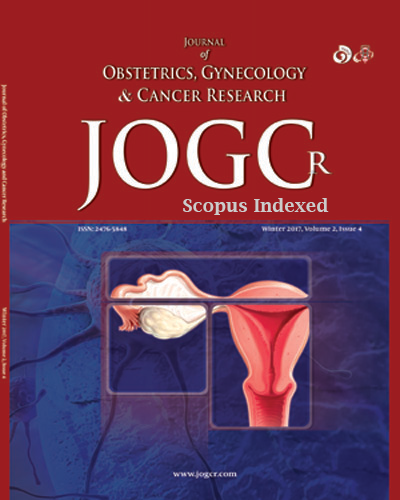
Systematic Review
Aromatherapy with lavender demonstrated effectiveness in reducing labor pain during childbirth.
Mirzaiinajmabadi K, Makvandi S, Mirteimoori M, Sadeghi R, , , ,
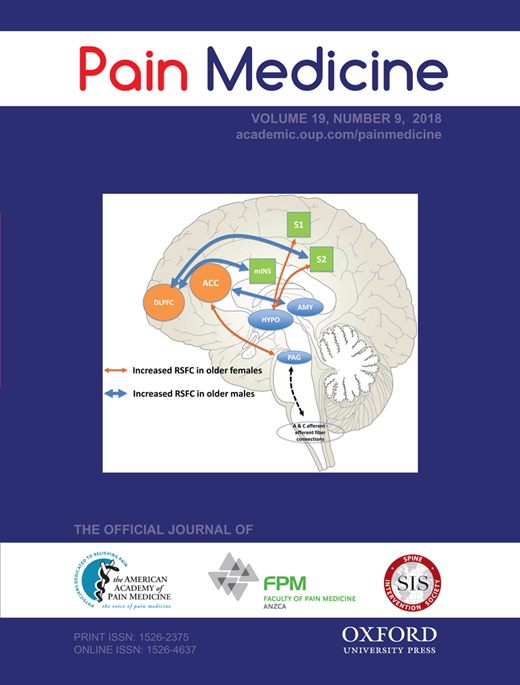
Acupuncture therapy offered in the group setting was effective in reducing pain severity, pain interference, and depression in patients with chronic neck, back, or shoulder pain or osteoarthritis.
Benjamin Kligler, Arya Nielsen, Corinne Kohrherr,, Tracy Schmid, Eve Waltermaurer, Elidania Perez, Woodson Merrell
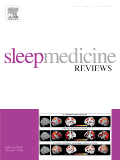
Systematic Review
The results showed that even fragile populations such as the elderly and dialysis patients can benefit from acupressure to improve sleep quality.
Alexander Waits, You-Ren Tang, Hao-Min Cheng, Chen-Jei Tai, Li-Yin Chien

Randomised Controlled Trial
Green tea extract can potentially control pain and improve knee joint physical function in adults suffering from osteoarthritis.
Hashempur MH, Sadrneshin S, Mosavat SH, Ashraf A

Systematic Review
Most studies reviewed concluded that conventional and electroacupuncture could be effective for management of shoulder pain after stroke.
Chau JPC, Lo SHS, Yu X, Choi KC, Lau AYL, Wu JCY, Lee VWY, Cheung WHN, Ching JYL, Thompson DR

Systematic Review
Evidence supports the use of acupuncture for menopause symptoms as an adjunctive or stand-alone treatment for reducing vasomotor symptoms and improving health-related quality of life outcomes.
Befus D, Coeytaux RR, Goldstein KM, McDuffie JR, Shepherd-Banigan M, Goode AP, Kosinski A, Van Noord MG, Adam SS, Masilamani V, Nagi A, Williams JW Jr.
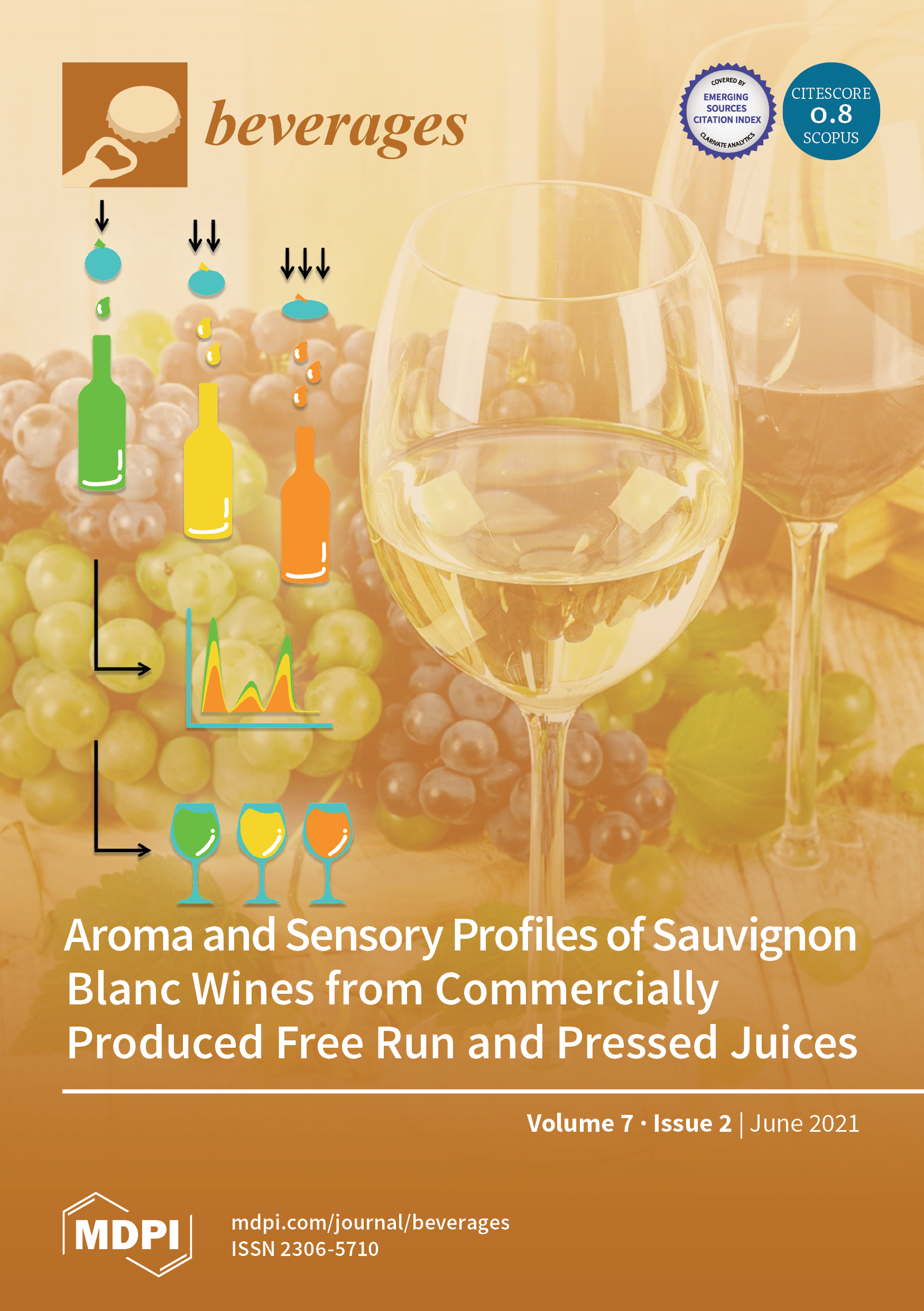
Systematic Review
Among the health benefits of green tea are: anticarcinogenic, anti-inflammatory, antimicrobial, and antioxidant properties, and benefits in cardiovascular disease and oral health.
Wanda C. Reygaert

Systematic Review
The Wu Zi Yan Zong pill, a traditional Chinese medicine, improves sperm quality by enhancing semen parameters and decreasing DNA damage in patients with oligoasthenozoospermia.
Zhao MP, Shi X, Kong GWS, Wang CC, Wu JCY, Lin ZX, Li TC, Chan DYL

Systematic Review
Patients in both group and individual acupuncture study arms valued the pain relief, improved quality of life, and relaxation experienced during acupuncture.
Chuang, E., Hashai, N., Buonora, M., Gabison, J., Kligler, B., & McKee

Citrus limon extracts could be a promising antioxidant source for the prevention and/or treatment of oxidative stress-related diseases.
Makni M, Jemai R, Kriaa W, Chtourou Y, Fetoui H.

Meta-Analysis
Children with attention-deficit hyperactivity disorder are found to have lower ferritin levels and are more likely to have iron deficiency.
Tseng PT, Cheng YS, Yen CF, Chen YW, Stubbs B, Whiteley P, Carvalho AF, Li DJ, Chen TY, Yang WC, Tang CH, Chu CS, Yang WC, Liang HY, Wu CK, Lin PY

Clinical Study
Drinking alkaline-reduced water can improve the quality of life in patients suffering from diarrhea-predominant irritable bowel syndrome.
Shin DW, Yoon H, Kim HS, Choi YJ, Shin CM, Park YS, Kim N, Lee DH

Review Article
Honey, a natural food supplement, emerges as a potent therapeutic antioxidant with diverse medicinal effects, including wound healing, antibacterial, anti-inflammatory, antifungal, antiviral, and antidiabetic properties, suggesting its potential as a novel antioxidant in managing oxidative stress-related diseases.
Ahmed S, Sulaiman SA, Baig AA, Ibrahim M, Liaqat S, Fatima S, Jabeen S, Shamim N, Othman NH

Review Article
Honey may be used as a potential antidiabetic agent that has the potential to reduce the complications of diabetes.
Bobiş O, Dezmirean DS, Moise AR

Meta-Analysis
The herbal formula Modified Bu Zhong Yi Qi Tang significantly improves functional constipation symptoms with fewer adverse events.
Gong H, Qin F, He H

Experimental Study
The Jian-Pi-Yi-Shen formula appears to slow down chronic kidney disease progression by inhibiting inflammation via the nuclear factor-kappa B signaling pathway.
Lu J, Liu X, Liao Y, Wang D, Chen J, Li S

Randomised Controlled Trial
Inhalation aromatherapy with Boswellia Carterii essential oil can significantly reduce labor pain intensity in nulliparous women.
Esmaelzadeh-Saeieh S, Rahimzadeh M, Khosravi-Dehaghi N, Torkashvand S
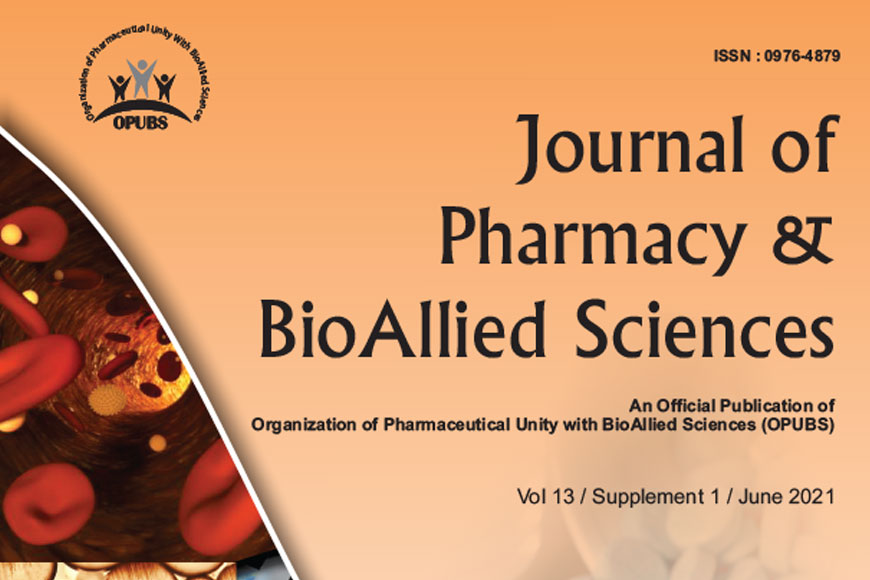
Review Article
Saffron possesses major bioactive compounds such as safranal, crocin, and picrocrocin that are hypothesized to be integral to its antidepressant effects.
Siddiqui MJ, Saleh MSM, Basharuddin SNBB, Zamri SHB, Mohd Najib MH, Che Ibrahim MZ, binti Mohd Noor NA, Binti Mazha HN, Mohd Hassan N, Khatib A
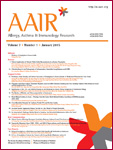
Systematic Review
Chinese herbal medicine tends to improve the quality of life of patients suffering from allergic rhinitis.
Zhang X, Lan F, Zhang Y, Zhang L
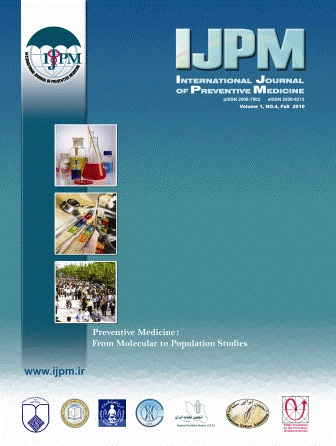
Systematic Review
Decaffeinated coffee enriched with chlorogenic acid does not significantly affect blood glucose levels in healthy humans, even though it does impact animals.
Faraji H

Systematic Review
Electroacupuncture can provide considerable immediate analgesia effect for primary dysmenorrhea.
Si-yi Yu, Zheng-tao Lv, Qing Zhang, Sha Yang, Xi Wu, You-ping Hu, Fang Zeng, Fan-rong Liang, Jie Yang
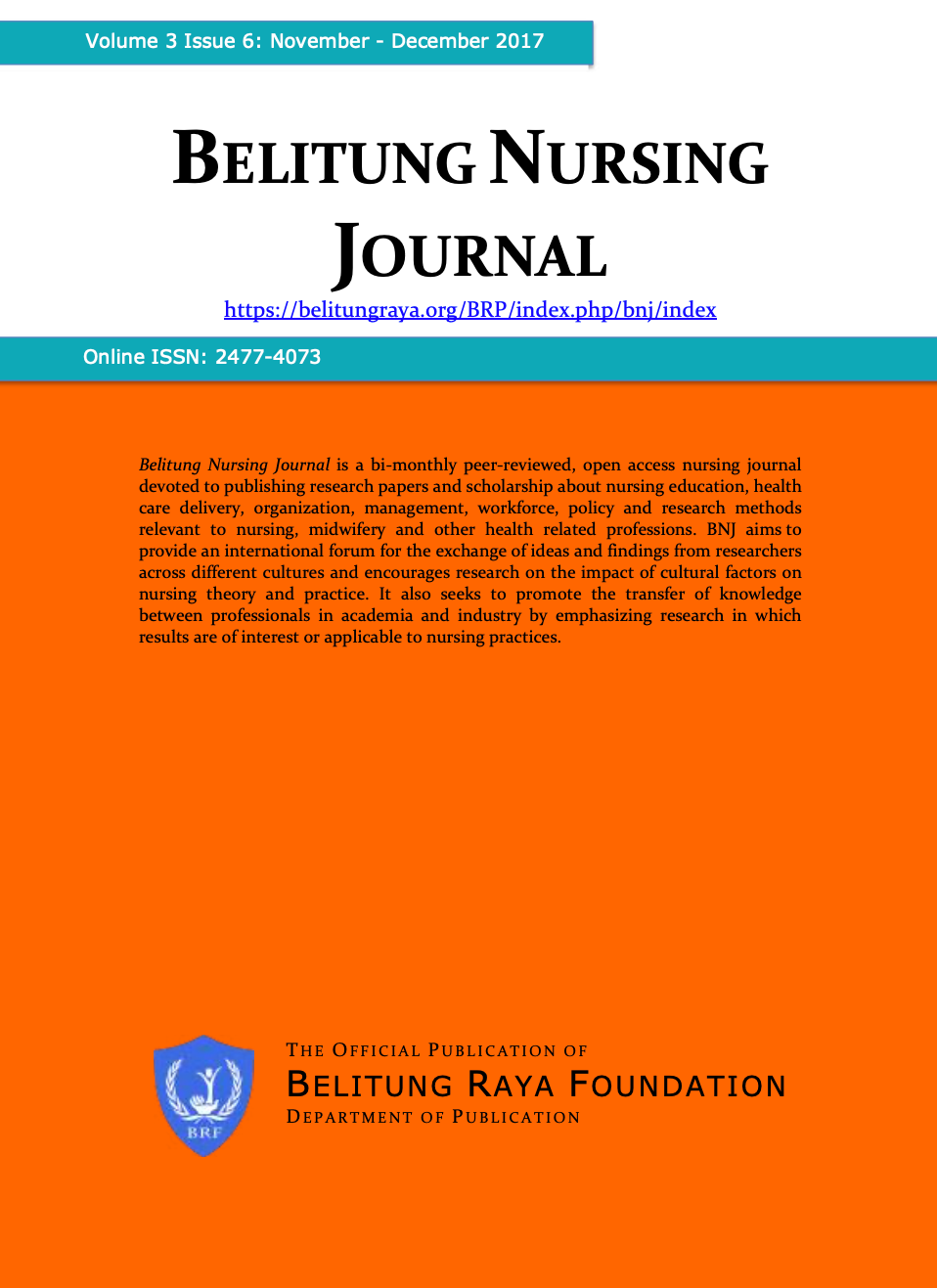
Randomised Controlled Trial
Dark chocolate could reduce menstrual pain significantly in late adolescents.
Maharani SI, Pramono N, Wahyuni S

Review Article
Traditional Chinese Medicine offers potential benefits like pain relief and functional improvement for knee osteoarthritis with few adverse events.
Yang M, Jiang L, Wang Q, Chen H, Xu G

Systematic Review
Chinese herbal medicines showed greater improvement in terms of clinical efficacy in the treatment of irritable bowel syndrome with constipation than cisapride and mosapride.
Dan-yan Li , Yun-kai Dai , Yun-zhan Zhang, Meng-xin Huang, Ru-liu Li, Jia Ou-yang, Wei-jing Chen, Ling Hu
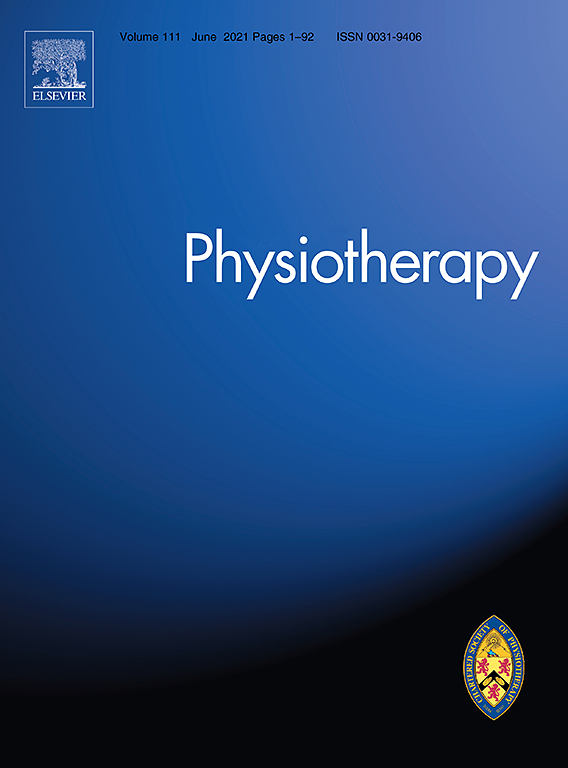
Systematic Review
Acupuncture combined with physiotherapy or exercise was found to be more effective for frozen shoulder than physiotherapy or exercise alone in the short and long term.
A. Rubio M. Mansfield J. Lewis

Systematic Review
Acupuncture may be effective at relieving chronic knee pain 12 weeks after acupuncture administration.
Zhang Q, Yue J, Golianu B, Sun Z, Lu Y.

Systematic Review
In oral care, acupuncture can be a supplement to conventional treatments in temporomandibular disorders, facial pain, pain management, Sjoegrens syndrome, and in phobias and anxiety.
Gupta, D., Dalai, D., Swapnadeep, Mehta, P.D., Indra, B., Rastogi, S., Jain, A., Chaturvedi, M., Sharma, S., Singh, S., Gill, S., Singh, N., & Gupta, R. (2014). Acupuncture (針灸 Zhēn Jiǔ) – An Emerging Adjunct in Routine Oral Care. Journal of Tradi

Randomised Controlled Trial
Chamomile extract significantly improved sleep quality among the elderly, suggesting its potential as a safe sleep-promotion tool for this population.
Adib-Hajbaghery M, Mousavi SN
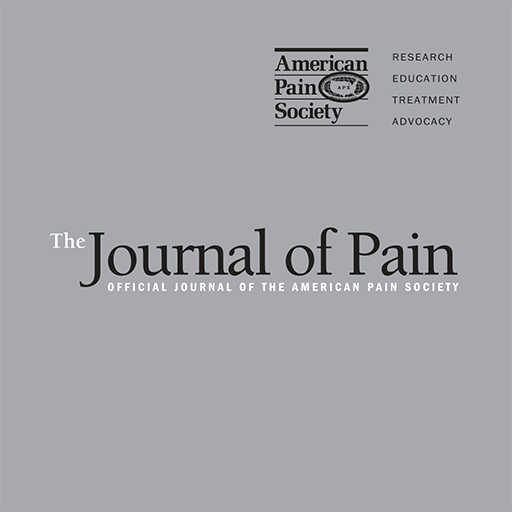
Systematic Review
Acupuncture has a clinically relevant effect on chronic pain that persists over time. Referral for acupuncture treatment is a reasonable option for chronic pain patients.
Vickers, Andrew J. et al.

Systematic Review
Consumption of fenugreek significantly increased amount of the produced breast milk versus placebo.
Khan TM, Wu DB, Dolzhenko AV
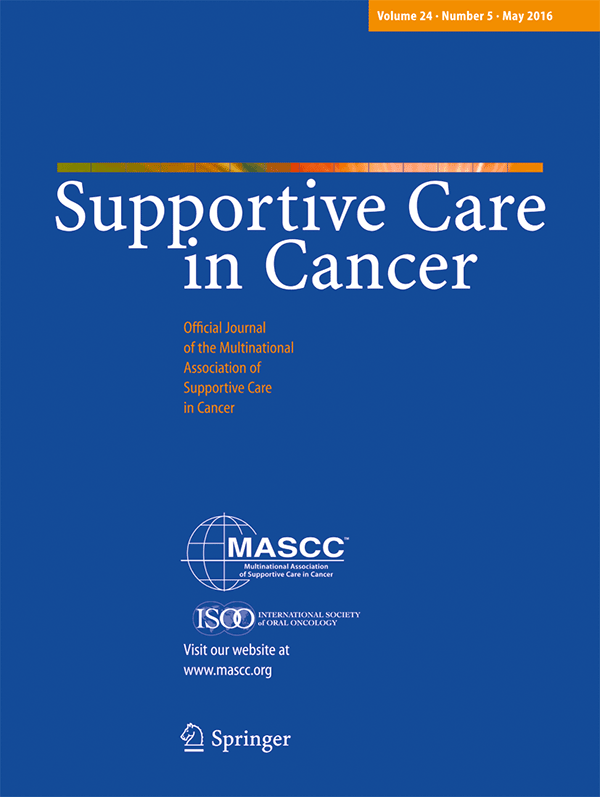
Meta-Analysis
Acupuncture significantly reduces cancer-related fatigue, especially in breast cancer patients and those undergoing anti-cancer treatment.
Zhang, Y., Lin, L., Li, H., Hu, Y., & Tian, L.
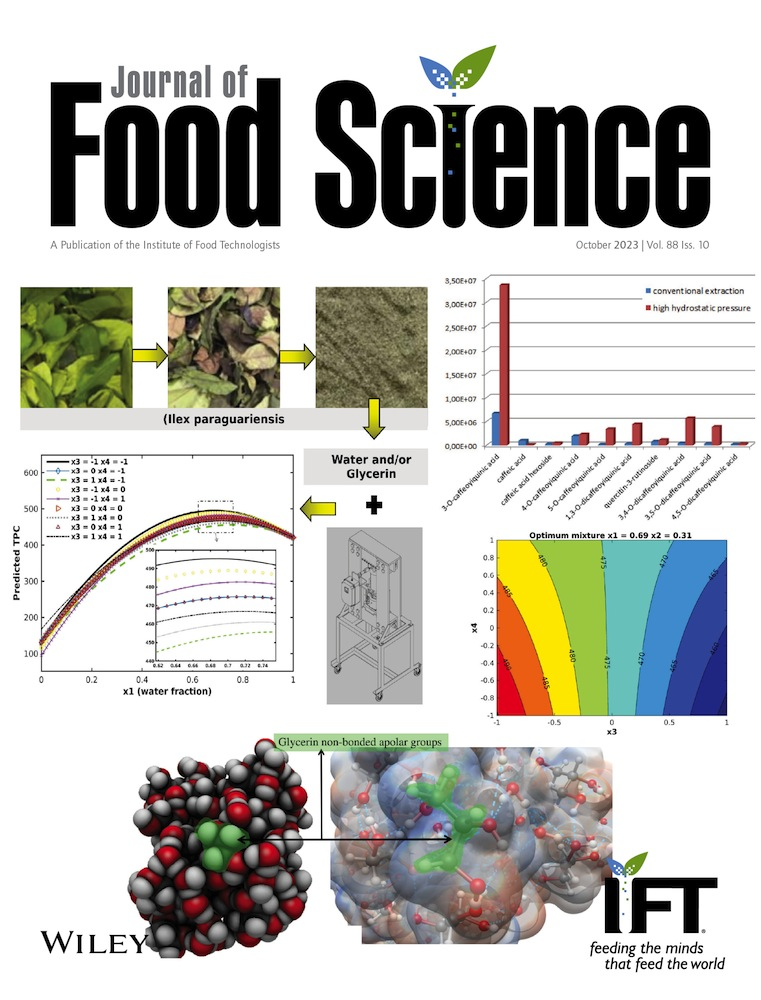
Clinical Study
Adding fresh herbs like parsley and chives to air-fried sardines reduces the levels of harmful cholesterol oxidation products formed during cooking.
Ferreira FS, Sampaio GR, Keller LM, Sawaya ACHF, Chávez DWH, Torres EAFS, Saldanha T

Systematic Review
Yu Ping Feng San, a Chinese herbal medicine, combined with pharmacotherapy could be effective for treating allergic rhinitis in adults.
Luo Q, Zhang CS, Yang L, Zhang AL, Guo X, Xue CC, Lu C

Experimental Study
Coffee consumption, particularly caffeinated coffee, predominantly exhibits anti-inflammatory effects, contrasting with caffeine's complex impact on inflammation.
Paiva CLRS, Beserra BTS, Reis CEG, Dorea JG, Da Costa THM, Amato AA
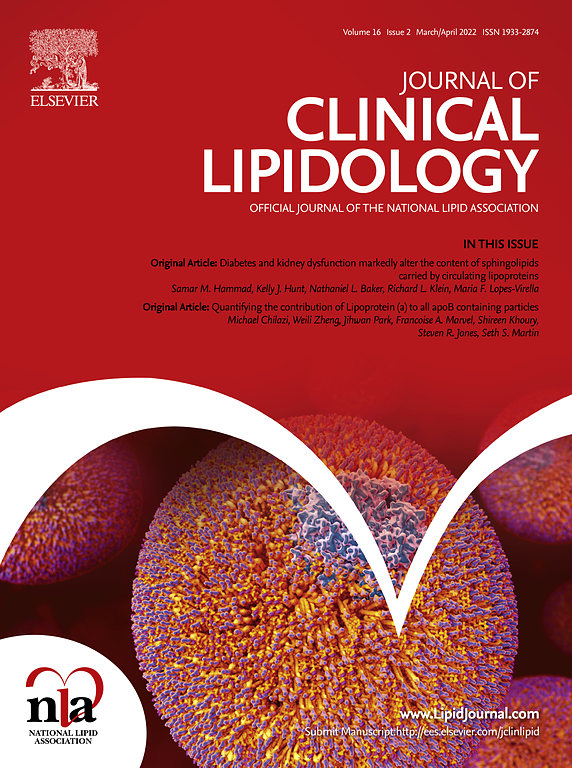
Systematic Review
Cinnamon supplementation significantly reduces blood triglycerides and total cholesterol levels without affecting low-density and high-density lipoprotein cholesterol.
Maierean SM, Serban MC, Sahebkar A, Ursoniu S, Serban A, Penson P, Banach M
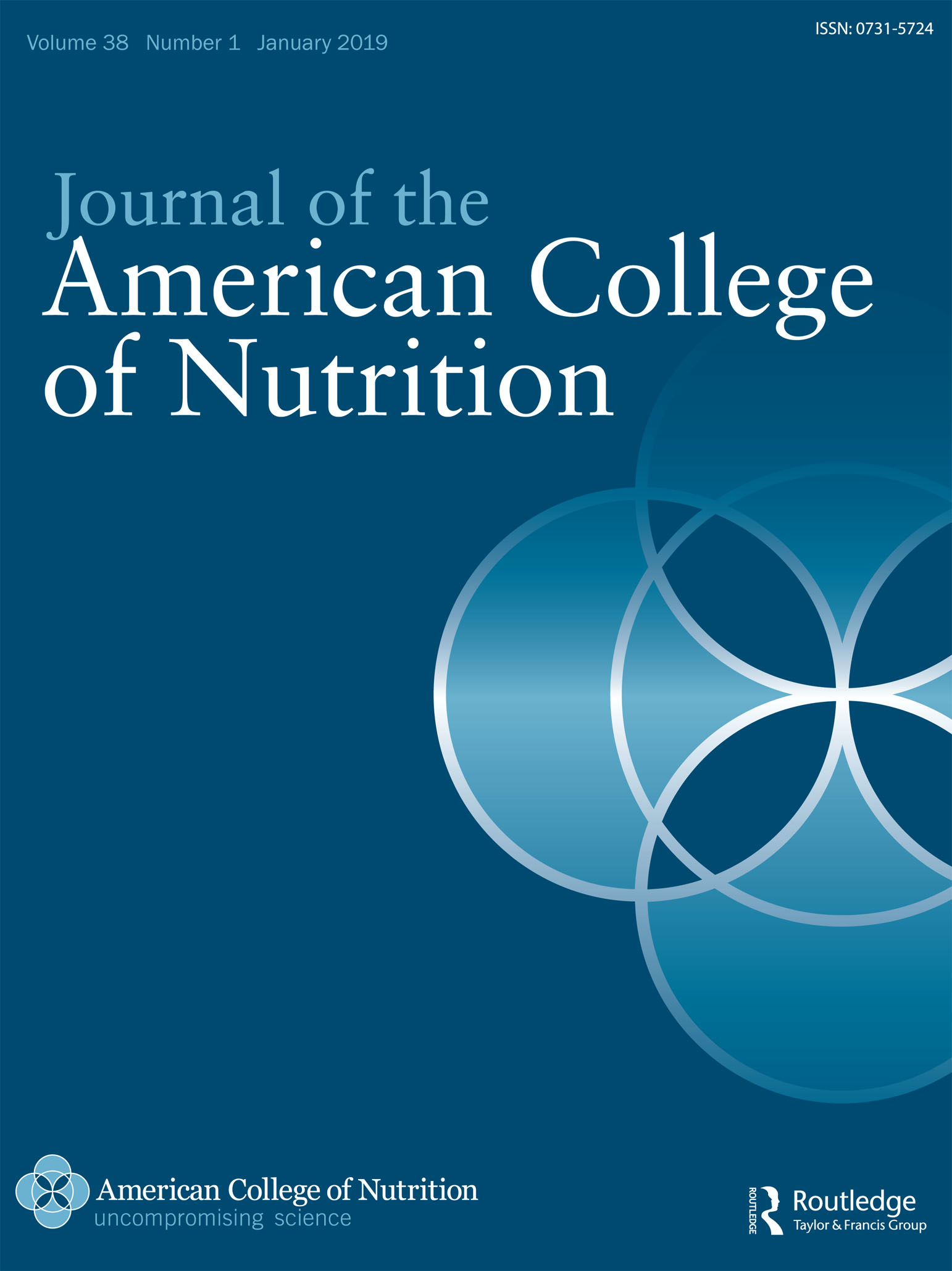
Systematic Review
Date palm components (pollen, pit powder, and gemmule extract) significantly improve male fertility directly through hormonal changes and indirectly via antioxidant abilities.
Tatar T, Akdevelioğlu Y

Systematic Review
The current literature suggests that acupuncture reduces endometriosis-related pain and serum CA-125 levels, regardless of the control intervention used.
Xu Y, Zhao W, Li T, Zhao Y, Bu H, Song S

Systematic Review
Green tea consumption was shown to reduce psychopathological symptoms like anxiety and was also shown to effect cognition, with noted benefits for memory and attention. Green tea was also linked with the activation of working memory as seen in functional MRI.
Mancini E, Beglinger C, Drewe J, Zanchi D, Lang UE, Borgwardt S

Systematic Review
Both the total score and the subgroup analysis strongly indicated that acupuncture can alleviate menopause-related symptoms.
Li W, Luo Y, Fu W, Lei R.
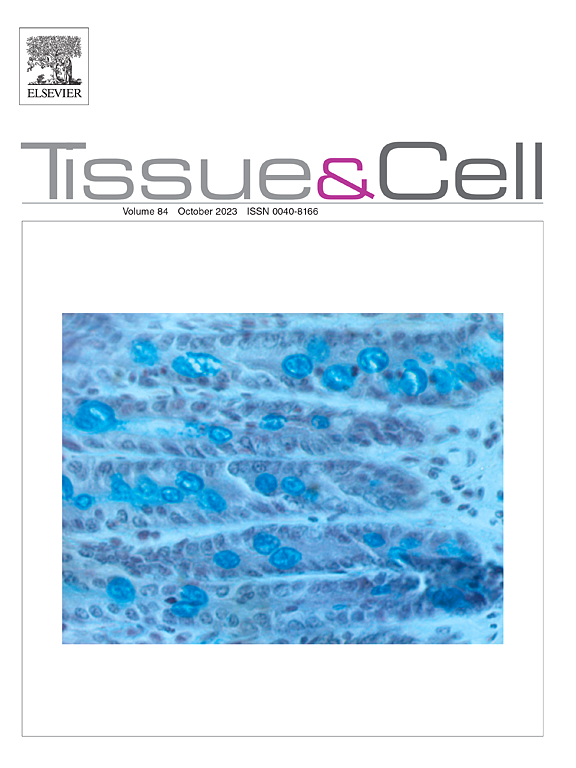
Experimental Study
Coconut water and milk demonstrate protective effects against ulceration, reducing inflammation, promoting cell proliferation and supporting mucosal homeostasis.
Ajeigbe KO, Owonikoko WM, Egbe V, Iquere I, Adeleye G

Randomised Controlled Trial
The combination of acupuncture and a low dose of gabapentin (300 mg/d) is clinically effective in treating restless legs syndrome and has an additional therapeutic benefit compared to gabapentin alone.
Raissi GR, Forogh B, Ahadi T, Ghahramanpoori S, Ghaboussi P, Sajadi S

Systematic Review
Patients receiving acupuncture combined with western medicine had a superior global symptom improvement compared with those receiving western medicine alone for gastro-oesophageal reflux disease.
Zhu, J., Guo, Y., Liu, S., Su, X., Li, Y., Yang, Y., Hou, L., Wang, G., Zhang, J., Chen, J. J. D., Wang, Q., Wei, R., & Wei, W.

Network Pharmacology
Adzuki beans, rich in flavonoids and saponins, can potentially prevent obesity by inhibiting enzymes related to fat accumulation and enhancing lipid breakdown.
Liu R, Zheng Y, Cai Z, Xu B
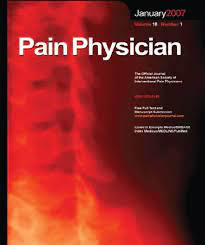
Meta-Analysis
The existing evidence suggests that most acupuncture therapies, including acupuncture combined with other therapies, are effective in decreasing pain and in improving physical function.
Li X, Wang R, Xing X, Shi X, Tian J, Zhang J, Ge L, Zhang J, Li L, Yang K.
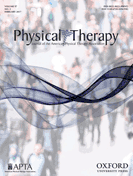
Systematic Review
Our findings support the use of tai chi as a treatment for people with arthritis and potentially for low back pain.
Amanda Hall, Bethan Copsey, Helen Richmond, Jacqueline Thompson, Manuela Ferreira, Jane Latimer, Chris G. Maher

Systematic Review
Radish has been identified as having antidiabetic effects, making it favorable for those with diabetic conditions.
Saleem Ali Banihani

Randomised Controlled Trial
The extract from Hovenia Dulcis fruit (HDE) appears to decrease hangover symptoms effectively by regulating the body's inflammatory response to alcohol.
Kim H, Kim YJ, Jeong HY, Kim JY, Choi EK, Chae SW, Kwon O
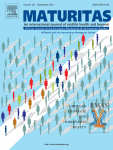
Practice Guideline
Long-chain omega-3 polyunsaturated fatty acids have various health benefits for postmenopausal women including reducing triglycerides and improving depression and psychotic symptoms.
Sánchez-Borrego R, von Schacky C, Osorio MJA, Llaneza P, Pinto X, Losa F, Navarro MC, Lubián D, Mendoza N

Cohort Study
Combining effleurage massage and green coconut water is more effective than massage alone in reducing menstrual pain and anxiety, and boosting ß-endorphin levels in teenage girls.
Ulya FH, Suwandono A, Ariyanti I, Suwondo A, Kumorowulan S, Pujiastuti SE

Systematic Review
Acupoint-stimulation can relieve pain effectively in the treatment of primary dysmenorrhea and offers advantages compared with treatment by NSAIDs.
Xu, Y., Zhao, W., Li, T. et al.

Clinical Study
iRest Yoga Nidra combined with acupuncture significantly improves psychological health in veterans compared to using acupuncture alone.
Wheeler MS, Glass CR, Arnkoff DB, Sullivan P, Hull A

Systematic Review
Acupuncture is non-inferior to hormone therapy or other applied relaxation therapies in alleviating the symptoms of menopause for its safety, non-invasive and especially considering the side effect of hormone therapy.
Chien TJ, Hsu CH, Liu CY, Fang CJ.
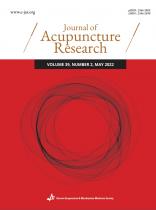
Systematic Review
Acupuncture, moxibustion, and laser acupuncture are effective as conservative therapies for the treatment of De Quervain's Stenosing Tenosynovitis.
Kong HJ, Kang JH, Yun GW, Oh SY, Lee H

Review Article
Kiwifruits can relieve constipation and irritable bowel syndrome, potentially through protease-activated signaling, modulation of microflora, changes in colonic methane, bile flux, or mediation of inflammatory processes.
Bayer SB, Gearry RB, Drummond LN
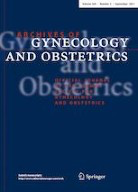
Systematic Review
Results support Wenjing decoction (a traditional Chinese medicine) clinical use in treating primary dysmenorrhea.
Gao L, Jia C, Zhang H, Ma C
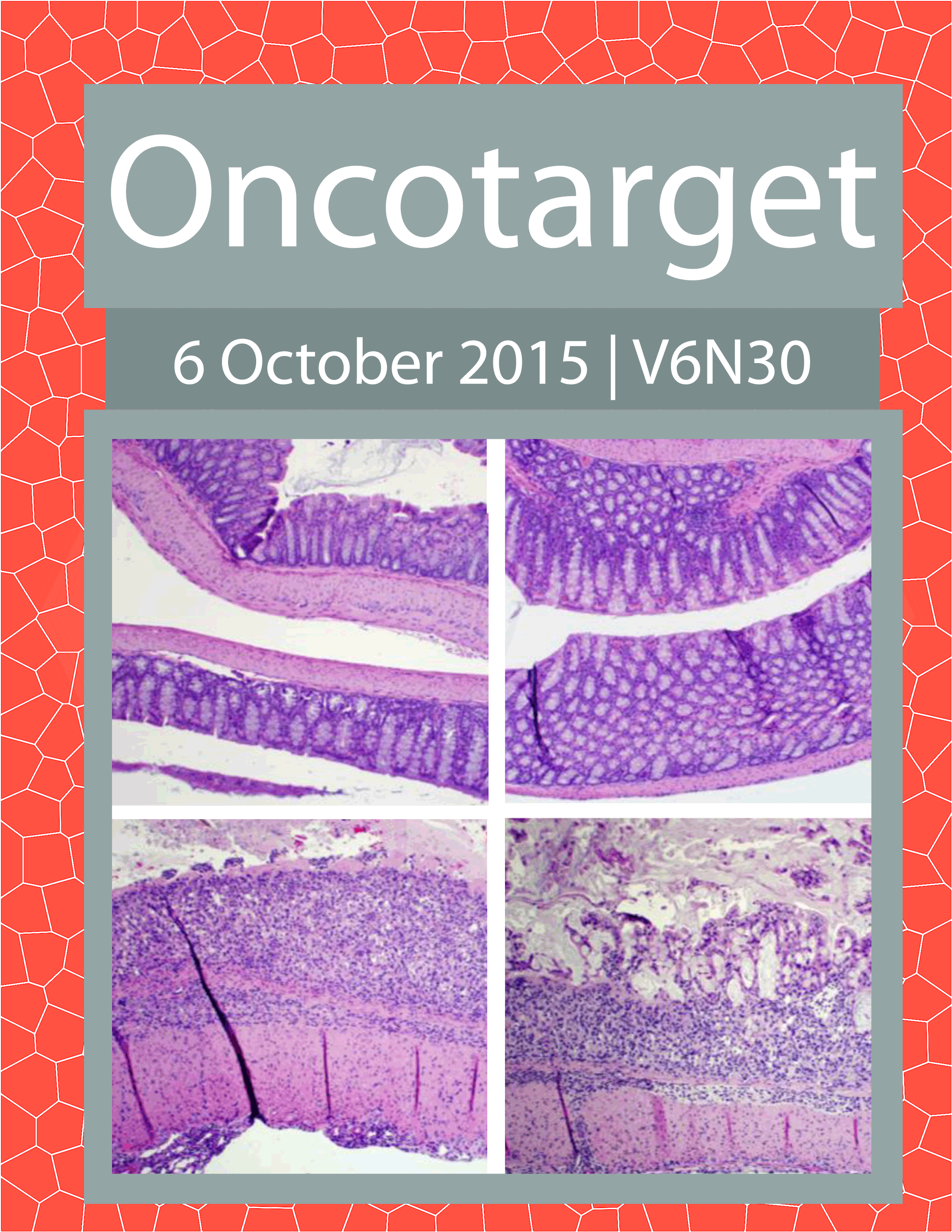
Systematic Review
High consumption of carrots is associated with a reduced risk of urothelial cancer.
Luo X, Lu H, Li Y, Wang S

Systematic Review
Cocoa consumption has strong beneficial impacts on cardiovascular health, reducing blood pressure, improving vascular function, and modulating lipid and glucose metabolism.
Ludovici V, Barthelmes J, Nägele MP, Enseleit F, Ferri C, Flammer AJ, Ruschitzka F, Sudano I
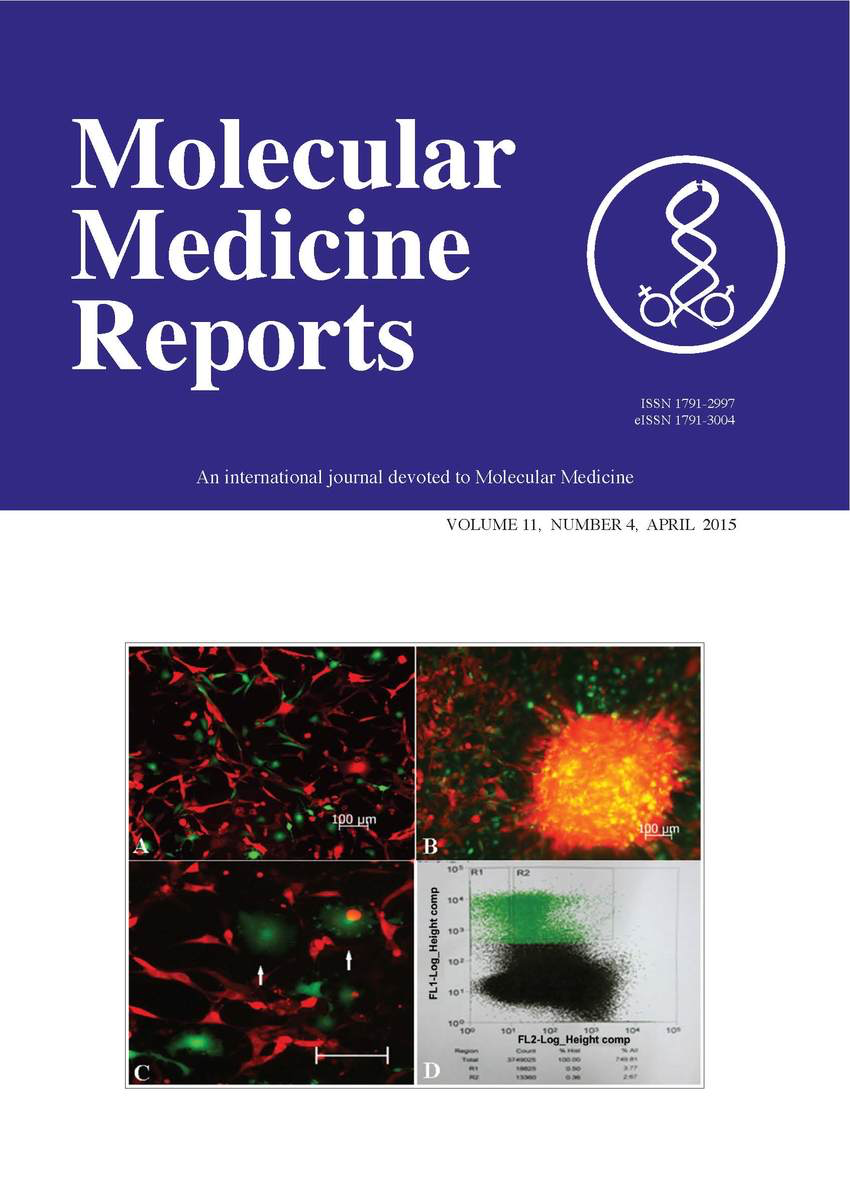
Systematic Review
Tremella fuciformis polysaccharide alleviated hydrogen peroxide‑induced oxidative stress and apoptosis in skin fibroblasts via upregulation of SIRT1 expression, indicating that TFPS may act as a potential therapeutic agent for oxidative‑stress‑associated skin diseases and aging.
Shen T, Duan C, Chen B, Li M, Ruan Y, Xu D, Shi D, Yu D, Li J, Wang C.

Systematic Review
Cupping therapy and acupuncture are potentially safe, and they have similar effectiveness in relieving pain.
Zhang, YJ., Cao, HJ., Li, XL. et al.
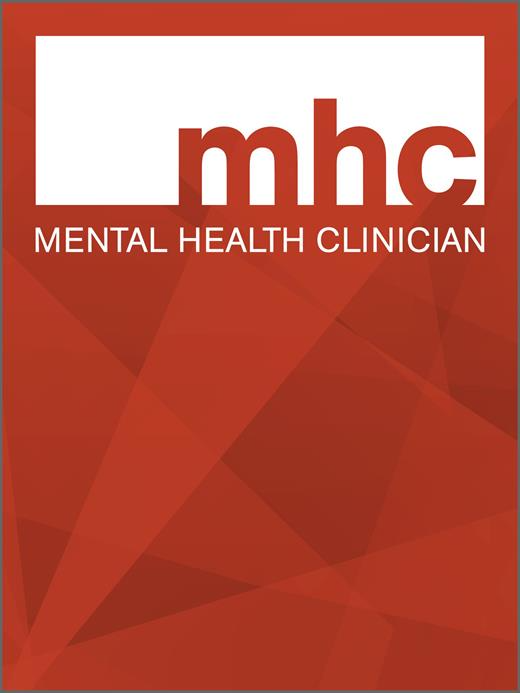
Experimental Study
Lavender essential oil, particularly its primary constituents linalool and linalyl acetate, may offer a beneficial anxiolytic effect through its interaction with certain neurological mechanisms.
Malcolm BJ, Tallian K

Meta-Analysis
The study indicates a positive link between Irritable Bowel Syndrome (IBS) and Blastocystis infection, with no such association found for Dientamoeba fragilis infection.
Rostami A, Riahi SM, Haghighi A, Saber V, Armon B, Seyyedtabaei SJ

Review Article
Jujube possesses neuroprotective activities, including protecting neuronal cells against neurotoxin stress, stimulating neuronal differentiation, increasing expression of neurotrophic factors, and promoting memory and learning.
Chen J, Liu X, Li Z, et al.

Systematic Review
Of the 7 clinical trials included, five evaluating individuals with hypertension observed a significant reduction in systolic and/or diastolic blood pressure. The two articles that evaluated individuals with dyslipidemia showed improvement in lipid profile.
Carolina Alves Cardoso, Gláucia Maria Moraes de Oliveira, Luciana de Almeida Vittori Gouveia, Annie Seixas Bello Moreira & Glorimar Rosa

Randomised Controlled Trial
Pomegranate juice consumption over a short period promotes red blood cell production without significantly changing metabolic health and inflammation markers in healthy individuals.
Manthou E, Georgakouli K, Deli CK, Sotiropoulos A, Fatouros IG, Kouretas D, Haroutounian S, Matthaiou C, Koutedakis Y, Jamurtas AZ

Randomised Controlled Trial
Honey has been shown to provide similar pain relief to traditional medication mefenamic acid for women with primary dysmenorrhea, with fewer side effects.
Amiri Farahani L, Hasanpoor-Azghdy SB, Kasraei H, Heidari T

Systematic Review
Acupuncture may increase the clinical pregnancy rate and ongoing pregnancy rate and decrease the risk of ovarian hyperstimulation syndrome in women with PCOS undergoing IVF or ICSI.
Jo J, Lee YJ
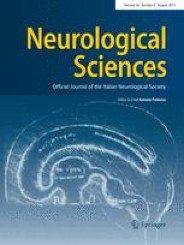
Randomised Controlled Trial
Shiatsu is a safe and potentially useful alternative approach for refractory headache.
Villani V, Prosperini L, Palombini F, Orzi F, Sette G.

Systematic Review
Acupuncture adjuvant to other active medications could affect hormonal levels such as LH, LH/FSH ratio, testosterone, and fasting insulin in women with polycystic ovarian syndrome.
Jo, J., Lee, Y. J., & Lee, H.
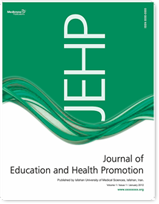
Randomised Controlled Trial
Green tea consumption leads to weight loss and decreased levels of fasting insulin and free testosterone in overweight women with polycystic ovarian syndrome.
Tehrani HG, Allahdadian M, Zarre F, Ranjbar H, Allahdadian F

Systematic Review
Traditional Chinese massage therapy can effectively treat asthma and significantly improve pulmonary function in children.
Ji Wu Xi-Wen Yang, and Ming Zhang

Animal Study
Dried plums potentially prevent and reverse bone loss in postmenopausal women facing osteoporosis, offering a promising functional food therapy solution with long-lasting effects.
Arjmandi BH, Johnson SA, Pourafshar S, Navaei N, George KS, Hooshmand S, Chai SC, Akhavan NS
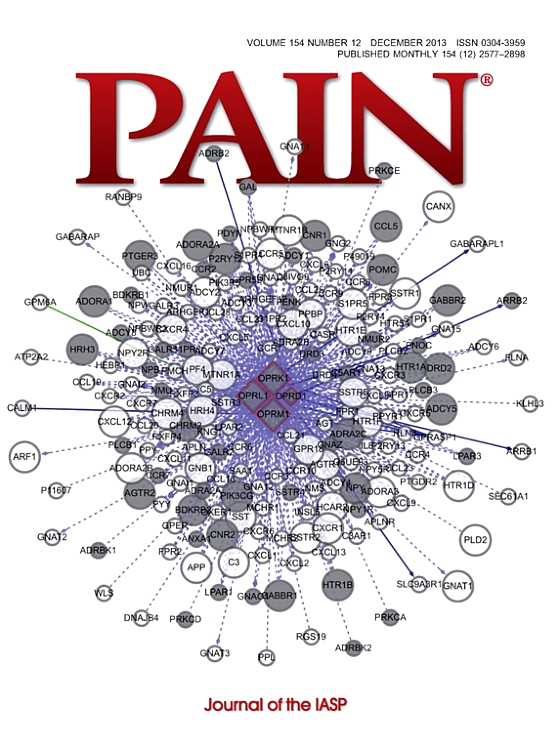
Systematic Review
Patients with chronic pain can generally be reassured that treatment effects persist after a course of treatment with acupuncture.
MacPherson, H; Vertosick, E.A; Foster, N.E; Lewith, G; Linde, K; Sherman, K.J; Witt, C.M; Vickers, A.J
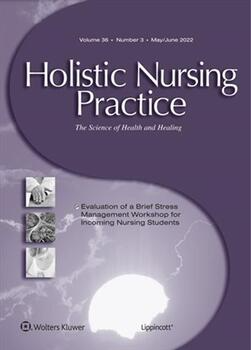
Animal Study
Curcumin's potential anxiolytic and antidepressant impacts do not significantly alter behavior or interact with the benzodiazepine site of the gamma-aminobutyric acid receptor A.
Ceremuga TE, Helmrick K, Kufahl Z, Kelley J, Keller B, Philippe F, Golder J, Padrón G

Systematic Review
Tai Chi could be an effective alternative and/or complementary approach to existing therapies for people with fatigue.
Yu Xiang, Liming Lu, Xiankun Chen, Zehuai Wen

Animal Study
Blueberries can reduce the proliferation of ovarian cancer cells by downregulating the levels of specific biomarkers, exhibiting potential for non-pharmaceutical therapy.
Lin W, Li Z
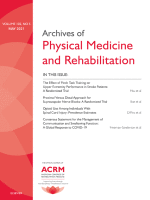
Systematic Review
Electroacupuncture combined with conventional routine care has the potential of reducing spasticity in the upper and lower limbs and improving overall and lower extremity motor function and activities of daily living for patients with spasticity, within 180 days poststroke.
Cai Y, Zhang CS, Liu S, Wen Z, Zhang AL, Guo X, Lu C, Xue CC

Review Article
Dried plums, or prunes, have potential to exert beneficial effects on bone health and may help in combating osteoporosis in postmenopausal women, if consumed as part of their recommended fruit intake.
Wallace T
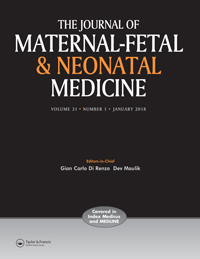
Case Report
Chamomile consumption may stimulate abundant milk production and increase lactogenesis in lactating women.
Silva FV, Dias F, Costa G, Campos MG

Systematic Review
Avocado, with its lipid-lowering, antihypertensive, antidiabetic, anti-obesity, and cardioprotective effects, can potentially manage metabolic syndrome more efficaciously than synthetic treatment options.
Tabeshpour J, Razavi BM, Hosseinzadeh H

Systematic Review
Acupuncture can significantly improve urological symptoms in the short term for men with benign prostatic hyperplasia.
Zhang W, Ma L, Bauer BA, Liu Z, Lu Y

Systematic Review
There is a significant effect of Chinese herbal medicine for improving Expanded Disability Status Score, annual relapse frequency and the total clinical efficacy rate for multiple sclerosis compared with western conventional treatment.
Liang Song, Qi-hui Zhou, Hui-lin Wang, Feng-jiao Liao, Liang Hua, Hong-feng Zhang, Li-bo Huang, Yan Lin, Guo-qing Zheng
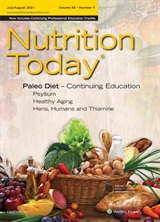
Review Article
Fenugreek can be beneficial as an adjunct in controlling high blood glucose and lipid levels in people with diabetes.
Singletary, Keith W.

Randomised Controlled Trial
Carrageenan intake can lead to an earlier relapse in patients with ulcerative colitis who are in remission.
Bhattacharyya S, Shumard T, Xie H, Dodda A, Varady KA, Feferman L, Halline AG, Goldstein JL, Hanauer SB, Tobacman JK

Systematic Review
Acupuncture and moxibustion were found to be more effective than Chinese herbal medicine, western medicine and placebo treatment (sham-acupuncture) in relieving symptoms of chronic fatigue syndrome.
Wang T, Xu C, Pan K, Xiong H.

Randomised Controlled Trial
Our study provides evidence that acupuncture has a specific impact on frozen shoulder beyond the placebo effects that may not only be beneficial in reducing short-term pain perception, but may also have a positive long-term influence on the time course of recovery.
Schröder S, Meyer-Hamme G, Friedemann T, Kirch S, Hauck M, Plaetke R, Friedrichs S, Gulati A, Briem D

Systematic Review
The majority of randomised controlled trials showed benefit for acupuncture over control in the treatment of diabetic neuropathy, Bell's palsy, and carpal tunnel syndrome.
Alexandra Dimitrova, Charles Murchison, and Barry Oken.

Systematic Review
There are potential clinical benefits of acupuncture on PTSD symptoms and functional status immediately post-intervention, as well as PTSD and depressive symptoms in the months following completion of acupuncture treatment.
Grant S, Colaiaco B, Motala A, Shanman R, Sorbero M, Hempel S

Randomised Controlled Trial
Kiwifruit consumption before bedtime significantly improves sleep quality and daytime function in individuals with chronic insomnia in comparison to pear consumption.
Nødtvedt O, Hansen AL, Bjorvatn B, Pallesen S
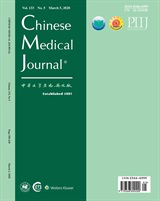
Randomised Controlled Trial
Acupuncture used for weight loss may increase the effectiveness of oral iron supplementation to treat obesity-related iron deficiency.
Xie XC, Cao YQ, Gao Q, Wang C, Li M, Wei SG

Systematic Review
Acupuncture can be adopted as part of a multimodal approach for reducing cancer-related pain.
Chiu HY, Hsieh YJ, Tsai PS.

Systematic Review
Acupuncture therapy is effective in reducing the degree of pain in patients with temporomandibular disorders, especially those with myofascial pain symptoms.
Wu, Jun-Yi MD; Zhang, Chao MD; Xu, Yang-Peng MM; Yu, Ya-Yu MD; Peng, Le PhD; Leng, Wei-Dong PhD; Niu, Yu-Ming PhD; Deng, Mo-Hong PhD

Review Article
The claimed health benefits of coix include anti-oxidation, anti-cancer, anti-inflammation, anti-allergy, enhancing immunological activity, regulating endocrine functions, anti-obesity, anti-diabetes, gastroprotection, hypolipidemia, and modulating gut microbiota.
Fan Zhu

Systematic Review
Tai Chi is effective for preventing falls in older adults and the preventive effect is likely to increase with exercise frequency.
Huang ZG, Feng YH, Li YH, Lv CS

The major bioactive polyphenol in green tea, EGCG, could potentially reverse the abnormal changes induced by oncogenic HPV strains.
Yap J, Luesley D, Woodman C, Dawson C
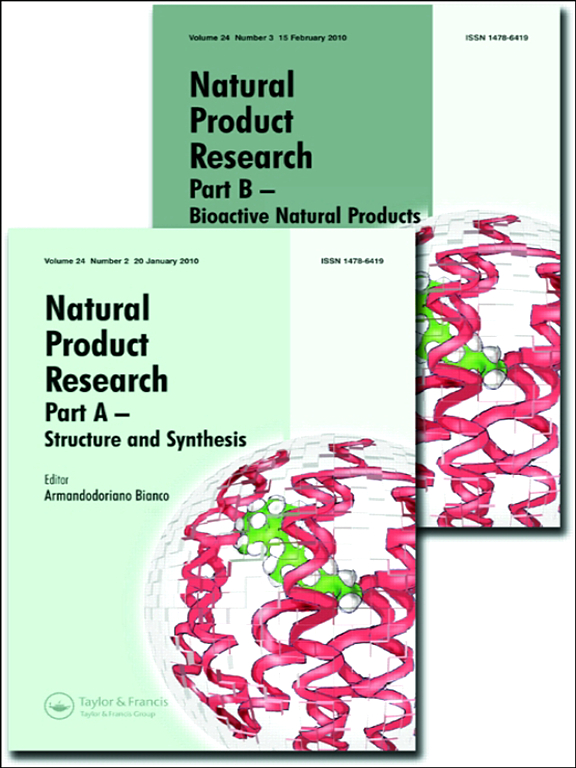
Experimental Study
Pumpkin seeds have a higher total phenolic compound content, but phenolic compounds from amaranth grains show stronger antiradical properties.
Peiretti PG, Meineri G, Gai F, Longato E, Amarowicz R

Systematic Review
Our results indicate that acupuncture is an effective treatment for obesity both alone and together with lifestyle modification.
Fang S, Wang M, Zheng Y, Zhou S, Ji G.

Experimental Study
When combined, Silibinin and Pu-erh tea extract prove more effective in preventing non-alcoholic fatty liver disease than when used individually.
Wen-Yi Hu, Xiao-Hui Ma, Wang-Yi Zhou, Xin-Xin Li, Ting-Ting Sun, He Sun

Network Pharmacology
A mixture of Chrysanthemum indicum Linne flower and Cinnamomum cassia significantly mitigates hyperuricemia in rats by inhibiting xanthine oxidase activity and enhancing uric acid excretion.
Lee YS, Son E, Kim SH, Lee YM, Kim OS, Kim DS
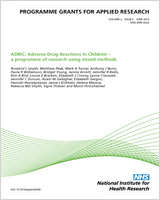
Systematic Review
The programme of research found that acupuncture was more effective than usual care and sham acupuncture for chronic pain, that it was one of the more clinically effective physical therapies for osteoarthritis and that it showed benefits in the treatment of depression.
MacPherson H, Vickers A, Bland M, et al.

Randomised Controlled Trial
For patients continuing to experience depression in primary care, there are statistically significant benefits at 3 months associated with both acupuncture and counselling interventions when provided as adjuncts to usual care.
MacPherson H, Vickers A, Bland M, et al.

Review Article
Recent studies have shown that chronic L-citrulline supplementation increases nitric oxide synthesis, decreases blood pressure, and may increase peripheral blood flow.
Figueroa A, Wong A, Jaime SJ, Gonzales JU.

Review Article
Moderate beer consumption could potentially alleviate menopausal symptoms by influencing the internal estrogen receptors through the phenolic compounds present in beer.
Sandoval-Ramírez BA, Lamuela-Raventós RM, Estruch R, Sasot G, Doménech M, Tresserra-Rimbau A

Systematic Review
The Chinese herbal formula Erxian decoction appears to be more effective than basic supplements in treating osteoporosis.
Li JY, Jia YS, Chai LM, Mu XH, Ma S, Xu L, Wei X

Clinical Study
Blueberry intake for four weeks decreased levels of a biomarker for oxidative DNA damage in postmenopausal women with pre and early stage hypertension.
Johnson SA, Feresin RG, Navaei N, Figueroa A, Elam ML, Akhavan NS, Hooshmand S, Pourafshar S, Payton ME, Arjmandi BH

Experimental Study
Angelica Sinensis polysaccharide treatment has been found to effectively alleviate anaemia of chronic disease in rats by inhibiting inflammatory pathways and mobilizing iron.
Wang K, Wu J, Cheng F, Huang X, Zeng F, Zhang Y

Randomised Controlled Trial
Acupuncture therapy can lead to both clinical and morphological improvements in patients with carpal tunnel syndrome.
Ural FG, Öztürk GT

Review Article
Coffee consumption, up to three cups a day, can reduce the risk of Type-2 diabetes and metabolic syndrome in adults.
Baspinar B, Eskici G, Ozcelik AO

Review Article
Honeybee products like honey, propolis, and royal jelly have demonstrated potential benefits in treating metabolic diseases, cancers, and other illness types.
Pasupuleti VR, Sammugam L, Ramesh N, Gan SH
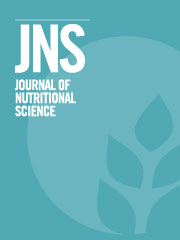
Randomised Controlled Trial
Gold kiwifruit supplementation increases the abundance of the beneficial gut bacterium Faecalibacterium, which could potentially enhance gut microbiota composition and reduce inflammation.
Blatchford P, Stoklosinski H, Eady S, Wallace A, Butts C, Gearry R, Gibson G, Ansell J
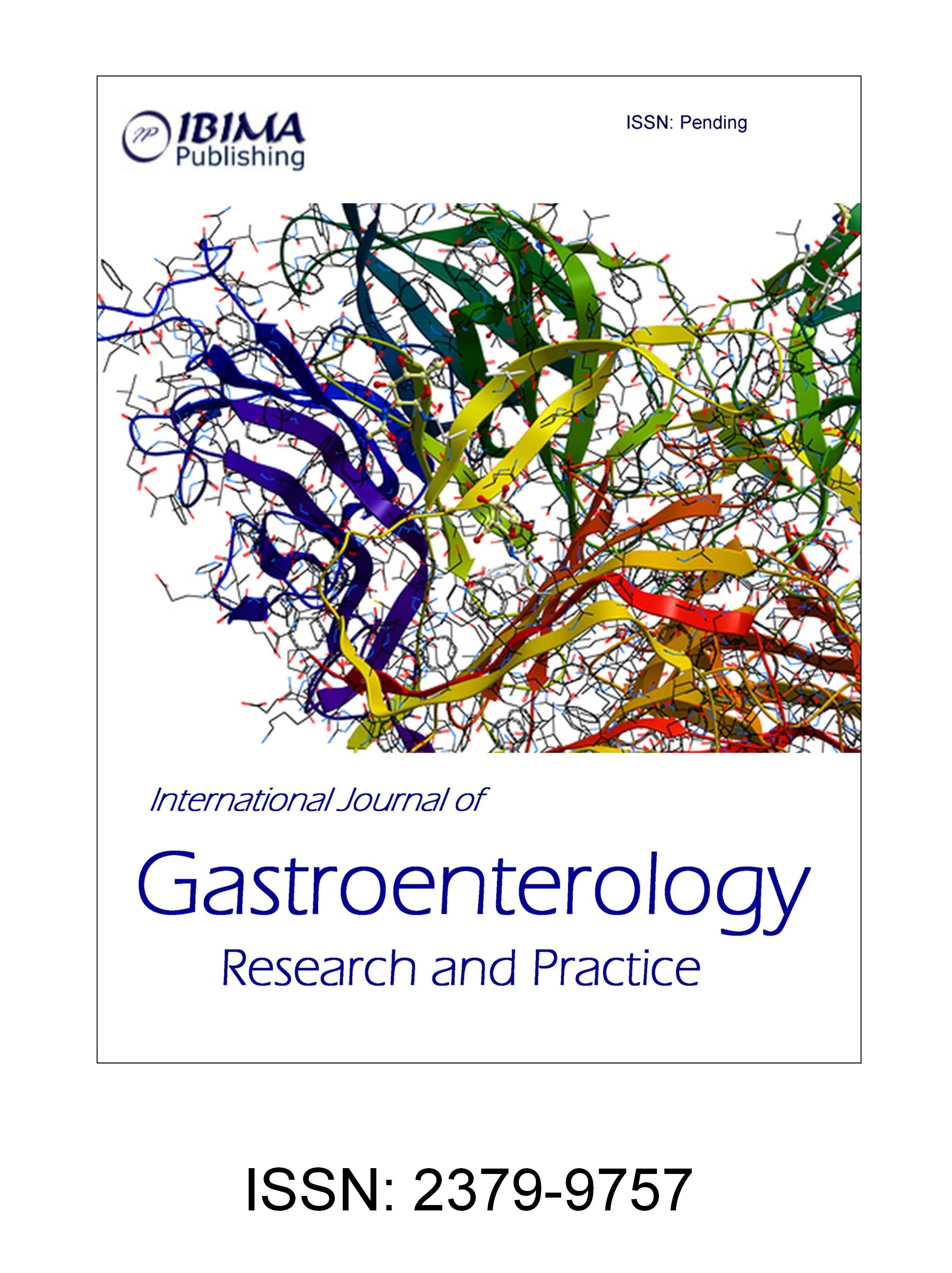
Cohort Study
Regular consumption of honey and yogurt may lower the prevalence of H. pylori infection and reduce the virulence of strains.
Yordanov D, Boyanova L, Markovska R, Ilieva J, Andreev N, Gergova G, Mitov I

Systematic Review
Acupuncture was superior to either sham acupuncture or medication (including Itopride, Mosapride, and Domperidone) in relieving the major symptoms of functional dyspepsia.
Bo Pang, Tao Jiang, Yuan-Hao Du, Jing Li, Bo Li, Ya-Cai Hu, Qiu-Han Ca

Meta-Analysis
Fenugreek has hypoglycaemic and total cholesterol-lowering efficacy.
Gong J, Fang K, Dong H, Wang D, Hu M, Lu F.

Systematic Review
Acupuncture improves the clinical pregnancy rate among women undergoing IVF and the IVF outcome results were significantly superior in the acupuncture group when acupuncture was conducted during controlled ovarian hyperstimulation.
Qian, Y., Xia, X.-R., Ochin, H., Huang, C., Gao, C., Gao, L., Cui, Y.-G., Liu, J.-Y., & Meng, Y.
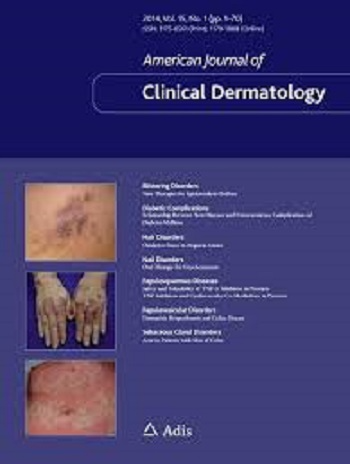
Systematic Review
There is at least some level I evidence to support the use of acupuncture and acupressure as adjuncts to conventional treatment of atopic dermatitis.
Vieira BL, Lim NR, Lohman ME, Lio PA.
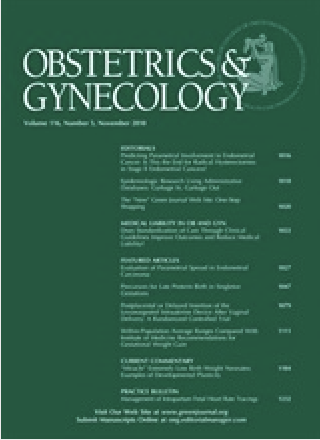
Case Report
Raspberry leaf consumption may decrease insulin requirements in pregnant women with gestational diabetes mellitus.
Cheang KI, Nguyen TT, Karjane NW, Salley KES

Systematic Review
Bu Zhong Yi Qi Tang treatment improves clinical symptoms, exercise capacity, lung function and quality of life for patients with stable chronic obstructive pulmonary disease.
Yuanbin Chen, Johannah Linda Shergis, Lei Wu, Xuhua Yu, Qigang Zeng, Yinji Xu, Xinfeng Guo, Anthony Lin Zhang, Charlie Changli Xue, Lin Lin

Experimental Study
Pu-erh tea water extracts could potentially enhance liver health and reduce oxidative stress in rats on a high-fat diet.
Jingjing Su, Xueqing Wang, Wenjun Song, Xiaoli Bai, Changwen Li
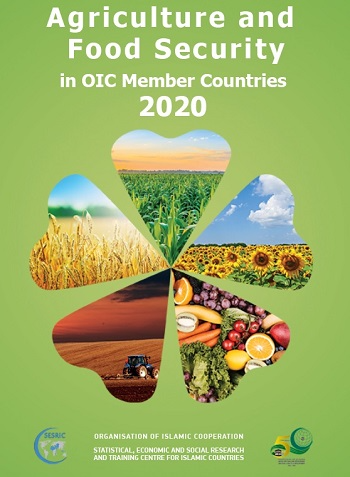
Significant amounts of small pelagic fish, a nutrient-rich food source, are unnecessarily processed into animal and pet food rather than being directed for human consumption in South Africa and Tanzania.
Isaacs M

Systematic Review
Chinese medicine warming and invigorating drugs combined with levothyroxine may improve treatment of hypothyroidism caused by Hashimoto disease more than levothyroxine alone.
Xiangwen Cheng, Zixiao Wei, Guangde Zhang, Xin Shao, Bo Li, Rui Gao

Review Article
Current literature suggests that food therapy is effective in blood pressure control and can be incorporated into blood pressure self-management in the Chinese population.
Ping Zou

Systematic Review
SP6 acupressure's effectiveness for primary dysmenorrhea relief, indicating trained personnel-administered acupressure reduced pain immediately and up to 3 hours post-intervention
Abaraogu UO, Igwe SE, Tabansi-Ochiogu CS

Review Article
Fennel exhibits antifungal, antibacterial, antioxidant, antithrombotic and hepatoprotective activities.
Manzoor A.Rather, Bilal A.Dar, Shahnawaz N.Sofia, Bilal A.Bhat, Mushtaq A.Qurishi

Network Pharmacology
Purified polysaccharides extracted from Tremella aurantialba mycelium have improved antioxidant properties and stimulate immune response in macrophage cells.
Deng C, Sun Y, Fu H, Zhang S, Chen J, Xu X.

Systematic Review
Acupuncture may be recommended for the treatment of chronic prostatitis/chronic pelvic pain syndrome with relatively rare incidence of adverse events.
Qin, Z., Wu, J., Tian, J. et al.

Systematic Review
Acupuncture relieves neck pain better than sham acupuncture and those who received acupuncture report less pain and disability at short‐term follow‐up than those on a wait‐list.
Trinh K, Graham N, Irnich D, Cameron ID, Forget M.

Randomised Controlled Trial
Acupuncture was a feasible intervention and reduced threatened miscarriage symptoms when compared to a touch intervention.
Betts D, Smith CA, Dahlen HG.

Clinical Study
Saffron has shown potential as an effective and tolerable treatment for major depressive disorder with anxious distress.
Ghajar A, Neishabouri S, Velayati N, Jahangard L, Matinnia N, Haghighi M, Ghaleiha A, Afarideh M, Salimi S, Meysamie A, Akhondzadeh S
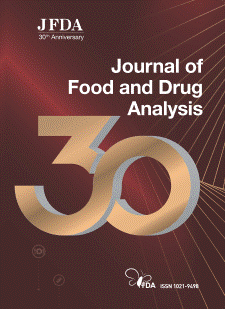
Experimental Study
Strictinin, the major phenolic compound in Pu'er teas, shows potential as a natural antibiotic and laxative but has greater inhibitory concentrations than some commercial antibiotics.
Hsieh SK, Xu JR, Lin NH, Li YC, Chen GH, Kuo PC, Chen WY, Tzen JTC
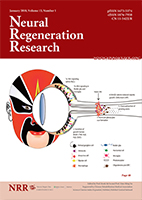
Randomised Controlled Trial
A 14-session course of needling at Fengchi is relatively safe for treating posterior circulation ischemia with vertigo.
Wen Y, Zhang C, Zhao Xf, Deng Sz, He S, Huang Lh, Tian G, Meng Zh

Systematic Review
Acupuncture's acupoint selection for treating PCOS, identifying top acupoints like Sānyīnjiāo (SP 6) and Guānyuán (CV 4). Findings reveal modern acupuncture's alignment with traditional theory, often targeting abdomen and lower limb points, including front-mu, he-sea, matching, and back-shu points.
YU C, KONG L, MA C, SHEN F, YAO GJ, XIONG Y, ZHOU H

Randomised Controlled Trial
Peppermint capsules can effectively reduce the severity of painful menstrual cramps in young women without causing any apparent change in pain duration.
Heshmati A, Dolatian M, Mojab F, shakeri N, Nikkhah S, Mahmoodi Z

Systematic Review
Acupuncture may have beneficial effects on improving dependency, global neurological deficiency, and some specific neurological impairments for people with stroke in the convalescent stage, with no obvious serious adverse events.
Yang A, Wu HM, Tang JL, Xu L, Yang M, Liu GJ.

Systematic Review
The study's analysis of 272 articles comparing Traditional Chinese Acupuncture (TCA) and Sham Acupuncture (SA) for managing hot flashes in menopausal breast cancer patients indicates that while 3 studies leaned towards TCA's effectiveness, 2 showed both interventions to be beneficial.
Carlos, Luís et al.

Randomised Controlled Trial
The combination of traditional Chinese medicine and endocrine therapy may be more effective in slowing prostate cancer progression and increasing patients' survival time.
Cao H, Mu Y, Li X, Wang Y, Chen S, Liu J

Systematic Review
Acupuncture, in combination with regular rehabilitation, may effectively alleviate poststroke shoulder pain more than rehabilitation alone.
Lee, S.-H., & Lim, S. M.

Systematic Review
Our meta-analysis found that, overall, acupuncture was superior to sham acupuncture in terms of pain relief and disability reduction for patients with musculoskeletal disorders.
Yuan QL, Wang P, Liu L, et al.

Systematic Review
Acupuncture appears to be a potentially effective treatment for reducing hot flashes in women diagnosed with breast cancer.
Chen YP, Liu T, Peng YY, Wang YP, Chen H, Fan YF, Zhang L

Review Article
Previous records suggest pleiotropic pharmacological activities of capsaicin such as an analgesic, anti-obesity, anti-pruritic, anti-inflammatory, anti-apoptotic, anti-cancer, anti-oxidant, and neuro-protective functions. Emerging data indicate its clinical significance in treating vascular-related diseases, metabolic syndrome, and gastro-protective effects.
Basith S, Cui M, Hong S, Choi S

Review Article
Date palm pollen (DPP) containing various compounds has been used as an aphrodisiac and fertility enhancer historically and shows promise in treating fertility disorders.
Tahvilzadeh M, Hajimahmoodi M, Rahimi R

Clinical Study
Cinnamon shows significant positive effects in reducing the severity of physical symptoms of premenstrual syndrome among adolescent girls at Mansoura University.
Hashim S, El-Sayed H, Wasel S

Experimental Study
Jujube-containing decoctions, used in Traditional Chinese Medicine, show neuro-protective and differentiating properties and enhance the function of multi-herbal concoctions.
Lam CTW, Gong AGW, Lam KYC, Zhang LM, Chen JP, Dong TTX, Lin HQ, Tsim KWK
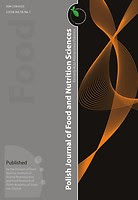
Review Article
Goji berries, classified as superfruits, possess potential beneficial implications in the dietary prevention of diseases like diabetes, cardiovascular diseases, and cancer.
Kulczyński B, Gramza-Michałowska A

Systematic Review
The available evidence suggests that adding acupuncture to symptomatic treatment of attacks reduces the frequency of headaches.
Linde K, Allais G, Brinkhaus B, et al.

Experimental Study
Pu-erh tea's fermentation process alters its microbial community, with aging significantly impacting raw but not ripened Pu-erh, and toxic metabolites present support brewing customs.
Zhang Y, Skaar I, Sulyok M, Liu X, Rao M, et al.

Experimental Study
In 2004, polyphenols were isolated from mung bean sprouts, which exert antibacterial activity against Helicobacter pylori, one of the most common causative organisms in gastrointestinal disorders.
Jiaqiang Luo, Weixi Cai, Tong Wu, Baojun Xu

Randomised Controlled Trial
Montmorency tart cherry juice intake can significantly lower systolic blood pressure in men with early hypertension, with improvements linked to phenolic acids.
Keane KM, George TW, Constantinou CL, Brown MA, Clifford T, Howatson G
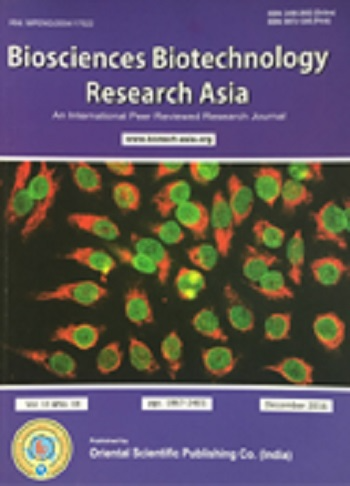
Review Article
The bioactive compounds in Chrysanthemums can be used to develop next generation, multi-functional drugs for various diseases including diabetes and prostate cancer.
Soo Cheon Chae

Systematic Review
Acupuncture compared to sham/placebo and pharmacotherapy showed statistically significant results for insomnia.
Shergis JL, Ni X, Jackson ML, Zhang AL, Guo X, Li Y, Lu C, Xue CC

Strong bactericidal activity was exhibited by sulforaphene against all strains of Helicobacter pylori.
Sooyeon Li, Sang-Wook Han, Jongkee Kim

Systematic Review
Oral ginger could be an effective treatment for menstrual pain in dysmenorrhea.
Chen X. Chen, Bruce Barrett, Kristine L. Kwekkeboom,
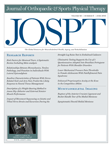
Systematic Review
Acupuncture, specifically needle-based and electroacupuncture, can potentially provide therapeutic benefits for carpal tunnel syndrome, Achilles tendinopathy, and shoulder injuries.
Cox, J., Varatharajan, S., Côté, P., & Optima Collaboration

Systematic Review
Acupuncture and related therapies are effective in reducing pain, fatigue, and in improving quality of life when compared with conventional intervention alone among cancer patients.
Lau CH, Wu X, Chung VC, Liu X, Hui EP, Cramer H, Lauche R, Wong SY, Lau AY, Sit RS, Ziea ET, Ng BF, Wu JC.

Systematic Review
Herbal medicines combined with routine pharmacotherapies improved asthma outcomes greater than pharmacotherapies alone.
Shergis JL, Wu L, Zhang AL, Guo X, Lu C, Xue CC

Meta-Analysis
Compared with oseltamivir, Chinese herbs might have superior potential effects on fever resolution and similar effects on viral shedding.
Li, Jiang-Honga,; Wang, Re-Qina; Guo, Wen-Jieb; Li, Juan-Shengc

Systematic Review
Acupuncture may be used as a complementary therapy for breast cancer survivors experiencing hot flashes and other menopause-related symptoms.
Chiu, Hsiao-Yean; Shyu, Yuh-Kae; Chang, Pi-Chen, Tsai, Pei-Shan

Systematic Review
Both manual acupuncture and electroacupuncture were effective in improving the apnea/hypopnea index and mean SaO2 in the treatment of obstructive sleep apnea.
Zheng-tao Lv, Wen-xiu Jiang, Jun-ming Huang, Jin-ming Zhang, An-min Chen

Systematic Review
Clinicians may consider Tai Chi as a viable complementary and alternative medicine for chronic pain conditions.
Kong, L., Lauche, R., Klose, P. et al.

Systematic Review
The available evidence suggests that a course of acupuncture consisting of at least six treatment sessions can be a valuable option for people with frequent tension-type headache.
Klaus Linde,Gianni Allais,Benno Brinkhaus, Yutong Fei,Michael Mehring,Byung‐Cheul Shin,Andrew Vickers,Adrian R White
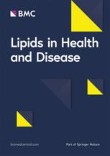
Randomised Controlled Trial
A sardine-enriched diet may have beneficial effects on cardiovascular risk and alters gut microbiota composition in patients with type 2 diabetes.
Balfegó M, Canivell S, Hanzu FA, Sala-Vila A, Martínez-Medina M, Murillo S, Mur T, Ruano EG, Linares F, Porras N, Valladares S, Fontalba M, Roura E, Novials A, Hernández C, Aranda G, Sisó-Almirall A, Rojo-Martínez G, Simó R, Gomis R

Systematic Review
Acupuncture as a complementary therapy may have a potential effect in chronic urinary retention due to spinal cord injury in decreasing postvoid residual urine volume and improving bladder voiding.
Jia Wang, Yanbing Zhai, Jiani Wu, Shitong Zhao, Jing Zhou, Zhishun Liu

Systematic Review
The studies assessed showed that sesame could have a significant effect on oxidative stress and the antioxidant defense system, being considered a food with an important antioxidant function in the different populations studied.
Gouveia Lde A, Cardoso CA, de Oliveira GM, Rosa G, Moreira AS.

Systematic Review
Certain modes of acupuncture improved postoperative pain on the first day after surgery and reduced opioid use. Our findings support the use of acupuncture as adjuvant therapy in treating postoperative pain.
Wu M-S, Chen K-H, Chen I-F, Huang SK, Tzeng P-C, Yeh M-L, et al.

Randomised Controlled Trial
Daily consumption of Puer tea extract results in significant weight loss, reduced body fat, and improved lipid profile in a non-Asian overweight population.
Jensen GS, Beaman JL, He Y, Guo Z, Sun H.
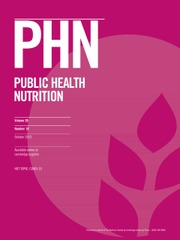
Systematic Review
Eating apples appears to be linked to a reduced risk of cancer in various parts of the body.
Fabiani R, Minelli L, Rosignoli P

Review Article
Acupuncture could be tried as a complement in the treatment of pain in endometriosis as it is an overall safe treatment.
Lund I, Lundeberg T

Systematic Review
Plums display anti-inflammatory, antioxidant properties and can enhance memory, and their consumption shows potential health benefits for cognitive function, bones, and cardiovascular elements.
Igwe EO, Charlton KE

Randomised Controlled Trial
Dietary omega-3 intake shows promise in lowering systolic blood pressure.
Minihane AM, Armah CK, Miles EA, Madden JM, Clark AB, Caslake MJ, Packard CJ, Kofler BM, Lietz G, Curtis PJ, Mathers JC, Williams CM, Calder PC

Systematic Review
Meta-analysis showed that Danggui Shaoyao San had superior effects compared to analgesics for treating primary dysmenorrhea.
Hye Won Lee, Ji Hee Jun, Ki-Jung Kil, Byong-Seob Ko, Choong Hwan Lee, Myeong Soo Lee
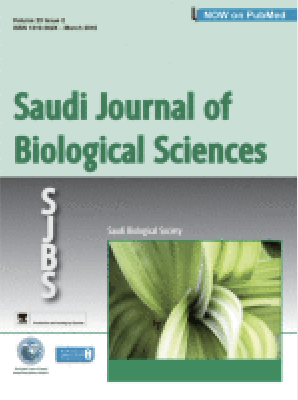
Coix extracts have anti-colorectal cancer potential.
Manosroi, A., Sainakham, M., Chankhampan, C., Manosroi, W., & Manosroi, J.

Systematic Review
Acupuncture is associated with a significant reduction in sleep disturbances in women experiencing menopause-related sleep disturbances.
Chiu, Hsiao-Yean RN, PhD; Hsieh, Yu-Jung RN, MSN; Tsai, Pei-Shan RN

Experimental Study
Astragalus Polysaccharide (APS) can potentially be used as a treatment for iron overload in thalassemia patients by promoting the production of hepcidin.
Ren F, Qian XH, Qian XL

Systematic Review
Acupuncture is associated with a significant reduction in sleep disturbances in women experiencing menopause-related sleep disturbances.
Chiu HY, Hsieh YJ, Tsai PS.

Systematic Review
Current evidence supports acupuncture as an effective treatment for chronic prostatitis/chronic pelvic pain syndrome-induced symptoms, particularly in relieving pain.
Qin Z, Wu J, Zhou J, Liu Z.

Clinical Study
Pomegranate juice improves physical function and stiffness, decreases cartilage breakdown enzymes and enhances antioxidant status in patients with knee osteoarthritis.
Ghoochani N, Karandish M, Mowla K, Haghighizadeh MH, Jalali MT
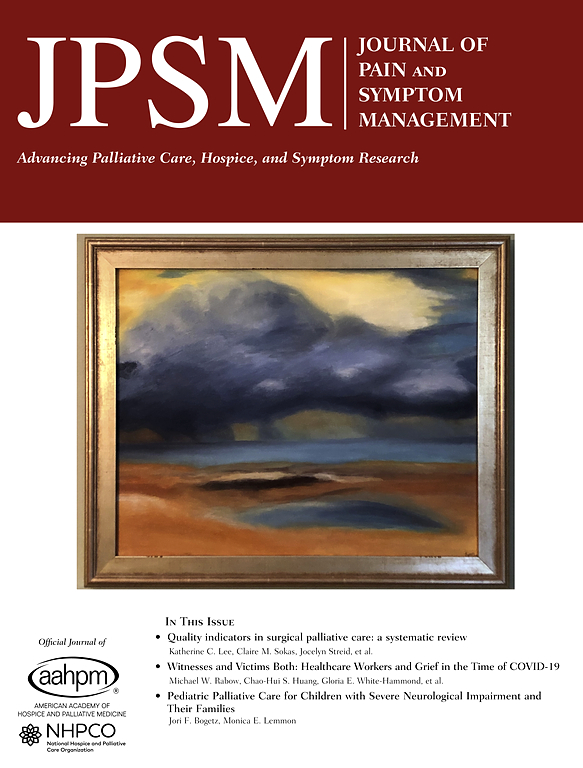
Systematic Review
A tentative conclusion can be reached that acupuncture, tuina, tai chi and qigong represent beneficial adjunctive therapies for cancer patients.
Wei-Wei Tao,Hua Jiang,Xiao-Mei Tao,Ping Jiang,Li-Yan Sha,Xian-Ce Sun

Animal Study
Dried plum was found to be most effective in reducing bone resorption and preventing bone loss caused by ionizing radiation exposure.
Schreurs AS, Shirazi-Fard Y, Shahnazari M, Alwood JS, Truong TA, Tahimic CGT, Limoli CL, Turner ND, Halloran B, Globus RK

Systematic Review
Acupuncture may have a positive impact on recovering menstrual cycles, reducing BMI, and lowering luteinizing hormone (LH) levels in women with polycystic ovarian syndrome (PCOS).
Qu F, Wu Y, Hu XY, Barry JA, Zhou J, Wang FF, Ye YH, Zhang R, Han SP, Han JS, Li R, Taw MB, Hardiman PJ, Robinson N

Systematic Review
Acupuncture is a prospective therapy targeting neurogenesis for ischemic stroke.
Lu, L., Zhang, Xg., Zhong, L. et al.
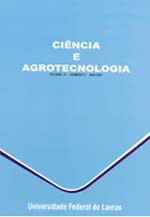
Experimental Study
Adzuki beans present anti-atherogenic, anti-thrombogenic and hypocholesterolemic effects, and the ratios PUFA: SFA and n-6:n-3 were considered appropriate for biological system maintenance of a healthy organism.
Hou D, Yousaf L, Xue Y, et al.

Systematic Review
There is a low level of evidence that acupuncture may be superior to sham acupuncture, drugs or hormone therapy for managing cancer-related insomnia.
Choi TY, Kim JI, Lim HJ, Lee MS.

Experimental Study
The component pterostilbene, found naturally in blueberries, shows potential in preventing inflammation and oxidative stress on the human cornea, suggesting protection against dry eyes.
Li J, Ruzhi Deng , Hua X, Zhang L, Lu F, Coursey TG, Pflugfelder SC, Li DQ

Systematic Review
Acupoint stimulation shows promise in alleviating nausea and vomiting in pregnancy.
Van den Heuvel, E., Goossens, M., Vanderhaegen, H. et al.
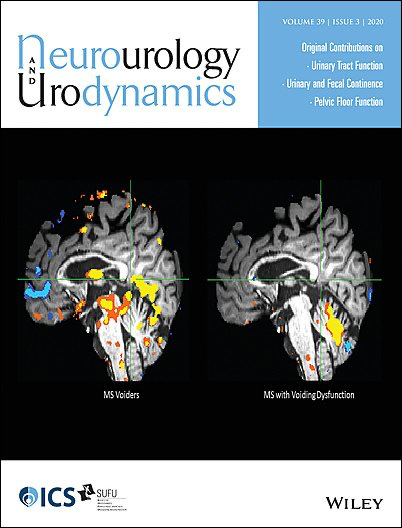
Systematic Review
Acupuncture has promising efficacy for patients with chronic prostatitis/chronic pelvic pain syndrome.
Chang SC, Hsu CH, Hsu CK, Yang SSD, Chang SJ

Clinical Study
Powdered tart cherry supplementation surrounding endurance exercise can decrease muscle damage markers, inflammation, oxidative stress and muscle soreness, while improving performance.
Levers K, Dalton R, Galvan E, O’Connor A, Goodenough C, Simbo S, Mertens-Talcott SU, Rasmussen C, Greenwood M, Riechman S, Crouse S, Kreider RB
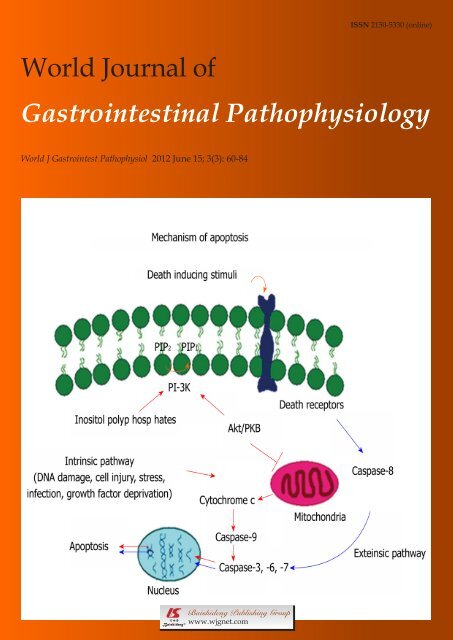
Clinical Study
Hydrogen carbonate-rich mineral water significantly reduces heartburn frequency and severity, improving quality of life with excellent tolerability.
Beer AM

Clinical Study
Drinking hydrogen carbonate-rich mineral water significantly reduces heartburn episodes and improves quality of life in individuals with dyspeptic symptoms.
Pohl U, Auinger A, Bothe G, Uebelhack R

Systematic Review
Acupuncture therapy is more effective than NSAID in improving clinical efficacy rates and pain scores for treatment of chrondomalacia patellae.
Lv Z.-T.a · Li Z.-Q.b · Zhou X.c · Ma W.-W.d · Zhang J.-M.a · Chen A.-M
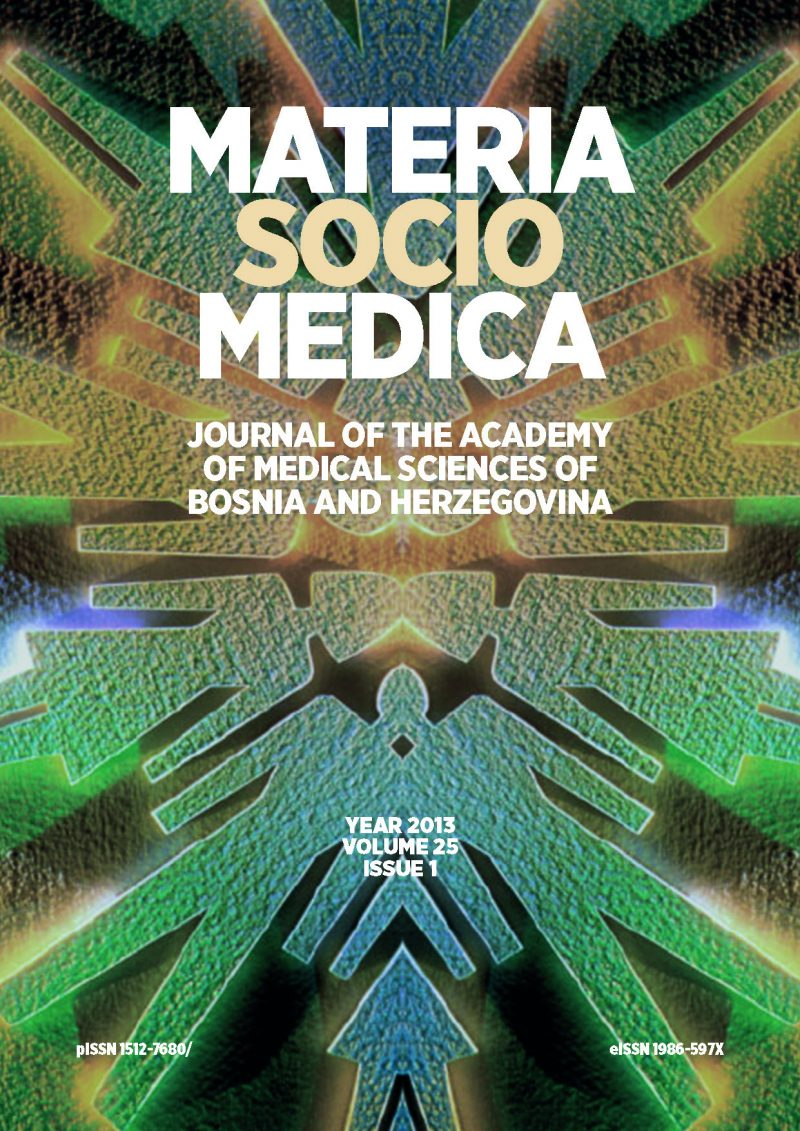
Randomised Controlled Trial
Acupuncture may enhance shoulder movement and relieve pain more effectively than standard treatment in patients suffering from adhesive capsulitis, also known as a frozen shoulder.
Asheghan M, Aghda A, Hashemi E, Hollisaz M

Experimental Study
The ethanol extract of FCI potentially counters bone loss in mice by enhancing osteoblast proliferation and differentiation, facilitated by multiple bioactive compounds.
Li J, Lin X, Zhang Y, Liu W, Mi X, Zhang J, Su J

Systematic Review
Acupuncture may be effective in treating the pain associated with sciatica.
Ji M, Wang X, Chen M, Shen Y, Zhang X, Yang J

Experimental Study
Pomegranate juice extract significantly improves hormonal changes in female rats with Polycystic Ovary Syndrome.
HOSSEIN KARGAR, LEILA KARGAR, EBRAHIM TAVAKOL, NAZANIN SHAFIEI, FARZAD POORGHOLAMI, ELHAM RAHMANIAN, MOHAMMAD POURAHMADI, ZAHRA HASANPOUR
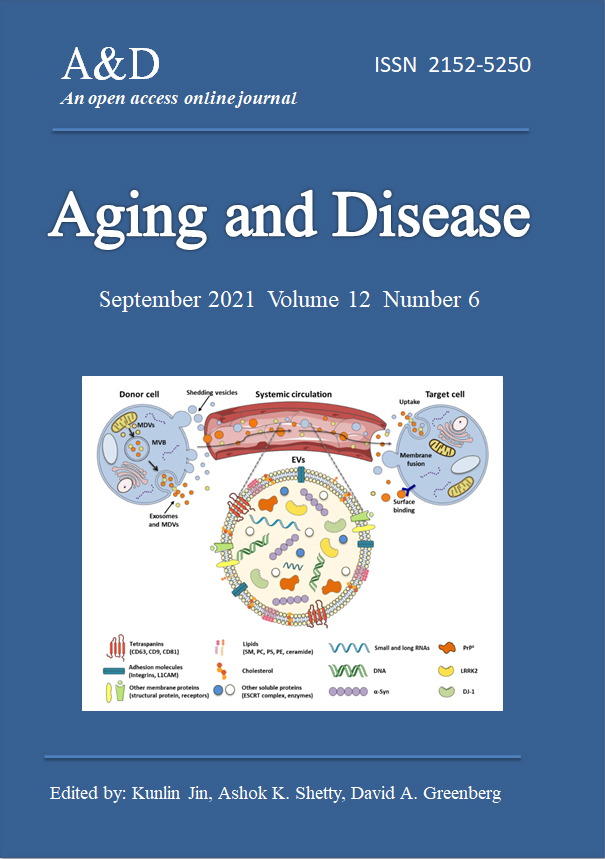
Review Article
The widely-used herbal formula Dang Gui Shao Yao San can alleviate cognitive dysfunction in Alzheimer's disease by improving the function of various central nervous systems.
Fu X, Wang Q, Wang Z, Kuang H, Jiang P
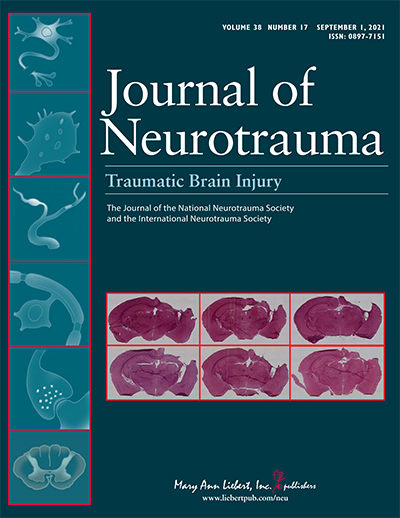
Systematic Review
Acupuncture may have a beneficial effect on neurological recovery, motor function, and functional recovery in spinal cord injury.
Ruijie Ma, Xin Liu, Justin Clark, Gail M. Williams, and Suhail A. Doi
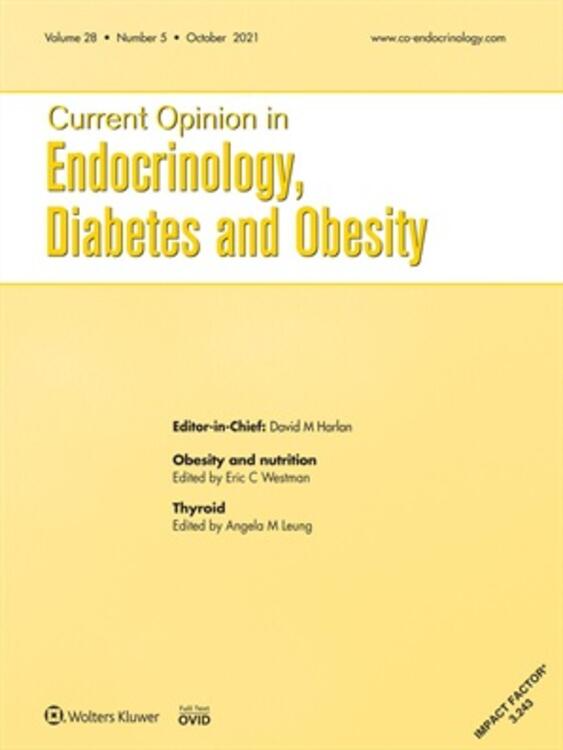
Review Article
Maintenance of sufficient vitamin D status may be important in preventing anemia, particularly in diseases characterized by inflammation.
Smith EM, Tangpricha V
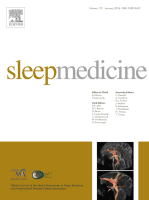
Systematic Review
Chinese herbal medicine was superior to placebo and benzodiazepine drugs and was superior to benzodiazepines and psychotherapy alone as an adjunct therapy in terms of subjective sleep quality and quantity and safety.
Xiaojia Ni, Johannah Linda Shergis, Xinfeng Guo, Anthony Lin Zhang, Yan Li, Chuanjian Lu, Charlie Changli Xue

Review Article
Acupuncture, as an adjuvant therapy or monotherapy, can protect and restore dopaminergic neurons, bearing positive implications for the Parkinson's disease treatment.
Danqing X

Randomised Controlled Trial
Drinking natural mineral water rich in magnesium sulphate and sodium sulphate daily improves bowel movement frequency and stool consistency in people with functional constipation.
Bothe G, Coh A, Auinger A

Cohort Study
High intake of magnesium from foods is linked to a significant decrease in the odds of developing reflux oesophagitis and Barrett's oesophagus.
Dai Q, Cantwell MM, Murray LJ, Zheng W, Anderson LA, Coleman HG

Systematic Review
Traditional Chinese medicine psycho-behavioral interventions represent beneficial adjunctive therapies for cancer patients.
Tao W, Luo X, Cui B, Liang D, Wang C, Duan Y, Li X, Zhou S, Zhao M, Li Y, He Y, Wang S, Kelley KW, Jiang P, Liu Q.
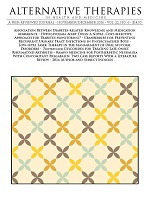
Systematic Review
Compound formulas of traditional Chinese medicine, compared with placebo, can provide benefits to patients with the common cold, with no serious side effects having been identified in the included trials.
Li G, Cai L, Jiang H, Dong S, Fan T, Liu W, Xie L, Mao B.

Experimental Study
Iron supplements intake acutely elevates hepcidin levels, decreasing the subsequent iron absorption with lower dosages and alternate day supplementation maximizing absorption.
Moretti D, Goede JS, Zeder C, Jiskra M, Chatzinakou V, Tjalsma H, Melse-Boonstra A, Brittenham G, Swinkels DW, Zimmermann MB

Systematic Review
The use of acupuncture may be more effective than drugs and may enhance the effect of drugs for patients with sciatica.
Zongshi Qin, Xiaoxu Liu, Jiani Wu, Yanbing Zhai, Zhishun Liu,

Clinical Study
Taking a powdered tart cherry supplement before and after intense resistance exercise can decrease muscle soreness, recovery strength loss, and signs of muscle damage.
Levers K, Dalton R, Galvan E, Goodenough C, O’Connor A, Simbo S, Barringer N, Mertens-Talcott SU, Rasmussen C, Greenwood M, Riechman S, Crouse S, Kreider RB

Systematic Review
Acupressure seems to be effective in providing immediate relief of pretreatment anxiety among adults, and has a medium effect size.
Au DWH, Tsang HWH, Ling PPM, Leung CHT, Ip PK, Cheung WM

Randomised Controlled Trial
Four weeks of acupuncture treatment is a safe and effective option for clinical management of seasonal allergic rhinitis in the Melbourne area for patients' symptom relief and quality of life improvement.
Xue CC, Zhang AL, Zhang CS, DaCosta C, Story DF, Thien FC

Systematic Review
Acupressure showed evidence of pain relief while acupuncture improved both the mental and the physical components of quality of life associated with primary dysmenorrhea.
Abaraogu UO, Tabansi-Ochuogu CS

Randomised Controlled Trial
Short-term acupuncture treatment is more effective than ibuprofen for mild to moderate carpal tunnel syndrome.
Hadianfard M, Bazrafshan E, Momeninejad H, Jahani N.

Systematic Review
There is moderate‐quality evidence from individual studies suggesting that acupuncture improved pelvic pain more than usual prenatal care.
Liddle SD, Pennick V
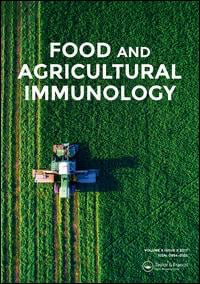
Review Article
Adzuki beans possessed strong ABTS free-radical-scavenging capacity and α-glucosidase inhibition activity.
Zhenxing Shi, Yang Yao, Yingying Zhu & Guixing Ren

Clinical Study
Pomegranate juice consumption slightly decreases estrone and testosterone levels in normal weight postmenopausal women.
Kapoor R, Ronnenberg A, Puleo E, Chatterton Jr. RT, Dorgan JF, Seeram NP, Sturgeon SR

Systematic Review
Acupuncture improves outcome measures in the treatment of dermatitis, chloasma, pruritus, urticaria, hyperhidrosis, and facial elasticity.
Ma, C., & Sivamani, R. K.
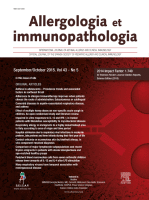
Review Article
Milk and honey mixture seems to be at least as effective as dextromethorphan and levodropropizine, the most prescribed over-the-counter antitussives in Italy, in non-specific acute cough in children.
Miceli Sopo S, Greco M, Monaco S, Varrasi G, Di Lorenzo G, Simeone G

Systematic Review
Goji berry was identified as a rich source of antioxidant compounds, with health-promoting properties comparable with other common fruit species.
D. Donno, G.L. Beccaro, M.G. Mellano, A.K. Cerutti, G. Bounous

Randomised Controlled Trial
Green tea extract consumption can potentially cause mild adverse reactions, notably nausea, skin conditions, and increased alanine aminotransferase levels.
Dostal AM, Samavat H, Bedell S, Torkelson C, Wang R, Swenson K, Le C, Wu AH, Ursin G, Yuan JM, Kurzer MS

Systematic Review
The antioxidants present in goji berries have comparable health-promoting properties to those found in other common fruits.
D. Donno, G.L. Beccaro, M.G. Mellano, A.K. Cerutti, G. Bounous

Systematic Review
Acupuncture can be safely applied as an alternative, adjuvant treatment in clinical practice to treat sleep disorders in postmenopausal women.
Bezerra AG, Pires GN, Andersen ML, Tufik S, Hachul H.

Review Article
Among the bioactive compounds present in jujube fruit, triterpenic acids and polysaccharides have antiproliferative and anticancer effects on various cancer cell lines.
Zoya Tahergorabi, Mohammad Reza Abedini, Moodi Mitra, Mohammad Hassanpour Fard, and Hossein Beydokhti

Randomised Controlled Trial
Chrysanthemum flower oil significantly reduces diet-induced elevation of serum uric acid in Japanese males with high baseline levels.
Ueda T, Honda S, Morikawa H, Kitamura S, Iwama Y, Nakagawa K

Systematic Review
There is evidence of efficacy of acupuncture as an adjunctive therapy to western medicine for treating hypertension.
Zhao XF, Hu HT, Li JS, Shang HC, Zheng HZ, Niu JF, et al

Review Article
Acupuncture has the potential to treat gastrointestinal (GI) disorders by regulating GI motility, the GI barrier, visceral sensitivity, and the brain-gut axis.
Li H, He T, Xu Q, Li Z, Liu Y, Li F, Yang BF, Liu CZ.

Systematic Review
Acupuncture seems to be an effective add-on treatment in patients with depression and, to a lesser degree, in patients with schizophrenia.
Bosch P, van den Noort M, Staudte H, Lim S.

Systematic Review
The alleged benefits of raw milk, including improved nutrition, prevention of lactose intolerance, or provision of "good" bacteria, lack scientific basis and are considered myths.
Lucey JA

Systematic Review
Chinese herbal medicine may provide an effective treatment during the acute phase of UTI and when given prophylactically to prevent recurrence in the six months following treatment.
Flower A, Wang LQ, Lewith G, Liu JP, Li Q.
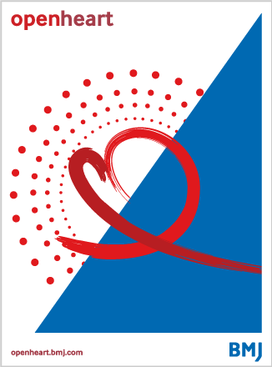
Systematic Review
Clinically, ingestion of capsaicin-or its less stable non-pungent analogue capsiate-has been shown to boost metabolic rate modestly.
McCarty MF, DiNicolantonio JJ, O'Keefe JH

Systematic Review
We cautiously suggest that acupuncture therapy could demonstrate better clinical efficacy than pharmacological treatment or placebo treatment in treating nocturnal enuresis.
Lv ZT, Song W, Wu J, et al.

Mung bean sprout extract has potent antiviral and to a lesser extent, prophylactic activities against both RSV and HSV-1, and in case of HSV-1, these activities were comparable to Acyclovir.
Hafidh, R.R., Abdulamir, A.S., Abu Bakar, F. et al.

Systematic Review
Acupuncture has been found potentially more effective than drugs in improving cognitive function and daily life in Alzheimer's disease patients, while also demonstrating safety.
Zhou, J., Peng, W., Xu, M., Li, W., & Liu, Z.
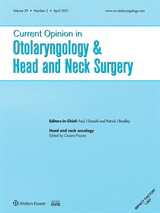
Systematic Review
There are high-quality randomized controlled trials that demonstrate efficacy and effectiveness for acupuncture in the treatment of both seasonal and perennial allergic rhinitis.
Malcolm B. Tawa, William D. Reddyb, Folashade S. Omolec, and Michael D. Seidmand

Systematic Review
The majority of trials demonstrate a positive effect of acupuncture over control condition in the treatment of neuropathy.
Alexandra Dimitrova, Charles Murchison, Barry Oken

Systematic Review
Acupuncture proves to be a promising alternative therapy for treating Bell's palsy, despite some controversy surrounding its use.
Li, P., Qiu, T., & Qin, C.

Randomised Controlled Trial
Bee pollen and honey may alleviate menopausal symptoms in breast cancer patients undergoing antihormonal treatment.
MÜNSTEDT KARSTEN, VOSS BENJAMIN, KULLMER UWE, SCHNEIDER URSULA, HÜBNER JUTTA
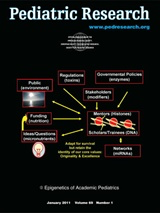
Systematic Review
The efficacy of acupuncture for some pediatric conditions is promising, such as for cerebral palsy, nocturnal enuresis, tic disorders, amblyopia, and pain reduction.
Chunsong Yang, Zilong Hao, Ling-Li Zhang & Qin Guo

Systematic Review
Acupuncture is effective for ameliorating itch intensity in itch-related diseases.
Chi Yu, Pei Zhang, Zheng-Tao Lv, Jing-Jing Li, Hong-Ping Li, Cai-Hua Wu, Fang Gao, Xiao-Cui Yuan, Jing Zhang, Wei He, Xiang-Hong Jing, Man Li,

Systematic Review
Traditional Chinese Medicine, when used alongside dopamine replacement therapy, could potentially improve the severity of symptoms in Parkinson's disease patients.
Guoxin Zhang, Nian Xiong, Zhentao Zhang, Ling Liu, Jinsha Huang, Jiaolong Yang, Jing Wu, Zhicheng Lin, Tao Wang

Randomised Controlled Trial
Consuming dark chocolate every day for two weeks before menstruation significantly reduced symptoms of premenstrual syndrome in women aged 18-22, showing improvements in anxiety, fatigue, abdominal cramps, bloating, and other related symptoms.
Nurazizah E, Tih F, Suwindere W
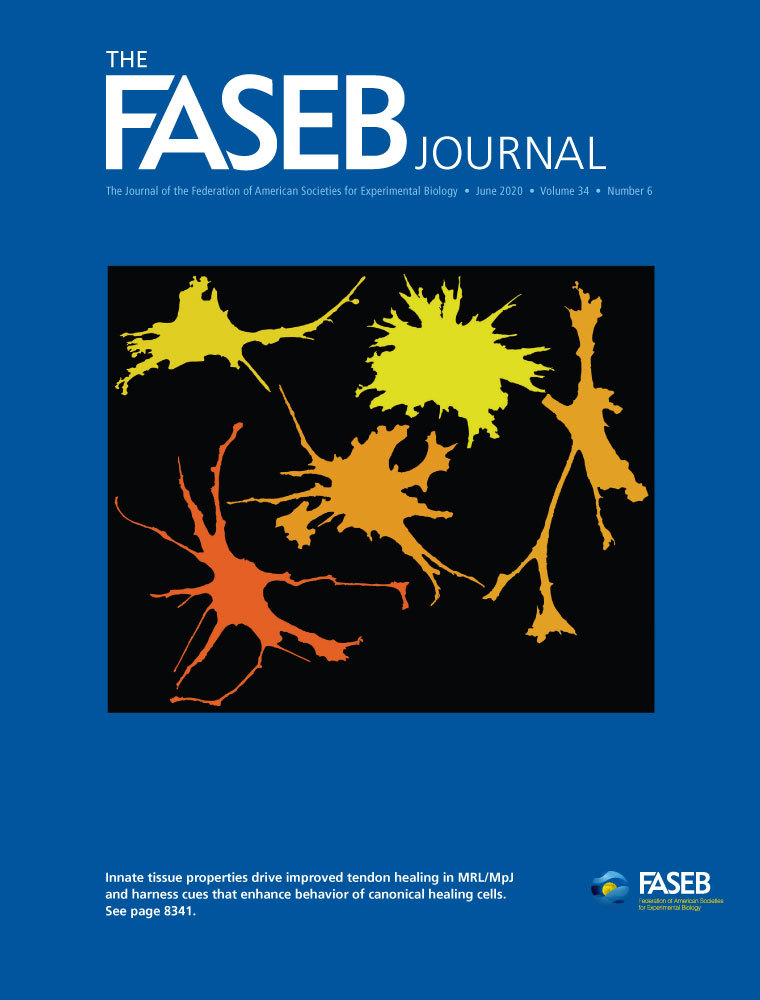
Review Article
Serotonin function, influenced by vitamin D and omega-3 fatty acids, plays a critical role in neuropsychiatric disorders and certain behavioral functions.
Patrick RP, Ames BN

Practice Guideline
Clinicians may offer acupuncture, or refer to a clinician who can offer acupuncture, for patients with allergic rhinitis who are interested in nonpharmacologic therapy.
Seidman MD et al.

Systematic Review
Acupuncture improves hot flash frequency and severity, menopause-related symptoms, and quality of life (in the vasomotor domain) in women experiencing natural menopause.
Chiu HY, Pan CH, Shyu YK, Han BC, Tsai PS.

Systematic Review
Acupuncture, either used in isolation or as an adjunct to conventional therapy, provides short-term improvements in pain and function for chronic low back pain.
Liu L, Skinner M, McDonough S, Mabire L, Baxter GD.

Systematic Review
Our review suggests that management of female infertility with Chinese herbal medicine can improve pregnancy rates 2-fold within a 3-6 month period compared with Western medical fertility drug therapy.
Ried K.

Experimental Study
Pomegranate Fruit Extract (PFE) can potentially mitigate testosterone-induced Benign Prostatic Hyperplasia in rats due to its anti-inflammatory, antioxidant and pro-apoptotic properties.
Ammar AE, Esmat A, Hassona MDH, Tadros MG, Abdel‐Naim AB, Guns EST

Experimental Study
Two new compounds found in Chrysanthemum indicum flowers have strong antioxidant qualities and are potent in anti-osteoporosis activity.
Luyen BTT, Tai BH, Thao NP, Lee YM, Lee SH, Jang HD, Kim YH

Systematic Review
TCM pattern-based treatments for depression frequently use Xiao Yao and Chai Hu Shu Gan decoctions, with Bai Shao and Chai Hu herbs common across different TCM patterns.
Yeung WF, Chung KF, Ng KY, Yu YM, Zhang SP, Ng BFL, Ziea ETC
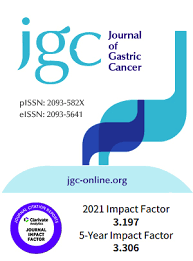
Systematic Review
Consuming carrots reduces the risk of gastric cancer by an indicated 26%.
Fallahzadeh H, Jalali A, Momayyezi M, Bazm S
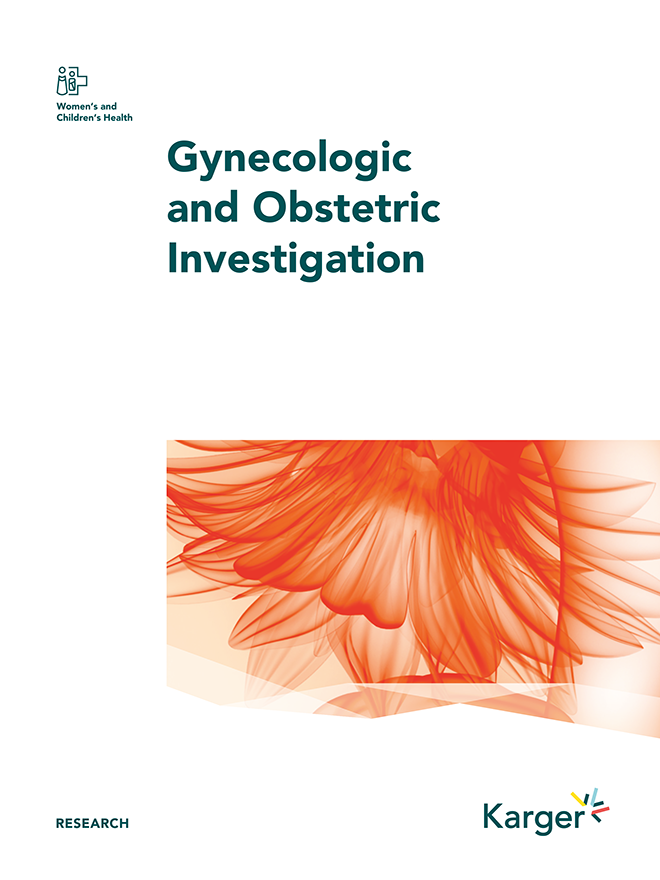
Systematic Review
We found pooled benefit of acupuncture for IVF when performed at follicle phase and 25 min before and after embryo transfer, as well as 30 min after embryo transfer and implantation phase.
Shen C.,Wu M., Shu D., Zhao X. and Gao Y.

Meta-Analysis
Our meta-analysis suggests that that acupuncture could be a safe and valid treatment option for allergic rhinitis patients.
Feng S, Han M, Fan Y, Yang G, Liao Z, Liao W, Li H

Systematic Review
Acupuncture therapies demonstrate some potential benefits in treating psoriasis vulgaris, despite conflictions in individual study results.
Coyle M, Deng J, Zhang AL, Yu J, Guo X, Xue CC, Lu C

Systematic Review
Administering honey postoperatively can significantly lessen pain and foster improved wound healing following tonsillectomy.
Hwang SH, Song JN, Jeong YM, Lee YJ, Kang JM

Systematic Review
There are potential benefits of herbal medicine in addressing the complex symptoms of PCOS, supported by both pre-clinical and clinical evidence.
Susan Arentz, Jason Anthony Abbott, Caroline Anne Smith & Alan Bensoussan

Review Article
A mixture of active polysaccharides from Goji berries have shown multiple pharmacological activities, including anti-aging, antioxidative, anti-fatigue, anticancer, anti-diabetic, anti-viral, hepatoprotective, cardioprotective, neuroprotective, hypolipidemic, radioprotective, anti-osteoporosis, anti-inflammatory, and immunomodulating effects.
Cheng J, Zhou Z, Sheng H, He L, Fan X, He Z, Sun T, Zhang X, Zhao RJ, Gu L, Cao C, Zhou S

Meta-Analysis
Current evidence provisionally demonstrates that acupuncture treatment is superior to either non-acupuncture or conventional therapy for cerebral infarction.
Li Li, Hong Zhang , Shu-qing Meng, Hai-zhou Qian
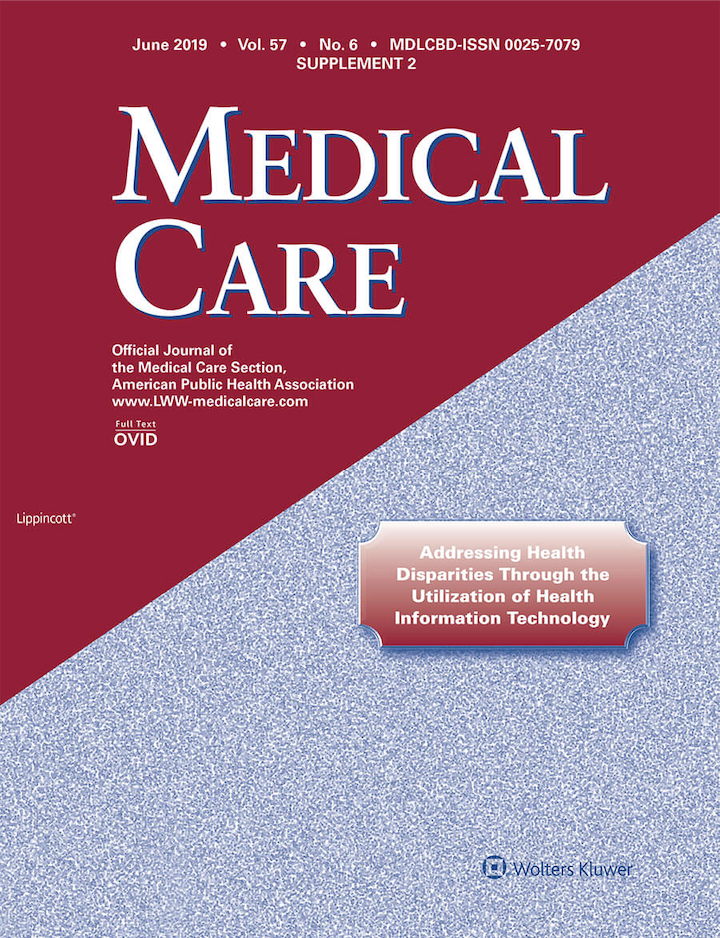
Randomised Controlled Trial
Improvement in post traumatic stress disorder severity was significantly greater among those receiving acupuncture than in those receiving usual PTSD care.
Engel CC, Cordova EH, Benedek DM, Liu X, Gore KL, Goertz C, et al.

Experimental Study
Epigallocatechin 3-gallate (EGCG), found in green tea, can significantly slow down osteoarthritis progression and reduce associated pain in a post-traumatic osteoarthritis mouse model.
Leong DJ, Choudhury M, Hanstein R, Hirsh DM, Kim SJ, Majeska RJ, Schaffler MB, Hardin JA, Spray DC, Goldring MB, Cobelli NJ, Sun HB

Systematic Review
The bioactive components and biological activities were superior for green (unripe) jujube fruit (as pulp and seed) compared to the ripe fruit.
Sirithon Siriamornpuna, NatthidaWeerapreeyaku, Sahapat Barusrux

Randomised Controlled Trial
Acupuncture is cost-effective compared with counselling or usual care alone in treating patients with depression.
Spackman, E., Richmond, S., Sculpher, M., Bland, M., Brealey, S., Gabe, R., Hopton, A., Keding, A., Lansdown, H., Perren, S., Torgerson, D., Watt, I., & MacPherson, H.
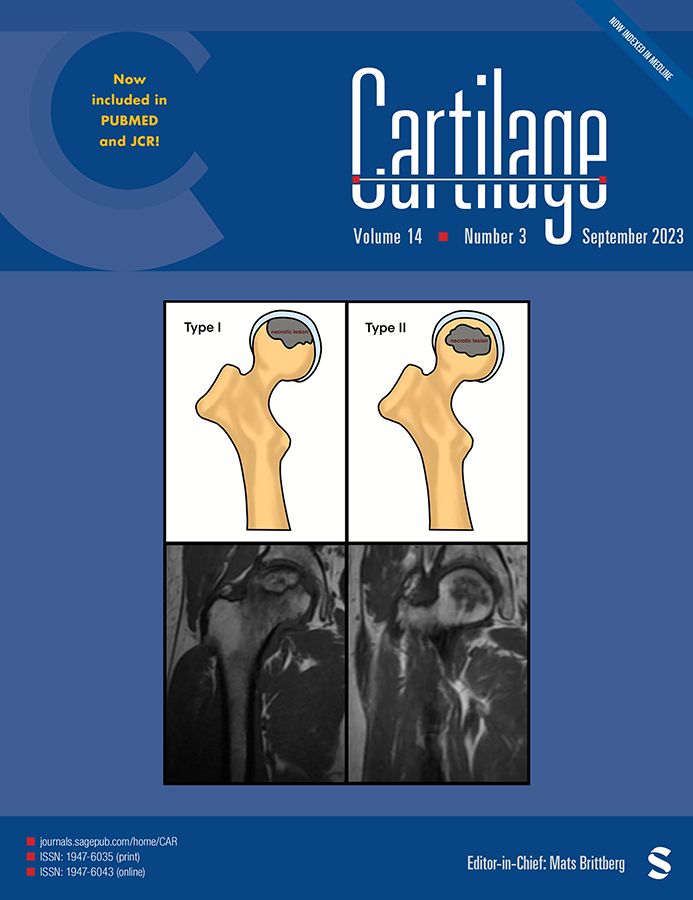
Review Article
A dietary supplement Avocado/Soybean Unsaponifiables aids in treating Osteoarthritis by preventing cartilage degradation and promoting cartilage repair, thereby reducing pain and enhancing joint functionality.
Christiansen BA, Bhatti S, Goudarzi R, Emami S
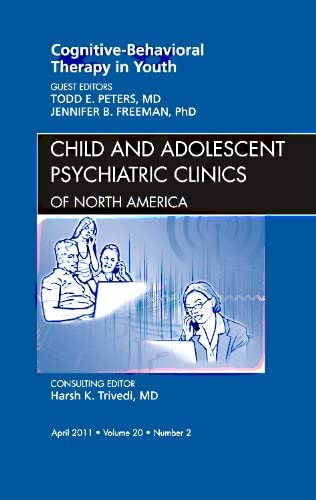
Review Article
Traditional Chinese medicine can be effective in diagnosing and treating attention-deficit/hyperactivity disorder, offering an alternative to Western pharmacologic treatment.
Ni X, Zhang-James Y, Han X, Lei S, Sun J, Zhou R

Traditional Chinese Medicine (TCM) is regularly used in treating upper respiratory tract infections, particularly for patients (more female patients in database found) with mild symptoms, using commonly preferred prescriptions, i.e Yin Qian San & Ma Xing Shi Gan Tang.
Yu JS, Ho CH, Hsu YC, Wang JJ, Hsieh CL

Systematic Review
Saffron, derived from Crocus sativus flower, shows similar efficacy to antidepressant medications in treating major depression, potentially due to its variety of biochemical effects.
Lopresti AL, Drummond PD

Review Article
Consuming a diverse mix of dietary measures enhances iron absorption more effectively than focusing on single nutrients or foods, especially in young women.
Beck K, Conlon C, Kruger R, Coad J
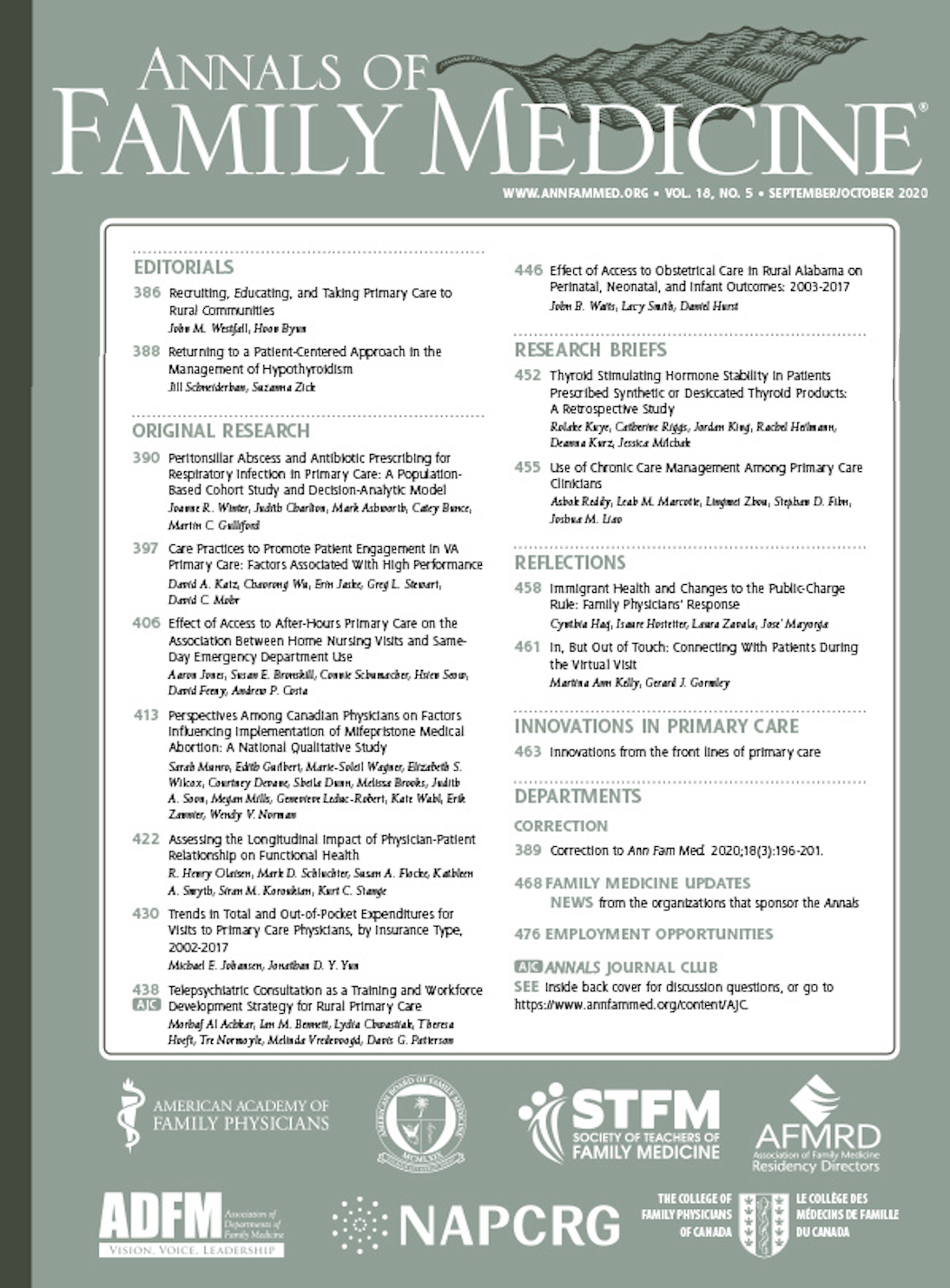
Systematic Review
The consumption of cinnamon is associated with a statistically significant decrease in levels of fasting plasma glucose, total cholesterol, LDL-C, and triglyceride levels, and an increase in HDL-C levels.
Robert W. Allen, Emmanuelle Schwartzman, William L. Baker, Craig I. Coleman and Olivia J. Phung

Systematic Review
The use of acupuncture for osteoarthritis is associated with significant reductions in pain intensity, improvement in functional mobility and quality of life.
Manyanga, T., Froese, M., Zarychanski, R. et al.

Randomised Controlled Trial
Drinking 1 liter of Hépar, a magnesium sulfate-rich mineral water, daily reduces constipation and hard or lumpy stools more effectively than low-mineral water in women.
Dupont C, Campagne A, Constant F

Systematic Review
This meta-analysis suggests that acupuncture had positive effects on cognitive function after stroke.
Fang Liu, Zhuang-Miao Li, Yi-Jing Jiang, and Li-Dian Chen.
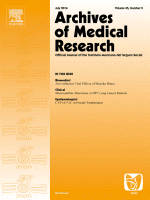
Network Pharmacology
Manuka honey exhibits significant anti-influenza viral activity, inhibiting replication with virucidal effects. Combining manuka honey with existing drugs enhances their efficacy, suggesting its medicinal potential.
Watanabe K, Rahmasari R, Matsunaga A, Haruyama T, Kobayashi N

Network Pharmacology
Honey, in general, and particularly manuka honey, has potent inhibitory activity against the influenza virus, demonstrating a potential medicinal value.
Watanabe K, Rahmasari R, Matsunaga A, Haruyama T, Kobayashi N
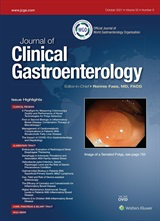
Systematic Review
Peppermint oil is a safe and effective short-term treatment for irritable bowel syndrome.
Khanna, Reena ; MacDonald, John K. ; Levesque, Barrett G.
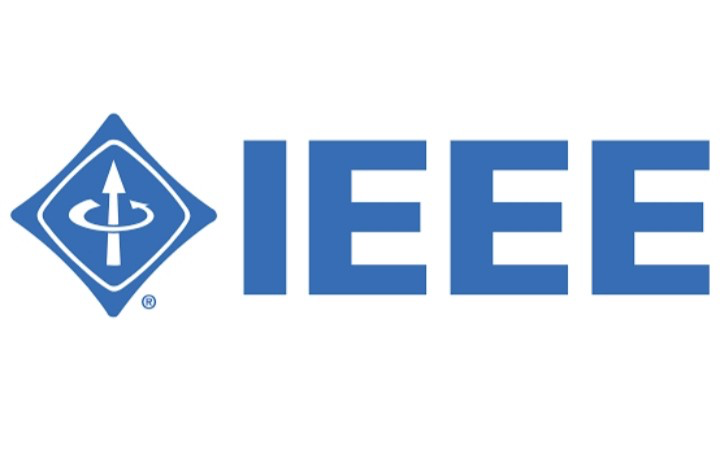
Systematic Review
Acupuncture shows promise in treating polycystic ovary syndrome (PCOS).
Hong Ma, Xiaohong Quan, Jianwei Li, Bin and Xiuhua Chen

Clinical Study
Traditional Chinese medical prescriptions showed a correlation with pattern diagnosis in the treatment of systemic lupus erythematosus.
Liu CY, Wu WH, Huang TP, Lee TY, Chang HH

Randomised Controlled Trial
Acupuncture can be considered as an alternative option for treatment of De Quervain's tenosynovitis.
Hadianfard M, Ashraf A, Fakheri M, Nasiri A

Systematic Review
Goji (Lycium spp.) has a consolidated safety and efficacy profile, based on scientific literature, clinical trials, expert opinions, history, pharmacology, interactions, adverse effects, toxicology, and dosing.
Ulbricht C, Bryan JK, Costa D, Culwell S, Giese N, Isaac R, Nummy K, Pham T, Rapp C, Rusie E, Weissner W, Windsor RC, Woods J, Zhou S

Systematic Review
Moderate quality studies suggest that acupuncture is more effective than sham acupuncture for lateral elbow pain.
Gadau M, Yeung WF, Liu H, Zaslawski C, Tan YS, Wang FC, et al

Network Pharmacology
The consumption of kiwifruit with a meal can increase the rate and extent of the hydrolysis of protein.
Donaldson B, Rush E, Young O, Winger R

Network Pharmacology
Chrysanthemum flower oil can effectively decrease uric acid levels in rats, by reducing production in the liver and enhancing excretion from the kidney.
Honda S, Kawamoto S, Tanaka H, Kishida H, Kitagawa M, Nakai Y, Abe K, Hirata D
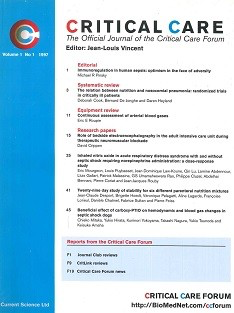
Systematic Review
Parenteral glutamine supplementation given in conjunction with nutrition support continues to be associated with a significant reduction in hospital mortality and hospital length of stay.
Paul E Wischmeyer, Rupinder Dhaliwal, Michele McCall, Thomas R Ziegler & Daren K Heyland

Systematic Review
Polyphenolic compounds found in walnuts not only reduce the oxidant and inflammatory load on brain cells but also improve interneuronal signaling, increase neurogenesis, and enhance sequestration of insoluble toxic protein aggregates.
Poulose SM, Miller MG, Shukitt-Hale B

Systematic Review
Acupuncture showed both clinically important changes and statistically significant results for management of low back and/or pelvic pain (LBPP) in pregnancy.
Close C, Sinclair M, Liddle SD, Madden E, McCullough JE, Hughes C.

Meta-Analysis
Acupuncture significantly lowers blood pressure in patients taking antihypertensive medications.
Li DZ, Zhou Y, Yang YN, Ma YT, Li XM, Yu J, et al.

Systematic Review
Ginger could be considered a harmless and possibly effective alternative option for women suffering from nausea and vomiting during pregnancy.
Viljoen, E., Visser, J., Koen, N. et al.

Experimental Study
Consumption of Pu-erh tea can effectively alleviate symptoms of constipation, with effects comparable to the medicinal drug bisacodyl.
LI GUIJIE, WANG QIANG, QIAN YU, ZHOU YALIN, WANG RUI, ZHAO XIN
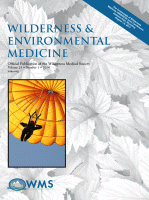
Review Article
Honey has shown to be a safe and occasionally superior treatment for various wounds compared to current treatments, even in wilderness environments.
Stewart JA, McGrane OL, Wedmore IS

Systematic Review
Acupuncture can be tried based on the available data in the treatment of xerostomia in cancer patients.
Hanchanale S, Adkinson L, Daniel S, Fleming M, Oxberry SG.

Systematic Review
Germination is thought to improve the nutritional and medicinal qualities of mung beans.
Tang, D., Dong, Y., Ren, H. et al.

Systematic Review
A study demonstrated that all pro-inflammatory cytokines, including interleukin (IL)-1β, IL-6, IL-12β, tumor necrosis factor (TNF)-α, and inducible NO synthase (iNOS), were dramatically down regulated in cells treated with 3.7 mg/mL polyphenols.
Tang, D., Dong, Y., Ren, H. et al.

Systematic Review
Mung bean protein, tannin, and other polyphenols are thought to combine with organophosphorus pesticides, mercury, arsenic, and other heavy metals, promoting the excretion of sediments from the body.
Tang, D., Dong, Y., Ren, H. et al.

Systematic Review
Acupuncture and herbal medicine show promise in alleviating premenstrual syndrome and premenstrual dysphoric disorder symptoms, with over 50% relief and proven safety.
Jang SH, Kim DI, Choi MS
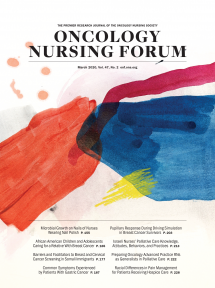
Systematic Review
Although results are inconclusive, acupuncture and acupressure tend to be effective in relieving cancer related fatigue, with the former producing a greater improvement.
Ling WM, Lui LY, So WK, Chan K.

Experimental Study
Black soyabean seed coat extract significantly decreases hepcidin expression, leading to improved iron metabolism and potential treatment for iron-deficiency anaemia.
Mu M, Wu A, An P, Du X, Wu Q, Shen X, Wang F

Randomised Controlled Trial
Consumption of fenugreek herbal tea and palm dates appears useful in enhancing breast milk production during the initial postpartum period.
El Sakka A, Salama M, Salama K

Systematic Review
Guizhi Fuling formula shows potential in treating uterine fibroids.
Chen NN, Han M, Yang H, Yang GY, Wang YY, Wu XK, Liu JP

Randomised Controlled Trial
Tualang honey demonstrates efficacy comparable to Tribestan in enhancing sperm parameters among oligospermic males, including concentration, motility, and morphology, with a favorable safety profile.
Ismail SB, Bakar MB, Nik Hussain NH, Norhayati MN, Sulaiman SA, Jaafar H, Draman S, Ramli R, Wan Yusoff WZ
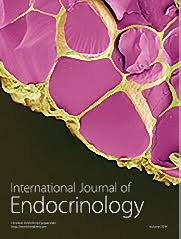
Animal Study
Regular intake of mineral-rich water, high in sodium bicarbonate, potassium, calcium, and magnesium, potentially reduces risk of Metabolic Syndrome and atherosclerotic cardiovascular disease.
Pereira CD, Severo M, Araújo JR, Guimarães JT, Pestana D, Santos A, Ferreira R, Ascensão A, Magalhães J, Azevedo I, Monteiro R, Martins MJ
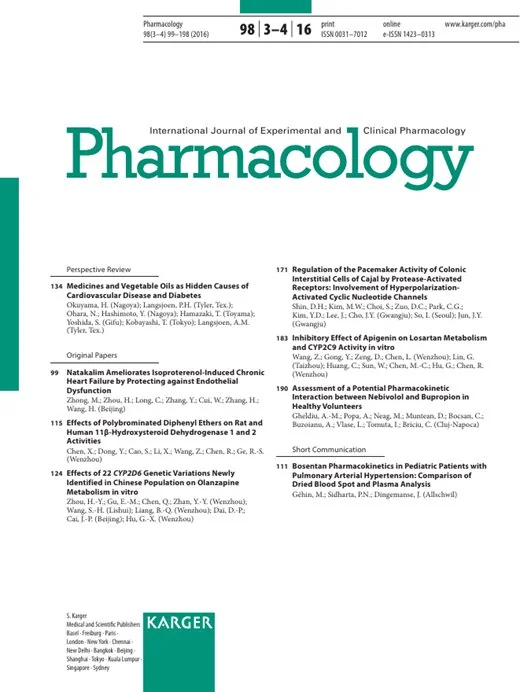
Systematic Review
Green tea polyphenols may enhance effectiveness of specific breast cancer endocrine treatments through both estrogen-dependent and -independent mechanisms.
Yiannakopoulou EC

Randomised Controlled Trial
Acupuncture and electroacupuncture treatments can alleviate Carpal Tunnel Syndrome symptoms, enhance nerve repair and improve sensory and motor functions.
Ho CY, Lin HC, Lee YC, Chou LW, Kuo TW, Chang HW, Chen YS, Lo SF

Experimental Study
Pumpkin seeds and their extracts, including Trigonelline, Nicotinic acid, and D-chiro-inositol, offer potential for controlling blood sugar levels in diabetes patients.
Adams GG, Imran S, Wang S, Mohammad A, Kok MS, Gray DA, Channell GA, Harding SE

Review Article
Honey proves to be an effective, cost-efficient treatment for diabetic wounds due to its natural properties, including antibacterial activity and control over inflammation.
Alam F, Islam MA, Gan SH, Khalil MI
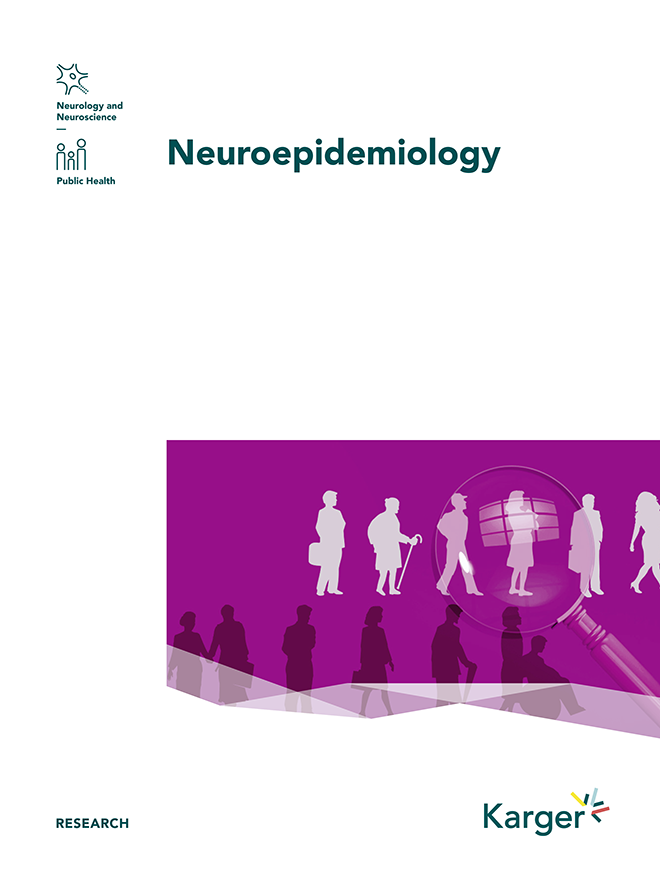
Systematic Review
Acupuncture may be effective for treating poststroke neurological impairment and dysfunction such as dysphagia.
Zhang J. Wang D. Liu M.

Experimental Study
Honey, specifically its polyphenols, show promising signs of enhancing memory and counteracting neurodegenerative diseases by reducing oxidative stress and neuroinflammation.
Mijanur Rahman M, Gan SH, Khalil MI

Systematic Review
Acupuncture shows promising evidence in cancer palliative care, particularly in reducing therapy-induced side effects and cancer pain.
Lian, WL., Pan, Mq., Zhou, Dh. & Zhang, ZJ.

Our findings suggest that the group setting, community-based locations, and low cost of this model do not compromise quality of care, and potentially reduce access barriers for those who might not otherwise consider acupuncture.
Tippens KM, Chao MT, Connelly E, Locke A.

Systematic Review
Cinnamomum Zeylanicum shows potential medicinal effects such as reducing blood glucose levels and possessing anti-microbial properties.
Ranasinghe P, Pigera S, Premakumara GAS, Galappaththy P, Constantine GR, Katulanda P

Systematic Review
Acupuncture and moxibustion therapy show greater effectiveness than oral sulphasalazine in treating inflammatory bowel diseases.
Ji, J., Lu, Y., Liu, H., Feng, H., Zhang, F., Wu, L., Cui, Y., & Wu, H.
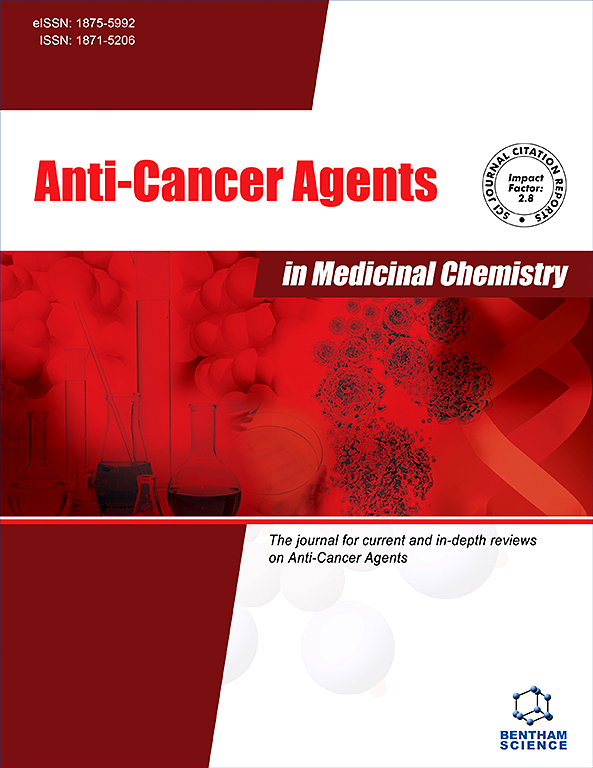
Review Article
Blueberries, due to their phenolic compounds, show potential as both dietary and supplemental anti-cancer agents by inhibiting cancer cell growth and promoting apoptosis.
Johnson S, Arjmandi B
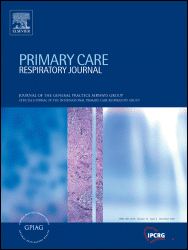
Randomised Controlled Trial
Honey plus coffee, presented as a jamlike paste, emerges as a more effective alternative medicine for persistent post-infectious cough (PPC) compared to systemic steroids, demonstrating significant reduction in cough frequency in a randomized controlled trial.
Raeessi MA, Aslani J, Raeessi N, Gharaie H, Zarchi AAK, Raeessi F
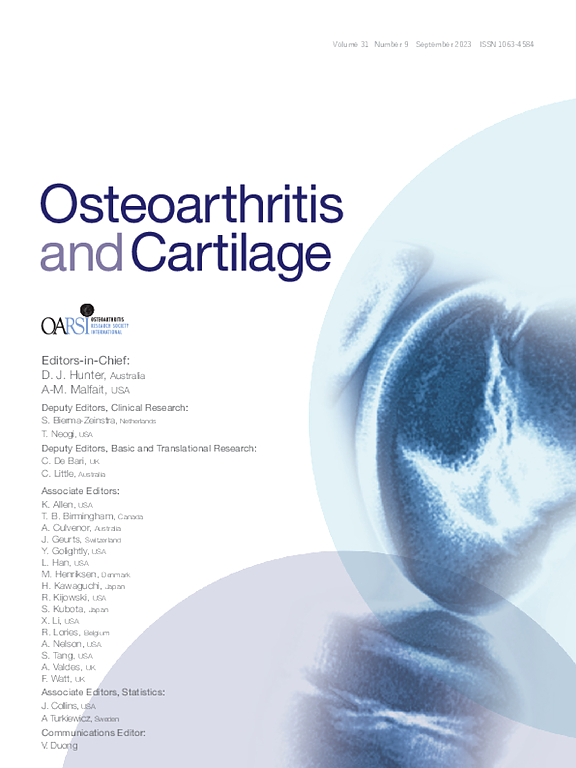
Randomised Controlled Trial
Tart cherry juice potentially helps alleviate symptoms of mild to moderate knee osteoarthritis and decreases the levels of high sensitivity C-reactive protein.
Schumacher HR, Pullman-Mooar S, Gupta SR, Dinnella JE, Kim R, McHugh MP

Randomised Controlled Trial
Tart cherry juice shows promise in easing knee osteoarthritis symptoms.
Schumacher HR, Pullman-Mooar S, Gupta SR, Dinnella JE, Kim R, McHugh MP

Randomised Controlled Trial
Korean pear juice can alleviate symptoms of alcohol hangover and aid in alcohol detoxification, with effectiveness influenced by certain genetic variations.
Lee HS, Isse T, Kawamoto T, Baik HW, Park JY, Yang M

Systematic Review
Radish seed has been demonstrated to have beneficial effects on hypertension, obesity, diabetes mellitus, constipation, and cough.
Tung-Ting Sham, Ailsa Chui-Ying Yuen, Yam-Fung NgChi-On ChanDaniel Kam-Wah Mok, and Shun-Wan Chan

Systematic Review
The evidence suggested that traditional acupuncture can improve hot flashes in menopausal women and could be a potential treatment for menopausal women.
Dodin S, Blanchet C, Marc I, Ernst E, Wu T, Vaillancourt C, Paquette J, Maunsell E.

Systematic Review
Despite its widespread use during assisted reproductive technology (ART) cycles, acupuncture does not appear to improve live birth or pregnancy rates in couples dealing with subfertility.
Cheong YC, Dix S, Hung Yu Ng E, Ledger WL, Farquhar C

Systematic Review
When acupuncture was compared with no treatment, there appeared to be a benefit from acupuncture, but acupuncture appeared to be less effective than hormone therapy.
Dodin S, Blanchet C, Marc I, Ernst E, Wu T, Vaillancourt C, et al.
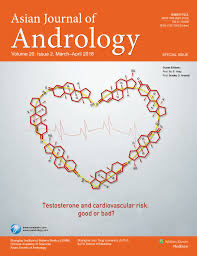
Systematic Review
Chinese herbal medicine appears to be more effective than Western medication in improving quality of life and reducing prostate volume in benign prostatic hyperplasia patients.
Ma CH, Lin WL, Lui SL, Cai XY, Wong VT, Ziea E, Zhang ZJ

Systematic Review
Compared with no treatment and standard therapy, acupuncture improves pain and stiffness in people with fibromyalgia.
Deare JC, Zheng Z, Xue CC, Liu JP, Shang J, Scott SW, Littlejohn G.

Systematic Review
Chinese herbal medicine may help in functional recovery in gout patients, while safely controlling serum uric acid level and inflammation severity.
Li XX, Han M, Wang YY, Liu JP

Animal Study
Dried plum intake uniquely improves bone density, promotes growth of vertebral trabecular bone, prevents bone loss in tibia, and positively adjusts bone metabolism.
Rendina E, Hembree KD, Davis MKR, Marlow D, Clarke SL, Halloran BP, Lucas EA, Smith BJ

Systematic Review
Most Chinese medical herbs in the included studies showed similar effects to antiviral drugs in preventing or treating influenza.
Jiang L, Deng L, Wu T.

Clinical Study
Pomegranate juice intake for two weeks significantly reduces blood pressure and may improve heart health by lowering vascular endothelial adhesion molecule-1 levels.
Asgary S, Sahebkar A, Afshani MR, Keshvari M, Haghjooyjavanmard S, Rafieian‐Kopaei M

Systematic Review
Acupuncture has shown potential in alleviating symptoms and improving overall quality of life for patients suffering from ankle sprains.
Park J, Hahn S, Park JY, Park HJ, Lee H

Systematic Review
Our findings suggest that acupressure at the SP6 acupoint may provide more effective pain relief than that of control treatment.
Chen MN, Chien LW, Liu CF

Systematic Review
Acupuncture can be useful to treat spinal cord injury and its complications if patients experience side effects or have no (or a weak) response to a conventional treatment.
In Heo, Byung-Cheul Shin, Young-Dae Kim, Eui-Hyoung Hwang, Chang Woo Han, Kwang-Ho Heo
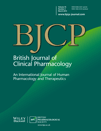
Review Article
Cocoa and chocolate, rich in antioxidant molecules like epicatechin, enhance brain health, stimulate brain perfusion, and reduce the risk of Alzheimer's disease and stroke.
Nehlig A

Systematic Review
Evidence of effectiveness of acupuncture for PTSD is encouraging but not cogent. Acupuncture may be a relatively safe alternative for PTSD in contrast to SSRI, if long-term therapy is needed for treatment.
Young-Dae Kim, In Heo, Byung-Cheul Shin, Cindy Crawford, Hyung-Won Kang, Jung-Hwa Lim,

Randomised Controlled Trial
The daily use of avocado-soybean unsaponifiable-expanscience (ASU-E) reduces the progression of joint space narrowing in patients with hip osteoarthritis.
Maheu E, Cadet C, Marty M, Moyse D, Kerloch I, Coste P, Dougados M, Mazières B, Spector TD, Halhol H, Grouin JM, Lequesne M
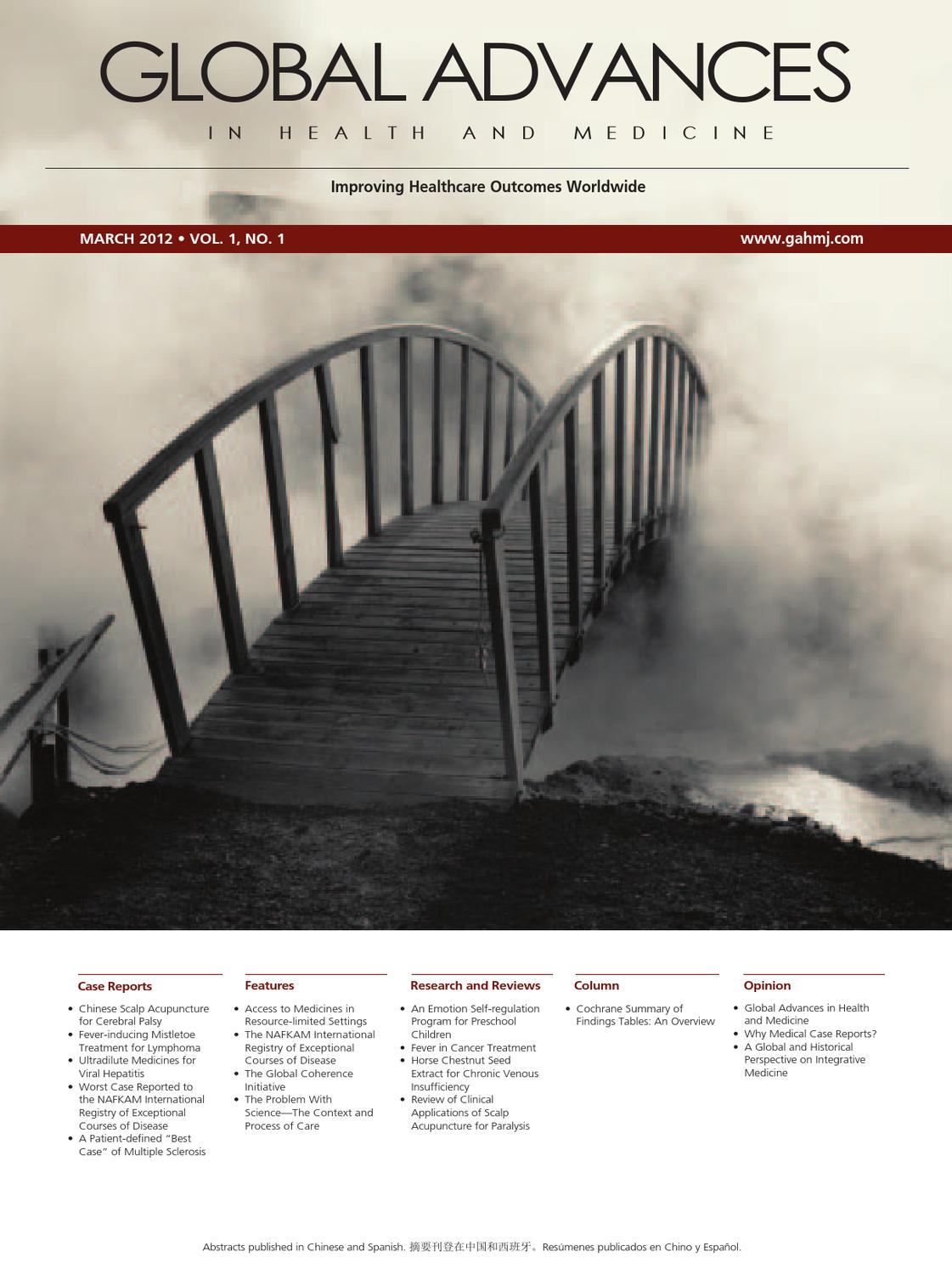
Case Report
Chinese scalp acupuncture, incorporating Western medical knowledge of the cerebral cortex, can significantly improve the quality of life and physical capacity of patients suffering from multiple sclerosis.
Hao JJ, Cheng W, Liu M, Li H, Lü X, Sun Z

Systematic Review
The clinical efficacy of acupuncture appeared to be supported by evidence obtained from basic neuroendocrinological studies.
Kaicun Zhao

Systematic Review
Limited evidence supporting the benefit of acupressure in alleviating menstrual pain and reducing symptoms.
Jiang H, Ni S, Li J, Liu M, Li J, Cui X, Zhang B

Review Article
Pomegranates and their extracts may provide natural alternatives to conventional drugs due to their potent activity against various bacterial and viral pathogens.
Howell AB, D'Souza DH

Clinical Study
Consuming two kiwifruits daily can improve overall mood, particularly for individuals starting with moderate mood disturbance.
Carr AC, Bozonet SM, Pullar JM, Vissers MCM
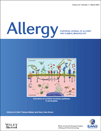
Randomised Controlled Trial
Acupuncture was found to be a more effective and safe treatment for allergic rhinitis than sham acupuncture or no treatment.
Choi SM, Park JE, Li SS, Jung H, Zi M, Kim TH, Jung S, Kim A, Shin M, Sul JU, Hong Z, Jiping Z, Lee S, Liyun H, Kang K, Baoyan L

Systematic Review
There is evidence supporting the effectiveness of acupuncture for plantar heel pain comparable to that available for conventionally used interventions, such as stretching, night splints or dexamethasone.
Clark RJ, Tighe M

The traditional Chinese medicine diagnosis of Cold and Hot Syndromes based on tongue-coating appearance successfully detects signals in the tongue-coating microbiomes that are indicators of the entire body's status.
Bai Jiang, Xujun Liang, Yang Chen, Tao Ma, Liyang Liu, Junfeng Li, Rui Jiang, Ting Chen, Xuegong Zhang & Shao Li
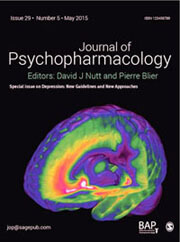
Review Article
Curcumin, a component of Indian spice turmeric, presents a potential natural treatment for depression, influencing neurotransmitters and protecting against several biological systems compromised in depression.
Lopresti AL, Hood SD, Drummond PD

Experimental Study
Adzuki bean exhibited the strongest antiproliferative properties in a dose-dependent manner against all digestive system cancer cell lines, ovary cancer cell SK-OV-3 and breast cancer cell MCF-7 among all legumes tested.
Xu B, Chang SKC

Systematic Review
Acupuncture combined with exercise is effective for shoulder pain after stroke.
Jung Ah Lee, Si-Woon Park, Pil Woo Hwang, Sung Min Lim, Sejeong Kook, Kyung In Choi, and Kyoung Sook Kang.
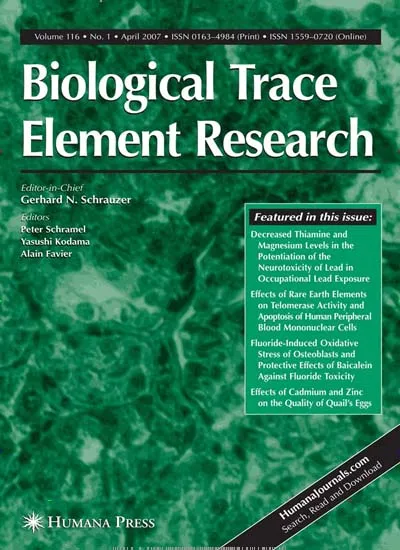
Experimental Study
Heme iron and non-heme iron, presented as ferrous sulfate, do not compete for absorption when ingested on an empty stomach.
Gaitán D, Olivares M, Lönnerdal B, Brito A, Pizarro F

Systematic Review
Soybean isoflavones, whether extracted or synthesized, prove significantly effective in reducing the frequency and severity of hot flashes in perimenopausal and postmenopausal women.
Taku K, Melby MK, Kronenberg F, Kurzer MS, Messina M
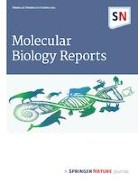
Systematic Review
Traditional Chinese medicines had a better effect on the normalization of alanine aminotransferase and disappearance of radiological steatosis in the treatment of non-alcoholic fatty liver disease.
Shi KQ, Fan YC, Liu WY, Li LF, Chen YP, Zheng MH

Experimental Study
Blueberry consumption prior to puberty can significantly prevent bone cell senescence and bone loss induced due to the removal of ovaries in rats.
Zhang J, Lazarenko OP, Blackburn ML, Badger TM, Ronis MJJ, Chen JR

Systematic Review
Most studies suggest that acupuncture can modulate the activity within specific brain areas, and the evidence based on meta-analyses confirmed some of these results.
Huang, W., Pach, D., Napadow, V., Park, K., Long, X., Neumann, J., Maeda, Y., Nierhaus, T., Liang, F., & Witt, C. M.

Experimental Study
Korean pears potentially boost key alcohol-metabolizing enzymes, aiding alcohol detoxification, with effects that may vary due to human ALDH2 polymorphisms.
Lee HS, Isse T, Kawamoto T, Woo HS, Kim AK, Park JY, Yang M

Complementary and alternative medicine (CAM) therapies have the potential to provide supportive care for women presenting with threatened miscarriage.
Betts D, Smith CA, Hannah DG.

Systematic Review
Regular chocolate or cocoa consumption, rich in flavan-3-ols, has been associated with improved insulin resistance and blood vessel function, suggesting potential cardiovascular benefits.
Hooper L, Kay C, Abdelhamid A, Kroon PA, Cohn JS, Rimm EB, Cassidy A

Systematic Review
Acupuncture appears to improve clinical pregnancy rate and live birth rate in women undergoing in vitro fertilization, but the choice of control used in studies may influence the outcomes.
Zheng, C. H., Huang, G. Y., Zhang, M. M., & Wang, W.

Experimental Study
Pomegranate polyphenols have notable antioxidant and antiatherogenic effects that lessen cholesterol, oxidized lipids accumulation, and atherosclerosis development in arterial macrophages.
Aviram M, Rosenblat M

Systematic Review
Ginger can reduce the direct activation of type 3 and 4 afferent nerve fibers by substances such as bradykinin and sensitization of afferent fibers by prostaglandins and cytokines.
Rohini Terry, PhD, Paul Posadzki, PhD, Leala K. Watson, BSc (Hons), Edzard Ernst, MD, PhD

Systematic Review
Current evidence from this meta-analysis of randomized trials shows that acupuncture is effective in reducing severity of depression.
Trine Stub, Terje Alræk, Jianping Liu

Review Article
It is frequently stated that it takes an average of 17 years for research evidence to reach clinical practice.
Morris ZS, Wooding S, Grant J

Randomised Controlled Trial
Consumption of tart cherry juice can increase exogenous melatonin that is beneficial in improving sleep duration and quality and might be of benefit in managing disturbed sleep.
Howatson G, Bell PG, Tallent J, Middleton B, McHugh MP, Ellis J

Systematic Review
Acupuncture shows potential for reducing dysmenorrhoea scores in endometriosis patients.
Zhu X, Hamilton KD, McNicol ED

Systematic Review
Acupuncture might result in improvement in some outcomes in children with autism spectrum disorders.
Cheuk DKL, Wong V, Chen WX

Systematic Review
These results suggest the possible antihypertensive effects of black sesame meal on improving antioxidant status and decreasing oxidant stress.
Wichitsranoi, J., Weerapreeyakul, N., Boonsiri, P. et al.

Animal Study
Pomegranate extracts enhance bone formation and increase bone calcium content in mice.
Monsefi M, Parvin F, Talaei-Khozani T

Randomised Controlled Trial
Dried plum consumption enhances bone mineral density in postmenopausal women, primarily by reducing the rate of bone turnover.
Hooshmand S, Chai SC, Saadat RL, Payton ME, Brummel-Smith K, Arjmandi BH

Meta-Analysis
Consumption of dark chocolate and cocoa products has been shown to significantly reduce serum levels of low-density lipoprotein (LDL) and total cholesterol (TC), indicating potential cardiovascular benefits.
Tokede OA, Gaziano JM, Djoussé L

Randomised Controlled Trial
Pumpkin seed oil supplementation may increase good cholesterol levels, lower diastolic blood pressure, and alleviate menopausal symptoms in postmenopausal women.
Gossell-Williams M, Hyde C, Hunter T, Simms-Stewart D, Fletcher H, McGrowder D, Walters CA

Experimental Study
Angelica sinensis polysaccharide (ASP) efficiently stimulates erythropoietin secretion and suppresses the liver's hepcidin expression, potentially aiding in treatments of hepcidin-induced diseases.
Wang KP, Zeng F, Liu JY, Guo D, Zhang Y

Randomised Controlled Trial
Short-term acupuncture treatment may provide long-term relief in mild-to-moderate idiopathic carpal tunnel syndrome patients.
Yang CP, Wang NH, Li TC, Hsieh CL, Chang HH, Hwang KL, Ko WS, Chang MH
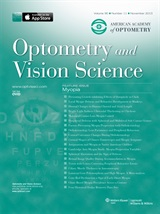
Randomised Controlled Trial
Daily goji berry supplementation increases antioxidant levels and protects visual health in the elderly, though the exact mechanism remains unclear.
Bucheli P, Vidal K, Shen L, Gu Z, Zhang C, Miller LE, Wang J

Randomised Controlled Trial
Acupuncture can provide pain relief to patients with plantar fasciitis.
Shi Ping Zhang , Tsui-Pik Yip, Qiu-Shi Li

Review Article
Cumin and caraway seeds have shown diverse medicinal applications, thanks to their rich essential oils, as revealed by recent experimental studies.
Johri RK

Systematic Review
Acupuncture-related therapies may have potential as an intervention for primary dysmenorrhea.
Yang, H., Liu, C.-Z., Chen, X., Ma, L.-X., Xie, J.-P., Guo, N.-N., Ma, Z.-B., Zheng, Y.-Y., Zhu, J., & Liu, J.-P.

Clinical Study
Chinese acupuncture is safe and can be efficient in alleviating pain in patients suffering from temporomandibular disorder without clear joint pathology.
Noiman M, Garty A, Maimon Y, Miller U, Lev-Ari S.

Systematic Review
A meta-analysis of acupuncture versus steroid block therapy favored acupuncture in terms of responder rate.
Lee, H., Shim, H., Shin, B., Jung, A., Lee, M., & Ernst, E.

Systematic Review
The evidence reviewed previously suggests that acupuncture is of similar efficacy as carbamazepine but with fewer adverse effects in treatment of trigeminal neuralgia.
Liu H, Li H, Xu M, Chung KF, Zhang SP
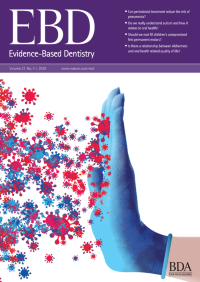
Review Article
There is limited evidence that acupuncture is more effective than sham acupuncture in alleviating pain and masseter muscle tenderness in temporomandibular disorders.
Jens C Türp

Systematic Review
Traditional Chinese medicinal herbs may alleviate some symptoms of haemorrhoids, including bleeding and inflammation.
Gan T, Liu Y, Wang Y, Yang J

Experimental Study
Pomegranate extract can inhibit key cellular pathways and activities involved in the progression of osteoarthritis.
Rasheed Z, Akhtar N, Haqqi TM

Theoretical Article
Chamomile, with its numerous terpenoids and flavonoids, has a vast range of medicinal uses and is being developed as a human health promoting therapeutic agent.
Gupta
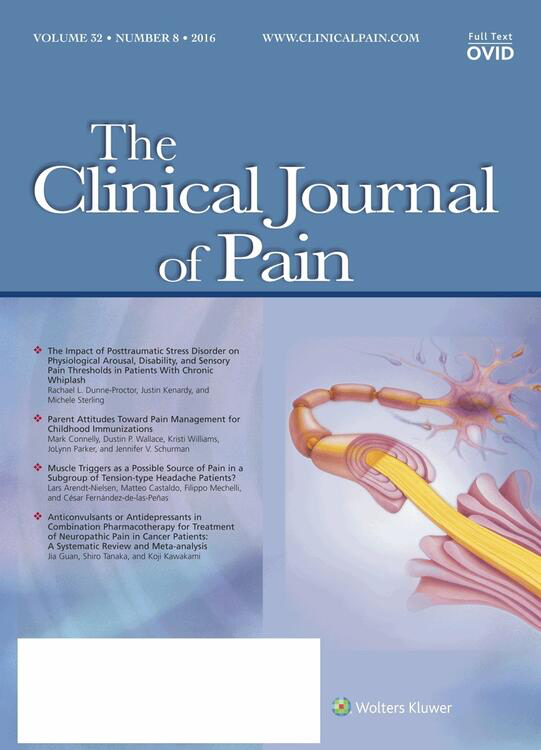
Systematic Review
Acupuncture is a reasonable adjunctive treatment for producing a short-term analgesic effect in patients with painful temporomandibular disorder symptoms.
La Touche R, Goddard G, De-la-Hoz JL, Wang K, Paris-Alemany A, Angulo-Díaz-Parreño S, Mesa J, Hernández M

Randomised Controlled Trial
Tart cherry juice blend yielded modest improvements in sleep for older adults with insomnia, exhibiting effects similar to or better than natural products like valerian and melatonin.
Pigeon WR, Carr M, Gorman C, Perlis ML

Systematic Review
Long-term consumption of tea catechins could be beneficial against high-fat diet-induced obesity and type II diabetes and could reduce the risk of coronary disease.
Chacko, S.M., Thambi, P.T., Kuttan, R. et al.

Systematic Review
Study finds acupuncture for PMS holds promise.
Seung-HunChoaJongwooKimb
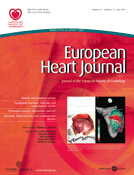
Cohort Study
Chocolate consumption appears to lower cardiovascular disease risk, in part through reducing blood pressure.
Buijsse B, Weikert C, Drogan D, Bergmann M, Boeing H
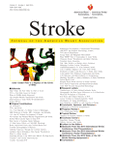
Systematic Review
Randomized clinical trials demonstrate that acupuncture may be effective in the treatment of poststroke rehabilitation.
Ping Wu , Edward Mills , David Moher , and Dugald Seely

Systematic Review
Acupuncture shows promise for reducing pain in primary dysmenorrhea compared to pharmacological treatment or herbal medicine.
Cho SH, Hwang EW

Systematic Review
Clinical studies have shown that acupuncture may have a beneficial effect on insomnia compared with Western medication.
Cao H, Pan X, Li H, Liu J.
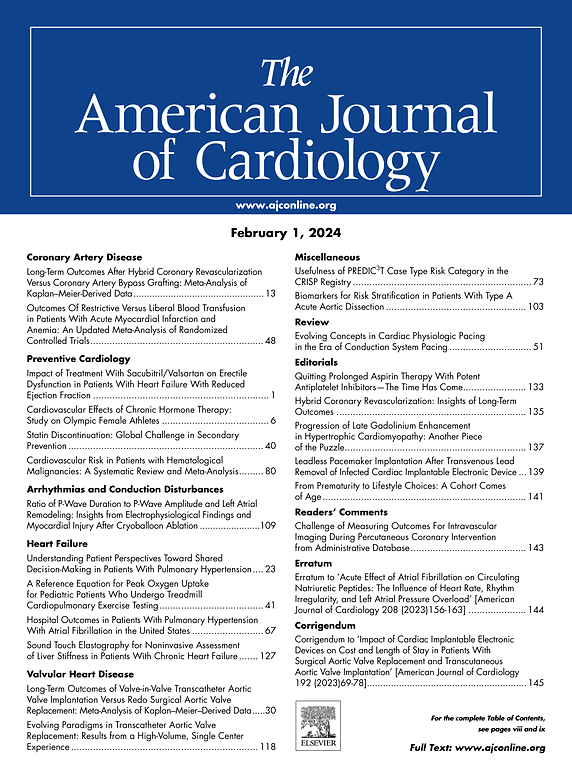
Randomised Controlled Trial
Pomegranate juice consumption doesn't significantly affect overall progress of carotid intima-media thickness, but may slow its progression in subjects with high oxidative stress and lipid issues.
Davidson MH, Maki KC, Dicklin MR, Feinstein SB, Witchger MS, Bell M, McGuire DK, Provost JC, Liker H, Aviram M

Experimental Study
Bovine meats exhibit low variations in total iron content, with more than 60% of it consisting of heme iron.
Valenzuela C, López de Romaña D, Olivares M, Morales MS, Pizarro F

Experimental Study
The extract from Chrysanthemum Indicum Linné effectively reduces inflammation in mouse skin when induced, hinting at potential therapeutic applications for immune-related skin diseases.
Lee DY, Choi G, Yoon T, Cheon MS, Choo BK, Kim HK

Experimental Study
Blueberry consumption can prevent bone loss and positively impact bone metabolism in ovariectomized rats.
Devareddy L, Hooshmand S, Collins JK, Lucas EA, Chai SC, Arjmandi BH

Experimental Study
Consumption of garlic boosts the production of nitric oxide and interferon-alpha in the body, which may prove beneficial in the management of viral or proliferative diseases.
Bhattacharyya M, Girish GV, Karmohapatra SK, Samad SA, Sinha AK

Experimental Study
Tremella fuciformis, a mushroom, shows potential as a protective agent against neurodegenerative diseases like Alzheimer's by promoting cell growth and reducing toxicity.
Park KJ, Lee SY, Kim HS, Yamazaki M, Chiba K, Ha HC

Randomised Controlled Trial
Gui-zhi-fu-ling-wan, a herbal therapy, depicts to be a viable alternative to hormone replacement therapy for treating hot flashes in post-menopausal women experiencing coldness in lower extremities.
Ushiroyama T, Ikeda A, Sakuma K, Ueki M

Randomised Controlled Trial
Drinking mineral water, especially those high in magnesium, helps lower blood pressure among individuals with borderline hypertension and low calcium or magnesium excretion.
Rylander R, Arnaud MJ

Clinical Study
Consumption of pomegranate juice by patients with carotid artery stenosis decreases carotid intima-media thickness and systolic blood pressure, potentially due to its strong antioxidant properties.
Aviram M, Rosenblat M, Gaitini D, Nitecki S, Hoffman A, Dornfeld L, Volkova N, Presser D, Attias J, Liker H, Hayek T
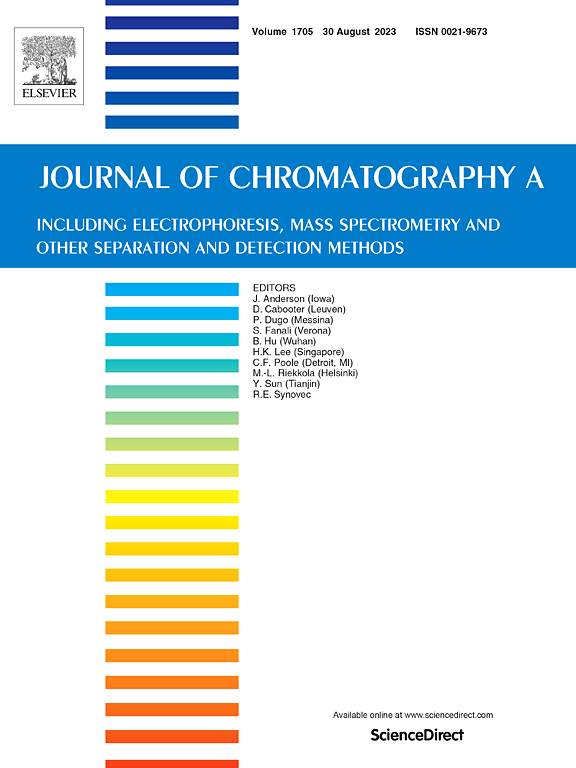
Experimental Study
Matcha tea holds nearly 137 times the concentration of epigallocatechin gallate, an important catechin, compared to common green teas.
Weiss DJ, Anderton CR

Systematic Review
The existing evidence supports the value of acupuncture for the treatment of idiopathic headaches.
Melchart D, Linde K, Berman B, White A, Vickers A, Allais G, Brinkhaus B

Randomised Controlled Trial
Healthy individuals, including those with low iron stores, show reduced nonheme-iron absorption after iron supplementation, leading to larger iron stores that are sustained over time.
Roughead ZK, Hunt JR
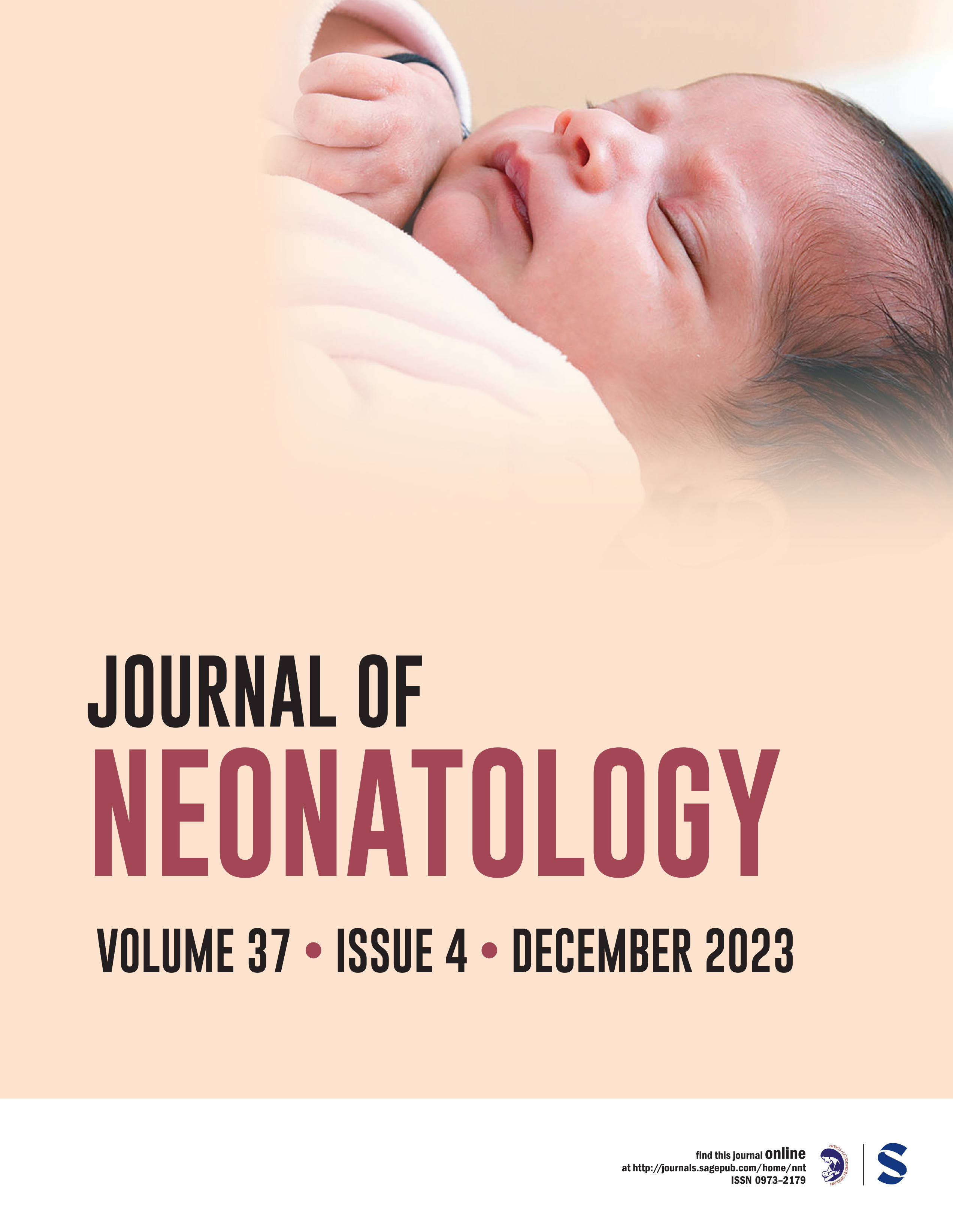
Clinical Study
Female neonates show significantly higher cord serum ferritin concentrations than male neonates, and this difference is crucial when assessing their iron nutriture post-birth.
Tamura T, Hou J, Goldenberg RL, Johnston KE, Cliver SP
Executive Summary
Write an executive summary in the form of a blog article on the topic of "Research into Chinese medicine treatment for HA" summarising the research below and using language that can be easily understood by patients and avoiding medical jargon using a professional and caring tone of voice.
Write an executive summary in the form of a blog article on the topic of "Researched Chinese medicine treatments for HA" summarising the research below in an objective and easy to understand way, and using language that can be easily understood by patients. Group the article into Chinese medicine treatments first, followed by nutrition and other treatments. Avoid using medical jargon and use a professional and caring tone of voice.
Write me a concise but easy to understand executive summary on the topic of "Chinese medicine treatments for HA" based on the following research that I will give you. Your summary should be 2 paragraphs long in Australian English spelling and include references to the studies.
A Clinical Study published in 2025 in the journal Scientific Reports found that Jujube syrup presented improved results in treating pediatric functional constipation compared to polyethylene glycol, demonstrating a potentially effective and safe alternative treatment. The researchers conducted a double-blind, randomized clinical trial involving children aged 2-10 years old diagnosed with functional constipation. These children were selected from patients referred to the gastroenterology clinic of 17-Shahrivar Hospital in Rasht, Iran. The eligible candidates were divided into two groups, each receiving either polyethylene glycol (PEG) or Ziziphus jujuba syrup (ZS) in a dosing range of 1-5 cc/kg/day. The patients were monitored over a three-month period, with bi-weekly check-ups in the first month, followed by monthly check-ups for the next two months. Additionally, liver and kidney function tests, as well as blood sugar levels, were verified at the start and end of the study. Out of 90 qualified children, 32 patients in the PEG group and 30 in the ZS group finished the follow-ups. The therapeutic response score in the group administered ZS showed a distinct improvement compared to those given PEG. Similarly, the average number of encopresis and pain scores, as measured by a visual analog scale, showed a significant reduction in the ZS group compared to the PEG group. Other indices, such as frequency of defecation and medication adherence, also showed a noticeable improvement in the ZS group. With only a few self-limiting side effects reported in the PEG group, it was determined that ZS provides a potential choice for functional constipation treatment without any adverse events or liver and kidney injury.
A Experimental Study published in 2024 in the journal Journal of Agricultural and Food Chemistry found that The ZJMP-2 polysaccharide fraction from jujube, consisting of various sugars and acid, significantly enhances immune cell activity and stimulates lymphocyte proliferation. The researchers isolated and purified a new water-soluble polysaccharide fraction, ZJMP-2, from the Jujube plant. Various scientific methods including Fourier transform infrared spectroscopy, high-performance gel permeation chromatography-laser light scattering, gas chromatography-mass spectrometry, scanning electron microscopy, atomic force microscopy, and nuclear magnetic resonance analyses were employed to characterize ZJMP-2. This polysaccharide is composed of glucose, galactose, arabinose, rhamnose, and galacturonic acid. The study determined its molecular structure and variations that may contribute to its immunoregulatory effect. In terms of the results, ZJMP-2 substantially increased the expression levels of proteins that are important in the immune response, resulting in the activation of macrophages - immune cells that destroy harmful organisms - and promoting the proliferation of lymphocytes - another type of immune cell. This resulted in observable activity in RAW264.7 cells and spleen lymphocytes. ZJMP-2 was also found to boost the heart, spleen, and bone marrow indices, along with spleen cell counts and peripheral blood cell counts. In addition, the number of heart and bone marrow cells in mice increased through the use of ZJMP-2.
A Experimental Study published in 2024 in the journal International Journal of Biological Macromolecules found that A polysaccharide from Tremella aurantialba improves ulcerative colitis symptoms by targeting epithelial cell ferroptosis and modulating the gut microbiota. The methodology used in this research involved isolating TA 2-1, a specific polysaccharide from Tremella Aurantialba, and studying its effects on ulcerative colitis. This was done by introducing it to Caco-2 cells that were undergoing ferroptosis and assessing its impact on cell viability. The influence of TA 2-1 was also examined in mice with artificially induced ulcerative colitis, verifying its ameliorating effects in an in-vivo context. The structure of TA 2-1 and its components were analysed and the polysaccharide's interaction with gut microbiota was explored to understand how it might modulate symptoms or prevent cell death. The results of this study showed that TA 2-1 does not only decrease the rate of cell death in epithelial cells undergoing ferroptosis, but it also repairs the intestinal barrier by upregulating specific proteins such as claudin-1 and zonula occludens-1. TA 2-1 was also found to suppress lipid peroxidation, thus inhibiting ferroptosis. Further investigation revealed that TA 2-1 may alleviate ulcerative colitis by influencing the composition or metabolites of gut microbiota. This research offers promising insight into the potential of TA 2-1 in treating ulcerative colitis.
A Experimental Study published in 2024 in the journal PLOS One found that Morinda citrifolia root extracts display significant antibacterial activity against various bacteria, with the highest impact against Campylobacter spp. The study investigates the antibacterial properties of various forms of Morinda citrifolia (root, leaf, and fruit- fresh, dried, and fermented). These were extracted through distilled water and varied concentrations of ethanol(60%, 80%, 100%). The antibacterial assessments were conducted using the agar well diffusion method, utilizing Ciprofloxacin as a positive control. While all forms of the plant showed some degree of antibacterial performance, the root extracts were found to have the most significant influence. The analysis of the results reveals a variance in antibacterial activity amongst the different extracts and the concentration of the solvents used. Among the solvents, the 100% ethanol extracts showed the most significant zones of inhibition. Certain bacteria, such as Enterococcus faecium, Campylobacter spp., and Bacillus cereus, were found to be more sensitive to the plant extracts. In contrast, Shigella spp. and Klebsiella spp. demonstrated resistance to most of the extracts. The study concludes a promising potential for antibacterial applications of M. citrifolia extracts.
A Network Pharmacology published in 2024 in the journal Medicine found that The Danggui Sini Decoction, a Traditional Chinese Medicine, may prevent myocardial infarction by positively influencing cell proliferation, inflammatory responses, and aging processes. The researchers utilized network pharmacology and molecular docking to uncover the main components and targets of Danggui Sini Decoction (DSD) in the treatment of myocardial infarction. They examined myocardial infarction-related genes using the Genecards database and screened the active ingredients of DSD based on criteria relating to oral bioavailability and drug likeness. To understand the relationship between these components and their potential targets, the researchers generated a protein-protein interaction network diagram using the STRING database. Findings of the investigation led to the identification of 120 primary active ingredients and 561 putative active target genes. The main therapeutic targets were a number of genes associated with processes such as inflammation and cell proliferation. Furthermore, the researchers conducted gene ontology and Kyoto encyclopedia of gene and genome analyses to understand the pathways that DSD acts upon in treating myocardial infarction. The results indicated that DSD treatment involves the positive regulation of certain cellular cascades signifying positive impact on cell proliferation, inflammatory responses, aging, and other biological processes. Molecular docking results indicate potential interactions between DSD and certain genes, suggesting its role in treatment.
A Review Article published in 2024 in the journal Life found that Pomegranate extract could potentially benefit women's reproductive health, enhance fertility, regulate menstrual cycles, support pregnancy, and help treat polycystic ovary syndrome. In establishing the potential benefits of pomegranate extract in women's reproductive health, a wide array of methods was employed. Primarily, these included in vitro studies, animal modeling and certain clinical trials. Analyses of the antioxidant properties of the extract were done to ascertain its effectiveness in reducing oxidative stress and consequently, improving fertility. The influence of pomegranate extract on hormonal imbalances and menstrual regulation was also studied. Discussions on the results emphasized the potential of pomegranate extract in supporting women's reproductive health. The extract was found beneficial in enhancing fertility, regulating menstruation and supporting pregnancy. Further, it could help in polycystic ovary syndrome therapy by improving insulin sensitivity and reducing oxidative damage. Its rich nutrient composition was appreciated for potentially fostering placental development and fetal growth, thus possibly mitigating the risk of early birth. Apart from reproductive health, some studies pointed towards pomegranate extract's potential anticancer properties, primarily against breast cancer.
A Review Article published in 2024 in the journal Current Nutrition Reports found that Ziziphus jujuba and its main components, lupeol and betulinic acid, show promise in treating complications of metabolic syndrome, including diabetes, obesity, and hypertension. The research assessed the properties of Ziziphus jujuba and its main bioactive agents, lupeol and betulinic acid, in relation to metabolic syndrome. Investigations focussed on their potential roles in glucose uptake enhancement, hepatic glucose synthesis reduction, insulin sensitivity improvement, and lipid profile modulation. Studies involved identifying the influence of these substances on key signaling pathways and insulin signaling proteins, as well as evaluating their anti-adipogenic effects and capacity to improve endothelial function. Ziziphus jujuba and its constituents exhibited potential therapeutic benefits for metabolic syndrome by facilitating glucose uptake, reducing glucose synthesis, and improving insulin sensitivity. They also showed potential in moderating lipid synthesis and fat accumulation, demonstrating anti-fatty effects and a capacity to influence adipogenic enzymes and transcription factors. Moreover, these substances demonstrated enhanced endothelial function, reflecting positively on vascular health. These accumulative findings suggest promising potential for Z. jujuba, lupeol, and betulinic acid as natural treatments for metabolic syndrome complications.
A Animal Study published in 2024 in the journal Nutrients found that Manuka honey has demonstrated the potential to inhibit the proliferation of human breast cancer cells and stimulate apoptosis in these cells. In the experiment, Manuka honey was applied to three different types of cells: MCF-7 human breast cancer cells, MDA-MB-231 breast cancer cells, and non-malignant human mammary epithelial cells. The concentrations applied ranged from 0.3 to 5.0% to observe different effects. In addition to inhibiting cancer cell proliferation, the honey was tested for its ability to cause apoptosis (cell death) among the MCF-7 cells. It was also compared to the effects of tamoxifen, an antiestrogen medication used in breast cancer treatment. The results showed that Manuka honey was able to significantly inhibit the proliferation of MCF-7 cells, though its effects were less pronounced in the MDA-MB-231 breast cancer cells. The non-malignant cells were not affected. The honey's antitumor activity was comparable to that of tamoxifen. Moreover, Manuka honey stimulated apoptosis in the MCF-7 cells. It was also observed that the honey activated AMPK, which inhibits specific cellular growth signals, and reduced STAT3 levels, a protein often elevated in tumors.
A Systematic Review published in 2024 in the journal Journal of Ethnopharmacology found that Guizhi Fuling Wan, a traditional Chinese herbal formula, can inhibit endometriosis growth and enhance the effects of western medicines used to treat the condition. In the methodology, a bibliographic assessment of publications on "Guizhi Fuling Wan" and "endometriosis" indexed in international and chinese databases was conducted. Out of these, five pre-clinical studies and thirteen clinical were selected. Thereafter, targeted molecules of each herb in the formula were extracted from a Traditional Chinese Medicine Systems Pharmacology Database and compared with endometriosis-related genes from DisGeNET. To expose potential therapeutic mechanisms of Guizhi Fuling Wan, pathway and gene ontology analyses were performed using David Bioinformatics Resources. In the results discussion, it was found that both pre-clinical and clinical studies suggested that Guizhi Fuling Wan can inhibit the growth of endometriotic lesions by modulating immunity, apoptosis-regulating molecules, and angiogenesis-associated factors, while also enhancing the effects of western medicines for endometriosis. The formula likely achieves this through its impact on key pathways involved in diabetes complications, Kaposi sarcoma-associated herpesvirus infection, human cytomegalovirus infection, and atherosclerosis, which all regulate inflammation, angiogenesis, and apoptosis. The review also notes a strong connection between endometriosis and abnormal inflammatory, angiogenic, and apoptotic activities.
A Review Article published in 2024 in the journal Molecules found that Beer, specifically low-purine and high-active ingredient beer such as ginger, ginseng, and coix-lily, possess functional ingredients contributing to controlling chronic human diseases. The study incorporated a comprehensive analysis of information derived from PubMed, Google, CNKI, and ISI Web of Science databases, integrating published data from 1997 to 2024. The researchers set out to elucidate the physiological impacts of beer's functional ingredients, with an intense concentration on those exerting potential health benefits. The types of beer explored encompass those produced from pure barley malt, presenting low purine and high active ingredients. More specific attention was directed towards uniquely brewed variants such as ginger, ginseng, and coix-lily beer, which replicate ancestral practices from approximately 9000 years ago. The discussion of results inferred the observable health benefits of beer in combating 26 chronic diseases, attributing these effects primarily to the physiological behavior of the beer's polyphenols, melatonin, minerals, bitter acids, vitamins, and peptides. Importantly, these health impacts of beer were found to closely resemble those demonstrated by barley, signifying the consequential role of barley's functionality in the equation. Furthermore, it was highlighted that the production of low-purine beer could be facilitated through enzymatic and biological degradation and adsorption of purines, in conjunction with the addition of dandelion. This research, hence, provides a crucial scientific foundation for the advancement of functional beers that foster health benefits.
A Cohort Study published in 2024 in the journal Nutrition Journal found that Higher consumption of ultra-processed food by pregnant women was linked to an increased risk of infantile atopic dermatitis within the first year of life. The research used 861 pairs of pregnant women and their offspring from the Mothers' and Children's Environmental Health project in Korea. These women’s dietary intake was measured using the 24-hour recall method during 12-28 weeks gestation. Foods were classified as ultra-processed following the NOVA classification and their consumption was calculated as the proportion of total energy intake, with participants categorized into quartiles. The prevalence of infantile atopic dermatitis was assessed based on their medical histories and according to the International Study of Asthma and Allergies in Childhood criteria. The results revealed that children born to mothers in the highest quartile of ultra-processed food consumption, compared to the lowest quartile, showed a higher risk towards atopic dermatitis within 12 months. This relationship became stronger after adjusting for certain confounding variables. Additionally, the link stayed consistent even after adjusting based on the Korean Healthy Eating Index, which measures diet quality.
A Randomised Controlled Trial published in 2024 in the journal Scientific Reports found that A combined Mediterranean, low-FODMAP diet along with partial enteral nutrition has shown promise in reducing ulcerative colitis activity and improving patients' quality of life. In the study, fifty patients with active, mild to moderate ulcerative colitis were randomly allotted one of two diets: a combined Mediterranean, low-FODMAP diet supplemented with partial enteral nutrition, or a standard diet. These diets were implemented for a duration of 6 weeks. Before and after the intervention, various indicators of the patients' conditions were measured. These variables included a disease activity index, the patients' quality of life, and concentrations of various inflammatory and oxidative stress factors in the blood. All of these were measured using tested and trustworthy questionnaires, in conjunction with blood sampling. The combined diet was found to result in significantly decreased disease activity index values, compared to both the control diet and the baseline data. Simultaneously, patients on the combined diet reported greater enhancements in their quality of life, compared to both the control group and the initial data. Lastly, the serum level of a protein called "high sensitive C-reactive protein," known to be a general marker of inflammation within the body, was found to be reduced in the combined diet group. However, changes in the serum total antioxidant capacity were found to be statistically insignificant across both groups.
A Review Article published in 2024 in the journal Nutrients found that Carrageenan, a common food additive, potentially exacerbates Inflammatory Bowel Disease (IBD) symptoms by altering gut microbiota, inducing intestinal permeability, and triggering inflammation. The study involved a comprehensive literature review, where the researchers carried out an in-depth analysis of past studies evaluating carrageenan's impact on gut health, particularly in relation to Inflammatory Bowel Disease (IBD). Using predefined search terms, they scoured medical and scientific databases, MEDLINE and SCOPUS. They considered research focusing on carrageenan's effect on the gut microbiota, intestinal permeability, inflammatory processes, its relationship with cancer, and its role as a food additive in the context of autoimmune diseases. The review divulged that degraded carrageenan, as used in animal studies, appeared to promote intestinal ulceration and inflammation, suggesting a potential risk in exacerbating IBD. Additionally, carrageenan also appeared to disrupt gut microbiota, reducing bacterial diversity therein, and increased intestinal permeability, which in turn could possibly contribute to 'leaky gut' syndrome. Interestingly, some studies suggested a possible anti-cancer effect, since carrageenan might inhibit the growth of cancer cells by affecting cell cycle progression. Besides, the additive seemed to elevate glucose intolerance and insulin resistance.
A Meta-Analysis published in 2024 in the journal Clinical Nutrition Open Science found that Daily intake of Ziziphus jujuba can control weight and improve lipid profile indicators. In the methodology, randomized clinical trials were sourced from online resources like PubMed, Scopus, and ISI Web of Science till October 2022. From these resources, four suitable articles were picked for this research. The results section suggests that a notable decrease in body mass index (BMI), triglycerides (TG), total cholesterol (TC), and low-density lipoprotein (LDL) is observed in individuals consuming Ziziphus jujuba. However, there were no significant changes observed in fasting blood glucose (FBG) and high-density lipoprotein (HDL). These findings underscore the potential beneficial impact of Ziziphus jujuba consumption on certain metabolic indicators.
A Randomised Controlled Trial published in 2024 in the journal Complementary Therapies in Medicine found that Consuming jujube notably reduces waist circumference, triglycerides, and stress, while increasing high-density lipoprotein cholesterol in subjects with metabolic syndrome. In this parallel-group, randomized controlled trial, sixty participants diagnosed with metabolic syndrome were randomly assigned to either receive 30g of dried jujube powder or a placebo for an eight-week period. They were instructed to consume half of their given powder at two different points in the day. Four measurements were taken as primary outcomes: lipid profile, fasting blood glucose, waist circumference, and blood pressure. Additionally, mental health measures, such as depression, anxiety, and stress, were evaluated as secondary outcomes. The data analysis showed that consuming jujube didn't lead to significant reductions in fasting blood glucose, total cholesterol, low-density lipoprotein cholesterol, blood pressure, or depression and anxiety scores. However, compared to the placebo group, the group consuming jujube showed a key reduction in waist circumference and triglycerides, and an increase in high-density lipoprotein cholesterol. Moreover, an improvement in stress scores was observed in the jujube group. The study, however, had methodological shortcomings regarding effective blinding and testing for herb purity and potency.
A Systematic Review published in 2024 in the journal Frontiers in Pharmacology found that The review reveals that nutritional supplements, particularly fish oils, vitamins, trace elements, and phytochemical extracts, show promising therapeutic potential for Dry Eye Disease management. The methodology used in the research paper mainly focuses on evaluating different oral nutritional supplements with varied compositions and dosages, in order to assess their impact on Dry Eye Disease symptoms. These supplements include key components like fish oils, vitamins, trace elements, and extracts from plants, recognized for their potential nutritional value. Emphasizing the role of nutrition in combating ocular surface diseases, the research also emphasizes the imbalance caused by deficiencies in polyunsaturated fatty acids and vitamin insufficiencies, which can lead to ocular issues such as inflammation and oxidative stress. The results discussion outlines considerable benefits of using these supplements, not only for managing Dry Eye Disease symptoms but also potentially for overall ocular health. It was observed that nutrients in these supplements hold promising therapeutic qualities, presenting new perspectives for supplement combinations in Dry Eye Disease treatment. Beyond the well-known nutrients, it was suggested that exploring novel nutrients could help establish even more effective management strategies for Dry Eye Disease.
A Animal Study published in 2024 in the journal Nutrients found that Carrageenan, a common food additive, has dual aspects, being both useful in drug delivery and food printing, while potentially harmful via inducing intestinal inflammatory conditions. This study investigates the dual roles of carrageenan, a naturally occurring polysaccharide. It is used in creating edible films and encapsulating drugs, and has potential uses in food printing. Moreover, it can regulate the composition of intestinal microflora, including promoting the increase of Bifidobacterium bacteria. The research shines a light on the harmful side of carrageenan as well by focusing on its interactive effects with intestinal microflora, mucous barrier, and proinflammatory pathways. The study reveals that carrageenan negatively alters intestinal microflora, triggering a breakdown of the mucus barrier, leading to an inflammatory response. This response occurs due to activation of the pro-inflammatory nuclear factor kappa-light-chain-enhancer pathway in the epithelial cells, likely via the mechanism of TLR4 receptor activation, alteration in macrophage activity, production of proinflammatory cytokines, and activation of innate immune pathways. Carrageenan's influence also led to increased levels of Bacteroidetes bacteria, alongside reducing short-chain fatty acid-producing bacteria, ultimately damaging the integrity of the intestinal membrane and reducing the mucin layer. The study finds that those with intestinal inflammation disorders, like Crohn's disease and ulcerative colitis, are particularly vulnerable to these harmful effects.
A Network Pharmacology published in 2024 in the journal Medicine found that Bruceolic oil emulsion, when combined with androgen antagonists, shows the greatest efficacy in treating prostate cancer amongst Chinese patent medicines. A Network Meta-analysis was conducted to review the safety and effectiveness of different Chinese patent medicines in treating prostate cancer. Various databases were systematically searched for randomized controlled trials of Chinese patent medicines until June 1, 2023. The risk of bias in the included studies was assessed using a tool specifically for randomized controlled trials. Main outcome indicators were how effective the medicine was, its impact on Prostate Specific Antigen, and any adverse reaction. Due to varying treatment durations across the studies, Bayesian mesh meta-regression was implemented to investigate the effects of these different courses on efficacy and safety. The meta-analysis considered 27 articles involving 1885 patients and nine types of Chinese patent medicine. The findings indicated that certain medicines, namely Bruceolic oil emulsion and Compound Kushen injection, showed significant advantages compared to androgen antagonists regarding efficacy and Prostate Specific Antigen level reduction. However, no significant difference was found among all the Chinese patent medicines in terms of adverse reactions. With these findings, it was deduced that the effectiveness of Chinese patent medicines isn't greatly impacted by the duration of treatment and dosage. Overall, the combination of Bruceolic oil emulsion and androgen antagonist emerged as a promising intervention measure.
A Randomised Controlled Trial published in 2024 in the journal Aging Clinical and Experimental Research found that Walnut consumption while doing concurrent training improves strength, sleep quality, standing support, cognitive performance and postural balance in elderly men. In the study, twenty healthy elderly men were grouped into two randomly controlled cohorts. There were three training sessions per week featuring a concurrent combination of strength and endurance training. One group received a diet supplemented with 15 grams per day of walnuts (CTW) over six weeks while the other didn't (CT). Their strength, sleep quality, cognitive performance and postural balance were evaluated using an isokinetic strength test, Spiegel questionnaire, Montreal cognitive assessment and balance measurements respectively, 48 hours before and after the intervention period. The results pointed that both groups experienced significant improvements in strength and sleep quality with CTW showing a greater increase in sleep quality. CTW group showed improvements in cognitive performance and postural balance while CT group did not see these benefits. Hence it's observed that combination of concurrent training and walnut consumption was found to be effective in improving strength, sleep quality, cognitive performance and postural balance in elderly men.
A Randomised Controlled Trial published in 2024 in the journal The 14th European Nutrition Conference FENS 2023 found that Daily consumption of walnuts improves sleep quality and reduces daytime sleepiness in healthy young adults. In the above-mentioned experimental trial, 80 young adults were randomly selected to either consume 40 grams of walnuts daily or abstain from eating walnuts and any other nuts for 8 weeks, followed by a two-week break. Actigraphy was used to measure sleep quality, from various dimensions such as duration, latency, awakenings, and sleep efficiency, while daytime sleepiness was measured using the Epworth Sleepiness Scale. Furthermore, the concentration of 6-sulfatoxymelatonin, a melatonin metabolite, was assessed in urine samples collected at two intervals throughout the day and night. This research observed a notable improvement in the subjects' sleep quality after an 8-week period of walnut consumption. The participants experienced shorter sleep latency, greater sleep efficiency, and reduced daytime sleepiness. Additionally, there was a heightened concentration of 6-sulfatoxymelatonin in urine samples collected between 20:00 to 23:00. These results suggest that a daily intake of 40 grams of walnuts may augment the secretion of melatonin, thereby improving sleep quality and reducing daytime sleepiness in healthy young adults.
A Review Article published in 2024 in the journal Rheumatology International found that Despite diet being key in shaping gut microbiota, it surprisingly does not impact the treatment outcomes in individuals with Rheumatoid Arthritis. The process used to understand this paradox involved an umbrella review. This is an examination of multiple research studies and papers that address a similar question, in this case, the effects of diet on Rheumatoid Arthritis (RA). Through a comprehensive analysis of various scientific studies, researchers sought to determine if there was a meaningful link between diet and outcomes in RA patients. The results of this study revealed an unexpected conclusion. Despite the gut microbiota's critical role in shaping the risk of RA, the data showed that diet, which is a dominant factor in shaping our gut microbiota, did not appear to affect the treatment outcomes in individuals with RA. This finding is surprising given the generally accepted understanding of the influence of diet on gut health and correlates with disease states. This conclusion introduces a new perspective in the understanding of RA and its relationship with diet.
A Systematic Review published in 2024 in the journal Phytotherapy Research found that Noni fruit and its compounds demonstrate significant potential in cancer therapy by inducing apoptosis, arresting cell cycle, inhibiting angiogenesis, and modulating immune system. In this study, a systematic review was put forth to scrutinize the therapeutic effectiveness of Morinda citrifolia L., commonly known as Noni, specifically looking into its effects on various forms of cancer. The review employed an extensive search of various scientific databases to gather relevant literature. This included both in vitro and in vivo studies, as well as clinical trials, specifically focusing on the outcomes of Noni fruit and its phytoconstituents - anthraquinones, flavonoids, sugar derivatives, and neolignans - on cancer. A carefully structured keyword and criteria search ensured a robust collection and analysis of data. The plethora of studies compiled point out to Noni's complex role in cancer therapy, underlining its various bioactive elements and their methods of activity. Significant anticancer and chemopreventive potential of Noni was observed, establishing it as potentially a safe and effective option in cancer prevention and treatment.
A Review Article published in 2024 in the journal The Natural Products Journal found that Pumpkin seeds are recognised for their medicinal, nutritional, and cosmetic benefits, including anti-diabetic, heart disease prevention, anti-cancer, and antioxidant qualities. The review article undertakes a comprehensive exploration of the nutraceutical importance of pumpkin seeds. The methodology includes an examination of the various known substances in the seeds, such as phytoestrogens, unsaturated fatty acids, and vitamin E. The study then delves into the different benefits and therapeutic uses of these components stretching from medicinal to nutritional to cosmetic applications. The results of this research are diverse and impressive, with implications for several major health sectors. Their potential anti-diabetic and hypoglycemic properties could suggest a significant role in the management and prevention of diabetes. Meanwhile, the seeds' potential in cardiovascular disease prevention could help to address one of the most pressing global health issues. Moreover, potential anti-cancer properties imply that these seeds could even have a part to play in cancer prevention. The review also described potential additional qualities, such as antidepressant, anti-helminthic (parasite-removing), and antioxidant effects.
A Review Article published in 2024 in the journal Foods found that Jujube, a Chinese native plant with numerous active components, exhibits calming effects, nourishes blood, and strengthens the spleen and stomach, alongside promising neuroprotective and cardiovascular benefits. This study statistically evaluated and tracked the research status of Jujube over the past two decades. The research observed, among other things, the plant's traditional use in calming nerves, nourishing blood, and strengthening the spleen and stomach in traditional Chinese medicine. The study found that the Jujube has numerous effective components, including polysaccharides, phenols, and triterpene acids. The study delved into understanding how these components can provide a variety of pharmacological activities. Such activities include neuroprotection, as well as the prevention and treatment of cardiovascular diseases. The study also expounded comprehensively the molecular mechanisms and efficacies of Jujube. The research, therefore, provides an exhaustive appraisal of the pharmacological potentials of the Jujube plant and its prospective industrial relevance in food and pharmaceutical industries.
A Systematic Review published in 2024 in the journal Advances in Nutrition found that Regular consumption of nuts improves sperm parameters such as motility, vitality, and morphology, potentially promoting successful reproductive outcomes in healthy males. The researchers in this study carried out a systematic review and meta-analysis, exploring the impact of nut intake on fertility outcomes. They sourced data from four databases: Ovid MEDLINE, Embase, CINAHL, and Scopus, from their inception until June 2023. The inclusion criteria for articles were humans of reproductive age who had consumed nuts for a minimum of three months, with any consequent fertility-related outcomes reported. The researchers undertook a random-effects meta-analysis to produce a collective estimate of the effect of nut consumption on four specific sperm characteristics: total motility, vitality, morphology, and concentration. In this review and meta-analysis, the researchers involved four studies, evaluating a total of 875 participants, composed of 646 males and 229 females. For males, two randomized control trials involving 223 individuals revealed that a daily consumption of at least 60g of nuts led to an improvement in sperm motility, vitality, and morphology, compared to those consuming fewer nuts, though it did not affect sperm concentration. Conversely, the non-randomized studies could not discern an association between nut consumption and traditional sperm parameters in males, nor could they establish a link between nut intake and embryo implantation, clinical pregnancy or live birth in males and females undergoing Assisted Reproductive Technology (ART).
A Meta-Analysis published in 2024 in the journal SSRN Electronic Journal found that Diverse acupuncture therapies, especially moxibustion, emerged as superior methods for alleviating ulcerative colitis symptoms in clinical practice. Methodology: The researchers carried out a systematic review and network meta-analysis of clinical efficacy of various acupuncture therapies for ulcerative colitis patients. They accomplished this by sourcing for Clinical Randomized Controlled trial articles from databases such as PubMed, Embase, Cochrane Library, and other data knowledge service platforms, all of which were independently reviewed by two researchers. Several quality assessments were made through Review Manager software, and the meta-analysis was conducted with Stata 16 software. Interventions examined in the analysis included acupuncture, moxibustion, acupoint catgut embedding, and combinations of these therapies with Western medicine. Discussion of results: 52 articles encompassing 3924 patients participated in randomized control trials. The investigation revealed a range of interventions, including different acupuncture therapies and combinations of these therapies with Western medicine. Namely, moxibustion, either on its own or combined with Western medicine, consistently surfaced as top-ranked for overall effectiveness and specific outcomes. Moreover, moxibustion displayed impressive performance in reducing adverse reactions and recurrence rates. Thus, various acupuncture therapies were confirmed as safe and effective for the treatment of ulcerative colitis, with moxibustion emerging as the most effective.
A Review Article published in 2024 in the journal Psychoneuroendocrinology found that Peptic ulcers may be prevented and cured by well-chewed food rich in vegetable fibers and fermented milk products, which increase protective salivary mucus and decrease damaging bile flow. The research conducted a review of epidemiologic studies focusing on the variations of diet and eating patterns related to the prevalence of peptic ulcer disease across various communities. The effects of dietary patterns were assessed on saliva, gastric juice, and bile. The role of bile was specifically examined in the pathogenesis of peptic ulcer, with the argument that it, rather than hydrochloric acid, played a causal role. The role of saliva in preventing peptic ulcers was emphasized, particularly the protective nature of salivary mucus which is swallowed with food. The study then suggested the types of diets that can help prevent peptic ulcers, including those rich in roughage, cellulose, vegetable fibers, and fermented milk products such as ghee and yogurt. The research posited this kind of diet can increase the amount of salivary mucus and consequently decrease the flow rate of harmful bile. The study also noted that these insights showed minor changes in diet, and a slower pace of consumption could lead to substantial health benefits. Moving from dietary composition to eating behaviors, it was suggested that food should be well-masticated to ensure these beneficial digestive processes have an opportunity to occur. At the same time, the research made the case that specific dietary components, particularly short-chain fatty acids like those found in milk products, can retard gall bladder contraction, thereby reducing the amount of bile entering the duodenal lumen. This secondary action further contributes to the potential prevention of peptic ulcers.
A Meta-Analysis published in 2024 in the journal Integrative Cancer Therapies found that Adding Compound Kushen Injection (CKI), a traditional Chinese medicine, to chemotherapy treatment enhanced treatment response and reduced side effects in advanced colorectal cancer patients. This study systematically collected data from a myriad of sources including, but not limited to, PubMed, the Cochrane Library, and ClinicalTrials.gov up to April 20, 2024. An assessment tool, ROB2, was used to measure the quality of the included trials, while data analysis was done using Stata 16. Publication bias was evaluated with the funnel plot and Egger's test. To calculate the final required sample size in this meta-analysis and verify whether the results presented a stable conclusion, trial sequential analysis was used. The data collected from these sixteen trials, consisting of 1378 patients showcased that when compared to chemotherapy alone, the combination of CKI and chemotherapy resulted in improved response rates and enhancement of the patient's performance status. Furthermore, this combination therapy was associated with fewer adverse reactions like leukopenia, thrombocytopenia, gastrointestinal reactions, and liver damage. Patients also exhibited high CD4 ratios and comparatively low CD8 T cell ratios. A subgroup analysis further demonstrated that the response rates improved significantly when CKI was combined with specific chemotherapy regimens. Overall, this data strongly suggests that the addition of CKI to chemotherapy provided statistically significant and clinically relevant improvements in treatment response rates, patient wellbeing, reduction in adverse reactions, and enhanced immune function.
A Data Mining published in 2024 in the journal Traditional Medicine Research found that The traditional Chinese medicine prescription combination of Chrysanthemi Flos, Cassiae Semen, Lycii Fructus, Angelicae Sinensis Radix and Salviae Miltiorrhizae Radix et Rhizoma presents potential for treating retinal diseases. Methodology: The researchers employed data mining to discern a new traditional Chinese medicine (TCM) prescription against retinal diseases and explore its medication rule. This was followed by constructing a network of TCMs, core ingredients, core targets, and core pathways using network pharmacology. The binding ability between core active ingredients and core targets was then verified through molecular docking and molecular dynamics simulation techniques. Discussion: The novel TCM prescription screened in this study bears great potential in retinal diseases treatment through a unique mechanism of action. This mechanism involves TCM prescriptions that possess clearing heat and supplementing activities, associated with liver and lung meridians. The mechanism was found to act by modulating several core targets implicated in multiple core pathways such as the AGE-RAGE signaling pathway in diabetic complications, and the PI3K-Akt signaling pathway, among others. This potentially inhibits the inflammatory response, oxidative stress, and retinal neovascularization and apoptosis of retinal ganglion cells and retinal pigment epithelial cells. This improves retinal structural impairment and can have a significant impact on the treatment of retinal diseases.
A Experimental Study published in 2023 in the journal Aging found that Jian-Pi-Yi-Shen formula has shown potential in delaying kidney deterioration in chronic kidney disease by rejuvenating the process of creating nicotinamide adenine dinucleotide. The study was conducted utilizing an adenine-diet feeding model for inducing chronic kidney disease in a breed of mice. For 4 weeks, these mice were given Jian-Pi-Yi-Shen formula orally. Human proximal tubular epithelial cells were stimulated with a growth factor, with or without the formula. Assessments were made of renal function via serum creatinine and blood urea nitrogen levels, with renal histopathological changes evaluated through specific staining techniques. Further, cell viability and NAD+ concentrations were monitored with assay kits. The Jian-Pi-Yi-Shen formula did not only help in the improvement of renal function and reduction of pathological injury but it also inhibited renal fibrosis in the mice with chronic kidney disease. Moreover, the same formula was found to reverse fibrotic responses induced by a growth factor in human proximal tubular epithelial cells. Importantly, the formula was observed to recover the decreased NAD+ content in the chronic kidney disease mice and the human cells, bringing about the restoration of the expression of vital enzymes in the NAD+ synthesis process.
A Experimental Study published in 2023 in the journal Foods found that A blend of jujube seeds, longan fruits, and lettuce leaves significantly increases sleep time in fruit flies and mice. In the methodology of this study, behavioral analyses using fruit flies were carried out to find the optimal combination of extracts from Ziziphus jujuba seeds, Dimocarpus longan fruits, and Lactuca sativa leaves. The experiment further tested this mixture's sleep-enhancing effects on a caffeine-induced sleepless model and via neurotransmitter receptor antagonists in fruit flies. Additionally, ICR mice were used to comprehend the potential effect of the extracts on sleep duration. Discussion of the study's outcomes has indicated that the mixed ratio – particularly 4:1:1 – of the three extracts considerably enhances total sleep time both in the fruit flies and the mice. Moreover, the experiment spotted alternations in gene expression related to GABA receptors, pointing to a probable mechanism underlying the promoted sleep effects.
A Meta-Analysis published in 2023 in the journal Critical Reviews in Food Science and Nutrition found that Consuming carrots can significantly decrease the risk of cancer. The methodology used in this research involved examining the links between carrot intake and the incidence of cancer. The scope was broad, examining all studies published before June 2022 that offered risk estimates connecting cancer incidence with either carrot consumption, α-carotene intake, or α-carotene plasma levels. Possible sources of such studies included those found via digital searches, manually identified within other studies, or garnered from existing reviews. Analysis was carried out comparing the highest and lowest reported intakes from prospective studies, estimating summary relative risks using a random-effects model. The study's results indicated a strong correlation between carrot consumption and a notable reduction in cancer risk. This conclusion was derived from the analysis of 198 observational studies, 50 of which were prospective studies involving a total of 52,000 cases that specifically recorded carrot intake. Comparatively, on the correlation between α-carotene plasma levels and cancer risk, analysis from 30 prospective studies with 9,331 cases indicated that a higher presence of α-carotene also resulted in decreased cancer risk. Despite a moderate variance between studies, these findings serve as significant evidence in support of the anticancer benefits of carrots.
A Clinical Study published in 2023 in the journal Otolaryngology-Head and Neck Surgery found that Tongue scalloping can be a useful clinical indicator of sleep disorders, including snoring history and obstructive sleep apnea. In the study, sixty-one patients from an otolaryngology clinic were evaluated with historical and physical examinations for tongue scalloping, snoring, and other symptoms linked to sleep-disordered breathing and obstructive sleep apnea. The evaluation of tongue scalloping was graded on a scale from 0 to 3. Additionally, twenty-five patients underwent overnight polysomnography to definitively diagnose sleep pathology. In the discussions of results, it was found that 44% of patients displayed some degree of tongue scalloping, and this symptom was primarily found in males. Among patients diagnosed with obstructive sleep apnea or having a snoring history, the presence of any tongue scalloping was detected. It also showed a positive correlation with increasing Mallampati and modified Mallampati airway classifications. Besides, the presence of tongue scalloping was indicative of abnormal sleep efficiency, increased apnea-hypopnea index, and nocturnal desaturation greater than 4% below the normal baseline, suggesting it could serve as a predictor of sleep pathology.
A Systematic Review published in 2023 in the journal Brain Research found that Pomegranate fruit and its phytochemicals may offer a novel, natural alternative for the treatment of pathological anxiety, with fewer adverse effects than traditional medications. Using a systematic review methodology, the researchers explored the potential anxiolytic (or anxiety-reducing) effects of pomegranate (PG) fruit and its natural compounds. Searches were conducted across numerous databases such as PubMed, ScienceDirect, Google Scholar, WorldWide Science, and Web of Science using specific predetermined terms. Only original articles meeting established inclusion criteria were chosen for review. The data collected from these articles provided information on the part and variety of pomegranates used, the species studied, sample size, anxiety model, dose, route and time of administration, reference drug, main results, and associated mechanisms of action. The review of 59 such studies revealed PG as well as compounds it contains - specifically anthocyanins, flavonoids, tannins, organic acids, and xanthonoids - as having potential anxiolytic effects. According to the existing literature, these effects appear to be driven by several molecular mechanisms. These include the inhibition of specific anxiety-linked receptors, activation of certain cellular pathways associated with anxiety reduction and resilience, modulation of inflammatory proteins, and reduction of oxidative stress. The results position pomegranate and its phytochemicals as a potentially new natural option for the treatment of anxiety disorders. This is the first review to focus on the anxiolytic impact of pomegranates.
A Randomised Controlled Trial published in 2023 in the journal Complementary Therapies in Medicine found that Changes in gut microbiome associated with a low-fat, vegan diet and cooked soybeans may reduce the frequency and severity of postmenopausal hot flashes. In this study, 84 postmenopausal women experiencing two or more moderate-to-severe hot flashes daily were randomly assigned to a low-fat, vegan diet with daily cooked soybeans or allowed to maintain their usual diet. Over a 12-week period, the frequency and severity of hot flashes were tracked using a mobile application. In 11 women from the group, gut microbiome was analyzed at the start and after 12 weeks of the dietary intervention, using deep shotgun metagenomic sequencing. The women who underwent gut microbiome testing experienced a substantial decrease in total hot flashes during the dietary intervention, and severe hot flashes disappeared entirely in this group. Alpha and beta diversity within the microbiome showed no significant difference in the intervention group between baseline and the end of the 12 weeks. Interestingly, adjustments in the relative abundance of certain bacterial strains, notably Porphyromonas and Prevotella corporis, were linked with the reduction in severe day hot flashes, while changes in the relative abundance of Clostridium asparagiforme were associated with a reduction in total severe hot flashes and severe night hot flashes.
A Review Article published in 2023 in the journal Applied Sciences found that Honey accelerates the healing of diabetic foot ulcers, reduces wound size, and lowers the rates of amputation or hospitalisation, making it a cost-effective and safe treatment. The methodology of the review incorporated studies exploring the effects of honey on wound healing, emphasizing its impact on diabetic foot ulcers (DFUs). Different types of honey and their potential influence on treatment efficacy were considered. The review also scrutinised the mechanisms by which honey promotes wound healing and how honey dressings are utilized in the management of diabetic wounds. Nonetheless, it was noted that few of the studies provided comprehensive data regarding the specific characteristics of the employed honey, affecting the comparison across honey types. The discussion of the results found in most clinical studies indicated that DFUs treated with honey resulted in rapid wound healing, substantial wound contraction, and decreased rates of amputation or hospitalisation. The properties of honey - serving as an effective antibacterial agent against multidrug-resistant bacteria and fostering wound healing through its physical-chemical attributes - were found to be the underlying reasons for these positive outcomes. Furthermore, honey was deemed to be a cost-effective and safe option for managing DFUs.
A Review Article published in 2023 in the journal Molecules found that Bee pollen showcases a range of biological activities, such as anti-inflammatory, antimicrobial, and potential antiviral properties, which could contribute to the creation of innovative therapies. The methodology used in the study involved analysing a diverse array of pollen types, in combination with their various chemical compositions. The primary aim of this was to updatedly assess the bioactive constituents present in bee pollen and consider the therapeutic possibilities they present. A focus of the study was on beehive pollen since it is a rich natural source of proteins and nutrients and exhibits immense chemical and therapeutic potential. Discussion of results emphasized that the range of biological activities associated with bee pollen is truly remarkable. This activity ranges from anti-inflammatory and antimicrobial properties to potential antiviral and anticancer applications. Despite the challenge presented in fully understanding the vast array of biological properties across various pollen sources, this study has succeeded in emphasizing the potential extent of the therapeutic effectiveness of bee pollen. Its potential contribution on the path to discovering innovative therapies cannot be underestimated.
A Experimental Study published in 2023 in the journal Journal of Applied Toxicology found that Virgin coconut oil shows potential therapeutic promise against Alzheimer's disease by reducing key markers and enhancing neurotransmitter parameters. In this study, the SH-SY5Y cell lines were cultured in its regular growth medium which was then differentiated by reducing its fetal bovine serum content and adding retinoic acid. Further, brain-derived neurotrophic factor was added in unison with retinoic acid, completing the differentiation process by the seventh day. The study groups comprised of a control group, groups that received virgin coconut oil, Aluminum, both or neither, an Alzheimer model group, and a group replicating the Alzheimer model exposed to Aluminum and virgin coconut oil. The measurable aspects in this study included specific indicators of Alzheimer's disease like hyperphosphorylated Tau protein, amyloid beta 1-40 peptide, and amyloid precursor protein, oxidative stress parameters, and neurotransmitter-related parameters. In the results, it was revealed that virgin coconut oil was successful in reducing levels of amyloid beta and hyperphosphorylated Tau protein in the groups. This composition also seemed to decrease oxidative stress levels associated with Alzheimer's disease, delivering improvement in neurotransmitter parameters, which supports the hypothesis that virgin coconut oil can be therapeutic against this progressive neurological disorder.
A Randomised Controlled Trial published in 2023 in the journal Nutrients found that Consumption of unripe avocado extract in the diet may lower postprandial insulin levels in overweight adults with previously elevated insulin levels. In this study, a double-blinded, randomised controlled trial was performed on 60 non-diabetic adults (with a majority of 47 being women, average age 48 years, BMI 34.0 kg/m). The participants were stratified by sex and randomised into two groups. One group daily consumed an extract from unripe avocado (10 g finely ground, freeze-dried unripe avocado), while the other took a placebo (10 g finely ground cornmeal supplemented with 5% spinach powder) over a period of 12 weeks. The primary outcome measured was the change in glucose area under the curve (AUC) in response to a 75 g oral glucose tolerance test. The results showed no significant differences between both groups in terms of glucose AUC, insulin AUC, or cardiovascular outcomes. However, in a subgroup analysis focusing on participants with above median baseline postprandial insulin levels, there was a notable reduction in insulin AUC in those who consumed the avocado extract compared to the placebo. This suggests that the daily consumption of an unripe avocado extract, enriched in MH, might not significantly impact glucose tolerance or insulin sensitivity in obese non-diabetic adults. Nonetheless, there seems to be a potential benefit of this intervention on postprandial insulin levels in individuals with initially elevated insulin responses.
A Experimental Study published in 2023 in the journal Frontiers in Integrative Neuroscience found that Acupuncture can enhance visual function in people with myopia via particular changes in brain activity. In this study, a group of 21 myopic patients received acupuncture at a specific acupoint. To assess the impact of this treatment on their vision, a technique known as contrast sensitivity (CS) was used to analyse vision quality before and after the acupuncture process. At the same time, electroencephalography (EEG) was employed to record changes in brain activity throughout the procedure. It was observed post-acupuncture that patients' contrast sensitivity was generally better, implying improved visual abilities. Moreover, EEG data divulged certain changes in brain states labelled as 'microstates', particularly a decrease in the contribution of 'microstate C' and a lower transition probability between 'microstate A' and 'microstate C'. Furthermore, analysis showed a negative correlation between the contribution of 'microstate C' and contrast sensitivity. These findings suggest a connection between the enhancement of visual function and specific neurophysiological processes.
A Systematic Review published in 2023 in the journal Phytotherapy Research found that Pomegranate can significantly enhance women's health during and after menopause by reducing hot flashes severity and other menopause symptoms. The study aimed at understanding the impacts of pomegranate on women's health through and following menopause. To gather data, a rigorous search was conducted on various academic platforms, including PubMed, Web of Science, Cochrane, Scopus, and Google Scholar, up to the end of 2022. All forms of clinical research studies, from randomized clinical trials to case series, were considered for review. The material was evaluated using the Cochrane RoB 2.0 tool specifically for quality assessment of randomized clinical trials. To quantify the effects of the pomegranate intervention, standardized mean differences were calculated using a random effect model. It was found that pomegranate significantly reduces the severity of hot flashes in menopausal women, improves their high-density lipoprotein levels, and reduces the Follicle-Stimulating Hormone (FSH). However, no significant improvement was noticed in the low-density lipoprotein, body mass index, and body weight. Despite these findings, the study recognized that the results' conclusiveness was hampered due to small sample sizes and the lack of study design elements such as blinding and randomization.
A Review Article published in 2023 in the journal Nutrire found that Almond consumption has beneficial impacts on cardiovascular diseases, diabetes, obesity, and it can improve cognitive performance and protect against skin aging. The methodology employed in this study included analyzing a range of clinical studies centered on the health benefits linked to the consumption of sweet almond nuts. Various health outcomes correlated with almond consumption were investigated such as body weight, food intake, blood pressure, blood lipid composition, glucose and insulin levels, oxidative status, liver enzymes, and some inflammation biomarkers. The discussion of the results reveals that almond consumption has been found to create favorable alteration in aspects like body weight, food intake, blood pressure, blood lipid composition, glucose, and insulin levels, as well as oxidative status, liver enzymes, and inflammation biomarkers. These findings highlight the beneficial impact of almonds on multiple health issues including cardiovascular diseases, diabetes, and obesity. Additionally, the consumption of almonds has been associated with improved cognitive performance and protection against skin photodamage and aging.
A Experimental Study published in 2023 in the journal Heliyon found that Qi Shen Tang, a traditional Chinese medicine, was found to suppress retinal cell death in retinitis pigmentosa by inhibiting a process called ferroptosis. The researchers investigated the potential mechanism of Qi-Shen-Tang (QST), a combination of two traditional Chinese medicines, on retinitis pigmentosa, an eye disease. They induced a retinitis pigmentosa model in mice while subsequently treating them with QST. They then examined the impact of the medicine on the tissue morphology and function of the retina in these model mice, in addition to monitoring factors such as retinal blood flow and fundus structure. The study found that the treatment with QST led to notable improvements in the retinal tissue morphology and function. In addition, they observed an increase in retinal blood flow and normalization of the fundus structure. Following the treatment, the amounts of iron and malondialdehyde in the retinal tissue were significantly reduced, while the levels of superoxide dismutase, glutathione, and the protein expressions of various enzymes significantly increased. Molecular docking results also revealed potential interactions between the components of QST and key proteins of a particular signaling pathway, namely the Nuclear factor erythroid 2-related factor 2/ Glutathione peroxidase 4 pathway. The results suggest that QST may inhibit ferroptosis by suppressing this signaling pathway, thereby mitigating retinitis pigmentosa-induced damage to the retinal tissue.
A Review Article published in 2023 in the journal Alimentary Pharmacology & Therapeutics found that Fruits, especially kiwifruits, and rye bread can enhance bowel movements and help manage chronic constipation better than conventional dietary methods. An exhaustive analysis was conducted incorporating a multitude of studies, including randomized controlled trials and uncontrolled trials, identified through electronic databases till 12th July 2023. The effect of various foods, drinks, and diets on characteristics such as stool output, gut transit time, symptoms, quality of life, adverse events, and compliance in adults with chronic constipation was inspected. The study also examined the response to different treatments and included a variety of foods such as kiwifruit, high-mineral water, prunes, rye bread, mango, fig, cereal, oat bran, yoghurt, water supplementation, prune juice, and high-fibre or no-fibre diets. The synthesized data revealed that the consumption of fruits, particularly kiwifruits, and rye bread led to a higher stool frequency when compared to standard treatments like psyllium or white bread. High-mineral water also proved more effective regarding response to treatment than low-mineral water. On the other hand, no distinctive difference was identified for prunes when set against psyllium as a treatment option. Overall, the study insightfully suggests dietary modifications as a means to manage chronic constipation, emphasizing the potential of fruits such as kiwifruits and rye bread.
A Cohort Study published in 2023 in the journal Nutrients found that Long-term consumption of green tea can potentially lessen the risk of depression in postmenopausal women by decreasing inflammation and boosting estradiol levels. In the study, researchers performed an analysis on a tea-producing village, incorporating 386 postmenopausal women in the investigation, who participated either as green tea consumers or non-drinkers (control group). The level of estradiol, inflammation markers, sleep quality, and depression symptoms were measured to uncover any correlations. The results reflected significant disparities between the tea-drinking and control groups in terms of depression and insomnia levels, BMI, inflammation levels, and estradiol quantities. By appraising these outcomes, it was found that green tea intake could quell the likelihood of depression via its impact on sleep, inflammation, and estradiol levels. The risk of depression was consequently seen as reduced among postmenopausal women engaging in regular consumption of green tea.
A Clinical Study published in 2023 in the journal Metabolites found that Consuming bicarbonate-calcium mineral water, low in sodium, can help manage calcium imbalance and support bone health in perimenopausal women. The study involved 120 perimenopausal women who consumed 2 liters of a specific bicarbonate-calcium mineral water (Lete) daily for six months. This water was chosen because it is rich in calcium and bicarbonate but low in sodium. The study aimed to determine the impact of this water on bone health and overall metabolism. The participants’ urine and blood serum were analyzed using NMR-based metabolomic procedures. These analyses were conducted to assess the effects of the water not only on calcium metabolism but also on the broader systemic metabolism. The findings indicated that the Lete water effectively compensated for calcium dysmetabolism and supported bone health and integrity in perimenopausal women. While the study primarily focused on bone metabolism, it also provided insights into the potential system-wide metabolic effects of this specific type of mineral water. This suggests that such water could be a valuable dietary supplement for addressing calcium-related metabolic issues, particularly in perimenopausal women.
A Theoretical Article published in 2023 in the journal Frontiers in Pharmacology found that Traditional Chinese medicine has been found to effectively treat ulcerative colitis by repairing various components of the damaged intestinal mucosal barrier. In the methodology, the study sought to uncover the efficacy of Traditional Chinese medicine (TCM) in treating ulcerative colitis (UC). The research began by acknowledging the key role that damage to the intestinal mucosal barrier plays in the development of UC. It then explored how TCM could combat UC by protecting and repairing various aspects of this barrier including the physical, chemical, immune, and biological barrier. In the results discussion, it was discovered that TCM not only increases the number of intestinal epithelial cells, tight junction proteins, and mucins, but also encourages the proliferation of intestinal stem cells, restores the abundance of the intestinal microbiota, and modulates immunity in the gut. Moreover, the study identified several upstream proteins and signaling pathways that were activated in the process. This gives hope to future treatment plans for UC using TCM, with the study providing a fundamental theoretical basis and new ideas for future investigations.
A Animal Study published in 2023 in the journal Nutrients found that A combination of soybean germ extract and a probiotic significantly improved menopause-related conditions and mood in an ovariectomized rat model. The study employed an ovariectomized rat model to understand the effects of a combination of soybean germ extract containing 30% isoflavone and a probiotic. The methodology included assessing the effects of this combination on several health markers including body weight, estrogen markers, uterine and bone health, vascular markers, and neurotransmitter levels in these rats. Once implemented, the combination of soybean germ extract and the probiotic showcased significant improvement in body weight and uterine and bone health of the rats. There were also noticeable effects on the lipid profile, liver function, and vascular markers. Most interestingly, the combination had a positive impact on the levels of serotonin and norepinephrine, indicating potential mood-enhancing effects, which are crucial in managing symptoms post-menopause. This essentially shows the potential of a dietary approach towards menopausal management, especially given the observed benefits without the side effects typically associated with hormone replacement therapy.
A Systematic Review published in 2023 in the journal Phytotherapy Research found that Peppermint, particularly its component menthol, has been indicated to possess anti-inflammatory properties, potentially improving management of chronic disorders like diabetes and cancer. Researchers searched four databases (Web of Sciences, PubMed, Scopus, and Embase) to identify articles relevant to peppermint and its anti-inflammatory effects. The search, conducted up to March 2023, led to the screening of 3805 records. From these, 14 articles were selected that met the study requirements. This extensive search and selection process aimed to cover as broad a range of reputable sources as possible, providing a holistic view of existing research on peppermint's potential anti-inflammatory capabilities. In these studies, peppermint showed potential as an anti-inflammatory agent. Its hypothetical mechanism of action includes the activation of the AMP-activated protein kinase/unc-51 like kinase 1/nuclear factor-E2 associated factor 2 autophagy pathway. Concurrently, it might downregulate extracellular signal-regulated kinase-nuclear factor kappa B and mitogen-activated protein kinases pathways, thereby enabling inflammation suppression. Other likely pathways include attenuating oxidative stress and inhibiting the production of pro-inflammatory mediators and nitric oxide. Additionally, it may induce the production of anti-inflammatory prostaglandins. These combined pathways potentially lead to the overall reduction of inflammation. However, more human studies are required to confirm these beneficial effects.
A Systematic Review published in 2023 in the journal Current Medicinal Chemistry found that Consumption of apple cider vinegar significantly improves certain risk factors for cardiometabolic syndrome, notably fasting blood glucose, glycosylated hemoglobin, and total cholesterol. This study applied a systematic review and meta-analysis of clinical trials found in PubMed, Scopus, and ISI Web of Science databases. In this process, trials evaluating the effects of apple cider vinegar consumption on cardiometabolic syndrome risk factors were sought. In total, 25 clinical trials were included in the study, these trials encompassed 1320 adult participants. The consumed apple cider vinegar led to a general improvement in fasting blood glucose, glycosylated hemoglobin, and total cholesterol. However, for body mass index, insulin resistance, serum insulin, triglycerides, low-density lipoprotein cholesterol, and high-density lipoprotein cholesterol, no significant results were observed. Conducting a subgroup analysis, the study identified a significant decrease in fasting blood glucose, glycosylated hemoglobin, total cholesterol, and triglycerides in diabetic patients. Further, it was observed that the apple cider vinegar significantly reduced fasting blood glucose levels regardless of the duration of administration and also decreased triglycerides concentration when consumed for 12 weeks or more.
A Systematic Review published in 2023 in the journal Chinese Journal of Integrative Medicine found that Acupuncture may have a positive impact on clinical pregnancy rate and live birth rate in women undergoing in vitro fertilization (IVF), although the results are limited by the heterogeneity of the current evidence. This study aimed to assess the efficacy of acupuncture on embryo transfer in women undergoing in vitro fertilization (IVF). A total of 49 randomized controlled trials (RCTs) involving 9422 women were analyzed. The results indicated that acupuncture had a significant positive impact on the clinical pregnancy rate (CPR) and live birth rate (LBR) compared to the control groups (odds ratio [OR]=1.65 for CPR, 1.34 for LBR). Subgroup analyses showed that traditional acupuncture was more beneficial for women aged < 35 years, those receiving ≥ 3 sessions, and those with lower baseline CPR rates in the control group. However, significant heterogeneity was observed among the studies. In conclusion, while there were some benefits of acupuncture in improving CPR and LBR in IVF, the results should be interpreted with caution due to the variability in the current evidence.
A Experimental Study published in 2023 in the journal Frontiers in Nutrition found that A combination of Walnut Peptide and Casein Peptide substantially alleviates anxiety disorder symptoms and enhances memory by improving neurotransmitter function in mice. The study investigated the effects of the combination of Walnut Peptide (WP) and Casein Peptide (CP) in mice exhibiting elevated anxiety levels by giving them these peptides through oral gavage administration. The researchers designed assessments to carefully examine changes in the subjects' anxiety and memory-related behaviors following this treatment. Besides monitoring behavior, they also scrutinized the levels of several neurotransmitters, such as Serotonin, gamma-aminobutyric acid, dopamine, and acetylcholine, to identify the biological mechanisms underlying the observed effects. The mice treated with the WP + CP combination demonstrated significant improvement in behavioral tests related to anxiety and memory. The analysis also showed that the peptide combination resulted in restoring neurotransmitter dysfunction observed while examining neurotransmitter levels. The peptides had the additional effect of increasing the expression of brain-derived neurotrophic factor mRNA, suggesting a protective role against the neurological effects of anxiety. The research revealed strong correlations between the improvement in behavioral indicators, increased brain-derived neurotrophic factor, and neurotransmitter levels. The study concluded that the WP+CP combination might serve as an effective alternative therapy for anxiety disorders, implying potential usefulness as dietary supplements or inclusions in common foods.
A Meta-Analysis published in 2023 in the journal PLOS One found that Oral Chinese herbal medicines appear to enhance recovery when used as supplements to conventional treatment after sinus surgery. This study systematically reviews and conducts a meta-analysis of randomised controlled trials, gathered from a wide range of nine databases and clinical trial registries, to evaluate the impact of orally administered Chinese herbal medicines (CHMs) on the post-surgical management of chronic rhinosinusitis. The participants across these trials included adults and children diagnosed with sinusitis or rhinosinusitis, who had undergone surgery. The added interventions were orally consumed CHMs post-surgery in tandem with traditional post-surgery management. The control groups received only the conventional management without CHMs. The results from a variety of measures including Sino-Nasal Outcome Test, visual analogue scales, various computed tomography scores, and mucociliary transport rates showed greater improvements in the group consuming oral CHMs in addition to the post-surgery treatment, versus the control. Particularly, enhancements were noticeable at follow-up stages after the end of treatment. However, the reporting of adverse events was incomplete across the trials. The study also found that the quality of the studies and their reporting varied, with many studies not being blinded and some results showing substantial heterogeneity.
A Experimental Study published in 2023 in the journal Cosmetics found that Phenolic extracts from turmeric and ginger have significant anti-inflammatory effects and enhance wound healing in Wistar rats. The study utilised the solid-liquid extraction method to obtain phenolic extracts from turmeric and ginger rhizomes. Using Wistar rats as a biological model, the researchers examined the anti-inflammatory effects of the extracts by observing the decrease in edema volume in the rat's hind paw following treatment. Moreover, the healing process of purposefully induced burns on the rat's dorsal region was monitored to evaluate the healing activity. In the discussion of the results, it was observed that the application of creams containing the mentioned extracts resulted in complete healing after 19 days, a marked improvement compared to the control group, which only achieved 60% healing. The extracts demonstrated different levels regarding tissue repair at day 14, showing their respective potency. The study also identified diverse molecular weight distribution of phenolic compounds within the extracts, suggesting potential influence on how they affect anti-inflammatory and wound healing activities.
A Systematic Review published in 2023 in the journal Autoimmunity Reviews found that Intermittent fasting may potentially influence autoimmune diseases like type 1 diabetes and rheumatoid arthritis, by reducing inflammation and supporting cellular repair mechanisms. Extensive research was done through several electronic databases such as PubMed, Scopus, Embase, and Web of Science. Rigorous inclusion criteria were applied to filter the most relevant studies on the effects of intermittent fasting on autoimmune diseases. No reference to further research trials was mentioned in the methodology. The results indicate a potential link between intermittent fasting and the management of certain autoimmune diseases. Autoimmune diseases like type 1 diabetes, rheumatoid arthritis, and systemic lupus erythematosus exhibited improvements owing to the reduction in inflammatory markers, improvement in gut microbiota, and enhanced cellular repair resulting from autophagy induced by intermittent fasting. However, results concerning other autoimmune diseases like multiple sclerosis, systemic lupus erythematosus, thyroid diseases, and psoriasis were inconclusive.
A Review Article published in 2023 in the journal Chinese Herbal Medicines found that Chinese herbal medicines (CHMs) possess multiple advantages, including multiple targets, pathways, and low toxicity, for the treatment of prostate cancer. The research team undertook an in-depth review of experimental research and clinical practices related to the use of CHMs for prostate cancer treatment, with the data being sourced from PubMed, Embase, and Web of Science. The focus of the review was on recent studies published within the last five years. The research identified five CHM formulas and six single CHM extracts, along with 12 CHM-derived compounds. The research findings demonstrated that CHMs induced apoptosis, autophagy, and cell cycle arrest in prostate cancer cells, and concurrently suppressed angiogenesis, proliferation, and cell migration. The CHMs also displayed efficacy in overturning drug resistance and in enhancing anti-tumor immunity. The modes of action were identified as the phosphatidylinositol 3-kinase/protein kinase-B/mammalian target of rapamycin, androgen receptor, epidermal growth factor receptor, and Wnt/beta-catenin signaling pathways which are known to play key roles in the development of prostate cancer. Additionally, the researchers discussed the benefits of CHMs in treating hormone-sensitive and castration-resistant prostate cancer.
A Network Pharmacology published in 2023 in the journal Annals of Translational Medicine found that The research unveils luteolin, quercetin, and kaempferol in RALRG as promising complementary components for RP treatment, with a key role in managing oxidative stress and PI3K/AKT signaling pathways. The research used various databases such as Traditional Chinese Medicine Systems Pharmacology Database and Analysis Platform, GeneCards, and the Online Mendelian Inheritance in Man database to gather the ingredients of RALRG and potential targets of RP and RALRG. A protein-protein interaction network was constructed to visualize these interactions. The R program was utilized to perform functional enrichment. The researchers constructed a visual RALRG-RP-pathway pharmacology network using Cytoscape 3.9.1 and applied molecular docking to compute binding affinity. The research revealed a total of 132 effective active elements in RALRG correlating to 248 target genes. Ninety-two intersection target genes were discovered from the overlap of RP- and RALRG-related genes. These intersection targets were discovered to be primarily involved in oxidative stress, responding to metal ions, and handling chemical stress. Several molecular pathways such as PI3K-AKT and MAPK were identified as closely connected to RP therapy. A potential pharmacology network was designed for the RALRG-RP-pathway with AKT1 and JUN being considered the main targets. The active ingredients luteolin, quercetin, and kaempferol were highlighted as crucial for this mechanism. RALRG overall was established as a main regulator for oxidative stress and PI3K/AKT signaling pathways in the treatment of RP.
A Review Article published in 2023 in the journal Food Chemistry Advances found that Pomegranate and its by-products, particularly the peel, contain bioactive compounds with potential antimicrobial, anticancer and antiviral properties. In the methodological approach of the study, a comprehensive review was undertaken to collate information on the bioactive components found within pomegranates and their by-products (aril, seed, and peel). The study emphasized the pomegranate peel's properties owing to its high content of the bioactive compounds. The aim was to elucidate the nutritional and functional aspects of pomegranates, particularly as a functional food. The results outlined that pomegranates, especially their peel, contain bioactive compounds, including punicalagin, punicalin, ellagic acid, punicic acid, and anthocyanins. Therefore, they have potential functional properties such as antimicrobial, anticancer, and antiviral characteristics. These results suggest that pomegranates could be explored to develop nutraceutical or functional food products due to their profound properties. The peel of the pomegranate, specifically, showcases significant potential for development due to its higher bioactive compound content compared to other parts of the fruit.
A Meta-Analysis published in 2023 in the journal Journal of Pharmacopuncture found that Acupuncture combined with moxibustion has shown significant benefits in the treatment of mild to moderate Crohn's disease. In this systematic review, the researchers conducted a comprehensive search of 12 databases for randomized controlled trials on the impact of acupuncture on Crohn's disease. Three independent reviewers assessed the risk of bias for each study. The level of evidence from meta-analyses was evaluated using the Grading of Recommendations, Assessment, Development, and Evaluation methodology. The review included a total of 12 studies. Findings suggest that acupuncture combined with moxibustion, a traditional East Asian treatment involving burning a small bunch of herbs on particular points on the body, had an effect on the treatment outcomes for patients with mild to moderate Crohn's disease when compared to a group given sham acupuncture and sham moxibustion treatments. Notably, findings on the effectiveness of acupuncture treatment only, without the addition of moxibustion, were less clear. It is also important to emphasize that this review was firmly focused on the benefits of the treatment on patients with mild to moderate symptoms of Crohn's disease.
A Randomised Controlled Trial published in 2023 in the journal Nutrients found that A beverage formula containing fish roe, snow fungus, and yeast enhances cognitive function by improving memory, response times, and emotional recognition, while reducing anxiety and fatigue. In the study, 64 volunteers were divided into two equal groups, with one group consuming a placebo and the other consuming the formula beverage for a duration of 8 weeks. Cognitive testing was performed initially and at two follow-up points, weeks 4 and 8. Variables tested included memory recall, identification of objects over time, response times, emotional recognition from facial expressions and self-reported anxiety and fatigue levels. The results demonstrated that by weeks 4 and 8, those who consumed the formula beverage showed notable advancements in cognitive functions. These individuals were able to remember objects better and had quicker response times. Notably, they also registered a significant improvement in recognizing happy faces and displayed reduced anxiety and fatigue. Overall, the beverage holds promise as an intervention tool for cognitive improvement in individuals reporting subjective cognitive issues.
A Review Article published in 2023 in the journal Nutrients found that The bioactive peptides found in walnuts have potential neuroprotective effects, including reducing oxidative stress and neuroinflammation, and promoting autophagy and balance in the cholinergic system. The research method used includes the development of various procedures to prepare, isolate, purify, and identify the neuroprotective peptides found in walnuts. Different evaluation approaches were then used to gauge the activity of these peptides within experimental setups, placing emphasis on potential oxidative stress reduction, neuroinflammation mitigation, autophagy promotion, gut microflora regulation, and cholinergic system balance enhancement. The discussion of the results suggests the confirmed neuroprotective benefits of walnut-derived peptides. These peptides showcased their ability to reduce oxidative stress, combat neuroinflammation, stimulate autophagy, and regulate gut microflora and the cholinergic system. Consequently, these findings highlight the value of walnuts in diet, and the potential for these peptides to be utilized as functional food ingredients promoting neurohealth.
A Systematic Review published in 2023 in the journal Frontiers in Endocrinology found that Jia Wei Xiao Yao San could potentially enhance the effectiveness of antithyroid drugs in treating hyperthyroidism especially in symptom relief and side effect reduction. To evaluate this claim, a systematic and comprehensive dive into eight databases and three trial registries up until May 2023 was performed. From this, Randomized Controlled Trials (RCTs) were earmarked and subjected to further analysis using the Review Manager software application (RevMan 5.4) and Stata 14.0. Assessments of bias in these studies were conducted using the Cochrane risk of bias tool 1.0, while the GRADE tool was implemented for overall quality assessment. In addition, any case reports utilizing JWXYS in singular use and relevant pharmacological studies were summarized for further understanding. This investigation involved 13 RCTs with a total of 979 participants. It was found that, when compared with standalone antithyroid drug treatment, the combination of JWXYS and antithyroid drugs resulted in improved control of thyroid hormones, better efficacy in treating traditional Chinese medicinal syndrome, lesser incidence of goiter, fewer side effects, and lower levels of thyroid stimulating hormone receptor antibodies. Furthermore, dosage reduction of antithyroid drugs when used in combination with JWXYS also led to fewer side effects. However, when compared to antithyroid drugs treatment in a single trial, JWXYS showed mixed results indicating it is not recommended for use as a standalone treatment except in patients intolerant to antithyroid drugs. The evaluation of three case reports highlighted that patients may opt for traditional Chinese medicine only as an alternative due to severe side effects and recurrent relapses. Three other pharmacological studies showed the potential of JWXYS in restoring Th17/Treg balance, regulating thyroid cell growth, and alleviating oxidative stress in liver.
A Randomised Controlled Trial published in 2023 in the journal Phytotherapy Research found that Propolis supplementation positively influences metabolic factors, testosterone levels, lipid profile, and body measurements in women suffering from polycystic ovarian syndrome. The research was a triple-blind controlled trial constructed to consider the effects of propolis on women with polycystic ovarian syndrome. The participants, who were patients from a gynecology clinic, were randomly divided, following a structured randomization procedure, into two groups. One group was assigned to consume propolis tablets twice daily, amounting to 500 mg of propolis each day, while the other group received placebo tablets that were identical in appearance. This trial took place over the course of 12 weeks in the timeframe of 2021 to 2022. Information was gathered with the help of a demographic questionnaire, blood samples from the participants, and a checklist that helped record the parameters measured. In discussing results, it was noted that several key factors showed significant difference between the propolis and placebo groups. Hip circumference, fasting insulin, insulin resistance, testosterone levels, and low-density to high-density lipoprotein ratios were all seen to drop considerably in the group that received propolis, showing the potential benefits of this natural supplement. Despite an initial decrease in fasting blood sugar levels in the propolis group, the significance of this change was reduced after adjusting for other factors. Conclusively, the evidence points towards notable benefits of propolis, providing support for its usage in managing polycystic ovarian syndrome.
A Review Article published in 2023 in the journal Journal of Bioscience and Bioengineering found that Shoyu, offers a range of functional benefits including improved digestion, antimicrobial properties and various health-promoting properties while being allergen-free from soybeans and wheat. Japanese-style fermented soy sauce, or shoyu, has diverse functional effects. It enhances digestion and possesses antimicrobial properties against various bacteria. Shoyu contains an antihypertensive compound and exhibits anticarcinogenic, antioxidant, and anticataract effects. It inhibits histidine decarboxylase, displays antiplatelet activity, and does not contain allergens from soybeans or wheat.
A Systematic Review published in 2023 in the journal Complementary Therapies in Medicine found that Acupuncture's effectiveness in treating attention deficit hyperactivity disorder remains inconclusive due to the low quality of existing systematic reviews and meta-analyses. A comprehensive search of the literature up until September 2021 was carried out across seven electronic databases to gather systematic reviews and meta-analyses about the use of acupuncture for treating attention deficit hyperactivity disorder. The quality of these articles was subsequently assessed using the AMSTAR-2 tool, while the GRADE system was used to evaluate the quality of the presented evidence. A total of five systematic reviews and meta-analyses were incorporated in this study. The AMSTAR-2 tool outlined that three articles were of 'low' quality and two were of 'critically low' quality. The GRADE system was applied to ten different outcomes across the included meta-analyses. It found four outcomes to be of 'moderate' quality, four more to be of 'low' quality, and the final two outcomes were considered 'very low' quality. The majority of downgrading factors in the gathered reviews came from the risk of bias and inconsistency. Therefore, the efficacy of acupuncture in improving the various related scores and response rate remains questionable.
A Experimental Study published in 2023 in the journal Digital Chinese Medicine found that Lycium barbarum polysaccharide may decrease apoptosis in retinal photoreceptor cells of retinitis pigmentosa mice by suppressing nuclear factor-kappa B/NOD-like receptor thermal protein domain-associated protein 3 pathway. The team carried out both in vivo and in vitro studies. Initially, mouse retinal ganglion cells were categorized into groups based on the doses of Lycium barbarum polysaccharide they were given and a positive drug control group. These cells were then subject to different H2O2 concentrations to induce apoptosis. Techniques such as flow cytometry, immunofluorescence, and western blot were used to evaluate cell viability, apoptosis rate, and expression of various markers. For in vivo research, the team used C57/BL6 and Rd10 mice divided into similar groups as the in vitro experiment. The mice underwent drug treatment for four weeks, after which their retina's response to light and general health were evaluated using an electroretinogram and histopathological examination. The in vitro experiments showed that the apoptosis rate of ganglion cells significantly increased in the model group, along with up-regulation of certain proteins. However, a high dose of Lycium barbarum polysaccharide decreased the cell apoptosis rate and the levels of certain proteins. Similarly, in vivo testing showed that a high dose of the substance significantly aided in morphological alterations in a retina layer of Rd10 mice, and down-regulated the expression levels of a number of apoptosis-related proteins.
A Animal Study published in 2023 in the journal Journal of Functional Foods found that Fermented Pueraria lobata root extract and Glycine max extract showed estrogen-like activities, reducing depressive symptoms in menopausal mice but not increasing female cancer risks. The researchers focused on Pueraria lobata roots and Glycine max (also known as soybeans) extracts, which are rich in isoflavones but often limited in practical use due to their high molecular weight and low bioavailability. The researchers chose to ferment these extracts with Lactiplantibacillus plantarum strains which are known to convert glycosides to aglycones, potentially enhancing the beneficial effects of the isoflavones. Specifically, the study was conducted using ovariectomized mice. The research found that both fermented Pueraria lobata root extract and Glycine max extract exhibited estrogen-like activities. More intriguingly, the fermentation process increased the expression of estrogen receptor beta, suggesting that these extracts may not increase the risk of various female cancers—a common side effect of hormone replacement therapy—as was previously believed. Also, the ingestion of these extracts not only increased the estrogen receptor beta in the mice but also upregulated the expression of the brain-derived neurotrophic factor in the hippocampal region of the brain, thus improving depressive symptoms. The highest expression was observed in the group given a mixture of both extracts.
A Review Article published in 2023 in the journal PharmaNutrition found that Soy protein, bioactive peptides, and isoflavones are generally safe for consumption and may help reduce the risk of several significant health conditions. Methodology: This review followed the Preferred Reporting Items for Systematic reviews and Meta-Analyses guidelines. It began with a sophisticated multi-database search, featuring resources like Google Scholar, Scopus, and others. This search targeted articles published from 2017 to March 2023 and used specific keywords for accuracy. Forty-three articles were handpicked from this process after excluding reviews, conference reports, duplicates, inaccessible texts, and any non-English publications. Discussion of Results: A thorough examination of the chosen articles resulted in the conclusion that soy proteins, soy bioactive peptides, and soy isoflavones are typically safe for human consumption. Furthermore, it was found that the consumption of these compounds may have beneficial effects, potentially lowering risk factors for ailments such as osteoporosis, various cancers, hypertension, atherosclerosis, and more.
A Systematic Review published in 2023 in the journal Journal of Functional Foods found that Pomegranate consumption positively affects triglycerides, low-density lipoprotein cholesterol, and high-density lipoprotein cholesterol levels. To investigate the impact of pomegranate on lipid profiles, a comprehensive database search was completed up until June 2023, aiming to identify related trials. Statistically, the researchers employed the estimated 95% confidence and the weighted mean difference to measure the variables, including triglycerides, total cholesterol, high-density lipoprotein cholesterol, and low-density lipoprotein cholesterol. They employed a random-effects model for their analysis. The meta-analysis revealed that pomegranate intake significantly reduces triglyceride levels. Still, it doesn't notably alter the total cholesterol concentrations. Additionally, consuming pomegranate seemed to have a diminishing impact on low-density lipoprotein cholesterol levels and an enhancing effect on high-density lipoprotein cholesterol levels.
A Network Pharmacology published in 2023 in the journal F&S Science found that Combining Crila with green tea extract (EGCG) has been found to synergistically hinder the growth of human uterine fibroid cells. In the methodological process, human uterine leiomyoma (HuLM) cells were treated with varying concentrations of Crila, either alone or combined with epigallocatechin gallate (EGCG), employing various tests. Prominently, assays were performed to examine cell proliferation, with additional analyses conducted to measure protein and gene expressions of proliferation markers. The interaction of Crila and EGCG resulted in a notable reduction in HuLM cell viability, showing an increased inhibitory effect over singular treatments. This decrease in cell proliferation is attributed to a synergistic efficacy derived from using Crila and EGCG in combination. It was notably characterised by the reduced presence of the proliferation marker, proliferating cell nuclear antigen, both at the messenger RNA and protein levels. It was observed that the process does not induce cell apoptosis, implying that the cell viability reduction is primarily due to decreased cell proliferation.
A Review Article published in 2023 in the journal Journal of Microbiology and Biotechnology found that Soybean intake can potentially reduce risks of several cancers, type 2 diabetes, osteoporosis, and hot flashes, and it may negatively impact some drug treatments and cause allergies. This research primarily involves review and analysis of current clinical studies focusing on the benefits and risks of soybean ingredients. The method appears to be a systematic review of various epidemiological studies which were investigating the correlation between soybean consumption and the risk of developing multiple types of cancers including breast, prostate, colorectal, ovarian, and lung cancers. Besides cancer, other common diseases such as type 2 diabetes, osteoporosis, and menopausal symptoms like hot flashes were also investigated. Moreover, any potential adverse effects of soybean, including its possible detrimental impact on certain drug treatments and its allergenicity, were also factors of study in these clinical evidences. In the discussion of results, the researchers found a significant inverse association between soybean intake and cancer risks, wherein an increase in the consumption of soybean foods was associated with a reduced likelihood of cancer. Besides showing potential anticancer properties, soybean consumption was found inversely correlated with risks of type 2 diabetes. Soy isoflavones, compounds present in soybeans, also showed potential benefits in the management of osteoporosis and hot flashes. On the other hand, the adverse effects of soybean, including interference with certain drug therapies and causing allergies, were also duly noted. Therefore, the research concludes that while soybean promises several significant health benefits, caution should be exercised for individuals under specific drug treatments or with allergies to soy.
A Review Article published in 2023 in the journal International Journal of Food Properties found that Plums, which are rich in bioactive compounds, antioxidants, and vitamins, can help maintain blood glucose level, bone health, heart health and even treat certain cancers. The research explored the health benefits and medicinal effects of plums, a common fruit belonging to the Prunus genus. The study focused not only on their consumption as a food source but also their uses in beverages. Special attention was given to the polyphenolic compounds, bioactive compounds, and antioxidants inherent in plums, such as phenolic acids, anthocyanins, carotenoids, and various organic acids, alongside an array of necessary minerals and vitamins. Apart from detailing traditional nutritional components, the study analyzed the unique constituents of plums like caffeic acid, chlorogenic acid and other phenolic compounds which contribute to its antioxidant property. The broader health benefits provided by these compounds spanning bone health, cardiovascular health, blood glucose stabilization, and potential impacts on gastrointestinal diseases were studied, with a particular emphasis on their possible role in the prevention and treatment of heart disease and specific kinds of cancer: lung and oral. The role of plums' low fat and high dietary fibre content in heart disease prevention was of special focus.
A Randomised Controlled Trial published in 2023 in the journal Nutrition Journal found that Pomegranate peel extract, along with a calorie deficit diet, could improve risk factors of metabolic syndrome and reduce fatty liver in patients with non-alcoholic fatty liver disease. In the first phase, the research involved the hydro-alcoholic extraction of the peel of 750 kilograms of pomegranate using the soaking method. The second phase saw patients with non-alcoholic fatty liver disease divided into two groups - a placebo group and a pomegranate peel capsule group. Both groups followed a diet with a 500 kcal deficit for eight weeks. Aspects like intolerance to the treatment, participants' dietary intake, their lipid and glycemic profiles, blood pressure, body composition, insulin resistance indexes and changes in fatty liver disease evaluated through elastography were monitored. Further, the study reported substantial decreases in multiple indicators such as body weight, waist circumference, body mass index, body fat index, trunk fat, blood pressure, total cholesterol, triglyceride levels, LDL cholesterol, fat free mass, and fasting blood sugar in the group that took pomegranate peel capsules compared to the placebo group. Meanwhile, HDL cholesterol and liver steatosis and stiffness saw improvement. No significant differences, however, were found in the insulin and homeostatic model assessment for insulin resistance between the two groups.
A Randomised Controlled Trial published in 2023 in the journal International Journal of Environmental Research and Public Health found that Dark chocolate, with its high cocoa content, may possess pain-relieving properties comparable to Ibuprofen. In this research, a randomized controlled trial with a quantitative design was conducted, involving 45 participants randomly assigned to receive 330 mL of green coconut water, 35 g of 70% dark chocolate, or 400 mg Ibuprofen. After the intervention, there was a noticeable change in the reported pain intensities. Among the women, 48.9% reported experiencing mild pain, indicating a reduction in pain intensity. Furthermore, 17.8% of the women still reported moderate pain, suggesting some improvement but not a complete alleviation of pain. It is noteworthy that none of the women reported severe pain after the intervention. Additionally, 33.3% of the women reported being pain-free, indicating a significant decrease in pain intensity. These findings demonstrate the effectiveness of the interventions in reducing pain intensity among women. The results suggest that the treatments, including Ibuprofen, coconut water, and dark chocolate, were successful in providing pain relief, with the majority of women experiencing either mild pain or no pain after the intervention.
A Review Article published in 2023 in the journal Critical Reviews in Food Science and Nutrition found that Theabrownins, a major ingredient in dark tea, significantly contribute to multiple health benefits by modulating lipid metabolism, reducing weight gain, and preventing diseases, surpassing other tea types. The research focuses on theabrownins, macromolecular pigments found in dark tea, believed to have numerous health benefits. These pigments derive from the oxidative polymerization of tea polyphenols and are observed to have a reddish-brown color and a mellow taste. One of the primary aspects of the research is the method of generation of theabrownins, which is mainly through microbial fermentation. This method seemingly enhances the health-promoting qualities of dark tea, especially its hypolipidemic effect, compared to other tea variants. The results of the study affirm the host of health benefits provided by theabrownins - including the modulation of lipid metabolism, reduction in body weight gain, attenuation of diabetes, mitigation of NAFLD, scavenging ROS, and prevention of tumors. Particular attention was given to the role that theabrownins play in influencing the gut microbiota, leading to significant health benefits. Despite some limitations, these factual conclusions advocate the potential of dark tea in fostering human health, premised upon its theabrownins content.
A Network Pharmacology published in 2023 in the journal Medicine found that The compounds apocarotenoids and carotenoids found in saffron extract could potentially interact with multiple targets, helping to manage the symptoms of polycystic ovary syndrome. The study utilized a network pharmacology-based approach to identify the possible therapeutic pathways for apocarotenoids and carotenoids in Crocus sativus on polycystic ovary syndrome. The Ultra-High-Performance Liquid Chromatography with Photodiode Array detector (UHPLC-PDA) standardized stigma-based Crocus sativus extract (CSE) was analyzed for these phytochemicals. Information about polycystic ovary syndrome related genes was collected from a knowledge database and networks were established between these targets and Crocus sativus extract phytochemicals to understand its mechanism of action. Through network analysis and screening conditions, the study found four significant targets, including serine/threonine kinase 1, signal transducer and activator of transcription, and two types of mitogen-activated protein kinases. Gene ontology and Kyoto Encyclopaedia of genes and genomes analysis showed that MAP kinase and serine-threonine pathways were crucial targets in polycystic ovary syndrome. Further molecular docking studies were conducted, and carotenoids apocarotenoids were assessed for absorption, distribution, metabolism, excretion, and toxicity predictions. Elements like crocetin, picrocrocin, and safranal showed strong binding affinity for the identified targets. This analysis also revealed that these compounds had excellent bioavailability and could cross the blood-brain barrier without demonstrating toxicity. In summary, the study demonstrated that these phytochemicals could act on the identified targets, thus pointing towards the potentiality of Crocus sativus extract in managing polycystic ovary syndrome.
A Cohort Study published in 2023 in the journal Heliyon found that Consuming “Sneznik-1/79” mineral water significantly improves intestinal health and reduces cholesterol in type 2 diabetes patients. The study involved 60 patients with confirmed Type 2 Diabetes, who drank “Sneznik-1/79” mineral water from Serbia daily for 28 days. Researchers conducted standard biochemical tests, including glucose level, lipid profile, and stool analysis. Additionally, blood samples were taken to assess the impact of the water on oxidative stress markers. Post consumption of “Sneznik-1/79” water, a substantial decrease in total cholesterol levels was noted. Notably, all patients experienced regular daily bowel movements, indicating improved intestinal peristalsis. Half of the participants showed elimination of dysbiosis. Furthermore, there was an increase in antioxidants like superoxide dismutase and reduced glutathione, suggesting enhanced antioxidant capacity. The study highlights “Sneznik-1/79” water as a potential complementary treatment for improving gut health and reducing cholesterol in Type 2 Diabetes patients.
A Experimental Study published in 2023 in the journal Journal of Ethnopharmacology found that The herbal decoction Jian-Pi-Yi-Shen reduces symptoms of chronic kidney disease and anaemia by improving iron metabolism and inhibiting the JAK2-STAT3 signaling pathway. Methodology used included an analysis of network pharmacology, chemical profiling, and in vivo experiments on the effect of Jian-Pi-Yi-Shen (JPYS) on renal anemia and chronic kidney disease (CKD). The active compounds in JPYS were detected in in vivo experiment, and their potential targets were predicted by network pharmacology. An animal model of CKD-related anemia was developed using adenine-feeding for further analysis. The estimation of renal injury was conducted using blood tests, histopathological examinations, and fibrosis degree assessment while the levels of JAK2, STAT3 and iron metabolism-related factors were measured through various techniques. Discussion of the results reveals that 164 active ingredients, including prototypes and metabolites in JPYS, were discovered and 21 core targets were identified. Many of these core targets were associated with the JAK2-STAT3 signaling pathways. Experimental results demonstrated that JPYS treatment significantly improved hematological parameters and iron metabolism in CKD rats, decreased certain indicators of renal damage, and suppressed the expression of JAK2 and STAT3.
A Clinical Study published in 2023 in the journal The Journal of Nutrition found that A lower dose of iron amino acid chelate was not as effective as the standard iron salts dose in increasing ferritin levels in a predominantly iron-replete female Cambodian population. The research used a double-blind, randomized placebo-controlled noninferiority trial conducted in Cambodia. Participating nonpregnant women, aged 18-45, were randomly assigned either 60mg ferrous sulfate, 18mg ferrous bisglycinate or a placebo for 12 weeks. Baseline and 12-week post blood and fecal samples were collected from the participants and used to measure ferritin and fecal calprotectin levels as well as to detect the presence of enteropathogens. The study found that mean ferritin concentration was higher at 12 weeks in those receiving ferrous sulfate dose compared to those receiving a lower dose of ferrous bisglycinate and a placebo. No significant changes were observed across the groups in terms of fecal calprotectin concentrations or detection of enteropathogens. Therefore, it was concluded that the 18mg dose of ferrous bisglycinate was not as effective as the 60mg ferrous sulfate dose in increasing ferritin concentrations.
A Meta-Analysis published in 2023 in the journal CNS & Neurological Disorders - Drug Targets found that Blueberry consumption significantly improves two-back test accuracy, suggesting potential cognitive benefits. Methodology: A comprehensive search was conducted in April 2021 for relevant clinical trials on blueberry supplementation and its effects on cognitive performance and mood. The search was conducted through PubMed/Medline, Scopus, Embase, and Google Scholar, and the random effect size was used to estimate the pooled effect size. Cochrane Q test and I-squared tests were used to evaluate heterogeneity between studies, and a subgroup analysis was done to detect potential sources of such heterogeneity. Fourteen randomized trials were included in the quantitative analysis, and six were pooled for statistical analysis. Results: Blueberry intervention did not produce any significant impact on mood state score, attention task reaction time, or on the percentages of attention task accuracy. Similarly, it had no significant effect on one-back test accuracy. However, a noticeable positive effect was detected in two-back test accuracy, indicating possible cognitive benefits associated with blueberry consumption.
A Network Pharmacology published in 2023 in the journal Journal of Ethnopharmacology found that Gold kiwifruit extracts contained different bioactive materials which showed selective cytotoxic activity against human oral tumor cells and displayed anti-HIV, antioxidant, and antibacterial activities. The methodology involved stepwise extraction of gold kiwifruit with hexane, acetone, methanol, and 70% methanol; the extracts were then fractionated using silica gel and ODS column chromatographies to examine their biological activities. Different fractions like H1, H2 (from the hexane extract), A1, A2 (from the acetone extract), and M2 (from the methanol extract) were tested, as well as more hydrophilic fractions from the 70% methanol extract. In the discussion of the results, fractions H1, H2, A1, A2 and M2 displayed notable cytotoxic activity against human oral tumor cell lines, with these showing more sensitivity compared to human gingival fibroblasts. The hydrophilic fractions from the 70% methanol extract demonstrated higher anti-HIV activity, radical generation, and oxygen scavenging activity. However, the antibacterial activity of these fractions was generally lower than that of the more lipophilic (hexane, acetone, methanol) extracts, indicating no distinct antimicrobial action. Interestingly, all fractions were inactive against Helicobacter pylori.
A Randomised Controlled Trial published in 2023 in the journal Complementary Therapies in Medicine found that Pomegranate juice consumption appears to somewhat enhance inflammatory status and complete blood count in hospitalized COVID-19 patients. The study was a randomized, double-blinded placebo-controlled trial involving 48 patients and had two parallel arms. As part of their standard hospital care, patients were either given 500 mL of whole pomegranate juice daily or a placebo for a period of 14 days. The researchers focused on measuring inflammatory indicators and complete blood counts both at the start of the study and at the end of the 14-day intervention period. Following the 14-day intervention, there was a distinguishable decrease in primary outcomes including inflammatory markers such as C reactive protein, interleukin-6, and erythrocyte sedimentation rate in the group that consumed pomegranate juice as compared to the readings before the intervention. In addition, considerable changes were also observed in secondary outcomes such as neutrophils, lymphocytes, platelets, platelets-to-lymphocyte and neutrophils-to-lymphocyte ratios in the pomegranate juice group compared to the parameters before the intervention. Finally, the mean changes in levels of interleukin-6, white blood cells, neutrophils, lymphocyte, platelets, platelets-to-lymphocyte ratio, blood oxygen saturation and MCV were significantly different between the two groups by the end of intervention, while no significant difference was noted in other blood indices.
A Experimental Study published in 2023 in the journal Foods found that The fermented jujube seeds extract significantly enhances sleep by binding to the GABA receptors, thus offers a promising natural alternative for sleep disorders treatment. Methodology: An aqueous extract of jujube seeds (ZW) was fermented, following a starch-removing enzymatic degradation process, to increase its γ-aminobutyric acid (GABA) content, resulting in a fermented product (ZW-FM). The sleep-promoting effect of ZW-FM was evaluated using rodent models; specifically, sleep tests were performed on ICR mice with pentobarbital-induced sleep, while the electroencephalography analysis was undertaken in Sprague Dawley rats. Awakening relief effects of ZW-FM were assessed using a caffeine-induced insomnia model. To understand the mechanism, GABA receptor type A (GABA) antagonists were used. Results: The groups given ZW-FM treatment displayed a longer sleep duration, particularly increased δ-wave time during non-rapid eye movement sleep, and reduced sleep latency. Particularly, the model treated with ZW-FM showed an increase in non-rapid-eye-movement sleep and a reduction in the REM sleep duration, brought about by caffeine treatment. The enhanced sleep induction caused by ZW-FM was hindered by GABA receptor antagonists, thereby validating the involvement of a GABAergic mechanism in promoting sleep.
A Review Article published in 2023 in the journal Human Reproduction Update found that The Mediterranean diet and reduced intake of trans fatty acids, saturated fatty acids, and discretionary foods like fast food and sugar-sweetened beverages may improve fertility rates. This title represents a systematic scoping review of four electronic databases, namely Medline and EMBASE via Ovid Processing, CAB Direct, and CINAHL via EBSCO. The researchers included observational works, consisting of prospective and retrospective cohort, cross-sectional, and case-control studies, up to September 27, 2021. The criteria for study inclusion were women of reproductive age in the preconception stage who were examined for the connection between preconception diet and fertility outcomes. From the total of 36 studies that were found eligible for review, the one diet that stood out with the most significant and consistent association with increased clinical pregnancy rates was the Mediterranean diet. Dietary factors such as reducing trans fatty acids, saturated fatty acids, and discretionary food intake, which includes fast food and sugar-rich drinks, were found to lead to an improvement in live birth, clinical pregnancy rates, and associated ART outcomes. However, this study also found that elements like seafood, dairy, and soy showed varying findings across a few studies. Despite the mixed results, it was noted that following some of these dietary regulations, notably Mediterranean diet, shows consistency with healthy eating guidelines, implying potential benefits in fertility.
A Systematic Review published in 2023 in the journal Nutrients found that Natural calcium-rich mineral waters offer a bioavailable calcium source, beneficial for bone health, cardiovascular function, weight management, and overall well-being. This systematic review analyzed peer-reviewed articles, clinical trials, and experimental studies from the past decade. It focused on the health benefits of calcium-rich mineral waters, especially for individuals with lactose intolerance or on plant-based diets. The review process assessed the contribution of these waters to daily calcium intake and their bioavailability compared to other calcium sources. The review found that natural mineral waters high in calcium can significantly enhance calcium intake, with improved absorption rates. These waters show promise in promoting bone health and cardiovascular function, including potential reductions in blood pressure and cardiovascular disease risk. Some evidence suggests benefits in weight management. However, the review highlighted the need for further research on interactions with other dietary components, effects on specific health conditions, and long-term consumption impacts. Despite these gaps, calcium-rich mineral waters are recognized as a valuable dietary calcium source for a diverse population.
A Review Article published in 2023 in the journal Nutrients found that Honey intake has observed beneficial effects on various health aspects like cardiovascular, metabolic risk factors, and wound healing, primarily replacing other sweeteners. In this comprehensive review study, the researchers went beyond just looking at one or two aspects of health; instead, they embarked on an ambitious task of reviewing forty-eight clinical trials that were published between 1985 and 2022, involving a total of 3655 subjects. The researchers aimed to critically analyze the effect of honey on multiple health indices, including, but not limited to, cardiovascular and metabolic risk factors, glucose tolerance, mucositis inflicted by chemo-radiotherapy, cough in children, and wound healing. The evaluation and analysis of the data involved a thorough examination of the results of each of the clinical trials, consideration of several potential variables, and detailed cross-study comparisons. This broad and deep investigation allowed the researchers to draw correlations and pinpoint the beneficial influences of honey, considered a nutritious and natural food. The results from these clinical trials saw more beneficial effects on health from honey intake when compared to neutral or negative outcomes. It was most notably effective, particularly when used as a substitute for other sweeteners. The review also pointed out the potential use of honey as a safe adjuvant to be used in combination with drugs for specific illnesses. Confidently stating that honey has clear benefits in the clinical trials analyzed, the researchers fostered a promising narrative for the further exploration and acceptance of honey as a health booster.
A Animal Study published in 2023 in the journal European Journal of Medicinal Chemistry found that Jin Si Huang Ju tea, a traditional Chinese beverage, contains compounds that potentially reduce lipids, mitigate insulin resistance and reduce liver inflammation in vitro. The researchers identified 14 compounds in the Jinsi Huangju tea using different spectroscopic techniques, 11 of which had not been previously identified in this plant. Two of these compounds, apigenin-7-O-6″-malonylglucoside and luteolin-7-O-6″-malonylglucoside, were synthesized for the first time with a yield of 1.2% over 5 steps. In the findings, the natural compound apigenin-7-O-6″-malonylglucoside was found to inhibit the function of pancreatic lipase, reduce cellular lipid contents, and attenuate insulin resistance when tested in vitro. It was also observed to restore lipid and inflammatory profiles in plasma and the liver, as well as reduce hepatic steatosis in non-alcoholic fatty liver disease (NAFLD) mouse models. Thus, Jinsi Huangju and its active components are strong candidates for the development of drugs or functional foods that could provide a therapeutic strategy for hyperlipidaemia and NAFLD.
A Systematic Review published in 2023 in the journal Current Problems in Cardiology found that Oat consumption can significantly improve lipid profiles, particularly reducing total cholesterol and LDL cholesterol, with potential positive effects on triglycerides and HDL cholesterol under certain conditions. In the methodology of this review study, information was gathered from various databases, including PubMed, Web of Science, and Google Scholar. The gathered data consisted of a total of 17 studies that explored the direct effects of oat consumption on lipid profiles. The focus of the studies included were the impacts of oat on levels of total cholesterol, VLDL, LDL-C, TG, and HDL-C. The review was meticulous, with a detailed examination of each study, particularly those showing positive effects of oat/beta-glucan consumption on triglycerides. The review's results revealed that oat intake significantly reduces the levels of total cholesterol, VLDL, and LDL-C. The effect of oat ingestion on triglyceride levels was varied; of the 17 studies, 6 reported a decrease in triglycerides. Interestingly, one study showed an improvement in HDL-C levels following oat consumption. It was also observed that oat intake might effectively reduce triglycerides in healthy individuals and overweight people or those with diabetes or metabolic syndrome, especially when larger amounts of oat were consumed over a longer duration or in conjunction with a calorie-reducing diet. The use of oat together with certain dietary programs was suggested to potentially enhance its positive effects on lipid profiles.
A Experimental Study published in 2023 in the journal Phytomedicine found that The Chinese herbal medicine Bujing Yishi tablets could alleviate photoreceptor degeneration in retinitis pigmentosa by inhibiting microglial over-activation and inflammation. This experiment began with the creation of a rat model for retinitis pigmentosa through intraperitoneal injection of N-Methyl-N-Nitrosourea. After the rats developed retinal degeneration, they were treated with Bujing Yishi tablets. To confirm the impact of these tablets on the rat model, the researchers conducted several tests, including examination of the retinal cytokine levels and expression of IBA-1 in microglia. This let them monitor the apoptotic cells, ONL thickness, retinal morphology, and photoreceptor degeneration. They further used western blot, real-time polymerase chain reaction, and immunofluorescence to determine the mRNA and protein expression levels involved in the P2X7R/CX3CL1/CX3CR1 pathway. Following the treatment of the rats with Bujing Yishi tablets, there was significant relief in the morphological structure deterioration of the retinas and the photoreceptor degeneration. The herbal tablets also reduced the number of apoptotic cells in the ONL and prevented the thinning of the ONL, pointing to their effectiveness in retinal preservation. Additionally, the tablets lowered the level of over-activated microglia and decreased retinal levels of inflammatory markers. Bujing Yishi tablets were also observed to decrease the protein and mRNA expression of P2X7, CX3CL1, and CX3CR1, further exhibiting their mechanism of retinal preservation through influence on the P2X7R/CX3CL1/CX3CR1 pathway.
A Animal Study published in 2023 in the journal Food Research International found that Fermented soy milk significantly improves lipid profiles and fertility in a model of premenopausal mice, due to increased bioavailability and action of beneficial compounds. In this study, non-fermented soy beverage (SB) and soy beverage fermented with Bifidobacterium pseudocatenulatum INIA P815 (FSB) were tested on both cyclic and acyclic C57BL/6J aged female mice which mimic premenopause and menopause conditions respectively. Over a period of 36 days, the beverages were given to the mice and the variables measured included body weight, lipid and inflammatory profile and fertility. In addition, hepatic gene expressions were examined and the faecal microbiota composition was assessed to further understand the effects of the two beverages. In the results, FSB displayed a higher concentration of the aglycones daidzein and genistein as well as increased antioxidant activity due to the fermentation process. The cyclic mice that were given FSB experienced a significant rise in the number of oocytes and zygotes retrieved. It was also noticed that the triglycerides were lower in the groups that were given FSB compared to the SB groups. However, it was found that neither of the treatments significantly influenced the inflammatory profile or caused a major shift in intestinal microbiota or hepatic gene expressions in either of the groups. Still, it was observed that FSB had more health benefits than SB with regards to the lipid profile and fertility in the cyclic mice, likely due to the increased bioavailability and bioactivity of compounds due to fermentation.
A Review Article published in 2023 in the journal Autoimmunity Reviews found that Nutrition, particularly an anti-inflammatory Mediterranean diet supplemented with oily fish and omega-3 supplements, can potentially reduce inflammation and improve symptoms of rheumatoid arthritis. The review examines evidence indicating a possible connection between nutrition and the risk and management of rheumatoid arthritis, an autoimmune disease having an immune-inflammatory response. The impact of different food types was considered, including pro-inflammatory and anti-inflammatory foods. Specifically, the research highlights the effectiveness of a Mediterranean diet, rich in fish and supplemented with omega-3 polyunsaturated fatty acids, in reducing inflammation and oxidation. Other factors such as herbs and spices, beverages, vitamin D, and probiotics were also taken into account. The research emphasizes the direct and indirect role of nutrition through the management of co-morbidity. The disease activity was observed to improve with dietary changes, particularly a propensity to reduce inflammation, oxidation, and beneficial effects on gut microbiota. An anti-inflammatory Mediterranean diet, supplemented with consumption of oily fish at least twice a week, and daily intake of omega-3 polyunsaturated fatty acid supplements of 2 g, has been recommended. The study also highlights the importance of rheumatologists working closely with registered dietitians to support patients in managing a well-balanced diet according to their individual needs.
A Review Article published in 2023 in the journal PeerJ found that Crocin, a compound derived from saffron, has shown considerable potential in hindering tumor growth and improving immune status, across various malignant tumors. The methodology for the study involved an in-depth review of modern pharmacological studies that have analyzed the therapeutic effects of crocin, a natural compound that can be extracted from saffron. Various anti-tumor effects were assessed including the induction of tumor cell death (apoptosis), restrictions on tumor cell proliferation, and potential barriers to invasion and metastasis of these cells. The potential for enhancement of sensitivity to chemotherapy and improvement of immune status were also examined. Following the review, the study revealed that crocin has significant anti-tumor properties. It showed that this natural compound can induce apoptosis in tumor cells, inhibit their expansion and progression, and even prevent their invasiveness and metastasis. Furthermore, crocin demonstrated the potential to enhance the body’s responsiveness to chemotherapy and help boost the immune system. These effects were observed across a range of different malignant tumors, including stomach, liver, cervical, breast, and colorectal cancers.
A Cohort Study published in 2023 in the journal Journal of Global Research in Public Health found that Young coconut water has been found to be more effective than carrot juice in reducing the severity of dysmenorrhea in teenage girls. In this experimental study, research was conducted using a pre-experimental research design with a two group comparison pre-test and post-test. The research population was compiled of teenage girls from a school in the City of Kediri. The investigators selected a sample of 32 respondents using purposive sampling methods, and utilized observation sheets and pain scale measurements from the Femoralis Rectus Sheath as their primary data collection tools. The results of the study highlighted a significant difference in the effectiveness of the two tested interventions, young coconut water and carrot juice, for the alleviation of dysmenorrhea symptoms. In this comparison, it was found that young coconut water showed higher effectiveness in reducing the pain severity in teenage girls than carrot juice.
A Clinical Study published in 2023 in the journal Journal of Clinical Medicine found that Rheumatoid arthritis-specific inflammation can be linked directly to the intestinal microbiota, thus, nutritional interventions against gut dysbiosis could function as a causal therapeutic approach. The study initiated by reducing the intestinal microbiome in 20 Rheumatoid Arthritis patients through bowel cleansing and a week of fasting, limiting the intake to 250 kcal/day. It also employed immune monitoring and sequencing of the microbiome. A control group constituting patients with metabolic syndrome was incorporated to serve as a non-inflammatory baseline. To understand the fluctuation and impact on disease activity, disease activity scores were calculated and cytometric profiling was performed, tracing up to 46 different surface markers. Additionally, serum levels of certain cytokines and indicators of mucosal barrier disruption were monitored. The change in intestinal microbiota, i.e., the effect of fasting on arthritogenic bacteria and the shift in microbial composition, was analyzed using sequencing. The detection of more eukaryotic, predominantly fungal colonizers in RA patients was also observed to understand their potential involvement. Finally, the study investigated the observed increase in endogenous cortisol levels during fasting.
A Systematic Review published in 2023 in the journal European Journal of Pediatrics found that Honey potentially has superior results than cough medication or placebo in curtailing symptoms and enhancing sleep in children with acute cough. Methodology: This targeted review leveraged multiple databases, such as PubMed, Scopus, CENTRAL, CINAHL, and Web of Science, to extract relevant trials relating to honey's usage in treating acute child cough. By applying a systematic approach, the emphasis was on randomized controlled trials featuring children. To ensure the results' credibility, payment was done for risk-of-bias as well as the quality of the evidence. The studies were not combined owing to the absence of essential information; instead, conclusions provided a range of noticed effects for principal results. Discussion of results: Following rigorous screening of almost four hundred papers, a select ten were incorporated. Significant variability in biases was noticed, with two studies possessing a high risk-of-bias and six inviting some concerns. The evidence, though of low to very low quality, indicated honey's potential superiority over placebo/no treatment and cough medication, both in reducing cough frequency and improving sleep quality.
A Systematic Review published in 2023 in the journal Nutrients found that Vitamin D supplementation significantly reduces pain levels in people suffering from primary dysmenorrhea. In the methodology of this study, a systematic database search was conducted for randomized controlled trials assessing the effects of oral vitamin D supplementation on relieving the symptoms of primary dysmenorrhea. The trials included comparisons of vitamin D treatment with placebo or standard care. Pain levels due to dysmenorrhea were gauged using a visual analogue or numerical rating scale. Analyses were conducted using a standardized mean difference in a meta-analysis. The results indicated that pain levels were considerably lower in participants who took vitamin D compared to the placebo, showcasing vitamin D's effectiveness in managing dysmenorhea-related pain. Notably, these relief effects were recorded regardless of the vitamin D administration duration (more or less than 70 days) and frequency, provided that the average weekly dosage was above 50,000 IU. This suggests that the significant pain relief provided by vitamin D supplementation could make it a potent alternative treatment for primary dysmenorrhea.
A Review Article published in 2023 in the journal Food Science & Nutrition found that Eating apples and apple products can enhance health by protecting the cardiovascular system, combating cancer and cognitive impairment, and improving hair growth, among other beneficial effects. The study took a comprehensive approach to evaluate the health benefits of apples and apple products by conducting a literature review of relevant clinical, epidemiological, in vitro, and in vivo studies. It involved an exhaustive search of the PubMed database for a ten-year period, sourcing studies that reported on the effects of different apple products: juices, purees, pomaces, dried apples, and extracts rich in apple bioactives. The findings indicate that the consumption of apples and their derivations contributes to multiple aspects of human health. These products exhibited a range of protective effects against diseases such as cardiovascular conditions and cancer. Moreover, they were associated with enhanced cognitive function, facilitated hair growth, the healing of burn wounds, and improved oral health. The use of apples and apple-based products also helped to reduce UV-induced skin pigmentation, alleviated the symptoms of atopic dermatitis and cedar hay fever, and even prevented skin flushing caused by niacin. The beneficial impacts of apple consumption can be attributed to a variety of mechanisms including, but not limited to, vascular endothelial protection, blood lipid regulation, anti-inflammatory and antioxidant effects, as well as anti-invasion and antimetastatic tendencies. These results provide a significant reference point for various fields, including medicine and nutrition, contributing to their development and application.
A Experimental Study published in 2023 in the journal Biomedicine & Pharmacotherapy found that Zhangyanming Tablets show potential as a protective agent for retinal function in early-stage, genetically-caused blindness in mice, possibly due to their antioxidant and anti-/pro-apoptotic properties. Eighty mice with Retinitis Pigmentosa (RP) were divided into two groups, with one group receiving Zhangyanming Tablets (ZYMT) and a control group getting distilled water. After a period of 7 and 14 days, the researchers conducted tests through electroretinogram, fundus photography, and histological examination to assess the retinal function and structure of the subjects. They furthered the study using TUNEL, immunofluorescence and qPCR to evaluate cell apoptosis and the expressions of particular genes. The ZYMT-treated mice displayed a notable enhancement in retinal reactions and overall preservation of retinal structure when compared to the control group. Particularly noticeable were increases in retinal thickness and cell count, alongside a significantly lowered rate of cell death. A comprehensive follow-up shows the altered expressions of several genes in the retina following the application of ZYMT. These results, combined, suggest a key role of ZYMT in mitigating the effects of RP especially in early stages.
A Randomised Controlled Trial published in 2023 in the journal The American Journal of Clinical Nutrition found that Consumption of blueberry powder daily improves vascular function, cognitive abilities, and reduces blood pressure in healthy older individuals. This double-blind, parallel randomized controlled trial engaged 61 healthy older individuals aged between 65 to 80 years old. Participants were given either 26g of freeze-dried wild blueberry (WBB) powder, comprising 302 mg anthocyanins, or a similar placebo with zero mg anthocyanins. Measurements were made for endothelial function, cognitive function, arterial stiffness, blood pressure, cerebral blood flow, gut microbiome, and blood parameters, both at the start of the trial and again following 12 weeks of daily consumption. In addition, plasma and urinary polyphenol metabolites were analyzed through the use of microelution solid-phase extraction combined with liquid chromatography-mass spectrometry. In the WBB group, there was a notable increase in endothelial function and a decrease in 24-hour ambulatory systolic blood pressure, when compared to the placebo group. Enhanced immediate recall on the auditory verbal learning task was also observed, along with better accuracy on a task-switch task following administering of WBB. Notably, the total 24-hour urinary excretion of polyphenols also significantly increased in the WBB group comparative to the control group. In contrast, there were no discernible changes in cerebral blood flow or gut microbiota composition. These findings imply that WBB polyphenols could contribute to reducing future cardiovascular disease risk in older populations, and might enhance memory processes and executive functioning in older adults at risk of cognitive decline.
A Experimental Study published in 2023 in the journal Foods found that Bee-collected pollen and bee bread, particularly when artificially fermented, demonstrate significant antiviral activity against the H1N1 strain of the influenza A virus. The research investigated the antiviral properties of bee-collected pollen (BCP) and bee bread (BB), including versions that had undergone artificial fermentation. The experiment also assessed separate proteins, water content, and -butanol portions of these substances. The analysis evaluated their effectiveness against the H1N1 strain of the influenza A virus (IAV). The antiviral behavior of these materials was taken in lab conditions via a comparative real-time PCR analysis working on their inhibitory concentration and selectivity index. The outcomes revealed artificial fermentation improved the antiviral effectiveness of BCP. The protein fractions within the BCP and BB presented the greatest antiviral activity. Observations also highlighted that the chemical composition, prominent in proteins, and potentially microbiome metabolism determined the antiviral properties of BCP and BB. The chemical profile analysis emphasized the existence of some specialized metabolites that might be contributing towards this antiviral action.
A Clinical Study published in 2023 in the journal Nutrients found that Consuming two medium-sized green kiwifruits an hour before bed can improve sleep quality and recovery stress balance among elite athletes. The study began with an initial assessment, after which all participants were instructed to consume two medium-sized green kiwifruits an hour before bedtime over a 4-week span. Data was collected through baseline and post-intervention questionnaires, as well as daily sleep diary entries throughout the study duration. There was a notable positive effect of kiwifruit consumption on essential aspects of sleep and recovery in professional athletes. After the intervention period, improvements were observed in sleep quality and recovery stress balances. Additionally, there was an increase in total sleep time, sleep efficiency, and a decrease in the number of times participants woke after falling asleep. The study concludes that kiwifruits positively influence sleep and recovery in high-performing athletes.
A Review Article published in 2023 in the journal Nutrition Reviews found that Berry fruits such as blueberries, cranberries, raspberries, and strawberries could potentially improve gut microbiota and reverse dysbiosis in chronic kidney disease patients. Methodology: This research explores the therapeutic potential of berry fruits, including blueberries, cranberries, raspberries, and strawberries, in relation to modulating gut microbiota in chronic kidney disease (CKD) patients. The fruit’s rich polyphenol and nutrient content are assumed to promote the selective growth of beneficial bacteria, thus improving the clinical status of these patients. The study scrutinizes the impact on the abundance of mucus-producing bacteria and short-chain fatty acids specifically. Discussion of Results: The gathered evidence illustrates that berry fruits, particularly with a daily intake of 5 mg, can promote diversity in the gut microbiota and possibly reverse dysbiosis, a common issue in chronic kidney disease patients. These fruits are found to increase the expression of mRNA involved in gut tight junctions such as occludin, TJP1, and mucin, and they may reduce uremic toxins by controlling the gut microbiota, improving the uremic condition. As such, long-term use of berry fruits could be an effective strategy for CKD patients.
A Systematic Review published in 2023 in the journal Modern Care Journal found that Saffron shows promising improvements in dealing with women's health issues related to labor, childbirth, premenstrual syndrome and menopause. For the methodology, the investigators implemented a systematic review by utilizing the PICO process to explore various databases like PubMed, Scopus, Cochrane, among others, until February 2023. A strategically designed search was conducted using a set of keywords related to saffron and women's health conditions. From a pool of 164 articles, 20 randomized controlled trials that met the minimum score based on the Jadad scale were included in the study. In terms of results, the investigation revealed that saffron holds positive impacts on labor and childbirth, such as enhancing Bishop's score, fostering labor progression, and reducing labor pain intensity and fatigue. Moreover, it helps with episiotomy healing and ameliorates mood swings and psychological symptoms associated with menopause and premenstrual syndrome. The study also acknowledges some influence of saffron on postpartum depression.
A Randomised Controlled Trial published in 2023 in the journal EClinicalMedicine found that Walnut consumption may improve attention, fluid intelligence, and reduce ADHD symptoms in adolescents who consistently incorporated them into their diet. For their methods, the investigators utilized a 6-month randomised controlled nutrition intervention across multiple schools, enrolling 771 healthy teenagers. These participants, aged between 11-16 years, were split into two groups - one that was given a daily amount of 30 grams of raw walnut kernels to incorporate into their diet and a control group. Neuropsychological aspects like working memory, attention, fluid intelligence, and executive function were assessed, along with behavioral aspects such as socio-emotional and ADHD symptoms. Alpha-linolenic acid status was determined at the start and end of the trial as a measure of compliance. In regard to the results, general improvements in sustained attention, fluid intelligence, and a reduction in ADHD symptoms were recorded in participants who were more compliant in integrating walnuts into their diet. However, there was no significant improvement observed in the neuropsychological function of healthy adolescents overall.
A Randomised Controlled Trial published in 2023 in the journal Journal of Ethnopharmacology found that Gui Zhi Fu Ling Wan significantly reduced menstrual pain in primary dysmenorrhea patients with heat-burning blood-stasis syndrome, without notable adverse effects. In the methodology, a randomized, double-blinded, placebo-controlled trial was conducted. Eligible patients suffering from primary dysmenorrhea with heat-burning blood-stasis syndrome were randomly placed into two groups – one received Guizhi Fuling Wan, the other a placebo, administered twice daily across three menstrual cycles, with a 3-month follow-up. The primary measurement was the change in pain intensity from the beginning to the 6th month, gauged by using a Visual Analog Scale. In the discussion of results, data showed that the pain intensity (measured using Visual Analog Scale) significantly decreased in the Guizhi Fuling Wan group compared to the placebo over the 6 month period. Secondary measurements also indicated a greater reduction in Cox Menstrual Symptom Scale, Self-rating Anxiety Scale, and traditional Chinese medicine syndrome scores in the Guizhi Fuling Wan group compared to the placebo. However, there was no significant difference between the two groups when measuring the Self-rating Depression Scale. Furthermore, no serious adverse events were observed during the trial.
A Systematic Review published in 2023 in the journal Annals of Medicine found that Consuming dairy products might reduce the risk of developing breast cancer. The researchers conducted a systematic literature review where they scrutinized various databases for studies published in English up to January 2022. They began with 82 articles, but only 18 met their pre-set inclusion criteria. The studies varied in type - nine were prospective, seven were retrospective, and two were cross-sectional. The results indicated an inverse relationship between dairy consumption and the risk of developing breast cancer. However, the effect of different types of dairy products and the exact dose-response relationships on breast cancer risk remains unclear. Nevertheless, this review provides a foundation for considering dairy products in preventive strategies to reduce breast cancer occurrence.
A Systematic Review published in 2023 in the journal International Journal of Environmental Research and Public Health found that Consumption of natural mineral water increases diuresis in both humans and animals, evident sometimes after just one intake. This systematic review, adhering to PRISMA guidelines, evaluated the diuretic effects of natural mineral water on healthy individuals. Comprehensive searches were conducted in PubMed, Scopus, Web of Science, and Cochrane Library up to November 2022, including both human and animal studies. A total of 12 studies were identified, predominantly from Italy and one from Bulgaria, covering publications from 1962 to 2019 for human studies and 1967 to 2001 for animal studies. All included studies consistently reported an increase in diuresis following the consumption of natural mineral water, with some studies observing this effect after a single administration. However, the quality of these studies, especially the older ones, was noted to be suboptimal. The review underscores the need for newer clinical studies with improved methodological approaches and advanced statistical data processing to validate these findings more robustly.
A Systematic Review published in 2023 in the journal Life found that Seaweed polysaccharides, especially those found in the cell walls of marine algae, hold significant potential as a natural, complementary treatment for Inflammatory Bowel Disease (IBD). The study analysed the therapeutic properties of sulfated polysaccharides, including carrageenan in red algae, ulvan in green algae, and fucoidan in brown algae, which are abundantly present in the cell walls of marine algae. Addressing key IBD pathologic treatment targets, the research explored polysaccharides' effects on inflammatory cytokines, adhesion molecules, intestinal epithelial cells, and intestinal microflora. These therapeutic targets were analyzed with an emphasis on utilizing natural substances like seaweed polysaccharides for improving IBD treatment efficacy. Building upon the theory of a nutritional preventive mechanism for IBD and the restoration of intestinal health, the findings underscore the potent therapeutic capabilities of these natural compounds. Algal polysaccharides were found to have immense potential as a complementary treatment for IBD. It was suggested that these natural substances can be developed into effective drugs and functionally nutritious products, emphasizing a natural approach towards managing this global public health issue.
A Review Article published in 2023 in the journal Frontiers in Nutrition found that Sardines, being an affordable source of Omega-3 and other cardioprotective nutrients, can potentially reduce the need for Omega-3 supplementation and manage cardiometabolic diseases. The abstract primarily acknowledges the importance of Omega-3 polyunsaturated fatty acids with respect to managing diseases related to heart health and metabolism, for instance, type 2 diabetes, hypertension, hypertriglyceridaemia, and fatty liver disease. However, these fatty acids are not the sole beneficial component of sardines. Minerals including but not limited to calcium, potassium, and magnesium as well as substances like taurine and arginine found in sardines have a significant role in controlling mild inflammation and oxidative stress which are usually present in cardiovascular diseases and hemodynamic dysfunction. The results discussed in the abstract suggest a positive correlation between consumption of sardines and potential cardiometabolic benefits. By considering the dose-response relationship effects, a pragmatic approach towards consumption of nutrients was suggested. The intake of sardines was seen not only as a means of Omega-3 supplementation but also as a comprehensive approach to enhancing cardiovascular health. The abstract concludes with an emphasis on the many beneficial nutrients found in sardines besides Omega-3, underlining the need to shift the focus from synthetic supplementation to natural dietary improvement.
A Practice Guideline published in 2023 in the journal Journal of Evidence-Based Medicine found that Guidelines have been developed for treating frozen shoulder using traditional Chinese medicine, with multiple therapies such as acupuncture and exercise recommended. The development of evidence-based guidelines followed internationally recognized standards and used the Grading of Recommendations Assessment, Development and Evaluation approach to determine the certainty of evidence and the strength of recommendations. A multidisciplinary group formed the development panel, who took into account benefits, harms, availability of resources, accessibility, and other factors. Nine clinical queries were defined after conducting a systematic literature review and a face-to-face meeting. The guideline panel reached a consensus on twelve recommendations which included treatments like manual therapy, acupuncture, needle knife, Cheezheng Xiaotong plaster, Gutong plaster, exercise therapy and an integrated approach of traditional Chinese medicine and Western medicine. Their strength ranged from weakly recommended to consensus based. This new guideline targets clinicians and health administrators.
A Review Article published in 2023 in the journal Nutrients found that Vitamin D deficiency could accelerate depressive symptoms and suicide risks, and vitamin D supplementation may mitigate these effects. The paper examines the links between vitamin D deficiency, depression, and suicide from various studies. It hypothesizes that vitamin D could enhance serotonin synthesis and modulate proinflammatory cytokines, both factors in depression and suicide. The paper reviews this hypothesis in the context of the broader health issue of suicide, which is among the leading causes of death worldwide. This paper then discusses the potential benefits of vitamin D supplementation. Drawing upon indirect evidence suggesting that vitamin D deficiencies may be a risk factor for depression—one of the most common factors in suicide attempts—the paper postulates that vitamin D supplementation could play a role in helping to reduce the risk of depression and thus suicide. The beneficial mechanisms of vitamin D, such as enhancing serotonin synthesis and modulating proinflammatory cytokines, which are associated with depression and suicide, stand as the central contributing factors in this hypothesis.
A Review Article published in 2023 in the journal Chinese Herbal Medicines found that Chinese herbal medicines could potentially relieve ulcerative colitis by moderating the gut microbiota and intestinal immunity loop. The study emphasizes on the possible use of Chinese herbal medicines, which include single herbs, herbal formulas and derived constituents, in treating ulcerative colitis (UC), a recurring inflammatory bowel disease. With a focus on how these medicines interact with and modify the gut microbiota, the mechanism involves regulating the intestinal homeostasis to counter UC. It deals with balancing microbial dysbiosis, or the imbalance of microbes in the body, and abnormal gut immunity, two key initiators of inflammatory responses in UC. The paper reviews several clinical trials which have been conducted, all exhibiting the effectiveness of Chinese herbal medicines on patients diagnosed with UC. In the trials, these derived substances have shown a protective effect against UC, offering the potential possibility of them being explored as conventional methods of UC treatments in the future. Not every trial has resulted in absolute success, but the overall results are promising and indicate a robust potential direction for UC treatment science.
A Meta-Analysis published in 2023 in the journal PLOS One found that Acupuncture, either alone or as an adjunct, improved the clinical efficacy and visual acuity of age-related macular degeneration patients, particularly those with dry AMD. The study conducted a meta-analysis on nine out of 226 articles selected from various databases such as PubMed, Ovid Medline, Embase, Cochrane Library, The Chinese National Knowledge Infrastructure Database, VIP, Wanfang, and SINOMED up until September 4, 2022. Two separate reviewers independently carried out the literature screening and data extraction and used RevMan 5.4 software for the meta-analysis. In the discussion of the results, it was found that 508 AMD patients (representing a total of 631 eyes), including 360 dry eyes and 271 wet eyes, showed improvement in both clinical efficacy and best-corrected visual acuity after receiving acupuncture treatment. The treatment also led to a reduction in their central macular thickness. However, while the benefits of acupuncture were seen, the quality of evidence supporting these outcomes was judged as ranging from "low" to "very low".
A Animal Study published in 2023 in the journal Behavioural Neurology found that Pumpkin seeds have been shown to provide neuropharmacological benefits such as reducing anxiety and depression, and improving memory. The study evaluated the effects of pumpkin seeds on four areas - anxiety, depression, memory, and motor coordination. Anxiety was tested using models like light and dark apparatus, elevated plus maze, head dip, and open field test, while depression was assessed by the forced swim test and tail suspension test. Memory and learning abilities were gauged through the passive avoidance test, stationary rod apparatus, and Morris's water maze test. The effect on motor skilled learning was assessed by stationary rod and rotarod apparatus. Finally, the levels of brain biogenic amines were determined using reversed phase high-pressure liquid chromatography. In the results evaluation, it was found that pumpkin seeds exhibit properties that help reduce anxiety and alleviate depression, while also enhancing memory. However, they showed no significant effects on motor coordination. An elevated level of norepinephrine was observed, possibly contributing to its antidepressant effects. Furthermore, a reduction in the weight of the animal was observed after chronic administration. These benefits are probably due to the seeds' secondary metabolites like cucurbitacin, beta-sitosterol, polyphenolic compounds, citrulline, kaempferol, arginine, beta-carotene, quercetin, and other antioxidants.
A Experimental Study published in 2023 in the journal Molecules found that The anthocyanins from the Gardenblue variety of blueberries exhibit strong antiproliferative effects on various cancer cells, especially liver cancer cells. 65 varieties of blueberries were collected, focusing on their nutritional and functional values. Among these, the Gardenblue variety showed the highest anthocyanin content in fresh fruit. This content was further increased through the process of ultrasound-assisted solvent extraction and macroporous resin absorption, transforming it into a dried powder. Biological experiments were then conducted to determine the antiproliferative effects of Gardenblue anthocyanins on various cancer cell strains, such as cervical, liver, breast, and lung cells. Furthermore, these anthocyanins were combined with the chemotherapy drugs, cisplatin and doxorubicin, to assess any potential enhanced antiproliferative effects. The research results confirmed that Gardenblue anthocyanins exert a substantial antiproliferative effect on multiple cancer cell types, particularly hepatoma or liver cancer cells. These anthocyanins displayed no evident toxic effects, as measured by the MTT assay, a laboratory colorimetric technique. Notably, the antiproliferative benefits were amplified when the anthocyanins were combined with doxorubicin, a treatment for liver cancer. Analysis suggests that the anthocyanins might induce cell apoptosis (cell death) by bonding with DNA in a manner that modifies or damages the DNA, thus preventing cell proliferation. This suggests potential application of Gardenblue anthocyanin extract as a functional agent against liver cancer cells.
A Case Report published in 2023 in the journal Journal of Personalized Medicine found that The combination of epigallocatechin gallate, vitamin B12, folic acid, and hyaluronic acid could effectively counter precancerous lesions of the uterine cervix caused by HPV infections. The methodology used in this research centred around treating a 39-year-old patient who had a history of HPV, cervix lesions, and multiple failed surgical attempts to treat the condition. The treatment plan applied was unique, utilizing a blend of epigallocatechin gallate, vitamin B12, folic acid, and hyaluronic acid, administered over an eight week period. The results showed promising effects, with the patient's histological and cytological analyses revealing only a chronic cervicitis instead of any malignant lesions or cellular dysplasia. Therefore, the necessity for invasive total hysterectomy was minimized, demonstrating the potential for the selected treatment plan to manage precancerous lesions of the uterine cervix.
A Clinical Study published in 2023 in the journal Biomedical Reports found that Consuming a honey-based gel, such as 'Bear Strength honey gel,' led to a notable reduction in diastolic and mean arterial blood pressure, with gender-specific improvements in redox status among healthy adults. The study included 20 healthy participants (10 men, 10 women) who incorporated 70g of 'Bear Strength honey gel' into their daily diet for 14 days. Physiological parameters (weight, height, BMI, body fat, waist-to-hip ratio, resting heart rate, and blood pressure) and hematological data were evaluated before and after consumption. Redox biomarkers, including Glutathione (GSH), catalase (CAT), total antioxidant capacity (TAC), protein carbonyls (PCARBS), and thiobarbituric reactive substances (TBARS), were measured. Post-consumption, the honey-based gel showed a significant decrease in diastolic and mean arterial blood pressure, particularly in women. However, no significant changes were observed in other physiological or hematological variables. Notably, GSH levels increased in both genders, TAC increased universally, and TBARS levels decreased in the total group and women. PCARBS levels decreased exclusively in the women's group. These findings highlight the honey-based gel's potential positive impact on blood pressure and redox status, emphasizing gender-specific effects in healthy adults.
A Review Article published in 2023 in the journal Nutrients found that Green tea helps alleviate symptoms in multiple benign gynecological disorders, primarily due to a compound called Epigallocatechin-3-gallate. The paper reviews the role of the compound Epigallocatechin-3-gallate found in green tea, and its effects on various benign gynecological conditions. The compound is noted for its antioxidant and prooxidant qualities, allowing it to interact with multiple cellular pathways that are crucial for disease pathogenesis. The studied conditions include uterine fibroids, endometriosis, dysmenorrhea, adenomyosis, menopause, and polycystic ovary syndrome. The research accounts for the specific mechanisms through which the compound might affect each condition, such as anti-fibrotic, anti-angiogenic, and pro-apoptotic mechanisms. The results suggest that green tea consumption can lead to improved symptom management in these disorders. It was found to lessen the intensity of symptoms associated with uterine fibroids and endometriosis, by invoking anti-fibrotic, anti-angiogenic, and pro-apoptotic mechanisms. It also helped manage pain linked with dysmenorrhea and adenomyosis through reducing uterine contractility and widely felt pain. Additionally, it showed efficacy in weight and osteoporosis control during menopause, and showed potential benefits in managing polycystic ovary syndrome. However, claims regarding its influence on fertility were deemed controversial.
A Randomised Controlled Trial published in 2023 in the journal Frontiers in Nutrition found that Consumption of fresh or dried kiwifruit in the evening improves aspects of sleep quality and mood, potentially mediated through changes in serotonin metabolism. A randomized, single-blind crossover study involving 24 men with varying sleep quality levels was conducted. Participants were provided with one of three treatments during their standard evening meal at home: the flesh of two fresh green kiwifruits, dried green kiwifruit powder (with skin and equivalent to the dry matter of two fresh kiwifruits) mixed with water, or a water control. Various factors were evaluated including subjective and objective sleep quality, mood, and urine concentration of several compounds including the serotonin metabolite 5-HIAA, vitamin C, and B-vitamins. Findings indicated that regardless of sleep quality group, dried kiwifruit consumption was associated with an improvement in morning sleepiness, alertness upon waking, and vigor as compared to the control. Both fresh and dried kiwifruit treatments suggested an improvement in self-esteem and overall mood disturbance. Increase in the urinary concentration of serotonin metabolite was observed with both kiwifruit treatments. Amongst poor sleepers, ease of awakening was notably improved after the intake of dried kiwifruit and showed signs of improvement with fresh kiwifruit. For good sleepers, there seemed to be an improvement in getting to sleep with fresh kiwifruit. Poor sleepers were found to have lower quantities of certain B-vitamins compared to good sleepers. Thus, both dried and fresh kiwifruit consumption with a standard evening meal showed a positive impact on sleep quality and mood.
A Randomised Controlled Trial published in 2023 in the journal Journal of Clinical Medicine found that A combination of epigallocatechin gallate, folic acid, vitamin B12, and hyaluronic acid may effectively clear HPV infections and cervical lesions in women. Forty women with persistent HPV infections and cervical lesions were enrolled in this study and were then divided into two groups. Women in the treatment group were given a 12-week treatment comprising of 200mg epigallocatechin gallate, 400µg folic acid, 1mg vitamin B12, and 50mg hyaluronic acid. In contrast, the control group received no treatment. A significant difference was noted between the two groups post-treatment. In the control group, the majority of women still had a Low-Grade Squamous Intraepithelial Lesion (LSIL) at the close of the study, with varying changes in viral DNA content. However, in the case of the treated group, most women had achieved full viral clearance, showing no signs of lesions post-treatment, thus highlighting the potential effectiveness of the treatment combination.
A Animal Study published in 2023 in the journal Foods found that Long-term intake of traditionally made Doenjang, particularly high in certain species, may improve symptoms of estrogen deficiency more effectively than unfermented soybeans. The study involved using four different types of traditionally made Doenjang (TMD), distinguished based on the quantities of certain species and biogenic amines they contained. These were used to observe possible alterations in energy, glucose, and lipid metabolism in estrogen-deficient female rats via potential modification of the gut microbiota. This involved comparing a control group of rats that underwent ovary removal with five other groups that were supplemented with different types of TMD and cooked soybeans. The outcomes revealed that weight gain and visceral fat mass were lower and lean body mass was higher in the TMD and cooked soybean intake groups compared to the control group, however, these figures were not as good as those in the normal control group. Additionally, the hepatic triglyceride content was lower with TMD intake. It was further observed that the intestinal health significantly improved in the TMD groups, and some groups revealed more improvements than others. Concerning gut microbiota, certain groups showed an increase in certain types of organisms, suggesting a benefit from high amounts of the specific species in TMD. The study inferred that TMD rich in certain species correlates positively with the regulation of estrogen-related markers.
A Systematic Review published in 2023 in the journal Medicine found that Tuina therapy for chronic low back pain indicates potential pain relief and reduced disability but doesn't improve quality of life Tuina's efficacy and safety for chronic non-specific low back pain demonstrates its potential for reducing pain and physical disability but not improving quality of life; adverse events were mild and self-resolving, suggesting Tuina's relative safety.
A Systematic Review published in 2023 in the journal Medicine found that Tuina massage for chronic low back pain reveals promising results amid methodological considerations The study confirms the potential of Tuina in mitigating low back pain-related pain and physical disability, though not significantly impacting quality of life. Reported adverse events, such as localized bruising and pain, were transient and self-resolving, indicating Tuina's relatively safe nature.
A Randomised Controlled Trial published in 2023 in the journal Journal of Medicinal Food found that Korean pear extracts appear to alleviate air pollution-related respiratory hypersensitivity by modulating beneficial gut microflora and suppressing pro-inflammatory cytokines. In the preclinical and randomized double-blind clinical studies, mild-asthma subjects living in Seoul, Korea were divided into two groups: one receiving a daily treatment of pear extracts for four weeks, and a placebo group. The pear extract was tested for its ability to mitigate respiratory hypersensitivity connected to air pollution. The treatment's effects were evaluated based on the toxicokinetic study of exposure biomarkers for airborne polyaromatic hydrocarbons and levels of pro-inflammatory cytokines in human subjects. In terms of results, it was found that those individuals receiving daily pear extract exhibited decreased levels of exposure biomarkers related to airborne polyaromatic hydrocarbons. Furthermore, the pear extract treatment was associated with a significant increase in populations of fiber-degrading bacteria that boost beneficial gut microflora crucial for immune defense. Additionally, the extracts significantly suppressed the production of various pro-inflammatory cytokines, as per the preclinical tests conducted on asthma-induced mice. Overall, these outcomes suggest a beneficial role of Korean pear extracts in mitigating air pollution-related respiratory hypersensitivity.
A Randomised Controlled Trial published in 2023 in the journal Journal of Food and Dairy Sciences found that Cinnamon, ginger, and mint enhanced chocolates effectively reduce menstrual pain and improve blood iron levels without increasing body weight or negatively affecting cholesterol. The methodology of the study involved a sample of 48 female student volunteers, aged 18-25, from Mansoura University who were experiencing dysmenorrhea. These volunteers were divided into eight groups of six and each group was given a different type of chocolate: regular chocolate, chocolate without herbal powder, chocolate with cinnamon powder, chocolate with cinnamon oil, chocolate with ginger powder, chocolate with ginger oil, chocolate with mint powder, and chocolate with mint oil. Discussion of the results demonstrated that the consumption of chocolates supplemented with cinnamon, ginger, and mint powders and their respective essential oils led to a significant improvement in participants' hemoglobin scores compared to a control group which consumed normal chocolate. Furthermore, it was found that these chocolates had a positive influence on serum total cholesterol, triglycerides, high-density lipoprotein, and low-density lipoprotein scores. Importantly, chocolate consumption did not lead to an increase in the participants' body mass index, proving that these chocolate variants could reduce menstrual pain and lift blood iron levels without instigating weight gain or having adverse effects on cholesterol levels.
A Theoretical Article published in 2023 in the journal Sleep Medicine Clinics found that Acupuncture may enhance the effectiveness of cognitive-behavioral therapy for people suffering from insomnia and related conditions. The research methodology used in this paper is mainly a theoretical analysis and discussion of the potential synergistic effects of combining cognitive-behavioral therapy for insomnia (CBT-I) and acupuncture. This involves analysis of the current evidence base for the efficacy of acupuncture in treating insomnia and related conditions, along with examination of the practical, logistical, and regulatory aspects of combining these two treatments. In the discussion of their results, the researchers found that there is a growing body of evidence that supports the potential benefit of acupuncture in treating insomnia and its comorbidities, enhancing the current standard treatment approach of CBT-I. This appears to be an innovative approach that could potentially enhance the treatment effectiveness and outcomes for those struggling with insomnia, though it concurrently raises complex issues in terms of its practical and regulatory implementation.
A Systematic Review published in 2023 in the journal Nutrition found that Our dose-response analysis indicated that moderate green tea consumption (500–1000 mL/d) was associated with a 21% to 24% lower risk of stroke. The meta-analysis aimed to clarify the inconsistent findings in epidemiologic studies regarding the link between green tea consumption and stroke risk. Five prospective cohort studies, involving 645,393 participants and 11,421 stroke cases, were analyzed. The summary relative risk (RR) revealed a substantial association, indicating a 26% reduction in stroke risk with the highest green tea consumption. The dose-response analysis indicated a nonlinear relationship, and compared with non-consumers, various levels of green tea intake showed progressively reduced RRs for stroke, emphasizing a potential protective effect. The findings from the meta-analysis strongly suggest an inverse association between green tea consumption and stroke risk. Notably, the highest green tea consumption demonstrated a significant 26% risk reduction. The dose-response analysis further highlighted a nonlinear relationship, with moderate consumption levels (500–1000 mL/d) showing the most substantial risk reduction. These results provide support for recommending green tea consumption as a measure for the primary prevention of stroke.
A Review Article published in 2023 in the journal Journal of Ethnopharmacology found that Traditional Chinese Medicines (TCM) could increase the survival rate of retinal ganglion cells, thereby playing an active role in treating glaucoma. Methodology: The research involved a comprehensive collection and collation of scientific articles from various databases about TCM and its application on glaucoma. The therapeutic effects of TCM, including their specific formulae, crude drugs, and active components, were analyzed based on existing experimental and clinical research. The GSE26299 database was also used for a bioinformatics analysis of glaucoma, employing the GEO database chip. Results: The traditional Chinese medicines exhibited positive effects in treating glaucoma by potentially improving the microcirculation, managing oxidative stress, and regulating the immune system, which in turn increased the survival rate of retinal ganglion cells. Furthermore, the bioinformatics analysis speculated the pathogenesis of glaucoma to be associated with multiple signaling pathways. The study concluded that TCM could alleviate and treat glaucoma through various methods, with the provision that the differentiation syndrome should be the basis for proposing suitable treatment options.
A Cohort Study published in 2023 in the journal The Journal of Nutrition found that Regular nut consumption, particularly peanuts and walnuts, is associated with a lower incidence of frailty in aging female populations. The methodology of the study includes a population-based observational study of nonfrail women aged 60 and above from 11 states across the US, from the Nurses' Health Study. The outcome focused on incidence of frailty, defined through the FRAIL components such as fatigue, lower strength, reduced aerobic capacity, multiple chronic conditions, and significant weight loss. These were assessed every four years from 1992 to 2016. Food Frequency Questionnaires were used to examine the intake of peanuts, peanut butter, walnuts, and other nuts every four years from 1990 to 2014. Total nut consumption was calculated and categorized into varying serving sizes, and the relation of intake of each type of nut with frailty was examined separately using Cox proportional hazard models, adjusted for various factors such as age, smoking, BMI, diet quality, and medication use. In discussing the results, out of 71,704 participants, 14,195 frailty cases arose over a million person-years. Notably, regular consumption of nuts, particularly peanuts and walnuts, showed a significant inverse relation with frailty. That is, a higher intake of these types of nuts were associated with lower cases of frailty. However, the same didn't apply to peanut butter. This affirms the potential benefits of regular nut consumption in aging female population's health and well-being.
A Systematic Review published in 2023 in the journal Complementary Therapies in Medicine found that Almond consumption can significantly reduce the serum concentration of the inflammatory mediator, Interleukin-6, in adults but no significant effect is found on C-reactive protein. The methodology of this study involved running an electronic search for English-language studies across several databases such as Web of Science, PubMed, SCOPUS, ClinicalTrials.gov, and Cochrane library without any time restrictions. The effect sizes on serum concentration of C-reactive protein (CRP) and Interleukin-6 (IL-6) were calculated based on the mean changes of both intervention and control groups. Assessment of the overall effects and their heterogeneity was done using the DerSimonian and Laird random-effects model. To examine the statistical heterogeneity, Cochran's Q test and I-squared statistic were utilized. With respect to the results, among the eleven studies involved, it was observed that almond consumption did not significantly affect serum CRP level. However, a significant decrease in serum IL-6 level was reported with almond consumption. Thus, reflecting the beneficial effects of almonds with regard to reducing the serum concentration of IL-6. The results derived for serum CRP were not substantial enough to be considered significant.
A Cohort Study published in 2023 in the journal Life found that Monounsaturated fats, omega-3 polyunsaturated fatty acids, and a suitable eicosapentaenoic acid to arachidonic acid ratio can be used in diet therapy to improve quality of life by reducing pain and inflammation. The risk of endometriosis may increase with a higher consumption of products rich in saturated fats, especially palmitic acid and trans-unsaturated fatty acids. Monounsaturated fats and omega-3 polyunsaturated fatty acids may likely be connected with a lower risk of developing endometriosis and with reductions in the severity of disease.
A Systematic Review published in 2023 in the journal Frontiers in Neuroscience found that Acupuncture's effectiveness for carpal tunnel syndrome uncovers better pain relief compared to night splints and potential benefits when used alongside other treatments Acupuncture was found to be more effective than night splints for pain relief, but no differences were observed in symptom severity and functional status. When used alongside other treatments, acupuncture showed potential in improving various CTS factors. However, the evidence quality was generally low or very low.
A Experimental Study published in 2023 in the journal Journal of the American Nutrition Association found that Avocado oil appears to have a protective impact on the prostatic epithelium of Wistar rats subjected to induced prostate enlargement. The methodology of this study involved the use of twenty-eight Wistar rats divided into four groups: a control group, an avocado oil group given an avocado oil-based diet, an induced group, and an avocado oil testosterone-induced group. The induction of prostate hyperplasia was achieved by subcutaneously implanting silicone pellets filled with testosterone for androgen stimulation in the induced group and avocado oil testosterone-induced group. The rats were euthanized after 12 weeks, their prostates collected for analysis, prepared for paraffin processing, and stained with hematoxylin-eosin and immunostaining for p63 nuclear antigen. The discussion of results reveals that the data showed a significant reduction in the thickness of the prostatic epithelium in the avocado oil testosterone-induced group compared to the plain induced group. This group also demonstrated a larger average alveolar area compared to the control group. More p63 in basal cells were observed in this group compared to both the avocado oil and control groups. Collagen remodeling was noted, with thicker fibers seen predominately in the control and avocado oil groups, while thinner fibers were more common in the induced and avocado oil testosterone-induced groups. These findings all suggest that avocado oil exerted a protective influence on the prostate under conditions of induced hyperplasia.
A Cohort Study published in 2023 in the journal The Journal of Sex Research found that Ginger consumption could counteract the negative influence of disgust, induced by sexual body fluids, on sexual arousal in individuals. The researchers conducted an experiment involving 247 participants, who were either given ginger or placebo pills. Participants were then required to complete tasks involving either sexual body fluids or neutral fluids. After completing their tasks, the participants were shown and asked to respond to questions about erotic stimuli which consisted of either nude or semi-nude pictures of individuals of the opposite sex. This study showed that tasks involving sexual body fluids caused disgust. This feeling of disgust led to decreased sexual arousal in women. Interestingly, the consumption of ginger was found to counteract the inhibiting effect of disgust on sexual arousal. Additionally, the disgust caused by the sexual body fluids tasks also increased disgust towards subsequent erotic stimuli. However, ginger consumption was found to increase sexual arousal towards the erotic stimuli in both men and women who had performed the neutral fluids tasks.
A Meta-Analysis published in 2023 in the journal Medicina found that Acupuncture, either as an add-on or standalone treatment, improved conduct problems, learning issues, and hyperactivity symptoms in children with attention-deficit hyperactivity disorder. In the research, nine databases were searched extensively, covering their inceptions to July 28, 2022. Two authors independently sorted relevant studies, and a rigorous quality assessment was performed on selected studies using a well-established risk-of-bias tool for randomized trials. Features of the incorporated studies were laid out in a table, and then a thorough meta-analysis was conducted to examine the impact of acupuncture on attention-deficit hyperactivity disorder symptoms. The results derived from fourteen selected studies involving 1185 participants showcased acupuncture's efficacy in treating attention-deficit hyperactivity disorder. When used alongside conventional medicine, acupuncture had a notably positive impact on reducing conduct problems, learning difficulties, and hyperactivity symptoms. Moreover, even acupuncture in isolation helped mitigate learning issues, hyperactivity and hyperactivity impulsivity. It further exhibited superior total treatment efficacy than conventional medicine alone. Throughout the trials, no major adverse events were recorded. However, it is significant to mention that the risk of bias in these included studies raised general concerns.
A Systematic Review published in 2023 in the journal Frontiers in Psychiatry found that Acupuncture, especially TEAS, is safer and more effective than medication for improving sleep quality in cancer related insomnia Acupuncture methods like transcutaneous electrical acupuncture stimulation (TEAS) and acupuncture+moxibustion were better for sleep than medication. Acupuncture had fewer side effects than medication with positive impact on canner-related insomnia linked to factors like melatonin regulation. Amongst all treatment types, TEAS was probably the more effective.
A Systematic Review published in 2023 in the journal Frontiers in Psychiatry found that Acupuncture and Moxibustion Show Promise for Chronic Renal Insufficiency Acupuncture and moxibustion emerge as effective and safe interventions for chronic renal insufficiency, with Transcutaneous Electrical Acupuncture Stimulation showing the highest potential for efficacy.
A Experimental Study published in 2023 in the journal Egyptian Journal of Chemistry found that Chrysanthemum morifolium contains natural bioactive compounds, including 29 types of phenolics, which display significant antioxidant activity. The study determined the antioxidant properties of Chrysanthemum morifolium by using methanol and ethyl acetate as solvents to extract and then analyse the plant's phenolic profile. The antioxidant activity was assessed with three separate in vitro tests: a reducing power assay, a Phosphomolybdenum antioxidative power assay, and the testing of inhibition of free radical 1,1-di phenyl-2-picryl hydrazyl. The content of total phenolics and total flavonoids was measured using the Folin Ciocalteu reagent, yielding a range of values. In relation to the results, it was established that the examined plant was a significant source of bioactive compounds with notable antioxidant properties. A total of 29 phenolics, divided into 15 phenolic acids and 14 flavonoids were identified and quantified using high-performance liquid chromatography. Ellagic acid was the most present phenolic in the methanol extract and ethyl acetate fraction of green aerial parts. Meanwhile, Hesperidin was the most common flavonoid in the flower methanol extract. The ethyl acetate fraction from the flowers showed the highest efficiency in all tested antioxidant methods, indicating that different parts of the plant can vary in their antioxidant potential.
A Review Article published in 2023 in the journal Current Nutrition Reports found that Oats, in various edible forms, can regulate appetite hormones, aid weight management, strengthen the immune system, and contribute to gut health, making them effective for obesity management. The research methodology entailed a review of the role of hunger hormones in managing obesity and studying the influence of different edible forms of oats like whole, naked, sprouted, or supplemented oats on these hormones. The relationship between consumption of oats and various indicators of obesity such as body mass index, waist circumference, body weight, appetite, and blood pressure, amongst others was investigated. Furthermore, the nutritional content of oats like protein, fiber, healthy fats, and bioactive ingredients was analyzed, with particular emphasis on Beta-glucan as it lowers cholesterol levels and enhances the body's defense system. The results of the studies showed that oats have several therapeutic potentials. An intake of oats helps manage body weight and control appetite. In addition, oats positively impact the immune system and lower cholesterol levels in the serum. They also foster gut health by promoting the increased production of short-chain fatty acids. Despite these findings, some studies showed no significant effects of oats on appetite.
A Meta-Analysis published in 2023 in the journal Quality Assurance and Safety of Crops & Foods found that The traditional Chinese herbal medicine Shaoyao Gancao Tang (SG-Tang) may be an effective and safe alternative treatment to relieve Restless Leg Syndrome. The methodology used for this study involved a systematic review and meta-analysis of Randomized Clinical Trials (RCTs) assessing the efficacy and safety of SG-Tang treatment for Restless Leg Syndrome. Databases such as the Cochrane Library, PubMed, EMBASE, Web of Science, Chinese Biological Medicine Database, China National Knowledge Infrastructure, Wanfang Database, and VIP Information Database were searched. The primary and secondary outcome measurements looked at were the total effective rate, the International Restless Legs Syndrome Study Group Rating Scale for Severity of Restless Legs Syndrome, the Pittsburgh Sleep Quality Index, and the incidence of adverse events. The results of the study indicated that SG-Tang treatment led to significant improvements compared to conventional medications; it increased the total effective rate and lifted scores on the Severity of Restless Legs Syndrome and Sleep Quality Indices, while also lessening the incidence of adverse events. However, these conclusions should be interpreted with caution due to the limited data and the methodological quality of the included studies.
A Review Article published in 2023 in the journal Food Reviews International found that Australian native plums contain phytochemicals that exhibit health benefits such as cardiovascular and liver protection. The research review examined five varieties of Australian native plums: Terminalia ferdinandiana (Kakadu Plum), Davidsonia jerseyana (Davidsons Plum), Podocarpus elatus (Illawarra Plum), Pleiogynium timorense (Burdekin Plum) and Parinari nonda (Nonda Plum). The paper explored each plum variety in terms of their ideal growing conditions, their phytochemical composition, their sensory properties, and their potential applications. Extracts from different parts of the fruit including the peel, pulp, and seeds were analyzed for their capabilities to interact with cell signaling pathways, scavenge free radicals, and inhibit harmful microorganisms such as bacteria, fungi, and viruses. The findings suggest that Australian native plums not only have substantial nutritional value - being high in dietary fiber and low in fat - but they also offer a multitude of health benefits. Notably, these fruits exhibit cardiovascular and liver-protective properties. Moreover, aside from their nutritional and health value, these native plums also display impressive economic potential. For instance, the pulp of these plums could be incorporated into food and beverage creation while their wood could be utilized for furniture making.
A Randomised Controlled Trial published in 2023 in the journal Frontiers in Public Health found that Acupuncture can improve both perimenopausal depression and insomnia with short-medium term effects while being a safe treatment. The experiment involved seventy eligible participants who were randomly assigned to either a real-acupuncture (RA) or a sham-acupuncture (SA) group. They were given 17 sessions of either RA or SA treatments over an 8-week timeframe. The primary outcomes for mood and sleep were evaluated using the 17-item Hamilton Depression Rating Scale and the Pittsburgh Sleep Quality Index scores. Secondary outcomes included an evaluation of anxiety symptoms, perimenopausal symptoms, and quality of life. Also, participants' experiences and overall satisfaction with treatment were assessed. Blood samples were collected as well to measure reproductive hormone levels. Reports indicate that 65 participants completed all treatment sessions while 54 and 41 participants completed the 8-week and 16-week follow-ups respectively. The results showed the RA group to have a bigger reduction of Pittsburgh Sleep Quality Index scores at post-treatment and 8-week follow-up compared to the sham-acupuncture group. Although, the change in the Hamilton Depression Rating Scale scores for the RA group wasn’t significantly different from the sham group. There were no significant mean differences for the Hamilton Depression Rating Scale or the Pittsburgh Sleep Quality Index between the two groups from the beginning to the 16th-week follow-up, nor were any differences noted in serum reproductive hormone levels among the groups. No major adverse events were reported.
A Animal Study published in 2023 in the journal Frontiers in Nutrition found that Kiwifruit polysaccharides may alleviate the toxic effects of acrylamide by improving gut health and enhancing bile acid metabolism. In this study, the team explored the potential protective effects of kiwifruit polysaccharides on disorders induced by acrylamide (a toxic ingredient found in high-temperature, carbohydrate-rich food) on gut microbiota and systemic metabolism. They measured changes in gut microbiota and serum metabolites in mice subjected to acrylamide-induced toxicity, focusing primarily on the effects on mice's bodily features, liver health, and liver enzyme activity. The results revealed that treatment with kiwifruit polysaccharides not only improved the mice's overall health and liver function but also restored the balance in their gut microbiota by increasing microbial diversity and the abundance of beneficial bacteria. Furthermore, it was found that the polysaccharides had a significant impact on amino and bile acid-related metabolic pathways, proving their potential in protecting against toxicity. A strong correlation was also found between certain bacteria and the critical metabolites of bile acid metabolism, providing a deeper understanding of the protective mechanisms of kiwifruit polysaccharides.
A Systematic Review published in 2023 in the journal Evidence-Based Complementary and Alternative Medicine found that Combined Ma Huang Fu Zi Xi Xin decoction and Shen Mai injection treatment showed improved heart rate and symptoms in under 60s with bradyarrhythmia Using Ma Huang Fu Zi Xi Xin decoction along with Shen Mai injection (SMI) treatment is better than just SMI treatment for patients under 60 with bradyarrhythmia. This combo improves heart rate and reduces symptoms, with no major side effects. The combination's effectiveness might come from shared heart-rate boosting components. However, there were differences in heart rate data due to varied ECG analysis.
A Meta-Analysis published in 2023 in the journal Nutrition Reviews found that Ferrous bisglycinate, an innovative amino acid iron chelate, showed increased absorption and fewer gastrointestinal side effects when used as an iron supplement in pregnant women. Methodology: The team carried out a systematic review and meta-analysis of randomized controlled trials (RCTs) through a comprehensive survey of electronic databases and grey literature up to July 17, 2020, to ascertain the impacts of ferrous bisglycinate versus other iron supplements on hemoglobin and ferritin levels and gastrointestinal (GI) adverse events. Exercises were undertaken to calculate averages from these trials which involved pregnant women and children and these average estimates were communicated as standardized mean differences. The rate of occurrence for GI adverse events was determined using Poisson generalized linear mixed-effects models. Studies involving other subjects (men and non-pregnant women) were evaluated on an individual basis. Discussion of Results: The results reveal fermentable bisglycinate demonstrating an advantage over other iron supplements. Among the pregnant women involved in the trials, those using this supplement had higher hemoglobin levels after 4-20 weeks of administration. Additionally, these women reported reduced GI adverse events. Although the observed increase in ferritin levels was not marked as significant, it depicted an upward trend. However, no notable differences were detected in either hemoglobin or ferritin concentrations in children using ferrous bisglycinate.
A Systematic Review published in 2023 in the journal Frontiers in Medicine found that Saffron supplementation significantly decreased oxidative stress markers and has beneficial effects in reducing oxidative stress. For this analysis, we sought to evaluate the impact of saffron supplementation on oxidative stress markers, including malondialdehyde, total antioxidant capacity, total oxidant status, glutathione peroxidase, superoxide dismutase, and prooxidant/antioxidant balance. To do this, we conducted an extensive search across databases such as PubMed/Medline, Web of Science, Cochrane CENTRAL, Scopus, and Google Scholar until December 2022. Our search criteria included randomized controlled trial studies examining the effects of oral saffron supplements on the aforementioned oxidative stress markers. The resulting data were pooled using a random effects model to analyze the results, and we assessed heterogeneity using the Cochrane values. We incorporated 16 cases into our meta-analysis, which comprised of subjects in both saffron and control groups. In our results, we found that saffron consumption resulted in significant reductions in malondialdehyde and total oxidant status levels. Furthermore, it led to a considerable increase in total antioxidant capacity and glutathione peroxidase - all of which are markers indicating oxidative stress. More specifically, within studies where the daily dosage of saffron was greater than 30 mg, and in studies lasting less than 12 weeks, we noted a significant reduction in malondialdehyde levels, especially in participants under 50 years old. Our study faced limitations, including the geographical limitation of the studies being from Iran, the varying nature of the diseases included, and potential confounding factors such as smoking, physical activity, and diet.
A Randomised Controlled Trial published in 2023 in the journal Medical Acupuncture found that Acupuncture combined with a home-exercise program significantly reduces pain in patients suffering from plantar fasciopathy more than just a home exercise program. A randomized controlled trial was set up at two U.S. Air Force military treatment facilities using subjects over 18 years old suffering from plantar fasciopathy. In total, 94 subjects were divided into two groups; those who only did home exercises and those who did home exercises and received acupuncture. The intervention group got acupuncture every other week, four times in total. There was no blinding and after an initial 12-week study, patients in the control group were given an option to cross over to acupuncture. The main focus of the trial outcomes was on reduction of pain and improved functioning, with scores taken at baseline, every visit, and six weeks after treatment. The outcome revealed that the control group had a notable reduction in pain at the end of the study, the intervention group had over a 50% reduction in pain immediately after every acupuncture session and a sustained reduction in pain at the termination of the study. In addition, subjects who crossed over to acupuncture from the control group observed a considerable drop in their pain scores instantly as well as at the 12 weeks post-acupuncture point. However, while function scores did enhance, there was no significant statistical difference.
A Randomised Controlled Trial published in 2023 in the journal BMJ Open Gastroenterology found that Bicarbonate-rich mineral water “Staatl. Fachingen STILL” significantly reduces heartburn more effectively than placebo, improving patients’ quality of life. The STOMACH STILL trial, a multicentre, double-blind, randomized, placebo-controlled study, assessed the effectiveness of Staatl. Fachingen STILL mineral water in relieving heartburn. Adult patients with frequent heartburn episodes for at least six months, but without severe reflux oesophagitis, were recruited. They consumed 1.5 liters per day of either the mineral water (verum) or placebo for six weeks. Primary endpoint was a reduction of at least five points in the Reflux Disease Questionnaire score for heartburn. Secondary endpoints included overall symptom reduction, health-related quality of life measures (QOLRAD), rescue medication intake, and safety/tolerability. Of the 148 patients randomized, 143 completed the trial. The responder rate was significantly higher in the mineral water group (84.72%) compared to the placebo group (63.51%). Significant improvements were observed in the ‘heartburn’ dimension and overall Reflux Disease Questionnaire scores for the mineral water group. Additionally, three out of five Quality of Life in Reflux and Dyspepsia domains showed improvement: ‘food/drink problems,’ ‘emotional distress,’ and ‘vitality.’ The verum group also reported a decrease in rescue medication use. Only three patients experienced treatment-related adverse events. The study concluded that Staatl. Fachingen STILL mineral water is superior to placebo in relieving heartburn and enhancing health-related quality of life.
A Cohort Study published in 2023 in the journal Nutrients found that Regular consumption of raw carrots is associated with a significant, dose-dependent reduction in lung cancer incidence, suggesting a potential cancer-protective effect attributed to polyacetylenic compounds, particularly falcarinol and falcarindiol, present in raw carrots. This research involved a long-term study of 55,756 Danish citizens over a period of more than 25 years. The focus was on investigating the relationship between regular consumption of raw carrots and the development of various cancers, predominantly adenocarcinomas and leukemia. The study assessed whether the frequency of carrot consumption influenced the incidence of lung, pancreatic, breast, prostate cancer, and leukemia. Additionally, it compared the effects of eating raw versus processed carrots. The study found that eating raw carrots regularly was associated with a reduced occurrence of lung cancer. This link was less clear for pancreatic cancer and non-existent for breast and prostate cancer. The research suggested that the cancer-preventive properties of raw carrots could be attributed to specific compounds, namely falcarinol and falcarindiol. These compounds are not present in cooked carrots. This significant finding points towards the potential of raw carrots in cancer prevention, particularly for lung cancer.
A Clinical Study published in 2023 in the journal PLOS One found that Avocado consumption correlates with a wider variety of healthier food choices, offering potential benefits for weight control strategies. The study created a comprehensive database of avocado-containing foods and drinks based on the AUSNUT 2011-13 food composition structure. The data pulled from four food-based clinical trials consisted of the usual food intake information from overweight and obese volunteers. The Apriori algorithm of association rules was employed as a two-step descriptive methodology to identify the associations between avocado consumption and choices of various foods at each mealtime using a nested hierarchical food group classification scheme. The findings revealed 34 separate avocado and avocado-inclusive foods and beverages. Avocado intake was prevalent within the studied cohort, with more than half consuming avocados regularly. Avocados were invariably associated with other food groups in main meal occasions, and during breakfast, lunch, and dinner, 68 food items containing avocados were identified for avocado consumers. This avocado-specific database offers insights into the variety of foods and beverages that incorporate avocados, reflecting broad food choices among regular avocado consumers.
A Randomised Controlled Trial published in 2023 in the journal Frontiers in Pharmacology found that Pomegranate extract supplements can help improve clinical symptoms and lower blood cell counts associated with inflammation in patients with allergic asthma. In this study, 64 participants with mild to moderate allergic asthma were randomly divided into two groups: a control group which was given placebo capsules and an intervention group which was given pomegranate extract capsules. The intervention group was administered a dosage of 250 milligrams of pomegranate extract twice daily over a period of eight weeks. The clinical symptoms and blood cell counts of all the participants were measured before starting the intervention and post the completion of it. The results of the study indicated that the group which was given pomegranate extract exhibited considerable improvement in clinical symptoms like shortness of breath and restrictions on activity, as compared to the control group. Additionally, the participants in the intervention group displayed a substantive drop in eosinophil, basophil, and neutrophil counts. Notably, there was a statistically significant difference in the neutrophil and eosinophil levels between the two groups, which suggests that pomegranate extract supplementation might have potential therapeutic benefits for asthma patients.
A Systematic Review published in 2023 in the journal Frontiers in Pharmacology found that Blending traditional Chinese medicine with Western medicine shows potential for treating heart enlargement Combined medicine of Chinese medicine and Western medicine worked well, possibly by improving blood flow and also showed promise in improving heart health. It suggests combining CPM and WM might be beneficial for heart enlargement, but more and better studies are needed to be sure.
A Randomised Controlled Trial published in 2023 in the journal Phytotherapy Research found that Pomegranate juice supplementation has been found to effectively decrease testosterone levels in overweight and obese women diagnosed with polycystic ovary syndrome. In the methodology, the study employed a randomized controlled trial which involved 44 participants. The women, aged between 18 and 40 years, had all been diagnosed with polycystic ovary syndrome and had a body mass index exceeding 25 kg/m. They were randomly divided, with one group consuming 45 ml/day of concentrated pomegranate juice and the other group receiving no intervention. A variety of biomarkers for sex hormones, inflammation, and oxidative stress were measured before starting the trial and again after eight weeks. Further discussion of the results revealed a significant decrease in testosterone levels among the overweight and obese women with polycystic ovary syndrome who took concentrated pomegranate juice over the eight week period, in contrast to those in the control group. Apart from testosterone, no significant changes were observed for luteinizing hormone, sex hormone-binding globulin levels or for markers of inflammation and oxidative stress between the two groups.
A Review Article published in 2023 in the journal Journal of the Science of Food and Agriculture found that Carrot and carotene consumption could diminish the risk of a wide range of negative health consequences, including multiple types of cancer. An umbrella review methodology was adopted to identify connections between carrot and carotene intake and various health outcomes. We turned to databases such as Web of Science, PubMed, and Embase to find the needed data. The analysis included the collected evidence from both interventional and observational studies that focused on carrots, carotene, and any related health impact. To estimate the summary effect size for each correlation, both random and fixed effects models were employed. The study reviewed a total of 1329 studies and utilized the data from 30 meta-analyses with 26 health outcomes that fit the eligibility requirements. These featured outcomes related to various types of cancer, fractures, age-related cataract, sunburn, and Alzheimer's disease. The associations were analyzed between the health outcomes and the intake of carrots, intake of carotene, and serum carotene levels.
A Review Article published in 2023 in the journal Frontiers in Aging Neuroscience found that Honey exhibits multifaceted benefits for brain health, acting as a memory booster, neuroprotective agent, anti-stress, and anti-nociceptive substance, fostering potential therapeutic applications to enhance overall cognitive well-being. This review scrutinizes 34 original articles exploring the impact of honey on brain health. Honey, traditionally known as a natural sweetener, emerges as a versatile substance with applications in nutrition, health supplementation, and brain health enhancement. The analysis identifies four key benefits: memory enhancement, neuroprotection, stress reduction, and pain alleviation. The review emphasizes the growing interest in understanding the mechanisms that underlie these effects, paving the way for potential therapeutic roles of honey in promoting cognitive well-being. The literature review underscores the significant role of honey in brain health research, shedding light on its diverse benefits, including memory improvement, neuroprotection, stress mitigation, and pain relief. The emphasis on unraveling the underlying mechanisms reflects a broader interest in establishing honey's therapeutic potential for enhancing overall brain health. This comprehensive exploration of honey's effects on cognition opens avenues for developing novel therapeutic strategies harnessing honey's natural properties.
A Randomised Controlled Trial published in 2023 in the journal Journal of Tropical Pharmacy and Chemistry found that The combination of dark chocolate with herbs could be one of the therapies for period pain. This test was conducted on 30 respondents who were divided into three groups, namely the positive control group (K), dark chocolate (C), and a combination of dark chocolate with herbs (C+H). Dark chocolate was combined with herbal ingredients consisting of turmeric, red ginger, moringa, sambiloto extract, and honey as a beverage 250 mL. The study is quantitative research with quasi-experimental method. Pain measurement using the Numeric Rating Scale (NRS) sheet was given before and 2 hours after treatment. The data was analyzed using paired t-test. State the results of the values obtained the combination of dark chocolate and herbs showed a significant reduction in pain before and after treatment (p<0.05).
A Animal Study published in 2023 in the journal Biotechnology & Biotechnological Equipment found that Specific fractions of Lycium barbarum, commonly known as Goji berry, reduce heart and kidney damage caused by anthracyclines while possibly enhancing their therapeutic effects. The study investigated the effects of three different fractions of Goji berries (pectin-free, polysaccharides, and a mix of the two) on rat models suffering from doxorubicin-induced damage to the heart and kidneys. The fractions were orally administered at a dose of 2mg/kg while doxorubicin was applied at a total dose of 20mg/kg. Several biomarkers were used to assess heart damage (such as creatine kinase, aspartate aminotransferase, lactate dehydrogenase) and kidney damage (creatinine, blood urea nitrogen, uric acid), along with potassium serum levels. Additionally, a histological analysis of the hearts and kidneys was conducted. In terms of results, rats treated solely with doxorubicin exhibited a significant increase in all toxicity biomarkers. However, in all groups that also received any of the plant fractions, there was substantial reduction in markers indicating heart and kidney tissue damage. Notably, the pectin-free and combined fractions presented the most substantial decreases in toxicity indicators. These findings were further corroborated by the histological analysis.
A Cohort Study published in 2023 in the journal Nutrients found that Epigallocatechin gallate (EGCG), a green tea component, showed potential in treating uterine fibroids and associated infertility without causing liver toxicity or folate deficiency. The study involved the pre-testing of a green tea substance known as Epigallocatechin gallate (EGCG) on a cohort of premenopausal women, aged 18 to 40, with and without uterine fibroids, in order to evaluate its safety. The subjects were randomized into three groups, each receiving different treatments. One group took just a daily dose of 800 mg of EGCG, one group combined this EGCG dose with 100 mg of Clomiphene citrate for five days, and the third group combined it with 5 mg of Letrozole for the same period. The results showed that none of the subjects displayed signs of drug-induced liver injury, and all had normal serum folate levels. Hence, the findings suggest that the daily intake of 800mg of EGCG, whether consumed alone or in combination with Clomiphene citrate or Letrozole for five days, is well-tolerated and not related to any liver toxicity or folate deficiency in women of reproductive age.
A Clinical Study published in 2023 in the journal Molecules found that Chrysanthemum extract can be utilised as a natural ingredient to lessen post-meal cholesterol levels and enhance antioxidant status, after eating a high-fat meal. The researchers analyzed the composition of two types of Imperial Chrysanthemum (IC) extracts, specifically IC-P and IC-E, using an Ultra High-Performance Liquid Chromatography-Mass Spectrometry (UHPLC-MS) method. Next, they assessed these extracts' in vitro antioxidant activities using three different radical scavenging assays: 1,1-diphenyl-2-picrylhydraxyl (DPPH), 2,2-azino-bis-3-ethylbenzothiazoline-6-sulfonic acid (ABTS) and Hydroxyl Radical(HR). A group of 37 adults followed a randomized program and were divided into two: one consuming a high-fat (HF) meal alone and the other having the same meal but supplemented with IC extract. Blood samples from participants were taken at a fasting state and several more times up to 8 hours after the meal. The study found 12 compounds, including amino acids, flavonoids, and carboxylic acids, making up over 1% of the IC extracts. Compared to IC-E, IC-P exhibited significantly higher flavonoid content and strong free radical scavenging activity. Chrysanthemum consumption showed significant differences in post-meal glucose levels, triglycerides, total antioxidant capacity (T-AOC), and malondialdehyde (MDA) levels, with the IC-P supplement group showing lower postprandial glucose and improved serum antioxidant status.
A Network Pharmacology published in 2023 in the journal TMR Pharmacology Research found that Chrysanthemum has several active ingredients that can potentially treat dry eye by inhibiting inflammation-related factors and pathways, thus reducing inflammation of lacrimal gland tissue. The study used network pharmacology methods and various databases to further analyze the mechanism of Chrysanthemum in treating dry eye. First, the TCMSP was used to screen for candidate active ingredient molecules of chrysanthemum showcasing requisite oral bioavailability and drug similarity. The active ingredients of chrysanthemum were then identified, followed by target prediction. Cytoscape was used to construct a compound-target network for chrysanthemum. The Online Mendelian Inheritance in Man and DisGeNET databases were utilized to pinpoint pathogenic genes associated with dry eye, and the STRING database produced an interaction network and bar graph to scrutinize protein interactions. Using Venny, a final drug-active ingredient-key target-disease network was created. The study found that Chrysanthemum has eighty active ingredients corresponding to targets for treating dry eye. These key functional targets primarily regulate gene expression, oxidative stress, immune response, apoptosis, proliferation, regulation of cellular inflammation-related factors, and angiogenesis. The primary pathways associated with these key targets include interleukin signaling, metabolism, cytokine signaling in the immune system, immune system, and signal transduction, thereby improving the condition of dry eye primarily through the inhibition of inflammation-related factors.
A Network Pharmacology published in 2023 in the journal Bioscience, Biotechnology, and Biochemistry found that The ethanol extract from adzuki beans significantly reduces lung metastasis and invasion of melanoma cells, showing potential for functional food development. The methodology of the study involved extracting the 40% ethanol eluent from the fraction of hot-water extract from adzuki beans adsorbed onto a type of resin. This extract, dubbed EtEx.40, was then tested on B16-BL6 melanoma cells, examining specifically its effects on adhesion, migration, and invasion into extracellular matrix components and their invasion into reconstituted basement membrane (colloquially referred to as matrigel), while ensuring it did not affect cell proliferation in vitro. The results illustrated a significant difference in the presence of tumor colonies when treated with EtEx.40. The extract showed a considerable inhibitory effect on the experimental lung metastasis, as well as the invasion of the melanoma cells. Furthermore, the adhesion and migration of the melanoma cells into the extracellular matrix components were also reduced. The results demonstrated a strong antimetastatic role of the ethanol extract of adzuki beans.
A Experimental Study published in 2023 in the journal Research found that A novel compound in walnuts, defined as 3-hydroxy-4-iminobutyric acid, can enhance sleep duration by disturbing motor activity and adjusting certain neurotransmitters in the brain of mice. The research examined the sedative and hypnotic elements of walnuts, particularly focusing on a newly discovered compound, 3-hydroxy-4-iminobutyric acid. Through careful analysis, the scientists discovered that this compound can disrupt motor activity and increase sleep duration by modulating neurotransmitters in the brain and serum of mice. The team used metabolomics to study the potential molecular mechanisms underpinning these effects, exploring the serum, various brain regions, and the gut microbiota. In the assessment of results, it was found that 3-hydroxy-4-iminobutyric acid can alter the metabolism within the basal ganglia. Of particular interest is the compound’s potential influence on gut microbiota. Accordingly, the research expands our understanding by presenting 3-hydroxy-4-iminobutyric acid as a novel natural product that can promote sleep in mice, offering fresh insights related to the microbiota-gut-brain axis in connection to enhancing sleep.
A Review Article published in 2023 in the journal Journal of Biosciences and Medicines found that Noni fruit juice enhances immune system function, primarily by boosting natural killer cell activity and increasing interferon-gamma production, which promotes phagocytosis. The research was conducted using several human, animal, and in vitro studies to gain insight into the immunomodulatory effects of noni fruit juice. They observed the impact on natural killer cell activity and monitored interferon-gamma production to assess improvements in immune function. Further investigation was carried out to identify how noni influences this process, with a focus on kinase 1/2, protein kinase B, and nuclear factor-kappa-beta signaling. In addition, they carried out trials to evaluate the antioxidant properties of noni juice. The studies showed that noni juice significantly enhances the immune system's function. This was evidenced by an increase in natural killer cell activity, which likely contributes to improved health outcomes and survival times as seen in previous case reports. Furthermore, they saw an increase in interferon-gamma production, known to boost natural killer cell activity and phagocytosis. They also discovered that noni promotes regulatory cytokine expression, which supports immune response. Additionally, noni juice demonstrated considerable antioxidant properties, implying a positive effect on oxidative status, a key player in immune function.
A Review Article published in 2023 in the journal Reference Series in Phytochemistry found that Through innovative refinement, nanocurcumin, evolved from turmeric's primary component curcumin, has improved characteristics and pharmaceutical potential, particularly in drug delivery systems. The methodology of the research involved analyzing the cultivation, storage, and surrounding environmental factors crucial to turmeric production, such as soil condition and climate. This was intertwined with investigations into the chemical composition of turmeric, focusing mainly on curcumin, its main component. Moving forward, the study then evaluated curcumin analogs and formulations, leading to a deep dive into the relatively new development of nanocurcumin. The discussion of the research results revealed several interesting findings. Firstly, turmeric exhibited a variety of useful properties, highlighting its role in traditional medicine and livelihood in Indian tribes. Most importantly, the research concluded the impressive potential of nanocurcumin. This altered form of curcumin showed not only enhanced characteristics but also possible applications in the pharmaceutical field, specifically for drug delivery systems.
A Experimental Study published in 2023 in the journal Food & Function found that Pu-erh tea can potentially prevent depression-like behaviors induced by nighttime blue light from electronic devices by reshaping gut microbiota and increasing short-chain fatty acids generation. The methodology used involved administering water or Pu-erh tea to two groups of mice for 120 days, followed by a 45-day exposure to a blue light simulating electronic equipment during the night. The effect of the tea and blue light on the mice's behavior and gut microbiota was then studied. Results indicated that the blue light induced depression-like behaviors and upset the gut microbiota in mice that were previously healthy. In the discussion of results, it was noted that the intake of Pu-erh tea significantly reshaped the mice's gut microbiota, especially the metabolism of short-chain fatty acids, which helped protect the integrity of the intestinal barrier. This improvement not only lessened damage to the blood-brain barrier, but also reduced neuroinflammation by inhibiting certain cellular pathways. This ultimately regulated neurotransmitters like brain-derived neurotrophic factor and serotonin, demonstrating the potential of Pu-erh tea to prevent blue light induced depression-like behaviors by impacting the gut-brain axis.
A Randomised Controlled Trial published in 2023 in the journal Topics in Geriatric Rehabilitation found that Auricular acupuncture relieved pain and decreased disability more effectively than physiotherapy for frozen shoulder treatment. The research was conducted through a randomized clinical trial involving three parallel groups in an outpatient clinic at a university hospital. The 116 participants, suffering from a frozen shoulder, were randomly allocated to three groups where they underwent treatments of physiotherapy, local acupuncture, or auricular acupuncture. Assessment tools like the Shoulder Pain and Disability Index questionnaire and measures of the shoulder's active and passive ranges of motion were used to evaluate the effects of treatments both before and after their implementation. The results of the study revealed that the most substantial improvements in active and passive ranges of motion including abduction, flexion, and passive external rotation were brought about by physiotherapy. Despite this, instances of pain reduction were more successfully achieved with acupuncture treatments, with auricular acupuncture leading the pack. In addition to this, auricular acupuncture made significant strides in improving the functional abilities of patients when compared to its counterpart treatments. Throughout the study, there were no reported side effects from any of the treatment approaches used.
A Review Article published in 2023 in the journal Pharmacological Research found that Consumption of tea and coffee may possibly provide anti-inflammatory effects, contributing to reduced cardiovascular risk and mortality. The methodology of this narrative review examined the potential anti-inflammatory properties of consuming tea and coffee as a factor in reducing the risk of cardiovascular disease. This was done by analyzing a plethora of studies and meta-analyses that explored the impact of diet on inflammation, with a keen focus on the consumption of these beverages. The studies looked at a variety of risk factors for atherosclerotic cardiovascular disease, including inflammation biomarkers such as C-reactive protein, along with the impact of modern lipid-lowering treatments. In discussing the results, it was noticed that inconsistent findings were produced from the analysed studies which made a conclusive determination challenging. However, a trend was observed where drinking tea and coffee seemed to raise adiponectin levels, reduce reactive oxygen species and lower low-density lipoprotein cholesterol levels. Despite these potential anti-inflammatory properties of tea and coffee being somewhat uncertain due to various confounding factors, their consumption is still recommended as part of a healthy diet.
A Experimental Study published in 2023 in the journal Food & Function found that Goji berry leaves have stronger anti-colitis effects than mulberry leaves, ameliorating tissue damage and better regulating inflammatory responses and gut microbiota. The research entailed a comparative study conducted on goji berry and mulberry leaves versus their respective fruits. To determine their anti-colitis effects, the experiment was administered to C57BL/6N mice that had been induced with colitis through dextran-sulfate-sodium. Through the utilization of measures such as ELISA and western blotting analysis, researchers were able to observe how each leaf versus its corresponding fruit ameliorated colitic symptoms, tissue damage, and was able to influence the overproduction of certain pro-inflammatory cytokines. The results showed that both the goji berry leaf and fruit significantly reduced symptoms of colitis and improved tissue damage while the mulberry leaf did not show similar improvements. The goji berry leaf exhibited the strongest performance in restraining the overproduction of pro-inflammatory cytokines and further repairing the damaged colonic barrier. It also effectively adjusted gut microbiota equilibrium by increasing beneficial bacteria and decreasing harmful ones. The berries and leaves similarly restored certain dietary fibers to alleviate inflammation, but the mulberry leaf did not achieve this for butyrate. This is the first report to provide a comprehensive contrast of anti-colitis effects between the leaves and fruits of goji and mulberry.
A Network Pharmacology published in 2022 in the journal Computational and Mathematical Methods in Medicine found that Compound Chrysanthemum extract may alleviate visual fatigue through its interaction with several components, targets, and pathways. Regarding methodology, this study combined network pharmacology with experimental research to uncover the mechanisms by which Compound Chrysanthemum alleviates asthenopia. Firstly, molecular docking analysis was employed to identify a total of 593 essential genes and 39 chemicals present in the compound. This helped ascertain the affinity between key compounds and receptors, PRKACA, PRKCA, PRKCB. This was followed up with molecular dynamic simulations that further evaluated the stability of these receptors and ligands. Concurrently an in vitro examination of the compound's effect on ciliary muscle was conducted, using MTT assay to study different concentrations of the compound's effect on the proliferation of rCSMCs over 24 and 48 hours. The discussion of the results suggests that the extracts had significant impacts in several areas. Among the notable outcomes of the in vitro experiment was an increase in nitric oxide production and a decrease in Ca in ciliary muscle cells. The compound was also found to have a relaxing effect on the isolated gastric smooth muscle of rats by reducing contractile tension. In an in vivo experiment, rats treated with the compound displayed retracted pupils and increased NO content compared to the model group. A considerable contribution to the understanding of the compound's effect was the acknowledgment of its role in modulating the expression of PKA and PKC in the crucial calcium signaling pathway. The coordinated culmination of these findings indicates the compound's multi-faceted approach to alleviating visual fatigue.
A Experimental Study published in 2022 in the journal Physiological Research found that Vincentka natural mineral water reduces gastric damage and improves antioxidant capacity in an animal model of acute gastric ulcers. This pilot study involved 16 male Wistar rats, divided into two groups: an experimental group and a control group, each with eight rats. The study was conducted in three phases: a 7-day handling phase, a 7-day phase where the experimental group received Vincentka mineral water and the control group received tap water, and a final phase of acute gastritis induction lasting one day. After 24 hours post-induction, the animals were sacrificed for analysis. Tissue samples from the stomach and duodenum, as well as blood samples, were examined using histological microscopy, immunohistochemical, and biochemical methods. The histopathological analysis showed significantly less damage to the stomach lining in the experimental group compared to the control group. There were notable differences in blood plasma antioxidant capacity, oxidative stress parameters, and other biochemical values between the groups. These findings indicate that Vincentka mineral water positively affects the development and symptoms of acute gastric ulcers in this animal model, suggesting potential benefits for similar human conditions.
A Review Article published in 2022 in the journal Medicina found that Chaihu Shugan powder, a traditional Chinese medicine, presents potential advantages in treating post-stroke depression, showing potential as an alternative to conventional antidepressants. The research approach merges both clinical and experimental studies in exploring the effectiveness of Chaihu Shugan powder, a classic traditional Chinese medicine formula, in treating post-stroke depression. Starting from current clinical cases, the study thoroughly investigates the mechanisms of action and drug and chemical effects of this treatment. The attention is given to the performance of Chaihu Shuan powder in counteracting post-stroke depression, focusing on patients who have not shown an adequate response or experienced adverse reactions to commonly used antidepressants like selective serotonin reuptake inhibitors and serotonin-norepinephrine reuptake inhibitors. The results indicate outstanding benefits of the Chinese herbal treatment for post-stroke depression. It shows that Chaihu Shugan powder could potentially offer a significant contribution to incapacity and recovery of cognitive dysfunction and motor function after a stroke. It also helps to prominently lessen the probability of neurovascular events coming back. This highlights the values of Chaihu Shugan powder that serves as an effective and promising alternative to the standard drug treatments for post-stroke depression.
A Randomised Controlled Trial published in 2022 in the journal American Journal of Gastroenterology found that Consuming green kiwifruits is associated with a clinically relevant increase of ≥ 1.5 complete spontaneous bowel movements per week in those experiencing constipation. Participants included healthy controls (n = 63), patients with functional constipation (FC, n = 60), and patients with constipation-predominant irritable bowel syndrome (IBS-C, n = 61) randomly assigned to consume 2 green kiwifruits or psyllium (7.5 g) per day for 4 weeks, followed by a 4-week washout, and then the other treatment for 4 weeks. The primary outcome was the number of complete spontaneous bowel movements (CSBM) per week. Secondary outcomes included GI comfort which was measured using the GI symptom rating scale, a validated instrument. Data (intent-to-treat) were analyzed as difference from baseline using repeated measures analysis of variance suitable for AB/BA crossover design. Consumption of green kiwifruit was associated with a clinically relevant increase of ≥ 1.5 CSBM per week (FC; 1.53, P < 0.0001, IBS-C; 1.73, P = 0.0003) and significantly improved measures of GI comfort (GI symptom rating scale total score) in constipated participants (FC, P < 0.0001; IBS-C, P < 0.0001). No significant adverse events were observed.
A Systematic Review published in 2022 in the journal Frontiers in Nutrition found that Antioxidant therapy significantly reduces disease-related symptoms for patients with knee osteoarthritis. Methodology: The approach for this systematic review and meta-analysis was based on thorough literature analysis with no time or language restrictions from prominent databases including PubMed, International Scientific Indexing, and Scopus. The search was focused on the connections between "osteoarthritis" and "antioxidants". This study considered pain as the primary outcome while also analyzing the symptoms, functions of knee osteoarthritis, and quality of life. All these variables were measured using the corresponding instrument from existing studies. Only randomized controlled trials with a placebo control or other medical therapeutic interventions were included. Publication bias was evaluated using Begg's funnel plot and Egger's regression test, and results were validated using the trim-and-fill test. Results: From the initial 7,698 papers, information was obtained from 31 selected documents. Results showed that antioxidant therapy significantly affected the symptoms of patients with knee osteoarthritis, as validated using the Visual Analog Scale. However, there was no notable difference observed in the combined score, difficulty score, pain score, and stiffness score as reported by the Western Ontario and McMaster Universities Osteoarthritis Index.
A Systematic Review published in 2022 in the journal Research in Nursing & Health found that Acupuncture, either in isolation or as an adjunct to pharmacological treatment, has clinical benefits and can be considered a safe option for managing depression. A review of 22 trials involving 2,391 participants found that acupuncture can reduce depression severity. Combining acupuncture with antidepressants was more effective than using antidepressants alone or waitlist. However, acupuncture alone or with antidepressants didn't show significant benefits compared to sham acupuncture. Sham acupuncture might have stronger effects than other placebos. Differences in treatment sessions and cultural backgrounds between China and Western countries affect outcomes. Lack of standardization in acupuncture regimens hinders research. Mild adverse events were reported but need better documentation.
A Systematic Review published in 2022 in the journal Digestive Diseases found that Menthacarin, derived from peppermint and caraway oil, effectively reduces symptoms, offers a safe alternative to risky drugs like cisapride, and shows promise for managing stomach problems in primary care. Menthacarin works well in reducing symptoms like pain and bloating. It is safe and could be an alternative to other drugs like cisapride, which can be risky. This herbal treatment seems useful for stomach problems in primary care, but more research is needed. In short, Menthacarin, made from peppermint and caraway oil, is a safe and effective option for stomach issues in primary care.
A Systematic Review published in 2022 in the journal PLOS One found that Chinese Herbal Medicines may help with chronic sinusitis and acute rhinosinusitis symptoms with LDXGT and modified CEZS working well, especially for CRS. The review assessed the effectiveness of Chinese herbal medicines (CHMs) in treating chronic rhinosinusitis (CRS) and acute rhinosinusitis (ARS). It found that certain CHMs showed potential in improving CRS symptoms and measures related to sinus health, with the best evidence for LDXGT and modified CEZS formulas. However, more blinded randomized controlled trials are needed to confirm these findings.
A Systematic Review published in 2022 in the journal Journal of the Academy of Nutrition and Dietetics found that Avocado consumption may lead to a reduction in total cholesterol and low-density lipoprotein cholesterol levels in people with high cholesterol without impacting body weight. The study reviewed the impact of diets containing avocado on cardiometabolic risk factors compared with diets containing no or low amounts of avocado. Five electronic databases were searched aiming to identify studies published between 1990 and 2021. The selected studies included randomized controlled trials of three weeks or more and prospective cohort studies. In total, ten studies, nine controlled trials, and one observational study, met the inclusion criteria. Risk of bias was evaluated, and overall quality of the evidence was inspected. Meta-analyses were performed when there were three or more studies of the same design reporting the same outcome. Upon reviewing the results, the study found a minor, noteworthy reduction in total cholesterol levels in the avocado group as opposed to the control groups. There was no significant difference found in low-density lipoprotein cholesterol, high-density lipoprotein cholesterol, or triglycerides. However, in populations with hypercholesterolemia, avocado consumption demonstrated significant reductions in both total cholesterol and low-density lipoprotein cholesterol levels. It is also worth noting that consumption of avocados did not negatively affect body weight or composition.
A Review Article published in 2022 in the journal Journal of Functional Foods found that Carrot's bioactive compounds can regulate immune response, reduce oxidative stress, and prevent damaging oxidative destruction, making it a potential preventive tool for various diseases. In this literature review, mechanisms were proposed for how the antioxidant properties of carrot’s β-carotene and other bioactive compounds, such as phenolic acid, flavonoid, polyacetylene, and ascorbic acid could modulate the immune system. These proposals were centered around three main paths: anti-inflammatory response modulation, antioxidant response modulation, and overall immune response modulation (which involves both innate and adaptive responses). In the discussion of results, it was revealed that the bioactive compounds in carrots have the ability to regulate pro-inflammatory and anti-inflammatory cytokines, and are also capable of reducing oxidative stress. This was shown by the decrease in the accumulation of reactive oxygen species and an increase in antioxidant capacity, which collaboratively helps to minimize destructive oxidative destruction. Additionally, these compounds influenced immune components, specifically via the regulation of leukocytes, antigens, immunoglobulins, and histamine levels. As a result, carrots were defined as a functional food source capable of immune modulation and potential prevention and treatment for a range of diseases.
A Systematic Review published in 2022 in the journal Complementary Therapies in Medicine found that Tart cherry juice shows promise in aiding blood sugar control and supporting heart health, highlighting its potential as a natural dietary addition. Tart cherry juice was found to lower fasting blood sugar but didn't have a significant impact on blood pressure, insulin, cholesterol, body fat, or weight. It is rich in antioxidants, which may be why it's beneficial for the heart. Changes in gut bacteria might also play a role. More research with larger and varied groups of people is needed to confirm these findings and understand them better. In the meantime, healthcare professionals may consider suggesting tart cherry juice for heart health.
A Animal Study published in 2022 in the journal Food Research International found that Pu-erh tea and its ingredient theabrownin improve liver, jejunum, and adipose tissue functions in metabolic syndrome mice, modulating circadian rhythm, glycerophospholipid, and linoleic acid metabolism. In this study, varied technological applications such as metagenomics, transcriptomics, and metabolomics were utilized to explore the anti-metabolic syndrome mechanism of Pu-erh tea and theabrownin in mice with metabolic syndrome. These scientific technologies allowed the researchers to understand and explore improvements in the physiological functions of liver, jejunum, and adipose tissues in the metabolic syndrome mice as a result of Pu-erh tea and theabrownin interventions. The investigation also focused on changes to the hepatic transcriptome, revealing that both of these interventions had the capacity to regulate the circadian rhythm pathway. The results showcased that both interventions succeeded in the modulation of glycerophospholipid and linoleic acid metabolism, this was established through a comprehensive analysis of serum and brain metabolome. Further analysis of faecal metagenome demonstrated an increase in the relative abundance of certain bacterium and a decrease in others due to both interventions. However, in comparison to Pu-erh tea, theabrownin exhibited a more pronounced influence as regards upregulating hepatic antioxidants and downregulating hepatic inflammatory factors, although there was only a slight reduction in obesity-linked short-chain fatty acids in faeces of the metabolic syndrome mice. Overall, the experiment provided essential insights into the various ways these two elements function and provide treatment for metabolic syndrome.
A Randomised Controlled Trial published in 2022 in the journal Mediators of Inflammation found that Drinking pomegranate juice and sumac can help reduce symptoms in outpatients diagnosed with COVID-19, alongside standard treatment. In the applied methodology, two groups were randomly formed from 182 outpatients with COVID-19. The first group had a diet containing pomegranate juice and sumac, in addition to their standard treatment. The second group, the control group, stuck to the standard treatment only. The results from the study show that outpatients with COVID-19 who consumed a diet containing pomegranate juice and sumac, along with their standard treatment, experienced a significant decrease in their symptoms. Such symptoms include fever, chills, coughing, weakness, smell and taste disorders, shortness of breath, diarrhea, nausea and vomiting, and abdominal pain. This decrease in symptoms was in comparison to the outpatients with COVID-19 who underwent only the standard treatment. Overall, the consumption of pomegranate juice and sumac has shown to be beneficial in reducing COVID-19 related symptoms.
A Randomised Controlled Trial published in 2022 in the journal Babali Nursing Research found that Oxytocin massage using lavender aromatherapy oil can significantly boost breast milk production in postpartum mothers. In this study, a quasi-experimental design was employed which involved pre-testing and post-testing with a control group. The participant mothers were divided into two groups. The intervention group received oxytocin massages using lavender aromatherapy oil, beginning on the second postpartum day. Contrarily, the control group got breastfeeding assistance without the massage intervention. In both groups, breast milk production was evaluated on the sixth day through the usage of a breast pump. The collected results indicated a notable effect of oxytocin massage with the application of lavender aromatherapy oil on maternal milk production. It was hence surmised that this combined approach could effectively enhance breast milk production in women after giving birth.
A Randomised Controlled Trial published in 2022 in the journal Frontiers in Nutrition found that In women with polycystic ovary syndrome, cinnamon reduced insulin resistance and testosterone levels similar to metformin, and ginger decreased follicle-stimulating and luteinizing hormones. In the methodology of the study, 100 women diagnosed with polycystic ovary syndrome were divided into four groups. Each group received a different treatment: cinnamon, ginger, metformin, or placebo. The dosage for these treatments was 500 mg, three times a day, administered over a period of 8 weeks. The participants' sex hormones, weight revelations, along with glycemic and lipid markers were monitored before and after this period. Several participants were disqualified because of unspecified factors, resulting in a final sample size of 83. In terms of results, all groups saw a decrease in weight and body mass index. The metformin and cinnamon groups specifically had notably decreases in their insulin resistance, meaning that these treatments were effective in improving metabolic health. Additionally, the ginger group experienced a reduction in follicle-stimulating hormone and luteinizing hormone levels unlike the other groups. Testosterone levels were lowered in the metformin and cinnamon groups, but no significant changes in dehydroepiandrosterone were observed in any of the groups. These results indicate the potential use of cinnamon and ginger as alternative treatments in managing polycystic ovary syndrome.
A Experimental Study published in 2022 in the journal Veterinary Sciences found that The type of dairy production system can influence the overall and specific levels of microRNAs, potentially affecting the functional potential of dairy products. The research initially observed levels of microRNAs present in fat and cellular components from tank milk collected from farms using both intensive and extensive dairy production models. They commenced by sequencing microRNAs from three different milk samples from each production method. These selected microRNAs, which showed notable variance in both the fat and cellular content between the two production systems, were then further validated by conducting quantitative PCR on tank milk samples procured from an additional twenty different commercial farms. The team discovered that the differences in the amounts of microRNAs were most significant in the fat portions of the milk. Here, they found that both the overall levels of microRNAs and the levels of specific types were considerably higher in milk from the intensive production system when compared to the extensive system. They also undertook a pathway analysis of the bovine mRNA targets for these specific microRNAs. While the precise reasons for these discrepancies in microRNA levels are yet to be determined, the research strongly indicated that the choice of production system could have a direct impact on both the microRNA content and the potential functionality of dairy and other agri-food products.
A Cohort Study published in 2022 in the journal Metabolites found that Frequent consumption of sugar-sweetened coffee can adversely affect blood sugar control in patients with diabetes mellitus in Korea. This study focused on adult coffee consumption patterns in Korea using data collected from the Korea National Health and Nutrition Examination Survey between 2008 to 2020. The consuming habits of 5671 diabetic patients were analyzed considering how often they consumed a mixture of coffee with sugar and creamer, referred commonly as 3-in-1 coffee. The methods used involved assessing these patterns through a 24-hour recall. Blood sugar control was evaluated using fasting blood glucose levels and hemoglobin A1c levels, in line with the targets set by the Korean Diabetes Association. The results revealed that nearly half of the diabetic patients in this study consumed sugar-sweetened coffee. These patients demonstrated significantly higher fasting blood glucose and hemoglobin A1c levels compared to those who did not partake in such consumption. The findings also indicated an increased likelihood of patients failing to achieve their blood sugar control targets, corresponding to the frequency of their consumption of sugar-sweetened coffee.
A Theoretical Article published in 2022 in the journal European Journal of Haematology found that The hepcidin-ferroportin iron regulatory pathway prevents iron overload, creating an inherent limit on gastrointestinal iron absorption, and hence affects the efficacy of oral iron supplementation. The methodology adopted in this study involved investigating the pathophysiology of iron absorption alongside reviewing existing evidence relating to different preparations of oral iron. Different dosing protocols were compared, including daily low dose and every other day protocols, in an attempt to bypass the limitations imposed by the body's own regulatory systems and maximize absorption while minimizing side effects. The formulation, dosing strategy, and patient selection for oral vs. intravenous iron supplementation were also studied. The results demonstrated that the body's inherent iron regulation pathway, named the hepcidin-ferroportin pathway, has evolved to prevent iron overload, which subsequently places an inherent limit on gastrointestinal iron uptake; this has significant implications for the efficacy of oral iron supplementation. Furthermore, excess unabsorbed iron proved to be responsible for various side effects often associated with oral iron supplementation, such as dyspepsia and constipation. This underlines the challenges posed by the body's own iron management system when dealing with iron deficiency through oral iron supplements.
A Experimental Study published in 2022 in the journal The Anatomical Record found that Pomegranate has been found to alleviate morphological and functional changes in the thyroid glands induced by Lithium Carbonate by controlling apoptosis and oxidative stress. The study divided rats into four groups: control, lithium, lithium-pomegranate, and pomegranate. For eight weeks, the rats were treated according to their respective group assignments. Following this period, they were sacrificed, and an array of assessments were conducted on the extracted thyroid glands. These evaluations included estimated levels of thyroid hormones and markers indicating oxidative stress, along with histological, immunohistochemical, and ultrastructural evaluations of the thyroid tissues. Observations in the group treated with lithium carbonate showed significant changes in thyroid hormone levels along with an increased expression of the oxidant marker and decreased expression of the antioxidant marker. Additionally, histological evaluation highlighted disorganization and follicle involution, a decline in both staining intensity and immunoreactivity of an antioxidant enzyme, an increase in collagen fiber content and Bax immunoreactivity, and marked distortions in follicular ultrastructure. However, in the group treated with both lithium carbonate and pomegranate, most of these changes were substantially mitigated, thereby indicating the potential protective role of pomegranate against lithium-induced alterations.
A Clinical Study published in 2022 in the journal Frontiers in Nutrition found that Moderate beer intake does not show a protective effect against bone loss in early post-menopausal women. In a 2-year controlled clinical intervention study, 31 postmenopausal women were divided into three groups: 15 consumed beer with alcohol daily, 6 consumed non-alcoholic beer daily, and 10 refrained from consuming any alcohol, non-alcoholic beer, and hop-related products. All participants underwent baseline and follow-up assessments, wherein plasma and urine samples were collected for biochemical testing, and data about their medical history, diet, and exercise habits were also gathered. The comprehensive, detailed examination involved the use of dual-energy X-ray absorptiometry to determine bone mineral density and trabecular bone score. Furthermore, yearly determinations of bone formation and bone resorption markers were made. The study showed that the markers of bone formation had indeed increased in the groups consuming beer with alcohol and non-alcoholic beer compared to the control group over the course of 2 years. However, there were no significant changes noted in the bone mineral density and trabecular bone score among the three groups throughout the study period. These findings contradict the hypothesis that moderate beer consumption could have protective effects against bone loss in early post-menopausal women.
A Animal Study published in 2022 in the journal Nutraceuticals found that A. lappa (burdock root) benefits diabetic rodents by reducing blood glucose and improving lipids, but human effects are uncertain This study analyzed the effects of A. lappa (burdock root) and related compounds on diabetic rodents. Results showed that these substances can lower blood glucose levels and improve triglyceride and cholesterol levels in these animals, depending on factors like the type of diabetes model used. However, it's essential to remember that these findings are based on animal studies, and we need more research to know if they apply to humans and prolonged use may have adverse effects.
A Randomised Controlled Trial published in 2022 in the journal Nutrients found that Walnut consumption improves mental health indicators and negates some negative effects of academic stress on students' health and gut microbiota, especially in females. In the study, the researchers launched a randomized clinical trial to study the effects of academic stress and daily walnut consumption on undergraduate students' mental health, general health biomarkers, and the gut microbiota. The specific aim was to examine the implications of stress and diet interplay, focusing specifically on the consumption of walnuts due to their previously demonstrated positive impact on mental wellbeing. In analyzing the results, they found that academic stress negatively affected the self-reported mood and overall mental health of the students. However, a daily intake of walnuts appeared to improve the mental health indicators. Notably, it provided a buffer against the adverse effects of academic stress on metabolic and stress biomarkers. Particularly in female students, academic stress was linked to reduced gut microbial diversity, a negative effect which walnut consumption seemed to counteract. The effects on male participants could not be definitively ascertained due to the smaller participant size.
A Network Pharmacology published in 2022 in the journal International Journal of Molecular Sciences found that Two varieties of chrysanthemum have similar therapeutic effects but operate through distinct mechanisms, revealing potential for precise applications in both traditional and modern medicine. The study combined network pharmacology, molecular pharmacology, and metabolomics to clarify differences between two herbs, CMF and CIF. An initial analysis was carried out via HPLC-Q-TOF-MS which revealed distinct flavonoid constituents between CMF and CIF. These findings led researchers to make predictions about the possible biological processes responsible for the therapeutic effects of these herbs on LFHSH, including their influence on inflammatory response and fatty acid production. Through a series of ELISA, molecular docking, Western blot, and metabolomics techniques, the research identified similar influences of CMF and CIF on blood pressure and resistance to tissue, organ and functional damage as well as dyslipidemia. Despite the similar outcomes, there was variation in their mechanism of action. Namely, these herbs uniquely influenced inflammatory response, various signaling pathways, lipid anabolism, the renin-angiotensin system, and metabolic abnormalities. Differing effects were believed to be due to each herb's unique regulatory capabilities which, despite the end effect similarities, offer unique pathways for effective medical application.
A Experimental Study published in 2022 in the journal Nutrients found that The ethanol extract from green kiwifruit peel enhances sleep duration and onset, proving to be a potential natural aid for treating sleep disorders. The study employed the electroencephalogram (EEG) and electromyogram analysis methodologies in mice to investigate the sleep-promoting effects of the kiwifruit peel extract. Each participant mouse was administered with varying doses (250, 500, and 1000 mg/kg) of green kiwifruit peel ethanol extract (GKPEE) and their sleep duration, latency and onset were consistently observed and recorded. For comparison purposes, results were weighed against similar analyses conducted using diazepam, a traditional sedative-hypnotic drug. In terms of results, the findings indicated that acute administration of GKPEE significantly increased non-rapid eye movement sleep and decreased sleep latency, in a dose-dependent relationship. Moreover, the effects did not alter delta activity, differing significantly from diazepam outcomes. Notably, these effects prevailed even with sub-chronic administration over 15 days, with the EEG power density not revealing any noteworthy differences - an indicator of the absence of a tolerance phenomenon. Additionally, these results suggest an alternative usage of kiwifruit by-products from the food industry, providing possible environmental benefits.
A Review Article published in 2022 in the journal Molecules found that Green tea's catechins demonstrate therapeutic effects against neurodegenerative diseases via anti-inflammatory, antioxidant actions, and activating diverse brain cellular pathways. The research primarily evaluates the effect of polyphenolic compounds found in green tea, known as catechins, on neurodegenerative diseases. By conducting several interventional and observational studies on humans, the research explores the anti-cancer, anti-obesity, antidiabetic, anti-inflammatory, and neuroprotective properties of these compounds. The biological, pharmacological, antioxidant, and metal chelating abilities of catechins, particularly their influence on different cellular pathways within the brain, are intensively studied. The results elucidate that catechins exhibit multiple neuroprotective effects. Their anti-inflammatory and antioxidant properties help to inhibit excessive production of cytokines, and inflammatory pathways, while also controlling metal ions and free radicals. Researchers have further established that catechins may curb the phosphorylation of the tau protein and aggregation of amyloid beta, both key markers in neurodegenerative diseases. Additionally, these compounds show potential in reducing alpha-synuclein levels and augmenting dopamine levels. Hence, they significantly contribute to the prevention and treatment of neurodegenerative diseases, including Alzheimer's, Parkinson's, multiple sclerosis, and cognitive deficits.
A Review Article published in 2022 in the journal Nutrients found that Eating two gold kiwifruit daily can lead to significant improvements in mood and energy, thereby boosting psychological well-being in adults. The study conducted a literature review through databases like CINAHL, Embase, and PubMed, searching for English language articles published from 2005 to July 2022. These articles had to be randomized trials involving kiwifruit interventions targeting adults and assessing psychological well-being. The researchers used the Joanna Briggs Institute's critical appraisal tool to evaluate potential bias in these trials. After the search, they selected two suitable trials involving 202 participants. In discussing the results, the evidence found shows that regularly consuming two gold kiwifruits daily was linked with a significant decrease in mood disturbance and fatigue, and a significant increase in vigor and overall well-being. These effects were more pronounced in participants who had more significant initial mood disturbances. The study concluded by underlining the potential utility of consuming gold kiwifruit daily to promote improved psychological health.
A Network Pharmacology published in 2022 in the journal Frontiers in Immunology found that Manuka honey exhibits a dual role in immune modulation, triggering a pro-inflammatory response by elevating cytokine expression and neutrophil recruitment via TLR signaling, while also influencing the phenotypic and functional maturation of macrophages. In vitro experiments using RAW 264.7 macrophages demonstrated that 1% Manuka honey significantly upregulated the expression and secretion of pro-inflammatory cytokines, including TNF-α, IL-1β, IL-6, and iNOS, as well as chemokines such as CXCL2 and CCL2. In vivo studies with C57BL/6 mice revealed a robust peritoneal response characterized by increased neutrophil recruitment and phenotypic changes in peritoneal macrophages after intraperitoneal administration of Manuka honey. Notably, this response persisted in TLR4-defective mice, suggesting independence from TLR4 and ruling out LPS contamination. However, the dependence on MyD88 protein, a crucial adaptor in TLR signaling, was evident, shedding light on the immunostimulatory properties of Manuka honey and its potential as an immunomodulatory agent in diverse disorders. The study delineates Manuka honey's immunomodulatory actions, showcasing its pro-inflammatory impact through cytokine release and neutrophil recruitment, independent of TLR4 but reliant on MyD88 signaling. Additionally, the observed phenotypic alterations in macrophages underscore the potential utility of Manuka honey as an immunomodulatory agent across various health conditions, offering insights into its complex yet promising role in immune regulation.
A Randomised Controlled Trial published in 2022 in the journal Frontiers in Nutrition found that Fasting followed by a plant-based diet and a standard diet both positively affected rheumatoid arthritis disease activity and cardiovascular risk factors, without discernible differences. In this research, 53 rheumatoid arthritis patients were divided into two equal groups. One group underwent a 7-day fast and thereafter followed an 11-week plant-based diet. The second group adhered to a 12-week standard diet based on the dietary recommendations of the German society for nutrition. The main metric of comparison between the two groups was the change from baseline to 12 weeks on the Health Assessment Questionnaire Disability Index. The research showed that the fasting group noted an early improvement by day 7 and remained stable over 12 weeks. Meanwhile, the standard diet group showed slower but positive enhancements at 6 and 12 weeks. Furthermore, both dietary methods contributed to an improvement in disease activity scores of all the patients by week 12. Also, an advancement in cardiovascular risk factors, notably weight loss, was more prominent in the fasting group than the standard diet group.
A Review Article published in 2022 in the journal Acta Horticulturae found that Chinese jujube contains cAMP, a compound usually absent in plant cells, which may accelerate our understanding of plant cAMP metabolism. The research process involved the separation and measurement of the cAMP compound in Chinese jujube fruit. Various techniques were applied to determine changes in cAMP content throughout fruit development. In addition, the researchers differentiated the cAMP concentration among various cultivars. The findings of the study indicated that cAMP, usually absent in plant cells, is present in the fruits of Chinese jujube. This was determined by identifying subtle variations in the cAMP content during fruit development and across different cultivars. Furthermore, potential adenylate cyclase genes were identified, providing a new perspective to the study of cAMP metabolism in plants.
A Systematic Review published in 2022 in the journal Complementary Therapies in Medicine found that Acupuncture, when combined with lifestyle changes, can effectively lower blood pressure in grade 1 hypertension patients with fewer side effects This review analyzed 10 studies on acupuncture treatment for grade 1 hypertension. Acupuncture, in combination with lifestyle adjustments, was found to be more effective than lifestyle modification alone, placebo, or no treatment, resulting in reduced systolic and diastolic blood pressure with higher response rates. Adverse effects were mild.
A Systematic Review published in 2022 in the journal Phytomedicine found that Acupuncture shows positive effects on cancer-related issues; research calls for further exploration of acupuncture's efficacy and safety, especially for conditions like depression, offering further potential support for cancer survivors This review summarizes evidence from 51 systematic reviews on acupuncture for cancer-related conditions. Acupuncture was found to have positive effects on various conditions such as cancer-related pain, fatigue, insomnia, nausea, and more. The methodological quality of the reviews was generally low, and some biases were identified. Acupuncture was considered safe, with only mild adverse events reported. In clinical practice, acupuncture can be a beneficial option for cancer survivors for certain conditions.
A Experimental Study published in 2022 in the journal Food Chemistry found that Pu-erh tea, through the increase of Cinnabarinic acid, can improve obesity induced by circadian rhythm disorders by enhancing fat metabolism and altering gut microbes. In this study, a CRD-induced obesity model in mice was developed and Pu-erh tea was used as an intervention. The effect of Pu-erh tea on obesity was observed and determined to come from its production of Cinnabarinic acid (CA). CA was found to promote adipose tissue lipolysis and heat generation response, increasing the sensitivity of fat cells to hormones and neurotransmitters. This was accomplished by targeting the expression of specific receptor proteins in adipose tissue. These processes improved mitochondrial activity in the fat cells and expedited metabolic processes in the adipose tissue, thereby speeding up glucose and fat metabolism. In the final stage of the study, CA was found to make changes in the gut microbiota and short-chain fatty acids which further helped to improve the lipid accumulation mediated by CRD. The researchers concluded that the increase in CA, caused by drinking Pu-erh tea and reaching the fat tissue through blood circulation, could be a crucial mechanism to reduce obesity induced by circadian rhythm disorders.
A Meta-Analysis published in 2022 in the journal Medicine found that Acupuncture using Lingguibafa acupoint selection shows notable improvements in various sleep parameters for individuals suffering from insomnia. The study conducted an extensive systematic search through multiple databases such as PubMed, Web of Science, Embase, and more for randomized controlled trials that compared Lingguibafa acupoint selection acupuncture with dialectical acupoint selection acupuncture in treating insomnia. Two independent review authors extracted data and assessed each trial's quality. A meta-analysis was subsequently performed using random-effects models to calculate relative risks and weighted mean differences for categorical and continuous variables respectively. The inclusion of seven trials involving 468 patients showed that acupuncture with Lingguibafa acupoint selection either alone or combined with dialectical acupoint selection resulted in significant improvements in multiple sleep parameters, notably the Pittsburgh Sleep Quality Index score. There were also substantial improvements in sleep quality, latency, and daytime function. However, it had no significant effect in treating sleep disorder and dependence on hypnotic drugs. While the overall total effectiveness rate was higher in the Lingguibafa acupoint selection group, the conclusion was deemed less credible due to the poor methodological quality across the trials.
A Systematic Review published in 2022 in the journal Medicine found that Acupuncture covering the depth ranges for BL18, BL20, and BL22 and their targeting of various tissues potentially alleviates sympathetic nerve issues and ischemia with assistance of the diaphragm. Review analyzed 115 articles on needling depth and angle for back-shu acupuncture points in GI diseases. Key findings include the depth range for BL18, BL20, and BL22 points, their targeting of muscles, nerves, and diaphragmatic tissues, and the potential for acupuncture to alleviate sympathetic nerve overexcitability and ischemia while emphasizing the diaphragm's role in digestive function.
A Network Pharmacology published in 2022 in the journal PeerJ found that The primary ingredient of Shenling Baizhu powder, Rutin, can improve polycystic ovary syndrome and postmenopausal osteoporosis by binding to the aromatic hydrocarbon receptor, thus inhibiting cell apoptosis. In this study, the active ingredients of Shenling Baizhu powder were identified using a Chinese medicine database, and Rutin emerged as having the highest binding affinity to the aromatic hydrocarbon receptor. This was determined through molecular dynamics simulation, eliminating any ambiguity. Then, to assess the efficacy of Rutin, it was used therapeutically on ovarian granulosa and osteoblast cell lines, with varying concentrations to determine the optimum dosage. Analyzing the results showed that the introduction of Rutin to both ovarian granulosa and osteoblast cell lines resulted in modified protein expressions, indicative of cellular adjustments. Specifically, expressions of the apoptosis-associated protein and the aromatic hydrocarbon receptor, among others, were decreased while the expression of protein Bcl-2 was increased. Moreover, cell proliferation was seen to significantly accelerate in both cell lines after treatment with Rutin.
A Review Article published in 2022 in the journal Frontiers in Immunology found that Inflammation modulation—targeting innate immune signals and exploring epigenetic regulation, the gut microbiome, and herbal agents—emerges as a promising treatment strategy for retinitis pigmentosa. The study's methodology began by identifying and emphasizing the role of neuroinflammation in the progression of retinitis pigmentosa (RP). It delved into the effects of continuous sterile inflammation, caused by abnormal activation of immunity, which leads to neuron loss and structural destruction in RP. The main focus of the research was to review therapeutic strategies, concentrating on the modulation of innate immune signals like Tumor Necrosis Factor alpha (TNFα) signaling, Toll-Like Receptor (TLR) signaling, NLRP3 inflammasome activation, chemokine signaling, and Janus Kinase/Signal Transducer and Activator of Transcription (JAK/STAT) signaling. Post this initial evaluation, the study proceeded to explore novel therapeutic strategies. It examined how the pattern of gene activation and deactivation (epigenetic regulation), the gut microbiome (the collection of microbes living in our intestines), and various herbal agents can serve as possible treatment paths for retinitis pigmentosa.
A Network Pharmacology published in 2022 in the journal Combinatorial Chemistry & High Throughput Screening found that The Chinese medicine formulas Zuo Gui Wan and You Gui Wan have the potential to treat premature ovarian failure through different pharmacological pathways. This study used a public database to identify the active ingredients and potential targets of the Zuo Gui Wan and You Gui Wan compounds. These were analyzed in relation to premature ovarian failure (POF) related genes obtained from OMIM and GeneCards. A protein-protein interaction network was established using STRING, and a drug-active ingredient-target gene network was constructed. The study thus identified similarities and differences in potential targets, active ingredients, and enriched pathways between the two compounds. Analyzing the drug-target-pathway network revealed that both compounds contain multiple common active ingredients, as well as unique components, and share several targets in the treatment of POF, showing similar core mechanisms of action. However, each compound also targets some unique pathways, which indicates their differential approaches to POF treatment.
A Meta-Analysis published in 2022 in the journal Jundishapur Journal of Natural Pharmaceutical Products found that Consumption of broccoli sprouts significantly lowers blood pressure, potentially due to properties of sulforaphane. The research pulled from ten clinical trials studying human subjects' cardiometabolic health in relation to broccoli sprout supplementation. The literature used for this systematic review and meta-analysis was compiled from research found on Pubmed and Scopus up until June 2022, the range of studies spanned from 2004 to 2019. To create a valid comparison, seven of the clinical trials contained control groups. Discussing the results, it was found that the intake of broccoli sprouts brought significant reductions in both systolic and diastolic blood pressures. In addition, minor changes in blood lipid biomarkers were also tracked when compared to their baseline levels. These results confirmed the vegetable's hypotensive properties and brought attention to the potential sulforaphane-dependent effects it holds, thus underlining broccoli sprouts' value in managing cardiometabolic diseases.
A Review Article published in 2022 in the journal Nutrients found that Walnuts, rich in anti-inflammatory ingredients, potentially regulate neuroinflammation, improve cognitive function, reduce oxidative stress, and maintain gut health, thereby suggesting their use against neurodegenerative diseases. The methodology of the research includes a comprehensive review of the existing studies and experiments on walnuts and their active ingredients. These ingredients include large amounts of unsaturated fatty acids, peptides, and phenolic compounds known for their anti-inflammatory effects. Various studies covering the effect of these ingredients on the brain health of both rats and humans were analyzed. Specifically, the regulation of microglia activation induced by substances like amyloid β or lipopolysaccharides, the inhibition of peripheral inflammation led by macrophages, and the effects on oxidative stress and gut microbes were scrutinized. In the discussion of results, the studies presented compelling evidence of the beneficial effects of walnuts and their components on neuroinflammation and potential ways to counteract neurodegeneration. There seems to be a consensus in the experimental investigations that the walnut’s active ingredients can reduce inflammation and oxidative stress while maintaining gut homeostasis. They also show promise in improving cognitive functions and memory in both rats and humans. However, it was noted that the evidence from human clinical studies is not as abundant or conclusive as the experimental work, although the potential of walnut-based functional foods in mitigating neurodegenerative diseases was recognized.
A Randomised Controlled Trial published in 2022 in the journal Menopause found that A diet low in fat, vegan, and inclusive of daily cooked soybeans significantly reduces the frequency and severity of hot flashes in postmenopausal women. The methodology used involved the selection of 84 postmenopausal women who reported at least two moderate-to-severe hot flashes. These women were randomly divided into two cohorts, one prescribed the dietary intervention of a low-fat, vegan diet coupled with daily servings of cooked soybeans and a control group which did not alter their diet. Over a 12-week period, a mobile application was used to track hot flashes in terms of frequency and severity. Further, the participants’ vasomotor, psychosocial, physical, and sexual symptoms were assessed using the Menopause-Specific Quality of Life questionnaire. In some participants, the presence of urinary equol, a compound formed in the gut after consuming soy, was measured following the intake of the specified amount of soybeans for 3 days. In discussing the results, a remarkable decrease was noted in the frequency and severity of hot flashes experienced by the group assigned the dietary intervention versus those in the control group. In addition, after 12 weeks, half of the participants adhering to the vegan diet and daily soy intake reported complete cessation of moderate-to-severe hot flashes. Furthermore, notable decreases were reported in the intervention group in menopause-specific quality of life domains including vasomotor, physical, and sexual. Neither the season nor the participant's ability to produce equol played a notable role in these improvements.
A Systematic Review published in 2022 in the journal Canadian Journal of Gastroenterology and Hepatology found that Kiwifruit and kiwifruit extracts may have a positive impact on constipation in adults by increasing weekly bowel movements, reducing abdominal pain, and minimizing straining. Kiwifruit and kiwifruit extracts show promise in increasing weekly bowel movements and reducing abdominal pain and straining in adults with constipation, although the overall evidence is of low certainty. However, kiwifruit may lead to minor adverse effects, such as bloating and flatulence, compared to placebo, indicating potential for its use as a dietary supplement in constipation management, especially in conjunction with other laxatives if necessary, but further research is needed to establish its effectiveness.
A Systematic Review published in 2022 in the journal Frontiers in Nutrition found that Meta-analysis indicates that fruit consumption, particularly kiwifruits, effectively alleviates constipation symptoms, offering valuable insights into improving gut health. A meta-analysis of 11 randomized controlled trials (RCTs) examined the effects of fruit consumption on patients with functional constipation. The analysis revealed that fruit consumption, particularly kiwifruits, significantly increased stool frequency, improved stool consistency, and positively impacted microbiota composition, suggesting a potential dietary approach for managing constipation symptoms.
A Systematic Review published in 2022 in the journal Frontiers in Pharmacology found that Traditional Chinese Medicine (TCM) demonstrates weight loss efficacy and metabolic benefits in overweight and obese individuals TCM interventions, particularly polyherbal preparations, effectively reduced weight, BMI, waist and hip circumference in overweight and obese individuals across 25 studies with nearly 2,000 participants. TCM also improved glucose and lipid metabolism by reducing fasting blood glucose, triglycerides, and total cholesterol while increasing HDL levels. TCM treatments were generally well-tolerated and safe, with some mild adverse effects.
A Systematic Review published in 2022 in the journal Sleep and Breathing found that Traditional Chinese Medicine (TCM) practitioners attributed OSAHS to turbid phlegm and blood stasis, offering various TCM treatments for different OSAHS categories. This content discusses the historical records of Obstructive Sleep Apnea and Hypopnea Syndrome (OSAHS) in ancient China dating back to 770-221 BCE. Traditional Chinese Medicine (TCM) physicians identified turbid phlegm and blood stasis as contributing factors to OSAHS and proposed TCM treatments based on different etiologies and pathogenesis categories.
A Systematic Review published in 2022 in the journal Dermatologic Therapy found that Long Dan Xie Gan formula used as an adjuvant therapy may hasten skin healing, relieve pain symptoms, and prevent persistent pain in acute herpes zoster patients. For the methodology, multiple databases such as PubMed, Embase, Cochrane Library, China National Knowledge Infrastructure, Chinese Scientific Journal Database, and Wanfang were searched by two independent authors for relevant randomized controlled trials (RCT) until July 31, 2021. The chosen studies analysed the additive effects of LDXG formula, in different forms such as decoction, capsule, or pill, for acute herpes zoster management. Nine RCTs fitting the criteria were selected, totaling 821 patients for the meta-analysis. Concerning the results, statistical analysis using a random effect model revealed that adding LDXG formula to conventional therapy noticeably shortened the time of blister resolution, crust formation, and pain resolution. It also reduced the pain intensity and incidence of lingering pain for those with acute herpes zoster in comparison to conventional treatment alone. Yet, this evidence was assessed as being of very low to moderate certainty, indicating interpretation of these results should be cautious due to statistical heterogeneity and/or an unclear risk of bias existing.
A Systematic Review published in 2022 in the journal Evidence-Based Complementary and Alternative Medicine found that Meta-analysis has strong implications of the effectiveness of tongue acupuncture, especially when combined with conventional therapies, in treating poststroke aphasia. This holistic approach demonstrates significant improvements in patient outcomes. Meta-analysis showed significant heterogeneity in ABC scores, with tongue acupuncture combined with conventional therapies proving more effective. Clinical efficacy also favored tongue acupuncture combined with conventional therapies. CFCP scores showed significant improvement with tongue acupuncture, especially when combined with conventional therapies.
A Randomised Controlled Trial published in 2022 in the journal The American Journal of Clinical Nutrition found that A daily intake of 50 grams of prunes can maintain hip bone density in postmenopausal women, potentially reducing hip fracture risks. This research was conducted through a single-center, parallel-arm, randomized controlled trial over the course of a year. Postmenopausal women were randomly assigned into three groups - control, 50 grams of prunes, and 100 grams of prunes - and their bone mineral density (BMD) was assessed every 6 months. Secondary measurements included an observation of changes in bone biomarkers. Compliance and retention of participants were high particularly at the 50-gram dosage. In assessing the effects of prunes on bone health, the findings showed a distinct interaction between the amount of prune intake and bone mineral density in the hip region. Specifically, it indicated that consumption of 50 grams of prunes daily led to a preservation of hip BMD after 6 months, an effect which was still apparent after a year. Despite a higher dropout rate and less impact on BMD, the 100-gram prune group, when combined with the 50-gram group, presented stability in the FRAX score, which measures the risk of hip fractures.
A Randomised Controlled Trial published in 2022 in the journal Heliyon found that The combined use of chamomile and saffron with usual medication enhances the efficacy against depression and ensures long term improvement. This research was a randomized, open, blinded trial with 120 participants split evenly into a test and control group. After consent was obtained, a patient health questionnaire was filled out to determine depression scores. Participants in the test group received herbal tea sachets, containing 20 mg of chamomile and 1 mg of saffron, twice per day for a month in addition to their regular medications. Control group participants only received their standard allopathic medicine. Blood samples were taken both before and after the treatment period. The test showed significant improvement in depressive symptoms for both groups. However, in the test group, the addition of the herbal teas amplified the effect of the medications. The herbal adjuvant therapy reduced inflammatory markers and tryptophan levels in plasma, which increased the availability of tryptophan in the brain, a key aspect in managing depression. Consequently, the research concluded that inclusion of these herbs enhances the effectiveness of the conventional treatment against depression and provides long term benefits.
A Randomised Controlled Trial published in 2022 in the journal Chinese Herbal Medicines found that Date palm pollen supplementation has shown significant positive impact on desire and lubrication in non-menopausal women's sexual function. In the study conducted between October and December of 2019, sixty-eight non-menopausal women were recruited from health centers in the city of Khalkhal for randomized clinical trials. The participants were divided into two study groups - a placebo group and a palm pollen group. The participants in the latter group received a dosage of 300mg per day of a palm pollen capsule for a duration of 35 days. The Female Sexual Function Index instrument was utilized to assess any changes in the participants' sexual function. Following the introduction of the date palm pollen supplement, there was a noteworthy increase in two particular areas: desire and lubrication for the palm pollen group. While there were no discernible differences in other areas like arousal, orgasm, satisfaction, and pain, the overall sexual function, as per the Female Sexual Function Index, also experienced a positive increase. Even though each domain varied, there was an overall observed positive correlation between the initial levels and the resulting state following supplementation.
A Review Article published in 2022 in the journal Trends in Cardiovascular Medicine found that Consuming 2-3 cups of coffee daily can help prevent cardiovascular disease and drinking at least 3 cups of green tea has similar benefits. In this review, researchers examined the effects of habitual coffee and tea consumption on cardiovascular disease (CVD) prevention. Specifically, they studied the association between 2-3 cups of coffee or tea consumed daily and their beneficial effects on metabolic syndrome, including hypertension and diabetes mellitus, focusing on how these popularly consumed beverages might affect lipid levels. The analysis of findings drew a correlation between moderate coffee intake and a reduced risk of several cardiovascular conditions, such as coronary heart disease, heart failure, arrhythmia, stroke, and CVD, in addition to lowering mortality from all causes. It was also noted that the benefits extended to higher tea consumption as well, particularly in the case of green tea, where it led to improved survival rates in population-based studies.
A Systematic Review published in 2022 in the journal Journal of Pharmacopuncture found that Complementary therapies are generally effective and safe in treating insomnia with acupuncture being the most frequently effective form, often yielding results superior to western medicine, sham/placebo, and no treatment. The researchers conducted an extensive literature search using six different databases to gather systematic reviews and meta-analyses on the effectiveness and safety of complementary therapies for insomnia. Among the surveyed data, 30 systematic reviews/meta-analyses were chosen for the overview. An analysis using the PSQI was performed involving a significant number of randomized controlled trials and participants. The results confirm that complementary therapies had a positive impact on the PSQI scores in insomnia patients. Most of the reviews and meta-analyses reported positive results, with acupuncture being the most frequently effective form, often yielding results superior to western medicine, sham/placebo, and no treatment. However, the study discusses the presence of some methodological and reporting quality deficiencies in the systematic reviews and meta-analyses due to a lack of protocol registration and exclusions in study lists.
A Review Article published in 2022 in the journal Melatonin Research found that Recent revelations of L-DOPA, dopamine, 5-hydroxytryptophan, tryptamine, serotonin, N-acetylserotonin, melatonin, 2-hydroxymelatonin, AFMK, AMK, and vitamin D3 derivatives in honey expand its health benefits. The identification of L-DOPA, dopamine, 5-hydroxytryptophan, tryptamine, serotonin, N-acetylserotonin, melatonin, 2-hydroxymelatonin, AFMK, AMK, and vitamin D3 derivatives in honey aligns with their presence in insects and plants. Serotonin and melatonin, integral to tryptophan metabolism, serve diverse roles as hormones, neurotransmitters, and antioxidants. Dopamine and tryptamine, essential neurotransmitters, have broad significance across species. The detection of these molecules in honey, a widely consumed health-promoting substance, enhances its beneficial effects on human health. The findings highlight the multifaceted composition of honey, encompassing compounds with recognized roles in neurotransmission, antioxidant activity, and hormonal regulation. The presence of these molecules not only broadens honey's spectrum of health benefits for humans but also implies their significance in the intricate physiology of social insects, influencing bee development and colony functions. The co-detection of these compounds with vitamin D3 derivatives further underscores the interconnectedness of honey with insect and plant biology, shedding light on potential synergies that contribute to the diverse positive effects of honey on human health.
A Systematic Review published in 2022 in the journal Frontiers in Psychiatry found that Taijiquan significantly improves sleep quality in individuals suffering from insomnia, suggesting that Taijiquan offers a safe and effective intervention for addressing sleep-related issues. Taijiquan (Tai Chi) was found to be beneficial for improving insomnia, especially when compared to no treatment, simple exercise, or health education alone. Subgroup analysis revealed that Taijiquan was equally effective for both Americans and Chinese. However, further research is needed to explore the physiological mechanisms behind Taijiquan's impact on insomnia and to optimize its application in different populations and styles of Taijiquan.
A Systematic Review published in 2022 in the journal Frontiers in Pharmacology found that Chinese herbal medicine (CHM) improved AD symptoms but had no significant impact on patients' quality of life or IgE levels suggesting CHM's potential as an AD treatment with further research. CHM showed benefits in improving AD symptoms, such as itching and skin appearance, compared to placebos. However, it didn't significantly affect patients' quality of life or IgE levels. CHM was safe, with only minor side effects. These findings suggest CHM could be a useful treatment for AD, but more standard guidelines are needed due to variations in herbal ingredients and dosages in different studies.
A Experimental Study published in 2022 in the journal Frontiers in Nutrition found that Carotenoid-rich foods like orange carrots were more effective in mitigating Non-alcoholic fatty liver disease than those with low carotenoid levels. In this study, male C57BL/6J mice were randomly assigned to one of four experimental diets for a period of 15 weeks: a low-fat diet, a high-fat diet, a high-fat diet with 20% white carrot powders, or a high-fat diet with 20% orange carrot powders. Observations revealed that those mice on the high-fat diet enriched with carotenoids from the orange carrots gained less weight and displayed less hepatic lipid deposition compared to the white carrot group. Moreover, lower levels of triglyceride content were seen in the orange carrot group. The increase of particular proteins indicated that carotenoids found in orange carrots improved β-oxidation, thereby inhibiting NAFLD development more significantly. Further examination showed noticeably higher mRNA and protein levels of a particular transcription factor.
A Systematic Review published in 2022 in the journal Nutrition Journal found that Higher consumption of dairy foods relates to a decreased risk of endometriosis, while increased intake of red meat and certain fats elevates the risk. The study is a systematic review and meta-analysis of observational studies, evaluating the relationship between dietary intakes of specific food groups (dairy, fats, fruits, vegetables, legumes, and meat) and endometriosis risk. The databases PubMed, Scopus, and ISI Web of Science were systematically searched until September 2022 to collect data. To measure the effect size and corresponding confidence intervals, the inverse variance-weighted fixed-effect method was used. There were eight publications included in this study, ranging from a sample size of 156 to 116,607, comprising five cohorts and three case-control studies. The results indicated a link between the risk of endometriosis and dietary intake. A higher intake of total dairy products was associated with a decreased risk, but there was no such association found with either low or high-fat dairy, cheese or milk. Conversely, a higher consumption of red meat, trans fatty acids, and saturated fatty acids showed an association with an increased risk of endometriosis. The results highlight differing associations between dietary practices and endometriosis risk, hinting at the role of diet in the incidence and progression of the condition.
A Network Pharmacology published in 2022 in the journal Antioxidants found that Kelulut honey, either alone or in combination with metformin or clomiphene, can alleviate oxidative stress and reproductive and metabolic abnormalities in rats with polycystic ovary syndrome. To examine the effects of Kelulut honey (KH), metformin, and clomiphene on polycystic ovary syndrome (PCOS), female Sprague-Dawley rats were treated with letrozole to stimulate symptoms of PCOS. The rats were then split up into six groups, each group undergoing a different kind of treatment for a period of 35 days, including KH alone, metformin alone, clomiphene alone, KH combined with metformin, and KH combined with clomiphene. The physicochemical characteristics of the honey were assessed using several tests, and its semi-volatile organic compounds were determined via gas chromatography-mass spectrometry. KH and its combinations with either metformin or clomiphene were found to improve the hormonal profile and ease oxidative stress in the rats. However, while the treatments seemed to improve the oestrus cycle, they reportedly did not affect fasting blood glucose, insulin levels, or body weight in the test subjects.
A Systematic Review published in 2022 in the journal Evidence-Based Complementary and Alternative Medicine found that HuoXiang ZhengQi (HQXXD) may be a safe and effective treatment for Chronic Cough Variant Asthma (CVA), improving clinical efficacy and airway responsiveness while reducing recurrence rates. HuoXiang ZhengQi (HQXXD) for Chronic Cough Variant Asthma (CVA) was systematically evaluated. The HQXXD group showed significantly higher total effective rates of clinical efficacy and airway responsiveness compared to the control group, while the recurrence rate was lower. Adverse reactions were not reported in HQXXD treatment, indicating its safety for CVA patients.
A Systematic Review published in 2022 in the journal Cureus Journal of Medical Science found that Honey is effective in treating coughs in children above 12 months. The researchers undertook a systematic review of literature across five databases, using a Medical Subject Heading strategy, keywords, and defined inclusion and exclusion criteria to identify relevant studies. This review incorporated a range of study types, including systematic reviews, meta-analyses, randomized controlled trials, observational studies and cross-sectional studies. Those articles without a clear methodology section were excluded. The quality of the remaining literature was appraised using a specific checklist. Following the review, it was found that honey is effective in treating coughs in children older than 12 months. Cold and cough medications were also found to be safe, if given at therapeutic doses. However, a note of caution was highlighted for the use of these medications in children under two years, as fatalities have been recorded in some cases; although further studies are recommended to establish a clear safety profile.
A Review Article published in 2022 in the journal Molecules found that Adzuki beans' high lysine content, antioxidative, antibacterial, and anti-inflammatory properties highlight their dual-use as a nutritious food source and a therapeutic agent for various diseases. The study methodology involved comprehensive analysis of the nutritional profile and health benefits offered by adzuki beans. Different varieties of the beans were tested to assess disparities in the contents and compositions of starch, protein, fat, polysaccharides, and polyphenols. The processing characteristic components such as isolated protein and heated flavor were also examined to aid in the development of adzuki bean-based food products. The results showed that adzuki beans have diverse benefits both in terms of nutrition and health. Their proteins were found to be rich in lysine, an essential amino acid, compensating for its shortage in the everyday diet typically containing cereals. The antioxidant, antibacterial, and anti-inflammatory properties are capable of enhancing human health in multiple ways. Adzuki beans and their extracts were found to hold potential in preventing and treating conditions like diabetes, kidney disease, obesity, and even cognitive decline from a high-fat diet. This discovery highlighted the usefulness of adzuki beans as not just food but also a practical ingredient in medicinal treatments.
A Cohort Study published in 2022 in the journal Frontiers in Neurology found that Acupuncture intervention within 7 days of onset of Bell's palsy could shorten the time to recovery and improve the outcome at 12 and 24 weeks. A total of 345 patients were eligible for this study and were divided into the manual acupuncture/electroacupuncture (MA/EA) group (n = 76) and the EA group (n = 125). In the propensity score-matched cohort, the time to complete recovery was significantly shorter in the MA/EA group compared with the patients in the EA group. The MA/EA group had a higher rate of favorable outcomes at 12 weeks than the EA group, and the occurrence of sequelae at 24 weeks showed a greater reducing trend in the MA/EA group than the EA group.
A Review Article published in 2022 in the journal International Journal of Molecular Sciences found that Compounds found in green tea, especially EGCG, show significant anti-cancer activity and hold promise as potential anticancer drugs or adjuvants to standard chemotherapy. The study used a combination of epidemiological and laboratory studies to examine the effects of catechins in green tea on combating cancer. The researchers focused their attention on the four main catechin derivatives found in green tea: epicatechin, epigallocatechin, epicatechin gallate, and epigallocatechin gallate—the latter found to be most potent. Attention was given to the quantity of hydroxyl groups and the presence of certain structural groups in these compounds, and how these factors affected antioxidant activity. The study centered around the effects of catechins on tumor survival, proliferation, invasion, angiogenesis, and metastasis. By doing this, the researchers could observe the influence of the identified compounds on the various processes that lead to the development and spread of cancer. The main point of observation was the capacity of catechins to neutralize reactive oxygen species, a key facet in their anti-cancer activity.
A Systematic Review published in 2022 in the journal Medicine found that Acupuncture coupled with traditional Chinese medicine may be more effective and safer than conventional Western medicine in treating chronic urticaria. To compare the efficacy of acupuncture with traditional Chinese medicine to conventional Western medicine, several databases, including Pubmed, Embase, Cochrane Library, CNKI, Wanfang, CQVIP, and CBM, were searched until August 2021. The criterion for inclusion were randomized control trials where the experimental group was treated with acupuncture and traditional Chinese medicine, and the control group with conventional Western medicine. Studies were excluded if they were repeated publications, lacked full text, incomplete in information, or incapable of data extraction. Animal experiments, reviews, and systematic reviews were also disregarded. Data analysis was conducted using STATA 15.1 software. The analyzed results revealed that the total effective rate of the group treated with acupuncture and traditional Chinese medicine was noticeably higher than those treated with conventional Western medicine. Additionally, this group showed considerably lower Urticaria Activity Scores and pruritus scores compared to those treated with Western medicine. However, there was no substantial difference shown in the wheal score between both groups. Significantly, the recurrence rate and the incidence rate of adverse events in the group treated with acupuncture and traditional Chinese medicine were markedly lower than the other group. This highlights the greater effectiveness and safety of the combination of acupuncture and traditional Chinese medicine for chronic urticaria compared to Western medicine.
A Systematic Review published in 2022 in the journal Frontiers in Public Health found that The study found that acupuncture as an adjuvant therapy for frozen-thawed embryo transfer (FET) in infertile women had positive effects on pregnancy outcomes. The study investigates the effects of acupuncture as supplementary therapy for frozen-thawed embryo transfer (FET) in infertile women. It finds significant positive impacts on clinical pregnancy rate, biochemical pregnancy rate, endometrial thickness, and pattern. However, the evidence quality is considered unsatisfactory, prompting a call for more robust research and refined acupuncture protocols.
A Randomised Controlled Trial published in 2022 in the journal Nutritional Neuroscience found that Consumption of wild blueberries over six months can improve cognitive performance and speed of processing information amongst older adults. The methodology of this research involved conducting a double-blind, randomized placebo-controlled trial where participants with cognitive issues ascertained by Montreal Cognitive Assessment scores were asked to consume wild blueberry or placebo powder daily for a 6-month period. There was also a separate reference group involved, comprised of individuals devoid of any cognitive issues. These individuals were tested at the commencement and end of the trial using the Cambridge Neurological Test Automated Battery and an electrophysiological paradigm named event-related potentials. The results presented disclosed a significant improvement in the speed of processing information in the group consuming blueberries compared to the placebo group over the 6-month intervention period. Additionally, the speed of this group's processing was re-established to the level of the reference group, revealing the restoration of cognitive abilities. The most distinct enhancement was noted in participants aged between 75-80 years in the blueberry group.
A Review Article published in 2022 in the journal Expert Review of Neurotherapeutics found that A 6-week course of acupuncture proves as effective as 6-month drug prophylaxis for migraines, with specific Chinese point selection and stimulation appearing less important. The study began by revisiting previous research on acupuncture as a treatment for headache, finding shortcomings in many of these studies. It explored the influence of acupuncture on migraine and how it potentially functions. The methodology involved running several large, randomized trials comparing the use of acupuncture to conventional prophylactic drug treatments, spanning a time frame of six weeks to six months, respectively. In the discussion of the results, it was found that the 6-week acupuncture treatment was just as effective in treating migraines as the 6-month drug treatment. Specific attributes of the acupuncture treatment, such as the selection and stimulation of Chinese points and the depth of the needles, were found to have lower significance than traditionally believed. The paper therefore suggested the integration of acupuncture into existing migraine therapy protocols.
A Systematic Review published in 2022 in the journal Midwifery found that It is vital that women are provided with evidence-based postnatal care strategies to enhance perineal healing and resumption of normal activities. This critical narrative review focuses on the postnatal management of perineal trauma, encompassing topics such as analgesic medication, suturing techniques, cryotherapy, use of antibiotics, ultrasound, physiotherapy, and complementary therapies. The review includes 19 systematic reviews, most of which pertain to the early or acute postnatal period. The findings are varied, with acknowledged limitations due to factors like small sample sizes and a low number of randomized controlled trials. The review highlights a scarcity of high-quality research addressing the management of perineal injuries beyond the acute postnatal phase. It emphasizes the need for further research, especially for women experiencing ongoing symptoms, and suggests incorporating women's satisfaction and wellbeing as crucial outcome measures in future clinical trials. The review underscores the importance of providing evidence-based postnatal care strategies to facilitate perineal healing and a return to normal activities for women.
A Systematic Review published in 2022 in the journal Journal of Integrative Medicine found that Traditional Chinese medicine (TCM) used alongside Western medicine for COVID-19 treatment shows potential benefits in terms of lung recovery, symptom improvement, and reducing the risk of severe cases. Reviews conducted between 2020 and 2021, focused on various TCM interventions combined with Western medicine. The evidence suggests that TCM, when used alongside Western medicine, has a positive impact on several outcomes, including lung recovery, clinical symptom improvement, and reduced risk of severe cases. Overall, TCM appears to offer potential benefits in COVID-19 treatment, but further research is needed.
A Systematic Review published in 2022 in the journal Complementary Therapies in Medicine found that Meta-analysis revealed that lavender, particularly L. angustifolia, significantly reduces stress, making it a potentially valuable component in stress management programs. Results found that lavender significantly reduced stress levels, with a decrease in the intervention group compared to the control group. Subgroup analysis revealed that L. angustifolia species, aromatherapy as a delivery method, and student populations showed the most significant stress reduction effects.
A Clinical Study published in 2022 in the journal Phytomedicine found that Acupuncture has shown potential in enhancing structural nerve regeneration in Chemotherapy-induced peripheral neuropathy, leading to subjective improvements and positive neurological findings. This research was conducted at the HanseMerkur Center for TCM at the University Medical Center, Hamburg-Eppendorf. Sixty patients who had been diagnosed with Chemotherapy-induced peripheral neuropathy underwent acupuncture treatment. Patients were selected based on physical examinations, subjective and quantitative evaluations conducted using nerve conduction studies. They were then randomly divided into two groups. The first group received a ten-week acupuncture treatment while the latter was put on a waiting list. After fourteen weeks, evaluations were carried out on both groups. The second group then received the acupuncture treatment while group one was put on the waiting list. Both groups were subjected to another evaluation after 28 weeks. The results showed noticeable improvements in sural sensory nerve amplitude and sural nerve conduction velocity among patients who received acupuncture treatment. This can be seen in the subjective improvements reported by the patients in the form of reduced burning pain, cramps, numbness, frequency of symptoms and improved gait. Significantly positive findings from the physical examination, including blind walking, heel-to-toe walking, and distal pallhypesthesia further bolster the potential benefits of acupuncture treatment in managing Chemotherapy-induced peripheral neuropathy.
A Meta-Analysis published in 2022 in the journal Pharmacological Research - Modern Chinese Medicine found that Patients with ulcerative colitis (UC) experienced greater clinical improvement and fewer adverse effects when treated with a combination of Traditional Chinese and Western medicine compared to Western medicine alone. With an aim to assess the effectiveness and safety of combined Traditional Chinese and Western medicine (referred as ITCMWM hereafter) in treating ulcerative colitis, a systematic review was conducted following a registered protocol. Data was sourced from numerous databases including PubMed, Cochrane Library, Embase, the Chinese Biomedical Literature Database (CBM), the China National Knowledge Infrastructure (CNKI), and Wanfang Data. The review incorporated only randomized controlled trials comparing ITCMWM with stand-alone Western medicine. A total of 3957 patients from 38 studies, equally divided into the ITCMWM group and control group, were considered, and the risk ratios were calculated. The results from the aggregated studies show that patients in the ITCMWM group reported a significantly better clinical outcome and witnessed fewer adverse events when compared to patients on stand-alone Western medicine. It was observed that the combination of both Traditional Chinese and Western treatments clearly outperformed Western medicine treatment alone in terms of overall effectiveness on ulcerative colitis. Additionally, the safety level was nearly equal for both treatment methods.
A Review Article published in 2022 in the journal Journal of Functional Foods found that Polysaccharides from natural food sources like fungi and plants can significantly enhance intestinal health and prevent ulcerative colitis (UC) through various physiological activities. The study primarily focused on the role of natural food polysaccharides in promoting intestinal health. Derived from sources like edible fungi and plants, these substances exhibit remarkable potential in preventing UC, a common inflammatory bowel disease. The researchers have investigated their action mechanism which mainly involved promoting beneficial bacteria, reducing harmful bacteria, increasing Short Chain Fatty Acids (SCFA) content, and exerting prebiotic effects. The polysaccharides' ability to prevent UC by blocking certain cellular pathways, regulating tight junctions, repairing the intestinal barrier function, inhibiting oxidative stress, and mitigating oxidative damage to the colon tissue was also explored. The structure of these polysacaccharides and their relationship to the prevention of UC were however not covered fully in the study. The obtained results deliver a profound understanding of the preventive effects of natural food polysaccharides on UC. Their capacity to promote beneficial bacteria while reducing the harmful species has been emphasized. They were also found to increase the content of SCFAs and act as prebiotics. Additionally, their role in blocking certain signaling pathways and thus preventing oxidative stress and damage further presents them as effective defense agents against UC. The observations related to the relationship between the structure of these polysaccharides and the prevention of UC were less conclusive. This study, however, did note a lacking of clear connection between the molecular weight of polysaccharides and their preventive effects, leaving room for future extensive study in this area.
A Review Article published in 2022 in the journal Biomedicine & Pharmacotherapy found that Pomegranate extract and its phytochemicals can potentially inhibit severe acute respiratory syndrome coronavirus 2 (SARS-COV-2) and improve gut microbiota, preventing obesity and diabetes. The study employs the use of in silico molecular docking methodologies to demonstrate that extract from pomegranates and their phytochemicals can serve as inhibitors of severe acute respiratory syndrome coronavirus 2's spike protein and the angiotensin-converting enzyme 2 receptor contact. These findings are further reinforced by clinical trials which suggest that pomegranates can also alleviate non-alcoholic fatty liver disease, metabolic syndrome, dental infections, and symptoms of menopause. This study has also identified numerous active compounds within pomegranates such as alkaloids, anthocyanidins, tannins, flavonoids, phenolics, proanthocyanidins, sterols, terpenes, terpenoids, xanthonoids, fatty acids, organic acids, lignans, saccharides, and vitamin C. This mixture of active compounds is believed to significantly contribute to the broad array of pharmacological activities identified within the pomegranate. This includes anti-diabetic, anti-tumor, anti-inflammatory, anti-malaria, anti-fibrotic, anti-fungal, and anti-bacterial effects. The extract from this fruit improves gut microbiota which could potentially aid in the prevention of obesity and diabetes.
A Experimental Study published in 2022 in the journal Morphologie found that Pomegranate juice extract may reduce the damage to the endometrium in Polycystic ovary syndrome through its antioxidant, anti-inflammatory, anti-fibrotic, and anti-proliferative effects. To test the possible benefits of pomegranate juice extract (PJE) on endometrial injury in Polycystic ovary syndrome (PCOS), forty adult albino rats were divided into four groups, control, PJE-treated, letrozole-treated (PCOS), and PJE & PCOS groups. The respective treatments were administered for a duration of three weeks. Serum and tissue samples were assayed for Follicle-stimulating hormone, Luteinizing hormone, testosterone, estradiol, and malondialdehyde. Uterine samples were also tested using a range of histological staining techniques and a scanning electron microscope. In the rat model of PCOS, significant increases in certain biochemical indicators in serum samples were observed while uterine sections showed numerous alterations to the endometrium, signs of inflammation and an increase in the endometrial collagen fiber content. Additionally, there was increased expression of certain immunohistochemical staining markers and a decrease in the mean number of pinopodes observed through scanning electron microscopy. However, these various potentially harmful biochemical, histological and immunohistochemical alterations were efficiently reduced with the administration of PJE. This points towards the potential benefits of PJE in addressing and potentially reducing endometrial injury associated with PCOS.
A Experimental Study published in 2022 in the journal Journal of Food Science and Technology found that Using grape seed oil in the sardine canning process enhances the lipid nutritional quality and increases the fat, protein, and ash contents. The researchers employed grape seed oil (GSO) in the canning process of sardines, comparing its effects on the nutritional quality of the canned fish to that of the traditional olive oil (OO). The assessment focused on the quantities of polyphenols, flavonoids, and non flavonoids present in both the GSO and OO, while also considering the levels of polyunsaturated fatty acids (PUFA) specifically linoleic acid in the GSO. The fat, protein, and ash content in the canned sardines were also tracked over a period of 90 days. In the results discussion, it was observed that GSO contained significantly higher levels of polyphenols, flavonoids, and non flavonoids than OO. Additionally, GSO was rich in PUFA, particularly linoleic acid. Following the canning process, canned sardines preserved using GSO demonstrated a significant increase in protein, fat, and ash content. Notably, the use of both GSO and OO resulted in a decrease in both atherogenic and thrombogenic indices to less than 1, implying improved lipid nutritional quality. Critically, levels of thiobarbituric acid and Total volatile base nitrogen remained below critical limits.
A Systematic Review published in 2022 in the journal Frontiers in Endocrinology found that PCOS patients suggests that combining acupuncture with metformin might enhance pregnancy and ovulation rates, as well as improve insulin resistance. The study initially screened 330 relevant articles, eventually including nine randomized controlled trials (RCTs) that met the inclusion criteria. These trials encompassed 1,159 patients with PCOS who underwent acupuncture or acupuncture combined with metformin treatment. Using the GRADE method, a "Summary of Findings" table was employed to evaluate the quality of evidence for various outcome measures. The main results indicated that acupuncture combined with metformin exhibited superiority over metformin alone in terms of pregnancy rate, ovulation rate, and HOMA-IR (insulin resistance). Subgroup analysis highlighted that diagnostic criteria and random methods contributed to heterogeneity in results. However, the evidence's quality was predominantly low or very low due to study limitations, inconsistencies, and imprecisions. The intervention measures, such as acupuncture methods and treatment parameters, varied substantially among studies. Challenges in contacting original authors and incomplete information posed further limitations. The study suggested potential improvements in pregnancy rate, ovulation rate, and HOMA-IR with acupuncture combined with metformin, but these findings were subject to uncertainties related to diagnostic criteria and overall evidence quality. Consequently, the conclusive efficacy of acupuncture combined with metformin for treating PCOS remains uncertain due to the dearth of high-quality research. The study called for well-designed and well-executed RCTs to address this question under standardized diagnostic criteria and treatment protocols for acupuncture and metformin.
A Experimental Study published in 2022 in the journal BMC Complementary Medicine and Therapies found that Chrysanthemum extract has protective effects on light-damaged retinas, reducing oxidative stress and improving cellular viability. The experiment incorporated both in-vitro and in-vivo tests. In the lab, ARPE-19 cells were divided into four groups (control, light-damaged, low-dose extract, high-dose extract), treated with varying levels of chrysanthemum extract, and then exposed to light. Cellular viability and reactive oxygen species production were then observed. A similar grouping approach was used with C57BL/6J mice, where chrysanthemum extract concentration was administered before light exposure. The retinas were evaluated for function, morphology, and apoptosis post-exposure. Light-damage caused a decrease in cellular viability and an increase in reactive oxygen species production. However, treatment with chrysanthemum extract showed improvement in viability and reduction in reactive oxygen species. In mice, light damage caused dysfunction in the retinas, destruction of morphology and increased apoptosis, particularly in the retinal pigment epithelium and photoreceptor layer. Again, chrysanthemum extract treatment improved retinal function, maintained retinal structures, and reduced apoptosis. The extract achieved this by increasing concentration of anti-oxidative enzymes.
A Network Pharmacology published in 2022 in the journal Evidence-Based Complementary and Alternative Medicine found that Gui Zhi Fu Ling Wan can lessen the expression of certain proteins, which may be key to its ability to impede abnormal tissue invasion and metastasis in adenomyosis. Firstly, an approach called network pharmacology was utilized which involved identifying active components of GuizhiFuling Wan (GFW), its drug targets and disease targets through public databases, and finding shared targets. The biological function and pathway of GFW in treating adenomyosis were analyzed. Then, the interaction and strength of binding between key components and targets of GFW were verified by a method known as molecular docking. In the animal part of the study, the impact of GFW on the expression of several proteins in mice with adenomyosis was observed using different staining, protein analysis, and immunohistochemical techniques. Through collecting and intersecting data, 26 common targets were identified, with the key active compounds being baicalein, sitosterol, and -sitosterol, and the key targets being certain proteins. Enrichment analyses showed that processes such as the positive regulation of vascular endothelial migration and signaling pathways were involved in regulating angiogenesis, invasion, and metastasis in adenomyosis. Furthermore, the molecular docking results suggested that the key active compounds had substantial binding potential with the key proteins. In vivo analysis suggested that GFW could decrease the serum content and protein expression of certain proteins in mice with adenomyosis. These findings reinforce the hypothesis that reducing the expression of these proteins might be a significant mechanism for GFW in inhibiting the invasion and metastasis of atypical tissues associated with adenomyosis.
A Experimental Study published in 2022 in the journal Frontiers in Pharmacology found that Oral administration of Tremella fuciformis polysaccharides may constitute a new, effective therapy for Atopic dermatitis, improving both immune response and intestinal microbiota. In the methodology of this study, the therapeutic effects of Tremella fuciformis polysaccharides (these have multiple biological activities), on Atopic dermatitis, were examined through both topical application and oral administration on mice induced with Atopic dermatitis-like disorder. The changes across transdermal water loss, epidermal thickening, and ear edema in the affected mice were observed. Notably, the study also considered the polysaccharides' impacts on the proportion of specific regulatory T cells in the mesenteric lymph nodes of the mice. The results showed that both therapeutic methods positively impacted the conditions of the affected mice, with oral administration offering superior efficacy over topical application. The oral administration of the polysaccharides led to an increase of specific regulatory T cells, evidence of immune regulation. Further, non-targeted metabolomics and sequencing of certain DNA amplicons pointed towards observable modulation in fecal metabolites and a changed composition of gut microbiota in the mice following the oral treatment.
A Randomised Controlled Trial published in 2022 in the journal The Open Public Health Journal found that Chamomile sachets could be a viable alternate treatment for primary dysmenorrhea, as they've shown similar effects to mefenamic acid in reducing pain and bleeding. In the methodology of this study, the researchers took 200 female students diagnosed with primary dysmenorrhea and divided them randomly into two groups. One group was given mefenamic acid and the other group was administered chamomile. The intensity of pain, related symptoms, and bleeding were assessed using various measurement scales. Evaluating the results, both chamomile and mefenamic acid made a noticeable impact in decreasing the intensity of pain and bleeding. However, it was found that chamomile displayed a greater effectiveness in reducing the symptoms of primary dysmenorrhea, presenting it as a promising substitute treatment avenue.
A Network Pharmacology published in 2022 in the journal Antibiotics found that Fresh raw wildflower honey, particularly at concentrations of 10–30%, exhibit comparable efficacy to manuka honey in inhibiting antibiotic-resistant "superbugs" implicated in wound infections, offering a potentially cost-effective alternative for wound care in the United States. Postoperative infections, a significant concern in US hospitals, often involve drug-resistant wound-infecting bacteria, contributing to life-threatening complications. Manuka honey, FDA-approved for wound treatment, has demonstrated antibacterial efficacy. This study sought alternative honey types for wound infections. Using a honey-plate method, it identified fresh raw Arkansas wildflower honeys as effective against antibiotic-resistant bacteria, mirroring manuka honey's inhibition. Concentrations of 10–30% honey proved effective against critical "superbugs," indicating potential cost-effective alternatives for wound care in the US, where manuka honey accessibility and antibiotic resistance are challenges. The study presents a promising revelation: fresh raw Arkansas wildflower honeys, akin to manuka honey, exhibit substantial efficacy against antibiotic-resistant bacteria implicated in wound infections. The demonstrated effectiveness at concentrations of 10–30% suggests a feasible and cost-effective alternative for wound care in the US, addressing challenges associated with manuka honey availability and antibiotic resistance. These findings have the potential to reshape wound treatment practices, providing accessible and efficient solutions to combat infections caused by drug-resistant bacteria.
A Systematic Review published in 2022 in the journal Journal of Obstetrics and Gynaecology found that Aromatherapy, specifically lavender, appears to be an effective, affordable, and holistic approach to reducing the length of labour in expectant women. The research executed a systematic review of clinical trial studies regarding the use of aromatherapy in labour augmentation, sourced from diverse databases including Cochrane, Scopus, Web of Science, PubMed, ProQuest, Google scholar, Irandoc, Science direct, Magiran and Sid up until September 2021. 22 articles meeting the inclusion criteria were examined, with the reported experiences of 3234 women who employed a variety of aromatherapies forming the analysis base. In discussing the results, it was observed that certain aromatherapies notably lavender, showed efficacy in decreasing labour time for women. However, the paper emphasized the importance of prudent use of aromatherapy, most probably owing to the varying individual responses and potential for allergic reactions to such holistic interventions.
A Systematic Review published in 2022 in the journal Frontiers in Neurology found that Acupuncture added to conventional rehabilitation has been found more effective in reducing post-stroke spasticity than conventional rehabilitation alone. In this systematic review and meta-analysis, a charge was led to determine the effectiveness and safety of acupuncture for post-stroke spasticity. A comprehensive search across nine electronic databases was carried out up to June 2022. Identification was focused on randomized-controlled trials that scrutinized the potency and safety garnered from acupuncture for post-stroke spasticity. An independent screening of studies was initiated by two reviewers who also took charge of data extraction and bias risk assessment. Software tools were employed for statistical analysis of data. Out of the search, 88 studies deemed eligible were included amounting to a total of 6,431 participants. Pooled data illustrated that there was a beneficial effect when combining acupuncture and conventional rehabilitation, surpassing the results obtained from conventional rehabilitation alone. Subgroup analysis underscored that acquiring acupuncture either once or twice a day had superior results than conventional rehabilitation. The antispasmodic effect seemed to improve with more treatment sessions. A small number of studies explicitly pointed out slight adverse events related to acupuncture.
A Randomised Controlled Trial published in 2022 in the journal Nutrients found that Dietary modifications, combining increased intake of anti-inflammatory foods and decreased intake of pro-inflammatory foods, effectively impede subclinical inflammation in ulcerative colitis patients in clinical remission. The study conducted a 6-month open-label, randomized, placebo-controlled trial on adult patients with ulcerative colitis who were in clinical remission. The patients were randomly assigned to follow either an Anti-inflammatory Diet (AID) or Canada’s Food Guide (CFG). The AID was designed to raise the consumption of dietary fiber, probiotics, antioxidants, and omega-3 fatty acids, while reducing the intake of red meat, processed meat, and added sugars. Stool, urine, and serum samples were collected for fecal calprotectin and microbial analysis as well as metabolomic analysis at both the study's start and endpoint. A total of 53 patients were randomized in the study. The evaluation of the patients’ response to the intervention showed a higher subclinical response in the AID group. Patients in the AID group were found to have a higher intake of specific nutrients and foods such as zinc, phosphorus, selenium, yogurt, and seafood compared to the control group. The AID adherence was related to significant changes in the metabolome, with a decrease in fecal acetone and xanthine levels and an increase in fecal taurine and urinary carnosine and p-hydroxybenzoic acid levels. The AID subjects also exhibited increases in specific fecal bacterial families. In conclusion, dietary modifications involving the increased intake of anti-inflammatory foods combined with a decreased intake of pro-inflammatory foods were associated with metabolic and microbial changes and were effective in preventing subclinical inflammation in these patients.
A Review Article published in 2022 in the journal Molecules found that Depression, a prevalent and debilitating disorder, necessitates novel treatments beyond conventional drugs. Stingless bee honey, rich in antioxidants, emerges as a potential antidepressant candidate, explored comprehensively through monoamine, inflammatory, and neurotrophin hypotheses. This comprehensive review delves into the urgent need for safer and more effective depression treatments, considering the limitations of conventional drugs. The focus is on Stingless Bee Honey (SBH), recognized for its high antioxidant content, and its potential as an antidepressant is explored through the lenses of the monoamine, inflammatory, and neurotrophin hypotheses. Stingless bee honey's potential as an antidepressant is examined in the context of its antioxidant richness, offering a new avenue for addressing depression beyond conventional drug approaches. The review highlights the importance of exploring alternative medicines, such as SBH, for safer and more efficacious depression treatments.
A Systematic Review published in 2022 in the journal Alimentary Pharmacology & Therapeutics found that Peppermint oil proved more effective than placebo in treating irritable bowel syndrome symptoms, but with an increased rate of adverse events. In evaluating the effectiveness and safety of peppermint oil for irritable bowel syndrome, the researchers searched medical literature for randomised controlled trials involving peppermint oil treatments in IBS. A systematic review and analysis included trials up to the date of April 2nd, 2022. The team assessed the efficacy and safety of the peppermint oil treatment based on various factors including effect on global IBS symptoms and abdominal pain along with incidence of adverse events or gastro-oesophageal reflux. From the literature review, 10 suitable randomised control trials were identified, encompassing a total of 1030 patients. The results showed that peppermint oil performed better than a placebo in lessening overall irritable bowel syndrome symptoms and reducing abdominal pain. However, this was coupled with a higher rate of recorded adverse events in patients who were administered peppermint oil. Despite the positive performance of peppermint oil over placebo, the evidence quality considered for this conclusion was very low.
A Systematic Review published in 2022 in the journal Frontiers in Medicine found that Traditional Chinese medicine therapies, like acupuncture and moxibustion, effectively alleviate irritable bowel syndrome with diarrhea symptoms, and reduce recurrence rates. Adhering to the guidelines for systematic reviews, multiple databases including PubMed and Cochrane Library, and several Chinese databases were thoroughly searched. The focus was randomized controlled trials that compared traditional Chinese external therapies with western medicine for irritable bowel syndrome with diarrhea up until the end of 2021. Two authors were independently responsible for screening, data extraction and study assessment. Study quality assessment involved both the Jadad scale and Cochrane Collaborative's risk of bias tool. Meta-analysis was performed on the data collated using Review Manager software. The gathered data revealed that of the twenty-one studies examined, including a total of 1,862 subjects, acupuncture and moxibustion were the most prevalent external therapies. The results of the meta-analysis indicated that in comparison to the control group, the experimental group demonstrated marked improvement. Notably, the experimental group had superior clinical effectiveness rates, better clinical cure rates, and reduced recurrence. Additionally, there was significant improvement in irritable bowel syndrome related quality of life within the experimental group. Despite these promising results, the publication bias of the included studies was noted as a potential limitation.
A Review Article published in 2022 in the journal Applied Sciences found that Honey, owing to its bioactive compounds, demonstrates potential in treating COVID-19 symptoms by reducing oxidative damage and enhancing the immune system. The review outlines the SARS-CoV-2 virus's mechanisms of action, which is responsible for COVID-19, offering a comprehensive understanding. It also explores the various bioactive assets honey has at its disposal, primarily focusing on its beneficial properties. The discussion elaborates on the potentials of honey's biological properties, especially its antioxidant and anti-inflammatory activities. These characteristics of honey, as suggested by the review, could contribute to the relief of oxidative damage and boost the immune system, thereby proving beneficial in combating viral infections, including COVID-19.
A Network Pharmacology published in 2022 in the journal Natural Product Communications found that Combining traditional Chinese medicine may offer potential therapeutic value in treating both Alzheimer's disease and major depressive disorder simultaneously. Researchers leveraged network pharmacology and molecular docking technology to identify the effect of traditional Chinese medicine and its multitarget components for treating Alzheimer's disease and major depressive disorder. They analyzed 234 TCM prescriptions for major depressive disorder, identifying the top 10 most commonly used herbs, reflecting 198 active ingredients. They then did comparative analysis for prospective ingredient targets related to both disorders. The analysis included exploring common and key targets and representative compounds for effective treatment. The combination of Xiangfu (Cyperi Rhizoma), Gancao (Licorice) and Chaihu (Radix Bupleuri) constituted the major component of representative ingredients that were analyzed. The results yielded the identification of 30 common targets, 9 key targets, and 7 representative compounds relevant to both disorders. Their findings revealed these common targets were essential to regulate multiple pathways linked to both disorders, emphasizing the potential for a cohesive treatment approach. Furthermore, molecular docking studies unveiled the binding affinity of several natural chemicals, including quercetin, kaempferol, β-sitosterol, stigmasterol, isorhamnetin, naringenin, and 8-isopentenyl-kaempferol, with key prospective targets. This suggests that a TCM combination could provide therapeutic advantages in treating both Alzheimer's disease and major depressive disorder.
A Review Article published in 2022 in the journal Frontiers in Pharmacology found that Xiao Yao San has potential as an effective and safe alternative treatment for depression, offering multiple mechanisms of action for its antidepressant effects. The article discusses the use of Xiaoyaosan, a traditional Chinese medicine formulation, in the treatment of depression. It reviews recent evidence from animal and clinical studies, highlighting the pharmacological mechanisms and effective components involved in the antidepressant effects of Xiaoyaosan. The review explores various factors such as neurotransmitters, neuroplasticity, inflammatory response, gut-brain axis, oxidative stress, and autophagy that contribute to its therapeutic effects. The article emphasizes the potential of Xiaoyaosan as an alternative therapy for depression and provides an overview of its mechanisms of action.
A Randomised Controlled Trial published in 2022 in the journal Complementary Therapies in Medicine found that Auricular acupuncture was found to improve physical and emotional aspects in patients with temporomandibular disorders, with similar results to occlusal splint treatment. In the study, patients suffering from temporomandibular disorders were allocated into three groups - those who received auricular acupuncture (AA), those treated with occlusal splints (OS), and a sham group. The patients were evaluated and monitored over an eight-week period using axes I and II of the RDC-TMD according to CONSORT guidelines. The findings revealed significant improvements in both the emotional aspects and physical aspects amidst the auricular acupuncture group and occlusal splint group. The sham group showed no improvements in the emotional aspect and only a few in the physical aspect. The comparison between the auricular acupuncture group and the occlusal splint group revealed similar number of variables with improved outcomes, indicating that the auricular acupuncture treatment was as effective as the occlusal splint treatment. On the other hand, the sham group presented a significant difference when compared to the other groups. These results strongly suggest the potential of auricular acupuncture as a treatment option for temporomandibular disorders.
A Randomised Controlled Trial published in 2022 in the journal Arabian Journal of Chemistry found that Pumpkin seed supplementation can significantly reduce fasting blood glucose levels in Indian women suffering from metabolic syndrome. The researchers initially assessed the antioxidant activities of pumpkin seed extract using standard in vitro methods. There was also an investigation into the antidiabetic effects of the seed extract by conducting alpha-amylase, alpha-glucosidase, and dipeptidyl peptidase IV inhibition effects tests as well as a glucose uptake assay using 3T3-L1 cell lines. Identification of fatty acids and various plant compounds in the seed extract was accomplished with gas chromatography-mass spectrometry. Indian women aged between 30-50 years who had metabolic syndrome were then recruited, divided into two groups: intervention and control. The women in the intervention group received 5g of pumpkin seeds for 60 days while both groups followed certain dietary guidelines throughout the study period. The results demonstrate that the pumpkin seeds had sharp reducing power and acted as scavengers of DPPH and ABTS free radicals. They also inhibited certain enzymes and notably, improved glucose uptake by a significant percentage. Gas chromatography-mass spectrometry further identified the presence of certain compounds within the seed extract. Comparing the changes between the intervention and control groups showed a significant reduction of fasting plasma glucose in the intervention group after 60-day supplementation with pumpkin seeds, thus suggesting its beneficial effect on metabolic syndrome.
A Randomised Controlled Trial published in 2022 in the journal Explore: The Journal of Science & Healing found that Inhalation and massage therapy with lavender essential oil significantly mitigates perceived labour pain in women. The study was implemented using a random controlled trial on pregnant women divided into three groups – a control group, a group for lavender essence inhalation and a third group for lavender essence massage. After being divided into their respective groups, the first stage of labour was divided into three phases – early, active and transition – during which the interventions were applied. In the massage group, sacral compression and lower back massage were given, incorporating 2 drops of lavender oil in each labour phase. For the inhalation group, 2 drops of lavender oil were dripped onto the palms of the participants, who were then asked to inhale it for 3 minutes. Individual information was gathered through formats like the Personal Information Form, Visual Analogue Scale and Postpartum Assessment of Women Survey. The results showed that women who underwent inhalation and massage therapies with lavender essential oil experienced less severe labour pain as compared to the control group. It was also discovered that the lavender oil inhalation was notably beneficial during the latent phase of labour whilst massage therapy demonstrated greater effectiveness during the active and transition periods. Therefore, incorporating lavender oil via massage therapy and inhalation methods during labour and delivery is highly recommended as a supplementary method to manage labour pain.
A Systematic Review published in 2022 in the journal European Journal of Obstetrics & Gynecology and Reproductive Biology found that Increased intake of omega-3 can enhance the quality of oocyte and embryo, thereby potentially improving the success rate of assisted reproductive techniques. The systematic review was conducted adhering to the PRISMA 2020 statement and the procedure was registered with PROSPERO. Women who were undergoing assisted reproductive techniques such as in vitro fertilisation or intracytoplasmic sperm injection, and whose diets were evaluated for omega-3 intake, were the focal point. The analysis looked at women who had an increased omega-3 intake compared to women undergoing the same procedures without an increased omega-3 intake prior to the cycle. A wide range of literature was reviewed, selecting five relevant studies which consisted a large number of records. The results of these five studies show a beneficial effect of omega-3 fats on the success rate of assisted reproductive outcomes. This is primarily illustrated by an increase in the quality of both the oocyte and the embryo, recognised through enhanced morphological and morphokinetic parameters. While the studies viewed varied in specifics, all pointed to the optimistic impact of increasing omega-3 intake in women seeking pregnancy through assisted methods.
A Review Article published in 2022 in the journal Clinical Therapeutics found that Nutraceuticals like zinc, vitamin D, l-arginine, mucuna, ashwagandha, tribulus, and ω3 fatty acids, along with lifestyle changes, can mildly improve male testosterone levels and sperm parameters. A comprehensive scoping review was undertaken to investigate the effectiveness of nonpharmacologic interventions such as dietary supplements, herbal remedies, diverse diets, sleep patterns, and various forms of physical exercise. The study was aimed to understand their potential in enhancing male health by improving testosterone levels and sperm parameters, especially in men with hypogonadism or fertility issues. Results indicated that among a multitude of nutraceuticals and functional nutrients that claim to stimulate testosterone production, only a select few, including zinc, vitamin D (in cases of its deficiency), l-arginine, mucuna, and ashwagandha, based on well-conducted randomized clinical trials, showed positive results in men with low testosterone levels and related complications. Except for l-arginine, these and other natural substances like tribulus and omega-3 fatty acids showed potential to enhance sperm parameters in infertile men. Implementing proper diet, ensuring adequate sleep and regular exercise are considered crucial, particularly in obese patients. It's also highlighted that androgen receptor content is potentially more significant in muscle hypertrophy than endogenous androgens. While the impact of nonpharmacologic interventions on testosterone levels are modest and do not translate into significant clinical benefits, some supplements and herbal medicines could serve as adjunctive approaches in testosterone and sperm health management. However, proper use of nutraceuticals involves personalised consideration by care providers.
A published in 2022 in the journal Foods found that Bananas and plantains contain compounds with anti-inflammatory, anti-apoptotic, and antioxidative properties that hold promise for potentially reversing neurological disorders. The methodology of the study revolved around scrutinizing the bioactive properties found in bananas and plantains. Researchers pinpointed various neuroprotective mechanisms within commonly consumed fruits, specifically bananas and plantains. The study examined protein expression regulation and targeted specific gene pathways, including nuclear and tumor necrosis factors, extracellular signal-regulated and mitogen-activated protein kinases, activator protein-1, and the glial fibrillary acidic protein. In their investigations, they also considered the underutilized peel components of these fruits. The results suggest that the multitude of bioactive compounds found in both the pulp and peels of bananas and plantains perform a variety of beneficial neuroprotective activities. These range from acting as antioxidants, preventing cell death (anti-apoptotic), and reducing inflammation (anti-inflammatory), to directly influencing the functionality of the nervous system (neuromodulatory). This discovery implicates plant-based foods, specifically bananas and plantains, as potentially significant substances in combating, halting, or mitigating the pathological mechanisms underlying neurodegenerative disorders.
A Review Article published in 2022 in the journal Comprehensive Reviews in Food Science and Food Safety found that Pumpkin seed oil, with its phytochemical content, shows beneficial properties against cardiovascular problems in menopausal women and hormone imbalances. The study focused on gathering scientific information that highlights the potential of pumpkin seed oil as a health-benefiting food ingredient. Its focus is on the oil’s chemical composition, phytochemical content, biological activity, safety measures alongside the various production processes. The researchers examined major phytochemicals found in the oil, including polyphenols, phytoestrogens, and fatty acids, while also noting the potential health benefits of carotenoids, squalene, tocopherols, and minerals present in it. In terms of methodology, most studies within this review were conducted in vitro to validate the oil's antioxidant and antimicrobial activities. Furthermore, there were clinical studies undertaken specifically to observe the effect of the oil in addressing cardiovascular challenges in menopausal women and conditions related to sex hormone imbalances. The comprehensive overview covers a wide array of data on the composition and potential uses of pumpkin seed oil.
A Randomised Controlled Trial published in 2022 in the journal Journal of the American Heart Association found that Despite previous suggestions, daily avocado consumption for six months did not decrease visceral adipose tissue volume in individuals with elevated waist circumference. The HAT Trial was a multicenter, randomized, controlled study designed to observe the effects of consuming one large avocado per day for six months on free-living individuals with an increased waist circumference. The primary measure of effect was the change in visceral adipose tissue volume, which was measured through magnetic resonance imaging. Other conditions related risk factors associated with cardiometabolic disorders were surveyed as secondary and additional endpoints. In results analysis, there was no significant alteration in visceral adipose tissue volume between the Avocado Supplemented and Habitual Diet Groups. No noteworthy differences were noticed in the secondary outcomes including hepatic fat fraction and certain components of the metabolic syndrome. Of the extra outcome measures, small but significant reductions were seen in total and low-density lipoprotein cholesterol in the Avocado Supplemented compared to the Habitual Diet Group. Changes in body weight, body mass index, insulin concentration and other measured factors were very similar between both groups, showing no considerable change due to avocado consumption.
A Review Article published in 2022 in the journal Frontiers in Pharmacology found that Various traditional Chinese medicine treatment strategies could potentially provide an effective alternative in slowing the progression of Chronic Kidney Disease. The study explores the use of Traditional Chinese Medicine (TCM) and various Chinese materia medica (CMM) to manage Chronic Kidney Disease (CKD). The review delves deeper into the principles and treatment approaches of TCM in battling CKD, dictating that the disease's nature is deficient in the root and excessive in the branches, where deficiency and excess persist simultaneously throughout the condition. The main strategies employed by TCM in the treatment of CKD include invigorating Qi, tonifying kidneys, promoting blood circulation, removing stasis, eliminating heat and dampness, reducing turbidity, and controlling edema. The discussion highlights the effectiveness of several CMMs in treating CKD, which are undergirded by clinical evidence or experimental studies. Notably, it points out a correlation between the macroscopic view of TCM and the microscopic view of modern medicine. These TCM and CMM strategies are hailed for their multi-targeted and multi-functional characteristics, potentially providing an effective alternative treatment approach for CKD.
A Systematic Review published in 2022 in the journal Frontiers in Neuroscience found that Chinese herbal medicine shows promising and safe outcomes in relieving functional dyspepsia symptoms and associated psychological disorders. The methodology for this research involved a comprehensive search across various libraries and databases, such as PubMed, Embase, Cochrane Library, Web of Science, and various Chinese data sources, seeking randomized controlled trials where functional dyspepsia was treated with Chinese herbal medicine. The aim was to assess the efficacy and safety of this type of treatment for functional dyspepsia. Two researchers independently conducted each stage of the process, from searching the sources, screening the documents, extracting data, and assessing risk biases within the included studies. They used RevMan 5.4 software to do a meta-analysis of the selected research materials. The discussion of their findings showed that treatment with Chinese herbal medicine significantly alleviated the symptoms of functional dyspepsia, compared to both a placebo group and a group treated with traditional prokinetic agents and flupentixol melitracen. Patients treated with Chinese herbal medicine reported higher total effective rates and lower total symptom scores, along with smaller depression and anxiety scores. The symptoms of functional dyspepsia, in this case, were improved more successfully with Chinese herbal medicine than with other treatment types, without any significant adverse reactions.
A published in 2022 in the journal Frontiers in Pharmacology found that Acupuncture combined with nerve repair significantly enhances the recovery rate in patients with peripheral facial paralysis by aiding nerve regeneration. The research applied traditional acupuncture therapy in conjunction with nerve repair in treating peripheral facial paralysis. Examination via a microscope revealed the extent of the clinical effectiveness of combined nerve repair and acupuncture during the acute stage of the facial paralysis. Following the artificial nerve repair procedure performed 21 days prior, the nerve injury demonstrated varying levels of recovery. Furthermore, the myelin sheath, an insulating layer that forms around nerves, was found to be gradually developing and encompassing the new nerve fibers. The study found the inflammation that naturally occurs when treating nerve defects to be an inevitable process. However, moderate acupuncture was found to significantly aid and promote the repair of peripheral nerve defects. This research revealed that the combination of acupuncture and nerve repair led to outstanding improvements in the treatment of peripheral facial paralysis. The study showed that this combined treatment significantly increased the patient recovery rate. This new treatment technology was found to be simple, safe, effective, and presents a valuable enhancement to the existing treatment plans for peripheral facial paralysis.
A Review Article published in 2022 in the journal Journal of Complementary and Alternative Medical Research found that Acupuncture has shown to be potentially beneficial as an alternate or adjunct therapy for patients with Bell's palsy following recovery from COVID-19. In the methodology utilized for this research, an extensive literature search was carried out by two independent investigators. They used multiple sources including PubMed, MEDLINE, Google scholar, LILACS, and the Cochrane Register of Controlled Trials, from the year 2000 up until 2021. They used the keywords: Bell’s Palsy, covid-19, acupuncture, Mucormycosis, vaccine, and steroids. Selected articles were only those published in English and included full-text. The studies included in the review were all randomized controlled trials which compared acupuncture intervention's clinical effects (used alone or add on) with no treatment. In terms of results, although the methodological quality of most studies was considered generally low, six randomized controlled trials were found to be satisfactory and included in the study. According to the results across these studies, the groups who received acupuncture treatment reported improved outcomes compared to their baseline or control groups. This was evident as no negative side effects were reported. The review therefore indicates that acupuncture could play a beneficial role in treating patients with Bell's palsy post-recovery from COVID-19, particularly those at risk of mucormycosis and other severe health complications.
A Randomised Controlled Trial published in 2022 in the journal Nutrients found that Soybean lettuce extract effectively reduces symptoms of menopause syndrome without notable side effects. The study targeted adult women suffering from menopausal syndrome with a Kupperman index of 15 or more. Participants were split into two groups – the experimental group and the placebo group. The research spanned over a four-week period and embraced a total of 39 participants (with one dropping out). Measurements of body mass index, waist circumference, and several cholesterol levels were taken before and after the study, but these didn't show any significant changes. In the results discussion, the most notable finding was a significant reduction in the Kupperman index in the experimental group. They were given the natural nitric oxide-containing soybean lettuce extract. This decrease denotes the alleviation of menopausal symptoms, offering an effective, natural alternative to hormone therapy. Conversely, the placebo group didn't show any substantial change, reinforcing the efficacy of the soybean lettuce extract.
A Review Article published in 2022 in the journal Nutrients found that Bee pollen, enriched with multiple nutrients, serves as a protective shield against a variety of ailments such as diabetes, allergies, and cancers, and potentially useful in cosmetic applications. The methodology employed involved a detailed review of clinical trials and patents related to the use of bee pollen. The researchers critically analyzed cases where bee pollen has been applied, particularly focusing on its use in treating allergies, prostate illnesses, cancer, and skin issues. Insights were also gained from the various patents and health recipes that utilize bee pollen to treat chronic health problems. In discussion of the results, it was found that bee pollen stands out for its multiple health benefits. Its impressive nutritional profile makes it a strong agent against diseases like diabetes, cancer, and cardiovascular conditions. Furthermore, the research indicated that bee pollen could be effectively utilized as a supplementary food given its nutrient richness. It was also observed that bee pollen holds a significant potential for usage in cosmetic applications, posing it as a natural and cost-effective choice for skincare and beauty industry.
A Systematic Review published in 2022 in the journal Critical Reviews in Food Science and Nutrition found that Vitamin D supplementation, particularly in doses greater than 2,000 IU/day, can help reduce depressive symptoms in adults. In the methodology, a comprehensive database search (including Medline, PsycINFO, CINAHL and The Cochrane Library) was performed to identify English language articles relating to the impact of Vitamin D on depression in adults, published before April 2022. This meta-analysis considered both general and clinical populations and also included studies of individuals suffering from systemic diseases, but excluded studies involving light therapy, co-supplementation (except calcium), and bipolar disorder. During the assessment of the work, the Cochrane risk-of-bias tool (RoB 2) and GRADE standards were employed to appraise the validity of each study. The results revealed a positive effect of Vitamin D on alleviating depressive symptoms. Despite the presence of high heterogeneity within included studies and with the majority having concerns related to risk of bias, it was found overall that Vitamin D supplementation, particularly when administered at doses about 2,000 IU/day, could serve as a valuable solution in reducing depressive conditions. This offers an interesting angle for mental health treatment, suggesting the supplement could be a useful addition to standard therapeutic procedures for clinical depression.
A Systematic Review published in 2022 in the journal Frontiers in Neurology found that Acupuncture, specifically electroacupuncture and bee venom acupuncture, shows promise as a growing therapeutic approach in the treatment of Parkinson's Disease. To explore global trends in acupuncture research for Parkinson's Disease over recent decades, data was gathered from the Web of Science Core Collection database. The analysis period covered 2000 through 2021, with the use of CiteSpace and VOSviewer software to review key factors such as the number of publications, countries offering significant contributions, key institutions and researchers, and recurring research keywords. Five years of research indicated a general upward trend in publications dedicated to this subject. It was observed that China, South Korea, and the USA are the predominant contributors, with Kyung Hee University and Capital Medical University recognized as the most productive institutions. Hi-Joon Park has significantly contributed to the field of study, with an emphasis on "electroacupuncture" and "bee venom acupuncture" as emerging research focus points. An analysis of the gathered information revealed that acupuncture therapy for Parkinson's Disease has an upward trajectory in scientific interest and research. Within the body of global research, specific therapeutic approaches such as electroacupuncture and bee venom acupuncture have gained prominence. It became clear that collaboration and open communication across different nations and organizations could benefit the global development and application of these promising treatments. The non-motor symptoms of Parkinson's Disease, the development of models that accurately reflect these symptoms in humans, and the efficacy of potential therapies have taken center stage in the realm of acupuncture research.
A Experimental Study published in 2022 in the journal Frontiers in Nutrition found that Goji berry supplementation can potentially improve gut microbiota and prevent liver injury caused by acute alcohol consumption. In this study, the effects of Goji berry supplementation on liver injury induced by acute alcohol intake were examined. Over a 14-day period, the changes in liver enzyme levels, pro-inflammatory cytokine levels, and lipopolysaccharide content in the liver tissue were observed. In addition, the integrity of the epithelial barrier and levels of butyric acid in the cecum were also evaluated. The direct relationship between gut microbiota modifications and liver protective effects was mainly established via antibiotic treatments and fecal microbiota transplantation experiments. The results revealed that Goji supplementation helped maintain liver health by lowering liver injury indicators, maintaining the epithelial barrier's integrity, and increasing the butyric acid levels in the cecum content. The same types of effects were observed for Goji and fecal microbiota transplantation treatments. These maneuvers increased the glutathione levels in the liver and selectively promoted the growth of certain gut bacteria. The metabolite analysis showed that Goji berries and its trained microbiota were able to regulate specific metabolic compounds, shedding light on the interplay between Goji, gut microbiota, and liver homeostasis.
A Network Pharmacology published in 2022 in the journal Frontiers in Pharmacology found that The Jian Pi Yi Shen formula in traditional Chinese medicine demonstrates a protective effect on kidneys by modulating tryptophan metabolism and Aryl hydrocarbon receptor activation. A chronic kidney disease (CKD) rat model was induced by feeding a diet containing 0.75% adenine over a four-week period. Concurrently, the Jian-Pi-Yi-Shen formula was administered every day starting from the third week and continued for four additional weeks. Multiple factors were evaluated including renal injury, fibrotic markers expression, and serum creatinine and blood urea nitrogen levels. The levels of 10 tryptophan metabolites in the rat serum and Aryl hydrocarbon receptor signaling were detected and analyzed using ultra-high performance liquid chromatography-tandem mass spectrometry and Western blot analysis, respectively. The Jian-Pi-Yi-Shen formula demonstrated significant effects of reducing both serum creatinine and blood urea nitrogen levels and improving renal pathological injuries in the CKD rat model. It was found that the formula also regulated tryptophan metabolism and decreased the levels of tryptophan metabolites in the serum. Furthermore, the formula suppressed the overactivated Aryl hydrocarbon receptor signaling in the kidney. These observations imply that the actions of the Jian-Pi-Yi-Shen formula could effectively protect against CKD.
A Systematic Review published in 2022 in the journal Reproductive BioMedicine Online found that The potential of acupuncture as a non-pharmacological intervention to alleviate IVF-related state anxiety. This systematic review and meta-analysis focused on acupuncture's impact on IVF-related state anxiety. Eight trials involving 2253 participants were analyzed, with 1785 completing anxiety assessments. Results indicated a small yet significant reduction in state anxiety through acupuncture versus various controls, as measured by different scales after embryo transfer or oocyte retrieval. The standardized mean difference was -0.21, but evidence certainty was low due to limited studies and potential bias. Acupuncture emerges as a safe, drug-free option for alleviating IVF-related anxiety, although further research is needed to establish its efficacy amidst trial heterogeneity.
A Review Article published in 2022 in the journal Phytomedicine found that Chinese Herbal Medicine Prescriptions (CHMPs) have demonstrated to be potentially effective in managing Inflammatory Bowel Disease (IBD) with a comprehensive, holistic approach. In their methodology, the authors reviewed both preclinical and clinical researches to evaluate the effectiveness of CHMPs in treating IBD. They performed screenings of articles that highlighted the use of CHMP as a treatment option for IBD, giving them an insight into the complexity of the disease and the sophistication of CHMP treatments. Subsequently, they conducted an umbrella review of multiple meta-analyses linked to CHMPs to comprehend the efficacy of these herbal prescriptions in a clinical setting; they narrowed down from 1174 records to 12 substantial references for the review. In discussing their results, the authors analyzed a variety of 14 CHMPs that have a historical usage background and discussed their respective mechanisms of action. They delve into the inherent characteristics of the herbs used to provide a comprehensive understanding of the CHMPs. Recognizing the holistic nature being integral to CHMP, the authors discussed how the implementation of omics, studying the gut microbiome, and network pharmacology can enhance the understanding of CHMPs' bioactions in treating IBD.
A Systematic Review published in 2022 in the journal Food Science and Human Wellness found that Bioactive components in green tea have demonstrated potential neuroprotective effects and might play a role in preventing Alzheimer’s disease. In this study, the researchers focused on the potential preventative effects of bioactive compounds, specifically (-)-epigallocatechin-3-gallate, present in tea, on Alzheimer's disease (AD). This interest was based on recognition of the importance of lifestyle-related factors, including diet, in the primary prevention of AD. They compiled and analyzed the findings from various preclinical studies which pointed towards the neuroprotective qualities of these compounds. The results reveal an association between the consumption of green tea and a reduction in the risk of age-related cognitive decline and AD. However, these results do not establish a causal relationship. That is, while people who drink green tea appear to have lower rates of AD, the study cannot confirm that green tea consumption is the reason for this reduced prevalence. The researchers also emphasized that while the preventative effects of green tea were deduced from preclinical (animal) studies, human-based clinical trials yielded unsatisfactory evidence regarding tea's preventive or therapeutic effect on AD.
A Systematic Review published in 2022 in the journal Evidence-Based Complementary and Alternative Medicine found that Acupuncture and moxibustion therapies have greater therapeutic effectiveness for knee osteoarthritis than sham treatments and generic acupuncture/moxibustion treatments. The researchers queried PubMed, Embase, and CNKI databases to find qualifying trials conducted between 2017 and 2022. All trials that employed acupuncture or moxibustion for knee osteoarthritis patients were included. The process of choosing studies to be included and extracting relevant data from them was carried out by two researchers independently. The data were analyzed using R 4.1.1. The meta-analysis included seventeen trials. The results of the analysis identified a correlation between several common forms of acupuncture and moxibustion therapies, as observed via a network meta-analysis. The findings showed that treatments involving acupuncture or moxibustion were more effective than sham treatments. Furthermore, when compared with standard acupuncture or moxibustion procedures, specific acupuncture or moxibustion procedures proved to be more effective.
A Systematic Review published in 2022 in the journal Health Care for Women International found that Cold cabbage leaf application was effective in reducing breast pain. The systematic review and meta-analysis aimed to assess the impact of cold cabbage leaf application on postpartum breast engorgement and pain. After a thorough search of Turkish and English databases, eight studies were included for analysis out of 25,996 results. The pooled results showed that cold cabbage leaf application led to a significant reduction in breast pain, but did not demonstrate a significant effect on breast engorgement. The researchers concluded that while this method effectively alleviates breast pain, further experimental studies are needed to better understand its impact on breast engorgement.
A Meta-Analysis published in 2022 in the journal Computational and Mathematical Methods in Medicine found that Acupuncture combined with moxibustion showed the best outcomes in terms of efficacy and quality of life improvement for adults with irritable bowel syndrome complicated with diarrhea. The study was conducted by searching major databases, including PubMed, The Cochrane Library, Embase, and database from China, for randomized controlled trials. These trials explored the effects of acupuncture and moxibustion on individuals suffering from irritable bowel syndrome complicated with diarrhea. The selected studies underwent a rigorous bias assessment and their data were analyzed using Stata 16.0 statistical software. The analysis encompassed 21 studies overall, considering 1626 patients undergoing 8 different therapeutic measures. The study found that treatments such as acupuncture, warming needle moxibustion, and a combination of acupuncture with sandwiched or heat-sensitive moxibustion revealed significantly improved outcomes when compared to the drug pinaverium bromide. On the other hand, pinaverium bromide demonstrated the lowest efficacy and effect on quality of life. The most frequently used acupuncture points were GV20, GV29, ST 25, ST37, ST36, SP6, LR3, and CV12.
A Randomised Controlled Trial published in 2022 in the journal Frontiers in Pharmacology found that Modified Xiao Chai Hu Decoction combined with mirtazapine shows superior effectiveness in treating persistent depressive disorder compared to traditional Chinese medicine alone. For the study, patients from the Naval General Hospital diagnosed with persistent depressive disorder were selected and divided into two groups. One group received modified Xiaochaihu Decoction only, while the other group was treated with a combination of modified Xiaochaihu Decoction and mirtazapine. To track progress, measurements were taken using the self-rating depression scale and the traditional Chinese medicine scale at the beginning of treatment, and again after a period of 12 weeks. Moreover, an account of any adverse reactions was also kept. The study results indicate the total effective rate was significantly higher in the combined group compared to the control group. It was also found that while post-treatment scores of the depression scales were lower in both groups, the difference between the groups was not statistically significant. However, the combined group reported higher improvement rates for symptoms like insomnia, bitter taste, languid, and belching/anorexia. An increased frequency of adverse events was also noted in the combined group.
A Systematic Review published in 2022 in the journal Healthcare found that Acupuncture showed a significant effect in the management of fibromyalgia patients. It reduced pain, depression, and enhanced quality of life. There were 23 included RCTs. The total sample size was 1409 patients. Compared with the sham/placebo group, the network analysis showed the highest improvement in the quality of life in the acupuncture group standardized mean difference, and then in the physiotherapy group. For the pain, there was a significant reduction with acupuncture, compared with sham/placebo. Regarding depression, it showed a significant reduction with acupuncture compared with sham/placebo. Finally, for stiffness, it showed no significant differences in the stiffness between acupuncture, fluoxetine, and physiotherapy compared with sham/placebo.
A Randomised Controlled Trial published in 2022 in the journal Neurology found that True acupuncture over an eight-week period is effective for reducing the frequency of chronic tension-type headache. In a randomized controlled trial, 218 participants diagnosed with chronic tension-type headache were divided into an intervention group and a control group, with the study conducted from June 2017 to September 2020. The intervention group received 20 true acupuncture sessions over 8 weeks, where each acupuncture point was needled to achieve a sensation, each session lasting 30 minutes. The control group received the same number of superficial acupuncture sessions, serving as a make-believe treatment, where the needling avoided inducing sensations at the acupuncture points. The results showed a trend towards greater effectiveness of true acupuncture. By week 16, the 'responder rate' (participants reporting at least a 50% reduction in monthly headache days) was higher in the true acupuncture group compared to the superficial acupuncture group, with similar results by week 32. These findings suggest that true acupuncture, involving the creation of a sensation at each acupuncture site, can noticeably reduce chronic tension-type headaches. This was observed without noting significant adverse events, hinting towards the safety of the procedure.
A Review Article published in 2022 in the journal Journal of Agricultural and Food Chemistry found that Jujube nutrients may offer potential therapeutic benefits including antioxidant, antibacterial, anti-inflammatory functions, and improving sleep quality and learning. The methodology used for this study involves a comprehensive review of existing research about Wild jujube, giving particular focus on its phytonutrients, biological functions, metabolism of bioactive compounds, and applications. The study does not seem to detail a specific experimental procedure, but instead bases its conclusions on existing literature. Various parts of the wild jujube plant, such as the fruits, seeds and leaves, were examined for their potential role as food, medicine, or health care aids. The results from the review suggest that the different parts of the wild jujube plant play many roles. The fruits have been noted for their antioxidant, antibacterial, and anti-inflammatory properties, and as ingredients preventing aging. The mature seeds have been found to have potential beneficial effects on central nervous system diseases, particularly in the treatment of insomnia and the enhancement of learning and memory.
A Randomised Controlled Trial published in 2022 in the journal Nutrients found that Both whole blueberries and freeze-dried blueberry powder significantly enhanced plasma nitrite levels, a marker of cardiovascular health, but did not significantly affect other cardiovascular risk factors. In this study, a cross-over randomised controlled trial was carried out with three groups: one consuming fresh blueberries, one consuming freeze-dried blueberry powder, and one as the control group. All participated in 1 week of treatment, with a 1-week wash-out period between treatments. The study involved the measurement of systolic and diastolic blood pressure, pulse wave velocity, plasma cholesterol levels (low-density and high-density lipoprotein cholesterol and total cholesterol), triglyceride levels, and glucose and nitrite concentrations. The results indicated an improvement of plasma nitrite levels following both whole blueberry and blueberry powder supplementations compared to their baselines, hinting at potential benefits to cardiovascular health. However, no other significant effects were observed for blood pressure, total cholesterol, low-density and high-density lipoprotein cholesterol, triglycerides, or glucose. Also, none of the changes in individual treatment arms were significantly different from the control. Essentially, the form of blueberry consumed, whether whole or in powder form, did not show any unique advantage in improving cardiovascular health factors.
A Systematic Review published in 2022 in the journal Journal of Orthopaedic Surgery and Research found that Individualised acupuncture and standard acupuncture combined with TENS were the most effective protocols for the non-pharmacological management of chronic aspecific low back pain based on measures of pain and disability, compared to sham treatment. The results of this Bayesian network meta-analysis show that individualised acupuncture and standard acupuncture combined with Transcutaneous Electrical Nerve Stimulation (TENS) are the most effective protocols for the non-pharmacological management of chronic aspecific low back pain (LBP), with the highest improvement in pain and quality of life compared to sham treatment.
A Cohort Study published in 2022 in the journal Frontiers in Nutrition found that Moderate consumption of carrots is associated with a lower incidence of colorectal cancer, implying a potential cancer prevention effect in a certain dose-range. The research analysed the dietary intake of carrots/carotene and their relationship to colorectal cancer incidence and mortality in a cohort from the Prostate, Lung, Colorectal, and Ovarian Cancer Screening. The study involved 101,680 participants who joined the cohort between November 1993 and July 2001. The hazard ratios were estimated through multivariable Cox regression analyses. Additionally, subgroup analyses and interaction tests were conducted to check for potential effect modifiers. A generalised additive model was used to examine the non-linear trend of the exposure to cancer-related outcomes. In total, the study documented 1,100 colorectal cancer cases and 443 cancer-related deaths. It was discovered that dietary carrot intake was linked to a 21% lower risk of colorectal cancer incidence for those in the 4th quintile group compared to the lowest quintile group. Increase in carrot intakes, on a per standard deviation, did not reveal any statistically significant associations with the disease incidence. There were no significant associations found between dietary α-, and β-carotene intake and colorectal cancer incidence, nor were there any associations between carrot/carotene intakes and cancer mortality. They also observed no non-linear dose-response relationships between dietary carrot, α-, and β-carotene intake and colorectal cancer incidence and mortality. Notably, the study found that smoking status could potentially modify the association of dietary carrot intake with incidence of colorectal cancer, but not mortality.
A Randomised Controlled Trial published in 2022 in the journal CyTA - Journal of Food found that Avocado honey, rich in bioactive compounds, can serve as a natural sweetener without negatively impacting anthropometric and biochemical parameters. In this study, the researchers assessed the impact of consuming 25 grams of avocado honey daily for a period of four weeks on a group of 13 healthy individuals aged between 25 and 50 years, with Body Mass Indexes less than 25 kg/m2. The participants were divided into two groups, one acting as a control and the other as the honey consumption group. Despite the dietary addition of avocado honey, there were no significant deviations in the subjects' Body Mass Index and body fat percentage. Furthermore, it didn't affect biochemical parameters including fasting blood glucose, triglycerides, total cholesterol, high-density lipoprotein cholesterol, and low-density lipoprotein cholesterol. Consequently, avocado honey may be considered an effective functional food or natural sweetener.
A Systematic Review published in 2022 in the journal Iranian Journal of Public Health found that The application of curcumin and turmeric, due to their anti-inflammatory effects, can alleviate symptoms and improve the quality of life in people with irritable bowel syndrome. The research was conducted by conducting a systematic review of all available evidence regarding the therapeutic potential of curcumin and turmeric for relief from irritable bowel syndrome symptoms. Database searches were undertaken across various reputable sources, namely Web of Science, Pub-Med, Scopus, Ovid, Embase, and Google Scholar. The terms used for this search included 'curcumin', 'turmeric', and 'IBS'. The timeline for these studies spanned from 1990 to February 2021. The focus was particularly placed on clinical trials, from which nine relevant articles were gathered for data analysis. The results from the gathered literature showed that curcumin and turmeric, used alone or combined with other medications, could positively impact the severity of irritable bowel syndrome. This was particularly apparent with symptoms such as abdominal pain, leading to an overall improvement in life quality for people dealing with irritable bowel syndrome. This improvement is attributed to the anti-inflammatory effects of curcumin and turmeric.
A Systematic Review published in 2022 in the journal Open Access Macedonian Journal of Medical Sciences found that Pumpkin seeds, in combination with other plants, show potential as an alternative treatment method for diabetes mellitus. Using a comprehensive review of literature, the study identified the interventions and impacts of incorporating pumpkin seeds in the treatment of diabetes mellitus. A series of experiments on lab animals were performed where the consumption of pumpkin seeds was combined with other plant supplements. The objective of these experiments was to observe any potential hypoglycemic activity that could then be utilised in controlling diabetes. The results derived from these experiments showed that pumpkin seeds present significant advantages in promoting and maintaining health, particularly in relation to diabetes mellitus. The evidence suggests that the unique combination of pumpkin seeds with other plant substances resulted in hypoglycemic activity. This finding posits pumpkin seeds as a viable option for complementary therapy in treating individuals with diabetes mellitus, by providing a more natural alternative to conventional drugs.
A Animal Study published in 2022 in the journal Frontiers in Nutrition found that Cooked adzuki beans contribute notably to preventing obesity and regulating gut microbiota composition, while also alleviating systemic inflammation and metabolic disorders. The methodology involved a controlled experiment where mice were fed diets of varying lipid content: a low-fat diet or a high-fat diet. The specific twist in this experiment was the inclusion or exclusion of cooked adzuki beans to their diet, ensuring 15% of the diet comprised of this. The duration of this dietary regimen was 12 weeks. In the discussion of results, it was discovered that cooked adzuki beans provided key beneficial effects. This included a significant inhibition of weight gain and hepatic steatosis, a reduction in high levels of specific markers such as serum triacylglycerol, alanine aminotransferase, and aspartate aminotransferase, providing a counter to systemic inflammation and metabolism-related endotoxemia commonly found in those consuming a high-fat diet. Moreover, the inclusion of adzuki beans positively affected the gut microbiota composition, reducing fat-inducing bacteria and enriching the gut with beneficial bacteria to help alleviate inflammation and metabolic disorders associated with high-fat diets.
A Review Article published in 2022 in the journal Frontiers in Nutrition found that The underutilized pomegranate peel, full of abundant bioactive substances, could be repurposed for its potential health benefits like anti-inflammatory, anti-cancer, cardiovascular protection, and antibacterial activities. This paper conducts a miniature review of the characterization and physiological functions of the key bioactive compounds present in pomegranate peel. The exploration underscores the main phenolic compounds in the peel, illustrating substances such as tannins, flavonoids, phenolic acids, dietary fibers, alkaloids, minerals, and vitamins. A deep understanding of these components and their potential benefits is vital to the study and future applications. The research finds that these core components essentially function as antioxidants, either enhancing oxidative biomarkers or proactively neutralizing reactive oxygen species. By establishing these key functions, it essentially links these activities to a broader context of benefits, including but not limited to anti-inflammatory, anti-cancer, cardiovascular protection, and antibacterial attributes, thereby indicating a potential for substantial health benefits. With comprehensive understanding and appropriate application of these substances, the pomegranate peels, often classified as waste, could find a new life as robust health-enhancing elements.
A Systematic Review published in 2022 in the journal Journal of Korean Medicine found that Electroacupuncture treatment may be effective for treating acute gout. This study aimed to examine the effectiveness of electroacupuncture (EA) in treating acute gout. A literature search was conducted using four international databases and eight randomized controlled trials (RCTs) were analyzed. Three evaluation tools were mainly used: Total Effective Rate (TER), Uric Acid (UA), and Pain Score (VAS). The results showed that EA, alone or in combination with other treatments, had a statistically significant level of improvement compared to Western medicine treatment, as indicated by the TER, VAS score, and UA level. However, the study has limitations such as geographical bias, small sample size, and high risk of bias. Further well-designed studies are needed to support these findings.
A Systematic Review published in 2022 in the journal Pharmacological Research - Modern Chinese Medicine found that Guizhi Shaoyao Zhimu Decoction was more effective and had fewer adverse reactions compared to the control group in the treatment of gout and the combined use of modified GSZD with other treatments showed decreased levels of C-reactive protein and erythrocyte sedimentation rate. This meta-analysis of 22 randomized controlled trials showed that Guizhi Shaoyao Zhimu Decoction (GSZD) was more effective and had lower adverse reactions compared to the control group for gout, and the combined use of modified GSZD with other treatments showed significant decreases in C-reactive protein and erythrocyte sedimentation rate levels.
A Cohort Study published in 2022 in the journal Clinical Gastroenterology and Hepatology found that Higher consumption of ultra-processed food is linked to an increased risk of developing Crohn's disease, with no consistent connection observed with ulcerative colitis. A prospective cohort study was conducted using three nationwide cohorts of health professionals in the United States. The study utilized self-reported consumption of ultra-processed foods to assess its association with the risk of Crohn's disease and ulcerative colitis. It involved 245,112 participants and spanned several years of observation. The analysis primarily leveraged Cox proportional hazards models to estimate hazard ratios for Crohn's disease and ulcerative colitis while adjusting for potential confounding factors. The study observed a total of 369 cases of Crohn's disease and 488 cases of ulcerative colitis over the period of follow-up. The participants in the highest quartile of ultra-processed food consumption experienced a noteworthy surge in the risk of developing Crohn's disease. Ultra-processed breads, breakfast foods, frozen or shelf-stable ready-to-eat or heat meals, and certain spreads and gravies showed the strongest positive correlations with Crohn's disease risk. However, no clear association was seen between ultra-processed food intake and the incidence of ulcerative colitis.
A Cohort Study published in 2022 in the journal Journal of Ethnopharmacology found that Shenling Baizhu San (SBS), combined with mesalamine, can treat ulcerative colitis effectively by changing gut microbiota structures and increasing tryptophan metabolite levels. The methodology involved conducting a prospective cohort study to explore the potential therapeutic effects of SBS, used as a complementary medicine with mesalamine, on ulcerative colitis patients. There were 48 patients included in the study, out of which 24 were a part of the control group and given just mesalamine, while the remaining patients in the experimental group were administered mesalamine along with SBS. The efficacy of these treatments was evaluated after an elapsed period of 8 weeks. The study utilized procedures like 16S rRNA sequencing to observe the structures of gut microbiota (GMB), and UPLC-MS/MS to analyze microbial tryptophan metabolites. In terms of results discussion, the study noticed that the combination of SBS and mesalamine significantly enhanced the clinical symptoms of ulcerative colitis. This was observed through mucosal healing and reduced damage to the colon that the medicinal combination induced. The research also highlighted a novel discovery, the alteration of gut microbiota structures, and an observable increase in microbial levels of tryptophan metabolites when both SBS and mesalamine were used. This led to the conclusion that SBS acted as an effective supplementary therapy to the standard treatment, easing ulcerative colitis through an identified GMB-tryptophan metabolite axis.
A Review Article published in 2022 in the journal Applied Food Research found that Saffron plant's various parts contain bioactive compounds that, when extracted using innovative techniques, show significant potential for use in food, nutraceutical and drug formulations. The methodology applied in this research involved the qualitative and quantitative analysis of the bioactive components within the saffron plant, with particular focus on apocarotenoids, anthocyanins, flavonoids, and phenolic compounds. Advanced extraction techniques were employed for increased yield and purity, notably supercritical fluid extraction, microwave assisted extraction, pulsed electric field, and high hydrostatic pressure extraction. These methods lead to a broad range of bioactives predomniantly from the plant's stigma. The findings indicated that all parts of the saffron plant were rich in bioactive compounds. The extracted bioactive compounds presented increased stability, bioavailability, and target delivery when examined via several encapsulation techniques. Beyond this, the extraction has allowed for investigation into the food and pharmaceutical applications of these bioactive components from the saffron plant. However, the utilization of these bioactive components, specifically from saffron floral biomass like petals and corm parts, using techniques such as supercritical fluid extraction, pulsed electric field, and emulsion liquid membrane extraction has not been thoroughly investigated.
A Systematic Review published in 2022 in the journal Journal of Acupuncture Research found that Electroacupuncture treatment for carpal tunnel syndrome was reported to be effective and showed a significant difference from the control group. Although electroacupuncture treatment for carpal tunnel syndrome was reported to be effective and showed a significant difference from the control group, in some evaluation items no significant differences were observed. The quality and the number of studies included in this review was limiting, therefore an accurate evaluation of the efficacy of electroacupuncture treatment for CTS was not possible.
A published in 2022 in the journal Journal of Pharmacy and Pharmacology found that Traditional Chinese medicine exhibits fewer side effects while effectively controlling inflammation and serum uric acid in gout patients. In the methodology, the research used herbs as a primary resource, focusing on their phytochemicals. The study examined how these phytochemicals exert anti-inflammatory effects by inactivating the NF-κB and NLRP3 inflammasome, as well as lowering uric acid through the inhibition of xanthine oxidase activity and the up-regulation of URAT1 and GLUT9 expressions. Further, the study explored the relation of changes in intestinal flora and gout, with Chinese herbs acting like prebiotics to modify this flora. In terms of results, the study found an increase in the abundance of certain beneficial bacteria, such as Bifidobacterium, Lactobacillus, Bacteroidetes, and Prevotella, and a decrease in Proteus and the Firmicutes/Bacteroidetes ratio post traditional Chinese medicine treatment. The alterations in the intestinal flora led to changes in its metabolites, which eventually impacted inflammatory signaling pathways, regulating gene expressions and suppressing xanthine oxidase activity. The study also observed the relation between the disruption of the intestinal barrier and the onset of gout.
A Systematic Review published in 2022 in the journal International Journal of Environmental Research and Public Health found that Dietary strategies, such as caloric restriction and ketogenic diets, can alleviate chronic pain and enhance quality of life. This systematic review selected 16 articles from various databases including PubMed, Web of Sciences, ProQuest, and Scopus that were published within the last 6 years. These consisted of randomized clinical trials (RCTs), observational studies, and systematic reviews evaluating the effectiveness of different dietary strategies in the treatment of chronic pain. A range of assessment scales—PEDro, PVI, QUALSYT and the Quality Assessment Tool of Systematic Reviews scale— were utilized to gauge the risk of bias in these studies. The findings indicate an inconclusive consensus on the impact of an intermittent fasting (IF) diet on pain improvement. However, a caloric restriction diet emerged as a potential long-term treatment option for pain. Additionally, time-restricted food and ketogenic diets showed promising results in improving life quality in chronic conditions. Despite some studies indicating opposite results, the majority of the selected articles exhibited good methodological quality on their respective assessment scales.
A Systematic Review published in 2022 in the journal Acta Neurologica Belgica found that Higher daily tea consumption, especially green tea, is linked to a lower risk of cerebral hemorrhage in adults. This meta-analysis uncovered evidence of a connection between tea consumption and cerebral hemorrhage risk, exploring databases including Web of Science, PubMed, Embase, and Scopus until December 2021. The synthesis utilized relative risks or odds ratios from observational studies. The pool of data included ten studies involving over 721,827 participants. The evaluation revealed that a higher rate of tea consumption, and more specifically green tea, was significantly related to a lower risk of cerebral hemorrhage. Interestingly, this connection could be observed even when adjusted for key lifestyle factors such as alcohol consumption, fruit and vegetable intake, and physical activity. It is worth noting that the intake of tea on a daily basis demonstrated a protective effect against the risk of cerebral hemorrhage.
A Animal Study published in 2022 in the journal Frontiers in Nutrition found that Certain natural mineral waters, when combined with a low-calorie diet, effectively reduce cholesterol and glucose levels in mice with metabolic syndrome. The study involved 125 male and female C57BL/6 mice. Ten mice were kept as a healthy control group, fed a standard diet with tap water. The remaining 115 mice were fed a high-calorie diet (60% fat, 10% fructose in water) for four months to induce metabolic syndrome, followed by a two-month treatment phase with a low-calorie diet and various types of natural mineral water (NMW). The mice were divided into six treatment groups, each receiving a different NMW, and a control group receiving tap water. The study monitored body weight and blood biochemistry over six months. After four months on a high-calorie diet, both male and female mice developed obesity, high cholesterol, and high blood sugar, with males showing greater increases. During the treatment phase, NMWs rich in sulphate, magnesium, bicarbonate, and minimally mineralized water, along with a low-calorie diet, significantly lowered total cholesterol, HDL cholesterol, and glucose levels. Sex differences were observed during both the induction and treatment phases. These findings indicate that specific NMWs, in conjunction with a low-calorie diet, may help manage blood lipid and glucose levels in metabolic syndrome, although further research is needed to confirm these results in humans.
A Animal Study published in 2022 in the journal Applied Sciences found that Fermented gold kiwi extract exhibits antioxidant properties, providing protection to the stomach lining and reducing inflammation, making it promising for treating gastritis and gastric ulcers. The researchers created a fermented powder from golden kiwi fruits, a process that enhances the fruit's bioactive compounds including organic acids, flavonoids, and carotenoids. They then studied its effects using animal models, specifically two rat models; one induced with gastritis via HCl/EtOH and the other with pyloric ligation. The goal was to examine the fermented gold kiwi's (FGK) antioxidative activity, appearing in a dose-dependent manner. The obtained results demonstrated the protective effects of FGK in both animal models. The fermented kiwi notably suppressed inflammation biomarkers such as iNOS, COX-2, IL-6, and TNF-α, which are commonly associated with gastritis and gastric ulcers. It also increased the expression of PGE2, a molecule that protects the tissues. FGK was found to not only improve the appearance of the gastric lesion site but also enhance clinical symptoms and mucosal thickness. In the pyloric ligation model, it reduced gastric fluid volume, total acidity, free acidity, and pepsin activity, thereby showcasing overall gastric protective abilities.
A Randomised Controlled Trial published in 2022 in the journal Annals of the Rheumatic Diseases found that Fasting followed by a plant-based diet positively impacts disease activity and cardiovascular risk factors in rheumatoid arthritis patients. In the pilot study, patients with rheumatoid arthritis (RA) were split into two groups: one underwent a 7-day fast (consuming no more than 250 calories per day), followed by 11 weeks of a plant-based diet; the other was provided with conventional nutritional counseling according to the recommendations of the German Society for Nutrition for a total of 12 weeks. Disease activity and treatment responses were evaluated at the beginning of the experiment, day 7, week 6, and week 12. The results showed improvements in disease activity in both the fasting and conventional nutritional counseling groups. Noteworthy was the fact that the fasting group started showing improvements by day 7 as opposed to week 6 in the conventional group. Additionally, cardiovascular risk factors, such as weight and total cholesterol levels, showed more marked improvement in the fasting group compared to the conventional group. These improvements were found to be independent of any antibody status, intervention delivery method, or previous eating habits.
A Experimental Study published in 2022 in the journal Antioxidants found that Berries, largely due to their phenolic compounds, enhance internal antioxidant status and positively influence gut microbiota composition, promoting beneficial bacteria and suppressing harmful types. The study compared the antioxidant capacities and gut microbiota modulatory effects of nine popular berries: blackberry, black goji berry, blueberry, mulberry, red Chinese bayberry, raspberry, red goji berry, strawberry, and white Chinese bayberry. The anthocyanin profiles of each berry were identified using Ultra-performance liquid chromatography (UPLC) coupled with Triple TOF/MS. The antioxidant capacities were evaluated through four chemical assays (DPPH, ABTS, FRAP, and ORAC). Healthy mice were treated with different berry extracts for two weeks as a means of investigating in vivo antioxidant capacity and gut microbiota modulatory effects. In terms of the results, it was observed that majority of the berries improved the internal antioxidant status, indicated by elevated serum or colonic Total Antioxidant Capacity (T-AOC), Glutathione (GSH), Total Superoxide Dismutase (T-SOD), Catalase (CAT), and Glutathione Peroxidase (GSH-PX) levels, along with a decrease in Malondialdehyde (MDA) content. All berries studied notably altered the gut microbiota composition, with most leading to the enrichment of beneficial Short Chain Fatty Acids (SCFAs)-producing bacteria and the curbing of potentially harmful bacterial types.
A Review Article published in 2022 in the journal Molecules found that Cherries and blueberries, rich in phenolic compounds, can be effectively used in pharmaceutical products, smart foods, functional beverages, and nutraceuticals to prevent or treat diseases. The research primarily studied the health-promoting potential of cherries and blueberries, given their high nutritional density and substantial phenolic compounds. The focus was on their ability to counteract oxidative stress markers and suppress pro-inflammatory responses, which are significant factors in chronic diseases such as diabetes. The researchers analyzed these fruits for their potential incorporation into various products such as pharmaceutical preparations, smart foods, functional beverages, and nutraceuticals. In the discussion of the results, it was emphasized how cherries and blueberries exhibit significant biological potential. They were not only seen as effective in combatting oxidative stress and inflammation but also as potential immune boosters. The conclusions underscored the fruits' potential role as functional foods and their relevance to the burgeoning popularity of functional beverages, hinting at their promise for inclusion in a variety of health-related products.
A Review Article published in 2022 in the journal Journal of Clinical and Nursing Research found that Traditional Chinese medication, acupuncture, and their integration can be used effectively for the treatment of Retinitis Pigmentosa (RP) improving vision and visual field. Methodologies used in the study include treating RP patients with various Traditional Chinese Medicine preparations such as Ziyin Mingmu pill, Zhujing pill, Mingmu Dihuang decoction, Ginkgo Mingmu prescription, and Yiqi Mingmu pill. These preparations aimed to treat the syndrome of deficiency and excess by improving vision and visual field and enhancing blood supply to the eyes. Acupuncture techniques including the “two dragons playing with pearls” method and fire needling on the Fengchi point were also explored. Finally, various combinations of acupuncture and medication were tested for their efficacy in improving RP symptoms. In terms of results, the studies found noticeable clinical effects and therapeutic outcomes. Most of the investigated treatments showed improvement in visual acuity and visual field, contributing to a high total effective rate. The effectiveness of the remedies was compared with western medication, with the integrated Traditional Chinese Medicine approaches demonstrating superior results. Each Traditional Chinese Medicine treatment method, acupuncture technique, or their combination demonstrated a significant enhancement in visual functions and patient symptoms.
A Systematic Review published in 2022 in the journal Frontiers in Neurology found that Acupuncture shows potential benefits in stroke rehabilitation, particularly for shoulder-hand syndrome post-stroke. Systematic review papers evaluating the effectiveness of any stroke rehabilitation intervention were identified by comprehensive searches across PubMed, EMBASE, CDSR, six Korean databases, and two Chinese databases, as performed up until October 2021. Specific quality assessment tools (AMSTAR 2) were employed to determine the fitness of systematic reviews for inclusion. Furthermore, graphic representations like bubble plots were utilized to effectively visualize and organize scientific evidence on different clinical topics, number of articles, patient inclusion, confidence, and demonstrated effectiveness of interventions. The research paper scrutinizes 48 carefully-selected systematic reviews, performed between 2015 and 2021. These reviews either concentrate on post-stroke cognitive impairment (four systematic reviews) or primarily address post-stroke motor function (forty-four systematic reviews). 19 different interventions from traditional Chinese medicine, with acupuncture being the most prevalent, are methodically inspected. The study notes that the quality of the selected systematic reviews was overall low or very low. Despite this, most reviews did indicate that traditional Chinese medicine interventions, such as acupuncture, appear to possess potential benefits for stroke rehabilitation, particularly with shoulder-hand syndrome.
A Systematic Review published in 2022 in the journal BioMed Research International found that Traditional Chinese Medicine may play a significant role in alleviating symptoms of chronic insomnia in elderly patients. The methodology of this research was based on a comprehensive literature review and meta-analysis of a large number of Chinese and English databases including China Knowledge Network, Chongqing CQVIP, Wanfang database, Chinese Biomedical Literature database, PubMed and the Cochrane Library. The consistent inclusion criteria for all the researched articles were that they had to carry a randomized controlled trial of cognitive behavioral therapy for treating chronic insomnia, and be current up to December 2021. The results of the meta-analysis, based on 16 selected studies involving 1260 elderly patients suffering from insomnia, revealed that TCM played a potential role in alleviating senile insomnia. Compared to the control group, the experimental group reported significant improvements in several sleep parameters including a reduction in sleep latency, number of awakenings, increased total sleep time, improved sleep efficiency, a lowered Pittsburgh sleep quality index, and a promising effective rate. The insomnia severity index also showed a beneficial downturn for the experimental group, suggesting TCM as an effective treatment option for insomnia in elderly patients.
A Animal Study published in 2022 in the journal Journal of Food Biochemistry found that Persea americana seed extract can counteract the negative effects of cyclosporine on male rat reproduction, enhancing antioxidant enzyme activity, sperm quality, and hormonal balance. Thirty male albino rats were used in this experiment and, apart from the control group, all were induced with cyclosporine. They were then divided into five groups: one remained untreated, the second was given lisinopril, and the remaining two received varying doses of Persea americana seed extract (PAE). The antioxidant enzymes, superoxide dismutase and catalase, along with arginase activities, nitric oxide, and malondialdehyde levels of the penile tissue, were evaluated. Additionally, serum hormonal concentration (including follicle stimulating hormone, luteinizing hormone, and testosterone) and sperm quality were examined. In cyclosporine-induced rats, there was a notable decline in antioxidant enzymes, sperm quality, nitric oxide, and hormonal levels. More so, arginase activity and malondialdehyde levels increased. However, once groups were treated with PAE or lisinopril, a significant improvement was observed across these parameters, including a decrease in malondialdehyde levels and arginase activity. This demonstrates that the persea americana seed extract possesses therapeutic potential for managing hormonal disruptions caused by oxidative stress.
A Randomised Controlled Trial published in 2022 in the journal NSNZ 2021 found that Consuming New Zealand green kiwifruit improves sleep quality, mood, and increases the concentration of serotonin metabolites. A total of 24 men, ranging in age and with varying sleep quality were selected for the study, in a single-blind crossover design, which was randomized. Participants were provided three treatments on separate occasions, each differing by 6-8 days: consumption of two fresh kiwifruits, ingesting green kiwifruit powder mixed with water equivalent to two fresh kiwifruits, or a simple water control. Poor sleepers noted that they woke up more easily after consuming dried kiwifruit, with a similar but less pronounced trend observed when they consumed fresh kiwifruit. Conversely, good sleepers showed a trend towards better sleep initiation with fresh kiwifruit, but not with the dried kiwifruit. Independent of the participants' sleep quality, both fresh and dried kiwifruit largely improved mood and self-esteem. Consumption of dried kiwifruit significantly elevated morning alertness, post-wakening behaviour, and vigour. Both forms of kiwifruit ingestion led to higher urinary concentrations of the serotonin metabolite known as 5-HIAA.
A Systematic Review published in 2022 in the journal Oxidative Medicine and Cellular Longevity found that Ginger, native to Southeast Asia, possesses antioxidant and antiviral properties, contributing to healthy ageing and potential prevention of age-related disorders. The study explored the natural benefits of ginger, a plant native to Southeast Asia renowned for its culinary and medicinal uses. The approach focused on examining the plant's antioxidant, anti-inflammatory, anticancer, antimicrobial, and particularly antiviral properties from its rich collection of antiviral compounds. The process involved digging into accumulated evidence that suggests ginger's role in promoting healthy ageing, reducing morbidity, and prolonging a healthy lifespan, thus providing a natural solution for an age-old problem. In terms of results, the examination of evidence proved affirming. Ginger displayed significant potential in boosting healthy ageing, reducing the risk of age-related disorders, and extending a wholesome life expectancy due to its inherent properties. The plant's antioxidant characteristics played a key role in these outcomes, along with its anti-inflammatory and antiviral attributes. In essence, the research unfolded a rather underexplored potential of a common natural product in tackling age-induced health conditions.
A Systematic Review published in 2022 in the journal Frontiers in Pharmacology found that Chinese herbal medicine shows evident efficacy in treating coronary heart disease patients with anxiety or depression, notably improving symptoms of angina pectoris. Method: The study was conducted through a systematic approach, wherein literature search was performed based on certain screening studies. Information was extracted by two researchers who independently assessed the quality of the articles. These articles covered numerous studies concerning the active ingredients of Chinese herbal medicine utilized for treating coronary heart disease accompanied by anxiety or depression. The analysis of this data was performed through network pharmacology. Results: According to 32 chosen studies, Chinese herbal medicine was found to be markedly beneficial in treating anxiety or depression in patients who also had coronary heart disease. This was true in comparison to blank control groups, and the efficacy of Chinese herbal medicine appeared not to be inferior to that of Western medicine. Chinese herbal medicine also significantly enhanced angina stability. Observations after usage of Chinese herbal medicine demonstrated similar trends in terms of angina frequency and electrocardiogram analysis. From the network pharmacology viewpoint, a set of certain compounds were found to possess the greatest correlation to the pathological targets of coronary heart disease, anxiety, and depression. Anti-damage or apoptosis, anti-inflammation, oxidative stress reduction, and maintaining neurotransmitter homeostasis were believed to be the principal functional mechanisms.
A Animal Study published in 2022 in the journal Foods found that Pu-erh tea has been validated to have significant anti-oxidative effects, reducing serum MDA levels and increasing serum SOD and GSH-Px levels. The methodology used in this study involved a systematic literature review and meta-analysis to explore the anti-oxidative effects of pu-erh tea. Seven databases were meticulously searched up to the date of 21 February 2020, using the specific keywords 'pu-erh' in combination with 'superoxide dismutase', 'glutathione peroxidase', or 'malondialdehyde'. The results from the meta-analysis demonstrated significant effects of pu-erh tea on anti-oxidation. It was found to reduce serum MDA levels whilst simultaneously increasing serum SOD and GSH-Px levels. Through the systematic review and meta-analyses, it was validated that various ingredients in pu-erh tea extracts do indeed have the anti-oxidation effects that have long been part of conventional wisdom, but until now had limited supporting evidence.
A Animal Study published in 2022 in the journal Cytokine found that Walnut seed skin extract demonstrates potential hepato-renal protective effects, inhibiting inflammatory responses, oxidative stress and apoptosis, in kidney-damaged Sprague-Dawley rats. In the methodology, Sprague-Dawley rats in acute kidney injury state were divided into three groups: a healthy control, a group induced with renal ischemia/reperfusion (IR), and another group induced with renal IR and treated with walnut seed skin (WSS) extract. Blood, liver and kidney tissues were collected for serum evaluations of aspartate aminotransferase, alanine aminotransferase, lactate dehydrogenase, urea, and creatinine. Histopathological studies were performed on liver and kidney tissues, and gene markers related to anti-oxidant, anti-inflammatory, and apoptotic effects were measured. The results showed an improvement in deteriorated serum parameters in rats with renal ischemia pre-treated with WSS extract. Histopathological analysis revealed a protective effect of WSS on kidney and liver tissues. Though gene expression studies yielded diverse results for liver and kidney tissues, the consensus was that WSS had a pronounced protective impact on the liver. It was inferred that WSS's healing potential in renal and hepatic tissues seems to work via inhibiting inflammatory response, oxidative stress, and apoptosis.
A Review Article published in 2022 in the journal Phytomedicine found that Ellagic acid, commonly found in various plant foods, can enhance cancer treatment by boosting the effects of chemotherapy and radiotherapy while reducing their side effects. The presented review compiled in vitro and in vivo experimental evidence of the synergistic effect of Ellagic acid (EA) in cancer therapy from multiple databases including PubMed, Web of Science, and Google Scholar. The focus was on the use of EA in conjunction with conservative treatment methods such as chemotherapy and radiotherapy. The results suggest that EA, a polyphenolic compound found in various plant foods, has the potential to enhance the effectiveness of these treatment methods. It was found to improve treatment outcomes when combined with a low dosage of therapeutic drugs or optimized radiation levels. Additionally, EA appears to have a preventative effect against the adverse reactions normally associated with chemotherapy, possibly due to its antioxidant and anti-inflammatory properties. This makes it a promising candidate as a drug adjuvant in cancer treatment.
A Meta-Analysis published in 2022 in the journal Nutrition, Metabolism and Cardiovascular Diseases found that Blueberry and cranberry consumption significantly lowered fasting blood glucose and glycated hemoglobin levels in individuals with diabetes. The research methodology involved a systematic literature review and meta-analysis using publications sourced from seven different databases (PubMed, LILACS, Scielo, Scopus, Web of Science, Cochrane, and Embase) up until May 2021. The researchers included randomized clinical trials where the effects of blueberry or cranberry on parameters linked to type 2 diabetes such as fasting blood glucose, insulin resistance, and glycated hemoglobin were compared. The quality of these studies was evaluated using the Cochrane scale while the Egger test was utilized to assess publication bias and the meta-regression evaluated the estimated effect sizes with potential moderator variables. Following an initial identification of 2034 studies, 39 full-text studies were read, out of which 22 met the criteria to be included in the final meta-analysis. The findings showed that individuals with diabetes experienced significant reductions in fasting blood glucose and glycated hemoglobin readings following the consumption of blueberries or cranberries. However, no significant effects were seen on insulin resistance. While the results were not universally significant when it came to the general population, an exception was found in the sensitivity analysis for fasting blood glucose.
A Randomised Controlled Trial published in 2022 in the journal Explore: The Journal of Science & Healing found that Inhalation aromatherapy using lavender and chamomile essential oils effectively reduces depression, anxiety, and stress levels in community-dwelling older adults. From a methodological perspective, the researchers adopted a three-armed, parallel, randomized, and controlled trial design. A total of 183 participants were enrolled in the study and were randomly divided into three groups: lavender, chamomile, and control group with equal numbers in each. The individuals in the experimental groups were given three drops of 1.5% lavender and chamomile essential oils to inhale for 30 consecutive nights, while the control group inhaled distilled water in the same manner. The Depression, Anxiety, and Stress-Scale (DASS) was utilized to collect data both prior to the intervention, directly following the intervention, and a month after the treatment. In terms of the results gathered, there was significant improvement in the depression, anxiety, and stress levels of individuals in the lavender and chamomile groups both immediately and one month after the treatment compared to the control group. This indicates that inhalation aromatherapy utilizing lavender and chamomile essential oils can be efficacious in reducing mental health issues among older adults residing in the community.
A Review Article published in 2022 in the journal Advances in Nutrition found that Consuming kiwifruit, particularly the green variety, can effectively alleviate upper gastrointestinal symptoms like abdominal discomfort, pain, and indigestion. The research undertook a systematic scoping review of three electronic databases from 1947 until January 2021. The team searched for clinical trials that investigated the effects of either green or gold kiwifruit or their compounds on upper gastrointestinal symptoms. They focused on the studies that had the symptom relief as secondary outcomes in healthy participants or those with functional constipation or irritable bowel syndrome with constipation. The outcomes were analyzed based on the type of measurement tools used; one being the Gastrointestinal Symptom Rating Scale (GSRS) and the others being non-GSRS methods. The analysis unveiled that out of the identified 12 clinical trials, with a total of 661 participants, only five used the GSRS to assess symptom relief. Green kiwifruit showed notable results in reducing abdominal discomfort and pain. Kiwifruit consumption, in general, appeared to diminish indigestion. While the number of studies reporting on symptom relief using a comparable measurement was limited, the evidence for kiwifruit's positive efficacy on gastrointestinal symptom relief remained consistent.
A Systematic Review published in 2022 in the journal Frontiers in Public Health found that The meta-analysis suggests that higher acupuncture dosages administered over multiple menstrual cycles may lead to improved endometrial receptivity and clinical pregnancy rates in infertile women with poor endometrial receptivity (PER). This passage presents the findings of a meta-analysis focused on evaluating the efficacy of acupuncture for poor endometrial receptivity (PER) in infertile women. The study analyzed 14 randomized controlled trials (RCTs) involving 1,564 women and assessed the impact of different acupuncture dosages on endometrial receptivity parameters and subsequent pregnancy outcomes. Results indicated that higher acupuncture dosages, administered over multiple menstrual cycles, showed significant improvements in endometrial receptivity and clinical pregnancy rates (CPR). However, the effect was less pronounced in the low-dosage group. Subgroup analysis identified certain variables that contributed to the observed heterogeneity across the trials. While the findings suggest that acupuncture can be beneficial for PER, further high-quality trials with more homogeneous designs are necessary to gain a comprehensive understanding of its potential impact on fertility in this population.
A published in 2022 in the journal Current Pain and Headache Reports found that Acupuncture is a low-risk method that has the potential to enhance perioperative analgesia, decrease opioid requirement, and reduce unwanted side effects of anesthesia, surgery, and opioid administration such as nausea/vomiting. Patients undergoing abdominal, spine/neuro, and gynecologic pelvic surgery generally benefit from acupuncture. Out of the various acupuncture techniques, electroacupuncture, transcutaneous electric acupoint stimulation, and traditional total body acupuncture seem to be most promising as adjuncts to multimodal perioperative analgesia. Benefits include improved analgesia and/or reduced narcotic requirements, decrease in PONV, and shorter time to return of bowel function.
A Review Article published in 2022 in the journal Frontiers in Medicine found that Endometriosis, a prevalent gynecological disease, may arise due to changes in the female genital system's development during a crucial fetal life window. The research involved an extensive review and analysis of recent literature on various proposed pathogenic mechanisms responsible for endometriosis. Central to the methodology was a detailed inspection of the embryologic theory of endometriosis pathogenesis. This theory suggests that an aberration in the developmental program of the female genital system in the fetus could prompt the development of endometriosis. The discussions highlight the findings of both the research group that authored this work as well as other research groups. These studies have all revealed potential signs of a change in the careful regulation of the female genital system's development during a particularly vital time in fetal development. This alteration, they propose, might set the stage for endometriosis to emerge later in life. While the other traditionally accepted theories, like retrograde menstruation and coelomic metaplasia, are acknowledged, specific emphasis is given to the implications of the embryologic theory.
A Experimental Study published in 2022 in the journal Journal of Agricultural and Food Chemistry found that Pu-erh tea may prevent circadian rhythm disorders by promoting tryptophan metabolism and signaling interactions in the gut-liver-brain axis. Healthy mice were administered water or 0.25% Pu-erh tea over a period of seven weeks, and then subjected to a disruption of their light/dark cycle for forty days. The assessment of effects was based on changes in neurotransmitter secretion and gene oscillations, intestinal inflammation, and the balance of intestinal microbes and metabolites. Results indicated that Pu-erh tea had beneficial impacts in regulating neurotransmitter secretion and clock gene oscillations, especially indole and 5-hydroxytryptamine pathways, a key process involving the gut-liver-brain axis. Moreover, the tea's metabolites improved release of brain hormones, thus enhancing hepatic glycolipid metabolism and lowering intestinal oxidative stress. Further observed beneficial effects included promotion of liver lipid metabolism and reduction of intestinal inflammation, via the enterohepatic circulation.
A Review Article published in 2022 in the journal Multiple Sclerosis and Related Disorders found that Acupuncture, when used as an integrative therapy in conjunction with traditional treatments, significantly improves the quality of life in patients with Multiple Sclerosis. In the methodology of this study, the PUBMED database was meticulously searched in September 2021, for English articles or at least ones with English abstracts, surfacing every article published from the inception of the literature up until the latter part of 2021. The search terms included keywords such as 'acupuncture', 'electroacupuncture', and 'multiple sclerosis' in the titles and abstracts. Out of the 75 articles discovered, just a little over a third, precisely 31 articles, were incorporated into this study. The discovery from the methodology outlined was that acupuncture provides an array of benefits for Multiple Sclerosis patients. These benefits are primarily seen in the regulation of the neuro-immune system, enhancement of life quality, fatigue reduction, improved bladder functionality, diminished limb spasm and pain, deceleration of disease progression, and decreased relapses. Traditional Chinese acupuncture and scalp acupuncture were observed to be particularly helpful in alleviating Multiple Sclerosis symptoms such as fatigue, neural functional deficits, pain, gait abnormalities, and bladder dysfunction, alongside reducing relapse occurrences. This makes acupuncture a viable integrated therapy option for patients with Multiple Sclerosis.
A Systematic Review published in 2022 in the journal BioMed Research International found that Acupuncture can reduce pain and improve functional activities in patients with knee osteoarthritis, proving particularly beneficial for chronic sufferers and enhancing their quality of life. This study amassed randomized controlled trials from various databases including PubMed, Embase, and others to assess the effectiveness of acupuncture in alleviating the symptoms of knee osteoarthritis. The researchers conducted a meta-analysis using the Cochrane systematic review method by integrating Review Manager 5.4 and TSA 0.9.5.10 beta software, in conjunction with the GRADE approach for quality assessment of the evidence. They also implemented a trial sequential analysis to manage random errors and calculate the required information size. The meta-analysis included eleven randomized controlled trials involving 2484 patients. The results indicate a positive effect of acupuncture on reducing pain and enhancing patient functionality. Conversely, stiffness symptoms were not significantly alleviated by acupuncture. Moreover, the analysis demonstrated no substantial difference between the effectiveness of acupuncture and sham procedures in improving the psychological aspects of patients' quality of life. Furthermore, physical health improvement, as measured by SF-36 or SF-12, was not significantly different between groups receiving real or sham acupuncture. The trial sequential analysis graphs showed cumulative Z-curves crossing the traditional statistical level favoring acupuncture, highlighting its potential usefulness. Therefore, acupuncture shows promise as an alternative therapy for patients with knee osteoarthritis.
A Systematic Review published in 2022 in the journal Cochrane Database of Systematic Reviews found that Chinese herbal medicines combined with antithyroid drugs may offer benefits in lowering relapse rates, reducing the incidence of adverse effects, relieving symptoms, improving thyroid antibody status and thyroid function. The results suggest that traditional Chinese herbal medicines added to other routine treatment have a therapeutic potential for people with hyperthyroidism. However, due to methodological limitations, we could not identify a well‐designed trial to provide strong evidence for Chinese traditional herbal medicine in the treatment of hyperthyroidism. Thus, we currently cannot recommend any single preparation or formulation for clinical use.
A Systematic Review published in 2022 in the journal Frontiers in Psychiatry found that Acupuncture can be a safe and effective alternative therapy to conventional drugs for improving sleep quality and relieving symptoms in patients with active depression. The research methodology involved a systematic review of randomized controlled trials focusing on the effect of acupuncture on depression-related insomnia. These studies were identified from seven different databases, dating up until December 2021. The papers included compared acupuncture to controls (waiting list or placebo/sham acupuncture) and conventional treatments (Western pharmacotherapy and/or cognitive-behavioral therapy) either alone or in combination with acupuncture. The analysis followed Cochrane criteria and encompassed a total of 21 trials, including 1,571 participants. Regarding results, it was found that acupuncture significantly reduced severity metrics of sleep quality and depression for patients who have active depression, compared with placebo-acupuncture. When contrasted with standard care (antidepressants and/or sleeping aids), acupuncture led to improvements in sleep quality and depressive symptom scores. However, for those suffering from the lingering symptoms of past or partially treated depression, the therapeutic benefits of acupuncture were minor and not statistically noteworthy. Unfortunately, no studies were found to review acupuncture's efficacy compared to cognitive-behavioral therapy or its potential synergistic effect when used concurrently.
A Meta-Analysis published in 2022 in the journal Clinical Phytoscience found that Pumpkin seed extract treatment could potentially offer symptomatic relief for patients experiencing moderate lower urinary tract symptoms suggestive of benign prostate hyperplasia. The study methodology involved a meta-analysis of two separate studies that were randomized and placebo-controlled, focusing on the effectiveness of pumpkin seed extract in addressing urinary tract symptoms indicative of benign prostate hyperplasia. The participants included in these studies were those patients whose International Prostate Symptom Score was 13 points or higher at the baseline. The method of analysis involved assessing the response rates of patients and the improvement in prostate symptom scores at a 12-month follow-up. The discussion of results revealed that the response rates in the group receiving pumpkin seed extract were marginally higher than that of the placebo group, giving pumpkin seed extract a slight edge. Additionally, there was a minor difference observed in the change from the baseline to 12-month Prostate Symptom Score in favour of pumpkin seed extract. The meta-analysis in general indicates that a treatment involving pumpkin seed extract may result in symptomatic relief for patients suffering from moderate urinary tract symptoms associated with benign prostate hyperplasia.
A Randomised Controlled Trial published in 2022 in the journal The Journal of Sexual Medicine found that Chamomile vaginal gel effectively improved the sexual function of postmenopausal women, and can be a potential treatment option for those unable to undergo hormone therapy. The structured methodology involved a randomized, double-blind clinical trial, where 96 postmenopausal women with known sexual dysfunction were divided equally into three groups. Each group respectively received chamomile vaginal gel, conjugated estrogen vaginal cream, and placebo vaginal gel, for 12 weeks. The frequency of application varied over the course of the weeks. Measurements were made using the Female Sexual Function Index (FSFI) before and after the intervention. Data analysis implied chi-square, one-way ANOVA, descriptive statistics, and paired t-tests. Despite the study's duration of 12 weeks, no follow-up was done past this time frame. The study also recorded experiences of side effects, with a few women reporting a burning sensation. The results showed substantial improvement in all six sexual function domains and the total FSFI score for those women using chamomile vaginal gel when compared to the placebo. The chamomile gel showed no significant difference with the estrogen cream, except in the areas of orgasm and sexual satisfaction. This places chamomile vaginal gel as a considerable alternative for treating sexual dysfunction in postmenopausal women, especially for those who have contraindications to hormone therapy.
A Systematic Review published in 2022 in the journal Evidence-Based Complementary and Alternative Medicine found that Xiao Yao San, alone or combined with anxiolytics, assists in better improvement and safety in treating anxiety disorders compared to anxiolytics alone. The methodology involved a systematic search on PubMed, Cochrane Library, EMBASE, Web of Science, and several Chinese databases for all randomized control trials (RCTs) that have evaluated the use of XYS for treating anxiety disorders until November 2021. The studies were independently screened, and data were extracted by two investigators who also assessed the risk of bias in the selected trials using RevMan5.3 software. The meta-analysis result shows that the use of XYS, either on its own or together with anxiolytics, showed better improvements in anxiety-related symptoms and fewer adverse drug reactions compared to treatment with anxiolytics only. This suggests that XYS, whether used alone or in conjunction with anxiolytic agents, appears to offer a more effective and safer treatment option for anxiety disorders.
A Cohort Study published in 2022 in the journal Journal of the American Heart Association found that Eating more avocados, specifically two servings a week, is associated with a significantly lesser risk of cardiovascular disease and coronary heart disease. The research analysis included 68,786 women from the Nurses' Health Study and 41,701 men from the Health Professionals Follow-up Study, who were free of cancer, coronary heart disease, and stroke at the start. Their diet was assessed using validated food frequency questionnaires at the start and then every four years. The researchers used Cox proportional hazards regressions to estimate hazard ratios. Over three decades of follow-up, 14,274 new cases of cardiovascular disease were documented, including 9,185 coronary heart disease events and 5,290 strokes. After adjusting for lifestyle and other dietary factors, it was found that compared to non-consumers, those who had higher avocado intake exhibited a lower risk of cardiovascular disease and coronary heart disease. No significant associations for stroke were detected. Furthermore, it was noted that replacing half a serving per day of certain fatty foods with equivalent amounts of avocado was linked with lower risk of cardiovascular disease.
A Review Article published in 2022 in the journal Chinese Medicine found that Chinese herbal medicine interventions, particularly those based on the Bai-Tou-Weng-Tang and Shen-Ling-Bai-Zhu-San formulas, show promise in treating Ulcerative Colitis. This study analyzed Ulcerative Colitis clinical trials that used Chinese Herbal Medicine (CHM) interventions by systematically searching seven electronic databases for articles published in English and Chinese until November 25, 2020. The focus was on different CHM treatments, including both single herbs and CHM formulas. Descriptive statistics were utilized to portray the characteristics of these studies, along with collecting commonly Chinese Medicine (CM) patterns of UC and frequently used CHM herbs and formulas. The data from a total of 2311 studies were compiled, most of which were Randomized Controlled Trials (RCTs) that utilized CHM formulas. Findings revealed that the most commonly reported CM pattern in UC was 'Large Intestine Dampness-Heat', with 'Spleen Deficiency' being the basic CM pattern-type reported. Top CHM treatment formulas included Bai-Tou-Weng-Tang and Shen-Ling-Bai-Zhu-San. The most frequently used single medicinals were Huang Lian and Bai Zhu. Common Western medicine compounds used in tandem with CHM treatments were Sulfasalazine and Mesalazine.
A Randomised Controlled Trial published in 2022 in the journal International Journal of Health Sciences found that Green tea extract, specifically epigallocatechin gallate, can inhibit tumor growth and enhance the quality of life in women suffering from uterine fibroids. A total of 75 reproductive-age women with symptomatic uterine fibroids were included in a prospective, randomized control trial. The selection of participants for either group, those receiving 900 mg of green tea extract or those receiving symptomatic treatment, was done via a random, blind method using sealed envelopes. This trial took place over a span of 4 months and the overall study lasted around 3 years. The results of the study showcased the potency of green tea extract, particularly EGCG, with special regard to its anticancer properties. These manifested as anti-inflammatory, antiproliferative, and antioxidant effects. It was found that the administration of EGCG managed to influence tumor growth pathways, indicating its efficacy in dealing with uterine fibroids. Moreover, another significant progression was observed in the quality of life for the women partaking in this trial. It was confirmed that the use of EGCG could bring about an overall improvement in the living conditions of these women, contributing towards a better, healthier life amidst the struggle with their condition.
A Review Article published in 2022 in the journal Frontiers in Pharmacology found that Acupuncture, particularly when used alongside antidepressants, can effectively alleviate various types of depression symptoms and reduce side effects of medication. This review set out to summarize the available data regarding the mechanisms behind, and clinical efficacy of, acupuncture in treating depression, and to compare it with pharmacological interventions. The investigation analyzed studies conducted on animal models of depression and patients diagnosed with this disorder. These studies have indicated that acupuncture has the potential to promote neuroplasticity in the hippocampal region and other neural networks, and may mitigate brain inflammation, which could in turn reduce depressive symptoms. The overall conclusions from clinical studies were that acupuncture could offer relief from symptoms in cases of primary depression, particularly milder ones. It has also been found to be beneficial in managing post-stroke depression, depression related to pain, and postpartum depression. Perspectives on the use of acupuncture alone and as a complimentary therapeutic approach were also considered in this review. The findings suggest that combining acupuncture with pharmacological antidepressant treatments can enhance symptom improvement and decrease the side effects of the drugs, which often contribute to high patient dropout rates in pharmaceutical-based treatments.
A Meta-Analysis published in 2022 in the journal Frontiers in Nutrition found that Regular peanut consumption appears to positively influence lipid metabolism, reducing levels of triglycerides in the blood. In the ARISTOTLE study, a randomized control trial was conducted with 63 participants who consumed either 25g/day of skin roasted peanuts, two tablespoons of peanut butter per day, or two tablespoons per day of a control butter based on peanut oil alongside their usual diet for a period of 6 months. This was done to understand the impact of regular peanut consumption on anthropometric, biochemical, and clinical measurements. Additionally, a meta-analysis was carried out incorporating data from several clinical trials, including the aforementioned ARISTOTLE study, to further consider the effects of consuming peanuts and peanut butter in both healthy individuals and those at a high cardiometabolic risk. The findings from the ARISTOTLE study indicated that lower total cholesterol/HDL-cholesterol and LDL-cholesterol/HDL-cholesterol ratios were observed in the group consuming skin roasted peanuts compared to the control butter group. Furthermore, the meta-analysis of clinical trials highlighted an association between peanut consumption and a decrease in triglycerides. It was seen that healthy consumers had lower total cholesterol and LDL-cholesterol/HDL-cholesterol ratios compared to control groups. However, it was also discovered that individuals at a high cardiometabolic risk experienced an increase in body weight following the peanut interventions, despite no change in body fat or body mass index. From the dose-response analyses, it was inferred that body weight slightly escalated with higher dosages of peanuts.
A Review Article published in 2022 in the journal Journal of Medicinal Food found that Omega-3 fatty acids can help prevent and manage chronic inflammatory diseases, including ulcerative colitis and rheumatoid arthritis, through influencing gut microbiota. The study primarily encompasses a review of both experimental and clinical studies on the influence of omega-3 fatty acids on chronic inflammatory conditions, with the attention being specifically focused on those diseases with an autoimmune background. The study highlights the role of these fatty acids in maintaining bodily homeostasis, as well as the enzymatic processes they trigger within the body upon ingestion. Natural sources of omega-3 are also explored, emphasizing the importance of maintaining a healthy and balanced diet. In their exploration of omega-3's impact on inflammatory conditions, the researchers revisit the pathogenesis of ulcerative colitis and rheumatoid arthritis under the theoretical approach of gut microbiota dysbiosis. This approach emphasizes the role of the gut in maintaining health and identifies how imbalances can contribute to the development and persistence of these conditions. The researchers propose that omega-3 fatty acids are able to prevent and control these conditions, which are significant contributors to global chronic health burden and can lead to severe complications and disabilities if not treated. The potential of omega-3's to prevent severe illness in cases of COVID-19 infection through immune system modulation and control of the inflammatory process is also briefly explored.
A published in 2022 in the journal Journal of Ethnopharmacology found that Xiang Fu, a traditional Chinese herbal medicine, shows significant antidepressant effects. The study reviewed the major antidepressant mechanisms and clinical applications of Cyperi Rhizoma, known as CR. It aimed to evaluate the pharmacological effects and the chemical compositions associated with these effects. The authors underwent an extensive literature search using "Cyperus rotundus L." as the search term across multiple electronic databases including Web of Science, ScienceDirect, and PubMed. In discussing the results, the researchers found that CR has broad application in alleviating symptoms related to stagnation of Qi, such as issues with the liver, stomach, and bowels, common in different countries. They identified the effective constituents of CR, including Aqueous extract, EtOH extract, essential oil, total oligomeric flavonoids, and five other extracts. These exhibited various pharmacological activities, such as antibacterial, antioxidant, neuroprotective, antihemolytic, and anti-inflammatory effects. Notably, specific components like α-cyperone and nootkatone showed antidepressant effects. Through synthesizing this scientific information, they concluded that CR holds potential as a herbal medicine to develop antidepressant drugs with fewer side effects.
A Review Article published in 2022 in the journal Current Neuropharmacology found that Acupuncture could help manage different types of depression by increasing neuroplasticity, decreasing brain inflammation, and reducing side effects of conventional antidepressant treatment. The study under review examines the possible mechanisms and clinical effectiveness of acupuncture in the treatment of different forms of depression. To do this, the researchers examined existing studies and evidence involving both human patients and animal models. A significant aspect of the investigation involved assessing how acupuncture influences neuroplasticity within the hippocampus and neural networks, along with probing the role of this non-pharmaceutical therapy in modulating brain inflammation, which had potential implications for alleviating depressive disorders. The discussions of the results indicated that acupuncture showed considerable promise in the relief of primary depression, especially in milder cases. It was also found useful in the management of post-stroke depression, pain-related depression, and post-partum depression. The study noted positive outcomes both when acupuncture was offered as a stand-alone treatment, and when combined with conventional pharmacological treatments. It was observed that the combination of acupuncture and anti-depressant drugs not only improved primary and secondary depressive symptoms but also managed to reduce the side-effects often associated with medication regimens, which are frequent contributors to high dropout rates in pharmacological treatments.
A Review Article published in 2022 in the journal Journal of Traditional Chinese Medical Sciences found that Pu-erh tea possesses therapeutic mechanisms potentially beneficial for metabolic diseases due to its interaction with liver and gut microbiome. The methodology of this research involved reviewing and summarising the processing elements and bioactive components of pu-erh tea. Extensive study of relative human and animal trials was conducted, and the potential therapeutic mechanisms of this tea were examined and extrapolated. In discussing the results, it was discovered that pu-erh tea evidently has beneficial effects on metabolic diseases, such as hypocholesterolemic and hypolipidemic effects. The research points to the conclusion that the tea's interaction with the liver and gut microbiome is the major contributing factor to these health benefits. It helps regulate tea biotransformation and endogenous metabolism, underlining the tea's potential use in therapeutic interventions.
A Review Article published in 2022 in the journal Nutrients found that Extra virgin olive oil (EVOO) has beneficial health properties and can promote cardiovascular health, lipoprotein metabolism, and diabetes management in clinical nutrition. The methodology of this narrative review involved an extensive synthesis and illustration of the various characteristics and clinical applications of EVOO and its components such as oleic acid, hydroxytyrosol, and oleuropein. It looked at their significance in diet therapy, use in oleic acid-based enteral and parenteral nutrition formulations, and oral supplementation formulations. In their discussion of the results, the researchers found diverse health benefits associated with EVOO. Particularly, they highlighted the potential of whole EVOO in diet therapy and its minor components in supplementation to enhance cardiovascular health, control lipoprotein metabolism, and manage diabetes mellitus within a clinical nutrition framework. It was seen as a significant addition to nutritional and dietary strategies, with a potential for therapeutic application in several diseases and clinical demographics.
A Systematic Review published in 2022 in the journal Evidence-Based Complementary and Alternative Medicine found that Among patients with PCOS, the combined use of acupuncture and moxibustion as a complementary therapy has additional efficacy regarding increased pregnancy and ovulation rates and reduced miscarriage rate. The systematic review included 25 RCTs assessing the efficacy and safety of acupuncture combined with moxibustion in treating PCOS, and all of them contributed data to the meta-analysis. Evidence of an association between acupuncture and moxibustion therapy and greater increases in the pregnancy rate and ovulation rate and greater reductions in the miscarriage rate and ovarian volume was found. Additionally, patients receiving acupuncture and moxibustion also exhibited greater improvements in some sex hormones (LH level, LH/FSH ratio and total testosterone level) and indicators related to metabolic disorders (fasting insulin level and BMI). Nevertheless, acupoint stimulation therapy had no significant effect on the levels of FSH, DHEAS, or oestradiol. In this systematic review, the pregnancy rate among patients who received acupuncture combined with moxibustion reached 50.9%. This value represents a substantial increase compared to that of patients who did not receive acupuncture (27.5%), with an RR of 1.81 and a 4.9% additional increase compared with patients receiving acupuncture + active drugs in the PCOSAct trial (46.0%).
A Systematic Review published in 2022 in the journal Frontiers in Surgery found that Acupuncture, particularly electro-acupuncture, may alleviate post-hemorrhoidectomy pain at certain stages, but overall effectiveness remains inconclusive. The study conducted a systematic review to assess acupuncture's effect on pain experienced post-hemorrhoidectomy. To compile the required data, the researchers closely searched through nine databases, such as PubMed and Embase, for randomized controlled trials (RCTs) home in on information concerning pain level after the surgery, the dosage of rescue analgesic medication used, patients' quality of life, and details about adverse events. Extracted data was analyzed narratively. The systematic review included four RCTs that encompassed a total of 275 patients. One observed study demonstrated that patients who underwent electro-acupuncture recorded significantly lower pain scores on the visual analog scale post-surgery and during their first defecation compared to those in the sham acupuncture group. Similar trends appeared on the verbal rating scale and Wong-Baker Faces scale but at varying time points. Another study displayed that electro-acupuncture was successful in relieving pain during defecation, up to a week following surgery, more so than local anesthetics. However, two trials that compared manual acupuncture with active medications for post-hemorrhoidectomy pain demonstrated inconsistent results.
A Experimental Study published in 2022 in the journal Pak-Euro Journal of Medical and Life Sciences found that Ethanol and n-hexane extracts of Chrysanthemum indicum reveal potent anticancer activity against HepG2 cancer cells by promoting apoptosis and reducing cell proliferation. The research methodology involved extracting compounds from Chrysanthemum indicum using ethanol and n-hexane. These extracts were then applied to HepG2 cancer cells. The study then carefully examined the effect on cell viability and proliferation, as well as indications of apoptosis, in the treated cells compared to untreated control cells. In addition to this, the antioxidative capabilities and antioxidative scavenging activity of the extracts were assessed, particularly focusing on their ability to neutralize nitric oxide, DPHH radicals, H2O2, and superoxide. The results of this process demonstrated that both the ethanol and n-hexane extracts of Chrysanthemum indicum exhibited significant anticancer activity. This was evidenced by a marked decrease in cell viability and proliferation in the treated cancer cells, alongside an increase in indicators of apoptosis. Particularly, the ethanol extract showed more potent anticancer activity and antioxidative capability than the n-hexane extract. The treated cancer cells also showed greater antioxidative scavenging activity, further hinting at the antioxidant potential of these plant extracts.
A Experimental Study published in 2022 in the journal Molecules found that Saffron and its bioactive molecules, notably crocins, have been found to be as effective as common antidepressants in treating depression disorders. The methodology of the research centered on the incredible therapeutic properties of saffron, more specifically its bioactive molecules known as crocins. These molecules were singled out as they have shown a capacity to inhibit monoamine oxidase type A and B. The researchers also conducted experiments with saffron petal extracts, observing their impact on contractile response in electrical field stimulation. There were further investigations into saffron's ability to inhibit the reuptake of monoamines, display -methyl-d-aspartate antagonism, and enhance brain-derived neurotrophic factor signaling. The discussion of the results highlighted the effectiveness of saffron and its crocins in treating depressive disorders. From several experimental studies, it became apparent that saffron and crocins might perform similarly to fluoxetine and imipramine, both widely accepted antidepressant drugs. As such, the paper suggests that these natural elements found in saffron could offer an alternative treatment method for depression. The limitations, however, as highlighted in the study, were issues surrounding stability and delivery of the herbal treatment.
A Review Article published in 2022 in the journal Applied Sciences found that Purple carrot roots, rich in bioactive compounds like anthocyanin, may be effective in preventing metabolic syndrome and cancer by reducing inflammation and metabolic changes. The methodology employed in the research deeply studies the role of purple carrot’s main bioactive compounds against metabolic syndrome and cancer. The main focus lies on anthocyanin, a phenolic compound present in purple carrot roots. This natural food source was shifted towards as a healthier nutritional approach instead of dietary supplements. The research leans on the effectiveness of these compounds in evading or delaying the onset of cardiovascular diseases, obesity, diabetes, and cancer by inhibiting inflammatory effects. The discussion primarily surrounds the role of bioactive compounds found in purple carrots, specifically anthocyanin, in their potential prevention of metabolic syndrome and cancer. The study focused on how these components could disrupt the onset of cardiovascular disease, obesity, diabetes, and similar health issues. The results suggest that these compounds were successful in decreasing metabolic changes and inflammation. It has been suggested that purple carrots' inherent components might serve as a major tool in the prevention and treatment of metabolic syndrome and cancer.
A Systematic Review published in 2022 in the journal Journal of Isfahan Medical School found that Among the mentioned plants, castor oil and date fruit have more evidence in cervical ripening and onset of labor. 16 articles that met the inclusion criteria were reviewed. Meta-analysis was only possible on castor oil and date fruit. The chance of spontaneous onset of labor in was 5.760 and 2.205 times the castor oil and date groups, respectively. Moreover, the increase in bishop score in castor oil group was 2 times higher than the control group. The results of funnel plot and Egger test found no evidence of publication bias (P = 0.710). Peganum, Sisymbrium, chamomile, and saffron were effective in cervical ripening and onset of labor. Evening primrose was effective on Bishop score, but had no effect on spontaneous onset of labor. Red raspberry leaves were not effective in spontaneous onset of labor.
A Experimental Study published in 2022 in the journal Journal of Food Biochemistry found that Coconut water and coconut milk ameliorate the negative impacts of heat stress on gastrointestinal health by reducing oxidative stress and suppressing inflammatory responses. The study enlisted four different temperature exposure groups of rats, namely a control group at 30 degrees Celsius, a heat-stressed group exposed to an ambiance of 40 degrees, a heat-stressed group pre-treated with coconut water, and a heat-stressed group with coconut milk. Measurements such as skin and rectal temperatures, as well as evaluations of gastrointestinal motility factors such as intestinal transit, intestinal fluid accumulation, and colonic motility, were taken before and after a two-hour heat exposure over 14 days. Noticeable increases in gastrointestinal motility factors were observed amongst the heat-stressed rats. However, the introduction of coconut milk and water appeared to reverse these increases. Furthermore, the elevated cortisol levels and intestinal lipid peroxidation in the heat-stressed rats were significantly reduced with the introduction of both coconut products. Likewise, results showed an increase in antioxidant enzyme activities in the rats that received either coconut water or milk, in contrast to the control group. Similarly, the coconut water and milk were seen to suppress inflammatory cytokines while enhancing others. The study also noted significant improvements in intestinal morphology among heat-stressed rats treated with either coconut product.
A Experimental Study published in 2022 in the journal Frontiers in Pharmacology found that The Chaihu Shugan Formula, a traditional Chinese medicine, not only effectively modulates intestinal gut microbiota but also strengthens gut barrier integrity and contains powerful anti-inflammatory properties. The study began by analysing the impact of the Chaihu Shugan Formula (CSF) on the simulated colonic microbiota of five healthy donors, while concurrently examining gut barrier integrity, and intestinal immunity. This was achieved by marrying the use of the simulator of the human intestinal microbial ecosystem technology platform with the co-culture of intestinal and immune cells. The examination revealed an increase in the production of certain healthy short-chain fatty acids, a boost in health-promoting Bifidobacterium species, and a decrease in certain pathogenic branching short-chain fatty acids. The proceeding phase of the study investigated the influence of colonic fermentation of CSF on gut barrier and intestinal immunity utilizing the Caco-2/THP1-blue™ cell co-culture model. The research demonstrated that CSF induces protective effects on inflammation-induced intestinal epithelial barrier disruption. Concurrently, the study benignly revealed the treatment of CSF unfailingly unveiling pronounced anti-inflammatory properties induced by the stimulation of anti-inflammatory cytokines IL-6 and IL-10 and the reduction of the pro-inflammatory cytokine TNF-α.
A Review Article published in 2022 in the journal Acta Biomedica found that Dietary supplements are found to be a promising complementary treatment for endometriosis, thanks to their anti-inflammatory, anti-oxidant, and immune modulatory characteristics. The researchers conducted a comprehensive literature review and synthesized the effects of various dietary supplements. The list of supplements includes vitamin D, zinc, magnesium, omega 3, propolis, quercetin, curcumin, N-acetylcysteine, probiotics, resveratrol, alpha lipoic acid, vitamin C, vitamin E, selenium, and epigallocatechin-3-gallate. These were studied due to their known anti-inflammatory, anti-oxidant, anti-proliferative, and immune modulatory characteristics. In terms of discussion on the results, the findings from the comprehensive literature review, encompassing in vitro, animal and human studies, show that there might be significant potential for dietary supplements as a complementary treatment to conventional therapy for endometriosis. Each supplement displayed attributes contributing to the mitigation of endometriosis symptoms, whether it was through anti-inflammatory means, antioxidant effects, immune modulation or their anti-proliferative properties. Despite variations between different kinds of supplements, the overall consensus indicates these function as a helpful add-on in managing the disease.
A Cohort Study published in 2022 in the journal International Journal of Urology found that Chinese herbal medicine can significantly reduce the risks of complications and need for surgery associated with benign prostatic hyperplasia. The methodology of the retrospective cohort study involved analyzing data from Taiwan's National Health Insurance Research Database, covering the period between 2001 to 2013. 4142 patients newly diagnosed as having benign prostatic hyperplasia were divided into Chinese herbal medicine users and non-users. To compare these groups, they employed 1:1 propensity score matching, and the risk of complications related to benign prostatic hyperplasia was evaluated using the Cox proportional hazard model. The results showed that during the study period, the risk of complications related to benign prostatic hyperplasia was considerably lower in the Chinese herbal medicine group compared to the non-Chinese herbal medicine group, even when other variables were controlled for. The Chinese herbal medicine users had a significantly lower risk of urinary tract infection and urine retention. Plus, the Chinese herbal medicine users experienced a lower incidence rate of surgery related to benign prostatic hyperplasia and enjoyed a longer surgery-free interval than non-Chinese herbal medicine users. Among the Chinese herbal medicine, Salviae miltiorrhizae and Ji-Sheng-Shen-Qi-Wan were prescribed the most by traditional Chinese medicine practitioners.
A Review Article published in 2022 in the journal The American Journal of Chinese Medicine found that Acupuncture shows promising results in managing autoimmune diseases by potentially regulating immune responses. The methodology of the study involved a comprehensive review of how acupuncture, a form of traditional Chinese medicine, may be employed as a treatment method for autoimmune diseases such as multiple sclerosis, rheumatoid arthritis, and inflammatory bowel disease. The research was based on existing knowledge and accumulating data, investigating the role of acupuncture in regulating immune responses during these conditions. The discussion of the results revealed that acupuncture showed promise in managing these diseases. It was noted that the positive outcomes observed might be linked to the potential of acupuncture to regulate abnormal immune responses which are characteristic of autoimmune diseases. Despite the fact that the precise mechanism through which this achieved is not fully understood, the findings indicate a promising alternative method of managing autoimmune conditions.
A Review Article published in 2022 in the journal Journal of Nutrition and Metabolism found that Pomegranate juice, due to its unique bioactive compounds, could potentially alleviate complications related to SARS-CoV-2 infections, especially in patients with pre-existing chronic diseases. The methodology employed in this research involved reviewing and discussing currently available published evidence of the beneficial effects of pomegranate juice during conditions of viral infections. The team exploited databases such as PubMed and Scopus to access relevant references. They centered their investigation around the hypothesis that the bioactive compounds in fresh pomegranate juice are advantageous in various chronic diseased conditions, thereby making the juice potentially beneficial for SARS-CoV-2 infected patients. In the discussion of results, the researchers found compelling evidence supporting the idea that pomegranate juice can be helpful in the contexts of SARS-CoV-2 infections, particularly for those patients who have a clinical history of chronic diseases like hypertension, cardiovascular disease, diabetes, and cancer. Notably, they point out that it is the unique bioactive compounds in the juice that make it beneficial for such situations.
A Systematic Review published in 2022 in the journal Medicines found that Wen Dan Tang potentially treats neurological, psychiatric disorders, cardiovascular diseases, and digestive disorders, and might improve life quality in headache patients. The methodology of the study included the utilization of various online databases like PubMed, Medline, Cochrane Library, AcuTrials, Embase, Semantic Scholar, Jstor, and internet research. The study also involved reviewing ancient and modern Chinese medical textbooks. The research noted that while there were no dedicated studies on Wen Dan Tang in the context of migraine and tension-type headaches, it gathered and examined data for each compound found in the formula. The discussion of the results revealed the therapeutic potential of the bioactive compounds present in Wen Dan Tang. This was especially in the case of patients with neurological and psychiatric disorders, cardiovascular diseases, metabolic syndrome, and digestive disorders. Additionally, the correlations between Wen Dan Tang and the reduction of headaches were explored. A potential improvement in the quality of life was highlighted, especially for patients suffering from migraines and tension-type headaches.
A Randomised Controlled Trial published in 2022 in the journal Journal of Diabetes Research found that Vitamin D supplementation effectively improves depressive symptoms in women with type 2 diabetes and low vitamin D levels, regardless of the dose administered. In the study, a double-blind randomized active comparator-controlled trial was performed. Female participants with significant depressive symptoms, as indicated by the Center for Epidemiologic Studies Depression scale, received weekly oral vitamin D supplements: a group received a higher dose (50,000 IU), while the control group received a lower dose (5,000 IU). These doses were taken over the course of 6 months, and participants' vitamin D and depression levels were evaluated at baseline, at the 3-month point, and at the end of the study. The improvement in depressive symptoms over the course of the study was significant, irrespective of the supplement dose given. There was no discernible difference between the depression scores of those who received the higher dose compared to those who received the lower dose. This remained true when considering women with moderate baseline depressive symptoms. However, among women with severe depressive symptoms at the outset, both groups showed similar improvements in their follow-up depression scores. The dose administered did not affect the significant time-related decrease in depressive symptoms.
A Network Pharmacology published in 2022 in the journal Pharmaceutics found that Asthma severity can be notably reduced by Xi Xin essential oil, which decreases inflammation, immunoglobulins, and fibrotic mediators, while also alleviating airway obstruction. AEO was administered via a nebulizer for three weeks ahead of exposing mice to ovalbumin (OVA), a protein commonly used to provoke an allergic reaction, and particulate matter (PM), common air pollutants. Co-treatment of AEO, OVA, and PM was carried out for four weeks. Additionally, A549 lung epithelial cells were exposed to PM to study the influence of AEO on lung-fibrosis-related factors. In our study, we found that AEO notably inhibited goblet cell accumulation, which led to a decrease in epithelial thickness. Collagen deposition in lung tissues, a common marker of airway remodeling, was significantly inhibited by AEO in asthmatic mice exposed to OVA and PM. AEO also lessened the influx of inflammatory cells into the bronchoalveolar lavage fluid, an indicator of respiratory inflammation. Similarly, the increases in serum IgE and IgG, immunoglobulins associated with allergic reactions, and cytokines in lung tissues were reduced by AEO. Moreover, AEO successfully managed the expression of key fibrotic mediators, particularly POSTN and TGF-β. All these indicators point to AEO's potential as a promising therapeutic treatment to alleviate asthma symptoms.
A Review Article published in 2022 in the journal Pharmacological Research - Modern Chinese Medicine found that The Jing Si Herbal Drink, composed of various antiviral, antioxidant and anti-inflammatory herbs, has been confirmed as potentially effective in treating COVID-19 symptoms. The methodology incorporated in this study involves analyzing the efficacy of the component herbs present in Jing Si Herbal Drink (JSHD). This was done through in vivo and in vitro testing to understand their potential in treating COVID-19. JSHD comprises a combination of 5 antiviral, 7 antioxidant, 7 anti-inflammatory herbs. Furthermore, it includes 2 herbs that inhibit the overactive immune system, one herb that reduces cell apoptosis, and another with antithrombotic ability. These constituent herbs were evaluated for their impact on the pathogenesis of COVID-19. Discussion of the results showed that the ingredients in JSHD have demonstrated potential effectiveness against COVID-19. The active ingredients in the drink were effective in providing symptomatic relief for infected patients. The antiviral, antioxidant, and anti-inflammatory herbs, along with those altering immune response, inhibiting cellular apoptosis and providing antithrombotic capacity, were all found beneficial against the disease. Thus, JSHD holds promise as a useful adjuvant or supplementary treatment in handling COVID-19.
A Systematic Review published in 2022 in the journal Current Drug Discovery Technologies found that Edible medicinal plants like saffron, chamomile, dill seeds, and castor oil have demonstrated positive effects on various aspects of labor, indicating potential natural alternatives for aiding childbirth. This systematic review explores the potential of oral herbs in aiding childbirth, given the rising interest in natural treatments despite advancements in medical interventions. More than 20% of pregnancies require labor induction, often associated with adverse effects and increased cesarean risk. The study investigates edible plants' impact on cervical readiness, labor onset, pain reduction, and labor duration. Among 20 clinical trials, saffron, chamomile, boiled dill seeds, date, date syrup, Descurainia Sophia, and castor oil have demonstrated positive effects on various labor aspects. Nonetheless, larger-scale studies are needed for a comprehensive understanding of these herbs' mechanisms and effectiveness in facilitating labor.
A Randomised Controlled Trial published in 2022 in the journal Natural Product Communications found that Walnut oligopeptide improves cognitive performance and sleep quality among teenagers and elderly people. In this randomized double-blind placebo-controlled clinical trial, 36 individuals (comprised of teenagers and elderly people) were divided into groups and given either a placebo or walnut oligopeptide (WO) at low or high dosages. The division was random and the dosage groups were composed of 6 individuals from each population group (teenagers and elderly). The administration of either substance was over a period of 90 days. The results showed notable improvements in subjects who were administered WO. Test scores on the Wechsler Adult Intelligence Scale (WAIS) showed a significant increase, indicating an improvement in cognitive ability. In addition, there was a decrease in the scores on the global Pittsburgh Sleep Quality Index (PSQI), suggesting an improvement in the quality of sleep among the subjects. Furthermore, average scores in Chinese, Mathematics, and English were significantly improved from the baseline scores among the teenagers in the WO administered group. Thus, these findings support the potential use of WO in nutritional intervention to boost memory, cognitive ability, and sleep quality in teenagers and elderly people.
A Randomised Controlled Trial published in 2022 in the journal EClinicalMedicine found that Acupuncture effectively induced and sustained remission in active Crohn's disease patients, linked to an increase in anti-inflammatory gut bacteria and improved intestinal barrier. In a 48-week randomized, sham controlled, parallel-group clinical trial conducted at a Chinese tertiary outpatient clinic, 66 drug-resistant, mild to moderately active Crohn's disease patients were randomly assigned equally to a control or acupuncture plus moxibustion treatment group. Three treatment sessions were provided weekly for 12 weeks, followed by 36 weeks of follow-up. The acupuncture treatment was significantly more effective than the sham treatment in terms of clinical remission and response rates by week 12, results which were maintained at week 48. The acupuncture group also displayed lower Crohn's disease activity indices and C-reactive protein levels and a decreased recurrence rate. Post-treatment, this group demonstrated an increase in the diversity and relative abundance of intestinal microbiota, particularly anti-inflammatory bacteria, as well as reduced plasma levels of diamine oxidase, lipopolysaccharide, and Th1/Th17 related cytokines.
A Review Article published in 2022 in the journal Journal of Future Foods found that Coconut oil has potential as a nutritional supplement for treating Alzheimer’s disease, due to its medium chain fatty acids and antioxidant properties. The study examined the unique chemical composition of coconut oil that is enriched with medium chain fatty acids, unlike long-chain fatty acids. This distinction matters because these medium chain fatty acids have a specific digestion and metabolism pathway—they bypass the lymphatic system and go straight to the liver through the portal vein. This unique attribute in absorption and metabolism allows these fats to readily form ketone bodies, which are an efficient energy source for brains, especially those experiencing cognitive impairments like Alzheimer's disease. As for the discussion of the results, the findings showed that medium-chain triglycerides in coconut oil get metabolized and absorbed to mitigate the severity of certain physiological risk factors—elevated LDL levels, hypertension, Type 2 diabetes, obesity, and insulin resistance—all risk factors that contribute to the prevalence and incidence of Alzheimer's disease. Additionally, coconut oil contains many polyphenolic compounds that serve as antioxidants, combating oxidative stress and inflammation—in turn, potentially downregulating the etiology of Alzheimer's disease. The antioxidant capacity, however, can vary depending on the processing conditions used in extraction techniques of coconut oil.
A Systematic Review published in 2022 in the journal Evidence-Based Complementary and Alternative Medicine found that Acupuncture can be effective and safe for primary trigeminal neuralgia. Five acupuncture methods were superior to conventional medicine (carbamazepine) in pain reduction intensity and response rate. A total of 58 RCTs with 4,126 participants were obtained. The meta-analysis indicated that five acupuncture methods were superior to conventional medicine (carbamazepine) in pain reduction intensity and response rate. Meanwhile, electronic acupuncture plus manual acupuncture was the most effective therapy since it reduced pain intensity in 11 methods and improved the response rate in 10 interventions. Moreover, six interventions had acceptable adverse events, and none of the included studies reported severe adverse events. However, most pieces of evidence were ranked as critically low. These findings show that acupuncture methods can be effective and safe for PTN. Moreover, electronic acupuncture plus manual acupuncture may be the best acupuncture treatment for PTN and should be administered to PTN patients. However, additional well-designed and high-quality RCTs should be conducted to verify the above findings in the future.
A Systematic Review published in 2022 in the journal Evidence-Based Complementary and Alternative Medicine found that Traditional Chinese medicine, including acupuncture, can provide superior pain relief and faster recovery for HIV-related Herpes Zoster compared to regular drugs. The review began by searching nine electronic databases for randomized controlled trials focused on the use of traditional Chinese medicine in treating HIV-associated Herpes Zoster. Two independent authors extracted data on interventions and outcomes, and the Cochrane risk-of-bias tool was used to evaluate the quality of the trials. Meta-analyses were subsequently performed using specific software. Results of the review showed that in general, the use of Chinese herbal medicine resulted in lower pain intensity and shorter herpes-related pain duration. Additionally, patients treated with this type of medicine and combined treatments recorded lower incidences of postherpetic neuralgia. The cure rate, defined as the complete absence of pain and herpes, also significantly improved with acupuncture and Chinese herbal medicine, compared to regular drugs. Notably, four trials reported on side effects, and no severe adverse events were mentioned.
A Cohort Study published in 2022 in the journal Nutrients found that Moderate consumption of fish, particularly oily fish, may decrease rheumatoid arthritis risk, potentially countering the increased risk induced by smoking. The research was carried out within the E3N Study, a French prospective cohort study involving 98,995 women from 1990. Within this group, the diet of the subjects was assessed via validated food frequency questionnaires gathered in 1993. Utilising the colossal amount of data collected, a statistical method known as Cox proportional hazards models were implemented to identify potential relationships between incident rheumatoid arthritis, various types and amounts of fish consumption, and other potential risk factors such as smoking and age. Looking at the discussion of results, the study unearthed some fascinating links. Starting off, no linear association between general fish consumption and rheumatoid arthritis risk existed. Nevertheless, moderate consumption of fish was found to have a protective effect, reducing likelihood of developing rheumatoid arthritis. Digging deeper, this protection was especially pronounced in current or former smokers. Interestingly, this favorable association seemed to be stronger when it came to consumption of oily fish, thanks to its high omega-3 fatty acid content. Conversely, lean fish consumption did not display the same level of correlation. The proposed theory is the protective influence is likely due to the omega-3 fatty acid content prevalent in oily fish.
A Clinical Study published in 2022 in the journal Jurnal Kebidanan found that Lavender aromatherapy is more effective in reducing pain intensity during active Phase I labor than lemon aromatherapy. The methodology employed for this study was a quasi-experimental format utilizing a non-equivalent control group pretest and posttest design. The research was conducted in the City of Mataram with a total of 30 mothers, 15 of whom were given lavender aromatherapy and the remaining 15 given lemon aromatherapy. All participants were selected using a total sampling technique. The results showed a marked decrease in pain intensity for those mothers who were given lavender aromatherapy compared to those who received lemon aromatherapy, during the active phase I of labor. Despite both groups displaying a significant decline in discomfort according to the posttest data, the average decrease was more pronounced for the group that used lavender aromatherapy. This evidence advocates for the further exploration of lavender's potential uses in childbirth pain relief management.
A Randomised Controlled Trial published in 2022 in the journal BMC Research Notes found that The intake of date palm enhances the sexual function in infertile couples. The research employed a double-blind, placebo-controlled clinical trial approach involving infertile couples who frequented infertility clinics in Iran in 2019. The intervention group was administered with a capsule of date palm, while the control group was given a placebo. The data on the sexual function of the subjects was gathered using the female sexual function index and the International Index of Erectile function. All areas of sexual function in both males and females, which include erectile function, orgasmic function, sexual desire, intercourse satisfaction, arousal, lubrication, and pain during intercourse, showed a significant enhancement in the group that consumed date palm in contrast to the control group. This study continued for a month and it demonstrated that date palm indeed has a favorable effect on the sexual functioning of infertile couples.
A Review Article published in 2022 in the journal Scandinavian Journal of Medicine & Science in Sports found that Cherry juice, when consumed several days before exercise, hastens muscle function recovery post-exercise, making it a valuable 'precovery' intervention. The review sourced data from fifteen studies that involved differing procedures for tart cherry juice intake in relation to exercise, and their impacts on muscle function, inflammation, and soreness after working out. Various forms of cherry products were investigated such as concentrated juice, juice from fresh-frozen cherries, tart cherry concentrate gel, and tart cherry powder. While the specific dosages varied depending on the type of cherry product, the timing of the dosing regimen emerged as a vital factor. Studies consistently reveal faster muscle function recovery post-exercise if the juice is ingested for numerous days preceding the exercise. The impact on soreness, inflammation, and the effectiveness of starting the regimen on the day of, or post-exercise remain mixed and unclear. Notably, tart cherry powder failed to boost any recovery metric in the after-workout days. The findings advocate for using the term "precovery" for interventions that begin prior to the exercise to assist in recovery post-exercise. Among a variety of athletic activities, cherry juice demonstrates its merit as an effective precovery beverage.
A Review Article published in 2022 in the journal Critical Reviews in Food Science and Nutrition found that Modern extraction techniques improve the extraction of bioactive compounds from black soybeans, which have potential use in functional foods and nutraceutical components. These modern extraction techniques involve the application of technologies such as microwaves, ultrasounds, and enzymes. Contrary to traditional methods that depend on simple yet toxic solvents, these contemporary options yield higher amounts of bioactive substances from black soybeans, are quicker, and are less damaging to the environment. The exact bioactive compounds extracted include anthocyanins, phenolic acids, isoflavones, and flavones, among others. Researchers discovered that black soybeans, and specifically their seed coat, are rich in various bioactive compounds. These compounds have been reported to possess numerous health benefits, showing antioxidant, anti-cancer, anti-diabetic, anti-obesity, anti-inflammatory, cardio and neuroprotective activities. The study also explores how these soybean extracts have been used in the manufacture of food products like noodles, in the development of biodegradable films with pH sensitivity, and in therapeutic applications such as promoting wound healing and alleviating inflammation. The comprehensive review, therefore, serves as a handy reference for food manufacturers and scientists, showcasing the vast potential of black soybeans in the development of functional foods and nutraceuticals.
A Systematic Review published in 2022 in the journal Frontiers in Nutrition found that Higher consumption of coffee and specifically decaffeinated coffee raises the risk of rheumatoid arthritis, while caffeinated coffee, tea and caffeine intake doesn't. In the methodology, a dose-response meta-analysis of prospective cohort studies was carried out to evaluate the association between dietary caffeine, and different types of coffee and tea consumption with rheumatoid arthritis (RA). Relevant research papers were identified through a database search in PubMed/Medline, Scopus and EMBASE until July 2021. The studies considered different types of coffee, caffeinated or decaffeinated, tea or caffeine exposure with RA as the main or one of the outcomes. Out of 742 publications, five studies were selected for inclusion in the meta-analysis. Pooled relative risks were calculated through a fixed-effects model. Both linear and non-linear dose-response analyses were conducted to inspect dose-response relations. The analysis of results revealed a significant association between the consumption of coffee, especially decaffeinated coffee and increased risk of RA, when comparing between extreme categories of consumption. For each additional cup of coffee consumed daily, there was a notable increase in the risk of RA. However, this study found no significant link between the intake of caffeinated coffee, tea or caffeine intake and the risk of RA.
A Randomised Controlled Trial published in 2022 in the journal Evidence-Based Practice found that Chamomile was found to be less effective than mefenamic acid for relieving cyclic menstrual pain. In the methodology deployed, the researchers conducted a randomized controlled trial to compare the effectiveness of chamomile and mefenamic acid in treating menstrual pain. The patients involved in the study were randomly assigned to receive either chamomile or mefenamic acid as a form of treatment for their cyclic menstrual discomfort. In the subsequent discussion of results, it was determined that chamomile was not as effective as mefenamic acid in alleviating menstrual pain. The patients who were administered chamomile did not experience as much relief from their discomfort as those who were given mefenamic acid. Despite chamomile's widely acknowledged health benefits, in this case, it did not prove as successful as the more traditional treatment method in providing sufficient pain relief.
A Randomised Controlled Trial published in 2022 in the journal Journal of Dietary Supplements found that The proprietary herbal blend LN18178 significantly boosts testosterone levels, muscle strength and mid-upper arm circumference in young, healthy males. In a randomized, double-blind, placebo-controlled study involving 120 male volunteers aged between 21 and 35 years, participants were arranged into three groups. Each group received a daily dose of either a placebo or 200 or 400 mg of LN18178 for a duration of 56 days. The primary focus of the study was to measure the potential increase in serum testosterone levels (both free and total). Secondary measures incorporated other hormones like dihydrotestosterone, cortisol, and Luteinizing hormone, as well as physical indicators such as hand grip strength and mid-upper arm circumference. Additionally, thorough checks were run pertaining to each participant's vital signs and clinical chemistry parameters in blood and urine to ensure product safety. After the intervention, both dosage levels of LN18178 significantly raised free testosterone levels. The higher dose group also showed noteworthy increases in total testosterone and luteinizing hormone levels. Meanwhile, the other hormone changes were found to be statistically insignificant. More importantly, the LN18178-400 group displayed significant enhancements in their hand grip strength and mid-upper arm circumference post-trial. The completion of the trial saw participants' vital signs and hemato-biochemical parameters within the normal range, suggesting that LN18178 is both safe and tolerable.
A Review Article published in 2022 in the journal Nutrients found that Ginger, peppermint and caraway oil combination showed strong effectiveness in managing upper gastrointestinal complaints, with melatonin and marine alginate demonstrating moderate evidence. The methodology consisted of a literature review of the scientific studies pertaining to nutritional ingredients for upper gastrointestinal relief. The selection was based on recurring mentions within the literature and frequent appearance in consumer products. A predefined search for specific nutritional ingredients and terms related to upper GI health was conducted in five databases - Embase, Medline, Derwent drug file, ToXfile, and PubMed. A manual search was also undertaken for each ingredient to ensure comprehensive review. The studies that gained inclusion encompassed 16 human clinical trials assessing nine different ingredients. The products investigated were divided into categories, including botanicals - with sub-categories of fiber and combinations, and non-botanical extracts. Several products demonstrated good potential, others showed promising but moderate results, while some had limited support from the scientific research.
A Systematic Review published in 2022 in the journal Frontiers in Physiology found that Moxibustion, a form of traditional Chinese medicine, appears to be an effective and safe treatment for knee osteoarthritis. The researchers used a series of databases including Embase, PubMed, Web of Science, Cochrane Library, and others to carry out a comprehensive evaluation of previous systematic reviews on the treatment of knee osteoarthritis with moxibustion. They employed the Measurement Tool to Assess Systematic Reviews 2 to assess the methodological quality, Preferred Reporting Item for Systematic Reviews and Meta-analyses for reporting quality, and ROBIS Tool to evaluate the risk of bias in the systematic reviews. They also assessed the strength of evidence with the Grading of Recommendations Assessment, Development and Evaluation tool and carried out a meta-analysis of the total effectiveness rate. From this process, 10 systematic reviews were selected that had met their criteria. These reviews included the results of 57 randomized controlled trials involving a total of 5,149 participants. However, these reviews were found to have several critical deficiencies, scoring low on the quality scale used. Despite this, moxibustion, and its combination treatment, were shown to improve the total effectiveness rate in knee osteoarthritis. Eight of the reviews had reported adverse events but none were classified as serious in either the moxibustion group or control group.
A Systematic Review published in 2022 in the journal Journal of Medicinal Food found that Raspberry consumption can help to reduce blood glucose levels and stabilize the blood lipid profile due to its bioactive compounds. The researchers conducted a systematic review of original articles and enzyme inhibition studies involving animal models and human clinical studies, extracting data from the PubMed, Web of Science, and Science Direct databases. The mechanisms of action investigated focused on how consumption of raspberry in different forms (like frozen, lyophilized, infusion of leaves, seed oil) and compounds extracted from it could inhibit enzymes and increase insulin production and sensitivity, thereby affecting blood glucose levels. The findings revealed that raspberry consumption, regardless of its form, consistently aided in reducing blood glucose levels. The mechanisms involved included inhibition of specific enzymes and enhancement of insulin production and sensitivity. On the other hand, the effects on the lipid profile were varied. While a decrease in cholesterol and low-density lipoprotein levels was recorded, the impact on triglyceride levels was less consistent and manifested mainly as stabilization rather than reduction. However, an increase in levels of beneficial high-density lipoproteins was reported, suggesting an overall beneficial effect on lipid profile.
A Review Article published in 2022 in the journal International Journal of Innovative Research in Engineering & Management found that Carrots, rich in carotenoids, flavonoids, and vitamins, have numerous health benefits including antioxidants, immune enhancement, and anti-cancer properties. The paper provides an insightful review of carrots and their biochemical properties and wide-ranging health benefits. It presents carrots as a tuber crop rich in elements like carotenoids, vitamins, and soluble fiber, which contribute to their wellness properties. The consumption of carrots is increasing owing to their recognized value as a natural source of antioxidants with anti-cancer properties. The review also discusses the various uses of carrots and its by-products, carrot pomace, in food processing to boost the nutritional content of various products. The carrots are used in diverse culinary preparations from salads & curries to nutritionally rich processed goods like juices, dry powder, candy, pickle, and gazrailla. Furthermore, carrot pomace which is abundant in beta-carotene is used to improve products such as bakery goods and also to create a range of useful products.
A Systematic Review published in 2022 in the journal Medical Acupuncture found that Acupuncture may be effective and safe for short-term pain reduction and functional improvement in hand-and-wrist conditions. In the 10 included RCTs (622 participants), 6 had a low risk of bias. For cryotherapy-induced pain, 1 trial showed significant pain reduction post treatment. For rheumatoid arthritis, 1 trial shown significant pain reduction and function improvements post treatment and short-term. For carpal tunnel syndrome, 1 trial showed significant pain reduction and functional improvements intermediate-term, while 3 trials suggested no significant difference. For tenosynovitis, 1 trial showed significant pain reduction and function improvements short-term. For poststroke impairments, 1 trial showed significant function improvements post treatment and at short-term, while another trial suggested no significant difference. No significant improvements were noted for trapezio-metacarpal joint osteoarthritis. In 2 trials, adverse effects occurred in patients with carpal tunnel syndrome; yet acupuncture appeared to be relatively safe.
A Clinical Study published in 2022 in the journal Journal of Acupuncture and Tuina Science found that The combination of Tuina (Chinese therapeutic massage) and Shen Ling Bai Zhu San is more effective in treating pediatric diarrhea due to spleen deficiency than Shen Ling Bai Zhu San alone. Methodology: The paper reports on a clinical trial involving a total of 105 children diagnosed with diarrhea due to spleen deficiency. These children were randomly allocated into two separate groups: a control group and an observation group. The control group, consisting of 52 children, were exclusively treated with Shen Ling Bai Zhu San orally. The observation group, on the other hand, consisted of 53 children who received an additional Tuina treatment along with Shen Ling Bai Zhu San. Results: After implementing the treatments, it was found that every child in the observation group showed improvement, compared to 90% improvement rate in the control group. This correlated to a decrease in scores of primary and secondary symptoms of traditional Chinese medicine in both groups post-treatment. Furthermore, the children in the observation group who received both treatments had even lower symptom scores than the control group who only received Shen Ling Bai Zhu San. The treatments were also well-tolerated with no significant adverse reactions reported.
A Systematic Review published in 2022 in the journal Biomedicine & Pharmacotherapy found that Plums, specifically European and Japanese species, exhibit anti-inflammatory and antioxidant properties that may be used for the treatment and prevention of cancer. Methodology: The researchers conducted a systematic review of existing literature related to the effects of plums on cancer prevention and treatment. They used a variety of databases including Scopus, Google Scholar, PubMed, Medxriv, and the Cochrane Library, considering studies published from the inception of each database till July 2021. The validity of the studies was checked using the CONSORT checklist tool for quality assessment. A total of 6639 studies were initially scrutinized, narrowing down to 54 relevant studies for in-depth review. Discussion of Results: The analysis of the chosen studies revealed high antioxidant content in plum extracts. While the majority of the research supporting these findings were conducted in vitro, a smaller quantity of clinical studies involved in vivo testing. The promising results gathered from these studies suggest the potential of plums being used both for treatment and preventing cancer, especially due to their antioxidative properties.
A Randomised Controlled Trial published in 2022 in the journal Complementary Therapies in Medicine found that Four weeks' treatment with pomegranate supplement greatly helps in alleviating menopausal symptoms and enhancing the quality of life in menopausal women. In this double-blind, placebo-controlled trial, a total of 78 healthy women were selected to study the effects of pomegranate on menopausal symptoms. The participants were interviewed at three different stages: before receiving either the pomegranate supplement or placebo, after the completion of the treatment, and again after a period of three weeks wherein no intervention was given. The women were asked to fill out a series of questionnaires to provide their demographic information, and to assess their menopausal symptoms and their menopause-specific quality of life. The results demonstrated a significant improvement in the quality of life and menopausal symptoms of the women from the pomegranate group, as opposed to the placebo group. These improvements were consistent as shown by the significant changes in their responses to the questionnaires before and after the treatment. In addition, it was observed that the positive effects of the pomegranate treatment were still evident even after four weeks of no medical intervention. This suggests the beneficial and prolonged effects of pomegranate in managing menopausal symptoms and enhancing the quality of life in menopausal women.
A Cohort Study published in 2022 in the journal Nutrition Research found that Tree nut consumption is inversely associated with the prevalence of hyperestrogenism and circulating estradiol levels in men. This cross-sectional study utilized data from the US National Health and Nutrition Examination Survey between 2013 and 2016, and involved 3340 men aged 20 years and above. The associations of tree nut consumption with circulating estradiol - a form of the female sex hormone estrogen - and the prevalence of hyperestrogenism - a condition characterized by excess estrogen - were analyzed using weighted linear regression and binary logistic regression, respectively. Tree nut consumption was observed in 207 of the participants, with the average usual intake amounting to 34.2g per day. The study noticed an inverse relationship between the typical intake of tree nuts and levels of bioavailable estradiol, even after taking into account all confounding factors. Regular consumption of 30g/day or more of tree nuts was associated with significantly lower risk of hyperestrogenism. Furthermore, higher consumption of tree nuts was linked with higher levels of circulating folate, which was in turn inversely related to circulating estradiol. Therefore, the study concluded that increased tree nut consumption could potentially lower the risk of hyperestrogenism in men by reducing circulating estradiol levels.
A Network Pharmacology published in 2022 in the journal Annals of Medicine found that The Gui Zhi-Shao Yao herb pair in traditional Chinese medicine potentially treats chronic pain, anxiety, and depression through interactions with nine key targets. The methodology in this research utilised network pharmacology to explore the active components of the "Gui Zhi-Shao Yao" herb pair and their possible targets. Initially, 15 active compounds were identified through a series of analysis which revealed about 130 potential targets. By considering the intersections between the targets of the "Gui Zhi-Shao Yao" herb pair and chronic pain, anxiety disorder, and mental depression, nine vital targets were identified and listed in order of importance. The results discussion revealed that the "Gui Zhi-Shao Yao" herb pairing acted on the nine identified key targets to alleviate chronic pain, anxiety, and depression. Gene ontology and pathway analysis demonstrated that there were 11 primary pathways, including AGE-RAGE signalling pathway, IL-17 signalling pathway, and TNF signalling pathway. These pathways appear to be actively involved in the pathological processes, providing a holistic understanding of how the "Gui Zhi-Shao Yao" herb pair functions therapeutically.
A Review Article published in 2022 in the journal Nutrients found that Equol, a powerful estrogen-like compound derived from soy, could be key to better health in postmenopausal women if gut microbiome could be altered to facilitate its production. The methodology of this research involved looking closely at the properties and actions of equol, a metabolite of the soy isoflavone daidzein. This substance is produced through the process of intestinal bacterial metabolism, but the ability to produce it is not present in over half of the human population due to the absence of specific equol-producing bacteria in the gastrointestinal tract. Given that the make up of the gut microbiome varies from person to person, understanding the effects of equol and daidzein in the human body has been a complex task. Furthermore, the fact that rodents easily produce equol complicates the matter, as findings from rodent models may not directly apply to humans. While interpreting the results, it was found that equol, due to its strong estrogenic activity, could potentially be an excellent means to manage postmenopausal symptoms and overall health. However, the ability to produce equol varies significantly among people, based on the bacterial microflora of their gut. Therefore, the benefits of equol could potentially be amplified by finding effective methods to manipulate the gut microbiome to foster equol production, a strategy that could lead to improved health outcomes for postmenopausal women.
A Cohort Study published in 2022 in the journal BMJ Open found that Vitamin D and Omega 3 fatty acids supplementation appears to reduce the risk of autoimmune diseases. In this nationwide, double-blind, randomized, controlled trial, 25,871 male and female participants over the ages of 50 and 55 respectively, were given either Vitamin D (2000 IU/day), Omega 3 fatty acids (1000 mg/day), both, or a placebo. Over the median follow-up period of 5.3 years, participants self-reported cases of autoimmune diseases, and these were verified by thorough medical record review. In the discussion of results, it was found that Vitamin D supplementation, regardless of the presence of Omega 3, seemed to reduce the occurrence of autoimmune diseases by 22%. Meanwhile, Omega 3 supplementation alone didn't show a statistically significant reduction in autoimmune diseases, but it did show a larger effect in reducing autoimmune diseases than the reference arm (that received placebo for both Vitamin D and Omega 3).
A Systematic Review published in 2022 in the journal Frontiers in Pharmacology found that Xiao Yao San can improve symptoms and reduce recurrence rates in patients with disorders of gut-brain interaction. The paper's methodology involved a meta-analysis of randomized controlled trials found in seven databases, up until November 22, 2021. The trials, which totaled 48 all together, were included to determine the efficacy of Xiao-Yao-San in treating disorders of gut-brain interaction (previously known as functional gastrointestinal disorders). A range of measures, including therapeutic efficacy, symptom score, Self-Rating Anxiety Scale score, Self-Rating Depression Scale score, and the recurrence rate, were analysed using both random-effects and fixed-effects models, as well as trial sequential analysis. In terms of results, Xiao-Yao-San showed a marked improvement in the effective rate of managing disorders of gut-brain interaction compared to western drugs, both when used alone and in combination with western medicine. The paper also found the treatment notably reduced symptom scores, anxiety scores, and depression scores for patients with the disorder. Further, instances of recurrence were also reduced. Overall, Xiao-Yao-San was well tolerated and no serious adverse events were reported in any of the trials included in this analysis.
A Experimental Study published in 2022 in the journal Scientific Reports found that Iron deficiency promotes a shift towards a more glycolytic metabolism, without detectable effect on mitochondrial bioenergetics, which can be corrected with iron supplements. The methodology of this prospective, case-control, clinical physiology study involved two series of testing. Thirteen iron-deficient individuals and thirteen iron-replete control participants were chosen for the study, and they underwent P-magnetic resonance spectroscopy of their exercising calf muscles to investigate the differences in oxidative phosphorylation. This testing was followed by a whole-body cardiopulmonary exercise test. After these assessments, individuals were given an intravenous infusion, which was randomised to be either iron or saline. The results showed no significant influence of either baseline iron levels or the intravenous iron infusion on the high-energy phosphate metabolism. In the case of submaximal cardiopulmonary exercise, the rate of decline in blood lactate concentration was slower for the iron deficient group, which shows signs of abnormal energy metabolism on a whole-body level. Remarkably, this anomaly was corrected after an intravenous iron infusion. Furthermore, the intravenous iron also increased the lactate threshold during maximal cardiopulmonary exercise by around 10%, no matter what the baseline iron status of the individual was.
A Systematic Review published in 2022 in the journal Phytotherapy Research found that Consumption of sesame seeds and its products positively influences human glucose metabolism, potentially making it a beneficial addition to glucose-lowering diets. The methodology involved conducting a systematic review and meta-analysis on the effect of sesame seeds consumption on blood glucose and insulin resistance in adults. The researchers gathered data from recognized academic resources like PubMed/MEDLINE, SCOPUS, Web of Science, Google Scholar, and EMBASE, which included controlled clinical trials up until February 2021. The sesame products in these trials ranged from sesame oil, sesamin, and tahini, with the intervention period lasting from 45 days to 9 weeks. The results illustrate that the intake of sesame and its products significantly improved fasting blood glucose and Hemoglobin A1c levels. Nonetheless, the results regarding fasting serum insulin and the homeostatic model assessment for insulin resistance were not found to have any significant relation. Hence, the consumption of sesame might be a beneficial supplement for managing glucose levels in humans.
A Meta-Analysis published in 2022 in the journal Frontiers in Pharmacology found that Cinnamon is a safe therapeutic agent without significant adverse effects based on systematic reviews and meta-analyses. The researchers conducted a thorough search of PubMed, EMBASE, and the Cochrane Library, identifying relevant systematic reviews and meta-analyses on human subjects' cinnamon safety. The search consisted of articles up to September 2021, with the PRISMA 2020 guidelines followed for comprehensive reporting and transparency. The reliability of these studies' methodology was determined using methodological quality standards. The review included three meta-analyses and one systematic review, with two of the four classified as moderate quality, and the others as low quality. Generally, the academic studies found no significant harmful effects compared to a placebo, regardless of the dose or length of therapy. The findings suggest that humans well tolerate cinnamon, as no adverse reactions were observed in the study subjects. This evidence confirms the safety of cinnamon consumption, potentially providing health benefits as auxiliary treatment without significant risk of harm.
A Clinical Study published in 2022 in the journal Journal of Cosmetic Dermatology found that Daily oral consumption of one avocado enhances the elasticity and firmness of the facial skin in healthy women. Thirty-nine healthy overweight women ranging from 27 to 73 years of age, with skin types classified as Fitzpatrick II-IV, were involved in an 8-week study. They were grouped into two: one group ate an avocado daily while the other maintained their usual diet. The assumption was to examine if the daily intake of avocado could alleviate skin aging. Clinical assessments, specifically concerning facial skin characteristics such as firmness, pigmentation, and hydration, were done using a testing tool, called a cutometer, at specific points on the face (forehead and under the eye). The minimal erythema dose was also determined using a standard systematic approach at the inner arm. In analyzing the results, it was observed that skin firmness and elasticity, specifically on the forehead, improved significantly for those who consumed an avocado daily over the 8-week trial period when compared to their state at the beginning. No noticeable changes were recorded in skin hydration, pigmentation, or resistance to UVB radiation amongst the women in the avocado group relative to the control group. That being said, over time, variations in skin conditions such as melanin, sebum, and erythema were observed in both groups.
A Randomised Controlled Trial published in 2022 in the journal European Archives of Oto-Rhino-Laryngology found that Alginate, as a treatment option for laryngopharyngeal reflux, is equally effective as proton pump inhibitors and may serve as a potential alternative treatment. Researchers employed a non-inferiority randomized controlled trial with fifty participants, all of whom exhibited laryngopharyngeal symptoms. They were divided into two treatment groups; one group received the alginate suspension Gastrotuss in three daily doses, while the other was administered Omeprazole once daily. The Reflux Symptom Index and Reflux Finding Score were used to measure the severity of symptoms both before the treatment and after the two-month treatment period. It was found that both groups had similar Reflux Symptom Index and Reflux Finding Score values initially. After the two-month treatment, both groups demonstrated significant decrease in these indices, suggesting that the symptoms and signs of laryngopharyngeal reflux were significantly reduced, regardless of the treatment given. The difference between the changes in both Reflux Symptom Index and Reflux Finding Score from the two groups was found to be insignificant, thereby indicating that the effectiveness of Alginate is non-inferior to Proton Pump Inhibitors.
A Review Article published in 2022 in the journal Evidence-Based Complementary and Alternative Medicine found that Acupuncture can regulate both innate and adaptive immunity of IBD patients, including the balance of Th17/Treg and Th1/Th2 cells, and also modulate intestinal flora. The methodology of the research revolved around a review of existing studies related to the treatment of Inflammatory Bowel Disease (IBD) via acupuncture. The broad scope of exploration focused on the effects of acupuncture on the immunomodulatory mechanism inherent in these patients. The review pursued a detailed study of how acupuncture directly influenced both the innate and adaptive immunity systems in IBD patients as well as its regulation on their intestinal flora. The results discussion revealed that acupuncture had multiple immunomodulatory effects on IBD patients. On one hand, it influenced their innate immunity by regulating elements such as their intestinal epithelial barriers, toll-like receptors, NLRP3 inflammasomes, oxidative stress, and endoplasmic reticulum stress. On the other hand, it affected their adaptive immunity by modulating the balance of Th17/Treg and Th1/Th2 cells. Furthermore, an interesting revelation from the study was that acupuncture could also significantly regulate the intestinal flora of the patients.
A Systematic Review published in 2022 in the journal Medicine found that High prevalence of insomnia, anxiety, and depression among perimenopausal women, emphasizing the importance of exploring acupuncture as a potential green therapy for effectively addressing these interconnected issues. This passage discusses the prevalence of insomnia among perimenopausal women, its association with anxiety and depression, and the potential of acupuncture as a green therapy for treating these issues. The passage outlines the objectives and methods of a systematic review aiming to evaluate the efficacy of acupuncture in improving sleep quality and alleviating anxiety and depression in perimenopausal women, highlighting the need for safer alternatives to conventional medications and the significance of such a study.
A Randomised Controlled Trial published in 2022 in the journal European Journal of Nutrition found that Lemon juice boosts gastric secretions and emptying rate, and reduces blood sugar response to starchy food, potentially due to acid-inhibition of digestion enzyme in saliva. Methodology: In this randomized, crossover study, 10 subjects consumed either water, lemon juice diluted in water, or black tea with bread at breakfast. Using magnetic resonance imaging, the finger-prick method, and visual analogue scales, researchers measured gastric volumes, the concentrations of glucose in the blood, and the perception of appetite over a period of three hours. Discussion of Results: Lemon juice consumption resulted in a significant increase in gastric content volume, as well as a faster rate of gastric emptying, compared to water. It also elicited a lower glycemic response compared to water. However, no significant effect was observed with tea consumption. Correspondingly, changes in appetite perception and gastric volumes showed a strong correlation, though there were no significant differences among the different drinks. The findings suggest that the observed reduction in glycemic response could primarily be attributed to the interruption of starch digestion due to the acid-inhibition of the salivary enzyme responsible for starch hydrolysis.
A Review Article published in 2022 in the journal Graefe's Archive for Clinical and Experimental Ophthalmology found that Curcumin, a spice used in Indian cooking, shows potential therapeutic effects in various retinal diseases, including during the COVID era. The research used PubMed and MEDLINE databases to examine a wide range of studies pertaining to the role of curcumin in various retinal diseases and its use during the COVID era. Specific diseases investigated include diabetic retinopathy, age-related macular degeneration, retinitis pigmentosa, retinal ischemia reperfusion injury, and proliferative vitroretinopathy. In these studies, curcumin's performance was tested in different experimental models, where it demonstrated pleiotropic effects through its action on various cell types like HRPC, HREC and ARPE-19. The research also evaluated the molecule's impact on retinal endothelial cells and its ability to inhibit actions of certain proteins and genes implicated in retinal disease. Moreover, the search also included curcumin's influence in the COVID-19 landscape. Discussing the results, curcumin proved efficacious in retinal disease management by increasing antioxidant enzymes, reducing inflammatory mediators, and inhibiting growth factors. In the context of diabetic retinopathy specifically, curcumin acted by reducing Reactive Oxygen Species (ROS) and inhibiting apoptosis-inducing proteins. Furthermore, curcumin downregulated several inflammatory molecules and hindered retinoblastoma cell proliferation, migration, and apoptosis. In the COVID era, curcumin showcased its potential by inhibiting viral replication and cytokine storm.
A Systematic Review published in 2022 in the journal Molecules found that Mao Xu Cao has shown potential in treating diabetes and its complications by influencing metabolic processes and displaying antioxidant and anti-inflammatory properties. The study adopted the Preferred Reporting Items for Systematic Reviews and Meta-Analyses (PRISMA) methodology. Extensive literature search was conducted using the databases ScienceDirect, PubMed, and Web of Science. All chosen articles were thoroughly assessed to understand the effects of Benth. on diabetes and its complications. In terms of results, it was found that the primary mechanisms through which Benth. contributes to the treatment of diabetes and its complications include inhibition of α-amylase and α-glucosidase activities, enhanced antioxidant and anti-inflammatory activities, regulation of lipid metabolism, stimulation of insulin secretion, improvement of insulin resistance, and promotion of glucose uptake among other positive effects. The hypoglycemic effects of Benth. are potentially due to the presence of phenolic acids, flavonoids, and triterpenoids. This suggests the potential of Benth. as an antidiabetic agent.
A Experimental Study published in 2022 in the journal Frontiers in Pharmacology found that PIASCLEDINE-ExpASU®, a type of avocado/soybean unsaponifiable product, displays superior pharmacological activity due to its unique composition, including a high inhibitory effect on pro-inflammatory factors. The study began with the characterisation of the lipid content of seven different avocado/soybean unsaponifiable (ASU) products through gas chromatography analysis performed on a VARIAN 3400 chromatograph. In parallel, the effects of these products were tested on human osteoarthritis chondrocytes (cartilage cells) cultured in alginate beads. The researchers focused on the effects of these ASU products on aggrecan, key interleukins, and matrix metalloproteases. In terms of results, PIASCLEDINE-ExpASU® stood out due to a specific profile involving unique chromatographic peaks and the presence of specific compounds like alkyl furan fraction, alkyl triols, and squalene. Remarkably, this product showed heightened efficacy in inhibiting production of nitric oxide, interleukins, and catabolic factors. Meanwhile, excepting two products, the remaining ASUs showed varied capacity in increasing aggrecan production, a positive factor in the context of osteoarthritis treatment.
A Cohort Study published in 2022 in the journal Clinical Rheumatology found that Increased plasma omega-3 levels, which are associated with genetically higher intake of omega-3, contribute to a higher risk of rheumatoid arthritis among people of European ancestry. Methodology: The researchers have used an extensive set of data from the largest Genome-Wide Association Study (GWAS) which focuses on the correlation between omega-3 fatty acids and rheumatoid arthritis. They used information from a total of 114,999 individuals with European ancestry for the omega-3 study and 14,361 cases along with 43,923 controls of European ancestry for the rheumatoid arthritis study. By employing various methodological tests such as Mendelian randomization-egger_intercept, MR-PRESSO, and Cochran's Q test, they assessed the role of pleiotropy and heterogeneity in the relationship between omega-3 and rheumatoid arthritis. Discussion of Results: Results reveal no significant bias, pleiotropy, or heterogeneity among the omega-3 genetic instrumental variables in rheumatoid arthritis datasets. However, as the Mendelian randomization analysis indicated a causal link, the study provides the inference that with the genetic increase of omega-3 levels, the risk of rheumatoid arthritis also increases, particularly among individuals of European descent. Therefore, it suggests that the reduction in the intake of omega-3 could potentially reduce the risk of rheumatoid arthritis in this population.
A Review Article published in 2022 in the journal Critical Reviews in Food Science and Nutrition found that Goji berries, notably their polysaccharides, exhibit protective effects against inflammatory bowel disease through the preservation of healthy gut microbiota. The review encompassed an in-depth analysis of current literature specially focusing on the role of goji berry and its important functional constituents in countering Inflammatory Bowel Disease (IBD). The core attentiveness of the research is directed towards understanding the interplay between goji berries, particularly their polysaccharides, and gut microbiota. The goji berries’ protective effects were evaluated, focusing on how they curb disruption in gut microbiota, a common facet in IBD. The review concluded that goji berries, especially their polysaccharides, demonstrated appreciable benefits in averting gut microbiota disturbances seen with IBD, thus protecting against this condition. These natural substances, present in goji berries, function as prebiotics, which maintain a balanced gut microbial ecosystem. The research further revealed that proper functioning of gut microbiota and their metabolites was a crucial element in mediating these beneficial effects against IBD, thus cementing the role of dietary interventions in managing diseases linked with gut health.
A Review Article published in 2022 in the journal Journal of Pharmaceutical Negative Results found that Morinda citrifolia (Noni) exhibits potential therapeutic activities for treating central nervous system disorders by targeting mainly receptors, enzyme transporters, and has neuroprotective activity. The research involved gathering existing scholarly literature across databases such as ResearchGate, Medline, and Wikipedia. It focused on the impact of the Noni plant on receptors, enzyme transporters, and the various methods for evaluating CNS disorders. The antidepressant effects of the Morinda citrifolia fruit were assessed in vitro using Monoamine Oxidase (MAO) A and B bioassays. The antipsychotic activity was determined by measuring the degree of inhibition of dopaminergic receptors by the Methanolic extract of Noni. In the discussion of the results, the findings suggested that Morinda citrifolia fruit has potential therapeutic benefits. The Noni fruit appears to work synergistically due to its constituent active compounds that inhibit MAOA and MAOB enzymes, displaying antidepressant activity. Moreover, it showed an antipsychotic activity attributed to the Methanolic extract of Noni inhibiting dopaminergic receptors. Other notable activities include anti-craving for alcohol dependence, judged by CPP test, anxiolytic activity exhibited by the administration of benzodiazepine and MMC in mouse models, and also neuroprotective ability by reducing brain impairment caused by reperfusion injury.
A Experimental Study published in 2022 in the journal Frontiers in Pharmacology found that Si Wu Tang has improved menstrual symptoms by increasing estradiol content and antioxidative effects as a result of its herbs' synergistic relationships. In the methodology of the study, a testosterone-treated MCF-7 cell model was employed to determine the effects of each herb in the SWT formula. Key metrics that were considered included the regulation of estradiol, antioxidative effects, and the total polyphenol and polysaccharide contents as quality markers. The study also explored the potential ability of certain elements within the formula to act as an aromatase promoter, notably catalpol and other elements. In terms of results, certain herbs in SWT such as catalpol showed an ability to significantly increase estradiol content and boost upregulation in cell culture, indicating their role as potential aromatase promoters within the formula. Antioxidant activity was also strong in other compounds like pentagalloylglucose, gallic acid, and ferulic acid. These antioxidative effects were attributed to the presence of polyphenols in the herbs. Furthermore, the herb with the strongest antioxidant effects could possibly help ameliorate menstrual disorder patterns due to its ability to prevent ROS damage to the ovaries.
A Cohort Study published in 2022 in the journal Frontiers in Pharmacology found that The majority of reproductive age women with endometriosis in Taiwan use traditional Chinese medicine, specifically Gui Zhi Fu Ling Wan, to relieve related symptoms. The methodology of this study involved analyzing the use of TCM among women with endometriosis in Taiwan. Researchers evaluated the usage, frequency of service, and the specific Chinese herbal products prescribed for endometriosis using a randomly sampled cohort of 1,000,000 beneficiaries from the National Health Insurance Research Database. In terms of results, it was found that most women with endometriosis used TCM in dealing with their symptoms. These women were more likely to seek out TCM treatment than those without symptoms. Gui-Zhi-Fu-Ling-Wan, a Cinnamon Twig and Poria Pill known for its sedative and anti-inflammatory properties, was the most commonly prescribed Chinese herbal formula. This specific TCM plays a significant role in treating the discomfort associated with endometriosis, showing a preference towards natural remedies over conventional ones.
A Randomised Controlled Trial published in 2022 in the journal The Journal of Nutritional Biochemistry found that Dark chocolate exerts prebiotic effects and may improve negative emotional states via the gut-brain axis. To assess the association between the mood-altering effects of dark chocolate and the gut microbiota, we performed fecal 16S rRNA sequencing analysis for the DC85 and CON groups. Gut microbial diversity was significantly higher in DC85 than CON (P<.05). Blautia obeum levels were significantly elevated and Faecalibacterium prausnitzii levels were reduced in DC85 compared to CON (P<.05). Furthermore, we found that the observed changes in negative affect scores were negatively correlated with diversity and relative abundance of Blautia obeum (P<.05).
A Systematic Review published in 2022 in the journal International Journal of Gynecology & Obstetrics found that Numerous complementary treatments have been used to alleviate the symptoms of endometriosis, but only acupuncture has demonstrated a significant improvement in outcomes. The complementary interventions studied were acupuncture, exercise, electrotherapy, and yoga. All were inconclusive in affirming benefit, but demonstrated a positive trend in the treatment of symptoms of endometriosis. Meta-analysis of acupuncture showed a significant benefit in pain reduction as compared with placebo.
A Systematic Review published in 2022 in the journal Journal of Ethnopharmacology found that Adding Du Huo Ji Sheng Decoction on bisphosphonate medications seems to be an effective and safe strategy in treating patients with osteoporosis. Seventeen RCTs (n = 1526) met eligibility criteria, and were included in this synthesis. Pooled estimates demonstrated that as compared with no DHJSD, DHJSD-B led to significantly higher efficacy rates, more lumbar BMD, lower pain score, and lower overall adverse event rates.
A Animal Study published in 2022 in the journal Taiwanese Journal of Obstetrics and Gynecology found that Combining traditional Chinese medicine Guizhi Fuling Wan with western hormonal therapies can potentially reduce their individual effectiveness in treating endometriosis. In this study, endometriosis was induced in mice. This was achieved by suturing endometrial tissue onto the peritoneal wall of the subjects. The mice were then treated with varying combinations of Guizhi Fuling Wan (GFW), a traditional Chinese medicine, and current western hormonal therapies for a period of 28 days. The results show that the traditional Chinese medicine Guizhi Fuling Wan (GFW), hormonal therapies, and combinations of these two were able to inhibit the development of endometriosis. They also observed that these treatments, either alone or in combination, could inhibit the expression of Intercellular Adhesion Molecule 1 (ICAM-1) and Vascular Endothelial Growth Factor (VEGF). These agents could also reduce the population of macrophages in the peritoneal fluid while enhancing the B-cell population. However, when GFW was combined with hormonal therapies, it was observed that the efficiency of each agent individually was potentially reduced.
A Systematic Review published in 2022 in the journal Integrative Cancer Therapies found that Noni, a medicinal plant, has illustrated diverse anticancer properties across different cancer models through numerous mechanisms including antitumor and immunomodulatory activities. A systematic review was undertaken to compile scientific evidence on the anticancer properties of Noni. The process involved the use of predefined search terms across five electronic databases - MEDLINE, CENTRAL, LILACS, Web of Science, and EBSCOHost. As a result, 51 clinical and preclinical studies, of which 41 were efficacy and 10 safety studies, were used for this review. The results of this review demonstrated that Noni exhibited various anticancer properties across differing cancer models. These effects were undertaken through multiple mechanisms ranging from antitumor, antiproliferative, and pro-apoptotic to antiangiogenesis, antimigratory, anti-inflammatory, and immunomodulatory activities. This underscores the potential value of Noni as a medicinal plant in cancer treatment.
A Meta-Analysis published in 2022 in the journal Pharmacological Research found that Saffron intake might aid in reducing depressive symptoms but it should not be regarded as an exclusive solution for treating depression. This study conducted a comprehensive umbrella meta-analysis of previously published research studies to evaluate the effect of saffron on depression. The researchers collected the relevant studies from various acclaimed international databases like PubMed, Scopus, EMBASE, Web of Science, and the Cochrane Central Library, up until June 2021. All gathered research was based on the effects of saffron on depression. A random-effects model was employed to conduct the meta-analysis and additional analyses, which included subgroup and sensitivity examination. The meta-analysis consisted of seven individual studies altogether. The evaluations displayed that the consumption of saffron led to an observable decrease in Beck's Depression Inventory (BDI) scores, indicating a reduction in depressive feelings. However, the Hamilton Depression Rating Scale (HAMD) scores didn't exhibit any significant change post saffron consumption. Some other mixed scores also remained unchanged. Thus overall, it was deduced that while saffron intake might help alleviate depression, it can't solely be relied upon for effectively treating this mental disorder.
A Experimental Study published in 2022 in the journal Journal of Ethnopharmacology found that Saffron petal extract and anthocyanins can alleviate symptoms of Polycystic Ovary Syndrome by rectifying hormonal imbalances and reducing inflammation in PCOS mice. The study conducted experiments on mice induced with Polycystic Ovary Syndrome (PCOS) through the injection of testosterone enanthate. These mice were then treated with saffron petal extract and anthocyanins to observe the effect on their ovarian hormones, steroidogenic enzymes, ovarian dysfunction, regulation of anti-inflammatory genes, and antioxidant factors. The treatment was found to decrease the elevated levels of luteinizing hormone, testosterone, and estrogen in the PCOS mice, while reviving the reduced follicular-stimulating hormone and progesterone levels. In discussion of the results, it was observed that saffron petal extract and anthocyanins positively altered the levels of gonadotropin receptors, steroid receptors, inflammatory markers, inflammatory-related factors, and antioxidant enzymes that were affected by the PCOS condition in the subject mice. The study also noted that the reproductive tissues of the PCOS mice, which were converted into androgen-dominant environments by the testosterone enanthate induction, were restored into estrogenic conditions after the treatment. Further findings suggested that saffron petal extract and anthocyanins led to amelioration of PCOS symptoms by enhancing the regulation of ovarian steroids, steroidogenic processes, antioxidant enzyme production, and inflammatory markers.
A Review Article published in 2022 in the journal Reference Series in Phytochemistry found that The flower of Chrysanthemum morifolium, widespread in Asia, has been discovered as a treatment for diverse diseases, including obesity, heart disease, and cancer, due to its beneficial phytoconstituents. Methodology: A comprehensive examination of Chrysanthemum morifolium was conducted to shed light on its medicinal uses and health benefits. The studies focused on its use in traditional medicine, which includes treatment for excessive internal heat, eye inflammation, fever, migraines, and hypertension. The biological properties of the flower, such as flavonoids, polyphenols, volatile oils, terpenoids, and polysaccharides were analyzed, and their antioxidant, anti-inflammatory, anti-obesity, cardioprotective, neuroprotective, anticancer, and antidiabetic effects taken into account. Discussion of results: The examination of Chrysanthemum morifolium validated the flower's antioxidant, anti-inflammatory, and anticancer properties, among others. It also indicated potential applications in preventing and treating obesity, cardiovascular diseases, neurodegenerative diseases, and diabetes. Moreover, its medicinal efficacy and safety in treating health conditions were backed by clinical studies.
A Review Article published in 2022 in the journal South African Journal of Botany found that Chrysanthemums, popular floricultural crops, not only hold significant ornamental value but also exhibit various therapeutic potentials including antioxidant, antimicrobial, and anticancer activities. The method involved in this research aimed at studying the genus Chrysanthemum through a decade-long review (2010-2020) of scientific evidence, focusing on its therapeutic potential, phytochemistry, and pharmacological activities. Various phytochemical compounds including flavonoids, terpenoids, polysaccharides, and unsaturated fatty acids, which are present in the genus Chrysanthemum, were identified. In addition, the taxonomy, distribution, horticultural, and traditional uses of the genus were also studied. The results demonstrated that Chrysanthemum species show numerous potential medicinal benefits, ranging from antioxidant to antimicrobial, anti-inflammatory, anticancer, anti-allergic, anti-obesity, immune regulation, hepatoprotective and nephroprotective activities. The research also underlined the opportunity of medicinal exploitation of the genus Chrysanthemum, given the extreme popularity of these plants and the wide range of phytochemical compounds they contain. The ornamental, medicinal, environmental, and industrial values of these plants further establish them as leading floricultural crops.
A Review Article published in 2022 in the journal International Review of Neurobiology found that Adzuki and Mung beans have great potential as functional foods for health promotion and disease prevention, offering an excellent source of essential nutrients and biodiversity for sustainable agriculture. This study explores the health benefits and agricultural sustainability of adzuki and mung beans. Adzuki beans, traditionally used in traditional Chinese medicine, provide essential fatty acids, fiber, minerals, and phytochemicals promoting health and combating disease. These beans also have natural nitrogen-fixing properties beneficial to cropping systems. Similarly, mung beans contribute protein and nitrogen to agriculture, supporting soil health and crop yields. They also offer health benefits including antioxidant, antifungal, antiinflammatory, and antimicrobial activities. Additionally, both adzuki and mung beans, through biological nitrogen fixation, may lessen reliance on chemical fertilizers, promoting environmental and economic sustainability. The results suggest both adzuki and mung beans can play a significant role in health promotion and in sustainable agriculture. Influencing health with their nutrient richness and variety, these beans provide essential fatty acids, fiber, minerals, and phytochemicals. With their nitrogen-fixing properties, they can enhance soil quality and reduce dependence on chemical fertilizers. Simultaneously, by being able to restore organic matter to the soil, they can curb pests and disease issues. Thus, these beans serve as a viable economic and environmental option for future agricultural systems while promoting health.
A Randomised Controlled Trial published in 2022 in the journal Medicinal Plants - International Journal of Phytomedicines and Related Industries found that Chamomile can significantly improve menstrual regulation and decrease testosterone levels in women of reproductive age with polycystic ovary syndrome. In this randomized clinical trial, 80 women of reproductive age diagnosed with polycystic ovary syndrome were divided into two groups – intervention and control. The intervention group was given a chamomile capsule three times a day over the course of 12 weeks. The control group received a placebo with the same prescription timing. The menstrual patterns and two androgens, testosterone and dehydroepiandrosterone, were evaluated before and after this three-month period. The primary outcome observed was a significant increase in the number of participants with normal menstrual cycles in the chamomile capsules user group. Alongside this, a major improvement in the number of menstrual cycles after chamomile therapy was seen. A noteworthy decrease was also observed in testosterone levels amongst women in the intervention group whereas there was no significant change in the level of hormone dehydroepiandrosterone sulfate in either the intervention or control groups. This demonstrates that chamomile could potentially help regulate menstruation and decrease total testosterone levels in women struggling with polycystic ovary syndrome.
A Meta-Analysis published in 2022 in the journal Nutrition Research and Practice found that Isoflavone supplementation noticeably impacts menopausal symptoms and hormonal changes in postmenopausal women. In order to examine isoflavones effects on menopausal symptoms and the associated hormonal alterations, a systematic review and meta-analysis were conducted. To do this, the PubMed and EMBASE databases were used, but the selected studies were restricted to random controlled trials (RCTs) assessing isoflavone supplementation's impact on menopausal symptoms. Overall, 11 studies were chosen for the final quantitative evaluation, and the isoflavone intervention amount varied among these studies. The Meta-analysis displayed that supplementing isoflavones meaningfully increased estradiol levels and the Kupperman index (a composite scoring of multiple menopausal symptoms intensity). Yet, there were no significant impacts observed on hot flashes, or the release of two specific hormones: follicle-stimulating hormone and luteinizing hormone. It should be noted that there was a significant inconsistency in estradiol levels and Kupperman index findings among different studies.
A Randomised Controlled Trial published in 2022 in the journal The American Journal of Chinese Medicine found that Acupuncture is a safe and effective treatment for Seasonal Allergic Rhinitis, significantly improving symptoms without needing relief medication or causing side effects. The study was a two-phase, single-blind, crossover clinical trial where randomly assigned subjects, split into two groups, were treated with either real or sham acupuncture. All participants received treatment thrice a week for four weeks straight before being flipped onto the other form of treatment for another four uninterrupted weeks without a washout period. The real acupuncture treatment plan was guided by Chinese Medicine Theory. The subjects' responses were measured at various stages - before, during, and after the trials. In the study, significant improvement was marked in the subjective symptom scores, both nasal and non-nasal, between the group that received the genuine acupuncture and the sham treatment. It was noteworthy, however, that no marked differences were found in the relief medication scores between the two groups. There were also no recorded side effects from either the real or sham acupuncture groups. This suggests that acupuncture proves to be a safe and effective alternative for managing Seasonal Allergic Rhinitis.
A Review Article published in 2022 in the journal Reference Series in Phytochemistry found that Coconut water possesses unique compound profiles that imbue it with a broad spectrum of medical properties, incorporating aspects of nutrition, pharmacology, and disease prevention. The study utilized comprehensive analysis to assess the chemical profile of coconut water, identifying a range of components including phytohormones, enzymes, antioxidant compounds, vitamins, minerals, and phenolic compounds. These components are known to contribute to the water's biological activity and pharmacological effects, thereby enabling a raft of medicinal properties inherent to coconut water. The water was found to feature anti-microbial, anti-bacterial, anti-inflammatory, anti-hypertensive, rejuvenating, hepatoprotective, hypolipidemic, and diuretic properties. An examination of the therapeutic effects of coconut water revealed a significant impact on gastric dysfunction, dysentery, and child malnutrition alongside notable capabilities to manage hypertension. The water was found to promote exercise performance, reduce swelling, dissolve kidney stones, improve kidney function, improve digestion, relieve constipation, reduce the risk of heart disease, lower high blood pressure, and improve cholesterol levels. Consumption of tender coconut water was specifically found to reduce the risk of heart disease, help prevent Alzheimer’s disease pathologies and prevent osteoporosis in experimental animals. The unique nutritional profile of coconut water was also found to provide it with the capacity to balance body chemistry and fight cancer.
A Review Article published in 2022 in the journal Brazilian Journal of Pharmaceutical Sciences found that High doses of vitamin C, vitamin D supplementation and natural honey can potentially decrease fatalities and support the management of COVID-19. The team undertook a systematic analysis of existing literature and pertinent clinical trials to evaluate the potential of vitamin C, vitamin D, and natural honey intervention during the progression of the COVID-19 pandemic. This assessment aimed to determine the impact of these substances upon the outcomes of COVID-19, particularly in reducing respiratory damage and potentially improving patient immunity. The research revealed that substantial doses of vitamin C illustrated to lower lung damage and reduce intensive care stay duration for COVID-19 patients. It was observed that vitamin D deficiency is common among individuals living in institutions, and having supplements could aid in defending against respiratory infections. Natural honey, due to its antiviral effects and immune-enhancement capacities, also displayed promising results in treating COVID-19. The acquired evidence drove the belief that administering vitamin C, vitamin D, and natural honey, along with the existing treatment protocols, could potentially be a compelling method to decrease fatalities associated with COVID-19.
A Theoretical Article published in 2022 in the journal Traditional Medicine Research found that The jujube tree bears fruit endowed with substantial nutritional value and contains numerous phytochemical components with reported antioxidant, anti-cancer and neuroprotective properties. The research implemented an analysis of the jujube tree, its fruit, and its long history of usage in traditional medicine, focusing primarily on its use in traditional Persian and Chinese medicines. The varied geographical distribution of the tree was studied, especially its presence in tropical and subtropical regions across Europe and Asia. Researchers took into account the tree’s resilience to soil salinity and alkalinity as part of its general characteristics. The core of the study involved an in-depth investigation into the nutritional composition and pharmacological properties of the jujube fruit. The fruit's contents were categorized into proteins, minerals, vitamins, organic acids, and carbohydrates. Furthermore, a range of phytochemical components such as polyphenols, flavonoids, terpenoids, anthocyanins, alkaloids, and carotenoids were identified. Research noted both the fruit's nutraceutical and cosmeceutical potential. It also explored the medicinal properties of all elements of the plant, not just the fruit. The physiological impacts of the jujube were also evaluated across various medical contexts, seeking to understand its impact on different organs and tissues, as well as its influence on various health conditions and concerns. Culminating in the identification of antioxidant, anti-cancer, antimicrobial, neuroprotective, cardioprotective, hepatoprotective properties. Noteworthy, are also its health-promoting effects, with strong references to anti-aging properties.
A Systematic Review published in 2022 in the journal The American Journal of Chinese Medicine found that Fresh and dried ginger displays key botanical, phytochemical and ethnopharmacological differences, which are fundamental for their specific clinical uses in treating gastrointestinal issues. The methodology used in the research involved a retrospective comparison between Sheng Jiang (SJ, meaning fresh ginger) and Gan Jiang (GJ, meaning dried ginger), two traditional Chinese herbs. The comparison was undertaken specifically considering aspects of botany, phytochemistry, and ethnopharmacology. The research also delved into exploring the traditionally attributed use of ginger, in both its fresh and dried forms, for the treatment of gastrointestinal disorders, and its relationship with human gut microbiota - an aspect that hasn't been considered extensively previously. The results displayed notable differences between fresh and dried ginger in terms of botany, phytochemical, and ethnopharmacological properties. Fresh and dried ginger are cultivated differently and display distinct physical appearances. This research proposed that these differences lay the foundation for how these two forms of ginger are applied clinically. Furthermore, discussing the pharmacology of gut microbiota-related gastrointestinal benefits, it is suggested that fresh and dried ginger could present innovative and potent avenues for preventing and treating gastrointestinal disorders.
A Systematic Review published in 2021 in the journal Acupuncture & Electro-Therapeutics Research found that Compared with conventional treatment, acupuncture as an adjuvant therapy can significantly reduce the incidence of post-stroke fatigue. A total of 6 RCTs were included in this study, including 426 cases (213 cases in the treatment group and 213 cases in the control group). Our systematic review and meta-analysis suggests that acupuncture combined with conventional rehabilitation therapy is an effective therapy for patients suffering from post-stroke fatigue, which is suitable for clinical promotion and use. However, due to methodological weakness and limited number of RCTs, the results should be interpreted cautiously. Further clinical trials with large sample sizes and a rigorous design are needed.
A Clinical Study published in 2021 in the journal African Journal of Biological Sciences found that Consumption of pumpkin seeds enhances the nutritional status and improves the attention deficit of deaf female children exhibiting ADHD symptoms. This study investigated 40 deaf female children, aged between 10 and 12 years, who exhibited symptoms of attention-deficit hyperactivity disorder (ADHD). These children were selected from El Amal school for the deaf and divided into two groups; control and experimental. Various data were gathered on personal and socio-economic factors, food habits, diet history, and clinical signs, along with performing the Attention Deficit Disorder Connected with Hyperactivity for Deaf Children test. The experimental group underwent a dietary intervention, consuming 50g of magnesium and iron-rich pumpkin seeds daily over three months. The results indicated an improvement in both iron and magnesium levels within the experimental group following the dietary intervention. Notably, compared to the control group, the levels of magnesium and iron were significantly higher in the experimental group after introducing pumpkin seeds into their diet. Furthermore, on evaluating the ADHD symptoms via the Attention Deficit Disorder Connected with Hyperactivity for Deaf Children test, the experimental group showed a more substantial improvement after dietary intervention than the control group. Over time, the findings demonstrated the potential beneficial effects of consuming pumpkin seeds on the nutritional status and ADHD symptoms in the studied population.
A Systematic Review published in 2021 in the journal Health Promotion Perspectives found that Pomegranate has been confirmed to improve clinical features and reduce inflammatory, oxidative stress, and apoptosis markers in osteoarthritis. In the methodology, a systematic review was conducted using established databases like Scopus, PubMed, Embase, WOS, ProQuest, and Google Scholar up until February 2021. Both MESH and non-MESH keyword searches were performed in the title, abstract, and keywords. The review considered full-text clinical, animal, and in vitro studies in all languages and specifically excluded review articles, book chapters, conference abstracts, and research related to pomegranate in health problems other than osteoarthritis. A manual search was performed to examine the references or citations of eligible papers as well as grey literature to discover potential researches. The results of the systematic review included twenty-three articles which all showed the beneficial impact of pomegranate across human, animal, and in vitro studies. These showed improvements in clinical presentations and reductions in inflammatory, oxidative stress, and apoptosis markers in osteoarthritis. This demonstrated the therapeutic potential of pomegranate for easing the effects of osteoarthritis.
A Systematic Review published in 2021 in the journal Acupuncture in Medicine found that Acupuncture's potential in reducing menopausal hot flush frequency compared to sham acupuncture, and its similarity in impacting hormone levels to hormone therapy. This study aimed to assess acupuncture's effectiveness and safety in treating menopausal hot flushes and its impact on hormone levels. Through meta-analyses of thirteen randomized controlled trials involving 1784 patients, it found that acupuncture reduced hot flush frequency compared to sham acupuncture, but didn't affect end scores of frequency or severity. Acupuncture demonstrated hormone level effects similar to hormone therapy. However, due to limited trial quality and quantity, further high-quality trials are necessary for definitive conclusions.
A Meta-Analysis published in 2021 in the journal Frontiers in Endocrinology found that Tea supplements, especially green tea, significantly decrease fasting blood glucose and fasting insulin levels and reduce body weight in women with polycystic ovary syndrome. The researchers conducted a systematic review and meta-analysis by searching published literature in different databases from 1985 to September 2021. The data from randomized controlled trials were extracted to assess the effectiveness of tea versus placebo in women with polycystic ovary syndrome. Weighted mean differences were pooled using a random-effects model. A total of six trials with 235 participants were included in this review. The study resulted in finding that consumption of tea supplements improved body weight, fasting blood glucose, and fasting insulin more significantly when compared with a placebo. Notably, green tea was effective on body weight, fasting insulin, fasting blood glucose, and certain reproductive hormone indexes. The therapy was also found to be safely tolerated by the patients. It's important to note that tea had significant effects on fasting blood glucose and hormone levels in trials with intervention duration of 3 months or more. Differences were noticed among Asian and Caucasian PCOS patients regarding the effect of tea on weight and fasting insulin.
A Experimental Study published in 2021 in the journal Frontiers in Immunology found that Consuming oats significantly lessens total and LDL cholesterol levels and mediates a prebiotic effect on the gut microbiome, contributing to its cholesterol-lowering ability. In a randomized controlled study, 210 mildly hypercholesterolemic subjects from three various study centers across China were assigned to consume either 80 g of oats or rice daily for 45 days. To ascertain the effects of these diets, measurements were taken of the participants' plasma lipid profiles, short chain fatty acids (SCFAs), and fecal microbiota. Following 30 and 45 days of adherence to these diets, there was a pronounced reduction in total cholesterol (TC) and non-high-density lipoprotein cholesterol (non-HDL-C) in both the oat-consuming and rice-consuming participants. This decrease was more articulated amongst the oat consumers by the 45th day. The consumption of oats led to a significant increase in the abundance of certain beneficial gut microbiota and a corresponding decrease in unclassified harmful types. These microbiota demonstrated associations with changes in plasma lipid levels and SCFAs. The comprehensive findings strongly suggest that the cholesterol-reducing effect of oats may be largely down to its prebiotic activity, which modulates the gut microbiome.
A Randomised Controlled Trial published in 2021 in the journal Nutrients found that Regular intake of goji berries can increase Macular Pigment Optical Density, potentially helping to prevent or delay the development of age-related macular degeneration. The research was a randomized, parallel-arm study involving 27 participants aged between 45 and 65. These participants were divided into two groups; one group consumed 28 grams of goji berries five times weekly for 90 days, while the other consumed a supplement containing 6mg of lutein and 4mg of zeaxanthin in the same frequency and duration. This method intended to evaluate the effects of zeaxanthin-rich goji berry intake on Macular Pigment Optical Density and skin carotenoids, both key in AMD risk assessment, while also drawing a comparison to the effects of lutein and zeaxanthin supplements. As the study progressed to its end, the group consuming goji berries showed a significant increase in Macular Pigment Optical Density and skin carotenoids, key biomarkers in assessing the risk of developing age-related macular degeneration. The lutein and zeaxanthin supplement group, however, did not present any noteworthy changes. This suggests the potential superiority of goji berries in the prevention or delay of AMD development compared to the given supplement.
A Review Article published in 2021 in the journal Nutrients found that Fresh Hass avocados have been found to reduce cardiovascular disease risk, assist weight loss, improve cognitive function, and promote colonic microbiota health. The methodology used in this comprehensive review entailed conducting 19 clinical trials, five observational studies, and examination of several biological mechanisms. These focused on understanding and identifying the primary health effects of Hass avocados in different population groups such as healthy overweight or obese adults, older normal-weight adults, and overweight or obese women. The effects were thoroughly measured in terms of cardiovascular health, body weight, cognitive function, and colonic microbiota health. The primary health effects of Hass avocados were then linked to its unique nutritional properties - the unsaturated to saturated fat ratio, the presence of multifunctional prebiotic and viscous fiber, its low energy density, and the increase in carotenoid absorption facilitated by its oleic acid and water emulsion, particularly when combined with low-fat fruits and vegetables. The results indicated significant positive effects from consuming Hass avocados, especially when incorporated into a healthy dietary plan like the Mediterranean diet. Consumption of avocados was found to lead to reduced cardiovascular disease risk in healthy overweight or obese adults, primarily by undesirable cholesterol profiles and promoting vascular health. For overweight or obese women, it helped in weight reduction and lessened visceral fat tissue. The consumption of avocados improved cognitive function in both older normal-weight adults and young to middle age overweight adults, particularly their executive function. It was also found to enhance colonic microbiota health in overweight or obese individuals by fostering healthier microflora and fecal metabolites.
A Systematic Review published in 2021 in the journal Medical Acupuncture found that Acupuncture displays potential as a safe and effective treatment for foot and ankle pain, providing pain relief and functional improvement. The researchers gathered Randomized Controlled Trials (RCTs) from 6 major English databases, and relevant systematic reviews manually via Google Scholar. The selected RCTs studied the comparison of acupuncture with various types of sham acupuncture and nonactive or waitlist controls in terms of pain intensity, functional status, and general quality of life. All procedures including study screening, data extraction, risk of bias assessment, and quality assessment were conducted independently. Instead of performing a quantitative synthesis, the team opted for a narrative synthesis as quantitative pooling wasn't fit for the collected data. Four RCTs involving a total of 211 participants were included. Due to distinct clinical heterogeneity involving all the outcomes, the team did not conduct a quantitative analysis. Using a quality grading system, all outcomes were rated as supported by low or very low-quality evidence. Despite this, the study still showed acupuncture is potentially effective for treating participants with plantar fasciitis or Achilles tendinopathy, in terms of pain relief and functional status improvement, over short- and intermediate-term follow-ups. Notably, no adverse events linked to acupuncture use were reported.
A Systematic Review published in 2021 in the journal Annals of Palliative Medicine found that Traditional Chinese Medicine shows promise in preventing cholelithiasis recurrence post lithotripsy Traditional Chinese Medicine (TCM) may enhance prognosis for cholelithiasis patients following gallbladder-preserving lithotripsy. This systematic review analyzed TCM's efficacy and safety in this context, along with functional pathway enrichment analysis of TCM target genes. Nine randomized controlled trials (RCTs) involving 926 participants were included. Meta-analysis indicated TCM reduced cholelithiasis recurrence, complications, gallbladder wall thickness, and contraction degree. No significant adverse reactions were noted. The study suggested that TCM, particularly the flavonoid glycoside naringin from Glycyrrhiza uralensis, could be beneficial post-gallbladder-preserving lithotripsy, but further high-quality RCTs are needed for a conclusive assessment.
A Systematic Review published in 2021 in the journal Complementary Therapies in Medicine found that Turmeric curcuminoids are associated with better pain relief than NSAIDs in knee osteoarthritis. The meta-analysis results showed that curcuminoids were significantly more effective than comparators regarding visual analogue scale (VAS) and Western Ontario and McMaster Universities Arthritis Index (WOMAC) pain scores. However, no significant difference in pain relief or AEs between the high-dose (daily dose ≥1000 mg or total dose ≥42 gm) and low-dose (daily dose <1000 mg or total dose <42 gm) curcuminoid treatments was observed. When comparing curcumininoids versus NSAIDs, a significant difference in VAS pain was found. For AE analysis, three of our included studies used NSAIDs as comparators, with all reporting higher AE rates in the NSAID group, though significance was reached in only one study.
A Review Article published in 2021 in the journal Current Drug Delivery found that Pomegranate juice and its bioactive components may serve as cost-effective, next-generation non-pharmacologic anticancer therapies, particularly against colorectal and prostate cancer. Methodology: The present review was undertaken to provide current information on the impact of pomegranate juice and its bioactive elements, critically focusing on the effects on the most common six types of cancer. The inherent polyphenolic compounds of pomegranate, such as ellagitannins and punicalagin, are known to have substantial antioxidant capability which has been evaluated through in vitro and in vivo studies. These compounds' ability to avert free radicals and design metal-chelates in biological tissues have offered a useful basis to extrapolate their impact on various types of cancers. Discussion of Results: The findings indicate that the antioxidant and anti-inflammatory properties of pomegranate possess significant antimutagenic and antiproliferative activities, which proved to be beneficial in modifying gene expression, moderating cellular mechanisms, and limiting the metastasis of cancerous cells. In addition to this, there are reports from a few clinical trials showing the potential of pomegranate ingredients to prevent and treat cancer, notably colorectal and prostate cancer. It’s been noticed that the pomegranate driven therapies may prove to be a cost-effective alternative to costly chemotherapies which often carry drug resistances and severe side effects. Such therapies could offer lesser side effects, making them potential candidates for future non-pharmacologic anticancer treatments.
A Review Article published in 2021 in the journal Applied Biological Chemistry found that Cinnamomum cassia, or cinnamon, exhibits promising therapeutic benefits in combating gastritis by targeting inflammation pathways, according to preclinical studies. This study is a systematic review of 20 studies evaluating the pharmacological effects and mechanisms of C. cassia in treating gastritis. Focusing on the main active compound of C. cassia, cinnamaldehyde, the research was centered around its influence on inflammation pathways. Furthermore, different methodologies were used to induce gastric ulcers, including stress, alcohol, excessive acidity, and the prolonged usage of non-steroidal anti-inflammatory drugs (NSAIDs). The result discussion highlights the success C. cassia extract demonstrated in protecting against gastritis. Key findings stemmed from preclinical tests, with predominantly animal models, including Beagle dogs and rats. The ingestion of standardized C. cassia extracts showed positive effects with no toxicity, asserting the effectiveness and safety of this natural remedy in managing gastritis.
A Review Article published in 2021 in the journal Translational Pediatrics found that Allergic rhinitis in children, according to traditional Chinese medicine, is interrelated with the functionality of lungs, spleen, and kidney and can be treated with combined Western and Chinese herbal medicines. The methodology of this study was based on a review of both traditional Chinese and Western medical theories and practices. Chinese theory postulates that BiQiu, or allergic rhinitis in children, is primarily related to a congenital deficiency in vital qi, dysfunction of the lungs inhibiting nose orifices, and a deficiency of spleen and kidney leading to lung qi deficiency. The review looked into herbal monomers and compounds of Chinese herbal medicines as potential treatments for allergic rhinitis, while also considering the impact of external factors like the cold and inadequate diet. The review highlighted some of the effects and shortcomings of Chinese herbal medicines used alongside Western medicines for treating allergic rhinitis. Particularly, it focussed on how the unique perceptions of life science of the human body from both Eastern and Western cultures can be brought together for a comprehensive method of treatment. The study also outlined future trends of research to enhance this combined treatment approach.
A Experimental Study published in 2021 in the journal Molecular & Cellular Toxicology found that Cocoa bean husk, a by-product of cocoa processing, exhibits potent antioxidant and anticancer effects on prostate cancer cells due to its high phenolic compound content. The methodology of the study involved fractionating ethanol crude extract of cocoa bean husk (CBH) and comparing the total polyphenol and flavonoid content, as well as radical scavenging activities, of the various fractions. The phenolic compounds present in the ethanol ethyl acetate (EAF) and butanol (BF) fractions were further analysed using High-Performance Liquid Chromatography (HPLC). These fractions were then applied to prostate cancer cell lines PC3 and DU145 to ascertain their impact. The results indicated that the ethyl acetate fraction exhibited the highest phytochemical content and antioxidant activity, closely followed by the butanol fraction. The presence of abundant phenolic compounds, namely catechin, epicatechin, and procyanidin B, was observed in both fractions. Moreover, both fractions induced apoptosis and DNA fragmentation in the prostate cancer cells in a concentration-dependant manner, demonstrating their potential anticancer effects.
A Network Pharmacology published in 2021 in the journal Frontiers in Pharmacology found that Luteolin, a component of traditional Chinese medicine herb Zi Su Ye, has been found to alleviate kidney disease stage 3-5 by reducing renal tubular epithelial cell apoptosis. By using network pharmacology, the research identified the active components of a traditional Chinese medicine herb used for treating chronic kidney disease stages 3-5. Active components were analyzed using high performance liquid chromatography and enriched for substantial analysis. Thereafter, critical components were verified using molecular docking and experimentations. The key therapeutic targets were observed from a constructed PPI network, and further focused on five core nodes: AKT1, TP53, IL6, TNF, and MAPK1. In discussing the results, it was revealed that 19 active components were recognized, interlinking with 108 targets of chronic kidney disease stages 3-5. The potential regulation of various biological functions by these targets was suggested. Specifically, apoptosis, T cell receptor, and PI3K-AKT signaling pathways would be modulated. Molecular docking supported the premise that active components dock successfully with corresponding targets. Luteolin emerged as the most effective component in managing adriamycin-induced renal tubular apoptosis by affecting oxidative stress and downgrading the MAPK and p53 pathways.
A Meta-Analysis published in 2021 in the journal Nutrients found that Anti-inflammatory diets can lead to significantly lower levels of pain than regular diets for those with rheumatoid arthritis. During the study, the researchers investigated the impact of potentially anti-inflammatory diets (including Mediterranean, vegetarian, vegan, and ketogenic) on pain caused by rheumatoid arthritis. They used variables such as pain on a visual analogue scale, levels of C-reactive protein, erythrocyte sedimentation rate, health assessment questionnaire, disease activity score, tender/swollen joint counts, and measurements of weight, and body mass index. For their sources, the team scoured databases like MEDLINE, Embase, and CINAHL and ended up with 564 unique publications, out of which 12 were used in the systematic review and 7 in the meta-analysis. The results were obtained using a meta-analysis of eligible randomized controlled trials in RevMan 5. To compute the results, the mean differences or standardized mean differences were employed, and the inverse variance method of pooling was used with a random-effects model. In terms of bias risk assessment, all the studies used were identified as having a high risk of bias. Despite this, the results showed a consistent pattern that the anti-inflammatory diets resulted in significantly lower pain than regular diets for individuals suffering from rheumatoid arthritis.
A Randomised Controlled Trial published in 2021 in the journal Evidence-Based Complementary and Alternative Medicine found that Jiawei Danggui Beimu Kushen pills were shown to be effective in treating prostate cancer, improving patients' quality of life and potentially regulating serum PSA levels. In this study, 234 patients suffering from prostate cancer were randomly assigned into two groups: an observation group and a control group, with 117 patients in each. The control group were administered oral bicalutamide tablets, while the observation group received Jiawei Danggui Beimu Kushen pills in addition to the control group's treatment. Numerous factors such as the treatment effectiveness, scores related to symptoms, immune function and quality of life were compared before and after the treatment. The levels of serum PSA and f-PSA in the patients were also monitored and compared at different intervals during the treatment. After the treatment, the observation group showed a higher effective rate than the control group. The scores related to symptoms were reduced in both groups post treatment, but more so in the observation group. The quality-of-life scores increased in both groups but were particularly higher in the observation group. The levels of serum PSA and f-PSA were noted to decrease as the treatment time increased and were significantly lower in the observation group after 180 days of treatment. The observation group also showed a higher five-year cumulative survival rate. There was no significant difference in the occurrence of dizziness, fatigue, and gastrointestinal reactions; however, rates of dysuria and hematuria were found to be significantly less in the observation group. The pills were effective in reducing IPSS score and TCM syndrome scores, alleviating pain, and enhancing the quality of life.
A Cohort Study published in 2021 in the journal STRADA Jurnal Ilmiah Kesehatan found that Green coconut water was found to significantly reduce dysmenorrhea pain among adolescent girls. The researchers used a Quasi Experiment methodology for this study, involving a pretest-posttest design with an added control group. The research team analysed the data with the Paired T-Test, which measured the difference in dysmenorrhea pain scales within a single group, both before and after the administration of green coconut water. An additional test, the Independent T-Test, was utilised to observe and evaluate the difference between groups. After applying green coconut water, the results revealed a noticeable difference in the dysmenorrhea pain scale among the tested adolescent girls. Green coconut water showed a clear impact in reducing the dysmenorrhea pain, solidifying its potential to serve as a traditional treatment alternative for adolescent girls suffering from dysmenorrhea in the Berekah village of the Sukabumi district.
A Review Article published in 2021 in the journal Journal of Nutrition and Metabolism found that The pomegranate plant has a rich inventory of phytochemical constituents showing pharmacological efficiency in treating cardiovascular and endocrine diseases. The researchers set out to review both traditional and scientific applications of P. granatum focusing on its phytochemical content and potential for aiding in drug development. They gathered relevant information through both classic herbal literature and electronic databases, which included renowned platforms such as PubMed, Scopus, and ScienceDirect. The culmination of traditional and contemporary research showed an array of phytochemical constituents in P. granatum, including polyphenolics, flavonoids, anthocyanosides, alkaloids, lignans, and triterpenes. Randomized controlled trials indicated these constituents demonstrate pharmacological activity, particularly against diseases like diabetes, cardiovascular disease, oral cavity disorders, endocrine disorders, and even cancer. The review, therefore, not only points to the traditional uses of P. granatum but underscores their validation through scientific support.
A Network Pharmacology published in 2021 in the journal BioMed Research International found that Dang Gui Si Ni formula moderates intervertebral disc degeneration by primarily interacting with stress responses and apoptotic signaling pathways. The study used traditional Chinese medicine SP (TCMSP), UniProt, and five disease gene databases to identify a gene set possibly responsive to DSF treatment of IVDD. In order to establish a protein interaction network involving DSF and IVDD, the STRING database was used. Gene Ontology (GO) and Kyoto Encyclopedia of Genes and Genomes (KEGG) enrichment analyses were performed using the R platform, in order to deduce potential mechanisms. Molecular docking including the calculation of binding energy, was validated with AutoDock Vina. Subsequent to the identification of 119 active ingredients and 136 shared genes, the study reveals 10 core genes that are involved. Enrichment analysis signposts that DSF's therapeutic targets are primary focusses on certain signaling pathways relating to diabetic complications, Interleukin (IL)-17, Tumor Necrosis Factor (TNF), Toll-like receptor, apoptosis, cellular senescence, PI3K-Akt, and FoxO. Reactive oxygen species and stress responses as well as the controlling of apoptotic signalling pathways are the main biological processes these focus on. A stable affinity between the key components and the core genes was shown by molecular docking. Overall, the study used a combination of network pharmacology and molecular docking to affirm the multi-target and multi-pathway attributes of DSF for IVDD treatment.
A Randomised Controlled Trial published in 2021 in the journal Nutrients found that High avocado intake significantly reduces the intake of energy and various macro and micronutrients in Hispanic/Latino families. In this research, Seventy-two Hispanic/Latino families without severe chronic disease and not following specific diets were selected. These families, each with at least three members and all residing in the same household, were divided into two groups. One group received a low allotment of avocados (three per week) and the other received a high allotment (fourteen per week). Along with the prescribed amounts of avocado, both groups underwent twelve bi-weekly nutrition education sessions over a period of six months. The study investigated the change in the families' total intake of energy, as well as macro and micronutrients as the primary outcomes. These assessments were made by comparing mean changes between groups at the end of the six months, while abiding by the intention-to-treat concept. The results showed a significant reduction in not just energy intake, but also the intake of carbohydrates, animal and vegetable protein, fats (including saturated and polyunsaturated fats), and micronutrients such as calcium, magnesium, sodium, potassium, iron, and vitamin D in the high avocado allotment group. Interestingly, the high allotment group reported a reduction of self-reported energy intake by a notable margin, much higher when compared to the decrease in the low allotment group. The study underscores the potential of culturally-appropriate plant-based interventions for improving nutritional status of at-risk families.
A Randomised Controlled Trial published in 2021 in the journal Journal of Lasers in Medical Sciences found that Laser acupuncture therapy might be a feasible treatment for chronic Bell's palsy and its long-term complications according to this pilot study. Methodology: This study was a two-armed, parallel, randomized, investigator-subject-assessor-blinded, sham-controlled pilot study with 17 deserving participants who were randomly assigned to either Laser Acupuncture Therapy (LAT) or sham LAT group. The LAT group had three sessions of therapy every week for a period of six weeks, receiving a total of 18 sessions, while the sham LAT group underwent the same procedure but with a sham laser device. The change in the social subscale of the Facial Disability Index from the start to the end (week 6) was used as the primary outcome measurement. Additional outcomes measured included changes in the House-Brackmann facial paralysis scale, Sunnybrook facial grading system, and stiffness scale at weeks 3 and 6. Discussion of Results: The House-Brackmann score demonstrated a notable difference between the start of the study and the third week, and the Sunnybrook and stiffness scores showed borderline significance from the onset to the conclusion (week 6). However, comparison between the Facial Disability Index score at the start and end of six weeks did not yield any considerable difference. These findings suggested that LAT may have clinical effects on chronic Bell's palsy and its long-term complications.
A Review Article published in 2021 in the journal Frontiers in Pharmacology found that Chinese herbal medicines could alleviate chronic kidney disease symptoms by combating fibrosis, inflammation, oxidative stress, and encouraging repair and regeneration. The study's methodology consisted of both clinical and experimental approaches. It started with an examination of an array of traditional Chinese herbs. The criteria for considered herbs were their clinical efficacy, frequency of use in treating chronic renal disease, and a well-studied mechanism of action. Five herbs, namely, Tanshinone II A, Salvianolic acid A & B, Triptolide, Tripterygium glycosides and a monomer from Kudzu root, made the cut after having met the set criteria. The results showed that these Chinese herbs were found to possess pharmaceutical properties that were effective against fibrosis, inflammation, and oxidative stress. Furthermore, these also showed the potential to promote renal repair and regeneration, which are fundamental for treating chronic kidney disease. These findings suggest a broader scope of therapeutic treatments that could benefit the patients in a more natural and potentially less invasive way.
A Systematic Review published in 2021 in the journal Future Pharmacology found that Eating kiwifruits improves bowel movements and decreases stool consistency, also providing anti-inflammatory and antioxidant benefits to the gut barrier. The review included nine clinical studies investigating the effect of kiwifruit consumption on intestinal function and constipation. The studies, focusing on young or middle-aged adults predominantly, required participants to consume between two to four kiwifruits daily for durations varying from three days to four weeks. The impact on elderly individuals was less explored. The review indicates that kiwifruits can enhance bowel movements and reduce stool consistency in both healthy individuals and those suffering from irritable bowel syndrome-induced constipation. The fiber and water content of kiwifruits is thought to contribute to these results. Furthermore, consumption of kiwifruit showed extra intestinal health advantages, including anti-inflammatory and antioxidant effects on the gut barrier. However, when focusing on patients with constipation, the fruit's consumption correlated with a temporary increase in defecation frequency but inconsistently impacted stool consistency. High-quality methodical studies and meta-analysis substantiated these findings.
A Cohort Study published in 2021 in the journal Muhammadiyah International Public Health and Medicine Proceeding found that Consumption of sardines can effectively prevent type 2 diabetes mellitus and hypertension, particularly in senior citizens, due to their high omega 3, EPA, and DHA content. For the methodology, the researchers carried out a literature study to delve into the research topic. They exclusively used already available research and data for their study rather than new, hands-on investigations. They explored extensively into the health benefits and properties of sardines and how it contributes to preventing type 2 diabetes and hypertension. In their discussion of the results, it was determined that sardines have multiple beneficial properties. They discovered that sardines have anti-inflammatory and antioxidant roles, they enhance membrane fluidity and increase insulin receptors and action. Furthermore, sardines also possess hypoglycemic and hypotensive qualities. The multitude of these properties thus shows the capability of sardines to effectively prevent and lower hypertension and type 2 diabetes, especially among senior citizens.
A Cohort Study published in 2021 in the journal Muhammadiyah International Public Health and Medicine Proceeding found that Sardines are highly proven to be able to effectively prevent type 2 diabetes, prevent hypertension, and lower blood pressure, especially for senior citizens. Sardines contain anti-inflammatory, and antioxidant roles, boost cell membrane fluidity, boost the number of insulin receptors and insulin action, and also contain hypotensive and hypoglycemic effects.
A Randomised Controlled Trial published in 2021 in the journal Breastfeeding Medicine found that Date fruit consumption appears to be useful for promoting and increasing breast milk quantity in breastfeeding mothers. Date fruits may be an alternative galactagogue. Breastfeeding mothers who received 10 date fruits/day had an 11% increase in breast milk quantity from baseline to week 2, and a 23% increase from baseline to week 4, (both p < 0.05). The breast milk quantity of the breastfeeding mothers who received date fruits was significantly higher than that of the control group (p < 0.05). However, there were no differences in infant nutritional status.
A Randomised Controlled Trial published in 2021 in the journal The Journal of Alternative and Complementary Medicine found that A combined treatment of soy and hop extract is a safe and effective alternative to traditional hormone replacement therapy for improving postmenopausal symptoms. In this double-blinded, randomized controlled trial, researchers administered a combination of soy and hop extract to 78 postmenopausal women with moderate to severe symptoms. Conducted in the gynecological outpatient clinic of a tertiary hospital, all subjects had modified Kupperman Menopausal Index (KMI) scores over 20. Participants either received the treatment or a placebo, as the researchers sought to evaluate their menopausal symptoms over the course of 12 weeks. The changes to their menopausal symptoms were tracked through self-reported KMI scores at multiple intervals. They also gauged measures such as the serum levels of bone metabolism markers, ultrasonographic parameters, hormone profiles, and safety assurances, amongst others. In terms of test results, after undergoing the 12-week treatment, the group receiving the combined soy and hop extract saw more considerable improvements in their symptoms compared to the placebo group. They particularly noted notable enhancements in conditions like fatigue, paresthesia, arthralgia, and myalgia, palpitations, and vaginal dryness. Lowered increases in urine N-telopeptide, a biomarker for bone metabolism, were observed in treatment group participants aged 50 and older. Meanwhile, endometrial thickness and hormonal profiles did not display any significant shifts in either group. Importantly, throughout the trial, no harmful side effects or events arose, speaking to the safety of the treatment.
A Randomised Controlled Trial published in 2021 in the journal Journal of Trauma Nursing found that Auricular acupressure may be a safe and effective technique for reducing burnout and secondary traumatic stress in healthcare workers. In this prospective randomized trial with an open, parallel-group design, participants were randomized to receive one of three interventions: auricular acupuncture, auricular seed acupressure, or auricular massage. Interventions took place over a period of 3 weeks at a 334-bed Level II pediatric trauma center. Using a pre-/posttest design, the researchers analyzed self-reported scores from the State-Trait Anxiety Inventory, the Professional Quality of Life scale, and the Caring Ability Inventory. The study found that auricular seed acupressure was associated with a reduction in burnout and secondary traumatic stress. Importantly, this effect remained even after adjusting for individual pretest scores. Attempts at achieving significant effects on anxiety levels, professional quality of life, and caring ability, however, did not yield any significant improvement. Overall, the data suggest that auricular acupressure is a very effective strategy for reducing work-related stress among health care staff.
A Systematic Review published in 2021 in the journal Phytomedicine found that Chinese medicine's unique immune regulation, intestinal flora regulation, and improved intestinal barrier function offer new approaches to managing chronic Inflammatory Bowel Disease. The study involved a comprehensive review of literature from peer-reviewed and clinical databases such as PubMed, Web of Science, ClinicalTrials.gov, MEDLINE, EMBASE, Springer LINK, Wan-fang database, the Chinese Biomedicine Database, and the China National Knowledge Infrastructure. Keywords such as inflammatory bowel disease (including Ulcerative colitis or Crohn's disease) and Chinese medicine were used, focusing on studies conducted between 1997 and 2021, while excluding those that did not meet specific criteria. The review primarily focused on the pathogenesis of IBD and how Chinese medicine plays a role in its treatment, particularly in immune regulation, intestinal flora regulation, and improvement of intestinal barrier function. The collective findings present exciting progress in understanding how multi-herbal Chinese medicine can potentially contribute to the treatment of IBD.
A Systematic Review published in 2021 in the journal Phytomedicine found that Chinese medicine presents unique advantages in managing Inflammatory Bowel Disease (IBD) through immune regulation, intestinal flora regulation, and improvement of intestinal barrier function. In their research, the researchers conducted a systematic review of studies that assessed the effects and mechanics of Chinese medicine in treating IBD. They performed a literature search on various peer-reviewed and clinical databases, including reputable international and Chinese sources. The keywords used for this comprehensive search included "inflammatory bowel disease", "Ulcerative colitis", "Crohn's disease", and "Chinese medicine". Only articles from the period of 1997-2021 that met their exclusion criteria were chosen for the review. The compiled research illuminates recent progression in using Chinese medicine to treat IBD. Certain studies specifically look at how Chinese medicine impacts immune regulation, intestinal flora regulation, and the enhancement of intestinal barrier function in IBD patients. This information could serve as a key reference for further exploration regarding the potential of classical multi-herbal Chinese medicine in treating IBD.
A Randomised Controlled Trial published in 2021 in the journal Contemporary Clinical Trials found that Consumption of one avocado per day can potentially reduce visceral adiposity and subsequently decrease the risk of diabetes and cardiovascular disease. The Habitual Diet and Avocado Trial was a multicenter, randomized, controlled study that evaluated the impact of daily avocado consumption over a period of six months. The experiment involved a large and diverse cohort. Participants were required to incorporate a daily avocado into their diet as a substitute for their regular dietary intake, notably those devoid of avocado consumption. Their progress was measured using magnetic resonance imaging (MRI) to ascertain the potential decrease in visceral adiposity, with individuals with increased waist circumference being the primary focus of the study. Additional measures such as hepatic lipid content, plasma lipid profiles, blood pressure and high sensitivity C-reactive protein were also part of the evaluation. The study showed promising results in terms of weight control and reduction of visceral adiposity among participants. Initial results suggest that the sense of satiety post avocado consumption may subsequently lead to an overall decrease in energy intake. Moreover, the daily consumption of avocados was observed to not only reduce visceral fat but also display potential benefits impacting cardiometabolic disease risk. The benefits of avocado consumption were notably apparent among a cohort with an increased waist circumference, thus confirming the potential health benefits of avocados in weight management and risk reduction of obesity-related diseases.
A Randomised Controlled Trial published in 2021 in the journal Current Reviews in Clinical and Experimental Pharmacology found that Inhalation of chamomile oil significantly reduces pain after cesarean section in first-time mothers, decreasing the need for analgesics. The study was a randomized, double-blind clinical trial involving 128 first-time pregnant women who elected to have a cesarean section. Participants were either given one drop of 5% chamomile oil, or a placebo drop, which they inhaled for 15-20 minutes from a distance of 5 cm from their noses, concurrently at 4, 8, and 12 hours after surgery. Pain intensity was measured using the Visual Analog Scale (VAS) both half an hour before and after the inhalation. The results revealed that there was no significant statistical difference between the chamomile and placebo group regarding baseline pain prior to the intervention. However, after the administration of the chamomile oil or placebo, a significant difference in pain was observed at 4, 8, and 12 hours after the intervention. Chamomile oil inhalation was found to dramatically reduce the intensity of pain compared to the post-intervention pain experienced by the placebo group. The use of chamomile oil as a form of aromatherapy after the cesarean section was noted to not only reduce pain in first-time mothers, but also lessen their need for analgesics.
A Systematic Review published in 2021 in the journal Japanese Dental Science Review found that Green tea treatment has shown potential in improving oral hygiene and gingival health, and reducing periodontitis and caries. The methodology of this research consisted of systematic literature review focusing on clinical trials that evaluated the impact of green tea on managing periodontitis and caries. Various databases including MedLine (PubMed), Scopus, and the Cochrane Library were utilized for gathering relevant studies. Eighteen suitable studies were selected, encompassing 870 subjects. The results reveal a noticeable positive effect from green tea treatment. This effect was realized in the reduction of gingival index, plaque index, gingival bleeding index and bleeding on probing when compared to a control group. It was also noted that when considered among chlorhexidine control groups, green tea showed a slight negative effect. There was additionally a significant positive effect seen in the reduction of clinical attachment level and probing pocket depth with green tea treatment.
A Randomised Controlled Trial published in 2021 in the journal Phytotherapy Research found that Curcumin supplements have comparable effects to placebos in alleviating symptoms of Premenstrual Syndrome and dysmenorrhea in young women. In the methodology of this study, a randomized, triple-blinded, placebo-controlled trial was carried out. Women who were affected by both Premenstrual Syndrome and dysmenorrhea were enrolled and randomly assigned to either the curcumin or placebo group. Participants were given a capsule, containing either 500mg of curcuminoid or a placebo, once daily, starting from 7 days before menstruation and continuing till three days after menstruation. This was maintained for three continuous menstrual cycles. As per the results, upon the completion of the trial, both the curcumin and placebo groups witnessed a significant decrease in the severity of Premenstrual Syndrome and dysmenorrhea symptoms, as evident by a decrease in the scores of the Premenstrual Syndrome Screening Tool and the visual analog scale. Therefore, curcumin was found to have similar effects to the placebo, in terms of relieving symptoms of both Premenstrual Syndrome and dysmenorrhea.
A Network Pharmacology published in 2021 in the journal Evidence-Based Complementary and Alternative Medicine found that Gui Zhi Fu Ling Wan treats adenomyosis by intervening in local estrogen signalling pathways and affecting estrogen resistance via myometrium signalling pathways. This study utilized network pharmacology, molecular docking and animal experiments to understand the treatment mechanisms of Guizhi Fuling Wan on adenomyosis. Initially, key indices and target components of the traditional Chinese medicine were identified through various databases, which resulted in isolation of 55 active ingredients and 44 targets specifically related to adenomyosis treatment. These components were then subjected to protein interaction analysis and compound-hub target network constructions. Main active elements and hub targets were subsequently studied with molecular docking tech. The pathway enrichment analysis showed that the medicinal effects were primarily linked to estrogen signaling, endocrine resistance, and a specific tyrosine kinase signaling pathway. The molecular docking revealed that significant compounds of Guizhi Fuling Wan had a strong binding ability with a couple of cellular receptors. Animal trials indicated that this medicine could reduce abnormal infiltration of specific cells without interrupting normal sexual cycles. These results point towards the importance of the estrogen signaling pathway and cell receptors in the treatment capabilities of Guizhi Fuling Wan.
A Randomised Controlled Trial published in 2021 in the journal BMC Urology found that Pumpkin seed oil can alleviate symptoms of benign prostatic hyperplasia with no side effects, though not as efficiently as tamsulosin. In this single-blind randomized clinical trial, patients aged 50 years or above suffering from benign prostatic hyperplasia were included. These patients were divided into two groups, with one group being administered tamsulosin nightly and the other receiving pumpkin seed oil twice a day. Variables such as age, weight, height and body mass index of the patients were taken into account. The international prostate symptom score was noted for each patient at the start, then after one and three months into the treatment. Other factors recorded include the quality of life associated with BPH, prostate-specific antigen serum, prostate and postvoid residual volume and maximum urine flow. Information regarding any drug side effects was also recorded. Following a comparison of the two groups, it was observed that there was no significant difference in principal variables at any point during the trial. However, both groups saw a notable reduction in the international prostate symptom score and an improvement in quality of life. The decrease was comparatively more significant in the tamsulosin group after one and three months. Patients administered pumpkin seed oil experienced no side effects, unlike those in the tamsulosin group who experienced dizziness, headaches, retrograde ejaculation and erythema with pruritus.
A Cohort Study published in 2021 in the journal Frontiers in Nutrition found that The consumption of avocado is associated with better cognitive function in older adults. In the methodology, the researchers conducted a cross-sectional study involving 2,886 participants aged 60 or older from the National Health and Nutrition Examination Survey 2011–2014. These participants were classified into two groups: those who consumed avocado or guacamole, and those who did not. Cognitive performance was evaluated using tests for immediate and delayed recall, the Animal Fluency test, and the Digit Symbol Substitution Test, with education-dependent z-scores calculated for each participant as the education level can impact cognitive function. To control for potential influencing factors, comparisons were made between consumers and non-consumers with independent sample t-tests and advanced statistical methods like ANCOVA. The study found that those who consumed avocado showed significantly better scores across every cognitive test and the global cognitive score compared to non-consumers. Even after adjustments for potential confounders, the positive differences persisted. These findings support the conclusion that consumption of avocado correlates positively with improved cognitive function amongst elderly adults.
A Clinical Study published in 2021 in the journal Nutrients found that Consuming soymilk-honey fermented with a specific type of probiotic significantly reduces osteocalcin levels, which may impact bone health in postmenopausal women. The researchers conducted a 90-day pre-post quasi-experimental study with control design on 54 postmenopausal women who were divided into three groups. The first group consumed regular soymilk, the second group consumed soymilk-honey fermented with a specific sub species of probiotics, and the third group consumed soymilk-honey fermented with a different type of probiotics. Each participant consumed 100 mL of their respective drink per day for 90 days. Measurements of blood serum osteocalcin were taken at the start and end of the study, alongside assessments of each participant's overall health status, including total cholesterol, blood glucose, and uric acid levels. In terms of results, it was observed that the group consuming the soymilk-honey fermented with the particular probiotic showed a significant decrease in their osteocalcin levels after the 90-day period. This indicates that this specific fermented soymilk-honey beverage might have a positive impact on bone health in postmenopausal women.
A Systematic Review published in 2021 in the journal Journal of Ovarian Research found that Cinnamon supplementation may significantly enhance metabolic status in women with polycicstic ovary syndrome, notably improving high-density lipoprotein and insulin sensitivity, and decreasing low-density lipoprotein, triglyceride, and blood glucose levels. The systematic review employed a PICO framework where the population was subjects with polycystic ovary syndrome (PCOS), the intervention was oral cinnamon supplement, the comparison group was either a control or a placebo group, and the outcome measured were changes in inflammatory, oxidative stress, lipid profile, glycemic, hormonal and anthropometric parameters, and ovarian function. To gather relevant research studies, databases including PubMed, Scopus, EMBASE, ProQuest, and Google Scholar were searched right from their inception until January 2020 using specific, relevant keywords. Out of the initial 266 studies found, only nine met the criteria for evaluation. The types of studies considered for this review included all clinical trials, animal studies, and english-language journal studies. The results showed a promising improvement in metabolic status in PCOS patients with cinnamon supplementation. This was shown through increased high-density lipoprotein and insulin sensitivity, and a decrease in low-density lipoprotein, triglyceride, and blood glucose levels in these patients. However, the impact of cinnamon on body weight and body mass index was inconsistent across the studies. Similarly, while the studies showed improved results regarding the effects of cinnamon on oxidative stress and ovarian function, the specific mechanisms behind these effects still need to be fully elucidated. Future studies should focus on observing clinical changes after cinnamon supplementation in PCOS through clinical trials with higher doses of cinnamon and a longer duration of intervention.
A Systematic Review published in 2021 in the journal The Anatomical Record found that Acupuncture, either alone or combined with antidepressants can effectively treat depression, and offers faster onset and longer-lasting efficacy compared to antidepressants. A thorough literature search has been facilitated via the PubMed bibliographic search engine to assess the safety and effectiveness of acupuncture therapy in treating depression. The process examined the study designs, intervention methods, control groups, as well as the results and safety of the acupuncture trials. Acupuncture showed significant positive impact on patients' depressive symptoms whether used alone or as an adjunct to antidepressants. It proved to have a rapid onset speed and enduring efficacy, surpassing that of antidepressants. The relief from depression symptoms was evident even in the augmentation of antidepressants. Furthermore, qualifications of the acupuncturist, choice of acupoints, and use of intervention measures seem to be key factors dictating efficacy and safety of acupuncture in the treatment of depression.
A Experimental Study published in 2021 in the journal Nutrients found that Tiger nut and walnut supplementation in diets can improve testosterone levels and help control vasoconstriction, potentially benefiting hypertensive individuals. Rats were used in the experiment, placed into seven distinct groups with various diet and medicinal intake combinations including basal diet controls, supplemented processed and raw tiger nut (TN) and walnut (WN) diets, and more. Before hypertension was induced with L-NAME, the rats were given their regular diet for two weeks. After this period, they began receiving L-NAME for ten subsequent days. The scientists then measured the impacts on the rats' platelet androgen levels, ectonucleotidases, and adenosine deaminase (ADA). The L-NAME treatment resulted in a considerable decline in testosterone levels in the rats. However, the groups that were fed diets supplemented with TN and WN exhibited improved testosterone levels compared to the control group, yet their luteinizing hormone levels remained unchanged. The L-NAME-treated group also saw an increase in ATP hydrolysis and ADA activity, alongside a reduction in ADP and AMP hydrolysis. These effects were substantially reversed in the groups that were fed supplemented TN and WN diets. This suggests that TN and WN could enhance testosterone levels and modulate the purinergic system in platelets, which might be a potential mechanism through which they contribute to the control of vasoconstriction.
A Review Article published in 2021 in the journal Critical Reviews in Food Science and Nutrition found that Green tea and its component EGCG, demonstrate potential as a treatment for endometriosis by inhibiting growth, invasion, adhesion and angiogenesis. The main research methodology of this work is a narrative review. The paper comprehensively collects and reviews various preclinical studies that propose the use of green tea as a potential treatment for endometriosis. These studies explore the diverse biological properties and activities of green tea and its major bioactive component, (-)-epigallocatechin gallate, including anti-angiogenic, anti-proliferation, anti-metastasis, and apoptosis induction functions. Different potential mechanisms used by green tea to inhibit the growth of endometriosis are considered, such as its effects on inflammation, oxidative stress, invasion, adhesion, and apoptosis. The discussion of the reviewed data highlights the potential therapeutic effects of green tea acting on different molecular and cellular mechanisms in endometriosis. The researchers keenly discussed how green tea exhibited an inhibitory effect on the disease through multiple avenues, including reducing inflammation and oxidative stress, preventing tumor invasion and adhesion, promoting apoptosis (cell death), and limiting angiogenesis (the development of new blood vessels) - all these factors contribute to the growth and progression of endometriosis. The discussion elaborates on the significant roles and wider implications of these processes in understanding and potentially treating endometriosis.
A Review Article published in 2021 in the journal Journal of Cosmetic Dermatology found that Acne, primarily influenced by fluctuating hormone levels, may be effectively treated using acupuncture, an ancient technique that tackles the deep-rooted mechanisms crucial to acne development. The methodology of this research paper involved analyzing and understanding acne, identifying its causes and pathogenesis. It was noted that acne is particularly prevalent among juveniles and can be problematic if not treated properly, often leaving persistent scars. It was found that there are four different mechanisms involved in the formation of acne lesions, which are associated with the pathogenic influence of damp heat and heat on specific meridians according to Traditional Chinese Medicine. Additionally, the study reviewed various treatment methods that ranged from oral medications to creams, gels and also the use of acupuncture as potential means of acne treatment. The results discussed in the paper indicate that hormone level fluctuations serve as a key factor in the development of acne. The researchers delved into the utilization of acupuncture therapy as a treatment for acne. They explained the methods, devices, and different techniques involved in this ancient Chinese practice, laying emphasis on acupuncture's role in addressing the significant and deeper mechanisms in acne progression. The clinical trials underscored the efficacy of acupuncture in managing acne, positioning it as an influential remedy within the growing field of medicine.
A Review Article published in 2021 in the journal Nutrients found that Recent findings suggest that the molecular background to the development of insulin resistance may be related to vitamin D deficiency. Taken together, the results of basic and clinical studies reveal that vitamin D deficiency may be a key factor triggering the insulin resistance. In this review, a large body of findings on vitamin D and its association with disorders related to insulin resistance such as obesity, T2D, MS, and PCOS has been analyzed, with controversial results.
A Review Article published in 2021 in the journal Journal of Food Composition and Analysis found that Cocoa, including its often discarded shell, has promising potential in providing benefits to human health due to its high content of health-boosting phytochemicals. Cocoa, extracted from the seeds of Theobroma cacao L., contains a wide range of phytochemicals, with polyphenols being the most predominant. These compounds contribute to a variety of beneficial biological properties such as antioxidant, anti-inflammatory properties, among others. Furthermore, the cocoa bean shell, usually seen as a by-product, has started to attract attention for its own significant phytochemical content, emphasizing the potential health benefits it could also provide. The review gathered and examined existing literature investigating these health benefits. While the benefits of cocoa have been explored in relation to various health conditions like heart diseases and nervous system disorders, the focus of the review was to assess the role of cocoa and its potential therapeutic capacity in the context of cancer. Without revealing specifics, the review not only outlined the potential health benefits that cocoa and its shells can offer, but also delved into the potential mechanisms that enable such benefits, thus presenting a holistic view on the topic.
A Systematic Review published in 2021 in the journal Complementary Medicine Research found that Acupuncture treatment offers significant benefits for herpes zoster patients, including reduced pain intensity and faster healing times. The methodologies of this study entailed screening five databases for randomized clinical trials (RCTs) that were published up to August 2019. These studies had to examine the effectiveness of acupuncture as a standalone treatment for herpes zoster. Key outcomes assessed included pain intensity, crust formation time, crust shedding time, and the occurrence of post-herpetic neuralgia. In the study's results, there was considerable impact noted from acupuncture treatment on the herpes zoster patients. When compared to antiviral therapy, it was found that acupuncture led to less pain, quicker formation and shedding of crusts, and a lower incidence of post-herpetic neuralgia. A meta-regression analysis identified that the sample size and treatment duration were significant sources of variation in the results. Despite some variation in the decrustation time data, a sensitivity analysis indicated that the general outcomes were stable and reliable.
A Review Article published in 2021 in the journal Annals of Palliative Medicine found that Acupuncture therapy could potentially serve as an effective supplementary treatment method for psoriasis. The methodology of this study involved a thorough search across eight electronic databases, include grey, or unpublished, literatures. The search ranged from the date of inception of these databases to July 2021. Researchers used strict criteria to select which systematic reviews and meta-analyses to include in their analysis. The selected reviews were then assessed using specific tools to evaluate their methodological quality, reporting quality, bias risk, and the overall quality of primary outcome measures. In the results discussion, it was found that, of the seven systematic reviews and meta-analyses that met the inclusion criteria, all were deemed to have low methodological quality and contained major discrepancies in their financial statements, protocols, and registrations. Two of these studies were considered to have a low risk of bias. Out of 27 outcomes investigated in this review, only one was classified as high-quality evidence, seven as moderate-quality, and 19 as low-quality. Despite these findings, the researchers cautiously endorse acupuncture as a supplementary treatment method for psoriasis, although this endorsement is based mostly on lower-quality evidence.
A Randomised Controlled Trial published in 2021 in the journal European Journal of Obstetrics & Gynecology and Reproductive Biology: X found that Chamomile capsules prove effective in reducing emotional symptoms related to menstrual cycles. In the methodology of this clinical trial, 118 Guilan University students were split into two groups – one receiving chamomile capsules, the other a placebo – with each participant taking one capsule every eight hours for seven days before menstruation. The Premenstrual Symptoms Screening Tool was used to gather data. The assessment of the results reveals that the group of students who consumed the chamomile capsules observed a more noteworthy decrease in menstrual-related mood disorders when compared to the placebo group. Moreover, even after controlling for other variables, there was a significant difference between the two groups in terms of changes in mood symptom severity.
A Review Article published in 2021 in the journal Disease and Diagnosis found that Lavender aromatherapy, whether administered through massage or inhalation, appears effective in reducing active phase labor pain. The researchers conducted their study by performing a detailed search using a number of specific keywords such as lavender, childbirth, labor, pregnancy, labor pain, aromatherapy, and delivery across multiple databases. These databases included MEDLINE/PubMed, Scopus, and Google Scholar. Using these keywords they extracted relevant data from the seven most reliable studies they found, two of which originated in Egypt and Indonesia, and remaining five in Iran. The chosen studies depicted a range of qualities, with some using massage aromatherapy, and others applying inhalation as their method of practice. In analyzing these studies, it was found that all of them indicated that lavender aromatherapy, regardless of whether it was applied via massage or inhalation, had the potential to lessen the pain felt during the active phase of labor. The studies provided basis for insightful consideration of the application of lavender aromatherapy as a viable method for managing labor pain.
A Systematic Review published in 2021 in the journal Nutrients found that Caffeine consumption does not seem to be associated with an increased risk of endometriosis overall, higher caffeine intake may be linked to an elevated risk, and more research is required to understand this potential dose-dependent relationship and account for unidentified biases. This systematic review and meta-analysis investigated the relationship between caffeine consumption and endometriosis risk. Analyzing ten studies, including five cohort and five case-control studies, the research found no significant overall association between caffeine intake and endometriosis risk compared to women with low or no caffeine consumption. However, when stratified by caffeine intake levels, high caffeine consumption was linked to an increased risk of endometriosis, while moderate intake showed no significant association. The study concludes that while caffeine consumption as a whole does not seem to be associated with heightened endometriosis risk, a dose-dependent link may exist, warranting further research to understand this potential relationship and account for any unidentified biases.
A Systematic Review published in 2021 in the journal Nutrients found that Almond-based diets may be effective in promoting short-chain fatty acid-producing bacteria and lowering glycated haemoglobin and body mass index in patients with type 2 diabetes compared with control. The research was a systematic review and meta-analysis, conducted using the preferred reporting items for systematic review and meta-analysis methodology. Diverse databases, including the Health Sciences Research Databases via EBSCOhost, Google Scholar, EMBASE, and other article's reference lists, were thoroughly searched following the population, intervention, control, outcome, and study framework. The searches encompassed all relevant studies available from the inception of these databases until August 1, 2021. Nine randomised studies were analysed, eight of which were used for the meta-analysis. Results revealed that diets rich in almonds foster the growth of gut bacteria that produce short-chain fatty acids. Additionally, the analysis demonstrated that such diets effectively reduce both glycated haemoglobin levels and body mass index in patients with type 2 diabetes. However, the effects of almonds were not significant concerning fasting blood glucose, 2-hour postprandial blood glucose, various inflammatory markers, and certain other indicators of diabetes. The biological mechanisms attributed to reductions in glycated haemoglobin and body mass index are thought to be related to the nutritional composition of almonds, namely their high fibre content and low glycaemic index.
A Clinical Study published in 2021 in the journal Scientific Reports found that Consumption of green tea enriched with a citrus polyphenol, α-glucosyl hesperidin, can prevent weight gain and reduce body mass index, especially in individuals under 50 years. The research involved a randomized, placebo-controlled, double-blinded, and parallel-group-designed clinical trial. Sixty healthy Japanese men and women aged between 30 and 75 were included in the study. They were instructed to consume a blend of green tea and α-glucosyl hesperidin (GT-gH). Each dosage contained 178 mg α-glucosyl hesperidin and 146 mg of an active ingredient of green tea, called EGCG. This protocol was followed for 12 weeks. Participants underwent physical, hematological, blood biochemical, and urine examinations to ensure safety. Discussion of findings showed that the GT-gH mixture played a significant role in weight management. By the end of 12 weeks, participants who consumed the GT-gH mix showed prevention in weight gain and a reduction in body mass index when compared to the control group. The anti-obesity effect was particularly observable in individuals aged below 50. These participants experienced lower levels of triglyceride, body fat percentage, and visceral fat levels, alongside a decrease in body weight, BMI, and blood LDL/HDL ratios.
A Systematic Review published in 2021 in the journal Reproductive Biology and Endocrinology found that Green tea extract could be considered a potential agent to attenuate PCOS complications mainly due to its effect on weight loss and glycemic levels. Current evidence indicates that green tea extract (GTE) supplementation has potential beneficial effects on PCOS. Of 314 articles found in the search, four human studies and four animal studies were included. All studies in humans showed the effects of GTE on weight loss. GTE's effect on decreasing testosterone levels in humans and LH levels in animals were also reported. In addition, increases in FSH and progesterone levels in animal models were observed. Although GTE improved fasting blood sugar and insulin levels, the effect of GTE on inflammatory parameters, such as TNF-alpha and IL-6 and antioxidant status, was limited to animal studies.
A Clinical Study published in 2021 in the journal American Journal of Reproductive Immunology found that Chlamydia trachomatis infection, particularly when causing fallopian tube obstruction, may decrease the risk of developing endometriosis in women. Methodology: The study is a retrospective case-controlled cohort study focusing on 539 women who had laparoscopic surgery for varied reasons between January 2003 and June 2010. The study excluded women having ectopic pregnancy, chromosomal abnormality, primary amenorrhea, perimenopausal women and those with uterine anomaly. Endometriosis and tubal patency were diagnosed through laparoscopic inspection, histopathology, HSG or laparoscopic chromopertubation test. Furthermore, Chlamydia infection was verified using RT-PCR and a serological test. Results: Out of the 207 women enrolled, 86 women were confirmed to have Chlamydia infection. The study discovered a significant decrease in the occurrence of endometriosis amongst women with Chlamydia infection, when compared to those without. The decreased rate of endometriosis was also found in Chlamydia-infected women with patent tubes. It was derived from the study that a previous history of Chlamydia infection could potentially decrease the risk of endometriosis, independent of factors like age, menstrual status, tubal patency, and parity.
A Systematic Review published in 2021 in the journal Complementary Medicine Research found that Soy food intake, particularly fermented soy products, appear to have a protective effect on fracture risk among Asian women, especially in early menopause. The research team carried out a systematic review of prospective cohort studies investigating the link between soy food intake and fracture risk. The databases searched were PubMed, Scopus, and Embase up to June 2021, and the team narrowed down 695 records to include 5 high-quality cohort studies. These selected studies were mostly conducted in China, Singapore and Japan and varied in their focus on different types of fractures. The dietary intake of soy food was assessed across all studies through face-to-face interviews. In the analysis of the results, a promising relationship was found between the consumption of soy foods and a reduced risk of fractures among Asian women, notably for those in the early stages of menopause or those who consumed fermented soy products. In contrast, the association was not significant among men.
A Animal Study published in 2021 in the journal Nutrients found that Adzuki beans, when added to a high-fat diet, lessen obesity, improve liver function, enhance insulin sensitivity, and balance gut microbiota. In the experiment, mice were placed on one of three diets for 12 weeks: a low-fat diet, a high-fat diet, or a high-fat diet supplemented with 15% adzuki beans. The study observed and tested for changes related to obesity, lipid accumulation, serum lipid and lipopolysaccharide levels, liver function, hepatic steatosis, glucose homeostasis, insulin sensitivity, and gut microbiota imbalances. Through a process called PICRUSt2 analysis, the researchers were then able to draw potential associations between changes in the gut microbiota and the metabolism of various substances. In the discussion of the results, the supplementation of adzuki beans to a high-fat diet had a significant impact. Obesity and lipid accumulation were visibly reduced, as were negative impacts on liver function and unhealthy levels of serum lipids and lipopolysaccharides. Notably, glucose homeostasis was improved through an increase in insulin sensitivity. The imbalances in gut microbiota, typically seen in a high-fat diet, were significantly reversed through adzuki bean supplementation. High-fat diet dependent taxa returned to a more normal status, which in turn suggested associations with the metabolism of carbohydrates, lipids, sulfur, and two types of amino acids.
A Experimental Study published in 2021 in the journal Frontiers in Nutrition found that Co-fermentation of Ganpu tea with Chachi peel alters its chemical profile, reducing certain compounds while increasing others, thus enhancing its unique flavor. In the research, the effects of Chachi peel cofermentation on the chemical profile of Ganpu tea were examined using an ultra-high-performance liquid chromatography-Q Exactive Orbitrap mass spectrometry (UHPLC-QE Orbitrap MS)-based qualitative and quantitative method combined with multivariate analysis. A total of 171 compounds were identified using a three-level strategy, including seven phenolic acids, 11 flavan-3-ols, and 27 flavonoids and flavonoid glycosides identified in pu-erh tea for the first time. The principal component analysis (PCA) of untargeted metabolomics and orthogonal partial least squares discriminant analysis (OPLS-DA) models of targeted components revealed significant differences in the chemical profiles between raw pu-erh tea and Ganpu tea. The cofermentation process significantly reduced the total contents of phenolic acids, flavan-3-ols, and flavonoid aglycone. However, most of the quercetin glycosides, myricetin glycosides, and vitexin increased significantly. Additionally, hesperidin, a flavonoid glycoside only found in Chachi, was detected in pu-erh tea for the first time after cofermentation. Hence, this process clearly impacts the chemical composition and content changes in pu-erh tea, suggesting that cofermentation accelerates the fermentation of pu-erh tea and improves its unique taste.
A Systematic Review published in 2021 in the journal Medicina found that Coffee extract supplementation significantly improves parameters of metabolic syndrome, with the effects varying according to the types and doses of coffee administered. In this systematic review and meta-analysis, the researchers sourced relevant articles from PubMed and Scopus published between 2015 and 2020. The investigation focused on randomised controlled trials that studied the impact of coffee consumption on factors like body measurements, blood sugar indices, lipid profiles, and blood pressure. Effects of green coffee extract (GCE) supplementation and decaffeinated coffee were analysed in the study. Following a meticulous extraction and analysis of data from the relevant studies, the researchers found significant improvements in parameters of metabolic syndrome upon supplementation with GCE and decaffeinated coffee. The GCE supplementation, ranging from 180 to 376 mg, was found to reduce waist circumference, triglyceride levels, systolic and diastolic blood pressure while increasing high-density lipoprotein-cholesterol levels. The intake of decaffeinated coffee reduced fasting blood glucose levels. The analysis revealed improvements in metabolic syndrome outcomes for participants consuming GCE and liquid decaffeinated coffee.
A Cohort Study published in 2021 in the journal Clinical Rheumatology found that Intermittent fasting during Ramadan can lead to rapid improvement of rheumatoid arthritis activity, with positive effects lasting up to three months. In this prospective study, 35 patients with rheumatoid arthritis participated in fasting during Ramadan 2019. Their disease activity was assessed at three different time points: six months prior to the beginning of Ramadan, during the month between the seventh day of fasting and seventh day post Ramadan, and approximately 3.4 months after fasting. The disease activity score 28 was used to evaluate the activity of the disease. A significant decrease in all disease activity parameters was observed from the time six months prior to Ramadan to the time during fasting, followed by a gradual increase of clinical and biological outcomes between the end of fasting and the months following. However, the decrease of specific disease indicators that resulted from the Ramadan fast was maintained until the time point 3.4 months after fasting, despite the increasing trend. Thus, the overall improvements from fasting were found to be sustained for at least 3 months after the end of the Ramadan fasting period.
A Randomised Controlled Trial published in 2021 in the journal Phytotherapy Research found that Pomegranate extract supplement shows potential in improving glycemic indicators, serum lipids, anthropometrics, and blood pressure in patients with nonalcoholic fatty liver disease. The study involved 44 patients who had been diagnosed with nonalcoholic fatty liver disease. These individuals were randomly assigned to two groups, with one group receiving two pomegranate extract tablets daily over a period of 12 weeks, and the other a placebo. The researchers measured anthropometric values, serum lipid levels, blood pressure, and glycemic indicators before and after the intervention. In their analysis of the outcomes, the researchers found that the group which received the pomegranate extract showed reductions in total cholesterol, triglyceride levels, the ratio of low-density lipoprotein cholesterol to high-density lipoprotein cholesterol, fasting blood sugar, resistance to insulin, diastolic blood pressure, weight, body mass index, and waist circumference when compared to the placebo group. Additionally, an increase in serum high-density lipoprotein cholesterol was observed within the pomegranate group, indicating the potential utility of this supplement in a treatment regimen for this condition.
A Review Article published in 2021 in the journal Frontiers in Pharmacology found that Yu Xing Cao, a traditional Asian medicine, demonstrates organ protection, immune regulation, and anti-tumour activity when analysed in modern research. The methodology used in this review began by harnessing key search terms such as 'H. cordata and lung', 'H. cordata and heart', 'H. cordata and liver', and 'H. cordata and inflammation' to query research databases including PubMed, Web of Science and ScienceDirect. The focus was on articles published within the past decade that aligned significantly with the chosen keywords. Contents, disease models and research methods from these articles were analysed to form a comprehensive understanding of H. cordata's therapeutic effects. Results from the review found that H. cordata contained a variety of chemical constituents common to medicinal plants, including flavonoids and volatile oils, identified as the main active components. The plant demonstrated a range of pharmacological activities including organ protection, where it reduced the release of inflammatory factors to alleviate lung injury. The immunity regulation aspect enhanced immune barriers in the vagina, oral cavity, and intestinal tract, reducing pathogen infection due to its combined antibacterial and antiviral activity. It was also observed to have anti-inflammatory and anti-tumour properties, with a noted effect on lung, liver, colon, and breast tumours.
A Animal Study published in 2021 in the journal Journal of Integrative Medicine found that Shen Ling Bai Zhu San was found to inhibit inflammatory damage in nonalcoholic fatty liver disease, thus offering potential as a preventive and therapeutic treatment. In the study, rats were put on a high-fat diet, with or without the addition of Shenling Baizhu powder or probiotics. Assessments were made at week 16, using an echo magnetic resonance imaging analyser to examine body composition, a micro-computed tomography imaging system to measure whole body and liver fat, and a laser perfusion imager to study liver microcirculation. After this, the rats were sacrificed and biochemical markers in the blood as well as liver ultrastructure were evaluated. The expression of proteins associated with liver inflammatory signaling pathways were scrutinized via Western blot analysis alongside a high-throughput screening of 29 relevant inflammatory factors in liver tissue. The results indicated that supplementing with Shenling Baizhu powder reduced body weight, serum free fatty acid, and insulin resistance. It also improved liver microcirculation and ultrastructural abnormalities. Quantitative analyses manifested that the treatment lowered fat mass and visceral fat. Moreover, the powder reduced the expression of certain inflammatory signaling pathway-related proteins and modified the expression levels of some inflammatory cytokines found in liver tissues. Thus, indicating that Shenling Baizhu powder could inhibit the activation of inflammatory agents and suppress related expressions, making it potentially beneficial for the prevention and treatment of inflammatory damage and associated diseases.
A Randomised Controlled Trial published in 2021 in the journal Ultrasound in Medicine & Biology found that A new method for assessing the effects of therapies on atherosclerosis shows that pomegranate juice/extract has a significant influence on carotid vessel-wall-plus-plaque thickness. The study utilized a tracked weighted average of carotid vessel-wall-plus-plaque thickness change in patients who've been randomly assigned to consume pomegranate juice/extract or placebo. Three-dimensional ultrasound images of patients' arteries were captured initially and a year later. These images were reassembled into three-dimensional maps and then projected onto a carotid template to create two-dimensional maps. A weight was calculated at every point on the two-dimensional map to spotlight the anatomic locations where plaque progression or regression was likely. The method used accounted for misalignment within a single subject and across various subjects to deliver a more precise assessment. The results showed a remarkable difference between patients who consumed pomegranate juice/extract and those who took placebo, based on the weighted average of vascular wall thickness change, observed from the two-dimensional maps with aligned correspondence. Thus, the study concluded that pomegranate juice/extract significantly impacts atherosclerosis, underscoring its value in the context of therapy. This methodical approach also significantly heightened the cost-effectiveness of preliminary trials for new atherosclerosis therapies.
A Cohort Study published in 2021 in the journal EClinicalMedicine found that The body begins to upregulate iron absorption at a ferritin concentration of less than 50 µg/L, indicating an incipient iron deficiency in young women. In the methodology, this study utilizes a pooled analysis of stable iron isotope studies conducted between 2006 and 2019 on healthy women aged 18 to 50. These studies quantified iron absorption from meals providing physiological quantities of iron. A mathematical model known as generalized additive modeling was employed to ascertain the relationships between iron absorption, ferritin, and a molecule called hepcidin. By estimating the first derivatives of the trend created by the model, inflection points (or thresholds) in these relationships were established. The results revealed that hepcidin increased in a linear fashion parallel to ferritin. Iron absorption increased when hepcidin reached a threshold value and when a threshold ferritin value was detected, beyond which iron absorption remained stable. An auxiliary validation within the results found that a hepcidin of approximately 3 nmol/l corresponded to a ferritin level of approximately 51 µg/l. These findings collectively suggest that if the body's ferritin concentration falls below 50 µg/L—corresponding to a hepcidin level of less than 3 nmol/l—the body will respond by absorbing more iron from the diet, signaling an emerging iron deficiency.
A Clinical Study published in 2021 in the journal European Journal of Obstetrics & Gynecology and Reproductive Biology found that Administering a broad-spectrum antibiotic with or without gonadotropin releasing hormone agonist reduced uterine infection and decreased tissue inflammation, cell proliferation, and angiogenesis in women with endometriosis. This research was a prospective non-randomized observational study which collected endometrial samples during surgery from both a control group and a group of women suffering from endometriosis. These groups were treated with levofloxacin or a gonadotropin releasing hormone agonist before surgery. The samples were subjected to a polymerase chain reaction amplification of bacteria and followed by an immunohistochemical analysis using various antibodies associated with plasma cells, macrophages, cell proliferation, and vascular cells. Analyzing the metagenome assay of the 16S rDNA revealed that treatment with levofloxacin, or a combination of Gonadotropin releasing hormone and levofloxacin had effectively lessened several major bacterial genera compared with the untreated group. Particularly in women suffering from endometriosis, such treatment significantly reduced the presence of certain bacteria. A Cochran-Mantel-Haenszel test indicated that the occurrence rate of chronic endometritis decreased following treatment involving levofloxacin and the gonadotropin releasing hormone. The findings were consistent with considerable reduced infiltration of certain stained macrophages, cell proliferation and micro-vessel density in both endometria and endometriotic lesions. These improvements were visually confirmed with improvements in ovarian endometrioma morphology.
A Randomised Controlled Trial published in 2021 in the journal United European Gastroenterology Journal found that Small-intestinal release peppermint oil is a cost-effective treatment for Irritable Bowel Syndrome, yielding modest quality of life gains and relieving abdominal pain. In the research study, a multicenter, randomized, placebo-controlled trial was carried out to evaluate the cost-effectiveness of small-intestinal release peppermint oil - an often used treatment - in patients with Irritable Bowel Syndrome (IBS). The cost-effectiveness was analyzed from a societal perspective, using two different approaches: costs per Quality of Life Years (QALY) and costs per successfully treated patient or abdominal pain responder. The later was defined according to Food and Drug Administration (FDA) definitions. Sensitivity analyses were also conducted to further substantiate the results. This comprehensive evaluation involved 126 IBS patients randomly assigned to receive either placebo or peppermint oil. The findings showcase that peppermint oil took precedence as a dominant and effective treatment compared to placebo in considerable number of cases. Not only did it prove more successful at reducing the abdominal pain experienced by IBS patients, but analysis also positioned it as a viable option with regards to the cost-effectiveness ratio based on QALY. The results displayed that peppermint oil came out as a financially savvy treatment in varying scenarios, demonstrating a high probability of cost-effectiveness when evaluated using the abdominal pain responder outcome measure.
A Review Article published in 2021 in the journal Critical Reviews in Food Science and Nutrition found that Coffee consumption may contribute to the prevention of several inflammatory diseases and types of cancer, with reduced mortality risk deemed safe up to 400mg of caffeine per day. The methodology used in this scholarly review was based on an extensive literature review using the PubMed/Medline database. As the primary research tool, this database facilitated the authors' collation and analysis of relevant studies concerning the impact of coffee consumption on health outcomes. The focus was to determine both the positive and negative aspects of coffee consumption, with an additional aim of providing dosage recommendations. The data collated from these studies was then summarised and analysed through a narrative approach, making the findings more digestible and interpretable. The findings suggested that coffee consumption may play a significant role in preventing inflammatory and oxidative stress-related diseases such as obesity, metabolic syndrome and type 2 diabetes. In addition, findings indicated that coffee consumption also seemed to have an association with a lower incidence of several types of cancer and a reduction in the risk of all-cause mortality. However, notable is the need for a time gap between coffee consumption and the intake of some drugs to avoid potential interactions. It was also concluded that the consumption of up to 400mg/day of caffeine was generally found to be safe for the average person.
A Systematic Review published in 2021 in the journal Acupuncture & Electro-Therapeutics Research found that Treatment of rheumatoid arthritis using acupuncture with Western medicine was associated with higher efficacy and lower risks than treatment with Western medicine alone. In total, 9 RCTs involving 698 patients were included for analysis. VAS, ESR, CRP, and RF were all shown to favor the combination of acupuncture with Western medicine compared to Western medicine alone. ST36 (Zusanli), EX-UE9 (Baxie), Ll11 (Quchi), GB34 (Yanglingquan), TE14 (Jianliao) and TE4 (Yangchi) were frequently used in 9 clinical trials.
A Cohort Study published in 2021 in the journal Frontiers in Aging Neuroscience found that Stroke patients who received acupuncture had a lesser risk of insomnia across various demographic and medical variables. The study data was derived from the case database of a Chinese hospital, featuring stroke patients diagnosed between 2010 and 2019. These patients were sorted into two groups: one which received acupuncture and one which did not. The sorting was performed using a propensity score matching technique. Comparisons were made between the two groups using the incidence of insomnia as the primary indicator, with Cox regression analysis and the Kaplan-Meier method serving as the main analytical tools. The results indicated that stroke patients who underwent acupuncture treatments were less susceptible to insomnia as compared to counterparts who didn't receive acupuncture treatment. This decrease in the incidence of insomnia was observed across various categories such as genders, age groups, stroke types and stroke locations, with the acupuncture group displaying a significantly lesser cumulative incidence of insomnia.
A Network Pharmacology published in 2021 in the journal Plants found that A combination of extracts from chrysanthemum were found to be more effective in treating hyperuricemia and potentially developing anti-hyperuricemic functional foods. The methodology used in this study involved treating human liver cancer cells, mouse renal proximal tubule cells and hyperuricemic mice with uric acid extracted from two different plants, specifically L. (Ci) and Siebold and Zucc. (Co). It was found that the extracts from these two plants, both individually and in combination, suppressed the activity of certain enzymes involved in uric acid metabolism and influenced the expression of corresponding proteins. In discussing the results, the study identified that the combined effect of these two extracts was significantly stronger in suppressing uric acid accumulation compared to using each extract on its own. This was evidenced by an increased excretion of waste products associated with uric acid metabolism when using the combination of Ci and Co. There was also a decrease in the expression of certain proteins that facilitate uric acid accumulation. Therefore, the data suggests that a mixture of Ci and Co extracts could be effective in developing functional foods to combat hyperuricemia.
A Systematic Review published in 2021 in the journal BMC Cancer found that D-Limonene, a bioactive compound found in citrus peels, shows potential anticancer activity and is better tolerated in breast cancer patients compared to its derivative perillyl alcohol. For the methodology, the researchers conducted a comprehensive scoping review. They included peer-reviewed journal articles that reported on the effects of d-limonene and its derivatives on breast cancer in human subjects. They retrieved articles from academic databases including PubMed, EMBASE, CINAHL, Web of Science, and Cochrane reviews, and also through iterative review of bibliographies of relevant manuscripts. Titles and abstracts underwent a first round of screening against the inclusion criteria, followed by consensus meetings and full article review which resulted in the selection of a final set of studies. The results were reported in accordance with the PRISMA extension for scoping reviews. In the discussion of the results, out of 367 records, five articles reporting on both phase 1 and phase 2 trials were included in the final review. Studies assessing the effect of d-limonene indicated it was well tolerated in participants and demonstrated that d-limonene concentrated in breast tissue could cause a reduction in tumor cyclin D1 expression, associated with halting tumor proliferation. Trials with perillyl alcohol, however, showed low tolerance and no effect on breast cancer. The analysis did not reveal a meaningful change in serum biomarkers linked with breast cancer, with the exception of an increase in insulin-like growth factor-1 levels, which is typically associated with higher cancer risk.
A Review Article published in 2021 in the journal Chinese Medicine found that With a multi-ingredient and multi-target-pathway pharmacological action, Chinese medicine compounds are compatible with the complex pathogenesis of nonalcoholic fatty liver disease to mitigate it. In the analysis of 88 herbal prescriptions screened out by Ding et al. collected from databases, the top 3 drug combinations are “Hawthorn-Rhizoma Alismatis”, “Rhizoma Alismatis-Radix Salvia Miltiorrhiza” and “Hawthorn-Radix Salvia Miltiorrhiza”, with a high frequency of over 40 in 88 prescriptions. The digestant drug Shan Zha (Hawthorn) mainly improve lipid metabolism and insulin resistance, and protect against oxidative stress in NAFLD. The damp-clearing drug Ze Xie (Rhizoma Alismatis) could alleviate lipidosis as well. Besides, it also has effects on liver regeneration, inflammation and autophagy, which supplement to the effect of Hawthorn. On the other hand, the blood-activating and stasis-eliminating drug Dan Shen (Radix Salvia Miltiorrhiza) have more effects on lipid metabolism, oxidative stress, inflammation, cell death and fibrosis. These are complementary to the effects of Hawthorn and/or Rhizoma Alismatis. As shown in Fig. 3, the combinations of three herbs play a more comprehensive role in treating NAFLD than single herb.
A Experimental Study published in 2021 in the journal Complementary Therapies in Medicine found that The Licorice and Jujube formula is seen as commonly used and potentially effective for treating menopausal symptoms as per classical Chinese medicine. The methodology of this study involved exploring classical Chinese medicine textbooks to find the most frequent herbal mix used for symptoms similar to menopause. The approach taken was to sort and identify the formulas from the Encyclopedia of Traditional Chinese Medicine, a comprehensive resource in this field. Following this, a thorough review of randomized controlled trials was performed in order to determine the efficacy of the most common formula. In terms of results, it was discovered that the Licorice and Jujube formula (LJF) was the most commonly found, mentioned in 36% of the analyzed references. The review of controlled trials revealed that the LJF might be effectively utilized for the improvement of sleep-related symptoms. Additionally, experimental studies hinted at potential benefits of the LJF, including sedative, antidepressant-like, estrogenic, and antiprogestogenic effects.
A Systematic Review published in 2021 in the journal Nutrition, Metabolism and Cardiovascular Diseases found that Drinking coffee may be linked to lower mortality risk in type 2 diabetes patients. In this study, the researchers conducted an exhaustive literature search through PubMed, Scopus, and Web of Sciences up to November 2020. They were looking for prospective cohort studies that evaluated the link between coffee consumption and the risk of cardiovascular disease and mortality in patients with type 2 diabetes. Two reviewers took on the work of extracting relevant data and assessing the certainty of evidence using the GRADE approach. A random-effects model was deployed to estimate hazard ratios. Dose-response connections were modeled using a one-stage mixed-effects meta-analysis. The researchers included ten prospective cohort studies that totalled 82,270 cases. The results showed an interesting trend: compared to those who did not consume coffee, the hazard ratios were consistently lower for mortality outcomes and cardiovascular disease, especially where the consumption rate was four cups per day. Importantly, no such association was found for either cancer mortality or stroke. The evidence suggested a potential inverse monotonic association between coffee drinking and mortality across all causes and cardiovascular disease, alongside a linear association for coronary heart disease and total cardiovascular events. The degree of certainty in these results was moderate for all-cause mortality, but was low or very low for all other reported outcomes.
A Review Article published in 2021 in the journal Food Chemistry found that Pu-erh tea, with its complex components, interacts greatly with gut microbiomes and holds significant potential for healthcare applications. Pu-erh tea undergoes a post-fermentation process involving various microorganisms, leading to highly complex components. This tea has its potential benefit due to its rich interactions with the gut microbiomes; the structure and the homeostasis of which are deeply connected to human wellness and progress of various diseases. This study provides a systemic review of the current findings pertaining to the bioactive components of Pu-erh tea and their interactions with gut microbiomes. For the discussion of results, the beneficial effects of Pu-erh tea on gut microbiomes may establish its role in healthcare. These benefits are due to the tea's bioactive components' impacts on the structure of the gut microbiomes, and subsequent health improvements. Additionally, the establishment of "components-function-indicators" clues can propel the standardisation of the tea's fermentation process and development of functional tea-related products.
A Experimental Study published in 2021 in the journal Journal of Neurochemistry found that Zeaxanthin dipalmitate, a wolfberry-derived carotenoid, can delay retinal degeneration in mice modelling Retinitis Pigmentosa mainly through its anti-inflammatory and oxidative stress effects. In the study's methodology, Zeaxanthin dipalmitate (ZD) was intravitreally injected into mice on postnatal day 16. Subsequent assessment of retinal function and structure were made at P25 using visual behavior tests, multi-electrode-array recordings, and immunostaining. The involved gene expressions and their regulation by ZD were delved into through transcriptome sequencing and western blotting. In the discussion of results, it was discovered that ZD treatment significantly improved the visual behavior of the mice and delayed degeneration of the retinal photoreceptors, enhancing the light responses of photoreceptors, bipolar cells, and retinal ganglion cells. The ZD treatment led to a decline of up-regulated genes connected to inflammation, apoptosis, and oxidative stress. The study found that ZD reduces the activation of signal transducer and activator of transcription 3 and chemokine ligand 2, down-regulates the expression of the inflammatory factor GFAP, and withholds extracellular signal regulated protein kinases and P38, but not JNK pathways. All these findings indicate the potential of ZD as treatment for Retinitis Pigmentosa.
A Systematic Review published in 2021 in the journal Chinese Journal of Integrative Medicine found that Chinese herbal medicine presents beneficial effects in controlling disease activity and lowering glucocorticoid dosage in systemic lupus erythematosus patients. An extensive search of seven electronic databases was conducted for all randomized controlled trials focusing on Chinese herbal medicine treating systemic lupus erythematosus. These trials could consist of Chinese herbal medicine used either independently or as an adjunct to conventional treatments, and trials up until August 16, 2020, were considered. Data was gathered with a particular focus on measurement outcomes such as the lupus disease activity index, traditional chinese medicine symptom scores, glucocorticoids dosage, main serological testing, and the occurrence of adverse events. The collected data was pooled and analyzed using Review Manager 5.3 software. The compiled data was resulted from thirteen randomized controlled trials with a total of 856 participants. The analyzed data revealed that compared to placebos, Chinese herbal medicine showed significant indications of reducing the lupus disease activity index and traditional Chinese medicine symptom scores. It also underscored a lowered dosage of glucocorticoids, decreased erythrocyte sedimentation rate, and increased levels of serum complement C4. No significant differences were noticed between Chinese herbal medicine and placebos when considering adverse events.
A Systematic Review published in 2021 in the journal Evidence-Based Complementary and Alternative Medicine found that Acupuncture is an effective approach for hyperemesis gravidarum and has a great potential to mitigate ketonuria, ease nausea and vomiting, increase food intake, and shorten the hospital stay. Studies meeting inclusion criteria, from 1995 to 2020, have been incorporated into this meta-analysis to make evaluations on the outcome of acupuncture in the treatment of hyperemesis gravidarum (HG). Totally, 16 studies and 1043 patients (531 vs 512) were covered. According to this study, acupuncture was more effective than the conventional treatment of HG; it could better promote the conversion of the urinary ketone to improve ketonuria. In terms of symptoms, acupuncture seems to be more effective in reducing nausea and vomiting and increasing food intake. In short, acupuncture is an effective approach for HG and has a great potential to mitigate ketonuria, ease nausea and vomiting, increase food intake, and shorten the hospital stay. There is some evidence that acupuncture may be utilized as a supplement and alternative to HG. However, the poor quality of the incorporated studies and potential publication bias can exert a certain impact on the results. For the better clinical application and promotion of acupuncture in the treatment of HG, more large-scale samples, multi-center, and top-quality RCTs are needed urgently. In the future, it is necessary to further study the relationship between acupuncture and conventional medication and acupuncture placebo to obtain the best clinical solution.
A Randomised Controlled Trial published in 2021 in the journal International Journal of Multicultural and Multireligious Understanding found that Combined exercise and coffee consumption significantly reduce fasting blood sugar and abdominal obesity in middle-aged, pre-diabetic men. In the study, 44 overweight, middle-aged pre-diabetic men were purposefully selected and divided into four groups: The Exercise Combination group, the Coffee Consumption group, the Combined Exercise + Coffee Consumption group, and the Control group. Prior to and following the experiment, measurements such as weight, body mass index, and percentage of fasting fat were recorded. The exercise groups were subjected to a training protocol for 8 weeks, which involved three, 90 minute sessions every week. Concurrently, the Coffee and the Exercise + Coffee group consumed 10 grams of coffee every alternate day. The data were processed using a covariance test. The results clearly indicated a substantial decrease in the body mass index, fat percentage, and serum concentration of fasting blood glucose in the exercise groups in comparison to the Control group. The study demonstrated that, for pre-diabetic men, a combination of exercise with coffee may effectively manage fasting blood sugar and abdominal obesity.
A Randomised Controlled Trial published in 2021 in the journal American Journal of Gastroenterology found that Peppermint oil and a placebo both exhibited substantial improvement in relieving symptoms of irritable bowel syndrome, without any significant differences between them. In a meticulous six-week study conducted at a single academic center in the United States, individuals diagnosed with moderate to severe irritable bowel syndrome were randomly assigned to take either enteric-coated peppermint oil or a placebo thrice daily. The study was randomized, double-blinded, and placebo-controlled, ensuring unbiased results. The main outcome measure to assess the effectivity of the treatments was the change in irritable bowel syndrome severity scores from the start of treatment to the conclusion of the six-week period. The results revealed marked improvements in the severity of irritable bowel syndrome symptoms in both groups—from those taking peppermint oil to those on placebo—from the beginning of the regimen to the end of six weeks. Although the peppermint oil group reported a slightly less improvement than the placebo group, the difference in their results was considered insignificant. These findings remained consistent even after conducting sensitivity analyses and accommodating missing data—there were still no observable significant differences in the outcomes between the two groups.
A Systematic Review published in 2021 in the journal Chinese Medicine found that A variety of Chinese herbal medicines have been reported to effectively prevent or treat nonalcoholic fatty liver disease by regulation of the gut microbiota and the gut-liver axis. The key roles of CHMs in the regulation of gut microbiota and the gut-liver axis along with their mechanisms (such as modulating intestinal permeability, reducing the inflammatory response, protecting liver cells, improving lipid metabolism, and modulating nuclear receptors), were well summarized. All the knowledge and information presented here will be very helpful for researchers to better understand the applications and mechanisms of CHMs for treatment of NAFLD.
A Review Article published in 2021 in the journal Frontiers in Pharmacology found that The autophagic-regulatory effects of Chinese herbal medicine are potentially therapeutic for allergic inflammatory diseases such as asthma. Chinese herbal medicine is one of the main lines of complementary and alternative therapy of bronchial asthma, as it is the third most popular choice of both adults and children suffering from this condition. An increasing number of CHMs have been discovered as autophagy modulators. Such autophagic-regulatory effects are potentially therapeutic for allergic inflammatory diseases such as asthma. Although we have found that many autophagy modulators isolated from anti-asthmatic-CHMs were possibly related to new mechanisms and functions of these plants in the treatment of asthma diseases, we are still far away from translating these traditional herbs or formula into clinical applications in asthma therapy.
A Randomised Controlled Trial published in 2021 in the journal American Journal of Translational Research found that Using a combined treatment of modified Buzhong Yiqi decoction and Gangtai ointment improves wound healing and anal function for circumferential mixed hemorrhoid patients. The researchers enrolled 120 patients with circumferential mixed hemorrhoids into this trial. After undergoing a surgical procedure, these participants were randomly sorted into two groups for treatment. The control group received chitosan hydrogels for wound healing on a daily basis. Meanwhile, the research group was treated with a daily oral dose of modified Buzhong Yiqi decoction together with Gangtai ointment applied externally twice a day for two weeks. Observations for comparison between groups included effective rates, pain indexes, perianal edema scores, quality of life score, wound healing and pain resolution times, anal functions, wound exudate scores, as well as adverse reactions. In comparing the results of the experiment, it was found that the modified Buzhong Yiqi and Gangtai ointment combination gave better results across most measured outcomes. The research group showed a higher effective rate, reduced pain, and less perianal edema. The group's quality of life was improved, and their wounds healed more quickly with less pain experienced during recovery. Being able to maintain anal function was found to be more successful in the research group, and they had fewer incidences of adverse reactions. Furthermore, changes in wound exudate scores at 7 and 14 days post-treatment were lesser than those observed in the control group.
A Review Article published in 2021 in the journal Journal of the Science of Food and Agriculture found that Curcumin, derived from turmeric, exhibits an extensive range of biological and medicinal properties, including anti-inflammatory, antioxidant, and antifungal qualities. The research examines turmeric extracts, specifically focusing on curcumin, a yellow biocomponent. An array of its medicinal and biological properties is explored, particularly anti-inflammatory, antioxidant, and antifungal attributes. Traditionally used in various cultures for a range of health issues like inflammation, cough, wounds, liver disorders, and cancers, curcumin's extensive application in treating a variety of diseases potentially positions it as a significant component in modern medicine. The study also notes the successful tolerance of curcumin at high doses with no adverse effects. The analysis extends to the preferred methods for the encapsulation of curcumin, detailing techniques such as nanocomplexing, gelation, complex coacervation, electrospraying, and solvent-free pH-driven encapsulation. These methods have demonstrated effectiveness in encapsulating curcuminoids. Moreover, the chemical traits of curcumin are also highlighted, providing a basis for further potential applications in the development of health-promoting functional products.
A Animal Study published in 2021 in the journal Oxidative Medicine and Cellular Longevity found that Pumpkin extract exhibits potential antidepressant effects similar to fluoxetine and ameliorates biochemical and structural changes in rat brains resulting from chronic stress. The researchers used forty male albino rats, split into four different groups: a negative control group, a chronic unpredictable mild stress (CUMS) group, a fluoxetine-treated group, and a pumpkin-treated group. These rats were exposed to CUMS for 28 days, with the treatments applied during the last 14 days of this exposure period. After these 28 days, the scientists evaluated the behavioral, biochemical, and histopathological alterations in these rats. The application of pumpkin extract significantly reduced markers of stress and inflammation, while increasing antioxidant levels. Additionally, the extract helped reduce structural damage in the hippocampal region of the brain caused by exposure to CUMS. These effects were comparable to those observed by administering fluoxetine, a conventional antidepressant.
A Clinical Study published in 2021 in the journal Frontiers in Pharmacology found that Jia Wei Yu Ping Feng San, a traditional Chinese medicine, alleviates allergic asthma by reducing airway inflammation, mediated by suppressing group 2 innate lymphoid cells. In this study, a model of allergic asthma was established by sensitizing and challenging female C57BL/6 mice with Ovalbumin (OVA). Following this, the assessment of airway hyperresponsiveness was done using direct airway resistance analysis. Levels of inflammation were examined in bronchoalveolar lavage fluid (BALF), and lung tissue sections were analyzed through HE and PAS staining, studying mucus hypersecretion and inflammatory cell infiltration. The number and proportion of ILC2s, their related transcription factors (GATA3, IRF4), and type 2 cytokines were also measured from lung tissue samples. Moreover, the ILC2s were extracted from mouse lungs followed by evaluation of ILC2s-related cytokines, and transcription factors GATA3 and IRF4 after IL33-induced activation of ILC2s. The results showed that JWYPFS treatment significantly mitigated airway resistance and decreased inflammatory cells such as eosinophils in these mice. It also hindered mucus production and type 2 cytokines. Importantly, JWYPFS dramatically decreased the number and proportion of ILC2s, and the mRNA levels of their related transcription factors - GATA3, and IRF4. This research indicates that JWYPFS could be an effective agent in treating allergic asthma by alleviating ILC2s-mediated airway inflammation.
A Cohort Study published in 2021 in the journal Scientific Reports found that Lower testosterone levels in aging men correlate with a larger prostate volume. The study analysed the relationship between testosterone levels and prostate size in aging, overtly healthy males. Data was collected from 416 men who underwent routine health exams and these individuals were revisited after a span of four years. Variables not only included testosterone levels and prostate size, but also examined associated obesity-related factors such as waist circumference, body mass index, and insulin levels. The analysis focused on drawing correlations between various factors. Specifically, comparisons were made between men with lower testosterone levels and larger prostate sizes, and those with normal testosterone levels. Both initial prostate sizes and the change in size over the four-year period were evaluated in conjunction with testosterone levels. The role of testosterone levels was further intricately reviewed by adjusting for the age factor, to understand how this relationship may change over time. In investigating the results, it was observed that men with lower testosterone did tend to have significantly larger prostates, and higher levels of obesity-related factors compared to those with normal testosterone levels. It was also found that there was a negative correlation between testosterone levels and prostate size, that is, as testosterone increased, prostate size showed a substantial decreasing trend.
A Animal Study published in 2021 in the journal Foods found that Adzuki bean extracts have shown more potential than black soybean extracts in lowering blood pressure in hypertensive rats, acting on the renin-angiotensin system. The methodology used in this research involved the administration of varying volumes of black soybean and adzuki bean ethanol extracts to seven groups of rats, which included one group of normal rats and six groups of spontaneously hypertensive rats. The purpose of the extracts was to explore their antihypertensive effects on aspects such as blood pressure, the renin-angiotensin system, and aortic lesions. The results revealed that black soybean and adzuki bean extracts significantly reduced various biomarkers such as liver weight, triglycerides, total cholesterol, and systolic blood pressure. On a comparative basis, the adzuki bean extracts (AE) demonstrated a greater antihypertensive potential than black soybean extracts (BE). Specifically, the angiotensin II level and blood pressure in the AE-treated group were lower than those in the BE-treated group, leading to the conclusion that AE exhibits higher antihypertensive potential.
A Systematic Review published in 2021 in the journal Frontiers in Oncology found that ST36 acupoint injections with dexamethasone outperforms conventional western medicine in treating chemotherapy-induced myelosuppression, significantly improving clinical efficacy and recovery. The study executed a systematic evaluation of the efficacy of ST36 acupoint injection with dexamethasone in treating chemotherapy-induced myelosuppression. A total of 17 randomized controlled trials from eight different databases were extracted for this meta-analysis. A detailed examination and analysis of various data gathered were performed using the Cochrane Collaboration tool for bias, Excel 2010 for creating an information extraction database, and RevMan 5.3.0 software for analyzing test data. The quality of evidence was graded using GRADE profiler 3.6 software. The results indicated that compared to conventional western medicine, ST36 acupoint injection with dexamethasone vastly improved the clinical aggregate effective rate. Notably, it increased the white blood cell count and hemoglobin levels in patients, further enhancing their Karnofsky performance status. The treatment also shortened the recovery time of myelosuppression. However, there were no significant differences observed in platelet elevation between the ST36 acupoint injection with dexamethasone and conventional western medicine.
A Animal Study published in 2021 in the journal Journal of Medicinal Food found that Omega-3 fatty acids found in selected fish oils, particularly smoked eel, effectively managed dyslipidemia and reduced cardiovascular disease risk factors. The study began by inducing dyslipidemia through a high fat diet in a mouse model. After 30 days of this diet, all animals displayed hyperlipidemia. Subsequently, the diet was switched to consist of 90% standard rodent chow and 10% oil derived from different fish varieties (eel, sardine, cod liver, trout). This diet was maintained for the next 60 days. Blood glucose, total blood cholesterol, triglycerides, and high-density lipoprotein were quantified at the end of the study period. Additionally, the fish oils' omega-3 and omega-6 fatty acid percentages and ratio were taken into account by using gas chromatography. The results showed that incorporating fish oils in the diet considerably improved the hyperlipidemic state triggered by the high-fat diet. Specifically, eel and cod liver oil diets led to significant decreases in triglycerides. Meanwhile, all diets, apart from the standard rodent chow and sardine, resulted in noticeable decreases in blood glucose. Interestingly, smoked eel stood out as the best source for omega-3 fatty acids due to its optimal balance of omega-6 fatty acids, excellently alleviating the mixed hyperlipidemia induced by the high-fat diet.
A Experimental Study published in 2021 in the journal Chemistry & Biodiversity found that Chrysanthemum, a traditional Chinese medicine, shows significant antioxidant activity and hepatoprotective effects, making it a potential resource for functional foods and medicinal materials. A comprehensive evaluation of 25 common chrysanthemum varieties in China was carried out for their chemical constituents, antioxidant activity, and hepatoprotective effects. Initially, the water extracts from chrysanthemums were analysed using liquid chromatography-mass spectrometry and 29 chemical components were identified. It was observed that chrysanthemums were rich in chemical constituents with significant differences in the contents of phenolic acids and flavonoids among the varieties. Afterwards, the antioxidant activities of different chrysanthemums were investigated through different assays. The relationships between nine main components and antioxidant activities were examined to identify the antioxidant constitutes in chrysanthemums. The study also examined the capacity for each cultivar to protect against cell damage, with certain cultivars standing out with higher efficacy. The hepatoprotective effects of eight mainstream varieties were determined using a model of acute alcoholic liver injury. The chrysanthemums were found to protect the liver from injury by impacting relevant liver function and antioxidant indexes. Selected varieties could decrease certain liver activities, while others significantly decreased harmful content in liver tissue, showing significant antioxidant capacity.
A Systematic Review published in 2021 in the journal Trends in Food Science & Technology found that From the results of 63 papers on the nutritional and phytochemical composition of Raphanus sativus, our review identified 609 phytochemicals in radish, with major constituents like flavonoids, non-flavonoid polyphenols, fat and fatty related compounds, terpenes and derivatives, and glucosinolates being reported in high concentrations in leaves and sprouts. The phytochemicals identified in this review establish linkages to the underlying mechanisms on the health benefits of radish. Some of the radish compounds are known to have several health benefits, including antioxidant/redox activity, anticancer and apoptosis-inducing properties, cardiovascular and metabolic protective effect, and antimicrobial and anti-inflammatory characteristics, among others.
A Randomised Controlled Trial published in 2021 in the journal Biomedicine & Pharmacotherapy found that Qing-Chang-Hua-Shi (QCHS) granules, a Chinese herbal formula, have shown significant efficacy in improving clinical remission and mucosal healing in moderately active ulcerative colitis patients. The double-blind, randomized and placebo-controlled study was performed across multiple centers, involving patients with moderately active ulcerative colitis who had been unresponsive to mesalazine therapy for a month. The participants were randomly divided into groups, where one group received a daily dose of 125g QCHS granules along with continual 5-Aminosalicylate(5-ASA) therapy, and the other group received a placebo with the same color, taste and texture as QCHS granules, also with 5-ASA therapy. The interpretation of the reported results revealed that both clinical remission and response were observed more substantially in the group treated with QCHS granules compared to the placebo group. Moreover, a higher rate of remission in mucus/bloody stools was seen in patients treated with QCHS granules versus the placebo. Overall, the adverse event rates did not significantly deviate between the QCHS granule and the placebo groups, indicating a similar level of safety for both treatments.
A Network Pharmacology published in 2021 in the journal Chinese Herbal Medicines found that Honeysuckle extract could provoke anaphylaxis and specific ingredients in honeysuckle potentially trigger this reaction. In the methodology, rat peritoneal mast cells were separated and purified, then incubated with a compound, saline, and honeysuckle extract at 37°C for varying time intervals. Cell degranulation was observed under microscopes, and the percentage of Annexin V positive cells, which reflect cell degranulation rate, was detected via flow cytometry. Rats were given honeysuckle extract injections, and afterward, symptoms, histamine, and tryptase levels were analysed to study the anaphylaxis effect. In the discussion of results, it was discovered that the percentage of Annexin V positive cells and cell degranulation ratio significantly rose in cells treated with honeysuckle extract. Histamine and tryptase levels also increased noticeably after injection of honeysuckle extract. Regression analysis identified certain peaks as potential anaphylactoid ingredients, indicating that honeysuckle could induce anaphylaxis and there were likely specific substances in honeysuckle that caused this reaction.
A Randomised Controlled Trial published in 2021 in the journal Nutrients found that Moderate daily consumption of beer, both with and without alcohol, can significantly alleviate menopause-related symptoms and improve cardiovascular health in postmenopausal women. In the research, 37 postmenopausal women were voluntarily put through a parallel controlled intervention trial, involving three study groups. The trial involved 16 women consuming beer with alcohol (330 mL/day), 7 women consuming non-alcoholic beer (660 mL/day), and 14 women as control. In assessing the results, it was found that both interventions, beer with and without alcohol, substantially reduced the severity of menopause-associated symptoms. Specifically, beer with alcohol positively contributed to reducing psychological discomforts linked to menopause when compared to the control group. It was additionally noted that these beneficial effects could be traced to the non-alcoholic section of the beer, as the sex hormone profile remained largely unchanged across the different study groups. In addition, the group that consumed non-alcoholic beer conveyed improvements in their lipid profiles and exhibited lower blood pressure levels, indicating better cardiovascular health.
A Review Article published in 2021 in the journal Food Research found that Natto and Miso, Japanese fermented soy foods, contain health-promoting bioactive components, including nattokinase, bacillopeptidase F, vitamin K2, dipicolinic acid, γ-polyglutamic acid, isoflavones, and phenolic acids. The process of preparing natto involves fermenting cooked soybeans with Bacillus subtilis natto. This gives the soybeans a sticky appearance, a slippery texture, a sour aroma and a nutty flavour, and results in the production of bioactive components such as nattokinase, bacillopeptidase F, vitamin K2, dipicolinic acid, and γ-polyglutamic acid. Miso, on the other hand, refers to a paste produced by fermenting cooked soybeans with koji, which is steamed rice inoculated with Aspergillus oryzae. The health benefits of these bioactive components, produced during the fermentation process of both natto and miso, have been identified and accentuated. These components add value to traditional soy foods, boosting their potential in promoting health. The wealth of bioactive nutrients in these foods indicate the reiterate the importance of traditional fermented foods in dietary practices.
A Systematic Review published in 2021 in the journal Molecules found that Green tea consumption has been found to be effective in preventing the contraction of influenza infections. To identify the potential benefits of green tea in influenza prevention, a methodical review and combined analysis of eight distinct research studies involving 5,048 participants was completed. The effect of green tea catechin treatment was tested against control conditions and assessed based on infection rates. Five of these studies were randomized controlled trials involving 884 participants and three were cohort studies with 2,223 participants. Subgroups such as those who gargled or took orally ingested forms of green tea were also analyzed separately. Further to this, the possibility of publication biases was evaluated using Begg's and Egger's tests. The results showed both the randomized trials and the cohort studies displayed significant preventative effects on influenza infection for those treated with green tea catechins. Notably, there was no evidence of non-uniformity within the data, reinforcing these findings. The pooled results of different consumption methods further supported these findings, showing no disparities among the subgroups. These results suggest the consumption of green tea has tangible prophylactic effects against influenza infection.
A Systematic Review published in 2021 in the journal Veterinary Medicine and Science found that Ginger significantly improves sperm health, enhancing quality parameters like count, viability, motility, morphology and DNA integrity, thereby boosting fertility. The study investigated the impact of ginger on semen quality across different species. It focused on key sperm parameters including count, viability, motility, morphology, and DNA integrity. The research pointed to the antioxidant properties of ginger, attributed to active phenolic compounds, which disrupt the production of free radicals - these are known to cause oxidative stress and negatively impact the quality of sperm. The study also noted ginger's androgenic activity and the associated influence on the levels of gonadotropin and sex hormones, such as testosterone. In the discussion of results, it was identified that ginger minimizes DNA failures, reduces damage to the mitochondrial genome in sperm cells, and essentially moulds a sperm with apt morphological structure. The sperm, under the influence of ginger, attains progressive motility, high viability, and increased fertility. Overall, the entire fertility indicators of sperm also saw an upswing with the usage of ginger - reinforcing its effectiveness in increasing the total motility, survival rate, the normal morphological structure of sperm, and the number of sperm cells.
A Systematic Review published in 2021 in the journal BMC Complementary Medicine and Therapies found that Apple cider vinegar intake can significantly decrease total cholesterol and fasting plasma glucose levels contributing to better cardiovascular health among adults. The research process involved a thorough examination of electronic databases such as Medline, Scopus, Cochrane Library, and Web of Knowledge, from their creation until January 2020. The goal was to discover any clinical trial that explored the influence of apple cider vinegar (ACV) on lipid profiles and glycemic indicators. Studies where ACV was combined with other interventions or where the intervention duration was less than two weeks were excluded. To manage the differences between studies, a random-effects model was applied during the meta-analysis process comprising nine studies, including ten study arms. ACV use demonstrated a remarkable decrease in total cholesterol and fasting plasma glucose (FPG) levels. However, there wasn't a noticeable impact observed on LDL-C, HDL-C, fasting insulin concentrations, or HOMA-IR serum levels. When analyzed further, it was found that a reduction in serum TC and TG occurred in a patient subgroup with type 2 diabetes, those who consumed less than or equal 15 mL/day of ACV, and those who consumed it for over 8-weeks. Consequently, a significant decrease in FPG levels was found in studies where participants consumed ACV for more than 8 weeks. Interestingly, FPG and HDL-C levels appeared to increase in participants who were otherwise healthy.
A Systematic Review published in 2021 in the journal Complementary Medicine Research found that Acupuncture (either alone or combined with speech and language therapy) may be effective for poststroke aphasia. Fourteen trials involving 936 participants had poor reporting and methodological quality. Our meta-analysis showed that compared to the speech and language therapy (SLT) group, acupuncture combined with SLT could improve the rate of Boston Diagnostic Aphasia Examination (BDAE), scores of Aphasia Battery of Chinese (ABC) which includes repeating ability, reading ability, writing ability, naming ability, and listening comprehension ability. All RCTs were considered at high risk of biased assessment. In the future, rigorous clinical trials with an accurate method design and high reporting quality are required to validate our results.
A Review Article published in 2021 in the journal Orthopedic Reviews found that Increasing evidence supports the use of acupuncture as part of multimodal approaches to the treatment of fibromyalgia with additive efficacy to traditional therapy. Given the positive evidence in most studies examining the use of acupuncture as an adjunct to exercise, physical therapy, or pharmacological treatment, and in light of the safety and availability of the treatment, there seems to be increasing evidence supporting the incorporation of acupuncture as part of multi-modality treatment plans for fibromyalgia.
A Review Article published in 2021 in the journal Metabolites found that The date palm enhances both male and female fertility parameters through its nutritional attributes and antioxidant functionality. The research conducted a thorough review of the role of date palm in treating infertility. The health benefits of date palm and its varied components were explored, with a focus on their effects on reproductive parameters in both sexes. The comprehensive review shed light on how the substantial nutrients and antioxidant features of date palm can be beneficial for people dealing with infertility. In men, the study found direct links between consumption of date palm and improved hormonal levels alongside notable enhancements in seminal vesicle parameters and sperm quality. For women, this natural remedy showed a positive impact on the process of oogenesis, hormone regulation, and improving pregnancy outcomes. The focus was on the potential of date fruit as a natural enhancer of fertility, downplaying the role of any synthetic or invasive medical interventions. The study thus testifies to the innovative use of a widely available natural resource in addressing a pressing health issue.
A Experimental Study published in 2021 in the journal Molecular Nutrition & Food Research found that Boron-rich mineral and medicinal waters can significantly increase boron accumulation in fruit flies and humans, largely elevating their boron status. The researchers used inductively coupled mass spectrometry to analyze boron concentrations in 381 types of German mineral and medicinal waters, with the highest concentrations found in waters from southwest Germany. They associated the boron content with the concentration of several other bulk elements, including calcium, potassium, magnesium, and sodium. After selecting mineral waters with varying boron content - low, medium, or high - exposure experiments were conducted on fruit flies and humans. Attributed to drinking boron-rich waters, there was a higher accumulation of boron observed. In fruit flies, this build-up of boron mainly occurred in the exoskeleton. Meanwhile in humans, an increase in serum boron and 24-hour urinary boron excretion was recorded. The data provided strong indications that the boron status in both fruit flies and humans could be enhanced through the intake of such boron-rich waters.
A Systematic Review published in 2021 in the journal Annals of Palliative Medicine found that Chinese medicine could effectively improve thyroid function and the clinical symptoms of patients with diabetic nephropathy. A meta-analysis conducted to evaluate the thyroid function of patients with DN found that it was impaired to varying degrees. Analysis of the clinical efficacy of TCM intervention in the treatment of DN showed that TCM could effectively improve the clinical symptoms of patients and improve the treatment effect. However, due to the small sample size, only the curative effect after the treatment was analyzed, and the long-term efficacy of TCM intervention in the treatment of DN remains unknown. Follow-up research of a higher quality involving larger samples, and multi-center RCT trials should be carried out to supplement the deficiencies of this research, and more accurately evaluate the clinical efficacy of TCM intervention in the treatment of DN.
A Review Article published in 2021 in the journal Neural Plasticity found that Acupuncture may slow Parkinson's disease progression by protecting dopaminergic neurons and regulating neurotransmitter balance, potentially reducing dependence on medication. The study summarizes various clinical trials that explore the impact of acupuncture on Parkinson's disease. It predominantly focuses on how acupuncture, when combined with anti-Parkinson's medication, helps in improving the symptoms of the disease. Furthermore, it delves into the protective role of acupuncture on dopaminergic neurons in the brain through various physiological pathways including antioxidative stress, anti-inflammatory, and anti-apoptotic mechanisms. The abstract also discusses how acupuncture could potentially modulate the neurotransmitter balance in the patient's basal ganglia circuit. The results inferred from the review of the current studies show possible benefits of acupuncture in managing Parkinson's disease. During the early stages of the disease in particular, acupuncture demonstrated potential in reducing the neurodegeneration of the dopamine-producing neurons in the brain. This could eventually regulate the balance of the dopaminergic circuit in the brains of these patients. This regulation and neuroprotective role suggest that acupuncture could potentially delay the progression of Parkinson's disease. These potential benefits could reduce the patient's dependence on medication for managing their symptoms.
A Systematic Review published in 2021 in the journal Frontiers in Oncology found that Current evidence suggests that acupuncture might improve breast cancer treatment-related symptoms measured with patient-reported outcomes including quality of life, pain, fatigue, hot flashes, sleep disturbance and anxiety. Out of the 2, 524 identified studies, 29 studies representing 33 articles were included in this meta-analysis. At the end of treatment (EOT), the acupuncture patients’ quality of life (QoL) was measured by the QLQ-C30 QoL subscale, the Functional Assessment of Cancer Therapy-Endocrine Symptoms (FACT-ES), the Functional Assessment of Cancer Therapy–General/Breast (FACT-G/B), and the Menopause-Specific Quality of Life Questionnaire (MENQOL), which depicted a significant improvement. The use of acupuncture in BC patients lead to a considerable reduction in the scores of all subscales of the Brief Pain Inventory-Short Form (BPI-SF) and Visual Analog Scale (VAS) measuring pain. Moreover, patients treated with acupuncture were more likely to experience improvements in hot flashes scores, fatigue, sleep disturbance, and anxiety compared to those in the control group, while the improvements in depression were comparable across both groups. Long-term follow-up results were similar to the EOT results.
A Systematic Review published in 2021 in the journal International Journal of Biological Macromolecules found that Tremella fuciformis polysaccharides effectively reduce inflammation in ulcerative colitis, promoting healing by restoring intestinal and mucus barrier functions. In this study, two models were utilized to investigate the impacts of Tremella fuciformis polysaccharides on ulcerative colitis: a dextran sodium sulfate-induced mice model and a lipopolysaccharide-stimulated model using Caco-2 cells. First, the dextran sodium sulfate-induced mice ulcerative colitis model was administered with the Tremella fuciformis polysaccharides. Effects were observed across several indicators such as body weight, colon length, and thickness, as well as intestinal permeability. Following that, histopathological analysis and electron microscope examinations helped delve deeper into the relationship, uncovering a reduction in inflammatory cell infiltration and a restoration of the intestinal epithelial barrier integrity. The lipopolysaccharide-stimulated Caco-2 cells model was used to further understand the role of these polysaccharides in reducing expressions of pro-inflammatory cytokines and increasing expressions related to intestinal barrier and mucus barrier.
A Review Article published in 2021 in the journal Food Reviews International found that Date palm tree products and by-products are exceptionally rich in bioactive compounds offering potential health benefits, therefore suitable to be used as natural ingredients in food manufacturing. This research paper undertakes a review study summarizing the sensory properties, nutritional profiles, and health-promoting biocompounds found in date fruit and its by-products. By-products include low-quality dates, pits, leaves, and pollen; all derived during the date fruit processing. The research also followed up on recent findings regarding these products' potential development for new functional foods. The discussion assesses that date fruits and their by-products are deeply rich in unique bioactive compounds like hydroxycinnamic and hydroxybenzoic acids, flavonoids, tannins, carotenoids, tocopherols, tocotrienols, phytosterols, and phytoestrogens. These compounds were noted to contain potential health-boosting properties, making them suitable for use as nutraceutical ingredients in different food formulations. These formulated foods can aid in meeting the increasing demand for products made with natural ingredients among consumers. Also, it's noted that food matrices serve as excellent vehicles to ensure the bioavailability of these biomolecules present in the date palm products.
A Review Article published in 2021 in the journal Nutrients found that Almonds can support colonic microbiota health by promoting microflora richness and diversity, increasing the ratio of symbiotic to pathogenic microflora, and concentrations of health-promoting colonic bioactives. This narrative review of 64 RCTs and 14 meta-analyses and/or systematic reviews presents a more in-depth analysis of almond clinical trials and their effects on weight measures, metabolic health biomarkers and outcomes, and colonic microbiota health than typically described in systematic reviews and/or meta-analyses. Almonds have one of the largest portfolios of RCTs on weight measures, metabolic health, and colonic microbiota of any food. These RCTs consistently support an important role for almonds in reducing body and fat mass, other weight measures, and promoting metabolic health as a premier snack for precision nutrition diets
A Review Article published in 2021 in the journal Nutrients found that Recent systematic reviews and meta-analyses of nut RCTs showed that almonds were the only nut that had a small but significant decrease in both mean body mass and fat mass, compared to control diets. The biological mechanisms for almond weight control include enhanced displacement of other foods, decreased macronutrient bioavailability for a lower net metabolizable energy (ME), upregulation of acute signals for reduced hunger, and elevated satiety and increased resting energy expenditure.
A Experimental Study published in 2021 in the journal Frontiers in Nutrition found that The combinations of hop-derived polyphenols found in beer can collaboratively enhance estrogenic effects, especially when mixed with certain estrogenic pesticides. Researchers utilized the alkaline phosphatase assay testing on Ishikawa cells to investigate the combined estrogenic effects of three signature compounds - xanthohumol, 8-prenylnaringenin, and iso-xanthohumol which mirror their concentration ratios in beer. Additionally, the natural flavonoid pattern was added to a mixture of representative estrogenic pesticides to measure their combined effects. The results indicated cumulative to slightly synergistic effects between isolated flavonoids, as well as between the flavonoid and the pesticide mixtures. Notably, these impacts were observed at low nanomolar hop polyphenol concentrations, corresponding to levels realistically found after consumption of strongly hopped beer, suggesting a potential health concern.
A Systematic Review published in 2021 in the journal Phytotherapy Research found that The consumption of cocoa or dark chocolate can reduce low-density lipoprotein cholesterol and fasting blood sugar levels in diabetic patients. A systematic search of databases identified eight randomized controlled trials (RCTs) with 433 participants for meta-analysis. The results demonstrated a substantial reduction in LDL-c levels (WMD: −15.49 mg/dl) and FBS concentrations (WMD: −6.88 mg/dl) following cocoa/dark chocolate consumption. The study emphasizes the potential positive effects of cocoa/dark chocolate on the metabolic profile of diabetic individuals. The meta-analysis included RCTs focusing on cocoa/dark chocolate interventions in diabetic patients, with a significant pooled analysis showing reduced LDL-c and FBS levels. The findings suggest that incorporating cocoa/dark chocolate in the diet of diabetic individuals could be beneficial for managing lipid profile and glycemia. Further research is necessary to solidify these insights and understand the complete impact on metabolic health.
A Systematic Review published in 2021 in the journal Cochrane Database of Systematic Reviews found that The addition of CHM to clomiphene may improve pregnancy rates. The study aimed to assess the effectiveness and safety of Chinese herbal medicine (CHM) for subfertile women with polycystic ovarian syndrome (PCOS). They conducted a comprehensive search across databases and trials registries, ultimately including eight randomized controlled trials with 609 participants. The trials compared various interventions, such as CHM versus clomiphene, CHM plus clomiphene versus clomiphene alone, CHM plus other treatments versus those treatments alone. The evidence quality was generally very low, and the primary outcome of live birth rate was not reported. While some comparisons suggested potential benefits, such as the addition of CHM to clomiphene leading to higher pregnancy rates, the overall uncertainty and lack of consistent evidence hindered conclusive findings. The study underscores the need for well-designed trials focusing on live birth rates and safety indicators in assessing the use of CHM for subfertile women with PCOS.
A Systematic Review published in 2021 in the journal Medicine found that Acupuncture can effectively improve the post voided residual urine, maximal cystometric capacity, and bladder capacity for first voiding desire values of patients with urinary retention after hysterectomy. There is insufficient evidence that acupuncture can increase the patient's MFR, BR, and UIR. However, acupuncture can effectively improve the PVR, maximal cystometric capacity, and bladder capacity for first voiding desire values of patients with urinary retention after hysterectomy. Although limited due to the quality and methodological limitations of the included studies, acupuncture can still be used as an effective and safe treatment for women with urinary retention after hysterectomy.
A Review Article published in 2021 in the journal Clinical Ophthalmology found that Curcumin, with its anti-inflammatory, antioxidant, antimicrobial and antimutagenic properties, is a potential therapeutic agent for retinal diseases. This review paper uses various pieces of research from the literature to detail the characteristics of curcumin, a molecule produced by plants. The paper particularly focuses on the beneficial and controversial aspects of curcumin. It talks about the retina's susceptibility to oxidative stress due to its cell composition and constant exposure to photons, highlighting that retinal ganglion cells and photoreceptors are particularly sensitive to oxidative damage. The paper also points to studies that link an imbalance in reactive oxygen species to a wide range of retinal diseases. In the discussion of results, it is stated that a number of studies suggest that curcumin can be well tolerated by humans when taken orally and does not tend to have negative effects, making it a promising candidate for retinal disease treatment. However, a primary limitation is curcumin's poor bioavailability; the body can only absorb a small fraction of the substance as an active compound. Despite that, efforts have been made to improve curcumin's accessibility to target tissues in sufficient quantities.
A Randomised Controlled Trial published in 2021 in the journal Complementary Therapies in Medicine found that Lavandula angustifolia essential oil inhalation seemed to enhance overall sleep patterns, quality, and efficiency in postmenopausal women with insomnia. Methodology: 35 postmenopausal women, clinically diagnosed with insomnia, were recruited and divided into two groups - an Aroma Group and a Placebo Group - for a double-blind, randomized controlled trial. Over 29 days, participants in the Placebo Group inhaled sunflower oil, while participants in the Aroma Group inhaled lavender oil. Both groups were given sleep hygiene guidelines before embarking on the trial and received follow-up on a weekly basis. Evaluations were performed both pre- and post-intervention. Discussion of Results: No significant differences were noted between the two groups in terms of sleep quality. However, certain tendencies were observed. Aroma Group participants showed a noteworthy reduction in the time taken to fall asleep, depression levels and postmenopausal symptoms such as hot flashes. Moreover, polysomnography data showed increased sleep efficiency in comparison to initial levels. The improvement in sleep quality over time was observed in both groups, indicating that sleep hygiene instruction and weekly follow-ups played a significant role in influencing sleep patterns and quality.
A Systematic Review published in 2021 in the journal European Journal of Obstetrics & Gynecology and Reproductive Biology found that Phytoestrogens, used in various forms, have shown improvement in urogenital menopause symptoms and improved women's sexual function, promoting overall quality of life. A thorough and systematic review was conducted on databases including PubMed, EMBASE, Web of Science, Cochrane library, Scopus and ProQuest, spanning from the years 2000-2020. The focus was solely on randomized clinical trials. An evaluation of the quality of selected papers was carried out using the CONSORT checklist. In total, 33 high-quality papers were reviewed which discussed the different forms and uses of phytoestrogens. The results of this systematic review reveal that phytoestrogens including Pueraria Mirifica, fennel, Hop plant, Glycine Max, soy, red clover, black cohosh, ginsing, cimicifugaracemosa, genistein, diadzein, glycitein and isoflavone, used as various products such as oral capsules, pills, food supplements, enriched powders, vaginal gels, creams and suppositories, improved menopausal urogenital symptoms. Particularly, the recovery rate was found to be higher when these were applied vaginally. Further implication of these findings is the enhancement of women's sexual function following treatment, validating the use of phytoestrogens as a safe, low-risk and accessible method to alleviate urogenital symptoms.
A Review Article published in 2021 in the journal Trends in Food Science & Technology found that Coconut oil has potential therapeutic value in treating Alzheimer's disease by suppressing neuro-inflammation, reversing neurodegeneration, and inhibiting secretion of harmful peptides. The methodology of this study hinges on investigating the impact of coconut oil-derived medium chain fatty acids (MCFAs) on brain glucose metabolism, which is linked to Alzheimer's Disease (AD). These MCFAs rapidly metabolize into ketone bodies, possibly providing alternative energy for cerebral tissue. This research evaluates the recent findings on the role of coconut oil in mitigating AD symptoms, including its dietary effects on reducing neuro-inflammation, reversing neurodegenerative processes, and inhibiting the secretion of amyloid β peptides, which contribute to AD. The results of the investigation reveal a promising correlation between coconut oil and the amelioration of AD symptoms. The effectiveness of coconut oil is believed to be due to its ability in enhancing cell survival pathways, suppressing neuro-inflammation, and reversing neurodegeneration. Coconut oil also proves useful in preventing the secretion of harmful amyloid β peptides, as seen in animal models and human clinical trials. These multi-pronged biochemical effects underline the immense therapeutic potential of coconut oil in treating AD.
A Clinical Study published in 2021 in the journal Journal of Herbal Medicine found that Green tea therapy can significantly improve rheumatoid arthritis symptoms, correlating with changes in specific circulating serum molecules, miR-125b and miR-146a. In this study, 100 female patients suffering from rheumatoid arthritis and 50 healthy female subjects were examined. Patients with rheumatoid arthritis underwent green tea therapy, where they consumed 5 cups of green tea daily, delivering a total of 1230 mg of catechins, over a span of 24 weeks. During this time, researchers used real-time PCR analysis to measure the levels of miR-146a and miR-125 b in the patients' peripheral blood mononuclear cells. These cells were isolated from the subjects at three distinct stages: the starting point (baseline), after 12 weeks, and finally after 24 weeks of the treatment. The observations revealed a notable increase in the level of circulating miR-125 b and decrease in miR-146 expression, and these shifts were seen to correspond positively with measures of disease activity and pain intensity in the patients after 24 weeks of the green tea therapy. Also of note was that the levels of miR-146a and miR-125b could accurately predict the clinical response to green tea therapy in 65% of the rheumatoid arthritis patients. Discrepancies in miR-146a and miR-125b levels following green tea therapy suggests that they may be attributed to the joint protective, antioxidant, and anti-inflammatory effects of green tea. It was therefore proposed that both miR-146a and miR-125b could potentially serve as diagnostic, therapeutic, and predictive biomarkers in green tea therapy and may even have valuable application in related non-drug rheumatoid arthritis therapy.
A Review Article published in 2021 in the journal Applied Sciences found that There is a notable gap in scientific research on the potential health benefits and antioxidant activity of matcha tea compared to green tea. The strategy used in this study was a literature review that critically evaluated existing research publications on both green tea and matcha tea. This focused primarily on the concentration and potential benefits of their bioactive components and polyphenols. Key areas of comparison included antioxidant activity and potential health benefits in each tea variety. The comparison was made simultaneously considering the scarcity of studies specifically focused on matcha tea. The discussion of the results became apparent that there is a significant discrepancy in the volume of scientific literature available on green tea compared to that on matcha. Despite matcha tea being rich in bioactive components and polyphenols, the lack of research has left its potential health benefits and antioxidant activity largely unexplored. This discrepancy emphasizes the immediate need to address the gap between public usage and awareness of matcha tea's benefits with scientific approval and understanding.
A Systematic Review published in 2021 in the journal Evidence-Based Complementary and Alternative Medicine found that A total of 18 publications were included, all indicating improved PCOS symptoms with Chinese medicine compared to control groups. The study's results are presented in this section. The initial search yielded 312 relevant articles, out of which 163 were screened after removing duplicates. These articles were primarily in Chinese (122) and English (35). Eventually, 18 articles were included in the study, all of which were written in Chinese. The characteristics of these included studies were analyzed, revealing that 14 were journal articles and four were theses. None of the studies were registered in databases like Cochrane Library or PROSPERO. The quality evaluation of the included systematic reviews was performed using AMSTAR2 and GRADE tools. The AMSTAR2 assessment indicated varying completeness in reporting criteria, with overall low credibility of the included systematic reviews. The quality-of-evidence ratings for outcome indicators were mostly moderate, low, or very low due to research limitations, biases, and inadequate blinding in reviews involving randomized controlled trials (RCTs). The primary outcome indicators, including pregnancy rate, ovulation rate, clinical efficiency, hormone levels, and adverse reactions, were evaluated across various reviews. The study concluded that current evidence doesn't strongly support the combined use of Chinese and Western medicine for treating PCOS. The study highlights the need for higher quality clinical trials and systematic reviews to improve the credibility and reliability of evidence in this field.
A Systematic Review published in 2021 in the journal Frontiers in Psychiatry found that Acupuncture alone or combined with standard care was associated with significant improvements in perimenopausal depression and reductions of other menopausal symptoms. Our review found that acupuncture was better than standard care alone in reducing HAMD score by 1.4–3.6, which is of clinical significance—acupuncture is better than or at least equivalent to antidepressant in improving perimenopausal women's depression. In addition to the satisfactory short-term effects, the intermediate- and long-term benefits of acupuncture against PMD outlast those of antidepressants. Long-term clinical efficacy is crucial in the management of depressive symptoms, as depression is characterized by a high recurrence rate. Frequent relapse of depression and withdrawal symptoms of antidepressants are also two major reasons for numerous patients reject psychotropic agents and seek help from CAM therapy. It is interesting to note that acupuncture also improved perimenopausal symptoms (decreased KI scores), better than either antidepressant alone or antidepressant combined with HRT, reflecting different underlying mechanisms of the two interventions (acupuncture vs. pharmacotherapy).
A Randomised Controlled Trial published in 2021 in the journal European Archives of Oto-Rhino-Laryngology found that Acupuncture may be an effective supplementary treatment option for patients with olfactory loss. Sixty patients with smell loss following infections of the upper respiratory tract were included in this investigation Half of the study group were randomly assigned to verum acupuncture and the other half to sham acupuncture Olfaction was measured by means of the “Sniffin’ Sticks” test battery (odour threshold, discrimination and identification). Compared to sham acupuncture, verum was associated with an improvement of smell function as measured by the TDI score. The improvement was largely determined by improvement in odour discrimination, and was significantly better in patients with a shorter duration of the disorder.
A Systematic Review published in 2021 in the journal Evidence-Based Complementary and Alternative Medicine found that The comprehensive evaluation results show that scalp acupuncture is effective in treating insomnia. A total of 21 studies were included in this study, and a total of 1606 cases were included. The comprehensive evaluation results show that scalp acupuncture is effective in treating insomnia. Compared with the control group, scalp acupuncture can significantly improve the effective rate of treating insomnia. The PSQI score subgroup analysis showed that the PSQI score of the head was significantly better than that of the drug and blank group, but there was no significant difference from other acupuncture methods. Sensitivity analysis showed that scalp acupuncture ameliorates the PSQI score better, but excluding any item had high heterogeneity. Meta regression analysis of PSQI score according to different intervention measures in the control group showed that the difference of intervention measures in the control group was the source of heterogeneity. In terms of adverse events, the scalp acupuncture group had no adverse events, which was significantly better than the control group. Based on this study, we found that scalp acupuncture is effective and safe in the treatment of insomnia.
A Systematic Review published in 2021 in the journal medRxiv found that The available evidence provides a good indication that nut consumption can result in a small improvement in blood pressure in adults. A total of 31 RCTs with 2784 participants were included. Each 20 g/d increase in nut consumption reduced systolic blood pressure and diastolic blood pressure. The effect of nuts on systolic blood pressure was more evident in patients with type 2 diabetes. The results were robust in the subgroup of trials with low risk of bias. Levels of systolic blood pressure decreased proportionally with the increase in nuts consumption up to 40 g/d, and then appeared to plateau with a slight upward curve. A linear dose-dependent reduction was seen for diastolic blood pressure, with the greatest reduction at 80 g/d. The available evidence provides a good indication that nut consumption can result in a small improvement in blood pressure in adults. Well-designed trials are needed to confirm the findings in long term follow-up.
A Systematic Review published in 2021 in the journal Healthcare found that Our updated systematic review and meta-analysis suggested that moxibustion has a positive effect on correcting breech presentation. Our study found that acupuncture-type interventions (including moxibustion, acupuncture, and moxibustion plus acupuncture) at BL67 increase the frequency of cephalic presentation at birth. Moxibustion seemed to be more effective in correcting non-vertex presentation in the Asian population than in the non-Asian population. Our study included only RCTs that were eligible and up-to-date. To minimalize the impact of potential bias, a sensitivity analysis was performed; such an analysis was not reported as being conducted in most previous studies. After comparing the net effects of different acupuncture-type interventions before and after sensitivity analysis, a positive effect on correcting breech presentation, particularly with moxibustion alone or in combination with acupuncture, is consistent. Our findings provide robust support of the effectiveness of moxibustion on correcting breech presentation.
A Systematic Review published in 2021 in the journal Journal of Clinical Images and Medical Case Reports found that Long Dan Xie Gan Decoction combined with valacyclovir appears to enhance the treatment of herpes zoster, improving pain intensity, and crust formation time. For this systematic review, a comprehensive search was conducted in bibliographic databases - PubMed, Chinese Scientific Journals Database, China National Knowledge Infrastructure, and Wan-fang Database until the 6th of April, 2021. The main focus was on Randomised Controlled Trials (RCTs) that looked at herpes zoster treatments involving the combined use of Longdanxiegan Decoction (LDXGD) and valacyclovir. The quality of these studies was assessed using the Cochrane risk of bias tool and a meta-analysis was conducted using RevMan 5.4.1 software. The analysis incorporated five studies with a total of 414 participants. The methodological quality of these studies ranged from low to moderate. The combined use of LDXGD and valacyclovir showed relative benefits in efficacy rates compared to the use of valacyclovir alone. This was reflected in the lower pain intensity noted by a visual analogue scale, decreased incidence of postherpetic neuralgia (PHN), and shorter time frame to crust formation. However, the safety profile for the combined treatment of LDXGD and valacyclovir remains unclear.
A Randomised Controlled Trial published in 2021 in the journal Genes & Nutrition found that Consumption of blueberry supplement did not show significant improvement in metabolic health markers, however, it induced changes in gene expression, indicating a potential longer-term effect. The methodology of the study involved a randomized double-blind placebo-controlled intervention trial conducted with adults at risk of developing Metabolic Syndrome (MetS). Participants, consisting of 49 individuals, were asked to consume 50 grams daily of either a freeze-dried highbush blueberry powder or a placebo powder for a duration of 8 weeks. Metabolic Syndrome phenotypes were evaluated at the beginning, 4 weeks in, and at the end of the trial. To assess any metabolic changes, fasting blood gene expression profiles and plasma metabolomic profiles were observed at the start and the end of the 8 weeks. In examining the results, while significant change was reported for plasma triglyceride levels, the findings did not remain significant after adjusting for age, sex, BMI, and baseline values. Furthermore, no significant difference was observed with respect to body weight, blood pressure, fasting plasma lipid, insulin and glucose levels, insulin sensitivity, or glycated hemoglobin concentrations when comparing the blueberry supplement with the placebo. The distinctive findings were in gene expressions and the presence of certain metabolites. The blueberry supplement caused significant changes in 49 gene expressions and the abundance of 35 metabolites, and these differentially regulated genes largely belonged to immune-related pathways.
A published in 2021 in the journal Science Bulletin found that Qingfei Paidu Decoction might significantly inhibit IL-6 and TNF-α signaling pathways in regulating COVID-19-related cytokine storm. We evaluated the effects of 578 herbs and all 338 reported anti-COVID-19 TCM formulae on cytokine storm-related signaling pathways, and identified the key targets of the relevant pathways and potential active ingredients in these herbs. A total of 16 herbs was identified to have a significant inhibitory effect on the IL-6 pathway, while 37 herbs suppress the TNF-α pathway significantly. In the heatmap of gene expression induced by these herbs, more than half of the genes are down-regulated, suggesting that these herbs have a significant inhibitory effect on the expression of cytokine storm-related genes. By combining the HTS2 assay and herb scoring results, we constructed a formula-herb-gene-pathway network diagram of Qingfei Paidu Decoction. In this formula, we identified 4 herbs with an inhibitory effect on the IL-6 or TNF-α pathways, including Guizhi, which significantly inhibits the IL-6 pathway, and Shegan, Baizhu, and Zexie, which significantly inhibit the TNF-α pathway.
A Systematic Review published in 2021 in the journal Critical Reviews in Food Science and Nutrition found that Cocoa-rich products consumption can improve mood and affect in the short term. The study carried out a systematic review and meta-analysis in line with PRISMA guidelines to ascertain the effects of cocoa-derived food on depressive and anxiety symptoms, as well as positive and negative affect. Potential sources were found on Web of Knowledge and PsycINFO until April 3, 2020. Out of 761 documents screened, nine studies were picked. Two trials were involved in examining the long-term impact (>1 week) of cocoa consumption, two reviewed the short-term effects (3 days), and five studies were conducted in acute conditions (single administration). The results indicate that cocoa-rich products had a significant overall effect on reducing depressive and anxiety symptoms. There was also significant improvement in both positive and negative affect. The effect size in all meta-analyses was medium, while the heterogeneity was low. Despite these promising outcomes, the conclusions must be cautiously interpreted due to the short duration of the trials and the limited number of participants and studies included in the meta-analyses.
A Review Article published in 2021 in the journal Gastroenterology Insights found that Tea polyphenols can help rebalance gut microbiota, alleviating imbalances caused by obesity, diabetes, and UV damage, with effects varying by tea type. The methodology of this review involved the process of collecting and analyzing various studies dealing with the effects of tea polyphenols on gut microbiota in both humans and animals. This included studies observing the overall gut health in relation to conditions such as obesity, diabetes, and UV damage. The comparative approach was used to differentiate the effects of different types of tea on distinct bacterial taxa present in the gut. In discussing the results, it was found that tea polyphenols consistently improved and diversified gut microbiota in animal tests. In contrast, while human trials also showed improved gut health seemingly due to a prebiotic-like effect of tea polyphenols, the evidence was not as conclusive. However, the outcomes did show that different types of teas had differing effects on the bacterial taxa present in the gut.
A Review Article published in 2021 in the journal Molecules found that Green tea and its chief bioactive component have the potential to improve certain female reproductive disorders such as endometriosis, polycystic ovary syndrome, and dysmenorrhea. The study reviews the beneficial effects of green tea and its major bioactive component on female reproductive disorders, focusing on endometriosis, polycystic ovary syndrome (PCOS), and dysmenorrhea. The research highlights the role of catechins, phenolic compounds found in tea, which have been known for their health benefits due to their high antioxidative properties. The green tea or its derivative works on endometriosis through anti-angiogenic, anti-fibrotic, anti-proliferative, and proapoptotic mechanisms. In the discussion of results, it was found that green tea not only enhances ovulation and reduces cyst formation in PCOS, but it also ameliorates generalised hyperalgesia, reduces plasma corticosterone levels, and mitigates uterine contractility in dysmenorrhea. Despite the promising findings, the study acknowledges the need for more comprehensive clinical trials to fully translate these findings into clinical practice.
A Systematic Review published in 2021 in the journal Food and Chemical Toxicology found that Cocoa flavanols exhibit health and aging benefits and may act as powerful agents in preventing chronic diseases such as cardiovascular and metabolic disorders, and cancer. This research primarily relies on a comprehensive review of numerous human studies conducted over the past two decades. These studies provided significant data related to the health effects of cocoa intake and its impact on various chronic diseases. The studies encompassed different demographics and health conditions. Though most studies indicate beneficial effects of cocoa on health and prevention of chronic diseases, the results exhibit some inconsistency. Different studies suggest various mechanisms of action for cocoa, but these potential pathways are still not completely understood. Also, crucial issues like recommending cocoa consumption to healthy subjects or patients, determining the appropriate dosage, or the period of intake remain unresolved. Despite these unclarities, the potential of cocoa use to decrease the risk for certain chronic diseases and improve general health and quality of life is emphasized.
A Randomised Controlled Trial published in 2021 in the journal Clinical Nutrition found that Eating sardines twice a week for a year significantly reduces the risk of developing type 2 diabetes in prediabetic individuals aged 65 and above. In this study, 152 individuals with prediabetes and age 65 or older were chosen from three primary care centers in Barcelona. These subjects had a fasting glucose of 100-124 mg/dL. They were divided into two intervention groups: a control group (CG) and a sardine group (SG). While both groups were given the same nutritional diet to prevent type 2 diabetes for a year, the sardine group was instructed to include 200 grams of sardines in their diet every week. Data including fasting glucose levels, type of diet followed, and other demographic variables were collected before starting and after ending the diet. After a year, the sardine group, when compared to the control group, showed significant reductions in the percentage of individuals classified as very high risk for developing type 2 diabetes. The sardine group also showed improved health parameters such as increased HDL-cholesterol and adiponectin levels, decreased triglyceride levels, and slightly reduced blood pressure. Additionally, the consumption of sardine nutrients - omega-3, EPA and DHA, vitamin D, fluorine, and taurine - was significantly higher in the sardine group. Further, changes in erythrocyte membrane fatty acids were detected only in the sardine group, which included a decrease in 5 omega-6 fatty acids and an increase in 3 omega-3 fatty acid types.
A Randomised Controlled Trial published in 2021 in the journal Clinical Nutrition found that A one-year, sardine-enriched diet in an elderly population with pre-diabetes exerts a greater protective effect against developing type 2 diabetes and cardiovascular events. Following the nutrition intervention, 29.6% of SG subjects had left the "very high" risk group (from 37.3% to 7.7%), while only 4.9% of CG subjects had managed to do so (from 27.3% to 22.4%), a finding which is significantly different.
A published in 2021 in the journal Biomedicine & Pharmacotherapy found that Traditional Chinese medicine could reduce the all-cause mortality in COVID-19 patients, inhibit virus replication and transcription, and attenuate the cytokine storm and immune deficiency caused by the SARS-CoV-2. Presently, there is good evidence that TCM can effectively alleviate the symptoms of patients with suspected and confirmed COVID-19, delay the progression from mild and moderate to severe and critical disease, and reduce severe and critical all-cause mortality. The role of TCM is related to affecting the transcription, replication, and binding of SARS-CoV-2 to the host and attenuating the cytokine storm and weak immunity in patients with COVID-19.
A Systematic Review published in 2021 in the journal Complementary Therapies in Medicine found that Meta-analysis results showed that Tuina was superior to drugs for improving the effectiveness rate for tension-type headache. Seven studies were included with a total sample of 1228 individuals. Meta-analysis results showed that Tuina was superior to drugs for improving the effectiveness rate. A visual analog scale (VAS) score of Tuina was significantly lower than that of drugs. The trial sequential analysis showed that the effectiveness of Tuina for tension-type headache was accurate. Adverse events were tolerable. Tuina has a certain effect in treating tension headache. However, due to the low level of methodological quality included in the article, this conclusion should be considered cautiously.
A Experimental Study published in 2021 in the journal Free Radical Biology and Medicine found that Black pepper and its major component, piperine, can effectively regulate anemia of inflammation by reducing the overexpression of hepcidin, a hormone that controls iron levels. The study involves a two-tier investigation, first in vitro, and then in vivo. In the laboratory, different black pepper extracts were interacted with a human liver cell line known as HepG2, and the one derived from methanol (BPME) showed the most promising result because it reduced the transcription of the hepcidin gene significantly. In addition to BPME, piperine was proven to almost entirely suppress hepcidin protein expression at specific concentrations. In the subsequent in vivo experimentation, live mice were artificially induced with an elevated level of hepcidin through oil of turpentine injections. Then they were administered with BPME and piperine, the effects of which significantly reduced the enhanced hepcidin expression. The molecular interaction studies further suggest that piperine directly binds with SMAD1 and STAT3 proteins, the critical factors behind the overexpression of hepcidin. The study found a demonstrable downregulation in hepcidin expression with the use of both the methanol extract of black pepper and the bioactive alkaloid piperine. These substances also interacted with some proteins to lower the overexpression of hepcidin initiated by inflammation. Additionally, there was a noticeable increase in iron bioavailability in the liver of treated test animals, pointing to the potential of these compounds to rectify anemia of inflammation. The findings posited black pepper as a possible therapeutic option for managing this anemic condition.
A Systematic Review published in 2021 in the journal The American Journal of Medicine found that Coffee consumption, particularly boiled coffee, may increase levels of certain cardiovascular risk markers, but no strong link was found to anti-inflammatory effects. Methodically considering pre-selected databases such as PubMed, Embase, CINAHL and more, this study rigorously searched for randomized controlled trials to analyse the impacts of coffee consumption on inflammatory indicators of cardiovascular risk. Duplicate data and trials that did not meet the study's criteria were removed. The remaining 17 studies that passed scrutiny were included in the analysis, looking particularly at effects of coffee on cholesterol levels, apolipoprotein B levels and interleukin 6 levels. This comprehensive review resulted in interesting findings. Boiled coffee emerged as a potential culprit for increased levels of total and low-density lipoprotein cholesterol along with apolipoprotein B. Filtered coffee, on the other hand, did not show similar trends. In one trial, caffeinated coffee showed a noteworthy increase in blood interleukin 6 levels compared to participants who did not consume coffee. However, no robust anti-inflammatory effects connected to coffee consumption could be confidently ascertained to be a significant factor in reducing mortality rates related to cardiovascular disease.
A Randomised Controlled Trial published in 2021 in the journal Physiology & Behavior found that Combining resistance training with saffron supplementation enhances happiness levels and increases dopamine and serotonin concentrations more than resistance training alone. In this research, untrained young males were divided into two groups, one receiving resistance training coupled with saffron supplementation (150 mg pill of pure saffron post-workout and at a similar time on rest days), while the other received resistance training with a placebo (dextrose pill). For a period of six weeks, whole-body supervised resistance training was performed four times per week with three sets using 60-70% of their single repetition maximum. Various markers implicated in depression and happiness levels were assessed before and after this period. In terms of results, substantial increases in various markers including Anandamide, Arachidonoylglycerol, dopamine, and beta-endorphin were noticed within the group combining resistance training with saffron supplementation, yet no such changes were evident within the group who took the placebo. Compared to the placebo, the saffron group also experienced more significant improvements in happiness levels. Moreover, serotonin levels increased in both groups but were greater in the saffron-supplemented group, while tryptophan concentrations remained unchanged. Notably, both groups noted significant boosts in muscular endurance; these changes were greater with saffron supplementation.
A Systematic Review published in 2021 in the journal Nutrition, Metabolism and Cardiovascular Diseases found that Consumption of certain foods like rapeseed/canola oil, avocados, and turmeric can lead to moderate to large reductions in LDL cholesterol levels. The research was carried out by conducting a systematic evaluation of existing guidelines, systematic reviews, and Randomised Control Trials (RCTs); we have only referred to the latter for studies on coffee intake. This was done on databases such as PubMed, Cochrane Database of Systematic Reviews, and Cochrane Central Register of Controlled Trials, alongside a search on the Trip database for guidelines. The time frame for the study was from its inception up until June 2019 and October 2019 respectively. Studies were included if they were at least 13 days in duration and were in English. Using the Grading of Recommendations Assessment, Development, and Evaluation (GRADE) method, 37 guidelines, 108 systematic reviews, and 20 RCTs were evaluated to analyze the strength of evidence in the context of food impacts on LDL cholesterol levels. The results of the research reveal that foods high in unsaturated and low in saturated and trans fatty acids such as rapeseed or canola oil, those with added plant sterols/stanols, and those high in soluble fibre like oats, barley and psyllium cause moderate reductions in LDL cholesterol. A moderate to a large increase was observed with unfiltered coffee though. Soy protein, tomatoes, flaxseeds, and almonds cause small reductions. Meanwhile, foods like avocados and turmeric cause moderate to large reductions with a moderate level of evidence supporting this observation. Other foods like pulses, hazelnuts, walnuts, high-fiber/wholegrain foods, green tea result in small to moderate reductions, and sugar causes a small increase. Several foods identified were either neutral or had low or very low evidence regarding their effects on LDL cholesterol levels.
A Randomised Controlled Trial published in 2021 in the journal Advances in Integrative Medicine found that Pomegranate peel extract supplementation can decrease total cholesterol and triglyceride levels while boosting antioxidant status in obese women with knee osteoarthritis. The research was a randomized, double-blind placebo-controlled trial involving 66 obese women aged 38 to 60 years old with knee osteoarthritis. These participants were split into two groups, the intervention group and control group, each containing 33 members. The intervention group received pomegranate peel extract capsules (500 mg) twice daily for 8 weeks including standard drug therapy while the control group was given a placebo during the same period. All participants' fasting blood samples, anthropometric measurements, dietary intake data, and physical activity levels were collected both before the start and at the end of the trial. Results analysis showed that pomegranate peel extract supplementation brought down levels of serum total cholesterol, triglyceride and an oxidative stress marker while enhancing levels of some antioxidant enzymes and the overall antioxidant capacity when compared to the control group. However, there were no noticeable alterations between the two groups in terms of low-density lipoprotein cholesterol, high-density lipoprotein cholesterol, and body mass index by the end of the experiment.
A Review Article published in 2021 in the journal Journal of Ethnopharmacology found that Pomegranate has a variety of phytochemicals which possess wide-ranging activities including antioxidant, antimicrobial, anti-oncogenic properties, and resistance to cerebrovascular disease. The paper presents an overview of the traditional medicine theories of pomegranate, its origin and spread along the Silk Road, ethnopharmacological uses, chemical compositions, pharmacological activities, toxicology, and the involved pathways. Information was collected from various published sources like ancient and modern texts, medicinal plant monographs, pharmacopoeias and diverse electronic databases. Pomegranates, being widely cultivated in Central Asia and having spread throughout China via the Silk Road, have had significant usage in many traditional medical systems over time. They are identified to contain a vast array of phytochemicals like tannins, organic acids, flavonoids, alkaloids, and volatile oils. These compounds are observed to have extensive activities such as antioxidant, antimicrobial and anti-oncogenic properties, and also provide resistance to cerebrovascular disease. The research additionally presents a summary of the promising pharmacological pathways linked with pomegranate.
A published in 2021 in the journal Food Research International found that This review further put forward the possibility that cold-hot nature of food and Chinese medicine exert different biological effects on the inflammatory response via regulating the signaling pathways viz. NF-κB and MAPK. This review explored that the cold and hot natures are not only linked to the chemical components such as water, carbohydrates, lipids, and amino acids, but also correlated to the biological effects, comprising of energy metabolism, inflammation response, oxidation reaction, immune response, and cell growth and proliferation. Besides, this review further put forward the possibility that cold-hot nature of food and Chinese medicine exert different biological effects on the inflammatory response via regulating the signaling pathways viz. NF-κB and MAPK. More extensive studies are needed to consider the overall connections between both the biological effects and chemical components and how food processing affects the cold-hot nature of the food.
A Systematic Review published in 2021 in the journal Evidence-Based Complementary and Alternative Medicine found that Acupuncture alone or traditional Chinese medicines (taken orally) in combination with western medicine significantly increased the pregnancy rate of PCOS patients and CAM was more effective than western medicine alone for improving hormone levels. This review identified 13 RCTs involving 1,297 PCOS patients with abnormal endometrial status. This systematic review suggests that CAM has potential for improving endometrial thickness, endometrial type, serum hormone level, and pregnancy rate in PCOS patients. However, due to the limited quantity and the general low quality of the methodology of the included trials, more in-depth research is required before CAM can be applied more widely in clinical practice. Thus more rigorous double-blind, placebo-controlled trials should be conducted to confirm the efficacy of CAM in improving endometrial condition in PCOS patients.
A Systematic Review published in 2021 in the journal Evidence-Based Complementary and Alternative Medicine found that Acupuncture improves perimenopausal sleep quality and symptoms, potentially a safe alternative or adjunct to hypnotic drugs, requiring further research validation. Certainly, here's a more concise summary: Acupuncture, alone or combined with hypnotic drugs, improves sleep for perimenopausal women more effectively than using only hypnotics. The reduction in PSQI scores (2.4 to 3.1 points) is clinically significant. However, uncertainties exist about acupuncture's hormonal effects due to limited data, and differences from Hormone Replacement Therapy (HRT) are unclear. Adverse events related to acupuncture are mild. The review's strength lies in comparing acupuncture with standard pharmacotherapy and focusing on common acupuncture methods. Yet, study limitations include small sizes, low quality, and high heterogeneity. The review suggests moderate evidence for acupuncture's positive effects. Acupuncture outperforms hypnotic drugs in reducing PSQI scores and improving perimenopausal symptoms, possibly through hormone regulation. However, exact mechanisms need further investigation. Acupuncture's role as an adjuvant therapy with hypnotics or HRT requires exploration. The absence of sham acupuncture limits understanding of placebo effects. Overall, acupuncture shows promise as a safe option to enhance sleep and manage menopause-related symptoms, but more research is needed for clarity.
A Systematic Review published in 2021 in the journal Evidence-Based Complementary and Alternative Medicine found that Acupuncture, moxibustion and Chinese herbal medicines are the most commonly used complementary and alternative medicine in the treatment of female infertility. Currently, complementary and alternative medicine (CAM), as a new treatment for infertility, is gradually challenging the dominant position of traditional therapies in the treatment of infertility. CAM claims that it can adjust and harmonize the state of the female body from a holistic approach to achieve a better therapeutic effect and has been increasingly used by infertile women.
A Experimental Study published in 2021 in the journal International Journal of Molecular Sciences found that Two French natural mineral waters (NMW1 and NMW2) show anti-inflammatory effects and can reduce intestinal inflammation in mice with induced colitis. The study investigated the anti-inflammatory effects of two French natural mineral waters (NMWs) - NMW1 (rich in calcium, magnesium, sodium, carbon, and iron) and NMW2 (mainly bicarbonate) - on intestinal inflammation. Intestinal epithelial cells were stimulated with heat-inactivated Escherichia coli or hydrogen peroxide and then treated with NMWs. Additionally, moderate colitis was induced in Balbc/J mice using 1% dextran sulfate sodium. These mice were then given either NMW1, NMW2, or control water. The study assessed general symptoms, histological features of colitis, fecal lipocalin-2 levels, pro-inflammatory KC cytokine levels, and the global mucosa-associated microbiota. Both NMW1 and NMW2 showed anti-inflammatory effects in treated intestinal cells. In the colitis-induced mice, NMW1 notably reduced inflammation, evidenced by lower disease activity scores, reduced fecal lipocalin-2, decreased release of pro-inflammatory KC cytokines, and smaller intestinal epithelial lesions. NMW1 also helped in maintaining the normal state of mucosa-associated microbiota. These findings suggest the potential of these NMWs in managing inflammatory bowel disease through modulating gut microbiota.
A Study Protocol published in 2021 in the journal Trials found that Gynoclear™, a formulation of six herbs, could potentially reduce the severity and duration of pain and other symptoms associated with endometriosis. The methodology consisted of a randomized, double-blind, placebo-controlled trial with a minimum of 90 participants across Australia who have confirmed endometriosis and moderate or greater pelvic pain. These participants were equally divided to receive either Gynoclear™ or a placebo. Gynoclear's active ingredients consist of six herbs, namely Safflower, Chinese cinnamon, Hoelen, Tree peony, Peony, and Red sage. The participants were required to document their pain experiences for a total of five months, which included a month of screening, two months of treatment, and a month post-treatment. The main variable being studied was the change in endometriosis-related pain. The results of the study aimed to establish the efficacy of Gynoclear™ in reducing endometriosis-related pain and other symptoms. Secondary outcomes encompassed change in health-related quality of life, alterations in the use of rescue analgesics, and changes in sexual discomfort and fatigue. The practicality and usefulness of Gynoclear™ intended to serve both healthcare professionals and individuals suffering from endometriosis.
A Systematic Review published in 2021 in the journal Frontiers in Public Health found that Based on the current evidence, acupuncture appears to be beneficial to increase the clinical pregnancy rate in women undergoing in vitro fertilization and embryo transfer. This study reviews the SRs of acupuncture for infertile women undergoing IVF-ET. Based on the current evidence, acupuncture appears to be beneficial to increase the CPR in women undergoing IVF-ET. However, there are severe heterogeneity and methodological quality defects, which limit the reliability of results. Further, high-quality primary studies are still needed.
A Systematic Review published in 2021 in the journal International Journal of Immunopathology and Pharmacology found that Tremella polysaccharide is a safe natural active ingredient, which can be used in the prevention, treatment and rehabilitation of diseases. Tremella polysaccharide is a full-functioning active substance, and any of its activities are not independent, but complementary to other activities. For example, Tremella polysaccharides can participate in various physiological activities such as type II diabetes, cardiovascular disease, metabolic syndrome, inflammation and aging by regulating the expression of SIRT1 protein, which is in line with the guidelines of eastern medicine to maintain the dynamic balance of the human body through conditioning. Tremella polysaccharides are non-toxic and harmless natural ingredients that can be used for long-term contact with the human body by smearing or oral administration. It means that Tremella polysaccharides are suitable for the daily health needs of sub-healthy people and can be widely used in food, medicine and daily chemical products.
A Randomised Controlled Trial published in 2021 in the journal BMC Endocrine Disorders found that Adding oat bran to the diet of pregnant women with gestational diabetes can help significantly reduce their fasting and postprandial blood glucose levels. In the methodology of this study, a randomized clinical trial was conducted on 112 pregnant women suffering from gestational diabetes. These women were randomly split into two groups of 56. Both groups were given a diet specifically designed for managing gestational diabetes. However, the intervention group additionally received 30 grams of oat bran daily at lunch and dinner for a period of 4 weeks. The researchers performed tests on fasting blood glucose and two-hour postprandial glucose levels for both groups prior to the intervention and then at two-week intervals during the intervention. The results of the study revealed that the average blood glucose level before the intervention showed no significant differences between the two groups. However, both the mean fasting blood glucose and the two-hour postprandial glucose levels of the intervention group showed a significant decrease two and four weeks after the intervention when compared with the control group, due to the addition of oat bran in their diet.
A Meta-Analysis published in 2021 in the journal Evidence-Based Complementary and Alternative Medicine found that The evidence supports that acupuncture can be considered in the treatment of cough-variant asthma as an adjuvant therapy. In this study, a total of 929 patients (464 cases in the treatment group and 465 cases in the control group) were included in 11 RCT studies of acupuncture treatment for cough-variant asthma (CVA). Meta-analysis results based on published evidence showed that total effective rate, recurrence rate, and symptom integral (cough, sputum, XiongGe full tightness), pulmonary function (FVC, FEV1, and PEF), and biochemical indicators (CRP, TNF alpha, and IgE) were superior with acupuncture treatment of CVA compared to control groups. The results showed that giving priority to simple acupuncture or auxiliary treatment of CVA clinical curative effect is better. Advantages include reducing the recurrence rate, improving symptoms, and regulating immune inflammation index. The quality of the studies was low, but there was research into the negative reports and risk of bias. Safety analysis: 3 of the 11 studies mentioned adverse reactions of acupuncture, mainly manifesting as minor reactions such as gastrointestinal reactions and local skin redness. Compared with the control group, there were fewer adverse reactions, and the safety was higher.
A Randomised Controlled Trial published in 2021 in the journal Journal of Complementary and Integrative Medicine found that Avocado/soy unsaponifiables effectively treat osteoarthritis by controlling the balance between oxidant and antioxidant molecular markers. The methodology used in this study was a double-blind, randomized, placebo-controlled, cross-over trial. Forty osteoarthritis patients were classified into two groups: one received avocado/soy unsaponifiables (ASU) for three months followed by three months of placebo, and the other group received a placebo first for three months followed by three months of ASU. The patients' oxidant status was evaluated by measuring their serum malonldialdehyde (MDA). Other measures such as total antioxidant capacity, reduced glutathione, and antioxidant enzymes like superoxide dismutase and catalase were also assessed. After three months of treatment, all patients who were given avocado/soy unsaponifiables exhibited a significant decrease in their serum MDA levels, indicating lower oxidative stress. In comparison, these levels were higher at baseline and after placebo treatment. Furthermore, the treatment with avocado/soy unsaponifiables resulted in positive changes in the patients' antioxidant levels. Analysis also showed that the effect of avocado/soy unsaponifiables was consistent, regardless of the sequence in which the medication was received. These findings demonstrate that avocado/soy unsaponifiables can contribute effectively to the treatment of osteoarthritis by regulating the balance between oxidant and antioxidant molecular markers.
A Systematic Review published in 2021 in the journal Medicine found that The use of Yu Ping Feng San for pediatric allergic rhinitis appears relatively safe compared to Western medical therapy yet its routine use remains unsupported. The study undertakes a systematic search across multiple databases, including PubMed, the Excerpta Medical Database, Cochrane library and more, for randomized controlled trials (RCTs) concerning the use of YPFS for pediatric allergic rhinitis. Extracted results were subjected to stringent bias-risk analysis based on the Cochrane Handbook. A meta-analysis was then implemented using RevMan 5.3 software, and the Grading of Recommendations Assessment, Development and Evaluation methodology was applied to check the quality of evidence for every outcome. The study pooled 10 RCTs covering 1,069 participants aged between 3-15 years for initial inclusion. After certain exclusions, it was determined from the remaining eight RCTs that the overall efficacy did not show any notable advantage for the test group. In addition, inspections into variation of serum immunoglobulin levels showed no statistical significance. However, the safety of YPFS displayed better results, demonstrating a relatively safer approach with lower recurrence rates compared to Western medical therapy.
A Systematic Review published in 2021 in the journal Journal of Aging and Physical Activity found that High-quality evidence suggests that Tai Chi is an effective intervention for preventing falls in community settings, and through its benefits on cognitive functioning. Tai Chi can be highly effective for preventing falls. Tai Chi is a safe and accessible form of exercise. Indeed, over 500 trials and 120 systematic reviews have been conducted on the health benefits of Tai Chi and no studies have found that Tai Chi worsens a condition (Huston & McFarlane, 2016). In addition, a systematic review of adverse event reporting from Tai Chi trials found Tai Chi is unlikely to result in serious adverse events but may result in minor musculoskeletal aches and pains (Wayne, Berkowitz, Litrownik, Buring, & Yeh, 2014). For older adults with osteoporosis with vertebral fractures, it is recommended that they first receive advice on spine sparing techniques and that they avoid repetitive, weighted, or rapid end range flexion or extension of the spine (Skelton & Mavroeidi, 2018). Frailer older adults, those with a high falls risk or multiple comorbid conditions affecting balance or strength, are recommended to only practice Tai Chi under the supervision of an instructor trained in adapting and tailoring the exercise prescription (Skelton & Mavroeidi, 2018).
A Systematic Review published in 2021 in the journal Cureus Journal of Medical Science found that Acupuncture seems to be an effective method for the long-term reduction of the intensity of headache pain in patients with tension-type headaches. In the long term, acupuncture demonstrated a statistical (p=0.009) and clinical benefit compared with placebo/sham. Statistical analyses between the two groups showed a reduction of 0.41 in the VAS scale at the acupuncture group (mean difference: -0.41[CI: -0.72, -0.10]) (Figure 6).The heterogeneity was zero (I2=0%, p=0.65). As a result, acupuncture seems to be an effective method for the long-term reduction of the intensity of headache pain in patients with TTH.
A Systematic Review published in 2021 in the journal Journal of Cosmetic Dermatology found that These results indicate that a certain concentration of snow fungus polysaccharides can effectively alleviate skin damage caused by UVA, and they may be used as an effective component of cosmetics. Tremella fuciformis polysaccharides (TFPS) pretreatment can reduce the oxidative stress of UVA-treated human dermal fibroblasts cells. After TFPS pretreatment, the content of ROS and MDA in the cell decreased significantly and the total antioxidant activity was increased. Among them, the active of CAT, SOD, and GSH-Px in the cells increased significantly. TFPS can also protect fibroblasts by up-regulating Nrf2 and down-regulating Keap1 expression. Finally, it was also found that TFPS pretreatment increased the content of collagen I, elastin, and hyaluronic acid (HA) in skin fibroblasts treated with UVA.
A Systematic Review published in 2021 in the journal Angiology found that Epidemiological studies suggest that the consumption of spicy chilli food is associated with reduced risk of all-cause as well as heart disease–related mortality. This systematic review and meta-analysis examined the association between spicy food (chilli pepper, chilli sauce, or chilli oil) consumption with cardiovascular and all-cause mortality. Medline and EMBASE were searched from their inception until February 2020 to identify relevant prospective cohort studies. Hazard ratios (HRs)/relative risk (RRs) were pooled via random-effect meta-analysis. Of the 4387 citations identified, 4 studies (from the United States, China, Italy, and Iran) were included in the meta-analysis. The included studies involved a total of 564 748 adults (aged ≥18 years; 51.2% female) followed over a median duration of 9.7 years. The pooled data suggested that compared with people who did not regularly consume spicy food (none/<1 d/wk), regular consumers of spicy food experienced a 12% (HR/RRpooled 0.88, 95% CI, 0.86-0.90; I 2 = 0%) lower risk of all-cause mortality. Moreover, spicy food consumption was associated with significant reduction in the risk of death from cardiac diseases (HR/RRpooled 0.82, 0.73-0.91; I 2 = 0%), but not from cerebrovascular disorders (HR/RRpooled 0.79, 0.53-1.17; I 2 = 72.2%). In conclusion, available epidemiological studies suggest that the consumption of spicy chilli food is associated with reduced risk of all-cause as well as heart disease–related mortality. Further studies in different populations are needed to confirm this association.
A Randomised Controlled Trial published in 2021 in the journal Reproductive BioMedicine & Society Online found that Women receiving IVF perceived that acupuncture or sham acupuncture gave them a psychological advantage through increased relaxation, reduced psychological stress, and enhanced well-being and self-efficacy. In this qualitative study, participants reported that compassionate care and an opportunity to rest during IVF, and especially following embryo transfer, had an emotionally important effect. All women in the trial underwent the same procedural practices which involved bed rest during needling, among other comforts. Some women described benefitting purely from this opportunity to rest quietly in a supportive environment amidst the maelstrom of IVF. There was also recognition that this ‘oasis’, albeit brief, was an important time for allowing the meaning of having an embryo transferred to ‘soak in’, and presented an oppportunity to ‘be in the moment’.
A Review Article published in 2021 in the journal Frontiers in Pharmacology found that Chinese herbal medicines may improve treatment for those with chronic kidney disease, due to their anti-inflammatory, antioxidative, anti-apoptotic, autophagy-mediated, and antifibrotic effects. The methodology of the research entailed a comprehensive review of peer-reviewed English-language journals that focus on the potential benefits of Chinese herbal medicines (CHMs) in treating kidney disease. The primary factors investigated were the anti-inflammatory, antioxidative, anti-apoptotic, autophagy-mediated, and antifibrotic properties of CHMs that are commonly used in managing kidney disease. The review also incorporated newly published clinical trials and meta-analyses within this field. The results of the review found that CHMs have multiple beneficial effects, such as anti-inflammatory, antioxidative, anti-apoptotic, autophagy-mediated, and antifibrotic properties. This, backed by well-structured randomized controlled trials and meta-analyses, highlighted that the incorporation of CHMs as an auxiliary with conventional medicines could assist patients suffering from chronic kidney disease. The results, however, noted the limitations on the development of CHMs, like unknown active ingredients, inferior quality, and limited sample sizes of some clinical trials, and questions on CHMs' safety.
A Experimental Study published in 2021 in the journal Frontiers in Pharmacology found that The Jian-Pi-Yi-Shen (JPYS) traditional Chinese medicine formula aids in the alleviation of renal dysfunction and fibrosis in chronic kidney disease (CKD) rats by combating inflammation and cellular apoptosis. Using an established model of 5/6 nephrectomized (5/6Nx) rats, an evaluation of the effects of the JPYS formula on renal function and fibrosis was conducted. To scrutinize the formula's impacts, markers of apoptosis, inflammation, oxidative stress, and the activity of Nrf2 signaling were measured. Correlative parameters including urinary protein, SCr, BUN, glomerular sclerosis index, tubulointerstitial fibrosis score, and renal histopathology were analyzed to assess the formula's preventive effect on renal dysfunction and fibrosis. The study also evaluated the gene expression associated with fibrosis and related elements such as TGF-β and various types of collagen. The evaluation of JPYS's efficacy revealed significant protection against cell apoptosis, highlighted by altered gene expression of Bcl-2, Bax, caspase 3, caspase 9, and the number of TUNEL-positive cells. Moreover, it was observed that the JPYS formula countered the activation of the NF-κB-mediated inflammatory pathway, exhibiting a decrease in gene expression of numerous inflammatory markers in the kidney. Alongside this, the formula promoted antioxidant performance, alleviating oxidative stress as indicated by antioxidant index indicators and a reduction in reactive oxygen species biomarkers. The study also identified the upswing of essential elements like HO-1 and Nrf2 level and a decline in Keap1 expression, signaling rationale towards the formula's potential relief of renal oxidative damage.
A Network Pharmacology published in 2021 in the journal Scientific Reports found that The traditional formula Danggui Beimu Kushen Wan (DBKW) contains multi-targeting agents that simultaneously act on more than one pathway in prostate cancer. The study investigated the mechanisms of Danggui Beimu Kushen Wan (DBKW) in relation to prostate cancer. DBKW compounds were identified from previous reviews, potential targets for prostate cancer were determined from a literature search, approved drugs and the Open Targets database. Targets were chosen based on their relationship with protein-protein interaction network analysis for a total of 26 targets connected to three cancer-related pathways. Molecular docking using PyRx and AutoDock Vina was used to screen a total of 621 compounds against 21 targets for prostate cancer, generating multiple docking results. The results of the research show that a small number of highly-binding compounds from DBKW could strongly and selectively interact with three identified targets. The top five high-binding-affinity compounds were selected to generate a network. The analysis revealed that compounds from all three herbs within DBKW demonstrated high binding affinity against the 21 targets and may exhibit potential biological activities with these targets, thereby acting upon several pathways of prostate cancer simultaneously.
A Systematic Review published in 2021 in the journal Evidence-Based Complementary and Alternative Medicine found that Acupuncture could improve body mass index, waist-to-hip ratio as well as insulin resistance (HOMA-IR) in patients with PCOS. Overall, we found that acupuncture was closely associated with decreased BMI, WHR, FPG, and HOMA-IR and that acupuncture could significantly improve HOMA-IR and the level of fasting glucose in patients with PCOS, which confirms previous reports. It is also reported that acupuncture can decrease BMI and WHR. FINS, 2hFPG, and 2hFINS were reduced in the acupuncture groups, but these differences were not significantly different. The results of the lipid profile were reported in a few studies, and we found that acupuncture significantly improved triglycerides levels, while the differences in total cholesterol, LDL-C, and HDL-C were not significant. Acupuncture seems to be associated with a few adverse events, and the reported adverse events, such as bleeding, were mild and transient, demonstrating that acupuncture is safe and reliable. Thus, we conclude that acupuncture, compared with standard therapy, is more effective and safer in improving glucose metabolism and insulin sensitivity in patients with PCOS.
A Systematic Review published in 2021 in the journal International Journal of Molecular Sciences found that Isoflavones found in soybeans can reduce risks of certain cancers and alleviate menopause-related symptoms among women, such as vasomotor syndromes, spinal bone loss, and hypertension. The study overviewed soybeans' chemical composition and focused mainly on isoflavones. The research examined the processes of soybean preparation that includes cleaning, drying, crushing, and dehulling, and extraction methods to derive various soy products, particularly focusing on isoflavones - daidzein, genistein, and S-equol. Various soy products such as refined soy oil, soy lecithin, free fatty acids, glycerol, and soybean meal were discussed, along with the presence of the minor biological constituents in remaining components. The study explored the relationship between isoflavone consumption and disease prevention, particularly in relation to heart disease, cancer incidence—of the breast, bladder, and endometrial and colorectal—and menopause-related symptoms. The therapeutic effects of isoflavones were studied in the context of vasomotor syndromes, spinal bone loss, hypertension regulation, depressive symptoms during pregnancy, and in vitro glycemic control. In contrast, it failed to find definitive effects of isoflavones on cognition improvement and urogenital symptoms. The inconsistencies in defining the ingredients, doses, study durations, and outcomes of isoflavone studies proved challenging for the research.
A Review Article published in 2021 in the journal Foods found that Fermented soybean products alleviate and possibly prevent neurodegenerative conditions, including Parkinson's and Alzheimer's diseases. The study involved the fermentation of cooked soybeans with specified bacteria and fungi species, a process known to produce a range of bioactive compounds. These unique compounds, which are most often beneficial to health, are contained in fermented soybean products that are a staple in East Asian diets. In analyzing the results, the focus was on the potential of these fermented soy foods and their components in managing neurodegenerative diseases. Notably, the findings suggested a significant preventive and curative effect of these products on such ailments as Alzheimer's and Parkinson's diseases. The paper, therefore, presents fermented soy foods as potentially reliable natural solutions to these neurodegenerative conditions.
A Review Article published in 2021 in the journal Anesthesiology and Pain Medicine found that Acupuncture is shown to be a beneficial supplementary treatment for chronic abdominal pain, improving patients' quality of life and cutting healthcare costs. The research explores the utilization of acupuncture to treat chronic abdominal pain, a condition widespread and chiefly affected by Irritable Bowel Syndrome (IBS) and Inflammatory Bowel Disease (IBD). This type of pain is defined by three episodes of severe abdominal pain over a span of three months. While its causes are still being looked into, it is believed to be an outcome of the chronicity of acute pain or chronic pain syndromes. A wide array of treatments for these conditions exist but often fall short of fully controlling the symptoms. Acupuncture, a form of traditional Chinese medicine based on the concept of rebalancing the patient's Qi, or Ying/Yang balance, is being investigated as a complementary method. In terms of results, acupuncture has proven effective in providing additional alleviation of symptoms, leading to improved quality of life and reduced disability for patients affected by chronic abdominal pain. While it's not a curative solution, it aids in minimizing symptoms and enhancing overall life quality. It is also considered a safe and inexpensive alternative that may result in significant healthcare savings. Notably, it's not recommended for all patients; its benefits seem to be more pronounced in a select group.
A Review Article published in 2021 in the journal Anesthesiology and Pain Medicine found that Acupuncture has shown promise as a complementary approach in treating chronic abdominal pain, providing symptom relief and improving quality of life. The methodology revolves around applying acupuncture, a form of integrative medicine from traditional Chinese medicine, to patients suffering from chronic abdominal pain. This pain is defined as having three severe abdominal pain instances over three months, often caused by chronic acute pain or chronic pain syndromes, primarily IBS and IBD. Despite existing treatments, these often fail to control the symptoms completely, leaving room for complementary methods like acupuncture. This practice is based on rebalancing a patient's Qi, or Ying/Yang balance, previously shown effective in treating various conditions. The results reveal that acupuncture can serve as a crucial adjunct in managing chronic abdominal pain. It is not a cure, but it significantly aids in symptom reduction and quality of life improvement. Particularly for those affected by IBS and IBD, acupuncture offers extra relief from lingering symptoms, thereby improving quality of life, decreasing disability, and potentially contributing to healthcare cost savings. Acupuncture has emerged as a safe, inexpensive, and beneficial approach for selected patients suffering from chronic abdominal pain.
A Cohort Study published in 2021 in the journal Nutrients found that Moderate coffee consumption may potentially reduce the risk of low HDL-C and high fasting blood glucose amongst Korean male adults. The study was designed to evaluate the link between coffee intake and the onset of metabolic syndrome, utilizing participant data sourced from the Health Examinees study. Metabolic Syndrome was identified based on the criteria set by the Adult Treatment Panel III of the National Cholesterol Education Program. The researchers deployed a multivariate Cox proportional hazards regression model to examine the relationship between different levels of coffee consumption and the incidence of metabolic syndrome. In the analysis of the results, moderate coffee consumption, approximately 1-3 cups per day, in male participants was found to have an inverse correlation with low high-density lipoprotein cholesterol (HDL-C) and high fasting blood glucose. More so, this inverse correlation was further observed with the consumption of 3-in-1 coffee, which includes sugar and creamer. This suggests that male habitual coffee drinkers may be less likely to experience low HDL-C and high fasting blood glucose, key markers of metabolic syndrome.
A Review Article published in 2021 in the journal Journal of Food Biochemistry found that Pomegranate demonstrates anti-proliferative, anti-oxidant, anti-inflammatory properties that can effectively control the progression of various respiratory diseases. The research methodology involved both in vivo and in vitro studies to examine the potential effects of pomegranate fruit, juice, extract, peel powder, and oil on a variety of respiratory disorders such as asthma, lung cancer, and chronic obstructive pulmonary disease. The focus was to understand the properties of pomegranates that led to its anti-proliferative, anti-oxidant, anti-microbial, anti-inflammatory, anti-cancer, and anti-tumorigenic effects, and how these qualities could potentially attenuate these diseases through modulation of various signaling pathways. The discussion of results revealed that pomegranate was effective in controlling the progression of diverse respiratory diseases, suggesting it could be a key therapeutic target. These results not only demonstrated the potential medical benefits of pomegranate against lung-based diseases but also highlighted its possible role in influencing the lung fibrinolytic system. The findings from both preclinical and clinical studies underscored the influence of pomegranate in tackling lung diseases.
A Systematic Review published in 2021 in the journal Cureus Journal of Medical Science found that A systematic analysis indicates that ginger has a higher safety profile than NSAIDs for pain relief, with a smaller number of gastric side effects and fewer kidney risks. The use of ginger is very useful and effective as NSAIDs because of the increasing trend in the use of traditional medicine and herbal medicine, particularly for people who do not want to use chemical drugs with more side effects.
A Systematic Review published in 2021 in the journal Cureus Journal of Medical Science found that Based on beneficial effects and minimal side effects, ginger may be a potential adjunct treatment for primary dysmenorrhea. This review has shown that ginger can minimize pain in one or two periods. The present analysis provides compelling proof of the impact of ginger on relieving menstrual pain. The finding in this study has verified the possibility of ginger efficacy in the treatment of primary dysmenorrhea, though no/small side effects have been identified and its use is associated with health benefits. Ginger is easily accessible due to its low cost. It can also be commonly used in the treatment of primary dysmenorrhea. The use of ginger is very useful and effective as NSAIDs because of the increasing trend in the use of traditional medicine and herbal medicine, particularly for people who do not want to use chemical drugs with more side effects. We strongly recommend that further research be performed with a greater number of patients regarding the effectiveness and protection of various doses of ginger.
A Review Article published in 2021 in the journal Evidence-Based Complementary and Alternative Medicine found that The fresh rhizoma of Roscoe, a traditional Chinese medicine, has proven effects on the nervous and cardiovascular systems and has antibacterial, antitumor, and antioxidant properties. The methodology for this comprehensive review encompased the exploration of the botany, ethnopharmacology, phytochemistry, pharmacology, and toxicology of Zingiberis Rhizoma Recens. This involved studying over 100 chemical compounds found in the fresh rhizoma of Roscoe, including gingerols, essential oils, and diarylheptanoids among others. Various modern scientific methods and principles were employed in order to establish a broad understanding of the medicinal properties and potential applications of the herb. The results of the review demonstrated the multitudinous health benefits of Zingiberis Rhizoma Recens. In particular, it has thoroughly documented pharmacological effects on the nervous and cardiovascular systems. Moreover, it has been shown to have antiemetic, antibacterial, antitumor, anti-inflammatory, and antioxidant effects. The study reinforced the wide usage of the herb in traditional Chinese medicine and underscored the versatility of its applications. However, it also revealed disparities in the evaluation standards of the herb's quality and clinical efficacy.
A Review Article published in 2021 in the journal Pharmacological Research found that Baicalin, a Scutellaria baicalensis extract, has been found to have numerous therapeutic applications in liver and gut diseases by mediating apoptosis and immune response pathways. High-throughput screening and bioinformatics technology were utilized in the extraction and study of baicalin from the dried root of Scutellaria baicalensis Georgi, an herb traditionally used in Chinese medicine. The research sought to understand the biological action of baicalin, particularly how it affects diseases related to the liver and gut. The effects were associated mainly with downstream apoptosis and immune response pathways, which are induced by upstream oxidative stress and inflammation. In the discussion of the resultant findings, it was identified that baicalin engages various key factors during oxidative stress regulation. These include PI3K/Akt/NRF2, Keap-1, NF-κB, and HO-1, contributing to the healing effects of baicalin on non-alcoholic fatty liver disease/non-alcoholic steatohepatitis, ulcerative colitis, and cholestasis. Further, it was discovered that baicalin plays a therapeutic role in regulating inflammatory response and apoptosis pathways. This ability aids in the alleviation of liver diseases and suppression of hepatocellular carcinoma. Baicalin was also found to regulate the intestinal flora by promoting the production of short-chain fatty acids, shedding new light on the full range of baicalin's pharmacological effects.
A Review Article published in 2021 in the journal Current Neuropharmacology found that Saffron and its components, crocin and crocetin, show potential in treating various eye disorders, including inflammation, macular edema, and glaucoma. Using key search terms like "eye disorders" and "saffron", the authors conducted a systematic review of various literature databases such as PubMed, Scopus, Web of Science, and Google Scholar. Their search included all types of studies, with no strict inclusion criteria, covering clinical studies, in vivo and in vitro studies. They extracted data from each study for qualitative analysis. The review started with 78 articles, narrowed down to 29 relevant ones. Nine articles were clinical trials, and 20 articles examined the impact of saffron on cellular and molecular aspects of eye disorders. Through their analysis, researchers found that saffron protects photoreceptor cells from light-induced damage, decreases glucose levels in diabetic mice, and mitigates the pro-inflammatory response in retinal cells. They reported improved visual function in age-related macular edema and lowered intraocular pressure in patients with glaucoma. Furthermore, crocin, one of the saffron's main ingredients, was found to enhance the best corrected visual acuity and decrease central macular thickness in patients suffering from diabetic maculopathy.
A published in 2021 in the journal Signal Transduction and Targeted Therapy found that 125 anti-COVID-19 traditional Chinese medicine formulae were identified with anti-inflammatory or immune-activating functions. Our research suggested a good approach for evaluating the efficacy of anti-COVID-19 TCM formulae based on their immunoregulatory effects on a macrophage model. The state council of the People’s Republic of China recommended three patented medicines and three TCM formulae for the treatment of COVID-19 which have shown good anti-COVID-19 effects in clinical practice. Our system indicated that five of six formulae and medicines mentioned above possessed a negative normalized enrichment score (NES), including Qingfei Paidu Decoction (ranking 1/98), Lianhua Qingwen Capsule (ranking 6/98), Xuanfei Baidu Formula (ranking 14/98), Huashi Baidu Formula (ranking 20/98), and Jinhua Qinggan Granule (ranking 45/98). The remaining one, Xuebijing Injection (ranking 26/26), had a positive NES.
A published in 2021 in the journal Phytomedicine found that Among the patients hospitalized for COVID-19, the use of Qingfei Paidu Tang was associated with halving the risk of mortality, without raising the risk of acute liver injury or acute kidney injury. Of the 8939 patients included, 28.7% received QPT. The COVID-19 related mortality was 1.2% among the patients receiving QPT and 4.8% among those not receiving QPT. After adjustment for patient characteristics and concomitant treatments, QPT use was associated with a relative reduction of 50% in-hospital COVID-19 related mortality. This association was consistent across subgroups by sex and age. Meanwhile, the incidences of acute liver injury and acute kidney injury were comparable between patients receiving QPT and those not receiving QPT. The major study limitations included that the study was an observational study based on real-world data rather than a randomized control trial, and the quality of data could be affected by the accuracy and completeness of medical records. In this analysis based on a national registry of hospitalized patients with COVID-19, we first demonstrated that QPT use was associated with halving the risk of in-hospital mortality, without any significant increase in the risk of adverse effects, such as acute liver injury or acute kidney injury. Our findings have provided new evidence and insights regarding the treatment of COVID-19.
A Systematic Review published in 2021 in the journal Evidence-Based Complementary and Alternative Medicine found that Moderate-quality evidence revealed an association between acupressure and greater pain relief compared with physical therapy. The systematic review and meta-analysis included 23 RCTs with 2400 participants with low back pain. Consistent with previous systematic reviews, moderate-quality evidence revealed an association between acupressure and greater pain relief compared with physical therapy. Although rated as very-low to low, poor quality evidence suggested that acupressure, with or without combinative acupuncture therapy, contributed to a greater amelioration of pain and functional disability from low back pain compared with usual care, tuina massage, or acupuncture. Trial sequential analysis results revealed that adequate studies supported the significance of the clinical response rate of acupressure, with or without combinative acupuncture therapy, compared to other treatments.
A Review Article published in 2021 in the journal Molecules found that Bee honey and propolis could have potential beneficial effects as supporting treatments for COVID-19, enhancing immunity and inhibiting viral activity. The study's methodology involved a comprehensive review of the literature on the potential anti-COVID-19 effects of bee honey and propolis, products known for their strong antimicrobial and antioxidant abilities. The researchers conducted molecular simulations to see how various flavonoids found in these products might inhibit essential viral processes. Additionally, they compared the effectiveness of propolis extracts delivered by nanocarriers to ethanolic extracts, and they examined the effects of a combination of honey and propolis on hospitalized COVID-19 patients. The findings from the review and simulations suggested that certain flavonoids in honey and propolis may inhibit the fusion of the virus spike with host cells, interactions that cause a cytokine storm, and viral replication. Propolis ethanolic extract, rutin, and propolis liposomes displayed inhibitory action against non-structural proteins of the virus in vitro while naringin inhibited viral infection in specific cells. When delivered via nanocarriers, propolis extracts showed enhanced antiviral effects against the virus compared to ethanolic extracts. Observations of hospitalized patients suggested that those treated with green Brazilian propolis or a honey-propolis combination experienced quicker viral clearance, symptom recovery, and hospital discharge, along with lower mortality rates.
A published in 2021 in the journal Frontiers in Medicine found that Adding acupuncture to conventional therapy may decrease the subsequent endometriosis risk in female rheumatoid arthritis patients. Between 1998 and 2010, female subjects with RA were recruited from a nationwide database (5,736 patients; age ≥20 years). Enrolled patients included 2,407 acupuncture users and 2,407 nonusers randomly selected using propensity scores. The occurrence of endometriosis was recorded through the end of 2012. Cox proportional hazards regression was used to estimate the adjusted hazard ratio (HR) associated with acupuncture use. Results: During the follow-up period, 35 acupuncture users and 94 non-users developed endometriosis, with incidence rates of 2.36 and 4.91 per 1,000 person-years, respectively. Acupuncture use was associated with a 55% lower endometriosis risk. Those who received high intensity acupuncture (≥15 packages) had the greatest benefit. The results of multivariable analysis demonstrated that the use of acupuncture was related to a significantly reduced risk of endometriosis. In the subgroup analysis, the medium- to high-level intensity acupuncture use was found to possibly lessen the risk of having endometriosis for more than 70%. We discovered that the post-rheumatoid arthritis acupuncture use would significantly reduce the risk of endometriosis in a dose-dependent manner.
A Clinical Study published in 2021 in the journal Molecules found that Pomegranate polyphenols have shown strong potential in preventing and treating breast cancer through various anti-cancer effects. The researchers conducted a systematic review of scientific literature available on PubMed and Google Scholar, that included articles written in English over the past two decades. They focused on the original research articles examining the potential role of pomegranate and its polyphenols in breast cancer prevention and treatment. In total, they selected 28 papers for review, including both clinical and preclinical studies. The research revealed that pomegranate polyphenols display potent anti-cancer properties through several mechanisms on breast cancer cells. These mechanisms include anti-estrogenic, anti-proliferative, anti-angiogenic, anti-inflammatory, and anti-metastatic effects. Additionally, pomegranate extracts could induce cell cycle arrest, cytotoxicity, and inhibit invasion in breast cancer cells. However, findings from two small clinical trials were contradicting. Overall, pomegranate was recognised as a promising natural strategy for managing breast cancer.
A Randomised Controlled Trial published in 2021 in the journal Journal of Cosmetic Dermatology found that Pumpkin seed oil shows promising potential in treating female pattern hair loss, with results comparable to the effects of minoxidil 5% foam. The study conducted involved a random assignment of patients with female pattern hair loss to either apply pumpkin seed oil or minoxidil 5% foam for three months. Assessments of these patients were carried out clinically and dermoscopically at the start of the trial, halfway through, and at the end. The group allocated pumpkin seed oil (group A) demonstrated a notable decrease in hair shaft diversity from before and after the treatment, as well as a decrease in vellus hairs (non-pigmented, fine hairs). There was also a significant increase in upright regrowing hairs after treatment. For the group assigned to the minoxidil foam (group B), there was also a similar significant decrease in hair shaft diversity and vellus hair numbers from before to after treatment. This suggests that both pumpkin seed oil and minoxidil 5% foam have beneficial effects in treating female pattern hair loss.
A Systematic Review published in 2021 in the journal Nutrients found that Olive oil and leaf extract derivatives have been demonstrated to stimulate thyroid function in animal studies. In October 2020, a systematic review of literature was conducted to study the effects of olive oil and leaf extract derivatives on thyroid function. The search for relevant information was done using PubMed, Scopus, and Web of Science databases. Evidence was gathered from cellular, animal, and human studies that reported on the impact of these derivatives on thyroid function. 445 articles were identified but only nine were considered based on inclusion and exclusion criteria. All the chosen articles were animal studies involving the oral administration of olive oil, olive leaf extract, or olive pomace residues. The results consistently indicated that these olive derivatives stimulated thyroid activities in euthyroid or hypothyroid animals. The exact mechanisms by which this occurs remain unknown. From the studies evaluated, olive pomace residue was found unsuitable for health supplementation or pharmaceutical use. Despite encouraging results, there isn't much evidence proving beneficial health effects of olive derivatives in humans, and the therapeutic applications particularly in individuals with hypothyroidism, needs further support through human studies.
A Systematic Review published in 2021 in the journal Evidence-Based Complementary and Alternative Medicine found that Acupuncture therapy on patients with recurrent implantation failure can improve the pregnancy outcome of patients. It is a relatively effective treatment with satisfactory safety and suitable for clinical application. The aim of this analysis was to identify the efficacy and safety of acupoint stimulation therapy for RIF patients. The results of meta-analysis show that for the outcome measurements including clinical pregnancy rate, biochemical pregnancy rate, embryo implantation rate, and endometrial thickness, the use of acupuncture in the treatment group is higher than the sham or nonacupuncture group, in which the difference is statistically significant. These results are believable and reliable. The included studies are highly homogeneous and there is no obvious publication bias. However, large heterogeneity appears in the statistical analysis of the endometrial thickness. Moreover, there was no statistical significance in the number of embryo transfers and the type of endometrium.
A Experimental Study published in 2021 in the journal Frontiers in Nutrition found that Supplementation with standardized saffron extract improves depressive symptoms and social relationships in healthy individuals experiencing subclinical low mood and stress. The study employed a double-blind, randomized, parallel groups design involving 56 healthy male and female participants aged between 18 and 54. They received either 30 mg standardized saffron extract or a placebo daily for 8 weeks. The saffron's chronic effects on subjective feelings of anxiety, stress, and depression were evaluated using a series of questionnaires. The acute effects of saffron following exposure to a lab-based psychosocial stressor were determined through assessing psychological and physiological parameters. As part of the process, the level of crocetin, a compound found in saffron, was quantified in the participants' urine. The results indicated that individuals who received the saffron extract reported lower depression scores and improved social relationships after the 8-week period. A significant increase in urinary crocetin levels was observed with saffron supplementation, and these changes were found to be correlated with a decrease in depression scores. Additionally, the usual decrease in heart rate variability, a reaction commonly seen during the exposure to stressors, was found to be diminished after acute intake of saffron. The findings suggest that saffron extract can help improve subclinical depressive symptoms in healthy individuals and may increase resilience against the development of stress-related psychiatric disorders.
A Systematic Review published in 2021 in the journal European Journal of Obstetrics & Gynecology and Reproductive Biology found that Compared with rehabilitation exercise or medication, acupuncture intervention can help alleviate the symptoms of urinary incontinence in middle-aged and elderly women. A total of eight studies with 607 patients were included in the evaluation. The current meta-analysis showed that compared with rehabilitation exercise or medication, acupuncture intervention significantly improved the clinical effectiveness, reduced the urine leakage in pad test and decrease the ICIQ-SF score. The results indicated that acupuncture intervention can help the patients alleviate the symptoms effectively. Based on this study, acupuncture intervention of stress urinary incontinence in middle-aged and elderly women can improve the clinical effectiveness, reduce the urine leakage in pad test and ICIQ-SF score. More high-quality studies with large sample size are required for further verification.
A Randomised Controlled Trial published in 2021 in the journal Journal of Functional Foods found that Enriching a regular diet with oat β-glucan can improve glycemic control, augment feelings of fullness, and positively modulate gut microbiota in individuals with type-2 diabetes. The research involved 37 subjects with type-2 diabetes, who were required to consume either oat β-glucan or microcrystalline cellulose as a control dietary supplement each day for a period of 12 weeks. The parameters assessed throughout the study included fasting glucose, insulin, a variety of hormones and peptides regulating appetite (like ghrelin, leptin, GLP-1, PYY), caloric intake, and the profile of their intestinal microbiota. The results indicated a decrease in HbA1c, insulin, C-peptide levels, as well as certain bacterial populations (Lactobacillus spp, and Butyrate-producing bacteria) in subjects who consumed β-glucan. Significant differences were observed in levels of certain hormones, namely leptin, GLP-1, and PYY, between the two groups. The intake of oat β-glucan emerged as a potential strategy to manage type-2 diabetes, by improving glycemic control, enhancing feelings of satiety, and fostering a healthier gut microbiota profile.
A Systematic Review published in 2021 in the journal European Journal of Integrative Medicine found that Acupuncture may have a positive effect on anxiety relief during IVF treatment, while its effect on depression relief is inconclusive. Twelve studies with 2867 participants were included. A significant difference was observed for the relief of anxiety comparing acupuncture with controls during IVF treatment. No significant difference was found for clinical pregnancy rate. Only 2 out of 12 studies assessed remission of depression but there was no clear effect shown for acupuncture.
A Systematic Review published in 2021 in the journal Annals of General Psychiatry found that Acupuncture therapy aimed at reducing anxiety in patients with generalised anxiety disorder has certain beneficial effects compared to controls. Twenty RCTs were included in this systematic review and meta-analysis. All included studies were designed for patients with generalised anxiety disorder (GAD), and 18 studies were published in Chinese. Egger’s test showed that the asymmetry of the funnel plot in all studies was not significant. The meta-analysis of anxiety symptoms showed that acupuncture was more effective than the control condition, with a standard mean effect size of − 0.41, and that acupuncture intervention showed good tolerance and safety in the treatment of anxiety disorder.
A Experimental Study published in 2021 in the journal Antioxidants found that Pomegranate juice extract (PPJE) appears to reduce chemotherapy-induced skin side effects by inhibiting inflammation and promoting wound repair on the skin. In this study, the impact of pomegranate (L.) juice extract (PPJE) on skin cells treated with 5-Fluorouracil (5-FU), an antineoplastic agent, was evaluated. This involved assessing the extract's ability to inhibit the release of reactive oxygen species and enhance the cellular antioxidant response of the treated skin cells. Specific attention was given to observe the overexpression of cytoprotective enzymes such as heme oxygenase-1 and NAD(P)H dehydrogenase [quinone] 1 after the introduction of PPJE. The results indicated that PPJE indeed blocked the formation of nitrotyrosine and reduced the release of cytokines, therefore indicating a dampened inflammatory response. Furthermore, it was revealed that the extract could inhibit the nuclear translocation of p65-NF-κB, a key regulator of inflammation. The study also pointed out that PPJE could curb apoptosis in cells treated with 5-FU, whilst fostering wound repair. The overall findings suggest that PPJE holds potential as a supplementary agent for managing oxidative and inflammatory issues associated with chemotherapy-induced skin side effects.
A Systematic Review published in 2021 in the journal Journal of Clinical Pharmacy and Therapeutics found that Acupuncture appears to have an effect on diabetic peripheral neuropathy, effectively improving nerve conduction and clinical symptoms. Acupuncture appears to have an effect on DPN, effectively improving nerve conduction and clinical symptoms. Although the methodological quality of the included studies was generally very low and defects were frequent, our study highlights areas where improvement in methodology is required. There is a need for further study of the pathogenesis of DPN, and for developing a unified standard for methods of acupuncture treatment, acupoint selection, and adverse reactions reporting. Traditional Chinese medical practices such as acupuncture should adopt an evidence-based approach to provide greater confidence in their use.
A Systematic Review published in 2021 in the journal American Journal of Reproductive Immunology found that Various types of genital mycoplasma infections are significantly linked to female infertility. The researchers carried out a systematic review of literature to study the connection between genital mycoplasma infection and female infertility. They used three electronic databases, PubMed, Scopus, and CINAHL, to gather studies conducted between January 2000 and January 2020. They derived pooled odds ratios and confidence intervals from a fixed effects model to determine the likelihood of female infertility due to genital mycoplasma infection. The gathered studies showed that women suffering from infertility had higher odds of having some form of genital mycoplasma infection. The meta-analysis included a total of eight studies from six different countries. Subgroup analysis indicated a significant relation of infertility with particular infections, namely, Mycoplasma genitalium, Mycoplasma hominis, and Ureaplasma urealyticum. This key finding supports the development of guidelines targeting the diagnosis and treatment of these infections as a means to prevent female infertility.
A Systematic Review published in 2021 in the journal Physical Activity and Health found that All schools of Tai Chi chuan can improve the mental health of the elderly. Tai Chi's potential mechanisms include reducing anxiety, relieving depression and stress, enhancing pulmonary and cardiovascular function, enhancing immunity and improving quality of life.
A Review Article published in 2021 in the journal Frontiers in Pharmacology found that Honey, traditionally a food item, exhibits therapeutic properties—anti-microbial, anti-inflammatory, anti-cancer, and wound healing—showing promise in managing and preventing allergic diseases, as supported by scientific evidence and clinical studies. This mini review explores honey's transition from a conventional food to a potential treatment for allergic diseases. Emphasis is placed on its diverse therapeutic properties, particularly its ability to alleviate pathological conditions and regulate inflammatory cell recruitment in cellular and animal models. Scientific evidence and clinical studies suggest that honey holds potential in relieving allergic symptoms, offering a promising treatment or preventive approach for allergic diseases such as anaphylaxis, asthma, and atopic dermatitis. The review provides valuable insights for considering honey in clinical settings for allergic disease management.
A Systematic Review published in 2021 in the journal Evidence-Based Complementary and Alternative Medicine found that Acupuncture, when combined with other treatments, is an effective therapy for treating swallowing difficulties experienced after a stroke. In the methodology used for this study, the researchers examined various English and Chinese databases up to March 2020, focusing on randomized controlled trials that used acupuncture or combined acupuncture with other treatments to help stroke patients with dysphagia. Two authors independently assessed and extracted the data. For quality control, the bias risk assessment tool recommended by the Cochrane Collaboration was used to assess each selected study. The researchers then conducted a meta-analysis using RevMan 5.3 software and calculated pooled analyses by the mean difference. Results showed that when compared to a control group, patients who underwent acupuncture combined with other treatments experienced an improvement in their ability to swallow as measured by different scales and tests. No serious adverse effects were reported in the studies, indicating that acupuncture is not only effective but also safe as a treatment method for dysphagia following stroke.
A Review Article published in 2021 in the journal Molecules found that Green tea, coffee, wine, and curry have beneficial health effects due to the polyphenols they contain, which possess both antioxidant and pro-oxidant properties. The research leverages epidemiological studies, clinical trials, cell-based studies and animal tests to examine the effects of green tea, coffee, wine, and curry -- and their key polyphenols -- on human health. The polyphenols investigated include epigallocatechin gallate in green tea, chlorogenic acid in coffee, resveratrol in wine, and curcumin in curry. The study concentrates on the workings of these polyphenols, primarily focusing on reactive oxygen species (ROS), and how they perform both anti- and pro-oxidant functions, fundamentally influencing different enzymes and factors with health contributions. In the discussion of the results, it is mentioned that the anti-oxidative actions of these polyphenols assist in the scavenging of ROS and the downregulation of the nuclear factor-κB, yielding beneficial anti-inflammatory effects. Conversely, their pro-oxidant actions appear to elevate ROS production, encouraging the activation of 5'-AMP-activated protein kinase that regulates different enzymes and factors for health improvement. However, the exact mechanism of how these polyphenols exhibit either pro- or anti-oxidant effects remains unclear. Also, the research underscores that while many studies note their health benefits, some others show no positive effects on health conditions such as obesity, suggesting that outcomes could be influenced by various study factors.
A Randomised Controlled Trial published in 2021 in the journal Arthritis & Rheumatology found that Intensive electroacupuncture appears to reduce pain and improve function in knee osteoarthritis patients more effectively than sham acupuncture. In this multicenter research, individuals suffering from knee osteoarthritis were randomly selected to receive one of three treatments thrice weekly, over an eight-week period: electroacupuncture, manual acupuncture, or sham acupuncture. A double-blind model was enforced where participants, outcome assessors, and statisticians remained unaware of the specific treatment group allocations. The primary benchmark of success was the response rate, which gauged the ratio of participants who noted a minimum clinically important improvement in both pain and function by the eighth week. In the study involving 480 participants, 442 were evaluated for the effectiveness of treatment. The response rates varied among the groups at week 8: with electroacupuncture and manual acupuncture groups reporting higher rates of improvement compared to the sham acupuncture group. On continued assessment at weeks 16 and 26, these higher response rates were sustained in both the electroacupuncture and manual acupuncture groups. Among the patients, those who received intensive electroacupuncture reported less pain and better function at week 8 compared to those who received sham acupuncture, and these effects persisted through week 26. Whereas, intensive manual acupuncture did not show any significant benefits at week 8 but showed improvement in the follow-up period.
A Randomised Controlled Trial published in 2021 in the journal Frontiers in Neurology found that Acupuncture could be as effective as pharmacological drugs for migraine prevention, with improved patient compliance and fewer adverse events. In the study, patients experiencing migraines who hadn't undergone preventive treatment in the prior 3 months were randomly divided into two groups. Group A underwent 12 acupuncture sessions, while Group B received a range of suitable medications for each individual. The frequency of headaches was compared at the beginning and end of treatment, and both groups were assessed after three and six months post-treatment. Results highlighted that both treatments led to a significant decrease in headache frequency. Of the patients, around 34% saw a 50% reduction of headache days post-treatment. The improvements seen at the end of treatment were maintained in 57.3% of patients three months after and in 38.8% of patients six months after, notably in the acupuncture group. Based on this data, acupuncture can be seen as an effective alternative for migraine prophylaxis.
A Systematic Review published in 2021 in the journal Annals of Medicine found that The existing evidence, although with low level of confidence, suggests that walnut intake may have a beneficial effect on cognition-related outcomes, including cognitive function, mood, and stroke. The existing evidence, although with low level of confidence, suggests that walnut intake may have a beneficial effect on cognition-related outcomes, including cognitive function, mood, and stroke. Limitations in study design and comparability render the available evidence insufficient to draw a firm conclusion regarding the effects of walnut on cognition in adults. High quality studies and standardized interventions and measurement tools are necessary to determine the role of walnut intake in cognitive health.
A Systematic Review published in 2021 in the journal Evidence-Based Complementary and Alternative Medicine found that Gui Zhi Decoction and associated formulas significantly improve the effectiveness of allergic rhinitis treatments when used alone or combined with Western medicine. The study aimed to evaluate the efficacy of Guizhi Decoction and associated formulas for treating allergic rhinitis. It included a comprehensive search of seven online databases for studies published until February 23, 2020. Each selected study's quality was assessed using the Cochrane Collaboration risk of bias tool. The research used systematic reviews based on the Cochrane systematic review method, facilitated by RevMan 5.3 Software. Interventions in the study varied from using Guizhi Decoction and associated formulas alone to combining them with Western medicine, acupoint-based therapy, Chinese patent medicine, and placebo control. Data from 23 trials involving 2281 participants were collected and systematically analysed. The results showed that Guizhi Decoction and associated formulas, either alone or in conjunction with Western medicine or acupoint-based therapies, exhibited higher efficacy compared to Western medicine alone. The study also reported that adding nasal traditional Chinese medicine fumigation therapy to the Guizhi Decoction formulations could further improve treatment effectiveness. Adverse events were primarily mild and primarily associated with the control groups that used Western medicine alone, requiring no specific medical intervention.
A Systematic Review published in 2021 in the journal Chinese Medicine found that Traditional Chinese medicines might have various beneficial effects for non-alcoholic fatty liver disease such as improving TCM syndrome score, liver function, and body lipid profile. A total of 53 RCTs involving 5997 participants with NAFLD were included in this review. Each included RCT tested a different TCMs giving a total of 53 TCMs identified in this study. Based on the evaluation of the RCT results, TCMs might have various beneficial effects such as improving TCM syndrome score, liver function, and body lipid profile. A range of non-serious, reversible adverse effects associated with the use of TCMs were also reported. However, no conclusion about the efficacy and safety of TCMs in NAFLD can be made. The quality of reporting was generally poor and the risks of bias was mostly uncertain in all trials. There is some evidence from RCTs that supported the effectiveness and safety of TCMs for NAFLD. However, no conclusive recommendations can be made due to the questionable quality of the RCTs. Improvement in the RCT protocol, the use of a larger sample size, a setting of multicenter, and a more focused approach in selecting TCMs are recommended for developing high quality evidence about the use of TCMs in managing NAFLD.
A Systematic Review published in 2021 in the journal Chinese Medicine found that Traditional Chinese medicines such as Shenge formula, Shugan Jianpi Huatan decoction and Heze lipid lowing oral liquid decoction might have positive effects on NAFLD by improving TCM syndrome scores, liver function, and body lipid profile. A total of 53 RCTs involving 5997 participants with NAFLD were included in this review. Each included RCT tested a different TCMs giving a total of 53 TCMs identified in this study. Based on the evaluation of the RCT results, TCMs might have various beneficial effects such as improving TCM syndrome score, liver function, and body lipid profile. A range of non-serious, reversible adverse effects associated with the use of TCMs were also reported. However, no conclusion about the efficacy and safety of TCMs in NAFLD can be made. The quality of reporting was generally poor and the risks of bias was mostly uncertain in all trials.
A Systematic Review published in 2021 in the journal Journal of Complementary and Integrative Medicine found that Fennel intake decreased significantly the intensity of dysmenorrhea compared to placebo and was similar to non-steroidal anti-inflammatory drugs such as mefenamic acid. Meta-analysis of these trials showed that F. vulgare intake decreased significantly the intensity of dysmenorrhea compared to the placebo. However, the effect of Mefenamic acid with F. vulgare was not different from each other. The F. vulgare alleviates dysmenorrhea. Regarding the same effect of F. vulgare with NSAIDs, it is highly recommend to the women suffered from dysmenorrhea specifically the ones who have high tendency toward herbal medicine.
A Review Article published in 2021 in the journal International Review of Neurobiology found that Goji berries have significant potential as a natural medicine in anticancer efforts due to their high content of active compounds. The research involved extraction and analysis of various fractions from goji berries to ascertain their impact on different types of cancer. These fractions included polysaccharides, polyphenols, flavonoids, carotenoids and their derivatives, and they were tested against particular types of cancer cells, such as those of breast carcinoma. The effect of these extracts on normal human cells, however, has not been explored. Two distinct stages were mapped out: one with a pectin-free fraction of goji berry extract used to inhibit the growth of two breast cancer cell types, and another phase involving an ethanol extract inhibiting a different breast cancer cell line. In the discussion of results, the study revealed that various extracts from goji berries exhibit antiproliferative properties against different types of cancer cells. Evidence shows that a certain pectin-free fraction of the goji extract inhibited the growth of specific types of breast cancer cells, while an ethanol extract curtailed the proliferation of another type in a time- and dose-dependent manner. The study also found that goji polysaccharides not only influence estrogen metabolism but also activate certain cellular signaling pathways and increase the expression of a certain protein.
A Review Article published in 2021 in the journal Food Reviews International found that Oily fish, particularly sardines, due to their high omega-3 and taurine content, may play a protective role in slowing the progression towards type 2 diabetes. The methodology used in this research involved an integrative review of both observational studies and clinical trials to study the potential correlation between sardine consumption and preventing type 2 diabetes. The focus was specifically on oily fish that are rich in omega-3 and taurine and contain low amounts of persistent organic pollutants, with a special emphasis on sardines due to their high concentration of the beneficial compounds. The results illustrated a possible protective effect of consuming oily fish, particularly sardines, against the progression towards type 2 diabetes. Despite the controversy surrounding fish consumption and diabetes risk, it was observed that the high content of omega-3 fatty acids and taurine in these fish might be a key factor in their potential antidiabetogenic effect. However, the presence of persistent organic pollutants in these fish creates a challenge that needs careful consideration.
A Experimental Study published in 2021 in the journal Oxidative Medicine and Cellular Longevity found that Dandelion polysaccharide (DP) can potentially reduce iron overload in hepatocellular carcinoma (HCC) by downregulating hepcidin levels and inhibiting the IL-6-activated JAK-STAT signaling pathway. In the study, researchers focused on clarifying the effects of dandelion polysaccharide (DP) on iron metabolism and the mechanisms underlying these effects. The basis of their study was earlier findings that indicated a correlation between iron overload and the risk of hepatocellular carcinoma (HCC), conditions that their previous studies showed could be managed with DP through causing cell cycle arrest and inhibiting the PI3K/AKT/mTOR pathway. To get their results, researchers used RNA sequencing and western blot testing on hepatoma cells and grafted tumors subjected to DP treatment. The results of the mentioned testing methods showed that DP could lower the iron burden in hepatoma cells. It was further discovered that DP had the ability influence hepcidin, a significant regulator in iron metabolism, expression levels. Hepcidin was found in higher levels in HCC tumor tissues compared to adjacent non-tumor tissues. But, with DP treatment, expression of hepcidin was downregulated in both hepatoma cells and the liver of the mouse model used. These findings led to the conclusion that the DP was effective in inhibiting the IL-6-activated JAK-STAT signaling pathway.
A Systematic Review published in 2021 in the journal The Journal of Alternative and Complementary Medicine found that Acupuncture improves clinical outcomes in uremic pruritus, atopic dermatitis, urticaria, and itch. A systematic review published in 2015 found that acupuncture improves outcomes in several dermatological diseases. We performed a systematic review of studies that have been done since then to present updated evidence. Results showed that acupuncture improves clinical outcomes in uremic pruritus, atopic dermatitis, urticaria, and itch. Acupuncture does not significantly reduce postoperative itch in patients undergoing cesarean section under spinal anesthesia. While there are some promising studies that support the use of acupuncture for skin diseases, additional large-scale, randomized, sham-controlled trials need to be performed to present consistent high-level evidence of acupuncture's role in dermatology.
A Clinical Study published in 2021 in the journal Food & Function found that Consumption of blueberries can alter levels of certain beneficial compounds in the blood, potentially contributing to improved cognitive function in older adults. The research method involved a study on 38 healthy older adults between 60 to 75 years of age, over a 90-day period. Participants were randomly assigned to two groups – a blueberry group and a control group. The blueberry group received 24 grams of freeze-dried blueberries, equivalent to a cup of fresh berries, every day, while the control group received no treatment. Blood samples were taken from the subjects before breakfast and two hours post-breakfast, on the start day, the 45th day and the 90th day. Additionally, the study subjects also took cognitive tests on these days. Results showed that after 90 days, there were significant changes in the levels of circulating phenolic compounds, including such compounds as hippuric acid, phloroglucinaldehyde and syringic acid, among others, in the blood of those who had consumed blueberries. Moreover, improvements in cognitive functions were observed and these changes were linked to alterations in the concentrations of specific phenolic compounds like ferulic acid-glucuronide, syringic acid, and malvidin-3-galactoside. These results suggest a correlation between daily blueberry consumption, changes in phenolic compounds in the blood, and improvements in brain performance.
A Review Article published in 2021 in the journal SSRN Electronic Journal found that Phytochemicals in carrots, particularly carotenoids, are effective at reducing eyesight degeneration and treating chronic eye defects due to their antioxidant and anti-inflammatory properties. Throughout the review process, seventy original research and review articles were examined, all published between 2000 and 2020 across four major journal databases: Elsevier, PubMed, ResearchGate and Plos One. The focus of the search was directed by six keywords, centring on both in-vivo and in-vitro study results related to the topic of interest. Among the various findings, it was consistently revealed that carrots contain a multitude of bioactive compounds, notably carotenoids, which have been proven to be effective in halting and treating eye degenerations including Nyctalopia, Myopia, Cataracts, Age-related Macular Diseases and Glaucoma. Carotenoids have been found to work as potent antioxidants and anti-inflammatory agents, defending eyes against vision loss due to oxidative stress. Thus, the increased consumption of carrots can potentially serve as a natural therapeutic approach and enhancer of vision.
A Clinical Study published in 2021 in the journal Journal of Menopausal Medicine found that Alkaline drinking water significantly improves spine bone density in postmenopausal women with osteoporosis, more than standard treatment alone. The study involved 100 postmenopausal women with osteoporosis, equally divided into an intervention group and a control group, each consisting of 50 women. The intervention group received calcium D daily, 1.5 liters of alkaline water daily with a pH of 8.6 ± 0.3, and a weekly Osteofos tablet (70 mg). The control group received only calcium D and the Osteofos tablet. The study duration was three months, and bone mineral density was measured using bone densitometry for the femur and spine, both before and after the intervention. After the three-month intervention, both groups showed significant increases in the mean T-scores of the femur and spine bones. Notably, the increase in the spine T-scores was significantly greater in the intervention group compared to the control group. However, there were no significant differences in the changes in the femur T-scores between the two groups.
A Systematic Review published in 2021 in the journal Food & Function found that Almond intake significantly changed the concentrations of triglycerides, total cholesterol and low-density lipoproteins To estimate the overall effect of almond intake, we employed the random-effect model. In total, 27 studies with 36 effect sizes were included in our analysis (1154 cases and 904 control subjects). The meta-analysis revealed that almond intake significantly changed the concentrations of triglycerides, total cholesterol, and low-density lipoproteins; however it did not have a significant effect on high-density lipoprotein levels. Meta-regression analysis indicated a linear relationship between the dose of almond and change in TG. This meta-analysis concludes that almond intake can significantly reduce lipid parameters.
A Systematic Review published in 2021 in the journal European Journal of Integrative Medicine found that Acupuncture has beneficial effects on effectiveness, cognitive ability, and activities of daily living in the treatment of dementia. Thirteen SRs with meta-analyses met the inclusion criteria, including a total of 137 RCTs and 9012 participants. The results suggested that acupuncture has beneficial effects on effectiveness, cognitive ability, and activities of daily living in the treatment of dementia for 4–24 weeks, although there was a high degree of heterogeneity. Subgroup analysis showed that acupuncture was more effective in treating vascular dementia than Alzheimer's disease. Further analyses also revealed that single acupuncture treatment was superior to combination treatments and that the safety of acupuncture was significantly higher than that of drug treatments. The quality of reports was rated “high” in one SR, “moderate” in five SRs, and “low” in seven SRs. The methodological quality of only one SR was “low,” and the rest were rated "very low." The quality of evidence was rated “high” in one SR, including the effectiveness rate, MMSE, ADAS-cog, HDS, MoCA and FAQ.
A Systematic Review published in 2021 in the journal Journal of Ethnopharmacology found that Fenugreek supplementation improved lipid parameters in adults. A meta-analysis of 12 RCTs (14 arms) with 560 participants suggested a significant decrease in plasma concentrations of total cholesterol, triglycerides, and low density lipoprotein cholesterol, as well as an increase in plasma high density lipoprotein cholesterol, while body weight and body mass index were not altered.
A Review Article published in 2021 in the journal Iranian Journal of Basic Medical Sciences found that Eggplant can be useful in the treatment of metabolic syndrome and its complications. Eggplant (Solanum melongena) is a rich source of phenolic and alkaloid compounds. It possesses various pharmacological effects, including, anti-oxidant, antidiabetic, antihypertensive, and antihyperlipidemic, which has been supported by numerous investigations. In this review, we evaluated the effects of eggplant on metabolic syndrome and its complications comprising diabetes, high blood pressure, hyperlipidemia, and obesity. According to these studies, eggplant can control diabetes through the anti-oxidative properties and inhibition of α-amylase and α-glucosidase activity. Also, eggplant has exerted an antihypertensive effect via ACE inhibitory activity. Eggplant may have shown protective effects on hyperlipidemia and obesity via the induction of lipoprotein lipase activity and the reduction of pancreatic lipase activity. Eggplant can be useful in the treatment of MetS and its complications.
A Review Article published in 2021 in the journal Food & Function found that Eating fruits such as blueberry, prunes, kiwi, and raisins positively influences gut bacteria leading to improved bowel movements and constipation relief. The research was conducted via a comprehensive review of animal and human studies investigating the impact of various fruits on gut motility and intestinal microbiota. Techniques used to gather data included electronic database searches, hand searches, and expert consultation. Fruits evaluated in the review included blueberries, prunes, kiwi fruit, and raisins, with an emphasis placed on their fiber, sorbitol, and (poly)phenol content. Each fruit's influence was studied in relation to its potential to modify gut microbiota and its consequences on gut motility and constipation. In the subsequent analysis, Blueberry powder was found to influence certain gut bacteria like lactobacilli and bifidobacteria, prunes contributed to the growth of bifidobacteria, kiwi fruit impacted Bacteroides, and raisins had an effect on Ruminococcus. Apart from these, other fruits like apples (through apple fiber isolate), oranges (orange extract), and fig (fig paste) were also cited for their crucial effects on gut transit time and overall digestive health. The mechanism behind these effects, the specific components playing a role, as well as the potential synergistic effects of multiple components were also explored, albeit limitedly.
A Randomised Controlled Trial published in 2021 in the journal Journal of the International Society of Physical and Rehabilitation Medicine found that Morinda citrifolia fruit extract effectively supports bone regeneration and has anti-inflammatory properties in periodontal bone defects. This study randomized twenty patients who required periodontal regenerative therapy into two groups - an experimental group and a control group. For the control group, open flap debridement alone was used while in the experimental group, the application of Morinda citrifolia fruit extract was coupled with open flap debridement. Clinical aspects such as the gingival index, probing depth of pockets, and relative attachment level were assessed, along with the quantity of bone fill using cone-beam computed tomography at the beginning and after six months. The use of Morinda citrifolia fruit extract in the experimental group resulted in a significant reduction in probing pocket depth and increase in relative attachment level. Furthermore, the extract promoted a higher rate of bone fill in the experimental group compared with the control group, suggesting efficiency in the treatment of intraosseous defects. Additionally, the extract showcased some anti-inflammatory effects, amplifying its potential therapeutic uses.
A Experimental Study published in 2021 in the journal Gaceta Sanitaria found that Ginger honey supplementation does not reduce cortisol levels, however, it significantly increases glutathione and estrogen levels in test mice. The methodology involved an in vivo pretest-posttest control group design study conducted on 2-3 month old female Balb/c mice, selected due to not having experienced conception. These mice were split into a negative control and an intervention group, the latter receiving 28mg/20g body weight of ginger honey for 14 days. Prior to the supplementation, the mice were subjected to swimming-induced stress. Cortisol, glutathione, and estrogen levels were assessed using the ELISA testing method. In the discussion of results, the findings indicated that 14 days of ginger honey supplementation did not significantly affect cortisol levels in the female mice. Contrastingly, a considerable boost was observed in both glutathione and estrogen levels. This suggests a potential role for ginger honey supplements as complementary therapies, though not for the management of cortisol-related stress.
A Meta-Analysis published in 2021 in the journal Complementary Medicine Research found that Acupuncture treatment has shown to be more beneficial than standard pharmacotherapy for treating attention deficit hyperactivity disorder in children and adolescents. The study employed a systematic review and meta-analysis of randomized controlled trials comparing the effects of acupuncture treatment with pharmacotherapy (specifically, methylphenidate hydrochloride) in patients diagnosed with ADHD. Ten studies, involving a total of 876 patients, were selected from 12 electronic databases that were searched from inception until February 3, 2020. Effectiveness of treatment and post-treatment hyperactivity scores formed the main outcomes, along with studying the occurrence of adverse events and post-treatment course. In terms of the results, the meta-analysis found that acupuncture treatment demonstrated significantly higher effectiveness than pharmacotherapy and showed capabilities of reducing hyperactivity scores but to a lesser extent than pharmacotherapy. Additionally, there were no adverse events reported in the acupuncture group in two studies, and another study reported that acupuncture could even reduce adverse reactions from drugs. Lastly, three studies concluded that the positive effects of acupuncture treatment were sustained after the treatment was completed.
A Systematic Review published in 2021 in the journal Tzu Chi Medical Journal found that Traditional Chinese medicine (TCM) can effectively treat dry eye disease (DED), and combining TCM with Western medicine can significantly enhance therapeutic effects and reduce treatment costs. The researchers carried out a comprehensive review of studies conducted from 2001 to 2020, focusing on the use of Traditional Chinese Medicine (TCM) and an integration of Chinese and Western medicine for the treatment of DED. Four categories of Chinese medicines were identified for their application in treating DED: anti-oxidants, anti-inflammatory agents, hormone-like agents, and cell-repairing agents. In addition, they also acknowledged the usage of compound herbs like Chi-Ju-Di-Huang-Wan and Qiming granule for alleviating dry eye symptoms. The researchers arrived at significant findings from their examination of multiple studies. The use of Traditional Chinese Medicine (TCM) has shown effective results in the treatment of Dry Eye Disease (DED). Moreover, the integration of TCM with Western medicine has amplified the therapeutic effects in patients while making the treatment cost-effective. This suggests that not only can TCM be a promising approach for treating DED, but a combined treatment strategy with Western medicine can also lead to substantial improvements in curing the condition.
A Meta-Analysis published in 2021 in the journal Phytomedicine found that The study reveals that pomegranate juice does not significantly affect vascular adhesion factors, but can effectively reduce the inflammatory marker, interleukin-6. In order to evaluate the role of pomegranate in endothelial dysfunction, databases including PubMed, Scopus, Web of Science, Cochrane, and Google Scholar were utilized up until July 2020. Relevant studies were chosen that examined pomegranate's impacts on vascular adhesion factors, namely intercellular adhesion molecule 1, vascular cell adhesion molecule 1, E-selectin, and interleukin-6. Computational tools were used to analyse this large data set. The results demonstrated that human studies showed no significant effects of pomegranate juice on intercellular adhesion molecule 1, vascular cell adhesion molecule 1, and E-selectin compared to the control group. However, results revealed that pomegranate juice could significantly lower interleukin-6. Despite the absence of significant impacts on vascular adhesion factors, the notable reduction of interleukin-6 suggests the potential of pomegranate juice in treating endothelial dysfunction-related conditions such as cardiovascular diseases.
A Systematic Review published in 2021 in the journal Journal of Stroke and Cerebrovascular Diseases found that Higher coffee consumption, specifically 3-4 cups daily, is associated with a 21% lower risk of stroke, with no further reductions with increased intake. The research utilized a systematic review and meta-analysis approach to investigate the link between coffee consumption and stroke risk. Random-effects models were employed to compile relative risk estimates. The assessment was structured to compare the highest and lowest categories of coffee consumption and utilized a one-stage robust error meta-regression model for stroke risk assessment. The study incorporated 21 separate studies which in total included over 2.4 million participants. The findings suggest a significant inverse connection between coffee consumption and the risk of stroke. According to the pooled relative risk analysis, the highest versus the lowest categories of coffee consumption showed a decrease in stroke risk. There seems to be a nonlinear (U-shaped) relationship between stroke risk and coffee consumption, with the lowest risk (21% lower) associated with consuming 3-4 cups of coffee per day. Sensitivity analysis suggested the influence of each individual data set on the overall result wasn't significant, and while some evidence of publication bias was witnessed, additional analysis established that potential bias didn't impact the findings noticeably.
A Review Article published in 2021 in the journal Physiological Research found that Tea and coffee possess health promoting properties and can effectively prevent and treat metabolic disorders, including obesity, through the suppression of fat storage. The paper provides a detailed review of the origin, chemical composition and properties of tea and coffee, including the health benefits associated with them. It specifically focuses on their impacts on fat storage and the potential physiological mechanisms behind their effects. The potential health effects of these plants are attributed, in part, to the presence of caffeine. Additional physiological and medicinal benefits could be linked to other molecules such as theaflavins, catechins, their metabolites and polyphenols found in tea and polyphenol chlorogenic acid in coffee. In the discussion, the paper points out that both tea and coffee can be instrumental in preventing and treating a host of metabolic disorders including metabolic syndrome, cardiovascular diseases, type 2 diabetes and obesity. The mechanism these plants employ to bring about these health benefits is through the reduction of fat storage by suppressing adipocyte functions and supporting gut microbiota. Moreover, tea also exhibits an ability to prevent obesity by reducing appetite, food consumption and food absorption in the gastrointestinal system, as well as modifying the fat metabolism.
A Experimental Study published in 2021 in the journal Brazilian Archives of Biology and Technology found that Ginger supplementation can prevent ethanol-induced reproductive dysfunction by improving hormone levels, reducing oxidative damage, inflammation, and regulating genes involved in testosterone synthesis. The methodology involved twenty-four adult male rats divided into four groups for a 28-day experiment. The researchers administered either ethanol or ginger extract to respective groups and then measured varying physiological factors related to reproductive health such as testosterone levels, antioxidant enzyme activity, concentrations of tumor necrosis factor-alpha, and gonadotropins hormones. In addition, gene expressions related to oxidative damage, inflammation, and testosterone synthesis were also examined. Animating the discussion of results, it was observed that the administration of ethanol significantly decreased levels of hormones, oxidative markers, and lowered gene expression involved in testosterone synthesis. Conversely, ethanol caused an increase in inflammatory markers and the expression of genes related to inflammation. On the other hand, rats given a ginger supplement positively reversed these effects, showing significant improvements in all factors, thus leading to the conclusion that ginger can prevent reproductive issues induced by ethanol. The results obtained from the histological study further confirmed these findings, reaffirming that ginger could effectively counter ethanol-induced reproductive dysfunction.
A Experimental Study published in 2021 in the journal Food & Function found that The Lycium ruthenicum Murr variety of goji berry exhibits a stronger antioxidant activity and antiproliferative effect on cancer cells compared to Lycium barbarum L. For methodology, the researchers examined the phytochemical profiles of two different varieties of goji berries: Lycium ruthenicum Murr (LRM) and Lycium barbarum L. (LB). They then evaluated the antioxidant activity of these varieties using multiple assays. For the assessments of antiproliferative effect, they tested the ability of high dose LRM and LB supplementation to interfere with cell cycle progression and induce apoptosis in MDA cells, a specific type of cancer cells. In the discussion of results, it was found that LRM overpowered LB in both antioxidant activity and antiproliferative mechanism, owing to its higher total phenolics and flavonoids. LB, while it was higher in VE and carotenoids, had less remarkable effects on cell cycle interference and apoptosis induction. Both LRM and LB triggered the activation of a proliferation-related signaling pathway; however, LB did not manage to lower the levels of two specific proteins which indicates a weaker antiproliferative effect. Despite these differences, both varieties were considered potential assets for managing the growth of cancerous cells and enhancing human health.
A Systematic Review published in 2021 in the journal Diabetes & Metabolic Syndrome: Clinical Research & Reviews found that The supplementary intake of green tea does not significantly affect blood glucose, fasting insulin, hemoglobin A1c, and insulin resistance in patients with type 2 diabetes mellitus. To examine the impact of green tea consumption on type 2 diabetes mellitus patients, a comprehensive search for relevant randomized controlled trials was conducted across multiple databases, including Web of Science, PubMed, and Scopus, without any language or time restrictions until June 2019. Both random and fixed effects models were utilized in the subsequent meta-analysis, with the I2 index employed to assess heterogeneity. The initial search resulted in 780 relevant publications, from which 14 were selected for analysis. The evaluation revealed that additional intake of green tea had negligible influence on fasting plasma glucose, fasting insulin, hemoglobin A1c, and insulin resistance indicators in individuals affected by type 2 diabetes mellitus. This conclusion is drawn from a distinct pool of research without insisting further study or discussing numerical specifics and probabilities.
A Systematic Review published in 2021 in the journal Evidence-Based Complementary and Alternative Medicine found that Acupuncture combined with rehabilitation was more effective in improving the motor function and the ability of daily living. The mechanism for the effects of acupuncture in the improvement of motor function and activity of daily life may be explained by two reasons. First, acupuncture can directly enhance the motor function and daily life of stroke patients. Acupuncture has been shown to lead to a higher improvement in motor function than conventional treatment. Acupuncture when combined with rehabilitation may have a positive effect on motor function, activity of daily life, neurological deficits, and spasticity. Indeed, the meta-analysis concluded that no matter what kind of acupuncture therapy was combined with rehabilitation, it was better than the rehabilitation group when it came to significantly improving the activity of daily life of patients after ischaemic stroke. Second, acupuncture may indirectly improve the motor function and daily living ability of stroke patients by improving the symptoms of unilateral neglect and making them aware of their limbs. Acupuncture points may be the more intensive parts of the sensory organs that produce needle sensation. Acupuncture sensation is continuously transmitted to the central nervous system through the peripheral receptors of acupuncture point of contact, which facilitates new cognitive neural pathways for effective information, processing, and analysis, which may be one of the mechanisms for improving the perception of an injured hemisphere and alleviating the symptoms of unilateral neglect in patients.
A Randomised Controlled Trial published in 2021 in the journal Biology of Sport found that Walnut consumption coupled with concurrent training improves lipid profile, steroid hormone levels, and systematic inflammation in elderly men. The study created two matched groups of fit elderly men and placed one on a diet inclusive of walnuts (15g/day for six weeks) alongside their concurrent (resistance and endurance) training. The other group did the concurrent training without the walnut-supplemented diet. The study then took fasting blood samples from the participants 48 hours before and after the intervention for biochemical assessments. The group consuming walnuts saw a significant improvement in their lipid profiles with increased high-density lipoprotein levels and decreased total cholesterol, low-density lipoprotein and triglyceride levels. The walnut-eating participants also saw an increase in testosterone levels after the training, which was significantly higher than the group not consuming walnuts. Additionally, the walnut-consuming group experienced lowered cortisol levels and decreased C-reactive protein compared to the group not consuming walnuts. It is plausible the results could be attributed to the presence of polyunsaturated fatty acids in walnuts.
A Systematic Review published in 2020 in the journal BioMed Research International found that Endometriosis and Adenomyosis can have impact on miscarriage risk in pregnancy. The study analyzed 39 publications involving 697,984 women to assess the impact of endometriosis (EMS) and adenomyosis (AD) on miscarriage risk. Women with EMS showed increased miscarriage risk in spontaneous conception (SC), but similar risk in assisted reproductive technology (ART) compared to tubal infertility. AD was associated with higher miscarriage risk in ART. Sensitivity analyses supported these conclusions. EMS staging did not significantly alter miscarriage risk. Early-stage EMS showed higher early abortion risk. No significant associations were found between EMS and low birthweight, placental abruption, intrauterine growth restriction, or preeclampsia. EMS correlated with higher odds of antepartum hemorrhage, postpartum hemorrhage, preterm birth, placenta praevia, and stillbirth. SUP and DIE were linked to increased miscarriage risk, while OMA showed no significant association. The findings suggest the need for closer monitoring and follow-up for pregnant women with EMS or AD, particularly in early pregnancy. Standardized recording of EMS types, stages, and miscarriage timing is recommended for future studies.
A Review Article published in 2020 in the journal Nutrients found that Coffee's bioactive compounds may exhibit various health benefits such as antioxidant and anti-inflammatory properties on the digestive tract and stimulating effects on motor function. The methodology involved a narrative review of the impact of coffee; its by-products; and its bioactive components on the gastrointestinal system and the brain-gut axis. The gastrointestinal mucosa's reactions, mainly involving permeability, secretion, and proliferation, the neural and non-neural elements of the gut wall contributing to its motor function, and the brain-gut connection were all elements of critique and consideration. The results from the in vitro, in vivo, and epidemiological studies demonstrated that coffee induces various effects on the digestive system. For instance, it might act as an antioxidant, have anti-inflammatory effects, and act against cell overgrowth in the mucosa. In addition, coffee seems to promote motor functions in the gastrointestinal tract's external muscle layers. Nonetheless, despite these affirmed possible effects, much about coffee's accurate and detailed influence remains largely unexplored.
A Systematic Review published in 2020 in the journal Evidence-Based Complementary and Alternative Medicine found that Chinese herbal medicine seems to be as effective as flunarizine in reducing the frequency of migraines in adults. The study involved a comprehensive search across nine databases, looking for randomized controlled trials focusing on the application of Chinese herbal medicine in treating episodic migraines as compared to flunarizine. After filtering out non-relevant trials, thirty-five studies with a total of 2,840 participants were chosen, and 31 of them were further assessed in meta-analyses. The treatment's effectiveness was evaluated at both the end of the treatment period and the end of the follow-up period. The study discovered that Chinese herbal medicine was effective in reducing the frequency of migraines at the end treatment and the end of follow-up. This was regardless of the duration of treatment or follow-up, and the dosage of flunarizine taken. Sub-analyses divided based on these parameters showed the Chinese herbal medicine was comparable, if not superior, to flunarizine. Similarly positive results were observed in terms of secondary goals like pain scale, migraine duration, response rate, and usage of acute medication. The studies using specific Chinese herb pairs were particularly promising.
A Review Article published in 2020 in the journal Evidence-Based Complementary and Alternative Medicine found that Tian Ma, a traditional Chinese medicine, shows promise as a complementary therapy for aging-related diseases, including Alzheimer's and cerebrocardiovascular diseases. This study utilized previous research to methodically analyze the efficacy and safety of Tian Ma in treating aging-related diseases. Investigations spanned across various well-structured disease models, with particularly close attention paid to Alzheimer's Disease. The study trialed not just on its raw form, but also explored how it performs within different herbal preparations and as pure natural extracts. The study's findings indicate that Tian Ma might present a viable alternative treatment for aging-related cerebrocardiovascular diseases and dementia. Specifically, its promising attributes were most noticeable in the context of complementary therapy for Alzheimer's Disease. The potential effectiveness of Tian Ma seems to be maintained across the various preparations, whether in herbal mixtures or as a pure natural product. The study thus concludes on a hopeful note regarding the use of Tian Ma in combatting debilitating age-linked conditions.
A Review Article published in 2020 in the journal Molecules found that Shaded gardening of Japanese matcha creates high-quality tea with unique compounds that can boost physical and mental health. This study reviewed and compiled health benefits of matcha tea, a type of powdered green tea grown traditionally in Japan with plants shaded during growth. This shading process promotes the synthesis and accumulation of unique biologically active compounds, which includes theanine, caffeine, chlorophyll, and a variety of catechins, with matcha offering a condensed source of these elements. The review indicated that matcha is considered the highest quality tea due to its distinctive chemical composition and prized flavor. In discussing the results, a major conclusion reached was that matcha tea has effective health-promoting attributes due to the tea's high content of antioxidant and anti-inflammatory substances. Such benefits have largely been credited to its significant proportion of catechins - a type of phenolic compound beneficial to human health. The high antioxidant potential of the tea and its subsequent ability to help prevent various diseases and support cognitive function underscores the value in regular consumption of matcha for not only physical health, but also mental health.
A Review Article published in 2020 in the journal Frontiers in Neurology found that Acupuncture may be a clinically effective and safe treatment for Parkinson's disease. In this study, a thorough search was done in eight different databases to find systematic reviews and meta-analyses that investigated the potential benefits of acupuncture for treating Parkinson's disease. The methodological quality of these collected reviews was assessed using the Assessing the Methodological Quality of Systematic Reviews 2 checklist, and the quality of the evidence provided by the reviews was evaluated with the Grading of Recommendations, Assessment, Development, and Evaluation criteria. Of the 11 reviews analysed, all were regarded as very low-quality studies on the Assessing the Methodological Quality of Systematic Reviews 2 checklist. However, despite the limited quality, these reviews provide a narrative analysis that suggests acupuncture may offer a safe and effective treatment for Parkinson's disease. The Grading of Recommendations, Assessment, Development, and Evaluation scale categorized the evidence quality as very low to moderate. Despite the overall low evidence and methodological quality, it is highlighted that acupuncture may still hold potential as a treatment option for Parkinson's disease. It's also noted that the results should be interpreted with caution due to the low quality of the studies included.
A Review Article published in 2020 in the journal International Journal of Molecular Sciences found that Regular coffee consumption, due to its bioactive compounds, may have protective effects against chronic disorders and certain neurodegenerative conditions. The paper evaluates the neuroprotective potential of the main bioactive elements in coffee: caffeine, chlorogenic acid, caffeic acid, trigonelline, kahweol, and cafestol. The analysis is focused on the coffee beverage as a complex mixture of these bioactive compounds. The comprehensive study includes in vitro and in vivo preclinical tests to determine the specific health benefits each of these compounds can offer. The results indicate that regular coffee intake may have defensive effects against a variety of enduring disorders; including cardiovascular disease, type 2 diabetes, obesity, and some forms of cancer. Additionally, an interesting correlation is found between coffee consumption and a lower risk of developing certain neurodegenerative conditions such as Alzheimer's disease, Parkinson's disease, and dementia. The study also highlights that regular coffee intake could possibly lower the risk of stroke. However, the study mentions that the mechanisms enabling these effects are yet to be fully understood.
A Systematic Review published in 2020 in the journal Evidence-Based Complementary and Alternative Medicine found that This study showed that the intervention time was concentrated at 4–8 weeks, mainly through Chinese herbal medicine for the prevention and treatment of elderly hypertension and the complications. We systematically retrieved and summarised clinical studies on traditional Chinese medicine (TCM) for the prevention and treatment of essential hypertension (EH) using the evidence map. We aimed to explore the evidence distribution, identify gaps in evidence, and inform on future research priorities. Clinical studies, systematic reviews, guidelines, and pathway studies related to TCM for the prevention and treatment of EH, published between January 2000 and December 2019, were included from databases CNKI, WanFang Data, VIP, PubMed, Embase, and Web of Science. The distribution of evidence was analysed using text descriptions, tables, and graphs. A total of 9,403 articles were included, including 5,920 randomised controlled studies (RCTs), 16 guidelines, expert consensus and path studies, and 139 systematic reviews (SRs). A total of 10 high-quality studies were retrieved, where qigong (20 RCTs), zhengan xifeng decoction (6 RCTs), Liuwei Dihuang pill (6 RCTs), and Chinese herbal medicine (24 RCTs) were considered to have evidence of potential positive effects. Xuefu zhuyu decoction (15 RCTs) was considered a positive effect; i.e., we are confident in estimating the research results.
A Systematic Review published in 2020 in the journal Acupuncture in Medicine found that Acupuncture combined with antidepressants showed a more favourable effect on the treatment of post-stroke depression than antidepressants alone. Thirteen randomized controlled trials (RCTs) involving 904 participants were included in the study. The results of this meta-analysis showed that, compared with antidepressants alone, acupuncture combined with antidepressants led to a significant decrease in the HAMD score, had a better effective rate and lower National Institutes of Health Stroke Scale (NIHSS) scores, and led to a significant increase in the Barthel index scores.
A Review Article published in 2020 in the journal Nutrients found that Isoflavones, mainly found in soy-derived products, show beneficial effects on bone health, potential cancer risk reduction, and alleviation of menopausal symptoms, but not on cardiovascular risk. The study examined the potential uses of isoflavones, phenolic compounds mostly found in soy-derived foods and several vegetables. Isoflavones are seen as potential alternative therapies for hormone-dependent disorders due to their near-identical chemical structure to estradiol. These disorders include certain cancers, cardiovascular diseases, and menopausal symptoms. The investigation involved reviewing existing scientific evidence to evaluate the potential effects of isoflavones on these diseases and health concerns. In assessing the results, the review found evidence suggesting that isoflavones could have a beneficial effect on postmenopausal women's bone health, contributing to osteoporosis prevention and treatment. However, observed study results were not entirely conclusive due to discrepancies among study designs. Contrarily, there appeared to be no significant protective effect against cardiovascular risk with soy isoflavones. In terms of cancer, preliminary observations suggested that isoflavones may reduce some types of cancer risks, such as breast and endometrial cancer. Lastly, isoflavones showed a potential role in reducing hot flushes associated with menopause. Concerning safety, most common adverse effects were mild and observed at the gastrointestinal level.
A Systematic Review published in 2020 in the journal Advances in Nutrition found that Regular walnut consumption is consistently linked to improved cognitive performance in adults, particularly those at higher risk of cognitive decline. The methodology of this review involved a systematic search of four different databases - Ovid MEDLINE, Scopus, CINAHL Plus, and Embase, from their inception through to April 2020. The search aimed to identify both interventional and observational studies that investigated the effect of nut intake on cognitive outcomes in adults aged 18 and above. The specific nuts studied included almonds, hazelnuts, macadamias, pistachios, walnuts, pecans, pine nuts, Brazil nuts, cashews, and peanuts. The review then selected the most relevant studies for further analysis; out of 2,374 identified articles, 22 met the criteria, with a combined participant count of 43,793. The resulting discussion of this review's findings highlighted that, despite inconsistencies due to varying study designs and types of nuts studied, regular mixed nut intake could potentially protect cognitive function in different age groups. However, more notable was the recurrent evidence found in studies focusing on groups at a higher risk of cognitive impairment, which repeatedly reported improved outcomes. Particularly, studies specifically targeting walnut consumption consistently found it positively associated with enhanced cognitive performance. The review found homogeneous results within these walnut-centred studies, with only one out of six, including two randomized controlled trials, not reporting a positive association.
A Systematic Review published in 2020 in the journal Frontiers in Neurology found that Based on moderate certainty of evidence, we conclude that acupuncture is mildly more effective and much safer than medication for the prophylaxis of migraine. We included in our meta-analysis 9 studies, with a total of 1,484 participants that compared acupuncture with pharmacological prophylaxis for the prevention of migraine attacks in adults with chronic or episodic migraine. We found moderate quality of evidence that acupuncture is mildly more effective than any pharmacological prophylaxis in reducing the days with migraine per month, pain intensity, drop out from treatment, though the magnitude of the differences was small. We also found moderate quality of evidence that acupuncture is more effective than pharmacological prophylaxis in increasing the response rate to treatments and quality of life, but the magnitude of the differences was small. Conversely, we found moderate quality of evidence of a strong reduction in favor of acupuncture in both the dropout rate due to any and in the dropout rate due to adverse event.
A Systematic Review published in 2020 in the journal Pain Research and Management found that The use of various treatments of traditional Chinese medicine can significantly improve the level of the total effective rate and reduce the occurrence of recurrence rate in the later stage of osteoarthritis treatment. These effects are mediated by a combination of several mechanisms. This method of treatment with TCM can reduce pain, improve their ability to move, and improve their living standards by reducing the level of VAS, WOMAC, SSTCM, SS, and Lequesne and increasing the level of Lysholm. TCM therapy can reduce inflammation and exert anti-inflammatory effects by reducing the levels of IL-1, IL-6, TNF-α, MMP-3, ESR, and CRP and increasing TGF-β. TCM therapy can increase BGP, FGF-2, IGF-1, and OPG and reduce BMP-7 and RANKL levels to improve bone metabolism in order to achieve the balance of bone metabolism. The TCM therapy can also reduce the levels of VEGF and Ang I, reduce cartilage injury, and restore vascular endothelial function. The effect of TCM therapy can also increase the level of SOD and reduce the existence of reactive oxygen species. The net analysis of ACU and index showed that ACU at local acupoints such as Yinlingxue, Xuehai, and Yanglingquan can reduce inflammatory indexes, reduce cartilage damage, balance bone metabolism, reduce WOMAC, and improve TER. The network analysis chart of TCMs and index showed that TCMs can effectively reduce WOMAC through the inhibition of IL-1 and MMP-3 and improve the effect of TER and so on. However, our findings must be handled with care because of the small size and low quality of the clinical trial samples cited. Other rigorous and large-scale RCTs are needed to confirm these results.
A Network Pharmacology published in 2020 in the journal Frontiers in Pharmacology found that Kushen-based traditional Chinese medicine formulations show considerable potential and effectiveness in treating ulcerative colitis with meaningful improvement in clinical remission rate. In the study, researchers sourced multiple databases, specifically PubMed, EMBASE, Chinese Biomedical Literature database, China National Knowledge Infrastructure database, Chongqing VIP Information database, and Wanfang database, to find articles published from January 2000 to July 2020. These articles focused on randomized controlled trials using Kushen-based traditional Chinese medicine formulations for ulcerative colitis treatment. Additionally, they utilized a network pharmacology approach to discern the potential pathways of Kushen's influence against ulcerative colitis. Regarding the results, eight randomized controlled trials encompassing a total of 983 subjects were analyzed. When compared to subjects treated with standard therapy, patients who underwent treatment with Kushen-based formulations showed an increased clinical remission rate alongside a decreased incidence of adverse events. A detailed component-target-pathway network associated with Kushen treatment against ulcerative colitis was established. This highlighted five primary components, three primary targets, and one crucial therapeutic pathway.
A Randomised Controlled Trial published in 2020 in the journal Nutrients found that DKB114, a mixture of Linn flower extract, effectively reduces serum uric acid level, suggesting its potential as a dietary supplement for hyperuricemia treatment. The research employed a randomized, double-blind, placebo-controlled clinical trial conducted across a span of 12 weeks. A total of 80 asymptomatic hyperuricemic subjects (serum uric acid level between 7.0-9.0 mg/dL) were selected and equally split into two groups. One group was administered DKB114, the investigational mixture of extracts, while the other group received a placebo. After six weeks of administration, the levels of serum uric acid were evaluated, revealing no significant difference between the two groups. By the end of the 12th week, however, subjects in the DKB114 group exhibited a noticeably larger decrease in their serum uric acid levels when compared to the placebo group. Additionally, various other health indicators including C-reactive protein and apoprotein B levels showed significant trends favoring DKB114. Further evaluations during the trial included clinical pathological tests, weight measurements and vital signs, and electrocardiogram tests which confirmed the safety of DKB114. No significant harmful effects or differences were detected in comparison to the placebo group. This concludes the positive impact and safe use of DKB114 for patients with elevated serum uric acid levels.
A Systematic Review published in 2020 in the journal Scientific Reports found that Chilli pepper supplementation had significant effect on low density lipoprotein-cholesterol and marginally significant effect on body weight. In the present study, we found that C. annuum has marginally significant effects on body weight. Capsaicin is known to promote negative energy balance by increasing satiety and suppressing hunger, reducing energy and fat intake, and inducing thermogenesis. Capsinoids, including capsiate and dihydrocapsiate, are also known to exert beneficial effects on energy balance. Reinbach et al., reported that CH-19 sweet pepper (non-pungent) reduces energy intake during positive energy balance. Additionally, CH-19 sweet pepper is associated with increased oxygen consumption, diet-induced thermogenesis, and an activated sympathetic nervous system (SNS). Furthermore, a meta-analysis revealed that capsiate increases energy expenditure (EE), but capsaicin has no overall effect on EE; however, both capsaicin and capsiate enhance fat oxidation. The effects of C. annuum on weight management are due to the activation of transient receptor potential vanilloid type 1 (TRPV1) receptors. In a preclinical study, dose-dependent administration of a TRPV1 agonist, capsaicin, prevented adipogenesis in stimulated 3T3-L1-preadipocytes, and oral administration of capsaicin prevented obesity in males. Non-pungent capsiate is also an exogenous agonist of TRPV1 receptors and is associated with improved body metabolism including glucose homeostasis and obesity. TRPV1 activation leads to activation of the SNS, and inhibition of food intake by SNS activation accounts for reduced body fat stores and weight loss. Some herbs and their active compounds, including several piperine analogs from Piper nigrum, can also reduce weight through TRPV1-dependent mechanisms.
A Randomised Controlled Trial published in 2020 in the journal BioMedicine found that Consumption of jujube seed had a positive impact on improving the sleep quality of postmenopausal women and could be recommended as a useful herbal medication. The results show that the medicinal jujube seed capsule improved the sleep quality of postmenopausal women. Thus, it could be recommended as a safe plant with fewer complications compared to chemical and hormone drugs for the treatment of sleep disorders. Also, during the period of consuming jujube seed capsule in this study, except for a few cases of gastrointestinal disorders and in similar studies with this herbal medicine, consumers have reported no specific side effects. Therefore, considering that about one-third of adults in the world suffer from sleep disorders, the high prevalence of sleep disorders in postmenopausal women, and the lower cost of treatment by jujube seed capsule compared to other treatments, it is suggested implementing this treatment as a useful method in improving sleep quality in postmenopausal women.
A Cohort Study published in 2020 in the journal Frontiers in Aging Neuroscience found that Depressed patients who received acupuncture treatment showed a significantly lower risk of developing Parkinson's disease. The study was retrospective in nature and was based on data sourced from Taiwan's National Health Insurance Research Database. An equal number of patients (9,189), with and without acupuncture treatment, were selected from the total 48,981 patients newly diagnosed with depression between 2000 and 2012. These study participants were matched 1:1 using the propensity score method. The incidence of Parkinson's disease in these two groups was compared using the Kaplan-Meier method and the difference was examined with a log-rank test. The severity of depression and specific acupoints used were not indicated. The results indicated a significantly lower risk of developing Parkinson's disease in patients who had undergone acupuncture treatment. Differences in age, sex, insurance amount, geographic region, urbanization levels, comorbidities, and drugs were taken into account. The cumulative effect was such that the incidence was significantly lower in the acupuncture cohort as compared to the non-acupuncture cohort.
A published in 2020 in the journal Evidence-Based Complementary and Alternative Medicine found that Treatments according to traditional Chinese medicine syndrome differentiation can provide patients with individualized treatments for chronic fatigue syndrome. Currently, there are many methods for treating CFS with TCM, showing its advantages. On one hand, treatments according to syndrome differentiation are diverse and involve herbal decoctions and proprietary Chinese medicines. External treatments include moxibustion, acupuncture, tuina, cupping, and other treatments. Combination therapies include two or more external treatments combined and internal and external treatments combined, which are often better than monotherapies and can remedy deficiencies. However, the clinical manifestations of CFS are different. Although fatigue is the main manifestation, there are individual differences in the appearance of insomnia or muscle pain in some patients. Treatments according to syndrome differentiation can provide patients with individualized treatments. On the other hand, TCM often has the advantages of simplicity, effectiveness, convenience, and a lower cost.
A Randomised Controlled Trial published in 2020 in the journal Journal of Medicinal Food found that Daily consumption of tart cherry juice may reduce processes involved in accelerated atherogenesis, potentially decreasing the risk of cardiovascular diseases. In this randomized, single-blind, placebo-controlled, parallel-arm pilot clinical trial, 19 men and women aged between 20 to 60 years who have metabolic syndrome participated. They were assigned to consume either 240ml of tart cherry juice or an isocaloric placebo-control drink twice daily for a period of 12 weeks. Initial evaluations on arterial stiffness (determined through pulse wave velocity), brachial and aortic blood pressures, wave reflection or augmentation index, and blood markers for cardiovascular and metabolic health were established as their baseline values. Despite observing no significant alterations in hemodynamics, arterial stiffness, or other assessed blood biomarkers, there was a noted decrease in oxidized low-density lipoprotein and soluble vascular cell adhesion molecule-1 levels in the tart cherry juice group compared to the control group at the end of 12 weeks. In addition, there was a trending lower total cholesterol level in the tart cherry group versus the control at the end of the trial. These results suggest that daily tart cherry juice consumption may help decrease processes involved in the rapid progression of atherogenesis.
A Network Pharmacology published in 2020 in the journal Computers in Biology and Medicine found that Ba Ji Tian may prevent osteoporosis through the ovarian steroidogenesis signaling pathway. The anti-osteoporosis targets of Ba Ji Tian mainly play a role in the response to steroid hormones. A total of 17 active compounds and 93 anti-osteoporosis targets of M. officinalis were selected for analysis. The GO enrichment analysis results indicated that the anti-osteoporosis targets of M. officinalis mainly play a role in the response to steroid hormone. The KEGG pathway enrichment analysis showed that M. officinalis prevents osteoporosis through the ovarian steroidogenesis signaling pathway. Moreover, the molecular docking results indicated that bioactive compounds (morindon, ohioensin A, and physcion) demonstrated a good binding ability with IGF1R, INSR, ESR1, and MMP9.
A Systematic Review published in 2020 in the journal Neuropsychiatric Disease and Treatment found that Acupuncture is associated with a reduction in the risk of depression during long-term follow-up in patients with trigeminal neuralgia. In total, 776 patients with newly diagnosed trigeminal neuralgia in each cohort with similar baseline characteristics were enrolled in the study. The acupuncture cohort had a reduced risk of depression compared to the non-acupuncture cohort. Kaplan–Meier analysis also revealed that the cumulative incidence of depression was significantly lower in the acupuncture cohort during the 13-year follow-up period. In particular, the beneficial effect of acupuncture was a decrease in the risk of depression among TN patients aged 50– 69 years who had also used carbamazepine.
A published in 2020 in the journal Journal of Agriculture and Food Research found that ANOVA and multivariate analysis indicated that 18 food components have significant effects on cold/hot property of food and vitamins play an important role in food cold/hot properties. The contents of 32 nutritional components and calorie were used through ANOVA and multivariate analysis to evaluate the most important variables affecting food warming and cooling characteristics, and the interaction effect of different components on food properties. Mathematical equations were derived to correlate the component variables and the probability of the food being cold/hot. The results indicate vitamins (B6, folate, and VA) are among the most important influencing factors. Logit functions were developed to evaluate the hot and cold characteristics of a food based on its compositional data. The obtained information from this study is expected to enhance the understanding of the link between food composition and its cold/hot properties which may provide another method to evaluate the food diet and their health effect.
A Experimental Study published in 2020 in the journal Experimental Eye Research found that Gypenosides, the main functional component from the vine Gynostemma pentaphyllum, display potential as a treatment for Retinitis Pigmentosa by protecting photoreceptor cells from degeneration. In this study, researchers used zebrafish carrying a specific mutation that leads to early retinal degeneration like in Retinitis Pigmentosa, a group of genetic retinal disorders. The mutation, present in the retinitis pigmentosa GTPase regulator interacting protein 1 gene, was exposed to Gypenosides. The substance was sourced from Gynostemma pentaphyllum, a climbing vine, and previously found to combat oxidative stress and inflammation in optic neuritis cells. The results suggest significant benefits from the application of Gypenosides to retinitis pigmentosa. Treatment of the mutated zebrafish resulted in a notable decrease in the death rate of photoreceptor cells. The reaction of antioxidant genes typically associated with oxidative stress was also significantly reduced. Furthermore, there were marked reductions in reactive oxygen species and malondialdehyde production, along with diminished expression of pro-inflammatory cytokines. Overall, the outcome indicates that Gypenosides effectively counteracted the harmful effects of the mutation, protecting the photoreceptors from degeneration.
A Systematic Review published in 2020 in the journal European Journal of Integrative Medicine found that Compared with western medicine, acupuncture significantly increased the pregnancy and ovulation rates, as well as reducing the rate of miscarriages among Chinese women with infertility. Twenty-four eligible RCTs (n=2095) were included in this review. The NMA data showed that warm acupuncture had the highest chances of increasing the rate of pregnancy while acupuncture most positively affected the ovulation rate. On the other hand, a combination of acupuncture and moxibustion had the most significant improvement in endometrial thickness and could reduce the rate of pregnancy loss.
A Systematic Review published in 2020 in the journal British Journal of Nutrition found that Consuming walnuts does not significantly alter blood glucose levels, indicating cardiovascular protective effects of walnuts are not due to improved glycaemic control. The study involved a systematic review and meta-analysis of previous randomized trials that investigated the effects of walnut consumption on glycaemic control markers such as fasting blood glucose, insulin, and glycated Hb. Studies were found through a comprehensive search of databases including Medline, PubMed, CINAHL, and Cochrane up to March 2nd, 2019. The included studies' risk of bias was assessed using the Cochrane Risk of Bias tool. In light of the results, although 16 studies were included in the review, it was found that walnut consumption did not significantly impact fasting blood glucose levels or other markers for glycaemic control. Recognizing that the studies included in the analysis were either deemed to have 'some concerns' or 'high risk' of bias, these results suggest that the beneficial effects of walnuts on cardiovascular health aren't caused by improvements in glycaemic control.
A Experimental Study published in 2020 in the journal Bioorganic Chemistry found that Green tea polyphenolic compounds, (-)-epigallocatechin (EGC) and (-)-epicatechin-3-gallate (ECG), can diminish harmful Alzheimer's disease linked Aβ aggregates and ameliorate symptoms. Green tea compounds EGC and ECG were tested for their effects on Cu/Zn-induced or self-assembled Aβ aggregation involved in Alzheimer's disease. To do so, a combination of thioflavine T fluorescent spectrometry, inductively coupled plasma mass spectrometry, UV-Vis spectroscopy, transmission electron microscopy, silver staining, immunohistochemistry, and immunofluorescence assays were utilized. Findings indicate that these compounds bind mildly to Cu and Zn and reduce their caused or self-assembled Aβ aggregates. Moreover, these compounds were shown to manage neurotoxicity in mouse neuroblastoma Neuro-2a cells by decreasing the production of reactive oxygen species (ROS). From the findings, the EGC and ECG in green tea showed potential in reducing the toxicity of Aβ oligomers and fibrils which are heavily linked to Alzheimer's disease. Notably, ECG has the ability to traverse the blood-brain barrier and reduce Aβ plaques within the mouse brain, showcasing its potential for neuron protection. This study highlights the potential of green tea - specifically, its polyphenolic compounds - in the prevention or reduction of Alzheimer's disease symptoms.
A Systematic Review published in 2020 in the journal Integrative Medicine Research found that The combination of acupuncture and speech rehabilitation training may improve total response rate of stroke patients with dysarthria. Our study revealed that, compared with speech rehabilitation training alone, additional acupuncture has a beneficial effect on clinical response rate (when using FDA for evaluation), based on low-quality evidence. Furthermore, no serious adverse events were reported among the studies analyzed.
A Meta-Analysis published in 2020 in the journal Evidence-Based Complementary and Alternative Medicine found that Acupuncture at ST25 appears to be more effective than lactulose in the treatment of functional constipation. The meta-analysis demonstrates that acupuncture at ST25 appears to be more effective than lactulose in the treatment of functional constipation. This was found to be especially true for deep needling with high-frequency dilatational wave, which had a greater impact on improving CCS, FSD, CTT, and CCS6m. Additionally, acupuncture at ST25 was shown to be safer than conventional treatment, with the rate of AE being significantly lower for both deep needling and shallow needling.
A Review Article published in 2020 in the journal Clinical Psychopharmacology and Neuroscience found that Omega-3 polyunsaturated fatty acids supplementation during the prenatal and perinatal period could have a protective effect on neurodevelopmental disorders including ADHD, ASD, and MDD in youth. The research implemented supplementation of omega-3 polyunsaturated fatty acids also known as Omega-3 PUFAs, in different quantities and durations to youth with attention deficit hyperactivity disorder (ADHD), major depressive disorder (MDD) and autism spectrum disorder (ASD). This was carried out based on suggested dosage and duration from various randomized controlled trials and systemic literature reviews. It was observed that omega-3 PUFAs were essential nutrients not just for physical health but also for mental health, more so during the prenatal and perinatal stages of development. The results demonstrated that clinical symptoms improved in youth with ADHD, MDD and ASD after they were supplemented with Omega-3 PUFAs, especially in cases where there was high inflammation or low baseline Omega-3 index present. The research showed very promising evidence that Omega-3 PUFAs had positive effects on lethargy and hyperactivity symptoms in ASD. There was also an inclination that Omega-3 PUFAs levels and inflammation could be potential markers for treatment response in ADHD and MDD.
A Experimental Study published in 2020 in the journal Journal of Water and Health found that Mineral water increases the diversity of gut microbiota by aiding the growth of Bacteroidetes taxa. The researchers carried out the study on BALB/c mice, focusing specifically on the bacterial community in their feces and how it responds to different types of drinking water. These types included commercial bottled mineral water, natural water, purified water, and tap water. After culturing the feces in a combination of brain heart infusion broth dissolved in the four water types, they conducted a 16S rRNA gene analysis to study the bacterial composition. The bacterial composition varied significantly between the four different types of drinking water. Over time, the overall number of Operational Taxonomic Units (OTUs) decreased, with the exception of cultures grown in mineral water under aerobic conditions. Under these conditions, by the fifth day, alpha diversity differences were particularly noticeable when comparing mineral water with the other types. The most unique taxa were found within the mineral water group. Notably, the Bacteroidetes taxa showed the most significant differences, dominating in the mineral water compared to the other types of water. This indicates that using mineral water as a culture medium could lead to a progressive increase in gut microbiota diversity.
A Review Article published in 2020 in the journal Frontiers in Aging Neuroscience found that Acupuncture appears to be a promising complementary treatment for Alzheimer's disease, according to findings from systematic reviews and meta-analyses. The study analysed the role of acupuncture as a complementary treatment for Alzheimer's disease by perusing systematic reviews and meta-analyses using data from eight electronic databases. The researchers employed a variety of tools such as the Assessing the Methodological Quality of Systematic Reviews 2, Risk of Bias in Systematic Reviews tool, Preferred Reporting Items for Systematic Reviews and Meta-Analyses, and the Grading of Recommendations, Assessment, Development, and Evaluation to determine the quality of methodology, risk of potential bias, and quality of the evidence. A total of eleven systematic reviews and meta-analyses met the necessary criteria for inclusion in this study. The results, despite indicating that acupuncture may show promise as a complementary treatment for Alzheimer's disease, all rated critically low in quality when assessed with the tools employed. Some methodological weaknesses remained, particularly pertaining to the protocol and registration, search strategy, risk of bias, additional analyses, and funding. Only a small portion of the reviews exhibited a low risk of bias. There was no high-quality evidence found, but moderate-quality evidence was provided for seven outcomes. The risk of bias in the original trials seemed more prevalent than inconsistency, imprecision, and publication bias.
A Review Article published in 2020 in the journal Frontiers in Pharmacology found that Flavonoids from jujube have been found to stimulate the expression of erythropoietin (EPO), a hormone stimulating blood production. Jujube promotes erythropoiesis via activation of hypoxia inducible factor-induced erythropoietin, possesses potential capacity in recycling heme iron during erythrophagocytosis, exhibits bidirectional role in regulating immune response under different conditions, contains numerous minerals including iron.
A Review Article published in 2020 in the journal Frontiers in Pharmacology found that Recent studies have indicated that jujube possesses a wide range of pharmacological activities in nervous system, cardiovascular system, as well as anti-oxidation and anti-cancer properties. Traditionally in China, jujube is considered as a medicinal fruit that is being used in treating blood deficiency. In this review, the beneficial effects of jujubes on the hematopoietic functions are summarized and discussed. As illustrated in cell and animal models, the application of jujube extract possessed beneficial effects, including regulation of erythropoiesis via activation of hypoxia inducible factor-induced erythropoietin, potential capacity in recycling heme iron during erythrophagocytosis and bi-directional regulation of immune response. Thus, the blood-nourishing function of jujube is being proposed here. Flavonoid, polysaccharide and triterpenoid within jujube could serve as the potential active ingredients accounting for the aforementioned health benefits. Taken together, these findings provide several lines of evidence for further development of jujube as supplementary products for prevention and/or treatment of anemia.
A Randomised Controlled Trial published in 2020 in the journal Nutrients found that Daily supplementation of Matcha Green Tea Powder is found to enhance cognitive functions in elderly women. The research performed a randomized, double-blind, placebo-controlled trial over a period of 12 weeks. The involvement of 61 participants who were community-dwelling elderly people was arranged, and these participants were randomly assigned to either a test group receiving a daily drink containing 3 grams of Matcha Green Tea Powder or a placebo group. Assessments of their cognitive function changes were made using a psychometric test battery. Also, the participants' daily food intake was monitored and recorded using a Brief-type Self-administered Diet History Questionnaire. The results clearly indicated substantial enhancement in cognitive functions in women who were part of the active test group. It was observed in the Montreal Cognitive Assessment (MoCA) scoring scheme. An interesting pattern that came up in the dietary analysis was the significant inverse correlation between consumption of vitamin K in everyday food apart from test drinks and a change in MoCA. Overall, the study indicates that regular intake of Matcha Green Tea Powder can have protective effects against cognition decline, particularly in elderly women residing in the community.
A Systematic Review published in 2020 in the journal Neural Plasticity found that Acupuncture treatment can improve the clinical effectiveness of diarrhea-predominant irritable bowel syndrome or functional diarrhea. In this systematic review and meta-analysis, the effectiveness and safety of 31 acupuncture concerned studies for patients with IBS-D or FD were evaluated. We found that acupuncture can significantly reduce the number of stools per week in IBS-D or FD patients, improve patients’ overall symptoms, improve the total effective rate, decrease the recurrence rate, and reduce the pain level of patients. Based on the results, we believe that acupuncture can improve the quality of life of patients with IBS-D or FD. Although the number of adverse events in the acupuncture group was similar to that in the control group, the majority of adverse events in the acupuncture group were subcutaneous hemorrhage. With such slight adverse events, we have observed that acceptance among patients has not been reduced. Moreover, the withdrawal rate of patients in the acupuncture group was still slightly lower than that in the control group.
A Systematic Review published in 2020 in the journal Archives of Physiology and Biochemistry found that Green tea supplementation raises adiponectin levels in patients with type 2 diabetes mellitus. For the methodology, an exhaustive search was undertaken in multiple databases including ISI Web of Science, PubMed, Embase, and Scopus to collect research articles pertaining to the effects of green tea supplementation on adiponectin levels in patients with type 2 diabetes up to June 2019. Both random and fixed effects models were employed in the meta-analyses as appropriate. The results of the data gathered from five trials incorporating 333 type 2 diabetic patients show that the implementation of green tea supplementation leads to a notable increase in adiponectin levels when compared to control groups. It showcases the potential role of green tea in managing diabetes through the modulation of adiponectin concentrations.
A Systematic Review published in 2020 in the journal Complementary Medicine Research found that Green tea consumption notably reduces body weight, body mass index, and body fat, especially in long-term use, at lower dosages, and among overweight individuals with type-2 diabetes. In this systematic review and meta-analysis, a comprehensive search was undertaken on Scopus, ISI Web of Science, and PubMed, for articles related to the topic, up until June 2019. To synthesize the data, a meta-analysis was conducted using the random effects model, and an index was employed to assess the levels of inconsistency in the findings. The assessment of this research involved evaluating eleven eligible articles. Analysis showed that green tea significantly lowered body weight, body mass index, and body fat. Notably, the advantageous effects of green tea were most observable in long-term interventions beyond eight weeks, at doses of green tea equal to or less than 800 mg per day, and among overweight patients. The study underscores the positive role of green tea consumption in improving body composition indicators among type-2 diabetes patients, given these specific conditions.
A Review Article published in 2020 in the journal Antioxidants found that Catechins in green tea potentially counteract osteoporosis by negatively affecting bone loss processes and enhancing bone formation processes. The research paper explores the role of catechins, a key compound found in green tea, in combating osteoporosis. In an endeavour to understand the cellular processes, the research focuses on the two critical processes involved in the onset of osteoporosis: osteoblastogenesis, the process of bone formation, and osteoclastogenesis, the process of bone resorption. Specifically, the research emphasizes that inflammation and high reactive oxygen levels enhance osteoclastogenesis while concurrently reducing osteoblastogenesis. Green tea catechins, which have strong antioxidant and anti-inflammatory properties, are assumed to rebalance these two processes. The discussions revolve around the potential of green tea catechins to curb osteoclastogenesis by increasing the rate of osteoclast apoptosis, hampering osteoclastogenesis, and impeding bone resorption in a controlled environment. This is achieved directly through interactions with pre-osteoclasts/osteoclasts or indirectly through regulation of pre-osteoclasts via mesenchymal stem cells (MSCs) or stromal cells. Furthermore, catechins are credited with boosting osteoblastogenesis by enhancing the osteogenic differentiation of MSCs and improving osteoblastic survival, proliferation, differentiation, and mineralization. The paper verifies the positive in-vitro effects of catechins on osteogenesis through various animal models and human observational studies.
A Systematic Review published in 2020 in the journal Evidence-Based Complementary and Alternative Medicine found that Lavender can decrease the severity of labor pain, which could influence health policy makers and gynecologists. This study conducted a meta-analysis of previously published literature on the effects of lavender on labor pain from 2006 to 2019. The researchers utilized a variety of both national and international databases to collate articles for their analysis. Due to the varied nature of the studies, a random effects model was employed for a standardized comparison of labor pain scores within the intervention and control groups. In the analysis, thirteen articles met the specific criteria needed for inclusion in the study. Upon examination, a significant difference was found in the mean pain scores between the control group and the group who had experienced the intervention of lavender. This suggests that lavender can potentially be effective in reducing the severity of labor pain.
A Clinical Study published in 2020 in the journal Journal of Alzheimer's Disease found that High phenolic early harvest extra virgin olive oil shows notable improvement in cognitive function compared to a moderate phenolic version and the Mediterranean diet alone. A randomized prospective study was conducted examining the effects of high phenolic early harvest extra virgin olive oil (HP-EH-EVOO) and moderate phenolic extra virgin olive oil (MP-EVOO) against the Mediterranean Diet (MeDi) in individuals with mild cognitive impairment. Participants were genetically tested for susceptibility to Alzheimer's disease and had their cognitive functions tested at the start and after 12 months. They were then randomly put into one of three groups: those who received HP-EH-EVOO, those who received MP-EVOO, and those who only received instructions on following the MeDi. The results showed that participants who consumed HP-EH-EVOO demonstrated better cognitive performance in almost all areas over the course of the study, compared to those who consumed MP-EVOO and those who followed the MeDi. MP-EVOO consumers also demonstrated noticeable cognitive improvement compared to the MeDi group, who exhibited worse or similar cognitive performance to their baseline in almost all areas. Moreover, participants who consumed either form of olive oil performed better in cognitive tests, regardless of their predisposition to Alzheimer's disease.
A Systematic Review published in 2020 in the journal Nutrients found that Fennel is as effective as conventional drug therapies in alleviating pain in primary dysmenorrhea. A total of 12 studies were included in this review. The pooled results of seven trials showed that the effect of fennel is similar to that of conventional drug therapies in alleviating pain. In comparison with placebo, fennel was seen to have favorable effects on reducing pain in primary dysmenorrhea. Only three studies assessed adverse events (AEs), and one study reported minor AEs. Although the risk of bias for all the included studies was moderate, potential publication bias was observed due to the presence of a greater number of small studies with favorable effects.
A Systematic Review published in 2020 in the journal Complementary Therapies in Medicine found that Acupuncture was superior to sham/placebo acupuncture in treating insomnia. A total of 15 studies involving 1108 patients. Meta-analysis results showed that acupuncture therapy was superior to sham/placebo acupuncture in terms of improving Pittsburgh sleep quality index (PSQI), insomnia severity index (ISI), total sleep time (TST), sleep-onset latency (SOL), wake after sleep onset (WASO), sleep efficiency (SE), even during the follow-up period, acupuncture therapy was superior to sham/placebo acupuncture on PSQI. Based on the outcomes included in this study, the efficacy of acupuncture was superior to that of placebo acupuncture in treating insomnia. Types of acupuncture therapy and placebo may underestimate the efficacy of acupuncture in different ways.
A Systematic Review published in 2020 in the journal International Journal of Environmental Research and Public Health found that Acupuncture can help relieve short-term pain and recover from dysfunction and has been used as a useful, noninvasive, and conservative modality for managing sports injuries such as lateral meniscus rupture, femoral acetabular impingement, ganglion cysts, and sports hernia. In addition, acupuncture has been suggested as a treatment worth trying for diseases such as yips and delayed onset muscle soreness. The included cases showed some potential of acupuncture in the treatment of various types of sports injuries, beyond pain control in musculoskeletal disorders. However, considering that this review was based on case reports/series, a limited understanding of the clinical value of acupuncture in athletes is required. In the future, more specific research questions and hypotheses should be addressed to generate evidence based on experimental research.
A Cohort Study published in 2020 in the journal BMC Geriatrics found that Habitual and high-frequency tea consumption, particularly green tea, is associated with a reduced prevalence of cognitive impairment in middle-aged and older individuals. The methodology of the study drew upon data from the Asymptomatic Polyvascular Abnormalities in Community study involving individuals over 40. Through a standardized questionnaire, information regarding participants' tea consumption habits – including frequency and type of tea – was collected. Cognitive function was then evaluated utilizing two recognized tests: Mini-Mental State Examination (MMSE) and Montreal Cognitive Assessment (MoCA). Two distinct participant groups were chosen for these assessments: MMSE and MoCA subgroups. The researchers found, after accounting for potential confounding factors, that usual and high frequency tea intake correlated with a decreased risk of cognitive impairment. Further analysis showed that this risk reduction was notably high for green tea drinkers than for consumers of other tea types, as indicated by the MMSE test. A similar pattern was observed in the results of the MoCA group, showing a consistent association between regular tea intake, especially green, and lower prevalence of mental decline.
A Randomised Controlled Trial published in 2020 in the journal Andrology found that Incorporating tree nuts into a Western-style diet subtly modifies specific DNA methylation regions within sperm, thereby showing parts of the sperm epigenome can respond to dietary changes. The study methodology involved a post hoc analysis with a subset of the participants (healthy, non-smoking, and young) from the FERTINUTS 14-week randomized-controlled, parallel trial. The selected participants were from the pool of individuals who completed the entire dietary intervention trial. These individuals were split into two groups: the nut group, which consumed 60 grams per day of mixed nuts for 14 weeks, and the control group, who maintained their regular Western-style diet devoid of nuts. Investigation of the trial's results revealed no significant changes in overall methylation between the two groups. However, for the nut group, there were 36 genomic regions distinctly showing differential methylation between the beginning and end of the trial with a marked increase in methylation. No such changes were identified in the control group. Analysis also involved examining if nut consumption led to changes in the epigenetic age of cells, but no significant differences were discovered.
A Systematic Review published in 2020 in the journal Complementary Therapies in Medicine found that In a meta-analysis of 14 trials with 1030 women, acupoint stimulation and Chinese Herbal Medicine were effective in improving menstrual cycles, perimenopausal symptoms, and sex hormone levels in comparison to Hormone Replacement Therapy. In a meta-analysis involving 14 trials with 1030 women experiencing Premature Ovarian Insufficiency (POI), acupoint stimulation and Chinese Herbal Medicine (CHM) were found to offer benefits in normalizing menstrual cycles and improving perimenopausal symptoms, compared to Hormone Replacement Therapy (HRT). These treatments also effectively lowered follicle stimulating hormone levels and increased estradiol levels when compared to HRT. However, there were no significant differences in luteinizing hormone levels or adverse effects between the groups. The conclusion of the study is that acupoint stimulation and CHM can be considered complementary therapies for alleviating menstrual disorders, perimenopausal symptoms, and serum sex hormone levels in POI females.
A published in 2020 in the journal Toxicology Mechanisms and Methods found that Mandarin peel oil induced preferential inhibition of human prostate cancer cell proliferation in a concentration-dependent manner. The time-dependent induction of DNA breaks demonstrated in PC3 cells treated with MPO safe concentration-stimulated ROS generation and apoptotic DNA damage through increased expression of tumor suppressor p53 and Bax genes and decreased expression of Bcl2 and MDM2 genes. In contrast, non-significant changes were observed in the DNA integrity, ROS levels and expressions of the tested genes in the normal HFB4 cells treated with MPO. Thus, we concluded that MPO induced preferential cytotoxic and genotoxic effects toward cancerous PC3 with no noticeable toxic effects in normal HFB4 cells and therefore further in vivo studies are recommended to test its possible use as anticancer drugs.
A Meta-Analysis published in 2020 in the journal Nutrition found that Intermittent fasting and energy-restricted diets may decrease inflammatory markers, especially in overweight and obese individuals, but have no impact on the levels of certain proteins involved in inflammation. The research involved the systematic search of online medical databases such as Web of Sciences, PubMed, SCOPUS, and Google Scholar until June 2019. The aim was to evaluate the effects of Intermittent fasting (IF) and energy-restricted diets (ERDs) on plasma concentrations of inflammatory biomarker. The study included randomised control trials and the effect sizes were evaluated using a weighted mean difference from the random-effects model. Eighteen eligible trials were included in this meta-analysis. The results showed a significant reduction in C-reactive protein concentrations, an inflammatory marker, with IF regimens and ERDs, and this reduction was even more profound in overweight and obese individuals. The treatment also showed better results with a longer duration of intervention of eight weeks or more. However, neither dietary model decreased the concentrations of tumor necrosis factor-α or interleukin-6, which are proteins involved in the inflammation process.
A Review Article published in 2020 in the journal Scientific African found that Pumpkin seeds carry bioactive compounds with antidiabetic, antidepressant, antioxidant, antitumor, and cytoprotective activities, also aiding in microbiological infections and specific organ disorders. The methodology utilised an in-depth literature review, compiling evidence-based data from various electronic databases such as ScienceDirect, ResearchGate, PubMed, Scopus and Google Scholar up until January 2020. The focus of the gathered literature was the potential use of pumpkin seeds as a functional food ingredient and assessing the associated biological mechanisms of the bioactive compounds within the seeds. Pumpkin seeds, despite being small, are rich in a wide variety of beneficial nutrients such as amino acids, phytosterols, unsaturated fatty acids, phenolic compounds, tocopherols, cucurbitacins and valuable minerals. The bioactive compounds found within these seeds have shown multiple promising activities. They possess anthelmintic, antidiabetic, antidepressant, antioxidant, antitumor and cytoprotective properties. Additionally, they demonstrate potentials for addressing microbiological infections and specific disorders related to liver and prostate. The compiled literature strongly suggests that pumpkin seeds can be used as both a traditional and functional food ingredient due to the wide array of health benefits they offer.
A Randomised Controlled Trial published in 2020 in the journal Journal of the American College of Cardiology found that Incorporating daily doses of walnuts into the diet of elderly individuals significantly reduces the concentrations of several inflammatory biomarkers. This study followed the WALHA study protocol and involved 708 elderly participants from two centers, one in Barcelona, Spain, and another in Loma Linda, California. They were randomly assigned into two groups: one group incorporated walnuts, at least 15% of energy (30 to 60g per day), into their diets, while the other group abstained from walnuts. The participants visited dietitians every two months for advice to maintain their allocated diets and physical activity level. The walnut group received 8-week allotments of raw-piece walnuts in sachets for daily consumption. The researchers conducted assessments of inflammatory biomarkers at the start and end of this 2-year study. Differences in the changes of inflammatory markers between diets were analyzed using multivariate-adjusted analysis of covariance. Of the 634 participants who completed the study, 66% were women and 32% were on statins. The average age was 69 years. There were no changes in body weight throughout the trial. Incorporation of walnuts into the diet resulted in significantly reduced concentrations of six out of ten examined biomarkers. Changes in inflammatory molecules were not related to changes in the main food groups.
A Review Article published in 2020 in the journal The Journal of Nutritional Biochemistry found that Catechin-rich green tea extract (GTE) exercised anti-inflammatory activities can be beneficial in managing Nonalcoholic fatty liver disease (NAFLD) by reducing liver injury and gut-derived endotoxins. The research is built around the study of the anti-inflammatory properties of catechin-rich green tea extract (GTE). The primary analytical interest is its effects on inflammatory responses that contribute to Nonalcoholic fatty liver disease (NAFLD), specifically nonalcoholic steatohepatitis (NASH). The extraction focuses on inhibiting the activation of the hepatic nuclear factor kappa-B, which is known to exacerbate liver injury. The results have shown positive contributions of GTE to management of NAFLD. Itn was observed that the extract limits the activation of the hepatic nuclear factor kappa-B and in turn, reduces NASH-associated liver injury. Additionally, green tea extract was found to contain hepatic-level benefits that attenuate intracellular redox distress and pro-inflammatory signaling. It was also found to improve the gut barrier function, limit the translocation of gut-derived endotoxins, and exercise prebiotic and antimicrobial effects on the gut microbial ecosystem. These results can potentially contribute to managing NAFLD-associated morbidity.
A Animal Study published in 2020 in the journal Evidence-Based Complementary and Alternative Medicine found that Jian-Pi-Yi-Shen, a traditional Chinese medicine, helps treat anemia in chronic kidney disease by stimulating erythropoietin production and regulating iron recycling. To investigate the effect of Jian-Pi-Yi-Shen (JPYS), chronic kidney disease (CKD) was experimentally induced in rats using a 5/6 nephrectomy. The rats were then administered JPYS orally in both high and low doses for a period of 90 days. Observations were made regarding the serum hepcidin level to assess iron homeostasis. Additionally, the protein expressions of hypoxia inducible factor-2, erythropoietin, ferritin, ferroportin, and the phosphorylation level of extracellular signal-regulated kinase 1/2 were studied using Western blot analysis. The results showed that JPYS treatment significantly improved kidney function in the CKD rats. Alongside this, pathological kidney damage was found to be significantly restored post-JPYS treatment. The medicine was found to be effective in improving anemia in CKD through the upregulation of red blood cells, hemoglobin, and hematocrit levels. It was also discovered that JPYS stimulates the expressions of erythropoietin and hypoxia-inducible factor-2 proteins in the kidney and liver of the CKD rats, while inducing the phosphorylation of extracellular signal-regulated kinase 1/2 proteins. Furthermore, JPYS was seen to regulate the protein expressions of ferritin and ferroportin in the liver and spleen, as well as in the serum level of hepcidin, suggesting its role in systemic iron recycling.
A Review Article published in 2020 in the journal Molecules found that Honey's phytochemical components and bioactive compounds have potential antiviral effects, potentially making it an effective natural product against COVID-19. The methodology of this research utilizes a comprehensive review and analysis of existing literature regarding the antiviral effects and phytochemical components of honey. Previous studies have indicated that certain bioactive compounds present in honey, such as methylglyoxal, chrysin, caffeic acid, galangin, hesperidin, levan, and ascorbic acid, may exhibit antiviral effects or stimulate the body's antiviral immune responses. Through thorough examination of past works, the researchers isolated and focused on these compounds, exploring their potential utility in the context of COVID-19, a novel coronavirus that currently lacks established preventative or treatment measures. The results of the analysis pointed towards the efficacy of honey's bioactive compounds, which were found to potentially display both direct antiviral effects and the promotion of antiviral immune responses. However, the precise mechanisms by which these compounds exert their antiviral activity, particularly against SARS-CoV-2, remain largely unclear. Despite these ambiguities, the research established honey as a fruitful field of study for potential therapeutic material against the novel coronavirus disease.
A Review Article published in 2020 in the journal Journal of Ethnopharmacology found that Juhua, the flower head of Chrysanthemum morifolium Ramat, possesses multiple medicinal properties and has a significant role in dietary herbal medicine in China. The study gathers information about Chinese dietary herbal medicine and flower-derived medicine, focusing on Juhua, from varied sources such as government reports, classic books of Traditional Chinese medicine, doctoral and master's theses, and various databases. The methodology includes summarizing all flower-originated crude medicines listed in Chinese pharmacopeia and their applications for the first time, retracing the edible history and development of flowers in China, discussing the theory of Chinese dietary herbal medicines, and examining flowers as dietary herbal medicines. Discussion of the results highlights applications in Traditional Chinese medicine and diet, cultivars, phytochemistry, quality control, and pharmacology of Juhua. A safety evaluation of Juhua, along with an overview of chrysanthemum breeding and biotechnology, are included in the findings. The study determines that many herbal flowers, particularly Juhua, have considerably contributed to the prevention and treatment of various diseases in China.
A Review Article published in 2020 in the journal Antioxidants found that Green tea catechins potentially contribute to maintaining joint and skeletal muscle health, mitigating symptoms of osteoarthritis and sarcopenia. The research begins by providing an understanding of osteoarthritis, a degenerative inflammatory disorder of articular cartilage, and sarcopenia, a condition characterized by loss of muscle mass and strength. It explores their prevalence, causes such as excessive inflammation and oxidative stress, mitochondrial dysfunction, and diminished autophagy. It then delves into the role of green tea catechins in joint health, including their influence on inflammatory signaling agents, anabolic mediators, and miRNAs expression. This leads to a decrease in chondrocyte death and collagen degradation, thereby offering cartilage protection. The investigation also examines the effects of green tea catechins on skeletal muscle health. It highlights their role in maintaining an equilibrium between protein synthesis and degradation, and enhancing the synthesis of mitochondrial energy metabolism. The review thus suggests a positive impact of green tea catechins on joint and muscle health, helping to maintain favorable muscle homeostasis and reduce muscle atrophy associated with aging. It ends by pointing out the limitations of the current study and proposing future research directions.
A Systematic Review published in 2020 in the journal PLOS One found that Ban Xia Xie Xin decoction has shown superior effectiveness and safety for treating chronic atrophic gastritis than patent medicine plus western medicine. In an analysis of the clinical efficacy and safety of Banxia Xiexin decoction (BXD) for chronic atrophic gastritis (CAG) treatment, seven electronic databases, including Ovid, Embase, PubMed, Cochrane Library, and more, were used. The criteria for inclusion in the study were up until September 21, 2020. A Jadad scale coupled with Cochrane Collaboration's risk of bias tool evaluated methodological quality. Out of the 1985 patients identified for analysis across 26 randomized controlled trials, it was found that BXD treatment provided more effective and safe results than Chinese patent medicine in conjunction with western medicine. Additionally, BXD was seen to improve symptom scores for stomach distending pain and belching. It was also observed that BXD effectively inhibited Helicobacter Pylori, improved HP-related inflammation, and alleviated the degree of glandular atrophy, intestinal metaplasia, and dysplasia of gastric mucosa. Despite the promising results, limitations were identified in relation to methodological quality and sample size across the studies.
A Randomised Controlled Trial published in 2020 in the journal Nutrients found that Supplementation with a kudzu flower and mandarin peel extract dose of 1150 mg/day seems to be an acceptable option for reducing hot flashes symptoms, as well as improving bone turnover, compared with the placebo group, during the menopausal transition. The results of this randomized controlled clinical trial involving 84 peri- and post-menopausal women with moderate hot flashes support the hypothesis that kudzu flower and mandarin peel extract might be an effective intervention for achieving reductions in HFs and improvements in bone turnover markers, as compared with the placebo.
A Review Article published in 2020 in the journal Frontiers in Pharmacology found that Traditional Chinese medicine has unique advantages in relieving symptoms, shortening treatment time and reducing the development of severe viral pneumonia. In the treatment of viral pneumonia through syndrome differentiation, traditional Chinese medicine (TCM) plays a variety of roles in inhibiting the proliferation, replication, adsorption and membrane penetration of the virus, promoting the expression of interferon in vivo, inhibiting inflammatory reaction, enhancing immunity, etc., which is one of the theoretical bases for the clinical application of TCM in the prevention and treatment of viral pneumonia. Traditional Chinese herbal medicine and compound medicinals are characterized by multi-component, multi-pathway and multi-pathway complex networks. Therefore, drug resistance is relatively rare in the clinical practice of TCM. Moreover, in the process of diagnosis and treatment of TCM, treatment based on differentiation of symptoms and signs, especially treatment based on classification of symptoms and signs, can best reflect the overall concept of TCM. TCM has precise therapeutic activity and less adverse reactions. Accumulating evidence has demonstrated the competent therapeutic effects of TCM against viral pneumonia with a prominent safety profile.
A Randomised Controlled Trial published in 2020 in the journal Evidence-Based Complementary and Alternative Medicine found that The use of Chinese herbal formula granules appears to improve kidney function in stage 3 chronic kidney disease patients. In a prospective randomized controlled study involving 343 participants with stage 3 chronic kidney disease from 9 hospitals in Jiangsu Province, individuals were randomly assigned to either a treatment or control group. Over a 24-week period, participants in the treatment group orally consumed Chinese herbal formula granules twice daily, while the control group received placebo granules. The treatments did not cause any significant difference in the levels of 24-hour proteinuria between both groups. However, patients in the treatment group demonstrated significant improvements in their kidney function compared to the control group. This was evidenced by the significantly lower levels of serum creatinine and significantly higher eGFR levels. Furthermore, the incidence of adverse events between the two groups remained similar, suggesting the treatment posed no added risk to the participants.
A Systematic Review published in 2020 in the journal Phytotherapy Research found that Zuo Gui Wan combined with anti-osteoporosis drugs may have beneficial effects on osteoporosis with respect to bone mineral density and bone metabolism markers. Our pooled results show that ZGP combined with anti-osteoporosis drugs may have beneficial effects on osteoporosis with respect to BMD and bone metabolism markers. There were no ADRs when using ZGP alone, but ADRs of ZGP combined with anti-osteoporosis drugs included gastrointestinal discomfort (nausea, diarrhoea), dizziness, and fatigue. However, a definite conclusion regarding other indicators cannot be drawn from the existing information. The results of this review demonstrate that ZGP is a potential candidate for osteoporosis treatment, although the quality of evidence remains weak.
A Systematic Review published in 2020 in the journal Evidence-Based Complementary and Alternative Medicine found that Acupuncture could significantly relieve pain and increase cure rate for acute ankle sprain, even producing improved results when combined with other therapies. The researchers executed parallel-group randomized controlled trials without any language or publication date restraints. Participants suffering from acute ankle sprains were included irrespective of their demographic details, or the diagnostic criteria used to confirm their condition. Experimental interventions consisted of acupuncture alone or a combination of acupuncture and traditional therapies, while the control interventions were either no treatment, placebo, or traditional therapies only. The Kofoed ankle score was the main outcome, with secondary outcomes covering a range of parameters from pain scale to cure rate. Several databases were searched to find potentially eligible studies up to the date of September 10, 2020, with trial registry platforms and the reference lists of the eligible studies also being verified for any ongoing or unpublished studies. The study analysed seventeen eligible studies to study the effect of acupuncture on acute ankle sprains. No significant difference was found between the Kofoed ankle scores of the acupuncture and Rest, Ice, Compression, Elevation (RICE) groups. However, acupuncture did show a significant impact on pain relief and an increased cure rate compared to the RICE group. The combination of acupuncture and RICE also resulted in a significant increase in pain relief and cure rate compared to just the RICE method. Acupuncture, when combined with massage, brought about a significant reduction in pain compared to just massage, while the combination with traditional Chinese medicine outperformed Chinese medicine alone in pain relief, duration of pain, and cure rate. There were almost no adverse reactions reported, with one mild drug-related allergic reaction which healed without any treatment.
A Experimental Study published in 2020 in the journal Medicines found that Pomegranate juice increases the effectiveness of lung cancer treatment with the low dose chemotherapy drug Cisplatin, while simultaneously reducing its toxicity on normal cells. The study performed classical tests for initial phytochemical screening of the pomegranate extract, measuring both total phenolic and sugar contents. The antioxidant activity of the pomegranate juice was then evaluated using an accepted method for determining its ability to eliminate harmful oxidative molecules. The viability of lung cancer cells and normal blood cells, when treated with pomegranate and the Cisplatin, was gauged using a neutral red assay, a test that determines cell health by noting their capacity to incorporate neutral red dye. In the discussion of results, the findings highlighted the high density of antioxidant compounds (such as flavonoids, alkaloids, etc) in the pomegranate juice. The juice had strong oxidative molecule scavenging activity, indicating potential as an antioxidant treatment. Most notably, the combination of pomegranate juice with a low dose of Cisplatin significantly reduced the viability of lung cancer cells while enhancing that of normal blood cells when compared to treatment with just Cisplatin or pomegranate juice.
A Experimental Study published in 2020 in the journal Frontiers in Pharmacology found that Jujube seed extract has been found to primarily reduce anxiety by regulating the GABAergic and serotonergic synapse pathways, specifically modulating GABRA1, HTR1A, and HTR2A. The research relied on a system biology method supported by Ultra Performance Liquid Chromatography Quadrupole Time of Flight Mass Spectrometry (UPLC-Q-TOF/MS) and Real-Time Quantitative Polymerase Chain Reaction (RT-qPCR). Initially, 35 phytochemicals were identified from the Jujube seed extract, which related to 71 anxiolytic targets. Further investigations, including protein-protein interaction, gene cluster, Gene Ontology, and Kyoto Encyclopedia of Genes and Genomes (KEGG) pathways analyses, were conducted to identify the anxiolytic mechanisms of the extract. The results highlighted that the main anxiolytic mechanisms of the Jujube seed extract were linked to the regulation of serotonergic and GABAergic synapse pathways. The extract's impact on the mRNA expressions of multiple gamma-aminobutyric acid type A (GABA) and serotonin (5-HT) receptors subtypes was verified in human neuroblastoma cells. Surprisingly, the extract (250 μg/mL) not only amplified the mRNA level of GABRA1 and GABRA3 alongside HTR1A, HTR2A, and HTR2B in untreated cells but also suppressed the overexpressed mRNA of GABRA1, GABRA2, HTR1A, and HTR2A in stress-induced cells.
A Review Article published in 2020 in the journal Nutrients found that Beverages, through their diverse nutritional contents, have notable effects on rheumatoid arthritis progression by interacting with immune signaling pathways and altering the microbiome. The researchers reviewed existing literature to assess the role of various beverages in the context of rheumatoid arthritis. The primary focus of their study was understanding how the molecular contents of beverages such as coffee, tea, and wine, are contributing to the development and progression of the disease by interfering with immune signaling pathways. Moreover, they examined how these beverages affect the microbiome, leading to downstream effects on inflammatory pathways. The outcomes of the analysis indicate that beverages indeed play a pivotal role in the autoimmunity of rheumatoid arthritis. They found evidence that certain components present in beverages could either benefit the disease progression or negatively contribute to it. The researchers also discovered that considering beverages in the wider context of dietary patterns can help to better understand their role in disease management.
A Experimental Study published in 2020 in the journal Scientific Reports found that Mu Dan Pi (MDP) and its water extract may serve as potential treatment options for inflammatory bowel disease. In the study, the anti-inflammatory impacts of Mu Dan Pi and its primary active compounds on inflammatory bowel disease were assessed systematically. Screening was done via NF-κB and interferon regulatory factor reporter assays in THP-1 cells, stimulated with particular gene activators. This process was later verified in bone marrow-derived macrophages. The water extract of Mu Dan Pi considerably hindered the activation of NF-κB and IRF reporters, modifying downstream signaling pathways and decreasing the production of IL-6 and TNF-α, based on dosage. In subsequent observations, among the five known active components identified within Mu Dan Pi, one component known as PGG distinguished itself as the most effective at inhibiting reporters and reducing IL-6 and TNF-α. On a clinical application level, both MDP powder and its water extract mitigated colitis and pathological changes in mice, although PGG did not present any significant reduction. This suggests that the anti-inflammatory qualities of Mu Dan Pi may hold therapeutic potential for inflammatory bowel disease.
A Systematic Review published in 2020 in the journal Chinese Medicine found that Our findings revealed that all acupuncture methods are effective and safe for allergic rhinitis. Acupuncture plus conventional medicine are potentially the most effective treatment strategies for allergic rhinitis. Our findings revealed that all acupuncture methods are effective and safe for allergic rhinitis. Moreover, either moxibustion or manual acupuncture plus conventional medicine are potentially the most effective treatment strategies for allergic rhinitis. Based on these findings, it is evident that acupuncture therapy is not inferior to pharmacologic therapy. Therefore, for allergic rhinitis patients who are either unresponsive to conventional medicine or are intolerant to adverse events, acupuncture therapy should be administered. However, the quality of these included trials was mainly ranked as moderate quality, we recommend additional well-designed RCTs with larger sample sizes to validate these findings.
A Systematic Review published in 2020 in the journal Neurology and Therapy found that In many studies, acupuncture has been shown to be a safe, efficacious and readily available alternative therapy which may be beneficial to certain migraine patients. Migraines are difficult to treat, and current treatment options have many unwanted side effects, such as exacerbating headache pain in those with chronic migraine. Therefore, while the primary treatment for migraines is drug therapy, acupuncture is gaining increasing attention as a viable addition to the treatment management of migraine patients due to its measurable effects on both the duration and frequency of migraine attacks. Many studies suggest that acupuncture is a safe, helpful and available alternative therapy that may be beneficial to certain migraine patients. Nevertheless, further large-scale RCTs are warranted to further consolidate these findings and provide further support for the clinical value of acupuncture.
A Systematic Review published in 2020 in the journal Acupuncture in Medicine found that Acupuncture is beneficial in the treatment of metabolic syndrome and could serve as an alternative therapy for metabolic syndrome-associated conditions. A total of 13 RCTs were identified with 423 subjects undergoing acupuncture regimens and 411 receiving control interventions. Active acupuncture yielded better outcomes than sham acupuncture with respect to improving multiple metabolic syndrome indices. Acupuncture monotherapy had similar effectiveness in controlling triglyceride levels and high-density lipoprotein levels compared to CMs. The overall effects of adjunctive acupuncture were markedly greater than those of controls (CMs + LI, CMs, and LI) with respect to waist circumference with a mean difference of −5.11 cm and body mass index with a mean difference of −2.54, and improvements were observed in most hyperlipidemia indices and fasting blood glucose. An evidence-based acupuncture regimen was identified as a future treatment strategy for metabolic syndrome.
A Systematic Review published in 2020 in the journal Medicine found that Moving cupping therapy, alone or coupled with other treatments, could effectively alleviate symptoms of plaque psoriasis with minimal side effects. The researchers conducted an exhaustive review of various databases up until March 2020, including PubMed, Embase, and others. The review focused on randomized controlled trials concerning the treatment of plaque psoriasis using moving cupping therapy, either alone or combined with Chinese herbs or conventional Western medicine. The effects obtained from these trials were contrasted with outcomes from placebo-controlled, pharmaceutical medication-based or Chinese herb-based treatments. They also compared the frequency of the moving cupping treatment. After a meticulous selection process, sixteen trials involving 1164 participants met the entry criteria. The meta-analysis demonstrated that those who underwent moving cupping therapy exhibited significant symptom improvement compared to those who did not. Additionally, the combination of moving cupping and pharmaceutical medications proved to be more effective than pharmaceutical treatments alone. The recurring rate of psoriasis also substantially dropped due to cupping therapy. While moving cupping reduced some blood markers more effectively than conventional medicine did, it didn't show distinct advantages in the visual analogue score. Few transient side effects like redness, itching, and local skin burning were reported associated with moving cupping therapy.
A Systematic Review published in 2020 in the journal Evidence-Based Complementary and Alternative Medicine found that Our meta-analysis provides promising evidence to suggest that using the Tonifying-Kidney principle combined with western medicines for primary osteoporosis is more effective than using western medicines alone. Thirty-six studies with 3617 participants were included. Meta-analysis showed a consistently superior effect of the TS (TK) principle combined with conventional Western medicine (CWM) in terms of total effectiveness rates, BMD of the lumbar spine and proximal femur, TCM symptom integral, and VAS scores, when compared to using CWM alone and with significant differences. Besides, in respect of adverse effects, it showed no significant statistical difference between the experimental and control groups.
A Experimental Study published in 2020 in the journal Molecules found that The major components of green tea and coffee, EGCG and CGA respectively, may have anti-cancer effects, though these effects seem to vary for different types of cancer. Studies were conducted across cell-based and animal trials to explore the health benefits, particularly in anticancer effects, of epigallocatechin gallate (known as EGCG) and chlorogenic acid (CGA), the predominant elements in green tea and coffee, respectively. It was observed that the results were inconsistent due to possible confounding factors. A conceivable mechanism suggested, a part of those shared between EGCG and CGA, was related to the alterations in reactive oxygen species. However, the variance in the anti-cancer effects may be attributed to the different target molecules of EGCG and CGA, signifying the site-specific differences of anti-cancer effects observed in human studies.
A Review Article published in 2020 in the journal Applied Sciences found that Pomegranate possesses significant biological and nutraceutical value with potential applications against a wide spectrum of diseases due to its rich phytochemical composition. The methodology used in the reported research was primarily a review and analysis of the biological composition of pomegranates. The composition was analyzed closely with attention given to flavonoids, ellagitannins, proanthocyanidins, mineral salts, vitamins, lipids, and organic acids to gauge their nutraceutical value and potential health benefits. In regards to discussion of results, in-depth studies of pomegranate's biological and functional properties provided insight into its potential applications against a wide spectrum of diseases. These include not just neoplastic, cardiovascular and viral diseases but also inflammatory, metabolic, microbial, intestinal, reproductive and skin diseases. The wide health-promoting properties of pomegranate and its bioactive compounds demonstrate its considerable scientific and commercial potential in the field of nutraceuticals.
A Randomised Controlled Trial published in 2020 in the journal Clinical and Translational Gastroenterology found that Jia Wei Xiao Yao Wan showed an improvement in gastrointestinal symptoms for patients with functional dyspepsia who resisted conventional treatments. The researchers approached 144 individuals who had functional dyspepsia and had previously rejected standard therapies like proton pump inhibitors, H2 blockers, and Helicobacter pylori collision treatment. These individuals, located across nine different sites in China, were randomly selected to either a Jiawei Xiaoyao pill or a placebo, which they had to take for four weeks. The main measurement used in the study was the change in the individuals' total Gastrointestinal Symptom Score from the beginning of the test period to the end. Additionally, the team used the results of various medical tests for safety outcomes. Out of 141 patients that qualified for statistical analysis, the group taking the Jiawei Xiaoyao pill demonstrated a more significant decrease in their Gastrointestinal Symptom Score compared to the ones on placebo, suggesting the pill was beneficial for their symptoms. However, the Jiawei Xiaoyao pill group did not show a significant improvement in their Hamilton Depression Scale or Hamilton Anxiety Scale scores, suggesting the pill might not have significant impact on depression or anxiety. The total number of adverse events reported were more in the Jiawei Xiaoyao pill group than the placebo group. But the superiority of the Jiawei Xiaoyao pill in improving gastrointestinal symptoms in functional dyspepsia patients that resist standard therapies is evident.
A Systematic Review published in 2020 in the journal Pharmacological Research found that Chinese herbal formulas could be used as potential candidates for treatment of COVID-19. Our meta-analyses found that comparing CHM group and conventional western medicine group, CHM group has improvements in several clinical parameters including lung CT, clinical cure rate, ranging from mild to critical cases, length of hospital stay, total score of clinical symptoms, fever reduction time, symptom score of fever, number of cough reduction cases, symptom score of cough, number of fatigue reduction cases, symptom score of fatigue, disappearing time of fatigue, TCM syndrome, viral nucleic acid testing, and inflammatory biomarkers (C-reactive protein). Besides, no severe adverse effects was identified by CHM. CHM, especially classical Chinese herbal formulas, could be used as potential candidates for COVID-19 in this battle.
A Systematic Review published in 2020 in the journal Brazilian Journal of Medical and Biological Research found that Tai chi may be an exercise option for older adults, with a positive effect on overall quality of life and physical component. Tai chi exercise is a safe, economical, and beneficial exercise that is easy to learn. According to this systematic review, Tai chi exercise can be considered a sport to improve the QoL of older adults. However, before recommending Tai chi exercise, healthcare professionals should make different recommendations based on the situation and diagnosis of older adults. Future randomized controlled trials should provide more rigorous research procedures, in particular measures to reduce bias, so that more accurate assessments of quality and intervention effectiveness can be achieved.
A Systematic Review published in 2020 in the journal Integrative Medicine Research found that The effect of acupuncture on weight loss may be maximized when acupuncture treatment is combined with lifestyle management in patients with overweight. We found 27 trials involving 32 intervention arms and 2,219 patients. Acupuncture plus lifestyle modification (LM) was more effective than LM alone and sham acupuncture plus LM, whereas acupuncture alone was not more effective than sham acupuncture alone and no treatment. Auricular acupuncture, manual acupuncture and pharmacopuncture favoured weight loss. Finally, acupuncture treatment was effective only in subjects with overweight, not in subjects with obesity (body mass index ≥30). Our study suggests that the effect of acupuncture on weight loss may be maximized when auricular and manual acupuncture or pharmacopuncture treatment is combined with LM in patients with overweight.
A Review Article published in 2020 in the journal Frontiers in Endocrinology found that Many clinical and experimental studies suggest that Chinese herbal formula are effective in reducing fatty liver disease, and revolving inflammation via many mechanistic pathways. The NAFLD pandemic implies an increase number of patients diagnosed with NAFL, NASH, liver fibrosis and HCC in the near future. Although the interpretation and diagnosis of NAFLD in Chinese medicine are different from those in western medicine, many clinical and experimental studies suggest that Chinese herbal formula are effective in reducing hepatic steatosis, and revolving inflammation via many mechanistic pathways. Some Chines herbal formulae also target at the gut–liver axis in NAFLD, while the adipose tissue–liver axis emerges to be a therapeutic approach for the treatment of NAFLD. More clinical and in-depth mechanistic investigations may help to validate the roles of these Chinese herbal formulae for the treatment of NAFLD. Application of the modern technology can also help to discover novel herbal-based therapeutics for the treatment.
A Review Article published in 2020 in the journal European Journal of Clinical Nutrition found that TCM nutrition is an ancient but burgeoning discipline, and its main goal is to use food as a means to achieve balance and harmony within the body. Compared with modern nutrition, it has unique beneficial concepts, such as the holism, diet suggestions based on syndrome differentiation, the idea that the spleen–stomach is the “root” of post-heaven, and the homology of medicine and food.
A Experimental Study published in 2020 in the journal Frontiers in Integrative Neuroscience found that Needling at the GB20 acupoint in Traditional Chinese Medicine can reverse the expression of certain genes related to axon development and regeneration in optic neuritis. To explore the molecular mechanisms of GB20 acupoint needling treatment on Optic Neuritis, a common symptom of Multiple Sclerosis, an Experimental Autoimmune Encephalomyelitis (EAE) mouse model with EAE-associated optic neuritis was utilized. Traditional Chinese Medicine practices of needling at the GB20 acupoint and GV16 acupoint control treatment were applied, followed by RNA sequencing of the retinal transcriptome to identify differentially expressed genes. In the discussion of the results, it was found that of the genes affected by optic neuritis, needling at the GB20 acupoint reversed the expression of 21 genes, including Nr4a3, Sncg, Uchl1, and Tppp3. These genes are particularly involved in axon development and regeneration, suggesting a beneficial effect from GB20 acupoint needling. Moreover, it was discovered that GB20 needling also influenced the circadian rhythm in the mouse retina with optic neuritis. The GV16 was also identified to be an effective control site for GB20 treatment in animal studies.
A Systematic Review published in 2020 in the journal Evidence-Based Complementary and Alternative Medicine found that Acupuncture could be safe and effective for pain reduction, restoring shoulder function, and restoring flexion range of motion for frozen shoulder patients in the short term and midterm. In this systematic review and a meta-analysis, acupuncture had shown to be a safe treatment with a significant effect in regard to reducing pain, improving shoulder function, and flexion ROM in the short term and midterm. However, due to the small number of included studies and methodological limitations in these studies, more large-scale high-quality RCTs are warranted in order to give a robust conclusion. Future studies should compare acupuncture to other treatments and sham acupuncture. Additionally, longer follow-up time is needed for investigating the effect of acupuncture in the mid- and long term, and the duration of future FS studies follow-up should be increased to one year.
A Systematic Review published in 2020 in the journal Current Rheumatology Reports found that The majority of studies concluded the superiority of short-term analgesic effects over various controls and suggested that acupuncture may be efficacious for chronic musculoskeletal pain. We examined 16 review articles and 11 randomized controlled trials published in the last 5 years on the clinical efficacy of acupuncture in adults with CMP conditions. The available evidence suggests that acupuncture does have short-term pain relief benefits for patients with symptomatic knee osteoarthritis and chronic low back pain and is a safe and reasonable referral option. Acupuncture may also have a beneficial role for fibromyalgia. However, the available evidence does not support the use of acupuncture for treating hip osteoarthritis and rheumatoid arthritis.
A Review Article published in 2020 in the journal Nutrients found that Citrus species are valuable natural sources of flavonoids and a promising source for future treatments aimed at the prevention and management of diabetes and related complications. To the best of our knowledge, this is the first review that summarizes the effects of major citrus flavonoids on the vital physiological pathways and biochemical parameters related to diabetes. Citrus flavonoids regulated biomarkers of glycemic control, lipid profiles, renal function, hepatic enzymes, and antioxidant enzymes, and modulated signaling pathways related to glucose uptake and insulin sensitivity that are involved in the pathogenesis of diabetes and its related complications. Citrus flavonoids, therefore, are promising antidiabetic candidates, while their antidiabetic effects remain to be verified in forthcoming human studies.
A Systematic Review published in 2020 in the journal Clinical Rehabilitation found that Tai Chi exercise was beneficial for ameliorating physical and mental health of patients with knee osteoarthritis and should be available as an alternative non-pharmacological therapy in rehabilitation programmes. A total of 16 RCTs involving 986 patients with knee osteoarthritis met the established inclusion criteria. The strength of evidence for the main outcomes was low or moderate. The systematic review illustrated the efficacy of Tai Chi exercise in treating and managing knee osteoarthritis. Patients’ outcomes practising Tai Chi exercise were improved significantly, including pain, stiffness, physical function, dynamic balance, physiological and psychological health. No adverse events associated with Tai Chi exercise were reported.
A Systematic Review published in 2020 in the journal BMC Complementary Medicine and Therapies found that Danggui Shaoyao San may regulate multiple biological pathways related to Alzheimer's disease pathogenesis, such as the oxidative stress and inflammatory reaction processes. We constructed a global drug-target network of Danggui Shaoyao San (DSS) consisting 937 unique compounds and 490 targets by incorporating experimental and computationally predicted drug–target interactions (DTIs). Multi-level systems pharmacology analyses revealed that DSS may regulate multiple biological pathways related to AD pathogenesis, such as the oxidative stress and inflammatory reaction processes. We further conducted a network-based statistical model, drug-likeness analysis, human intestinal absorption (HIA) and blood-brain barrier (BBB) penetration prediction to uncover the key ani-AD ingredients in DSS. Finally, we highlighted 9 key ingredients and validated their synergistic role against AD through a subnetwork.
A Randomised Controlled Trial published in 2020 in the journal Molecules found that Daily consumption of decaffeinated green tea catechins may enhance working memory. The study incorporated a double-blind, randomized, controlled approach to determine the effects of 336.4 mg of decaffeinated green tea catechins on cognitive function. It targeted Japanese adults, aged 50 to 69 years, exhibiting a Mini-Mental State Examination Japanese version score of over 24 and who self-identified as having cognitive decline. The experiment comprised administering a substance and then examining the cognitive function post a single dosage as well as following 12 weeks of everyday consumption. The Cognitrax testing battery was utilized to assess cognitive function. In the results, it was observed that the incorrect response rate on the Continuous Performance Test significantly fell after a single dosage of green tea catechins. After 12 weeks of regular intake, the response duration for the two-back test in Part 4 of the 4-part Continuous Performance Test reduced, indicating potential improvement in working memory. The data suggests that consuming green tea catechins daily may potentially lead to cognitive enhancements, particularly in working memory.
A Systematic Review published in 2020 in the journal Nutrition Journal found that The consumption of green tea significantly lowers low-density lipoprotein cholesterol and total cholesterol, but it does not affect high-density lipoprotein cholesterol or triglycerides. To gather data for this study, a comprehensive literature review and meta-analysis were conducted using PubMed, Embase, and the Cochrane Library. The databases were searched from their inception to September 2019 for all studies related to the effect of green tea on blood lipids. Information from these studies, which included randomized and controlled trials, was used to estimate blood lipid changes resulting from green tea supplementation. The collected information underwent rigorous assessment for any potential bias. The analysis of data derived from 31 different trials involving a total of 3321 subjects showed that green tea intake has a significant effect in lowering low-density lipoprotein cholesterol and total cholesterol levels. However, consumption of green tea did not yield significant changes in the levels of high-density lipoprotein cholesterol or triglycerides. The results remained consistent across both normal-weight and overweight-obese subjects. No significant publication bias was detected from the collected studies, fortifying the reliability of the results.
A Systematic Review published in 2020 in the journal Evidence-Based Complementary and Alternative Medicine found that Du Huo Ji Sheng Decoction monotherapy or combined with antiosteoporosis drugs may have beneficial effects for postmenopausal osteoporosis. Eight studies were enrolled with 650 participants. DHJSD alone or with other interventions had a significant effect on bone mineral density of the lumbar spine, E2, and clinical effectiveness. However, no effect at bone Gla protein was seen.
A Review Article published in 2020 in the journal Frontiers in Pharmacology found that Traditional Chinese medicine impacts on the prevention and treatment of influenza with potential value in shorting fever durations and alleviating influenza symptoms among children and pregnant women. Influenza infection is a highly contagious, acute febrile respiratory disease caused by the influenza virus. Traditional Chinese Medicine (TCM) has dominated plenty of theoretical and practical approaches in the treatment of influenza. It is, therefore, important to highlight the effects of TCM in the clinical treatment of influenza and their impact on inhibiting the growth of this virus in laboratory experiments. We scrutinized existing evidence on whether TCM is effective in clinical applications. Moreover, we described the potential mechanisms of TCM against the influenza virus. Our findings provide analytical evidence that supports the effectiveness of TCM in treating influenza infections as well as their mechanisms against this virus.
A Randomised Controlled Trial published in 2020 in the journal Current Women s Health Reviews found that The use of ginger, chamomile, and honey significantly diminished the intensity of dysmenorrhea pain as compared to the use of mefenamic acid. Methodology: The research involved 200 female students from Arak universities, suffering from primary dysmenorrhea. These participants were randomly divided into two groups. Initially, one cycle without any intervention was evaluated for all students. Following this, group A was administered 250mg of mefenamic acid while group B received a combination of 1000mg ginger, 5000mg chamomile along with a teaspoonful of honey. This regimen was followed for two days prior and for the first three days of menstruation, administered three times daily and was carried out over two consecutive cycles. To measure the pain severity, associated symptoms of dysmenorrhea and bleeding, tools such as a visual analogue scale, Andersch-Milsom Verbal Scale, and Higham chart were used. Discussion of Results: Following the intervention, the pain intensity experienced by the group treated with ginger, chamomile, and honey was found to decrease significantly when compared to the group that was administered mefenamic acid.
A Review Article published in 2020 in the journal Current Allergy and Asthma Reports found that Traditional Chinese Medicine, specifically acupuncture, demonstrates promising effects in managing allergic diseases like allergic rhinitis and asthma. The methodology for this paper involved an extensive review of recent publications, predominantly those presenting randomized controlled trials, that assess the use of Traditional Chinese Medicine (TCM) in treating allergies. The focus was on the two most popular treatment modalities in TCM, Chinese herbal medicine and acupuncture. Publications detailing the mechanisms by which TCM impacts allergic diseases, as well as literature in Chinese, were also examined. The analysis of the results showed an increasing trend of using TCM, specifically Chinese herbal medicine, to manage allergic diseases. However, literature evidence was found lacking to conclusively establish its effectiveness. On the other hand, acupuncture showed more definitive evidence of its utility, especially when treating allergic rhinitis and asthma, either as a standalone intervention or alongside conventional western medication. Its effectiveness in treating atopic eczema and urticaria was less clear, nonetheless, it's recommended to be incorporated into the treatment of specific allergic diseases on a personalized basis.
A Randomised Controlled Trial published in 2020 in the journal Journal of Complementary and Integrative Medicine found that Inhalation aromatherapy using Damask rose and lavender essential oils can reduce anxiety and pain in women after they have had a cesarean section. This study was a randomized clinical trial involving 90 mothers who had cesarean sections at a hospital in Jahrom, Iran, in 2017. Prior to intervention, the incidences and severities of pain and anxiety were measured for all participants. The two intervention groups underwent aromatherapy with Damask rose and lavender essential oils. The participants were given cotton balls stained with three drops of these essential oils to inhale from a distance of 10cm for 30 minutes. The control group went through similar procedure but with normal saline. Pain and anxiety levels were assessed using established scales 5 minutes after the specified process. Following the interventions, the two aromatherapy groups experienced significantly different pain and anxiety levels compared to the control group. The results showed no tangible difference between the pain and anxiety levels of those who inhaled lavender oil and those who inhaled Damask rose oil.
A Systematic Review published in 2020 in the journal Complementary Therapies in Medicine found that Lavender demonstrates significant benefits for pain relief and episiotomy wound healing in postpartum. This systematic review, conducted in accordance with PRISMA guidelines and registered in PROSPERO, analyzed six studies after screening 57 potentially relevant ones. Lavender was found to significantly reduce pain and accelerate healing of episiotomy wounds. Perineal pain, often stemming from perineal trauma like episiotomies, can impede mobility and daily activities for postpartum mothers. The study suggests routine Lavender use post-delivery for potential benefits, but acknowledges the need for further research due to observed heterogeneity in results. It emphasizes caution in interpreting Lavender's effects on episiotomy healing.
A Systematic Review published in 2020 in the journal Explore: The Journal of Science & Healing found that Modified Tao-Hong Siwu Tang (MTST) appears more effective than non-steroidal anti-inflammatory drugs (NSAIDs), and a combination of Tao-Hong Siwu Tang with oral contraceptives (OCs) offers benefits over OCs alone for treating primary dysmenorrhea. This systematic review aimed to assess the efficacy and safety of Tao-Hong Siwu Tang (TST) in treating primary dysmenorrhea. Conducted across various databases, the review identified five randomized controlled trials (RCTs) meeting inclusion criteria. The meta-analysis revealed suggestive evidence that modified TST (MTST) might have a favorable effect compared to non-steroidal anti-inflammatory drugs (NSAIDs) in managing primary dysmenorrhea (RR = 1.53, 95% CI = 1.37–1.72), with one RCT indicating MTST's superiority in reducing recurrence rates (RR = 0.31, 95% CI = 0.15–0.63, P = 0.001). Furthermore, combining TST with oral contraceptives (OCs) appeared beneficial compared to OCs alone (RR = 1.35, 95% CI = 1.02–1.79, P = 0.04). However, moderate evidence quality due to bias uncertainties and limited RCTs highlighted the need for cautious interpretation. The study emphasized the demand for alternative treatments, given NSAID and OC limitations, while stressing the need for rigorous large-scale trials to clarify TST's role in primary dysmenorrhea management.
A Systematic Review published in 2020 in the journal Amazonian Journal of Plant Research found that The most important tremella mushroom benefits are anti-aging, anti-inflammatory, lower cholesterol, combat obesity, protect nerves and may fight cancer. The most powerful nutritional constituents of Tremella are amino acids, vitamins, minerals, polysaccharides, Glucurmomannan 1,3-alpha-glucan, Epitope 9beta-D- glucuronosyl), Glucuronic acid, Glucurmic acid, Glucuronoxylomannan, N-acetylglucosamine, Flavonoids, Polyphenols, Alkaloids and Organic acids. Functional foods are making inroads into Chinese diets with their promises to improve health and nutrition. Chinese consumers should choose nutritional and healthy food to maintain general health and reduce the risk of health problems. Nutrition therapy on the basis of traditional Chinese medicine such tremella is quite effective at treating common diseases.
A Randomised Controlled Trial published in 2020 in the journal Clinical Epidemiology and Global Health found that Fenugreek improves breast milk production in mothers and increases the weight gain of newborns during their first week of life. The study was an experimental design carried out in two groups, a control and an experimental group, at a maternity centre in Bangalore. A total of sixty postnatal mothers were selected and split evenly between the two groups. For the experimental group, 7.5 grams of fenugreek was steeped overnight; this resulting fenugreek water was then given to these participants once in the morning for one week. The study then assessed and compared the frequency of urination and weight of the infants between the two groups at different points: on the first, third, fifth, and seventh days. There was identifiable improvement in indicators of sufficient breast milk in the group that consumed the fenugreek compared to the control group. The influence of fenugreek on breast milk was identifiable through increased frequency of urination and weight gain in infants in their first week.
A Systematic Review published in 2020 in the journal Complementary Therapies in Medicine found that Cinnamon supplementation significantly decreases inflammation and oxidative stress levels, serving as a potential additive for cardiometabolic health improvement. The systematic review and meta-analysis followed the Preferred Reporting Items of Systematic Reviews and Meta-Analysis guidelines. A comprehensive search for appropriate clinical trials was performed across multiple databases including PubMed/MEDLINE, Scopus, Cochrane Library, Web of Science, Embase, and Google Scholar until January 2020. After duplicates were removed, 1145 studies were found eligible and 12 studies were finally included in the meta-analysis, investigating the impact of cinnamon supplementation dosages ranging between 1.5 to 4 grams per day. The results of the meta-analysis revealed that cinnamon supplementation led to a significant reduction in inflammation markers, C-reactive protein and interleukin-6, alongside a decrease in malondialdehyde, an oxidative stress marker. Concurrently, an increase was observed in the total antioxidant capacity following the supplementation, implying an enhancement in the body's defensive ability against oxidative damage. Nevertheless, no significant change was identified in the levels of intercellular adhesion molecule-1 after the cinnamon supplementation.
A Meta-Analysis published in 2020 in the journal Complementary Therapies in Medicine found that Supplementation with blueberry shows a potential for beneficial impact on reducing body weight, which might indirectly influence cardiovascular disease risk factors. The methodology involved searching various digital databases such as ISI Web of Science, Scopus, PubMed, and Cochrane Library in March 2020. The researchers looked for all randomized and controlled clinical trials that used blueberry supplements to modify cardiovascular disease risk factors. Inclusion criteria were not restricted by language. References lists from primary studies and review articles were also checked for any additional studies. The results showed that although blueberry supplementation had a small, insignificant effect in reducing plasma triglycerides, there were no differences found between blueberry and control groups for any other cardiovascular disease risk outcomes. However, subgroup analysis indicated a potential favorable impact of blueberry on reducing body weight. It was found that studies lasting longer than 6 weeks or those that used blueberry powder or freeze-dried blueberry were indicative of significant weight loss.
A Review Article published in 2020 in the journal Longhua Chinese Medicine found that Green tea and its compounds, especially catechins, may potentially prevent and treat osteoarthritis due to their potent antioxidant and anti-inflammatory properties. The researchers performed an extensive review exploring the potential impact of green tea and its bioactive compounds, chiefly catechins, on osteoarthritis management. Their focus was on the anti-inflammatory and antioxidant abilities of these compounds. Based on the review, such compounds can quell inflammation by blocking various signaling pathways interconnected with inflammatory processes. Specifically, they have the potential to suppress the expression of several cytokines and enzymes related to inflammation. In addition, green tea was noted for its property to neutralize free radicals, thus averting the formation of harmful reactive oxygen species and countering oxidative stress. While many conventional, non-surgical osteoarthritis therapies can lead to numerous adverse effects, the current review suggests that green tea could serve as a safer alternative. It may be a promising direction in the prevention and management of this chronic, painful, and inflammatory condition, which touches a significant number of people globally.
A Review Article published in 2020 in the journal Molecules found that Green tea polyphenols can potentially protect against neurodegenerative disorders like Parkinson's Disease through antioxidant, anti-inflammatory, and neuroprotective actions. The study synthesized existing research on the potential neuroprotective benefits of green tea polyphenols, particularly in Parkinson's disease. The papers highlighted were drawn from numerous sources and focused on the antioxidant, anti-inflammatory, and neuroprotective attributes of these compounds. Green tea's potential protection against free radicals, inflammation, and neuro-damage were considerable points of interest. The analysis also took into account the complex physiological, social, and cultural factors that could influence the effectiveness of green tea polyphenols in human subjects. Through the evaluation of numerous in vivo studies, researchers came to intriguing conclusions about the overall mechanism of green tea. The studies assessed explored how green tea consumption could mitigate neurodegenerative disorders like Parkinson's. In these analyses, investigators refined their understanding of how green tea and its polyphenols function from a neuroprotective standpoint. This information helps us better understand the advantages of green tea consumption and its potential role in preventing neurodegeneration.
A Systematic Review published in 2020 in the journal European Journal of Clinical Nutrition found that The literature overall supports an inverse association between green tea and cardiovascular disease-related health outcomes, while the included meta-analyses generally suggested an inverse association between green tea and BMI-related and blood pressure outcomes. The evidence on green tea consumption and health outcomes presented in this review suggests green tea may be favorable for cardiovascular disease, particularly stroke, and certain cancers such as endometrial, esophageal, lung, non-Hodgkins lymphoma, oral, and ovarian cancer. More evidence is needed to assess the impact of green tea on breast, gastric, and liver cancer risk. Additional studies could also help clarify the suggested null association with certain cancer sites: colorectal, pancreatic, and prostate cancer. Possible minor adverse events on health from green tea consumption were reported in one study, however these must be interpreted cautiously within the study context and possible finer dose-response implications. The findings for green tea and diabetes risk were inconclusive. For BMI the current evidence suggests a possible weak association, while the evidence is stronger supporting a decrease in blood pressure from green tea. More studies investigating a possible association between green tea consumption and other health outcomes such as cognition, injuries, respiratory disease would be informative to more completely assess the impact of green tea on human health. In conclusion, our review suggests green tea may have health benefits especially for cardiovascular disease and certain cancer sites.
A Systematic Review published in 2020 in the journal BMJ Evidence-Based Medicine found that Honey can be used as an alternative to antibiotics by clinicians who wish to offer treatment for upper respiratory tract infections, which may help to combat antimicrobial resistance. Upper respiratory tract infections (URTIs) are the most frequent reason for antibiotic prescription. Since the majority of URTIs are viral, antibiotic prescription is both ineffective and inappropriate. However, a lack of effective alternatives, as well as a desire to preserve the patient–doctor relationship, both contribute to antibiotic over prescription. Antibiotic overuse is a key driver of antimicrobial resistance, rated by the UK government as one of the top 10 risks facing Britain. Furthermore, drug resistant infections are associated with worse patient outcomes than antibiotic susceptible infections, underlining the impact of antimicrobial resistance on individual patients.
A Systematic Review published in 2020 in the journal BMJ Evidence-Based Medicine found that Honey is more effective than usual care alternatives for improving upper respiratory tract infection symptoms, particularly cough frequency and cough severity. We identified 1345 unique records, and 14 studies were included. Overall risk of bias was moderate. Compared with usual care, honey improved combined symptom score, cough frequency. We combined two studies comparing honey with placebo for relieving combined symptoms. Honey was superior to usual care for the improvement of symptoms of upper respiratory tract infections. It provides a widely available and cheap alternative to antibiotics. Honey could help efforts to slow the spread of antimicrobial resistance, but further high quality, placebo controlled trials are needed.
A Systematic Review published in 2020 in the journal Acupuncture in Medicine found that Acupressure offers promising pain relief and shorter labor duration during childbirth. Acupressure as an adjunct to standard labor procedures significantly reduces pain and shortens labor duration, according to a meta-analysis of 13 randomized controlled trials. The analgesic effect is immediate and lasts over 60 minutes. Acupressure demonstrated shorter first and second stages of labor. Its impact on Cesarean section rates was inconclusive, and medication use did not differ significantly. No adverse events were reported. While promising, further high-quality trials are needed to confirm these findings, indicating moderate evidence for acupressure's potential in labor pain management.
A Randomised Controlled Trial published in 2020 in the journal Acupuncture in Medicine found that Electroacupuncture and manual acupuncture show similar effectiveness in relieving plantar heel pain syndrome with no significant difference between the two modalities. In this research, participants were randomly divided into two groups to receive either electroacupuncture (EA) or manual acupuncture (MA) treatments. They underwent a course of 12 treatment sessions over a span of 4 weeks, followed by 24 weeks of follow-up. The study prioritized the assessment of treatment responders, who were identified as patients showcasing at least a 50% reduction from their initial worst pain intensity experienced during the initial steps in the morning after 4 weeks of treatment. The study encompassed 92 patients diagnosed with PHPS, enlisted between July 2018 and June 2019. A total of 78 patients (85% of the original group) successfully completed both the treatment and follow-up. The results highlight that after the 4-week treatment period, both the EA and MA groups experienced a decrease in heel pain and showed improved plantar function with no serious treatment-related adverse events. Interestingly, no significant differences were observed between the two groups in terms of pain intensity relief or in any secondary outcomes after 4 weeks of treatment and at follow-up points at 16 and 28 weeks.
A Randomised Controlled Trial published in 2020 in the journal Medicine found that Combining acupuncture via shu-stream acupoints with the Chinese herbal formulation Dang Gui Yin Zi presents a potentially effective treatment for Chronic Spontaneous Urticaria. The research employed a multicenter, randomized, controlled study design emphasizing on evaluating the efficacy and safety of integrating Chinese herbal medicine with a particular acupuncture technique. The research participant group constituted 111 outpatients suffering from Chronic Spontaneous Urticaria, all aged between 18 to 65 years. These participants underwent randomization into three distinct groups. Group A received the basic acupuncture combined with the herbal formulation Danggui Yinzi, while Group B was given Dangui Yinzi and acupuncture using shu-stream acupoints. The control group was only treated using Dangui Yinzi. Treatment for all groups lasted for 4 weeks, with an additional 8-week monitoring period. The study (while ignoring the quantitative data) showed that the alternative approach using a combination of shu-stream acupoints and Chinese herbal medicine in treating Chronic Spontaneous Urticaria resulted in noticeable changes in the patients' conditions. This was reflected in the patients' symptoms, side effects of the treatment, and overall quality of life. This method introduced an innovative, cost-effective, and straightforward treatment strategy for solving a complex clinical issue.
A Clinical Study published in 2020 in the journal European Journal of Nutrition found that Montmorency tart cherry juice can significantly improve blood pressure, fasting glucose, cholesterol rates and respiratory exchange ratio in those with metabolic syndrome. In a blind, placebo-controlled, crossover trial, the researchers recruited twelve participants suffering from metabolic syndrome. They were given either Montmorency tart cherry juice or a placebo for seven days. During this period, a variety of blood-based and functional cardio-metabolic biomarkers were analysed both before and after the supplementation period. In addition to this seven-day supplementation, the acute response of the participants to a single bolus of the treatment was measured on the seventh day, at intervals up until five hours post ingestion of the bolus. The researchers found that certain key health markers showed a significant improvement in the group that had taken the Montmorency tart cherry juice. These markers included 24-hour blood pressure levels, fasting glucose levels, total cholesterol, the ratio of total cholesterol to high-density lipoproteins (the "good" cholesterol), as well as resting respiratory exchange ratio. These findings suggest that the Montmorency tart cherry juice has the potential to drastically improve cardio-metabolic health in those affected by metabolic syndrome.
A Review Article published in 2020 in the journal Frontiers in Pharmacology found that Herbal medicines were shown to normalize female hormones, diminish male hormones, recover the estrous cycle, ameliorate insulin resistance, and improve lipid metabolism in PCOS. In this review, a total of 27 studies involving 22 herbal medicines exhibited beneficial effects on PCOS. Herbal interventions in the 27 studies comprised four compounds isolated from herbs (6 studies), nine individual herbal extracts (11 studies), and nine herbal formula decoctions (10 studies). Herbal medicines were shown to normalize female hormones, diminish male hormones, recover the estrous cycle, ameliorate insulin resistance, and improve lipid metabolism in PCOS. The mechanisms underlying the beneficial effects of herbal medicines on PCOS are associated with anti-inflammation, anti-oxidative stress, inhibition of autophagy and/or apoptosis, and ovarian NGF reduction. Chinese herbal medicines can be considered as promising resources in the development of effective therapeutic agents for PCOS.
A Review Article published in 2020 in the journal Horticulture Research found that In jujube fruit, the contents of sugar, vitamin C, and cyclic adenosine monophosphate (cAMP) are around 2, 100, and 1000 times those of apple, respectively. The fruit is particularly rich in nutrients, and its contents of sugar, vitamin C and B, cyclic nucleotide, proline, triterpenic acid, potassium, iron, and zinc are the highest among many fruits. The contents of sugar, vitamin C, and cyclic adenosine monophosphate (cAMP) are around 2, 100, and 1000 times those of apple, respectively. The fruit is also a rich source of polysaccharides, triterpenic acids, flavonoids, alkaloids, polyphenols, and pigments.
A Randomised Controlled Trial published in 2020 in the journal Phytotherapy Research found that Concentrated pomegranate juice consumption can potentially lower cardiovascular disease risk factors in women with polycystic ovary syndrome. The study used a randomized clinical approach, enrolling 44 women identified with polycystic ovary syndrome, aged 18 to 40 years and above a certain body weight index. These participants were randomly divided into two groups: one group was given concentrated pomegranate juice (CPJ), while the other served as a control. Both groups were monitored over a period of 8 weeks, with baseline measurements taken for anthropometric measures, blood pressure, and biochemical parameters set at the onset and then compared at the end of the trial. Upon completion, the group that consumed CPJ showed reductions in blood pressure and serum triglyceride levels — a known risk factor for cardiovascular diseases. There was also an increase in the amount of high density lipoprotein-cholesterol (good cholesterol) and a decrease in the triglyceride to high-density lipoprotein-cholesterol ratio. However, an increase was observed in levels of low-density lipoprotein-cholesterol (bad cholesterol). No adverse events or complications arose from CPJ consumption during the study period.
A Randomised Controlled Trial published in 2020 in the journal The American Journal of Clinical Nutrition found that A botanical formula of lutein ester, zeaxanthin, and extracts from blackcurrant, chrysanthemum, and goji berry can effectively lessen eye fatigue and improve macular function. Research methodology involved the distribution of 360 randomly selected participants into four groups where they received placebos and three varied doses of a botanical formula. This formula, given in chewable tablets comprised of 6 mg, 10 mg, or 14 mg of lutein. Each participant was administered these once daily over a period of 90 days, and had three check-ins at the beginning, at day 45, and finally on day 90 of the study. The results of the study indicated that the botanical formula effectively improved the individual scores of participants on eye fatigue symptoms like eye soreness, blurred vision, dry eyes, foreign body sensation, and tearing. Using the formula resulted in a notable decrease in the total score of eye fatigue symptoms at both the 45-day and 90-day intervals as compared to the placebo while also significantly improving visuognosis persistence time. Tear secretion improvement was observed in the groups having 10mg and 14mg lutein formula, supported by the Schirmer test. Furthermore, the results showed an increase in macular pigment optical density with all three doses of the formula, but no significant alterations were observed in the retinal thickness and retinal volume among all the groups at both check-ins.
A Review Article published in 2020 in the journal The Journal of Nutritional Biochemistry found that Honey, with its variable composition based on botanical origin, exhibits antioxidant and anti-inflammatory properties, suggesting its potential efficacy in managing obesity-related dysfunctions, including neurodegeneration, through improved glycemic control and lipid profile. The review explores honey's therapeutic potential, emphasizing its diverse bioactive compounds. The focus is on its effects in combating obesity-related dysfunctions, supported by experimental evidence from animal studies. Experimental findings indicate that honey can enhance glycemic control and lipid profile, offering protection against endothelial dysfunction and neurodegeneration in obesity. The role of honey's key constituents, particularly polyphenols, is highlighted, underscoring the need for further human studies to confirm these health benefits.
A Systematic Review published in 2020 in the journal European Journal of Integrative Medicine found that Auricular acupressure combined with acupuncture showed the highest effectiveness in reducing post-hemorrhoidectomy pain. A systematic review and network meta-analysis was used to identify the comparative efficiency of various acupuncture-related techniques for pain relief following hemorrhoidectomy. Searches were conducted across several databases, including MEDLINE, Embase, the Cochrane Library Chinese biomedical database, and China journal full-text database, from January 1, 1996, to February 1, 2020. The search targeted randomized controlled trials assessing the effectiveness of acupuncture and related techniques. The Cochrane risk of bias instrument and GRADE were used to determine the quality of the included trials, and the data were processed using a random-effects model. The study analyzed 107 randomized controlled trials, assessing the relative effectiveness of 40 treatments technique and 48 randomized controlled trials were used to analyze a responder rate. The results showed that Auricular acupressure plus acupuncture, acupuncture, other acupuncture techniques and auricular acupressure were significantly more effective than usual care. Furthermore, auricular acupressure plus acupuncture emerged as the most effective treatment. An additional round of analysis that focused on pain intensity was carried out, using 72 of the original randomized controlled trials. This study found that offering eight treatments had a higher effectiveness compared to usual care, with auricular acupressure plus acupuncture emerging as the most potent relief method.
A Systematic Review published in 2020 in the journal Complementary Therapies in Clinical Practice found that This review discovered that acupuncture might be a safe and effective adjuvant therapy for individuals with poststroke spastic hemiplegia. Researchers retrieved 2452 articles in total, after screening, thirty-eight studies with 2628 participants of were included. In this meta-analysis, twenty-seven trials revealed that acupuncture therapy was associated with an increase in FMA scores compared with rehabilitation training (RT).
A Clinical Study published in 2020 in the journal Russian Journal of Physiotherapy, Balneology and Rehabilitation found that Magnesium-rich mineral water effectively treats and prevents constipation in children, leading to regular, painless bowel movements. This randomized, prospective, open, comparative study involved 95 children and adolescents aged 10-16 years with functional constipation. They received sanatorium therapy for 18 days, including a sparing-exercise regimen, therapeutic nutrition, health-improving massage, and physiotherapy exercises. Participants were divided into two groups: Group 1 (55 patients) received basic treatment plus magnesium-containing mineral water, while Group 2 (40 patients) received only basic treatment. The study assessed the frequency and nature of defecation, vegetative status, and functional body reserves. By day 5, 49% of Group 1 patients achieved daily defecation, increasing to 89.1% by the end of treatment. In contrast, only 55% of Group 2 showed positive changes by the end. The mineral water group also had softer, pain-free bowel movements, with most achieving a morning defecation reflex after consuming the water. The control group saw less significant changes in defecation nature, with only 18% reaching softer bowel movements by the end of treatment. The results indicate the effectiveness and safety of magnesium-containing mineral water in treating and preventing functional constipation in children.
A Systematic Review published in 2020 in the journal Evidence-Based Complementary and Alternative Medicine found that Acupuncture shows promise in treating postcholecystectomy syndrome. Acupuncture may offer relief for Postcholecystectomy Syndrome (PCS), as revealed by a systematic review and meta-analysis of 14 RCTs with 1593 participants. While acupuncture combined with conventional medicine didn't significantly reduce pain, it significantly lowered postoperative nausea and vomiting incidence and improved gastrointestinal recovery compared to conventional medicine alone. However, the study acknowledges the limitations of included RCTs, including small sample sizes and low methodological quality. Further high-quality trials conforming to standardized reporting are needed to validate these findings. Adverse events related to acupuncture were reported as mild and acceptable. Further research is crucial for definitive conclusions regarding acupuncture's efficacy for PCS.
A Systematic Review published in 2020 in the journal Climacteric found that Menopause symptoms, menopausal hormone therapy (MHT), and acupuncture's efficacy and safety, supported by clinical evidence, with a focus on traditional Chinese medicine practices. This passage discusses menopause-related symptoms and various treatment options available. Menopausal hormone therapy (MHT) is commonly recommended for managing these symptoms, but non-hormonal therapies like acupuncture are becoming popular alternatives, especially for those unsuitable for MHT. Acupuncture, a traditional Chinese practice, has gained support for effectively improving menopause symptoms, backed by clinical evidence. The passage also highlights the authors' clinical experience and studies from Tsinghua University Chuiyangliu Hospital in Beijing, China, emphasizing the safety of acupuncture in traditional Chinese medicine.
A Systematic Review published in 2020 in the journal Applied Sciences found that Eggplant may possibly be used in the treatment of anemia, atherosclerosis, and fatty degeneration. Eggplant is progressively becoming more well-known due to its composition of carbohydrates, proteins, vitamins, and several other bioactive compounds, such as phenolic acids. Eggplant also contains traces of minerals such as copper, zinc, and iron. Due to this biochemical composition, eggplant may possibly be used in the treatment of anemia, atherosclerosis, and fatty degeneration. Its antioxidant property potentially reduces the risk of various types of cancer, protects against cardiovascular diseases, and prevents acute respiratory infections. Further, eggplant fibers help in digestion by removing toxins and harmful materials from the stomach and reducing colon cancer. Plant polyphenols present in eggplants can help protect cell membranes and boost the brain’s memory function.
A Systematic Review published in 2020 in the journal Integrative Cancer Therapies found that The pooled results suggested that acupuncture led to moderate improvements in hot flashes, fatigue, and stiffness. Evidence for outcome indicators of symptom management were downgraded by the GRADE system for inconsistency, indirectness, and imprecision in the included RCTs. Nonetheless, acupuncture is a moderately appropriate alternative therapy for hormone therapy–related side effects in breast cancer patients. However, it still lacks large-sample, multicenter, prospective RCTs. Future research should focus on standardizing comparison groups and treatment methods, be at least single-blinded, assess biologic mechanisms, have adequate statistical power, and involve multiple acupuncturists.
A Systematic Review published in 2020 in the journal Journal of Food Biochemistry found that Cinnamon supplementation contributes to the improvement of insulin resistance in patients with PCOS. As the first systematic review and meta-analysis evaluating the effect of cinnamon in women with PCOS, this study indicates that supplementation with cinnamon reduced HOMA-IR and FSI.
A Network Pharmacology published in 2020 in the journal BMC Complementary Medicine and Therapies found that Chrysanthemum morifolium Ramat. ethanol extract (CEE) presents a potential protective effect on lipopolysaccharide induced acute lung injury in mice. Ninety male mice were randomly split into five groups and orally treated for seven days with control, model, and varying doses of CEE. On the last day of administration, all mice except the control group were infected intratracheally with lipopolysaccharide to induce acute lung injury. The experiment then measured factors such as lung histopathology, lung wet/dry weight, white blood cell count, and various immunity-related substances in the lung tissue. The results revealed that CEE could improve lung damage as evident in histopathology, reduce ratio of lung wet to dry weight and other indices, and hinder the increase in white blood cells, lymphocytes, and neutrophils. It also reduced pro-inflammatory markers while increasing anti-inflammatory cytokines and substances related to antioxidant activity. The effects of CEE were seen to be dose-dependent, suggesting that larger doses provided more benefit.
A Review Article published in 2020 in the journal Experimental Gerontology found that Citrulline supplementation combined to high intensity interval training is more effective in improving functional capacities and body composition in healthy older adults than high intensity interval training alone. The decrease in BMI and android fat mass were significantly greater in the high intensity interval training + citrulline group than in the high intensity interval training + placebo group. Finally, a greater increase in self-paced gait speed and fast-paced gait speed were also observed in the high intensity interval training + citrulline group than in the high intensity interval training + placebo group.
A Review Article published in 2020 in the journal BioMed Research International found that Coffee consumption can significantly alter the absorption, distribution, metabolism, and excretion of many drugs, leading to varied therapeutic responses. The methodology involved a comprehensive review of research findings, clinical case reports, and expert panels from various reputable sources. These sources ranged from dedicated scientific databases such as Scopus, PubMed, Hindawi, OVID, Embase, and the Cochrane Library, to the broader database of Google Scholar, and the research-intensive Web of Science. In terms of results, it was found that the simultaneous consumption of coffee significantly impacts the pharmacokinetics of many drugs. This can result in a heightened therapeutic response, a failure of the therapeutic response, or even toxic reactions. As a result, it's suggested that the concurrent consumption of coffee and medications that interact significantly with coffee should be avoided. It's advised that there should be an appropriate time gap between drug intake and coffee based upon the specific properties of the drug. Both pharmacists and clinicians should be aware of these potential risks of drug-coffee interaction.
A Experimental Study published in 2020 in the journal Evidence-Based Complementary and Alternative Medicine found that The ethanol extract of avocado seeds demonstrates an anti-endometriosis effect, potentially providing a new alternative treatment for endometriosis. Methodology: The study involved inducing endometriosis in female Wistar rats by grafting uterine fragments onto their peritoneum. Upon successful transplantation, these rats were orally treated with differing doses of an ethanol extract from Lauraceae seeds over a span of 7 days. Key benchmark measures included endometrial implant volume, as well as serum and lesion estradiol and progesterone levels. The study also analyzed the oxidative status of endometriosis lesions and carried out histological analysis of the lesions, uterus, and ovaries. Discussion of Results: The treatment with the ethanol extract of Lauraceae seeds resulted in a decrease in endometrial implant volume and a reduction in both serum levels and lesion levels of estradiol and progesterone. The oxidative status reflected an increased presence of key antioxidants in the endometriosis lesions. Histologically, the endometrium height was reduced, with an increase in the number of antral follicles and corpora lutea, alongside a decrease in luteinized unruptured follicles. Therefore, the study concluded the ethanol extract displayed a pronounced antiendometriosis effect.
A Review Article published in 2020 in the journal Nutrients found that Magnesium sulfate-rich natural mineral waters are effective and safe as a natural treatment for functional constipation. This paper reviews clinical data on the efficacy of magnesium sulfate-rich natural mineral waters in treating functional constipation (FC), a chronic type of constipation with no identifiable physiological, anatomical, or iatrogenic causes. The condition is known to significantly affect patients’ quality of life and increase healthcare costs. The study examines the historical use of magnesium sulfate in treating FC and its longstanding recognition for laxative properties, especially in the context of magnesium sulfate-rich mineral waters. The review highlights that, despite the long history of using magnesium sulfate-rich mineral waters for their laxative effects, clinical studies specifically demonstrating their effectiveness in FC were scarce before the 21st century. The collected data indicate that these mineral waters are not only effective in treating FC but also safe, positioning them as a viable natural treatment option for this condition.
A Systematic Review published in 2020 in the journal Nutrition & Metabolism found that Green tea supplementation significantly lowers fasting glucose levels but does not significantly affect fasting insulin and haemoglobin A1c values. The researchers performed a systematic review and meta-analysis of randomized control trials which examined the effect of green tea on glycemic control. Using online databases like PubMed, Embase, and Cochrane Library, they identified relevant trials up until February 2020. They then employed a random-effects model in order to estimate the weighted mean difference. In the discussion of the results, it was found that twenty-seven trials, including 2194 subjects, were part of the meta-analysis. The collected data indicated that green tea lowered fasting blood glucose levels significantly. However, the same was not observed for fasting insulin and HbA1c values, which remained relatively unchanged despite green tea consumption. Moreover, substantial differences were noted in the range of responses, indicating significant heterogeneity, especially for fasting insulin levels. Despite these discrepancies, the short-term trials collectively demonstrated the beneficial effect of green tea supplementation in reducing fasting glucose levels.
A Systematic Review published in 2020 in the journal Evidence-Based Complementary and Alternative Medicine found that The study shows the promising potential of Suan Zao Ren as a multi-effect traditional Chinese medicine derived from the seeds of Ziziphus Jujuba. The methodology of the research was primarily a comprehensive literature review of Ziziphi Spinosae Semen (aka Suan Zao Ren). The team explored the botanical characteristics, traditional uses, pharmacology, and discovered compounds in the seeds of Ziziphus Jujuba. In regards to the results of the review, more than 150 compounds were identified in Ziziphi Spinosae Semen. These compounds, which mainly include terpenoids, flavonoids and others, show various biological activities. It was found that the seeds are particularly prominent in having sedative and hypnotic effects. Other properties discovered include antitumor potential, improvement to learning and memory, anti-inflammatory, antioxidative, anti-aging, alongside lower blood pressure and lipid levels. Traditional usage of the seeds for the treatment of insomnia, forgetfulness, headaches and dizziness were confirmed by the review.
A Systematic Review published in 2020 in the journal Journal of Dermatological Treatment found that Traditional Chinese medicine could potentially serve as an effective alternative therapy for managing Psoriasis vulgaris. The methodology for this study involved reviewing controlled clinical trials regarding Traditional Chinese Medicine's (TCM) use for Psoriasis vulgaris (PV) treatment, conducted within the past decade. Over 2000 papers were considered, from which 17 high-quality articles were selectively reviewed. Aspects such as design defects, small sample size, and inadequate intervention time in some trials were noted, affecting their potential for full clarification of TCM's role in PV treatment. Results from the accumulated data insinuated that Traditional Chinese Medicine might hold the multi-target advantage to substantially lower the Psoriasis Area and Severity Index (PASI) scores, thereby benefiting PV management. In addition to its potential efficacy, the safety of using TCM for treating Psoriasis vulgaris was also evaluated during this review.
A Network Pharmacology published in 2020 in the journal Foods found that Seasonal variations influence the nutrient composition of European sardines, with lipid levels peaking from July to September and amino acid content highest during winter. The methodology consisted of analyzing the proximate composition of European sardines from the Adriatic Sea over a period of one year. The nutritional profiles, focusing on free amino acid and fatty acid, were quantified monthly to discern any seasonal variations. The study paid special attention to quantities of bioactive lipids such as omega-3 fatty acids, and essential amino acids, as these are crucial for determining the nourishing value of the sardines for both industrial processing and for health benefits to consumers. The findings revealed that the nutritional content in sardines displays seasonal variation. The lipid content topped out from July to September, whereas the highest total amino acid content occurred during the winter, from January to March, with histidine, arginine, and threonine being most present. Interestingly, the study noted significant quantities of essential free amino acids throughout the year, with particular surges in March and dips in May. The fatty acid profile predominantly consisted of omega-3 fatty acids, with sardines showcasing high concentrations of eicosapentaenoic and docosahexaenoic acids, which were especially abundant from July to September.
A Clinical Study published in 2020 in the journal Journal of the Chinese Medical Association found that Chinese herbal medicine might improve lower urinary tract symptoms in patients with benign prostatic hyperplasia. In the conducted single-arm pilot study, twenty patients with benign prostatic hyperplasia were instructed to take the investigated Chinese herbal medicine three times a day for 8 weeks, coupled with their ongoing Western medicine treatment. Scheduled follow-ups were completed, with patients completing questionnaires such as the international prostate symptoms scores, aging male symptoms score, and international index of erectile function, along with a questionnaire of traditional Chinese medicine body constitution. Diagnostic tools like uroflowmetry and sonography were utilized to measure changes in urine flow velocity and post-voiding residual urine volume over the study span. The results of the study showed a significant decrease in the total prostate symptoms scores post 8 weeks of Chinese herbal medicine treatment, indicating an improvement in the patients' condition. Additionally, this study found a decrease in specific subscores measuring voiding and incomplete emptying. Further to this, a declining trend was also observed in post-voiding residual urine volume, suggesting positive impacts of Chinese herbal medicine on the patients' urinary symptoms.
A Systematic Review published in 2020 in the journal Journal of Integrative Medicine found that Cupping therapy, as an adjunct to current treatments, may potentially enhance efficacy when treating patients with chronic urticaria. The research adopted a systematic review of randomized controlled trials, with the focus on efficacy and safety of cupping therapy for chronic urticaria. The researchers employed a search strategy aimed at identifying related keywords like "chronic urticaria" and "cupping therapy" in the title and abstracts, sourced from nine major electronic databases up till May 2019. Only trials that included patients with chronic urticaria who received dry or wet cupping were considered. The quality of the methodological design and potential bias of the studies were evaluated. The findings suggest the efficacy of cupping therapy when used, not as a standalone treatment, but as an adjunct to other treatments, particularly to antihistamines and acupuncture. In a sample of trials, there were no significant differences between using wet cupping and conventional medications in terms of their total effective rate. However, cupping therapy combined with antihistamines or acupuncture was found to be more effective than when these treatments were used separately. No serious adverse events were reported as part of these findings.
A Systematic Review published in 2020 in the journal Evidence-Based Complementary and Alternative Medicine found that Current evidence suggests that acupuncture is an efficient and safe treatment for functional constipation. This systematic review suggests that acupuncture for FC is safe and effective, especially in terms of increased stool frequency and improved constipation symptoms, stool formation, and quality of life, but the relationship between acupuncture and drugs is not clear. In the future, high-quality RCTs are still needed to provide evidence to support these conclusions and examine the alternative or complementary relationship between acupuncture and existing drugs for the treatment of FC.
A Experimental Study published in 2020 in the journal Food Chemistry found that Soaking nuts doesn't increase the bioavailability of their nutrients, instead, it reduces the mineral concentration, particularly in chopped nuts. The study examined the effects of different soaking regimes on the phytate and mineral concentrations in whole and chopped almonds, hazelnuts, peanuts, and walnuts. Four treatments were employed: raw, soaking for 12 hours in salt solution, soaking for 4 hours in salt solution, and soaking for 12 hours in water. To analyze phytate concentrations, high-performance liquid chromatography was used and the mineral concentrations were evaluated by inductively coupled plasma mass spectrometry. In the evaluation of the results, it was observed that the differences in phytate concentrations between treated and untreated nuts were minimal, ranging from -12% to +10%. On the other hand, the soaking process resulted in diminished mineral concentrations, notably for chopped nuts. Furthermore, there were no improvements noted in the phytate:mineral molar ratios as a result of the soaking technique. Therefore, this study effectively disproves the notion that 'activating' nuts yields a greater nutrient bioavailability.
A Systematic Review published in 2020 in the journal Diabetes & Metabolic Syndrome: Clinical Research & Reviews found that Green tea extract supplement intake reduces serum triglyceride and total cholesterol in patients with type 2 diabetes mellitus, especially when used long term. A comprehensive search through popular databases such as Web of Science, PubMed, and Scopus was conducted to find randomized controlled trials (RCTs) that investigated the effects of green tea extract on lipid profiles in adults with type 2 diabetes. Parameters of interest included concentrations of high- and low-density lipoprotein, triglyceride, and total cholesterol. A total of 780 studies were initially retrieved and, after applying specific criteria and eliminations, seven were ultimately considered. Through the studies, it was found that taking additional green tea extract improved lipid profiles by notably decreasing triglyceride levels in patients with type 2 diabetes. Further subgroup analysis, based on parameters such as the duration of interventions and dosage, showed that longer-term use of green tea extract and higher daily doses led to significant decreases in serum triglyceride concentrations. Noteworthy findings were observed where long-term interventions, combined with lower daily doses, resulted in considerable reductions in total cholesterol levels.
A Systematic Review published in 2020 in the journal Journal of International Medical Research found that For primary dysmenorrhoea, cinnamon/fennel/ginger effectively reduced pain intensity, and cinnamon shortened the duration of pain. Nine studies with 647 patients were selected. Compared with the results in the control group, pain intensity was significantly relieved in the trial group when assessed by the intervention, observation period, and study quality. Pain duration was significantly shorter in the trial group. No publication bias was observed for either outcome.
A Systematic Review published in 2020 in the journal Frontiers in Neurology found that Compared with the sham acupuncture group, the acupuncture group had greater improvements in the frequency of migraine attacks, VAS score, and treatment efficiency. Meta-analysis of 28 articles showed that acupuncture treatment has higher treatment efficiency than sham acupuncture treatment, and acupuncture can reduce the frequency of migraine attacks and ameliorate the visual analog scale (VAS) score more significantly. Compared with the medication (medication group), acupuncture treatment is more effective and the incidence of adverse reactions is lower. In addition, the transcranial doppler (TCD) analysis results suggested that the acupuncture group has a better hemodynamic improvement effect than the medication group, but the results need to be further verified due to the existence of heterogeneity.
A published in 2020 in the journal Nutrients found that Cocoa polyphenols promote gut health by favorably altering gut microbiota composition and producing secondary bioactive metabolites with antioxidant and anti-inflammatory properties. The study revolves around observing the effects of dietary intake of cocoa polyphenols, bioactive compounds with antioxidant and anti-inflammatory properties, on gut microbiota. These polyphenols have poor absorption in the gut and hence, rarely enter the systemic circulation in their natural forms. Instead, through a bidirectional interaction with the gut microbiota, they stimulate the proliferation of beneficial bacteria and inhibit the growth of harmful ones, thereby acting as a prebiotic. The resulting metabolites from this interaction are bioavailable, and these enter the circulation to reach target organs. The metabolites exhibit substantial antioxidant and anti-inflammatory activities, which improve gut health. These actions augment immunity and reduce the risk of many diseases, documenting a notable health-protective potential of cocoa polyphenols, routed via modulation of gut microbiota composition.
A Systematic Review published in 2020 in the journal Evidence-Based Complementary and Alternative Medicine found that Our meta-analysis revealed small-to-moderate analgesic effects of acupuncture on delayed onset muscle soreness, especially on day 1 by comparing the acupuncture and control groups. Our systematic review and meta-analysis revealed that acupuncture had very-small-to-small and small-to-moderate effects on pain relief for DOMS when compared with sham and no acupuncture, respectively. The evidence for the benefit of acupuncture to relieve the symptoms of DOMS was still weak. Based on our review, limited findings of acupuncture for DOMS were concluded through insufficient data due to a lack of high-quality and well-reported articles.
A Systematic Review published in 2020 in the journal Journal of Acupuncture and Tuina Science found that In the treatment of knee osteoarthritis, the acupuncture group had significant advantages over sham acupuncture or no-acupuncture groups in relieving pain and improving physical function. Eight databases were extensively searched up to March 2018. Randomized controlled trials (RCTs) comparing the efficacy of acupuncture with sham acupuncture or no acupuncture for knee osteoarthritis were included. The Cochrane Collaboration’s tool was used for assessing the risk of bias. A total of 18 RCTs were included, involving a total of 3 522 participants. The results showed that acupuncture was superior to sham acupuncture in relieving pain and improving physical function. In comparison to the no-acupuncture group, the acupuncture group also showed significant advantages in relieving pain and improving physical function. Sensitivity analyses suggested that the results were robust, and Egger’s test found no potential publication bias.
A Systematic Review published in 2020 in the journal Journal of Physiology & Pathology in Korean Medicine found that Xiao Yao San and its modifications were effective for the improvement of general symptoms and fatigue severity in chronic fatigue syndrome post-treatment. We performed selection/exclusion process from the found studies to conform with prespecified criteria, and assessed the final included trials according to the Cochrane risk of bias tool. The included studies were classified based on the interventions in experimental and control group. Eight randomized controlled trials and one controlled clinical trial (total 921 participants) were eligible and their results were synthesized in the meta analysis. The synthesis showed a considerable effect of Soyo-san and its modifications on improvement of general symptoms and fatigue severity in CFS patients, while effect on depression and anxiety were inconclusive.
A Systematic Review published in 2020 in the journal Evidence-Based Complementary and Alternative Medicine found that In the treatment of chronic pain with depression, acupuncture could not only achieve better clinical efficacy, but also have higher safety compared with conventional mediation therapy. Acupuncture has a promising application prospect due to its unique advantages for the treatment of chronic pain with depression comorbidity, which can be used in patients suffering from some certain chronic pain with depression comorbidity with poorer response to the conventional medication or suffering from serious side effects.
A Review Article published in 2020 in the journal Nutrients found that Black pepper, particularly the piperine it contains, enhances the absorption of iron, potentially improving athletic performance in endurance sports. This study examined the joint administration of Iron (Fe) and black pepper, more specifically its alkaloid piperine, to physically active healthy individuals. Iron is an important micronutrient that aids performance in endurance sports by enhancing the physiological functions related to the transport, storage, and utilization of oxygen. The frequent physical stress and high metabolism experienced by athletes can lead to iron depletion, with possible consequences including reduced aerobic capacity, strength, and slower muscle recovery. While the recommended daily allowance (RDA) of iron is usually fulfilled through diet, absorption rates vary and may be insufficient for some individuals. The combination of piperine and iron supplementation was investigated as a potential strategy to address iron deficiencies, especially among athletes who may experience adverse effects from high-dose iron supplements, such as gastrointestinal disturbances. The concept underlying this study was that piperine, known for its bioavailability enhancement properties, may improve the absorption of iron, thereby reducing side effects and improving treatment adherence. The results, derived from three research studies, revealed that the combined usage of iron with black pepper led to observed improvements in parameters related to iron metabolism without causing any adverse effects. By potentially boosting the efficiency of iron absorption, co-administration may offer a promising development in oral iron supplementation practices, particularly for individuals with greater physical activity.
A Theoretical Article published in 2020 in the journal Nutrients found that Coffee, like many fruits and vegetables, activates a cellular response that boosts antioxidants and repair enzymes, which contributes to a lower risk of several diseases. The research paper proposes a new perspective on the health benefits of habitual coffee consumption. Instead of focusing on individual elements in coffee, the study compares coffee as a whole, acting as a plant food, with the advantageous properties of many vegetables and fruits. By linking coffee, vegetables and fruits, researchers identified a common mechanism that promotes health - the activation of an adaptive cellular response which leads to an upsurge of proteins involved in cell protection such as antioxidant, detoxifying and repair enzymes. It was also noted that this response hinges on the activation of the Nuclear factor erythroid 2-related factor-2 (Nrf2) system by phenolic phytochemicals, leading to the expression of cell defense genes. The discussion of the paper's results reveals that coffee plays a significant role in health promotion, the main reason being that it is the primary dietary source of phenolic acids and polyphenols in the developed world. Additionally, a supportive function might be associated with the modulation of the gut microbiota by non-digested prebiotic constituents of coffee. Conclusively, the paper suggests that coffee uses similar health promotion pathways as other vegetables and fruits, and that coffee beans could be seen as healthy vegetable food and a leading supplier of dietary phenolic phytochemicals.
A Randomised Controlled Trial published in 2020 in the journal Journal of Clinical Sleep Medicine found that The use of standardized saffron extract appears to show significant improvement in sleep quality in healthy adults with self-reported sleep issues. The study employed a 28-day, double-blind, randomized controlled trial to evaluate the effects of a standardized saffron extract on sleep quality in adults with self-reported sleep issues. Total of 63 healthy adults between the ages of 18 and 70 were recruited and randomly assigned to receive either the saffron extract, taken twice daily at a dose of 14mg, or a placebo. From a pool of 55 participants, it was found that those who consumed saffron showed noteworthy enhancements in sleep quality. The improvements were measured by an Insomnia Severity Index, a Restorative Sleep Questionnaire, and a Pittsburgh Sleep Diary. Notably, the intake of saffron was well tolerated and did not result in any reported adverse effects.
A Meta-Analysis published in 2020 in the journal European Journal of Nutrition found that Chronic consumption of cranberry or cherry juice might considerably improve blood pressure levels. The review involved a comprehensive search across several databases including PubMed, Web of Science, Scopus, and psycARTICLES from the beginning until January 2020. The search results included forty-five randomized controlled trials that lasted at least a week, assessing the effects of berries, citrus, and cherries on different cardiovascular disease risk indicators. These indicators were endothelial function, blood pressure, lipid status, and inflammatory biomarkers. Different preparations of berries including juice of barberry, cranberry, grape, pomegranate, blueberry powder, grape, raspberry and freeze-dried strawberry were studied. The resulting reports showed improvements in endothelial function, inflammation markers, lipid status, and blood pressure. Among the interventions, cranberry juice and cherry juice were notably associated with a potential decrease in systolic and diastolic blood pressure. Consumption of berries led to a significant increase in the levels of sVCAM-1, a protein that is usually found higher in people with cardiovascular risk. However, no significant improvements were observed for other specified fruits in this research.
A Cohort Study published in 2020 in the journal Medicina found that Adding Chinese herbal medicines to conventional therapy could decrease subsequent stroke risk for atrial fibrillation patients. From a nationwide database, 11,456 AF patients aged ≧ 20 years between 1998 and 2007 were identified. Afterwards, we enrolled 2670 CHMs users and randomly selected 2670 non-CHMs users using the propensity score method. The occurrence of stroke was recorded until the end of 2012. Within the follow-up period, 671 CHMs users and 900 non-CHMs users developed stroke, with incidence rates of 33.02 and 45.46 per 1000 person-years, respectively. CHMs use was associated with a 30% lower stroke risk, especially for those receiving CHMs for over two years.
A Systematic Review published in 2020 in the journal BJOG: An International Journal of Obstetrics & Gynaecology found that Acupuncture appeared to be beneficial for treatment and prophylaxis of recurrent urinary tract infections. Five RCTs involving 341 participants were included. Methodological quality of studies and strength of the evidence were low to moderate. The chance of achieving a composite cure with acupuncture therapies was greater than that with antibiotics. The risk of UTI recurrence was lower with acupuncture than with no treatment and sham acupuncture. Acupuncture appeared to be beneficial for treatment and prophylaxis of recurrent urinary tract infections, noting the limitations of the current evidence. Given the growing challenge of antibiotic resistance, there is a need for high-quality RCTs of non-pharmacological interventions such as acupuncture.
A Systematic Review published in 2020 in the journal Acupuncture in Medicine found that Acupuncture appears to be the least expensive therapeutic modality to deliver long-term in the management of trigeminal neuralgia, and our analysis indicated that it was less stressful to patients than pharmacotherapy or surgery. Acupuncture also had fewer mean reported side effects compared with surgery and pharmacotherapy, and the lowest cost; after 5 years, the cost of acupuncture was estimated to be £750, compared to £1507.73 for carbamazepine and £4878.42 for microvascular decompression. Acupuncture was the least stressful according to the Holmes and Rahe’s Social Readjustment Rating Scale (SRRS) (53 points), whereas surgery was second most stressful (153 points) and pharmacotherapy was the most stressful intervention to patients (217 points).
A Systematic Review published in 2020 in the journal Acupuncture in Medicine found that Acupuncture appears more effective than pharmacotherapy or surgery in the management of trigeminal neuralgia. Acupuncture appears more effective than pharmacotherapy or surgery. Statistical analysis of side effects was not possible due to inconsistent reporting protocols, but the data suggest that acupuncture is considerably safer than pharmacotherapy or surgery. Acupuncture also appears to be the least expensive therapeutic modality to deliver long-term (65 weeks onwards), and our analysis indicated that it was less stressful to patients than pharmacotherapy or surgery. Further study into these areas and the practicality of its availability in the UK National Health Service (NHS) and other health systems is recommended.
A Meta-Analysis published in 2020 in the journal European Journal of Integrative Medicine found that Oral treatment with Six Gentlemen Decoction with Aucklandia and Amomum (SGDAA), a traditional Chinese medicine, significantly improves the treatment of Ulcerative colitis compared to conventional Western medicine. In the method of this research, Randomized controlled trials (RCTs) spanning the period from January 1960 to October 2019 were analyzed. These trials examined the use of the traditional Chinese medicine in question for treating ulcerative colitis. This extensive data was drawn from numerous scientific and medical databases in English, Korean, and Chinese. The resulting information was then processed through a software named RevMan 5.3 to conduct a meta-analysis. Furthermore, the studies were scrutinized based on their homogeneity and the odds ratios and confidence intervals were evaluated for accuracy and validity of each. In the exploration of the results, seven metanalysed studies (involving a total of 614 colitis patients) showed that the traditional Chinese medicine SGDAA had a significantly greater effect in treating ulcerative colitis than conventional western medicine. This conclusion was drawn from the comparative analysis of the SGDAA group (consisting of 308 patients) and the control group (composed of 306 patients receiving conventional Western medicine or another Chinese medicine). The analysis showed the SGDAA treatment was significantly more effective especially when the treatment exceeded 4 and 12 weeks. The beneficial impact of the SGDAA treatment in ulcerative colitis was seen in the forms of effective response and curative response.
A Systematic Review published in 2020 in the journal Journal of Herbal Medicine found that Green tea catechins-containing mouthwash may potentially be a practical alternative to chlorhexidine due to its efficacy in plaque reduction and minimal side effects. The methodology involved an exhaustive literature review of several electronic databases, such as CINAHL, Cochrane Library, MEDLINE, PubMed and Scopus, up until January 2017. This review adhered to the PRISMA criteria, centring the research question around the impact of green tea catechins-containing mouthwash on plaque accumulation and gingival inflammation in patients with gingivitis. Out of the 187 titles identified this way, five were fit for meta-analysis, the subject matter primarily revolving around an Asian population. The results indicated that both green tea and chlorhexidine (CHX) significantly outperformed a placebo in reducing Plaque Index (PI), with no substantial contrast between the CHX and green tea groups, both in terms of the endpoint and the change from the beginning of the study to its conclusion. However, only minor side effects were associated with the green tea mouthwash. Contrarily to chlorhexidine, this aspect might make green tea mouthwash more suitable for prolonged use. Despite some heterogeneity in the data and potential bias risks, green tea mouthwash remains an interesting, viable alternative worth considering.
A Systematic Review published in 2020 in the journal Complementary Therapies in Medicine found that Clinical trials categorize botanical parts of date palm as being most effective in eight different areas such as obstetrics, oncology, and endocrinology. In the study, a comprehensive review was conducted on all types of clinical trials (including randomized, pilot, quasi-experimental, cross-over, and non-randomized) assessing the clinical impacts of date palm for the period between 2000 to August 2019. These trials were sourced from both English and Persian language papers. The methodological quality of these trials was scrutinized based on the risk of bias assessment laid out by the Cochrane handbook of systematic reviews and subsequently, results were reported via the Preferred Reporting Items for Systematic Reviews and Meta-Analysis statement. The study saw twenty-six research works fitting the criteria set for inclusion. These studies spanned across eight categories based on the varied botanical derivatives of the date palm. These categories consisted of fields like obstetrics, gynecology, oncology, dermatology, hematology, gastroenterology, endocrinology, metabolism, and infertility. However, there were concerns raised regarding existing biases in trial conduction, with about 80% of the studies indicating performance and detection bias, roughly half indicating selection bias, and about 20% indicating attrition and reporting bias. Regardless, these clinical trials provide useful insights into the possible health benefits of various date palm components.
A Systematic Review published in 2020 in the journal Phytotherapy Research found that Fenugreek supplementation could be considered as an effective lipid-lowering medicinal plant. Pooled data of indicated a significant impact of fenugreek supplementation on lowering total cholesterol (TC), low-density lipoprotein (LDL), and triglyceride (TG) and increasing the high-density lipoprotein (HDL) level compared with the control group. There were no significant differences in TC, TG, and LDL between pre- and post-fenugreek studies in the noncontrolled studies however, the result of combination of four studies without control group showed a significant increase in mean HDL. The results of subgroup analysis showed that the fenugreek reduced the TG and LDL and increases HDL levels in diabetic subjects more effectively.
A Systematic Review published in 2020 in the journal Frontiers in Aging Neuroscience found that Acupuncture plus drug therapy may have a more beneficial effect for Alzheimer's disease patients than drug therapy alone on general cognitive function in the short and medium term and on Activities of Daily Living scores in the medium term. 30 RCTs (2,045 patients) were included in this review. The main finding of our review suggests acupuncture plus drug therapy may be more beneficial for AD patients than drug therapy alone in the areas of general cognitive function in the short term and medium term, and ADL skills in the medium term. However, acupuncture alone may not have superior effects when compared with drug therapy on general cognitive function, ADL skills, or incidence of adverse events. Duration of treatment may not modify the effect of acupuncture in comparison with drug therapy.
A Meta-Analysis published in 2020 in the journal Journal of Maternal and Child Health found that Acupuncture therapy can affect pain reduction in dysmenorrhea patients. 7 articles from South Korea, Taiwan, Spain, China, India, and Hong Kong were reviewed in this meta-analysis. This study showed that acupuncture therapy was -1.16 better in reducing pain in dysmenorrhea patients.
A Systematic Review published in 2020 in the journal Herbal Formula Science found that Gui Pi Tang may be beneficial for relieving and managing the general symptoms in CFS patients. The results of eight randomized controlled trials (n=596) were included in the meta-analysis. The results of the synthesis showed Gwibitang is beneficial substantially for relieving and managing the general symptoms, and its heterogeneity was not in important level. Gwibitang was beneficial for alleviating fatigue, but its certainty was low.
A Review Article published in 2020 in the journal Marine Drugs found that Seaweed extracts and polysaccharides are effective candidates for developing drugs and functional nutrition products to treat inflammatory bowel disease. The methodology summarized in this research paper encompasses examining natural compounds, specifically derived from seaweed, which could potentially serve as therapeutic agents for IBD. Concentrating on the unique structural features of algal polysaccharides, the researchers observed their interaction with several factors associated with IBD, such as proinflammatory cytokines, chemokines, adhesion molecules, intestinal epithelial cells, and reactive oxygen and nitrogen. In discussing the results, it was seen that the seaweed extracts and polysaccharides show promise in influencing key therapeutic targets related to IBD, suggesting their potential utility in the development of treatment options for patients. These include drugs, biological food additives, and functional nutrition products. This conclusion was drawn by noting the influence of these extracts and polysaccharides on immune and epithelial cells as well as intestinal microorganisms.
A Systematic Review published in 2020 in the journal Medicine found that Acupuncture could promote the recovery of menstrual cycles as well as downregulate the levels of LH and testosterone in patients with PCOS. Twenty two studies with 2315 participants were included in this systematic review and meta-analysis. A pooled analysis showed a recovery of the menstrual period in the acupuncture group. Furthermore, there were significant decreases in the luteinizing hormone (LH) and testosterone in the acupuncture group. No significant differences were observed in the rates of live birth, pregnancy, and ovulation, and no significant differences were observed in the LH/follicle-stimulating hormone (FSH) ratio. There was insufficient evidence to support that acupuncture could promote live birth, pregnancy, and ovulation. However, acupuncture could promote the recovery of menstrual cycles as well as downregulate the levels of LH and testosterone in patients with PCOS.
A published in 2020 in the journal World Journal of Gastroenterology found that Positive effects of acupuncture and electroacupuncture were observed in regulating gastric motility, gastric accommodation, mental status, gastrointestinal hormones, and central and autonomic functions while improving dyspeptic symptoms and quality of life. In this systematic review, we pooled randomized controlled trials with mechanistic investigations of acupuncture or electroacupuncture in improving dyspeptic symptoms, and illustrated the existing results that may provide potential explanations for the therapeutic effects. The findings of included studies in this review suggest that acupuncture and electroacupuncture can improve gastric motility and accommodation, regulate gastrointestinal hormones and mental status, and alter certain central and autonomic functions in patients with functional dyspepsia. However, due to limitations in the included articles, high-quality studies with well-planned designs and multiregional investigations are necessary to provide more convincing and credible evidence.
A published in 2020 in the journal Natural Product Communications found that The pharmacological actions of Coix seed in gastric cancer treatment may involve pathways in cancer, the DNA damage response, transcription factor binding, the apoptotic process, and the cell–cell junction. Coix seed, the mature seed of Coix lacryma-jobi L., is a traditional herb widely used in various cancer adjuvant treatments; however, its mechanism is unknown. The aim of this study was to reveal the multitarget mechanisms of Coix seed in the treatment of gastric cancer (GC) by biological network and modular analysis methods. Forty-one ingredients and 482 targets of Coix seed and 165 GC-related genes were obtained from databases. Twelve on-target genes (AICDA, CASP3, EP300, ERBB2, FGFR2, IL12A, IL12B, IL1B, LOX, TJP1, TP53, and TRIB3) of Coix seed overlapped with GC-related genes. Using compound-target and protein–protein interaction network analyses, we discovered the core targets of Coix seed. Markov cluster algorithm-based modular analysis identified 5 potential module targets of Coix seed for GC. Gene Ontology and Kyoto Encyclopedia of Genes and Genomes pathway analysis demonstrated the vast actions of Coix seed, which involve pathways in cancer, the cell cycle, receptor signal transduction, deoxyribonucleic acid damage response, transcriptional regulation, apoptosis, and cell connections. This study elucidated the potential mechanisms of Coix seed on GC, which may lead to the development of an effective drug. Additionally, this study showed the feasibility of network and modular analysis methods to investigate traditional Chinese medicinal herbal mechanisms and may provide a new angle for further research in the field of anticancer mechanisms and multitarget drugs.
A Review Article published in 2020 in the journal Phytotherapy Research found that Ginger, through various methods, exhibits promising pain reduction effects for conditions such as dysmenorrhea, muscle soreness, osteoarthritis, low back pain, and migraines. The review incorporates a vast range of randomized controlled trials conducted over the past decade, where ginger was mainly used for pain relief in distinct conditions. The conditions included dysmenorrhea, delayed onset muscle soreness, osteoarthritis, chronic low back pain, and migraines. The variety of methods used included oral administration, topical application, and aromatic oil massages. In the analysed trials, for dysmenorrhea and muscle soreness, the considered studies suggested a promising effect after both oral and topical administration of ginger. As for osteoarthritis, most trials demonstrated pain reduction following topical and oral use of ginger, one focused on the beneficial effects of ginger in relieving migraine pain. Last but not least, a trial involving massages with aromatic ginger oil highlighted its potential in reducing chronic low back pain.
A Experimental Study published in 2020 in the journal Nutrients found that Unpasteurised milk and dairy products intake could potentially alter gut microbiome composition which may influence psychological functioning. In this observational study, the impact of dietary change involving unpasteurized dairy consumption on gut microbiota and psychological state was observed among participants of a 12-week residential cookery course on an organic farm. Twenty-four participants, who primarily consumed food from the farm including unpasteurised milk and dairy products, provided faecal samples at the beginning and end of the course. Concurrently, they completed self-report questionnaires touching on mood, anxiety, and sleep aspects and nutrient intake was monitored via a food frequency questionnaire. Gut microbiota analysis was carried out using 16S rRNA gene sequencing and measurement of faecal short chain fatty acids. Post-course, there was a significant growth in the relative abundance of a specific bacterial genus in the gut, associated with unpasteurised milk and dairy product intake. Furthermore, an increase in a particular faecal short chain fatty acid, valerate, was observed together with an elevation in the functional richness of the microbiome profile. The latter was determined by measuring the predicted neuroactive potential using a unique gut-brain module approach. Despite safety concerns, the consumption of unpasteurised milk and dairy products seemed to promote the growth of probiotic bacterial genus, known to be beneficial for various physical and mental health outcomes.
A Systematic Review published in 2020 in the journal Cochrane Database of Systematic Reviews found that The effectiveness of galactagogues in enhancing breast milk production has limited evidence. The effectiveness of oral galactagogues for enhancing milk production in non-hospitalized breastfeeding mother-infant pairs was assessed through a review of 41 randomized controlled trials (RCTs). The trials included 3005 mothers and 3006 infants across various countries. The certainty of evidence was generally low due to biases, heterogeneity, and imprecise measurements. Pharmacological galactagogues like domperidone and metoclopramide showed potential for increasing milk volume, though evidence was limited. Natural galactagogues, such as fenugreek and moringa, demonstrated potential benefits for infant weight and milk volume, but substantial heterogeneity necessitates cautious interpretation. More high-quality RCTs are urgently needed to establish galactagogue efficacy and safety.
A Randomised Controlled Trial published in 2020 in the journal Nature and Science of Sleep found that Acupuncture was shown to significantly improve the sleep quality in pregnant women, possibly through increasing melatonin secretion. Fifty-five of 72 participants completed the study. There was no statistically significant difference regarding PSQI score and 6-sulfatoxymelatonin level between intervention and control groups at the baseline. At the end of the study period, treatment with acupuncture significantly improved the PSQI score with a large effect size of 3.7, as well as 6-sulfatoxymelatonin level with a medium effect size of 0.6 as compared to the control group. No adverse effects were noted during acupuncture sessions and follow-up visits. Acupuncture was shown to significantly improve the sleep quality in pregnant women, possibly through increasing melatonin secretion, and could be recommended as a low-cost and low-risk alternative treatment to pharmacological therapies.
A Systematic Review published in 2020 in the journal International Urogynecology Journal found that Antenatal perineal massage reduces severe perineal trauma and postpartum complications. This meta-analysis of 11 randomized controlled trials involving 3467 patients found that antenatal perineal massage significantly reduces the risk of perineal tears and episiotomy, especially severe tears. Additionally, it leads to shorter second-stage labor, less postpartum perineal pain, and improved wound healing. While some heterogeneity and publication bias were noted, this study supports the routine recommendation of antenatal perineal massage for labor preparation, emphasizing its benefits in reducing perineal trauma and improving obstetric outcomes. Further research with larger sample sizes is encouraged to confirm these findings and explore additional benefits, such as postpartum sexual satisfaction and incontinence reduction.
A Systematic Review published in 2020 in the journal Evidence-Based Complementary and Alternative Medicine found that This systematic review and meta-analysis provides evidence that acupuncture moxibustion therapy is serviceable and safe in treating breast cancer-related lymphedema. Twelve RCTs with 778 participants were identified for further analysis. On account of the evidence we assessed, the conclusion that can be reached is that acupuncture moxibustion therapy (AMT) could be considered as an alternative option to enhance the efficacy of breast cancer-related lymphedema (BCRL) treatment. Eight trials showed that AMT combined with physiotherapy or functional exercise for the treatment of BCRL significantly improved the total effective rate, in comparison with using conservative treatment alone. Based on changes in the difference of upper limbs before and after treatment, five trials suggested that AMT or AMT plus physical therapy was more effective than physical therapy alone. The differences in arm dimension changes were smaller in patients treated with AMT than those in untreated patients. These results showed that acupuncture and moxibustion enhance the beneficial effects of physical therapy. Moreover, pooled data from five studies showed that AMT (including cupping) had advantage over Western medicine and physiotherapy at improving the quality of life among BCRL patients. Among the included studies, only one trial clearly recorded the adverse events that occurred during the treatment period. It can be said that AMT is basically safe and hardly bring about harm to the human body. Several studies have taken moxibustion as an intervention measure. The results indicated that moxibustion efficiently alleviated the symptoms of edema in BCRL patients, without any obvious adverse events. Hence, after several times of professional guidance, patients could carry out moxibustion by themselves, which is free of time and place restrictions. These findings indicated that the efficacy of AMT was higher compared to other conservative treatments. Apart from this, since the adverse events of AMT were negligible, it was extraordinary attractive to women with BCRL.
A Systematic Review published in 2020 in the journal Nutrients found that Coffee intake may have a variable effect on inflammation markers, with different responses noted between men and women and across various geographical regions. The researchers carried out a systematic review and dose-response meta-analysis on the relationship between coffee intake and C-reactive protein (CRP) levels, an inflammation biomarker. They studied eleven previous studies involving a total of 61,047 participants from three different continents. These studies were chosen using the PubMed database. The selected studies had different findings: some showed a negative relationship between coffee and CRP levels, others showed a positive relationship while some showed no significant associations. The researchers analyzed the data from these studies using mixed-effects meta-regression models, with the volume of coffee consumed as the metric. Regarding the discussion of results, there revealed to be considerable variation between the individual studies included in the meta-analysis. In three of the largest studies, it was found that the relationship between coffee consumption and CRP levels appeared to be different depending on the gender of the participant and their location. Women from Europe and the United States, as well as Japanese men, showed a decrease in CRP levels with increased coffee consumption. However, European men showed an increased inflammation marker. When all studies were considered together, no significant relationship between coffee consumption and CRP levels was found among all participants or when the data was stratified by gender or geographical location, showing the contradictory nature of the results noted in individual studies.
A Systematic Review published in 2020 in the journal Phytotherapy Research found that Green tea intake can significantly reduce body weight, body mass index and waist circumference, with the greatest effect seen with lower dosages and shorter treatment durations. In the methodology used for this study, several databases were exhaustively searched from their inception to September 2019. The goal was to identify clinical trials that had explored the influence of green tea supplements on obesity indices in humans. The dosage, type of extract, and duration of the intervention were key factors for the study. The study design incorporated the use of a random-effects model to aggregate the collected data. In terms of the study's results, they demonstrated notable changes in subjects' obesity indices following the administration of green tea. A significant reduction in body weight and body mass index was observed, which was consistent across all extracted data. The most noticeable change was observed in the reduction of waist circumference in subjects who were administered an equivalent of 800 mg/day of green tea. Also, a more significant reduction in body weight occurred with a green tea dosage of less than 500 mg/day and a treatment duration of 12 weeks. These results affirm the potential use of green tea in improving obesity indices and the study advocates for the inclusion of green tea supplements, combined with a balanced diet and regular exercise, in obesity management strategies.
A Experimental Study published in 2020 in the journal International Journal of Reproductive BioMedicine (IJRM) found that Date palm fruit extract may mitigate some harmful effects of formaldehyde on male fertility by improving testosterone, sperm, and testicular conditions. The study divided thirty-two male mice of similar ages and weight ranges into four groups. The control group was given distilled water orally for 35 days. The Formaldehyde group received a Formaldehyde dose for 20 days. The third group took a Date fruit extract dose for 35 days followed by a Formaldehyde dose for 20 days while the last group was administered Date fruit extract for 35 days. Following these treatments, blood was collected and epididymis and testis tissues analyzed to evaluate sperm characteristics and conduct a histological examination respectively. Results showed that formaldehyde administration increased sperm deformities, decreased sperm count, livability, and motility, and reduced testosterone levels in comparison to the control group. Histological assessments showed that formaldehyde induced changes in the testes, including damage to the germinal epithelium and vacuolization of the tubules. However, the consumption of Date palm fruit extract was found to ameliorate the effects noticed due to formaldehyde on testosterone levels, sperm, and testicular parameters.
A Cohort Study published in 2020 in the journal The Journals of Gerontology: Series A found that Certain oxylipins, which are bioactive lipids derived from omega-6 and omega-3 polyunsaturated fatty acids, are potential key influencers in arthritis in older adults. The research method involved an observational prospective study of 64 patients over the age of 60 with newly diagnosed arthritis, which was categorized as Elderly-onset rheumatoid arthritis and polymyalgia rheumatica. Patients' blood samples were taken at the start of the study and 3 months post-treatment, with results compared to 18 control samples. A thorough clinical examination was conducted for each patient. Serum oxylipins (bioactive lipids derived from omega-6 and omega-3 polyunsaturated fatty acids) were determined through mass spectrometry, and data analysis was performed. In the discussion, it was found that the levels of certain oxylipin species were significantly different between control subjects and arthritis patients. Interestingly, the ratio of omega-3 to omega-6 polyunsaturated fatty acids was significantly downregulated in elderly-onset rheumatoid arthritis patients compared to controls. Two oxylipins, namely hydroxydocosahexaenoic acid and dihydroxy-eicosatrienoic acid, were identified as top candidates for differentiating polymyalgia rheumatica from elderly-onset rheumatoid arthritis. Following treatment, the levels of omega-3 derived anti-inflammatory species increased in elderly-onset rheumatoid arthritis patients.
A Systematic Review published in 2020 in the journal Ethiopian Journal of Health Sciences found that Aromatherapy, specifically with lavender essential oil, can effectively alleviate maternal anxiety and labor pain. The methodology involved a systematic review of five databases - PubMed, SCOPUS, Web of Science, Google Scholar and Scientific Information Database - for studies on the use of aromatherapy for pain and anxiety management during labor. Search keywords included variations of aromatherapy, essential oil, aroma, pain, anxiety, labor, and delivery. The quality, bias, and reliability of the identified studies were assessed using the Cochrane Collaboration's 'Risk of bias' protocol. 33 studies met the inclusion criteria, with various methods of aromatherapy application utilized, such as inhalation, massage, footbaths, birthing pools, acupressure, and compresses. The most commonly used essential oil was lavender, used individually or mixed with other essential oils. These studies, predominantly conducted in Iran, formed the basis for our analysis and provided evidence to assess the positive impact of aromatherapy on labor pain and anxiety.
A Systematic Review published in 2020 in the journal Complementary Therapies in Medicine found that Almond intake significantly decreased diastolic blood pressure, and inconsistently, almonds decreased systolic blood pressure. The evidence from this meta-analysis suggest that almonds may have beneficial effects on the BP. Based on the current scientific knowledge, it could be encouraged to include them, as part of a healthy diet in order to reduce the risk of hypertension.66 It should be noted that results cannot be generalized to those with other health problems, such as liver disease and cancer that were not included in this analysis. We found that almonds might have a considerable favorite effect in BP and especially in DBP, and it could be encouraged as part of a healthy diet; however due to the high calorie content, the intake should be part of healthy diet.
A Review Article published in 2020 in the journal Current Developments in Nutrition found that Citrus peel flavonoids exhibit a remarkable spectrum of biological activities including anti-inflammatory, anticancer, antiproliferation, antiangiogenesis, antioxidant, cell cycle regulation, and antimetastasis effects. This review has summarized a selection of the key preclinical and clinical studies that show an anticancer utility for citrus-derived flavonoids. This property is linked to the chemical structures of flavonoids, which can dramatically affect a range of molecular and cellular mechanisms for inhibiting cancer initiation and progression. Overall, citrus flavonoids act not only as free radical scavengers but also as modulators of several key molecular events implicated in cell survival and apoptosis.
A Systematic Review published in 2020 in the journal Journal of Ethnopharmacology found that Cinnamon supplementation may help manage metabolic parameters in polycystic ovary syndrome patients by reducing fasting blood sugar, insulin, LDL-C, total cholesterol, and triacylglycerol levels. In order to evaluate the effect of cinnamon supplementation on metabolic parameters of PCOS patients, relevant clinical trials were systematically reviewed and analysed. Data was collated from multiple credible databases including PubMed, Embase, the Cochrane library, Scopus and Web of Science, up until August 2019. Studies were selected that provided information specifically about the impact of cinnamon supplementation on metabolic parameters amongst PCOS patients. Standard methods were used to assess heterogeneity, publication bias and sensitivity analysis with five clinical trials pooled together using a weighted mean-difference calculation. The findings of the meta-analysis showed that cinnamon supplementation does not significantly affect body weight and body mass index in PCOS patients. However, it was found that cinnamon supplementation led to a significant decrease in fasting blood sugar, fasting insulin, and HOMA-IR, along with reducing the serum levels of LDL-C, total cholesterol, and triacylglycerol. Additionally, there was an observed improvement in serum concentration of HDL-C with cinnamon supplementation. Ultimately illustrating that cinnamon supplementation may play a significant role in managing metabolic parameters in polycystic ovary syndrome patients.
A Experimental Study published in 2020 in the journal Plant Foods for Human Nutrition found that Pomegranate juice has potential beyond ascorbic acid alone in enhancing iron absorption and assimilation, supporting Ayurveda's proposition of managing iron deficiency anemia with pomegranate. The study applied a cell-free model imitating gastric and intestinal digestive procedures, along with cell-based models (in the form of Caco-2 and HepG2 cells), to evaluate iron dialysability in the presence of pomegranate juice. This method was utilized to observe iron uptake into cells, assessed via cellular ferritin content measures. Pomegranate juice highly improved iron dialysability in the cell-free model and increased iron uptake and ferritin content in the cells’ models far more than ascorbic acid alone. This result corroborates Ayurveda's claim regarding the beneficial usage of pomegranate in managing iron deficiency anemia, proposing a straightforward remedy to a global health issue. The betterment of iron bioavailability could be due to the synergistic action of various phytochemicals in pomegranate juice, suggesting a multifunctional utility for this natural product.
A Systematic Review published in 2020 in the journal Medicine found that Acupuncture has been shown to be more effective than vitamin B treatment in terms of clinical efficacy rate for chemotherapy induced peripheral neuropathy. Aside from 1 study using sham-EA as a control group, all 12 studies included acupuncture versus pharmacological treatments. The results showed that acupuncture could show a superior clinical efficacy than vitamin B therapy. However, the methodological quality of the involved studies was generally low.
A Systematic Review published in 2020 in the journal Biomedicine & Pharmacotherapy found that Traditional Chinese medicine treatments can serve as promising auxiliary therapies for functional recovery of patients with spinal cord injury. The literature search identified a total of 652 articles regarding traditional Chinese medicine for spinal cord injury. Twenty-eight treatments (16 active ingredients, nine herbs, and three compound prescriptions) were selected from these articles; the treatments have been used for the prevention and treatment of SCI. In general, these treatments involved antioxidative, anti-inflammatory, neuroprotective, and/or antiapoptotic effects of TCM compounds. This paper showed that TCM treatments can serve as promising auxiliary therapies for functional recovery of patients with SCI. These findings will contribute to the development of diversified treatments for SCI.
A Systematic Review published in 2020 in the journal BMC Pregnancy and Childbirth found that Meta-analysis showed that date fruit consumption can significantly reduce the active phase of labor, and also significantly improve the bishop score. Based on the performed searches, this is the first systematic review conducted on the effects of date on bishop score and frequency of caesarean section, and second one on the effects of date on the duration of labor stages. Meta-analysis showed that the consumption of date fruit can significantly reduce the duration of the active phase and improve the bishop score, and may reduce the frequency of cesarean section in intervention group compared to control group. Based on meta-analysis, date palm fruit consumption resulted in a significant reduction in the duration of active phase of labor compared with control group; however, it is not observed in the first, second, and the third stage of labor.
A Network Pharmacology published in 2020 in the journal Foods found that The antioxidant potential and substance levels in Matcha tea is affected by the harvest period and water temperature used for preparation. The study's methodology was set to evaluate the antioxidant capacity and significant component levels of traditional and daily Matcha green tea, originating from Japan. It focused on the content of essential vitamins, flavonoids, and other polyphenols. The variations in these components were examined by making infusions at different temperatures - 25°C, 70°C, 80°C, and 90°C. Approximately 1.75g of the plant material was used with 100mL of distilled water in these preparations. The comparison was made between Matcha tea from the first and second harvests, as well as from the second and third harvests. In the discussion of results, infusions made from the daily Matcha harvest, especially the one prepared at 90°C, were observed to have the highest amount of substances possessing antioxidant properties. Notably, the concentrations of these beneficial substances tended to vary according to the timing of the plant's harvest and the temperature of water used for infusion preparation. Particularly, flavonoids, polyphenols, and vitamin C showed appreciable fluctuation across these variables, confirming a vital link between preparation details and the health benefits furnished by Matcha green tea.
A Systematic Review published in 2020 in the journal Chinese Journal of Integrative Medicine found that Acupuncture on treating chronic fatigue syndrome has the advantage for efficacy and safety compared to conventional treatments such as drugs, counselling psychology and physical therapy. We found that acupuncture on treating Chronic Fatigue Syndrome has the advantage for efficacy and safety compared to conventional treatments such as drugs, counseling psychology and physical therapy. Acupuncture has shown to have less side effects and drug resistance. A combined therapy of Western medicine and Chinese medicine has proven to be most effective for patients.
A Meta-Analysis published in 2020 in the journal British Journal of Nutrition found that Strawberry interventions significantly reduced CRP levels and may improve total cholesterol and LDL-cholesterol in individuals with high baseline levels. We included eleven RCT in this meta-analysis (six for blood pressure, seven for lipid profile, seven for fasting blood glucose and six for C-reactive protein (CRP)). Overall, the strawberry interventions significantly reduced CRP levels by 0·63 (95 % CI −1·04, −0·22) mg/l but did not affect blood pressure, lipid profile or fasting blood glucose in the main analyses. Our analysis stratified by baseline endpoint levels showed the strawberry interventions significantly reduced TC among people with baseline levels >5 mmol/l (−0·52 (95 % CI −0·88, −0·15) mmol/l) and reduced LDL-cholesterol among people with baseline levels >3 mmol/l (−0·31 (95 % CI −0·60, −0·02) mmol/l). There was little evidence of heterogeneity in the analysis and no evidence of publication bias.
A Animal Study published in 2020 in the journal Food Research International found that Adzuki bean paste consumption can reduce fat accumulation in rats by lowering energy intake and altering gut microbiota composition. The study evaluated the impact of adzuki bean paste (ABP) on visceral fat accumulation in rats by administering different doses of ABP - 30% and 58.9% in their diets for a period of 28 days. ABP, being a good source of indigestible carbohydrates with fiber and resistant starch, forms an influential part of the rats' diet. The daily dietary energy intake was observed during this period, with particular attention to fecal lipid and fecal acidic sterol excretions, which were found to be increased in a dose-dependent manner. Certain observations within the body of the rats, including the condition of cecal content and fecal moisture, were also monitored. In discussing the results of administrating ABP in the diet, it was observed that visceral fat accumulation and serum lipid levels were reduced. Both groups of rats - those given a diet with 30% ABP and those with 58.9% ABP - showed significantly higher cecal acetic, propionic, and n-butyric acids and lowered cecal pH, regardless of the ABP dose. The ABP diet also reflected altered microbial community data, with higher alpha-diversities than a control group. The study further revealed through cecal bacterial 16S rRNA gene sequencing that the ABP supplemented diets also impacted the ratio of two types of bacteria, Firmicutes, and Bacteroidetes. The findings hence suggest that the cecal fermentation of fiber and resistant starch in ABP was instrumental in reducing fat accumulation.
A Systematic Review published in 2020 in the journal Clinical Nutrition ESPEN found that Our findings showing that chocolate and flavonoid intake significantly improves the flow-mediated dilatation, provide mechanistic evidence to support a causal link between chocolate and flavonoid intake and lowered CVD risk. This meta-analysis identified 23 studies that randomly assigned participants to dark chocolate, cocoa, or flavonoid in comparison with control groups in acute or short-term chronic interventions. At the end of our meta-analysis, we found a protective effect of acute and chronic consumption of dark chocolate and flavonoids on FMD. Greater improvement was seen in higher doses (>20 day) of chronic consumption of dark chocolate with more than about one month. A non-linear effect of acute consumption of dark chocolate and flavonoids on FMD was also found.
A Systematic Review published in 2020 in the journal Clinical Nutrition ESPEN found that Cinnamon supplementation can improve blood pressure by a modest degree. Meta-analysis of 9 RCTs with 641 participants showed significant reductions in both systolic (WMD: −5.17 mmHg, 95% CI: −9.35 to −0.99, P = 0.01) and diastolic blood pressure (WMD: −3.36 mmHg, 95% CI: −5.67 to −1.04, P ≤ 0.001) after cinnamon supplementation. Subgroup analyses indicated that these results were significant only when cinnamon was administered at the dosages of ≤2 g/day, for a period longer than 8 weeks, and in participants with a baseline BMI of ≥30 kg/m2.
A Review Article published in 2020 in the journal Food Bioscience found that Different varieties of dates pose impressive nutritional profiles and exhibit multiple health benefits, including anti-cancer, anti-inflammatory, and cholesterol lowering potential. The study embarked on a systematic literature review, utilizing the Scopus, Centre for Agriculture and Bioscience International, Google Scholar and Web of Science databases to assess works published from 1971 to 2017, resulting in 270 relevant articles. The focus was to evaluate the nutritional profile and nutraceutical attributes of different date varieties worldwide, particularly from their cultivation hotspots in West Asia and North Africa. The findings indicate that date fruit is a rich, affordable source of numerous nutrients, including carbohydrates, proteins, amino acids, dietary minerals, vitamins, and various health-promoting compounds such as polyphenols, anthocyanins, tannins and flavones. The fruit's constituents, particularly beta-glucan, show a vast array of beneficial effects on health, functioning as antioxidant, anti-tumor, immune-modulating, anti-diabetic, and cholesterol-lowering agents, as well as promoting beneficial gut microflora growth. Preclinical studies also underline the beneficial effects of date fruit in protecting against a range of health conditions like cardiovascular disease, diabetes, and various forms of cancer. The positive health impacts were observed in different parts of the fruit, namely the flesh, peel, and pits.
A Systematic Review published in 2020 in the journal Postgraduate Medical Journal found that Acupuncture is an effective therapy for simple obesity rather than a placebo effect. The results of this meta-analysis demonstrated that acupuncture could improve body mass index, body weight and waist circumference, suggesting that acupuncture is effective compared with sham acupuncture for the treatment of obesity. However, due to the small number of included studies and limited sample size, our conclusions remain to be confirmed by further high-quality RCTs.
A Systematic Review published in 2020 in the journal BioMed Research International found that Acupuncture may be an effective and safe treatment in obstructive sleep apnea patients. Besides, acupuncture may also reduce apnea-hypopnea index (AHI) and Epworth Sleepiness Score (ESS) and improve LSaO2 of obstructive sleep apnea patients. This result is more significant in moderate and severe obstructive sleep apnea patients patients. These evidences may be useful to clinicians, patients, and health policy makers with regard to the application of acupuncture in obstructive sleep apnea patients. However, further high-quality RCTs are needed to confirm the efficacy and safety of acupuncture for obstructive sleep apnea patients patients.
A Systematic Review published in 2020 in the journal Andrology found that Traditional Chinese Medicine when combined with vitamins significantly improves sperm characteristics and pregnancy rates in male infertility treatment. The methodology used for this research involved a comprehensive review and meta-analysis of all relevant randomized controlled trials that utilized a combination of Traditional Chinese Medicine and vitamins for treating male infertility. These studies were sourced from a variety of databases including CNKI, Wanfang, VIP Database, CBM, MEDLINE, EMBASE, and the Cochrane Library. The quality of the chosen articles was assessed with the Cochrane Reviewer's Handbook 5.3, and meta-analysis was conducted using Stata 15 software. The results indicate that compared to solely Vitamin E or Vitamin E and C, the incorporation of Traditional Chinese Medicine with vitamins led to considerable improvements in sperm concentration, motility, viability, liquefaction time, acrosome enzyme activity and in the overall pregnancy rate for male infertility cases. Certain specific Traditional Chinese Medicine capsules – Shengjing, Huanshao, and compound Xuanju – demonstrated particularly significant enhancements with respect to sperm concentration, sperm movement, and pregnancy rate. Consequently, the combination was found to have significant efficacy in treating male infertility without increasing side effects.
A Randomised Controlled Trial published in 2020 in the journal Journal of Pharmacopuncture found that Chamomile capsules can decrease the amount of menstrual bleeding and thus, can offer remedy for women suffering from heavy periods. The study was conducted as a randomized, double-blind, clinical trial with 118 female students from Guilan University of Medical Sciences. Participants were split into two groups of 59, with one group receiving chamomile capsules 250 mg thrice a day, and the other a placebo. Treatment was started seven days before menstruation and continued until the next menstrual onset. The Higham chart, a pictorial tool that assesses blood loss, was used to quantify the amount and duration of menstrual bleeding. The study found that on average, the quantity of menstrual bleeding was reduced in the group that took the chamomile capsules. However, there was no significant difference observed in the duration and interval between bleeding in both groups, indicating that while chamomile may decrease the amount of blood loss, it has no effect on the timing of menstrual cycles. These results establish chamomile as a potential treatment for reducing heavy menstrual bleeding.
A Review Article published in 2020 in the journal Plants found that Pomegranate, due to its polyphenols, flavonoids and fatty acids, exhibits significant pain-relieving effects and could potentially be used as a treatment for various types of pain. The methodology utilized in the research consisted of conducting a review of scientific articles that met specific inclusion criteria. They focused on the use of different parts of a pomegranate and how they impact different kinds of pain. Special attention was given to the antinociceptive effect of pomegranate, with the potential mechanisms of action being closely scrutinized. The results of the review have provided evidence that the pomegranate plant contains elements that have an antinociceptive effect and that this effect could be due to the presence of compounds like polyphenols, flavonoids, and fatty acids. The analyses suggest that these effects might be due to the activation of the L-arginine / NO pathway, TRP superfamily members (TRPA1 or TRPV1) and the opioid system. Implications for the field include understanding the mechanisms by which this effect is generated to potentially develop alternative treatments for specific types of pain, aiming to both alleviate discomfort and reduce the adverse effects produced by traditional drugs. The research proposes that the pomegranate could be further considered for the treatment of inflammatory, nociceptive, and neuropathic pain.
A Systematic Review published in 2020 in the journal Pain Research & Management found that Acupuncture reduced more headache days and the times of using painkiller and was more effective in reducing the frequency and degree of headache than western medicine and sham acupuncture. Based on high quality of evidence, we conclude that acupuncture is more effective and safer than medication or sham acupuncture in the treatment of migraine. However, the methodological quality, risk of bias, and reporting quality of SRs in acupuncture for migraine still needs improvement in future.
A Randomised Controlled Trial published in 2020 in the journal European Journal of Nutrition found that Lemon juice, but not black tea, can lower and delay the blood glucose concentration peak after consuming bread. The methodology used in this research consisted of a randomized crossover study involving three test groups consuming equal portions of bread partnered with three different beverages: water, black tea, and lemon juice. Each participant's capillary blood glucose concentrations were monitored over a 180-minute period using the finger-prick method. Additionally, the participants' free-choice energy intake was assessed three hours after the bread and beverage consumption to gauge the effects of the different beverages. The results of the research showed a distinct difference between the effects of lemon juice and black tea on the glycemic response to bread. It was found that black tea didn't affect the blood glucose responses. However, lemon juice significantly reduced and delayed the peak of blood glucose concentration. It's noteworthy that the pH-lowering effect of the lemon juice performed similarly to other acidic foods, indicating that incorporating acidic drinks or foods in starch-rich meals is an effective strategy to minimize their glycemic impact. Interestingly, none of the beverages tested had an impact on the participants' ad libitum energy intake.
A Systematic Review published in 2020 in the journal Pain Research and Management found that Acupuncture appears to be superior to drug or blocking therapy or sham acupuncture therapy for lateral epicondylitis. In conclusion, despite the limitations of the methodology, the results of this meta-analysis indicated that acupuncture therapy might be more effective than drugs and blocking therapy in improving the clinical efficacy rate and decreasing the VAS score. Well-designed RCTs with larger sample sizes and long-term follow-up on these topics are still needed to supply reliable evidence on the efficacy of acupuncture for treating lateral epicondylitis.
A Systematic Review published in 2020 in the journal European Journal of Nutrition found that Apple vinegar consumption has potential health benefits, including weight loss and lower blood glucose levels, with seemingly insignificant side effects. The researchers performed a systematic search of multiple databases such as PubMed, PsycInfo, CINAHL, and Embase to locate relevant articles about the effects and side effects of consuming apple vinegar on metabolic parameters and body weight. They assessed papers that had both primary outcomes (glycated hemoglobin, postprandial glucose, and other terms for blood glucose) and secondary outcomes (waist circumference, visceral fat, high-density lipoprotein, low-density lipoprotein, triglycerides, and total cholesterol), including studies performed on both humans and animals. Each included human study was evaluated for risk bias using a version of the Cochrane Collaboration's tool. Out of the 487 papers identified, 13 human studies and 12 animal studies were included. The results indicate that consuming apple vinegar may have beneficial health effects, and the side effects appear to be of little concern when ingested in recommended quantities and manners.
A Randomised Controlled Trial published in 2020 in the journal JAMA Oncology found that Compared with usual care, acupuncture resulted in significant improvement in chemotherapy-induced peripheral neuropathy symptoms. We found therapeutic benefit of real acupuncture for neuropathic pain that is consistent with previous pilot acupuncture CIPN trials. Distinctively, our study is the first, to our knowledge, to incorporate a sham treatment and a nontreatment control to evaluate the efficacy of acupuncture for CIPN. The addition of a sham acupuncture control in an acupuncture clinical trial is difficult owing to the challenge of incorporating a truly inert placebo. In addition, a sham control limits the ability of a small effect size to elucidate a true difference between real and sham acupuncture. Not only did our study demonstrate the feasibility of conducting a sham-controlled acupuncture trial, it generated sufficient pilot data to inform a definitive sham-controlled efficacy trial. Our trial is limited by its small sample size, single center, and short-term follow-up.
A Randomised Controlled Trial published in 2020 in the journal Journal of Oral Rehabilitation found that Acupuncture, regardless of whether on specific or non-specific points, substantially decreases non-chronic pain in patients suffering from Temporomandibular Disorders. In this double-blinded, single-centre, randomized controlled trial, 49 patients with non-chronic painful Temporomandibular Disorders were divided into two groups. Group A received acupuncture on specific points, while Group B had acupuncture on non-specific points. Subjects were examined, treated weekly with acupuncture for a month by a dentist, and reexamined five weeks after the initial examination by an examiner unaware of the study groups. The main criteria for assessment was characteristic pain intensity, with other factors considered including mouth opening ability, patients' expectations regarding treatment, mood, and oral health-related quality of life. The results indicated that neither age nor characteristic pain intensity significantly differed between the two groups. However, characteristic pain intensity was notably lower five weeks post initial examination for both groups. A perceived increase in mouth-opening capacity, enhanced oral health-related quality of life, and a substantial reduction in mood disorder symptoms were encountered, with all patients holding positive views towards acupuncture therapy. The findings determined that the reduction of non-chronic pain from Temporomandibular Disorders through acupuncture cannot be credited to the selection of specific points alone.
A Systematic Review published in 2020 in the journal Evidence-Based Complementary and Alternative Medicine found that Acupuncture at Zusanli (ST36) might be effective in reducing injuries induced by sepsis in various organs by reducing oxidative stress and inflammation. The researchers conducted a systematic review of seven databases, covering the inception of each to May 2019. They identified 54 studies that used acupuncture at ST36, a specific acupuncture point, for treating experimental sepsis, drawing from both English and Chinese literature resources. The studies reviewed suggest that acupuncture could serve as a complementary strategy in treating sepsis by reducing damage in multiple body systems: cardiac, lung, kidney, liver, gastrointestinal tract, and the immune system. It's thought to achieve these results through several mechanisms: limiting oxidative stress, managing inflammation, improving microcirculation, and upholding immune balance with the help of dopamine. Worth noting, however, is that these positive findings must be carefully considered due to the methodological quality and potential publication bias of the included studies.
A Cohort Study published in 2020 in the journal Clinical Rheumatology found that Ramadan fasting can induce rapid improvement in rheumatoid arthritis and spondyloarthritis activity without significantly affecting medication compliance or tolerance. In the methodology, this study was a prospective, monocentric one that included patients with either rheumatoid arthritis or spondyloarthritis who partook in Ramadan fasting in 2019. The disease activity and management of chronic medications were assessed and compared in two visits - one six months before Ramadan fasting began and a second one after at least seven days of fasting. In the results, the study found that both rheumatoid arthritis and spondyloarthritis activity, as measured by Disease Activity Scores, decreased after patients fasted during Ramadan. In contrast, compliance with chronic medications and tolerance did not significantly change. These findings suggest fasting can be a potentially effective approach to improving disease activity in patients with rheumatoid diseases. Moreover, these findings provide reassurance to patients who may have fears about medication intake during Ramadan, which could improve adherence to treatment.
A Randomised Controlled Trial published in 2020 in the journal Nutrients found that Daily intake of 3 grams of oat beta-glucans significantly reduces LDL-Cholesterol, Total Cholesterol, and non-HDL-Cholesterol levels without impacting intestinal well-being or glucose levels. The BELT Study was a double-blind, placebo-controlled, cross-over randomized clinical trial conducted over 8 weeks. It involved 83 Italian subjects with moderate hypercholesterolemia, who had low cardiovascular risk and followed a Mediterranean diet. The participants were administered either 3g/day of oat beta-glucans or a placebo. The results indicated that beta-glucans significantly reduced LDL-C, TC, and non-HDL-C levels in participants from both the baseline and the 4 and 8-week marks. However, no notable impact was observed on fasting plasma glucose or self-perceived intestinal well-being. These outcomes remained consistent irrespective of whether the subjects were given the beta-glucans or the placebo.
A Randomised Controlled Trial published in 2020 in the journal The Journal of Alternative and Complementary Medicine found that Certain essential oils such as lavender, neroli, jasmine, roman chamomile, clary sage, and Indian sandalwood can potentially increase oxytocin concentrations in postmenopausal women. In this study, fifteen postmenopausal women were subjected to the effects of ten different essential oils one at a time. The oils exposed to included rose otto, sweet orange, lavender, neroli, frankincense, jasmine absolute, ylang ylang, roman chamomile, clary sage, and Indian sandalwood. Initially, they were exposed to a control for 20 minutes, followed by exposure to an essential oil for 20 minutes. Each woman was exposed to only a single kind of essential oil per day. Saliva was collected immediately before and after both control exposure and essential oil exposure. The oxytocin levels in the saliva were then measured. The findings revealed an increase in salivary oxytocin concentrations following exposure to six out of the ten essential oils. Specifically, lavender, neroli, jasmine absolute, roman chamomile, clary sage, and Indian sandalwood were associated with a significant increase in salivary oxytocin when compared to the control odor. This study implies that olfaction stimulation with the listed essential oils might help counter the reduction of muscle mass and function caused by aging in women.
A Systematic Review published in 2020 in the journal Journal of King Saud University - Science found that Almond consumption was found to significantly reduce systolic blood pressure. A systematic and dose-response meta-analysis review study was carried out. The researchers thoroughly searched through PubMed/MEDLINE, Web of Science, and Scopus, with no restrictions on time or language, up until July 2019. The goal was to identify randomized controlled trials which investigated the effects of almond consumption on systolic and diastolic blood pressure. A total of fifteen studies, with 21 arms and involving 853 participants, were selected and their findings analyzed according to the PRISMA guidelines. Upon analysis, it was observed that the consumption of almonds displayed a significant reduction effect on systolic blood pressure. However, no such significant effect was found on diastolic blood pressure. The variation in results for diastolic blood pressure was noticed to be linked to the dose of almonds consumed, a finding made through a meta-regression analysis carried out during the study.
A Cohort Study published in 2020 in the journal Journal of Traditional and Complementary Medicine found that Chinese herbal medicine usage in children with asthma can reduce their risk of hospitalization. The study used data from one million individuals randomly selected from the National Health Insurance Research Database's Registry of Beneficiaries. Children under 18 years old diagnosed with asthma were followed from the year 2000 to 2012. These patients were classified into two groups: the Chinese Herbal Medicine (CHM) group and the non-CHM group. The Kaplan-Meier survival curve and Cox proportional hazard regression model were utilized to estimate the adjusted hazard ratio of the two groups and to determine the correlation between the number of cumulative days the CHM was used and consequent hospitalizations due to asthma. After adjusting for variables such as gender, age, comorbidities, and the total numbers of asthma medications taken, it was found that users of CHM had a reduced risk of hospitalization due to asthma compared to non-CHM users. Children older than six years who used CHM therapy for more than 180 days demonstrated a significant reduction in the risk of subsequent hospitalization for asthma.
A Systematic Review published in 2020 in the journal Complementary Therapies in Medicine found that Acupuncture enhances Luteinized Unruptured Follicle Syndrome (LUFS) ovulation, hormone levels, artery characteristics. This meta-analysis aimed to assess the overall effectiveness and safety of acupuncture for treating Luteinized Unruptured Follicle Syndrome (LUFS) using Randomized Controlled Trials (RCTs). Ten studies with 715 participants were analyzed. Acupuncture, whether used alone or alongside other treatments, significantly improved ovulation rates, as confirmed by Trial Sequential Analysis. However, evidence regarding acupuncture's impact on pregnancy rates was insufficient. The studies also showed improvements in hormone levels and ovarian artery characteristics. The level of evidence for most outcomes was rated as "low" or "very low," emphasizing the need for cautious interpretation. The conclusion suggests that acupuncture, either alone or in combination with drugs, is effective in improving ovulation in LUFS cases. However, due to limited concurrent evidence, further high-quality studies are required to strengthen these findings.
A Meta-Analysis published in 2020 in the journal The Journal of Allergy and Clinical Immunology: In Practice found that Consumption of raw milk early in life appears to provide protection against asthma and allergies, regardless of whether children live on farms or in rural, non-farm areas. Whoever did the research carried out a comprehensive literature review, identifying twelve relevant publications from eight unique studies. Their approach involved a meta-analysis to substantiate the protective effect of raw milk consumption in early life, particularly for ages ranging from less than one year old to five years old. They further analyzed the impacts of raw milk on not only asthma but also other ailments such as wheezing, hay fever, allergic rhinitis, and atopic sensitization. Moreover, evidence was provided about the beneficial effects of raw milk for children, both living on the farms and those in rural sectors but not on farms. Moreover, in the interpretation of results, it was clearly evident that the consumption of raw milk had an independent effect, separate from other farm exposures. In essence, even children not residing on farms theoretically can still gain from the benefits of raw milk consumption. However, they express a strong sense of caution, advocating against the consumption of raw milk due to the possibility of life-threatening infections. Furthermore, the distinction between raw farm milk and industrially processed milk was underlined to highlight differences in cellular components, fat fraction, and heating degrees. Preliminary findings link these characteristics and attributes of raw milk to heat-labile molecules and components found in its fat fraction.
A Meta-Analysis published in 2020 in the journal Complementary Therapies in Medicine found that Pomegranate juice supplementation notably diminishes inflammation and vascular dysfunction markers in adults, offering potential cardiovascular health benefits. The research used a broad approach, systematically reviewing and performing a meta-analysis of 16 randomised controlled trials including 572 participants, as per the Preferred Items for Reporting of Systematic Reviews and Meta-Analyses guidelines. Relevant articles and references were found via the PubMed/Medline and SCOPUS databases, with screening carried out up until May 2019. The studies explored the impact of pomegranate juice supplements. The discussion reveals that pomegranate supplementation conspicuously reduced the levels of certain pro-inflammatory and vascular dysfunction markers. However, the research found no significant reduction in some other markers when compared to a placebo. Despite not all markers recording significant reduction, the overall findings strongly suggest pomegranate supplements as a viable tactic for reducing inflammation in adults, potentially offering cardiovascular health advantages.
A Systematic Review published in 2020 in the journal Diabetes & Metabolic Syndrome: Clinical Research & Reviews found that Cinnamon supplementation in type 2 diabetes patients significantly reduces systolic and diastolic blood pressure, but doesn't significantly affect body weight and waist circumference. This systematic review and meta-analysis diligently looked for related studies in databases like PubMed, Embase, Scopus, Web of Science and Cochrane Library. The search was conducted up to August 22, 2019, and aimed at finding the impact of cinnamon supplementation on blood pressure and certain anthropometric parameters among patients with type 2 diabetes. To gauge the effectivity, they used standard mean difference and confidence intervals. In cases of heterogeneity, fixed and random effect models were utilized. The collated data was analyzed using Stata 13. After refining the records, nine suitable articles were chosen for review. The meta-analysis results indicated a significant decrease in systolic and diastolic blood pressure in type 2 diabetic patients following the incorporation of cinnamon in their diet. However, the supplement did not result in a significant change in their body weight, body mass index, and waist circumference. These fluctuations in anthropometric factors were noted, but they did not reach a level of statistical significance.
A Systematic Review published in 2020 in the journal Brain, Behavior, and Immunity found that Blueberries and their products may improve certain measures of cognitive performance, particularly memory, and positively affect mood. The systematic review process involved evaluating the results from randomized controlled trials that investigated the effects of blueberries and blueberry products on cognitive performance and mood. A total of eleven articles, encompassing twelve studies, were examined. The studies employed various forms of blueberries - freeze-dried, whole, and concentrate. Different demographic groups were considered across the studies: children, young adults, and older people with or without known cognitive impairment. The studies considered the impact of consumed or supplemented blueberries, varied in dosage and duration, on cognitive performance, specifically in relation to both short-term and long-term memory, as well as spatial memory. Also, the studies investigated the effects on mood, particularly the potential enhancement of positive feelings. The findings revealed that eight out of twelve studies reported an improvement in cognitive performance following the ingestion of blueberries, although variations in each specific study's design, dosage, and anthocyanin content made cross-study comparisons challenging. Regarding mood, out of five studies, only one study reported a significant improvement in mood upon consumption of blueberry products, while the others reported no significant change. Despite differences, all studies featured a low risk of bias overall, underscoring the perceived validity of these findings.
A Systematic Review published in 2020 in the journal Cochrane Database of Systematic Reviews found that Acupuncture and acupressure for labor pain. This review of 28 trials encompassing 3960 women assessed the efficacy of acupuncture and acupressure in managing labor pain. Results indicate that acupuncture may enhance pain relief satisfaction and reduce analgesic use. Acupressure, compared to combined control or usual care, may decrease pain intensity. However, evidence quality varies, emphasizing the need for further high-quality research including sham controls, and exploring additional outcomes like sense of control in labor and overall childbirth satisfaction.
A Randomised Controlled Trial published in 2020 in the journal Jurnal Kedokteran Brawijaya found that Consuming 330 ml of green coconut water can be an effective non-pharmacological approach to alleviate dysmenorrhea pain. The study used a non-pharmacological, randomized controlled trial to identify the optimal dosage of green coconut water as a magnesium source for reducing dysmenorrhea pain. A group of 21 participants was evenly divided into three groups. Treatment group 1 received 330 ml of green coconut water, treatment group 2 received 165 ml of green coconut water, and the control group was given 330 ml of mineral water. Each dosage was repeated three times every 4 hours. The study relied on the Visual Analogue Scale questionnaire to assess the severity of pain experienced by the participants both before and after the administration of the assigned drinks. In the results discussion, it was identified that the group that ingested 330 ml of green coconut water experienced the most significant decrease in pain compared to the other two groups. Conversely, treatment group 2 showed only a minor reduction in dysmenorrhea pain. Meanwhile, the control group, which only consumed mineral water, did not display any notable changes in their levels of pain intensity. From these findings, it was concluded that a 330 ml dosage of green coconut water is an effective non-pharmacological treatment alternative for dysmenorrhea pain.
A Systematic Review published in 2020 in the journal Sains Malaysiana found that Honey exhibits significant anti-Helicobacter pylori activity, with at least 10% concentration proving effective in inhibiting gastric and duodenal ulcers, highlighting its therapeutic potential. The research involved a comprehensive review of 53 articles from electronic databases such as Medline via Ovid Medline, Scopus, and ScienceDirect spanning from 2000 to 2018. Selection criteria focused on studies reporting honey's effects on H. pylori-induced gastric and duodenal ulcers. Nine chosen articles detailed the positive impact of honey, suggesting a minimum 10% concentration as effective against H. pylori. The review underscores the need for further exploration into honey's active components and molecular mechanisms. The positive outcomes reported in selected studies support honey's potential in inhibiting H. pylori infections, emphasizing the need for further investigations to elucidate the active components and underlying molecular mechanisms. The review sets the stage for future research aiming to provide robust evidence for the use of honey in clinical settings.
A Systematic Review published in 2020 in the journal Journal of Acupuncture and Tuina Science found that The present study indicated that acupuncture had an advantage over hormone replacement therapy in reducing serum FSH level and increasing serum E2 level in women with premature ovarian insufficiency. Eight eligible RCTs with a total of 496 POI patients were included in the meta-analysis. The pooled results showed that there was a significant reduction in the basal serum FSH level and a remarkable elevation in the basal E2 level in the acupuncture group when compared with the control. Subgroup analysis showed that compared with HRT, a significant decrease in the FSH level was observed in both acupuncture alone and acupuncture plus HRT, while a remarkable elevation of E2 was only found in acupuncture plus HRT. There was no significant difference in the LH level between acupuncture and HRT, only one trial reported AMH, and no significant difference was found between acupuncture and HRT.
A published in 2020 in the journal Deutsches Arzteblatt International found that Acupuncture may be considered in patients with persistent, idiopathic vulvar pruritus. Vulvar pruritus is a complex symptom of multifactorial origin, frequently affecting the patient’s quality of life. The treatment of patients with chronic pruritus (>6 weeks) is particularly challenging and often requires a multimodal strategy with an interdisciplinary approach. Besides the elimination of potential triggers and continuous lipid-replenishing basic care, antifungal agents and glucocorticoids are paramount. Medical professionals not specialized in the field should refer patients with refractory and/or suspicious lesions to an experienced gynecologist. A specimen should be obtained by punch biopsy for histological evaluation to rule out (pre-) malignant lesions. It is central to the management of vulvar pruritus to offer a detailed discussion of the condition and treat patients with empathy. Their complaints should be taken seriously and patients should be informed about what could cause their symptoms and which treatment options are available for them.
A Systematic Review published in 2020 in the journal Nutrients found that These reports suggest the benefits of a walnut-enriched diet in brain disorders and in other chronic diseases, due to the additive or synergistic effects of walnut components for protection against oxidative stress and inflammation in these diseases. Walnuts contain several components that have antioxidant and anti-inflammatory effects. Animal and human studies from our and other groups suggest that supplementation with walnuts in the diet may improve cognition and reduce the risk and/or progression of mild cognitive impairment and Alzheimer's disease. Furthermore, several animal and human studies have suggested that walnuts may also decrease the risk or progression of other brain disorders such as Parkinson’s disease, stroke, and depression, as well as of cardiovascular disease and type 2 diabetes. Together, these reports suggest the benefits of a walnut-enriched diet in brain disorders and in other chronic diseases, due to the additive or synergistic effects of walnut components for protection against oxidative stress and inflammation in these diseases.
A Randomised Controlled Trial published in 2020 in the journal Journal of General Internal Medicine found that Both individual and group acupuncture therapy delivered in primary care settings reduced chronic pain and improved physical function at 12 weeks. Our results demonstrate that individual and group acupuncture can be offered safely in the community health center setting, that acceptability to patients and clinicians is very high, and that a substantial proportion of patients with chronic pain will have clinically significant improvement in both pain and overall physical health. Based on these results, acupuncture therapy should be offered as part of pain care to underserved populations in the primary care setting. Non-inferiority of group treatment was not demonstrated, suggesting that further research is needed on the optimal strategy for delivering group acupuncture in this context to consider it as effective as individual treatment.
A Systematic Review published in 2020 in the journal Phytotherapy Research found that Green tea influences liver enzymes differently based on an individual's health status, reducing levels in patients with Nonalcoholic Fatty Liver Disease, but slightly increasing levels in healthy subjects. The researchers initiated a comprehensive review and analysis of randomized clinical trials relating to green tea supplementation's effects on liver enzymes. This analysis included forms of green tea supplementation, such as catechin. The information to support this examination was sourced from four medical and health databases and included all trials examining the influence of green tea or its derivatives on specific liver enzymes, including Alanine Transaminase, Aspartate Aminotransferase, Alkaline Phosphatase, and Bilirubin. Altogether, fifteen trials were considered for inclusion in this research. The study found that while the overall effect of green tea on liver enzymes was nonsignificant, further analysis showed that the impact of green tea on liver enzymes varies depending on an individual's health status. Notably, the use of green tea reduced liver enzyme levels in participants diagnosed with Nonalcoholic Fatty Liver Disease. However, in contrast, a small but statistically significant increase in liver enzyme levels was observed in healthy subjects. These findings suggest that the therapeutic potential of green tea may differ significantly based on an individual's health condition.
A Review Article published in 2020 in the journal Cosmetics found that Both facial acupuncture and facial exercises have the potential to improve the skin laxity, wrinkle length, muscle thickness, and pigmentary changes associated with aging. While injectables, lasers, and surgical interventions have traditionally been used to reverse the changes associated with facial aging, other alternative therapies such as facial acupuncture and facial exercises are now being studied for facial rejuvenation. In this paper, we both summarize the concepts of facial acupuncture and facial exercises, and review seven studies that evaluate the efficacy of these modalities. Data from these studies suggest that both facial acupuncture and facial exercises have the potential to improve the skin laxity, wrinkle length, muscle thickness, and pigmentary changes associated with aging. Patients frequently reported improvement and experienced very few side effects. However, further research is necessary before these modalities are widely accepted as effective by the medical community, though the results of these studies may ultimately make providers less hesitant when patients seek out these services.
A Randomised Controlled Trial published in 2020 in the journal Acupuncture in Medicine found that Electroacupuncture might provide stronger impact on knee osteoarthritis than manual acupuncture, though both methods are safe and feasible treatments. The study consisted of a multicenter randomized controlled clinical trial conducted in Beijing, during which 60 participants suffering from knee osteoarthritis were split into two groups: Electroacupuncture and Manual Acupuncture. Participants in both groups were treated at the same local traditional acupuncture points, with the Electroacupuncture group using an electrical apparatus. The Manual Acupuncture group experienced a sham procedure, utilizing a working power indicator but no actual current, to keep the participants blind to the experimental conditions. Over 8 weeks, both groups received 24 treatment sessions. The successfulness of the treatments was determined by response rates, pain, stiffness, functionality, and quality of life. In the results, 53 out of 60 participants completed the study. Within these participants, the response rates were 43% for the Electroacupuncture group and 30% for the Manual Acupuncture group. Differences between group outcomes were noted but not deemed statistically significant. There were low rates of adverse effects in correspondence with the two methods, which were also evenly distributed across the two groups.
A Meta-Analysis published in 2020 in the journal BMC Cancer found that Coffee consumption shows a strong association with decreased risk of liver and endometrial cancer. The randomized umbrella review included a total of 28 individual meta-analyses and 36 summary associations for 26 different types of cancer. In order to collect this data, a variety of databases like PubMed, Embase, Web of Science and the Cochrane database were searched to find systematic reviews and meta-analyses of relationships between coffee consumption and cancer incidence. The summary effect size was estimated for each association using both the fixed and random effects model. A detailed evaluation of heterogeneity, small-study effects, and excess significance bias was also carried out. The results showed 17 out of 28 meta-analyses to be significant. For the highest versus the lowest categories, 4 out of 26 associations showed a more stringent value. There were notable dose-response associations for five types of cancer. Majority of the studies (69%) displayed low heterogeneity. There was evidence of excessive significance bias and publication bias in three and six associations respectively. Data exhibited that coffee intake was inversely proportional to the risk of contracting liver and endometrial cancer. All this remained constant even when the analysis was restricted only to the meta-analysis of cohort studies.
A Experimental Study published in 2020 in the journal Journal of Dairy Science found that Lactic acid bacteria strains isolated from indigenous Bangladeshi raw milk demonstrate strong probiotic potential and antimicrobial activity against various pathogens. The researchers isolated and evaluated lactic acid bacteria (LAB) from raw milk indigenous to Bangladesh, focusing on its probiotic potential. To do this, they conducted a series of tests examining the LAB’s antagonistic activity towards several harmful foodborne pathogens, their survivability under gastric conditions, tolerance to phenol and bile salts, adhesiveness to ileum epithelial cells, aggregation abilities, hydrophobicity and α-glucosidase inhibitory activity. They also assessed these strains’ antibiotic susceptibility, covering key antibiotics widely used in medical and veterinary practices. The research spotlighted four LAB strains, identified as Lactobacillus casei, Lactobacillus plantarum, Lactobacillus fermentum, and Lactobacillus paracasei, as possessing strong probiotic potential. This was primarily due to their shown ability to inhibit all tested pathogens to varying degrees and competitively exclude pathogens at certain viable counts. Their antimicrobial activity was attributed to their production of bacteriocin, organic acids, and low-molecular-weight substances. Additionally of note was their resistance to several antibiotics; all four strains resisted oxacillin, and three out of four resisted vancomycin and streptomycin. The study concludes by suggesting the potential for these LAB strains to be considered probiotic candidates for application in the food industry post in-vivo evaluation.
A Clinical Study published in 2020 in the journal Medicine found that Green tea intake can significantly reduce both systolic and diastolic blood pressure. In this meta-analysis, studies were sourced from the PubMed, Embase, and Cochrane Library databases from their inception to August 2019. The selection criteria focused on randomized placebo-controlled trials, exploring the effects of green tea on blood pressure control. The final selection consisted of twenty-four trials involving 1697 subjects, and the results were pooled using the generic inverse-variance method with random-effects weighting. The quality of the included studies was independently ascertained using the Jadad score, while potential publication bias was evaluated using funnel plots, and the Egger and Begg tests. The pooled results showed that green tea intake led to notable reductions in both systolic and diastolic blood pressure, though the outcomes revealed significant heterogeneity among the trials. The funnel plots and tests used to investigate the publication bias did not find any substantial evidence to suggest this was an influencing factor in the results.
A Randomised Controlled Trial published in 2020 in the journal International Journal of Psychophysiology found that Daily avocado consumption improves attentional inhibition and increases serum lutein concentrations, irrespective of changes in lutein status, in adults with obesity. The study involved a randomized-controlled trial with 84 adults aged 25-45 years suffering from overweight or obesity. The participants were divided into a treatment group and a control group. Those in the treatment group consumed a daily meal with fresh Hass avocado for 12 weeks while the control group was given an isocaloric meal. The xanthophyll status was evaluated by measuring serum lutein and macular pigment optical density, and cognitive functions such as attention and inhibition were evaluated using the Flanker, Oddball, and Nogo tasks. Regarding the results, the treatment group showed improved serum lutein concentrations and better performance in the Flanker task demonstrating improved attentional inhibition. However, they found no correlation between improvements in performance and changes in lutein status and no significant changes in macular pigment optical density. Therefore, it suggests that the cognitive benefits from avocado intake were not due to changes in lutein status but may involve other unknown mechanisms.
A Randomised Controlled Trial published in 2020 in the journal European Journal of Integrative Medicine found that Intranasal application of essential oils such as lavender and fennel (Pinetonina™) significantly lowers cortisol levels and improves sleep quality. The study included 45 participants divided into three groups: one group received a saline nasal spray (Group 1 CTRL), the second group received a 30% concentration of Pinetonina™ in a buffered vehicle as an intranasal spray (Group 2 P30), and the third group received a 50% concentration of the same (Group 3 P50). The sprays were used once daily before bedtime for three months. The study measured salivary cortisol levels both at the beginning and end of the trial and assessed subjects' quality of sleep, anxiety levels, perceived stress, and overall quality of life using self-reported questionnaires. The study found that the groups using the 30% and 50% Pinetonina™ solutions saw significant reductions in their cortisol levels after the three-month period. The subjects in the 50% Pinetonina™ group also reported a notable improvement in their quality of sleep. However, there were no significant differences among the groups' perceived stress levels and their overall quality of life. Nevertheless, the study concluded that nightly intranasal use of Pinetonina™ could effectively lower cortisol levels and enhance sleep quality.
A Systematic Review published in 2020 in the journal Nutrients found that Ginger has been effective in a majority of studies, including those that examined the alleviation of nausea and vomiting of pregnancy, digestive function, improvement in the expression level of markers for colorectal cancer risk, and anti-inflammatory functions. Ginger is a natural spice that is used in diverse regions to add a pungent flavor to food. Furthermore, ginger has been used as an herbal medicine for common health problems. This systematic review is the first study that has exclusively collected RCTs regarding the efficiency of ginger in several human health conditions. The clinical effects of ginger have been introduced as six subsections: nausea and vomiting, gastrointestinal function, pain, inflammation, metabolic syndromes, and other symptoms. Reportedly, ginger has been effective in a majority of studies, including those that examined the alleviation of nausea and vomiting of pregnancy, digestive function, improvement in the expression level of markers for colorectal cancer risk, and anti-inflammatory functions. Several other functions have also been regarded as beneficial in trials, with some confronting results. However, a few drawbacks regarding the quality of the trials, inconsistent evaluation systems or parameters, and the generally small size of the studies need to be noted. Therefore, systematically designed research with detailed descriptions of methodology and a sufficient pool of participants is necessary for future clinical trials to address the functional characteristics of ginger.
A Systematic Review published in 2020 in the journal The American Journal of Chinese Medicine found that Current evidence suggests that Chinese herbal medicine is an effective and safe treatment for spinal cord injury and could be treated as a complementary and alternative option with few side effects. A total of 26 studies involving 1961 participants were included in this study. No serious heterogeneity or publication bias was observed across each study. The results showed that significant improvements of the American Spinal Injury Association (ASIA)-grading improvement rate, clinical effective rate, ASIA motor score, ASIA sensory score (total), ASIA sensory score (light touch) ASIA sensory score (pinprick) and activities of daily living (ADL) score in CHM group compared with the control group. Among the CHM groups, Buyang Huanwu decoction was the most frequently prescribed herbal formula, while Astragalus membranaceus was the most commonly used single herb. In addition, there were no serious and permanent adverse effects in the two groups. The methodological quality of the most included RCTs was poor and the quality of evidence for the main outcomes was from very low to moderate according to the GRADE system. Current evidence suggests that CHM is an effective and safe treatment for SCI and could be treated as a complementary and alternative option with few side effects. However, considering the low quality, small size, and high risk of the studies identified in this meta-analysis, higher methodological quality, rigorously designed RCTs with large sample sizes are needed to confirm the results.
A Animal Study published in 2020 in the journal Frontiers in Pharmacology found that A traditional Chinese prescription, Yu Ping Feng San, significantly mitigates symptoms in cases of asthma recurrence, outperforming commonly prescribed asthma medications. In the research, an optimized mouse model was employed, which was induced with asthma recurrence by house dust mites. This model exhibited classic asthma responses, such as augmented airways hyperresponsiveness, increased serum IgE, and elevated pulmonary type 2 cytokines levels among others. Then, YPFS was applied during the remission phase preceding a second symptomatic phase. The researchers observed significant improvements in the asthmatic pathological features, and compared its effectiveness to three different types of standard clinical medications: dexamethasone, montelukast, and salbutamol, which were given during the recurrence phase. The research results revealed that the application of YPFS during the remission phase remarkably alleviated the asthma relapses induced by house dust mites. This was achieved by restoring the deficiency of desmoglein 1 (a type of protein) and decreasing thymic stromal lymphopoietin (a type of cytokine) overexpression, which are believed to be key contributors to chronic asthma relapse. Not only was the fundamental role of desmoglein 1 in asthma pathogenesis demonstrated, it also gave rise to a new and potent strategy for chronic asthma treatment.
A Review Article published in 2020 in the journal Food Reviews International found that Bioactive compounds found in avocado waste products exhibit various biological properties, with potential applications in the food and pharmaceutical industries. In this study, we delved into the archived scientific research concerning bioactive compounds and their sources, particularly focusing on avocado waste products such as leaves, peels, and seeds. We identified the primary compounds found in these parts to include carotenoids, tocopherols, phytosterols and a group of natural organic structures known as polyphenols. In the results discussion, we found that the compounds discovered in avocado waste products have credible biological activities that have distinct health implications. The wastes extracts demonstrated antimicrobial properties, along with anti-inflammatory characteristics. Additionally, they showed potential anticancer, antidiabetic and antihypertensive capabilities. These findings infer that the bioactive compounds from avocado wastes may be successfully used in the food and pharmaceutical industries.
A Clinical Study published in 2020 in the journal Journal of Pharmaceutical Research International found that Children with asthma, aged between 2 and 18, were found to be significantly shorter than their healthy counterparts. In the methodology of this case-control study, 150 children with asthma, aged 2-18 years, were compared to a carefully matched control group of 300 healthy children. Both groups had their height, weight, and body mass index measured through standard methods. Data for these anthropometric indices were processed and analysed using designated software and statistical tests, excluding any height, weight and BMI ranges that were deemed 'normal' or 'abnormal'. In discussing the results, it was observed that asthmatic children were significantly shorter than the control group. Interestingly, there were no observed differences in weight and body mass index between the two groups. This potentially suggests that the presence of asthma may not have a significant growth-altering effect, or this phenomenon might be attributed to effective disease management among the asthma group.
A Randomised Controlled Trial published in 2020 in the journal Complementary Medicine journal found that The combination of ginger and chamomile was as effective as mefenamic acid in managing dysmenorrhea pain and more efficient in reducing related symptoms. The methodology used was a randomized controlled clinical trial involving 400 female students from Arak University. Four groups of participants were created, each with 100 students. The treatments given to these groups were ginger with honey, chamomile with honey, a mix of ginger and chamomile with honey, and mefenamic acid. The participants consumed their respective treatments three times daily, starting from two days before menstruation and continuing into the first three days of the cycle, for two consecutive periods. The pain intensity, related symptoms, and bleeding were evaluated over the first three days of each cycle, both one month before treatment and two months after it. The study found that all four treatment options significantly decreased pain severity, painful days, low back pain, analgesic consumption, total symptom score, and bleeding. Again the blend of ginger and chamomile was notably better than the other treatments in lowering the total symptom score. Meanwhile, mefenamic acid was particularly effective at reducing bleeding loss. Despite these differences, there was no significant variation among the groups outside of total symptom score and bleeding loss.
A Network Pharmacology published in 2020 in the journal Frontiers in Pharmacology found that Chinese medicine herb Bai Zhu might combat chronic gastritis by influencing inflammatory response, amino acid synthesis and energy metabolism. Methodology: Network pharmacology was employed to study the active ingredients, drug targets, and critical pathways of AMK in treating chronic gastritis. Initially, four databases were scoured to single out 77 candidate ingredients of AMK, reducing that to 27 active ingredients identified for CG treatment. Furthermore, 25 overlapping gene symbols linked to CG and drugs were procured from GeneCards and OMIM databases. The construction of a protein-protein interaction network and TCM comprehensive network followed this, resulting in 528 Gene Ontology terms and 26 pathways obtained through GO pathways and KEGG pathways enrichment analyses. Results: The investigation focused on the interleukin-17 signaling pathway, C-type lectin receptor signaling pathway, tumor necrosis factor signaling pathway, and AGE-RAGE signaling pathway in diabetic complications as crucial points and leading pathways for treating chronic gastritis. The study suggests that AMK potentially impacts the inflammatory response, amino acid synthesis, and energy metabolism. These influential active ingredients and targets have been experimentally validated for reliability, offering new insights into the systematic exploration of the traditional Chinese medicine mechanism of action.
A Review Article published in 2020 in the journal Phytotherapy Research found that Star anise is the source of the precursor molecule, shikimic acid, which is used in the manufacture of oseltamivir (Tamiflu®), an antiviral medication for influenza A and influenza B. Besides, several other molecules with numerous biological benefits including the antiviral effects have been reported from the same plant. Except the antiviral potential, star anise possesses a number of other potentials such as antioxidant, antimicrobial, antifungal, anthelmintic, insecticidal, secretolytic, antinociceptive, anti-inflammatory, gastroprotective, sedative properties, expectorant and spasmolytic, and estrogenic effects.
A Systematic Review published in 2020 in the journal Endocrine, Metabolic & Immune Disorders - Drug Targets found that Cinnamon supplementation has favorable effects on diastolic blood pressure and long-term effects on systolic blood pressure. Out of 927 records, 8 trials that enrolled 582 participants were included. The pooled effect size showed that systolic blood pressure did not change following cinnamon supplementation. Also cinnamon supplementation in long-duration (≥ 8weeks) had a significant effect on systolic blood pressure. Pooled analysis showed that cinnamon had a significant effect on diastolic blood pressure. In addition, results from both duration subsets and high dose (>1500 mg/day) of cinnamon supplementation were significant.
A Systematic Review published in 2020 in the journal Evidence-Based Complementary and Alternative Medicine found that The use of acupuncture in the management of perimenopausal depression is safe, effective, and offers long-lasting benefits relative to antidepressants and HRT. Here, we report a meta-analysis of 16 RCTs that together, comprising 1311 participants. Our analysis of both the effective rate and HAMD score revealed that acupuncture achieved better outcomes in the management of perimenopausal depression-relative antidepressants and HRT. Additionally, follow-up analysis indicates that the benefits of acupuncture against perimenopausal depression last longer those of antidepressants. However, measurements of the levels of estrogenic hormones did not reveal statistically significant differences in those treated by acupuncture relative to pharmacologic antidepressants. Further research is therefore warranted to establish whether the observed acupunctural benefits are associated with changes in the levels of estrogen. Our meta-analysis suggests that, in the management of perimenopausal depression, acupuncture is relatively safer than pharmacological agents. The main adverse effects following acupuncture include subcutaneous bleeding and pain following the piercing. These side effects can be reduced by choosing different acupoints. Additionally, patients with fear of needles experience needle sickness, which is characterized by anxiety, dizziness, palpitations, and sweating. These side effects are temporary and can be reduced by training acupuncturists to psychologically prepare patients prior to starting the procedure. On the contrary, negative side effects of antidepressants are related to the respective drugs’ mechanisms of action and most cannot be avoidable. It should, however, be noted that the risks associated with acupuncture could not be assessed with confidence as many of the RCTs in our study did not adequately report adverse effects of their interventions.
A Systematic Review published in 2020 in the journal Journal of Antimicrobial Chemotherapy found that Honey showed a significant antimicrobial activity against all targeted periopathogen and could be effective in the treatment of periodontal disease. A total of 1448 publications were found as search results in the screened databases. Sixteen eligible papers were included based on predetermined inclusion criteria. Retained studies included 5 RCTs and 11 in vitro controlled trials. Manuka and multifloral honeys were the most studied varieties. The tested honeys showed a significant antimicrobial action, with different MICs, against eight periopathogens. Four of the five RCTs showed a high RoB, while 4 of the 11 retained in vitro studies showed a medium RoB.
A Review Article published in 2020 in the journal Nutrients found that Omega 3 fatty acids can counter muscle lipotoxicity and prevent comorbidities in patients with rheumatoid arthritis, supporting muscle health and reducing cardiometabolic disease risk. The research explores the connection between Rheumatoid arthritis, a chronic inflammatory disease, and a set of comorbidities such as cardiovascular disorders, insulin resistance, metabolic syndrome, and sarcopenia, hypothesizing that these could possibly be associated with alterations in lipid metabolism. Patients with rheumatoid arthritis are observed to have lower cholesterol levels paradoxically coupled with an increased risk of cardiovascular disorders. The study also discusses the accumulation of toxic lipid mediators in skeletal muscles which can lead to mitochondrial dysfunctions and insulin resistance, both key factors of cardiovascular disorders and sarcopenia. Through multiple research studies, it was observed that Omega 3 fatty acids could potentially inhibit the development of rheumatoid arthritis and improve muscle metabolism, consequently reducing muscle atrophy in patients with obesity and insulin resistance. Thus, dietary supplementation with Omega 3 fatty acids was suggested as a promising strategy to limit the lipotoxicity in muscles and prevent associated health risks in patients dealing with rheumatoid arthritis.
A Network Pharmacology published in 2020 in the journal Nutrients found that Ganpu tea, derived from Pu-erh tea and the pericarp of Chachi, enhances antioxidant capacities and modulates gut microbiota beneficially more than Pu-erh tea alone. A thorough chemical analysis was conducted on hot-water extracts of Ganpu tea using ultra-high performance liquid chromatography and quadrupole-time-of-flight tandem mass spectrometry, which identified a total of 92 constituents. Considering the antioxidant properties of Ganpu tea, an experiment was designed and carried out where rats were fed with Ganpu tea over a long period. The same experiment was done using Pu-erh tea and the pericarp of Chachi separately, allowing for comparisons of antioxidant capacities between them and Ganpu tea. The results showed that Ganpu tea had a substantial impact on improving the activities of superoxide dismutase and glutathione peroxidase, both essential antioxidants, more than Pu-erh tea. This indicated a superior antioxidant capacity of Ganpu tea. Further, it significantly increased the abundance of specific gut bacteria, offering a suggestion of the potential benefits of Ganpu tea in human gut microbiota modulation. The results underscore the health benefits of Ganpu tea in enhancing antioxidant activities and promoting beneficial gut microbiota.
A Randomised Controlled Trial published in 2020 in the journal Evidence-Based Complementary and Alternative Medicine found that Group acupuncture was noninferior to individual acupuncture for treating cancer pain and was superior in many health outcomes. Group acupuncture is more cost-effective for alleviating cancer pain and should be considered for implementation trials. Biweekly acupuncture therapy offered in the group setting for 6 weeks, delivered for half the cost of individual acupuncture, was as effective as individual acupuncture for reducing cancer-related pain interference and severity and was superior to individual acupuncture in improving sleep quality, fatigue, and psychological distress. Group acupuncture may be an effective treatment option for patients who may otherwise be unable to afford it due to relatively high costs and the lack of universal coverage for acupuncture treatment. Where possible, cancer centers and practitioners should consider offering acupuncture in group-based settings, rather than individually, for routine cancer pain treatments as a more cost-effective delivery model.
A Cohort Study published in 2020 in the journal Evidence-Based Complementary and Alternative Medicine found that Traditional Chinese Medicine when combined with Western methods, could improve survival rates in patients with colorectal cancer. The study undertook a retrospective analysis of patients, newly diagnosed with colorectal cancer during 2004-2014, who were treated at Dalin Tzu Chi Hospital. With the help of the hospital's cancer registry database and medical records, patients were categorized into two groups: those who used Chinese Herbal Medicine (CHM) and those who did not. Survival rates between these groups were investigated with Kaplan-Meier analyses and Cox proportional hazards regression analyses. The research findings indicated a noticeable difference between the survival rates of the CHM users and the non-users. Furthermore, four specific CHM formulae - Jia Wei Xiao Yao San, Zhi Bah Di Huang Wan, Ping Wei San and Qui Pi Tang - were noted as significantly associated with enhanced survival. Therefore, it seems that integrating Chinese Herbal Medicine with Western treatment protocols could enhance survival in patients afflicted with colorectal cancer.
A Review Article published in 2020 in the journal Biomolecules found that Avocado and soybean unsaponifiables may effectively reduce inflammation and symptoms related to osteoarthritis, autoimmune diseases, and menopause. The research involves summarizing various studies on the biological effects of the avocado-soybean unsaponifiables (ASU), highlighting its potent anti-inflammatory properties. The extracted ASU are a combination of elements derived from the fruits and seeds of avocados and soybeans. To understand its impact, the researchers categorized the applications of ASU in treating different conditions such as osteoarthritic pain, hip and knee osteoarthritis, autoimmune diseases, and menopause-related symptoms amongst postmenopausal women. The discussion revealed significant links between avocado and soybean unsaponifiables and symptom improvement in areas of osteoarthritic pain, autoimmune conditions, and postmenopause. Particularly notable is the ASU mixture's potential role as an adjunct treatment, meaning it’s meant to supplement primary treatments for such conditions. Its benefits were not only limited to physical reduction of inflammation and associated pain, but also improved mood and quality of life for postmenopausal women by significantly reducing menopause-related symptoms. The study also delves into the safety, toxicological considerations, and regulatory practices related to the use of ASU.
A Experimental Study published in 2020 in the journal Artificial Cells, Nanomedicine, and Biotechnology found that Chrysanthemum morifolium, Naringenin and Apigenin can alleviate depression-like behavior by interfering with specific metabolic pathways. In this study, the researchers decided to evaluate the impact of Chrysanthemum morifolium, Naringenin, and Apigenin on depression-like behaviors instigated specifically by corticosterone. These substances, which are the primary active ingredients in the aqueous extract of C. morifolium and are used in Traditional Chinese Medicine, were analyzed regarding their therapeutic properties for depression. Researchers analyzed behavior and biochemical indicators tied to depression to understand the effects of these substances on a modeled depression scenario. In the discussion of results, the authors highlight that these substances demonstrated antidepressant properties through their interference with certain metabolic pathways. These pathways include tryptophan metabolism, arginine and proline metabolism, citrate cycle, niacin and niacinamide metabolism, phenylalanine metabolism, and alanine, aspartate and glutamate metabolism. The effects were further explained on the basis of material and energy metabolism. Moreover, it was noted that Naringenin could potentially be used as a replacement for Chrysanthemum morifolium with similar beneficial outcomes; while Apigenin paralleled the function of other positive drugs targeting depression.
A Network Pharmacology published in 2020 in the journal Research in Pharmaceutical Sciences found that Pomegranate fruit extract significantly enhances cartilage gene expression and chondrogenesis in human adipose-derived stem cells compared to Avocado/Soybean Unsaponifiable. Human adipose-derived stem cells were first isolated, expanded in monolayer culture, and identified, and then seeded on fibrin scaffolds. These cell-impregnated scaffolds were divided into 4 groups: a control group, an Avocado/Soybean unsaponifiable (ASU) group, a Pomegranate Fruit extract (PFE) group, and a mixed ASU/PFE group. Each group was subjected to induction for two weeks with the corresponding substances, except the control group which only received chondrogenic medium. The levels of cell viability, cartilage gene expression, matrix staining density, and collagen type II proteins in the PFE samples were found to be noticeably greater than other groups. Histological assessments further highlighted higher chondrogenic centers in the PFE group. This indicates that PFE significantly enhances chondrogenesis and cartilage gene expression in these cells, suggesting potential use in cartilage tissue engineering.
A Systematic Review published in 2020 in the journal Complementary Therapies in Medicine found that Cocoa consumption significantly reduces markers of oxidative stress in the adult population, affirming its important role in the human metabolic pathway. This study systematically reviewed interventional studies to determine the impact of cocoa consumption on oxidative stress markers in adults. Numerous databases, including PubMed, Cochrane's library, Science Direct, Scopus, Google scholar and ISI web of science, were searched for all relevant literature up until March 2019. The Jadad scale was utilized to grade the quality of each study. Out of 1402 studies, 48 met the inclusion criteria for the systematic review and 16 were selected for meta-analysis. The pooled data from the random-effect model provided evidence that cocoa consumption effectively lowered malondialdehyde and 8-iso-prostaglandin F2α, but no significant changes were noted in other markers of oxidative stress. The results underscored cocoa's essential function in the human metabolic process by its potential to decrease oxidative stress.
A Systematic Review published in 2020 in the journal Food & Function found that Almond intake significantly reduces body weight and fat mass in adults, yet it does not impact body mass index, waist circumference, or fat-free mass. The methodology used in this study started with a comprehensive search of online databases including PubMed, Scopus, ISI Web of Science, Cochrane Library, and Google Scholar until January 2020. The goal was to identify relevant randomized controlled trials for inclusion, which led to the discovery of 28 trials among 2983 reports, that were deemed suitable for analysis. The data were reported as weighted mean differences and standard deviations to signify the impact of almond consumption on different bodily measures including body weight, body mass index, waist circumference, fat mass, and fat-free mass. As for the results, pooling of data was done utilizing a random-effects model, the outcome of which indicated a significant reduction in body weight and fat mass following almond intake. However, no meaningful change was found in measures of body mass index, waist circumference, or fat-free mass as a result of almond consumption. Interestingly, such intake showed a significant influence on weight and fat mass reduction, with no observable effect on the other parameters examined.
A Randomised Controlled Trial published in 2020 in the journal Nutrition Research and Practice found that Sleep quality in adults with disturbed sleep improved significantly after an 8-week course of naturally-derived sleep-inducing juice made from lettuce, orange, pineapple and cherry. This randomized, crossover study involved 25 adults (15 female, 10 male), all of whom reported difficulties in initiating or maintaining nighttime sleep. During the intervention, known as the feeding sessions (FS), the participants were given a sleep-inducing juice made of natural ingredients, being provided 250ml twice a day for 8 weeks. Their sleep quality and other related parameters were tracked with wearable actigraphs over seven consecutive days. The Pittsburgh sleep quality index (PSQI) scores were assessed before and after this juice intervention. The subjects' heart rate variability (HRV), both at rest and during sleep, was also closely monitored. After the participants had undergone the 8-week juice intervention (FS), the PSQI scores decreased substantially, a change which directly correlated with a significant decrease in fatigue severity scale and visual analogue scale levels. Notably, heart rate variability indices indicative of vagal activity were significantly improved during the FS. The sleep efficiency and the total sleep time of the subjects increased significantly; at the same time, sleep latency and other disruptive factors like total counts, sleep fragmentation index, and movement index decreased significantly. There weren’t any significant differences observed during the non-feeding sessions (N-FS). Overall, the study results showed that the targeted intake of the sleep-inducing juice improved not only the sleep quality, but also led to an enhanced cardiac vagal tone during sleep.
A Systematic Review published in 2020 in the journal Nutrition found that Regular dietary intake of olive oil reduces the levels of certain inflammation markers, making it a beneficial alternative dietary fat, especially for managing IL-6. The methodology of this review involved summarising data from randomized controlled trials to investigate the impact of regular dietary intake of olive oil on three specific inflammatory markers: C-reactive protein, interleukin-6, and tumor necrosis factor-alpha. These studies looked at how regular usage of olive oil as part of the diet can affect these markers and provide benefits to individuals who implement it in their dietary routine. The trials focused primarily on the Mediterranean diet, which is known for its high usage of olive oil as a main fat source. The results indicate that olive oil, when consumed on a consistent basis, can reduce the levels of inflammatory markers. It has been observed to be particularly effective in managing levels of interleukin-6. The results obtained from the review of these trials suggest that olive oil can indeed be a beneficial supplement to diet with potential impacts on managing inflammation and related diseases. They hint at potential effectiveness of olive oil as a nutritious factor in mitigating the adverse impacts of a diet high in unhealthy fats, by providing it as a healthier alternative.
A Review Article published in 2020 in the journal The American Journal of Chinese Medicine found that The Chrysanthemum indicum L. plant has been discovered to have multiple pharmacological capabilities including anti-inflammatory, antioxidation, antipathogenic, anticancer, immune regulation, and hepatoprotective effects. In their study, the researchers undertook an extensive review of Chrysanthemum indicum L., a longstanding staple of traditional Chinese medicine. They examined the botany, phytochemistry, and pharmacology of the plant, integrating historical records relating to traditional medicinal usage with modern scientific analyses. In the discussion of their findings, they made note of the plant's impressive pharmacological portfolio. More than 190 chemical compounds have been identified within the plant, including flavonoids, terpenoids, phenylpropanoids, and phenolic acids. These contribute to a variety of medical benefits - illustratively, its extracts show anti-inflammatory and anti-oxidation properties, and compounds isolated from the plant suggest potential anticancer, antipathogenic microorganism, immune regulation, and hepatoprotective effects.
A Systematic Review published in 2020 in the journal Integrative Cancer Therapies found that Acupuncture has therapeutic potential in management of cancer-related fatigue for cancer survivors. Given that CRF is a debilitating symptom among cancer survivors that has proven complex to manage, it is important to explore a wide range of treatment options. The findings of this systematic review and meta-analysis suggest that acupuncture has clinical applications in the management of CRF in conjunction with standard care. Investigating the physiological mechanisms underlying the effects of acupuncture on CRF with biomarkers including cytokines will provide important insights into future clinical applications. Acupuncture for cancer survivors with fatigue, particularly those receiving chemotherapy and radiation therapy that induce fatigue, can have a beneficial effect on fatigue and overall quality of life, when used as an adjunctive intervention to conventional cancer care. Therefore, it is recommended that acupuncture be incorporated into guidelines for the management of CRF in order to improve patient care.
A Randomised Controlled Trial published in 2020 in the journal Journal of the Formosan Medical Association found that Electroacupuncture plus rehabilitation may provide earlier pain relief for patients with frozen shoulder syndrome and could be applied clinically. This clinical trial investigated the short and medium-term effects of true and sham electroacupuncture on people with frozen shoulder syndrome (FSS). The study included 21 participants who were randomly divided into two groups: a true electroacupuncture group and a sham electroacupuncture group. Both groups received 18 sessions of treatment over 6-9 weeks and were then followed up for 1, 3, and 6 months. The results showed that both groups had lasting effects at 1, 3, and 6 months, but the true electroacupuncture group showed earlier pain relief and more improvement in shoulder mobility. Overall, the study suggests that electroacupuncture plus rehabilitation may provide early pain relief for FSS patients and may have clinical applications.
A Systematic Review published in 2020 in the journal Medicine found that Danggui Shaoyao San provides clinically important reductions in symptoms of Alzheimer's disease and vascular dementia and can be a promising anti-dementia drug candidate. A total of 482 studies were identified, and 5 eligible studies for Alzheimer disease (AD) and 4 studies for vascular dementia (VD) were included in the final analysis, representing a total of 567 participants. As for AD, pooled results of the Mini-Mental State Examination (MMSE) and activities of daily living favored DSS. DSS had synergistic effect with acupuncture over acupuncture alone in MMSE, Hasegawa Dementia Scale, and activities of daily living. In VD, pooled results showed a significant difference in the score of dementia scales such as MMSE and Hasegawa Dementia Scale compared with nootropic drugs. DSS significantly reduced symptoms in patients with VD. The respective size of each RCTs was small and some included studies were of low quality due to their limited description on methodological issues.
A Systematic Review published in 2020 in the journal Annals of Palliative Medicine found that Acupuncture treatment of insomnia is efficacious, not because of its placebo effect. Acupuncture is a common alternative therapy for clinical treatment of insomnia. As the underlying mechanism is yet unclear, its efficacy is often considered as placebo effect. To clarify whether acupuncture treatment of insomnia is only due to its placebo effect, a systematic review and a meta-analysis were designed based on the comparison between acupuncture and sham acupuncture. Compared to the sham groups, acupuncture significantly decreased the PSQI score (P<0.0001). A subgroup analysis showed that the selection of sham acupuncture methods did not affect the results of PSQI. A subgroup of two trials with a total of 141 participants with major depressive disorder did not show any significant reductions in total PSQI scores (P=0.11). In addition, a significant difference was detected in the change of Insomnia Severity Index (ISI) scores (362 adult patients, 4 trials) between acupuncture and sham acupuncture (P<0.0001). The PSG and actigraphy data from acupuncture and the sham did not reveal any significant differences in the sleep structure changes. For the selection of sham acupuncture, both methods performed similarly in a clinical setting. Moreover, insomnia patients with major depression disorder were not recommended to use only acupuncture treatment.
A Network Pharmacology published in 2020 in the journal The American Journal of Chinese Medicine found that Traditional Chinese medicine (TCM) holds potential to regulate immune-mediated inflammatory diseases by adjusting the imbalance of the Th17/Treg axis. The researchers conducted a systematic review and analysis of literature on the impact of TCM on the Th17/Treg axis in immune-mediated inflammatory diseases. The study included documentation which reported changes in Th17 and Treg cells, their transcription factor and associated cytokines. Additionally, frequency analysis and network pharmacology were performed on TCM herbs collected from clinical trial data, focusing on the 39 most frequently used TCM prescriptions. The results showed that TCM has the potential to rebalance the Th17/Treg axis, an important factor in controlling immune-mediated inflammatory diseases. The top five herbal components related to the treatment of such diseases were identified. Network pharmacology revealed six target proteins that could play a role in the regulatory effects of TCM on the Th17/Treg axis. Furthermore, nine active ingredients from TCM were reported to influence the Th17/Treg axis positively. This systematic review shed light on the pharmacological basis for the use of TCM in treating immune-mediated inflammatory diseases.
A Systematic Review published in 2020 in the journal Clinical Nutrition found that Cinnamon intake significantly reduces body weight, body mass index, waist circumference, and fat mass in adults, and can be recommended as a supplement for obesity management. Various online search engines such as PubMed, SCOPUS, Google Scholar, and Cochrane Library were trawled to find relevant articles on the impact of cinnamon consumption on obesity measures. The data from these articles was then combined and expressed as weighted mean difference and 95% confidence intervals utilizing the random-effects method. The potential non-linear association was appraised via fractional polynomial modeling. The study incorporated 12 trials from an initial pool of 679 records, bringing together a total of 786 participants. The aggregated outcome demonstrates that cinnamon intake can significantly decrease body weight, body mass index, waist circumference, and fat mass in adults. The impact on body weight was particularly pronounced in subjects under 50 years old and those with a higher baseline body mass index (≥30 kg/m). Daily dosages of cinnamon at or above 2 grams, and administered for 12 weeks or more resulted in significant reductions in fat mass. There was a non-linear reduction in body weight and waist circumference with the administration of cinnamon over the study period.
A Review Article published in 2020 in the journal International Review of Neurobiology found that The date fruit contains compounds such as flavonoids that can protect tissues from harm and reduce risks of illnesses like cardiovascular disease and cancer. The research focused on the properties of the date palm fruit (Phoenix dactylifera), known to be rich in bioactive compounds such as polyphenols. A particular interest was given to flavonoids, a group of phytochemicals renowned for their high antioxidant capacity, and other useful traits. The study investigated the fruit's capability in protecting tissues against harmful effects, examining the interference with enzymes that prompt the formation of damaging free radicals. In the discussions, it was indicated that the date fruits were not only appreciated for their organoleptic properties but also for their biological activities. The protective properties of the fruit against harmful effects arose from flavonoids and their ability to inhibit the formation of free radicals. Flavonoid-rich date fruit consumption was suggested to correlate to a decreased risk of various diseases, including cardiovascular diseases and cancer. This aspect uplifts date fruit as a prized option for consumers seeking health benefits from their diet.
A Review Article published in 2020 in the journal Journal of Pharmacognosy and Phytochemistry found that Peppermint's extensive applications, especially its antimicrobial and antioxidant features, and potential health benefits can significantly increase its market value in various industries. The study assembled and examined various research papers concerning the drying methods of peppermint. The focus was on how different drying methods affect the drying time, rate and enhancement of quality in terms of color and physical properties. As peppermint is a highly perishable and seasonal plant, efficient drying is important to extend its shelf life, decrease packaging and transportation costs, and generally ensure its availability all year round. In the analysis of the results, the health benefits of peppermint were reviewed in depth, highlighting its anti-viral, anti-bacterial, anti-inflammatory, and anti-fungal properties, among others. Other beneficial advantages such as its anti-asthmatic, allopathic, spasmolytic, anti-headache, anti-septic, and radioactive properties were also in the spotlight, implying the enormous potential of peppermint in not just the food and cosmetic industries, but the medical and biotechnological area as well. This suggests that the plant can be leveraged more for wider human prosperity.
A Clinical Study published in 2020 in the journal Integrative Cancer Therapies found that Tian Wang Bu Xin Dan can potentially alleviate symptoms of cancer-related insomnia similarly to cognitive-behavioral therapy. In this study, 22 participants were divided equally between a group given Cheonwangbosimdan and a control group who received cognitive-behavioral therapy for insomnia. Participants in the Cheonwangbosimdan group were required to consume the herbal liquid daily and participate in weekly visits for a period of four weeks. Conversely, the control group underwent behavioral therapy sessions 4 times over the same four-week period. The outcomes from these interventions were evaluated using key indices that measured participants' insomnia severity, sleep quality, fatigue, anxiety, and overall performance status. With the focus being on changes observed from the inception of the trial to the end, these measurements were taken at the conclusion of the fifth week. While no significant difference was found between the two study groups, both displayed a positive trend towards alleviating the symptoms of cancer-related insomnia, with anxiety levels markedly lower in the treatment group.
A Review Article published in 2020 in the journal Food & Function found that Coffee and decaffeinated coffee appear to provide long-term protection against developing type 2 diabetes, potentially due to the influence of chlorogenic acids. This research observes a considerable protective effect of coffee and decaffeinated coffee over the long term against the onset of type 2 diabetes, discovered through epidemiological studies. A complex mechanism associated with chlorogenic acids is proposed, with the theory examining their potential impact on blood sugar levels. Interestingly, the effects of decaffeinated coffee on post-meal blood sugar and insulin, if consumed with carbohydrates, is minimal, although these substances might be impacting incretin hormones. The potential effects of chlorogenic acids are examined from the perspective of not directly affecting carbohydrates digestion, but perhaps influencing glucose absorption and subsequent utilisation. Different factors, such as metabolites derived from endogenous pathways or the influence of the gut microbiota, are considered. The study proposes a need for chronic intervention studies on decaffeinated coffee, in sync with more focused in vitro studies using realistic concentrations of relevant chlorogenic acid metabolites, to further understand this protective property of coffee.
A Experimental Study published in 2020 in the journal Biomedicine & Pharmacotherapy found that Goji berry polysaccharide can enhance intestinal microbiota and beneficial bacteria levels, whilst modulating the innate immune response. The study used both in vitro and in vivo methodologies to evaluate the prebiotic effect of Lycium barbarum polysaccharide (LBP), and its potential impact on the composition of fecal microbiota and the innate immune response. In vitro studies showed that LBP supported the growth of selective probiotic bacteria. For the in vivo portion of the study, mice were given LBP, and subsequent alterations in their fecal microbiota were observed. The results demonstrated that the administration of LBP significantly increased the abundance of certain beneficial bacteria within the mice's intestinal microbiota. Specifically, the presence of Proteobacteria and Firmicutes were enhanced, while the ratio of Bacteroidetes was reduced. At the genus level, the presence of potentially probiotic genera like Akkermansia, Lactobacillus, and Prevotellaceae increased. It was also observed that the concentrations of TGF-β and IL-6 in serum and sIgA in colon content significantly heightened. The study also noted a significant difference in the thymus and spleen indices of mice treated with LBP when compared to a control group.
A Review Article published in 2020 in the journal Antioxidants in Fruits: Properties and Health Benefits found that Avocado, particularly the Hass variety, has substantial health benefits due to its rich contents of nutrients, fiber, and bioactive constituents including antioxidants. The methodology of the paper involves a comprehensive overview of avocado, focusing on the extensively cultivated Hass variety. The research explored various components of the avocado which include not only the fruit, but also the seeds, leaves, and skin. These parts were analyzed for their nutritional and bioactive constituents such as phytochemicals, phytosterols, vitamins and minerals. Furthermore, the use of avocado leaves in traditional medicine, the rich composition of the peel and seeds, and the potential health benefits of avocado oil were investigated. The discussion of results revealed that avocados, particularly Hass avocados, are a substantial source of beneficial nutrients, fiber, and bioactive components. It was found that leaves of the avocado have antioxidant properties and are used in traditional medicine. The peel and seeds showed a rich content of phenolic compounds, starch, and fiber. The research also determined that avocado oil presents health advantages and can be used as a good alternative substitute for olive oil. Avocados are largely consumed as a vegetable, often in combination with other ingredients.
A Review Article published in 2020 in the journal Mediterranean Journal of Rheumatology found that Omega-3 fatty acids, essential for human health, can reduce inflammation and may mitigate symptoms in rheumatoid arthritis, particularly joint swelling and tenderness. In this study, the focus was on omega-3 fatty acids, essential nutrients that humans need but can't produce themselves. These acids, usually obtained from diet, are already known to prevent coronary artery disease and stroke, and are integral to the development of the nervous system and the retina. The research then shifted towards their potential impacts on the immune system, as it was suspected that they could act as precursors to inflammatory mediators which can limit or moderate inflammation. Investigations revealed these fatty acids to potentially counteract cases of experimental arthritis, postulating a beneficial effect on rheumatoid arthritis. Through clinical studies, researchers found evidence of omega-3 fatty acids influencing disease activity, specifically reducing the number of swollen and tender joints in subjects.
A Cohort Study published in 2020 in the journal Annals of Nutrition and Metabolism found that High tea consumption is inversely associated with disease activity in rheumatoid arthritis, particularly beneficial in female patients, non-smokers, and elders. The study included 733 rheumatoid arthritis patients and took place from June to December 2016. Disease activity was assessed using a common clinical scoring system and the type and amount of tea consumption was recorded through self-administered questionnaires on-site. The correlation between tea consumption and disease activity was then analyzed using logistic regression models while controlling for factors like demographics, clinical factors, and laboratory factors. In the results, it was found that tea consumption seemed to have an inverse relationship with disease activity in rheumatoid arthritis patients. This effect was significanly more dominant in high-intake tea consumers compared to low-intake or non-tea drinkers. A notable dose-response association was found, so the more tea consumed, the less disease activity was observed. When further analysis was applied, the inverse associations were mainly present in women, non-smokers and those aged 60 and above.
A Systematic Review published in 2019 in the journal The American Journal of Chinese Medicine found that Chinese medicine treatments involving the Bladder and Conception Vessel meridians may be more effective to relieve asthma symptoms than non-meridian interventions. In 204 RCTs that were identified and used in a meta-synthesis, meridians were used 521 times, with the bladder meridian being the most frequently used. Furthermore, 23 RCTs were included in the meta-analysis. Surface under the cumulative ranking (SUCRA) revealed that the bladder–conception vessel–governor vessel–stomach multiplex meridian intervention was more effective than non-meridian interventions in relieving asthma symptoms. Additionally, either bladder–conception vessel–stomach or bladder–conception vessel–governor vessel–kidney multiplex meridians may be selected in interventions. This study suggests that practitioners target multiplex meridians, especially the meridians of the bladder and conception vessel, to effectively relieve asthma symptoms.
A Systematic Review published in 2019 in the journal Journal of Pharmacopuncture found that Chamomile shows promise in alleviating premenstrual syndrome (PMS) symptoms. This review examines the efficacy of chamomile in treating premenstrual syndrome (PMS), a condition characterized by physical and psychological symptoms. Eight randomized controlled trials (RCTs) met the inclusion criteria out of 27 identified studies. Chamomile, known for its anti-inflammatory, anti-spasmodic, and anti-anxiety properties, showed promise in alleviating PMS symptoms. It was compared with Mefenamic Acid (MA), placebo, and no treatment, with positive results. While existing studies suggest chamomile's effectiveness, the authors emphasize the need for further trials with diverse forms and doses, larger populations, and longer durations. Chamomile, as a readily available herbal remedy, offers potential relief for PMS symptoms in women.
A Systematic Review published in 2019 in the journal Nutrition & Metabolism found that L-citrulline supplementation significantly decreased non-resting brachial and aortic systolic blood pressure. L-citrulline supplementation significantly decreased non-resting brachial and aortic systolic blood pressure. Brachial diastolic blood pressure was significantly lowered by L-citrulline regardless of resting status. Given the relatively small number of available trials in the stratified analyses and the potential limitations of these trials, the present findings should be interpreted cautiously and need to be confirmed in future well-designed trials with a larger sample size.
A Randomised Controlled Trial published in 2019 in the journal Nutrients found that Consuming walnuts daily can reduce cardiovascular risk factors in chronic kidney disease patients without altering significant physiological levels. In this prospective, randomized, crossover, pilot clinical trial, 13 patients suffering from chronic kidney disease were selected as subjects. They were randomly divided into two groups, one of which was assigned a diet including 30 grams of walnuts each day while the other followed a control diet. After a duration of 30 days, a washout period of an additional 30 days was allowed, following which the groups were switched to the alternate diet. Key markers such as urinary and serum levels of phosphorous and potassium, multiple vascular risk factors, and urinary inositol phosphates were measured before initiating the trial and post the intervention period. The study indicated that a dietary supplement of walnuts resulted in reduced blood pressure, lower LDL cholesterol, and decreased albumin excretion. Interestingly, despite these changes, it had no impact on the physiological levels of phosphorous, potassium, parathyroid hormone, and fibroblast growth factor 23. This indicates that daily consumption of walnuts, when incorporated in a sodium, protein, phosphate, and potassium controlled diet, has the potential to be an effective strategy in reducing cardiovascular risk among chronic kidney disease patients without perturbing key physiological levels.
A Systematic Review published in 2019 in the journal Headache found that There is growing evidence that acupuncture is just as effective and has fewer side effects than many of the standard pharmaceutical agents that are currently used. Out of the 706 search results, 7 clinical trials, with a total of 1430 participants, met inclusion criteria for trials comparing the effectiveness of acupuncture to standard pharmacologic treatment. Several of the studies showed acupuncture to be more effective than standard pharmacological treatments for migraine prevention; however, methodological heterogeneity precluded aggregation of these data.
A Randomised Controlled Trial published in 2019 in the journal Journal of Sleep Research found that Acupuncture therapy does not impact the severity of Obstructive Sleep Apnea, blood pressure, or quality of life in hypertensive patients. The study examined the effects of acupuncture on blood pressure and Obstructive Sleep Apnea severity in hypertensive patients. These patients, all suffering from mild to moderate Obstructive Sleep Apnea, were randomly divided into two groups, one of which received acupuncture treatment while the other received sham-acupuncture treatment, essentially a placebo. Each patient's condition was assessed before and after ten acupuncture sessions, relying on measures such as polysomnography, around-the-clock blood pressure monitoring, and a life quality survey. A total of 44 patients completed the study, the group covering both genders, with an average age of 57 years, and a diverse range of body mass indices and apnea-hypopnea indices. It's important to note that there were no distinguishable differences observed in the apnea-hypopnea index, daytime or nighttime blood pressure, or life quality between the group that received genuine acupuncture treatment and the group that received the placebo treatment.
A Randomised Controlled Trial published in 2019 in the journal Food Science & Nutrition found that Pomegranate juice can reduce melatonin, increase insulin levels, and improve insulin resistance in individuals with impaired fasting glucose. This study was a randomized clinical trial with 28 participants who had been diagnosed with impaired fasting glucose. They were selected from Irbid Central Laboratory and the Diabetes Clinic of the University Hospital at Jordan University of Science and Technology. Each participant received a dose of fresh pomegranate juice calculated at 1.5 ml per kilogram of their body weight. Blood samples for each participant were taken prior to, 1 hour and 3 hours after ingesting the juice. The studied parameters were melatonin, insulin, and glucose levels. In terms of results, it was found that people with impaired fasting glucose, contrary to those who were healthy, showed a significant decrease in blood glucose levels 3 hours after consuming the juice. Insulin resistance also improved significantly within the same time frame for these individuals. Furthermore, melatonin levels decreased, and insulin levels increased noticeably among both, healthy as well as those with impaired fasting glucose, an hour after the juice intake. These results suggest that fresh pomegranate juice can positively affect hormones related to diabetes and sleep.
A Systematic Review published in 2019 in the journal Evidence-Based Complementary and Alternative Medicine found that Gout patients regularly ingesting cherry extract/juice reported fewer gout flare ups than those patients who did not supplement their diets with cherry products. The six studies included in this systematic review reported decreases in the incidence and severity of gout following the ingestion of cherries. Gout patients regularly ingesting cherry extract/juice reported fewer gout flare ups than those patients who did not supplement their diets with cherry products. Overall, we observed a positive correlation between the consumption of tart cherry juice and a decrease in serum uric acid concentration.
A Review Article published in 2019 in the journal Journal of Diabetes Research found that Traditional Chinese medicine, especially Zuo Gui Wan, red raspberry leaves, and Orthosiphon stamineus, seems to control gestational diabetes effectively without reported toxicity. The study initiated a systematic search across PubMed, Web of Science, and Embase databases to pinpoint research discussing the impact of traditional Chinese medicine on pregnancy. The results were then further narrowed down to focus on any correlation with all forms of diabetes mellitus. The primary thread that emerged was the beneficial effect of three main herbal remedies: Zuo Gui Wan, red raspberry leaves, and Orthosiphon stamineus. Based off of the results from this search, a focal review of these herbal elements and their associations with type 2 diabetes mellitus was undertaken. Across the board, these remedies demonstrated positive effects on metabolic health, especially among women dealing with gestational diabetes. No experimental models reported any toxicity or harmful side effects associated with these herbal treatments. The report calls out that current studies on both conventional and alternative interventions for gestational diabetes are immensely lacking, emphasizing the need for a standardized protocol to evaluate the efficacy of these herbal medicines.
A Clinical Study published in 2019 in the journal Food & Nutrition Research found that Drinking at least 1.5 to 2 litres of bicarbonate-rich mineral water daily significantly reduces dietary acid load in healthy adults. The study was a single-centered, randomized trial involving 129 healthy men and women aged 18 to 75. Participants were assigned to consume 1,500–2,000 mL daily of one of four types of mineral water, varying in bicarbonate content and potential renal acid load (PRAL), for four weeks. The types were: low bicarbonate, high PRAL; medium-high bicarbonate, medium PRAL; high bicarbonate, low PRAL; and medium-high bicarbonate, low PRAL. Participants maintained their usual diets, and the primary measurement was net acid excretion (NAE) in 24-hour urine output. The study found that consuming the three types of mineral water with higher bicarbonate content (medium-high and high) and lower PRAL (medium and low) significantly decreased NAE values. The greatest reduction was seen with high bicarbonate, low PRAL water, indicating a substantial decrease in dietary acid load. This was also accompanied by a slight increase in serum bicarbonate levels in the groups consuming high and medium-high bicarbonate, low PRAL water.
A Review Article published in 2019 in the journal Revue Neurologique found that The Mediterranean diet, especially the high consumption of extra-virgin olive oil, significantly reduces the risks of vascular diseases and Alzheimer's. The research has been based on a plethora of observational epidemiological studies, local population experiences, meta-analyses of epidemiologic data, and experimental studies, all converging to the connection between the Mediterranean diet and a reduced prevalence of different ailments. The study scopes extend over long periods, such as the Italian-American experience from 1935 to 1965, or the Seven Countries Study spanning four decades from 1960 to 2000. Another significant evidence base is the French Three-City Study, which followed participants for ten years from 2000 to 2010. Apart from human trials, the article includes results from experimental animal models, specifically concerning late-onset Alzheimer disease. The findings showcase a consistent trend linking reduction in vascular diseases, obesity, arthritis, cancer, cognitive decline, and specifically Alzheimer's disease with increased adherence to a Mediterranean dietary pattern, particularly high intake of extra-virgin olive oil. Certain dietary components such as fruits, seeds, legumes, and vegetables contribute to the benefits. However, olive oil stands out as the chief dietary fat in Mediterranean countries. It provides plentiful monounsaturated fatty acids, beneficial polyphenols, and other antioxidants, which play a crucial part in these health benefits. The most striking discovery is extra-virgin olive oil's potential to mitigate the effects of adverse vascular factors, indicating a promising approach to preventing late-onset Alzheimer's disease.
A Systematic Review published in 2019 in the journal JAMA Oncology found that Acupuncture and/or acupressure was significantly associated with reduced cancer pain and decreased use of analgesics. This study found a moderate level of evidence that acupuncture and/or acupressure was significantly associated with lower pain intensity in patients with cancer compared with a sham control, which suggests a potential for a combination of acupuncture and acupressure to help reduce opioid doses in patients with cancer.
A Systematic Review published in 2019 in the journal Integrative Medicine Research found that Danggui Beimu Kushen Wan (DBKW), originally used for difficult urination in pregnant women, has found use in male prostate disorders. The researchers traced the usages and implications of DBKW through a comprehensive search of the Encyclopedia of Traditional Chinese Medicine, where they gathered details about its ingredients, dosages, ailments it treated, processes causing those diseases, its actions, and indications. They studied these facts, as documented in ancient scripts, to provide a descriptive analysis of its characteristics. The ancient scripts revealed that the consistent formula of DBKW across the identified texts includes three key ingredients: Angelicae Sinensis Radix, Fritillariae Thunbergii Bulbus, and Sophorae Flavescentis Radix. These three ingredients are always mixed in the ratio of 1:1:1 and prescribed in dosages ranging from three to ten pills for each treatment. Primarily, the indication was easing urination problems due to heat stagnation. The comprehensive examination of the textual sources led the researchers to identify the formula's broader applications. Apart from its primary use for pregnant women with urination difficulties, it illustrated that DBKW can also benefit men suffering from similar urination problems.
A Systematic Review published in 2019 in the journal Phytotherapy Research found that Cinnamon supplementation can significantly reduce body weight, body mass index, and waist-hip ratio. In the meta-analysis, various databases (including Medline, ISI Web of Science, Scopus, Google Scholar, and Cochrane Library) were searched without limitations until August 2019 for relevant randomized controlled clinical trials. The risk of bias of the randomized controlled clinical trials was appraised with the Cochrane collaboration's tool. The random-effects model was employed for the meta-analysis. The conclusive results indicate that cinnamon supplementation has a notable effect in reducing body mass index, body weight, and waist-hip ratio. Meanwhile, cinnamon supplementation didn't yield significant effects on waist circumference and body fat mass. These results were deduced from twenty-one randomized controlled trials involving a total of 1,480 participants.
A Systematic Review published in 2019 in the journal Acupuncture in Medicine found that Meta-analysis showed that acupuncture was comparable to drugs in the reduction of overactive bladder symptoms. Seven eligible trials involving 695 participants were included. Meta-analysis showed that acupuncture was comparable to drugs (tolterodine tartrate/solifenacin) in the reduction of micturition episodes over 24 hours, increase in voided volume of each micturition episode, and reduction of overactive bladder symptom score. In addition, acupuncture was not significantly different compared with placebo in the reduction of overactive bladder symptom score. No serious adverse events were reported.
A Experimental Study published in 2019 in the journal Frontiers in Pharmacology found that Pu-erh tea's ability to lower blood pressure is primarily due to theabrownins and caffeine, which cause vasodilation irrespective of the endothelium. For the research methodology, researchers used pu-erh tea aqueous extract to analyze its effects on rat thoracic aortas previously tightened by Phenylephrine or KCl. They observed the isometric tension and intracellular calcium to gauge the direct effects of the tea. The aqueous tea extract was separated into different fractions using organic solvents to identify the specific active components. They assessed the impact these had on the arteries. The results demonstrated that the vessels relaxed in response to the pu-erh tea extract, irrespective of whether the endothelium was removed or preincubated with potassium channel blockers. Furthermore, the contractibility of the vessels induced by Phenylephrine or CaCl under different conditions was reduced. There was also a decrease in the KCl-induced increase of intracellular calcium in rat aortic smooth muscle cells. Among the different components, researchers found that the chloroform precipitate of the pu-erh tea extract resulted in the strongest vasodilation. Theabrownins, a major part of this precipitate, and caffeine were identified as the active components causing vasodilation in an endothelium-independent manner.
A Theoretical Article published in 2019 in the journal Frontiers in Nutrition found that Consumption of oat β-glucan may lower cholesterol and risk of cardiovascular disease by altering gut bacteria and their effects on bile acid and cholesterol metabolism. The research paper focused on studying the impact of oat β-glucan on cholesterol levels and cardiovascular disease risk. The methodology revolved around examining how consumption of oat β-glucan might change the gut microbiota, particularly bacterial species that influence bile acid metabolism and the production of short chain fatty acids. These factors are crucial regulators of cholesterol homeostasis in the host body. The research thus looked into the repercussions on bile acid metabolism, reverse cholesterol transport, short-chain fatty acid production, bacterial metabolism of cholesterol, and microbe-host signaling. The researchers found that oat β-glucan appears to have a significant effect on both the host's cholesterol levels and the composition and functionality of their gut microbiota, which in turn impacts bile acid metabolism and cholesterol homeostasis. It creates a potentially beneficial scenario where intestinal cholesterol may be removed for excretion. The results suggest that the benefits attributed to oat β-glucan are multifaceted and likely involve the regulation of complex interactions between microbes and the host at the level of the gastrointestinal interface. These novel insights demonstrate an interesting relationship between diet, gut microbiota, and host cholesterol metabolism.
A Systematic Review published in 2019 in the journal DARU Journal of Pharmaceutical Sciences found that Range of herbs like Cinnamomum verum, Trigonella foenum-graecum L., and Vitex agnus-castus, which can potentially address various PCOS-related concerns such as menstrual irregularities, obesity, and insulin resistance. Polycystic ovary syndrome (PCOS) is a common condition marked by metabolic and reproductive disorders. Conventional pharmaceutical treatments have limitations, leading to the exploration of complementary and alternative options. Herbal medicine, rooted in traditional Persian and Chinese practices, has been employed for gynecological and infertility issues in PCOS patients. This study aims to globally review the use of herbal medicines for PCOS. Using databases like PubMed, Embase, Cochrane, and Scopus, clinical trials and Randomized Controlled Trials (RCTs) were searched from 1990 to 2019. The findings reveal a range of herbs, including Cinnamomum verum, Trigonella foenum-graecum L., and Vitex agnus-castus, that can address various PCOS-related concerns like menstrual irregularities, ovulatory dysfunction, obesity, insulin resistance, lipid metabolism issues, and excess androgens. While some plants show promise as natural remedies, further studies are required to understand their mechanisms and ensure safety.
A Systematic Review published in 2019 in the journal Evidence-Based Complementary and Alternative Medicine found that A combination of peppermint oil and caraway oil is an effective and safe short-term treatment for functional dyspepsia. It is the first attempt to generate RCT data of peppermint oil and caraway oil (POCO) for the treatment of functional dyspepsia. In this meta-analysis, we evaluated the efficacy and safety of POCO based on five RCTs with 578 patients. The results demonstrated that POCO can significantly improve global symptoms of FD, with an NNT of 3 when data from four studies were pooled. The positive and significant efficacy in terms of improvement in epigastric pain was also shown between the two studies. Moreover, the available data have found that the safety profile of POCO is similar to placebo. The strength of our findings is that no significant heterogeneity was detected across the studies. Besides, study designs of the included trials were fairly similar and the duration of treatment was identical. We used rigorous methodology as follows and believe that the results reflect the best available current evidence. Firstly, our literature search was comprehensive including all RCTs regardless of publication type and language. Besides, we adopted the intention-to-treat analysis on all data to enhance the robustness of the results.
A Systematic Review published in 2019 in the journal Pain Research and Management found that Acupuncture could be used as an adjunct in clinical settings to improve efficacy of western medicine for irritable bowel syndrome. Taken together, for improvement of IBS symptoms and quality of life, no difference was found in acupuncture relative to sham controls studies, while some studies indicated positive results of acupuncture in alleviating IBS symptoms, reflective of a larger potential for treating IBS by true acupuncture. Acupuncture seemed to be superior over western medicine, but the placebo effects couldn’t be ignored for all the studies were conducted in China. Acupuncture might be used as an adjunct to western medicine, herbal medicine and tuina for a better clinical effect. Future high-quality and large-sample studies with adequate stimulation amounts need to be conducted for further testing.
A Randomised Controlled Trial published in 2019 in the journal Journal of Endocrinological Investigation found that Synbiotic pomegranate juice daily consumption for 8 weeks enhances metabolic, oxidative, inflammatory, and blood pressure outcomes in females with Polycystic Ovarian Syndrome. In this double-blind randomised study over 8 weeks, participants were given 300ml/day of either plain pomegranate juice, a synbiotic beverage, a synbiotic pomegranate juice, or a placebo beverage. Biochemical measures such as lipid profile, total antioxidant capacity, malondialdehyde, and high sensitivity C-reactive protein, as well as blood pressure were evaluated at the start and the end of the trial. Participants who consumed pomegranate juice, the synbiotic beverage or the synbiotic pomegranate juice saw positive changes in their lipid profiles, oxidative stress markers, inflammation indicators and blood pressure levels. Specifically, total cholesterol was lower for those who consumed the synbiotic beverage, while bad cholesterol (LDL-c) was reduced in the synbiotic and synbiotic pomegranate juice groups, and good cholesterol levels (HDL-c) were increased in the plain pomegranate juice and the synbiotic pomegranate juice groups. As for oxidative stress and inflammation, malondialdehyde was lower and total antioxidant capacity was increased in the pomegranate juice and synbiotic pomegranate juice groups. High sensitivity C-reactive protein decreased in the pomegranate juice group. Blood pressure was lower among those who consumed both the synbiotic pomegranate juice and plain pomegranate juice compared to those who had the placebo.
A Systematic Review published in 2019 in the journal Food Reviews International found that Sesame consumption significantly increases enzymatic (superoxide dismutase, glutathione peroxidase, catalase) and non-enzymatic (vitamin C, vitamin E, β-carotene, and glutathione) antioxidants. Meta-analyses revealed that sesame consumption significantly increases enzymatic (superoxide dismutase, glutathione peroxidase, catalase) and non-enzymatic (vitamin C, vitamin E, β-carotene, and glutathione) antioxidants. However, no significant effect was observed on malondialdehyde (MDA), total antioxidant capacity and α-tocopherol levels. It was shown that MDA levels significantly decreases only when sesame seeds were used for supplementation. Sesame consumption is associated with improved oxidative status. High quality randomized controlled clinical trials from diverse regions are still needed.
A Experimental Study published in 2019 in the journal Nature Communications found that Pu-erh tea was found to lower triglyceride and total cholesterol levels more significantly than green, oolong, or black teas. Comparative studies using rodents treated with Pu-erh tea, green tea, and black tea provided supporting evidence that fully fermented Pu-erh tea is more effective in causing hypolipidemic and hypocholesterolemic effects compared to other partially fermented and non-fermented teas.
A Systematic Review published in 2019 in the journal Pain Research & Management found that Acupuncture has the advantage for acute and preventive treatment of migraine in pain improvement and safety. This overview included a considerable number of systematic reviews/meta analyses (SR/MAs), illustrating that acupuncture has the advantage in pain improvement of VAS score, headache days/frequency, analgesic use and efficacy of response rate, and effective rate according to the present evidence. In terms of conclusion, the results of all 15 (100%) SR/MAs were positive. For treatment, 6 SR/MAs reported acupuncture had superiority relative to drugs; 4 SR/MAs reported acupuncture had superiority relative to sham acupuncture, drugs; 3 SR/MAs reported acupuncture had superiority relative to sham acupuncture; 1 SR/MA reported acupuncture had superiority relative to drugs, other TCM treatments. 1 SR/MA reported that acupuncture had superiority in treating migraine, but did not mention the control group in the conclusions. Based on previous evidence we reviewed, we supposed acupuncture might be a kind of available treatment for migraine in preventive or acute treatment, but in consideration of low methodological quality of present SR/MAs or RCTs of acupuncture for migraine, we need more high-quality evidence to demonstrate the effect of acupuncture for migraine.
A published in 2019 in the journal International Journal of Molecular Sciences found that Coix seed extract could augment the efficacy of gemcitabine therapy in pancreatic cancer cells at least partly due to the alteration of ABC transporter-mediated drug efflux function. Results showed that coix seed extract could synergistically enhance the anti-cancer efficacy of gemcitabine. Meanwhile coix seed extract alone or in combination with gemcitabine could significantly increase the AUCluc while decreasing the Kluc. Western blot and immunohistochemistry assay demonstrated that coix seed extract could significantly mitigate gemcitabine-induced upregulation of ABCB1 and ABCG2 protein. The Pearson correlation analysis demonstrated that the bioluminescent pharmacokinetic parameters and pharmacodynamic index have strong association in vitro and in vivo. In conclusion coix seed extract could augment the efficacy of gemcitabine therapy in pancreatic cancer cells may at least partly due to the alteration of ABC transporter-mediated drug efflux function.
A Review Article published in 2019 in the journal Nutrition Reviews found that Oats improve gastrointestinal health, reduce cholesterol, and regulate satiety, with effects on the gut microbiome constituting an appealing new research area. The researchers undertook a comprehensive literature review using predefined search criteria and keywords related to gastrointestinal health outcomes in the PubMed database. They sought to explore the impact of oats on gastrointestinal health in humans, with the intent to identify both human and animal studies, as well as in vitro studies, that met their specific inclusion criteria. They extracted data from eight human studies, nineteen animal trials, and five in vitro studies for this synthesis. The results underscore that oats, due to their unique composition of bioactive compounds, lipids, and β-glucan, have beneficial effects on gastrointestinal health. The human studies showed consistent beneficial outcomes, with complementary evidence from animal and in vitro studies. The degree of effect, however, appeared to vary depending on the type of oats and dosage used. For instance, oat types providing between 2.5 to 2.9 grams of β-glucan a day were found to decrease fecal pH and alter fecal bacteria, while 40 to 100 grams per day of oat bran was shown to boost bacterial mass and short-chain fatty acids in human feces. The researchers note that different study designs, methodologies, and types of oats used make comparing results challenging.
A Cohort Study published in 2019 in the journal Environmental Geochemistry and Health found that Caramanico Terme’s mineral water treatment significantly improves health and reduces the risk of major diseases like cardiovascular, cancer, and neurological conditions. The study conducted an epidemiological analysis of 370 subjects who received crenotherapy (treatment with medicinal mineral water) at Caramanico Terme in Italy, compared to 287 untreated control subjects. This location is known for its sulfurous and oligomer medicinal mineral waters. Participants’ health outcomes were observed, including relapses of pathology, symptom manifestation, and drug use. The study particularly focused on a subgroup who had undergone crenotherapy for over five years, comparing their health outcomes with age and gender-matched untreated individuals. The study found that those undergoing crenotherapy experienced significantly reduced pathology relapses, symptom manifestations, and need for medications. Particularly notable was the subgroup treated for over five years, showing a significantly lower prevalence of various major diseases, including cardiovascular, inflammatory, neurological, and cancer conditions, compared to untreated subjects. The study suggests both short-term and long-term health benefits from the Caramanico Terme’s medicinal mineral water, including improved life quality and reduced likelihood of developing major disabling pathologies.
A Randomised Controlled Trial published in 2019 in the journal The Oncologist found that Acupuncture treatment significantly improves neuropathic symptoms in women suffering from chemotherapy-induced peripheral neuropathy after breast cancer therapy. In this randomized pilot trial, women with stage I-III breast cancer with grade 1 or higher chemotherapy-induced peripheral neuropathy post adjuvant chemotherapy were tested. Patients were split evenly into two groups: an immediate acupuncture group and a control group. Those in the immediate acupuncture arm underwent 18 acupuncture sessions over 8 weeks before the treatment was halted. Conversely, the control group received the usual care over eight weeks before beginning nine acupuncture sessions across the same time span. Different parameters such as sensory scores, neurotoxicity, and pain severity were evaluated at the start, then at 4, 8, and 16 weeks post enrollment. The results, which excluded any statistical references, showed a notable improvement in the immediate acupuncture group in terms of neuropathic symptoms, including sensory scores, neurotoxicity summary score, and pain severity score when observed at the end of eight weeks. No negative side effects were observed during the entire period. This indicates acupuncture as a potential therapeutic option for breast cancer patients suffering from chemotherapy-induced peripheral neuropathy.
A Systematic Review published in 2019 in the journal Journal of Obstetrics and Gynaecology Research found that Acupuncture intervention could significantly improve the treatment outcomes for breast cancer-related lymphedema, regardless of the control treatments used. The methodology of this study began with a detailed survey of public databases, including China Academic Journals Full-text Database, Database of Chinese Sci-Tech Journal, Wanfang, PubMed, Embase and the Cochrane Library, and focused on looking for randomized controlled trials related to the use of acupuncture for the treatment of breast cancer-related lymphedema. Clinical trials on the treatment of this condition, where acupuncture was used in conjunction with drugs or functional exercise, were singled out for inclusion in the study. The assessment of any potential risk of bias and quality was performed by two investigators using Cochrane Handbook standard, accompanied by meta-analysis with the help of Revman software. As for the discussion of the results, the study comprised 13 different studies, enrolling a total of 747 patients. Analysis of these enrolled studies revealed that the use of acupuncture intervention showed an increase in success rate in treating breast cancer-related lymphedema. This was evidenced by an observed improvement in the subjective pain, discomfort, and upper limb swelling in patients who received acupuncture therapy, irrespective of the control intervention used. However, it was mentioned that the majority of the studies used in the assessment contained inconsistent efficacy indicators.
A Systematic Review published in 2019 in the journal International Journal of Clinical Practice found that Certain traditional herbal medicines used in east-Asia as adjuncts to conventional medications improved outcomes in acute and chronic asthma. Eighteen studies (2080 participants) were included. All combined TMs with conventional medicines. The single study of acute asthma (n = 300) showed an improvement. For chronic asthma, severity at baseline ranged from very mild to severe. When asthma was mild, significant differences in lung function (FEV1%, PEF/R) were not detectable. When participants had moderate and/or severe asthma at baseline improvements were more evident. For measures of lung function, improvements within the TM groups tended to be greater when the asthma was more severe. Some studies showed MCIDs. No serious adverse events or interactions were reported but safety data were incomplete.
A Review Article published in 2019 in the journal Engineering found that In 2017, dozens of Chinese proprietary medicines were employed as rheumatoid arthritis treatments and resulted in good outcomes, according to the National Health Insurance Directory of China. Based on the expert consensus in treating RA in China, YiShenJuanBi Pill and WangBi Electuary were recommended as treatments for patients with RA in the inactive stage, and have been listed in the guidelines since 2013. According to several clinical studies, YiShenJuanBi Pill markedly improves clinical symptoms and relieves bone erosion in patients with RA, and is particularly effective in patients with early-stage or age-related RA. WangBi Electuary alleviates the symptoms of patients with RA in a relatively short time when combined with MTX, and the efficacy of this combined therapy has been shown to be better than the combined therapy of MTX and LEF. TongBi Capsule and HanShiBi Pill are highly recommended for patients with RA presenting with cold-dampness syndrome. Moreover, TongBi Capsule has been used to treat age-related RA when combined with MTX, and shows better effectiveness and fewer side effects than the MTX monotherapy. HanShiBi Pill is more suitable for long-term treatment courses because it exerts fewer gastrointestinal effects while simultaneously producing good effects on arthritis. For patients diagnosed with heat-dampness syndrome, TCM doctors may select BiZhongXiao Decoction, ShiReBi Pill, or ReBiKang Capsule.
A Systematic Review published in 2019 in the journal Evidence-Based Complementary and Alternative Medicine found that Acupuncture can significantly increase motor function and daily living ability of individuals who suffer from spinal cord injury, especially acupuncture of the back + front or the head + back. We used Bayesian frameworks to compare various acupuncture therapies and rehabilitation (and medicine), and the results showed that acupuncture may be an effective and safe treatment, and there are differences between existing acupuncture therapies for spinal cord injury. And, its ranking chart may be useful for clinical practice and further research. In terms of data processing, we used scores at the end of treatment to arrive at clinically valuable conclusions. The main results of the ranking chart showed that the acupuncture on the back + front, the back + head is most effective in improving muscle strength, followed by the back and back + limbs, head + limbs, limbs, back + front + limbs, and simple rehabilitation training (and drugs); while the back + front is most effective in improving the ability of daily life, followed by the back + head, back + limbs, back + front + limbs, back, rehabilitation training, limbs, and head + limbs.
A Systematic Review published in 2019 in the journal Critical Reviews in Food Science and Nutrition found that Cinnamon supplementation leads to a significant reduction in both systolic and diastolic blood pressure in adults. This systematic review and meta-analysis included studies up to July 2019, sourced from databases like PubMed/Medline, Scopus, ISI Web of Science, Embase, and Google Scholar. The research focused on randomized clinical trials that primarily explored the effect of oral cinnamon supplementation on blood pressure parameters, including systolic or diastolic blood pressure. From the 469 citations, nine trials involving 641 subjects were included. The results inferred that cinnamon supplementation leads to a noticeable decrease in both systolic and diastolic blood pressure. A more remarkable effect on systolic blood pressure was observed in trials using less or equal to 2g cinnamon, lasting for 12 weeks or more, and included participants under the age of 50. Diastolic blood pressure was also reduced using lower doses of cinnamon. No significant non-linear associations were detected between cinnamon supplementation dosage, study duration, and both systolic and diastolic blood pressure.
A Systematic Review published in 2019 in the journal The American Journal of Gastroenterology found that Peppermint oil significantly reduces colonic spasm during colonoscopy, but does not affect the adenoma detection rate or cecal intubation time. The methodology of this research primarily involved a review of randomized controlled trials that compared the use of peppermint oil and a placebo during colonoscopies. The various trials selected for review were identified through comprehensive searches of databases such as Medline, Google Scholar, and Cochrane up until May 2019. The analysis took into account key variables, including the extent of peristalsis inhibition, cecal intubation time, and adenoma detection rates. In terms of results, there was significant variation in the dosage and administration of the peppermint oil among the 5 trials that qualified for the review. Comparisons were made between a group of 623 subjects who received peppermint oil and a placebo group of 239 individuals. It was found that peppermint oil led to a significant increase in the complete inhibition of colonic peristalsis. However, the cecal intubation times and adenoma detection rates were similar across both the peppermint oil and placebo groups, despite the high level of variation observed.
A Systematic Review published in 2019 in the journal Journal of Gynecology Obstetrics and Human Reproduction found that Acupuncture appears to be beneficial to women with poor ovarian reserve or with previous unsuccessful attempts of in vitro fertilization with embryo transfer. The present systematic review is designed to summarize the evidence concerning the effect of acupuncture on pregnancy outcomes in vitro fertilization with embryo transfer (IVF-ET). We searched MEDLINE, the Wanfang Database, the China Academic Journal Electronic Full-text Database in the China National Knowledge Infrastructure, and the Index to Chinese Periodical Literature. Randomized controlled trials with intervention groups using acupuncture and control groups consisting of no acupuncture or sham (placebo) acupuncture in IVF-ET treatment were selected. Study characteristics were examined from these studies and an intention-to-treat approach was used to extract outcome data from each study. In total, 31 articles including 4450 women passed our selection criteria. The legitimacy, characteristics, and IVF outcomes of the included trials were summarized. Additional Traditional Chinese Medicine (TCM) theory-based, standardized, large-size, randomized, and multicenter trials are necessary prior to any conclusions being drawn on whether TCM can improve IVF outcomes.
A Systematic Review published in 2019 in the journal Clinical Rehabilitation found that For both symptom relief and function improvement, manual acupuncture is superior to ibuprofen for carpal tunnel syndrome. Result of this systematic review has shown that acupuncture and related therapies appear to be effective in improving symptoms, function and pain in carpal tunnel syndrome. However, validity of such conclusion is limited as majority of the included trials are at high risk of bias from lack of blinding. Associated adverse events were minimal.
A Experimental Study published in 2019 in the journal Frontiers in Pharmacology found that Gui Zhi Fu Ling Wan can potentially reduce and induce apoptosis in uterine leiomyomas cells. In the study, human uterine myoma cells (hUtMCs) were collected from patients who had undergone surgery for this condition. The viability of these cells was tested when exposed to various doses of Gyejibongnyeong-hwan (GBH). Determination of adequate concentration for the treatment was also performed, ensuring that it did not affect normal cells adversely. Western blotting was employed to identify the expression levels of certain proteins that indicate cellular apoptosis, while the levels of reactive oxygen species were evaluated through fluorescence microscopy. Finally, the researchers looked into the time-dependent anti-neoplastic effect of GBH in order to establish an appropriate treatment duration under a non-harmful concentration of the medication. The results showed that Gyejibongnyeong-hwan (GBH) drastically reduced the viability and number of hUtMCs within 48 hours in a dose-dependent manner. It was identified that the ratio of certain proteins and the expression of other apoptosis-related ones increased, suggesting that GBH induced cellular self-destruction in uterine leiomyomas. Moreover, it was shown that GBH noticeably increased the mitochondrial concentration of reactive oxygen species. Conversely, by using certain inhibitors along with GBH, the apoptotic effect mediated by GBH was mitigated. This evidence suggests that GBH could potentially trigger apoptosis of leiomyomas and hence, presents a promising therapeutic agent in managing uterine leiomyomas.
A Review Article published in 2019 in the journal Evidence-Based Complementary and Alternative Medicine found that Honey can protect the bone via its antioxidant and anti-inflammatory properties, primarily through its polyphenol content that acts upon several signalling pathways, leading to bone anabolic and antiresorptive effects. This review aims to summarize the current evidence on the effects of honey on bone health. The evidence reported so far indicates a skeletal-beneficial effect of honey in animal models of osteoporosis. However, the number of studies on humans is limited. The literature shows that honey has promising skeletal-beneficial effects in preventing osteoporosis. Many types of honey have been shown to prevent bone loss in various animal models via its high antioxidant and anti-inflammatory properties. Nevertheless, the efficacy of honey seems to be dose-dependent, whereby very high or low dosage will not produce desirable results on the skeleton.
A Systematic Review published in 2019 in the journal British Journal of Nutrition found that Higher carrot consumption is associated with a lower risk of developing lung cancer, particularly adenocarcinoma. The researchers carried out a meta-analysis of both case-control and prospective cohort studies. They executed a thorough search of PubMed and Embase databases from inception until April 2018 without limiting language. The studies included in their analysis were ones that reported odds ratios or relative risk for lung cancer risk within the highest and lowest categories of carrot consumption. The analysis incorporated a total of eighteen eligible studies that encompassed 17 case-control studies and one cohort study, involving 202,969 individuals and 5,517 lung cancer patients. The meta-analysis of the combined eighteen studies showed a significant association between higher carrot consumption and reduced risk of lung cancer. Subgroup analysis for different types of lung cancer showed that this association was especially pronounced for adenocarcinoma. Despite testing the robustness of their results by excluding each study one by one, the fundamental result regarding the protective effect of carrot intake against lung cancer remained unchanged. The comprehensive synthesis of observational studies therefore suggested that higher carrot consumption might serve as a preventative measure against lung cancer, notably adenocarcinoma.
A Clinical Study published in 2019 in the journal Molecules found that Anthocyanin supplements improve vision health by relaxing ciliary muscles, regenerating rhodopsin, and enhancing retinal blood circulation. The methodology of this review involved studying the effects of Anthocyanin, a supplement popular for eye health. Despite the low bioavailability of Anthocyanin, the supplement is reported to appear in intact form and in various metabolites. The review observes how Anthocyanin crosses barriers within the blood to reach the ocular area. The study also performed an in vitro analysis to comprehend how Anthocyanin impacts the ciliary muscles of the eye, crucial in treating vision conditions like myopia and glaucoma. Findings of the review reveal that Anthocyanin also stimulates the reformation of rhodopsin in the rod outer segment of frogs. The compound further demonstrated how to control eye elongation in a model of chick myopia induced by a negative lens. Ultimately, the review consolidated multiple clinical studies that provide evidence for the improvement of dark adaptation and transient myopic shift following intake of Anthocyanin. The supplement notably improves retinal blood circulation among patients with normal tension glaucoma.
A Systematic Review published in 2019 in the journal Acupuncture in Medicine found that Acupuncture might be effective at reducing itch intensity and may be more effective than conventional medicine at reducing eczema area and severity index (EASI) and improving the global symptoms of atopic eczema. Acupuncture might be an effective treatment capable of reducing itch intensity, and may be more effective than conventional medicine at reducing EASI and improving global symptoms for patients with AE. Acupuncture is a safe treatment for patients with AE, but the available data are too few to suggest that acupuncture alone is effective at improving quality of life and recurrence rate. More high-quality trials with larger sample sizes are needed to confirm the effects of acupuncture on AE.
A Systematic Review published in 2019 in the journal Timisoara Physical Education and Rehabilitation Journal found that The results of manual, traditional and non-invasive therapies are similar to those of surgical treatments, and even better in a very large number of cases. In the current context of medicine and therapy, statistics indicate a tendency to approach the carpal tunnel syndrome by surgical treatment, to the detriment of approaching the pathology through a non-invasive technique. The relevant specialized articles selected for this study, and published in the past 10 years, prove that alternative medicine, physical therapy, electrotherapy, and the natural evolution of untreated patients or of patients exposed to the placebo effect, may significantly improve the symptoms of the carpal tunnel syndrome.
A Clinical Study published in 2019 in the journal Nutrition found that Hépar mineral water, rich in sulphates and magnesium, effectively treats functional constipation, showing significant results within 7 days. In this multicenter, randomized, double-blind, controlled study, 226 outpatients with functional constipation were evaluated. Participants underwent a washout period before consuming 1.5 liters of water daily for 14 days, of which 1 liter was either Hépar or low-mineral water. Patients self-reported stool consistency daily, and an expert investigator, blinded to the treatment groups, evaluated stool consistency using the Bristol stool scale based on patient-provided photographs. The study successfully met its primary endpoint, with 50% of participants in the Hépar group responding to treatment by day 14, compared to 29% in the control group. The average time to observe a treatment response was 6.4 days for Hépar users, shorter than the 7.3 days in the control group. Approximately 60% of patients provided stool scores, with 79% of these scores closely aligning between patients and experts. The safety analysis of Hépar indicated excellent results, confirming its efficacy and safety in treating functional constipation.
A Systematic Review published in 2019 in the journal Integrative Medicine Research found that Acupuncture using pattern identification led to significantly improved total effectiveness rate compared to medication for insomnia. Our main results suggest that both of manual acupuncture and electroacupuncture used with pattern-identification may improve sleep duration, quality of subjective sleep, and daytime function of patients compared with medication. Acupuncture using pattern-identification is one type of individualized therapy and use in actual clinical setting. Our result may provide useful evidence to practitioners in clinical practice because this design may reflect acupuncture treatment in real world.
A Systematic Review published in 2019 in the journal Journal of the Chinese Medical Association found that Traditional Chinese acupuncture seems to be effective in improving some symptoms of postpartum depression. A total of 887 PPD patients from 12 randomised controlled trials were included in the quantitative meta-analysis, with 443 patients in the treatment group and 444 patients in the control group. Patients in the acupuncture group had significantly better performances assessed by the Hamilton Depression Scale than those in the control group, and the pooled MD was −1.27 (95% CI: −2.55 to 0.01; p = 0.05, I2 = 83%) in the random-effect model. In addition, significantly better performance in the effective rate was observed in the acupuncture group than in the control group, and the pooled RR was 1.20 (95% CI: 1.09 to 1.33; p < 0.0001, I2 = 46%). However, in subgroup analysis for the acupuncture therapy alone, only effective rate showed a significantly better performance.
A Cohort Study published in 2019 in the journal Taiwanese Journal of Obstetrics and Gynecology found that Pregnant women's stature, BMI, sedentary lifestyle, as well as the regular consumption of certain foods, influence the formation and severity of striae gravidarum. The study involved 400 primiparas from the Affiliated Hospital of Jiangnan University in Wuxi, during the period of February to October 2017. The participants were divided into two groups of 200: one with pregnant women showing signs of striae gravidarum and one without this symptom. The study considered a variety of predictive factors including their age, height, pre and post-pregnancy BMI, daily sitting time, weight gain during pregnancy, and diet on the mothers and their infant's weight. In the research results, it was observed that women who had striae gravidarum were generally shorter and had a higher BMI both before and after giving birth. Sedentary women showed a lower incidence of abdominal striae gravidarum but higher incidence of striae gravidarum on the legs, with no significant difference in hip striae gravidarum. Interestingly, the consumption of foods like honey, milk, trotters, freshwater fish, eggs, and tremella appeared to reduce the incidence of striae gravidarum. The severity of the stretch marks also varied depending on lifestyle factors.
A Review Article published in 2019 in the journal Neuropediatrics found that Currently, acupuncture is considered to be a safe, helpful, and available alternative option for patients who have not responded to or complied with conventional pharmacotherapy. The authors conducted an exhaustive review of existing literature exploring the use of acupuncture to address migraine headaches in children. This review encompassed understanding the neurobiological mechanisms of acupuncture, studies on adult headaches, pediatric headache studies, consideration of acupuncture's safety, and its application in other health conditions present in children. The findings of this review suggested that acupuncture emerges as a safe and effective treatment option for migraine in children. Evidence proposes that it can be effectively integrated into the primary treatment regime to reduce the child's discomfort and pain. The effectiveness of acupuncture comes with the added advantage of being safe, with negligible risks, especially important when dealing with young patients. These insights support acupuncture to be seriously considered as an auxiliary treatment strategy for migraines in children.
A Systematic Review published in 2019 in the journal Nutrition & Diabetes found that Pu-erh tea has considerable inhibitory effects on alpha-amylase and alpha-glucosidase, indicating potential anti-hyperglycemic benefits. The study employed a systematic review method to investigate the inhibitory effects of Pu-erh tea on alpha-amylase and alpha-glucosidase. English and Chinese databases, specifically PubMed, EBSCO, SCOPUS, Cochrane Library, Web of Science, Airti Library, CNKI Library, and Google Scholar, were thoroughly searched up to March 22, 2018 for eligible studies. Search terms included Pu-erh, Pu'er, alpha-amylase, and alpha-glucosidase, aiming to collect an integrative body of literature demonstrating the link between Pu-erh tea and its presumed anti-hyperglycemic effects. Concerning the discussion of the results, the systematic review incorporated six studies that had examined inhibitory effects on alpha-glucosidase and seven that had investigated alpha-amylase. The analysis revealed that Pu-erh tea does indeed demonstrate inhibitory effects on both alpha-amylase and alpha-glucosidase. However, high heterogeneity was identified across the various studies, which could be attributed to the complex changes in chemical composition resulting from varying extents of fermentation. The significant findings suggest the tea's potential as a natural remedy for hyperglycemia.
A Review Article published in 2019 in the journal Agricultural Reviews found that Cocoa and cocoa products, enriched with polyphenols, have potential health benefits including enhanced vascular function, cancer prevention, and improvement in learning and memory. The authors carried out an extensive review of the nutritional profile of cocoa beans, focusing on the high content of carbohydrates, protein, fat, fiber, and minerals. Significantly, they pinpointed bioactive compounds, especially polyphenols (flavonoids and nonflavonoids), as key constituents, attributing to cocoa its antioxidant and anti-inflammatory properties. Emphasis was placed on the consumption of flavonoid-rich chocolates and its potential health benefits. The findings of the research underscore multiple health benefits from cocoa's flavonoids. These include an improvement in peripheral vascular function and a suppression of molecular processes linked with cancer. Notably, the flavonoids have been observed to heighten insulin sensitivity and reduce oxidative damage. They also seem to concentrate in brain areas associated with learning and memory. These insights collectively support the integration of cocoa and its products as a part of a nutritious and balanced diet.
A Network Pharmacology published in 2019 in the journal Biomedicines found that Guizhi Fuling Wan, a traditional herbal formula, can improve peripheral blood flow in menopausal hot flush sufferers, despite not changing the frequency or severity of the flushes. The methodology used in this study involved a comprehensive literature search across 20 English and Chinese databases for relative clinical and experimental studies. From the nearly 13,000 studies identified, only 46 were evaluated as relevant and thus included in the review. These articles were comprised of seven clinical studies detailing Guizhi Fuling Wan's effects on menopausal hot flushes and 35 phytochemical analysis studies that identified the 169 chemical compounds in the herbal formula. Four experimental studies were also utilized to discover the potential therapeutic effects and target proteins/cytokines related to these hot flushes. The findings indicate that Guizhi Fuling Wan, despite exhibiting no significant impact on the frequency or severity of menopausal hot flushes, may have positive effects on peripheral blood flow. The blood flow improvements were specifically noted in the fingertips, jaw, and toes. Additionally, the analysis of the herbal formula revealed 169 distinct chemical compounds. Through experimental studies, potential therapeutic effects on target proteins/cytokines - including estrogen receptor beta with genetic variation, the calcitonin gene-related peptide receptor, and interleukin-8, were further highlighted. However, these therapeutic effects were inconsistent across different studies, which may be due to dosage differences and genotype variation.
A Review Article published in 2019 in the journal Nutrition and Cancer found that Kiwifruit supplementation may be associated with direct and indirect anticancer effects, the former likely due to ascorbic acid-mediated reduction of DNA oxidative injury and cytotoxic effect on cancer cell lines. Overall, 58 items could be retrieved, fifty of which were excluded since they did not fulfilled all our search criteria. Eight studies (five in vitro studies, two human intervention trials, and one both in vivo and in human study) were finally included in this critical literature review. Taken together, the results of these published studies suggest that kiwifruit supplementation may be associated with direct and indirect anticancer effects, the former likely due to ascorbic acid-mediated reduction of DNA oxidative injury and cytotoxic effect on cancer cell lines, the latter more likely attributable to enhanced daily bowel movements and increased intestinal fecal content of lactic acid bacteria, which would finally contribute to lower the risk of malignancies, especially colorectal cancer.
A Review Article published in 2019 in the journal Applied Ecology and Environmental Research found that Chrysanthemum, rich in unique chemical compounds, offers significant health benefits such as stress relief, cardio protection, immunity boost, improved eye health, and osteoporosis risk reduction. The study primarily focuses on evaluating the most important chemical extracts of chrysanthemum. These include flavonoids, betaine, choline, and vitamin B1. Further, the researchers identified thirteen compounds unique to chrysanthemum flowers. These were extracted and analyzed to unveil their potential health benefits. In the discussion of results, the authors highlight chrysanthemum's impressive range of health benefits stemming from its chemical composition. It is revealed that chrysanthemum can potentially alleviate stress and anxiety while improving cardiovascular health. It also has properties to guard against oxidative damage and inflammation, support a healthy immune function, enhance eye health, and lessen the risk of osteoporosis. Interestingly, the herb's beneficial traits align with its traditional use in Chinese medicine, underscoring chrysanthemum's potential in promoting holistic, organic health.
A Systematic Review published in 2019 in the journal Complementary Therapies in Medicine found that Our study found ginger is a promising herbal medicine for health care, which is beneficial for nausea and vomiting, metabolic syndrome and pain. In our overview, most of systematic reviews suggest ginger is a promising herbal medicine for health care, which is beneficial for nausea and vomiting, metabolic syndrome and pain. However, considering the limited quality of included evidence and heterogeneity of different clinical trials, more well-design studies are required to confirm the conclusion further.
A Meta-Analysis published in 2019 in the journal Women and Birth found that Aromatherapy significantly reduces labor pain and duration without impacting emergency caesarean section, membrane rupture, and the onset of spontaneous labor. Researchers undertook a meta-analysis of randomized controlled trials for determining the efficacy of aromatherapy in mitigating labor pain and reducing its duration. Various academic and scientific databases such as PubMed, EMBASE, Cochrane Central Register of Controlled Trials, Google Scholar, and Clinicaltrials.gov were employed to find relevant trials. A total of 17 trials involving low-risk laboring women were identified and included in the meta-analysis. Observations from the meta-analysis revealed that aromatherapy effectively alleviated labor pain during the transition phase and reduced the periods of active phase and third stage labor. Additionally, a trend of decreasing duration was noticed during the second stage. Notably, aromatherapy did not have any marked effects on emergency caesarean sections, membrane ruptures, or the initiation of spontaneous labor, indicating its general safety for expectant mothers. However, the diversity of outcomes across different trials was noted.
A Systematic Review published in 2019 in the journal Medicine found that Acupuncture is effective in the intervention of overweight/obesity in Asians. Our meta-analysis demonstrated that acupuncture was effective as an intervention for overweight/obesity in Asians; however, relative to exercise alone, acupuncture plus exercise had no effect on the change of BMI or waist circumstance. The evidence is weak due to the low quality of the included studies. Long-term, high-quality studies are needed to evaluate the efficacy of acupuncture for weight loss.
A Randomised Controlled Trial published in 2019 in the journal Journal of Pharmaceutical Research International found that Administration of honey saffron syrup reduces the length of all stages of labor in nulliparous women. The study divided eligible nulliparous women randomly into three equal groups. The first group was given saffron syrup prepared with honey, the second group received saffron syrup made with sugar, and the control group received a placebo. These were given orally every two hours. Analysis was conducted via Fisher’s test, ANOVA with Fisher’s post hoc test, and a Repeated measure statistical method. In the results, it was evident that the mean duration of labor in the groups administered with the saffron syrups was significantly shorter than in the control group. Moreover, the length of the first stage of labor in the honey saffron syrup group was considerably less than in the sugar saffron syrup group. This indicates the effectiveness of honey saffron in shortening labor duration.
A Review Article published in 2019 in the journal Nutrients found that Honey, comprising mainly carbohydrates, particularly fructose and glucose, demonstrates potential performance benefits and immunological advantages when consumed around exercise, suggesting a role in exercise nutrition. This review assessed nine articles, extracted from 273 results of online database searches (PubMed, MEDLINE, SPORTDiscus), focusing on the effects of honey consumption combined with exercise in humans. Methodological variations existed across studies regarding exercise stimulus, population, and nutritional interventions. Studies reported biochemical variables, with four examining honey's impact on exercise performance and five on perceptual responses. Acute supplementation around a single exercise session showed comparable responses to other carbohydrate sources, with potential performance benefits observed relative to carbohydrate-free comparators. Prolonged honey consumption may mitigate exercise-induced immunological perturbations and enhance markers of bone formation. The synthesis of diverse studies underscores honey's potential in exercise nutrition. Acute supplementation exhibited similarities in performance, perceptual, and immunological responses to other carbohydrates, with some advantages over carbohydrate-free comparators. Prolonged honey consumption showed promise in mitigating exercise-induced immunological disturbances and enhancing markers of bone formation. However, the review highlights the need for more well-controlled research to fully understand honey's role in a food-first approach to exercise nutrition.
A Systematic Review published in 2019 in the journal Heliyon found that Oral administration of honey is associated with increased serum testosterone levels in males, supported by in vivo studies suggesting mechanisms involving luteinizing hormone production, Leydig cell viability, oxidative damage reduction, enhanced StAR gene expression, and aromatase activity inhibition. This systematic review examined research articles retrieved from PubMed, Scopus, and Embase databases (May 1993 to April 2019) using keywords "honey" and "honeybee" versus "testosterone." The analysis, primarily based on in vivo studies, concludes that honey positively impacts serum testosterone levels in males. Mechanistically, honey is proposed to elevate testosterone by stimulating luteinizing hormone production, enhancing Leydig cell viability, reducing oxidative damage, promoting StAR gene expression, and inhibiting aromatase activity in the testes. While the evidence is promising, further human studies, particularly clinical trials, are necessary to validate honey's effect on testosterone. The comprehensive review underscores the potential of honey in elevating serum testosterone levels in males, proposing detailed mechanistic pathways. In vivo studies provide valuable insights into how honey influences hormone production, cell viability, and genetic expression. However, the conclusive confirmation of honey's impact on testosterone awaits further research, specifically in the form of human clinical trials, to strengthen the evidence and bridge the gap between in vivo findings and clinical applicability.
A Systematic Review published in 2019 in the journal Heliyon found that The collective evidence, which is mainly based on in vivo system studies, reveals that oral administration of honey increases serum testosterone level in males. Mechanistically, honey may increase serum level of testosterone by increasing the production of luteinizing hormone, enhancing the viability of Leydig cells, reducing oxidative damage in Leydig cells, enhancing StAR gene expression, and inhibiting aromatase activity in the testes. However, further research studies on humans, mainly clinical trials, in this specific research approach are still needed to confirm the effect of honey on testosterone.
A Systematic Review published in 2019 in the journal Brazilian Journal of Pain found that Gua-sha has proved to be a relevant alternative for painful conditions involving the spine and the surroundings. Gua sha is a simple, inexpensive alternative with short-term effects for the treatment of conditions involving the spine and surrounding areas, such as a single intervention or in combination. The analyzed studies, for the most part, showed superior results with Gua-sha compared to the counter-intervention group (control).
A Systematic Review published in 2019 in the journal Medicine found that Acupuncture and its combined therapy may be effective for treating female infertility, however, the included studies are not robust enough to draw a firm conclusion. Current evidence identified from this review suggested that acupuncture may be effective in the treatment of female infertility. The conclusion of this present review is limited by the low quality of the included studies. Future multicenter RCTs with rigorous methodological quality are needed to clarify the role of acupuncture in female infertility.
A Systematic Review published in 2019 in the journal Journal of Traditional and Complementary Medicine found that Coffee consumption, in the long term, improves glucose metabolism but may cause unfavourable acute effects. Researchers undertook a systematic review to evaluate the impact of coffee consumption on glucose metabolism. They scanned two electronic databases, PubMed and Web of Science, for relevant studies published till September 2017. After thorough scrutiny, eight clinical trials involving 247 participants were earmarked for analysis. These trials were divided into short-term (1-3 hours) and long-term (2-16 weeks) studies for distinct evaluation. The participants' characteristics, major discoveries, and study quality were all meticulously noted and analysed. The initial short-term studies revealed that consumption of caffeinated coffee might lead to an escalation in the area under the curve for the glucose response, an immediate effect. Conversely, long-term studies suggested that caffeinated coffee might contribute to the enhancement of glycaemic metabolism over time by reducing the glucose curve and bolstering the insulin response. Despite the immediate short-term effects, an overall positive long-term impact on glucose metabolism was reported.
A Systematic Review published in 2019 in the journal Medicine found that According to high-quality outcomes, acupuncture had more total effective rate, short-term effective rate, and less adverse reactions than western medicine in treating knee osteoarthritis. Firstly, this overview provides the latest evidence on acupuncture for knee osteoarthritis based on the findings of systematic reviews, which indicated that acupuncture may have more total effective rate, short-term effective rate, and less adverse reactions in treating knee osteoarthritis than western medicine. Secondly, this overview is predesigned, which helps restrict the likelihood of biased decisions in reviewing. Thirdly, comprehensive search strategies were conducted for a wide range of data. Fourthly, independent reviewers were engaged in searching, screening, and assessing the potential studies and there was a high consistency among the reviewers.
A Review Article published in 2019 in the journal Nutrients found that The diet might influence the onset and pathophysiology of ulcerative colitis, and can potentially be used in its management. The methodology used in reviewed studies relies typically on both epidemiological and experimental approaches to examine the relationship between diet and the onset and progression of ulcerative colitis. A combination of observational data from patients and well-structured randomized control trials have been undertaken, investigating both the potential causative effects of diet and its role in symptom management. In discussing the results, it is suggested that dietary factors do play a significant role in both the onset and the progression of ulcerative colitis. Though more data is needed through further trials, preliminarily, the manipulation of diet appears to have potential in managing the disease, indicating that dietary changes could either alleviate symptoms or trigger disease relapse. This points to an important role of diet in the approach to ulcerative colitis, a significant divergence from previous understandings of the disease.
A Systematic Review published in 2019 in the journal Journal of Nursing Research found that Aromatherapy enhances physio-psychological well-being in postpartum women. This systematic review encompassed 15 studies conducted in Iran, England, and the United States, involving 2,131 postpartum participants. The research focused on evaluating aromatherapy's effects on various aspects of postpartum health. Aromatherapy interventions, primarily utilizing lavender and citrus aurantium essential oils, demonstrated positive outcomes. These included relief from nipple fissure pain, improved episiotomy recovery, reduced pain and nausea after cesarean section delivery, and enhanced sleep quality. Additionally, aromatherapy showed potential in positively influencing psychological health, particularly in reducing anxiety. Lavender oil emerged as the most impactful essential oil. While promising, further comprehensive studies are needed to establish aromatherapy as a validated therapy for postpartum women.
A Systematic Review published in 2019 in the journal Evidence-Based Complementary and Alternative Medicine found that This systematic review shows that the overall effectiveness of acupuncture treatment of premenstrual syndrome is superior to that of sham acupuncture and related medications. Results. A total of 15 studies, comprising of 1103 cases, were included. Overall, acupuncture significantly increased the effective rate of PMS compared with medicine and sham acupuncture. Subgroup analyses showed no significant difference among different intervention time to start acupuncture treatment. Among the acupoints involved in the treatment of PMS, SP6, LR3, and RN4 were the most commonly used. The current meta-analysis reveals that acupuncture leads to better effective rate, but the intervention time has no significant effect on the efficacy of acupuncture treatment for PMS. SP6, LR3, and RN4 are the most commonly used acupoints in treating PMS. However, large-scale, case-control studies with rigorous designs are required to provide more accurate evidence.
A published in 2019 in the journal Frontiers in Pharmacology found that We showed that Angelica sinensis is not that stimulatory in breast cancer both in vitro and in vivo, though Angelica sinensis should still be used with caution in estrogen receptor-positive breast cancer patients. The present findings provided further scientific evidences, which showed that the estrogenic herb AS are not that stimulatory in breast cancer both in vitro and in vivo, though it should still be used with caution particularly in ER-positive breast cancer patients. This is the first systematic pre-clinical study to illustrate the safety use of AS in breast cancer patients by providing varied levels of evidences.
A Randomised Controlled Trial published in 2019 in the journal Nutrients found that Adding nuts to a regular diet can significantly improve self-reported orgasmic function and sexual desire in healthy males. In a 14-week randomized controlled trial, 83 healthy males aged 18-35 with erectile function assessment were divided into two groups. One group was given a regular Western-style diet enriched with 60g per day of a mixed nuts (43 participants), while the other group followed the same diet but avoided nuts (40 participants). At the beginning and end of the intervention, participants filled out a 15-question survey from the validated International Index of Erectile Function, and levels of nitric oxide and E-selectin were measured to assess changes in erectile function. Observing the impact of nut supplementation on sexual functionality showed that there was a significant increase in orgasmic function and sexual desire in the group that included nuts in their diet compared with the group that did not. Despite this, there were no appreciable differences in the peripheral concentrations of nitric oxide and E-selectin between the two groups.
A Review Article published in 2019 in the journal Evidence-Based Complementary and Alternative Medicine found that Chinese herbal compounds can potentially treat cholelithiasis by improving biliary dynamics, protecting liver function, reducing cholesterol, and managing inflammation. In this research, various commonly used Chinese herbal compounds (CHCs) were assessed for their application in treating cholelithiasis. The investigation centered around understanding the mechanism through which these CHCs work. Critical to this understanding was the analysis of how CHCs influence biliary dynamics, liver functionalities, the levels of cholesterol and bilirubin, as well as the regulation of inflammatory responses. Following this evaluation, it was discovered that traditional Chinese medicine-based treatments such as CHCs are effective in improving overall bodily functions. This enhancement of bodily function is integral in preventing the recurrence of cholelithiasis. The results point towards the possibility of the effective use of CHCs for patients with cholelithiasis, offering further choices in treatment besides merely surgical or medication options.
A Animal Study published in 2019 in the journal Journal of Food Biochemistry found that Pomegranate rind extract has been found to decrease pain and inflammation, suggesting it could contribute to treating rheumatoid arthritis. The researchers tested the effects of various doses of pomegranate rind extract on Wistar rats within established models of pain and inflammation, such as eddy's hot plate-induced algesia, carrageenan, and Complete Freund's adjuvant-induced models. Indomethacin was also evaluated for comparison. Researchers used bioactive compounds such as phenolics and flavanoids, both of which are known for their potent antioxidant activity. The results observed showed that a dose of 200 mg/kg of pomegranate led to a clear reduction in paw swelling in the rats in both inflammation models. The data further revealed an increase in pain threshold. Through these results, it was determined that pomegranate extract acts to reduce pain and inflammation by inhibiting the activation of a number of inflammatory markers. Furthermore, this study presents the first report on the inhibitory mechanism of these markers by pomegranate rind extract, which is enriched with tannins and flavanoids.
A Systematic Review published in 2019 in the journal Current Medical Science found that Acupuncture yielded positive results for Alzheimer's Disease as determined via clinical efficacy rate, Mini-Mental State Examination score, Ability of Daily Living Scale score and Alzheimer’s Disease Assessment Scale-Cognition score. Eight databases were searched for articles published up to and including July 2017, and 13 studies fulfilling the inclusion criteria were identified. The main outcomes assessed were clinical efficacy rate, Mini-Mental State Examination score, Ability of Daily Living Scale score, Alzheimer’s Disease Assessment Scale-Cognition score, Hasegawa’s Dementia Scale (HDS) score, and adverse events. The methodological quality of the articles was assessed using Cochrane’s risk of bias. All the studies compared the efficacy of acupuncture with that of medication, and were published in Chinese journals. Meta-analysis revealed that acupuncture yielded positive results as determined via all the indexes scored except the HDS. Only one of the studies reported adverse events associated with acupuncture and medication. The rate of adverse events in the medication group was 13%. In most of the studies assessed in the current meta-analysis, acupuncture alone was better than conventional western medicines for the treatment of AD.
A Systematic Review published in 2019 in the journal Acupuncture in Medicine found that Acupuncture appeared to significantly reduce fatigue severity measured by Chalder's Fatigue Scale and the Fatigue Severity Scale compared with other types of control. Sixteen studies with 1346 subjects were included. Most studies had low methodological quality. Meta-analyses showed a favourable effect of acupuncture on overall response rate compared with sham acupuncture and Chinese herbal medicine. Acupuncture also appeared to significantly reduce fatigue severity measured by Chalder’s Fatigue Scale and the Fatigue Severity Scale compared with other types of control. Our review indicated that acupuncture was more effective than sham acupuncture and other interventions (Chinese herbal medicine, mainly), but no firm conclusion could be reached owing to limited data, poor quality and potentially exaggerated effect size evaluation. Further large, rigorously designed and reported RCTs are required.
A published in 2019 in the journal Plant Foods for Human Nutrition found that Results demonstrate that 100% watermelon juice is a palatable, effective means of increasing serum lycopene in older adult women, a group at risk for low carotenoid intake. Watermelon is one of the few food sources of dietary lycopene. Because heat treatment increases lycopene bioavailability, ingestion of watermelon in pasteurized juice form may be an optimal delivery vehicle to increase lycopene levels in older adults. However, due to its lipophilic nature, there are concerns that co-ingestion of dietary fat may be necessary for efficient intestinal absorption of lycopene. Thus, this feasibility study aimed to examine the effects of a one-time dose of 100% pasteurized watermelon juice on circulating lycopene concentrations of postmenopausal women after a 10-h overnight fast. Blood was sampled from eight women before and 2 h after ingestion of 360 ml of juice, and serum lycopene was measured by ultra-high performance liquid chromatography. Circulating lycopene levels increased by three-fold (p < 0.001) with increases observed for every participant.
A Randomised Controlled Trial published in 2019 in the journal Aging found that Our study offers the first evidence of the positive contribution of tea drinking to brain structure and suggests a protective effect on age-related decline in brain organisation. Our study comprehensively investigated the effects of tea drinking on brain connectivity at both global and regional scales using multi-modal imaging data (i.e., functional and structural imaging) and provided the first compelling evidence that tea drinking positively contributes to brain structure making network organization more efficient. Our study suggests that tea drinking is effective in preventing (slowing) or ameliorating cognitive decline and that tea drinking might be a simple lifestyle choice that benefits brain health.
A Systematic Review published in 2019 in the journal BMC Complementary Medicine and Therapies found that Our analysis finds a benefit of acupuncture for IVF outcomes in women with a history of unsuccessful IVF attempt, and number of acupuncture treatments is a potential influential factor. Our analysis finds a benefit of acupuncture for IVF outcomes among women with a history of unsuccessful IVF attempt, and number of acupuncture treatments is a potential influential factor. As repeated IVF cycle is possibly a proxy for implantation failure, which associated with poor prognoses (i.e. increasing age, longer history of infertility, elevated Peak FSH). In the future, analyses of pooled, patient-level data will be useful to find the true role of these parameters on the efficacy of acupuncture on IVF outcomes.
A Review Article published in 2019 in the journal The Lancet Neurology found that Traditional Chinese Medicine provides a valuable, holistic approach to Parkinson's disease prevention and treatment, offering another angle besides Western medicinal practices. The paper uses historical analysis to examine how Parkinson's disease-like symptoms were described and treated in ancient Chinese medical texts, with a focus on the theories of Yin-Yang imbalance and five-element theories, along with the use of various herbs, acupuncture and physical exercise. It draws from a range of historical periods, from as early as 425-221 BC up until the Ming dynasty (1368-1644 AD), discussing different traditional treatments like Zhenwu decoction, Gegen decoction, Jin Ya Wine, and Ding Zhen Pill. In discussing the results, the paper synthesizes these historical treatments with modern practices, pointing out that many traditional remedies, now updated with contemporary knowledge, continue to be used in China. These include the renamed Ding Zhen Decoction, dietary therapies, acupuncture, moxibustion, Tai Chi, and Qigong. It was found that these approaches could improve both motor and non-motor symptoms for patients with Parkinson's disease. Many of the ingredients in these treatments have bioactive molecules which have shown therapeutic benefits. In addition to treatment, the study also emphasizes the value of early disease prevention in line with TCM's approach, noting that certain behaviors typical of the tradition such as tea-drinking and physical exercises have been observed to offer a preventive effect for Parkinson's patients.
A Systematic Review published in 2019 in the journal Acupuncture & Electro-Therapeutics Research found that Acupuncture in conjunction with Chinese medicine has shown a higher efficiency compared to only Chinese medicine in haemorrhoids treatment. The research adopted a systematic review and meta-analysis of randomized clinical trials using Review Manager 5.3. It highlighted and evaluated trials where the combined treatment of acupuncture and Chinese medicine was compared against Chinese medicine alone for haemorrhoids. The parameters taken into account for the outcomes of this analysis included the effective rate, recurrence rate, and symptom scores before and after treatment. These symptoms comprised perianal edema, hemafecia, perianal pain, pruritus ani, and prolapse of haemorrhoids. The results from the trials included in this meta-analysis, showed a distinct improvement in clinical efficacy for the combined use of acupuncture and Chinese medicine over just Chinese medicine alone in the treatment of haemorrhoids. Not only was the effective rate higher, but the recurrence rate was lower. Furthermore, there was significant improvement in all the assessed symptoms – perianal edema, hemafecia, perianal pain, pruritus ani, and prolapse of haemorrhoids - showing a more comprehensive treatment impact. The experiment's combined treatment displayed a 7% higher efficiency compared to the control group just using Chinese medicine.
A Randomised Controlled Trial published in 2019 in the journal Current Developments in Nutrition found that Consuming walnuts can enhance sperm motility and morphology, potentially improving fertility in males with infertility issues. This study was a randomized clinical trial split into two comparison groups, all of which received typical care for male infertility. Besides the usual care, one group added 42 gm/d walnuts to their diet, while the other group included a daily nutritional supplement recommended for male reproductive health. The participants, a total of 75 in number and with varied demographic profiles, were enrolled at an infertility clinic located in a large metropolitan medical center. The study ran for 3 months, with research measures including semen analysis and blood samples at baseline and after 3 months, while dietary recall and fertility reports were obtained at various stages. In terms of results, the group consuming walnuts showed a marked increase in sperm motility and concentration after 3 months. Simultaneously, both groups—those consuming walnuts and the group consuming the nutritional supplement—demonstrated an improvement in sperm morphology. Further, preliminary data observed over one year suggested a higher frequency of pregnancy in the group consuming walnuts, although it was not statistically significant.
A Systematic Review published in 2019 in the journal Nutrients found that The mung bean has been documented to ameliorate hyperglycemia, hyperlipemia, and hypertension, and prevent cancer and melanogenesis, as well as possess hepatoprotective and immunomodulatory activities. The mung bean has been documented to ameliorate hyperglycemia, hyperlipemia, and hypertension, and prevent cancer and melanogenesis, as well as possess hepatoprotective and immunomodulatory activities. These health benefits derive primarily from the concentration and properties of those active compounds present in the mung bean. Vitexin and isovitexin are identified as the major polyphenols, and peptides containing hydrophobic amino acid residues with small molecular weight show higher bioactivity in the mung bean.
A Systematic Review published in 2019 in the journal Nutrition Reviews found that Saffron shows promising effectiveness in alleviating symptoms of depression and anxiety and augmenting the effects of antidepressants. The research was carried out following the PRISMA guidelines and performed a comprehensive literature review of randomized controlled trials to study the impact of saffron supplementation on symptoms of depression and anxiety. This included both cases where saffron was used alone as a therapy and cases where it was used in conjunction with other treatments. The quality and risk of bias in these studies were evaluated using the Jadad scale. In this analysis, the result of saffron supplementation was compared against placebo and regular pharmacotherapy. It was concluded that using saffron had a notable positive effect in relieving symptoms of depression and anxiety when compared with a placebo. Additionally, it was found that saffron also demonstrated a sizeable positive effect when used alongside antidepressants in treating depressive symptoms. Nonetheless, the Egger's regression test pointed out evidence of publication bias in this area of study.
A Review Article published in 2019 in the journal APMIS found that Traditional Chinese medicine rapidly relieves the clinical symptoms caused by viral infection with a remarkable antifebrile effect. The overall characteristics of TCM in treating viral infectious diseases are that it can significantly lighten the symptoms and bring down the fever quickly; however, the time of viral nucleic acid to be negative in TCM is slower as compared to the chemical antiviral drugs. Some randomized controlled trials showed that Maxingshigan decoction (a classical TCM recipe that is commonly used for pneumonia composed of Chinese ephedra, apricot kernel, gypsum, licorice), Yinqiaosan decoction (a famous TCM recipe mainly composed by Lonicera japonica and Fructus forsythiae is commonly used for cough and sore throat caused by virus infection), and modern Chinese patent medicine Lianhua qingwen capsules (a TCM capsule, which is approved by the China Food and Drug Administration for the treatment of flu) relieve the clinical symptoms of influenza patients and shorten the time of disease progression.
A Review Article published in 2019 in the journal APMIS found that Traditional Chinese medicine has a generalized antiviral effect indicating the regulation on the direct inhibition of virus, body immunity, and inflammatory response control. Present, several studies on the anti-virus activity of single Chinese medicinal herb, such as Fructus forsythiae, Radix isatidis, and Scutellaria baicalensis, using modern technology confirmed the effective constituent and materials, as well as the functional mechanism of the relevant parts. A systematic analysis found that TCM decoction and Ganmao capsule (a non-prescription Chinese patent medicine composed of some herbs for clearing heat and toxicity is commonly used in treating cold and flu) had better effects on the treatment of H3N2 and influenza B, respectively, than amantadine and ribavirin. In terms of anti-inflammation, TCM can alleviate the damage caused by excess inflammatory reactions initiated by a virus. The single and compound Chinese medicinal herbs which can cause clearing heat and toxicity could decrease the cytokine storm resulting from the production of several species of pro-inflammatory cytokines and anti-inflammatory cytokines aim to improve the injury of tissue and organs. In turn, this phenomenon promotes blood circulation and removes stasis, thereby confining the inflammation and promoting its absorption. In the case of SARS, a rapidly spreading infectious disease, TCM combined with corticosteroids during the early stage of the outbreak could decrease the mortality by promoting innate immunity to relieve inflammation. Subsequently, the TCM compounds of Chinese herbs analyzed based on the theory of strengthening healthy Qi and clearing pathogenic factors with the feature of multicomponent, multi-channel, and multiple targets exerted a synergistic effect on inhibiting the virus directly, relieving the immunopathological injury, and controlling the inflammatory reaction caused by virus infection.
A Review Article published in 2019 in the journal APMIS found that Clinical efficacy can be improved by the combination of Chinese and Western medicine in the treatment of bacterial infectious diseases. The combination of traditional Chinese medicine (TCM) intravenous preparations with conventional antibiotics can effectively improve the clinical efficacy of community-acquired pneumonia (CAP) and promote the early rehabilitation of patients, thereby reducing the rate of mortality of the patients. Previous studies showed that Xiyanping injection (TCM injections are approved by the China Food and Drug Administration for the treatment of respiratory infection; the main ingredient is andrographolide sulfonate) combined with piperacillin and sulbactam significantly improved the clinical efficacy of pulmonary infection in the elderly. Pulmonary infection is the most common complication and cause of death in stroke patients. Compared to simple symptomatic support treatment, the recovery rate and efficiency of Qingjin huatan decoction (famous TCM recipe composed of Scutellaria baicalensis, Fructus gardeniae, Fritillaria thun-bergli, for clearing heat and reducing phlegm) combined with Xiaochengqi decoction (purgative prescription) in the treatment of apoplexy-related lung infection is greatly improved. The symptoms of patients with pulmonary infection complicated with sepsis were significantly improved after treatment with the addition of Shengjiang powder combined with basic Western medical treatment including antibiotics and expectorant application. Consequently, the APACHE2 score was significantly reduced, and the levels of inflammatory cytokines, such as CRP, TNF-α, and IL-6 were also significantly reduced.
A Review Article published in 2019 in the journal APMIS found that Traditional Chinese medicine can restrain some infections induced by various drug-resistant bacteria. A large number of studies have shown that multiple traditional Chinese medicine (TCM) compounds, single herbs, and monomers have effects on inhibiting drug-resistant bacteria in both in vitro and in vivo studies such as MRSA, Acinetobacter baumannii, and Pseudomonas aeruginosa. The mechanism of treating drug-resistant bacteria in TCM mainly includes the following two aspects: eliminating plasmid and inhibition of the active efflux pump system. Forsythia decoction can inhibit the active efflux pump of A. baumannii, resulting in the variation of an adeB sequence of efflux pump coding gene. In addition, TCM has a large impact on the production of the inactivating enzyme of antimicrobials to reverse the drug resistance. To inhibit the growth and reproduction of bacteria, Chinese medicinal herbs can alter the structure of bacterial cell wall to affect permeability. Some herbs such as rhubarb and berberine can restrain the formation of biofilms to inhibit the MRSA. Notably, the antibacterial activity of TCM with little side effects is equivalent to that of antibiotics. A study showed that Chinese medicine, Mayushihuang decoction, has the same efficiency with teicoplanin for clearing MRSA; however, distinct adverse effects were not detected in the TCM group as compared to abnormal hepatorenal function in the teicoplanin group.
A Randomised Controlled Trial published in 2019 in the journal International Journal of Basic & Clinical Pharmacology found that Avocado oil supplement combined with exercise improves joint function in osteoarthritis over traditional treatments like NSAIDS and multivitamins with exercise. In this study, 90 osteoarthritis patients were randomly sorted into three groups for different treatments: one group took multivitamins associated with exercise, the second group took NSAIDS, and the third, avocado oil combined with strengthening exercises. The pain and knee functionality of each participant were measured using the Visual Analogue Scale and Oxford Knee score respectively. Throughout the three-month treatment course, the group that used avocado oil alongside exercises outperformed the others. They had the highest Oxford Knee scores, indicating better knee functionality, and also had higher average Pain Threshold scores from the Visual Analogue Scale. Hence, this study postulates that avocado oil, coupled with muscle exercises, offers a more effective solution for managing osteoarthritis over NSAIDS and multivitamins.
A Systematic Review published in 2019 in the journal Nutrients found that Drinking certain types of mineral water can positively influence metabolic syndrome factors like blood pressure, cholesterol, and blood sugar levels. This review examined 20 studies sourced from PubMed, Scopus, and Google Scholar on how mineral water consumption affects metabolic syndrome (MetSyn) features. The studies varied in their approach, including the type and composition of mineral water, the amount consumed, dietary factors, and study duration. Both human and animal studies were included, with diverse population sizes and characteristics. The research focused on several MetSyn aspects: blood pressure (BP), total triglycerides, HDL-cholesterol, glucose levels, and waist circumference (WC). The review found that certain types of mineral water had beneficial effects on blood pressure, total triglycerides, HDL-cholesterol, and glucose levels, although no significant influence on waist circumference was reported. The presence of specific minerals, elements, and active ions or molecules in the water, along with their pH levels, appeared crucial in counteracting metabolic dysfunctions and the increased acid load in diets associated with MetSyn. The studies discussed various molecular and physiological mechanisms behind these effects. However, further research is needed to fully understand the mechanisms by which mineral water consumption might protect against MetSyn features.
A Systematic Review published in 2019 in the journal Journal of Integrative Nursing found that Acupoint massage enhances acute mastitis treatment. Acupoint massage proves effective in treating acute mastitis, as per a systematic review of 16 randomized controlled trials involving 2056 patients. The analysis indicates that acupoint massage enhances clinical treatment efficiency, shortens onset time, reduces lump size, and alleviates symptoms. However, it shows no significant impact on recurrence or cure rates. While this evidence supports acupoint massage as a beneficial adjunct therapy for acute mastitis, the need for higher-quality studies is emphasized to further validate these findings.
A Randomised Controlled Trial published in 2019 in the journal Arthritis Research & Therapy found that Strong electroacupuncture for at least two weeks improves chronic pain management in knee osteoarthritis patients better than weak or sham electroacupuncture. In this investigation, a multicenter, three-arm parallel, single-blind randomized controlled trial was conducted in which 301 patients suffering from knee osteoarthritis were randomly divided into three groups based on the electroacupuncture current intensity: strong, weak, and sham. Treatments were carried out in five sessions per week over a two-week period. The impact of these treatments was primarily measured by assessing the Visual Analog Scale, conditioned pain modulation function, and the Western Ontario and McMaster Universities Osteoarthritis Index. After a week of electroacupuncture, a clinically significant improvement was observed in Visual Analog Scale scores and Western Ontario and McMaster Universities Osteoarthritis Index scores, but not in conditioned pain modulation function. However, after two weeks of treatment, improvements were seen in all three primary outcomes when compared to baseline. In terms of enhancing conditioned pain modulation function specifically, both weak and strong electroacupuncture outperformed the sham option, with strong electroacupuncture showing superiority to weak, and resulted in better pain management.
A Randomised Controlled Trial published in 2019 in the journal Bioscience, Biotechnology, and Biochemistry found that Adzuki bean extract administered once a day can result in increased HDL-C concentration. This finding suggests that adzuki bean polyphenols are a novel food ingredient capable of maintaining lipid homeostasis by modulating the HDL-C levels, without causing any adverse effects. This short-term study represents the first step in establishing the practicality, safety, and HDL-C-maintaining effects of adzuki bean extract in subjects with moderate-to-high LDL-C levels.
A Systematic Review published in 2019 in the journal Medicine found that Acupuncture seems to be superior to drug therapy in the treatment of Bell's palsy including cure rate and total effective rate. Despite the poor quality of the included studies, our meta-analysis further confirmed the results of previous researches. Despite the high risk of bias and heterogeneity, acupuncture seems to be superior to drug therapy in the treatment of Bell's palsy including cure rate and total effective rate, which may be an effective method of treating Bell's palsy. When treating patients with facial paralysis, Acupuncture can be seen as one of the effective and operational treatment options. However, due to the existence of methodological flaws and potential bias risk in the included studies, more high-quality and large-sample RCTs are needed. Therefore, please carefully refer to the research conclusions of this meta-analysis.
A Systematic Review published in 2019 in the journal Frontiers in Neurology found that Acupuncture therapy seems effective for motor function, pain relief and activities of daily living in stroke patients with mild Shoulder-Hand Syndrome, when it is used in combination with rehabilitation. This systematic review shows that adding acupuncture to routine rehabilitation can improve clinical outcomes (pain and motor function) for people with mild post-stroke SHS. However, the evidence was assessed as “low” by GRADE due to the methodological limitations and heterogeneity of included studies, which made our certainty in recommending acupuncture for this condition in clinical practice as “low.” Well-designed placebo-controlled RCTs with a long treatment duration and follow up, as well as standardized reporting, are needed to support acupuncture's safe and effective use in the management of post-stroke SHS.
A Randomised Controlled Trial published in 2019 in the journal Iranian Red Crescent Medical Journal found that Peppermint oil capsules may significantly reduce the severity of premenstrual syndrome symptoms in reproductive-age women. The study was a randomized, double-blind, placebo-controlled trial involving 50 high school students in Babol, Iran who were diagnosed with premenstrual syndrome. Participants were divided into two groups. One group was given Colpermin® capsules, which contained peppermint oil, while the other group was given a placebo. These were taken twice daily from the 15th day of one menstrual period to the first day of the next period across two menstrual cycles. The severity of PMS was evaluated at the first luteal phase of the menstrual cycle and again at the third luteal phase, using a 28-item PMS checklist. Over two menstrual cycles, participants who took the peppermint oil capsules experienced a more significant decrease in premenstrual syndrome scores compared to those in the placebo group. Thus, peppermint oil has demonstrated its potential as an effective treatment in managing the severity of premenstrual syndrome symptoms in this sample.
A Systematic Review published in 2019 in the journal Andrologia found that Ginger enhances semen quality and improves sperm parameters, an impact linked to increased levels of gonadal hormones, decreased cell damage, and valued nutrients in ginger. In the methodological approach, this study conducted a systematic review of original research articles listed on Scopus and PubMed. The search terms applied were "ginger," "sperm," and "semen," to find studies published in English from August 2004 to February 2019 that explored the biological effects of ginger or ginger extracts on semen quality and sperm parameters. In the discussion of the results, the main conclusion was that there is clear evidence that ginger betters semen quality and advances primary sperm attributes such as concentration, viability, motility, and morphology. This enhancement is presumably due to increased levels of gonadal hormones, particularly testosterone and luteinising hormone, reduced oxidative damage to cells, increased production of nitric oxide, hypoglycaemic response of ginger, and the presence of valuable nutrients in ginger such as manganese.
A Meta-Analysis published in 2019 in the journal Phytotherapy Research found that Chamomile has demonstrative positive effects on generalized anxiety disorders and sleep quality, but exhibits minimal impact on state anxiety and insomnia. The methodology of this study involved rigorous systematic review and meta-analysis across multiple databases, including PubMed, Science Direct, Cochrane Central, and Scopus. The aim was to determine the efficacy and safety of chamomile for managing state anxiety, generalized anxiety disorders, sleep quality and insomnia in humans. Relevant randomized control trials were retrieved, yielding a total of 12 trials used for this study. Statistical analyses were performed with the meta package of R statistical software version 3.4.3 and RevMan version 5.3. The results indicated that chamomile had a significant positive effect on generalized anxiety disorders (GAD) and improved sleep quality. Improvements in GAD were observed after 2 and 4 weeks of chamomile treatment. However, no significant effects were noted in the treatment of state anxiety or insomnia. Mild adverse events were reported in three trials. In conclusion, chamomile was determined to be effective and safe for treating GAD and improving sleep quality, but showed less impact on state anxiety and insomnia.
A Network Pharmacology published in 2019 in the journal Progress in Molecular Biology and Translational Science found that Tremella fuciformis polysaccharide, a major bioactive component in the edible medicinal mushroom, exhibits substantial health benefits, including enhancing the immune system, combatting tumors, and delaying aging. The study analyzed various fractions of Tremella fuciformis polysaccharide (TFPS) which is extracted from the "Yiner" mushroom under different conditions leading to variations in molecular weight. The TFPS comprises various monosaccharides including mannose, xylose, fucose, glucuronic acid, glucose, and galactose. One of the characterized structures consists of a linear mannose backbone with branched off chains of xylose, fucose and glucuronic acid. Biochemical, pharmacological, and clinical studies involving TFPS spanning 46 years (1972-2018) were drawn from the likes of PubMed, China National Knowledge Infrastructure and Wanfang database and comprehensively reviewed. Over one hundred independent studies pointed to the multiple physiological and health-promoting effects of TFPS. These include benefits such as immunomodulation, antitumor, anti-oxidation, anti-aging, hypoglycemic, and hypolipidemic effects. An example of its practical application is its usage in enteric-coated capsules, approved by the Chinese Food and Drug Administration in 2002, to treat cancer patients suffering from leukopenia induced by chemotherapy and radiotherapy. This component is also used as a supplementary drug for the treatment of chronic persistent hepatitis and chronic active hepatitis, showing the versatility and progressive impact of TFPS.
A Experimental Study published in 2019 in the journal Frontiers in Microbiology found that Pomegranate extracts and a probiotic strain have shown a combined effect in reducing fat content and the development of fat cells, potentially useful in preventing and treating obesity. The study was conducted to uncover the prebiotic potential of water-soluble pomegranate extract, characterized by its phenolic content. This was done by the use of High Performance Liquid Chromatography with Photodiode Array Detector and Electrospray Ionization/Mass Spectra (HPLC-PDA-ESI/MS). The investigation also involved testing the effects of the pomegranate extract and probiotic GG ATCC 53103 strain (LGG) on the 3T3-L1 cell line, to shed light on their impact on fat production and storage within cells. The study appears to showcase that the combination treatment of pomegranate extract and LGG have substantial effects in lowering the creation and accumulation of fat within cells. It was observed that the combined treatment was most effective in reducing triglyceride content and intracellular lipid accumulation. Furthermore, mRNA expression levels of the main transcriptional factors implicated in adipocyte differentiation were substantially lower in cells treated with this combination. These observations suggest a synergistic effect of probiotics and polyphenols contained in pomegranate extract, with the potential to influence fat cell development and offer benefits in addressing obesity.
A Systematic Review published in 2019 in the journal BMJ Open found that Chinese herbal medicine may be effective and safe for treating diabetic kidney disease, although evidence quality varies. The systematic review and meta-analysis comprised randomized controlled trials comparing the use of oral Chinese herbal medicine (CHM) to a placebo, involving a comprehensive search strategy and selecting from over 7000 articles, resulting in 20 studies with a total of 2719 participants. Potential bias was minimized by only including studies that pitted CHM against a placebo. In addition, an a priori subgroups analysis was conducted to identify potential candidate formulae and frequently used herbs for further exploration. Despite these measures, the overall evidence ranged from moderate to very low quality due to unclear randomization procedures, substantial variations in outcome measures, and reduced external validity. The latter was affected by factors such as multi-ingredient herbal formulae, brief follow-up periods, limited numbers of clinical events, and the inclusion of older patients with less advanced disease.
A Systematic Review published in 2019 in the journal Acupuncture in Medicine found that Acupuncture has been presented as an effective intervention for reducing limb oedema in women post breast cancer surgery. The methodology involved a broad electronic search through six databases for research papers published till November 2017. Only randomized controlled trials focused on the use of acupuncture for breast cancer-related lymphedema were included in the process. Ultimately, six trials, involving a cumulative total of 318 patients, were identified for evaluation. The main outcomes looked at were the pre/post-treatment differences in the diameter of the elbow joint, reductions in upper limb lymphedema and effectiveness index based on arm measurement data in patients with breast cancer. The analysis of results revealed an overall positive effect of acupuncture intervention on the parameters examined. Two of the studies observed a significant reduction in elbow joint diameter and upper limb lymphedema in the acupuncture groups. Another two studies noted a marked difference in the effectiveness index based on arm measurements between the acupuncture and control groups, favoring the former. The fifth study used bioelectrical impedance spectroscopy and reported a significant reduction in lymphedema. The sixth study, however, did not report any significant difference in bioimpedance between the groups. Overall the results suggest that acupuncture could be an effective method for managing limb oedema in patients post breast cancer treatment.
A Systematic Review published in 2019 in the journal International Journal of Hypertension found that Acupuncture as an adjunctive therapy has antihypertensive effect. The mechanism of acupuncture for hypertension is related to RAAS, vascular endothelium, oxidative stress, the neuroendocrine system, and other factors; also, there is cross-talk between multiple systems and multiple targets. In addition, the functional images, genes, metabolism, etc. change with antihypertensive effect. Acupuncture can protect target organs in addition to reducing BP. Overall, based on the mechanism research acupuncture may be an effective intervention for management of hypertension.
A Systematic Review published in 2019 in the journal Nutrients found that Coffee consumption shows a protective effect against colorectal and colon cancers, particularly among US subjects and European men. A systematic review and meta-analysis of 26 prospective studies was conducted to explore the relationship between coffee consumption and the risk of colorectal cancer. The studies included in the review were appraised for their quality using the Newcastle-Ottawa Quality Assessment Scale for Cohort studies, with only one study deemed to be of low quality. The analysis was stratified by ethnicity to determine if this variable could explain the heterogeneity of the studies. In the discussion of the results, it was found that while coffee consumption didn't show a significant relationship with colorectal cancer overall, when stratified for ethnicity, a protective effect emerged in US subjects. This effect was especially pronounced when looking at colon cancer, with coffee showing a protective effect in men and women combined, and in men alone. When examined by ethnicity, there was a significant protective impact in European men and Asian women. However, there was no significant association found with rectal cancer. Decaffeinated coffee also exhibited a protective effect against colorectal cancer in both men and women combined.
A Systematic Review published in 2019 in the journal BioMed Research International found that Acupuncture could reduce Hamilton Rating Scale for Depression (HAMD) scores for postpartum depression. Though our meta-analysis revealed that acupuncture had a lower efficacy compared to other antidepression treatments, symptoms of depression relief were observed in the majority of the studies analysed. These findings indicate that although the efficacy of acupuncture was lower compared to antidepressants, the benefits of acupuncture were still attractive to women with postpartum depression due to their negligible side-effects. In summary, despite the limitations mentioned above, this current systematic review suggests that acupuncture could reduce HAMD scores. However, EPDS, clinical response, and serum estradiol levels were unaffected by acupuncture treatment. Furthermore, our analysis revealed that treatment efficacy was variable and depended on the control types used. Large-scale and well-designed RCTs are required before a conclusive statement could be made regarding the efficacy of acupuncture for the treatment of postpartum depression.
A Systematic Review published in 2019 in the journal Sports Medicine found that Results of the meta-analysis identified a significant benefit for citrulline compared to placebo treatments on indices of high-intensity exercise performance in healthy men and women. Twelve studies, consisting of 13 total independent samples (n = 198 participants), met the inclusion criteria. Between-study variance, heterogeneity, and inconsistency across studies were low, and no funnel plot asymmetry was present. Results of the meta-analysis identified a significant benefit for citrulline compared to placebo treatments, with a small pooled standardized mean difference. The effect size was small (0.20), and confidence intervals for each individual study crossed the line of null effect. However, the results may be relevant to high-level athletes, in which competitive outcomes are decided by small margins.
A Systematic Review published in 2019 in the journal BMC Complementary Medicine and Therapies found that Acupuncture shows promise in improving endometrial receptivity and fertility outcomes in infertile women, but further high-quality research is needed to establish its effectiveness definitively. This systematic review aimed to assess the effectiveness of acupuncture in improving endometrial receptivity (ER) based on randomized controlled trials (RCTs). The review included RCTs of infertile women with low ER and excluded other causes of infertility or non-RCTs. The researchers conducted an extensive search through various databases up to August 2018 without language restrictions. After analyzing the collected data, they found evidence indicating that acupuncture may enhance pregnancy rate, embryo transfer rate, trilinear endometrium, endometrial thickness, and decrease resistive index, pulse index, and peak systolic velocity/end-diastolic blood velocity when compared with medication, sham acupuncture, or physiotherapy. However, the overall level of evidence was mostly very low or low. Despite the statistically significant results, the authors emphasize the need for more large-scale, long-term RCTs with robust methodologies to further validate the efficacy and safety of acupuncture for women with low ER
A Experimental Study published in 2019 in the journal Folia Medica found that The pectin-free fraction of Lycium barbarum, or goji berry, strongly inhibits growth in breast cancer cells, and this effect is enhanced by adding polysaccharides. In this study, the researchers isolated three fractions of Lycium barbarum, also known as goji berry, and tested their antioxidant activity using Oxygen Radical Absorbance Capacity and Hydroxyl Radical Averting Capacity assays. After this, the antiproliferative effects of these extracts were evaluated on three separate breast cancer cell lines. To see the influence of different components of the berry, a distinct pectin-free fraction was used and its effects were studied in conjunction with those of added polysaccharides. The results indicate that the pectin-free fraction produced the most significant growth inhibitory effect on the breast cancer cells. This inhibitory effect was found to be enhanced when polysaccharides were added to the pectin-free fraction. A determining factor for the observed effects seemed to be the polyphenolic content of the extracts, with higher content correlating to stronger effects.
A Meta-Analysis published in 2019 in the journal Evidence-Based Complementary and Alternative Medicine found that Traditional Chinese Medicine (TCM), when used alongside Western Medicine (WM), seems to improve treatment outcomes for Crohn's disease. The methodology used in this study was a comprehensive search of several significant scientific and medical databases including Pubmed, Embase, Medline, Web of Science, among others, up until October 2018. The researchers assessed the quality of randomized clinical trials that met their specific inclusion criteria and extracted data according to the Cochrane Review Handbook v5.0 guidelines. They analyzed the outcomes using the software Stata 12.0 for a meta-analysis, focusing on twelve selected randomized controlled trials. The trials were, however, deemed of low methodological quality. The study looked at the outcomes of Traditional Chinese and Western Medicine treatment in comparison to Western Medicine alone, across multiple efficacy indicators. This review found that TCM used as an adjunctive therapy to WM was superior to WM alone in inducing remission in Crohn's patients. The results were noticeably better in terms of overall effective rate, maintenance of remission, reduction of C-reactive protein and erythrocyte sedimentation rate, and in reducing clinical scores. Additionally, the frequency of adverse events decreased. Mucosal healing improved in both the TCM-WM and the WM only groups, but no notable differences were present between these two approaches. Still, there was some sign of publication bias in the studies towards efficacy, adverse reactions, mucosal healing, and recurrence rate.
A Systematic Review published in 2019 in the journal Frontiers in Pharmacology found that Chinese herbal medicine in conjunction with conventional western medicine proved effective in improving symptoms in Parkinson's disease patients. The researchers carried out an extensive search of six databases up until September 2018 to gather relevant literature on the subject. The selection and extraction of data were in accordance with predetermined criteria. Two tools - A Measurement Tool to Assess Systematic Reviews (AMSTAR) and Grading of Recommendations Assessment, Development, and Evaluation (GRADE), were used to assess the methodological quality of the systematic reviews and the evidence quality of the primary outcomes respectively. The results of the study indicated that, in comparison with conventional western medicine alone, Chinese herbal Medicine (CHM) when used in conjunction with western medicine had a significant effect in improving the symptoms of Parkinson's disease patients. However, when used solely, CHM had no substantial impact. The adverse events were documented in nine out of eleven systematic reviews. In comparison with conventional western medicine, the CHM had generally fewer or milder side effects. But the researchers urged caution while considering the evidence due to certain flaws in the methodology.
A Experimental Study published in 2019 in the journal Folia Medica found that The pectin-free fraction from Lycium barbarum fruit exhibits significant antioxidant activity and inhibits the growth of breast cancer cells. In this study, researchers took three portions from Lycium barbarum fruit – total water, pectin-free, and polysaccharide, and analyzed their antioxidant potential using Oxygen Radical Absorbance Capacity and Hydroxyl Radical Averting Capacity assays. The team also examined the pectin-free and the polysaccharide fraction's antiproliferative effects on non-tumorigenic and tumorigenic breast cell lines through the MTT dye reduction assay. The results revealed that the pectin-free fraction from Lycium barbarum fruit demonstrated growth inhibition in a concentration-dependent manner on the three cell lines. This effect was highly pronounced on the breast cancer cells. The polysaccharide fraction showed limited activity, only reducing the proliferation of one type of breast cancer cell at maximum concentration. Surprisingly, pairing the pectin-free and polysaccharide fraction did not produce a synergistic effect. A relationship was observed between the polyphenolic content in the extracts and the resulting effects, with the pectin-free extract containing the most polyphenols and demonstrating the most potent antioxidant and antineoplastic impact against breast cancer cells.
A published in 2019 in the journal Journal of Ethnopharmacology found that There is low quality evidence that bitter melon adjunct preparations improved glycemic control in type 2 diabetes mellitus patients. Ten studies of type 2 diabetes mellitus (n = 1045) were included in the meta-analysis. They had 4–16 weeks follow up and overall moderate to high risk of bias. Compared to placebo, M. charantia monoherbal formulation significantly reduces FPG, PPG and HBA1c with mean difference of − 0.72 mmol/L, (95% CI: −1.33, −0.12), I2 = 14%, − 1.43 mmol/L, (95% CI: −2.18, −0.67), I2 = 0, − 0.26%, (95% CI: -0.49, −0.03), I2 = 0 respectively. M. charantia also lowered FPG in prediabetes (mean difference −0.31 mmol/L, n = 52); the evidence was downgraded to low quality because the study had unclear risk of bias and inadequate sample size. No serious adverse effects were reported. M. charantia adjunct preparations improved glycemic control in T2DM patients. However, this conclusion is based on low to very low quality evidences for the primary outcomes and sparse data for several safety outcomes, thus, warrant further research. Particularly needed are the researches that focus on standardizing M. charantia formulation and determine its efficacy and safety in clinical trials with adequate sample size, designed with random sequence generation, allocation concealment of intervention and blinding of both research personnel and participants.
A Systematic Review published in 2019 in the journal World Journal of Acupuncture-Moxibustion found that The results of this meta-analysis showed that acupuncture is more effective and safer than medication for migraine. A total of 13 trails including 1218 participants met the selection criteria. The meta-analysis of 3 articles showed that acupuncture was more effective in reducing the frequency of migraine attacks than medication. The meta-analysis of three articles showed that acupuncture was more effective in reducing the number of migraine days than medication after treatment. The meta-analysis of six articles showed that acupuncture was more effective in reducing VAS after treatment. The meta-analysis of two articles showed that acupuncture was more effective in reducing VAS during follow-up. The meta-analysis of seven articles showed that the total effective rate of acupuncture was higher than that of medication. In addition, fewer adverse effects in acupuncture groups were reported than in medication groups. Overall the quality of the evidence was low. The results of this meta-analysis showed that acupuncture is more effective and safer than medication for migraine. Acupuncture can be considered a treatment option for patients willing to undergo this treatment. But more high-quality studies, based on standardized, comprehensive and objective evaluation, are required to enhance the reliability of the conclusion.
A Systematic Review published in 2019 in the journal Journal of Functional Foods found that Consumption of virgin avocado oil, rich in monounsaturated fatty acids and bioactive components, may help manage chronic diseases like hypertension, diabetes, and lower cardiometabolic risk. The research paper is a review that explores various extraction methods developed for producing virgin avocado oil (VAO) and the oil yields for these methods. It additionally details the physicochemical composition of VAO, focusing specifically on its high concentration of monounsaturated fatty acids and bioactive components, such as α-tocopherol and β-sitosterol. The results discussed indicate that VAO, which is mainly composed of oleic, palmitic, and linoleic acids, can be utilized as a functional oil offering potential health benefits. In particular, the intake of avocado oil could aid in managing conditions like hypercholesterolemia, hypertension, diabetes, and fatty liver disease, taking advantage of its rich composition. Furthermore, it was noted that the oil could also reduce cardiometabolic risks and exhibit properties that can combat microbial activity.
A Systematic Review published in 2019 in the journal European Journal of Nutrition found that Consumption of chocolate shows a possible slight reduction in risk for coronary heart disease and stroke, with no association with other chronic diseases studied. Researchers analyzed information available up to July 2018 from PubMed, Embase, and Web of Science, focusing on prospective studies evaluating the correlation between chocolate intake and rates of all-cause mortality, coronary heart disease, stroke, heart failure, type 2 diabetes, colorectal cancer, and hypertension. Meta-analyses using random-effects models were performed, comparing highest and lowest intake categories, and applying linear and non-linear dose-response studies. The NutriGrade scoring system was utilized to assess the credibility of the evidence obtained. The study's findings were based on 27 identified investigations. It was discovered through linear dose-response meta-analyses that there were no associations of heart failure and type 2 diabetes with each 10 g/day increase in chocolate intake. A small inverse association was found for the risk of coronary heart disease and stroke with each 10 g/day increase in chocolate consumption. The credibility of the evidence was found to be either very low (for all-cause mortality, heart failure, type 2 diabetes, colorectal cancer, or hypertension) or low (for coronary heart disease, stroke).
A Systematic Review published in 2019 in the journal Acupuncture in Medicine found that Acupuncture, regardless of the trial design, showed a positive effect on pain-related outcome measures for participants with diabetic peripheral neuropathy. Acupuncture, regardless of the trial design, showed a positive effect on pain-related outcome measures for participants with DPN. However, a meta-analysis could not be performed owing to the highly heterogeneous outcome measures and limited number of high-quality RCTs available. Findings from this review showed that acupuncture improves symptoms despite the variations in acupuncture dosage, and provides beneficial effects in comparison with vitamin B therapies and no treatment. However, owing to problems with control group suitability and blinding, strong non-specific effects cannot be ruled out.
A Systematic Review published in 2019 in the journal Nutrients found that Bioactive compounds present in different parts of radishes, such as leaves, sprouts, stem and roots, act on a variety of potential drug targets associated with ailments, such as cancer, inflammation, liver injury and diabetes. Radishes is of great pharmaceutical importance, most of which has been attributed to its antioxidant property. The administration of radish extracts under numerous pathological conditions aids in the recovery of diseases and in the prevention of harmful ailments because of their attributed bioactivities. Bioactive compounds present in different parts of radishes, such as leaves, sprouts, stem and roots, act on a variety of potential drug targets associated with ailments, such as cancer, inflammation, liver injury and diabetes. However, the in-depth molecular mechanistic studies are required to address the regulatory roles of bioactive compounds in radish extracts. In future, researches focusing on the determination and pharmacokinetic elucidation of the bioactive compounds in radishes could facilitate the designing of plant based drugs for life threatening disorders, such as cancer and diabetes. Overall, the knowledge gained from the present researches in radish should be utilized in the discovery of novel drug molecules with higher efficacy towards drug targeting with less side effects.
A Review Article published in 2019 in the journal Frontiers in Psychiatry found that Evidence indicates that acupuncture treatment may be of benefit in several neuropsychiatric disorders, including depression, anxiety, schizophrenia, and Alzheimer's Disease. The pathophysiology of these disorders may be associated with glutamate dysregulation, marked by a high rate of glutamate release and elevated expression of glutamate receptors and glutamate transporters in the CNS. The ability of acupuncture stimulation to modulate glutamate receptor and EAAT expression suggests that the treatment effects of acupuncture are underpinned by its intervention in the dysregulated glutamate system. Further preclinical and clinical studies are needed to clarify the possible mechanisms of acupuncture in these neuropsychiatric disorders and to establish protocols for treatment guidelines.
A Systematic Review published in 2019 in the journal BioMed Research International found that Results from existing studies suggest that goji berry polysaccharide is a promising therapeutic agent, particularly in the management of liver disease, hyperlipidemia, and diabetes. Lycium barbarum polysaccharides (LBPs) have a number of promising therapeutic uses in the liver disease, metabolic disorders, immune dysfunction, aging, neuroprotection, cancer, and ocular surface diseases. These potential applications should be thoroughly assessed through further in vivo studies and ultimately in well-designed randomized controlled clinical trials. One major limitation of current research is a lack of standardization and quality control for the LBP used. The availability of research-grade LBP, of consistent concentration, will help promote further interest and robust research work in this field.
A Systematic Review published in 2019 in the journal Critical Reviews in Food Science and Nutrition found that Black pepper, beyond its culinary use, offers medicinal benefits like antimicrobial, antioxidant, anticancer, anti-diabetic, and anti-inflammatory properties mainly attributed to the compound piperine. The study was a systematic review of existing scientific data on the traditional uses, composition, and pharmacological attributes of black pepper. Information was gathered from recognized databases such as Science Direct and Google Scholar, as well as books and other online resources. The study primarily focused on literature in English and evaluated traditional medicinal uses of black pepper in various regions, the common ailments it was used to address, and the preferred modes of preparation. The results of the study affirm the significant medicinal qualities of black pepper. Its antimicrobial activity was demonstrated against various pathogens, and it showed strong antioxidant effects against several reactive oxygen and nitrogen species. The research also highlighted the anticancer effects of black pepper on cell lines from various sites including breast, colon, cervix, and prostate. Furthermore, the benefits of black pepper in managing diabetes and lipid levels in the body were also confirmed. It was also noted for its anti-inflammatory, analgesic, anticonvulsant, and neuroprotective effects. Piperine was identified as the major bioactive compound in black pepper which is responsible for these beneficial effects along with other compounds such as piperic acid, piperlonguminine, and more.
A Randomised Controlled Trial published in 2019 in the journal Nutrition, Metabolism and Cardiovascular Diseases found that Synbiotic pomegranate juice (containing inulin and lactobacillus) can improve insulin resistance, reduce testosterone level, and aid weight loss in women suffering from Polycystic Ovarian Syndrome. In this randomized, controlled, triple-blind, parallel trial study, patients diagnosed with Polycystic Ovarian Syndrome (92 in total) were grouped into four groups of 23. The three treatment groups received 2 litres of synbiotic pomegranate juice (SPJ), pomegranate juice (PJ), and a synbiotic beverage (SB) on a weekly basis. The control group was given a placebo beverage weekly. The primary focus of this trial was to observe any changes in insulin resistance, with secondary outcomes including fasting blood sugar, insulin sensitivity, testosterone, luteinizing hormone, follicle-stimulating hormone, body mass index, and waist and hip circumference comparisons, from baseline to the end of the trial. After finishing the trial, analyses of the remaining 86 patients indicated noticeable improvement in insulin resistance, mainly in the SPJ and SB groups. The same groups also showed a significant increase in insulin sensitivity and an overall decrease in insulin. The SPJ and SB groups also saw significant reductions in body mass index, weight, and waist circumference. Lastly, there was a noteworthy decrease in testosterone levels within the SPJ and SB groups. However, no significant changes were found in fasting plasma glucose, luteinizing hormone, and follicle-stimulating hormone in any of the groups.
A Meta-Analysis published in 2019 in the journal Complementary Therapies in Medicine found that Massage therapy proves more beneficial in improving ADHD symptoms in children and adolescents than traditional Ritalin treatment. This study used a systematic review incorporating eight randomized controlled trials and three case series studies. Out of these trials, a meta-analysis of four was conducted. The pooled analysis revealed massage therapy brought about a significant improvement in ADHD symptoms. Individual trials indicated massage was significantly different from waiting, showing great improvement specifically in conditions related to anxious-passive behaviour and antisocial behaviour.
A Systematic Review published in 2019 in the journal Oxidative Medicine and Cellular Longevity found that The health benefits of goji berries include enhancing hemopoiesis, antiradiation, antiaging, anticancer, improvement of immunity, and antioxidation. Goji berries are a high antioxidant potential fruits which alleviate oxidative stress to confer many health protective benefits such as preventing free radicals from damaging DNA, lipids, and proteins. There is a better protection through synergistic and additive effects in fruits and herbal products from a complex mixture of phytochemicals than from a single phytochemical. The health benefits of goji berries include enhancing hemopoiesis, antiradiation, antiaging, anticancer, improvement of immunity, and antioxidation.
A Systematic Review published in 2019 in the journal Oxidative Medicine and Cellular Longevity found that Goji berries, rich in antioxidants, confer health benefits including protection against aging, cancer, and radiation, as well as enhancing immunity and blood production. The methodology of the study focused on a thorough review of the bioactive compounds and pharmacological properties of goji berries, particularly targeting their molecular mechanisms of action. This involved looking at the different ways these fruits are consumed, such as in soups, herbal teas, tinctures, wine, and juice, and how these methods influence the antioxidants present in the fruits. Goji berries were found to offer a range of health benefits due to their ability to alleviate oxidative stress. These benefits include enhancing hemopoiesis (blood formation), offering antiradiation and antiaging properties, inhibiting cancer, improving immunity, and providing antioxidation. Furthermore, the study emphasized that the complex mixture of phytochemicals found in fruits and herbal products like goji berries provide a cumulative protective effect, which proves more beneficial compared to extracting and using one single phytochemical.
A Systematic Review published in 2019 in the journal Evidence-Based Complementary and Alternative Medicine found that We found good evidence that receiving acupuncture for chronic pain is better than not receiving treatment or being placed on a waiting list and reasonable evidence that it is better than conventional or usual care. In general, our analysis demonstrated good evidence that receiving acupuncture is better than not receiving treatment or being put on a waiting list in terms of pain control. When it was compared to conventional or usual care, acupuncture presented slightly (reasonable) better outcomes. Limited evidence was found in placebo treatments that involve the expectation of needling (real or fake). However, conclusions about the effectiveness of acupuncture in treating chronic pain are still limited due to the low quality of the studies published.
A Randomised Controlled Trial published in 2019 in the journal Alimentary Pharmacology & Therapeutics found that Kiwifruit increases water retention in the small bowel and ascending colon and increases total colonic volume. It could be used as a dietary alternative to laxatives in mild constipation. This study aimed to use MRI techniques to identify the mechanism of action behind the therapeutic benefit seen from kiwifruit in previous studies. We hypothesised that some of the physicochemical properties of kiwifruit would increase intestinal water, and we have found this to be the case. Colonic water content, reflected by T1 relaxation time, showed some increase in the ascending colon. This is likely due to water trapping by the fruit fibre in the small intestine. The timing of the increase in colonic water content in the second half of the study day is in accordance with when the meal contents would be predicted to reach the caecum. In the descending colon measuring T1 relaxation time was challenging, as the descending colon was sometimes empty. There was no difference in T1 found here and the values were generally lower than those in the ascending colon. This is as previously reported15 and in keeping with the function of the colon in progressively dehydrating colonic contents as they move distally.
A Systematic Review published in 2019 in the journal Journal of Pain Research found that Acupuncture is an effective and safe treatment for patients with fibromyalgia. It may be more effective in relieving pain in both the short and long term compared with conventional medication. We included 12 RCTs that compared acupuncture therapy to sham acupuncture or conventional medication. With respect to reducing pain (VAS 0–10 cm scale), there was moderate-quality evidence showing that real acupuncture was more effective than sham acupuncture in the short term, and similar results were obtained with low-quality evidence in the long term. With respect to improving the quality of life, there was low-quality evidence showing that real acupuncture was more effective than sham acupuncture in both the short and long term. In the comparison of acupuncture vs conventional medication, we found very low-quality evidence showing that acupuncture was more effective in relieving pain in both the short and long term.
A Network Pharmacology published in 2019 in the journal Molecules found that Raw pu-erh tea extract has superior antioxidant capacity due to higher polyphenol content, but ripe pu-erh offers a cheaper, yet effective alternative for antioxidant or antimicrobial properties. The investigation first utilised mass spectrometry and UV spectroscopy to profile and quantify the primary components of two types of fermented Chinese green tea - raw and ripe pu-erh. This took place after a procedure known as chromatographic separation, used to separate the components of the extract. Beyond this, the activities of the extracts, relating to antioxidant potential, antimicrobial capability and enzyme inhibition, were established and linked to their main components. In discussing the results, though having similar caffeine content and equivalent enzyme inhibition and antimicrobial activities, raw pu-erh extract demonstrated a stronger antioxidant ability owing to it containing a higher concentration of polyphenols. However, the benefits of raw pu-erh tea do not provide enough justification for its higher production costs in comparison to the ripe variety. The ripe variety of pu-erh tea was shown to be a cost-effective alternative for creating products with antioxidant or antimicrobial characteristics.
A Randomised Controlled Trial published in 2019 in the journal British Journal of Nutrition found that Dark chocolate with high cocoa content can affect colonic functionality and stimulate certain brain regions in healthy adults. The study involved a controlled, randomised experiment including healthy volunteers who were given 100g of either dark chocolate (with 72% cocoa content) or white chocolate (with no cocoa content) for five consecutive days. The volunteers then recorded any abdominal symptoms and stool consistency using the Bristol Stool Score. Gastric emptying as well as intestinal and colonic transit time were examined using scintigraphy and marker studies, while the activity in different brain regions was assessed using combined positron emission tomography-computed tomography imaging techniques. The study found that dark chocolate did not alter the functionality of the upper gastrointestinal tract. Nevertheless, it was observed that the consumption of dark chocolate led to harder stool consistency. As for the brain, an increased uptake of fluorodeoxyglucose was noticed within the visual cortex, with other regions like the somatosensory, motor and pre-frontal cortices also showing heightened activity. This suggests that dark chocolate may potentially influence certain brain functions.
A Animal Study published in 2019 in the journal RSC Advances found that Ripened Pu-erh tea extract demonstrates a stronger anti-diabetic impact than raw Pu-erh tea extract, potentially due to the fermentation process and its probiotic benefits to certain gut bacteria. The methods of the study involved the processing and analysis of Pu-erh tea leaves, specifically the raw variety and the ripened type which goes through pile-fermentation. To identify differences in the anti-diabetic effects of both types, the researchers subjected their extracts to ultra-high-performance liquid chromatography paired with quadrupole-time-of-flight mass spectrometry (UHPLC-Q-TOF/MS) and UHPLC coupled with photodiode array (PDA) analyses. These techniques helped in identifying new compounds formed and those that increased due to the fermentation. The research also performed a study observing the effects of Ripened Pu-erh Tea on beneficial gut bacteria, namely Lactobacillus, Bifidobacterium, Akkermansia, and Roseburia. In their discussion, the researchers noted that the ripened Pu-erh tea extract exhibited more potent anti-diabetic effects on two key indicators of diabetes: two-hour postprandial blood glucose and fasting blood glucose. This superiority over the raw Pu-erh tea extract was attributed to 17 newly formed components and those that increase after fermentation such as quinic acid, gallic acid, caffeine, and puerin I. Furthermore, ripened Pu-erh tea showed to have a probiotic role on certain beneficial gut bacteria, implying an extra potential avenue for its anti-diabetic effects.
A Animal Study published in 2019 in the journal Frontiers in Neuroscience found that Gan Mai Da Zao decoction has shown comparable anxiolytic effects to Diazepam and Buspirone in mice, possibly regulated by serotonin and gamma-aminobutyric acid receptors. The mice were given the Gan-Mai-Da-Zao (GMDZ) decoction orally at different concentrations for a week, with Diazepam and Buspirone serving as positive controls. Anxiety-level testing was conducted using a combination of the elevated plus-maze, light/dark box, marble burying, open field, and rota-rod tests, providing a comprehensive assessment of the decoction's effects on mice. Furthermore, the anxiolytic effects that GMDZ induced in the mice were challenged by the application of Flumazenil, a gamma-aminobutyric acid-A receptor antagonist, and WAY-100635, a serotonin-1A receptor antagonist. They found that the effects were successfully inhibited, indicating that the mechanism of action of GMDZ could be linked to both the serotonin and gamma-aminobutyric acid receptors in the nervous system, thereby reducing anxiety-like behavior in mice.
A Randomised Controlled Trial published in 2019 in the journal Nutrients found that Daily consumption of tart cherry juice for 12 weeks showed anti-oxidative and anti-inflammatory properties which may reduce blood pressure and lower LDL cholesterol in older adults. In the randomized-controlled clinical trial conducted, 37 participants aged between 65 and 80 were given either 480 mL of tart cherry juice or a control drink to consume daily for a span of 12 weeks. Blood biomarkers linked to inflammation and oxidative stress were analyzed both at the start and after the 12 weeks intervention. Post the intervention period, levels of several inflammation and oxidative stress blood biomarkers in the tart cherry juice group observed notable differences compared to the control group. Particularly, a perceivable elevation in DNA repair activity coupled with a reduced mean c-reactive protein level was seen. Furthermore, a significant group effect was seen in plasma levels of c-reactive protein and malondialdehyde, with a slightly less significant effect observed for oxidized low-density lipoprotein. Post- intervention plasma levels showed a decreasing trend, with c-reactive protein, malondialdehyde, and oxidized low-density lipoprotein falling by 25%, 3%, and 11% respectively compared to the baseline values.
A Randomised Controlled Trial published in 2019 in the journal Acta Obstetricia et Gynecologica Scandinavica found that Acupuncture during IVF treatment can possibly lower anxiety at the time of embryo transfer but seems to have no long-term impact on women's quality of life. A multicenter randomised controlled trial was conducted recruiting women between 18 to 42 years, who were already undergoing a fresh IVF cycle and not using acupuncture. The experiment ran between June 2011 and October 2015 in Australia and New Zealand. Random assignments placed participants in either the acupuncture group or a control group which received sham acupuncture. Three treatments were administered in total - the first between the 6th and 8th day of ovarian stimulation, and the other two on the day of the embryo transfer. The results of the study highlighted that participants who received acupuncture reported experiencing significantly less anxiety following the embryo transfer. However, no discernible difference was found between the groups in terms of quality of life following the embryo transfer. The apparent benefit of acupuncture on the general health of participants was not sustained 14 weeks after the trial, which indicates that acupuncture might not have a long-term impact on a woman's emotional well-being following an IVF cycle.
A Experimental Study published in 2019 in the journal Phytotherapy Research found that Extract of pumpkin seeds displays estrogenic properties, potentially offering a solution to alleviate symptoms of menopausal syndromes resulting from estrogen deficiency. In the study, scientists conduct in vitro analysis using a colorimetric-based assay on kidney cells derived from Chinese hamsters. Furthermore, they perform in vivo experiments involving 7-week old female rats that were specially prepared to model menopausal conditions. These rats are split into differing groups, each receiving a different dosage of pumpkin seed extract. Other observable parameters include uterine weight, condition of mammary glands, serum lipid levels, and bone density measured after a period of 30 days. The researchers also utilize a computer-based technique called molecular docking to investigate how certain active compounds in the pumpkin seed extract respond to estrogen receptors. Separately, this study indicates the pumpkin seed extract's positive impact on uterine weight and mammary gland health in rats, demonstrating properties similar to the hormone 17β-estradiol. Additionally, consumption of the extract led to improved lipid profile - with increased levels of good cholesterol and decreased bad cholesterol- and improved bone density. The study suggests that these beneficial results align with the growth of bone-building cells and decrease in bone-resorbing cells. The digital validation confirms the strength of interactions between active compounds found in the extract and the estrogen receptors.
A Animal Study published in 2019 in the journal International Journal of Food Science & Technology found that Pu-erh tea has a significant anti-hyperglycaemic effect, with its efficacy increasing over time and with higher dosages. The research team systematically searched five English databases and three Chinese ones up to July 31, 2018 for studies related to the term 'Pu-erh' and the concepts of 'blood sugar', 'blood glucose', and 'hyperglycaemia'. The team used the software RevMan 5 and Stata to carry out a meta-analysis, which ultimately included two studies on mice, with sixteen records total. The results from the meta-analysis reveal that Pu-erh tea has a strong anti-hyperglycaemic effect on mice. More noteworthy were the observations that, over longer periods of intervention, the tea can reduce fasting blood glucose levels. Additionally, a higher dose of Pu-erh tea was found to lower fasting blood glucose significantly more, suggesting dosage is crucial for achieving the best outcome.
A Systematic Review published in 2019 in the journal BMC Complementary Medicine and Therapies found that Peppermint oil has been shown to be a safe and effective treatment for pain and overall symptoms in adults suffering from irritable bowel syndrome. In their research, the authors conducted a systematic search across numerous scientific databases, including, but not limited to, MEDLINE, Cochrane Central Register of Controlled Trials, ClinicalTrials.gov, EMBASE, and Web of Science. The aim was to find randomized controlled trials that investigated the effects of peppermint oil on irritable bowel syndrome. They assessed the eligible studies using the Cochrane risk of bias tool. The primary outcomes they concentrated on were global improvement in irritable bowel syndrome symptoms and abdominal pain. Through their intensive research, they were able to include twelve randomized trials with 835 patients. They performed a random-effects meta-analysis on the primary outcomes. Peppermint oil was found to significantly improve global symptoms and reduce abdominal pain. This demonstrated that peppermint oil could be a beneficial treatment option for irritable bowel syndrome patients.
A Systematic Review published in 2019 in the journal Acupuncture in Medicine found that There is moderate evidence of efficacy for acupuncture in terms of pain reduction immediately after treatment for non-specific low back pain ((sub)acute and chronic) when compared to sham or placebo acupuncture. 14 trials (2110 participants) were included in the review, and 9 were included in the meta-analysis. Immediately after the acupuncture treatment we found statistically significant differences in pain reduction between acupuncture and sham or placebo therapy, but there were no differences in function. At follow-up, there were significant differences in pain reduction, but not in function. We conducted subgroup analyses both immediately after treatment and at follow-up.
A Cohort Study published in 2019 in the journal BMC Musculoskeletal Disorders found that Fish intake does not majorly impact overall rheumatoid arthritis risk but can lessen the association of smoking for rheumatoid arthritis diagnosed under 55 years of age. In this study, we evaluated fish intake and its potential impact on rheumatoid arthritis (RA) risk in a sample of 166,013 women, utilizing data from two prospective cohorts, the Nurses' Health Study spanning 1984-2014, and the Nurses' Health Study II spanning 1991-2015. We assessed fish intake using food frequency questionnaires given at the start of the study and every four years following. We determined cases of RA and their serologic status by reviewing medical records. Subsequently, we applied a pooled Cox regression model to estimate hazard ratios for RA relative to fish intake frequency. Additionally, we tested for any interactions between smoking and fish intake concerning RA risk. In the analysis of our results, during a combined follow-up period resulting in over 3.8 million person-years, we documented 1,080 incident RA cases. Interestingly, we found no significant association between higher fish intake and a reduced risk of RA, whether seropositive or seronegative. However, we observed an elevated risk of RA specifically in cases diagnosed after 55 years of age with an increase in fish intake. In contrast, among women 55 years old or younger, frequent fish intake compared to infrequent consumption was generally associated with a reduced risk of RA. Furthermore, our results indicated that ever-smokers with infrequent fish intake exhibited a significantly higher risk of RA diagnosed 55 years or younger. However, this risk was more modest among ever-smokers with frequent fish intake.
A Systematic Review published in 2019 in the journal Reproductive BioMedicine Online found that Acupuncture may have a significant effect on clinical pregnancy rates, independent of comparator group, when used in women who have had multiple previous IVF cycles, or where there was a low baseline pregnancy rate. Evidence suggests acupuncture may be effective when compared with no adjunctive treatment, with increased clinical pregnancies and live births, but is not an efficacious treatment when compared with sham controls. Future research should focus on different dosing acupuncture regimens, and exploration of the components of acupuncture that are contributing to improved reproductive outcomes. Increased understanding of these components may have broader application to the care and treatment modalities provided to women undergoing IVF. Further exploration of the effects of acupuncture for women with poorer IVF outcomes is warranted.
A Randomised Controlled Trial published in 2019 in the journal Food & Function found that Daily consumption of tart cherry juice may enhance cognitive abilities in older adults, likely due to reduction of hypertension, inflammation, and oxidative stress. In this randomized controlled trial, 37 adults aged between 65 and 80 years with normal cognitive function were assigned to consume two cups of Montmorency tart cherry juice daily for a duration of 12 weeks. Participants' subjective memory and objective cognitive performance were evaluated at the starting point and after the 12-week juice supplementation using a validated memory questionnaire and a standard assortment of tests designed for cognitive assessment. Factors such as daily caloric intake and physical activity levels were also monitored during the study. After the 12-week intervention, participants who consumed tart cherry juice showed an improvement in their contentment with memory scores, demonstrated decreased scores of movement time, and performed better on a task of paired associates learning when compared to the control group. Notably, the results revealed that the tart cherry juice group demonstrated improvements on measures of visual sustained attention and spatial working memory relative to their own baseline values. These findings suggest that the potential benefits of tart cherry juice to cognitive abilities might be attributed to the juice's antioxidant and anti-inflammatory properties, and its capacity to reduce blood pressure.
A Network Pharmacology published in 2019 in the journal Molecules found that The purple chrysanthemum tea, imbued with unique antioxidants and affected by infusion time, showed comparatively higher antioxidant activity than the yellow chrysanthemum. Methodologically, the researchers used a variety of testing methods to analyze the phytochemical composition and antioxidant activity of the γ-irradiated mutant chrysanthemum cultivar with dark purple petals (ARTI-Dark Chocolate) and the conventional yellow variety (Gamguk). The influence of different water temperatures and infusion time on the content and activity was also investigated. In addition, the floral scent of both tea types were investigated using spectrometry. Discussion of the results indicates that the phytochemical profiles of both the yellow and purple chrysanthemum teas varied significantly. Purple chrysanthemum tea contained anthocyanins and linarin, which were not present in the yellow variety, and had higher levels of certain compounds. The infusion time and temperature also impacted the purple variety more than the yellow, with the highest total compound content appearing at 100 °C after 4 minutes of infusion. In the antioxidant tests, the purple chrysanthemum tea demonstrated superior antioxidant activity, which was attributed to its high anthocyanin content. In all infusing conditions, both teas presented strong radical scavenging effects.
A Review Article published in 2019 in the journal American Journal of Therapeutics found that Mg is essential in the metabolism of vitamin D, and taking large doses of vitamin D can induce severe depletion of Mg. Adequate magnesium supplementation should be considered as an important aspect of vitamin D therapy. Vitamin D screening assay is readily available, but the reported lower limit of the normal range is totally inadequate for disease prevention. Based on the epidemiologic studies, ∼75% of all adults worldwide have serum 25(OH)D levels of <30 ng/mL. Because of the recent increase in global awareness, vitamin D supplementation has become a common practice, but Mg deficiency still remains unaddressed. Screening for chronic magnesium deficiency is difficult because a normal serum level may still be associated with moderate to severe deficiency. To date, there is no simple and accurate laboratory test to determine the total body magnesium status in humans.
A Review Article published in 2019 in the journal Therapeutic Advances in Musculoskeletal Disease found that Cherries and their products have antioxidant properties, the capacity to inhibit the acute inflammatory response to urate crystals, and the ability to decrease bone resorption that is characteristic of gouty bone erosions. Phenolics, and more specifically, the anthocyanins found abundantly in cherries, have been linked to the inhibition of IL-6, TNF-α, IL-1β, IL-8, COX-I and COX-II, as well as the downregulation of NFkB-mediated osteoclastogenesis, suggesting that cherries may have the ability to reduce both acute and chronic inflammation that play a role in recurrent gout flares and chronic destructive arthropathy. Additionally, cyanidin-3-glucoside enhanced genes related to osteoblast differentiation, suggesting that anthocyanins may also play a role in bone formation.
A Systematic Review published in 2019 in the journal Avicenna Journal of Phytomedicine found that L-citrulline supplementation may reduce systolic blood pressure. A significant reduction in diastolic blood pressure was observed only in the studies that used doses ≥ 6 g/day. The included studies' sample size ranged between 12 and 34 subjects. The mean age of the participants in these trials ranged between 22 and 71 years. Dosage of L-citrulline supplementation varied from 3 to 9 g/day. Duration of the intervention ranged between 1 and 17 weeks. The pooled changes in systolic and diastolic BP were (MD, −4.10 mm Hg; 95% CI [−7.94, -0.26]; p=0.037) and (MD −2.08 mm Hg; 95% CI [−4.32, 0.16]; P=0.069), respectively. The subgroup analysis showed a significant diastolic BP reduction in studies that used doses of ≥6 g/day (MD −2.75 mm Hg; 95% CI [−5.37, -0.12]; p=0.04).
A Experimental Study published in 2019 in the journal Integrative Cancer Therapies found that Lemongrass extract has potential as a supplement to chemotherapy, reducing colon cancer growth, enhancing treatment effectiveness, and mitigating side effects like weight loss. The study utilized both human colorectal cancer models and APC transgenic mice to assess the effectiveness and potential preventive properties of lemongrass extract. The researchers initially tested the impact of the extract in vitro, observing its influence on cancer cells over time and in relation to does. Moreover, they analyzed the extract's effects when orally administered to mice with colon cancer xenografts. This was done to understand its effectiveness in handling colon cancer and potential negative impacts on healthy cells. The latter part of the study focused on the interaction of lemongrass extract with two common chemotherapy treatments used for colon cancer, FOLFOX and Taxol. This was done not only to understand how the extract might influence the chemotherapy's results but also to assess if it could ameliorate any side effects of these potent treatments. It was found that ethanolic lemongrass extract demonstrated a potent anticancer effect by inducing apoptosis (cell death) in colon cancer cells without negatively impacting the healthy cells. This effect was noticed to be both time and dose-dependent. Moreover, when fed to mice with colon cancer xenografts, the extract not only inhibited cancer growth but was well tolerated by the animals. Significant implications were evidenced when the extract was given alongside FOLFOX. Not only did it enhance the effectiveness of this chemotherapy treatment, but it also actively countered weight loss, one of the common side effects. Finally, the lemongrass extract effectively reduced intestinal tumors in APC transgenic mice, suggesting its potential role for preventative measures against colon cancer. Based on these results, the researchers concluded that lemongrass extract may be a promising supplemental treatment for colorectal cancer in the future.
A Theoretical Article published in 2019 in the journal Applied Ecology and Environmental Research found that Chrysanthemum, a plant primarily grown in China and Japan, offers significant health benefits including stress reduction, cardiovascular improvement, and lowering osteoporosis risk. The study focused on Chrysanthemum, a notable plant in the ornamental industry and traditional Chinese medicine, mainly grown in China and Japan. The researchers identified its crucial chemical extracts such as flavonoids, betaine, choline, and vitamin B1. They additionally pinpointed thirteen significant compounds of chrysanthemum flowers, including acacetin-7-0-beta- D-glucopyranoside, luteolin, acaciin, and boscialin, among others. The findings revealed that chrysanthemum tea exhibits considerable health advantages. It eases stress and anxiety, enhances cardiovascular health, protects against oxidative damage, inhibits inflammation, supports healthy immune function, ameliorates eye health, and decreases the risk for osteoporosis. In traditional Chinese medicine, chrysanthemum is considered a cold herb that dispels pathogenic heat, aids the liver, improves eyesight, and promotes detoxification. The study, therefore, endorsed the treatment with natural Chinese herbal medicine, especially chrysanthemum, over synthetic drugs for a more organic life.
A Systematic Review published in 2018 in the journal Journal of Cosmetic Medicine found that The safety of cosmetic acupuncture appears tolerable, however, well-designed high-quality studies, are needed to determine its effects on facial cosmetic conditions. Our systematic review of 2 RCTs and 5 prospective, single- armed studies demonstrated that there are a few trials with high-quality evidence regarding cosmetic acupuncture for facial cosmetic conditions. The safety of cosmetic acupuncture appears tolerable; however, well-designed high-quality studies, such as sham-controlled studies with standardized cosmetic acupuncture interventions, are needed to determine its effects on facial cosmetic conditions.
A Systematic Review published in 2018 in the journal The Journal of Internal Korean Medicine found that Acupuncture relieved hepatic steatosis and reduced total cholesterol and triglyceride in non-alcoholic fatty liver disease patients. From the 8 included trials, the values of the following examinations were extracted: liver ultrasonography, liver CT, body fat CT, aspartate transaminase (AST), alanine transaminase (ALT), gamma-glutamyltransferase (GGT), total cholesterol (TC), triglyceride (TG), low density lipoprotein (LDL) cholesterol, high density lipoprotein (HDL) cholesterol, fasting blood sugar (FBS), hosmeostatic model assessment for insulin resistance (HOMA-IR), weight, body mass index (BMI), waist hip ratio (WHR), obesity degree, body fat mass, body fat rate, leptin, malondialdehyde (MDA), and super oxide dismutase (SOD). In the 4 outcomes, cure rate in liver ultrasonography (RR=1.56; 95%CI=1.05~2.31; P=0.03), cure rate in liver CT (RR=2.23; 95%CI=1.33~3.72; P=0.002), TC (MD=-0.78; 95%CI=-1.41~-0.15; P=0.02), and TG (MD=-2.05; 95%CI= -3.88~-0.21; P=0.03), acupuncture was more effective than the control intervention.
A Review Article published in 2018 in the journal Advances in Food Technology and Nutritional Sciences - Open Journal found that Blueberry anthocyanins have a potential role in preventing osteoporosis and demonstrate positive antioxidant and anti-inflammatory activity. The methodology of the research involved gathering prior studies and examining the in vitro and in vivo evidence surrounding anthocyanin content and bioavailability from blueberries. The focus of these studies was on both individual chemical structures and the diversity of anthocyanins found in blueberries. The main findings showed that anthocyanins, especially from blueberries, can have a positive impact on bone health. More specifically, they could improve the balance between osteoblasts, cells that form bone, and osteoclasts, cells that dissolve bone. This could potentially prevent osteoporosis. Moreover, even though direct anthocyanin effects on joints from blueberries have not been widely reported, existing studies of isolated anthocyanins common to the blueberry but from other foods, show promising antioxidant and anti-inflammatory activity.
A published in 2018 in the journal Experimental and Therapeutic Medicine found that The polyphenol epigallocatechin-3-gallate (EGCG) inhibits the growth of cervical carcinoma cell lines potentially by altering the expression of micro-RNAs, indicating its potential as an anti-cervical cancer drug. In the methodology, an MTT assay was used to measure cell proliferation and examine the inhibitory effects of EGCG, a polyphenol, on the growth of cervical carcinoma for HeLa cells subjected to a range of EGCG concentrations. The study also assessed the associated regulation of various microRNA expression involving HeLa, SiHa, CaSki and C33A cell lines, using quantitative polymerase chain reaction (PCR) analyses. The results revealed that the growth of HeLa cells was significantly reduced by EGCG in a dose- and time-dependent manner. Further, the study found noteworthy changes in the expression of particular microRNAs in various cell lines due to EGCG treatment. It was observed that certain microRNAs were significantly downregulated while others were upregulated. Therefore, the study suggests that EGCG likely suppresses the growth of cervical carcinoma cells by potentially regulating the expression of micro-RNAs.
A Case Report published in 2018 in the journal Acupuncture in Medicine found that Acupuncture for cluster headache may be more effective if treated in the same way as has been shown effective for trigeminal neuralgia. Acupuncture has not generally been successful for cluster headache. This may be due to acupuncturists approaching the problem as one of severe migraine. In fact, cluster headache is classed as a trigeminal autonomic cephalgia. In this case report, episodic cluster headache is treated in the same way as has been shown effective for trigeminal neuralgia. Acupuncture is applied to the contralateral side at points appropriate for stimulating branches of the trigeminal nerve. Thus, ST2 is used for the infraorbital nerve, BL2 and Yuyao for the supratrochlear and supraorbital nerves, and Taiyang for the temporal branch of the zygomatic nerve.
A Systematic Review published in 2018 in the journal Acupuncture in Medicine found that Acupuncture in combination with rehabilitation may have benefits for the treatment of acute and subacute stroke sequelae in comparison with rehabilitation alone. A systematic review was carried out. A search was conducted in March 2014 using PubMed, Medline, the Cochrane Library, Chinese National Knowledge Infrastructure database (CNKI) and Wanfang databases. English and Chinese language articles published within 10 years of the search were reviewed for inclusion. Randomised control trials comparing combined treatment with acupuncture and rehabilitation and rehabilitation alone in patients with acute or subacute stroke (onset until 3 months after stroke) were included in this review. Three review authors independently checked the titles and abstracts of trials for inclusion based on selection criteria. Studies measuring changes of motor function, activities of daily living, neurological deficit or spasticity/range of motion during the treatment period and at the end of follow-up were included. 17 trials met the inclusion criteria, of which five were of good quality. 14 trials had results favourable to acupuncture combined with rehabilitation, compared with conventional rehabilitation treatment alone.
A Practice Guideline published in 2018 in the journal Inflammatory Bowel Diseases found that Acupuncture has been shown to decrease disease activity and inflammation via increase of vagal activity in inflammatory bowel disease. In this review, we discuss the history, theory, and methodology of acupuncture and review potentially beneficial mechanisms of action of acupuncture for managing inflammatory bowel disease. Acupuncture has been shown to decrease disease activity and inflammation via increase of vagal activity in inflammatory bowel disease. Acupuncture has demonstrated beneficial roles in the regulation of gut dysbiosis, intestinal barrier function, visceral hypersensitivity, gut motor dysfunction, depression/anxiety, and pain, all of which are factors that can significantly impact quality of life in patients with inflammatory bowel disease.
A Review Article published in 2018 in the journal Annals of Otology, Rhinology & Laryngology found that Honey exhibits efficacy in otolaryngology, supported by high-quality evidence, particularly in preventing oral mucositis in cancer patients, alleviating pediatric cough, and managing post-tonsillectomy pain. The research involved a comprehensive review of 63 studies across diverse otolaryngology subspecialties. A literature search encompassed PubMed, EMBASE, and Cochrane databases. The studies comprised meta-analyses, randomized control trials, case reports, and animal/in vitro models. Notably, Level 1 evidence predominated, affirming honey's effectiveness in areas such as head and neck surgery, pediatrics, and rhinology. Specific applications include oral mucositis prevention, pediatric cough relief, and post-tonsillectomy pain control, supported by robust meta-analyses. The potential scope for honey in otolaryngology extends beyond current validated uses, suggesting avenues for future exploration.
A Experimental Study published in 2018 in the journal BMC Complementary Medicine and Therapies found that The Jian-Pi-Yi-Shen Formula (JPYSF) has been found to significantly improve chronic kidney disease, potentially through the modulation of the mitochondrial quality control network. In the study, 5/6 nephrectomized rats were treated daily for six weeks with the Chinese herbal concoction Jian-Pi-Yi-Shen Formula and Perindopril administered orally. Signs of chronic kidney disease were studied, such as renal function, pathological harm, and fibrosis, and were evaluated. Protein levels connected to the mitochondrial quality control network were measured using Western blot and immunofluorescence analysis techniques. The research observed that the rats presented significantly decreased kidney function and qualitative injuries in kidney structure, evidenced by increased blood urea nitrogen, serum creatinine, urinary protein excretion, and signs of glomerular hypertrophy, tubular atrophy, and interstitial fibrosis. By administering the JPYSF, both the kidney function and structure saw an improvement. Further analysis unveiled that the residual kidneys of the rats had an unbalanced mitochondrial quality control network characterized by decreased mitochondrial fusion, biogenesis, mitophagy, and increased mitochondrial fission. This imbalance was rectified through treatment with the JPYSF, thus suggesting a potential therapeutic pathway.
A Systematic Review published in 2018 in the journal World Journal of Acupuncture - Moxibustion found that Warm needling therapy is superior to acupuncture in treating peripheral facial paralysis, providing a therapeutic option for the treatment of peripheral facial paralysis. The meta-analysis of 5 articles showed that warm needling therapy could improve the House–Brackmann (H–B) scores of patients with peripheral facial paralysis more than acupuncture, indicating that warm needling therapy provides superior improvement in the function of facial nerve innervation in the patients. No adverse events were reported in the included studies. The methodological quality of the included studies was generally low.
A Randomised Controlled Trial published in 2018 in the journal Journal of Taibah University Medical Sciences found that Consumption of date fruits has a positive impact on the onset and progression of labour, whilst improving infant outcome. The research involved a controlled clinical study where 89 participants were selected at random. These participants were then divided into three groups with varying consumption levels of date fruits. 26 participants ate date fruits alone, 32 participants consumed date fruits followed by water consumption, whilst the remaining 31 participants served as a control group without any consumption of date fruits. The study's results showed a notable positive effect on the labour process for those who consumed date fruits. These effects were most significant during the first and third stages of labour. Additionally, improvements were observed in certain well-being indicators for babies, including healthier amniotic fluid, foetal heart rate, presence of caput, and the APGAR score at 5 minutes. However, no noticeable relationship was found between date fruit consumption and other maternal and foetal well-being factors during labour. There were also no significant differences observed in specific labour progression aspects, such as the dilation of the cervix, rupture of membranes, strength and consistency of uterine contractions, tocometric reports, and maternal progression factors. Notably, the infants of mothers who consumed date fruits scored higher on the APGAR test at 5 minutes post-birth.
A Systematic Review published in 2018 in the journal Evidence-Based Complementary and Alternative Medicine found that Acupuncture may help to alleviate pain caused by primary dysmenorrhea. While five systematic reviews reported contradictory results, the three of higher quality suggested that individuals who received acupuncture experienced lower levels of pain than their counterparts who received sham treatments. And two studies on acupressure also reported positive results and improved pain measured with VAS. The highest quality study showed that EA at SP6 was better in pain relief compared to EA at GB39. Cho et al. found that acupuncture was associated with a significant reduction in pain compared with pharmacological treatment or herbal medicine. Besides, one study found acupuncture at different acupoint had no difference in the mean VAS score reduction. Due to the study design, it only demonstrated the effects of difference meridian acupoints on primary dysmenorrhea, which, however, could not rule out the role of acupuncture therapy for the disease. Only two studies reported adverse events, such as fainting during acupuncture, a hematoma, and a needling sensation after acupuncture. There were no serious adverse events. But these can be avoided with caution. Therefore, with the correct management and application, acupuncture is a safe technique for PD treatment.
A Systematic Review published in 2018 in the journal Journal of Clinical Medicine found that Aromatherapy (via inhalation, massage, or oral use) appears to be more effective than a placebo for pain reduction in primary dysmenorrhea. The methodology of the study involved a comprehensive search for relevant data in eleven international databases, including some dedicated to Korean medical literature, until August 2018, with no restrictions on the language of publication. The focus was directed on randomized controlled trials holding aromatherapy as a potential treatment for pain reduction in primary dysmenorrhea, a common condition characterized by menstrual pain. Data mining and the evaluation of potential biases were handled by two independent reviewers. The results indicated a consistent trend across trials: aromatherapy, whether applied through inhalation, massage, or oral intake, tended to have a positive effect on pain reduction when compared to a placebo control. It was also observed that the efficacy remained noticeable across different modes of implementation (inhalation, massage, or oral), suggesting that the therapeutic potential of essential oils was not necessarily restricted to one specific form of application. It is important to state that individual results varied; nevertheless, the general direction of the results remained consistent.
A Systematic Review published in 2018 in the journal JBRA Assisted Reproduction found that Acupuncture performed on the day of embryo transfer has a significant effect on embryo implantation, however, a negative one. According to our findings, physicians should encourage their patients to avoid undergoing acupuncture on the day of ET, since it diminishes the chances of getting pregnant. It still has to be elucidated the mechanisms by which acupuncture negatively affects embryo implantation. In conclusion, acupuncture performed on the day of ET has a significant effect on embryo implantation, however, a negative one. Therefore, clinicians should encourage their patients to avoid this technique the day of ET.
A Systematic Review published in 2018 in the journal Journal of Integrative Medicine found that Findings indicated reductions in patient symptoms and improvements in biomarkers where acupuncture was used alone or in combination therapy against thyroid-relevant illnesses. Analysing 29 clinical projects that were retrieved from 29 major digital databases and include 1757 patients aged 7–79 years from China, Italy, Korea, Macedonia and Russia, this narrative review offers an overview of the efficacy, and evaluated the safe and cost-effective use of acupuncture against hyperthyroidism, hypothyroidism and thyroid-relevant illnesses. Findings indicated reductions in patient symptoms and improvements in biomarkers where acupuncture was used alone or in combination therapy. In addition to showing the role of acupuncture as an alternative and complementary medicine or as an adjunctive therapy for curative and rehabilitative purposes, more well-designed researches are needed to achieve reliable data.
A Systematic Review published in 2018 in the journal Complementary Therapies in Medicine found that Chinese herbal medicine improved depression symptoms and severity compared to antidepressants for postpartum depression. This systematic review provides up-to-date evidence of acupuncture and Chinese herbal medicine for postpartum depression. We found Chinese herbal medicine improved depression symptoms and severity compared to antidepressants. Acupuncture was neither superior nor inferior to sham or antidepressants. Adverse events were similar to sham/placebo and less than antidepressants. The full extent of the effect remains inconclusive due to poor quality extant randomized controlled trials.
A Systematic Review published in 2018 in the journal Current Opinion in Clinical Nutrition and Metabolic Care found that Most bioactive walnut micronutrients synergize to affect multiple metabolic pathways leading to protection from chronic noncommunicable diseases. Nuts in general and walnuts in particular are in the limelight for the association of their consumption with improved health outcomes. Walnuts have an optimal composition in bioactive nutrients and recent clinical and experimental studies have uncovered a number of beneficial effects of walnut micronutrients, working in isolation or in concert, on metabolic pathways and clinical outcomes that make this review timely and relevant. Alpha-linolenic acid, a critical walnut component, is metabolized into bioactive oxylipins, has been shown to protect microglial cells from inflammation, and is associated with lower fatal myocardial infarction rates through a putative antiarrhythmic effect. Phytosterols relate to the cholesterol-lowering effect of nut consumption. Nonsodium minerals are associated with better cardiometabolic health. Walnut phytomelatonin has anticancer effects that are shared by the main walnut polyphenols and their metabolites, ellagitannins and urolithins, respectively. This review highlights new evidence on the health-promoting properties of walnuts and their main micronutrient components. The conclusion is that walnuts are optimal healthful foods.
A Systematic Review published in 2018 in the journal Obesity Reviews found that Unlike herbal medicine and lifestyle modification, acupuncture treatment may be more effective in patients with overweight than in patients with obesity. This systematic review and meta-analysis involving 32 intervention arms and 2,219 patients suggests that the effect of acupuncture on obesity may be maximized when auricular and manual acupuncture, pharmacopuncture or catgut embedding treatments is combined with lifestyle modification. Acupuncture treatment alone may be not effective on weight loss. Unlike herbal medicine and lifestyle modification, acupuncture treatment may be more effective in patients with overweight than in patients with obesity. Further studies are required to overcome the limitations of small number of RCTs, short-term effect and low methodological quality.
A Animal Study published in 2018 in the journal Nutrients found that Welsh onion root extract administration influenced aromatase production, enhanced the estrogen steroid synthesis, and consequently restored the estrogenic feedback mechanism on the pituitary-ovary system. Using letrozole-induced PCOS rats, we focused on herbal therapy using extract of Allium fistulosum (AF; A. fistulosum) roots to improve ovarian functions. As a nonsteroidal aromatase inhibitor, letrozole blocks conversion of testosterone to estrogen and subsequently induces PCOS phenomenon. We divided six-week-old female rats into four groups, including control, letrozole, letrozole + AF extract, and temporary letrozole groups. In our study, treatment with AF extract shows a low plasma LH/FSH ratio, and reveals high estrogen levels, ovarian morphology, folliculogenesis-related genes, and aromatase expression under PCOS mimic conditions.
A Systematic Review published in 2018 in the journal British Journal of Midwifery found that Acupuncture in postpartum depression was at least as effective as fluoxetine hydrochloride, supporting the notion that acupuncture may be a safe and effective option. Of the 1592 studies reviewed, three met the inclusion criteria for quantitative analysis. Two studies reported no significant differences between acupuncture and fluoxetine for depression, while the third reported significant improvements.
A Systematic Review published in 2018 in the journal Biomolecules found that Ginger supplementation enhances the production of testosterone in males by reducing oxidative stress and increasing luteinizing hormone production, cholesterol in testes, and blood flow to the testes. The study reviewed a collection of English language articles from three databases— PubMed, Scopus, and Web of Science— from November 1991 through August 2018. Keywords for the search included "ginger" and "testosterone". The references from relevant published articles were also reviewed. The methodology encompassed both in-vivo and basic research studies that sought to discover a link between ginger and testosterone. The results revealed that ginger supplementation enhances testosterone production in males, particularly in conditions of oxidative stress. This effect is achieved primarily by increasing the production of luteinizing hormone, cholesterol levels in the testes, reducing testes oxidative stress and lipid peroxidation, enhancing antioxidant enzyme activity, normalizing blood glucose and increasing blood flow in the testes. Furthermore, the study shows a correlation between ginger supplementation and increased testicular weight, and recycling of testosterone receptors.
A Review Article published in 2018 in the journal Evidence-Based Complementary and Alternative Medicine found that Shu Di Huang, traditionally used in Chinese medicine, may effectively treat attention deficit hyperactivity disorder by rectifying neurodevelopmental abnormalities, neuronal apoptosis, and energy metabolism failures. Rehmanniae radix preparata, a scrophulariaceae plant that has been used for millennia for nourishing kidney-yin, essence and filling marrow in traditional Chinese medicine, has been discovered to have antioxidant, antisenescence, anti-inflammatory, and neuroprotective properties. Particularly telling is the active component, Catalpol, evidently helps elevate brain-derived neurotrophic factor and curbs neuronal apoptosis and energy metabolism failure. The results visualized with this study rest on an analysis of Rehmanniae radix preparata's effects on both mice and rats, wherein it inhibited spontaneous activity, improved learning and memory subsequent to thalamic arcuate nucleus injury, and revealed antidepressant effects. This leads us to the conclusion that the properties of Rehmanniae radix preparata align with the areas of dysfunction seen in ADHD, which exhibits hyperactivity-impulsivity and impairments in learning and memory, issues tied fundamentally to anomalies in the cortex mediated by dysfunction in neuronal development, apoptosis, and energy metabolism.
A Systematic Review published in 2018 in the journal Acupuncture in Medicine found that Acupuncture appears to be effective for postpartum depression with respect to certain outcomes. Nine trials involving 653 women were selected. The result of this meta-analysis demonstrated that the acupuncture group had a significantly greater overall effective rate compared with the control group. Moreover, acupuncture significantly increased oestradiol levels compared with the control group. Regarding the Hamilton Rating Scale for Depression (HAMD) and Edinburgh Postnatal Depression Scale (EPDS) scores, no difference was found between the two groups.
A Experimental Study published in 2018 in the journal Molecular Nutrition & Food Research found that Dietary supplementation with Goji berries enhances Bifidobacteria and butyrate-producing bacteria growth, resulting in potential preventative effects against colitis. In this study, two groups of IL-10-deficient mice were used, with one group kept on a standard rodent diet and the other supplemented with a Goji berry diet, accounting for 1% of the dry feed's weight. These diets were maintained for 10 weeks. Colonic tissues and fecal contents were collected and analysed after this period. In the Goji supplemented group, there was a noticeable decrease in colonic pathobiological scores, a reduced mRNA expression of Il17a and Tgfb1, and an increase in Muc1 expression and fecal IgA content. Goji supplementation was found to increase the Actinobacteria phylum, leading to a surge in Bifidobacteria in the gut microbiota. Dietary Goji also promoted the growth of butyrate-producing bacteria like the Lachnospiraceae-Ruminococcaceae family and Roseburia species under Clostridium cluster XIVa, with Clostridium leptum and Fecalibacterium prazusnitzii significantly increased in the Goji group. Interestingly, the gene encoding butyryl-coenzyme A CoA transferase, crucial for butyrate synthesis in these bacteria, showed a sixfold increase in the fecal samples from the Goji group, correlating with higher fecal butyrate levels. This phenomenon indicates that Goji berry's dietary inclusion results in Bifidobacteria proliferation and the butyrate-producing bacteria's blooming, which may have cross-feeding relationships providing preventative effects against colitis.
A Systematic Review published in 2018 in the journal BMJ Open found that Herbal medicines for labor induction show effectiveness This systematic review and meta-analysis assesses the efficacy and safety of herbal medicines for labor induction. Among 1421 papers, only 10 met eligibility criteria. Users of herbal medicine for induction were more likely to give birth within 24 hours than non-users, but no significant differences were found in caesarean section rates, assisted vaginal delivery, hemorrhage, meconium-stained liquor, and nursery admission. The efficacy is suggested, yet safety remains inconclusive due to limited high-quality data. Caution in using herbal medicines for induction is advised until safety concerns are addressed, emphasizing the need for more research to establish safety.
A Systematic Review published in 2018 in the journal Medicine found that Chinese herbal medicine combined with moxibustion might be beneficial for treating PCOS, and the treatment might improve the therapeutic effects of conventional western medications including clomiphene citrate, oral contraceptives, and/or metformin. According to current evidence, oriental herbal medicine combined with moxibustion might be beneficial for treating PCOS. Moreover, the treatment might improve the therapeutic effects of conventional WMs including clomiphene citrate, OCPs, and/or metformin. However, the findings should be interpreted with great caution, owing to poor methodological quality of the included studies, especially the high risks of selection bias, performance bias, and detection bias. Further larger, high-quality, rigorous RCTs should be conducted in this regard.
A Systematic Review published in 2018 in the journal European Journal of Integrative Medicine found that Acupuncture treatment is beneficial in vitro fertilization (IVF) or intracytoplasmic sperm injection (ICSI) for improving the clinical pregnancy, implantation, and live birth outcomes. Statistically significant differences were observed in rates of clinical pregnancy, live birth, and implantation rate between the acupuncture and the control groups. No significant differences were found for biochemical pregnancies, ongoing pregnancies, or miscarriage between the two groups. Adverse events were described in 4 studies.
A Systematic Review published in 2018 in the journal Journal of Functional Foods found that Sesame oil intake was associated with reduced body weight and body mass index. A number of studies suggested that sesame products improve body weight and composition. This was the first meta-analysis of the effect of sesame on body weight and composition. Ten controlled clinical trials were eligible to be included in the systematic review. Sesame supplementation improved body fat percent and body adiposity index. Sesame oil intake was associated with reduced body weight and body mass index. Sesame consumption did not affect other indices of body composition.
A Animal Study published in 2018 in the journal Life Sciences found that Curcumin, found in turmeric, exerts anticonvulsive effects by elevating serotonin levels, influencing certain receptors, and possibly reducing 5-HT7 gene expression. In the experiment, 110 mice were partitioned into 11 groups. Curcumin and serotonin's roles were examined in the first four groups, employing curcumin and PCPA to deplete brain serotonin levels. The fifth group was treated with four different substances followed by curcumin. The sixth group was given NAD-299, then curcumin. The other groups, seven to eleven, received various antagonists along with curcumin. A convulsant (PTZ) was injected into all mice after administering curcumin. Key observations included that serotonin depletion reversed some of curcumin's anticonvulsant effects. Different serotonin receptor antagonists had distinct influences on the effectiveness of curcumin. Lastly, a reduction in 5-HT7 gene expression was noted following curcumin injection, supporting a potential mechanism for its anticonvulsive action.
A Randomised Controlled Trial published in 2018 in the journal Clinical Interventions in Aging found that The extract from cucumber, Q-Actin, is effective in reducing moderate knee osteoarthritis related pain and potentially in managing knee pain, stiffness, and physical functions. In this double-blind, parallel-group clinical trial conducted in three different centres, 122 patients aged between 40 and 75 years with diagnosed moderate knee Osteoarthritis were randomly divided into two groups. Over a 180-day period, one group received the cosmetically prescribed dose of 1,350 mg of glucosamine-chondroitin orally twice daily, and the other group took an orally administered 10 mg of Q-Actin (aqueous extract of cucumber) twice per day. The results showed a significant decrease in Osteoarthritis Index scores in the group that received the cucumber extract, indicating reduced pain and improved physical function. This trend was observed throughout the trial, and by the 180th day, the extract's effectiveness was substantially higher than that of the traditionally prescribed glucosamine-chondroitin. Notably, no adverse effects from the cucumber extract were reported during the trial period.
A Systematic Review published in 2018 in the journal Journal of Cancer Research and Therapeutics found that The use of acupuncture as an adjunct to ameliorate hot flashes is still a relatively sound treatment for breast cancer patients. The therapeutic effect of acupuncture on hot flashes among breast cancer survivors is probably multifactorial, and the results of our research support the possibility that acupuncture could reduce hot flashes for patients suffering from breast cancer.
A Experimental Study published in 2018 in the journal Nutrients found that Danggui Buxue Tang (DBT) supplement helps reduce running times and control exercise-induced hepcidin levels, boosting iron levels and speeding up iron balance during recovery. The study consisted of 36 recreationally active males who were arbitrarily assigned to receive either DBT or a placebo for 11 days, in groups following their aerobic capacities. On the eighth day, they were subjected to a 13-km run at maximum effort. Blood and urine samples were collected and analysed both before the treatment (Pre-Tre), immediately after the run (Post-Ex), and 24 hours as well as 72 hours after the run. The findings showed that those supplemented with DBT significantly reduced their running times by 14.0% (12.3 minutes) in comparison to the placebo group. A notable difference was observed in serum hepcidin and iron levels. The DBT supplement suppressed the hepcidin levels after the run and 24 hours into recovery, leading to a significant increase in iron levels both immediately after the run and 72 hours post run. Despite this, DBT showed no significant anti-inflammatory or preventative effects against haemolysis.
A Review Article published in 2018 in the journal Molecules found that (-)-Epigallocatechingallate (EGCG), a natural product, has potent anti-proliferation, anti-metastasis, and pro-apoptosis effects on cervical cancer cells, enhancing the effects of conventional drugs. This research paper discusses the potential of (-)-epigallocatechingallate (EGCG), a naturally occurring compound, as an anti-cancer treatment for cervical cancer. Traditional treatment methods involve the use of chemotherapy, but these have high toxicity and numerous side effects. The inherent low toxicity of EGCG makes it a promising alternative for treatment. The paper reviews the mechanisms by which EGCG inhibits the growth and spread of cervical cancer cells and promotes their apoptosis. Furthermore, the synergistic pharmaceutical effects of EGCG with conventional agents including cisplatin and bleomycin, have been evaluated. For the discussion of results, the research shows significant evidence of EGCG's abilities to inhibit growth and spread of cervical cancer cells as well as initiate programmed cell death, or apoptosis. The compound's synergistic properties when paired with conventional chemotherapy drugs such as cisplatin and bleomycin, further enhance its potential as a treatment method. The review also explains the underlying processes by which EGCG performs these roles, providing a comprehensive view on its potential applications in cervical cancer treatment.
A Meta-Analysis published in 2018 in the journal Medicine found that Dietary carrot intake is associated with a decreased risk of breast cancer. In order to investigate the relation between carrot intake and the risk of breast cancer, a comprehensive search spanning databases up until September 2017 was performed. Studies were included if they contained risk estimates for the breast cancer risk related to carrot consumption. To collate and analyze data from different studies, random-effects models were used. Publication biases were determined through means such as Begg's funnel plot and Egger's regression asymmetry test. From the search, a total of 10 articles were found that met the criteria and these accounted for 13,747 cases. Upon reviewing these studies, it was noted that the risk of breast cancer was lower for the group with the highest carrot intake when compared with the group with the lowest carrot intake. This association was more pronounced in case-control studies than in cohort studies. The associations did not appear to differ significantly by geographical region, the quality of the study or the method used to assess exposure. Completing the analysis without any single study showed that each study has a minimal effect on the summarised risk. The methodology therefore suggests and supports a link between high dietary carrot intake and reduced breast cancer risk.
A Systematic Review published in 2018 in the journal Revista Latino-Americana de Enfermagem found that Cupping therapy has demonstrated notable effects in reducing chronic back pain in adults. The systematic review and meta-analysis involved two independent researchers who examined national and international databases. They also explored the reference lists of additional systematic reviews. The quality of the studies was evaluated using the Jadad scale, a globally recognized tool assessing the methodological quality of clinical trials. Extracting 16 studies for qualitative review and 10 for quantitative analysis, the research found positive impacts of cupping therapy on chronic back pain in adults. It was noted that there isn't a standardized protocol for treatment with this therapy. The study mainly evaluated outcomes based on factors such as pain intensity, physical incapacity, the quality of life, and the nociceptive threshold before the application of mechanical stimulus. A noteworthy reduction in pain intensity was seen through the use of cupping therapy.
A published in 2018 in the journal PeerJ found that Phytochemicals including phenolics and flavonoids in citrus peel extracts exhibited good antioxidant properties. Among the extracts, 70% AEC with highest total phenolic content and high total flavonoid content showed greatest antioxidant activity in all three assays. Different phenolic acids, organic acids and flavonoids were also identified from the extracts. This study indicated that C. sinensis peels contained potential antioxidant compounds which could be exploited as value added products in the food industry.
A Experimental Study published in 2018 in the journal Aging found that Matcha green tea potentially inhibits the growth of breast cancer cells by disrupting metabolic action within the cells and reprogramming their activities. The research utilized MCF7 cells, a human breast cancer cell line, as a standard model for testing. To understand the effects of Matcha green tea (MGT) at the cellular level, the team conducted two sets of detailed examinations, metabolic phenotyping and proteomics analysis. Metabolic phenotyping explored the effects of the MGT on cellular metabolism, looking at its influence on both oxidative mitochondrial metabolism and glycolytic flux. Proteomics analysis identified specific proteins and enzymes which were affected by the MGT treatment. The findings from the metabolic phenotyping displayed that MGT treatment slowed down both oxidative mitochondrial metabolism and glycolytic flux, pushing cancer cells towards a less active metabolic state. The proteomics analysis discovered specific mitochondrial proteins and glycolytic enzymes down-regulated by the introduction of MGT. Detailed bioinformatics analysis of the proteomics data revealed that the MGT drastically affected mTOR signalling, particularly down-regulating numerous components of the 40S ribosome, suggesting a possibility of MGT being used as an inhibitor of mTOR. Other pathways, including anti-oxidant response, cell cycle regulation, and interleukin signalling, were also significantly affected.
A Systematic Review published in 2018 in the journal Cochrane Database of Systematic Reviews found that Acupuncture may reduce overall mood and physical PMS symptoms when compared to sham. Acupressure may reduce the number of women having moderate to severe PMS symptoms when compared to sham acupressure. The limited evidence available suggests that acupuncture and acupressure may improve both physical and psychological symptoms of premenstrual syndrome (PMS) when compared to a sham control. There was insufficient evidence to determine whether there was a difference between the groups in rates of adverse events.There is no evidence comparing acupuncture or acupressure versus current International Society for Premenstrual Disorders (ISPMD) recommended treatments for PMS, such as selective serotonin reuptake inhibitors (SSRIs). Further research is required, using validated outcome measures for PMS, adequate blinding and suitable comparator groups reflecting current best practice.
A Animal Study published in 2018 in the journal Scientific Reports found that Acupuncture can alleviate PTSD-related depression and anxiety by boosting protein synthesis required for synaptic plasticity via the mTOR pathway in the hippocampus. The researchers conducted their study by observing a PTSD rat model that had been induced with a single prolonged stress (SPS). They administered acupuncture at HT8, a known acupuncture point, and gathered data on the ensuing behavioral changes using the forced swimming, elevated plus maze, and open field tests. They compared these results with those achieved using fluoxetine, a common antidepressant drug. They aimed to probe the underlying mechanisms by which acupuncture might work by studying its effect on protein translation in the mTOR signaling pathway and its subsequent enhancement of the activation of synaptic proteins such as PSD95, Syn1, and GluR1 in the hippocampus. The effects of acupuncture at HT8 point resulted in a significant alleviation in both depression and anxiety-like behaviors that had earlier been induced by SPS in the rat test subjects. This alleviation of symptoms was disrupted by the administration of rapamycin. These results are comparable to those brought about by the use of fluoxetine. The results further show that acupuncture aids in regulating protein translation in the mTOR signaling pathway, boosting the activation of synaptic proteins like PSD95, Syn1, and GluR1 in the hippocampus.
A Systematic Review published in 2018 in the journal Medicine found that There is limited evidence that acupuncture is safe and might be effective in pain relieving for patients with postherpetic neuralgia. Seven RCTs comparing acupuncture versus pharmacologic therapy were included. Meta-analysis was conducted for acupuncture's effect on postherpetic neuralgia evaluating by pain intensity. Results from 2 RCTs showed that compared with pharmacologic therapy, acupuncture was better in decreasing the pain intensity measured by visual analog scale score. The limitations of the study are as follows: only trials comparing acupuncture versus pharmacologic therapy were included and all of the included trials were performed in China.
A Systematic Review published in 2018 in the journal Journal of Traditional Chinese Medicine found that Stimulating acupoints had positive effects on childhood cough variant asthma and was a relatively safe treatment. In the study, we found out that the therapeutic effect of stimulating-acupoint group was much better than that of control group in the treatment of childhood cough variant asthma, and the difference was statistically significant. A major strength of our review was that our meta-analysis of 13 studies involving 1,112 participants, the enlarged sample size and accumulating evidence provided more reliable estimates. Furthermore, the original trails included in our study were all prospective, which reduced the selection bias and likelihood of recall bias. The results indicate that stimulating acupoints has a positive effect on cough variant asthma in children, leading to the decreased recurrence rate and cough duration as well as the reducing of eosinophils and IgE. However, the poor methodological quality of the trials lack of persuasiveness, so high quality RCTs with more useful indicators are needed in the future studies.
A Systematic Review published in 2018 in the journal MOJ Food Processing & Technology found that Chili pepper has preventive and therapeutic properties for many ailments such as different types of cancer, rheumatism, stiff joints, bronchitis and chest colds with cough and headache, arthritis, heart arrhythmias and used as stomachic. A vanilloid receptor known as VR1 which was later found to be member of the family TRP and was called TRPV1 (transient receptor potential vanilloid subtype 1) is the receptor for capsaicin and is universally distributed in the brain, sensory nerves, dorsal root ganglia, bladder, gut, and blood vessels. Capsaicin is activate and then desensitize or block VR1 and was found to be powerful drug in animal models of human disease. Capsaicin plays a potential role in cardiometabolic protection through the activation of TRPV1 in different target organs or tissues, which suggests that TRPV1 may be a promising target for the management of cardiometabolic diseases such as obesity, hypertension, dyslipidemia, diabetes and atherosclerosis. However, association between the dosage of dietary capsaicin and the effect on cardiometabolic protection need to be clarified for determining the daily usage or intake of capsaicin or its derivatives. The activation of VR1 by capsaicin make it possible to be involved in various human disease states ranging from genetic pain insensitivity to chronic pain syndromes. In addition to that VR1 has much broader clinical benefits than mere pain case. Chili pepper has preventive and therapeutic properties for many ailments such as different types of cancer, rheumatism, stiff joints, bronchitis and chest colds with cough and headache, arthritis, heart arrhythmias and used as stomachic. Chili preparations for treating ailments can be standard capsaicin, pharmaceutically prepared gels, creams and plasters, essential oils distilled from pods, powder prepared by crashing pods and extracts by soaking pods in water or ethanol.
A published in 2018 in the journal Nutrients found that The consumption of epicatechin, plentiful in foods like cocoa, positively influences memory, executive function, and processing speed, particularly in older adults. Methodology: The research design for this paper was anchored on the use of intervention studies. These are intensive studies purposed to test breakthrough methodologies or practices on a select group of participants. In this case, the intervention was the ingestion of epicatechin, a compound found largely in cocoa. The subjects monitored were mostly from a more mature demographic, aged 50 years and above. The studies selected for review were those that lasted a minimum of 28 days to ensure an adequate examination period and only those which had a daily epicatechin dose exceeding 50 mg. Discussion of Results: The paper notes an appreciable improvement in the cognitive performance in those subjects who consumed diets high in epicatechin. More specifically, there was an enhancement in memory, executive function, and processing speed. Trends showed that these benefits were more conspicuous in studies which offered more than 50 mg of epicatechin daily, and ran for at least 28 days. The results were particularly noteworthy in the elderly population, where all participants showed cognitive improvement. The impact of epicatechin on cerebral blood flow, however, could not be definitively proved and the results suggest its role requires further exploration. Additionally, the synergistic effects of epicatechin with other dietary elements also complicated the ability to attribute the cognitive improvement to this compound alone.
A Clinical Study published in 2018 in the journal Nutrients found that Young adults using low-fat oily dressings and certain cooking oils are linked to higher metabolic risks without direct relation to their consumptions of low fat dairy, meat, or cooking fats. The research engaged 2071 participants aged between 26 to 36 years old to report their dietary behaviors like how often they removed visible fat from meat, their intake of low-fat dairy products, and how frequently they used different cooking fats, from 2004 to 2006. The participants also had their blood pressure, weight, and height measured, while a fasting blood sample was taken to create a continuous metabolic syndrome (cMetSyn) score using sex-specific principal component analysis applied to normalized risk factors. This cMetSyn score is designed to depict higher risks with higher scores. The findings showed that the mean cMetSyn score had positive correlations with those participants who consumed low-fat oily dressings and used canola or sunflower oil for cooking. Interestingly, the researchers found no significant associations between the cMetSyn score and the behaviors of trimming fat from meat, cooking with olive oil or butter, or taking low-fat dairy products. This indicates that metabolic risk among young adults does not necessarily correlate with compliance to traditional fat-related dietary recommendations.
A published in 2018 in the journal Journal of Clinical Medicine found that Traditional Chinese Medicine, particularly Jia Wei Xiao Yao San and Xiang Fu, is widely utilized in Taiwan for managing Polycystic ovary syndrome symptoms. The study administered a comprehensive survey through the Taiwan National Health Insurance Program database to scrutinize the use of TCM in women diagnosed with PCOS between 1997 and 2010. Single herbs and herbal formulas, their utilization patterns, and the top commonly prescribed items among them, were analyzed to gauge the extent and pattern of TCM usage. The analysis of the survey results revealed that a significant majority, around 89.22%, of women who were newly diagnosed with PCOS, sought TCM therapy. The single herb, Xiang-Fu, and the herbal formula, Jia-Wei-Xiao-Yao-San, emerged as the most commonly used TCM treatments. Furthermore, it was observed that the top five commonly prescribed single herbs and herbal formulas showed potential in treating symptoms associated with PCOS.
A Meta-Analysis published in 2018 in the journal Chinese Journal of Integrative Medicine found that Our meta-analysis provides a new evidence supporting the efficacy and safety of acupuncture in treatment to post-stroke dysphagia in short-term compared with rehabilitation or medication. Twenty-nine RCTs comprising 2,190 patients were included. The included studies had a medium quality grade based on the Consolidated Standards of Reporting Trials (CONSORT) and Standards for Reporting Interventions in Clinical Trials of Acupuncture (STRICTA) checklist. Acupuncture therapy provided a higher effective rate compared with nonacupuncture treatments. Subgroup and meta-regression analyses suggested that acupuncture intensity and measurement method were main sources of heterogeneity and resulted in a significant difference for pooled effect size. No severe adverse events were documented in these RCTs.
A Randomised Controlled Trial published in 2018 in the journal Nutrients found that Consuming two SunGold kiwifruits daily over 12 weeks improved vitamin C status, reduced blood pressure, waist measurements and altered faecal microbiota composition in prediabetic individuals. Over a 12 week pilot intervention trial, people with prediabetes were observed after consuming two SunGold kiwifruits per day. Participants filled out a physical activity questionnaire and a three-day estimated food diary at both the commencement and end of the trial. Venous blood samples were collected at the start, in between (at 6 weeks) and at the end of the trial, to observe glycaemic indices, plasma vitamin C concentrations, hormones, lipid profiles and high-sensitivity C-reactive protein levels. Additionally, participants provided faecal samples at each visit for DNA extraction and subsequent amplification and sequencing of a region of the 16S ribosomal RNA gene to determine faecal microbiota composition. The differences were then compared between week 12 and their baseline measurements revealing a significant increase in plasma vitamin C concentration. Further changes including significant reductions in both diastolic and systolic blood pressure as well as waist circumference and waist-to-hip ratio were recorded. Despite recording a slight drop in HbA1c levels and a minor increase in fasting glucose, the changes were small and not clinically significant. Moreover, the composition analysis of the faecal microbiota indicated an increase in the relative abundance of hitherto uncultivated, hence uncharacterised members of a particular bacterial family. These findings suggest that these unknown bacterial members could potentially have a functional relationship with the polysaccharides and polyphenols in kiwifruits.
A Systematic Review published in 2018 in the journal The Journal of Internal Korean Medicine found that Moxibustion was found to be an effective and safe treatment improving symptoms and quality of life in patients with Benign Prostatic Hyperplasia. The study used a randomized controlled trial method, comparing the effects of moxibustion and placebo treatment on Benign Prostatic Hyperplasia. Participants were divided into two groups: one that received the moxibustion treatment on specific acupuncture points, and another placebo group that received a sham treatment mimicking moxibustion without therapeutic effect. Outcome measures assessed were International Prostate Symptom Score, maximum urinary flow rate, quality of life index, and occurrence of adverse events. The study found significant improvements in the moxibustion group in regards to the measured prostate symptom score and urinary flow rate when compared to the placebo group. The quality of life index was also significantly higher for the moxibustion group. Moreover, adverse events were rare and mild in both participant groups.
A Review Article published in 2018 in the journal Food Reviews International found that Pumpkin seed oil appears effective for improving men's health conditions such as enlarged prostate, overactive bladder, and hair loss due to its anti-inflammatory properties and radical scavenging. The study methodology entailed the review of various clinical trials that examined the impacts of pumpkin seed oil on different health conditions common in men. These conditions included Benign Prostatic Hyperplasia (a non-cancerous enlargement of the prostate gland), overactive bladder, and androgenic alopecia (a hair loss condition). The decision to focus on these conditions was based on the potential therapeutic value of the biochemical components of the oil, such as its rich contents of essential, highly unsaturated fatty acids and phytosterols. In discussing the results, it was observed that the beneficial effects of pumpkin seed oil in treating the examined health conditions are potentially linked to the oil's contents of phytoestrogens and unsaturated fatty acids. It was suggested that these compounds may inhibit the enzyme 5-alpha reductase, which is an important factor in the enlargement of the prostate and hair loss. Additionally, the oil's anti-inflammatory properties and its capacity to scavenge free radicals might contribute to its therapeutic advantages. Furthermore, it is postulated that the oil may also have a relaxation effect on the bladder sphincter, thereby aiding patients with urination difficulties.
A Systematic Review published in 2018 in the journal International Journal of Gynecology & Obstetrics found that Acupuncture showed a significant benefit in pain reduction for women with endometriosis as compared with placebo. The complementary interventions studied were acupuncture, exercise, electrotherapy, and yoga. All were inconclusive in affirming benefit, but demonstrated a positive trend in the treatment of symptoms of endometriosis. Meta-analysis of acupuncture showed a significant benefit in pain reduction as compared with placebo. Numerous complementary treatments have been used to alleviate the symptoms of endometriosis, but only acupuncture has demonstrated a significant improvement in outcomes.
A Systematic Review published in 2018 in the journal The American Journal of Clinical Nutrition found that Incorporating walnuts into the diet improved blood lipid profile without adversely affecting body weight or blood pressure. The present meta-analysis of controlled trials provides robust evidence for the benefits of walnut consumption on blood lipids without adversely affecting body weight or blood pressure and supports the results of epidemiologic studies showing inverse associations between walnut consumption and CVD risk. Despite walnuts being energy-dense, the consumption of walnuts does not promote weight gain and thus they can be incorporated into an overall healthy dietary pattern to enhance health benefits.
A Randomised Controlled Trial published in 2018 in the journal International Journal of Ophthalmology found that Goji berry supplementation can improve macular pigment and visual acuity in patients with early age-related macular degeneration by increasing serum zeaxanthin levels. In this prospective, randomized controlled study, 114 patients, aged 51 to 92 and with early age-related macular degeneration, were divided into two groups. One group was given a daily supplementation of 25 grams of Goji berries for 90 days while the control group continued with their normal diet. The study used Heterochromatic Flicker Photometry to measure the Macular Pigment Optical Density (MPOD) and High-Performance Liquid Chromatography to analyze the levels of serum lutein and zeaxanthin. These were recorded at the beginning and at the end of the study. In the Goji berry group, by the end of the study, there was no significant change in serum lutein levels. However, there was an increase in serum zeaxanthin levels which coincided with the group's improvement in MPOD. In comparison to the control group, the Goji group had higher zeaxanthin levels and MPOD. The visual acuity of the Goji berry group also showed a relative decrease compared to the baseline. These results suggest Goji berry supplementation can beneficially impact early age-related macular degeneration patients by boosting serum zeaxanthin levels, thus raising MPOD and improving visual acuity.
A Randomised Controlled Trial published in 2018 in the journal Acupuncture in Medicine found that Acupuncture appeared to significantly reduce the number of days of antihistamine use while improving rhinitis-specific quality of life and seasonal allergic rhinitis symptoms The data from 414 patients were analysed. The acupuncture group used antihistamines significantly less often compared with the other groups (acupuncture vs sham acupuncture: mean difference −4.49 days, p=0.01; acupuncture vs RM: mean difference −9.15 days, p<0.001). Approximately 38% of the acupuncture group did not use any antihistamine in contrast to only 16% in the RM group. The pre-post comparison suggested that the acupuncture patients did not need to increase the days of antihistamine use to alleviate their symptoms, unlike the other groups. Acupuncture appeared to significantly reduce the number of days of antihistamine use while improving RQoL and SAR symptoms; it can therefore be considered a valuable, additional treatment option for patients with SAR.
A Systematic Review published in 2018 in the journal Medicine found that Acupuncture might reduce menstrual pain and associated symptoms more effectively compared to no treatment or NSAIDs. The results of this study suggest that acupuncture might reduce menstrual pain and associated symptoms more effectively compared to no treatment or NSAIDs, and the efficacy could be maintained during a short-term follow-up period. Despite limitations due to the low quality and methodological restrictions of the included studies, acupuncture might be used as an effective and safe treatment for females with primary dysmenorrhea.
A Randomised Controlled Trial published in 2018 in the journal Evidence-Based Practice found that Pumpkin seed oil and pumpkin seeds can effectively reduce obstructive urinary symptoms in patients dealing with symptomatic benign prostatic hypertrophy, performing as well as saw palmetto and prazosin. In the methodology of this research, the scientists observed and compared the effects of pumpkin seed oil, pumpkin seeds, pumpkin seed extract, saw palmetto and prazosin on patients suffering from symptomatic benign prostatic hypertrophy. The main purpose of the experiment was to determine which substances could alleviate obstructive urinary symptoms to the greatest extent. Effects of these substances were noted on a consistent basis to accurately gauge their efficacy. In the discussion of results, it was found that both pumpkin seed oil and pumpkin seeds exhibited a notable reduction in obstructive urinary symptoms among the patients. Pumpkin seed extract was observed to not perform better than placebo, implying it didn't contribute significantly to symptom relief. Interestingly, pumpkin seed oil was found to be on par with saw palmetto and prazosin in terms of alleviating BPH-related symptoms. This discovery positions pumpkin seed oil and pumpkin seeds as potential natural solutions for addressing urinary symptoms linked to benign prostatic hypertrophy.
A Systematic Review published in 2018 in the journal Cochrane Database of Systematic Reviews found that In people with hip osteoarthritis, at close to 8 weeks, acupuncture plus routine primary physician care may improve pain and function compared to routine primary physician care alone. Because acupuncture has previously been documented to have a low risk of adverse effects, and because arthritis patients seem to be accepting of acupuncture (Rao 1999), there seem to be few drawbacks to hip OA patients electing to receive acupuncture, other than the additional costs incurred. While some private health insurance plans cover much of the costs of acupuncture, it is not typically covered by governmental health plans, with some exceptions (NICE 2009). Thus, the out‐of‐pocket costs of the acupuncture will vary depending on an individual's health plan. Given the potential disability caused by OA of the hip and the few available treatments, acupuncture may be considered one treatment option, particularly among patients who are not yet ready for a joint replacement or who are unable to tolerate oral NSAIDs. However, patients should be informed that acupuncture probably has little or no effect in reducing pain or improving function relative to sham acupuncture. . Because there are currently no registered ongoing RCTs, this evidence base is unlikely to substantially change in the near future.
A Review Article published in 2018 in the journal Journal of Acupuncture and Meridian Studies found that Acupuncture effectively manages a range of post-spinal cord injury complications, including motor and sensory dysfunction, pain, neurogenic bowel and bladder, pressure ulcers, spasticity, and osteoporosis. The effect of acupuncture on post-spinal cord injury orthostatic hypotension and sexual dysfunction remains unclear. Decreased oxidative stress, inhibition of inflammation and neuronal apoptosis, regulation of the expression and activity of endogenous biological mediators, and increased regenerative stem cell production are the possible mechanisms of acupuncture therapy for spinal cord injury. Although many limitations have been reported in previous studies, given the evidence for the efficacy of acupuncture, we recommend that physicians should support the use of acupuncture therapy for SCI complications.
A Systematic Review published in 2018 in the journal Evidence-Based Complementary and Alternative Medicine found that Acupuncture may improve diarrhoea-predominant irritable bowel syndrome better than drugs and has the fewest side effects. Acupuncture may improve diarrhoea-predominant irritable bowel syndrome better than drugs and has the fewest side effects. Sham acupuncture may have curative effect except for placebo effect. In the future, it is necessary to perform highly qualified research to prove this result. Pinaverium bromide also has good curative effects with fewer side effects than other drugs.
A Review Article published in 2018 in the journal Frontiers in Pharmacology found that Lycopene may improve vascular function and contributes to the primary and secondary prevention of cardiovascular disorders. The main activity profile of lycopene includes antiatherosclerotic, antioxidant, anti-inflammatory, antihypertensive, antiplatelet, anti-apoptotic, and protective endothelial effects, the ability to improve the metabolic profile, and reduce arterial stiffness. In this context, lycopene has been shown in numerous studies to exert a favorable effect in patients with subclinical atherosclerosis, metabolic syndrome, hypertension, peripheral vascular disease, stroke and several other cardiovascular disorders, although the obtained results are sometimes inconsistent, which warrants further studies focusing on its bioactivity.
A Review Article published in 2018 in the journal Reproductive Health found that Endometriosis, often seen as benign, is linked to infertility and metastatic cancer, and shows different risk factors and treatment responses in Asian and European-American women. The research studied endometriosis in Chinese women, thoroughly examining genetic and environmental risk factors, diagnosis strategies, treatment methods and their effects. It particularly focused on the presence and impact of various genetic mutations and polymorphisms that may increase endometriosis risk in this demographic. Comparison was drawn between the data from Asian and European-American women, studying the contrast in risk factors and how each group responds to treatment. In analysing their results, researchers discovered endometriosis, while largely viewed as a benign condition, may in fact be a significant cause of infertility and metastatic cancer and has links with immune system function. Furthermore, the comparative study revealed clear distinctions in risk factors and treatment responses between Asian and European-American female populations. Additionally, when examining the efficacy of Western medicine compared to traditional Chinese medicine for treating endometriosis in the Chinese population, noteworthy data were highlighted.
A Systematic Review published in 2018 in the journal Molecules found that The biomarkers that were significantly different between black seeds and white sesame seeds are highly related to the functions recorded in traditional Chinese medicine. Chemical composition of secondary metabolites is of great importance for quality control of agricultural products. Black sesame seeds are significantly more expensive than white sesame seeds, because it is thought that black sesame seeds are more beneficial to human health than white sesame seeds. However, the differences in nutrient composition between black sesame seeds and white sesame seeds are still unknown. The current study examined the levels of different metabolites in black and white sesame seeds via the use of a novel metabolomics strategy. Using widely targeted metabolomics data, we obtained the structure and content of 557 metabolites, out of which 217 metabolites were identified, and discovered 30 metabolic pathways activated by the secondary metabolites in both black and white sesame seeds. Our results demonstrated that the main pathways that were differentially activated included: phenylpropanoid biosynthesis, tyrosine metabolism, and riboflavin metabolism. More importantly, the biomarkers that were significantly different between black seeds and white sesame seeds are highly related to the functions recorded in traditional Chinese medicine. The results of this study may serve as a new theoretical reference for breeding experts to promote the genetic improvement of sesame seeds, and therefore the cultivation of higher quality sesame varieties.
A Systematic Review published in 2018 in the journal Complementary Therapies in Medicine found that Combining Gua Sha therapy with Western medicine appears to offer significant improvements in perimenopausal symptom management. The study analyzed 6 RCTs, mostly of low methodological quality, and found that combining Gua Sha therapy with Western medicine demonstrated statistically significant improvements in the Kupperman Menopausal Index (KMI) Score and hormone levels (FSH, LH, and E2) compared to Western medicine therapy alone, suggesting potential effectiveness in managing perimenopausal symptoms. Additionally, Gua Sha therapy combined with Western medicine showed favorable effects on the MENQOL scale. However, further research is needed to determine optimal frequency and dosage of Gua Sha therapy for perimenopausal syndrome treatment.
A Systematic Review published in 2018 in the journal Evidence-Based Complementary and Alternative Medicine found that Acupuncture alone is more effective in treating postpartum urinary retention than intramuscular injection of neostigmine, with good safety profile. Based on our meta-analysis, the cure rate and effectiveness rate were significantly better in the acupuncture alone group than in intramuscular injection of neostigmine alone group. Thus, although intramuscular injection of neostigmine is the most commonly used drug for postpartum urinary retention, its efficacy is suboptimal; instead, acupuncture can achieve better curative effect. Moreover, no adverse event was reported in the acupuncture group, demonstrating acupuncture is safe and reliable. Therefore, acupuncture is more effective and safe in treating postpartum urinary retention. This review of 15 randomized trials shows that acupuncture is more effective and safe in treating postpartum urinary retention compared with intramuscular injection of neostigmine. However, the beneficial findings are inconclusive due to generally moderate evidence, and further large, rigorous trials are still warranted.
A Animal Study published in 2018 in the journal Drug Design, Development and Therapy found that The herbal formula B210 can alleviate snoring in aged rats by modifying the activities and breathing time of relevant nerves. In this study, aged rats were treated intraperitoneally with the herbal formula B210, a compound of specific herbal components, or a placebo (sham treatment). The effects of the treatment on snoring quality were analysed by comparing pressure and frequency of snoring, activities of the phrenic nerve, the recurrent laryngeal nerve, and the hypoglossal nerve, as well as inspiratory time and expiratory time of the phrenic nerve, and pre-inspiratory time of the hypoglossal nerve. The results of the study showed that the rats that received the B210 treatment exhibited a marked decrease in snoring pressure and frequency, compared to those that received the sham treatment. Furthermore, there was a notable increase in the activities of the upper airway related nerves - the phrenic nerve, the recurrent laryngeal nerve, and the hypoglossal nerve - observable in the aged rats that received the B210 treatment, demonstrating an extension in the inspiratory and expiratory times of the phrenic nerve, and a prolongation of the pre-inspiratory time of the hypoglossal nerve. These findings point to the possibility of B210's role in alleviating snoring through modulating the activities and breathing times of the nerves related to the upper airway in aged rats.
A Experimental Study published in 2018 in the journal Journal of Molecular Endocrinology found that Higher iron levels after menopause appear to be risk factors for osteoporosis, and hormone hepcidin, which regulates iron, might be a potential therapeutic target for this condition. In the study, researchers applied genetic modification techniques to alter the production of endogenous hormone hepcidin in a mouse model, aiming to affect the iron levels in the body. Making use of both knockout and overexpression murine models, researchers focused specifically on the correlational aspects of hepcidin levels and bone loss. Further to that, the impact of iron overload on reactive oxygen species (ROS) activity was tested, as well as its effect on the slowed down work of primary osteoblasts. On the other hand, the effect of iron depletion was observed, presented as the reversed phenomenon through inhibiting the functions of the primary osteoclasts. Through this work, researchers investigated how iron accumulation interferes with general bone health in postmenopausal conditions. They further verified the 'Huang's hypothesis' - proposed in previous studies - about the potential therapeutic value of hepcidin for postmenopausal osteoporosis.
A Systematic Review published in 2018 in the journal Journal of Advanced Nursing found that Skin-patches of Chinese herbal medicine combined with Western medicine seemed to be more effective than Western medicine alone to reduce the pain scores of patients with acute gouty arthritis. Nineteen studies met our inclusion criteria. After synthesizing the data, the results showed that skin-patches of CHM combined with Western medicine seemed to be more effective than Western medicine alone for pain relief in patients with acute gouty arthritis and had fewer adverse events. Due to the quality of the data, larger and more rigorously designed clinical trials with proper outcome measures are necessary.
A Systematic Review published in 2018 in the journal Evidence-Based Complementary and Alternative Medicine found that Compared with other therapies, acupuncture at ST38 appeared to reach a better therapeutic effectiveness in improving the recovery of shoulder joint mobility. The results of our meta-analysis revealed significant differences in acupuncture at Tiaokou (as sole treatment or in combination with shoulder acupoints) versus other therapies (acupuncture at shoulder acupoints, tuina, exercise of the affected shoulder, and oral NSAIDs) for the relief of shoulder pain. What is more, compared with other therapies, acupuncture at Tiaokou appeared to reach a better therapeutic effectiveness in improving the recovery of shoulder joint mobility.
A Systematic Review published in 2018 in the journal Critical Reviews in Food Science and Nutrition found that Subgroup analysis suggests consuming at least 30 grams of dark chocolate per day for a trial period between four to eight weeks may lead to reductions in weight and body mass index. The study involved a comprehensive search of 35 randomized clinical trials (RCTs) investigating the impact of cocoa/DC on body weight, BMI, and WC up to December 2017. A meta-analysis, using a random-effects model, assessed the pooled effect size, and fractional polynomial modeling was applied to explore dose-response relationships. The meta-analysis did not find a significant overall effect of cocoa/DC supplementation on anthropometric measures. However, subgroup analysis revealed a potential reduction in body weight and BMI when cocoa/DC was consumed at higher doses (≥ 30 g/day) in trials lasting between 4 to 8 weeks. Notably, the reduction in waist circumference followed a non-linear pattern. In conclusion, while cocoa/DC supplementation may not have a universal impact on anthropometric measures, specific doses and durations could potentially influence weight and BMI.
A Review Article published in 2018 in the journal Cochrane Database of Systematic Reviews found that Moderate‐certainty evidence showed that honey probably reduces cough duration to a greater extent than salbutamol or placebo. Honey group participants were first to get total relief of cough compared to salbutamol or placebo. Honey probably relieves cough symptoms to a greater extent than no treatment, diphenhydramine, and placebo, but may make little or no difference compared to dextromethorphan. Honey probably reduces cough duration better than placebo and salbutamol. There was no strong evidence for or against using honey. Most of the children received treatment for one night, which is a limitation to the results of this review. There was no difference in occurrence of adverse events between the honey and control arms.
A Systematic Review published in 2018 in the journal Acupuncture in Medicine found that Acupuncture showed a more favourable effect in the treatment of lumbar disc herniation than lumbar traction, ibuprofen, diclofenac sodium and meloxicam. Thirty RCTs involving 3503 participants were included in the study. Meta-analysis showed that acupuncture had a higher total effective rate than lumbar traction, ibuprofen, diclofenac sodium and meloxicam. Acupuncture was also better than lumbar traction and diclofenac sodium in terms of visual analogue scale (VAS) scores, and better than lumbar traction with respect to Japanese Orthopaedic Association (JOA) scores. In addition, the total effective rate in five individual trials was greater for acupuncture than for mannitol plus dexamethasone and mecobalamin, ibuprofen plus fugui gutong capsule, loxoprofen, mannitol plus dexamethasone and huoxue zhitong decoction, respectively. Additionally, two individual trials showed a superior effect of acupuncture in VAS scores comparedwith ibuprofen or mannitol plus dexamethasone, respectively.
A Theoretical Article published in 2018 in the journal BMC Complementary Medicine and Therapies found that The Chinese herbal formula Jian-Pi-Yi-Shen can enhance the immune system, treat anemia, and regulate erythropoietin and pro-inflammatory cytokines expression. In the study, the Jian-Pi-Yi-Shen (JPYS) herbal extracts were applied onto cultured cells for 24 to 48 hours. Total RNA was collected from these treated cells for real-time quantitative PCR analysis. Additionally, the standardized herbal extracts were treated with transfected HEK293T cells which were composed of a hypoxia response element tagged with a luciferase gene. In one experiment, the treatment of JPYS extracts onto the cultured cells induced erythropoietin expression in a dose-dependent manner, showing a prominent increase. In another experiment, after the application of JPYS extract for 24 hours, the expressions of interleukin and tumor necrosis factor in cultured macrophages were stimulated. However, when the macrophages were pre-treated with the JPYS extract, the expression of the same cytokines was suppressed in lipopolysaccharide-induced macrophages. So, apart from supporting the hematopoietic function by regulating erythropoietin expression, this study demonstrated that the Chinese herbal formula, Jian-Pi-Yi-Shen, also plays a crucial role in immune-modulation, specifically in regulating the expression of pro-inflammatory cytokines in culture.
A Systematic Review published in 2018 in the journal Foods found that Ginger emerges as a safe and effective treatment for nausea and vomiting in early pregnancy. Nausea and vomiting of pregnancy (NVP) affect 7 in 10 pregnant women, significantly impacting their quality of life. Concerns about the safety of traditional antiemetic drugs have led to the consideration of natural options like ginger, which has shown favorable risk/benefit ratios and strong evidence. Ginger supplements with 0.5 to 2 g of root per day can effectively alleviate NVP. However, ensuring ginger quality is crucial, especially in monitoring methyleugenol concentration for potential toxicity. The variability in gingerol composition among supplements underscores the importance of stringent quality control measures. Studies have not found significant reproductive or developmental risks associated with ginger use during pregnancy, but medical supervision and case-specific evaluation are essential. Further research on ginger's effect on platelet aggregation in pregnant women is recommended.
A Systematic Review published in 2018 in the journal Evidence-Based Complementary and Alternative Medicine found that Acupuncture alone or combined with other treatment modalities is beneficial to the clinical conditions of rheumatoid arthritis without adverse effects reported and can improve function and quality of life and is worth trying. Several important possible mechanisms were summarized including anti-inflammatory effect, antioxidative effect, and regulation of immune system function. However, there is still inconsistency regarding the clinical efficacy and lack of well-designed human/animal double-blinded RCTs. Future discussion for further agreement on taking traditional Chinese medicine (TCM) theory into consideration as much as possible is a top priority.
A Systematic Review published in 2018 in the journal Phytomedicine found that Ginger supplementation has a favorable effect on levels of triacylglycerol and low-density lipoprotein cholesterol, especially in doses of 2 grams or less per day. Systematic searches were conducted on various databases including PubMed, Scopus, Science Direct, ISI Web of Science and Google Scholar until May 2017. The aim was to locate clinical trials examining the effect of ginger supplementation on lipid parameters in adults. Information relating to blood lipid means and potential sources of heterogeneity was extracted. Subgroup analysis was further conducted to identify potential sources of inter-study heterogeneity. In total, the meta-analysis included data from 12 trials involving 586 participants. The pooled analysis indicated that ginger supplementation led to reductions in triacylglycerol and low-density lipoprotein cholesterol. Ginger, however, revealed no significant changes in total cholesterol and high-density lipoprotein cholesterol. It was noted that a high degree of inter-study heterogeneity existed. Therefore, studies were further classified based on the dosage of ginger used. Stratification showed significant reductions in total cholesterol and triacylglycerol in those studies using doses of 2 grams or less of ginger per day. Conversely, such an effect was not observed in trials that used doses greater than 2 grams of ginger. There also wasn't any significant alteration in low-density lipoprotein or high-density lipoprotein cholesterol noted in studies irrespective of ginger dosage.
A Systematic Review published in 2018 in the journal Clinical Rehabilitation found that Current evidence suggests that traditional manual acupuncture integrated with rehabilitation therapy is more effective in alleviating pain, improving limb movement and activities of daily living. A total of 20 studies involving 1918 participants were included in this study. Compared to rehabilitation therapy alone, the combined therapy significantly reduced pain on the visual analogue scale and improved limb movement on the Fugl–Meyer Assessment scale and the performance of activities of daily living (ADL) on the Barthel Index scale or Modified Barthel Index scale. Of these, the visual analogue scale score changes were significantly higher favoring the combined therapy after treatment, with severe heterogeneity.
A Randomised Controlled Trial published in 2018 in the journal Complementary Therapies in Medicine found that Acupuncture may improve symptoms in patients with mild-to-moderate atopic dermatitis. The SCORing Atopic Dermatitis (SCORAD), VAS (Pruritus), VAS (Insomnia), Patient Oriented Eczema Measure (POEM), Dermatology Life Quality Index (DLQI), and Eczema Area and Severity Index (EASI) were significantly improved in the real acupuncture groups.
A Systematic Review published in 2018 in the journal Disability and Rehabilitation found that Standard acupuncture was significantly more effective for restless legs syndrome severity than control conditions. The current management of restless leg syndrome is primarily pharmacological, and medications can have unwanted side effects. Repetitive transcranial magnetic stimulation, exercise, compression devices, counterstrain manipulation, infrared therapy, and standard acupuncture may reduce restless leg syndrome severity. Vibration pads, cryotherapy, yoga, compression devices, and acupuncture may improve some sleep-related outcomes in restless leg syndrome. Non-pharmacological interventions for RLS may cause placebo effects and rehabilitation professionals should control for this possibility in future investigations.
A Systematic Review published in 2018 in the journal Evidence-Based Complementary and Alternative Medicine found that Acupuncture has similar efficacy compared to pharmacotherapies for acne vulgaris, however acupuncture interventions reported less adverse effects and may be a treatment option. There was no statistical difference in the efficacy of acupuncture compared to pharmacotherapies for acne vulgaris; however acupuncture interventions reported less adverse effects. Poor methodological quality of trial design and lack of consistent reporting of outcome measures from some trials were found in this review; therefore results should be interpreted with caution. Future trials should include rigorous methodological design and reporting should follow standard reporting conventions such as CONSORT and STRICTA. Quality of life measures and further understanding of the mechanisms of acupuncture on acne should also be considered for future studies.
A Systematic Review published in 2018 in the journal Cochrane Database of Systematic Reviews found that Acupuncture may result in a moderate reduction in the severity of depression when compared with treatment as usual or no treatment. The 64 trials included in this review compared acupuncture alone or in combination with pharmaceutical therapy versus a range of comparator interventions. The reduction in severity of depression at the end of treatment was smaller when acupuncture was compared with control acupuncture than when acupuncture was compared with no treatment control, although we rated both sets of results as providing low‐quality evidence. The possible benefit of acupuncture provided alone or in conjunction with pharmaceutical medication such as a selective serotonin reuptake inhibitor (SSRI) compared with pharmaceutical monotherapy is uncertain owing to the very low quality of available evidence. The effect of acupuncture compared with psychological therapy is unclear. The risk of adverse events with acupuncture is also unclear, as most trials did not report these adequately. However, in general, the risk of adverse events associated with acupuncture is low (Melchart 2004;Witt 2009). Few trials reported on dropout, reduced use of medication, and quality of life. Evidence is insufficient to show the optimal type of acupuncture or characteristics of acupuncture dosage. Lack of medium‐term and long‐term follow‐up in clinical trials represents a significant limitation of the evidence base.
A Randomised Controlled Trial published in 2018 in the journal American Journal of Therapeutics found that Cherry juice increases sleep time and efficiency in older adults with insomnia, potentially due to its inhibition of a process that degrades tryptophan and stimulates inflammation. The study followed a placebo-controlled balanced crossover design, with subjects older than 50 years old with insomnia being randomized to either placebo or cherry juice consumption twice daily for two weeks, with a two-week washout period in between. Sleep was evaluated using polysomnography and five validated questionnaires, while serum measurements were conducted for several bio-indicators. In vitro studies were also performed to determine the ability of cherry juice components to inhibit a specific physiological process. The study found that sleep time increased by 84 minutes per polysomnography evaluations and sleep efficiency increased per the Pittsburgh Sleep Quality Index. Serum measurements revealed decreased levels of certain bio-indicators suggesting reduced inflammation. In vitro studies also found that components present in cherry juice inhibited a specific process that degrades the amino acid tryptophan, potentially leading to these improved sleep outcomes. Other questionnaires, however, showed no significant differences in results.
A Systematic Review published in 2018 in the journal Journal of Complementary and Integrative Medicine found that Fennel caused a significant increase in mean menstrual bleeding in the first cycle after treatment in the intervention group compared to the control. A total of 7993 articles were identified through searching the databases, of which 7327 were excluded as duplicates and 666 were screened for inclusion. Six hundread and forty six were excluded by title and abstract based on not being relevant to the review and being conducted on animals. Eventually, six articles were included in the study and four articles entered into the meta-analysis. The results from meta-analysis showed that using fennel caused a significant increase in mean menstrual bleeding in the first cycle after treatment in the intervention group compared to the control. However, it had no significant effect on menstrual bleeding in the second cycle after treatment.
A Systematic Review published in 2018 in the journal Food Science and Human Wellness found that The consumption of mung beans and sprouts in regular basis are not only providing nutrients, but also maintains the microbial flora in the gut, reduces the absorption of toxic compounds, decreases the menace of obesity, hypercholesterolemia, and cardiovascular diseases, and also prevents cancer and diabetes. Based on the high constituents and efficacy of the bioactive compounds, mung beans are playing a greater role in radical scavenging activities, detoxification, and also exhibits chemo-preventive effects. These compounds have the potential health benefit as a complementary and alternative medicine which is exerted for its antioxidant, hepatoprotective, antibacterial, antifungal, antiviral, cardioprotective, anti-inflammatory, antidiabetic, anticancer, anti-obesity, hypolipidemic, and potent chemopreventive properties.
A Systematic Review published in 2018 in the journal Journal of Alzheimer's Disease found that Chinese herbal medicine as adjuvant therapy exerted an additive anti-vascular dementia benefit on Mini-Mental State Examination (MMSE) scores. Meta-analysis showed that Chinese herbal medicine (CMH) for vascular dementia could improve Mini-Mental State Examination (MMSE), the Activities of Daily Living, Hasegawa’s dementia scale, and clinical effective rate but had statistically similar effect based on Blessed Behavior Scale (BBS) outcome when compared with WCTs. When compared with placebo, CHMs were more beneficial in improving MMSE but showed no significant difference in BBS scores. CHM as adjuvant therapy exerted an additive anti-vascular dementia benefit on MMSE scores. The participants of CHM group had fewer adverse events than that of the placebo group or WCT group. The findings of the present study support, at least to an extent, that CHM can be recommended for routine use for treatment of vascular dementia.
A Theoretical Article published in 2018 in the journal Nutrients found that Traditional Chinese medicines have shown promising benefits for prostate cancer treatment due to unique formulas, extracts, and compounds that exhibit anti-cancer effects. In their study, the researchers analyzed numerous reports detailing the use of Chinese medicines in treating prostate cancer, specifically focusing on diverse traditional formulas, medicinal extracts and isolated compounds. Clinical trials of these diverse therapies were scrutinized to gain insights into their effects and potential advantages in the fight against prostate cancer. In discussing the results, it was evident that several Traditional Chinese Medicine (TCM) treatments exhibited distinct advantages in combating prostate cancer, offering protective effects. Compounds from these traditional medicines demonstrated significant anti-prostate cancer effects. However, the researchers noted difficulties in ascertaining the applications of Chinese medicines due to their multicomponent nature, complex action mechanisms, and high therapeutic doses. The researchers concluded by challenging the perspective of current research, questioning emphasis between formulas, extracts, and compounds in the context of clinical prostate cancer treatment.
A Systematic Review published in 2018 in the journal Medicine found that Acupuncture might have effect in decreasing the number of micturition episodes, incontinence episodes, and nocturia episodes. Overactive bladder is stated as the occurrence of urinary urgency which will cause negative impacts and decrease patients’ health-related quality of life. The aim of this systematic review is to assess the efficiency and safety of acupuncture for adults with overactive bladder (OAB) comparing with sham-acupuncture, drugs, and acupuncture plus drugs. Acupuncture might have effect in decreasing the number of micturition episodes, incontinence episodes, and nocturia episodes. However, the evidence is insufficient to show the effect using acupuncture alone or the additional effect to drugs in treating OAB.
A Systematic Review published in 2018 in the journal Medicine found that Acupuncture might have effect in decreasing the number of micturition episodes, incontinence episodes, and nocturia episodes. According to the results of meta-analysis, acupuncture might have effect in decreasing the number of micturition episodes, incontinence episodes, and nocturia episodes. However, the evidence is insufficient to show the effect using acupuncture alone or the additional effect to drugs in treating OAB. Nevertheless, acupuncture is comparatively with few adverse reactions and safe. In the future, studies with high methodological quality and larger sample sizes are required.
A Systematic Review published in 2018 in the journal BMC Complementary Medicine and Therapies found that Chai Hu Shu Gan San (a traditional Chinese Medicine) is a promising in treating depression, especially in post-stroke and postpartum cases. The review assessed the efficacy of Chai Hu Shu Gan San, a traditional Chinese medicine, in treating depression. Out of 560 initial studies, 42 trials met inclusion criteria. These studies were conducted in China from 2006 to 2016, involving 3234 patients with depression. Chai Hu Shu Gan San demonstrated better efficacy compared to controls, especially in post-stroke and postpartum depression. However, the methodological quality of the included studies was assessed as low, with high risks of bias. While Chai Hu Shu Gan San showed promise, further rigorously designed randomized controlled trials are needed for a conclusive evaluation of its safety and efficacy in treating depression.
A Systematic Review published in 2018 in the journal Journal of Obstetrics, Gynecology and Cancer Research found that Aromatherapy with lavender demonstrated effectiveness in reducing labor pain during childbirth. In the methodology for this systematic review and meta-analysis, researchers independently conducted searches across international databases such as MEDLINE/PubMed, Cochrane Library, Cochrane Central Register of Controlled Trials, and Scopus. The search utilized specific symbols and terms to locate relevant randomized clinical trials. Data was then statistically analyzed using Comprehensive Meta-analysis (CMA) software. In the discussion of results, a total of 244 primary studies were initially found, and ultimately 5 studies, which included 541 participants, were analyzed in the review. It was found that aromatherapy with lavender reduced labor pain in the active phase of childbirth. Overall, the clinical trials were of moderate quality and combinatory. Importantly, the use of lavender in aromatherapy led to a notable difference in labor pain between the aromatherapy groups and control groups. This finding suggests the potential of lavender aromatherapy as a useful tool for pain relief during labor.
A published in 2018 in the journal Pain Medicine found that Acupuncture therapy offered in the group setting was effective in reducing pain severity, pain interference, and depression in patients with chronic neck, back, or shoulder pain or osteoarthritis. Subjects received eight weekly acupuncture therapy sessions in a group setting. Acupuncture therapy included a combination of palpation, acupuncture needling, Tui na, Gua sha, and auricular treatment. Baseline pain levels were established in a two- to four-week run-in; assessment of the intervention impact on pain intensity, mood, and functional status were made at the end of the treatment period (eight weeks) and 16 weeks after completion of intervention (24 weeks). Of the total 113 participants recruited for the trial, 96 completed the 24-week protocol. We found a statistically and clinically significant decrease in pain severity, pain interference, and depression in our study population. There were no serious adverse events. Acupuncture therapy offered in the group setting was effective in reducing pain severity, pain interference, and depression in patients with chronic neck, back, or shoulder pain or osteoarthritis. Benefit persisted through the 24-week measure despite no additional treatment. This finding has potentially important implications for improving access to effective acupuncture treatment for patients with limited financial resources.
A Systematic Review published in 2018 in the journal Sleep Medicine Reviews found that The results showed that even fragile populations such as the elderly and dialysis patients can benefit from acupressure to improve sleep quality. Thirty-two eligible randomized controlled trials of moderate to high quality which employed polysomnography, actigraphy, or self-assessment sleep quality tools were included. We conducted a meta-analysis using a random effects model with the Pittsburgh sleep quality index (PSQI) as the primary outcome measure (968 adult patients, 13 trials) for trials investigating the effects of traditional Chinese medicine acupressure compared with standard and sham treatments. We performed subgroup analyses to detect sources of heterogeneity, identify the use of acupoints in different populations and explore the contributions of PSQI domains to the total score change. Comparison with the sham group (7 trials with 385 patients) yielded low heterogeneity and an overall effect of 13%–19% improvement in the PSQI score. Based on data from four trials (n = 250), sleep latency and sleep duration were most affected. No adverse effects were reported in any of the reviewed trials.
A Randomised Controlled Trial published in 2018 in the journal Clinical Nutrition found that Green tea extract can potentially control pain and improve knee joint physical function in adults suffering from osteoarthritis. The study employed a randomized open-label active-controlled clinical trial in which fifty adults with knee osteoarthritis were randomly divided into two groups. One group received the green tea extract in tablet form along with diclofenac tablet, referred to as the "intervention group," while the other, the "control group," received only the diclofenac tablet. This trial period lasted four weeks. The researchers evaluated the patients at the start of the trial and then four weeks later, measuring the pain score through a visual analogue scale and a specific osteoarthritis questionnaire's score, in addition to its three sub-scores. The participants were also asked to report any side effects experienced during the trial period. The outcomes of the experiment showed that when compared to the control group, the green tea group showed a significant decrease in their pain score and the score measuring knee joint function. However, no differences were observed between the two groups in terms of the specific osteoarthritis questionnaire's pain and stiffness scores. An adverse event of gastric upset was reported in only one patient from the control group.
A Systematic Review published in 2018 in the journal Frontiers in Neurology found that Most studies reviewed concluded that conventional and electroacupuncture could be effective for management of shoulder pain after stroke. This review suggests that conventional acupuncture and electroacupuncture could be effective treatments for survivors with poststroke shoulder pain, with regard to reducing pain and improving upper extremity function and physical function. However, the results of this review should be interpreted with consideration of its limitations.
A Systematic Review published in 2018 in the journal The Journal of Alternative and Complementary Medicine found that Evidence supports the use of acupuncture for menopause symptoms as an adjunctive or stand-alone treatment for reducing vasomotor symptoms and improving health-related quality of life outcomes. Evidence from RCTs supports the use of acupuncture as an adjunctive or stand-alone treatment for reducing VMSs and improving HRQOL outcomes, with the caveat that observed clinical benefit associated with acupuncture may be due, in part, or in whole to nonspecific effects. The safety of acupuncture in the treatment of VMSs has not been rigorously examined, but there is no clear signal for a significant potential for harm.
A Systematic Review published in 2018 in the journal Beverages found that Among the health benefits of green tea are: anticarcinogenic, anti-inflammatory, antimicrobial, and antioxidant properties, and benefits in cardiovascular disease and oral health. Green tea catechins have proved to be very versatile in providing health benefits. This means that there are potential health benefits for everyone in the consumption of green tea. Even moderate amounts of consumption (drinking 1–2 cups of tea per day) may have benefits. It is a very good thing that it is the second most popular beverage worldwide, as the differences in health in a world without green tea might be significant. There is fortunately a wide variety of research being performed using green tea catechins, and we are starting to see many studies performed using human subjects, as it is extremely important that we are able to show the direct benefits to humans. The expansive repertoire of green tea activity in health is important, especially to those people who live where medical assistance is not generally available or affordable.
A Systematic Review published in 2018 in the journal Evidence-Based Complementary and Alternative Medicine found that The Wu Zi Yan Zong pill, a traditional Chinese medicine, improves sperm quality by enhancing semen parameters and decreasing DNA damage in patients with oligoasthenozoospermia. This research leverages a meta-analysis of five randomized, controlled trials involving 960 participants. These trials, found in databases from North-East Asian regions and scholarly platforms like PubMed, Embase, and Cochrane Library, focused on assessing the effect of Wuzi Yanzong pill on oligoasthenozoospermia. This investigation involved assessment of variables including sperm concentration, motility, morphology, the activity of acrosomal enzyme, volume of semen, and the sperm DNA fragmentation index. Although the qualities of the selected studies were generally contentious and there was apparent heterogeneity in some of the outcomes, the researchers concluded that the Wuzi Yanzong pill had a positive impact. It demonstrated a significant potential for enhancing sperm quality in treatments for oligoasthenozoospermia. This was observed through improvements in multiple semen parameters, including an increase in sperm concentration and motility, as well as a decrease in DNA damage.
A Systematic Review published in 2018 in the journal The Journal of Alternative and Complementary Medicine found that Patients in both group and individual acupuncture study arms valued the pain relief, improved quality of life, and relaxation experienced during acupuncture. Group acupuncture can decrease cost and increase capacity by decreasing clinic space needs and increasing patient volume per acupuncturist; however, the effectiveness and patient acceptability of group and individual session acupuncture have never been directly compared. Patients in both study arms valued the pain relief, improved quality of life, and relaxation experienced during acupuncture. Privacy and mixed-sex groups were cited as a concern by a minority of patients; however, most of those randomized to the group setting noted that these concerns abated after initiating treatment. Differences between arms included the depth of the relationship with the acupuncturist and misgivings related to the treatment space. Group dynamics varied; some groups fostered a supportive, therapeutic interaction, while others were more reserved.
A published in 2018 in the journal BioMed Research International found that Citrus limon extracts could be a promising antioxidant source for the prevention and/or treatment of oxidative stress-related diseases. Extracts from Citrus limon exhibit powerful antioxidant properties, expressed by its capacity to scavenge DPPH radicals and to reduce power, and the extracts reduce H2O2-induced DNA via its antioxidant activities. These antioxidant activities and inhibitory effects of the extracts on DNA and cell damage may further prove that Citrus limon is useful as a medicinal plant for cancer chemoprevention. The results obtained show that Citrus limon extracts contain high enough levels of phenolic and flavonoid compounds. This is correlated with a remarkable antioxidant activity towards the reduction of iron, and a relatively high power against scavenging free radicals.
A Meta-Analysis published in 2018 in the journal Scientific Reports found that Children with attention-deficit hyperactivity disorder are found to have lower ferritin levels and are more likely to have iron deficiency. For the methodology of this meta-analysis, numerous databases such as PubMed, ScienceDirect, Cochrane CENTRAL, and ClinicalTrials.gov were searched for relevant studies up until August 9, 2017. The principal outcomes were the differences in peripheral iron levels between children diagnosed with ADHD and healthy controls, and the severity of ADHD symptoms in children with and without iron deficiency. Seventeen articles met the strict inclusion criteria and were therefore included in the meta-analysis. Discussing the results, peripheral serum ferritin levels (a measure of iron storage) were found to be significantly lower in children with ADHD. However, no notable difference was found in serum iron or transferrin levels (measures of iron transport). In addition, children with iron deficiency displayed more severe ADHD symptoms. Importantly, a significant link between ADHD and iron deficiency was also established.
A Clinical Study published in 2018 in the journal Evidence-Based Complementary and Alternative Medicine found that Drinking alkaline-reduced water can improve the quality of life in patients suffering from diarrhea-predominant irritable bowel syndrome. In this study, twenty-seven patients with diarrhea-predominant irritable bowel syndrome were divided into two groups: one group that drank at least 2 liters of alkaline-reduced water a day, and a control group that drank placebo water. The duration of the experiment was eight weeks, during which symptom scores (including quality of life and abdominal pain/discomfort), stool form, and frequency were evaluated via questionnaires both before and after the treatment duration. The results indicated that an overall greater percentage of patients in the alkaline-reduced water group experienced symptom improvement across the majority of the treatment period compared to the control group. Specifically, the quality of life score in the alkaline-reduced water group significantly improved, a change which was significantly more substantial than the minor improvement seen in the control group. The report about abdominal pain also showed its reduction in both groups, but this change did not significantly differ between the two groups.
A Review Article published in 2018 in the journal Oxidative Medicine and Cellular Longevity found that Honey, a natural food supplement, emerges as a potent therapeutic antioxidant with diverse medicinal effects, including wound healing, antibacterial, anti-inflammatory, antifungal, antiviral, and antidiabetic properties, suggesting its potential as a novel antioxidant in managing oxidative stress-related diseases. The research extensively reviews honey's medicinal effects, emphasizing its role as a therapeutic antioxidant. The study explores various mechanisms, including the modulation of multiple signaling pathways and molecular targets. The evidence-based research underscores honey's role in alleviating diseases linked to oxidative stress. The reviewed pathways include caspase induction, cytokine stimulation, cell cycle regulation, and modulation of inflammatory markers. The comprehensive exploration of honey's therapeutic potential indicates its promise as a standalone or adjuvant antioxidant, necessitating further experimental and clinical investigation.
A Review Article published in 2018 in the journal Oxidative Medicine and Cellular Longevity found that Honey may be used as a potential antidiabetic agent that has the potential to reduce the complications of diabetes. Considerable evidence from experimental studies shows that the honey may provide benefits in the management of diabetes mellitus. The benefits could be a better control of the hyperglycemic state, limiting other metabolic disorders and diminishing the deleterious effects on different organs that may produce diabetic complications. Anyway, there are some data and literature with contrary discussions regarding the use of honey in diabetic diseases. Long-term studies using honey as an alternative or a complementary therapy in human subjects suffering from type 2 diabetes mellitus are needed, with a larger number of patients, randomized clinical trials set up with different levels of diabetes, treated with different doses of honey, following both short-term and long-term treatment.
A Meta-Analysis published in 2018 in the journal Evidence-Based Complementary and Alternative Medicine found that The herbal formula Modified Bu Zhong Yi Qi Tang significantly improves functional constipation symptoms with fewer adverse events. Method: Extensive research was conducted on the formula Modified Buzhong-Yiqi-Tang (MBYT) used for adult patients suffering from functional constipation. Twenty-five randomized controlled clinical trials were selected and undertaken in accordance with predefined criteria. A total of 2089 patients' symptoms and responses to treatment were evaluated and compared against the effects of stimulant laxatives, osmotic laxatives, and prokinetic agents. The study also evaluated MBYT's efficacy as an adjuvant therapy. Discussion of Results: The research found that MBYT treatment made significant improvements to patients' constipation symptoms when compared to other treatments. As an adjuvant therapy, it showed superior results in comparison to osmotic laxatives alone, prokinetic agents alone, and biofeedback alone. The review indicates a lesser number of adverse events for patients using MBYT compared to those in control groups. Despite the limited quality and scope of the trials, MBYT showed a remarkable therapeutic effect on adult patients with functional constipation.
A Experimental Study published in 2018 in the journal Evidence-Based Complementary and Alternative Medicine found that The Jian-Pi-Yi-Shen formula appears to slow down chronic kidney disease progression by inhibiting inflammation via the nuclear factor-kappa B signaling pathway. In the method used for this study, a rat model was established using a 5/6 nephrectomy process. The rats were then segregated into two groups: one group given the Jian-Pi-Yi-Shen formula treatment, and another group that served as a control. The formula, measured at a dosage of 2.06g/kg per day, was administered to the rats via gavage over a six-week period. The results from this study revealed that the Jian-Pi-Yi-Shen formula treatment led to a substantial improvement in kidney function and a reduction in pathological injury in the rat model. A Multiplex analysis of various cytokines indicated that the formula triggered a reduction in proinflammatory cytokines and an increase in anti-inflammatory cytokine production. Additionally, the formula was found to inhibit the activation of the nuclear factor-kappa B signaling pathway that is typically associated with inflammation.
A Randomised Controlled Trial published in 2018 in the journal Nursing and Midwifery Studies found that Inhalation aromatherapy with Boswellia Carterii essential oil can significantly reduce labor pain intensity in nulliparous women. In this randomized controlled trial, 126 nulliparous women were split into two groups — an aromatherapy group and a placebo group. A piece of gauze was soaked with Boswellia Carterii essential oil diluted in normal saline for the aromatherapy group and was attached to the collar of each woman in this group. This intervention was repeated at 30-minute intervals up to a cervical dilation of 10 centimeters. The placebo group intervention mirrored those of the aromatherapy group but used only normal saline on the gauze. The intensity of labor pain was assessed before the intervention and at certain cervical dilation stages using a numeric pain rating scale. The results revealed that the aromatherapy group experienced significantly less labor pain compared to the placebo group at all tracked stages of cervical dilation. It was found that Boswellia Carterii essential oil can indeed mitigate labor pain when used in inhalation aromatherapy. No significant differences were observed concerning the 1 and 5 minute Apgar scores across both groups.
A Review Article published in 2018 in the journal Journal of Pharmacy And Bioallied Sciences found that Saffron possesses major bioactive compounds such as safranal, crocin, and picrocrocin that are hypothesized to be integral to its antidepressant effects. In this research, a chemical analysis was undertaken on the saffron plant, a perennial herb native to various mountainous regions, ranging from Asia Minor to India. During this in-depth analysis, the researchers identified and elucidated almost 150 volatile and nonvolatile compounds from the plant. A key focus of the analysis was the three major bioactive compounds - safranal, crocin, and picrocrocin, believed to be the primary factors behind saffron's aroma and bitter taste. On the subject of the findings, it was concluded that these major bioactive compounds are likely playing a pivotal role in the medicinal potential of the saffron plant. Specifically, the plant's well-documented antidepressant properties could largely be attributed to these compounds. The study also focused on the pharmacokinetic and pharmacodynamic properties of the plant, indicating that saffron could have efficacious and safe potential for use. It was inferred that this potential mainly pertains to its antidepressant effects, spurring increased interest in further exploration of its assorted bioactive compounds.
A Systematic Review published in 2018 in the journal Allergy, Asthma & Immunology Research found that Chinese herbal medicine tends to improve the quality of life of patients suffering from allergic rhinitis. The researchers examined randomized clinical trials (RCTs) to understand the effect of Chinese herbal medicine (CHM) on allergic rhinitis (AR). They conducted a comprehensive search of PubMed, Medline, and Springer databases till March 2017, specifically looking for trials that compared CHM's effectiveness to a placebo in treating AR. They evaluated total nasal symptoms and quality of life, also performing sensitivity and subgroup analyses to further explore the source of heterogeneity in the trial results. The study included eleven RCTs in the meta-analysis, which revealed significant heterogeneity among them. This means that the data from these individual studies varied a lot, prompting the researchers to use a random effects model to consolidate the data. While CHM did not make a notable difference in alleviating symptoms like an itchy nose, sneezing, or total nasal symptoms, it did result in a noticeable improvement in the overall quality of life of the AR patients.
A Systematic Review published in 2018 in the journal International Journal of Preventive Medicine found that Decaffeinated coffee enriched with chlorogenic acid does not significantly affect blood glucose levels in healthy humans, even though it does impact animals. A systematic literature review was carried out using relevant keywords in prominent databases like PubMed, Google Scholar, Web of Knowledge, Science Direct, Medline, Cochrane, and Scopus. From an initial pool of 1593 articles spanning 2003 to 2018, duplicates, irrelevant titles, and abstracts were eliminated, leaving 25 potentially relevant articles. Only randomized clinical trials were considered, further reducing the list to six studies for qualitative analysis. Despite some animal studies suggesting a beneficial impact of chlorogenic acid-enriched decaffeinated coffee on blood glucose levels, the selected human studies did not indicate a significant effect among healthy individuals. While various mechanisms have been proposed to explain the lack of effect, further light was not shed on these mechanisms in this review.
A Systematic Review published in 2017 in the journal Evidence-Based Complementary and Alternative Medicine found that Electroacupuncture can provide considerable immediate analgesia effect for primary dysmenorrhea. Our findings indicated that EA at SP6 can provide considerable immediate analgesic effect for primary dysmenorrhea and its immediate effect of pain relieving seems to be superior to control interventions. Moreover, there was greater prevalence of curative rate in the EA treatment group compared with the pharmacological treatments after a course of treatment. These results appear to be encouraging, but it should be considered at the same time that they are based on relatively low number of trials and relatively poor methodological quality of the primary studies. Hence, future research should be designed strictly and comprehensively to provide unbiased evidence about the efficacy of EA in the treatment of PD.
A Randomised Controlled Trial published in 2017 in the journal Belitung Nursing Journal found that Dark chocolate could reduce menstrual pain significantly in late adolescents. This was a true experiment study with randomized pretest-posttest with control group design. This study was conducted from September to November 2016 at the Bhakti Husada Boarding School of Poltekkes Kemenkes Semarang. There were 50 samples recruited by simple random sampling, with 25 randomly assigned to the experiment and control group. Numeric Rate Scale (NRS) was used to measure pain. Independent t-test and Mann-Whitney were used to examine the effect of intervention. There were significant differences in menstrual pain (p <0.001) before and after treatment. The mean of menstrual pain in the treatment group (2.76 ) was lower than the menstrual pain in the control group (5.36) with p <0.001.
A Review Article published in 2017 in the journal PLOS One found that Traditional Chinese Medicine offers potential benefits like pain relief and functional improvement for knee osteoarthritis with few adverse events. Five electronic databases were searched up until April 2016 to study the efficacy and safety of Traditional Chinese Medicine (TCM) for treating knee osteoarthritis. The methodological quality of the included studies was evaluated using the Assessment of Multiple Systematic Reviews (AMSTAR) and the Risk of Bias in Systematic reviews (ROBIS) tools. The quality of evidence was determined using the Grading of Recommendations, Assessment, Development and Evaluations (GRADE) approach. The findings indicate that TCM potentially benefits patients with knee osteoarthritis through pain relief, functional improvement, and few adverse effects. However, deficiencies were found in the methodological quality of the reviews, such as the absence of an a-priori protocol or protocol registration, and an incomplete literature search. Furthermore, none of the studies offered a list of excluded studies. Overall, the quality of evidence in the systematic reviews was deemed poor, ranging from 'very low' to 'low'. This shortcoming was primarily due to a substantial risk of bias in the original trials, inconsistencies, and imprecision in the outcomes. Though TCM generally appears to be effective for knee osteoarthritis treatment, the evidence is not strong enough due to methodological flaws. Therefore, these findings should be approached cautiously in a clinical setting.
A Systematic Review published in 2017 in the journal PLOS One found that Chinese herbal medicines showed greater improvement in terms of clinical efficacy in the treatment of irritable bowel syndrome with constipation than cisapride and mosapride. Eleven eligible studies comprising a total of 906 participants were identified. In the primary outcome, TCM showed significant improvement in overall clinical efficacy compared with cisapride and mosapride. In terms of secondary outcomes, TCM significantly alleviated abdominal pain, defecation frequency, and stool form in the treatment group as compared to the control group. A lower recurrence rate was associated with TCM as compared to cisapride and mosapride. No adverse effects were observed during TCM treatment. TCM showed greater improvement in terms of clinical efficacy in the treatment of IBS-C than cisapride and mosapride, although it was not possible to draw a definitive conclusion due to the small sample size, high risk, and low quality of the studies. Large multi-center and long-term high-quality randomized control trials are needed.
A Systematic Review published in 2017 in the journal Physiotherapy found that Acupuncture combined with physiotherapy or exercise was found to be more effective for frozen shoulder than physiotherapy or exercise alone in the short and long term. Shoulder pain is a leading musculoskeletal pain complaint, and is responsible for high morbidity with marked impact on quality of life. Acupuncture is a modality commonly employed in the treatment of shoulder conditions; however, past systematic reviews investigating its effectiveness have been inconclusive, noting a paucity of good quality research. A new body of research has since been published, and is included within this review. The objective of this systematic review was therefore to investigate the current evidence base for the effectiveness of acupuncture in the treatment of shoulder pain.
A Systematic Review published in 2017 in the journal Acupuncture in Medicine found that Acupuncture may be effective at relieving chronic knee pain 12 weeks after acupuncture administration. Nineteen trials were included in this systematic review. Of these, data from 17 studies were available for analysis. Regarding the effectiveness of acupuncture alone or combined with other treatment, the results of the meta-analysis showed that acupuncture was associated with significantly reduced CKP at 12 weeks on WOMAC pain subscale and VAS. As for safety, no difference was found between the acupuncture and control groups.
A Systematic Review published in 2017 in the journal Journal of Traditional and Complementary Medicine found that In oral care, acupuncture can be a supplement to conventional treatments in temporomandibular disorders, facial pain, pain management, Sjoegrens syndrome, and in phobias and anxiety. Acupuncture aims to treat a range of medical and dental ailments, though is most commonly used for pain relief. This article reviews about the various possible roles of acupuncture in clinical dental practice. Acupuncture has potential in supplementing conventional treatment procedures by its diverse applicability outreach. Role of acupuncture in dental practice has been well supported by clinical trials. Its role in alleviating facial pain, pre-operative and post-operative dental pain has led to its widespread application.
A Randomised Controlled Trial published in 2017 in the journal Complementary Therapies in Medicine found that Chamomile extract significantly improved sleep quality among the elderly, suggesting its potential as a safe sleep-promotion tool for this population. In a single-blind randomized controlled trial, sixty elderly individuals from a daycare nursing home in Karaj, Iran, were randomly assigned into a control group or a treatment group. Those in the treatment group received 200mg chamomile extract capsules, administered twice daily for 28 consecutive days, while the placebo group received 200mg capsules of wheat flour in the same manner. Sleep quality was evaluated using the Pittsburgh Sleep Quality Index at four different time points: immediately before the experimental period, two weeks into the study, right after completing the 28-day cycle, and two weeks post-intervention. Results showed no significant difference between the control and treatment groups in their baseline sleep quality, with both presenting poor scores. However, following the 28-day intervention, the treatment group, who received chamomile extract, demonstrated notably better sleep quality than the placebo group, with the exception of the habitual sleep efficiency component of the Sleep Quality Index. These findings suggest that chamomile extract can be employed as a safe and effective means to enhance the sleep quality of elderly people.
A Systematic Review published in 2017 in the journal The Journal of Pain found that Acupuncture has a clinically relevant effect on chronic pain that persists over time. Referral for acupuncture treatment is a reasonable option for chronic pain patients. We included randomized trials of acupuncture needling versus either sham acupuncture or no acupuncture control for nonspecific musculoskeletal pain, osteoarthritis, chronic headache, or shoulder pain. Trials were only included if allocation concealment was unambiguously determined to be adequate. Raw data were obtained from study authors and entered into an individual patient data meta-analysis. The main outcome measures were pain and function. An additional 13 trials were identified, with data received for a total of 20,827 patients from 39 trials. Acupuncture was superior to sham as well as no acupuncture control for each pain condition (all P < .001) with differences between groups close to .5 SDs compared with no acupuncture control and close to .2 SDs compared with sham. We also found clear evidence that the effects of acupuncture persist over time with only a small decrease, approximately 15%, in treatment effect at 1 year. Acupuncture is effective for the treatment of chronic musculoskeletal, headache, and osteoarthritis pain. Treatment effects of acupuncture persist over time and cannot be explained solely in terms of placebo effects. Referral for a course of acupuncture treatment is a reasonable option for a patient with chronic pain.
A Systematic Review published in 2017 in the journal Phytotherapy Research found that Consumption of fenugreek significantly increased amount of the produced breast milk versus placebo. The pairwise comparison revealed that fenugreek was effective as a galactagogue compared to placebo, control, and reference groups. However, the effect of fenugreek was substantially inferior to Coleus amboinicus Lour and palm date. The NMA using pairwise comparison demonstrated the effect of C. amboinicus and palm date in the stimulation of the breast milk production was comparable and superior to all comparators.
A Meta-Analysis published in 2017 in the journal Supportive Care in Cancer found that Acupuncture significantly reduces cancer-related fatigue, especially in breast cancer patients and those undergoing anti-cancer treatment. In the methodology, seven different medical databases were systematically reviewed for randomized controlled trials concerning the effects of acupuncture on cancer-related fatigue up until November 2016. Two independent reviewers assessed for bias and extracted correlated data with the use of Review Manager 5. Ten trials met the eligibility criteria for the meta-analysis, which incorporated a total of 1327 patients; 733 received acupuncture and 594 served as control. The results showed that acupuncture markedly mitigated fatigue in cancer patients irrespective of whether they were simultaneously undergoing anti-cancer treatment, with particularly substantial effects among those with breast cancer. The duration and frequency of acupuncture sessions varied, but all schedules produced meaningful effects. While a majority of the trials reported no negative events, one highlighted manageable incidents such as spot bleeding and bruising. Overall, acupuncture was found to be a successful method for managing cancer-related fatigue.
A Clinical Study published in 2017 in the journal Journal of Food Science found that Adding fresh herbs like parsley and chives to air-fried sardines reduces the levels of harmful cholesterol oxidation products formed during cooking. To conduct this study, sardine fillets were air fried, a method considered healthier as it allows frying without oil. The research then revolved around the monitoring of two types of substances: cholesterol oxidation products (COPs), theorised to increase with the high heat, and essential polyunsaturated fatty acids (PUFAs), which typically decrease in such conditions. In the analysis of the results, it was observed that, indeed, cooking through air frying escalated the levels of COPs while diminishing that of essential PUFAs. The experiment further introduced fresh herbs, namely parsley, chives and a mix of both, owing to their properties as natural antioxidants. This addition was observed to lower the levels of COPs formed, indicating a healthier outcome. Specifically, air-fried sardines with 4% cheiro-verde (the mixed herbs) offered the best protection against lipid or fat oxidation.
A Systematic Review published in 2017 in the journal BMC Complementary Medicine and Therapies found that Yu Ping Feng San, a Chinese herbal medicine, combined with pharmacotherapy could be effective for treating allergic rhinitis in adults. The paper evaluates Chinese herbal medicine, YPFS, for treating allergic rhinitis in adults by conducting a meta-analysis and subgroup meta-analyses of several randomized controlled trials (RCTs). Seven databases were searched from their inceptions to September 2017 where RCTs evaluating YPFS for adult allergic rhinitis were included. The Cochrane risk of bias tool was used to assess the methodological quality of these studies and meta-analysis and subgroup meta-analyses were conducted to evaluate the effectiveness of YPFS. Based on the results, YPFS when used in combination with pharmacotherapy seemed to be more effective than using pharmacotherapy alone for treating allergic rhinitis. The paper highlighted an alleviation of four individual nasal symptom scores post YPFS combination treatment; these being itchy nose, sneezing, blocked nose, and runny nose. Furthermore, it was found that the YPFS combination treatment was more beneficial when it was used for more than three weeks. The paper also mentions that YPFS was safe and well-tolerated for treating adult allergic rhinitis. However, it did not seem to be superior to the second-generation antihistamine.
A Experimental Study published in 2017 in the journal Critical Reviews in Food Science and Nutrition found that Coffee consumption, particularly caffeinated coffee, predominantly exhibits anti-inflammatory effects, contrasting with caffeine's complex impact on inflammation. The study analysed 15 clinical trials concerning the impact of coffee, caffeine, or coffee components on inflammatory markers. Of these, eight focused on coffee and seven on caffeine with no regard for publication date. These trials tested, under varying conditions, the effect of coffee or caffeine consumption against placebos, or compared inflammatory marker levels before and after consumption. There was no discrimination of the used coffee's processing method, whether filtered or medium/dark roasted. The study discovered that, out of the seven trials comparing filtered coffee/caffeinated coffee with a placebo, or comparing baseline levels versus post-consumption, adiponectin levels increased in four. On the other hand, caffeine trials showed no change. C-reactive protein (CRP) levels remained unchanged in all five studies that considered the effects of coffee. Interestingly, only one out of three trials showed decreased CPR levels in reaction to caffeine. Additionally, Interleukin (IL)-6 level increased when caffeinated coffee was compared with placebo in one out of four coffee trials and with caffeine in three out of five studies. Finally, caffeine consumption resulted in increased IL-10 levels in two out of three trials.
A Systematic Review published in 2017 in the journal Journal of Clinical Lipidology found that Cinnamon supplementation significantly reduces blood triglycerides and total cholesterol levels without affecting low-density and high-density lipoprotein cholesterol. The study's methodology included the systematic review and evaluation of 13 randomized controlled trials involving 750 participants. These trials examined the impact of cinnamon supplementation on blood lipid concentrations. The researchers performed a meta-analysis employing random effect models and calculated weighted mean differences for endpoints using a random effects model too. The results of the study indicated no substantial effect of cinnamon on low-density lipoprotein cholesterol (LDL-C) and high-density lipoprotein cholesterol (HDL-C) concentrations. However, a significant decrease in blood triglycerides and total cholesterol concentrations was observed. Furthermore, in a meta-regression analysis, no notable association was found between changes in lipid parameters and the dosage of cinnamon. However, changes in total cholesterol, LDL-C, and triglycerides were positively linked with the duration of supplementation.
A Systematic Review published in 2017 in the journal Journal of the American College of Nutrition found that Date palm components (pollen, pit powder, and gemmule extract) significantly improve male fertility directly through hormonal changes and indirectly via antioxidant abilities. The methodology used to gather the data for this study involved an extensive review of articles published between 2005 and 2016 on the subject matter. Various medical, scientific and academic databases were searched in both English and Turkish, including PubMed, Science Direct, Clinical Key, Google Scholar, Springer, Dergipark, Ulakbim, and Akademik Dizin. The review focused on the effects of pollen, pit powder, and gemmule extract of the date palm on male fertility. In regard to the results, the research identified that there is a positive correlation between the use of date palm components and male fertility. The date palm elements were found to cause beneficial alterations in hormone levels associated with male fertility. Additionally, an increase in sperm motility and quality, spermatogenesis, and weights of testes and epididymis were also reported. Antioxidant capacities due to phenolic compounds in the date palm components play a significant role in this improvement, as do included gonadotropic and steroidal compounds.
A Systematic Review published in 2017 in the journal PLOS One found that The current literature suggests that acupuncture reduces endometriosis-related pain and serum CA-125 levels, regardless of the control intervention used. Of the 10 studies included, only one pilot study used a placebo control and assessed blinding; the rest used various controls (medications and herbs), which were impossible to blind. The sample sizes were small in all studies, ranging from 8 to 36 patients per arm. The mean difference (MD) in pain reduction (pre- minus post-interventional pain level—measured on a 0–10-point scale) between the acupuncture and control groups was 1.36. Acupuncture had a positive effect on peripheral blood CA-125 levels, as compared with the control groups. Similarly, the effect of acupuncture on clinical effective rate was positive, as compared with the control groups.
A Systematic Review published in 2017 in the journal Phytomedicine found that Green tea consumption was shown to reduce psychopathological symptoms like anxiety and was also shown to effect cognition, with noted benefits for memory and attention. Green tea was also linked with the activation of working memory as seen in functional MRI. The effects of green tea cannot be attributed to a single constituent of the beverage. This is exemplified in the finding that beneficial green tea effects on cognition are observed under the combined influence of both caffeine and l-theanine, whereas separate administration of either substance was found to have a lesser impact.
A Systematic Review published in 2017 in the journal Complementary Medicine Research found that Both the total score and the subgroup analysis strongly indicated that acupuncture can alleviate menopause-related symptoms. Six studies were included. Our analysis found that acupuncture can reduce the MRS score in menopausal women by the end of the treating period (2-3 months, on average) and even in the follow-up period (1-3 months), not only in the total score but also in each subscale score. But the grade of evidence is very low. Both the total score and the subgroup analysis strongly indicated that acupuncture can alleviate menopause-related symptoms. However, the evidence is not very strong. Thus, further studies about the efficiency of acupuncture on menopausal symptoms based on well-designed trials are needed.
A Experimental Study published in 2017 in the journal Tissue and Cell found that Coconut water and milk demonstrate protective effects against ulceration, reducing inflammation, promoting cell proliferation and supporting mucosal homeostasis. The study was conducted in two phases using 45 male wistar rats divided into 9 groups. The first phase involved treatment of five groups with different substances: normal saline, 95% ethanol, coconut water, coconut milk, and Omeprazole. Ulceration was induced with 95% ethanol except in the saline-control group. The second phase involved four groups: a control group, an ulcer control group receiving acetic acid, a group receiving coconut milk and another receiving Omeprazole. Drug treatments were administered twice daily for 3-6 days post-ulcer induction. Afterwards, blood was collected for haemocytometry and gastric tissues were harvested for histological examinations. In this study, both coconut water and milk, as well as Omeprazole, led to reduced ulcer scores and gastric lesion indices compared to the ulcer control groups. They also resulted in significantly lower white blood cell, neutrophil, and lymphocyte counts compared to the ulcer and overall control groups. Coconut milk, in particular, was associated with a significant reduction in C-reactive protein. The experimental treatments also led to reduced neutrophil infiltration and an increase in mucus cell density. Notably, the coconut milk group showed significantly higher expressions of EGFR and CD31, indicating catalysis of mucosa homeostasis through angiogenesis and mucosal cell proliferation.
A Randomised Controlled Trial published in 2017 in the journal Journal of Acupuncture and Meridian Studies found that The combination of acupuncture and a low dose of gabapentin (300 mg/d) is clinically effective in treating restless legs syndrome and has an additional therapeutic benefit compared to gabapentin alone. The study aimed to investigate the effectiveness of medical acupuncture as an additional treatment to gabapentin for controlling restless legs syndrome (RLS) symptoms. Forty-six RLS patients were randomly assigned to either receive 10 sessions of acupuncture plus gabapentin or gabapentin alone over four weeks, with their symptoms assessed before, immediately after, and eight weeks after treatment. Results showed that the experimental group had significantly better improvements in VAS, IRLSRS, and PSQI compared to the control group. After the treatment, both groups had significant improvements in VAS and IRLSRS, while only the experimental group had a significant improvement in PSQI.
A Systematic Review published in 2017 in the journal Acupuncture in Medicine found that Patients receiving acupuncture combined with western medicine had a superior global symptom improvement compared with those receiving western medicine alone for gastro-oesophageal reflux disease. A total of 12 trials involving 1235 patients were included. Meta-analyses demonstrated that patients receiving MA/EA combined with WM had a superior global symptom improvement compared with those receiving WM alone with no significant heterogeneity. Recurrence rates of those receiving MA/EA alone were lower than those receiving WM with low heterogeneity, while global symptom improvement (six studies) and symptom scores (three studies) were similar. Descriptive analyses suggested that acupuncture also improves quality of life in patients with GORD.
A Network Pharmacology published in 2017 in the journal Frontiers in Pharmacology found that Adzuki beans, rich in flavonoids and saponins, can potentially prevent obesity by inhibiting enzymes related to fat accumulation and enhancing lipid breakdown. The study involved both in vitro and in vivo experimentations. Flavonoids and saponins from adzuki beans were examined for possible inhibitory effects on pancreatic lipase and α-glucosidase activities, and noradrenaline-induced lipolysis. Additionally, an obesity model in mice, stimulated by a high-fat diet, was established to explore the beans' potential anti-obesity properties. Over a period of 8 weeks, changes in the mice's serum and liver lipid parameters were carefully monitored during the intervention process. The results demonstrated that extracts from adzuki beans could enhance the process of lipolysis. When administered orally to mice, the beans significantly lessened the total body weight and accumulation of adipose tissue compared to the group on a high-fat-diet. Changes were also observed in the lipid levels, both in serum and liver, with notable reductions in total cholesterol, triglycerides, low-density lipoprotein-cholesterol, and liver lipids. These findings suggest that adzuki beans' anti-obesity effects may be due to the inhibitory action of their flavonoids and saponins on α-glucosidase and pancreatic lipase activities, along with the lipid-metabolizing properties of their active components.
A Meta-Analysis published in 2017 in the journal Pain Physician found that The existing evidence suggests that most acupuncture therapies, including acupuncture combined with other therapies, are effective in decreasing pain and in improving physical function. Thirty-three trials with 1,692 patients were included. Patients were allocated to 22 kinds of interventions, of which dry needling and manual acupuncture was the most frequently investigated intervention. Compared with placebo-sham acupuncture, scraping combined with warming acupuncture and moxibustion was found to be more effective for decreasing pain intensity; miniscalpel-needle was more effective for increasing the PPT; trigger points injection with bupivacaine was associated with the highest risk of adverse event; and only EA showed a significant difference in the ROM.
A Systematic Review published in 2017 in the journal Physical Therapy & Rehabilitation Journal found that Our findings support the use of tai chi as a treatment for people with arthritis and potentially for low back pain. Our findings support the use of tai chi as a treatment for people with arthritis and potentially for low back pain. However, we have only very low-quality or no evidence to suggest that it is as effective as, or more effective than, any other treatment for these populations. With no direct comparison of tai chi to other treatments, we can only speculate that, as our findings appear to be within a similar range to those reported for other commonly used exercise regimens for musculoskeletal conditions, tai chi could produce similar effects when compared. Thus, we cannot provide useful or confirmatory evidence to recommend this approach over others used in clinical practice settings until a robust, direct comparison study has been conducted.
A Systematic Review published in 2017 in the journal Nutrients found that Radish has been identified as having antidiabetic effects, making it favorable for those with diabetic conditions. This may be due to its ability to enhance the antioxidant defense mechanism and reduce the accumulation of free radicals, affect hormonal-induced glucose hemostasis, promote glucose uptake and energy metabolism, and reduce glucose absorption in the intestine. However, this summary requires further confirmation in research in vivo studies and clinical trials.
A Randomised Controlled Trial published in 2017 in the journal Journal of Ethnopharmacology found that The extract from Hovenia Dulcis fruit (HDE) appears to decrease hangover symptoms effectively by regulating the body's inflammatory response to alcohol. The research methodology involved a randomized controlled crossover trial, utilising a group of 26 adult males with heterozygous ALDH2 who consumed Korean Soju (50g alcohol) along with HDE or a control placebo. Following consumption, blood samples were collected at baseline, or zero hours, and again at one hour, four hours, and twelve hours after treatment. The presence of alcohol, acetaldehyde, and overall hangover severity were monitored during these periods. After the consumption of alcohol, peak blood alcohol, acetaldehyde concentrations and hangover scores were observed one hour post-treatment, with no significant differences between the HDE and placebo groups. However, the group that consumed HDE showed a noticeably larger decrease in hangover symptom scores over time compared to the placebo group. Other significant differences included measurements of olive interleukins, signaling proteins that modulate inflammation, and levels of aspartate aminotransferase, an enzyme associated with liver damage. The analysis also indicated potential interactions between the efficacy of HDE and the genetic variant CYP2E1, which may affect how individuals metabolized alcohol.
A Practice Guideline published in 2017 in the journal Maturitas found that Long-chain omega-3 polyunsaturated fatty acids have various health benefits for postmenopausal women including reducing triglycerides and improving depression and psychotic symptoms. A panel of experienced experts from the Spanish Menopause Society embarked to establish a comprehensive set of recommendations for the intake of long-chain omega-3 polyunsaturated fatty acids by postmenopausal women. This was steered based on the best available evidence and research. It was especially noted that the consumption of these fatty acids, at doses higher than 3 grams per day, proved to significantly decrease the levels of triglycerides in the body. The results obtained from this study are promising and underline the potential health benefits of long-chain omega-3 polyunsaturated fatty acids for postmenopausal women. Alongside reducing triglyceride levels, they also contribute to antiarrhythmic effects, reduction in blood pressure, and improvements in depressive and psychotic symptoms. Furthermore, it was noted that their consumption does not increase the risk of cancer in these women. The potential of these fatty acids in providing relief from menopause symptoms and osteoporosis was also explored, yielding positive indications.
A Cohort Study published in 2017 in the journal Belitung Nursing Journal found that Combining effleurage massage and green coconut water is more effective than massage alone in reducing menstrual pain and anxiety, and boosting ß-endorphin levels in teenage girls. This research employed a quasi-experimental design, using pretest-posttest approach, with a control group. A total of 36 participants were recruited through purposive sampling, and divided into three groups: massage therapy, combination therapy (massage and green coconut water), and a control group. Levels of menstrual pain were gauged using the Numeric Rating Scale, while anxiety was measured via the Zung Self rating Anxiety Scale, and ß-endorphin levels were determined through the ELISA test. One-way ANOVA test and repeated ANOVA were applied for a bivariate analysis, while MANCOVA and post hoc ANOVA were utilised for the multivariate analysis. Discussion of the results revealed that the combination therapy of effleurage massage and green coconut water was more successful than massage therapy alone in combating the symptoms of dysmenorrhea. Specifically, the combination therapy was found to offer a superior reduction in pain and anxiety levels, plus a more noticeable increase in ß-endorphin levels. This suggests that these two methods, when combined, can offer significant benefits to women suffering from menstrual pain.
A Systematic Review published in 2017 in the journal BMC Complementary Medicine and Therapies found that Acupoint-stimulation can relieve pain effectively in the treatment of primary dysmenorrhea and offers advantages compared with treatment by NSAIDs. The current evidence reveals that acupoint-stimulation in the treatment of primary dysmenorrhea has some obvious advantages compared with treatment by NSAIDs. The advantages are that acupoint-stimulation can alleviate the symptoms of dysmenorrhoea, reduce the level of peripheral blood PGF2α and has fewer side effect, so it can be used to treat primary dysmenorrhea patients, especially individuals with NSAIDs contraindication.
A Clinical Study published in 2017 in the journal Mindfulness found that iRest Yoga Nidra combined with acupuncture significantly improves psychological health in veterans compared to using acupuncture alone. The study employed iRest Yoga Nidra, a mindfulness approach that promotes relaxation and focused attention, along with acupuncture. Initially developed for military use, iRest was combined with acupuncture in this exploratory study to determine its effectiveness. Specifically, this was tested on veterans with a view to improving their psychological health. Throughout the study, the participants were exposed to principles such as non-judgment and observation of opposing feelings and emotions, along with the inclusion of these principles into their everyday life. The analysis of results showed that the combined therapy using iRest and acupuncture had a marked effect on psychological health. There were significant improvements in areas such as depression, psychological symptom severity, depression or tension as a result of pain, and the emotional interference with activities of daily life. Conversely, the group that had only undergone acupuncture treatment showed no significant benefits in these areas. Also significant was that the comfort shown by the treatment group was a moderate to high degree in contrast to the low comfort experienced by the group receiving only acupuncture. The overall treatment condition demonstrated considerable changes, with veterans reporting substantive decreases in the levels of mild, moderate, and severe depression. Additionally, it was indicated that the benefits of the combined treatment did not differ across factors such as age, gender, or race.
A Systematic Review published in 2017 in the journal PLOS One found that Acupuncture is non-inferior to hormone therapy or other applied relaxation therapies in alleviating the symptoms of menopause for its safety, non-invasive and especially considering the side effect of hormone therapy. This meta-analysis of women with breast cancer confirms that acupuncture had no significant effect on the severity of hot flush, but did significantly alleviate the symptoms of menopause. We conclude that acupuncture is non-inferior to hormone therapy or other applied relaxation therapies in alleviating the symptoms of menopause for its safety, non-invasive and especially considering the side effect of hormone therapy. Recent studies show that use of acupuncture does not correlate with increased levels of plasma estradiol. Considering the safety and lack of serious adverse effects associated with acupuncture, in contrast to hormone therapy, acupuncture should be considered for treating hot flush and menopause syndrome in women with breast cancer.
A Systematic Review published in 2017 in the journal The Acupuncture found that Acupuncture, moxibustion, and laser acupuncture are effective as conservative therapies for the treatment of De Quervain's Stenosing Tenosynovitis. A total of 51 studies, consisting of 28 case reports and 23 RCTs, were selected and analyzed according to the research methods defined in this paper. The most common treatments used in the 51 studies were Acupuncture (60.78%) followed by Acupotomy (13.73%), Pharmacopuncture (9.8%), Moxibustion (7.84%) and Laser acupuncture (7.84%). The most commonly used acupoints for acupuncture treatment of DQST were Ashi points and acupoints, such as LI05, LI11, LI04, LI10 and LI06 in the Large Intestine Meridian.
A Review Article published in 2017 in the journal Critical Reviews in Food Science and Nutrition found that Kiwifruits can relieve constipation and irritable bowel syndrome, potentially through protease-activated signaling, modulation of microflora, changes in colonic methane, bile flux, or mediation of inflammatory processes. The review outlines the physiological processes underlying constipation and irritable bowel syndrome, and discusses the nutritional composition of kiwifruits. It delves into recent advances made in the study of kiwifruits and their impact on abdominal comfort, with the focus being given to the effect of kiwifruit fibers on gastrointestinal health. The study also identified and examined certain gaps in the existing research, using indications from studies on other foods known to affect the gastrointestinal tract to derive possible mechanisms of kiwifruits' beneficial actions. In discussing the results, the review observed that while the effect of kiwifruit fibers on gastrointestinal health is well established, the supposed increase in gastrointestinal motility caused by kiwifruits is yet to be fully characterized. Numerous potential mechanisms were invoked that could be contributing to the physiological effects observed - these included the induction of motility through protease-activated signaling, the modulation of microflora in the gut, alterations in colonic methane status or bile flux, and the mediation of inflammation within the gut.
A Systematic Review published in 2017 in the journal Archives of Gynecology and Obstetrics found that Results support Wenjing decoction (a traditional Chinese medicine) clinical use in treating primary dysmenorrhea. The study aimed to assess the clinical effectiveness of Wenjing decoction, a traditional Chinese medicine used for primary dysmenorrhea in East Asia, through a systematic review and meta-analysis. Using eight databases, the researchers conducted a comprehensive search and included 18 studies involving 1736 patients in the analysis. The results indicated that Wenjing decoction showed significant superiority over nonsteroidal anti-inflammatory drugs in improving primary dysmenorrhea based on clinical effectiveness rate, visual analogue scale, and pain scale for dysmenorrhea. These findings supported the use of Wenjing decoction for treating primary dysmenorrhea; however, the evidence quality was deemed low due to a high risk of bias in the included studies. As a result, the study emphasized the necessity for well-designed randomized controlled trials to further validate the efficacy of Wenjing decoction for treating primary dysmenorrhea
A Systematic Review published in 2017 in the journal Oncotarget found that High consumption of carrots is associated with a reduced risk of urothelial cancer. The methodology for this meta-analysis comprised of a comprehensive search across databases like PubMed, Web of Science, Scopus, EMBASE, Cochrane register, and Chinese National Knowledge Infrastructure. Studies up till January 2017 regarding the correlation between carrot intake and urothelial cancer risk were evaluated. The selected studies included four case-control studies and two cohort studies, six in total. The combined odds ratio for the highest versus the lowest intake of carrot was computed to measure risk correlation. The results showed a notable reduction in the risk of urothelial cancer for individuals with high intake of carrots. However, significant heterogeneity was observed among the included studies. Additionally, there was no substantial publication bias found by applying both Begg's test and Egger's test. Even in the light of the observed heterogeneity and limited studies, the key conclusion points towards high carrot intake as a potential contributor to lower urothelial cancer incidence.
A Systematic Review published in 2017 in the journal Frontiers in Nutrition found that Cocoa consumption has strong beneficial impacts on cardiovascular health, reducing blood pressure, improving vascular function, and modulating lipid and glucose metabolism. In the study's methodology, the link between the consumption of natural polyphenol-rich foods, specifically cocoa, and a decreased risk of cardiovascular diseases was explored. The process involved evaluating cocoa's influence on various aspects, such as blood pressure reduction, vascular function improvement, lipid and glucose metabolism modulation, and reduction of platelet aggregation. This evaluation was performed in varying demographic groups, including healthy individuals, individuals with risk factors such as diabetes and arterial hypertension, and individuals with established coronary heart diseases or heart failure. The study's findings indicate that cocoa's consumption has a significant and positive effect on cardiovascular health. Notably, it was found to reduce blood pressure, enhance vascular function, and modulate lipid and glucose metabolism. These beneficial effects were observed in all the subjects irrespective of their health status - healthy, at risk, or with established cardiovascular diseases. The results hypothesize several potential mechanisms through which cocoa exerts these positive effects, including the activation of nitric oxide synthase, increased availability of nitric oxide, and inherent antioxidant and anti-inflammatory properties.
A Systematic Review published in 2017 in the journal Molecular Medicine Reports found that Tremella fuciformis polysaccharide alleviated hydrogen peroxide‑induced oxidative stress and apoptosis in skin fibroblasts via upregulation of SIRT1 expression, indicating that TFPS may act as a potential therapeutic agent for oxidative‑stress‑associated skin diseases and aging. We demonstrated that pretreatment with TFPS suppressed H2O2-induced oxidative stress and apoptosis in skin fibroblasts in a concentration-dependent manner and possessed excellent antioxidative properties. Therefore, our present findings may provide a theoretical basis for TFPS as an alternative herbal food supplement and potential pharmacotherapy for skin injury and aging. However, given that TFPS contains several polysaccharides and has a variety of pharmacological effects, our study, which focused on oxidative stress inhibition and anti-apoptotic effects, has limitations. Further studies are required to define the potential protective mechanisms of TFPS in H2O2-induced skin injury. In summary, we revealed that TFPS exhibits protective properties against hydrogen peroxide-induced oxidative stress and apoptosis mainly by upregulating SIRT1 and promoting downstream signaling, suggesting that TFPS is a potential therapeutic agent for oxidative stress-related skin diseases and skin aging.
A Systematic Review published in 2017 in the journal Chinese Medicine found that Cupping therapy and acupuncture are potentially safe, and they have similar effectiveness in relieving pain. Regardless the potential bias and limitations of this review, all of the included studies showed that cupping therapy had similar therapeutic effects with acupuncture in treating pain-related conditions (such as cervical pain, back pain, osteoarthritis, and acute soft tissue injury). For pain-related conditions, cupping therapy and acupuncture have different choice of acupoints. Based on our review, acupuncture often use two basic acupoints which are tenderness point (Ashi) and the meridians passing through the pain area; while for cupping therapy, wet cupping uses special acupoints (such as Haoyi for cervical spondylopathy) for local pain, and flash cupping combined with moving cupping often use the meridians passing through the pain area for widespread pain. Considering the similar therapeutic effects of these two therapies, clinical practitioners may consider to choose any of them, based on their own clinical experience and the preference of patients.
A Experimental Study published in 2017 in the journal Mental Health Clinician found that Lavender essential oil, particularly its primary constituents linalool and linalyl acetate, may offer a beneficial anxiolytic effect through its interaction with certain neurological mechanisms. The methodology used in this research involved studying lavender essential oil as an option in aromatherapy for anxiety disorders. This focused on the variability in the constituents, specifically the two primary terpenoid components, linalool and linalyl acetate. In order to comprehend the anxiolytic effect of these constituents, their interaction with neurological mechanisms such as voltage-gated calcium channels, reduction of 5HT1 receptor activity and the parasympathetic tone were studied. The obtained results revealed that lavender essential oil has notable potential in treating anxiety disorders due to its interaction with certain neurological mechanisms. This potential anxiolytic effect stems primarily from its two key components, linalool and linalyl acetate. The level of efficacy currently recommended is not yet approved by the Food and Drug Administration, but promises a possible future pathway for a novel treatment, given the limitations of existing pharmacotherapy for anxiety disorders. The current safety profile of lavender oil presented within this study supports these findings.
A Meta-Analysis published in 2017 in the journal Parasitology Research found that The study indicates a positive link between Irritable Bowel Syndrome (IBS) and Blastocystis infection, with no such association found for Dientamoeba fragilis infection. For the methodology, a comprehensive search was conducted on academic databases including PubMed, ScienceDirect, Scopus, Web of Science, and Cochrane up until February 2017, to gather studies relating to the potential association between IBS and the infections of Blastocystis and Dientamoeba fragilis. From these sources, 17 relevant studies encompassing 5882 participants (2527 patients and 3310 controls) were chosen. Pooled odds ratio and confidence intervals were computed utilizing a random effects meta-analysis model. In the discussion, the analysis showed that individuals with Blastocystis infection are more likely to have IBS. This association was not seen with Dientamoeba fragilis infection. Additionally, in a subgroup analysis for Blastocystis infection, there were significant positive associations in all control groups. Subtypes ST1 and ST3 of the Blastocystis infection were also recognised as potential risk factors for IBS. Thus, the results affirm a positive relationship between Blastocystis infection and IBS.
A Review Article published in 2017 in the journal Evidence-Based Complementary and Alternative Medicine found that Jujube possesses neuroprotective activities, including protecting neuronal cells against neurotoxin stress, stimulating neuronal differentiation, increasing expression of neurotrophic factors, and promoting memory and learning. Jujube possesses neuroprotective activities, including protecting neuronal cells against neurotoxin stress, stimulating neuronal differentiation, increasing expression of neurotrophic factors, and promoting memory and learning. Flavonoid, cAMP, and jujuboside could be the potential bioactive ingredients to account for the aforesaid biological activities. These findings imply that jujube is a potential candidate for development of health supplements for prevention and/or treatment of neurological diseases.
A Systematic Review published in 2017 in the journal Critical Reviews in Food Science and Nutrition found that Of the 7 clinical trials included, five evaluating individuals with hypertension observed a significant reduction in systolic and/or diastolic blood pressure. The two articles that evaluated individuals with dyslipidemia showed improvement in lipid profile. The mechanisms of action are still being studied. Regarding the bias risk analysis, clinical trials included showed few descriptions of the methods applied. There are few studies about sesame ingestion, and it was observed high risk for bias in the selected studies. More standardized methods with attention to the design of studies are needed to improve the level of the evidence.
A Randomised Controlled Trial published in 2017 in the journal Experimental and Therapeutic Medicine found that Pomegranate juice consumption over a short period promotes red blood cell production without significantly changing metabolic health and inflammation markers in healthy individuals. In the methodology of this study, ten healthy subjects (five males and five females averaging 31.8 years of age and weighing an average of 66.2 kg) were split into two groups. One group drank 500 ml of pomegranate juice every day for 14 days, while the other did not. Blood samples were taken from the subjects before and after the experimental period to measure various health markers. In the discussion of results, it was observed that pomegranate juice intake led to a substantial rise in red blood cell count, hemoglobin levels, and hematocrit levels. However, other complete blood count parameters, and levels of glucose, cholesterol, triglycerides, high-density lipoprotein, low-density lipoprotein, and C-reactive protein remained largely unaffected after the juice consumption. This suggests that pomegranate juice only had a substantial effect on increasing erythropoiesis or decreasing degradation in healthy individuals.
A Randomised Controlled Trial published in 2017 in the journal Archives of Gynecology and Obstetrics found that Honey has been shown to provide similar pain relief to traditional medication mefenamic acid for women with primary dysmenorrhea, with fewer side effects. In this randomized crossover clinical trial, 56 female university students with primary dysmenorrhea were split into two groups and were either given honey or mefenamic acid during their 'first treatment period.' For the 'second treatment period,' the groups were switched and the subjects were given the alternate treatment. The participants' pain levels were recorded during the first three days of menstruation. The results showed that there was no significant difference between the most severe level of pain experienced in the two groups during both months of the treatment period. In effect, both honey and mefenamic acid provided similar levels of pain relief to women with primary dysmenorrhea. Notably, honey is recommended due to its lower side effects and pharmacological complications compared to mefenamic acid. No future research trials were mentioned.
A Systematic Review published in 2017 in the journal Acupuncture in Medicine found that Acupuncture may increase the clinical pregnancy rate and ongoing pregnancy rate and decrease the risk of ovarian hyperstimulation syndrome in women with PCOS undergoing IVF or ICSI. Acupuncture may increase the CPR and OPR and decrease the risk of OHSS in women with PCOS undergoing IVF or ICSI. Further studies are needed to confirm the efficacy and safety of acupuncture as an adjunct to assisted reproductive technology in this particular population.
A Randomised Controlled Trial published in 2017 in the journal Neurological Sciences found that Shiatsu is a safe and potentially useful alternative approach for refractory headache. Although all the three groups improved in terms of headache frequency, visual analogue scale score, and number of pain killers, there was no between-group difference in primary endpoint. Shiatsu (alone or in combination) was superior to amitriptyline in reducing the number of pain killers taken per month. Seven (19%) subjects reported adverse events, all attributable to amitriptyline, while no side effects were related with shiatsu treatment. Shiatsu is a safe and potentially useful alternative approach for refractory headache. However, there is no evidence of an additive or synergistic effect of combining shiatsu and amitriptyline. These findings are only preliminary and should be interpreted cautiously due to the small sample size of the population included in our study.
A Systematic Review published in 2017 in the journal Medicine found that Acupuncture adjuvant to other active medications could affect hormonal levels such as LH, LH/FSH ratio, testosterone, and fasting insulin in women with polycystic ovarian syndrome. Although limited by heterogeneity across studies, we found that acupuncture adjuvant to other active medications could affect hormonal levels such as LH, LH/FSH ratio, testosterone, and fasting insulin. Neuroendocrinological mechanisms of acupuncture have been extensively studied not only in pain research but also in reproductive medicine. Acupuncture is also known to modulate hypothalamic-pituitary-ovarian axis, which can affect menstruation cycles. Given that acupuncture stimulates pituitary beta-endorphin production, which has a tonic inhibitory effect on gonadotropin-releasing hormone pulse generator and pituitary LH secretion, it is possible that acupuncture may reduce ovulatory dysfunction and thus decrease the secretion of ovarian androgens in women with PCOS. Considering detected heterogeneity from our analysis, known variability in hormonal levels, the poor standardization of assays, and the specific PCOS phenotypic features, however, the currently available data from RCTs has yet to allow us to draw any firm conclusion whether acupuncture affects hormonal levels, thus recovering ovulatory function and menstruation cycle in women with PCOS.
A Randomised Controlled Trial published in 2017 in the journal Journal of Education and Health Promotion found that Green tea consumption leads to weight loss and decreased levels of fasting insulin and free testosterone in overweight women with polycystic ovarian syndrome. In the research methodology, a two-group, double-blind, randomized clinical trial was conducted among 60 overweight women with polycystic ovarian syndrome in Isfahan. The participants were randomly classified into two groups, one receiving green tea (the experimental group) and the other receiving a placebo (the control group). Comparisons of levels of free testosterone hormones and fasting insulin were made at the start of the study and 12 weeks later, along with measurements of participant weight before and after the study. Discussing the results, the comparison showed no initial significant difference in participant weight, fasting insulin or free testosterone levels between the two groups. However, after the 12-week period, notable differences were observed. The green tea group showed significant weight loss and declines in both fasting insulin and free testosterone levels compared to the placebo group.
A Systematic Review published in 2017 in the journal Evidence-Based Complementary and Alternative Medicine found that Traditional Chinese massage therapy can effectively treat asthma and significantly improve pulmonary function in children. In this meta-analysis, we evaluated the effects of massage on treatment of children asthma. The findings produced by the fixed-effects model indicate that massage therapy can significantly increase the efficacy of the treatment on children asthma and improve pulmonary function index FEV1 and PEF. However, we could not conclude the favorable mechanism of massage in the overall meta-analysis due to the small number of articles. All studies have shown that massage therapy has a significantly positive effect on children with asthma, improves the pulmonary function parameters of large airway, reduces the plasma concentrations of PAF and prostaglandin, and increases the levels of PAF-AH and DP1; therefore, it greatly improves pulmonary function. However, the limited research designs of included studies lead to high risk of bias. More randomized controlled trials with better methodological quality are needed to further confirm the effectiveness of massage.
A Animal Study published in 2017 in the journal Nutrients found that Dried plums potentially prevent and reverse bone loss in postmenopausal women facing osteoporosis, offering a promising functional food therapy solution with long-lasting effects. The methodology focused on examining the influence of dried plum in preventing and reversing bone loss related to osteoporosis. Two populations were studied: an ovariectomized rat model, which simulates the condition in postmenopausal women, and actual osteopenic postmenopausal women. The subjects were given measured servings of dried plums and their bone mass and structure were analyzed over a certain period. The researchers also attempted to understand the possible mechanisms through which dried plum exerts its bone-protective effects. In terms of results, evidence suggested that dried plum effectively retarded bone loss in both the rat model and human subjects. An intriguing observation was from a follow-up study of the one-year clinical trial conducted five years earlier. Women who had been in the trial consuming 100 g dried plum per day were found to have retained bone mineral density more efficiently than comparative controls. Dried plum's beneficial effect was hypothesised to originate from its bioactive compounds. The overall findings strongly advocate dried plum as a functional food therapy for preventing osteoporosis in postmenopausal women.
A Systematic Review published in 2017 in the journal Pain found that Patients with chronic pain can generally be reassured that treatment effects persist after a course of treatment with acupuncture. The available individual patient data set included 29 trials and 17,922 patients. The chronic pain conditions included musculoskeletal pain (low back, neck, and shoulder), osteoarthritis of the knee, and headache/migraine. We used meta-analytic techniques to determine the trajectory of posttreatment pain scores. Data on longer term follow-up were available for 20 trials, including 6376 patients. In trials comparing acupuncture to no acupuncture control (wait-list, usual care, etc), effect sizes diminished by a nonsignificant 0.011 SD per 3 months after treatment ended. The central estimate suggests that approximately 90% of the benefit of acupuncture relative to controls would be sustained at 12 months. For trials comparing acupuncture to sham, we observed a reduction in effect size of 0.025 SD per 3 months, suggesting approximately a 50% diminution at 12 months. The effects of a course of acupuncture treatment for patients with chronic pain do not seem to decrease importantly over 12 months. Patients can generally be reassured that treatment effects persist. Studies of the cost-effectiveness of acupuncture should take our findings into account when considering the time horizon of acupuncture effects. Further research should measure longer term outcomes of acupuncture.
A Animal Study published in 2017 in the journal Holistic Nursing Practice found that Curcumin's potential anxiolytic and antidepressant impacts do not significantly alter behavior or interact with the benzodiazepine site of the gamma-aminobutyric acid receptor A. In this study, a prospective, between-subjects group design was employed. The subjects were 55 male Sprague-Dawley rats randomly split into five groups, each given different intraperitoneal injections: a control group, curcumin, curcumin with flumazenil, midazolam alone, and midazolam with curcumin. Behavioral observations were conducted with the aid of the elevated plus maze, open field test, and forced swim tests. A two-tail multivariate analysis of variance was deployed for data analysis. The results showed that, according to the behavioral tests, curcumin did not generate any notable signs of anxiety-relieving or mood-lifting effects. It was also noticed that curcumin didn't show any interactive tendencies with the GABAA receptor's benzodiazepine site. The team therefore concluded that curcumin didn't produce any significant outcomes on these aspects of mental health modulation as was purposed in the initial hypothesis.
A Systematic Review published in 2017 in the journal PLOS One found that Tai Chi could be an effective alternative and/or complementary approach to existing therapies for people with fatigue. The overall aggregated result showed that Tai Chi achieved better gains in relieving fatigue compared to the control interventions. For the subgroup analysis, Tai Chi was more beneficial for cancer-related fatigue. However, for multiple sclerosis-related fatigue, age-related fatigue, there were no significant difference between two groups. Tai Chi improved fatigue greater than conventional treatment and low-impact exercise control, while no difference was observed comparing with health education control. The length between ≤ 3 months and > 3 months and the frequency between < 5 times a week and ≥ 5 times a week, the pooled results indicated that they all have significant difference. However, in the duration≤ 60 minutes, Tai Chi was improved fatigue greater. In the duration > 60 minutes, there were no difference between two groups. So, the duration≤ 60 minutes may be better than > 60 minutes.
A Animal Study published in 2017 in the journal Oncology Letters found that Blueberries can reduce the proliferation of ovarian cancer cells by downregulating the levels of specific biomarkers, exhibiting potential for non-pharmaceutical therapy. The research method involved the overexpression or silencing of cyclooxygenase (COX)-1 and COX-2, known biomarkers of ovarian cancer, in SKOV3 ovarian cancer cells. The effect of blueberries on the cells' viability was then measured utilizing a colorimetric assay known as an MTT test. Additionally, a mouse model for ovarian cancer was established to further this investigation. The results revealed that the administration of blueberries led to the inhibition of ovarian cancer cell proliferation, primarily through decreased levels of COX-1 and COX-2. Furthermore, regular consumption of blueberries greatly reduced the tumor size in the ovarian cancer mouse model compared to the control without blueberry treatment. This indicates that blueberries might have considerable potential as a natural therapy for ovarian cancer due to fewer side effects and high effectiveness.
A Systematic Review published in 2017 in the journal Archives of Physical Medicine and Rehabilitation found that Electroacupuncture combined with conventional routine care has the potential of reducing spasticity in the upper and lower limbs and improving overall and lower extremity motor function and activities of daily living for patients with spasticity, within 180 days poststroke. EA combined with conventional routine care has the potential of reducing spasticity in the upper and lower limbs and improving overall and lower extremity motor function and activities of daily living for patients with spasticity, within 180 days poststroke. Further studies of high methodological and reporting quality are needed to confirm the effects and safety of EA, and to explore the adequate and optimal protocol of EA for poststroke spasticity, incorporating a group of comprehensive outcome measures in different populations.
A Review Article published in 2017 in the journal Nutrients found that Dried plums, or prunes, have potential to exert beneficial effects on bone health and may help in combating osteoporosis in postmenopausal women, if consumed as part of their recommended fruit intake. The research process involved a comprehensive review of scientific literature available in the PubMed database up until January 24, 2017. This literature included cell studies, animal studies, population and clinical studies that examined effects of dried plums or their extracts on markers of bone health. In total, 24 research papers were reviewed and their findings are summarized. Discussing the results, animal, cell, and clinical studies suggest that dried plums or their extracts positively impact bone formation and limit bone breakdown. This is likely due to the influence of dried plums on cell signaling pathways that dictate osteoblast (bone-building cells) and osteoclast (bone-destroying cells) differentiation. Clinical studies also indicate that consumption of dried plums could have beneficial effects on bone mineral density, particularly in postmenopausal women. There were no adverse effects reported in these studies, further suggesting that they could safely be included in regular dietary routines.
A Case Report published in 2017 in the journal The Journal of Maternal-Fetal & Neonatal Medicine found that Chamomile consumption may stimulate abundant milk production and increase lactogenesis in lactating women. In the report, a woman accidentally discovered an unexpected outcome - an abundant amount of milk and high breast tension - a few hours after consuming chamomile. This observation has not been documented before and sheds light on a possible natural means of stimulating milk production. Regular consumption of chamomile during pregnancy and lactation is well-known for various reasons, but this galactagogue effect, that is the promotion of lactation, has never been reported previously. The woman’s case was carefully documented and analysed to draw a correlation between chamomile intake and this resulting effect. The potential galactagogue effect of chamomile presents an interesting but unfamiliar aspect. This insight could be potentially useful for mothers struggling with breastfeeding,with the caveat being that the safety of this herbal product's intake without risk to mothers or newborns is still under scrutiny. The results are unexpected and novel, pointing towards a potential new benefit of chamomile tea for lactating women - stimulating lactogenesis. However, the conclusions are drawn from a single case and further in-depth studies are required to confirm this effect and to understand the underlying biological mechanisms at work.
A Systematic Review published in 2017 in the journal Phytotherapy Research found that Avocado, with its lipid-lowering, antihypertensive, antidiabetic, anti-obesity, and cardioprotective effects, can potentially manage metabolic syndrome more efficaciously than synthetic treatment options. The methodology used in this research involved a systematic review of several studies investigating the pharmacological effects of avocado on different components of metabolic syndrome. This included studies on the lipid-lowering, antihypertensive, antidiabetic, anti-obesity, antithrombotic, antiatherosclerotic, and cardioprotective effects of avocado. Further, the review also encompassed researches based on the effects of avocado's various parts like the flesh, seed, peel, and leaves in metabolic syndrome. Upon evaluation of collected studies, the researchers found that the avocado, a rich source of carotenoids, minerals, phenolics, vitamins, and fatty acids, demonstrates strong potential in managing metabolic syndrome. Its antidiabetic, antihypertensive, anti-obesity, lipid-lowering, and cardioprotective properties specifically align with the key risk factors of metabolic disease, including high blood sugar, dyslipidemia, hypertension, and obesity. These qualities suggest that avocado might present a more efficient and less adverse alternative to synthetic treatments.
A Systematic Review published in 2017 in the journal PLOS One found that Acupuncture can significantly improve urological symptoms in the short term for men with benign prostatic hyperplasia. The comprehensive study used a systematic review and a meta-analysis to measure both the therapeutic and adverse effects of acupuncture on benign prostatic hyperplasia (BPH) through randomized controlled trials. Independent reviewers analyzed and extracted data from various renowned databases including MEDLINE, EMBASE, The Cochrane Library, and several Chinese knowledge resources. The trials focused on BPH symptomatic men and reviewed the extent to which acupuncture treatment altered urological symptoms. The results from eight separate randomized controlled trials involving 661 men were combined, showing statistical short-term (4-6 weeks) improvement in urological symptoms for BPH patients through the use of acupuncture. However, the medium-term follow-up (12-18 weeks) analysis did not indicate any significant effect. The beneficial effects were considerably noticeable in cases of moderate to severe BPH on the short-term follow-up endpoints. Nonetheless, the clinical significance of these changes necessitates rigorous and long-term follow-ups for validation.
A Systematic Review published in 2017 in the journal Complementary Therapies in Medicine found that There is a significant effect of Chinese herbal medicine for improving Expanded Disability Status Score, annual relapse frequency and the total clinical efficacy rate for multiple sclerosis compared with western conventional treatment. A total of 1,100 participants were included in the 20 studies from 2004 to 2015. The number of risk of bias which met the criteria varied from 5/12 to 7/12. The top 5 most frequently used herbs are ordinally Radix Angelicae Sinensis, Radix Glycyrrhizae, Radix Paeoniae Rubra, Radix Rehmanniae Preparata, and Bombyx Batryticatus. In analysis of annual relapse rate and annual relapse interval, there was a significant difference between CHMs and western conventional treatment. Adverse effects were monitored in 6 studies, and were well tolerated in all MS patients. The available evidence from present study supported but limited to recommend the routine use of CHM adjuvant therapy for MS because of the poor methodological quality and clinical heterogeneity. However, we identified an area that is worthy of further study.
A Review Article published in 2017 in the journal Nutrition Today found that Fenugreek can be beneficial as an adjunct in controlling high blood glucose and lipid levels in people with diabetes. Taken together, the outcomes from human investigations suggest that fenugreek can be beneficial as an adjunct in controlling high blood glucose and lipid levels in people with diabetes. However, larger, adequately powered, randomized, placebo-controlled, double-blind trials examining multiple measures of carbohydrate and lipid metabolism and insulin homeostasis are needed.
A Randomised Controlled Trial published in 2017 in the journal Nutrition and Healthy Aging found that Carrageenan intake can lead to an earlier relapse in patients with ulcerative colitis who are in remission. In the methods employed, a clinical trial was carried out to determine if ulcerative colitis patients could avoid or defer relapse by following a diet devoid of carrageenan. Participants were educated about the no-carrageenan diet, and then divided into two groups - one receiving capsules containing carrageenan and the other receiving placebo capsules. The amount of carrageenan in the capsules was less than the average daily dietary intake. Relapses were defined by a rise of two or more points on the Simple Clinical Colitis Activity Index and the need for enhanced ulcerative colitis treatment. Over the course of a year, participants were monitored every two weeks via phone calls. In the research results, it was found that out of twelve patients, those who ingested carrageenan capsules had a higher relapse rate. Notably, none of those who took the placebo experienced a relapse. The group exposed to carrageenan exhibited increased levels of inflammation indicators - the Interleukin-6 and the fecal calprotectin biomarkers - by the end of their participation in the study. There was no such increase observed in the placebo group.
A Systematic Review published in 2017 in the journal BMC Complementary Medicine and Therapies found that Acupuncture and moxibustion were found to be more effective than Chinese herbal medicine, western medicine and placebo treatment (sham-acupuncture) in relieving symptoms of chronic fatigue syndrome. A total of 31 randomized controlled trials (RCTs) were enrolled in analyses. In traditional direct meta-analysis, we found that in comparison to Chinese herbal medicine, CbAM (combined acupuncture and moxibustion, which meant two or more types of acupuncture and moxibustion were adopted) had a higher total effective rate. Compared with Chinese herbal medicine, western medicine and sham-acupuncture, SAM (single acupuncture or single moxibustion) had a higher total effective rate. In addition, compared with SAM, CbAM had a higher total effective rate. In network meta-analyses, similar results were recorded. Subsequently, we ranked all treatments from high to low effective rate and the order was CbAM, SAM, Chinese herbal medicine, western medicine and sham-acupuncture. In the treatment of CFS, CbAM and SAM may have better effect than other treatments. However, the included trials have relatively poor quality, hence high quality studies are needed to confirm our finding.
A Randomised Controlled Trial published in 2017 in the journal Pain Medicine found that Our study provides evidence that acupuncture has a specific impact on frozen shoulder beyond the placebo effects that may not only be beneficial in reducing short-term pain perception, but may also have a positive long-term influence on the time course of recovery. Primary adhesive capsulitis ("frozen shoulder") is a common disorder associated with pain and significant morbidity in humans worldwide. This first double-blinded (patient- and observer-blinded) study in patients with AC showed the efficiency of our special distal needling protocol by systematic combination of acupoints for immediate pain reduction. The study also confirmed the suitability of press tack needles and press tack placebos as an effective option for double-blind studies in acupuncture. The follow-up clinical observation with classical needle acupuncture confirmed that results obtained with the press tack placebos/press tack needles design can be transferred to classical needle acupuncture. Furthermore, conservative therapy that included acupuncture represented a superior effectiveness on the time course of recovery in AC patients compared with patients treated with conservative therapy alone in a standard clinical setting.
A Systematic Review published in 2017 in the journal The Journal of Alternative and Complementary Medicine found that The majority of randomised controlled trials showed benefit for acupuncture over control in the treatment of diabetic neuropathy, Bell's palsy, and carpal tunnel syndrome. Fifteen studies were included: 13 original RCTs, a long-term follow-up, and a re-analysis of a prior RCT. The selected RCTs studied acupuncture for neuropathy caused by diabetes, Bell's palsy, carpal tunnel syndrome, human immunodeficiency virus (HIV), and idiopathic conditions. Acupuncture is probably effective in the treatment of HIV-related neuropathy, and there is insufficient evidence for its benefits in idiopathic neuropathy. Acupuncture appears to improve nerve conduction study parameters in both sensory and motor nerves. Acupuncture is beneficial in some peripheral neuropathies, but more rigorously designed studies using sham-acupuncture control are needed to characterize its effect and optimal use better.
A Systematic Review published in 2017 in the journal Journal of Trauma & Dissociation found that There are potential clinical benefits of acupuncture on PTSD symptoms and functional status immediately post-intervention, as well as PTSD and depressive symptoms in the months following completion of acupuncture treatment. Overall, the results of this systematic review warrant caution in promoting acupuncture as an evidence-based treatment for adult patients with PTSD despite identified positive treatment effects. We have limited confidence in estimates indicating that needle acupuncture reduces PTSD and depressive symptoms at follow-up compared to passive controls, TAU, and active interventions, and we have very limited confidence in the estimates for PTSD symptoms at post-intervention and functional status. Moreover, no significant differences were observed between acupuncture and comparators for other outcomes, including no evidence for post-intervention or longer term improves on important psychological outcomes such as anxiety symptoms and sleep quality. Evidence from RCTs does suggest that acupuncture is relatively safe. Larger trials that minimize participant attrition would improve the quality of and confidence in effect estimates.
A Randomised Controlled Trial published in 2017 in the journal Sleep and Biological Rhythms found that Kiwifruit consumption before bedtime significantly improves sleep quality and daytime function in individuals with chronic insomnia in comparison to pear consumption. In the methodology of this study, participants with chronic insomnia symptoms were randomly assigned to consume either 130g of kiwi or pear an hour prior to bedtime daily for a period of 4 weeks. This followed a baseline assessment period of one week. Various outcome measures such as sleep diaries, actigraphy, and several questionnaires were used to evaluate the effects of this dietary change. The results showed a distinct improvement in sleep quality and daytime functionality in participants who consumed kiwi, as reported in the sleep diaries. However, the objective measures such as actigraphy and certain questionnaires did not show any significant changes. Hence, the research indicates that kiwi might have properties that enhance sleep, especially in people dealing with chronic insomnia.
A Randomised Controlled Trial published in 2017 in the journal Chinese Medical Journal found that Acupuncture used for weight loss may increase the effectiveness of oral iron supplementation to treat obesity-related iron deficiency. The study was conducted on sixty iron deficient or iron deficient anemia patients who were also obese, in the Beijing Hospital of Traditional Chinese Medicine. They were divided into two groups: one group received an oral iron supplement combined with acupuncture treatment for weight loss (acupuncture group), and the other group received the oral iron supplement along with a placebo acupuncture treatment (control group). Over the course of eight weeks, anthropometric parameters were measured, and blood samples were tested before and after the treatment. The acupuncture group showed a significant decrease in body weight, body mass index, waist circumference, and waist/hip circumference ratio, while the control group showed no significant changes. The oral iron supplement seemed to bring more noticeable improvements in the iron status indicators in the acupuncture group than in the control group. In addition, the serum leptin and hepcidin concentrations, which impact iron absorption, declined significantly in the acupuncture group and were relatively stagnant in the control group. These results suggest that acupuncture-based weight loss treatment could boost intestinal iron absorption, likely through downregulation of systemic leptin-hepcidin levels.
A Systematic Review published in 2017 in the journal European Journal of Cancer Care found that Acupuncture can be adopted as part of a multimodal approach for reducing cancer-related pain. A total of 29 RCTs yielding 36 effect sizes were included. The overall effect of acupuncture on cancer-related pain was -0.45. The subanalysis indicated that acupuncture relieved malignancy-related and surgery-induced pain but not CT- or RT-induced and HT-induced pain. Acupuncture is effective in relieving cancer-related pain, particularly malignancy-related and surgery-induced pain.
A Systematic Review published in 2017 in the journal Medicine found that Acupuncture therapy is effective in reducing the degree of pain in patients with temporomandibular disorders, especially those with myofascial pain symptoms. This study compared the clinical effectiveness of acupuncture therapy in TMD patients through the meta-analysis of published results. Our results indicate that acupuncture therapy penetrating the skin has greater effectiveness and reduces the pain degree to a greater extent, especially myofascial pain symptoms, compared with both sham nonpenetrating acupuncture and sham laser therapy.
A Review Article published in 2017 in the journal Trends in Food Science & Technology found that The claimed health benefits of coix include anti-oxidation, anti-cancer, anti-inflammation, anti-allergy, enhancing immunological activity, regulating endocrine functions, anti-obesity, anti-diabetes, gastroprotection, hypolipidemia, and modulating gut microbiota. Coix seeds contain a range of bioactive components including polysaccharides, proteins, lipids, polyphenols, phytosterols, carotenoids, spiroenone and lactams. The chemical constituents of coix contribute to a range of medical and nutritional benefits. These claimed health benefits include anti-oxidation, anti-cancer, anti-inflammation, anti-allergy, enhancing immunological activity, regulating endocrine functions, anti-obesity, anti-diabetes, gastroprotection, hypolipidemia, and modulating gut microbiota. The bioactivity of coix depends on the varieties as well as the sample preparation methods such as the solvent type. Coix seed is rich in starch and has similar processing properties of other cereals for food formulation. Coix can be further developed as a healthy grain for human consumption.
A Systematic Review published in 2017 in the journal BMJ Open found that Tai Chi is effective for preventing falls in older adults and the preventive effect is likely to increase with exercise frequency. 18 trials with 3824 participants were included. The Tai Chi group was associated with significantly lower chance of falling at least once and rate of falls than the control group. Subgroup analyses suggested that the preventive effect was likely to increase with exercise frequency and Yang style Tai Chi was likely to be more effective than Sun style Tai Chi. The results might be influenced by publication bias as the funnel plots showed asymmetry. Sensitivity analyses by sample size, risk of bias and comorbidity showed no major influence on the primary results. Tai Chi is effective for preventing falls in older adults. The preventive effect is likely to increase with exercise frequency and Yang style Tai Chi seems to be more effective than Sun style Tai Chi.
A published in 2017 in the journal The Lancet found that The major bioactive polyphenol in green tea, EGCG, could potentially reverse the abnormal changes induced by oncogenic HPV strains. Methodology: This research involved organotypic raft cultures of keratinocytes infected with HPV18. The culture was established at an air-liquid interface for 10 days and then treated with EGCG for an additional 10 days. The treated raft sections were stained using antibodies specifically targeting cell proliferation, keratinocyte differentiation markers, and tumor suppressor genes. Further, western blotting was utilized on EGCG-treated cells to determine the levels of HPV18 E6 and E7 protein expression. Results: It was observed that the EGCG treatment blocked the ability of HPV18-positive keratinocytes to produce hyperplastic epithelium within the raft culture. EGCG allowed for a decline in cell proliferation as confirmed by bromodeoxyuridine label incorporation and Ki67 staining, and it led to the upregulated expression of various tumor suppressor genes. Meanwhile, productive viral replication was impaired. Importantly, the treatment did not significantly impact keratinocyte differentiation. Rather, EGCG treatment in the culture encouraged the degradation of E6 and E7 proteins and reinstated the tumor suppressor gene expression.
A Experimental Study published in 2017 in the journal Natural Product Research found that Pumpkin seeds have a higher total phenolic compound content, but phenolic compounds from amaranth grains show stronger antiradical properties. The researchers extracted phenolic compounds from pumpkin seeds and amaranth grains using an 80% methanol solution. They then characterised these extracts by their total phenolic compound contents, antioxidant capacities, antioxidant power, and their antiradical activity against a given radical. The individual phenolic compounds were identified with a method known as high-performance liquid chromatography with diode-array detection. They found that pumpkin seeds had a higher total phenolic compound content than amaranth grains. However, phenolic compounds from amaranth grains demonstrated a stronger ability to neutralize the radical they were testing against. They also found several peaks on the chromatograms of two extracts, indicative of different compounds and their concentrations. Vanillic acid derivatives were confirmed in the amaranth grains, while in the pumpkin seeds, they identified three main phenolic compounds based on their ultraviolet diode-array detection spectra.
A Systematic Review published in 2017 in the journal The American Journal of Chinese Medicine found that Our results indicate that acupuncture is an effective treatment for obesity both alone and together with lifestyle modification. The objective of this study was to assess the efficacy of acupuncture treatment alone and in combination with lifestyle modification. We searched the MEDLINE, EMBASE, CENTRAL and Chinese Biomedical Literature Databases for relevant publications available as of 24 October 2015 without language restriction. Eligible studies consisted of randomized controlled trials for acupuncture with comparative controls. A total of 23 studies were included with 1808 individuals. We performed meta-analyses of weighted mean differences based on a random effect model. Acupuncture exhibited a mean difference of body mass index reduction of 1.742 kg/m2 and 1.904 kg/m2 when compared with untreated or placebo control groups and when lifestyle interventions including basic therapy of both treatment and control groups. Adverse events reported were mild, and no patients withdrew because of adverse effects.
A Experimental Study published in 2017 in the journal Food & Function found that When combined, Silibinin and Pu-erh tea extract prove more effective in preventing non-alcoholic fatty liver disease than when used individually. The research used obese mice (ob/ob) and fed them a high-fat diet along with the oral administration of Silibinin, Pu-erh tea extract, or both, over a six-week period. Concurrently, lean mice were used as a control group, consuming a regular diet. The blood chemical index and histopathological evaluations were analyzed to determine the effects of Silibinin and Pu-erh tea extract on the mice, particularly in terms of weight, blood lipid levels, fat metabolism, and inflammatory response. The results showcased that in comparison to the group of mice suffering from non-alcoholic fatty liver disease, the groups which received either Pu-erh tea extract, Silibinin, or a combination of both exhibited significant reductions in weight and blood lipid levels. Furthermore, both Silibinin and Pu-erh tea extract, whether used alone or in tandem, were found to improve fat metabolism and decrease the inflammatory response to a certain extent. The combined group, however, displayed the strongest efficacy in adjusting fat metabolism and inhibiting oxidative stress. They also revealed the drugs' ability to inhibit fat synthesis and improve cholesterol homeostasis by regulating the expression of specific genes. The combined effect was superior to that of individual usage.
A Network Pharmacology published in 2017 in the journal Evidence-Based Complementary and Alternative Medicine found that A mixture of Chrysanthemum indicum Linne flower and Cinnamomum cassia significantly mitigates hyperuricemia in rats by inhibiting xanthine oxidase activity and enhancing uric acid excretion. In this experiment, the authors evaluated the impact of a combined extract from Chrysanthemum indicum Linne flower (CF) and Cinnamomum cassia (CB) on hyperuricemia, a condition associated with excessive uric acid in the bloodstream. The study was conducted on both normal and hyperuricemic rats induced by potassium oxonate. Uric acid levels and renal excretion were primarily measured to analyse the potential antihyperuricemic properties of the CF and CB mix. From the experiment, it was found that the CF and CB blend led to a significant reduction in uric acid levels in both normal and hyperuricemic rats, with the effect being stronger compared to either CF or CB in isolation. Additionally, the mixture caused an increase in uric acid elimination through the kidneys in the hyperuricemic rats, pointing to its potential antihyperuricemic action. It was also discovered that the mixture and its primary components, namely, chlorogenic acid, isochlorogenic acid, coumarin, cinnamaldehyde, trans-cinnamic acid, and o-methoxycinnamaldehyde, mitigated the action of xanthine oxidase (an enzyme that accelerates uric acid production) in vitro. This partial xanthine oxidase inhibition sheds light on the underlying mechanism of the antihyperuricemic effect by the CF and CB mixture.
A Systematic Review published in 2017 in the journal Programme Grants for Applied Research found that The programme of research found that acupuncture was more effective than usual care and sham acupuncture for chronic pain, that it was one of the more clinically effective physical therapies for osteoarthritis and that it showed benefits in the treatment of depression. We have provided the most robust evidence from high-quality trials on acupuncture for chronic pain. The synthesis of high-quality IPD found that acupuncture was more effective than both usual care and sham acupuncture. Acupuncture is one of the more clinically effective physical therapies for osteoarthritis and is also cost-effective if only high-quality trials are analysed. When all trials are analysed, TENS is cost-effective. Promising clinical and economic evidence on acupuncture for depression needs to be extended to other contexts and settings. For the conditions we have investigated, the drawing together of evidence on acupuncture from this programme of research has substantially reduced levels of uncertainty. We have identified directions for further research. Our research also provides a valuable basis for considering the potential role of acupuncture as a referral option in health care and enabling providers and policy-makers to make decisions based on robust sources of evidence.
A Randomised Controlled Trial published in 2017 in the journal Programme Grants for Applied Research found that For patients continuing to experience depression in primary care, there are statistically significant benefits at 3 months associated with both acupuncture and counselling interventions when provided as adjuncts to usual care. In this report we present what is to our knowledge the first study to rigorously evaluate the clinical and economic impacts of acupuncture and counselling for patients who are representative of those who continue to experience depression in primary care. Our evidence on acupuncture compared with usual care and counselling compared with usual care shows that both treatments are associated with a statistically significant reduction in symptoms of depression in the short to medium term, with no reported serious adverse events related to treatment. Acupuncture is cost-effective compared with counselling or usual care alone, although the ranking of counselling and acupuncture depends on the relative costs of delivering these interventions.
A Review Article published in 2017 in the journal Current Opinion in Clinical Nutrition and Metabolic Care found that Recent studies have shown that chronic L-citrulline supplementation increases nitric oxide synthesis, decreases blood pressure, and may increase peripheral blood flow. L-Citrulline, either synthetic or in watermelon, may improve vascular function through increased L-arginine bioavailability and nitric oxide synthesis. There is clear evidence that acute L-citrulline ingestion increases plasma L-arginine, the substrate for endothelial nitric oxide synthesis. However, the subsequent acute improvement in nitric oxide production and mediated vasodilation is inconsistent, which likely explains the inability of acute L-citrulline or watermelon to improve exercise tolerance. Recent studies have shown that chronic L-citrulline supplementation increases nitric oxide synthesis, decreases blood pressure, and may increase peripheral blood flow. These changes are paralleled by improvements in skeletal muscle oxygenation and performance during endurance exercise. The antihypertensive effect of L-citrulline/watermelon supplementation is evident in adults with prehypertension or hypertension, but not in normotensives. However, L-citrulline supplementation may attenuate the blood pressure response to exercise in normotensive men. The beneficial vascular effects of L-citrulline/watermelon supplementation may stem from improvements in the L-arginine/nitric oxide pathway. Reductions in resting blood pressure with L-citrulline/watermelon supplementation may have major implications for individuals with prehypertension and hypertension. L-Citrulline supplementation, but not acute ingestion, have shown to improve exercise performance in young healthy adults.
A Review Article published in 2017 in the journal Oxidative Medicine and Cellular Longevity found that Moderate beer consumption could potentially alleviate menopausal symptoms by influencing the internal estrogen receptors through the phenolic compounds present in beer. The study used the developments in food analysis techniques over the past two decades to explore the correlation between the intake of polyphenols from moderate beer consumption and the relief of vasomotor symptoms often experienced during menopause. The focus was on phenolic compounds present in beer like 8-prenylnaringenin, 6-prenylnaringenin, and isoxanthohumol and how they interact directly with intracellular estrogen receptors to influence gene expression and sex hormone plasma concentrations. The observed results pointed to the potential positive effects of moderate beer consumption on menopausal symptoms. It was inferred that phenolic compounds in beer could interact directly with intracellular estrogen receptors, leading to a modulation of gene expression, thereby balancing physiological hormone imbalance in menopausal women. This alternative could serve as a safer option for alleviating menopausal symptoms as traditional hormone replacement therapies have known health risks. However, these findings need to be viewed keeping in mind the implications of beer consumption on overall health.
A Systematic Review published in 2017 in the journal Clinical Interventions in Aging found that The Chinese herbal formula Erxian decoction appears to be more effective than basic supplements in treating osteoporosis. A systematic review of six databases was conducted, looking for randomized controlled trials using Erxian decoction in osteoporosis treatment. The trials measured a variety of outcomes, including fracture incidents, changes in bone mineral density, improvements in pain symptoms, alterations in bone biochemical markers, quality of life, and adverse reactions. The timeline encompassed all trials conducted up until September 17, 2016, with no restriction on language. The results from the eight trials involving a total of 644 patients were analysed. Two separate meta-analyses were conducted. The first compared the effectiveness of the decoction to caltrate tablets in improving bone density in the spine and femoral great trochanter. The second meta-analysis evaluated the decoction plus caltrate tablets and calcitriol in improving the bone density of the femoral neck, and the levels of calcium and phosphorus, when compared to calcitriol and caltrate tablets. The most common side effect was minor cases of gastrointestinal symptoms.
A Clinical Study published in 2017 in the journal Food & Function found that Blueberry intake for four weeks decreased levels of a biomarker for oxidative DNA damage in postmenopausal women with pre and early stage hypertension. In the experiment, a randomized, parallel-arm, double-blind, placebo-controlled clinical trial was carried out with 40 postmenopausal women, aged 45 to 65 years, who were either pre or at stage 1 of hypertension. The participants were randomly divided into two, where one group ingested 22 g of freeze-dried highbush blueberry powder every day and the other a placebo. The biomarkers for oxidative DNA damage, oxidative stress, inflammation, and antioxidant defense were evaluated at the commencement, in the middle, and at the end of the eight week period. The levels of the biomarker for oxidative DNA damage, 8-hydroxy-2'-deoxyguanosine (8-OHdG), were found to drop significantly in the group consuming blueberries at the end of the fourth week when compared to the placebo group. However, the levels didn't show a significant difference between the groups at the end of the eighth week. No noteworthy changes were observed in the other measured biomarkers as a result of blueberry consumption.
A Experimental Study published in 2017 in the journal Oxidative Medicine and Cellular Longevity found that Angelica Sinensis polysaccharide treatment has been found to effectively alleviate anaemia of chronic disease in rats by inhibiting inflammatory pathways and mobilizing iron. The study utilized both HepG2 cells and rats suffering from Anemia of Chronic Disease (ACD) to assess the therapeutic efficacy of Polysaccharide. The cells and rats were administered the Polysaccharide, and the researchers observed its impact on two inflammatory pathways: the IL-6/STAT3 and BMP/SMAD. The Polysaccharide administration showed significant effects, inhibiting inflammatory hepcidin in both the cell sample and the rat population. Furthermore, in the rats, the introduction of the polysaccharide triggered an increase in ferroportin expression, which enabled iron to be transported from the liver and spleen, leading to increased serum iron levels. This also led to an elevation of serum EPO and a general relief from the anemia symptoms. Additionally, the treatment inhibited the NF-B p65 activation via the IB kinases-IB pathway, leading to a reduction in interleukin-6 and TNF- secretion - both of which are known to inhibit erythropoiesis. Hence, the study provides evidence for the potential use of polysaccharide as a treatment option for anemia of chronic disease.
A Randomised Controlled Trial published in 2017 in the journal Evidence-Based Complementary and Alternative Medicine found that Acupuncture therapy can lead to both clinical and morphological improvements in patients with carpal tunnel syndrome. In this study, 27 female patients suffering from carpal tunnel syndrome were divided into two groups: one that used only a night wrist splint and another that received additional acupuncture therapy. The measurements were taken from 45 limbs and included a visual analogue scale, the Duruöz Hand Index, and the Quick Disabilities of the Arm, Shoulder and Hand questionnaire scores. In addition, electrophysiological measurements and observation of the median nerve's cross-sectional area were taken before and after the treatment. Following the treatment, improvements were observed in both groups according to the visual analogue scale, the Duruöz Hand Index and Quick Disabilities of the Arm, Shoulder and Hand questionnaire scores, and the electrophysiological measurements. However, a significant decrease was noted solely in the cross-sectional area of the median nerve in the acupuncture group, while the control group that only used the wrist splint showed no changes. Thus, it was concluded that acupuncture therapy provided both clinical and morphological benefits to patients with carpal tunnel syndrome.
A Review Article published in 2017 in the journal Food & Function found that Coffee consumption, up to three cups a day, can reduce the risk of Type-2 diabetes and metabolic syndrome in adults. The methodology behind this research review involves an exploration of the relationship between coffee consumption and the incidence of metabolic syndrome. Specifically, the researchers investigated the effects of several compounds contained in coffee, including caffeine, chlorogenic acid, diterpenes, and trigonelline. They also took into consideration the variety of coffee and the types of ingredients, such as milk and sugar, that are often added to it. In discussing the results, it is affirmed that coffee consumption has an impact on the prevalence of chronic diseases, including metabolic syndrome and Type-2 diabetes. However, there are no consistent findings across all studies, reflecting differing results based on the variety of coffee consumed and the additives included. Despite these variances, the general finding supports the statement that consuming up to three cups of coffee per day can be beneficial in reducing risks associated with metabolic syndrome and Type-2 diabetes.
A Review Article published in 2017 in the journal Oxidative Medicine and Cellular Longevity found that Honeybee products like honey, propolis, and royal jelly have demonstrated potential benefits in treating metabolic diseases, cancers, and other illness types. The research reviewed the effects and mechanisms of honey, propolis, and royal jelly on various health conditions. Their uses in correlation to metabolic diseases and different types of cancers were meticulously explored. Honey was examined for its microbial inhibiting and wound healing properties and its role in treating other diseases. The study found that honey demonstrated potential benefits such as microbial inhibition, wound healing, and effects on other diseases. Propolis was reported to have various health benefits related to gastrointestinal disorders, allergies, and issues related to gynecology, oral health, and dermatology. Royal jelly displayed protective effects on reproductive health, neurodegenerative disorders, wound healing, and aging. While these were potential benefits and effects elucidated, the specific mechanisms of action remain undetermined.
A Randomised Controlled Trial published in 2017 in the journal Journal of Nutritional Science found that Gold kiwifruit supplementation increases the abundance of the beneficial gut bacterium Faecalibacterium, which could potentially enhance gut microbiota composition and reduce inflammation. This research was conducted on two groups of participants: one healthy and the other suffering from Functional Constipation (FC). The groups, one containing 20 individuals (one of whom did not complete the study) and the other 9, were given ACTAZIN™ green (in doses of 2400mg and 600mg) and Livaux™ (2400 mg) gold kiwifruit supplements, as well as a placebo in the form of isomalt. The study design was a randomized cross-over structure carried out over 4 weeks, with 2 weeks washout periods between each stage. Changes in faecal microbiota composition and metabolism were assessed using 16S RNA gene sequencing and Gas Chromatography (GC), and colonic pH was measured via SmartPill wireless motility capsules. The baseline measurements showed that the composition of the faecal microbiota differed significantly between the two groups, with certain bacterial taxa such as Bacteroidales markedly more abundant in the healthy group, while others, including Ruminococcaceae, were more prevalent in the FC group. The clearest change affected by the nutrient supplementation was an increase in Faecalibacterium abundance in the FC group following Livaux™ supplementation, a result observed in nearly all participants in this group. As lower proportions of Faecalibacterium are often linked with gastrointestinal disorders, this increase suggests that the supplements could offer a strategy for ameliorating these conditions.
A Cohort Study published in 2017 in the journal Gastroenterology Research and Practice found that Regular consumption of honey and yogurt may lower the prevalence of H. pylori infection and reduce the virulence of strains. The study evaluated the association between dietary factors and the prevalence of an unnamed infection or virulence strain among 294 adult asymptomatic blood donors. The seroprevalence was evaluated using Enzyme-Linked Immunosorbent Assay. The study employed logistic regression in its analysis. Key dietary factors studied were the frequent consumption of honey and yogurt, specifically >5 days in a week. Smoking and consumption of other dietary factors were also considered. In the analysis of results, it was found that frequent consumption of honey and yogurt was associated with reduced infection seroprevalence and virulence. Specifically, the study discovered a reverse association between honey or yogurt consumption and the prevalence of the virulence strain, marking it as a novel finding. The effect of other dietary factors and smoking were, however, found to be insignificant in disease prevalence. The study suggests that regular honey and yogurt consumption could enhance control in therapy for the infection.
A Systematic Review published in 2016 in the journal Evidence-Based Complementary and Alternative Medicine found that Acupuncture was superior to either sham acupuncture or medication (including Itopride, Mosapride, and Domperidone) in relieving the major symptoms of functional dyspepsia. Acupuncture therapy (including manual and electroacupuncture) achieved statistically significant effect in improving the overall symptoms and quality of life of functional dyspepsia patients comparing to sham acupuncture and is superior to medication (prokinetic agents) in ameliorating the major symptoms of functional dyspepsia (postprandial fullness and early satiation).
A Meta-Analysis published in 2016 in the journal Journal of Ethnopharmacology found that Fenugreek has hypoglycaemic and total cholesterol-lowering efficacy. A total of 10 articles (12 studies) were included in the analysis. Pooled results showed fenugreek significantly decreased the levels of fasting blood glucose (FBG), postprandial 2 h blood glucose, HbA1c and total cholesterol. In spite of the reductive trends in the triglyceride or LDL-c levels and incremental trends of HDL-c, these results were not statistically significant or need further verification for fenugreek in the treatment of diabetes mellitus and prediabetes. Some studies were of low quality. No liver and kidney toxicity were found in all included studies, and the main side effects were gastrointestinal discomfort.
A Systematic Review published in 2016 in the journal Archives of Gynecology and Obstetrics found that Acupuncture improves the clinical pregnancy rate among women undergoing IVF and the IVF outcome results were significantly superior in the acupuncture group when acupuncture was conducted during controlled ovarian hyperstimulation. When the studies were restricted to Asian or non-Asian area patients, compared with traditional acupuncture and other methods, electrical acupuncture yielded better IVF outcomes. Optimal positive effects could be expected using acupuncture in IVF during controlled ovarian hyperstimulation, especially in Asian area. However, as a limitation of this review, most of the included studies did not mention the number of embryos transferred.
A Systematic Review published in 2016 in the journal American Journal of Clinical Dermatology found that There is at least some level I evidence to support the use of acupuncture and acupressure as adjuncts to conventional treatment of atopic dermatitis. There is at least some level I evidence to support the use of acupuncture and acupressure, stress-reducing techniques such as hypnosis, massage, and biofeedback, balneotherapy, herbal preparations (with many important caveats), certain botanical oils, oral evening primrose oil, vitamin D supplementation, and topical vitamin B12. Many other therapies either have sufficient data to suggest that they are ineffective, or simply do not have enough evidence to formulate a verdict.
A Case Report published in 2016 in the journal Obstetrics & Gynecology found that Raspberry leaf consumption may decrease insulin requirements in pregnant women with gestational diabetes mellitus. In the methodology of this case study, a 38-year-old pregnant woman, who was diagnosed with gestational diabetes mellitus, consumed raspberry leaf tea at 32 weeks of gestation. After the ingestion of the tea, she experienced hypoglycemia that required lowering her insulin dosage. This temporal relationship was verified by her ceasing and readopting the herb. Throughout the study, there were reassuring fetal surveillance and growth, resulting in a cesarean delivery at 39 weeks. The newborn didn't have hypoglycemia or any other complications and the placental biopsy showed standard outcomes. In the discussion of the results, it was observed that raspberry leaf tea might have properties that can affect glycemic control in gestational diabetes mellitus patients. After consumption of the tea, the subject experienced hypoglycemia which necessitated a decrease in her insulin dose. Also, the re-consumption of the herb confirmed its hypoglycemic effects. Importantly, the baby was not affected by hypoglycemia or any other complications, indicating that raspberry leaf tea may be a practical alternative for managing gestational diabetes mellitus. However, it was recommended that pregnant women with such condition should be cautious about the use of the herb and monitor their glucose levels more frequently.
A Systematic Review published in 2016 in the journal Complementary Therapies in Medicine found that Bu Zhong Yi Qi Tang treatment improves clinical symptoms, exercise capacity, lung function and quality of life for patients with stable chronic obstructive pulmonary disease. Methodology: The researchers performed a systematic review of three English databases (PubMed, EMBASE and CENTRAL) and four Chinese databases (CBM, CNKI, CQVIP and WFMO), with selection ending on 30th June 2016. Participants in the reviewed studies were diagnosed with chronic obstructive pulmonary disease according to recognized guidelines and were in a stable stage of the disease. Included were randomized controlled trials of oral Buzhong Yiqi Tang, whether alone or combined with conventional treatment, compared to conventional treatment alone or with a placebo. Various outcome measures were used to evaluate the efficacy of the treatment. Discussion of Results: Sixteen studies involving 1400 participants were included. In general, patients treated with Buzhong Yiqi Tang alone or in combination with conventional treatments showed significant improvement in their condition. This improvement was noted in areas such as clinical symptoms, exercise capacity, lung function, and quality of life compared to those on conventional treatment alone or with a placebo. The treatment also reduced the number of acute exacerbations of the disease. There were very few reported adverse events, inferring a good safety profile for this treatment regimen.
A Experimental Study published in 2016 in the journal Food Science and Human Wellness found that Pu-erh tea water extracts could potentially enhance liver health and reduce oxidative stress in rats on a high-fat diet. In this study, fifty SD rats were split into five distinct groups and subjected to a high-fat diet. Their body weights were noted daily. Researches measured the serum levels of malondialdehyde (MDA), glucose, catalysts such as alanine aminotransferase and aspartate aminotransferase, nitric oxide synthase, and pyruvate kinase. Besides, hepatic glycogen levels were assessed, along with the activity of liver enzymes like total superoxide dismutase, catalase, and glutathione peroxidase. These measurements were consistently undertaken for a duration of 12 weeks. The findings showcased a decrease in the body weight and fat index of rats after the administration of Pu-erh tea extract. The reduction in body weight and fat index was accompanied by a decrease in malondialdehyde and nitric oxide synthase levels. Interestingly, there was also a noticeable increase in the activities of hepatic total superoxide dismutase, catalase, and glutathione peroxidase. These findings suggest that the Pu-erh extract might reduce the oxidant stress state, inhabit lipid peroxidation, and protect liver health in rats. Simultaneously, the extracts seemed to boost the production of liver glycogen, enhance the activity of pyruvate kinase, and decrease glucose levels, thereby possibly safeguarding the liver from diseases linked to Type II Diabetes.
A published in 2016 in the journal Agriculture & Food Security found that Significant amounts of small pelagic fish, a nutrient-rich food source, are unnecessarily processed into animal and pet food rather than being directed for human consumption in South Africa and Tanzania. The research highlights the role of both large and small-scale fisheries in the capture of small pelagic fish, the largest species group landed globally. It focuses on the fact that in South Africa, all anchovy landings from large-scale fisheries are turned into animal feed, fish oil, and pet food. Similarly, in Tanzania, a considerable portion of the dagaa fish catch is reduced to fishmeal, primarily intended to feed chickens. The main methodological challenges being faced relate to the size of the species, labour costs, lack of state incentives, and issues around post-harvest handling and sanitation. The discussion of the results reveals a concerning trend where substantial quantities of nutrient-rich fish, which could be an optimal food source for humans, are being diverted to feed animals. To change this course, the role of the state needs to be appreciated in Tanzania and South Africa, with particular focus on investment in post-harvest processing. Furthermore, the contribution of small-scale fisheries to food security needs to be reconsidered in terms of economic viability and data reporting compared to large-scale fisheries.
A Systematic Review published in 2016 in the journal Annals of Translational Medicine found that Chinese medicine warming and invigorating drugs combined with levothyroxine may improve treatment of hypothyroidism caused by Hashimoto disease more than levothyroxine alone. This systematic review pooled several indices of hypothyroidism caused by HT according to “China’s Guidelines for the Diagnosis and Treatment of Thyroid Disease” and correlation studies. The results showed that the combination of warming and invigorating drugs and levothyroxine increased FT3 and FT4 levels, and reduced TSH, TPOAb, and TGAb levels in patients with hypothyroidism cause by HT more than levothyroxine alone after treatments of 8 weeks or longer. With the exception of FT4, the results were stable. In conclusion, we cautiously recommend prescribing warming and invigorating drugs along with levothyroxine for the treatment of hypothyroidism caused by Hashimoto disease. However, high-quality evidence is needed to confirm these results. To guarantee evidence quality, a strict study design, which includes a large sample, an unbiased randomization method, full concealment, proper blinding, and appropriate statistical analyses, is vital. In addition, clinical curative effects of TCM, such as TCM syndromes, should be standardized and unified to reduce clinical heterogeneity and methodology heterogeneity. Finally, a strict registration system for clinical trials is required to remove reporting biases.
A Review Article published in 2016 in the journal The American Journal of Chinese Medicine found that Current literature suggests that food therapy is effective in blood pressure control and can be incorporated into blood pressure self-management in the Chinese population. Based on a statistical analysis of antihypertensive foods recommended in 20 books on the application of food therapy for hypertension control, the 38 most frequently recommended are celery, tomato, banana, hawthorn, garlic, onion, seaweed, apple, corn, green beans, persimmon, laver, kiwi, watermelon, eggplant, carrots, mushroom, peanut, soy products, sea cucumber, buckwheat, garland chrysanthemum, spinach, honey, dairy products, vinegar, black fungus, jellyfish, green onion, shepherd's purse, soybean, potato, pear, winter melon, bitter melon, oat, pea, and tea.
A Systematic Review published in 2016 in the journal Complementary Therapies in Medicine found that SP6 acupressure's effectiveness for primary dysmenorrhea relief, indicating trained personnel-administered acupressure reduced pain immediately and up to 3 hours post-intervention The review initially identified 72 potential studies, but after eliminating duplicates and conducting screenings, only 13 studies were considered for inclusion. The review is the most extensive to date on SP6 acupressure for primary dysmenorrhea (PD), indicating its effectiveness when administered by trained personnel for immediate pain relief, reduction of anxiety, and potential general health improvement. However, the evidence remains limited and mostly consists of low-quality trials. Patient-administered acupressure might be beneficial with extended monthly application, though high-quality trials are required for such recommendations. The study highlights the need for future trials to specify diagnostic criteria for PD, given the lack of clarity in the included studies. Despite limitations, the findings suggest that self-administered acupressure holds promise for relieving PD symptoms.
A Review Article published in 2016 in the journal Arabian Journal of Chemistry found that Fennel exhibits antifungal, antibacterial, antioxidant, antithrombotic and hepatoprotective activities. Fennel is a medicinal and aromatic plant with a diverse pharmacological spectrum and having considerable importance in particular to food industry. Its aroma active compounds such as anethole (and its polymers like dianethole and photoanethole) estragole, (+)-Fenchone and P-anisaldehyde have been recognised as the biologically active molecules possessing oestrogenic, acaricidal and antithrombotic activities. The phenolic molecules present in fennel have been shown to possess potent antioxidant activity in a number of experiments. These bioactive molecules in fennel can be developed as novel pharmacological lead molecules provided their bioavailability, pharmacokinetics, physiological pathways, and importance to human health are known with sufficient detail.
A Network Pharmacology published in 2016 in the journal Molecular Medicine Reports found that Purified polysaccharides extracted from Tremella aurantialba mycelium have improved antioxidant properties and stimulate immune response in macrophage cells. The study researched the physiochemical and biological properties of crude and purified mycelium polysaccharides from Tremella aurantialba mycelium. A series of physiochemical properties were examined including total sugar, uronic acid and protein content, monosaccharide type and structure, as well as molecular weight. The antioxidant activity of these polysaccharides was studied via their reducing power and scavenging activity of different radicals. Additionally, the study evaluated the potential immunostimulatory activity of these polysaccharides by examining their effects on the proliferation, nitric oxide production and cytokine secretion of a certain type of cell. In the results, it was found that the purified mycelium polysaccharide consisted mainly of three types of sugars and its molecular weight was determined. Comparing the total carbohydrate content, it was discovered that the purified mycelium polysaccharide has significantly higher carbohydrate content compared to its crude counterpart. From the analysis of antioxidant and immunostimulatory activities, the purified polysaccharide showed improved antioxidant properties and the ability to induce macrophage proliferation, nitric oxide production and secretion of several chemicals involved in immune response. This indicates a possible correlation between the total carbohydrate content and the enhanced antioxidant and immunostimulatory activities.
A Systematic Review published in 2016 in the journal Scientific Reports found that Acupuncture may be recommended for the treatment of chronic prostatitis/chronic pelvic pain syndrome with relatively rare incidence of adverse events. Based on decreases in the National Institutes of Health Chronic Prostatitis Symptom Index (NIH-CPSI) score, a network meta-analysis indicated that electro-acupuncture, acupuncture, alpha-blockers, antibiotics, and dual therapy are superior to placebo in decreasing this score. Additionally, electro-acupuncture and dual therapy were more effective than alpha-blockers in decreasing the total NIH-CPSI total score. Other network meta-analyses did not show significant differences between interventions other placebo. The incidence of adverse events of acupuncture was relatively rare (5.4%) compared with placebo (17.1%), alpha-blockers (24.9%), antibiotics (31%) and dual therapy (48.6%). Overall, rank tests and safety analyses indicate that electro-acupuncture/acupuncture may be recommended for the treatment of chronic prostatitis/chronic pelvic pain syndrome.
A Systematic Review published in 2016 in the journal Cochrane Database of Systematic Reviews found that Acupuncture relieves neck pain better than sham acupuncture and those who received acupuncture report less pain and disability at short‐term follow‐up than those on a wait‐list. For mechanical neck pain, we found that acupuncture is beneficial immediately following treatment and at short‐term follow‐up compared with sham treatments for pain intensity; at short‐term follow‐up compared with sham treatments for disability (NPQ); at short‐term follow‐up compared with inactive treatments for pain intensity; and at short‐term follow‐up compared with wait‐list control for pain intensity and neck disability improvement. Effects do not seem sustainable over the long term. Acupuncture treatments appear to be relatively safe.
A Randomised Controlled Trial published in 2016 in the journal BMC Pregnancy and Childbirth found that Acupuncture was a feasible intervention and reduced threatened miscarriage symptoms when compared to a touch intervention. Threatened miscarriage is a common complication of early pregnancy increasing the risk of miscarriage or premature labour. Currently there is limited evidence to recommend any biomedical pharmacological or self-care management, resulting in a ‘watchful waiting’ approach. The objective of this study was to examine the feasibility of offering acupuncture as a therapeutic treatment for women presenting with threatened miscarriage. Acupuncture was a feasible intervention and reduced threatened miscarriage symptoms when compared to a touch intervention. Further research is required to further explore acupuncture use for this common complication and whether it can reduce the incidence of miscarriage.
A Clinical Study published in 2016 in the journal Neuropediatrics found that Saffron has shown potential as an effective and tolerable treatment for major depressive disorder with anxious distress. In the study, 66 patients suffering from major depressive disorder with anxious distress were randomly chosen to be treated either with 30 mg of saffron per day or 40 mg of citalopram per day for a duration of 6 weeks. Their progress was monitored using the Hamilton Rating Scale for Depression and the Hamilton Rating Scale for Anxiety, which aided in evaluating the effects of the treatment throughout the trial. In the results observed, it was found that patients from both groups, those treated with saffron and those administered with citalopram, demonstrated significant improvement in their depression and anxiety scales. The change in the scores between the two groups was examined and it was found that there was no profound difference. Interestingly, the frequency of side effects appearing was also not significantly varied between the two groups. This study hence showcases saffron as a potential reliable and well-tolerated treatment for major depressive disorder accompanied with anxious distress.
A Experimental Study published in 2016 in the journal Journal of Food and Drug Analysis found that Strictinin, the major phenolic compound in Pu'er teas, shows potential as a natural antibiotic and laxative but has greater inhibitory concentrations than some commercial antibiotics. The study isolated strictinin from the young leaves and buds of wild Pu'er tea trees to evaluate its antibacterial and laxative properties. Its minimum inhibitory concentrations against two types of bacteria (Propionibacterium acnes and Staphylococcus epidermidis) were measured and compared to typical antibiotics. The study also tested the effects of combining strictinin with commercial antibiotics. Moreover, rat feeding tests were conducted to observe laxative effects. The results showed that strictinin does have antibacterial properties albeit requiring higher concentrations compared to some conventional antibiotics. Its use in tandem with other antibiotics demonstrated additive and synergistic effects in inhibiting bacterial activity. Additionally, a laxative effect was confirmed in rats, which was likely caused by increased small intestine transit but not diarrhea or increased food intake. This suggests strictinin could be one potential ingredient in Pu'er tea responsible for antiviral, antibacterial, and laxative effects.
A Randomised Controlled Trial published in 2016 in the journal Neural Regeneration Research found that A 14-session course of needling at Fengchi is relatively safe for treating posterior circulation ischemia with vertigo. Acupuncture at Fengchi (GB20) in the posterior neck improves vertigo. However, subarachnoid hemorrhage and spinal epidural hematoma have been reported to occur after acupuncture in the posterior neck. Therefore, in the present study, we assessed the safety of acupuncture at Fengchi. Of the 136 patients, 120 completed the study. There were no significant differences between pretreatment and posttreatment test results in any of the groups. Only five patients suffered from minor adverse events (needling pain, slight hematoma and transient chest tightness). No serious adverse events were found. Our results indicate that a 14-session course of needling at Fengchi is relatively safe for treating posterior circulation ischemia with vertigo.
A Systematic Review published in 2016 in the journal World Journal of Acupuncture-Moxibustion found that Acupuncture's acupoint selection for treating PCOS, identifying top acupoints like Sānyīnjiāo (SP 6) and Guānyuán (CV 4). Findings reveal modern acupuncture's alignment with traditional theory, often targeting abdomen and lower limb points, including front-mu, he-sea, matching, and back-shu points. The study's objective was to analyze acupuncture's acupoint selection patterns for treating polycystic ovary syndrome (PCOS). Acupoint information was gathered from clinical trials retrieved from multiple databases, revealing the most frequently utilized acupoints, including Sānyīnjiāo (SP 6), Guānyuán (CV 4), Zhōngjí (CV 3), and others. The study concludes that modern acupuncture for PCOS is rooted in traditional Chinese acupuncture theory, frequently targeting acupoints along the abdomen and lower limbs, with a preference for front-mu points, he-sea points, matching points, and back-shu points.
A Randomised Controlled Trial published in 2016 in the journal Journal of Herbal Medicine found that Peppermint capsules can effectively reduce the severity of painful menstrual cramps in young women without causing any apparent change in pain duration. This research was a double-blind clinical trial with 102 female students, who reported experiencing primary dysmenorrhea. Participants were evenly divided into two groups: one receiving three 330mg peppermint capsules per day and the other receiving identical placebo capsules filled with starch. The participants used their respective capsules from the first to the third day of their menstrual cycle. The assessment of pain level was done before the test run and over two successive menstrual cycles using a visual analog scale. In the results, no substantial differences were seen between the two experimental groups in terms of pain duration and severity before the intervention. However, after the intervention, a significant reduction was found in the severity of pain among the group treated with peppermint capsules, while the placebo group showed no such change. The duration of pain did not present any significant differences between the two groups after the trial.
A Systematic Review published in 2016 in the journal Cochrane Database of Systematic Reviews found that Acupuncture may have beneficial effects on improving dependency, global neurological deficiency, and some specific neurological impairments for people with stroke in the convalescent stage, with no obvious serious adverse events. Although acupuncture may have positive effects in stroke rehabilitation and there were no reported serious adverse events, the small number of low quality studies and the probability of publication bias means that there was insufficient evidence to support the routine use of acupuncture for people with subacute or chronic stroke.
A Systematic Review published in 2016 in the journal Revista Latino-Americana de Enfermagem found that The study's analysis of 272 articles comparing Traditional Chinese Acupuncture (TCA) and Sham Acupuncture (SA) for managing hot flashes in menopausal breast cancer patients indicates that while 3 studies leaned towards TCA's effectiveness, 2 showed both interventions to be beneficial. The study encompassed the analysis of 272 articles from five selected databases, resulting in the inclusion of five manuscripts meeting the eligibility criteria. The primary focus was on comparing the efficacy of Traditional Chinese Acupuncture (TCA) to Sham Acupuncture (SA) in managing hot flashes among menopausal women with breast cancer. Among the selected studies, three indicated that TCA was more effective in reducing the frequency and intensity of hot flashes, while two found both interventions to be beneficial, though not significantly distinct. These studies exhibited considerable diversity in their designs, sample sizes, treatment durations, and acupuncture protocols. TCA appeared to hold promise in mitigating hot flashes, yet several methodological limitations and potential biases within the reviewed studies were noted. Consequently, there's a call for further comprehensive, large-scale, and long-term trials to elucidate TCA's true potential and overcome the limitations observed in the current body of research.
A Randomised Controlled Trial published in 2016 in the journal PLOS One found that The combination of traditional Chinese medicine and endocrine therapy may be more effective in slowing prostate cancer progression and increasing patients' survival time. The team of researchers carried out a comprehensive literature search across various databases until August 2015 to identify randomized controlled trials (RCTs) on the use of traditional Chinese medicine (CHM), or its combination with conventional medicine, in treating prostate cancer. Only reports on CHM versus no treatment or on CHM as an adjunctive treatment were considered. The main outcomes evaluated were patients' survival times, time to disease progression, and quality of life, using the Cochrane Handbook's risk of bias assessment to evaluate the quality of the methodologies used in the trials. From the total of 17 RCTs involving 1,224 participants, a single trial compared CHM to no treatment, whereas the other 16 assessed CHMs as an additional treatment to endocrine therapy. However, due to the poor quality of most of the methodologies used in the trials, only limited evidence was available. This evidence suggested that the combination of CHM and endocrine therapy might be more successful in slowing the progression of the disease and improving patients' performance statuses when compared to endocrine therapy alone. Importantly, no severe adverse events related to CHM were reported.
A Systematic Review published in 2016 in the journal Evidence-Based Complementary and Alternative Medicine found that Acupuncture, in combination with regular rehabilitation, may effectively alleviate poststroke shoulder pain more than rehabilitation alone. The study utilized seven databases to find existing research studies concerning the use of acupuncture in relieving poststroke shoulder pain, with no language limitations imposed on the search. The primary focus was on randomized controlled trials that compared the impact of acupuncture with conventional controls. The Visual Analogue Scale (VAS) and Fugl-Meyer Assessment (FMA) were primarily used to measure the extent of the pain and effectiveness of the treatments. The results of the analysis of these studies suggested a definitive trend indicating the adoption of acupuncture alongside regular rehabilitation treatment enhanced the remedial effect on poststroke shoulder pain. The reduction in pain as reported by the VAS, improvements in the FMA, and overall efficacy rates showed a marked improvement when acupuncture was incorporated with the standard rehabilitation treatments when compared to those treatments on their own. However, the study does acknowledge that while the results point towards the effectiveness of acupuncture, the results should be interpreted with caution.
A Systematic Review published in 2016 in the journal Scientific Reports found that Our meta-analysis found that, overall, acupuncture was superior to sham acupuncture in terms of pain relief and disability reduction for patients with musculoskeletal disorders. Consistent with our current report, some previous systematic reviews have also found real acupuncture to be superior to sham acupuncture for neck pain, low back pain, osteoarthritis and myofascial pain. Two newly published meta-analyses found that real acupuncture had a more favorable effect than sham acupuncture for low back pain. Our finding that real acupuncture was more effective than sham acupuncture for neck pain and low back pain was also verified by a more recent systematic review.
A Systematic Review published in 2016 in the journal Journal of Cancer Research and Therapeutics found that Acupuncture appears to be a potentially effective treatment for reducing hot flashes in women diagnosed with breast cancer. In this systematic review, seven extensive databases including internationally recognized sources like PubMed, Web of Science, and Embase were searched without any language restrictions to identify relevant randomized controlled trials (RCTs) investigating the impacts of acupuncture on hot flashes in women with breast cancer. The timeframe of these searches spanned from the inception of each database to June 2015. The results of the 12 identified RCTs suggested an overall potential therapeutic effect of acupuncture on hot flashes in women with breast cancer. Notably, out of these, three studies highlighted a significant difference compared with control groups while one showed encouraging trends. Six studies suggested no notable difference between acupuncture and control treatments. A further two trials revealed negative results when compared to hormone therapy. A meta-analysis of the results also suggested differences in the number of hot flashes post-treatment and during subsequent follow-ups compared with control groups. In three trials, Kupperman index scores were reported, indicating a significant difference between acupuncture and controls after treatment and during follow-up. However, due to the overall relatively small number and inconsistent quality of the reviewed studies, these results should be interpreted with caution.
A Review Article published in 2016 in the journal Molecules found that Previous records suggest pleiotropic pharmacological activities of capsaicin such as an analgesic, anti-obesity, anti-pruritic, anti-inflammatory, anti-apoptotic, anti-cancer, anti-oxidant, and neuro-protective functions. Emerging data indicate its clinical significance in treating vascular-related diseases, metabolic syndrome, and gastro-protective effects. Capsaicin has elicited enormous interest for several centuries due to its conspicuous culinary and clinical applications. Despite its adverse effects, capsaicin is still being used as an active principle in several pharmaceutical formulations for treating various human ailments. Moreover, emerging studies have shown that capsaicin is implicated in a broader range of functions than previously anticipated. Even though it is best characterized in the field of nociception and pain, several experimental and clinical studies also demonstrate its role in other important pathological states like cancer, obesity, skin disorders, cardiovascular diseases, etc. Additionally, it has also been implicated in other activities including treatment of the upper respiratory reflexes, prevention of adipogenesis, boosting metabolic rate, and regulation of innate and adaptive immune responses.
A Review Article published in 2016 in the journal Journal of Evidence-Based Complementary & Alternative Medicine found that Date palm pollen (DPP) containing various compounds has been used as an aphrodisiac and fertility enhancer historically and shows promise in treating fertility disorders. The study focused on the analysis of date palm pollen (DPP), the male reproductive dust of palm flowers, traditionally used as a dietary supplement, especially as a fertility enhancer. The research underlined the investigation of the various compounds isolated from DPP, which include amino acids, fatty acids, flavonoids, saponins, and estroles. The discussion of the results reveals that while there are a limited number of clinical trials evaluating the benefits of DPP in humans, a number of experimental studies have been conducted on the reproductive effects of DPP. These compounds and their effects potentially contribute to DPP's application in treating fertility disorders. It was concluded that DPP holds considerable promise in the context of fertility therapy, demonstrating key pharmacological activities that could be harnessed for treatment.
A Clinical Study published in 2016 in the journal Mansoura Nursing Journal found that Cinnamon shows significant positive effects in reducing the severity of physical symptoms of premenstrual syndrome among adolescent girls at Mansoura University. The methodology used in this study was a quasi-experimental research design conducted at the nursing School of Mansoura University. The purposive sample was 150 students suffering from premenstrual syndrome, over the course of September 2012 to May 2013. The data was collected using three tools: a structured questionnaire, an assessment tool to gauge the severity of physical PMS symptoms, and a Likert scale to measure the level of student satisfaction after using cinnamon to relieve physical symptoms. The results showed a significant reduction in the severity of physical PMS symptoms after the students regularly used cinnamon. A notable correlation was found between the decrease in symptom severity and the regular use of cinnamon. Furthermore, the study found that about three-quarters of the sampled students were satisfied with the use of cinnamon for symptom relief. These findings demonstrated the potential benefits of cinnamon in alleviating PMS physical discomfort.
A Experimental Study published in 2016 in the journal Journal of Ethnopharmacology found that Jujube-containing decoctions, used in Traditional Chinese Medicine, show neuro-protective and differentiating properties and enhance the function of multi-herbal concoctions. The research first studied the effect of three chemically standardized jujube-containing decoctions named Guizhi Tang, Neibu Dangguijianzhong Tang and ZaoTang on cultured PC12 cells. To do this, they assessed the protein expressions of neurofilaments following the herbal treatment through a process known as western blot. The research team also observed neurite outgrowth in the PC12 cells post-treatment using a light microscope equipped with phase-contrast condenser and SPOT imaging software. Furthermore, they evaluated the protective effect of the herbal extracts on tBHP-induced cytotoxicity using an MTT assay. Additionally, they transfected a luciferase reporter construct carrying repeats of antioxidant response elements and a downstream reporter gene into PC12 cells to understand if the decoctions could trigger transcriptional activation of these response elements. The mRNA expression of antioxidant enzymes following the herbal treatment was analyzed via quantitative real-time PCR. The study found that these jujube-containing decoctions exhibited similar protective and beneficial properties for the brain. The decoctions were observed to induce the protein expression of neurofilaments and cause neurite outgrowth. These herbal treatments were found to protect PC12 cells against oxidative stress-induced apoptosis in a dose-dependent manner. Further, they triggered the mRNA expressions of essential anti-oxidation genes, resulting in the activation of antioxidant response elements. This study highlights the enhancement effect of jujube in a multi-herbal decoction, demonstrating its neuro-protective and differentiating property.
A Review Article published in 2016 in the journal Polish Journal of Food and Nutrition Sciences found that Goji berries, classified as superfruits, possess potential beneficial implications in the dietary prevention of diseases like diabetes, cardiovascular diseases, and cancer. The paper begins with a brief introduction of goji berries, their rich nutrient content, and the ideal conditions for their cultivation. It proceeds to delve into the berry's chemical composition and an extensive enumeration of health benefits that these chemicals can offer. The discussion of results further exemplifies how the myriad bioactive compounds found in these superfruits could potentially combat prevalent diseases of affluence such as diabetes, cardiovascular diseases, and cancer. Nonetheless, the paper also addresses safety concerns of goji consumption by discussing potentially harmful components for human health, possible allergic reactions, and interactions with other substances.
A Systematic Review published in 2016 in the journal Cochrane Database of Systematic Reviews found that The available evidence suggests that adding acupuncture to symptomatic treatment of attacks reduces the frequency of headaches. Contrary to the previous findings, the updated evidence also suggests that there is an effect over sham, but this effect is small. The available trials also suggest that acupuncture may be at least similarly effective as treatment with prophylactic drugs. Acupuncture can be considered a treatment option for patients willing to undergo this treatment.
A Experimental Study published in 2016 in the journal PLOS One found that Pu-erh tea's fermentation process alters its microbial community, with aging significantly impacting raw but not ripened Pu-erh, and toxic metabolites present support brewing customs. The researchers looked into the microbial communities inherent in Pu-erh tea, a special blend originating from Yunnan, China. The fresh leaves of the tea plant, Camellia sinensis, undergo two types of fermentation- the traditional raw fermentation and the faster, ripened variant. Using high-throughput rDNA-amplicon sequencing, a method to identify and quantify various bacteria and fungi present, they examined both the leaves and both types of Pu-erh tea. The study also explored possible mycotoxins in the tea profiles through quantitative liquid chromatography-tandem mass spectrometry, a technique used to detect and quantify various substances. Despite observing significant alterations in the fungal and bacterial compositions due to both fermentation processes, the researchers found the aging process to produce noteworthy changes in raw Pu-erh but not in the ripened type. They identified 390 fungal operational taxonomic units (OTUs) and 629 bacterial OTUs in the leaves and teas. Interestingly, despite the difference in the speed and nature of the fermentation processes, ripened and well-aged raw Pu-erh teas exhibited similar microbial communities alien from those observed in young, raw Ph-erh tea. They also found 25 toxic metabolites, primarily of fungal origin, with the most common being patulin and asperglaucide. These facts lend credibility to the Chinese custom of discarding the first preparation of the Pu-erh tea and using the damp tea for subsequent brewing.
A Experimental Study published in 2016 in the journal Food Chemistry found that In 2004, polyphenols were isolated from mung bean sprouts, which exert antibacterial activity against Helicobacter pylori, one of the most common causative organisms in gastrointestinal disorders. The utility of bioactive compounds from food legumes as natural antimicrobial agents are commonly known as biocides. Mung bean sprouts have potent antiviral and prophylactic activities against respiratory syncytial virus and Herpes Simplex virus −1, and these activities were comparable with Acyclovir. The underlying mechanism was attributed to active components of mung bean sprouts potentially induce antiviral cytokines in human cells and thereby nullify the actions on viral proliferation. Similarly, antifungal and antiviral potency of two beans proteins, designated alpha (28 kDa) and beta (28 kDa) proteins were isolated and were capable of inhibiting human immunodeficiency virus reverse transcriptase and glycohydrolases associated with HIV infection. Further, antifungal peptides (7.3 kDa, 9.03 kDa) were isolated from beans, which exerted an antifungal effects and inhibited mycelial growth in Fusarium oxysporum, F. solani, Pythium aphanidermatum, Sclerotium rolfsii, Mycosphaerella arachidicola, and antibacterial effects on Staphylococcus aureus. In addition, two proteins, Mungin (18-kDa) and chitinase (30.8 kDa) isolated from mung bean seeds possess antifungal activity against Rhizoctonia solani, Coprinus comatus, Mycosphaerella arachidicola, Botrytis cinerea, and Fusarium oxysporum. Mungin and chitinase exert an inhibitory activity against α- and β-glucosidases, suppressing [3H] thymidine in the corporation by mouse splenocytes. In 2004, polyphenols were isolated from mung bean sprouts, which exert antibacterial activity against Helicobacter pylori, one of the most common causative organisms in gastrointestinal disorders. Furthermore, several in vitro and in vivo studies have also been reported that mung bean seeds are protective against sepsis.
A Randomised Controlled Trial published in 2016 in the journal The American Journal of Clinical Nutrition found that Montmorency tart cherry juice intake can significantly lower systolic blood pressure in men with early hypertension, with improvements linked to phenolic acids. In a carefully controlled, blinded, crossover study employing a randomized Latin square design, fifteen male participants showing early signs of hypertension were given either a 60-mL dose of Montmorency tart cherry (MC) concentrate or a placebo. A recovery period of at least 14 days was allowed between tests to eliminate lingering effects from the previous test. Observations centred on microvascular reactivity, arterial stiffness, blood pressure, and phenolic acid absorption, and these were collected at designated intervals before and up to eight hours after consuming the MC concentrate or placebo. The analysis of the data revealed that consumption of the MC concentrate resulted in a significant reduction in systolic blood pressure in comparison to the placebo, reaching maximum impact two hours after intake. Crucially, this positive effect was found to coincide with an increase in circulating protocatechuic and vanillic acid 1-2 hours post consumption. Thus, it is suggested that the benefits of MC for cardiovascular health, particularly for blood pressure control, can be directly attributed to the influence of these circulating phenolic acids.
A Review Article published in 2016 in the journal Biosciences Biotechnology Research Asia found that The bioactive compounds in Chrysanthemums can be used to develop next generation, multi-functional drugs for various diseases including diabetes and prostate cancer. The methodology comprised a detailed literature review to understand the organic components found in dried Chrysanthemum flowers, such as alkanes, flavonoids, terpinoids, unsaturated fatty acids, and polysaccharides. These components are classified as secondary constituents within Phytochemicals. The study then focused on understanding the bioactive compounds in the Chrysanthemums, to explore their potential use in novel drug development processes. The results showed that the Chrysanthemum plant, due to its antifungal, antibacterial and anti-inflammation activities, holds great promise for biomolecules research. It was found that the phytochemical properties of Chrysanthemums can serve as the foundation for the production of non-toxic and eco-friendly drugs. This implies that these plants could play a crucial role in addressing global health concerns, such as diabetes and prostate cancer, in the future.
A Systematic Review published in 2016 in the journal Complementary Therapies in Medicine found that Acupuncture compared to sham/placebo and pharmacotherapy showed statistically significant results for insomnia. Acupuncture is widely used in Asia and increasingly in Western countries. We performed a systematic review and meta-analysis to examine the effects of acupuncture for insomnia. Acupuncture compared to sham/placebo and pharmacotherapy showed statistically significant results. However, the evidence is limited by bias in the included studies and heterogeneity. Well-designed studies are needed to confirm the results identified in this review.
A published in 2016 in the journal Journal of Functional Foods found that Strong bactericidal activity was exhibited by sulforaphene against all strains of Helicobacter pylori. Sulforaphene (SFE), one of the major ITCs in radish seeds, specifically exhibited a strong effect against the multidrug-resistant H. pylori strain 212 with a MIC90 (0.6 µg/mL). Methicillin-resistant Staphylococcus aureus was also susceptible to SFE treatment, with MIC90 values of 12.5–25.0 µg/mL, but not methicillin-susceptible S. aureus. This observation gives new insight into the potential of SFE as a medicinal resource in foods and has implications in the development of new functional antimicrobial agents.
A Systematic Review published in 2016 in the journal Evidence-Based Complementary and Alternative Medicine found that Oral ginger could be an effective treatment for menstrual pain in dysmenorrhea. Ginger appeared more effective for reducing pain severity than placebo. The weighted mean difference on a 10 cm visual analogue scale was 1.55 cm (favoring ginger). No significant difference was found between ginger and mefenamic acid (an NSAID). The standardized mean difference was 0 (95% CI -0.40 to 0.41). Available data suggest that oral ginger could be an effective treatment for menstrual pain in dysmenorrhea. Findings, however, need to be interpreted with caution because of the small number of studies, poor methodological quality of the studies, and high heterogeneity across trials. The review highlights the need for future trials with high methodological quality.
A Systematic Review published in 2016 in the journal Journal of Orthopaedic & Sports Physical Therapy found that Acupuncture, specifically needle-based and electroacupuncture, can potentially provide therapeutic benefits for carpal tunnel syndrome, Achilles tendinopathy, and shoulder injuries. Methodology: The researchers executed a systematic review on multiple databases such as MEDLINE, Embase, CINAHL, PsycINFO, and Cochrane Central Register of Controlled Trials covering a period from 1990 to 2015. Their search was focused on identifying responsive randomized controlled trials, cohort studies, and case-control studies which focused on the effectiveness and safety of acupuncture therapies for musculoskeletal disorders. The Scottish Intercollegiate Guidelines Network criteria was used to evaluate the eligible studies. Furthermore, best-evidence synthesis was performed to sum up results from studies with low bias risk. A sensitivity analysis was also performed to comprehend the potential impact of excluding studies with high bias risk. Results: The comprehensive review identified 5180 articles, from which 15 were selected for final analysis (10 had a low risk of bias and 5 with a high risk of bias). Among other findings, the results showed that traditional needle acupuncture may outperform oral steroids and vitamin B1/B6 supplements for carpal tunnel syndrome and exercises for Achilles tendinopathy. Moreover, electroacupuncture might be superior than placebo for shoulder injuries. The extent of benefits offered by dry needling for plantar fasciitis remained equivocal. Traditional needle acupuncture didn't show significant advantage over placebo for upper extremity pain, or no intervention for patellofemoral pain, and findings for shoulder pain were inconclusive.
A Systematic Review published in 2016 in the journal Medicine found that Acupuncture and related therapies are effective in reducing pain, fatigue, and in improving quality of life when compared with conventional intervention alone among cancer patients. Thirteen RCTs were included. Compared with conventional interventions, meta-analysis demonstrated that acupuncture and related therapies significantly reduced pain (2 studies, n = 175, pooled weighted mean difference: −0.76, 95% confidence interval: −0.14 to −0.39) among patients with liver or gastric cancer. Combined use of acupuncture and related therapies and Chinese herbal medicine improved quality of life in patients with gastrointestinal cancer (2 studies, n = 111, pooled standard mean difference: 0.75, 95% confidence interval: 0.36–1.13). Acupressure showed significant efficacy in reducing fatigue in lung cancer patients when compared with sham acupressure. Adverse events for acupuncture and related therapies were infrequent and mild. Acupuncture and related therapies are effective in reducing pain, fatigue, and in improving quality of life when compared with conventional intervention alone among cancer patients. Limitations on current evidence body imply that they should be used as a complement, rather than an alternative, to conventional care. Effectiveness of acupuncture and related therapies for managing anorexia, reducing constipation, paresthesia and dysesthesia, insomnia, and limb edema in cancer patients is uncertain, warranting future RCTs in these areas.
A Systematic Review published in 2016 in the journal Journal of Asthma found that Herbal medicines combined with routine pharmacotherapies improved asthma outcomes greater than pharmacotherapies alone. Twenty-nine (29) studies involving 3,001 participants were included. Herbal interventions used multi-ingredients such as licorice root, crow-dipper, astragali, and angelica. Compared with routine pharmacotherapies alone, herbal medicines as add-on therapy improved lung function; asthma control; reduced salbutamol usage; and reduced acute asthma exacerbations over one year. Compared with placebo plus pharmacotherapies herbal medicines as add-on therapy improved lung function. Other outcomes were not reported in these placebo studies. Included studies were low to moderate quality. Adverse events were rare.
A Meta-Analysis published in 2016 in the journal Journal of the Chinese Medical Association found that Compared with oseltamivir, Chinese herbs might have superior potential effects on fever resolution and similar effects on viral shedding. In this review, several Chinese herbal medicines demonstrated a potentially positive effect on the influenza A (H1N1) strain, especially on its time to defervescence, as in the studies analyzed, the mean time to defervescence in the TCM treatment group was less than that noted in the control group. Furthermore, the duration of influenza A (H1N1) shedding in the integrated Chinese and Western medicine subgroup was less than that noted in the control group, although existing evidence indicated that the difference in duration of viral shedding and effective rate between the two groups was statistically similar. The applicability of the included studies was limited, however, because their inclusion criteria, interventions, durations, and outcome measures were different. Consequently, more well-designed trials are required.
A Systematic Review published in 2016 in the journal Cancer Nursing found that Acupuncture may be used as a complementary therapy for breast cancer survivors experiencing hot flashes and other menopause-related symptoms. We analyzed 7 studies involving 342 participants. Acupuncture significantly reduced the frequency of hot flashes and severity of menopause-related symptoms immediately after the completion of treatment. In comparison with sham acupuncture, effects of true acupuncture on the frequency and severity of hot flashes were not significantly different. At 1 to 3 months' follow-up, the severity of menopause-related symptoms remained significantly reduced. Acupuncture may be used as a complementary therapy for breast cancer survivors experiencing hot flashes and other menopause-related symptoms; however, whether acupuncture exerts specific treatment effects other than needling or placebo effects needs to be further evaluated.
A Systematic Review published in 2016 in the journal Evidence-Based Complementary and Alternative Medicine found that Both manual acupuncture and electroacupuncture were effective in improving the apnea/hypopnea index and mean SaO2 in the treatment of obstructive sleep apnea. To the best of our knowledge, this is the first meta-analysis aiming to assess the clinical effect of acupuncture therapy in the treatment of obstructive sleep apnea; six studies involving 362 subjects were selected in our study. The findings of our work suggest that manual acupuncture was more effective in the improvement of apnea/hypopnea index, apnea index, hypopnea index, and mean SaO2 when compared with nonspecific treatment; electroacupuncture could further improve apnea/hypopnea index and apnea index; there was no significant difference regarding the improvement of hypopnea index and SaO2. Regarding the comparison of manual acupuncture and nasal continuous positive airway pressure (nCPAP) therapy, manual acupuncture was more effective in improving apnea/hypopnea index. No adverse events associated with acupuncture therapy were documented.
A Systematic Review published in 2016 in the journal Scientific Reports found that Clinicians may consider Tai Chi as a viable complementary and alternative medicine for chronic pain conditions. The aggregated results have indicated that Tai Chi showed positive evidence on immediate relief of chronic pain from osteoarthritis. The valid duration of Tai Chi practice for osteoarthritis may be more than 5 weeks. And there were some beneficial evidences regarding the effects of Tai Chi on immediate relief of chronic pain from low back pain and osteoporosis. Therefore, clinicians may consider Tai Chi as a viable complementary and alternative medicine for chronic pain conditions.
A Systematic Review published in 2016 in the journal Cochrane Database of Systematic Reviews found that The available evidence suggests that a course of acupuncture consisting of at least six treatment sessions can be a valuable option for people with frequent tension-type headache. Acupuncture added to usual care or treatment of headaches only on onset (usually with pain-killers) in two large trials resulted in 48 in 100 participants having headache frequency at least halved, compared to 17 of 100 participants given usual care only. Acupuncture was compared with ‘fake’ acupuncture, where needles are inserted at incorrect points or do not penetrate the skin, in six trials. Headache frequency halved in 52 of 100 participants receiving true acupuncture compared with 43 of 100 participants receiving ‘fake’ acupuncture. The results were dominated by one large, good quality trial (with about 400 participants), which showed that the effect of true acupuncture was still present after six months. There were no differences in the number of side effects of real and ‘fake’ acupuncture, or the numbers dropping out because of side effects.
A Randomised Controlled Trial published in 2016 in the journal Lipids in Health and Disease found that A sardine-enriched diet may have beneficial effects on cardiovascular risk and alters gut microbiota composition in patients with type 2 diabetes. In the study, 35 patients who were recently diagnosed with type 2 diabetes were divided into two random groups. One was set to follow a standard diet recommended for diabetes (control group), and the other followed similar guidance but included 100 grams of sardines in their diet five days a week (sardine group) for a duration of six months. Scientists measured their anthropometric and dietary information, fasting glycated hemoglobin, glucose, insulin, adiponectin, inflammatory markers, erythrocyte membrane fatty acid composition and specific bacterial strains before and after the dietary intervention. In the conclusion, there was no significant difference in glycemic control between the two groups by the end of the course. However, both sets of patients recorded a decrease in plasma insulin. Most notably, the sardine group also saw an increase in adiponectin levels and the omega-3 index, while decreasing the Firmicutes/Bacteroidetes ratio in gut microbiota composition. It advanced the hypothesis, even though the sardine-enriched diet did not significantly alter glycemic control, it could potentially be beneficial in managing cardiovascular risk in type 2 diabetes patients.
A Systematic Review published in 2016 in the journal Evidence-Based Complementary and Alternative Medicine found that Acupuncture as a complementary therapy may have a potential effect in chronic urinary retention due to spinal cord injury in decreasing postvoid residual urine volume and improving bladder voiding. Acupuncture plus rehabilitation training was much better than rehabilitation training alone in decreasing postvoid residual urine volume for chronic urinary retention due to spinal cord injury, and combination of acupuncture and aseptic intermittent catheterization was more effective than aseptic intermittent catheterization alone in improving response rates for chronic urinary retention due to spinal cord injury.
A Systematic Review published in 2016 in the journal Journal of Medicinal Food found that The studies assessed showed that sesame could have a significant effect on oxidative stress and the antioxidant defense system, being considered a food with an important antioxidant function in the different populations studied. In conclusion, despite the limitations and biases of this systematic review, the studies assessed showed that sesame could have a significant effect on oxidative stress and the antioxidant defense system, being considered a food with an important antioxidant function in the different populations studied (individuals with dyslipidemia, diabetes, and hypertension), as well as in its different presentations (oil, seed flour, and capsule). However, better-controlled studies still lack to assess the positive effects on different populations. There are few clinical trials assessing the effect of sesame on oxidative stress. The studies included in this review, mainly those with sesame oil and black sesame meal capsules administered to hypertensive and prehypertensive populations, respectively, showed an increase in enzymatic (SOD, GSH, GPx, and CAT) and nonenzymatic antioxidants (vitamin C, vitamin E, and beta-carotene), as well as a reduction in oxidative stress markers (TBARS and MDA). Although several studies have reported that the exact mechanisms of oxidative stress reduction remain to be fully explained, this review showed that sesame can have a significant positive impact on the health of different popula- tions.
A Systematic Review published in 2016 in the journal PLOS One found that Certain modes of acupuncture improved postoperative pain on the first day after surgery and reduced opioid use. Our findings support the use of acupuncture as adjuvant therapy in treating postoperative pain. Our study found that acupuncture and related techniques one day following surgery significantly reduced postoperative pain and the use of opioids. Unlike Sun et al, we also performed subgroup analysis and found that conventional acupuncture and transcutaneous electric acupoint stimulation (TEAS) may be more efficacious than electroacupuncture as adjuvant therapy to manage postoperative pain. Additional well designed studies are required to further explore the role of acupuncture and related methods in treating postoperative pain.
A Randomised Controlled Trial published in 2016 in the journal Clinical Interventions in Aging found that Daily consumption of Puer tea extract results in significant weight loss, reduced body fat, and improved lipid profile in a non-Asian overweight population. This study employed a randomized, double-blind, placebo-controlled design to evaluate the effects of Puer tea extract. A selection of 59 overweight or mildly obese subjects with high cholesterol levels were chosen and assigned to either consume Puer tea extract or a placebo daily for 20 weeks. Measurements were taken at the beginning and every 4 weeks to analyse lipids, C-reactive protein, and fasting blood glucose. Body composition changes were also observed using a dual-energy X-ray absorptiometry scan. Appetite and energy levels were also self-reported by the participants at each visit. The results indicated a significant weight loss tied to Puer tea extract consumption compared to the placebo. Reductions in fat were noted across several body areas and overall fat mass. These findings were significant within the Puer tea extract group but not when compared to the placebo. The consumption of the tea was further associated with an improved lipid profile, including a significantly reduced cholesterol ratio after 4 weeks and a sustainably normal level of other lipoproteins. The tea consumption was also related to a temporary reduction in appetite but showed no notable changes in fasting glucose or C-reactive protein levels compared to the placebo.
A Systematic Review published in 2016 in the journal Public Health Nutrition found that Eating apples appears to be linked to a reduced risk of cancer in various parts of the body. The method applied in this research involved identifying relevant observational studies through a literature search of databases such as PubMed, Web of Science and Embase. Then, a random-effect model was utilized to estimate the cancer risk in different anatomical sites. Moreover, tests were conducted to assess between-study heterogeneity and publication bias. In the discussion of results, forty-one studies were considered, including varied cancer types and sources. A significant reduction of lung cancer risk was observed in relation to high apple consumption in both case-control and cohort studies. However, in the cases of colorectal, breast, and overall digestive tract cancers, significant preventative effect of apples was only found in case-control studies, while prospective studies suggested no effect. There was no evidence of publication bias for colorectal, oral cavity, oesophageal and breast cancer, but the presence of some potential confounding effects related to consumption of other fruits has been recognized.
A Review Article published in 2016 in the journal Journal of Pain Research found that Acupuncture could be tried as a complement in the treatment of pain in endometriosis as it is an overall safe treatment. Based on the analysis in the presented review, there are grounds to believe that acupuncture can relieve pain in some patients. The effects of acupuncture as a pain-relieving treatment has in various studies been presented as an overall safe alternative treatment with very few and small (harmless) side effects, and furthermore with no effect on the environment. It could therefore also be regarded as a ‘sustainable’ treatment. In the future, studies designed for evaluating effectiveness between different types of treatment strategies, rather than efficacy design would be preferred to analyze treatment effects in individual patients.
A Systematic Review published in 2016 in the journal Phytotherapy Research found that Plums display anti-inflammatory, antioxidant properties and can enhance memory, and their consumption shows potential health benefits for cognitive function, bones, and cardiovascular elements. In this systematic review, the researchers explored the health effects of plums by analyzing articles from numerous databases in accordance with the Preferred Reporting Items for Systematic Reviews and Meta-Analyses guidelines. The research spanned across in vitro studies, animal trials, and human clinical trials, and included studies relating to the Prunus species of plums. Their focus was on the potential influence of plums on disease risk factors and health outcomes. The study found 73 relevant peer-reviewed articles for the review, of which 25 were human studies. The results of the study indicate that plums have antioxidant and anti-allergy properties. Consumption of plums is also related to improved cognitive functionality, better bone health measures, and reduced cardiovascular risk factors. The majority of human trials have used dried plums rather than fresh, which could potentially limit the translation of the findings into practical dietary advice. The evidence, while promising, is not yet extensively documented and requires further support for its claims.
A Randomised Controlled Trial published in 2016 in the journal The Journal of Nutrition found that Dietary omega-3 intake shows promise in lowering systolic blood pressure. A study involving 312 participants investigated the effects of achievable dietary intake of omega-3 fatty acids, specifically eicosapentaenoic acid (EPA) and docosahexaenoic acid (DHA), on blood pressure and vascular function. Participants were divided into groups receiving different doses of EPA+DHA for 8 weeks. Overall, there were no significant effects observed. However, in individuals with isolated systolic hypertension (SHT), a clinically meaningful reduction in systolic blood pressure (5 mm Hg) was noted with a low dose of EPA+DHA (0.7 g). The study suggests that even modest omega-3 intake may have potential benefits in reducing cardiovascular risk for individuals with SHT. Further research is recommended for conclusive results.
A Systematic Review published in 2016 in the journal Maturitas found that Meta-analysis showed that Danggui Shaoyao San had superior effects compared to analgesics for treating primary dysmenorrhea. A total of 746 potentially relevant studies were identified, and four RCTs met our inclusion criteria. All of the included RCTs had a high risk of bias across their domains. Three RCTs showed favourable effects of DSS on response rate compared with conventional medicine, and a meta-analysis showed that DSS had superior effects compared to analgesics. One RCT showed a beneficial effect of DSS on pain compared with placebo control. Our systematic review and meta-analysis provided suggestive evidence of the superiority of DSS over analgesics or placebo for dysmenorrhea. The quality of evidence for this finding was low to moderate because of a high risk of bias.
A published in 2016 in the journal Saudi Journal of Biological Sciences found that Coix extracts have anti-colorectal cancer potential. The whole seed (W), endosperm (E) and hull (H) of five cultivars of Job’s tears (Coix lachryma-jobi Linn. var. ma-yuen Stapf) including Thai Black Phayao, Thai Black Loei, Laos Black Loei, Laos White Loei and Laos Black Luang Phra Bang were processed before solvent extraction by non-cooking, roasting, boiling and steaming Each part of the Job’s tears was extracted by the cold and hot process by refluxing with methanol and hexane. The extract from the hull of Thai Black Loei roasted before extracting by hot methanol (M-HTBL-R2) showed the highest anti-proliferative activity on HT-29 with the IC50 values of 11.61 ± 0.95 μg/ml, while the extract from the non-cooked hull of Thai Black Loei by cold methanol extraction (M-HTBL-N1) gave the highest apoptosis (8.17 ± 1.18%) with no necrosis. In addition, M-HTBL-R2 and M-HTBL-N1 indicated free radical scavenging activity at the SC50 values of 0.48 ± 0.12 and 2.47 ± 1.15 mg/ml, respectively. This study has demonstrated the anti-colorectal cancer potential of the M-HTBL-R2 and M-HTBL-N1 extracts.
A Systematic Review published in 2016 in the journal Obstetrics & Gynecology found that Acupuncture is associated with a significant reduction in sleep disturbances in women experiencing menopause-related sleep disturbances. We identified 31 randomized controlled trials with 34 effect sizes involving a total of 2,433 participants. Acupuncture is associated with a significant reduction in the likelihood of sleep disturbances, a significant increase in the secretion of serum estradiol, and reduction in the secretion of serum follicle-stimulating hormone and luteinizing hormone. Studies with a large effect size of acupuncture-associated changes in serum estradiol had a significantly lower odds of sleep disturbances than did those with a small-to-moderate effect sizes. Acupuncture is associated with a significant reduction in sleep disturbances in women experiencing menopause-related sleep disturbances. Our findings suggest that acupuncture should be adopted as part of a multimodal approach for improving sleep disturbances in perimenopausal and postmenopausal women.
A Experimental Study published in 2016 in the journal Biochemical and Biophysical Research Communications found that Astragalus Polysaccharide (APS) can potentially be used as a treatment for iron overload in thalassemia patients by promoting the production of hepcidin. The researchers discovered that Astragalus Polysaccharide (APS), a kind of plant-extracted compound, could greatly stimulate the production of hepcidin, a key liver-produced hormone maintaining iron homeostasis, in two different types of liver cells (HepG2 and L-02) as well as in mice liver. Evidence of Immunohistochemical staining and Western blot analysis affirmed APS's effect on hepcidin production. The activation of p38 MAPK and release of IL-6 mediated the induction of hepcidin by APS. After the administration of APS, the subsequent decrease in iron concentration in vital organs like the liver, spleen, heart, and serum substantiated APS's role as an iron chelator. Furthermore, it was found that pre-treatment with SB203580, a known inhibitor of p38 MAPK signaling, could inhibit the upregulation effects of APS on hepcidin and IL-6 expressions, confirming that APS's iron chelation effect is correlated with the p38 MAPK signaling pathway activation. In conclusion, APS's ability to stimulate hepcidin production and reduce iron levels suggests its potential utility as a treatment for iron overload, especially in thalassemia patients.
A Systematic Review published in 2016 in the journal Obstetrics & Gynecology found that Acupuncture is associated with a significant reduction in sleep disturbances in women experiencing menopause-related sleep disturbances. We identified 31 randomized controlled trials with 34 effect sizes involving a total of 2,433 participants. Acupuncture is associated with a significant reduction in the likelihood of sleep disturbances, a significant increase in the secretion of serum estradiol, and reduction in the secretion of serum follicle-stimulating hormone and luteinizing hormone. Studies with a large effect size of acupuncture-associated changes in serum estradiol had a significantly lower odds of sleep disturbances than did those with a small-to-moderate effect sizes. Acupuncture is associated with a significant reduction in sleep disturbances in women experiencing menopause-related sleep disturbances. Our findings suggest that acupuncture should be adopted as part of a multimodal approach for improving sleep disturbances in perimenopausal and postmenopausal women.
A Systematic Review published in 2016 in the journal Medicine found that Current evidence supports acupuncture as an effective treatment for chronic prostatitis/chronic pelvic pain syndrome-induced symptoms, particularly in relieving pain. Real acupuncture was superior to sham acupuncture in improving symptoms (pain, voiding) and quality of life (Qof) domain subscores. Compared to sham acupuncture and medicine, acupuncture appears to be more effective at improving the global assessment. Two trials found that there is no significant difference between acupuncture and sham acupuncture in decreasing the IPSS score. Acupuncture failed to show more favorable effects in improving both symptoms and the Qof domain compared with medicine. Overall, current evidence supports acupuncture as an effective treatment for CP/CPPS-induced symptoms, particularly in relieving pain. Based on the meta-analysis, acupuncture is superior to sham acupuncture in improving symptoms and Qof. Acupuncture might be similar to medicine (Levofloxacinand, Ibuprofen, and Tamsulosin) in its long-term effects, but evidence was limited due to high ROB among included trials as well as potential heterogeneity. Acupuncture is associated with rare and slightly adverse events.
A Clinical Study published in 2016 in the journal Journal of the Science of Food and Agriculture found that Pomegranate juice improves physical function and stiffness, decreases cartilage breakdown enzymes and enhances antioxidant status in patients with knee osteoarthritis. In the methodology used for this study, the researchers gathered 38 patients diagnosed with knee osteoarthritis. These participants were randomly assigned into one of two groups, a control group and a pomegranate juice (PJ) group. Over a course of six weeks, each group was assessed on their clinical signs, inflammation and antioxidant status so as to understand the impact of pomegranate juice intake on these factors. The results from this study indicated significant improvements in the group that consumed the pomegranate juice, as evidenced by reductions in their total Western Ontario and McMaster Universities Osteoarthritis scores, signifying decreased stiffness and improved physical function. In addition, the serum levels of a specific protein involved in cartilage degradation (matrix metalloproteinase-13) were lowered, whilst the concentrations of an antioxidant enzyme (glutathione peroxidase) rose. This implies that pomegranate juice can potentially lessen the degenerative impact of knee osteoarthritis on joint health and improve overall patients' wellbeing.
A Systematic Review published in 2016 in the journal Journal of Pain and Symptom Management found that A tentative conclusion can be reached that acupuncture, tuina, tai chi and qigong represent beneficial adjunctive therapies for cancer patients. We identified 67 RCTs (5465 patients) that met our inclusion criteria to perform this meta-analysis. Analysis results showed that a significant combined effect was observed for QOL change in patients with terminal cancer in favor of acupuncture and Tuina, whereas Tai Chi and Qigong had no effect on QOL of breast cancer survivors. The meta-analysis also demonstrated that acupuncture produced small-to-large effects on adverse symptoms including pain, fatigue, sleep disturbance, and some gastrointestinal discomfort; however, no significant effect was found on the frequency of hot flashes and mood distress. Tuina relieved gastrointestinal discomfort. TCM-FEMT lowered depression level. Tai Chi improved vital capacity of breast cancer patients. High risk of bias was present in 74.63% of the selected RCTs. Major sources of risk of bias were lack of blinding, allocation concealment, and incomplete outcome data.
A Animal Study published in 2016 in the journal Scientific Reports found that Dried plum was found to be most effective in reducing bone resorption and preventing bone loss caused by ionizing radiation exposure. The methodology of the study involved evaluating different interventions with antioxidant or anti-inflammatory activities; these included an antioxidant cocktail, dihydrolipoic acid, ibuprofen, and dried plum. These substances were tested for their ability to reduce the expression of resorption-related genes in marrow cells after these cells were exposed to gamma rays or simulated space radiation. This involved monitoring the effects on key genes related to bone resorption like Nfe2l2, Rankl, Mcp1, Opg, and TNF-α. In the discussion of results, dried plum was highlighted as the most effective intervention in reducing the expression of genes related to bone resorption. It significantly blunted the gene effects which tend to escalate bone-loss. Moreover, dried plum was additionally effective in preventing later cancellous bone loss caused by irradiation, either from photons or heavy ions. The finding suggests that dietary supplementation with dried plum might offset the skeletal effects of radiation exposures, whether in the context of space or on Earth.
A Systematic Review published in 2016 in the journal European Journal of Integrative Medicine found that Acupuncture may have a positive impact on recovering menstrual cycles, reducing BMI, and lowering luteinizing hormone (LH) levels in women with polycystic ovarian syndrome (PCOS). In this systematic review and meta-analysis, the clinical effectiveness of acupuncture in treating polycystic ovarian syndrome (PCOS) was investigated. The review included nine randomized controlled trials (RCTs) involving a total of 531 women with PCOS. The analysis revealed that acupuncture showed promise in improving the recovery of menstrual cycles, reducing body mass index (BMI), and lowering luteinizing hormone (LH) levels among women with PCOS. However, caution is advised in interpreting these findings due to the limited methodological quality of the included RCTs. Despite the positive outcomes observed in certain parameters, further high-quality research is needed to establish the full scope of acupuncture's potential as a treatment for PCOS.
A Systematic Review published in 2016 in the journal Scientific Reports found that Acupuncture is a prospective therapy targeting neurogenesis for ischemic stroke. Our findings indicate that acupuncture ameliorates neurological deficits and reduces brain edema in experimental ischemic stroke and the mechanisms positively correlate with endogenous neurogenesis, in which acupuncture therapy can promote the proliferation, migration and differentiation of NSCs.
A Experimental Study published in 2016 in the journal Ciencia e Agrotecnologia found that Adzuki beans present anti-atherogenic, anti-thrombogenic and hypocholesterolemic effects, and the ratios PUFA: SFA and n-6:n-3 were considered appropriate for biological system maintenance of a healthy organism. All samples showed polyunsatured fatty acids prevalence and nutritional indices and ratios considered adequate for biological system maintenance of a healthy organism. The grains presented significant contents of tocopherols and vitamin E activity, resulting in a high contribution to the dietary reference intake. Significant contents of iron, manganese and zinc were also found in the azuki beans, and they are very important mainly due to their function as cofactors in metabolic reactions. Phenolic compounds and flavonoids corroborated with other studies and contributed to the antioxidant activity.
A Systematic Review published in 2016 in the journal Integrative Cancer Therapies found that There is a low level of evidence that acupuncture may be superior to sham acupuncture, drugs or hormone therapy for managing cancer-related insomnia. Three RCTs showed equivalent effects on the Pittsburgh Sleep Quality Index and 2 RCTs showed the similar effects on response rate to those of conventional drugs at the end of treatment. The other RCT showed acupuncture was better than hormone therapy in the numbers of hours slept each night and number of times woken up each night. The 3 weeks of follow-up in 2 RCTs showed superior effects of acupuncture compared with conventional drugs, and a meta-analysis showed significant effects of acupuncture. Two RCTs tested the effects of acupuncture on cancer-related insomnia compared with sham acupuncture. One RCT showed favourable effects, while the other trial failed to do so. There is a low level of evidence that acupuncture may be superior to sham acupuncture, drugs or hormone therapy. However, the number of studies and effect size are small for clinical significance. Further clinical trials are warranted.
A Experimental Study published in 2016 in the journal Scientific Reports found that The component pterostilbene, found naturally in blueberries, shows potential in preventing inflammation and oxidative stress on the human cornea, suggesting protection against dry eyes. This research employed an in vitro culture model of human corneal epithelial cells, exposing these cells to a hyperosmotic medium. Gene expression was observed via RT-qPCR, while protein production or activity was found using methods including ELISA, zymography, Western blotting, and immunofluorescent staining. Reactive oxygen species' production was also monitored using a DCFDA kit. Pterostilbene was administered and its effects on the expression of pro-inflammatory mediators and reactive oxygen species production were subsequently observed. The results showed that in corneal cells exposed to hyperosmotic medium, the addition of pterostilbene resulted in a notable decrease in the expression of pro-inflammatory mediators and suppressed overproduction of reactive oxygen species. Furthermore, pterostilbene also showed a significant decrease in the levels of oxidative damage biomarkers; it was found to rebalance homeostasis between oxygenases and anti-oxidative enzymes, demonstrating that pterostilbene has potentially protective effects on the human cornea from inflammation and oxidative stress.
A Systematic Review published in 2016 in the journal BMC Complementary Medicine and Therapies found that Acupoint stimulation shows promise in alleviating nausea and vomiting in pregnancy. This review assesses acupoint stimulation techniques for treating nausea and vomiting in pregnancy (NVP) and hyperemesis gravidarum (HG). Of 29 studies, 20 were included in quantitative analyses. Acupressure, acupuncture, auricular acupressure, and moxibustion were examined. While acupressure showed a 41% reduction in symptom severity, acupuncture had double the effect of control groups, and moxibustion improved symptoms by 65%. Continuous outcome measures did not show significant relief. Adverse events were minimal. The study calls for more rigorous trials, emphasizing the need for blinding and standardizing treatment protocols for conclusive results on acupoint stimulation's efficacy in NVP and HG.
A Systematic Review published in 2016 in the journal Neurourology and Urodynamics found that Acupuncture has promising efficacy for patients with chronic prostatitis/chronic pelvic pain syndrome. Three and four randomized controlled trials compared acupuncture with sham acupuncture (n = 101 vs. 103) and medical treatment (n = 156 vs. 138), respectively. The results revealed that acupuncture was superior to sham acupuncture as regards response rate, NIH-CPSI, and IPSS reductions, therefore, excluding the placebo effect. Compared to standard medical treatments, acupuncture had a significantly higher response rate. Acupuncture has promising efficacy for patients with CP/CPPS. Compared to standard medical treatment, it has better efficacy. Thus, it may also serve as a standard treatment option when available.
A Clinical Study published in 2016 in the journal Journal of the International Society of Sports Nutrition found that Powdered tart cherry supplementation surrounding endurance exercise can decrease muscle damage markers, inflammation, oxidative stress and muscle soreness, while improving performance. In this study, 27 endurance-trained runners were matched based on their race pace, age, body mass, and fat-free mass. The runners were split into two groups in a double-blind manner: a placebo group given capsules containing 480 mg of rice flour and a tart cherries group given CherryPURE® capsules. These were ingested daily for 10 days, including on the day of the half-marathon and up to 48 hours post-race. The results showed that runners given tart cherry supplementation completed their half-marathon faster (by 13%) than those given a placebo. Moreover, the tart cherry group had less muscle damage markers over time, a steady increase in antioxidant activity during recovery, 47% lower inflammatory markers, and a 34% lower pre-run soreness in the medial quadriceps compared to the placebo group. These results demonstrate the beneficial effects of tart cherry supplementation on performance and recovery in aerobically trained individuals.
A Clinical Study published in 2016 in the journal World Journal of Gastrointestinal Pathophysiology found that Hydrogen carbonate-rich mineral water significantly reduces heartburn frequency and severity, improving quality of life with excellent tolerability. This open, single-center, single-arm clinical pilot study involved 50 patients aged 18-64, suffering from heartburn at least twice weekly for over three months. Excluding those with severe diseases or on heartburn medication, participants drank 1.5 liters of hydrogen carbonate-rich mineral water daily for six weeks, with 300 ml consumed at each meal. The study included five visits for monitoring. Efficacy was assessed through patient self-assessments in a heartburn diary, symptom-specific questionnaires (Reflux Disease Questionnaire, Quality of Life in Reflux and Dyspepsia, Gastrointestinal Quality of Life Index), and overall health-related quality of life using the SF-12. Efficacy and safety were evaluated using the Wilcoxon test, χ2 test, and U-test, considering changes in symptoms and vital signs. The study reported significant reductions in heartburn occurrences at week 6 in both the intention-to-treat and per-protocol populations. The average weekly heartburn episodes decreased by 5.1, and the duration of symptoms reduced by 19 minutes. Symptom frequency decreased in 89.6% of patients, and symptom duration in 79.2%. There were improvements in all dimensions of the RDQ and disease-specific quality of life. Both patients and investigators rated the water’s efficacy positively, with no serious adverse events reported. Additionally, a slight but significant decrease in both systolic and diastolic blood pressure was observed. The study concluded that hydrogen carbonate-rich mineral water is effective and well-tolerated in alleviating heartburn, enhancing quality of life.
A Clinical Study published in 2016 in the journal Open Journal of Gastroenterology found that Drinking hydrogen carbonate-rich mineral water significantly reduces heartburn episodes and improves quality of life in individuals with dyspeptic symptoms. This one-arm pilot study involved 56 men and women experiencing frequent heartburn. Participants were instructed to drink 1.5 liters of mineral water high in hydrogen carbonate daily for six weeks. They kept a daily diary to record the number and duration of heartburn episodes. Additionally, several questionnaires were used to assess the effects of the water on their condition and quality of life. These included the Reflux Disease Questionnaire (RDQ), Quality of Life in Reflux and Dyspepsia questionnaire (QOLRAD), Gastrointestinal Quality of Life Index (GILQI), and the Short Form Health Survey (SF-12). The study analyzed changes in symptoms and quality of life before and after the treatment using the Wilcoxon test. The study reported a significant decrease in the number of weekly heartburn episodes and the duration of each episode after the six-week intervention. Participants also experienced a notable reduction in the severity of heartburn, regurgitation, and dyspeptic complaints. There was a significant improvement in disease-specific quality of life as measured by GILQI and QOLRAD, and in general health-related quality of life as assessed by SF-12. These findings suggest that drinking hydrogen carbonate-rich mineral water can be an effective alternative treatment for dyspeptic symptoms and heartburn, leading to an enhanced quality of life.
A Systematic Review published in 2016 in the journal Complementary Medicine Research found that Acupuncture therapy is more effective than NSAID in improving clinical efficacy rates and pain scores for treatment of chrondomalacia patellae. To our knowledge, this is the first meta-analysis of acupuncture therapy in the treatment of CMP. Seven RCT involving 707 patients with CMP were selected for this meta-analysis. Based on the findings of the present systematic review, acupuncture therapy can further improve the clinical effect and pain scores when compared with NSAID controls. However, the potential beneficial effect of acupuncture is possibly overstated owing to the low general methodological quality of the included RCT. Conclusions regarding the safety of acupuncture therapy cannot be drawn since the eligible trials provide no evidence on this aspect.
A Randomised Controlled Trial published in 2016 in the journal Materia Socio Medica found that Acupuncture may enhance shoulder movement and relieve pain more effectively than standard treatment in patients suffering from adhesive capsulitis, also known as a frozen shoulder. In the methodology utilized, a controlled clinical trial was conducted on 40 patients diagnosed with frozen shoulder who were referred to a health clinic. Diagnostic measures included assessing variables such as joint pain, range of motion, and quality of life. Data was collected through pre-determined questionnaires at baseline, one and a half months later (end of the session), and then three months after the examination. In terms of results, a comparison of the intervention group treated with acupuncture and the control group revealed significant improvements in shoulder movement, particularly flexion and adduction. Additionally, the Visual Analog Scale (VAS) index, showing the level of pain, indicated greater improvements in the acupuncture group three months after the treatment. Overall, the acupuncture group showed higher enhancement in shoulder motion, suggesting acupuncture as a potent treatment method for frozen shoulder.
A Experimental Study published in 2016 in the journal Evidence-Based Complementary and Alternative Medicine found that The ethanol extract of FCI potentially counters bone loss in mice by enhancing osteoblast proliferation and differentiation, facilitated by multiple bioactive compounds. In this study, the researchers scrutinized the antiosteoporosis potential of the ethanol extract of FCI in mice experiencing bone loss due to ovariectomy, a process likened to human menopause. In the process, the antiosteoporosis fraction derived from FCI was isolated and cleansed using a technique known as high-speed countercurrent chromatography, which resulted in the successful isolation of the principle bioactive compounds. The researchers found that, among the separations, the ethyl acetate fraction exhibited remarkable antiosteoporosis activity. Upon further analysis, the foremost compounds were identified as acacetin, apigenin, luteolin, and linarin. Furthermore, these compounds were found to stimulate the proliferation and differentiation of osteoblasts - the cells responsible for bone formation. The process was potentially mediated by the activation of the AKT signaling pathway and the upregulation of certain genes such as Runx2, OCN, OPN, and COL I. The collective efforts of these bioactive compounds played a crucial role in the observed antiosteoporosis effects, suggesting that the effectiveness of FCI is not reliant on a single component, but an ensemble of elements working in tandem.
A Systematic Review published in 2015 in the journal Evidence-Based Complementary and Alternative Medicine found that Acupuncture may be effective in treating the pain associated with sciatica. A total of 12 studies (involving 1842 participants) were included. Results showed that acupuncture was more effective than conventional Western medicine (CWM) in outcomes effectiveness, pain intensity, and pain threshold. Subgroup and sensitivity analysis found that the results did not change in different treatment method and drug categories substantially. The reported adverse effects were acceptable.
A Experimental Study published in 2015 in the journal Biomedical and Pharmacology Journal found that Pomegranate juice extract significantly improves hormonal changes in female rats with Polycystic Ovary Syndrome. A total of 56 female Wistar rats, who had 2 to 3 consecutive estrous cycles over 12 to 14 days, were used in the study. These were divided into six groups, with differing conditions of control and experimental groups, each group was administered different treatments, ranging from those without any substances or treatments, to those receiving hormones and/or varying doses of pomegranate extract. After a set duration, all rats were weighed and their blood samples taken. The collected data showed that the concentration of estrogen, testosterone, and androstenedione significantly increased in the experimental groups as compared to the control groups. Furthermore, there was a notable decrease in these hormone levels in the experimental groups compared to the PCOS group. The results suggest that pomegranate juice extract has a positive effect on regulating female sex hormones, indicating its potential effectiveness as a treatment for Polycystic Ovary Syndrome.
A Review Article published in 2015 in the journal Aging & Disease found that The widely-used herbal formula Dang Gui Shao Yao San can alleviate cognitive dysfunction in Alzheimer's disease by improving the function of various central nervous systems. The study examines the impact of the herbal formula Danggui-Shaoyao-San (DSS), commonly used for treating various gynecological conditions, on neurological disorders, particularly Alzheimer's disease. DSS has been observed to exert beneficial effects on the central monoamine neurotransmitter systems, improving the functionality of dopaminergic, adrenergic, and serotonergic nervous systems. Furthermore, it has shown a mitigating effect on the dysfunction of the central cholinergic nervous system and a scopolamine-induced decrease in Acetylcholine levels. In the discussion of results, it was discerned that DSS demonstrates anti-inflammatory and antioxidant activities, while also reducing cell apoptosis in the hippocampus. Additionally, it's suggested DSS could play a role in moderating free radical-mediated neurological diseases. Of major significance was the observation that DSS can potentially alleviate cognitive dysfunction in Alzheimer's patients, positioning it as a potentially effective treatment for this disease.
A Systematic Review published in 2015 in the journal Journal of Neurotrauma found that Acupuncture may have a beneficial effect on neurological recovery, motor function, and functional recovery in spinal cord injury. Pooled analyses showed that acupuncture may have a beneficial effect on neurological recovery, motor function, and functional recovery and all statistical approaches concurred. Sensitivity analyses suggested that the smaller studies (sample size <30), those with acute disease, and studies that used varying acupuncture sessions demonstrated a larger magnitude of effect. However, studies were generally of poor quality and publication bias favoring positive studies was evident. Therefore, the benefit of acupuncture we report is by no means definitive and well-designed future studies are recommended to confirm this.
A Review Article published in 2015 in the journal Current Opinion in Endocrinology, Diabetes & Obesity found that Maintenance of sufficient vitamin D status may be important in preventing anemia, particularly in diseases characterized by inflammation. Vitamin D has previously been found to be associated with anemia in various healthy and diseased populations. Recent studies indicate that the association may differ between race and ethnic groups and is likely specific to anemia of inflammation. The mechanism underlying this association involves the reduction of proinflammatory cytokines by vitamin D and the direct suppression of hepcidin mRNA transcription. There is also evidence that vitamin D may be protective against anemia by supporting erythropoiesis. Other calciotropic hormones including fibroblast growth factor 23, and parathyroid hormone have also been found to be associated with iron homeostasis and erythropoiesis.
A Systematic Review published in 2015 in the journal Sleep Medicine found that Chinese herbal medicine was superior to placebo and benzodiazepine drugs and was superior to benzodiazepines and psychotherapy alone as an adjunct therapy in terms of subjective sleep quality and quantity and safety. In this study, we systematically reviewed 79 RCTs investigating a variety of Chinese herbal medicine (CHM) treatments for participants with insomnia. We also performed meta-analyses to estimate the efficacy of CHM on subjective sleep quality assessed by validated instruments, patient-rated sleep parameters, clinician-reported severity, and PSG results, as well as to determine the safety of CHM. Overall, this systematic review and meta-analysis showed that CHM was superior to placebo and benzodiazepine drugs (BZDs) when used as a monotherapy and was superior to BZDs and psychotherapy alone as an adjunct therapy in terms of subjective sleep quality and quantity and safety. CHM was not associated with more benefit than non-BZDs, although the risks were less. These results suggest that CHM could be a promising alternative therapy with a good benefit–risk ratio.
A Review Article published in 2015 in the journal Journal of Traditional Chinese Medicine found that Acupuncture, as an adjuvant therapy or monotherapy, can protect and restore dopaminergic neurons, bearing positive implications for the Parkinson's disease treatment. Methodologically, animal studies were used to investigate the effects of acupuncture treatment on Parkinson's disease. An examination was conducted to see if the treatment was neuroprotective, if it could protect dopaminergic neurons from degeneration, and restorative, if it could restore tyrosine hydroxylase positive dopaminergic terminals in the striatum. These pathways were monitored at both molecular and cellular levels. The research also looked into whether the protection was mediated through the same mechanisms as other neuroprotective agents such as anti-oxidative stress, anti-inflammatory, and anti-apoptotic pathways. The results indicated that acupuncture was not only neuroprotective and restorative, but also seen to improve motor performance in animal models of Parkinsonism. The protective effect appeared to be mediated through common mechanisms of other neuroprotective agents, while restoration of function involved activation of certain compensatory brain regions to correct the imbalances stemming from the loss of dopaminergic neurons. Furthermore, clinical studies in China and Korea depicted a positive impact of acupuncture in treating Parkinson's disease, specifically by reducing the dosage of dopaminergic medications and the associated side effects.
A Randomised Controlled Trial published in 2015 in the journal European Journal of Nutrition found that Drinking natural mineral water rich in magnesium sulphate and sodium sulphate daily improves bowel movement frequency and stool consistency in people with functional constipation. This placebo-controlled, double-blind, randomized trial involved 106 healthy individuals with functional constipation. They were randomly assigned to consume either 300 or 500 ml of a natural mineral water rich in magnesium sulphate and sodium sulphate (Donat Mg) or a placebo water daily for six weeks. The 300-ml groups were discontinued following an interim analysis. Participants recorded their bowel movements, stool consistency, gastrointestinal symptoms, and general well-being in a diary. The primary outcome was the change in the number of complete spontaneous bowel movements per week. In the 500-ml group, consisting of 75 subjects, there was a tendency for a higher increase in complete spontaneous bowel movements per week in the active group compared to the placebo after six weeks. The mean number of spontaneous bowel movements significantly increased over the study period, with notable differences between the study arms throughout the study. Stool consistency and subjectively perceived symptoms of constipation improved significantly with the mineral water compared to placebo. Overall, the daily consumption of this specific mineral water led to improvements in bowel movement frequency and stool consistency, enhancing the health-related quality of life for participants with functional constipation.
A Cohort Study published in 2015 in the journal British Journal of Nutrition found that High intake of magnesium from foods is linked to a significant decrease in the odds of developing reflux oesophagitis and Barrett's oesophagus. The study involved participants who were cases of oesophageal adenocarcinoma, Barrett's oesophagus, reflux oesophagitis and population-based controls, all gathered from throughout Ireland between 2002 and 2005. Each participant completed a 101-item Food Frequency Questionnaire (FFQ). The association between dietary intakes of magnesium, calcium and the ratio of calcium to magnesium on the risk of oesophageal adenocarcinoma, Barrett's oesophagus and reflux oesophagitis was analysed using unconditional logistic regression analysis, adjusting for potential confounders. In terms of results, participants consuming the highest amounts of magnesium from food considerably reduced their odds of reflux oesophagitis and Barrett's oesophagus when compared to those consuming the smallest amounts. This protective effect of magnesium was even more noticeable when the intake of calcium to magnesium was low. However, no significant associations were found between magnesium intake and the risk of oesophageal adenocarcinoma.
A Systematic Review published in 2015 in the journal Oncotarget found that Traditional Chinese medicine psycho-behavioral interventions represent beneficial adjunctive therapies for cancer patients. The six TCM PBIs analyzed were acupuncture, Chinese massage, Traditional Chinese Medicine five elements musical intervention (TCM FEMI), Traditional Chinese Medicine dietary supplement (TCM DS), Qigong and Tai Chi. Although both TCM PBIs and non-TCM PBIs reduced functional impairments in cancer patients and led to pain relief, depression remission, reduced time to flatulence following surgery and sleep improvement, TCM PBIs showed more beneficial effects as assessed by reducing both fatigue and gastrointestinal distress. In particular, acupuncture relieved fatigue, reduced diarrhea and decreased time to flatulence after surgery in cancer patients, while therapeutic Chinese massage reduced time to flatulence and time to peristaltic sound.
A Systematic Review published in 2015 in the journal Alternative Therapies in Health and Medicine found that Compound formulas of traditional Chinese medicine, compared with placebo, can provide benefits to patients with the common cold, with no serious side effects having been identified in the included trials. A total of 6 randomized, double-blind, placebo-controlled trials involving 1502 participants were included. Most trials had a low risk of bias. Five were conducted in mainland China and 1 in Hong Kong; 5 were multicenter clinical trials and 1 was a single-center trial; 4 were published in Chinese and 2 were published in English. Compound formulas of TCM were superior to placebos in reducing disease symptoms, inducing recovery from a TCM syndrome, and increasing quality of life. In addition, the formulas were superior in shortening the duration of the main symptoms, the amount of time for a decline in temperature of at least 0.5°C to occur, and the duration of any fever. The team did not perform a summary meta-analysis due to clinical heterogeneity. No serious adverse event (AE) occurred in either the treatment or the control groups. This systematic review indicated that compound formulas of TCM, compared with placebo, can provide benefits to patients with the common cold, with no serious side effects having been identified in the included trials. However, due to the small number of included studies and of participants and the unclear risk of some biases in the included studies, more high-quality, large-scale RCTs are still warranted to clarify fully the effectiveness and safety of compound formulas of TCM in treating the common cold.
A Experimental Study published in 2015 in the journal Blood found that Iron supplements intake acutely elevates hepcidin levels, decreasing the subsequent iron absorption with lower dosages and alternate day supplementation maximizing absorption. In the methodology, a total of 54 nonanemic young women having plasma ferritin ≤20 µg/L were selected. There were two studies: the first study had 25 participants who were given varying doses of iron ranging from 40mg to 240mg at 8:00 am while fasting for one or two consecutive days. In the second study, 16 participants were given similar iron doses. A third study involving 13 participants entailed ingestion of three 60mg Fe doses within a span of 24 hours. In the results discussion, it was found that doses above 60mg led to a rise in serum hepcidin levels after 24 hours, causing a decline in fractional iron absorption by 35% to 45%. As the dosage increased, absorption fraction decreased but absolute absorption increased. For instance, a sixfold increase in iron dose resulted only in a threefold increase in amount of iron absorbed. Furthermore, the total iron absorbed from three doses was not considerably greater than from two morning doses.
A Systematic Review published in 2015 in the journal Evidence-Based Complementary and Alternative Medicine found that The use of acupuncture may be more effective than drugs and may enhance the effect of drugs for patients with sciatica. The results of this systematic review suggest that the use of acupuncture may more effectively relieve leg pain/lumbago and improve global assessment of sciatica when compared with NSAID (ibuprofen, meloxicam, and diclofenac) treatment. Moreover, adjuvant acupuncture may enhance the effect of medications in leg pain/lumbago relief. To patients, acupuncture points appear more effective than nonacupoints. Acupuncture is relatively safe and is rarely associated with serious adverse events in patients with sciatica. However, this meta-analysis was lacking in relevant and rigorous RCTs. Because the evidence was limited, higher quality and more rigorously designed clinical trials with larger sample sizes will be needed to further confirm our findings.
A Clinical Study published in 2015 in the journal Journal of the International Society of Sports Nutrition found that Taking a powdered tart cherry supplement before and after intense resistance exercise can decrease muscle soreness, recovery strength loss, and signs of muscle damage. In the methodology of this study, 23 healthy, resistance-trained men were chosen and paired based on relative maximal back squat strength, age, body weight, and fat-free mass. They were randomly assigned to ingest capsules containing either a placebo or powdered tart cherries for 10 days, including on the day of exercise as well as 48-hours post-exercise. The subjects performed ten sets of ten repetitions at 70% of a 1-RM back squat exercise. Fasting blood samples were taken along with isokinetic MVCs and quadriceps muscle soreness ratings before the exercise and at various intervals after the exercise. In terms of the results, muscle soreness was found to be lower in the group that consumed the tart cherry supplement over the course of the exercise. Furthermore, this group showed lesser changes in serum levels of creatinine and total protein. However, no significant effects were observed for serum inflammatory or anti-inflammatory markers and no significant changes in free radical production, lipid peroxidation, or antioxidant capacity markers were seen amongst the group that took the tart cherry supplement. The group that took the supplement also showed greater changes in whole blood lymphocyte counts from before the exercise, but their lymphocyte counts returned faster to pre-exercise values compared to the placebo group.
A Systematic Review published in 2015 in the journal Acupuncture in Medicine found that Acupressure seems to be effective in providing immediate relief of pretreatment anxiety among adults, and has a medium effect size. Of 39 potentially relevant studies, seven RCTs met the inclusion criteria for review while five studies met the criteria for meta-analysis. All studies reported the positive effect of acupressure on relieving anxiety from the anticipation of surgery or treatment. EX-HN3 (Yintang), HT7 (Shenmen) were the commonest points selected and two studies used bilateral points. The acupressure procedure was generally well reported and studies had a low risk of bias. The combined results of the five trials showed a greater overall reduction in anxiety in the acupressure group than in the sham controls.
A Randomised Controlled Trial published in 2015 in the journal Annals of Allergy, Asthma & Immunology found that Four weeks of acupuncture treatment is a safe and effective option for clinical management of seasonal allergic rhinitis in the Melbourne area for patients' symptom relief and quality of life improvement. A total of 175 participants were included in this trial. RA was significantly better than SA for decreasing SAR symptom severity (sneezing, mean difference −0.28, 95% confidence interval −0.51 to −0.05; itchiness of ears and palate, mean difference −0.40, 95% confidence interval −0.69 to −0.11) at the end of treatment and improving participants' QoL at the end of the treatment and follow-up phases. Furthermore, the acupuncture treatment was safe and well tolerated.
A Systematic Review published in 2015 in the journal Journal of Acupuncture and Meridian Studies found that Acupressure showed evidence of pain relief while acupuncture improved both the mental and the physical components of quality of life associated with primary dysmenorrhea. This study involved three reviewers who dependently and independently performed study selection, quality assessment, and data extraction and management. Several interventions indicated statistical significance. Insights into the efficacies of the interventions were identified in correlation to themselves and with one another. The systematic review highlighted promising evidence in the form of studies done to establish the effectiveness of acupuncture and acupressure in the management of primary dysmenorrhea. However, the results were limited and had methodological flaws. The review and the meta-analysis indicated that acupressure significantly reduced the pain associated with primary dysmenorrhea and that acupuncture improved both the physical and the mental components of quality of life. The magnitude of these effects may or may not be clinically worthwhile, but as the costs and the risks of these interventions is low, these results may be clinically useful.
A Randomised Controlled Trial published in 2015 in the journal Journal of Acupuncture and Meridian Studies found that Short-term acupuncture treatment is more effective than ibuprofen for mild to moderate carpal tunnel syndrome. In our study, none of the patients treated with acupuncture developed complications, whereas five patients treated with ibuprofen had gastrointestinal side effects (we then used omeprazole); however, none of them withdrew from the study due to the adverse effects. Therefore, acupuncture is superior in safety as well. The limitations of this study include the low number of treatment sessions in the group treated with acupuncture. If the number of treatment sessions were added, better therapeutic results may have been obtained. Overall, it seems that acupuncture is a relatively uncomplicated and safe treatment option for patients with mild to moderate CTS and can improve symptoms and electrodiagnostic parameters.
A Systematic Review published in 2015 in the journal Cochrane Database of Systematic Reviews found that There is moderate‐quality evidence from individual studies suggesting that acupuncture improved pelvic pain more than usual prenatal care. The evidence is current to 19 January 2015. We included 34 randomised studies in this updated review, with 5121 pregnant women, aged 16 to 45 years. Women were from 12 to 38 weeks’ pregnant. Studies looked at different treatments for pregnant women with low‐back pain, pelvic pain or both types of pain. All treatments were added to usual prenatal care, and were compared with usual prenatal care alone in 23 studies. Studies measured women's symptoms in different ways, ranging from self‐reported pain and sick leave to the results of specific tests.
A Review Article published in 2015 in the journal Food and Agricultural Immunology found that Adzuki beans possessed strong ABTS free-radical-scavenging capacity and α-glucosidase inhibition activity. All the adzuki beans possessed strong ABTS free-radical-scavenging capacity and α-glucosidase inhibition activity. Significant positive correlations of the antioxidant activity with total phenolic acids, total flavonoids and free caffeic acid contents were observed. These results are anticipated to providing useful information on the development of adzuki bean-based functional food.
A Clinical Study published in 2015 in the journal Nutrition and Cancer found that Pomegranate juice consumption slightly decreases estrone and testosterone levels in normal weight postmenopausal women. In this study, 64 healthy postmenopausal women were randomly assigned to consume 8 ounces of either 100% commercial pomegranate juice or apple juice daily for a period of 3 weeks. The aim was to observe the effect of pomegranate juice intake on the serum levels of various sex hormones and sex hormone-binding globulin. Despite no significant alterations observed in the serum sex hormones or SHBG overall, a subgroup analysis of 38 normal weight participants indicated a significant reduction in estrone and testosterone levels for those who consumed pomegranate juice compared to the control group. The decrease was seen only in this subgroup, and not in the total group of participants. Hence, the direct effect of pomegranate juice on hormonal levels may be more apparent in normal weight postmenopausal women.
A Systematic Review published in 2015 in the journal Journal of Acupuncture and Meridian Studies found that Acupuncture improves outcome measures in the treatment of dermatitis, chloasma, pruritus, urticaria, hyperhidrosis, and facial elasticity. Twenty-four studies met inclusion criteria. Among these, 16 were randomized controlled trials, 6 were prospective observational studies, and 2 were case reports. Acupuncture was used to treat atopic dermatitis, urticaria, pruritus, acne, chloasma, neurodermatitis, dermatitis herpetiformis, hyperhidrosis, human papillomavirus wart, breast inflammation, and facial elasticity. In 17 of 24 studies, acupuncture showed statistically significant improvements in outcome measurements compared with placebo acupuncture, alternative treatment options, and no intervention.
A Review Article published in 2015 in the journal Allergologia et Immunopathologia found that Milk and honey mixture seems to be at least as effective as dextromethorphan and levodropropizine, the most prescribed over-the-counter antitussives in Italy, in non-specific acute cough in children. Honey is recommended for non-specific acute paediatric cough by the Australian guidelines. Current available randomised clinical trials evaluated the effects of a single evening dose of honey, but multiple doses outcomes have never been studied. 134 children suffering from non-specific acute cough were randomised to receive for three subsequent evenings a mixture of milk (90 ml) and wildflower honey (10 ml) or a dose of DM or LDP adjusted for the specific age. The effectiveness was evaluated by a cough questionnaire answered by parents. Primary end-point efficacy was therapeutic success. The latter was defined as a decrease in cough questionnaire score greater than 50% after treatment compared with baseline values. Three children were excluded from the study, as their parents did not complete the questionnaire. Therapeutic success was achieved by 80% in the honey and milk group and 87% in OTC medication group (p = 0.25).
A Systematic Review published in 2015 in the journal Journal of Functional Foods found that Goji berry was identified as a rich source of antioxidant compounds, with health-promoting properties comparable with other common fruit species. A number of things lead to the confusion between the different species and genotypes of cultivated Lycium. In this study, wolfberry was identified as a rich source of antioxidant compounds; the observed analytical fingerprint demonstrated that the species represents a rich source of organic acids and polyphenolic compounds, especially cinnamic acids and catechins; this research suggested that identified nutraceuticals might contribute to the total phytocomplex of these fruits. This study developed an important tool to assess goji chemical composition and bioactivity, using different chromatographic methods for comprehensive authentication and quality control of its fruits: well-designed clinical trials with phytochemically well-characterized extracts are required before the potential of goji as a medicinal plant or food can be definitively assessed. Goji berry fruit is devoid of toxicity but caution is advised with regard to possible drug interactions as well as with products of unknown or dubious origin; for this reason, the development of rigorous quality control protocols for goji products is urgently needed: this research showed that analytical fingerprinting could be an important tool to assess quality, chemical composition, and bioactivity of wolfberry fruits, helping to find new sources of natural health-promoting compounds.
A Randomised Controlled Trial published in 2015 in the journal Food and Chemical Toxicology found that Green tea extract consumption can potentially cause mild adverse reactions, notably nausea, skin conditions, and increased alanine aminotransferase levels. In our study, we utilized a randomized, double-blind, and placebo-controlled method. We selected 1075 postmenopausal women to participate over the course of one year. They were randomly assigned to daily consumption of green tea extract containing a specified quantity of epigallocatechin gallate (EGCG) or a placebo. With regards to the results, there was no significant difference observed with general adverse events between those consuming the green tea extract and those taking the placebo. However, it was recognized that those women taking the green tea extract reported a higher incidence of nausea and skin conditions, but a lower occurrence of diarrhea. More women in the green tea extract group experienced an elevation in alanine aminotransferase levels. Overall, adverse events were mainly mild and transient, highlighting a general tolerance for daily consumption of GTE. Yet, it was noted that a small percentage of GTE consumers experienced elevated alanine aminotransferase levels, including a few serious cases.
A Systematic Review published in 2015 in the journal Journal of Functional Foods found that The antioxidants present in goji berries have comparable health-promoting properties to those found in other common fruits. The researchers studied the quality traits of goji berries and the levels of potentially fruitful compounds. They employed high-performance liquid chromatography (HPLC) - a technique widely-used to identify and separate components in a mixture - to examine the health-promoting compounds in goji berries, comparing these to what's found in other common fruits. The researchers found that goji berries are a rich source of antioxidant compounds. It was determined that their health-promoting properties are akin to those of other common fruits. The characteristic "fingerprint" obtained through this study could help improve our understanding of this fruit, which is increasingly being recognized as a functional food due to its antioxidant properties.
A Systematic Review published in 2015 in the journal Evidence-Based Complementary and Alternative Medicine found that Acupuncture can be safely applied as an alternative, adjuvant treatment in clinical practice to treat sleep disorders in postmenopausal women. In general, these studies presented improvements in sleep-related variables. Despite the overall positive effects, acupuncture still cannot be stated as a reliable treatment for sleep-related complaints, not due to inefficacy, but rather limited evidence. Nevertheless, results are promising and new comprehensive and controlled studies in the field are encouraged. Regardless of the still limited evidence about the effects of acupuncture for postmenopausal sleep disorders, none of the selected articles described side or deleterious effects. Thus, acupuncture can be safely applied in clinical practice for this population as an alternative treatment, but not as primary or single conduct.
A Review Article published in 2015 in the journal Journal of Cancer Research and Therapeutics found that Among the bioactive compounds present in jujube fruit, triterpenic acids and polysaccharides have antiproliferative and anticancer effects on various cancer cell lines. Phytochemical data combined with information about biological activity confirm that jujube fruits are rich in bioactive compounds that can benefit human health. This review article shows that among the bioactive compounds present in jujube fruit, triterpenic acids and polysaccharides have antiproliferative and anticancer effects on various cancer cell lines. It seems that the induction of apoptosis is one of the main mechanisms for the anticancer activities of the jujube fruit, due to the presence of the bioactive compounds. However, the biological effects of other identified and unidentified compounds in these fruits should be also investigated in areas where there are suitable climatic conditions for the cultivation of these plants.
A Randomised Controlled Trial published in 2015 in the journal Nutrafoods found that Chrysanthemum flower oil significantly reduces diet-induced elevation of serum uric acid in Japanese males with high baseline levels. In the study, a randomised, double-blind, cross-over comparison method was employed. Twenty male individuals from Japan were selected and segregated into two groups, one of which received the chrysanthemum flower oil, while the other group was given a placebo. Blood and urine samples were systematically collected from these individuals and meticulously analyzed with a focus on levels of serum uric acid. The analysis of these samples divulged some noteworthy findings. There was no observed suppression of the diet-induced serum uric acid elevation in those subjects whose baseline serum uric acid values ranged betwixt 5.5 and 8.0 mg/dl when given the chrysanthemum flower oil. However, for those subjects with a baseline serum uric acid level of 7.1 mg/dl or greater, the application of this oil significantly reduced this elevation. Based on these findings, it was concluded that chrysanthemum flower oil indeed has an effective role in reducing uric acid elevation, specifically for Japanese male subjects belonging to the higher baseline bracket.
A Systematic Review published in 2015 in the journal PLOS One found that There is evidence of efficacy of acupuncture as an adjunctive therapy to western medicine for treating hypertension. Our review provided evidence of acupuncture as an adjunctive therapy to medication for treating hypertension, while the evidence for acupuncture alone lowing BP is insufficient. The safety of acupuncture is uncertain due to the inadequate reporting of it. However, the current evidence might not be sufficiently robust against methodological flaws and significant heterogeneity of the included RCTs. Larger high-quality trials are required.
A Review Article published in 2015 in the journal World Journal of Gastroenterology found that Acupuncture has the potential to treat gastrointestinal (GI) disorders by regulating GI motility, the GI barrier, visceral sensitivity, and the brain-gut axis. Although acupuncture has been used as an appropriate adjunctive treatment for GI dysfunction diseases, the underlying mechanisms have not been clearly understood. Currently, there are no systematic and comprehensive review articles that clarify the regulatory effect of acupuncture on GI function. In this review, we discuss the regulation on GI function through acupuncture from the perspectives of GI motility, the GI barrier, visceral sensitivity, and the brain-gut axis. The results of studies in both humans and animals suggest that acupuncture has the potential to treat GI disorders by regulating GI motility, the GI barrier, visceral sensitivity, and the brain-gut axis. In addition, the dual regulatory effects and the intensity-dependent nature of acupuncture on GI motility are discussed.
A Systematic Review published in 2015 in the journal Explore: The Journal of Science & Healing found that Acupuncture seems to be an effective add-on treatment in patients with depression and, to a lesser degree, in patients with schizophrenia. The overall clinical results on using acupuncture to treat depression are promising, but only limited evidence for its effectiveness in treating schizophrenia was found. Acupuncture improves the quality of life, particularly that of sleep, in psychiatric patients. Brain research has revealed that acupuncture has a modulating and normalizing effect on the limbic–paralimbic–neocortical network (LPNN), including the default mode network. Because the LPNN is related to sleep and emotions, this might explain the improved qualities of life and sleep after acupuncture.
A Systematic Review published in 2015 in the journal Nutrition Today found that The alleged benefits of raw milk, including improved nutrition, prevention of lactose intolerance, or provision of "good" bacteria, lack scientific basis and are considered myths. The review aims to bring clarity to the ongoing public debate on the benefits and risks of raw milk consumption. It delves into the historical context of pasteurization and how it significantly reduced the incidence of illnesses associated with raw milk. Furthermore, it critically analyzes the prevalence of pathogens in raw milk, revealing that up to a third of all samples could be contaminated with human pathogens, regardless of being sourced from healthy animals or milk appearing to be of good quality. The study also critically investigates the widely claimed benefits of raw milk. It notes that claims about raw milk's ability to impart improved nutrition, aid in the prevention of lactose intolerance, or provide 'good' bacteria are not grounded in scientific fact but are rather myths. Regarding the hypothesis that consuming raw milk might protect against allergies and asthma for children growing up in farming environments, the study acknowledges some epidemiological data suggesting a lowered risk. However, it cautions against attributing this protective effect directly to raw milk consumption since numerous environmental factors are likely involved.
A Systematic Review published in 2015 in the journal Cochrane Database of Systematic Reviews found that Chinese herbal medicine may provide an effective treatment during the acute phase of UTI and when given prophylactically to prevent recurrence in the six months following treatment. We found limited evidence from seven RCTs about the possible role of Chinese herbal medicine as a treatment for recurrent UTI, either as the sole intervention or as an adjunct to antibiotic treatment for post‐menopausal women. CHM may provide an effective treatment during the acute phase of UTI and when given prophylactically to prevent recurrence in the six months following treatment. However, the small number and poor quality of the included studies meant that it was not possible to formulate robust conclusions on the use of CHM for recurrent UTI in women, when administered alone or as an adjunct to antibiotics.
A Systematic Review published in 2015 in the journal Open Heart found that Clinically, ingestion of capsaicin-or its less stable non-pungent analogue capsiate-has been shown to boost metabolic rate modestly. This brief overview should make it clear that dietary capsaicin—and, likely to a more limited degree, non-pungent capsiate—has intriguing potential for health promotion. Rodent studies suggest that capsaicin may merit clinical evaluation with respect to endothelial function, progression of atherosclerosis (most notably in diabetics), angina, non-alcoholic fatty liver disease, cardiac hypertrophy, metabolic syndrome, hypertension, obesity and gastric ulceration.
A Systematic Review published in 2015 in the journal Evidence-Based Complementary and Alternative Medicine found that We cautiously suggest that acupuncture therapy could demonstrate better clinical efficacy than pharmacological treatment or placebo treatment in treating nocturnal enuresis. In summary, the results of this study suggest that acupuncture therapy demonstrate better clinical efficacy than pharmacological treatment or placebo treatment in treating NE. Due to the low methodological qualities of included trials, the findings of current study should be interpreted with caution. Therefore, to further assess the potential beneficial effect of acupuncture therapy for NE, additional RCTs with rigorous experimental design, large-scale high quality methodological control, long follow-ups, and strict reporting specification are required.
A published in 2015 in the journal BMC Complementary Medicine and Therapies found that Mung bean sprout extract has potent antiviral and to a lesser extent, prophylactic activities against both RSV and HSV-1, and in case of HSV-1, these activities were comparable to Acyclovir. MBS extract has potent antiviral and to a lesser extent, prophylactic activities against both RSV and HSV-1, and in case of HSV-1, these activities were comparable to Acyclovir. Part of the underlying mechanism(s) of these activities is attributed to MBS potential to remarkably induce antiviral cytokines in human cells. Hence, we infer that MBS methanol extract could be used as such or as purified active component in protecting and treating RSV and HSV-1 infections. More studies are needed to pinpoint the exact active components responsible for the MBS antiviral activities.
A Systematic Review published in 2015 in the journal Medicine found that Acupuncture has been found potentially more effective than drugs in improving cognitive function and daily life in Alzheimer's disease patients, while also demonstrating safety. The research methodology involved a comprehensive exploration of multiple databases including Central Register of Controlled Trials, PubMed, MEDLINE, Embase, PsycINFO, and various Chinese platforms from their inception to June 2014. The focus was on Randomized Controlled Trials where Alzheimer's disease patients received treatment either solely through acupuncture or in conjunction with one kind of drug. Data was independently extracted by two authors, and results concerning adverse reactions related to acupuncture were documented. In analyzing the results of ten trials incorporating a total of 585 participants, it was clear that acupuncture demonstrated advantages over drugs alone, particularly in terms of improving scores on the Mini Mental State Examination scale. Additionally, evidence suggested that integrating acupuncture with the Alzheimer drug Donepezil was more effective in improving the same scale score when contrasted with using Donepezil as a sole treatment method. Adverse reactions linked to acupuncture were reported in only two trials out of 141, pointing to a low incidence of complications related to the procedure.
A Systematic Review published in 2015 in the journal Current Opinion in Otolaryngology & Head and Neck Surgery found that There are high-quality randomized controlled trials that demonstrate efficacy and effectiveness for acupuncture in the treatment of both seasonal and perennial allergic rhinitis. Our review of the medical literature from January 2013 through December 2014 revealed that there is research demonstrating efficacy and effectiveness for acupuncture in the treatment of allergic rhinitis, as well as improvement of quality of life and quality-adjusted life-years.
A Systematic Review published in 2015 in the journal Neurology found that The majority of trials demonstrate a positive effect of acupuncture over control condition in the treatment of neuropathy. The majority of RCTs reviewed showed clear benefit for acupuncture over control in the treatment of diabetic neuropathy, Bell’s palsy and carpal tunnel syndrome. Acupuncture is probably effective in the treatment of HIV-related neuropathy and there is insufficient evidence for its benefits in idiopathic neuropathy. Meta-analyses of all diabetic neuropathy and bell’s palsy data using a summary estimate random effects model showed combined Odds Ratio (OR) of 4.23, p<0.001 favoring acupuncture over control for pain outcomes. The majority of trials demonstrate a positive effect of acupuncture over control condition in the treatment of neuropathy. Further more rigorously designed studies are needed to better characterize this effect.
A Systematic Review published in 2015 in the journal PLOS One found that Acupuncture proves to be a promising alternative therapy for treating Bell's palsy, despite some controversy surrounding its use. To assess the effectiveness of acupuncture in treating Bell’s palsy, a systematic review and meta-analysis were conducted using data from PubMed, Embase, and the Cochrane Central Register of Controlled Trials, without any language restrictions being imposed. Fourteen randomized controlled trials that compared acupuncture with other therapies for the treatment of Bell's palsy in adults and children were included. The participant pool for these trials comprised 1541 individuals. In the results, acupuncture showed a significant positive correlation with higher effective response rates for Bell's palsy. However, a notable variance was observed among the different studies. Furthermore, a lack of complete data made it impossible to evaluate the incidence of complications. Despite this limitation, acupuncture emerged as an effective therapy for Bell's palsy. It must be emphasized that the results should be interpreted with caution due to concerns about the poor quality and heterogeneity of the included studies.
A Randomised Controlled Trial published in 2015 in the journal Molecular and Clinical Oncology found that Bee pollen and honey may alleviate menopausal symptoms in breast cancer patients undergoing antihormonal treatment. The study used a prospective, randomized crossover trial to compare the effects of a pollen-honey mixture with pure honey in alleviating menopausal symptoms in breast cancer patients undergoing antihormonal treatment. The patients' symptoms were measured using the Menopause Rating Scale. The results showed that a significant number of patients reported improvement in their menopausal symptoms while taking both honey and the pollen-honey mixture. Interestingly, honey, originally intended as a placebo, had similar effectiveness as the pollen in easing symptoms, with both exceeding the expected placebo effect. From these findings, the researchers concluded that bee pollen and honey could be potential aids in managing menopausal symptoms in breast cancer patients on antihormonal therapy.
A Systematic Review published in 2015 in the journal Pediatric Research found that The efficacy of acupuncture for some pediatric conditions is promising, such as for cerebral palsy, nocturnal enuresis, tic disorders, amblyopia, and pain reduction. This overview identified 24 systematic reviews, providing us with a comprehensive picture of acupuncture for pediatric conditions. Although most of the included studies could not draw firm conclusions because of the small size of the included trials or their low methodological quality, the efficacy of acupuncture for some pediatric conditions is promising, such as for cerebral palsy, nocturnal enuresis, tic disorders, amblyopia, and pain reduction. However, the efficacy of acupuncture for hypoxic–ischemic encephalopathy, attention deficit hyperactivity disorder, mumps, and myopia is unclear and the efficacy for ASD, asthma, and nausea/vomiting is controversial. Current evidence does not support the use of acupuncture for pediatric epilepsy. In this overview, we found that acupuncture was well tolerated and no fatal side effects were reported.
A Systematic Review published in 2015 in the journal Evidence-Based Complementary and Alternative Medicine found that Acupuncture is effective for ameliorating itch intensity in itch-related diseases. In this systematic review, we have shown the meta-analysis of therapeutic effect that applies acupuncture therapy to treat itch-related disease by analyzing all the collected data from three RCTs involving 70 individuals. The result revealed that acupuncture is effective to ameliorate itch intensity of itch-related disease.
A Systematic Review published in 2015 in the journal PLOS One found that Traditional Chinese Medicine, when used alongside dopamine replacement therapy, could potentially improve the severity of symptoms in Parkinson's disease patients. The study conducted a meta-analysis using electronic searches in PubMed, Cochrane Controlled Trials Register, China National Knowledge Infrastructure, Chinese Scientific Journals Database and Wanfang data to find randomized trials evaluating the effectiveness of using TCM as an additional treatment to conventional treatment for patients with Parkinson's disease. The Unified Parkinson's Disease Rating Scale score was used as a measure to determine the effectiveness of the therapies. The evaluation of the studies, which included 27 articles involving a total of 2314 patients from 1999-2013, showed marked improvements in the symptom score for patients undergoing combination treatment of TCM plus dopamine replacement therapy, particularly when compared to dopamine replacement therapy alone. More specifically, acupuncture as an add-on to traditional treatment showed substantial benefits for improving the symptom score of patients with Parkinson's disease. However, TCM as a standalone treatment did not improve the scores. The results also suggested that the effectiveness of using TCM as an adjunct therapy tends to be more noticeable in Parkinson's patients with longer durations of the added therapy. Overall, the use of TCM as an additional treatment was safe and well-tolerated by patients.
A Randomised Controlled Trial published in 2015 in the journal Journal Of Medicine & Health found that Consuming dark chocolate every day for two weeks before menstruation significantly reduced symptoms of premenstrual syndrome in women aged 18-22, showing improvements in anxiety, fatigue, abdominal cramps, bloating, and other related symptoms. This research involved 30 women aged 18-22, using an experimental design with one group pre and post-test. Subjects consumed 20 grams of dark chocolate daily for two weeks before their menstruation period and reported their symptoms using a questionnaire. The data was analyzed using statistical tests to measure changes in individual PMS symptoms before and after eating dark chocolate. The study found a highly significant decrease in anxiety symptoms and a statistically significant reduction in various PMS symptoms, including fatigue, abdominal cramps, bloating, diarrhea, headache, back pain, changes in appetite, muscle or joint pain, and concentration problems. However, there was a slight increase in acne complaints.
A Review Article published in 2015 in the journal The FASEB Journal found that Serotonin function, influenced by vitamin D and omega-3 fatty acids, plays a critical role in neuropsychiatric disorders and certain behavioral functions. The paper synthesizes prior research into serotonin's role in managing various brain functions and behaviours, and how its dysfunction is commonly seen in conditions like attention deficit hyperactivity disorder, bipolar disorder, schizophrenia, and impulsive behavior. The researchers then put forward potential mechanisms showing the influence of vitamin D and the marine omega-3 fatty acids, eicosapentaenoic acid and docosahexaenoic acid, on serotonin synthesis, release, and function in the brain. Serotonin in the brain is synthesized from tryptophan by tryptophan hydroxylase 2, a process that is activated by a vitamin D hormone. Possible mechanisms proposed include eicosapentaenoic acid increasing serotonin release from presynaptic neurons by lowering E2 series prostaglandins, and docosahexaenoic acid affecting serotonin receptor action by increasing cell membrane fluidity in postsynaptic neurons. The study posits that suboptimal levels of vitamin D and omega-3 fatty acids, in combination with genetic factors at key developmental stages, could lead to dysfunctional serotonin activation and function – a possible underlying mechanism behind neuropsychiatric disorders and depression. The paper suggests that optimizing vitamin D and marine omega-3 fatty acid intake could potentially curtail and modulate the severity of brain dysfunction.
A Practice Guideline published in 2015 in the journal Otolaryngology-Head and Neck Surgery found that Clinicians may offer acupuncture, or refer to a clinician who can offer acupuncture, for patients with allergic rhinitis who are interested in nonpharmacologic therapy. The primary purpose of this guideline is to address quality improvement opportunities for all clinicians, in any setting, who are likely to manage patients with allergic rhinitis, as well as to optimize patient care, promote effective diagnosis and therapy, and reduce harmful or unnecessary variations in care. The guideline is intended to be applicable for both pediatric and adult patients with allergic rhinitis. Children under the age of 2 years were excluded in this clinical practice guideline because rhinitis in this population may be different than in older patients and is not informed by the same evidence base.
A Systematic Review published in 2015 in the journal Menopause found that Acupuncture improves hot flash frequency and severity, menopause-related symptoms, and quality of life (in the vasomotor domain) in women experiencing natural menopause. Of 104 relevant studies, 12 studies with 869 participants met the inclusion criteria and were included in this study. We found that acupuncture significantly reduced the frequency and severity of hot flashes. Acupuncture significantly decreased the psychological, somatic, and urogenital subscale scores on the Menopause Rating Scale. Acupuncture improved the vasomotor subscale score on the Menopause-Specific Quality of Life questionnaire. Long-term effects (up to 3 mo) on hot flash frequency and severity were found. This meta-analysis confirms that acupuncture improves hot flash frequency and severity, menopause-related symptoms, and quality of life (in the vasomotor domain) in women experiencing natural menopause.
A Systematic Review published in 2015 in the journal Evidence-Based Complementary and Alternative Medicine found that Acupuncture, either used in isolation or as an adjunct to conventional therapy, provides short-term improvements in pain and function for chronic low back pain. Sixteen systematic reviews were appraised. Overall, the methodological quality was low and external validity weak. For acute LBP, evidence that acupuncture has a more favorable effect than sham acupuncture in relieving pain was inconsistent; it had a similar effect on improving function. For chronic LBP, evidence consistently demonstrated that acupuncture provides short-term clinically relevant benefits for pain relief and functional improvement compared with no treatment or acupuncture plus another conventional intervention.
A Systematic Review published in 2015 in the journal Complementary Therapies in Medicine found that Our review suggests that management of female infertility with Chinese herbal medicine can improve pregnancy rates 2-fold within a 3-6 month period compared with Western medical fertility drug therapy. Forty RCTs involving 4247 women with infertility were included in our systematic review. Meta-analysis suggested a 1.74 higher probability of achieving a pregnancy with CHM therapy than with WM therapy alone in women with infertility. Trials included women with PCOS, endometriosis, anovulation, fallopian tube blockage, or unexplained infertility. Mean pregnancy rates in the CHM group were 60% compared with 33% in the WM group. In addition, fertility indicators such as ovulation rates, cervical mucus score, biphasic basal body temperature, and appropriate thickness of the endometrial lining were positively influenced by CHM therapy, indicating an ameliorating physiological effect conducive for a viable pregnancy.
A Experimental Study published in 2015 in the journal The Prostate found that Pomegranate Fruit Extract (PFE) can potentially mitigate testosterone-induced Benign Prostatic Hyperplasia in rats due to its anti-inflammatory, antioxidant and pro-apoptotic properties. The study was carried out using 48 rats, which were randomly distributed into six groups. The Benign Prostatic Hyperplasia (BPH), a disease that affects men over 50, was induced in these rats using testosterone, except for one group which served as the control. Four groups of the induced rats, thereafter, were treated with diverse daily dosages of Pomegranate Fruit Extract (PFE), while one group received a regular dosage of PFE without BPH induction. Regarding the investigation outcomes, the most significant effect was observed in rats treated with the largest (100mg/kg) dosage of PFE. This treatment substantially reduced testosterone-induced increase in prostate weight and other related levels. Additionally, PFE significantly decreased Malondialdehyde (a marker for oxidative stress) and increased Glutathione, Superoxide dismutase, and Catalase, all of which work as antioxidants. The PFE also demonstrated an ability to decrease the expression of COX-II, iNOS and Ki-67 (indicators of inflammation and cell proliferation) while enhancing the rate of apoptosis (programmed cell death), contributing to the prevention of BPH development.
A Experimental Study published in 2015 in the journal Phytotherapy Research found that Two new compounds found in Chrysanthemum indicum flowers have strong antioxidant qualities and are potent in anti-osteoporosis activity. The research involved the isolation of two new compounds from Chrysanthemum indicum flowers, alongside 17 known compounds. Each compound was then measured for total phenolic and flavonoid content. The research demonstrated the highest concentration of these beneficial compounds within the Ethyl Acetate (EtOAc) fraction of the sample. An assessment of the antioxidative potential of each compound was conducted next, mainly focusing on their peroxyl radical-scavenging capacity and their ability to reduce copper ions. The results confirmed that the two new compounds discovered displayed strong antioxidative effects. These compounds also showed promising activity against tartrate-resistant acid phosphatase in receptor activator of the nuclear factor in osteoclastic cells, suggesting potential efficacy as agents in combatting osteoporosis. Beyond these new compounds, several other compounds isolated from the Chrysanthemum indicum also demonstrated strong antioxidative and anti-osteoporotic activity.
A Systematic Review published in 2015 in the journal Evidence-Based Complementary and Alternative Medicine found that TCM pattern-based treatments for depression frequently use Xiao Yao and Chai Hu Shu Gan decoctions, with Bai Shao and Chai Hu herbs common across different TCM patterns. The methodology incorporated a systematic review of randomized controlled trials from both Chinese and English literatures regarding traditional Chinese medicine (TCM) pattern-based treatments for depression. This encompassed a total of 61 studies and 2504 subjects across 27 TCM patterns. Due to varied TCM patterns among participants, the analysis focused on the four most prevalent ones: liver qi depression, liver depression and spleen deficiency, dual deficiency of the heart and spleen as well as liver depression and qi stagnation. In the discussion of results, it was found that Xiaoyao decoction was most frequently used for the treatment of liver qi depression and liver depression with spleen deficiency, whereas Chaihu Shugan decoction was typically used for liver depression and qi stagnation. Commonly used herbs regardless of the prescribed Chinese herbal formulas included Bai Shao and Chai Hu. Typically, the individual studies did not provide an underlying rationale for herb selection, limiting the conclusions one could draw regarding the efficacy of certain herbal formulas and the response of specific TCM patterns to these treatments.
A Systematic Review published in 2015 in the journal Journal of Gastric Cancer found that Consuming carrots reduces the risk of gastric cancer by an indicated 26%. Using specific search terms related to gastric cancer and carrot consumption, a comprehensive search through databases such as PubMed, Cochrane Library, Scopus, ScienceDirect, and some Persian databases was conducted. Comprehensive Meta Analysis/2.0 software was utilized for statistical analysis. The initial search yielded 81 articles, but only 5 met the inclusion and exclusion criteria and were included in the study. Without mentioning specifics, a fixed effects model determined a significant reduction in the risk of gastric cancer associated with carrot consumption. The results showed no indication of publication bias through a funnel graph depiction. The results demonstrate an inverse relationship between carrot consumption and the risk of gastric cancer.
A Systematic Review published in 2015 in the journal Gynecologic and Obstetric Investigation found that We found pooled benefit of acupuncture for IVF when performed at follicle phase and 25 min before and after embryo transfer, as well as 30 min after embryo transfer and implantation phase. Our study showed that acupuncture increased pregnancy rates when performed at follicle phase and 25 min before and after ET or 30 min after ET and after the implantation phase in the IVF process. However, there was no statistically significant difference in women undergoing IVF between treatment performed only around the time of ET, follicle phase or implantation phase. The study of Zheng et al. also showed that the pooled CPR result around the time of ET showed no significant differences between all acupuncture groups and the control groups. However, the CPR result of acupuncture performed around the time of controlled ovarian hyperstimulation showed a significant difference. The potential impact of acupuncture in the treatment of female infertility on the hypothalamic-pituitary-ovarian axis and on the uterus was significant, but the specific mechanism was still unknown.
A Meta-Analysis published in 2015 in the journal American Journal of Rhinology & Allergy found that Our meta-analysis suggests that that acupuncture could be a safe and valid treatment option for allergic rhinitis patients. Because acupuncture may modulate the immune system, it has been proposed as a useful treatment for patients with allergic rhinitis (AR). Here, we assessed the evidence for the clinical efficacy of acupuncture for the management of AR patients by performing a systematic review and meta-analysis of the published literatures. Thirteen full papers that met our inclusion criteria were included, and a total of 2365 participants, including 1126 as treatment group and 1239 as control group, were enrolled. Compared with control group, acupuncture treatment group exerted a significant reduction in nasal symptom scores (weighted mean difference [WMD]: -4.42, 95% confidence interval [CI]: -8.42 to -0.43, p = 0.03), medication scores (WMD: 1.39, 95% CI: -2.18 to -0.61, p = 0005), and serum IgE (WMD: -75.00, 95% CI: -91.17 to -58.83, p < 0.00001). Data relating to Rhinitis Quality of Life Questionnaire (RQLQ) and 36-Item Short-Form (SF-36) component score in included studies were analyzed, which ultimately point to the efficacy of acupuncture treatment in improving quality of life in AR patients. No fatal events were reported in any of the included studies, and no serious systemic reaction, which needed treatment in the hospital, was related to the acupuncture treatment.
A Systematic Review published in 2015 in the journal Complementary Medicine Research found that Acupuncture therapies demonstrate some potential benefits in treating psoriasis vulgaris, despite conflictions in individual study results. The research conducted a comprehensive review of numerous databases including Embase, CENTRAL, PubMed, AMED, CINAHL and others, seeking prospective randomized controlled trials that evaluate the performance of acupuncture therapies for treating psoriasis vulgaris. This was carried out with no language restrictions. With the utilisation of the Cochrane risk of bias tool, the studies were carefully assessed. The primary measuring tool was the Psoriasis Area Severity Index (PASI) score. Results from the six individual studies, involving 522 participants, presented conflicting outcomes in regard to PASI reduction, lesion reduction (non-PASI), PASI score, and relapse rate. Quantitative analysis was carried out on five of the studies. However, the diversity in interventions, comparators, and reported outcomes rendered meta-analysis implausible. Despite the conflictions in individual study results, the outcome indicated some potential benefit of acupuncture therapies in treating psoriasis vulgaris.
A Systematic Review published in 2014 in the journal European Archives of Oto-Rhino-Laryngology found that Administering honey postoperatively can significantly lessen pain and foster improved wound healing following tonsillectomy. The methodology for this research consisted of an in-depth systematic review, complemented by a meta-analysis, focused on the effectiveness of honey used as a treatment for postoperative pain and wound healing following tonsillectomy. Following the independent exploration of database records, including MEDLINE, SCOPUS, and Cochrane databases, by two authors, studies that compared postoperative oral administration of honey to placebo were pinpointed, with the outcomes of interest being pain and wound healing on post-operative days. Criteria for data extraction included baseline study characteristics, study quality, patient numbers in honey-treated and control groups, and outcomes of treatment. Across the selected 4 trials, a total of 264 patients provided sufficient data for conducting the meta-analysis. Discussion of the research findings revealed that the honey-treated group experienced a significant decrease in pain during postoperative day 1, in comparison to the placebo-treated group, as rated by patient-reported pain scores. The analgesic intake for the honey-treated group during the first five days after the operation was also markedly reduced compared to that of the placebo-treated group. Moreover, significantly enhanced wound healing was observed two weeks post-operation for the patients treated with honey compared to those given a placebo.
A Systematic Review published in 2014 in the journal BMC Complementary Medicine and Therapies found that There are potential benefits of herbal medicine in addressing the complex symptoms of PCOS, supported by both pre-clinical and clinical evidence. The study examined pre-clinical and clinical research on the reproductive endocrine effects of herbal medicines for conditions like polycystic ovary syndrome (PCOS), oligo/amenorrhea, and hyperandrogenism. It included 18 pre-clinical and 15 clinical studies, showing potential benefits of herbal extracts like Vitex agnus-castus, Cimicifuga racemosa, and others in regulating hormones, improving ovulation, and fertility outcomes. While some herbal medicines demonstrated promising effects, the quantity and quality of evidence varied. Strongest evidence was found for Vitex agnus-castus and Cimicifuga racemosa in managing PCOS-related issues, while other herbal medicines showed potential but require further research to validate their effects.
A Review Article published in 2014 in the journal Drug Design, Development and Therapy found that A mixture of active polysaccharides from Goji berries have shown multiple pharmacological activities, including anti-aging, antioxidative, anti-fatigue, anticancer, anti-diabetic, anti-viral, hepatoprotective, cardioprotective, neuroprotective, hypolipidemic, radioprotective, anti-osteoporosis, anti-inflammatory, and immunomodulating effects. The mechanisms for these beneficial effects are multifaceted, involving a number of signaling molecules and pathways. A better understanding of how LBPs act on these signaling pathways and molecules can improve our knowledge on glycobiology. Further studies using systems pharmacology approaches such as proteomic and metabolomic analysis are needed to uncover the molecular target networks of LBPs. Despite the importance of Goji in the traditional Chinese medicine and increased popularity in Western countries, clinical safety data on LBPs are sparse. A safe and optimal use of herbal medicines like LBPs requires a full understanding of their pharmacokinetics, side effects, and mechanisms of action. The dose–response and dose–toxicity relationships of LBPs should be established in animal and human studies. It is essential to develop new formulations to ensure the maximum efficacy and effectiveness and minimum side effects of LBP-related health products.
A Meta-Analysis published in 2014 in the journal PLOS One found that Current evidence provisionally demonstrates that acupuncture treatment is superior to either non-acupuncture or conventional therapy for cerebral infarction. The results of this systematic review shows that acupuncture therapy is significantly effective in improving the Clinical Efficacy Rate, Fugl-Meyer Assessment Scores, Barthel Index Scores and Neurological Deficit Scores in ischemic stroke patients when compared with the conventional medication. Further large-scale, well-designed RCTs on this topic are still warranted.
A Randomised Controlled Trial published in 2014 in the journal Medical Care found that Improvement in post traumatic stress disorder severity was significantly greater among those receiving acupuncture than in those receiving usual PTSD care. Mean improvement in PTSD severity was significantly greater among those receiving acupuncture than in those receiving usual PTSD care (PCLΔ=19.8±13.3 vs. 9.7±12.9, P<0.001; CAPSΔ=35.0±20.26 vs. 10.9±20.8, P<0.0001). Acupuncture was also associated with significantly greater improvements in depression, pain, and physical and mental health functioning. Pre-post effect-sizes for these outcomes were large and robust. Acupuncture was effective for reducing PTSD symptoms. Limitations included small sample size and inability to parse specific treatment mechanisms. Larger multisite trials with longer follow-up, comparisons to standard PTSD treatments, and assessments of treatment acceptability are needed. Acupuncture is a novel therapeutic option that may help to improve population reach of PTSD treatment.
A Experimental Study published in 2014 in the journal Arthritis Research & Therapy found that Epigallocatechin 3-gallate (EGCG), found in green tea, can significantly slow down osteoarthritis progression and reduce associated pain in a post-traumatic osteoarthritis mouse model. C57BL/6 mice were operated to destabilize the medial meniscus mimicking post-traumatic osteoarthritis or were subjected to a sham surgery as a control. From the day of the surgery, the mice were given daily injections of EGCG or a vehicle control for either four or eight weeks. The severity of osteoarthritis was evaluated by staining and scoring techniques, detection of type II collagen and aggrecan, as well as through the measurement of enzyme expression involved in cartilage degradation. After the surgery, at both four and eight weeks, the cartilage in EGCG-treated mice showcased lesser cartilage erosion and staining loss than the control mice. Furthermore, it also revealed lower osteoarthritis scores and reduced levels of enzymes implicated in cartilage degradation. The EGCG-treated mice exhibited elevated expression of genes that regulate these enzymes. Additionally, EGCG positively affected the cartilage's gene expression level for both pro and anti-inflammatory cytokines. EGCG treatment also resulted in a reduction of osteoarthritis-associated pain, reflected in higher locomotor behavior and a decrease in the expression of inflammatory cytokines and a chemokine receptor in the dorsal root ganglion.
A Systematic Review published in 2014 in the journal Journal of Functional Foods found that The bioactive components and biological activities were superior for green (unripe) jujube fruit (as pulp and seed) compared to the ripe fruit. Compared to the properties of ripe pulp, the green pulp of each variety possessed higher phenolic contents, DPPH scavenging activity, and FRAP value. The anti-glycation properties of the jujube samples ranged between 52 and 72%, depending on the ripening stage and variety. Phenolic content was positively correlated with antioxidant and anti-glycation activities, but not with total flavonoid content. Green jujube pulp possessed greater anti-glycation than the ripe jujube pulp in all varieties studied. The water extracts of Bombay and Taiwan jujubes caused moderate Jurkat leukemic cell deaths but with low apoptosis induction effects. This study provides practical information about how best to take advantage of the bioactive compounds and health implications of the jujube as a potential source for functional and nutritive applications.
A Randomised Controlled Trial published in 2014 in the journal PLOS One found that Acupuncture is cost-effective compared with counselling or usual care alone in treating patients with depression. The results of this analysis suggest acupuncture is cost-effective compared with counselling or usual care alone. This result is strongly influenced by the cost of acupuncture which only remains cost-effective when the cost of providing the intervention is lower than that of counselling. For patients in whom acupuncture is unavailable and perhaps inappropriate, counselling has an ICER less than a range of estimates of NICE’s cost-effective threshold. However, further research is needed to determine the most cost-effective treatment pathways for depressed patients when the full range of available interventions is considered.
A Review Article published in 2014 in the journal CARTILAGE found that A dietary supplement Avocado/Soybean Unsaponifiables aids in treating Osteoarthritis by preventing cartilage degradation and promoting cartilage repair, thereby reducing pain and enhancing joint functionality. Avocado/Soybean Unsaponifiables was studied for its effects on Osteoarthritis. The methodology highlighted its functions, which include inhibiting the release and activity of molecules and pathways that are implicated in OA, as well as those that prevent cartilage degradation. These functions are principally through the prohibition of matrix metalloproteinases and the increase of tissue inhibitors of the catabolic enzymes in question. Additionally, ASU was found to inhibit fibrinolysis by stimulating the expression of plasminogen activator inhibitor. Moreover, its anabolic properties were credited with promoting cartilage repair by stimulating collagen and aggrecan synthesis while inhibiting inflammatory cytokines. ASU's chondroprotective effects were noted as well; these effects are brought about by correcting growth factor abnormalities, and by simultaneously increasing Transforming Growth Factor-Beta in synovial fluid while decreasing vascular endothelial growth factor. Additionally, it was observed to inhibit cholesterol absorption and biosynthesis, which further contribute to its beneficial role by moderating reactive oxygen species pathology in chondrocytes. Results indicated that the dietary supplement has significant therapeutic value for those suffering from Osteoarthritis. It reduces pain and stiffness while improving joint function, resulting in less dependency on painkillers. It was found that ASU's preventative measures towards cartilage degradation and its promotion of cartilage repair play essential roles in its efficiency as a treatment for OA.
A Review Article published in 2014 in the journal Child and Adolescent Psychiatric Clinics of North America found that Traditional Chinese medicine can be effective in diagnosing and treating attention-deficit/hyperactivity disorder, offering an alternative to Western pharmacologic treatment. The provided methodology centered on an exploration and understanding of traditional Chinese medicine in diagnosing and treating attention-deficit/hyperactivity disorder. The traditional theories of Chinese medicine that explain the cause and pathogenesis of ADHD were studied. From this perspective, they could define methods of syndrome differentiation, and provide a rationale for the treatment. The researchers also covered frequently accepted and successful clinical practices used by traditional Chinese medicine clinicians in China. In discussing the results, the authors provided support for the effectiveness of these traditional Chinese medicine practices in treating ADHD. They presented evidence from clinical practices in China which indicates considerable success in the diagnosis and management of the disorder utilizing these traditional methods. They particularly emphasized that these practices provide an alternative approach to Western pharmacological treatments, potentially offering more treatment options to ADHD patients.
A published in 2014 in the journal European Journal of Integrative Medicine found that Traditional Chinese Medicine (TCM) is regularly used in treating upper respiratory tract infections, particularly for patients (more female patients in database found) with mild symptoms, using commonly preferred prescriptions, i.e Yin Qian San & Ma Xing Shi Gan Tang. In this study, data from the National Health Insurance Research Database was analyzed with particular attention to the treatments used for upper respiratory tract infections (URTIs). The International Classification of Diseases, Ninth Revision, Clinical Modification diagnoses codes for Taiwan in 2009, were used to identify these treatments. Techniques of data mining and association rules were deployed to examine co-prescriptions of TCM for patients with URTIs. Discussion of the results shows that out of a sample of 472,005 patients who sought treatment for URTIs, approximately 10 percent were treated with TCM and among these, over three-fifths were female. A majority - 79 percent - presented with an acute common cold. The study also noted that certain prescriptions, namely Yin-Qiao-San and Ma-Xing-Gan-Shi-Tang, were most commonly combined for patients with URTIs. The insight showed that patients were more likely to request TCM treatment if their symptoms were mild and they were women. Chinese medicine doctors treating URTIs generally adhered to TCM theory.
A Systematic Review published in 2014 in the journal Human Psychopharmacology: Clinical and Experimental found that Saffron, derived from Crocus sativus flower, shows similar efficacy to antidepressant medications in treating major depression, potentially due to its variety of biochemical effects. In the methodical study, electronic databases were consulted to find high-quality, randomized, double-blind studies that had either placebo or antidepressant controls. Six distinct studies were found through this process. In vivo and in vitro studies were reviewed to better comprehend the potential antidepressant mechanisms of action saffron brings forth. The results showed that in the studies compared with a placebo, saffron had large beneficial effects. When compared with regular antidepressant medication, saffron demonstrated similar levels of efficacy. The potential mechanisms behind saffron's antidepressant qualities seemingly lay in its serotonergic, antioxidant, anti-inflammatory, neuro-endocrine, and neuroprotective effects.
A Review Article published in 2014 in the journal Nutrients found that Consuming a diverse mix of dietary measures enhances iron absorption more effectively than focusing on single nutrients or foods, especially in young women. This review examined dietary factors that contribute to iron deficiency in young women residing in industrialized countries. The study analysed dietary elements such as ascorbic acid and animal protein foods - meat, fish, and poultry - that enhance iron absorption. Conversely, it also explored elements like phytic acid, soy protein, calcium, and polyphenols, which inhibit this process. Furthermore, the research also delved into the complex interactions between these dietary factors, whose consumption effects may cancel each other out. The study made use of cross-sectional studies to deduce the relationship between diet and iron status. Through these studies, it was discovered that only meat intake consistently resulted in higher serum ferritin concentrations, indicating increased iron stores. In recent studies, the combination and timing of foods consumed were considered, yielding rather mixed results. The results indicate that while some diet elements such as ascorbic acid and meat enhance iron absorption, their impact may be nullified when consumed alongside inhibitory foods and nutrients. Across different studies, meat intake consistently improved iron status, hinting at its potential role in mitigating iron deficiency. However, the most striking finding is that using a broad selection of dietary measures, rather than focusing on individual nutrients or foods, presents a more effective approach. This suggests dietary diversification could be crucial for preventing and treating iron deficiency, particularly in young women in industrialized countries.
A Systematic Review published in 2014 in the journal Annals of Family Medicine found that The consumption of cinnamon is associated with a statistically significant decrease in levels of fasting plasma glucose, total cholesterol, LDL-C, and triglyceride levels, and an increase in HDL-C levels. To put the results of our meta-analysis into better context, the reductions found can be compared with established therapies. As an example, the reductions in fasting plasma glucose levels (−24.59 mg/dL) are less than those achieved by metformin monotherapy (−58 mg/dL) and somewhat more than the newer oral agents, such as sitagliptin (−16 to −21 mg/dL). Our results showed cinnamon to reduce LDL-C and triglyceride levels by approximately 9.4 and 29.6 mg/dL, respectively. As a comparison, the lipid-lowering drugs pravastatin and gemfibrozil reduce LDL-C and triglyceride levels by approximately 50 mg/dL (26%) and 50 mg/dL (31%), respectively. Based on currently available literature, cinnamon may have a beneficial effect on fasting plasma glucose, LDL-C, HDL-C, and triglyceride levels in patients with type 2 diabetes. There is no statistically significant effect on hemoglobin A1c, however. Caution should be exercised in applying the results of this analysis to patient care because of the certainty of the dose and duration of cinnamon use and uncertainty of the ideal patient population.
A Systematic Review published in 2014 in the journal BMC Complementary Medicine and Therapies found that The use of acupuncture for osteoarthritis is associated with significant reductions in pain intensity, improvement in functional mobility and quality of life. In this systematic review, we found acupuncture administered to adults with osteoarthritis to be associated with a statistically significant reduction in pain intensity, improved functional mobility and improved health-related quality of life. Reductions in pain were greater in trials with longer intervention periods. Though under-reported and inconsistently described, major adverse events with acupuncture were not reported. Subgroup analyses suggest that acupuncture is most effective for reducing osteoarthritic pain when administered for more than four weeks. Outcome assessment for the majority of trials occurred immediately following the intervention period and thus the durability of treatment effects are unknown.
A Randomised Controlled Trial published in 2014 in the journal Clinical Gastroenterology and Hepatology found that Drinking 1 liter of Hépar, a magnesium sulfate-rich mineral water, daily reduces constipation and hard or lumpy stools more effectively than low-mineral water in women. This randomized, double-blind, placebo-controlled trial studied the effects of Hépar, a magnesium sulfate-rich natural mineral water, on 244 adult women with functional constipation, as defined by the Rome III criteria. The participants, identified by 62 general practitioners across France, were divided into three groups. After a washout period, they either drank 1.5 liters of natural low-mineral water daily (control group), 0.5 liters of Hépar plus 1 liter of low-mineral water daily (Hépar 0.5 group), or 1 liter of Hépar plus 0.5 liters of low-mineral water daily (Hépar 1 group) for four weeks. Data on stool number and type, abdominal pain, use of rescue medications, adverse events, and water consumption were collected. No significant effect was observed in the first week. However, by the second week, constipation reduction was observed in 21.1% of the control group, 30.9% in the Hépar 0.5 group, and 37.5% in the Hépar 1 group. The Hépar 1 group also experienced fewer hard or lumpy stools and less need for rescue medication. The effectiveness correlated with the magnesium sulfate concentration in the water. Safety was excellent, with no serious adverse events reported among the Hépar consumers. The study concluded that daily consumption of 1 liter of Hépar significantly reduced constipation and the occurrence of hard or lumpy stools in women with functional constipation, starting from the second week of treatment.
A Systematic Review published in 2014 in the journal The Journal of Alternative and Complementary Medicine found that This meta-analysis suggests that acupuncture had positive effects on cognitive function after stroke. Twenty-one trials with a total of 1421 patients met inclusion criteria. Pooled random-effects estimates of the change in the Mini-Mental State Examination were calculated for the comparison of acupuncture with no acupuncture in addition to medicine or rehabilitation. Following 4 weeks and 8 weeks of intervention with acupuncture, the merged mean difference was 3.14 (95% confidence interval [CI], 2.06–4.21; p<.00001) and 2.03 (95% CI, 0.26–3.80; p=0.02), respectively. For the comparison of 3–4 weeks of acupuncture with no acupuncture in addition to medicine or rehabilitation groups, the merged MD in Neurobehavioral Cognitive State Examination total scores was 5.63 (95% CI, 3.95–7.31; p<.00001). For the comparison of 8–12 weeks of acupuncture with no acupuncture in addition to medicine or rehabilitation groups, the P300 latency merged MD was −12.80 (95% CI, −21.08 to −4.51; p<.00001), while the P300 amplitude merged MD was 1.38 (95% CI, 0.93–1.82; p<.00001). Overall, the study quality was rated as moderate on the basis of the Cochrane Handbook for Systematic Reviews of Interventions (part 2: 8.5).
A Network Pharmacology published in 2014 in the journal Archives of Medical Research found that Manuka honey exhibits significant anti-influenza viral activity, inhibiting replication with virucidal effects. Combining manuka honey with existing drugs enhances their efficacy, suggesting its medicinal potential. This study aimed to address the urgent need for novel anti-influenza drugs by evaluating the anti-viral activity of honey, focusing on manuka honey. Antiviral activities were assessed using MDCK cells, revealing that manuka honey efficiently inhibited influenza virus replication with an IC50 of 3.6 ± 1.2 mg/mL and a CC50 of 82.3 ± 2.2 mg/mL, resulting in a selective index of 22.9. Virucidal effects were identified as the underlying mechanism. Furthermore, combining manuka honey with zanamivir or oseltamivir significantly enhanced their efficacy, showcasing the potential medicinal value of honey, particularly manuka honey, against the influenza virus. The study underscores the potent inhibitory activity of honey, especially manuka honey, against influenza viruses, offering promising medicinal implications. The observed virucidal effects and the synergistic enhancement of known anti-influenza drugs highlight the multifaceted potential of honey in combating influenza infections. Further exploration of the specific mechanisms underlying these effects could contribute to the development of effective anti-influenza therapies.
A Network Pharmacology published in 2014 in the journal Archives of Medical Research found that Honey, in general, and particularly manuka honey, has potent inhibitory activity against the influenza virus, demonstrating a potential medicinal value. Antiviral activities of honey samples were evaluated using MDCK cells. To elucidate the possible mechanism of action of honey, plaque inhibition assays were used. Synergistic effects of honey with known anti-influenza virus drugs such as zanamivir or oseltamivir were tested. Manuka honey efficiently inhibited influenza virus replication (IC50 = 3.6 ± 1.2 mg/mL; CC50 = 82.3 ± 2.2 mg/mL; selective index = 22.9), which is related to its virucidal effects. In the presence of 3.13 mg/mL manuka honey, the IC50 of zanamivir or oseltamivir was reduced to nearly 1/1000th of their single use.
A Systematic Review published in 2014 in the journal Journal of Clinical Gastroenterology found that Peppermint oil is a safe and effective short-term treatment for irritable bowel syndrome. Nine studies that evaluated 726 patients were identified. The risk of bias was low for most of the factors assessed. Peppermint oil was found to be significantly superior to placebo for global improvement of IBS symptoms and improvement in abdominal pain. Although peppermint oil patients were significantly more likely to experience an adverse event, such events were mild and transient in nature. The most commonly reported adverse event was heartburn.
A Systematic Review published in 2014 in the journal 2014 IEEE Workshop on Electronics, Computer and Applications found that Acupuncture shows promise in treating polycystic ovary syndrome (PCOS). This study explores the effectiveness and safety of acupuncture as a treatment for polycystic ovary syndrome (PCOS), an endocrine and metabolic disorder characterized by ovulation failure and hyperandrogenism. The research involves a systematic review of 317 papers from various databases, identifying six high-quality randomized clinical trials with a total of 587 participants. The review indicates that acupuncture appears to be a safe treatment for PCOS, showing a statistically significant improvement in the total effective rate compared to control groups. However, due to the relatively low level of evidence, the efficacy of acupuncture in PCOS treatment remains promising but not definitively established, highlighting the need for more high-quality research.
A Clinical Study published in 2014 in the journal Complementary Therapies in Medicine found that Traditional Chinese medical prescriptions showed a correlation with pattern diagnosis in the treatment of systemic lupus erythematosus. In the methodology, clinical data encompassing patterns and prescriptions from the electronic medical records of patients with lupus at a medical center were gathered and processed. A specific coding system, termed the B-code, was used to encode patterns and prescriptions, offering a platform for processing and statistical analysis. Nonlinear canonical correlation analysis was then performed to investigate the connection between the patterns and prescriptions. Regarding the results, from the 261 valid patient visits collected, a total of 46 patterns and 193 prescriptions were encoded into 57 B-codes. Yin, Vacuity, Heat, and Dampness were the most frequently observed B-codes both in patterns and prescriptions. Anemarrhena, Phellodendron, and Rehmannia Pill, along with Miltiorrhizae Radix, were identified as the most frequently used formula and herb, respectively. The most effective variable sets correlating the patterns and prescriptions were Water-rheum, kidney, and stasis. This suggests a rationale for pattern differentiation and the principle of treatment for systemic lupus erythematosus.
A Randomised Controlled Trial published in 2014 in the journal Journal of Acupuncture and Meridian Studies found that Acupuncture can be considered as an alternative option for treatment of De Quervain's tenosynovitis. Although injection has been considered the mainstay of management for tendinopathy, the exact mechanism of its therapeutic effect is unknown. Furthermore, a number of studies have provided strong evidence that corticosteroid injection is beneficial in the short term but may be worse than other conservative interventions in the intermediate and long terms. According to this study, acupuncture improved not only pain intensity, but also disability status of the patients with De Quervain's tenosynovitis. Although we noted a higher improvement rate in patient's symptoms in the injection group, the difference between the two groups was small when the overall effects were evaluated over time and, therefore, the efficacy of acupuncture is likewise remarkable.
A Systematic Review published in 2014 in the journal Journal of Dietary Supplements found that Goji (Lycium spp.) has a consolidated safety and efficacy profile, based on scientific literature, clinical trials, expert opinions, history, pharmacology, interactions, adverse effects, toxicology, and dosing. The methodology of this review was systematic, consolidating various data on goji. It firstly analyzed scientific literature and conducted statistical evaluations of clinical trials. Additionally, it compiled not only expert opinions but also took into account folkloric precedent and historical use of goji. It also encompassed a thorough review of pharmacology, how the plant's compounds interact within the body (kinetics/dynamics), and potential interactions with other substances. It evaluated potential adverse effects and toxicology. The thorough examination across multiple aspects revealed that goji has a broad safety and efficacy profile. Its use, safety, and effectiveness are supported not only by current clinical trials but also by the history of its application and expert opinions. The review of its pharmacology and kinetics/dynamics further supports these findings. The potential interactions, adverse effects, and toxicology of goji were found to support the established safety profile. Notably, the review also focused on its dosing, further validating this conclusion.
A Systematic Review published in 2014 in the journal BMC Complementary Medicine and Therapies found that Moderate quality studies suggest that acupuncture is more effective than sham acupuncture for lateral elbow pain. All studies had at least one domain rated as high risk or uncertain risk of bias in the Cochrane risk of bias tool. Results from three RCTs of moderate quality showed that acupuncture was more effective than sham acupuncture. Results from 10 RCTs of mostly low quality showed that acupuncture or moxibustion was superior or equal to conventional treatment, such as local anesthetic injection, local steroid injection, non-steroidal anti- inflammatory drugs, or ultrasound. There were six low quality RCTs that compared acupuncture and moxibustion combined with manual acupuncture alone, and all showed that acupuncture and moxibustion combined was superior to manual acupuncture alone.
A Network Pharmacology published in 2014 in the journal Nutrients found that The consumption of kiwifruit with a meal can increase the rate and extent of the hydrolysis of protein. This in vitro study has shown that in elevated gastric pH conditions, such as may present with compromised gastric function, the addition of kiwifruit protease more than doubled the rate of hydrolysis of meat protein. This novel finding supports the hypothesis that consumption of kiwifruit with a meal can increase the rate and extent of the hydrolysis of protein. Evidence is also provided that when the added acid concentration decreased from 0.074 M to 0.022 M (HCl), pepsin activity reduced by 50% and kiwifruit activity increased by 300%. This evidence indicates that kiwifruit may exert its influence on digestion by increasing the extent of protein digestion in the gastric medium when the secretion of pepsin and/or hydrochloric acid is less than optimal. It is reported [12] in a study of 365 healthy subjects, average fasting gastric pH was 2.16 ± 0.11 for men and 2.79 ± 0.18 for women, but in another study of 79 healthy elderly people [13], 11% of the participants recorded fasting gastric pH > 5.0 throughout the study.
A Network Pharmacology published in 2014 in the journal Bioscience, Biotechnology, and Biochemistry found that Chrysanthemum flower oil can effectively decrease uric acid levels in rats, by reducing production in the liver and enhancing excretion from the kidney. In this study, the researchers developed a hyperuricemia model by feeding rats a specific chrysanthemum flower oil enriched diet. Hyperuricemia is a condition of elevated uric acid levels which the team sought to decrease. Chrysanthemum flower oil was chosen due to its polyphenol content, substances known to have positive health benefits. By administering this oil orally to rats on this diet, they were able to monitor its impact on the rats' serum uric acid levels. The results showed that the chrysanthemum oil had a significant impact on controlling and reducing uric acid levels. This was achieved through two primary mechanisms. Firstly, there was a demonstrated inhibition of xanthine oxidase activities in the liver. This enzyme plays a crucial role in the conversion process that leads to the creation of uric acid. Secondly, the oil increased uric acid levels in the urine, suggesting greater excretion of it. This was further confirmed by the up-regulation of uric acid transporter genes in the rats' kidneys, which enhances the excretion process.
A Systematic Review published in 2014 in the journal Critical Care found that Parenteral glutamine supplementation given in conjunction with nutrition support continues to be associated with a significant reduction in hospital mortality and hospital length of stay. In this comprehensive systematic review, we demonstrate that traditional parenteral glutamine (GLN) supplementation as a component of nutrition support (primarily added to PN) is associated with a significant decrease in hospital mortality and length of hospital stay. GLN supplementation is also associated with trends towards reduced overall mortality, infectious complications and ICU LOS in critically ill patients. The therapeutic effect may be dependent on GLN dose given, with optimal benefit traditionally observed between 0.3 and 0.5 g/kg/d. Thus, we recommend that parenteral GLN supplementation as a component of nutrition support be considered as an approach to improve outcomes of critical illness in selected patients. Our data here suggest that parenteral GLN supplementation, as a component of complete PN and/or EN support, is safe when administered following resolution of shock and multi-organ failure, and with daily doses less the 0.5 g/kg/d.
A Systematic Review published in 2014 in the journal The Journal of Nutrition found that Polyphenolic compounds found in walnuts not only reduce the oxidant and inflammatory load on brain cells but also improve interneuronal signaling, increase neurogenesis, and enhance sequestration of insoluble toxic protein aggregates. In conclusion, age-related increases in oxidative stress and inflammation, especially when coupled with metabolic and cardiovascular dysfunction, lead to neurodegeneration and cognitive decline. This process of brain aging occurs even in the absence of specific neurodegenerative diseases. Although most chronic neurodegenerative diseases cannot currently be cured, preventive measures earlier in life can protect cognitive function in old age and may prevent or delay the onset of debilitating neurodegenerative diseases. Dietary interventions provide a safe and palatable means of modifying the body's internal environment and, importantly, the neuronal environment within the brain. Walnut polyphenols and tocopherols can reduce oxidative stress and inflammation; furthermore, PUFAs help maintain neuronal membrane integrity and attenuate protein aggregation involved in AD. In rodent studies, the addition of dietary walnuts, equivalent to a single serving of walnuts for humans, was sufficient to improve both motor and cognitive behavior in aged animals. In humans, the inclusion of walnuts in the diet improved cardiovascular health, which is itself a risk factor for neurodegenerative diseases and age-related cognitive decline. Taken together, this evidence suggests that the integration of walnuts into a healthy diet could be an effective means of prolonging health spans, slowing the processes of brain aging, and reducing the risk of chronic neurodegenerative disease.
A Systematic Review published in 2014 in the journal Journal of Advanced Nursing found that Acupuncture showed both clinically important changes and statistically significant results for management of low back and/or pelvic pain (LBPP) in pregnancy. Eight studies were selected for full review. Two acupuncture studies with low risk of bias showed both clinically important changes and statistically significant results. There was evidence of effectiveness for osteopathy and chiropractic. However, osteopathy and chiropractic studies scored high for risk of bias. Strength of the evidence across studies was very low.
A Meta-Analysis published in 2014 in the journal Evidence-Based Complementary and Alternative Medicine found that Acupuncture significantly lowers blood pressure in patients taking antihypertensive medications. Results from this meta-analysis of randomized sham-controlled trials provide evidence that acupuncture helped (lowered) BP in patients taking antihypertensive medications. Our results did not provide support that acupuncture alone significantly lowers BP in patients with hypertension. Larger RCTs with longer follow-up periods would help clarify the potential efficacy and safety of acupuncture for treating hypertension.
A Systematic Review published in 2014 in the journal Nutrition Journal found that Ginger could be considered a harmless and possibly effective alternative option for women suffering from nausea and vomiting during pregnancy. This review suggests potential benefits of ginger in reducing nausea symptoms in pregnancy (bearing in mind the limited number of studies, variable outcome reporting and low quality of evidence). Ginger did not significantly affect vomiting episodes, nor pose a risk for side-effects or adverse events during pregnancy. Based on evidence from this systematic review, ginger could be considered a harmless and possibly effective alternative option for women suffering from nausea and vomiting during pregnancy.
A Experimental Study published in 2014 in the journal Molecular Medicine Reports found that Consumption of Pu-erh tea can effectively alleviate symptoms of constipation, with effects comparable to the medicinal drug bisacodyl. The methodology in the research focused on observing the effects of Pu-erh tea on induced constipation in mice. The study induced constipation through activated carbon and then assessed various factors, such as changes in body weight, dietary intake, gastrointestinal transit times, and physical characteristics of feces. The impact of Pu-erh tea was compared to that of bisacodyl, a well-known laxative. Specific dosage levels of Pu-erh tea were utilized while continuously observing the physiological responses and changes in mice. The results showed a marked improvement in all major parameters related to constipation in mice treated with Pu-erh tea. It was found that body weight, dietary intake and water consumption were better in the tea-treated groups than in the carbon-induced constipation group. The gastrointestinal transit times were also considerably improved, with Pu-erh tea equivalent in efficiency to bisacodyl. In addition to this symptomatic relief, the serum levels of substances associated with gastrointestinal motility and function were significantly affected, indicating that Pu-erh tea has potential anti-constipation effects at a physiological level.
A Review Article published in 2014 in the journal Wilderness & Environmental Medicine found that Honey has shown to be a safe and occasionally superior treatment for various wounds compared to current treatments, even in wilderness environments. The research was based on a review of existing literature on the physiological properties of honey, focusing on its uses in wound care. Documents showing the efficacy and safety of honey as a treatment for several wounds were examined. Comparisons with traditional wound treatment procedures were also made, presenting honey as a viable alternative. This evaluation even considered the use of honey in challenging environments, such as the wilderness. The results showed that honey is not only a safe but sometimes a superior alternative to current wound treatments. Its unique physiological properties make it a valuable wound care resource. The versatility of honey, as indicated in the results, also suggests potential usability in unique or difficult environments like wilderness scenarios. Even with the variability in wounds and wound environments considered, honey was consistently shown thanks to its inherent antiseptic and healing properties.
A Systematic Review published in 2014 in the journal Supportive Care in Cancer found that Acupuncture can be tried based on the available data in the treatment of xerostomia in cancer patients. Six studies met the eligibility criteria for review: three randomized controlled trials and three prospective studies. The quality assessment and reporting was performed using PRISMA, Jadad and STROBE. These studies compared acupuncture, pilocarpine, Saliva Orthana and chewing gum with each other or with placebo. All interventions were considered effective in treating xerostomia. However, effectiveness versus placebo could not be demonstrated for Saliva Orthana. Meta-analysis could not be performed due to heterogeneity of the study type and intervention. Limited published data exists reporting the effectiveness of measures in the treatment of xerostomia in cancer patients. Based on primary research of low quality, firm conclusions cannot be drawn. However, pilocarpine, artificial saliva, chewing gum and acupuncture can be tried based on the available data. This highlights the explicit need to improve our evidence base. Properly constructed randomized controlled trials demonstrating effectiveness of pharmacological and non-pharmacological interventions for dry mouth are required.
A Systematic Review published in 2014 in the journal BMC Chemistry found that Germination is thought to improve the nutritional and medicinal qualities of mung beans. In recent years, studies have shown that the sprouts of mung beans after germination have more obvious biological activities and more plentiful secondary metabolites since relevant biosynthetic enzymes are activated during the initial stages of germination. During the germination process of the mung bean, its chemical constituents undergo a series of biochemical reactions. One such reaction is the synthesis of small active compounds from macromolecular substances, promoting absorption and utilization. Another change observed during germination is the formation and accumulation of many types of active substances, such as polyphenols, saponins, vitamin C, etc. Therefore, we believes that these changes in the chemical composition of mung beans during germination will lead to substantial and important changes in the pharmacological activities of mung beans as well.
A Systematic Review published in 2014 in the journal BMC Chemistry found that A study demonstrated that all pro-inflammatory cytokines, including interleukin (IL)-1β, IL-6, IL-12β, tumor necrosis factor (TNF)-α, and inducible NO synthase (iNOS), were dramatically down regulated in cells treated with 3.7 mg/mL polyphenols. In Asia, mung beans have been used in various cuisines and in folk remedies to treat toxic poisoning, heat stroke associated with thirst, irritability, and fever; these beneficial effects of mung beans are thought to be related to the inflammatory response. Researchers have analyzed the anti-inflammatory effects of mung bean ethanol extracts on lipopolysaccharide (LPS)-stimulated macrophages. The extract mainly included polyphenols, gallic acid, vitexin, and isovitexin and markedly reduced the activity of murine macrophages through the prevention of pro-inflammatory gene expression without cytotoxicity. Moreover, a study demonstrated that all pro-inflammatory cytokines, including interleukin (IL)-1β, IL-6, IL-12β, tumor necrosis factor (TNF)-α, and inducible NO synthase (iNOS), were dramatically down regulated in cells treated with 3.7 mg/mL polyphenols. These results suggested that the ethanol extract had great potential to improve the clinical symptoms of inflammation-associated diseases, such as allergies and diabetes. The immune modulatory activities of mung bean water extracts and monomers on human peripheral blood mononuclear cells (PBMCs) have also been evaluated by BrdU immunoassay, secretion of interferon-gamma (IFN-γ) and IL-10, and elucidation of the responding cells by flow cytometry. The results demonstrated that 20 μg/mL genistein, phytic acid, and syringic acid induce a Th1-predominant immune response through significant suppression of IL-10 secretion and promotion of IFN-γ secretion. The study concluded that several non-nutritional ingredients of mung beans, such as flavonoids, acids, and plant hormones, are most likely to be important in the modulation of human immunity.
A Systematic Review published in 2014 in the journal BMC Chemistry found that Mung bean protein, tannin, and other polyphenols are thought to combine with organophosphorus pesticides, mercury, arsenic, and other heavy metals, promoting the excretion of sediments from the body. In ancient books, mung beans were well known for their detoxification activities. Mung bean protein, tannin, and other polyphenols are thought to combine with organophosphorus pesticides, mercury, arsenic, and other heavy metals, promoting the excretion of sediments from the body. Mung beans have been shown to possess antioxidant, antimicrobial, and anti-inflammatory activities. Moreover, mung beans have antidiabetic, antihypertensive, lipid metabolism accommodation, antihypertensive, and antitumor effects, among others.
A Systematic Review published in 2014 in the journal BMC Complementary Medicine and Therapies found that Acupuncture and herbal medicine show promise in alleviating premenstrual syndrome and premenstrual dysphoric disorder symptoms, with over 50% relief and proven safety. The passage discusses a review of studies focusing on the efficacy of acupuncture and herbal medicine in treating premenstrual syndrome (PMS) and premenstrual dysphoric disorder (PMDD). The review identified and analyzed 19 randomized controlled trials (RCTs) involving acupuncture and herbal interventions. Acupuncture treatments encompassed various techniques, including traditional acupuncture, hand acupuncture, and moxibustion, while herbal interventions included Vitex Agnus castus, Hypericum perforatum, and other herbal remedies. Results showed that both acupuncture and herbal treatments led to a 50% or greater reduction in symptoms compared to baseline. The studies suggested that acupuncture and herbal treatments could alleviate physical and psychological symptoms of PMS/PMDD. The safety of acupuncture and herbal interventions was generally established, with minimal reported adverse events. However, the review emphasized the need for larger-scale, well-controlled trials to further validate these findings and guide clinical recommendations for specific symptom relief.
A Systematic Review published in 2014 in the journal Oncology Nursing Forum found that Although results are inconclusive, acupuncture and acupressure tend to be effective in relieving cancer related fatigue, with the former producing a greater improvement. Although results are inconclusive, acupuncture and acupressure tend to be effective in relieving CRF, with the former producing a greater improvement. Future research is recommended to contribute further evidence. Implications for Nursing: Nurses should know about the relative effectiveness of acupuncture and acupressure in the management of CRF to educate and support their patients.
A Experimental Study published in 2014 in the journal British Journal of Nutrition found that Black soyabean seed coat extract significantly decreases hepcidin expression, leading to improved iron metabolism and potential treatment for iron-deficiency anaemia. The research employed both in vitro and in vivo experimental designs using cells treated with black soyabean seed coat extract (BSSCE) and 8-week-old male mice fed with a diet containing 2% BSSCE respectively. The study measured the effect of this extract on the expression of hepcidin, which is known to regulate iron homeostasis. In addition to this, its impact on splenic iron concentrations, serum iron concentrations and the phosphorylation levels of specific proteins was assessed. The study found that BSSCE effectively inhibited the expression of hepcidin in both the in vitro and in vivo investigations. The mice given a diet containing BSSCE showed a decrease in hepatic hepcidin expression and splenic iron concentrations, while at the same time, an increase was observed in serum iron concentrations. The BSSCE induced this change through a decrease in the phosphorylation of mothers against decapentaplegic homolog proteins. There were marked increases in erythrocyte counts, hemoglobin concentrations, and hematocrit values in the test mice, indicating improved iron metabolism. This suggest that black soyabean extract has potential in regulating iron metabolism, presenting possibilities for the treatment of hepcidin-related diseases, including iron-deficiency anaemia.
A Randomised Controlled Trial published in 2014 in the journal Journal of Pediatric Sciences found that Consumption of fenugreek herbal tea and palm dates appears useful in enhancing breast milk production during the initial postpartum period. The study had 75 puerperal women randomized into one of three groups for two weeks: a fenugreek herbal tea group, a palm dates group, and a control group with no galactagogue. Maternal milk volume was gauged on the third postpartum day by manually pumping the breasts. To track the impact on the babies, the infants were weighed on specific days - day 0, 3, 7, and 14. Women who consumed fenugreek or dates had a noticeable breast milk volume increase on the third day postpartum. Additionally, infants who fed on maternal milk from mothers consuming dates registered weight gain on the seventh day. The infants in the fenugreek and the control group on the other hand, were still under their birth weight at this point. By the fourteenth day, there was no significant difference in any of the groups regarding the infant’s weight.
A Systematic Review published in 2014 in the journal BMC Complementary Medicine and Therapies found that Guizhi Fuling formula shows potential in treating uterine fibroids. This comprehensive review analyzed 21 trials (including three meta-analyses and eight individual trials) regarding the effectiveness of Guizhi Fuling Formula combined with mifepristone in treating uterine fibroids. The results indicated potential benefits in reducing fibroid volume and uterine size compared to mifepristone alone. However, the overall methodological quality of the included trials was deemed poor, with issues such as unclear randomization procedures and lack of blinding. Further high-quality clinical trials with larger sample sizes are recommended to provide more conclusive evidence on the efficacy of this treatment approach for uterine fibroids.
A Randomised Controlled Trial published in 2014 in the journal Evidence-Based Complementary and Alternative Medicine found that Tualang honey demonstrates efficacy comparable to Tribestan in enhancing sperm parameters among oligospermic males, including concentration, motility, and morphology, with a favorable safety profile. This study employed a randomized controlled trial over 12 weeks, comparing the effects of Tualang honey (20 grams) and Tribestan (750 mg) on sperm parameters, erectile function, and hormonal profiles. Sperm concentration, motility, and morphology were assessed, along with erectile function using the IIEF-5 questionnaire. Testosterone, FSH, and LH levels were studied. Results from 66 participants revealed a significant increase in mean sperm concentration, motility, and morphology in the Tualang honey group, while the Tribestan group showed significant improvements in sperm concentration and morphology. No significant differences were observed between the two groups in sperm parameters, erectile function, and hormonal profiles. Safety profiles were normal with no reported adverse events. The findings suggest that Tualang honey and Tribestan exhibit comparable effectiveness in enhancing sperm parameters, specifically concentration, motility, and morphology, among oligospermic males. Additionally, both interventions demonstrated similar effects on erectile function and hormonal profiles. The study concludes that Tualang honey is a safe alternative with no reported adverse events, highlighting its potential in addressing male reproductive health concerns.
A Animal Study published in 2014 in the journal International Journal of Endocrinology found that Regular intake of mineral-rich water, high in sodium bicarbonate, potassium, calcium, and magnesium, potentially reduces risk of Metabolic Syndrome and atherosclerotic cardiovascular disease. Researchers conducted an experiment involving Sprague-Dawley rats, an animal model representing Metabolic Syndrome. For eight weeks, the rats consumed a diet that consisted of 10% fructose. They were also provided with a hypersaline sodium-rich naturally sparkling mineral water to drink. The saline water contained high levels of bicarbonate, potassium, calcium, and magnesium, in comparison to standard tap water, which was used as a control. The study observed various parameters, from heart rate to plasma triacylglycerols and insulin levels. It also studied hepatic (liver-based) catalase activity, leptin levels, and the weight ratios of different organs to body weight. Moreover, it took into consideration the performance of the liver's antioxidative functions by examining hepatic glutathione peroxidase activity and oxidized glutathione content. The experiment aimed to determine the effects of the mineral-derived salts in the water on these various aspects of the rat's health, and how they might mitigate the effects of the fructose-enhanced diet that simulated the physiological conditions of Metabolic Syndrome. Within the results, the scientific team found the intake of mineral-rich water attenuated the increases in heart rate, plasma triacylglycerols, leptin levels, hepatic catalase activity, and organ weight to body weight ratios that were induced by fructose. Furthermore, it prevented the reduction of hepatic glutathione peroxidase activity and oxidized glutathione content. Therefore, the team concluded that the mineral water seemed to have the potential to counteract the effects of the fructose diet, preventing the onset of Metabolic Syndrome. They suggested regular intake of such water could help improve metabolic and redox health.
A Systematic Review published in 2014 in the journal Pharmacology found that Green tea polyphenols may enhance effectiveness of specific breast cancer endocrine treatments through both estrogen-dependent and -independent mechanisms. The methodology used in this systematic review involved a comprehensive search for relevant studies across various electronic databases. The search terms used were tailored to uncover data specifically regarding the interaction of green tea catechins with breast cancer endocrine treatment. Importantly, this review was focused on experimental trials which studied the synergistic effects of green tea catechins and certain breast cancer treatments, namely tamoxifen and raloxifene. The analysis of results indicated that green tea catechins potentially work in conjunction with tamoxifen or raloxifene—used for treating both estrogen receptor-positive and receptor-negative breast cancer—via mechanisms that may depend or not depend on the estrogen receptor. At the same time, the review found no existing evidence showing any interaction of green tea catechins with aromatase inhibitors or fulvestrant. Notably, given their nature as natural compounds and their known safety profile, green tea catechins used along with tamoxifen could constitute a viable direction for enhancing chemoprevention, adjuvant, and metastatic breast cancer treatments.
A Randomised Controlled Trial published in 2014 in the journal The American Journal of Chinese Medicine found that Acupuncture and electroacupuncture treatments can alleviate Carpal Tunnel Syndrome symptoms, enhance nerve repair and improve sensory and motor functions. The conducted research involved treating 26 confirmed Carpal Tunnel Syndrome patients using acupuncture and electroacupuncture. These patients were divided into two treatment groups based on a neurophysiological grading scale. Fifteen patients were treated with acupuncture and eleven with electroacupuncture, which was administered on both upper limbs at acupoints PC-7 (Daling) and PC-6 (Neiguan) along the pericardial meridian. Each patient underwent a total of 24 treatment sessions lasting 15 minutes each, spread over a period of six weeks. Evaluation of the results saw improvements in symptom severity after the electroacupuncture treatments. This was based on the short clinical questionnaire by Lo and Chiang, an evaluation method used to gauge symptom severity. Post acupuncture treatment, the patients reported a significant increase in grip strength, particularly on the side more affected by Carpal Tunnel Syndrome. The electrophysiology evaluation also saw a significant improvement in the motor amplitude of the palm-wrist segment. There was also a notable decrease in Tinel's sign on the side more affected by symptoms. This points to both acupuncture and electroacupuncture having clear therapeutic benefits for Carpal Tunnel Syndrome patients.
A Experimental Study published in 2014 in the journal Critical Reviews in Food Science and Nutrition found that Pumpkin seeds and their extracts, including Trigonelline, Nicotinic acid, and D-chiro-inositol, offer potential for controlling blood sugar levels in diabetes patients. The study investigated the hypoglycemic properties of pumpkins, specifically focusing on the seeds. A variety of biologically active ingredients found in pumpkins were analyzed, these include polysaccharides, para-aminobenzoic acid, fixed oils, sterols, proteins, and peptides, with an emphasis on the macromolecules such as Trigonelline, Nicotinic acid, and D-chiro-inositol. A key aspect of the methodology was examining the role these chemicals play in maintaining glycemic control, by investigating the effects of fruit pulp, ungerminated seed oil, and protein from germinated seeds. In the discussion of results, the study indicated that chemicals within pumpkins do have hypoglycemic properties, suggesting the potential use of pumpkins, particularly their seeds, in controlling or managing blood sugar levels in diabetes patients. Specific macromolecules within the seeds, Trigonelline, Nicotinic acid, and D-chiro-inositol, also suggested hypoglycemic properties. These results underline the potential that pumpkin and its biologically active ingredients could offer an innovative approach to dealing with diabetes mellitus.
A Review Article published in 2014 in the journal Evidence-Based Complementary and Alternative Medicine found that Honey proves to be an effective, cost-efficient treatment for diabetic wounds due to its natural properties, including antibacterial activity and control over inflammation. The researchers reviewed the role of honey in healing diabetic wounds, specifically focusing on its antibacterial properties. They examined the honey's ability to combat several microorganisms that are involved in the wound process, and assessed the extent of its antioxidant activity, which plays a key role in controlling inflammation. They also analyzed how honey was used in traditional medicine and compared it to its current resurgence in treating diabetic wounds. In their discussion of results, the researchers found that honey appears to work more effectively on diabetic wounds compared to other synthetic medications. The studies suggested that honey could be a safer, faster, and more economical healing agent for diabetic wounds due to its effectiveness against microbial resistance. Furthermore, honey's unique natural features as a wound healer demonstrated strong potential in the wound healing process, affirming its traditional claims.
A Systematic Review published in 2014 in the journal Neuroepidemiology found that Acupuncture may be effective for treating poststroke neurological impairment and dysfunction such as dysphagia. The current evidence suggests that acupuncture is not effective for death or dependency/disability. However, acupuncture may be effective for treating poststroke neurological impairment and dysfunction, particularly poststroke dysphagia, although these findings require verification in rigorous RCTs. Future studies should place more emphasis on the efficacy of acupuncture for treating poststroke neurological impairment and dysfunction and on the development of more precise tools for assessing these outcomes.
A Experimental Study published in 2014 in the journal Evidence-Based Complementary and Alternative Medicine found that Honey, specifically its polyphenols, show promising signs of enhancing memory and counteracting neurodegenerative diseases by reducing oxidative stress and neuroinflammation. The research focuses on the analysis of the nootropic and neuropharmacological benefits of honey, with particular emphasis on its polyphenol constituents. Essentially, honey's nutritional and physiological effects on memory enhancement and various neurological activities have been examined. This study delves into the mechanistic approach in which honey, as a natural compound, can mitigate oxidative stress while enhancing the cellular antioxidant defense system - a cue to its potential role in neutralizing reactive oxygen species that have harmful effects on neurological health. The findings from the research suggest that honey and its polyphenols play a noteworthy role in neuronal health. They display a potential ability to improve memory deficits and other neurodegenerative diseases. In particular, honey polyphenols have been associated with apoptosis activities and the reduction of microglia-induced neuroinflammation. Furthermore, the direct involvement of these polyphenols in synaptic plasticity was found, which could have a substantial effect on the behavior-modulating neural circuitry. Overall, these findings indicate the possible therapeutic value of honey and its polyphenols on the health of the neurological system.
A Systematic Review published in 2013 in the journal Chinese Journal of Integrative Medicine found that Acupuncture shows promising evidence in cancer palliative care, particularly in reducing therapy-induced side effects and cancer pain. The study examined data from 33 randomized clinical trials that investigated the effectiveness of acupuncture in palliative care for cancer patients. The data were collected from seven different databases dating up to December 2010. The extraction and validation process was overseen by two independent reviewers who also assessed the trials using the Jadad scale. The trials evaluated revealed diverse impacts of acupuncture on numerous cancer-related conditions. These include effects on side effects arising from chemotherapy or radiotherapy, cancer pain, post-operative urinary retention and other aspects of quality of life. The results showed promising potential for acupuncture being beneficial in palliative care, particularly in the reduction of chemotherapy or radiotherapy-induced side effects, and pain related to cancer.
A published in 2013 in the journal BMC Complementary Medicine and Therapies found that Our findings suggest that the group setting, community-based locations, and low cost of this model do not compromise quality of care, and potentially reduce access barriers for those who might not otherwise consider acupuncture. In this study, Portland community acupuncture patients perceive their care as high quality. Themes that emerged from these analyses highlight how the community acupuncture model facilitates access to acupuncture. Patients mentioned the facilities and material resources that support the provision of care, such as aspects of the physical setting and relaxing atmosphere. Patients identified both technical and interpersonal processes of care received at WCA that support patient engagement. They described their processes for accessing care as empowering, allowing them to exercise control over when and how they are treated. Our findings suggest that the group setting, community-based locations, and low cost of this model do not compromise quality of care, and potentially reduce access barriers for those who might not otherwise consider acupuncture. In addition, the community acupuncture model may offer individuals the opportunity for increased frequency of treatments, which raises pertinent questions about the dose–response relationship of acupuncture and health outcomes. Further work is needed to examine aspects of access, costs, and quality of care with larger, more representative samples of community acupuncture patients from multiple clinics. Future studies should also include the perspectives and experiences of patients who initiated, and subsequently, terminated treatment through community acupuncture clinics due to dissatisfaction.
A Systematic Review published in 2013 in the journal BMC Complementary Medicine and Therapies found that Cinnamomum Zeylanicum shows potential medicinal effects such as reducing blood glucose levels and possessing anti-microbial properties. The researchers conducted a thorough systematic review using databases such as PubMed, Web of Science, and SciVerse Scopus. The documents considered were those published before December 31, 2012. Keywords like "Cinnamomum zeylanicum", "Ceylon cinnamon", "True cinnamon", and "Sri Lankan cinnamon" were used to filter the studies. Furthermore, a manual search was performed in the reference lists to add more relevant studies. The review discovered numerous benefits of CZ. After excluding duplicate articles, a total of 70 studies were analysed. These studies pointed to medicinal benefits such as anti-microbial and anti-parasitic activity, lowering blood glucose levels, reducing blood pressure and serum cholesterol, antioxidant properties, and an ability to inhibit symptoms of Alzheimer's. Other listed benefits included reducing the effects of osteoporosis and gastric ulcers, anti-inflammatory and pain relieving properties, aiding wound healing, and having liver-protecting effects, all with minimal toxic and adverse effects reported.
A Systematic Review published in 2013 in the journal Evidence-Based Complementary and Alternative Medicine found that Acupuncture and moxibustion therapy show greater effectiveness than oral sulphasalazine in treating inflammatory bowel diseases. For the methodology, seven significant databases, both domestic and international, were meticulously searched to accumulate and examine randomized controlled trials (RCTs). These trials specifically compared acupuncture and moxibustion as the main intervention to pharmacotherapy in treating Inflammatory bowel diseases (IBD). In total, 43 RCTs were incorporated and examined, 10 of which distinctly compared oral sulphasalazine with acupuncture or/and moxibustion treatments. In regards to the results received, the study found that acupuncture and moxibustion therapy displayed superior results when compared with oral sulphasalazine. This conclusion is drawn from the meta-analysis of the 10 trials focusing specifically on these treatments. Even though the systemic review presented several limitations and a definitive conclusion wasn't reached, it still laid groundwork for the potential effectiveness of acupuncture and moxibustion therapy in managing Inflammatory bowel diseases.
A Review Article published in 2013 in the journal Anti-Cancer Agents in Medicinal Chemistry found that Blueberries, due to their phenolic compounds, show potential as both dietary and supplemental anti-cancer agents by inhibiting cancer cell growth and promoting apoptosis. The researchers synthesized evidence from previous in vitro, in vivo, and a limited number of clinical studies to evaluate the anti-cancer efficacy of blueberries. These studies primarily focused on the fruit's phenolic compounds, which are known for their high antioxidant capacity. The mechanisms underlying the anti-cancer effects of blueberries were analyzed, such as their capacity to inhibit the production of pro-inflammatory molecules, oxidative stress, and products of oxidative stress like DNA damage. In the discussion of the results, it was found that blueberries manifest their anti-cancer properties through the inhibition of cancer cell proliferation and induction of apoptosis. This makes them promising functional foods and nutritional supplements. The evidence strongly indicates the high potential of blueberries as a preventive measure against carcinogenesis, solidifying their position as an anti-cancer fruit. The potential of blueberries in this field certainly demands further exploration.
A Randomised Controlled Trial published in 2013 in the journal Primary Care Respiratory Journal found that Honey plus coffee, presented as a jamlike paste, emerges as a more effective alternative medicine for persistent post-infectious cough (PPC) compared to systemic steroids, demonstrating significant reduction in cough frequency in a randomized controlled trial. The study, conducted at Baqiyatallah University Hospital, Tehran, Iran, involved 97 adults with PPC for over three weeks. Participants were assigned to three groups receiving honey plus coffee, systemic steroids, or guaifenesin. They consumed their assigned product dissolved in warm water every eight hours for a week. Cough severity was assessed before and after treatment using a validated visual analogue cough questionnaire. Honey plus coffee (HC) group exhibited a remarkable decrease in mean cough frequency from 2.9 to 0.2. In contrast, the steroid group (S) showed improvement but with a less significant reduction (3.0 to 2.4), while the control group (C) exhibited no significant change (2.8 to 2.7). Analysis of variance revealed a substantial difference between HC and S groups, establishing honey plus coffee as a promising alternative for PPC treatment.
A Randomised Controlled Trial published in 2013 in the journal Osteoarthritis and Cartilage found that Tart cherry juice potentially helps alleviate symptoms of mild to moderate knee osteoarthritis and decreases the levels of high sensitivity C-reactive protein. The study involved 58 non-diabetic participants with grade 2-3 osteoarthritis as categorized by Kellgren. Participants were randomly assigned to consume two 8-ounce bottles of either tart cherry juice or a placebo daily for six weeks. There was a one-week washout period before participants switched to the alternate treatment in a crossover design. The research measured participants' Western Ontario McMaster Osteoarthritis Index scores and walking times before and after each treatment. Levels of plasma urate, creatinine, and high sensitivity C-reactive protein were also noted at baseline and after each treatment. Acetaminophen was permitted as a rescue drug with self-reporting after each treatment period. There was a noticeable reduction in Western Ontario McMaster Osteoarthritis Index scores following the cherry juice treatment, an effect not observed with the placebo. High sensitivity C-reactive protein also showed a decrease during the cherry juice treatment. The reduction in high sensitivity C-reactive protein was consistent with the improvement observed in osteoarthritis index scores. However, consumption of tart cherry juice didn't significantly affect walking time, usage of acetaminophen, or plasma urate and creatinine levels.
A Randomised Controlled Trial published in 2013 in the journal Osteoarthritis and Cartilage found that Tart cherry juice shows promise in easing knee osteoarthritis symptoms. This study included 58 patients with knee osteoarthritis (OA) who were given either cherry juice or a placebo. While both groups showed some improvement in WOMAC scores, the cherry juice group experienced a 15% improvement, compared to 6% in the placebo group. However, this difference wasn't statistically significant. The cherry juice group also saw a 23% reduction in hsCRP (an inflammation marker), whereas the placebo group had a 51% increase. This suggests an anti-inflammatory effect of cherry juice. The study notes some limitations, including small sample size and the need for further research. Overall, cherry juice may offer benefits for OA patients.
A Randomised Controlled Trial published in 2013 in the journal Food and Chemical Toxicology found that Korean pear juice can alleviate symptoms of alcohol hangover and aid in alcohol detoxification, with effectiveness influenced by certain genetic variations. A randomized single-blind crossover trial was conducted involving 14 healthy young men to explore the effects of Korean pear juice on alcohol hangover. Half-an-hour after ingesting either placebo or Korean pear juice treatment, subjects consumed 540 ml of spirits with 20.1% alcohol volume. Subsequently, blood and urine samples were collected at nine different time points in the next 15 hours. Results revealed that Korean pear juice reduced overall and average hangover severity by 16% and 21% respectively, 15 hours post alcohol consumption. Specific improvements were noticed in 'trouble concentrating'. Moreover, it significantly enhanced memory and reduced sensitivity to light and sound in subjects possessing ALDH2*1/*1 or ALDH2*1/*2 genotypes, but not in those with ALDH2*2/*2 genotype. The treatment also resulted in decreased blood alcohol levels, suggesting that Korean pear juice aids in alcohol detoxification, an effect that seems to be influenced by the genetic variation of ALDH2.
A Systematic Review published in 2013 in the journal Evidence-Based Complementary and Alternative Medicine found that Radish seed has been demonstrated to have beneficial effects on hypertension, obesity, diabetes mellitus, constipation, and cough. The dried ripe seed of Raphanus sativus L., commonly known as radish seed (or Raphani Semen), is used as traditional Chinese medicine (TCM) to treat constipation, chronic tracheitis, and hypertension. The major active compounds in Raphani Semen are alkaloids, glucosinolates, brassinosteroids, and flavonoids. Fatty acids are its main nutritional contents. Raphani Semen has been demonstrated to have beneficial effects on hypertension, obesity, diabetes mellitus, constipation, and cough. So far, there is no report about the adverse/toxic effects of this herb on humans. However, Raphani Semen processed by roasting was reported to exhibit some adverse effects on mice. Additionally, erucic acid, the main fatty acid in Raphani Semen, was shown to enhance the toxicity of doxorubicin. Thus, Raphani Semen has a potential risk of causing toxicity and drug interaction. In summary, Raphani Semen is a valuable TCM herb with multiple pharmacological effects. More studies on Raphani Semen could help better understand its pharmacological mechanisms so as to provide clear scientific evidence to explain its traditional uses, to identify its therapeutic potential on other diseases, and to understand its possible harmful effects.
A Systematic Review published in 2013 in the journal European Journal of Integrative Medicine found that The evidence suggested that traditional acupuncture can improve hot flashes in menopausal women and could be a potential treatment for menopausal women. Eleven RCTs were included in this systematic review, and nine were included in the meta-analysis. Traditional acupuncture (TA) showed statistically significant improvement relative to sham acupuncture (SA) in HF severity without heterogeneity. However, HF frequency and quality of life (QOL) did not differ between TA and SA. Nevertheless, TA showed significant improvement of HF frequency and severity, and QOL when compared to the control (wait list or no treatment).
A Systematic Review published in 2013 in the journal Cochrane Database of Systematic Reviews found that Despite its widespread use during assisted reproductive technology (ART) cycles, acupuncture does not appear to improve live birth or pregnancy rates in couples dealing with subfertility. This passage discusses a meta-analysis that aimed to determine the effectiveness and safety of acupuncture as an adjunct to assisted reproductive technology (ART) cycles for couples dealing with subfertility. The review included 20 randomized controlled trials, analyzing the impact of acupuncture on live birth rate, ongoing pregnancy rate, miscarriage rate, and side effects. The findings indicate that acupuncture did not show any overall benefit in improving live birth or pregnancy rates during ART cycles, regardless of whether it was performed around oocyte retrieval or embryo transfer. Additionally, acupuncture did not have significant side effects. The authors conclude that there is no evidence supporting the use of acupuncture to enhance live birth or pregnancy rates in assisted conception.
A Systematic Review published in 2013 in the journal Cochrane Database of Systematic Reviews found that When acupuncture was compared with no treatment, there appeared to be a benefit from acupuncture, but acupuncture appeared to be less effective than hormone therapy. We found insufficient evidence to determine whether acupuncture is an effective treatment for controlling vasomotor menopausal symptoms. When we compared acupuncture with sham acupuncture, there was no evidence of any significant difference in their effect on menopausal vasomotor symptoms. When we compared acupuncture with no treatment there appeared to be a benefit from acupuncture, but acupuncture appeared to be less effective than hormone therapy (HT). These findings should be treated with great caution as the evidence was of low or very low quality and the studies comparing acupuncture versus no treatment or HT were not controlled with sham acupuncture or placebo HT. Data on adverse effects were lacking.
A Systematic Review published in 2013 in the journal Asian Journal of Andrology found that Chinese herbal medicine appears to be more effective than Western medication in improving quality of life and reducing prostate volume in benign prostatic hyperplasia patients. The method utilized in this research involved the systematic review of randomized controlled trials from diverse electronic databases. These trials were focused on comparing Chinese herbal medicine, in standalone or supplementary use with Western medication, against placebo or solely Western medication. All trials reviewed pertained to benign prostatic hyperplasia. Outcomes measured included changes in patients' urological symptoms, urodynamic measures, prostate volume and the occurrence of adverse events. The analysis revealed that Chinese herbal medicine was superior to Western medicines in terms of improving patients' quality of life as well as reducing the size of the prostate. Furthermore, the occurrence and frequency of adverse events in patients treated with Chinese herbal medicines were found to be similar to those observed in placebo groups and lesser compared to groups treated with Western medication. However, due to the limited number of trials and their methodological quality, the evidence supporting the efficacy of Chinese herbal medicine remains weak.
A Systematic Review published in 2013 in the journal Cochrane Database of Systematic Reviews found that Compared with no treatment and standard therapy, acupuncture improves pain and stiffness in people with fibromyalgia. There is low to moderate-level evidence that compared with no treatment and standard therapy, acupuncture improves pain and stiffness in people with fibromyalgia. There is moderate-level evidence that the effect of acupuncture does not differ from sham acupuncture in reducing pain or fatigue, or improving sleep or global well-being. EA is probably better than MA for pain and stiffness reduction and improvement of global well-being, sleep and fatigue. The effect lasts up to one month, but is not maintained at six months follow-up. MA probably does not improve pain or physical functioning. Acupuncture appears safe. People with fibromyalgia may consider using EA alone or with exercise and medication. The small sample size, scarcity of studies for each comparison, lack of an ideal sham acupuncture weaken the level of evidence and its clinical implications. Larger studies are warranted.
A Systematic Review published in 2013 in the journal Clinical Rheumatology found that Chinese herbal medicine may help in functional recovery in gout patients, while safely controlling serum uric acid level and inflammation severity. This systematic review evaluated a total of 57 randomized clinical trials on Chinese herbal medicine for gout up to December 2012, involving 4,527 patients. The methodology employed the Cochrane risk of bias tool to assess the quality of these trials and used RevMan 5.2 software to synthesize results. However, the overall quality of these trials was generally poor and none reported on health-related quality of life in patients. Through the trials evaluated, it was found that Chinese herbal medicine may not be significantly more effective than conventional medicines in terms of pain relief. However, when combined with conventional medicines, herbal medicine may exhibit better effectiveness. In trials that reported relief from function limitations, herbal remedies showed improved efficacy over standard treatments. However, there was no evidence to suggest that herbal medicine could prevent recurrence of gout. In closing, the review noted that 25 trials out of 41 found significance in lowering serum uric acid levels through the use of Chinese herbal medicine. Further, herbal medicine seemed more effective in inflammation relief when compared to conventional therapies. Importantly, data suggested the herbal treatments resulted in fewer side reactions as compared to conventional treatment methods.
A Animal Study published in 2013 in the journal PLOS One found that Dried plum intake uniquely improves bone density, promotes growth of vertebral trabecular bone, prevents bone loss in tibia, and positively adjusts bone metabolism. Adult osteopenic mice were subjected to a diet supplemented with 25% of various dried fruits such as dried plum, apple, apricot, grape, and mango for a period of 8 weeks. Body and spine bone mineral density improvement was monitored in these mice, with particular focus on the anabolic effect on trabecular bone in the vertebra and prevention of bone loss in the tibia. The osteoclast differentiation and osteoblast and glutathione activity were also assessed, to better understand the potential mechanisms through which dried plum may exert its osteoprotective effects. The results of the study showed that while dried plum, apricot and grape diets led to improvements in bone mineral density, dried plum was the only fruit that resulted in an anabolic effect on trabecular bone in the vertebra and helped prevent bone loss in the tibia. Biomechanical properties showed restoration, aligning with the changes observed in the spine's trabecular bone. Examining the difference in effects between the various fruits, it was found that dried plum was unique in its ability to balance the down-regulation of osteoclast differentiation and up-regulation of osteoblast and glutathione activity. The alterations in bone metabolism and antioxidant status and their transformative impact on bone health were unique to dried plum when compared with other dried fruits.
A Systematic Review published in 2013 in the journal Cochrane Database of Systematic Reviews found that Most Chinese medical herbs in the included studies showed similar effects to antiviral drugs in preventing or treating influenza. This updated review assessed the therapeutic effects and safety of Chinese medicinal herbs as an alternative and adjunctive therapy to other commonly used drugs for influenza. Eighteen studies involving 2521 participants were included in the review. 'Ganmao' capsules were found to be more effective than amantadine in decreasing influenza symptoms and aiding recovery in one study (in which adverse reactions were mentioned in the amantadine group although no data were reported). There were no significant differences between 'E Shu You' and ribavirin in treating influenza, nor in the occurrence of adverse reactions. The remaining 17 Chinese herbal trials showed a similar effect to antiviral drugs in preventing or treating influenza. However, since these included studies were of poor quality, the evidence does not support or reject the use of any Chinese herbal preparations for influenza. High‐quality trials are required.
A Clinical Study published in 2013 in the journal Phytotherapy Research found that Pomegranate juice intake for two weeks significantly reduces blood pressure and may improve heart health by lowering vascular endothelial adhesion molecule-1 levels. In the experiment, twenty-one hypertensive participants, aged between 30 to 67 years, were gathered and randomly assigned to consume either 150ml of fresh pomegranate juice per day or an equal quantity of water for a period of two weeks. The pomegranate juice was consumed in a single occasion between lunch and dinner. The blood pressure of these subjects, including systolic and diastolic pressures, were measured before and after the trial period. Additionally, levels of specific elements including lipid profile parameters, apolipoproteins A and B, intracellular adhesion molecule-1, vascular endothelial adhesion molecule 1, E-selectin, and other inflammatory and endothelial function biomarkers such as high-sensitivity C-reactive protein and interleukin-6, were also measured. The results showed that the consumption of pomegranate juice was associated with notable reductions in both systolic and diastolic blood pressures. The intake of pomegranate juice also resulted in a significant decrease in levels of vascular endothelial adhesion molecule 1, even though there was an increase in E-selectin levels. No observable influence appeared on the levels of intracellular adhesion molecule-1, high-sensitivity C-reactive protein, lipid profile parameters, apolipoproteins, or interleukin-6 from the juice consumption, indicating that pomegranate juice may specifically target certain elements related to heart health.
A Systematic Review published in 2013 in the journal BMC Complementary Medicine and Therapies found that Acupuncture has shown potential in alleviating symptoms and improving overall quality of life for patients suffering from ankle sprains. To evaluate the effectiveness of acupuncture in treating ankle sprains, the researchers performed a systematic review, sourcing data from 15 databases and two trial registries up until February 2012. Only randomized controlled trials of acupuncture that involved patients with ankle sprains and reported improvements of symptoms, particularly pain, were included. Different aspects such as the type of acupuncture, the grade of sprain, and the type of control were considered. The risk of bias and sample size were assessed using a Cochrane risk of bias tool, and sensitivity analyses were performed regarding these factors and reported outcomes. In relation to the results, they incorporated 17 trials with a total of 1820 participants. It was found that overall quality of the trials was lacking, with only three properly describing their randomization methods, and just one detailing a method for obscuring allocation. More participants who received acupuncture reported a global improvement of symptoms compared to those who did not undergo acupuncture. Additionally, acupuncture as an auxiliary treatment also enhanced global symptoms compared to other treatments alone, without significant changes in results. The advantages of acupuncture remained notable even after limiting the analysis to the two trials with the lowest risk of bias. Acupuncture proved to be more efficient than other control methods in reducing pain, enabling return to normal activities, and enhancing quality of life. However, these analyses relied on a small range of studies. Acupuncture did not seem to be connected with any detrimental events.
A Systematic Review published in 2013 in the journal Evidence-Based Complementary and Alternative Medicine found that Our findings suggest that acupressure at the SP6 acupoint may provide more effective pain relief than that of control treatment. This is the first systematic review to evaluate the effectiveness of acupuncture or acupressure at the SP6 acupoint for relieving pain associated with primary dysmenorrhea. Our findings suggest that acupuncture at the SP6 acupoint may not be more effective than acupuncture at an unrelated (GB39) acupoint for the relief of dysmenorrhea-associated pain (assessed using a VAS). In contrast, our findings suggest that acupressure at the SP6 acupoint may provide more effective relief from dysmenorrhea-associated pain than control interventions. Clearly, there is a need for high-quality, randomized controlled trials to clarify the effectiveness of acupuncture/acupressure at the SP6 acupoint for the treatment of pain resulting from primary dysmenorrhea.
A Systematic Review published in 2013 in the journal Evidence-Based Complementary and Alternative Medicine found that Acupuncture can be useful to treat spinal cord injury and its complications if patients experience side effects or have no (or a weak) response to a conventional treatment. This is the first systematic review and meta-analysis of RCTs that fully evaluates the effectiveness of needle acupuncture for spinal cord injury (SCI) and its complications. Of the 16 trials included in this paper, 8 trials studied the effects of acupuncture on functional recovery in SCI and 8 trials that studied its effect on the secondary complications that follow SCI (6 trials for bladder dysfunction, and 2 trials for pain levels). The results of our systematic review and meta-analysis suggest that the evidence for the effectiveness of acupuncture as a symptomatic treatment for SCI and its complications is encouraging but limited. Although the effectiveness of acupuncture is unclear in SCI or its complications, acupuncture therapy is a relatively convenient and safe treatment for some conditions. SCI patients who receive long-term rehabilitation or medication treatments may occasionally need a safe nonpharmacological treatment. In this regard, acupuncture can be useful to treat SCI and its complications if patients experience side effects or have no (or a weak) response to a conventional treatment.
A Review Article published in 2013 in the journal British Journal of Clinical Pharmacology found that Cocoa and chocolate, rich in antioxidant molecules like epicatechin, enhance brain health, stimulate brain perfusion, and reduce the risk of Alzheimer's disease and stroke. The study involved taking a comprehensive look at the substances contained in cocoa powder and chocolate, their absorption into the brain, and their resulting stimulatory effects on multiple areas of the brain, particularly those connected to comprehension and memory. It also delved into the beneficial effects of epicatechin, a flavonoid found abundantly in cocoa and chocolate, which showed improvements in cognition in both animals and humans. Interestingly, the research showed that the consumption of chocolate could induce mood enhancement, elaborating on its common consumption during times of emotional stress. The study further investigated flavonoids' preservation of cognitive abilities in rats during aging, noting the reduced risk of developing Alzheimer's disease and the decreased likelihood of stroke in humans, demonstrating their wider effects beyond just mood enhancement. The research then looked into flavonoids' interactions within the various signaling pathways related to proteins and lipids in the brain, shedding light on how they inhibit neuron death from neurotoxic elements like oxygen radicals, all while promoting neuron survival and synaptic plasticity. The overall intent of the research was to gather and examine the available data regarding the effects of cocoa and chocolate on brain health and cognitive capacities.
A Systematic Review published in 2013 in the journal Evidence-Based Complementary and Alternative Medicine found that Evidence of effectiveness of acupuncture for PTSD is encouraging but not cogent. Acupuncture may be a relatively safe alternative for PTSD in contrast to SSRI, if long-term therapy is needed for treatment. This is the first systematic review and meta-analysis of prospective clinical trials on the effectiveness of acupuncture for treatment of PTSD. Only 4 RCTs and 2 UCTs met the inclusion criteria for this review. Our main finding of this review is that acupuncture is effective for PTSD based on one high-quality RCT and a meta-analysis. Acupuncture has positive effects in PTSD patients, although the evidence is still lacking as to its true efficacy for this condition.
A Randomised Controlled Trial published in 2013 in the journal Annals of the Rheumatic Diseases found that The daily use of avocado-soybean unsaponifiable-expanscience (ASU-E) reduces the progression of joint space narrowing in patients with hip osteoarthritis. The conducted trial was a prospective, randomised, double-blind study with parallel groups under placebo control over three years. The participants included symptomatic hip osteoarthritis patients having experienced pain for a minimum of one year and featuring a joint space width (JSW) between 1 and 4 mm in the affected hip. Participants were assigned randomly to a daily intake of 300 mg ASU-E or a placebo. Annual pelvic radiographs in standing position were performed, with the primary focus on the change in JSW at the end of year three. Despite no significant difference in mean JSW loss between the ASU-E group and placebo, fewer progressors (patients with JSW loss of 0.5mm or more) were recorded in the ASU-E group, marking a 20% decrease compared to the placebo group. This indicates a potential therapeutic effect of ASU-E on the structural integrity of hip joints in osteoarthritis patients. However, clinical outcome comparisons did not yield any significant differences between the groups. The safety profile of ASU-E was determined to be excellent.
A Case Report published in 2013 in the journal Global Advances in Health and Medicine found that Chinese scalp acupuncture, incorporating Western medical knowledge of the cerebral cortex, can significantly improve the quality of life and physical capacity of patients suffering from multiple sclerosis. In this study, a 65-year-old male with a 20-year history of multiple sclerosis was treated through Chinese scalp acupuncture. Areas of stimulation included the motor area, sensory area, foot motor and sensory area, balance area, hearing and dizziness area, and tremor area. This treatment was applied once a week for 10 weeks, followed by once a month for six additional sessions, for a total of 16 treatments. The patient's response was remarkable after the completion of the therapy. Notably, he gained the ability to stand and walk without issue, while previous issues such as limb numbness and tingling ceased to bother him. He also saw improvements in his energy levels. He didn't experience dizziness or incontinence after the initial treatment and was able to return to full-time work. The positive effects remained even 26 months after treatment, suggesting a long-lasting treatment impact.
A Systematic Review published in 2013 in the journal International Review of Neurobiology found that The clinical efficacy of acupuncture appeared to be supported by evidence obtained from basic neuroendocrinological studies. A number of studies have demonstrated that acupuncture may modulate a wide range of neuroendocrinological factors following stimulation of acupoints. Evidence has suggested that the clinical efficacy of acupuncture in treatment of insomnia is potentially mediated by a variety of neurotransmitters including norepinephrine, melatonin, gamma-aminobutyric acid, and β-endorphin. However, due to the complexity, these findings are far from conclusive. More research is necessary. More rigors methodology and integrated approach to evaluate both clinical and basic research evidence are required for future studies.
A Systematic Review published in 2013 in the journal Evidence-Based Complementary and Alternative Medicine found that Limited evidence supporting the benefit of acupressure in alleviating menstrual pain and reducing symptoms. The passage presents the results of a systematic review on the effectiveness of acupressure in treating primary dysmenorrhea, a condition characterized by painful menstrual cramps. The review started with 224 potentially relevant records, ultimately including 8 trials involving 800 participants. All trials used a parallel design with varying control interventions. Six trials employed no treatment controls, while two were single-blind clinical trials using placebo acupressure. The research locations varied, with the largest trial conducted in China, and the smallest in Iran. The analysis was performed individually for each trial using special software. The trials used fixed sets of acupressure points and administered acupressure for different durations (one, two, or three menstrual cycles). Pain relief was assessed using Visual Analogue Scale (VAS) in six trials. The risk of bias assessment indicated high risks in various domains across the studies. In terms of effects, acupressure demonstrated an improvement in pain relief compared to placebo or rest control, and it was also more effective than Ibuprofen in one aspect. However, for improvement in symptoms, acupressure did not consistently outperform placebo acupressure or rest control, with mixed results across different time points. Overall, the evidence for the effectiveness of acupuncture in treating primary dysmenorrhea is considered limited due to methodological flaws in the trials, necessitating well-designed RCTs for more conclusive results.
A Review Article published in 2013 in the journal Evidence-Based Complementary and Alternative Medicine found that Pomegranates and their extracts may provide natural alternatives to conventional drugs due to their potent activity against various bacterial and viral pathogens. In investigating the potency of pomegranates, various parts of the plant, including the fruit juice, peel, arils, flowers and bark, were tested for antimicrobial activities, with significant success found particularly in the utilization of the pomegranate peel. The phytochemical compounds examined in the study, particularly ellagic acid and larger hydrolyzable tannins like punicalagin, exhibited high antimicrobial activity. In some instances, the amalgamation of pomegranate constituents delivered the most benefit. The results indicate the compelling positive effect of pomegranates on the suppression of oral bacteria. The evidence supporting the antibacterial and antiviral activities of pomegranates against foodborne pathogens and other infectious disease organisms was primarily obtained from in vitro cell-based assays. This prompts the need for further exploration and confirmation of these activities in vivo.
A Clinical Study published in 2013 in the journal Journal of Nutritional Science found that Consuming two kiwifruits daily can improve overall mood, particularly for individuals starting with moderate mood disturbance. The research study investigated the potential mood-enhancing effects of kiwifruit, involving a sample group of 35 young adult males who were supplemented with either half or two kiwifruits a day for 6 weeks. Through this observational period, their moods were evaluated with the use of Profile of Mood States questionnaires that were administered at the start and end of the intervention. In the results discussion, it was noted that there was no observable effect on overall mood for the group that consumed half a kiwifruit daily. However, interestingly, for those who consumed two kiwifruits daily, there was a trend towards a decrease in total mood disturbance as well as depression. This was especially significant among participants with higher initial mood disturbance, showing decrease in mood disturbance and fatigue, and increase in vigour. This research also observed a significant increase in dietary vitamin C intake and corresponding plasma levels among the participants. There was no apparent effect of consuming two kiwifruits daily on the mood scores of participants with low initial mood disturbance.
A Randomised Controlled Trial published in 2012 in the journal Allergy found that Acupuncture was found to be a more effective and safe treatment for allergic rhinitis than sham acupuncture or no treatment. Methodology: The study was a multicenter, parallel-controlled experiment. Three groups of randomized participants either received active acupuncture, sham acupuncture (minimal acupuncture at nonacupuncture points), or were placed on a waitlist (no acupuncture treatment). The treatments were given three times a week over a four-week period. Discussion of Results: The active acupuncture group showed a marked reduction in allergic rhinitis symptoms compared to the other two groups. Despite this, both acupuncture types still showed significant improvements in symptoms when compared to their initial condition, confirming the efficacy of acupuncture in treating allergic rhinitis.
A Systematic Review published in 2012 in the journal Acupuncture in Medicine found that There is evidence supporting the effectiveness of acupuncture for plantar heel pain comparable to that available for conventionally used interventions, such as stretching, night splints or dexamethasone. Five randomised controlled trials and three non-randomised comparative studies were included. High quality studies report significant benefits. In one, acupuncture was associated with significant improvement in pain and function when combined with standard treatment (including non-steroidal anti-inflammatory drugs). In another, acupuncture point PC7 improved pain and pressure pain threshold significantly more than LI4. Other papers were of lower quality but suggest benefits from other acupuncture approaches.
A published in 2012 in the journal Scientific Reports found that The traditional Chinese medicine diagnosis of Cold and Hot Syndromes based on tongue-coating appearance successfully detects signals in the tongue-coating microbiomes that are indicators of the entire body's status. In summary, by studying the tongue-coating microbiomes of chronic atrophic gastritis patients and healthy controls using next-generation sequencing and bioinformatics analysis, we revealed the possible mechanism underlying the traditional tongue diagnosis and highlighted the potential for using tongue coating microbiome features as biomarkers to reflect the holistic status of the human body, especially in gastrointestinal diseases. The current sample size of this study is still small and further investigations with more samples and complete metagenome sequencing are needed for a comprehensive understanding of the system. The observations described here might provide a new direction for understanding the biological basis of TCM tongue diagnosis and the link between the “geographic tongue” and the human body's health status observed in modern Western medicine.
A Review Article published in 2012 in the journal Journal of Psychopharmacology found that Curcumin, a component of Indian spice turmeric, presents a potential natural treatment for depression, influencing neurotransmitters and protecting against several biological systems compromised in depression. The research methodology involved an extensive review of the varying influences and effects of curcumin on systems implicated in depression. These included neurotransmitter systems like serotonin and dopamine which are critical to mood regulation. The study also explored the effects of curcumin on hypothalamus-pituitary-adrenal disturbances, famously associated with stress response and mood disorders. In terms of results, curcumin demonstrated promising potential as an antidepressant in animal models of depression. Additionally, it was found to help moderate damage to neurological systems and intestinal permeability, both of which are often compromised in major depressive disorders. It also exhibited properties that could help lower inflammation and protect against oxidative stress and mitochondrial damage. Together, these findings position curcumin as a promising natural treatment for depression.
A Experimental Study published in 2012 in the journal Food Chemistry found that Adzuki bean exhibited the strongest antiproliferative properties in a dose-dependent manner against all digestive system cancer cell lines, ovary cancer cell SK-OV-3 and breast cancer cell MCF-7 among all legumes tested. This research involved comparing the health-promoting effects of various food legumes. The Cellular Antioxidant Activity (CAA) was assessed using a fluorescence microplate reader and in vitro animal cell cultivation. The antiproliferative properties against cancer cells were evaluated through the MTT method in an in vitro cell culture system. Additionally, the study quantified phytochemicals (total phenolic, procyanidin, saponin, and phytic acid) and chemical antioxidant activities (DPPH free radical scavenging activity, oxygen radical absorbing capacity, peroxyl radical scavenging capacity). The results indicated significant variations in phytochemical and antioxidant activities among different legumes. Notably, adzuki bean demonstrated the strongest dose-dependent antiproliferative effects against various cancer cell lines, including those from the digestive system, ovary, and breast. Meanwhile, black soybean showed the highest levels of saponin, phytic acid, and the strongest cellular antioxidant activities. These findings suggest that food legumes, particularly adzuki beans and black soybeans, are promising as natural antioxidants for health promotion and cancer prevention.
A Systematic Review published in 2012 in the journal The Journal of Alternative and Complementary Medicine found that Acupuncture combined with exercise is effective for shoulder pain after stroke. It was found in this review of reported RCTs that acupuncture is an effective treatment for shoulder pain after stroke. Acupuncture can be considered as an adjuvant therapy in combination with exercise for rehabilitation of the stroke patients who are suffering from shoulder pain. Further trials concerning this topic should be conducted according to the highest methodological standards for certainty.
A Experimental Study published in 2012 in the journal Biological Trace Element Research found that Heme iron and non-heme iron, presented as ferrous sulfate, do not compete for absorption when ingested on an empty stomach. The study involved twenty-six healthy, nonpregnant women who participated in two iron absorption research studies which utilised iron radioactive tracers. The process began by obtaining the dose-response curve for absorption of heme iron in different doses, arrayed as concentrated red blood cells. Subsequently, the absorption of these same doses were evaluated, but this time with the addition of non-heme iron in the form of ferrous sulfate, with a consistent heme/non-heme iron molar ratio of 1:1. Iron sources were administered on an empty stomach. In analyzing the results, it was found that heme iron absorption was reduced simply by increasing total heme iron. Interestingly though, the addition of non-heme iron as ferrous sulfate exhibited no observable effect on the absorption of heme iron. This observation led to the conclusion that heme and non-heme iron, when presented as ferrous sulfate, do not compete for absorption. However, the underlying mechanism steering the absorption of these iron sources remains unclear.
A Systematic Review published in 2012 in the journal Menopause found that Soybean isoflavones, whether extracted or synthesized, prove significantly effective in reducing the frequency and severity of hot flashes in perimenopausal and postmenopausal women. The examination in this study began with a database search on PubMed and The Cochrane Controlled Clinical Trials Register for articles shedding light on double-blinded randomized controlled trials conducted until December 14, 2010. Additionally, the authors kept a keen eye out for other peer-reviewed articles containing potentially useful information. Any articles discovered were scrutinized for information on the effects of isoflavones on the frequency or severity of hot flashes in comparison to a placebo. 19 trials were found suitable for inclusion in a systematic review, while 17 of these made it to the meta-analysis stage. Among the 19 trials under review, data revealed that soybean isoflavones' ingestion, on a median of 54 mg for 6 weeks to 12 months, seemed to lead to a decrease in the frequency of hot flashes. A similar trend was discerned with hot flash severity, which reportedly reduced with isoflavone intake. Interestingly, it was found that isoflavone supplements with over 18.8 mg of genistein were more than twice as powerful in reducing hot flash frequency as supplements with a lower genistein count. These results, compiled over the course of the study, strongly suggest that soy isoflavone supplements are quite effective in mitigating the issue of hot flashes in perimenopausal and postmenopausal women.
A Systematic Review published in 2012 in the journal Molecular Biology Reports found that Traditional Chinese medicines had a better effect on the normalization of alanine aminotransferase and disappearance of radiological steatosis in the treatment of non-alcoholic fatty liver disease. RCTs comparing either TCM formulations alone or in combination with placebo, ursodeoxycholic acid, insulin sensitizers, lipid-lowering drugs, or antioxidants were included. The category of most usually used herbs in the treatment of NAFLD was also calculated. Five thousand nine hundred and four patients from 62 RCTs were included for meta-analysis and 25,661 patients from 419 clinical studies were for TCM formulation analysis. Comparing with western medicines mentioned above, TCM had a better effect on the normalization of alanine aminotransferase and disappearance of radiological steatosis in the treatment of NAFLD. Furthermore, 246 kinds of Chinese herbs were included in our present study, with an average of 10 herbs (range 1–31) in each formulation. Hawthorn Fruit (321 times in 17,670 patients) was the most often used herb in the treatment of NAFLD. In conclusion, TCM is of modest benefit to the treatment of NAFLD.
A Experimental Study published in 2012 in the journal AGE found that Blueberry consumption prior to puberty can significantly prevent bone cell senescence and bone loss induced due to the removal of ovaries in rats. The methodology used in the study involves two parts: an in-vivo study and an in-vitro study. In the in-vivo portion, immature rats were fed a diet supplemented with blueberries either throughout their development or only prior to puberty, and then subjected to ovariectomy. The changes in bone collagen matrix and senescence markers were then examined. In the in-vitro part, three different bone cell lines were studied for cellular senescence pathways. The bone cells were treated with serum either from ovariectomized rats or from blueberry-fed ovariectomized rats to observe the effects on osteoblastic cell senescence pathways and potential to differentiate into adipocytes. The results showed that ovariectomy led to bone loss, a decrease in collagen and Sirt1, and an increase in the senescence markers collagenase and p16/p21. However, feeding blueberry-supplemented diet to rats prior to puberty prevented these ovariectomy-induced effects. The in-vitro studies revealed that collagen inhibited senescence in a dose-response manner, and serum from ovariectomized rats accelerated osteoblastic cell senescence pathways. It also revealed that bone cell senescence is associated with decreased Sirt1 expression and increased p53, p16, and p21. However, this acceleration did not occur when cells were treated with serum from blueberry-fed ovariectomized rats.
A Systematic Review published in 2012 in the journal PLOS One found that Most studies suggest that acupuncture can modulate the activity within specific brain areas, and the evidence based on meta-analyses confirmed some of these results. Brain response to acupuncture stimuli encompasses a broad network of regions consistent with not just somatosensory, but also affective and cognitive processing. While published results on acupuncture and fMRI were heterogeneous, from a descriptive perspective most studies suggest that acupuncture can modulate the brain activity within specific brain areas, and the evidence based on meta-analyses confirmed part of these results. Future studies should further improve methodological aspects and reporting related to both fMRI and acupuncture, and strictly control experimental conditions for more robust inference. Specifically, direct contrast analyses should be used to contrast different stimulus conditions (e.g. verum versus sham acupuncture) when evaluating research questions concerning acupuncture specificity.
A Experimental Study published in 2012 in the journal Phytotherapy Research found that Korean pears potentially boost key alcohol-metabolizing enzymes, aiding alcohol detoxification, with effects that may vary due to human ALDH2 polymorphisms. Methodology: The study utilized both in vitro and in vivo testing with a model of aldehyde dehydrogenase 2 (ALDH2) alternation. Korean pear extract was administered to mice exhibiting normal (C57BL/6) and deficient (Aldh2 -/-) Aldh2. Following this, the mice were given ethanol through gavage after a timeframe of 30 minutes. Implementation of GC/MS enabled quantification of alcohol and acetaldehyde levels in the blood samples. Discussion of Results: The results from the study revealed that Korean pears stimulate activities of alcohol dehydrogenase (ADH) and ALDH in vitro and in vivo, subsequently reducing blood alcohol levels regardless of ALDH2 genotype. Interestingly, the extract increased the acetaldehyde levels in blood in Aldh2 deficient mice but not in Aldh2 normal mice. This indicates that the key enzymes involved in alcohol metabolism are stimulated by Korean pears, which could be the primary mechanism involved in alcohol detoxification. Furthermore, the variations in human ALDH2 polymorphisms could result in individual variations to the detoxification effects of Korean pears.
A published in 2012 in the journal BMC Complementary Medicine and Therapies found that Complementary and alternative medicine (CAM) therapies have the potential to provide supportive care for women presenting with threatened miscarriage. Within fertility research, acupuncture demonstrates beneficial hormonal responses with decreased miscarriage rates, raising the possibility acupuncture may promote specific beneficial effects in early pregnancy. With the lack of current medical options for women presenting with threatened miscarriage it is timely to examine the possible treatment benefits of providing CAM therapies such as acupuncture.
A Systematic Review published in 2012 in the journal The American Journal of Clinical Nutrition found that Regular chocolate or cocoa consumption, rich in flavan-3-ols, has been associated with improved insulin resistance and blood vessel function, suggesting potential cardiovascular benefits. The study systematically reviewed 42 randomized controlled trials involving 1297 participants to investigate the impact of chocolate, cocoa, and flavan-3-ols on major cardiovascular disease risk factors. Utilizing a comprehensive search across multiple databases, the researchers conducted meta-analyses, assessing acute and short-term chronic interventions. Results revealed consistent improvements, including reduced insulin resistance (HOMA-IR), enhanced flow-mediated dilatation (FMD), and favorable effects on blood pressure and cholesterol levels. The findings indicate promising cardiovascular benefits associated with chocolate or cocoa consumption. Notably, the study highlights improvements in insulin sensitivity, blood vessel function, and blood pressure, emphasizing the potential positive impact of flavan-3-ols found in these products.
A Systematic Review published in 2012 in the journal Fertility and Sterility found that Acupuncture appears to improve clinical pregnancy rate and live birth rate in women undergoing in vitro fertilization, but the choice of control used in studies may influence the outcomes. This systematic review and meta-analysis aimed to evaluate the effect of acupuncture on in vitro fertilization (IVF) outcomes. The study included 24 randomized controlled trials with a total of 5,807 participants. The acupuncture intervention groups used manual, electrical, and laser acupuncture techniques, while the control groups consisted of no, sham, and placebo acupuncture. The main outcome measures were clinical pregnancy rate (CPR) and live birth rate (LBR). The analysis showed that the pooled CPR from all acupuncture groups was significantly higher than that from all control groups, indicating that acupuncture improves CPR and LBR among women undergoing IVF. However, the results differed when the type of control was considered, suggesting that the choice of control used in the studies might influence the outcomes. The Streitberger control, in particular, was found to have different effects compared to other controls. The authors concluded that more positive effects from using acupuncture in IVF can be expected if an appropriate control and more reasonable acupuncture programs are employed.
A Experimental Study published in 2012 in the journal Evidence-Based Complementary and Alternative Medicine found that Pomegranate polyphenols have notable antioxidant and antiatherogenic effects that lessen cholesterol, oxidized lipids accumulation, and atherosclerosis development in arterial macrophages. The research utilizes both in vitro and in vivo human and mouse models to explore the impact of pomegranate polyphenols. Specifically, the study investigates its effects on serum lipoproteins and arterial macrophages, two major components of atherosclerotic lesions. The study administers pomegranate juice and its by-products to the models for observational testing. The results indicate that pomegranate polyphenols significantly curtailed the accumulation of cholesterol and oxidized lipids in macrophages, as well as the formation of foam cells, a key factor in early atherogenesis. Consequently, this led to the deceleration of atherosclerosis development and its associated cardiovascular events. This suggests the potentially potent antioxidant and antiatherogenic properties of pomegranate polyphenols and their beneficial effects on cardiovascular health.
A Systematic Review published in 2011 in the journal Pain Medicine found that Ginger can reduce the direct activation of type 3 and 4 afferent nerve fibers by substances such as bradykinin and sensitization of afferent fibers by prostaglandins and cytokines. Due to a paucity of well-conducted trials, evidence of the efficacy of Z. officinale to treat pain remains insufficient. However, the available data provide tentative support for the anti-inflammatory role of Z. officinale constituents, which may reduce the subjective experience of pain in some conditions such as osteoarthritis. Further rigorous trials therefore seem to be warranted.
A Systematic Review published in 2011 in the journal European Journal of Integrative Medicine found that Current evidence from this meta-analysis of randomized trials shows that acupuncture is effective in reducing severity of depression. Four systematic reviews and 26 RCTs on acupuncture for treatment of depression were identified and included in this review. The methodological quality of the trial reports was generally low in terms of generation of the allocation sequence, allocation concealment, blinding and intention to treat. A significant beneficial effect was found for acupuncture in improvement of depression compared to pooled control measured by Hamilton Rating Scale for Depression. Subgroup analysis suggested that electro-acupuncture and TCM acupuncture, were not statistically different from medication. Acupuncture was regarded as generally safe in the clinical trials included in this review.
A Review Article published in 2011 in the journal Journal of the Royal Society of Medicine found that It is frequently stated that it takes an average of 17 years for research evidence to reach clinical practice. This study was a literature review with the goal to describe and quantify time lags present in health research translation. Various papers quantifying these lags in the development of health interventions were included for review. 23 papers were identified as relevant to the inquiry. However, the lack of standardised methods, measures, time points between the studies heightened the difficulty of finding comparable results. In the discussion of results, it was clear that the existing knowledge on these time lags offers limited utility to the people in charge of Research and Development, along with knowledge transfer - primarily due to the inefficiencies that arise from a lack of knowledge on what measures should or can be taken to decrease the lags. As a consequence, investment decisions are often made without adequate visibility, leading to potential waste of effort. The study concluded that there first needs to be an agreement on the models, definitions, measures that are pertinent to the understanding of these time lags. Subsequently, a process to gather information in line with these standards must be developed.
A Randomised Controlled Trial published in 2011 in the journal European Journal of Nutrition found that Consumption of tart cherry juice can increase exogenous melatonin that is beneficial in improving sleep duration and quality and might be of benefit in managing disturbed sleep. Total melatonin content was significantly elevated (P < 0.05) in the cherry juice group, whilst no differences were shown between baseline and placebo trials. There were significant increases in time in bed, total sleep time and sleep efficiency total (P < 0.05) with cherry juice supplementation. Although there was no difference in timing of the melatonin circardian rhythm, there was a trend to a higher mesor and amplitude.
A Systematic Review published in 2011 in the journal Cochrane Database of Systematic Reviews found that Acupuncture shows potential for reducing dysmenorrhoea scores in endometriosis patients. Endometriosis is a prevalent gynaecological condition that significantly affects women's lives, often leading to chronic pelvic pain and dysmenorrhoea. However, the current management of pain in endometriosis is inadequate. Acupuncture has been studied in gynaecological disorders, but its effectiveness for pain in endometriosis remains uncertain. Researchers conducted a systematic review to determine the effectiveness and safety of acupuncture for pain in endometriosis. Out of twenty-four identified studies on acupuncture for endometriosis, only one trial met the inclusion criteria. The study showed that acupuncture, particularly auricular acupuncture, may reduce dysmenorrhoea scores and be more effective than Chinese herbal medicine. However, due to the limited evidence from only one study, more well-designed, double-blinded, randomized controlled trials comparing various types of acupuncture with conventional therapies are needed to draw stronger conclusions about acupuncture's efficacy in managing pain in endometriosis.
A Systematic Review published in 2011 in the journal Cochrane Database of Systematic Reviews found that Acupuncture might result in improvement in some outcomes in children with autism spectrum disorders. When needle acupuncture plus conventional treatment was compared to sham acupuncture plus conventional treatment, the intervention seemed to result in better language comprehension, cognition, self‐care, social function and a higher likelihood of greater than or equal to 25% improvement in global function. Compared to conventional treatment alone, needle acupuncture plus conventional treatment might result in an overall improvement in autistic features, speech, cognition, global functioning, self‐care, sensory functioning, imitation, repetitive behaviour, and physical health. Compared to conventional treatment alone, acupressure plus conventional treatment might result in improvement in overall global functioning, communication attitude, non‐verbal communication and matching, and language and social interaction.
A Systematic Review published in 2011 in the journal Nutrition Journal found that These results suggest the possible antihypertensive effects of black sesame meal on improving antioxidant status and decreasing oxidant stress. This study suggests a beneficial effect of dietary black sesame meal on a reduction in blood pressure in pre-hypertensive humans. It is likely that the antihypertensive effect is due to decreased oxidative stress. Taken together with the absence of side effects and inexpensive preparation, the regular ingestion of dietary black sesame meal may be beneficial for CVD prevention in individuals with prehypertension, or even those with hypertension. A future study that investigates this advantageous effect is suggested.
A Animal Study published in 2011 in the journal British Journal of Nutrition found that Pomegranate extracts enhance bone formation and increase bone calcium content in mice. In this research, fifty pregnant Balb/c mice were administered with either a vehicle, pomegranate juice extract (PJE), pomegranate husk extract (PHE), or a mixture of husk and juice extract (PME). On the 19th day of gestation, the embryos were stained to measure femur and tibia lengths and their ossification zones; the bone calcium content in the pregnant mice was also assessed. Apart from that, cells from fetal limb buds were cultured and exposed to various concentrations of PJE, PHE, or PME to study their impacts on cell proliferation and differentiation. The findings from the study suggest the beneficial impact of pomegranate extracts on bone health. Mice treated with Pomegranate Juice Extract showed an increase in bone calcium content, a crucial component of bone health. Furthermore, dietary supplementation with all types of extracts resulted in significant enhancements in embryo femur length and the osteogenesis index, indicating improved bone formation. The cellular studies also revealed a greater number of viable cells, more cartilage nodules, and increased diameters when exposed to the extracts, suggesting enhanced cell proliferation and differentiation rates and thus promoting bone development.
A Randomised Controlled Trial published in 2011 in the journal British Journal of Nutrition found that Dried plum consumption enhances bone mineral density in postmenopausal women, primarily by reducing the rate of bone turnover. The research studied 160 osteopenic postmenopausal women from 1 to 10 years postmenopause, who were not receiving any hormone replacement therapy or medication affecting bone metabolism. Participants were randomly divided into two treatment groups, one consuming dried plums and the other eating dried apples, with both groups also receiving daily dosages of calcium and vitamin D. Bone mineral density was measured at the beginning and end of the study using dual-energy X-ray absorptiometry. Blood samples were taken at the start, then every 3 months to evaluate bone biomarkers. Physical activity and dietary factors were monitored as potential covariates throughout the study. Dried plums significantly boosted the bone mineral density in the ulna (one of the two bones in the forearm) and spine compared to dried apples. This tendency could only be seen in dried plums - they drastically reduced serum levels of bone turnover markers, specifically bone-specific alkaline phosphatase and tartrate-resistant acid phosphatase-5b. This confirms that dried plums can indeed improve the bone mineral density in postmenopausal women, in part by suppressing the rate of bone turnover.
A Meta-Analysis published in 2011 in the journal European Journal of Clinical Nutrition found that Consumption of dark chocolate and cocoa products has been shown to significantly reduce serum levels of low-density lipoprotein (LDL) and total cholesterol (TC), indicating potential cardiovascular benefits. The research aimed to investigate the impact of dark chocolate and cocoa product consumption on lipid profiles, particularly focusing on LDL, TC, high-density lipoprotein (HDL), and triglycerides (TG). A thorough literature search identified 10 clinical trials involving 320 participants, with intervention durations ranging from 2 to 12 weeks. The analysis revealed a significant reduction in both LDL (difference in means: -5.90 mg/dl) and TC (difference in means: -6.23 mg/dl) levels following the consumption of dark chocolate or cocoa products. However, no statistically significant effects were observed for HDL and TG. These findings suggest short-term beneficial effects on total and LDL cholesterol with no major impact on HDL and TG.
A Randomised Controlled Trial published in 2011 in the journal Climacteric found that Pumpkin seed oil supplementation may increase good cholesterol levels, lower diastolic blood pressure, and alleviate menopausal symptoms in postmenopausal women. In this pilot study employing a randomized, double-blinded and placebo-controlled design, 35 women that were either naturally menopausal or had prematurely entered menopause due to benign surgical intervention partook. Over the span of 12 weeks, participants received either pumpkin seed oil or wheat germ oil (serving as the placebo) at a dosage of 2 grams daily. Measurements of serum lipids, fasting plasma glucose, blood pressure and completion of a questionnaire regarding menopausal symptoms were taken before and after the supplementation period, and changes across these factors were evaluated. Following supplementation, women who received pumpkin seed oil displayed increased concentrations of high density lipoprotein cholesterol (commonly known as good cholesterol) and a reduction in diastolic blood pressure. Additionally, there was a notable decline in the severity of menopausal symptoms, including hot flushes, headaches, and joint pain, thanks to this supplementation. Contrarily, symptoms of depression and feelings of being unloved heightened among women in the group that received wheat germ oil.
A Experimental Study published in 2011 in the journal Journal of Ethnopharmacology found that Angelica sinensis polysaccharide (ASP) efficiently stimulates erythropoietin secretion and suppresses the liver's hepcidin expression, potentially aiding in treatments of hepcidin-induced diseases. In observing the effects of ASP, a substance derived from a plant used in traditional Chinese medicine, the researchers administered the substance daily to rats through intragastric methods for a period of 14 days. Apart from this, a group of positive control rats also received injections of recombinant human erythropoietin. The researchers then monitored the levels of erythropoietin and hepcidin in the serum at various times using an enzyme-linked immunosorbent assay. Additionally, the researchers used the Western blot method to examine the expression of six key signal proteins in the liver. The results revealed that ASP notably diminished the liver's expression of hepcidin, a factor known for negatively regulating the body's iron metabolism. This reduction was primarily facilitated through inhibiting the expression of specific liver proteins (STAT3/5 and SMAD4) and stimulating the secretion of erythropoietin. This stimulation led to further down-regulation of hepcidin, a process aided by reducing the liver's expression of other proteins (C/EBPα, SMAD4, and the phosphorylation process of STAT3/5). Hence, the research suggests ASP can effectively suppress hepcidin expression in normal rats.
A Randomised Controlled Trial published in 2011 in the journal The Journal of Pain found that Short-term acupuncture treatment may provide long-term relief in mild-to-moderate idiopathic carpal tunnel syndrome patients. The methodology of this study involved a prospective follow-up of 77 patients with electrophysiologically confirmed mild-to-moderate idiopathic carpal tunnel syndrome (CTS) over a period of 1 year. These patients were divided random into two treatment groups: one recieved 2 weeks of prednisolone 20 mg daily followed by 2 weeks of prednisolone 10 mg daily, and the other received 8 sessions of acupuncture over 4 weeks. The long-term effects of these two treatment methods were then compared using Global symptom score (GSS) assessments and nerve conduction studies which were repeated at 7 and 13 months of the study. The results showed that at 7 and 13 months, the percentages of patients with treatment failure, moderate improvement, and good improvement were significantly different between the two groups. The acupuncture group, in comparison to the prednisolone group, had a significantly higher number of patients showing good improvement throughout the 1-year follow-up period. The acupuncture treatment group also showed significantly better improvement in GSS, distal motor latencies, and distal sensory latencies. Significant correlation was observed between changes of GSS and all parameters of the electrophysiological assessments except for compound muscle action potential amplitude.
A Randomised Controlled Trial published in 2011 in the journal Optometry and Vision Science found that Daily goji berry supplementation increases antioxidant levels and protects visual health in the elderly, though the exact mechanism remains unclear. In a double-masked, randomized, placebo-controlled study, elderly participants were given either a milk-based goji berry supplement (13.7 g/d) or a placebo for a 90-day period. Eye health was assessed via direct examination to measure pigmentation and soft drusen count in the macula, and blood tests were done to determine plasma zeaxanthin level and total antioxidant capacity. In the discussion of results, the placebo group showed signs of hypopigmentation and soft drusen accumulation in the macula, which did not occur in the group that received the goji berry supplement. The group supplementing with goji berries also showed a significant increase in plasma zeaxanthin levels and total antioxidant capacity, while no change was seen in the placebo group. There were no adverse effects of the supplement reported in either group.
A Randomised Controlled Trial published in 2011 in the journal Evidence-Based Complementary and Alternative Medicine found that Acupuncture can provide pain relief to patients with plantar fasciitis. This study demonstrates that acupoint PC7 has a specific effect for treatment of plantar fasciitis, and that the method of acupuncture treatment is both simple and safe. Further studies comparing acupuncture treatment with an inert placebo and conventional treatment as parallel arms are recommended to further elucidate the efficacy of acupuncture treatment for heel pain.
A Review Article published in 2011 in the journal Journal of Cancer Research and Therapeutics found that Cumin and caraway seeds have shown diverse medicinal applications, thanks to their rich essential oils, as revealed by recent experimental studies. The reported study focuses on extensively researching Cuminum cyminum and Carum carvi, known as cumin and caraway seeds respectively. These seeds have historical usage in various traditional healing systems across different geographies. The research involves closely studying their chemical composition, primarily their richness in essential oils, and investigating their biological activities. The discussion of results outlines the various novel bioactivities of cumin and caraway seeds that have emerged from the extensive experimental studies. The research validates the acclaimed medicinal attributes of these seeds that have enhanced their significance as a potential source of diverse natural products. Though the abstract doesn't provide specific details, it points to an array of medicinal applications, underscoring the potential for cumin and caraway seeds in medical and therapeutic use.
A Systematic Review published in 2010 in the journal Acta Obstetricia et Gynecologica Scandinavica found that Acupuncture-related therapies may have potential as an intervention for primary dysmenorrhea. This passage provides a systematic review of studies on acupuncture-related therapies for primary dysmenorrhea (menstrual pain). The review included 32 trials with a total of 3,910 patients. These trials compared acupuncture, acupressure, and moxibustion to various control treatments. The results showed conflicting findings regarding the effectiveness of acupuncture-related therapies, with one trial suggesting acupuncture was significantly more effective than control groups. However, the review also identified several limitations in the trials, including issues with study design, outcome measures, trial heterogeneity, and potential publication bias. The authors suggest that while acupuncture-related therapies may hold promise for treating dysmenorrhea, further well-designed trials are needed to provide more definitive evidence. They also recommend improvements in study methodologies and the application of international outcome measures for more accurate and comparable results.
A Clinical Study published in 2010 in the journal Journal of Acupuncture and Meridian Studies found that Chinese acupuncture is safe and can be efficient in alleviating pain in patients suffering from temporomandibular disorder without clear joint pathology. The results of this study showed that Chinese acupuncture was safe as administered here and was efficient in alleviating pain in patients suffering from temporomandibular disorder not caused by an osseous source. In approximately 90% of these patients, a statistically significant pain alleviation was observed, with the pain completely gone in most patients.
A Systematic Review published in 2010 in the journal The Journal of Pain found that A meta-analysis of acupuncture versus steroid block therapy favored acupuncture in terms of responder rate. Our systematic review and meta-analysis demonstrate that the evidence for acupuncture as a symptomatic therapy of carpal tunnel syndrome is encouraging but not convincing. The total number of included RCTs and their methodological quality were low. Further rigorous studies are required to establish whether acupuncture has therapeutic value for this indication.
A Systematic Review published in 2010 in the journal Alternative Therapies in Health and Medicine found that The evidence reviewed previously suggests that acupuncture is of similar efficacy as carbamazepine but with fewer adverse effects in treatment of trigeminal neuralgia. Twelve studies met the inclusion criteria with 506 people in the acupuncture arm and 414 people in the control arm, in which carbamazepine (CBZ) was used as the control treatment. They were all low-quality studies, hence precluding meta-analysis. Only four trials reported that acupuncture was superior to CBZ, and the remaining eight studies showed no difference between the treatment and control groups. Adverse effects of acupuncture, which were reported in three studies, were mild.
A Review Article published in 2010 in the journal Evidence-Based Dentistry found that There is limited evidence that acupuncture is more effective than sham acupuncture in alleviating pain and masseter muscle tenderness in temporomandibular disorders. Seven RCTs (including 141 patients) met our inclusion criteria. Six studies comparatively tested needle acupuncture against penetrating sham acupuncture, non-penetrating sham acupuncture or sham laser acupuncture, whilst the remaining study tested laser acupuncture against sham laser acupuncture. Five studies were considered to be at low risk of bias. Outcomes were reported for pain intensity, facial pain, muscle tenderness and mouth opening.
A Systematic Review published in 2010 in the journal Cochrane Database of Systematic Reviews found that Traditional Chinese medicinal herbs may alleviate some symptoms of haemorrhoids, including bleeding and inflammation. The research methodology comprised an expansive literature search across various databases for randomized clinical trials (RCTs) focused on Chinese herbs in treating bleeding haemorrhoids. The selected trials were evaluated by two independent researchers, who extracted the necessary data and analysed it using RevMan 5.0 software. The findings from nine trials encompassing 1822 patients with bleeding haemorrhoids were discussed. These trials, although of varying quality, investigated either a Chinese herb formulation versus another herb (Type I) or western medicines (Type II). While not all the trials employed the same interventions for comparison, a significant improvement in the overall curative effects and severity of symptoms was found in six trials using Chinese medicinal herbs. These herbs showed effectiveness in reducing symptoms such as bleeding, inflammation of the perianal mucosa, and congested haemorrhoidal cushions. Adverse effects reported were minimal and not serious.
A Experimental Study published in 2010 in the journal Arthritis Research & Therapy found that Pomegranate extract can inhibit key cellular pathways and activities involved in the progression of osteoarthritis. The researchers derived human chondrocytes, cells found in the cartilages, from osteoarthritis-affected cartilage using enzymatic digestion methods. These chondrocytes were treated with a standardized pomegranate extract and then stimulated with Interleukin-1β, a protein involved in cellular responses to injury. To understand the pathways influenced by the extract, gene expression of different types of p38-Mitogen Activated Protein Kinase (MAPK) was measured by Reverse Transcription Polymerase Chain Reaction, while their activation was studied through immunoblotting and immunoprecipitation. The DNA binding activity of a transcription factor, known as Runt-related Transcription Factor 2, was analyzed using sensitive and specific Enzyme-Linked Immunosorbent Assay methods. The outcomes showed that Interleukin-1β enhances the phosphorylation of two types of p38-MAPK in these cells. The cells also expressed three isoforms of p38-MAPK and activating p38-MAPK preferentially occurred through the activation of a protein, known as MKK3. Furthermore, the pomegranate extract inhibited the Interleukin-1β-induced activation of MKK3, one isoform of p38-MAPK, and reduced the DNA binding activity of Runt-related Transcription Factor 2.
A Theoretical Article published in 2010 in the journal Molecular Medicine Reports found that Chamomile, with its numerous terpenoids and flavonoids, has a vast range of medicinal uses and is being developed as a human health promoting therapeutic agent. Methodology: The study conducted a detailed review of the usage of chamomile in traditional medicine. Specific attention was given to the two most common varieties: German Chamomile and Roman Chamomile. The researchers focused on the terpenoids and flavonoids contained in the dried flowers of the chamomile plant, known contributors to its medicinal properties. The various preparations of chamomile were taken into account, with a particularly strong focus on its form in herbal tea, a favorite among users. Discussion of Results: Chamomile has been found to be effective in treating a wide array of human ailments, such as hay fever, inflammation, menstrual disorders, insomnia, wounds, and several gastrointestinal disorders. Furthermore, the essential oils of chamomile are used extensively in aromatherapy and cosmetics, demonstrating its diverse range of applications. The application of chamomile in promoting human health is, therefore, not only diverse but also shows promising potential in developing as a therapeutic agent.
A Systematic Review published in 2010 in the journal The Clinical Journal of Pain found that Acupuncture is a reasonable adjunctive treatment for producing a short-term analgesic effect in patients with painful temporomandibular disorder symptoms. The results of this meta-analysis suggest that acupuncture is a reasonable adjunctive treatment for producing a short-term analgesic effect in patients with painful TMD symptoms. Although the results described are positive, the relevance of these results was limited by the fact that substantial bias was present. These findings must be confirmed by future RCTs that improve the methodologic deficiencies of the studies evaluated in this meta-analysis.
A Randomised Controlled Trial published in 2010 in the journal Journal of Medicinal Food found that Tart cherry juice blend yielded modest improvements in sleep for older adults with insomnia, exhibiting effects similar to or better than natural products like valerian and melatonin. In the pilot study, 15 older adults who were suffering from chronic insomnia but were otherwise healthy participated in a randomized, double-blind, crossover design. The study lasted for 6 weeks, with each participant receiving both the proprietary tart cherry juice blend and a placebo for 2 weeks with a 2-week washout period between the two treatments. Sleep continuity and insomnia severity were evaluated by analyzing 2-week mean values derived from daily sleep diaries and the Insomnia Severity Index respectively. The tart cherry juice blend was found to bring significant improvements in all assessed sleep variables before and after treatment. These improvements were particularly noticed in reducing insomnia severity, specifically the minutes awake after sleep onset, compared to placebo. Sleep latency, total sleep time, or sleep efficiency didn't show any notable improvements compared to placebo. The benefits of the tart cherry juice on sleep for older adults with insomnia were in the range of effect sizes seen in studies using valerian or melatonin, which are the most commonly studied natural products for insomnia. But these effects were considerably less than evidence-based insomnia treatments such as hypnotic agents and cognitive-behavioral therapies.
A Systematic Review published in 2010 in the journal Chinese Medicine found that Long-term consumption of tea catechins could be beneficial against high-fat diet-induced obesity and type II diabetes and could reduce the risk of coronary disease. Laboratory studies showed the health effects of green tea. As the human clinical evidence is still limited, future research needs to define the actual magnitude of health benefits, establishes the safe range of tea consumption associated with these benefits, and elucidates the mechanisms of action. Development of more specific and sensitive methods with more representative models along with the development of good predictive biomarkers will give a better understanding of how green tea interacts with endogenous systems and other exogenous factors. Definitive conclusions concerning the protective effect of green tea have to come from well-designed observational epidemiological studies and intervention trials. The development of biomarkers for green tea consumption, as well as molecular markers for its biological effects, will facilitate future research in this area.
A Systematic Review published in 2010 in the journal Complementary Therapies in Medicine found that Study finds acupuncture for PMS holds promise. The effectiveness of acupuncture for treating premenstrual syndrome (PMS) remains uncertain. This study assessed nine randomized controlled trials (RCTs) on acupuncture's impact on PMS symptoms. Only two trials provided adequate information on sequence generation and allocation concealment. Four studies noted significant reductions in PMS symptoms with acupuncture compared to pharmaceutical treatment. Two trials reported improvements in primary symptoms for both acupuncture and herbal medication groups. Adverse events related to acupuncture were minimal, with only one case of a small subcutaneous hematoma reported. Overall, while the trials suggest potential benefits, methodological flaws limit the conclusive evidence for acupuncture in treating PMS.
A Cohort Study published in 2010 in the journal European Heart Journal found that Chocolate consumption appears to lower cardiovascular disease risk, in part through reducing blood pressure. In this cohort of German adults, consumption of 6 g of chocolate per day was associated with a 39% lower risk of the combined outcome of MI and stroke. This was partly (for 12%) explained by baseline BP, to which chocolate consumption was also inversely related. The inverse relation of chocolate consumption appeared stronger for stroke than for MI. Finally, the inverse relations of chocolate with BP and incident CVD were observed despite lower intakes of fruit and vegetables in people consuming more chocolate.
A Systematic Review published in 2010 in the journal Stroke found that Randomized clinical trials demonstrate that acupuncture may be effective in the treatment of poststroke rehabilitation. Randomized clinical trials demonstrate that acupuncture may be effective in the treatment of poststroke rehabilitation. Poor study quality and the possibility of publication bias hinder the strength of this recommendation and argue for a large, transparent, well-conducted randomized clinical trial to support this claim and implement changes to clinical practice.
A Systematic Review published in 2010 in the journal BJOG: An International Journal of Obstetrics & Gynaecology found that Acupuncture shows promise for reducing pain in primary dysmenorrhea compared to pharmacological treatment or herbal medicine. This study aimed to evaluate the effectiveness of acupuncture for treating primary dysmenorrhea through a review of randomized controlled trials (RCTs). A comprehensive search was conducted across multiple databases up to July 2008, encompassing English, Korean, Japanese, and Chinese sources. The review included 27 RCTs, of which only nine described randomization methods clearly, and none provided details about allocation concealment. Acupuncture demonstrated a significant reduction in pain compared to pharmacological treatment or herbal medicine. While some studies reported reduced pain within groups, two trials found no significant difference between acupuncture and sham acupuncture. The review suggests promising evidence from RCTs supporting acupuncture's efficacy in treating primary dysmenorrhea when compared to pharmacological treatment or herbal medicine. However, the results were hindered by methodological limitations. The study emphasizes the need for more rigorous nonpenetrating placebo-controlled RCTs to establish the effectiveness of acupuncture for primary dysmenorrhea treatment.
A Systematic Review published in 2009 in the journal The Journal of Alternative and Complementary Medicine found that Clinical studies have shown that acupuncture may have a beneficial effect on insomnia compared with Western medication. Forty-six (46) randomized trials involving 3811 patients were included, and the methodological quality of trials was generally fair in terms of randomization, blinding, and intention-to-treat analysis. Meta-analyses showed a beneficial effect of acupuncture compared with no treatment and real acupressure compared with sham acupressure on total scores of Pittsburgh Sleep Quality Index. Acupuncture was superior to medications regarding the number of patients with total sleep duration increased for >3 hours. However, there was no difference between acupuncture and medications in average sleep duration. Acupuncture plus medications showed better effect than medications alone on total sleep duration. Similarly, acupuncture plus herbs was significantly better than herbs alone on increase of sleep rates. There were no serious adverse effects with related to acupuncture treatment in the included trials.
A Randomised Controlled Trial published in 2009 in the journal The American Journal of Cardiology found that Pomegranate juice consumption doesn't significantly affect overall progress of carotid intima-media thickness, but may slow its progression in subjects with high oxidative stress and lipid issues. In the study, a randomized, double-blind, parallel trial was carried out to assess the impact of daily consumption of pomegranate juice on carotid intima-media thickness progression rates in subjects moderately at risk for coronary heart disease. The participants consisted of elderly men and women who already had one or more major risk factors for the disease. Half of the participants were given 240 ml of pomegranate juice daily to consume for a period of up to 18 months, while the other half were provided with a control beverage. The findings of the trial showed no significant difference in carotid intima-media thickness progression rates between the two groups who consumed pomegranate juice and the control beverage respectively. However, in-depth analyses revealed that among individuals with the highest tertiles for baseline serum lipid peroxides, triglycerides, high-density lipoprotein cholesterol and other factors, those in the pomegranate juice group had experienced notably less progression of carotid intima-media thickness.
A Experimental Study published in 2009 in the journal Biological Trace Element Research found that Bovine meats exhibit low variations in total iron content, with more than 60% of it consisting of heme iron. Two 4-month-year-old calves were injected with radioactive iron (55Fe), and then, samples were taken from the principal cuts of meat and major organs. The collected samples underwent acid digestion and their iron content was observed using atomic absorption spectrophotometry. In an overlapping process, another set of duplicate samples were analyzed for the concentration of 55Fe via a double isotopic method. In the discussion of results, it was observed that the all cuts of meat had a consistent level of total iron (TFe). The amount of heme iron (HeFe) was found to represent more than 60% of TFe in meat, and varying larger proportions in different organs. The spleen held the highest HeFe proportion, whilst the liver contained the lowest. There was a notable amount of the radioisotope found in the blood, with minimal amounts found in muscle and organs.
A Experimental Study published in 2009 in the journal Journal of Ethnopharmacology found that The extract from Chrysanthemum Indicum Linné effectively reduces inflammation in mouse skin when induced, hinting at potential therapeutic applications for immune-related skin diseases. To investigate the effects of Chrysanthemum Indicum Linné extract (CIE) on skin inflammation, the study first prepared a 70% ethanolic extract of the plant. The investigation was conducted in vivo using mice. Researchers then measured the production of pro-inflammatory cytokines, the activation of myeloperoxidase, and conducted histological assessments. They induced acute and chronic skin inflammation in the mice using 12-O-tetradecanoyl-phorbol-13-acetate, a substance known to cause mouse ear edema. In understanding the results, they found that administering CIE inhibited topical edema in the mouse's ear, following administration at a dose of 200mg/kg. This resulted in significant reductions in skin thickness, tissue weight, inflammatory cytokine production, and neutrophil-mediated myeloperoxidase activity. The extract was also found to be effective at reducing various histopathological indicators, as well as inflammatory damage induced by chronic exposure to the inflammation-inducing substance. The study, therefore, concludes that CIE could be an effective anti-inflammatory agent and may have therapeutic potential for various immunity-related skin diseases.
A Experimental Study published in 2008 in the journal The Journal of Nutritional Biochemistry found that Blueberry consumption can prevent bone loss and positively impact bone metabolism in ovariectomized rats. The research involved thirty 6-month-old female Sprague-Dawley rats. Some rats were ovariectomized to simulate post-menopausal conditions and then divided into three groups: Sham-operated, control (ovariectomized but no intervention), and a group that was ovariectomized and given a 5% blueberry diet. After being on this diet for 100 days, the effects of the blueberries on bone health were evaluated through the assessment of Bone Mineral Density (BMD) and content in the whole body, right tibia, right femur, and fourth lumbar vertebra through dual-energy X-ray absorptiometry. In terms of the results, the ovariectomy caused a loss of BMD in the whole body, tibia, femora, and lumbar region, whereas the blueberry diet prevented this loss in the whole body. It also somewhat reduced the loss in the tibia and femur. The bone-protective effects of the blueberries were attributed to them suppressing the ovariectomy-induced increase in bone turnover. This was shown by reduced levels of various cellular components linked to bone metabolism in the femoral bone and serum of rats on the blueberry diet, compared to the ovariectomized control group.
A Experimental Study published in 2007 in the journal Journal of Interferon & Cytokine Research found that Consumption of garlic boosts the production of nitric oxide and interferon-alpha in the body, which may prove beneficial in the management of viral or proliferative diseases. Researchers gathered ten different groups consisting of ten volunteers each, who were then directed to eat 2 grams of fresh garlic. Plasma levels of nitric oxide (NO) and interferon-alpha (IFN-alpha) were promptly measured after 2 and 4 hours. This process was repeated with participants consuming garlic over varying periods of time, and the levels of NO and IFN-alpha were likewise assayed. Uncooked garlic only was found to raise the baseline plasma level of NO and simultaneously increase the basal plasma IFN-alpha level. Chronic garlic intake was noted to keep IFN-alpha at high levels for a minimum of seven days. In the examination of the level of NO and IFN-alpha in isolated neutrophils (a type of white blood cell), both in vivo and in vitro, the cells' exposure to garlic was documented to stimulate the synthesis of NO and IFN-alpha. This was indicated by the prompted production of IFN-alpha mRNA synthesis, asserting that ingestion of garlic can stimulate the production of these substances in the human body.
A Experimental Study published in 2007 in the journal Mycobiology found that Tremella fuciformis, a mushroom, shows potential as a protective agent against neurodegenerative diseases like Alzheimer's by promoting cell growth and reducing toxicity. The methodology involved testing the neurotrophic effects of Tremella fuciformis, a mushroom, using a hot water extract of it. This testing was done by utilizing microscopic monitoring of its ability to encourage neurite outgrowth in PC12h cells, essentially examining the mushroom's ability to stimulate nerve growth. The researchers compared the effectiveness of the extract to other natural substances that had previously been studied in promoting nerve growth. In the discussion of results, the study demonstrated that the hot water extract of T. fuciformis was highly effective at promoting neurite outgrowth in PC12h cells. This effectiveness outperformed other natural substances in previous studies. Moreover, when the cells were treated with T. fuciformis extract before being exposed to a β-amyloid peptide treatment (which is associated with Alzheimer's disease), the extract significantly reduced the toxicity. This suggests the potential application of T. fuciformis as a preventative measure in counteracting neurodegenerative diseases such as Alzheimer's.
A Randomised Controlled Trial published in 2005 in the journal The American Journal of Chinese Medicine found that Gui-zhi-fu-ling-wan, a herbal therapy, depicts to be a viable alternative to hormone replacement therapy for treating hot flashes in post-menopausal women experiencing coldness in lower extremities. In this study, an examination of the connection between extremities' blood flow and hot flashes was conducted among 352 post-menopausal women aged between 46 and 58 who were showing climacteric complaints. 131 of these women, who were experiencing hot flashes, were treated either with HRT or Gui-zhi-fu-ling-wan, a type of herbal therapy. This investigation measured blood flow under the jaw, in the middle finger, and the third toe using laser doppler fluxmetry. Subsequent to the therapies, there was a notable decrease in the heightened blood flow under the jaw that is associated with hot flashes. However, the herbal therapy, Gui-zhi-fu-ling-wan, interestingly, increased blood flow in the lower extremities while the hormone replacement therapy did not. This suggests that Gui-zhi-fu-ling-wan does not uniformly affect the activity of the vasodilator neuropeptides on the sensory neurons of systemic peripheral vessels, thereby proving more effective in treating hot flashes accompanied with cold lower extremities.
A Randomised Controlled Trial published in 2004 in the journal BMC Public Health found that Drinking mineral water, especially those high in magnesium, helps lower blood pressure among individuals with borderline hypertension and low calcium or magnesium excretion. The research was conducted in a controlled environment with 70 subjects who have borderline high blood pressure. Each participant was given either water with low mineral content, magnesium-enriched water, or natural mineral water randomly and blindly over the course of four weeks. After the specified period, the researchers found that subjects with initially low magnesium or calcium excretion showed increased urinary excretion of magnesium when consuming waters that contain magnesium. Notably, a significant decrease in blood pressure was observed in the participants who consumed mineral water after 2 and 4 weeks. This indicates that the minerals ingested through water significantly contribute to the body's mineral balance and that an intake of mineral water may help reduce blood pressure among people with low urinary excretion of magnesium or calcium.
A Clinical Study published in 2004 in the journal Clinical Nutrition found that Consumption of pomegranate juice by patients with carotid artery stenosis decreases carotid intima-media thickness and systolic blood pressure, potentially due to its strong antioxidant properties. The researchers investigated the effects of consuming pomegranate juice, enriched with potent tannins and anthocyanins, on carotid lesion progression, oxidative stress, and blood pressure in patients suffering from carotid artery stenosis. Over a period of 1-3 years, ten patients were supplemented with pomegranate juice, with blood samples collected before the treatment and during juice consumption. A control group, which did not consume pomegranate juice, was also monitored. The study revealed significant reduction in carotid intima-media thickness of up to 30% after a year of pomegranate juice consumption as compared to the control group that saw an increase of 9%. Pomegranate juice consumption was also associated with an 83% increase in the patients' serum paraoxonase 1 activity, and a significant reduction in serum LDL basal oxidative state and LDL susceptibility to copper ion-induced oxidation. Antibodies against oxidized LDL in serum levels were decreased by 19%, and total antioxidant status increased by 130%. Moreover, systolic blood pressure reduced by 12% after a year of juice consumption. Most notably, the maximal effects were observed after one year of juice consumption, with no additional significant beneficial impacts observed with further juice consumption over a span of three years.
A Experimental Study published in 2003 in the journal Journal of Chromatography A found that Matcha tea holds nearly 137 times the concentration of epigallocatechin gallate, an important catechin, compared to common green teas. Researchers devised a fast method to evaluate the presence of five key catechins and caffeine in matcha using micellar electrokinetic chromatography. This analytical process examined matcha in both its water-based and methanol extractions, and then it was juxtaposed with the outcome of a water extraction of a popular green tea. The comparison was made basing it on a milligram catechin per gram of dry leaf parameter. In lieu of the data results from this methodology, it was observed that the available concentration of epigallocatechin gallate, a major catechin, from consuming matcha significantly surpassed - by 137 folds - the quantity obtainable from a well-known green tea called 'China Green Tips.' Furthermore, it also exceeded by at least three times the largest concentration reported in other green teas, according to existing literature. These results underscore matcha's significantly higher health potential when compared to other conventional green teas.
A Systematic Review published in 2001 in the journal Cochrane Database of Systematic Reviews found that The existing evidence supports the value of acupuncture for the treatment of idiopathic headaches. Due to the clinical heterogeneity and the poor methodological quality of the included studies, straightforward recommendations for clinical practice cannot be made. Overall, some forms of acupuncture seem to be beneficial, but it is unclear which treatment strategies (points, type of stimulation, frequency, etc.) and which providers may be most promising for particular groups of patients. Though not risk‐free, acupuncture seems to be relatively safe in the hands of qualified providers. Therefore, we conclude that headache patients who want to try acupuncture should not be discouraged. Existing provision of acupuncture to headache patients also seems justified. Whether acupuncture should be more widely recommended and, if so, which particular type of acupuncture should be offered, are questions that cannot be answered at present.
A Randomised Controlled Trial published in 2000 in the journal The American Journal of Clinical Nutrition found that Healthy individuals, including those with low iron stores, show reduced nonheme-iron absorption after iron supplementation, leading to larger iron stores that are sustained over time. This research was conducted via a randomized, placebo-controlled trial with 57 healthy volunteers (comprising of men and women). The participants' absorption of heme and nonheme iron was measured both prior and subsequent to a 12-week course of iron supplementation achieved through the provision of 50mg iron everyday as ferrous sulphate. Alongside, serum and fecal ferritin were observed during the supplementation period and for six months thereafter. In the initial phase, both heme and nonheme iron absorption had an inverse relation with serum ferritin concentration. With the passage of the 12 week period of iron supplementation, participants, even those with serum ferritin less than 21 microg/L, showed evidence of absorbing less nonheme iron from their diet, but no such change was observed with respect to heme iron from a beef-based meal. Serum ferritin concentration was higher after the supplementation period than after placebo, and this increase remained for more than half a year, barring individuals with low iron stores, in whom the serum ferritin levels returned to their initial numbers within three months. A 2.5-fold increase in fecal ferritin excretion was noted during the supplementation. It becomes evident from these findings that even people with low iron stores adapt by lowering their nonheme iron absorption from food in response to iron supplementation. Despite this adaptation, iron stores appeared to be greater after iron supplementation when compared to placebo, and the difference was sustained across the board, except in the case of people with the lowest iron stores.
A Clinical Study published in 1999 in the journal Neonatology found that Female neonates show significantly higher cord serum ferritin concentrations than male neonates, and this difference is crucial when assessing their iron nutriture post-birth. The researchers measured cord serum ferritin concentrations in a total of 255 infants, divided into 116 females and 139 males. The study evaluated the relationship between these ferritin values and a series of neonatal and maternal characteristics. Notably, the study also considered specific groups such as infants with fetal growth restriction, infants with birth weights lower than 3,000g and infants with young or African American mothers. In the study, a significant correlation was discovered between the maternal serum ferritin concentration at the 36-week gestation mark and the cord serum ferritin of male infants, while the same association was found to be less significant in the case of female infants. The mechanism behind this gender difference in ferritin concentration is not yet fully understood.
Moderation Tools
Topic
Sign In
Users not signed in are limited to viewing the 5 most recent items of content.